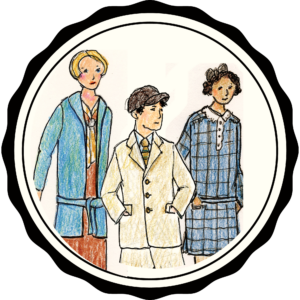
1925 Rural School Experience
Hot Springs County Museum & Cultural Center
1920’s Middleton School Immersion program & Online Classroom
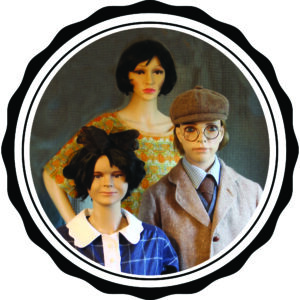

The Roaring Decade of Nonsense & Novelty – 1920’s in the New West

A Special Project
The Hot Springs County Museum and Cultural Center, located in beautiful Thermopolis, Wyoming, a tiny and archaelogically significant town central to the state, is building a program that includes visitor immersion into a reproduction classroom and online educational programs. Complete with live docents and storytellers, 4th grade students will attend a simulation classroom complete with activities and lessons the same as children would have done in the mid 1920’s.
Visiting children will dress up in hats and clothes to help them feel like and look like Wyoming rural children in 1925. At least one teacher will be in full costume and full character, and eventually two child docents, a girl aged 8-9 and a boy aged 11- 12 will participate in events and special programs.
Our connection is the lovely Buffalo Gal, Shelly King, who will be the first interpreter and teacher, and who will be modeling and performing for advertising the project.
As with all community projects, the first objective is to involve the community. The challenge for Silhouettes, who would be handling the day to day costuming, was to to just that. Working with local artisans, finding used clothing and reuseable notions and fabrics, and buying from local small businesses was how we would be involved, as well as consulting with the museum’s historians and experts.
Silhouette’s primary role was to research what students, teachers, and parents REALLY wore in central Wyoming in the 1920’s, and to build them to fit. They had to be durable, easy to wear, comfortable to wear, and easy to get into. Fortunately, research indicated that’s what was worn at that time.
The secondary role was to provide history coming from the direction of lifestyle and fashion that is often overlooked in museums unless that facility has extant or real garments. Many end up “just sewing” to get their docents to “look kinda like” it would be, and few if any have anthropological seamstresses. This historical accuracy is the key to the visitor immersion experience.
Specific Time & Place
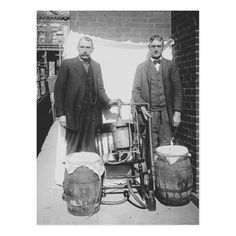
The history of the region is both ancient and new; ancient with its hot springs and dinosaur bones; new in that it was really only settled by non-indigenous people after the 1870’s, and mostly around 1900.
When one pictures the 1920’s, they usually think first of Whiskey raids, flappers, and Art Deco. While this period and place has a bit of all the “Roaring”, “Nonsense”, and “New Woman” fame of the era, it is more a story of “regular” people hanging on to values, goals, and freedoms in a fast changing world. This is discussed in detail on both the Historical Context and Fashion History Pages for Men and Women to follow.
The 1920’s set the project near the beginning of Wyoming’s political and non-indigenous settlement history. It had only been a state since 1890. Wyoming is known as the “state of equality” for being the first in the world to have women legally vote, and other female firsts, but it is better known for the “Wild West”, or “Old West” as it is promoted for tourism.
Numerous Projects
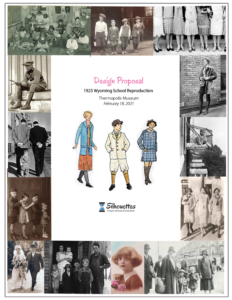
The project will include several ensembles for display on mannequins or live docents/interpreters. The primary request is for a historically accurate Teacher’s ensemble. This will be provided with mix and match pieces. We are also providing full ensembles one each for a boy and a girl.
The museum has also requested garments that visiting school children can put on over their own clothes. Design Development will show that we have selected numerous hats plus vintage bib overalls, smocks, and aprons for this purpose.
Read on for the project research and development. Finished projects will be shown below, as well as any photos provided of the project itself.
Classroom project Historical Context; America and Wyoming (next)
Classroom project Fashion History & Women’s Lifestyle
Classroom project Men’s Fashion History
Classroom project Design Development
Continue below to see the finished project:

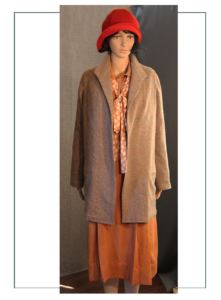


See the Design Development Page for how we arrived at these decisions. Actual product will vary as decisions are made in construction, but we did actually follow theses sketches in the process. Most of these were built from actual ANTIQUE patterns from the mid-1920’s, or from “scratch” using magazine or pattern pictures. Final design decisions are reflected in the finished garments below.
NOTE: ALL GARMENTS HAVE BEEN MADE USING VINTAGE PATTERNS AND/OR INSTRUCTIONS and as close to 1920’s techniques!!! That’s why you’ll see those buttonholes used for belts and neckties, LOTS of bias tape, and wide hems. The overall effect is things are kind of droopy.
Teacher’s Ensemble
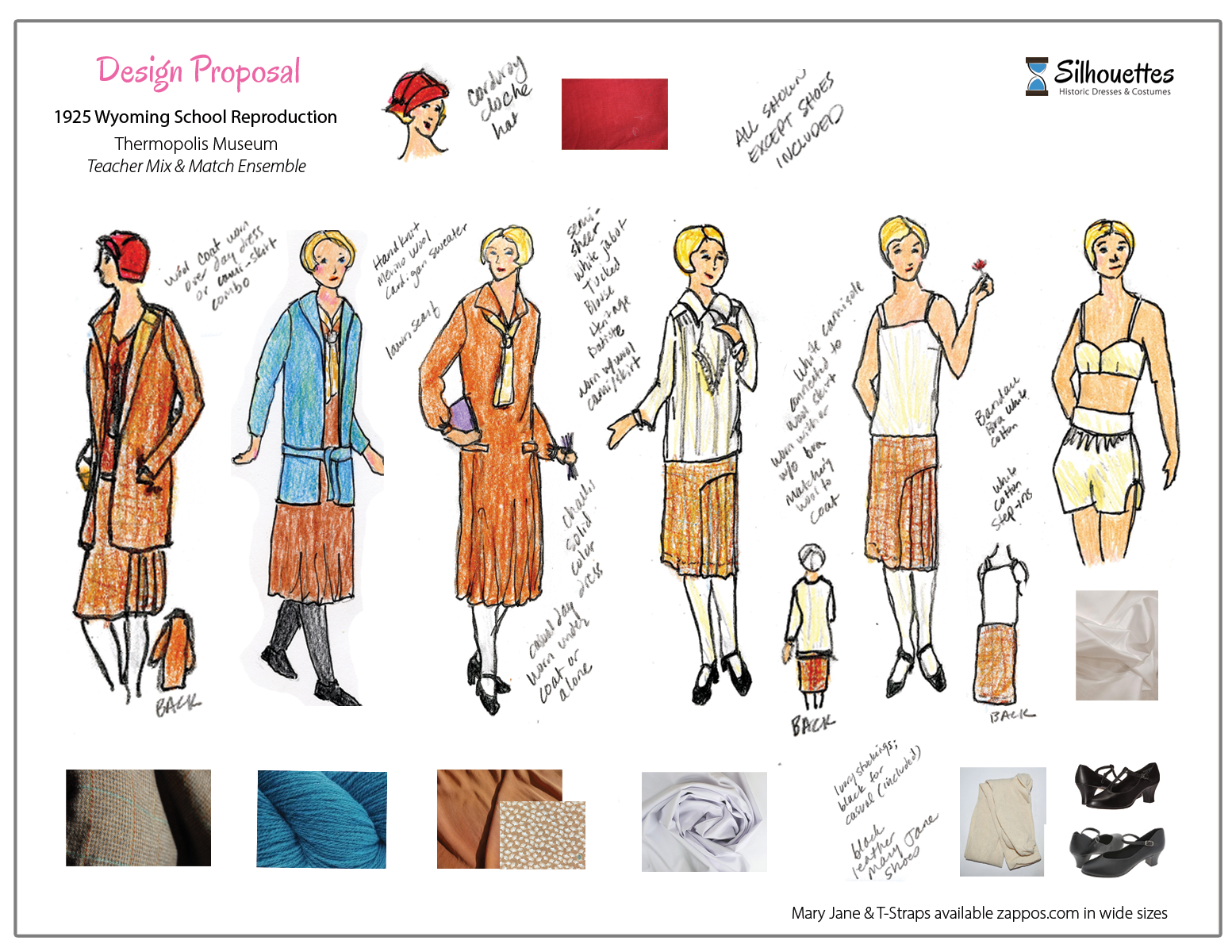
See pictures of Shelly in the teacher’s ensemble at the bottom of the page!
Bandeau Bra & Step-in Panties
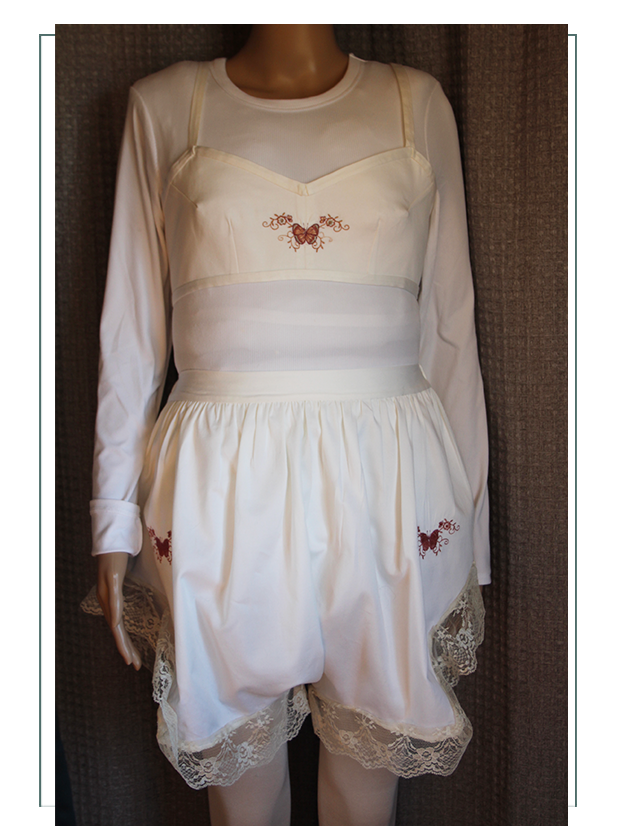
The mannequin is wearing a shirt under the undergarments because she is padded out to size, and the shirt holds her padding in place. The 1920’s undergarments were typically made of one flimsy layer of fabric, and were loosely fitted. There was a wide range of plain cotton to pretty lacey bras and panties.
This interpretation carries the favorite butterfly theme of the day, with the high fashion colors in decorating and otherwise very simple and plain bra and panty pairing. The bra would actually not have darts or an interfacing; we added those because this teacher will be working all day in these undergarments, and we wanted her to feel a bit more comfortable (modest) than historically accurate.
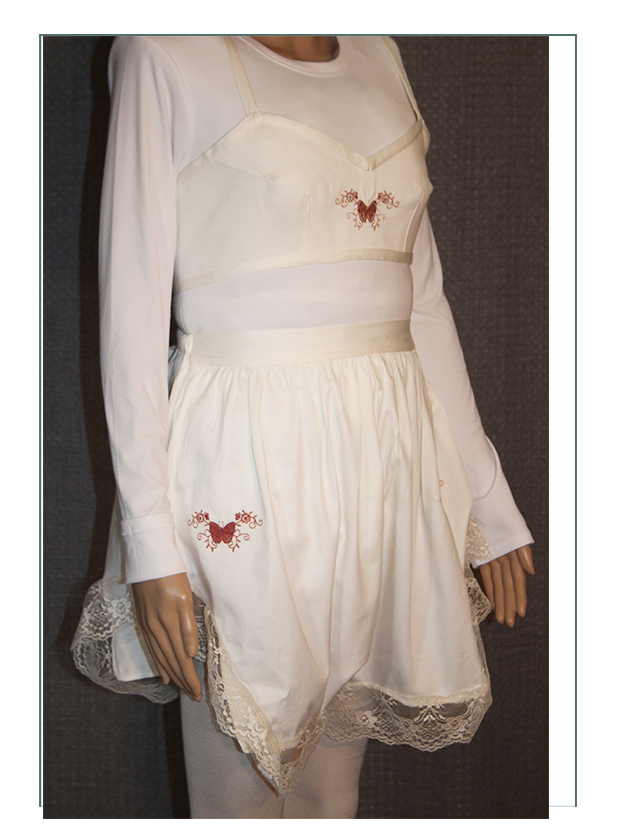
In reality, when Shelly tried these on, they fall low on the waist and lower than the underbust – which is just where they are supposed to be. If you look at this fashion as a whole, you have to think “gravity is pulling me DOWN”, and everything that in modern times fits tightly or forms to the body, is actually more like wearing a tube with weights in the bottom.
As with all fashion of this day, and all vintage patterns, the straps are longer than usual for bra, slip, dress, etc. so that the bodices fall much much lower too. In this case, the bra straps are very long in both front and back. This creates a sewing challenge, for it becomes something like hanging a whiskey barrel around one’s body, and there is no way to bring in the “gaps” under the arms without darting and destroying the accuracy. “Whiskey barrel” gaps are historically correct in this case.
One other “nod” to modern tastes we build in was a hook and eye closure as well as the accurate elastic. The woman of the 1920’s would pull this over her head without adjustment. Since we may have several people wearing the ensemble, we needed adjustability to some extent.
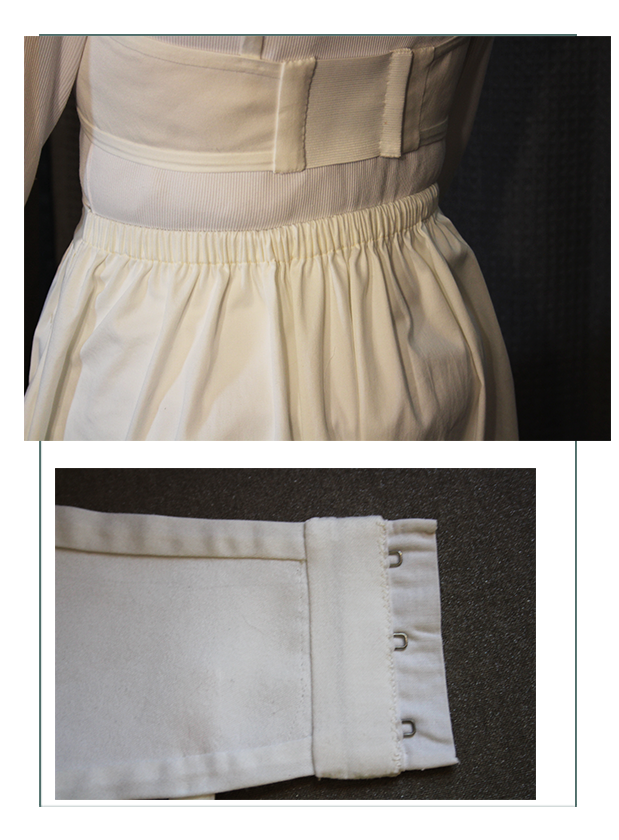
100% cotton with poly lace, the cut of the panties is accurate, and the huge fullness of them – just like virtually every fashion era in history – helps keep the shape of the outer garments for the fashionable silhouette. In this case, that means pushing the skirt out just above the knees where the dress might otherwise tend to “suck in” and not be a straight vertical line above the drop waist. Embroidery is done by machine.
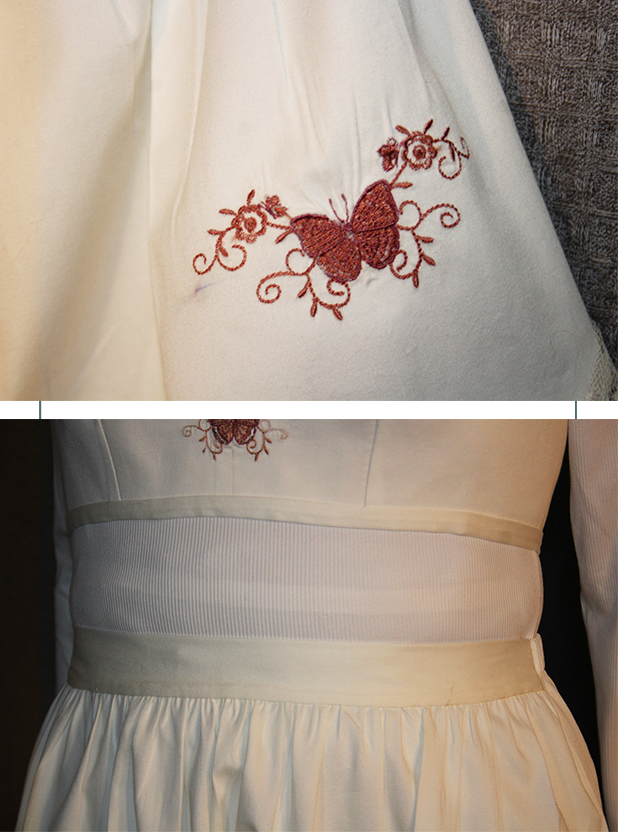
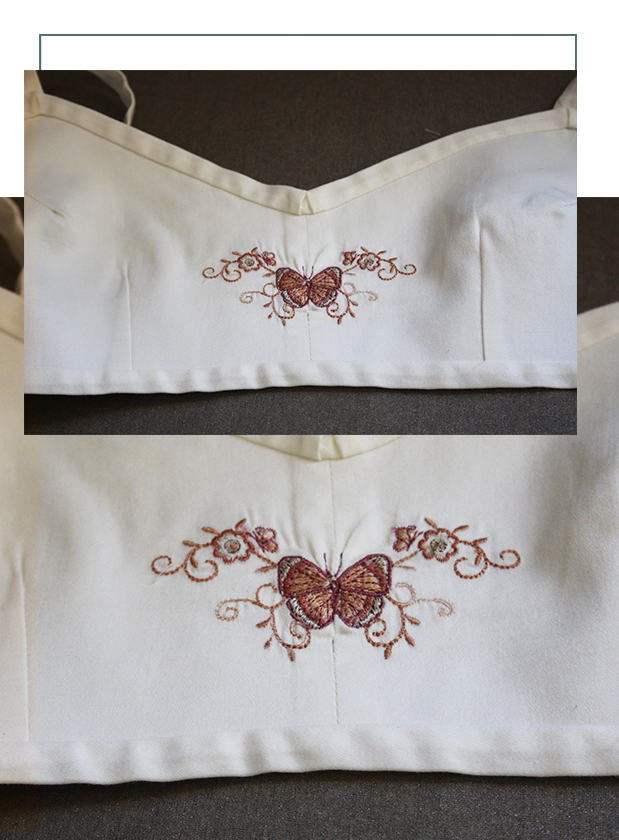
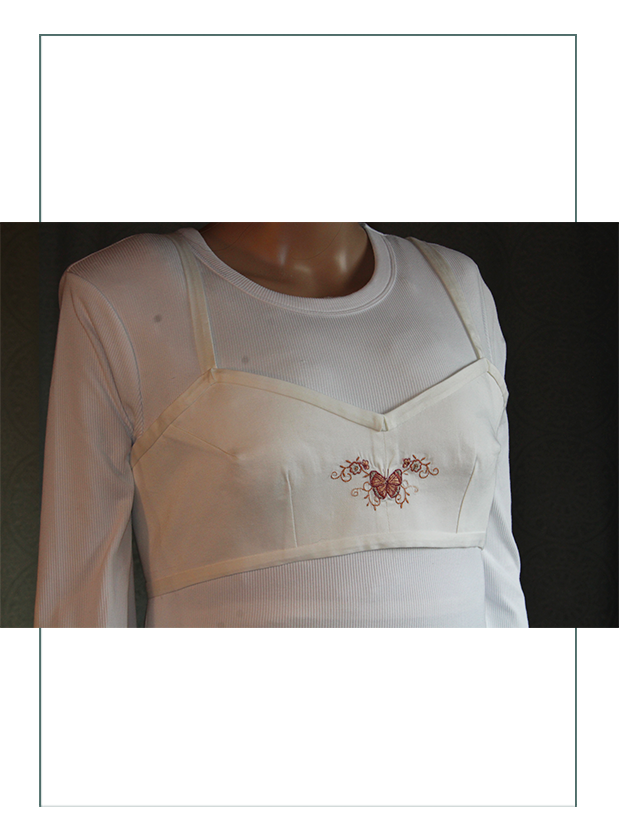
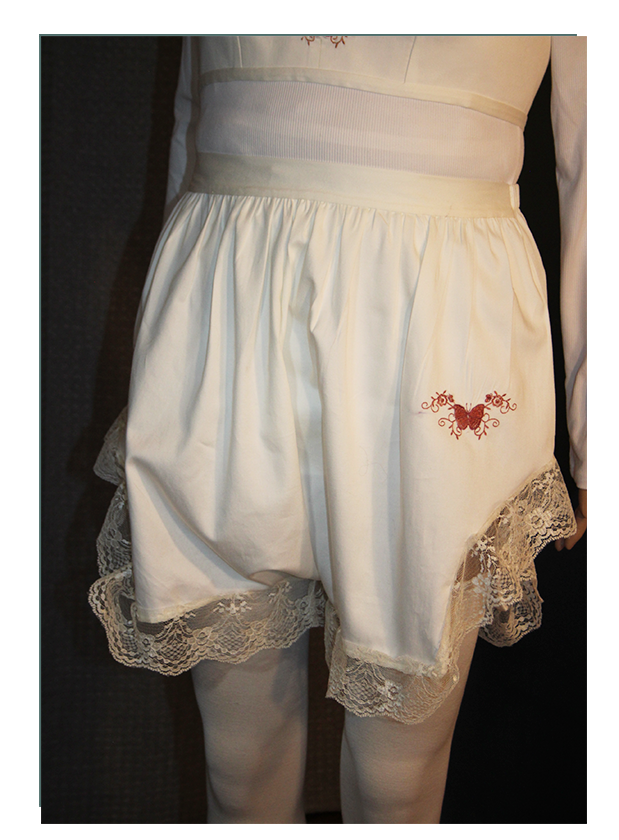
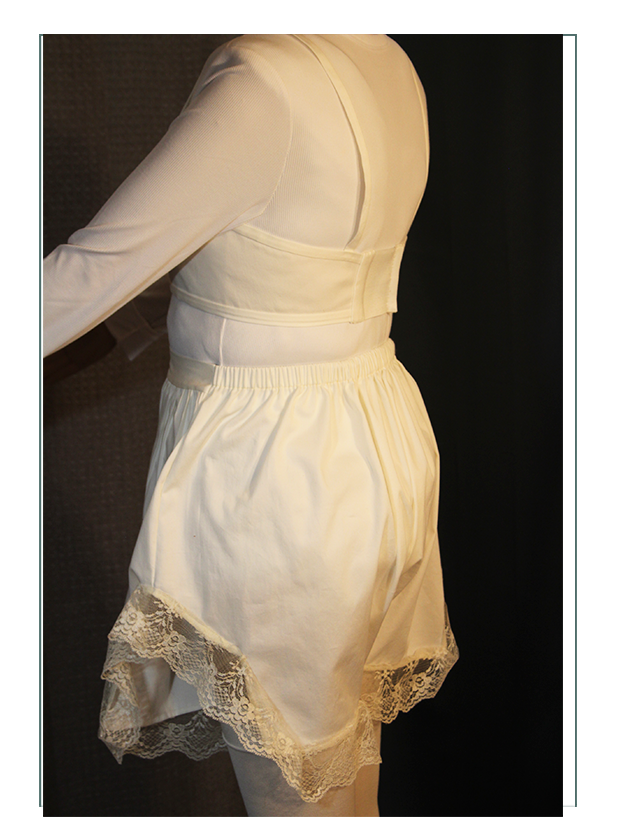
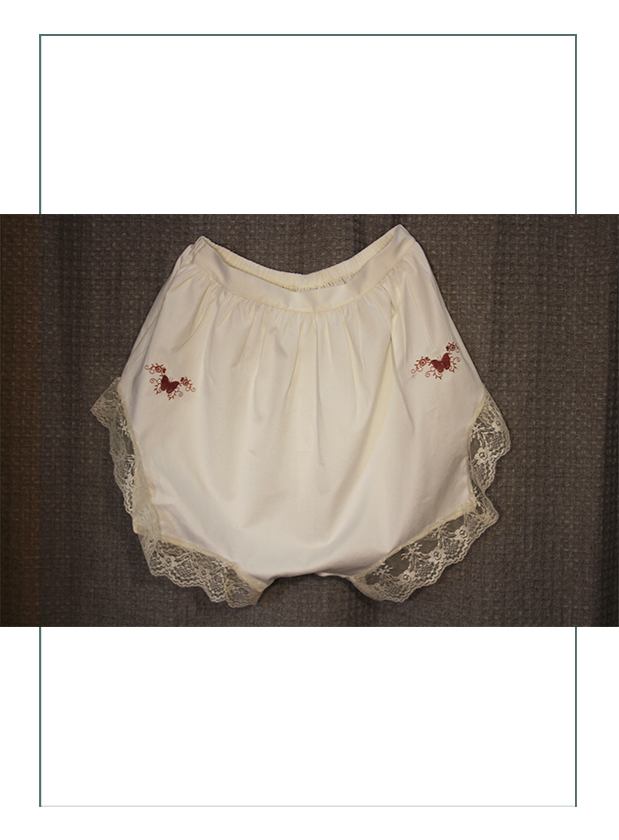
Cotton Slip
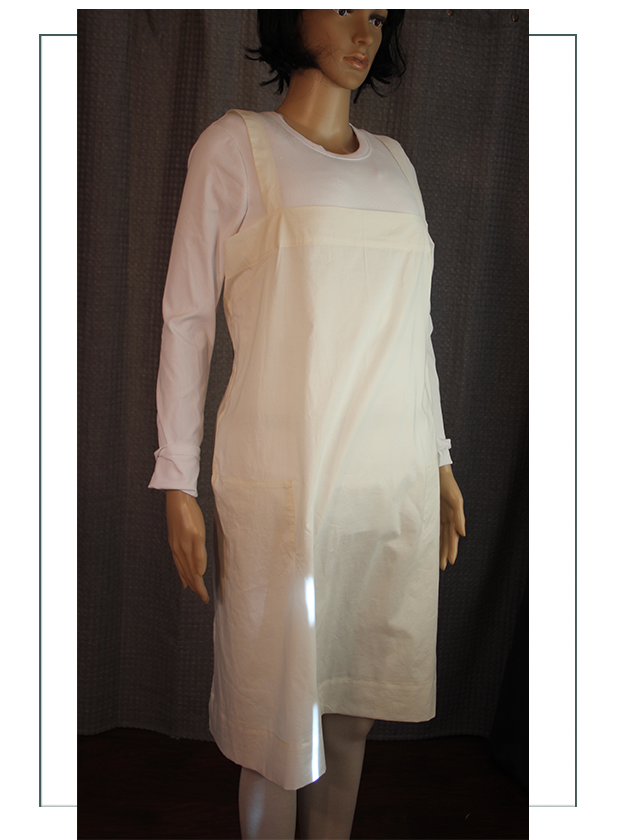
A slip was not part of the original proposal, but in developing the bra and panties, it became apparent with our plan to make a wool garment, the heavier fabrics would need something with more stiffness and body to hold the silhouette of what is somewhat “floppy” fabric.
This 100% cotton slip would have been worn INSTEAD of the bra and panties for daring young women like “flappers”. In this case it’s a layer for modesty.
As with all the vintage patterns, this one has the straight body with dropped waist. the patterns are notorious for having no markings, no instructions, no sketches, and no directions or photos. Basically, there is no way to locate where the waist is supposed to lay for a given size of woman. We made this somewhat as an experiment in the construction methods before cutting into the more expensive projects.
What we discovered was that EVERY dress, undergarment, jacket, etc. in this era is made with a long tubular body of some sort, attached somewhere in the middle of the rear end to a skirt – and that skirt ALWAYS has pleating, or gathers, or enough fullness that a woman can move and walk. Without the fullness right below the dropped waist, there would be no way she could sit or stand or move around. As it is, she has full mobility.
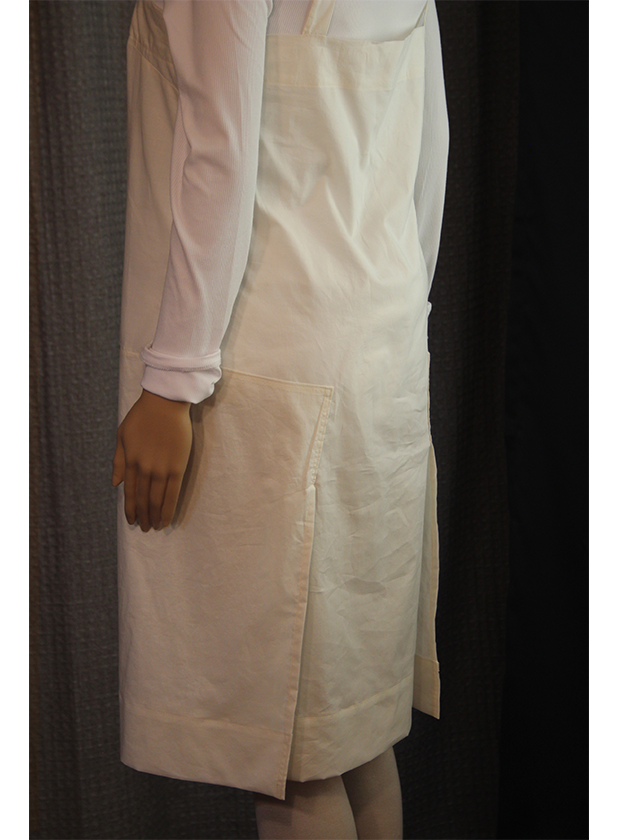
The challenge that brought though is, how is that JUNCTION constructed? One is going from a straight tube into big fullness. On this, one of the simplest designs of the era which is seen in girls’ dresses in particular, there are giant “flaps” in front and back that are cut out of the same piece of fabric as the tubular body. This makes for a difficult joining at the 90 degree angle junction. We think that’s the reason there were so many bows and sashes and laces and such “stuck” on almost every garment at that junction – it’s nearly impossible to make that clean and neat and pretty. It’s much easier to make it messy and cover with a little fan of lace.
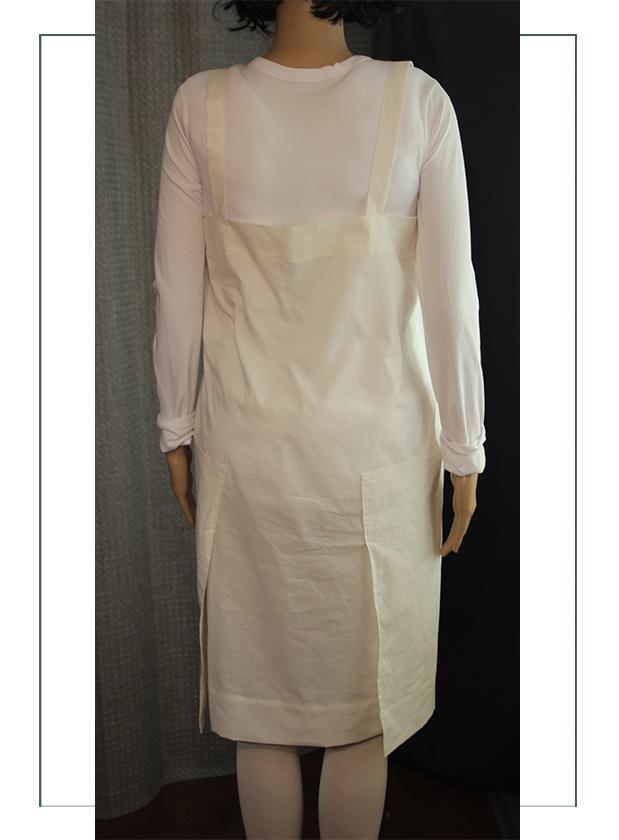
This we left alone though, as it is a freebie and an experiment. It worked really well for the intended purpose of keeping the floppy fabrics straight, and providing modesty.
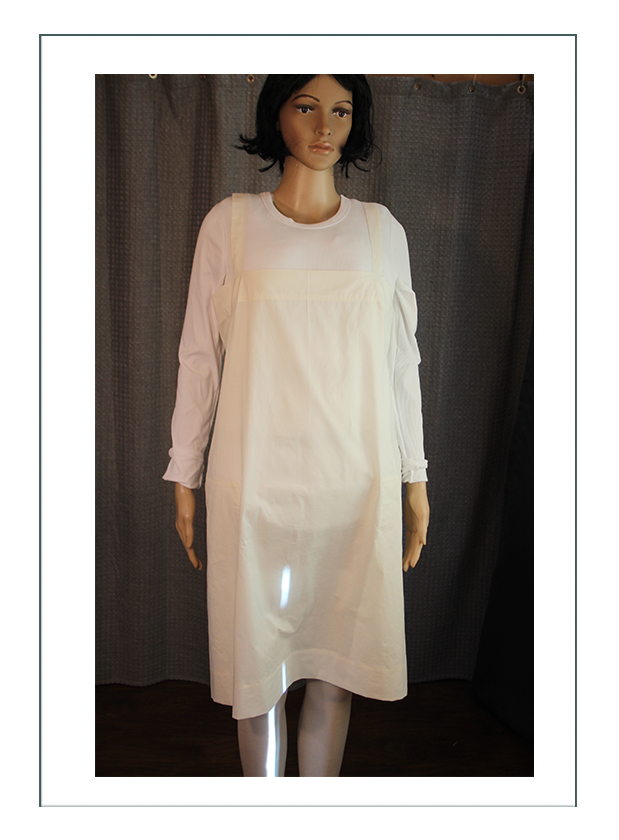
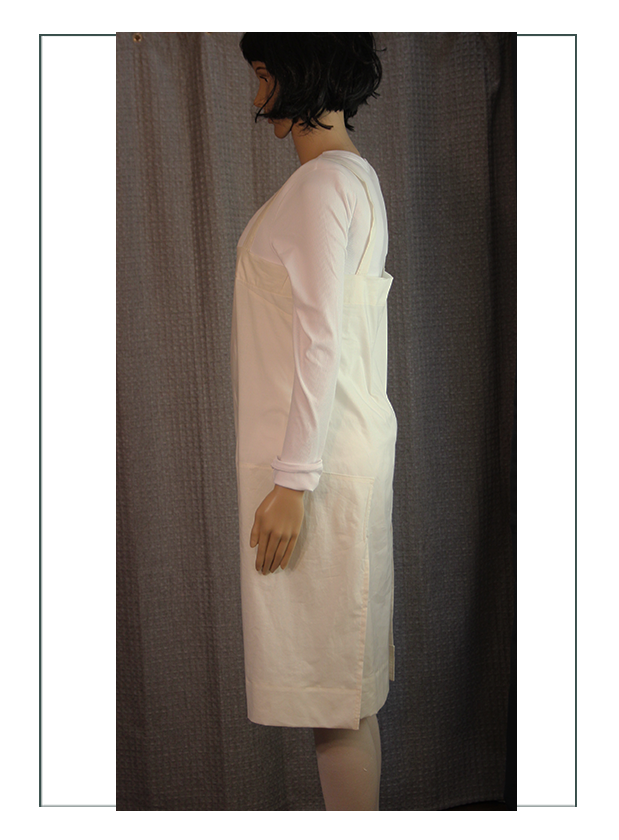
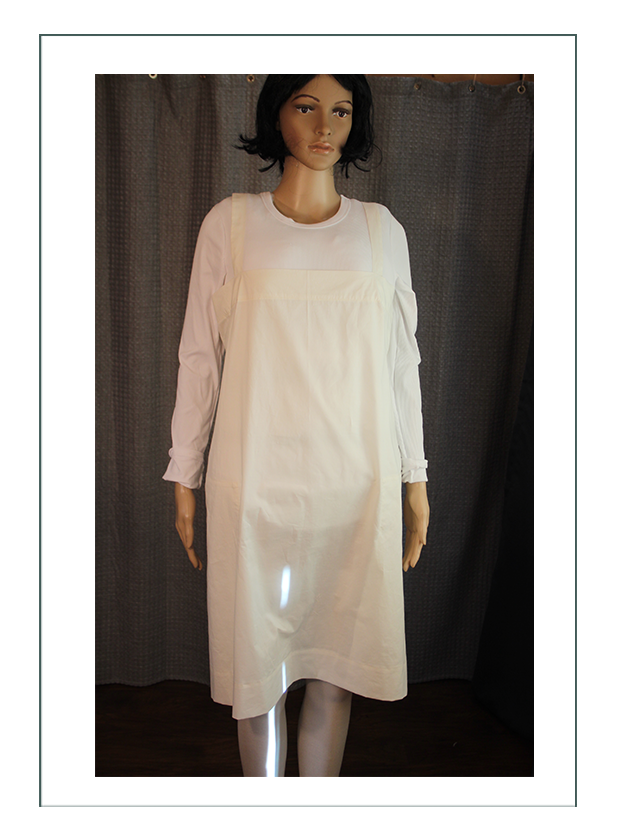
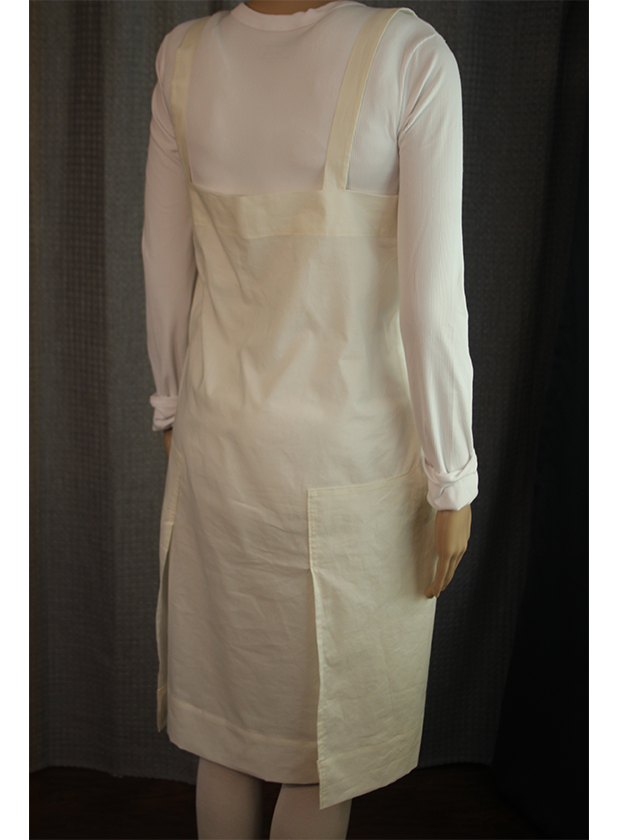
Dress & Scarf
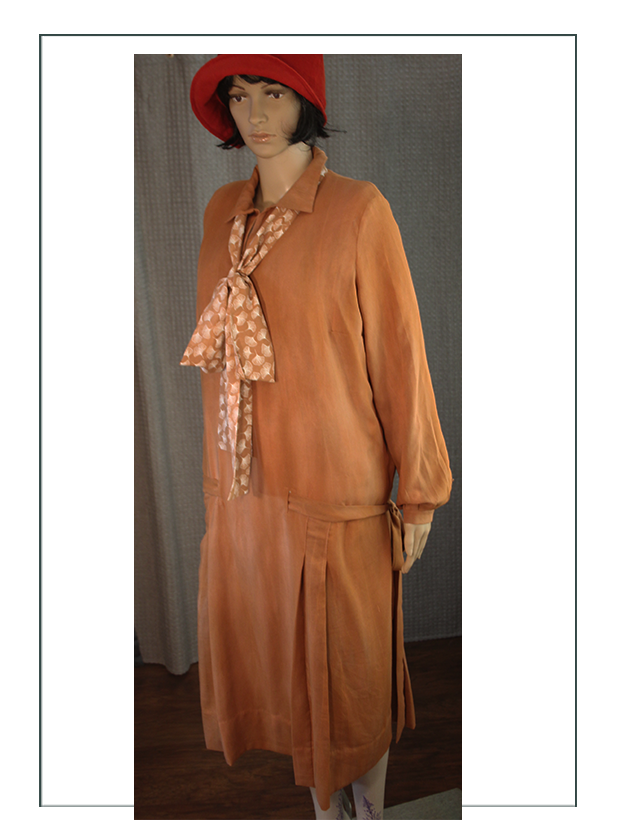
The sailor suit was a high fashion favorite in the 1920’s decade for women, boys, and girls. Very young boys and girls wore a shirt with breeches or skirts, and women wore something like this. In these photos, we see Queen Victoria of England’s daughter, Princess Beatrice, with her daughters (from Spain) in almost exact versions of what we have built.
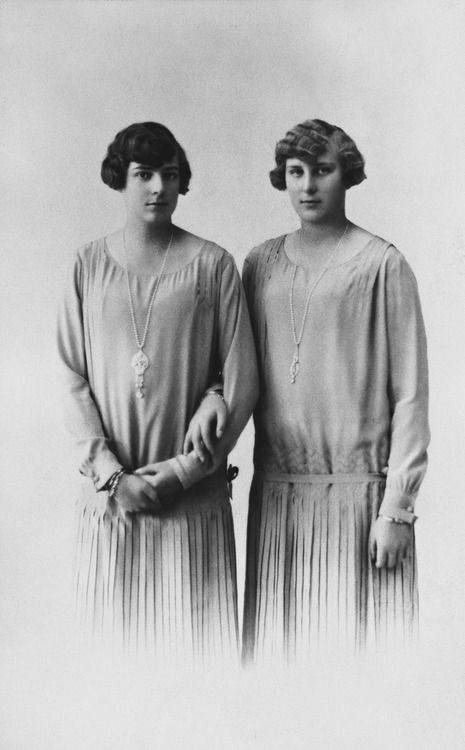
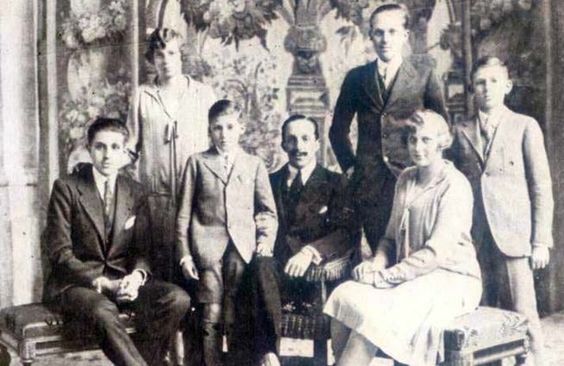
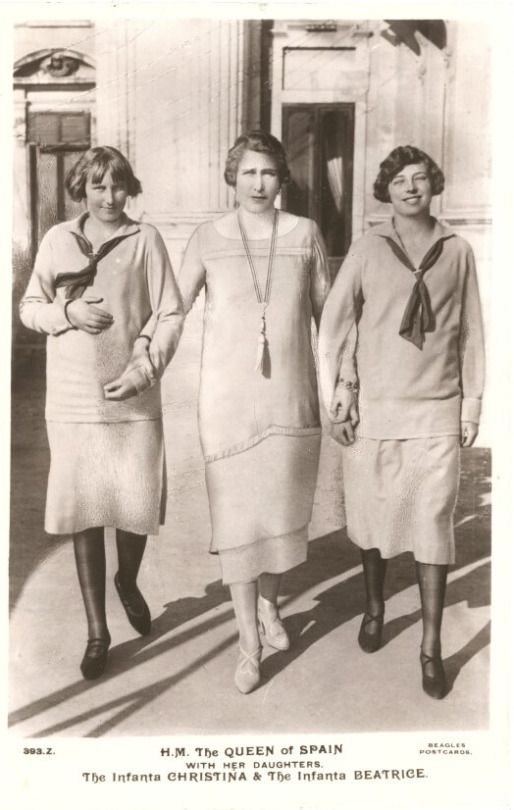
The drapey fabric and muted, natural colors is the key. While there were different necklines, the neckscarf or tie was the most dominant. In our version, we use an authentic sewing pattern again, which features an open and soft collar with long scarf. This could be worn with a scarf in contrast too for interest.
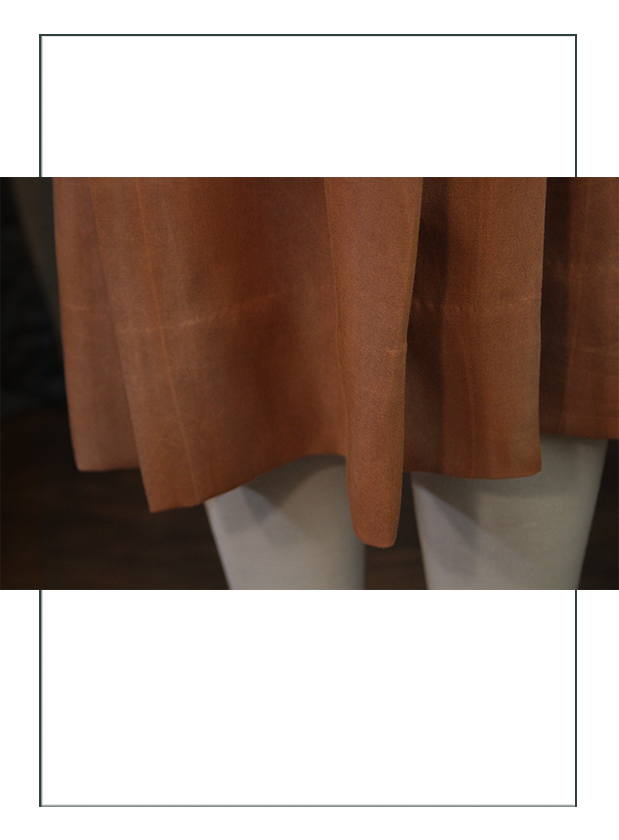
Our dress features a pleated section in front so walking is possible, plus an integrated belt at the low waist. This ties below the “bum” in back and to the side for dramatic flair. Overall, this makes the wearer look very young. The fabric is hand dyed rayon challis. It is not a commonly used fabric these days, as it can water spot, but it irons a nice crisp line for pleating and waistlines, while being very loose and draping. This type of fabric is key to the long silhouette because the weight of the pleats and belts, and intentional very large and heavy hem, pull the dress down by gravity, and keep it from riding up on the body.
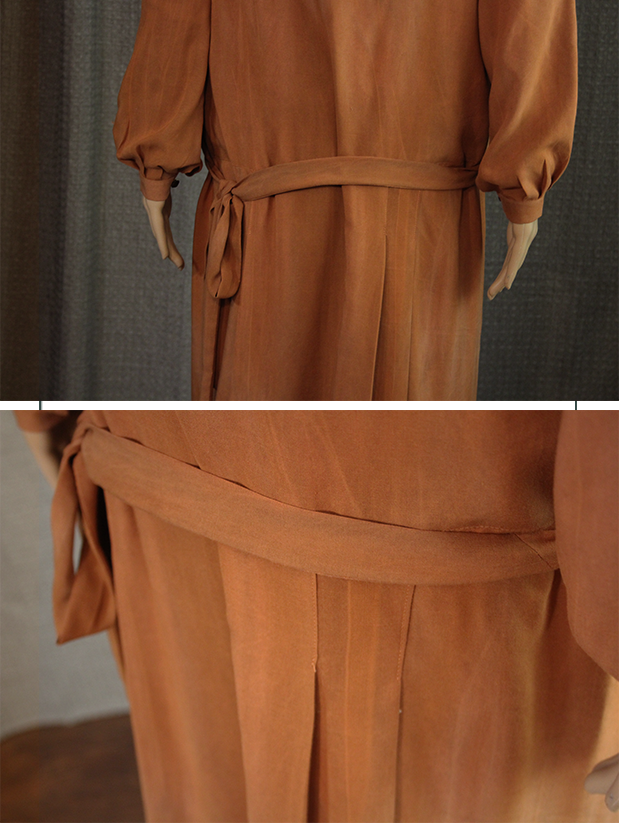
While outwardly appearing very simple, classy, and tailored, it is actually very difficult to build and to fit, because the line is only maintained by keeping it tight over the bum, yet loose enough to slide down the body. That’s why you see quite a bit of fullness in the upper body of the design. It has vintage buttons that look like tiny chocolate candies.
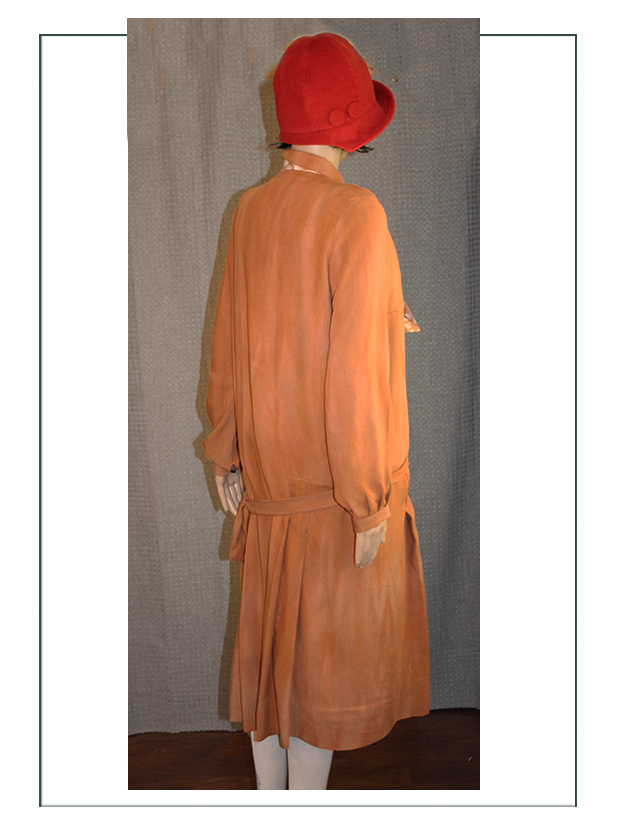
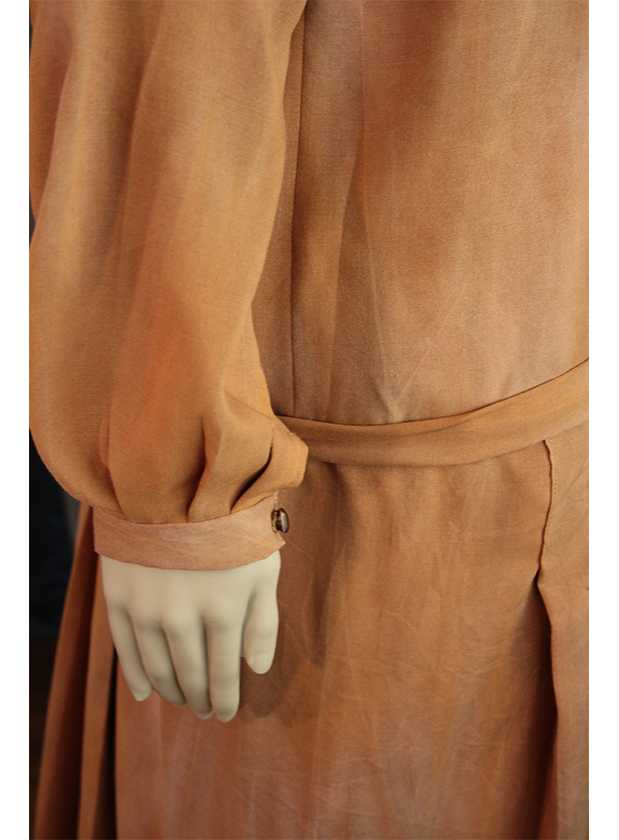
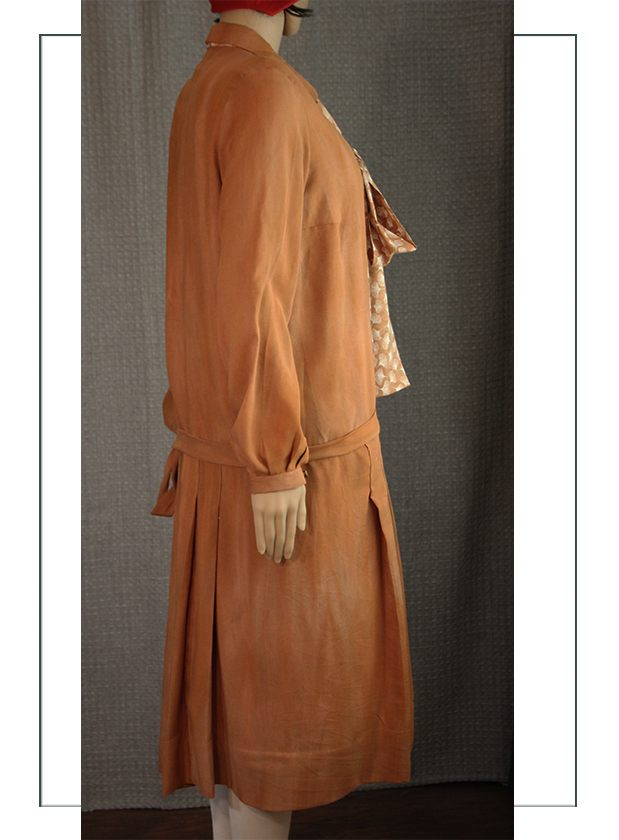
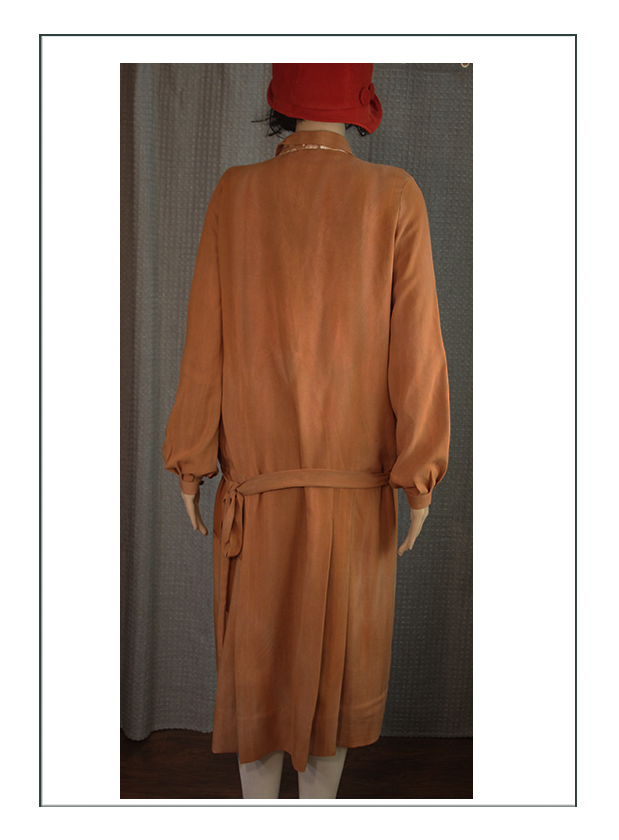
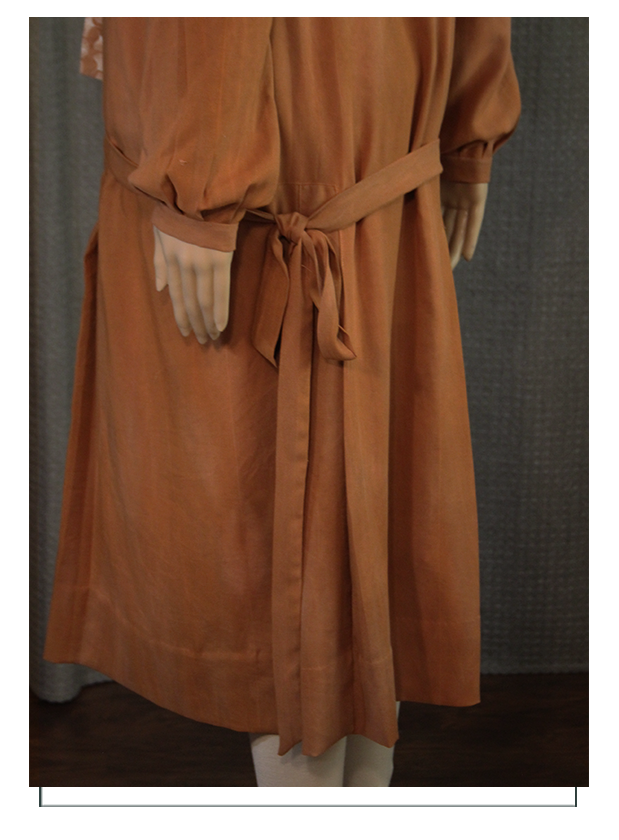
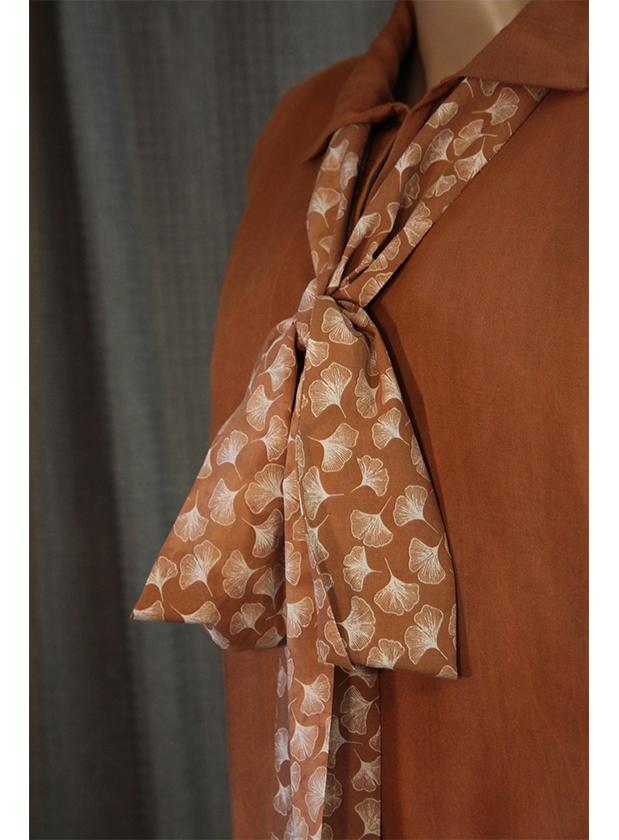


Cloche Hat
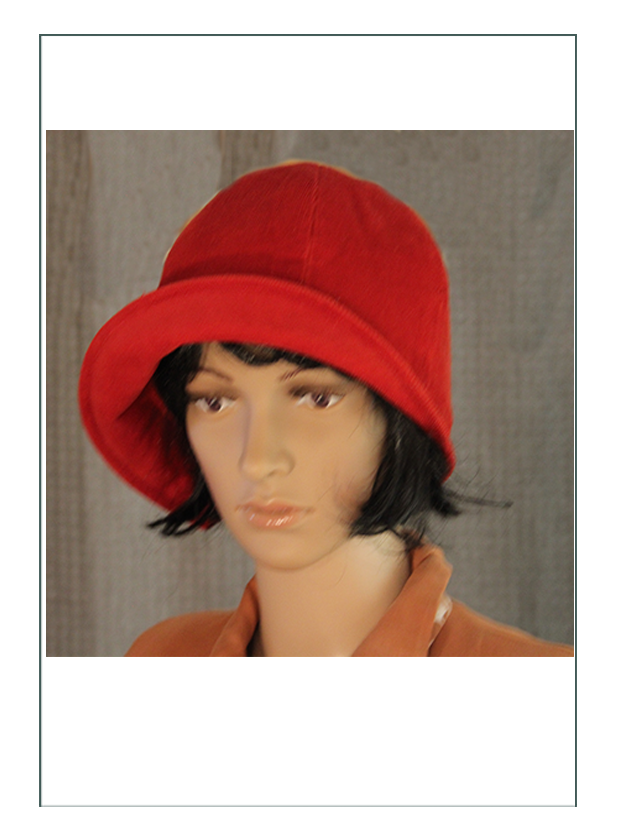
There are many ways the cloche (“bell” in French) is worn and decorated. They were always one size too big so they could go fully over the head, had a brim that could roll up or down, and had some sort of interest.
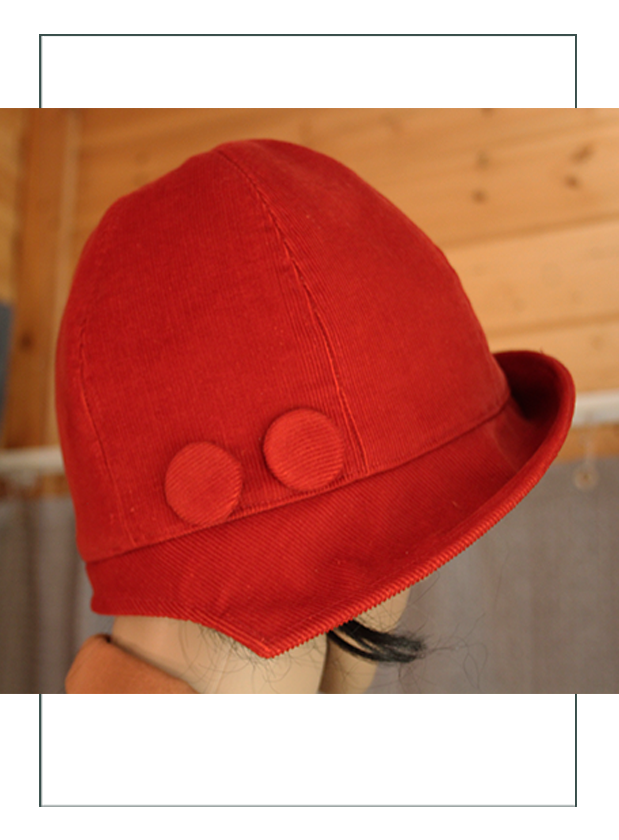
This one is “tomato red” vintage corduroy from the 1940’s. It is fully lined with the same fabric, and features two big self-fabric buttons. The brim is wired to keep the smooth lines, as it is designed to be very simple and tailored. It will also be warm to wear walking to school.

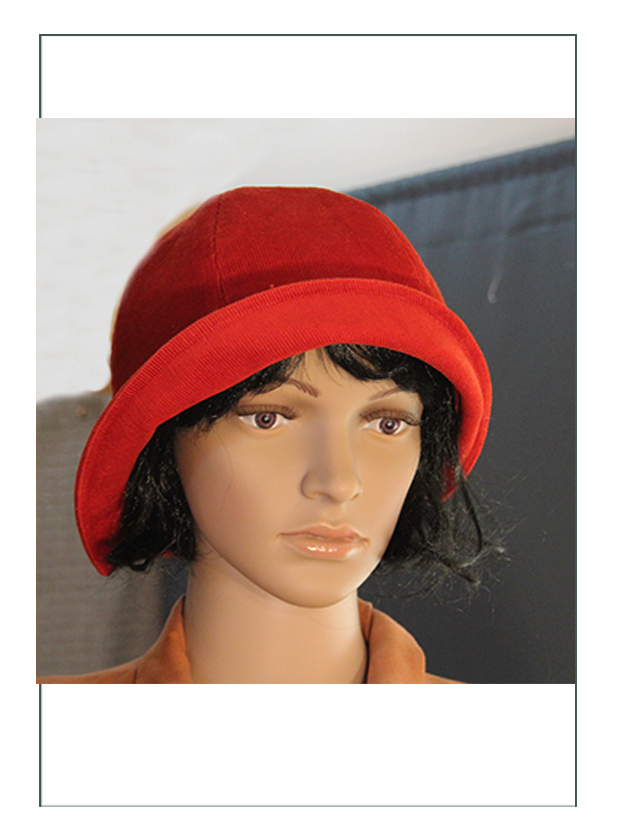
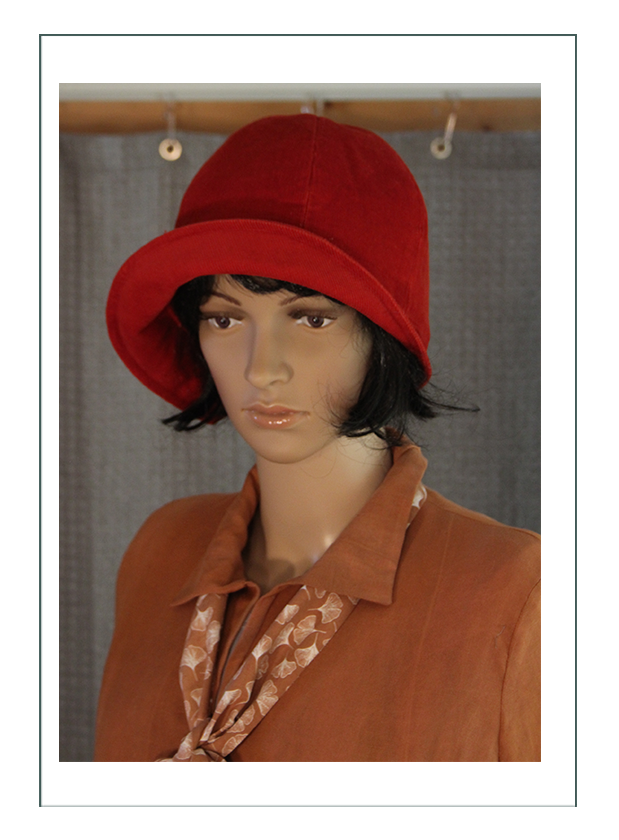
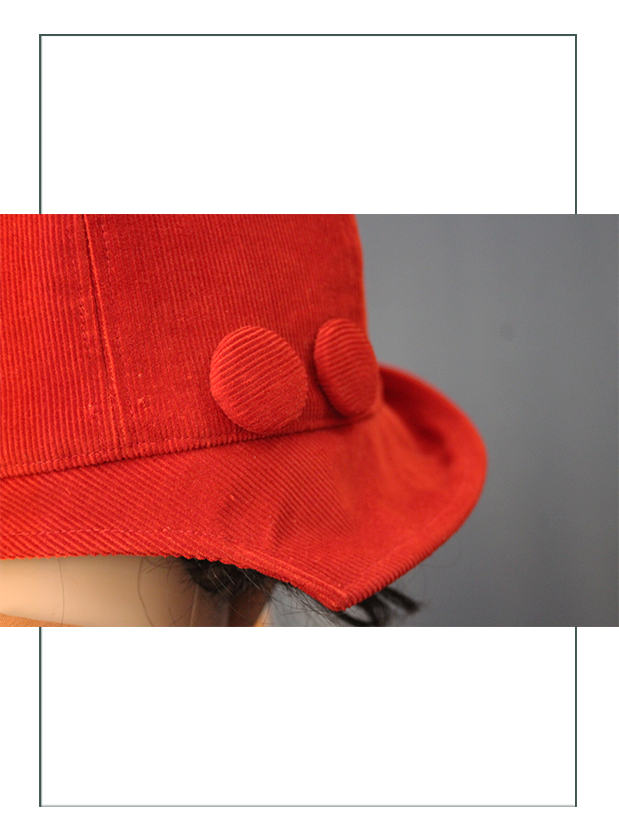
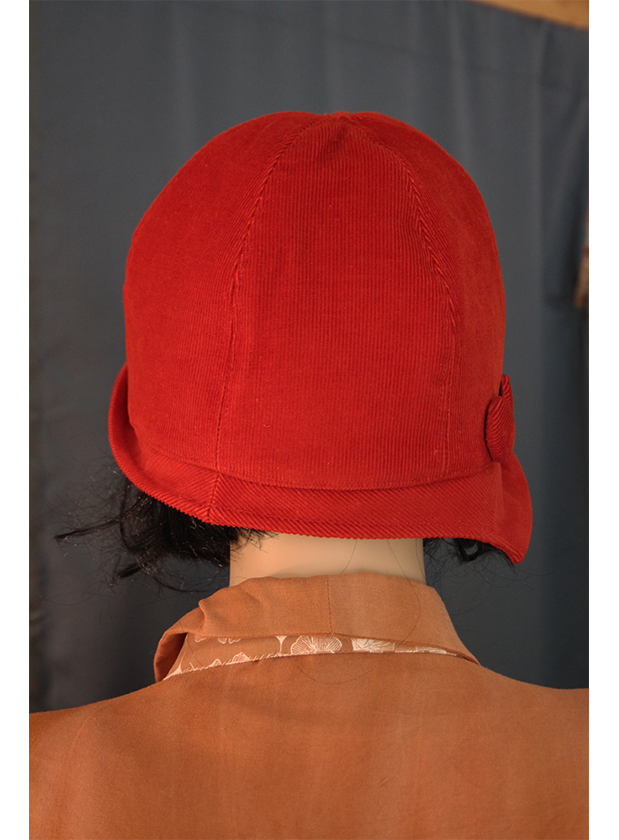
Wool Jacket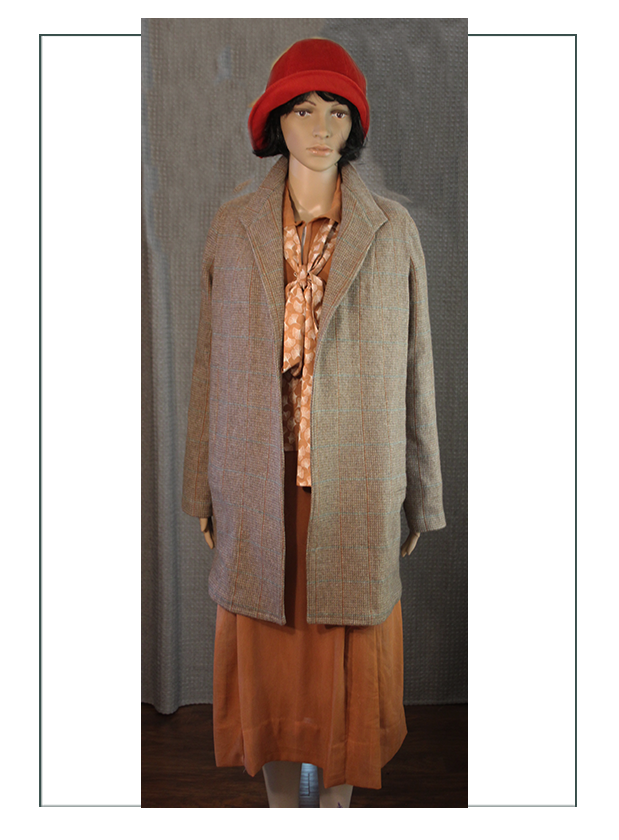
Again, clean, classy, tailored, and simple is the objective of this key mix and match piece. It is in this ensemble because the depiction is for the school year starting in the fall, which can get chilly. Women of this era didn’t wear much more than this unless it was quite extreme weather, so we anticipate this will be worn coming and going from school.
It is 100% wool vintage fabric from the 1970’s. The design features a fairly floppy collar that is designed to be worn up in the back, and to lay flat in the front to emphasize the long lines of the silhouette. Sleeves are very narrow, as is typical of most authentic and vintage patterns such as the one used for this. As with all 1920’s patterns, this came with few to no instructions, no sketches, and no marks on the pattern. They must have been great seamstresses to build everything out of their heads then.
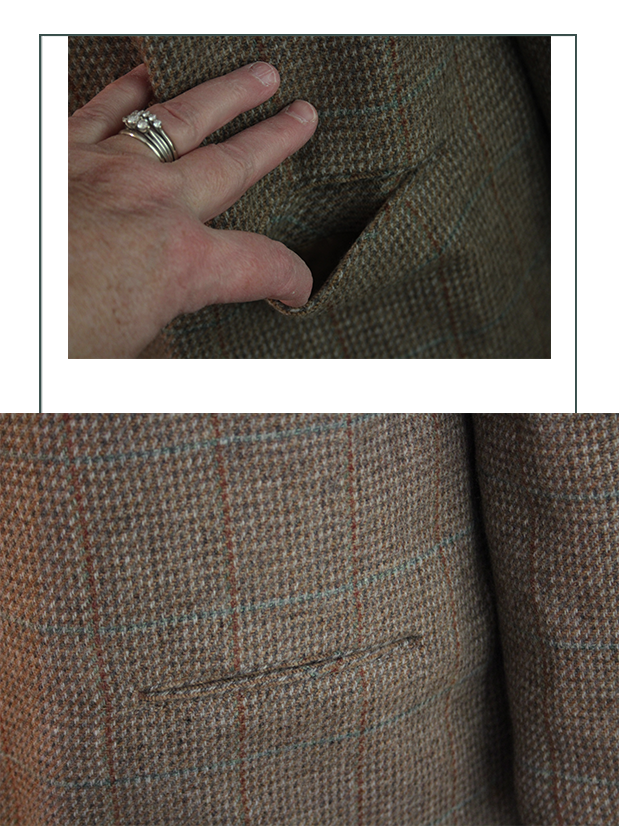
While this feels like it should have a belt tie low on the bodice, but that is not in the design. It is supposed to hang long and loose under the weight of the fabric. There are tailored pockets, and it is fully lined with a 100% cotton sateen including the sleeves.
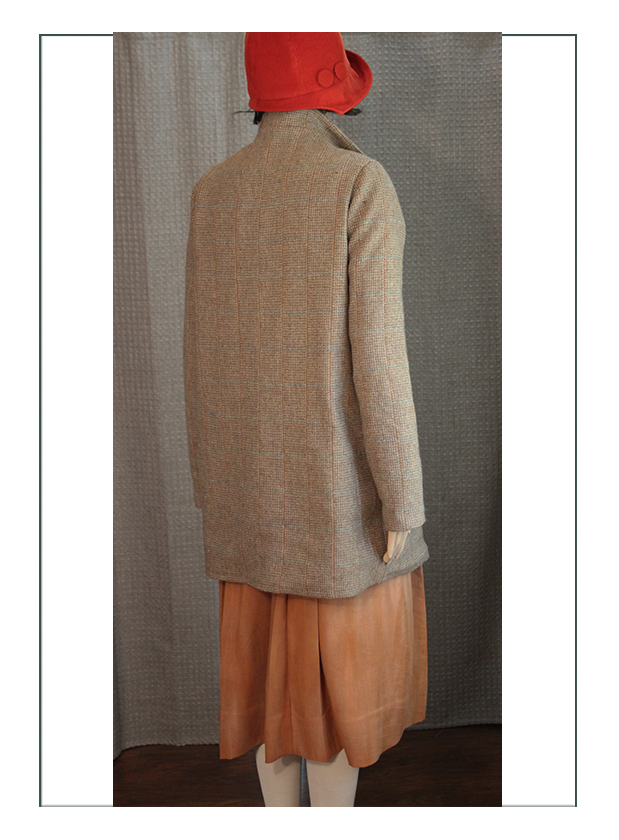
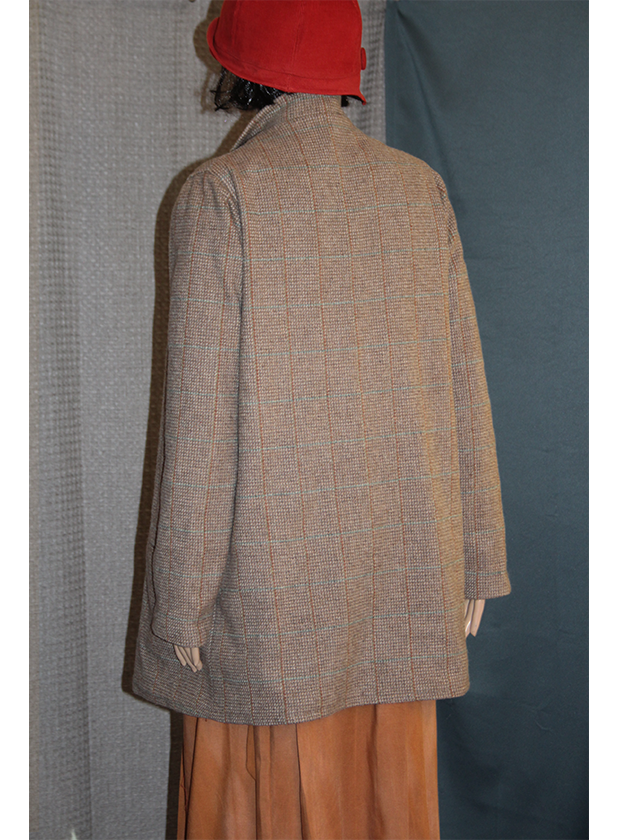
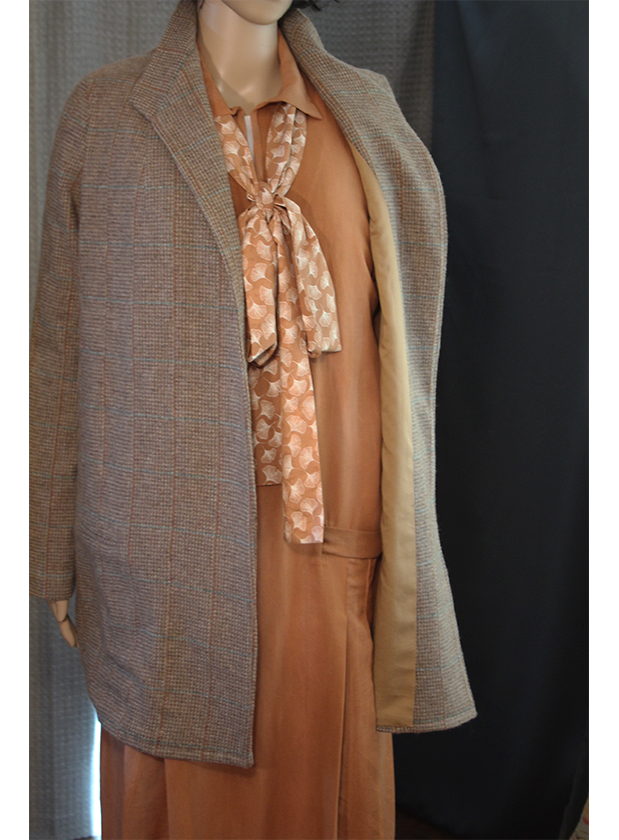
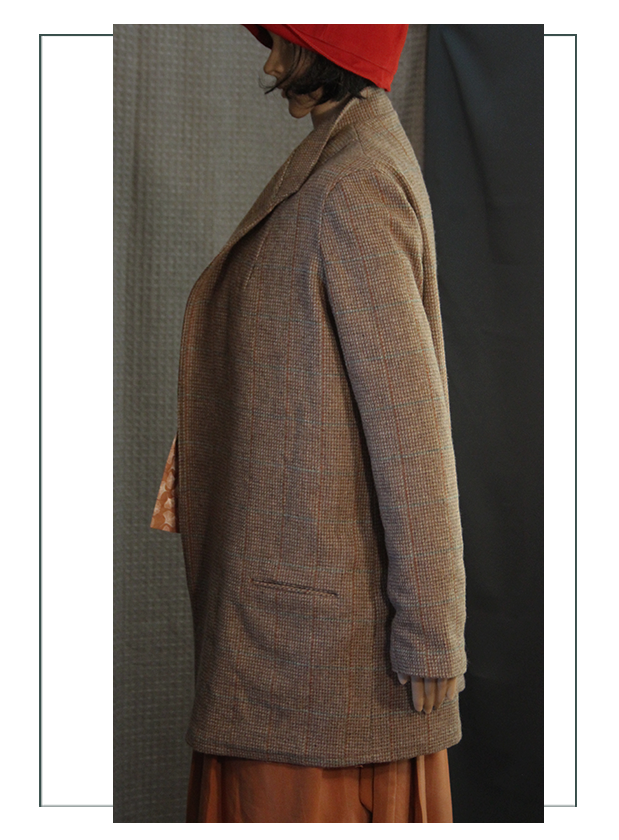
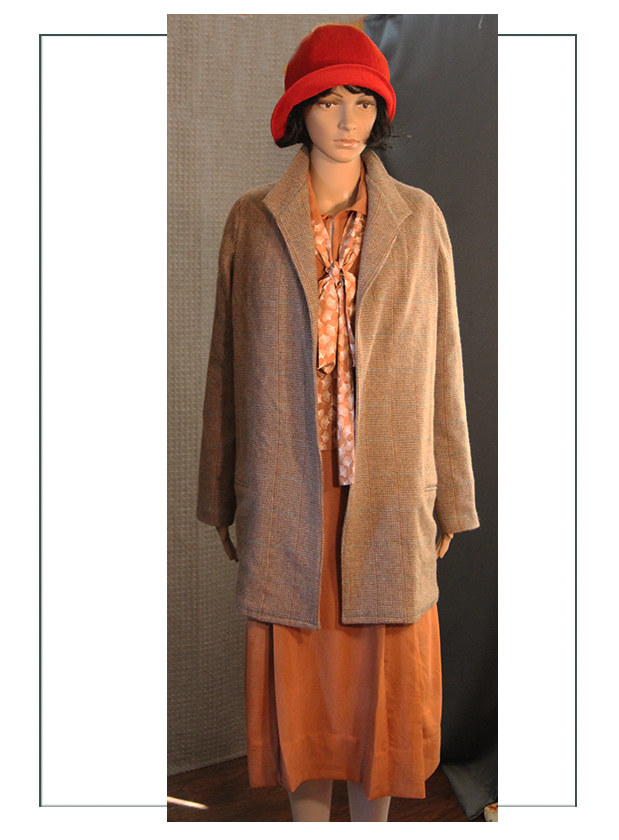
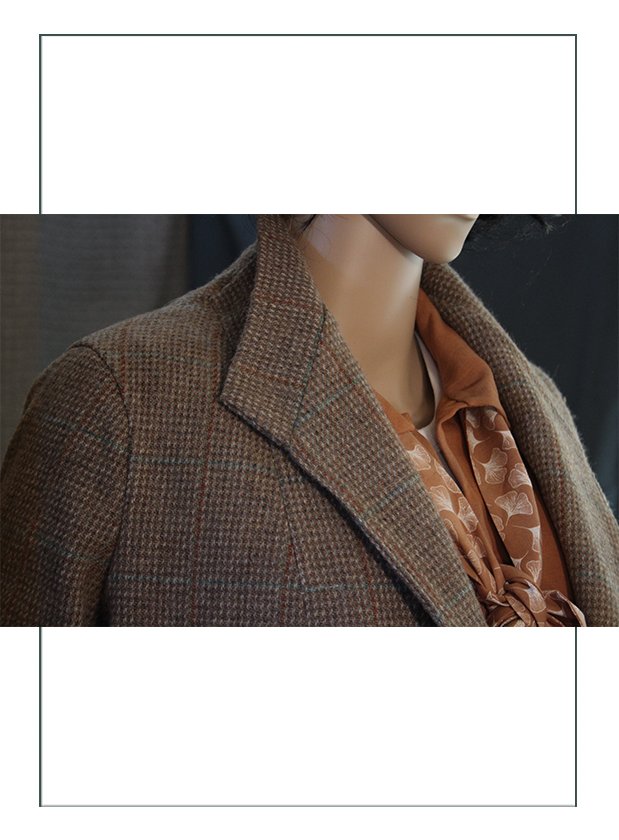
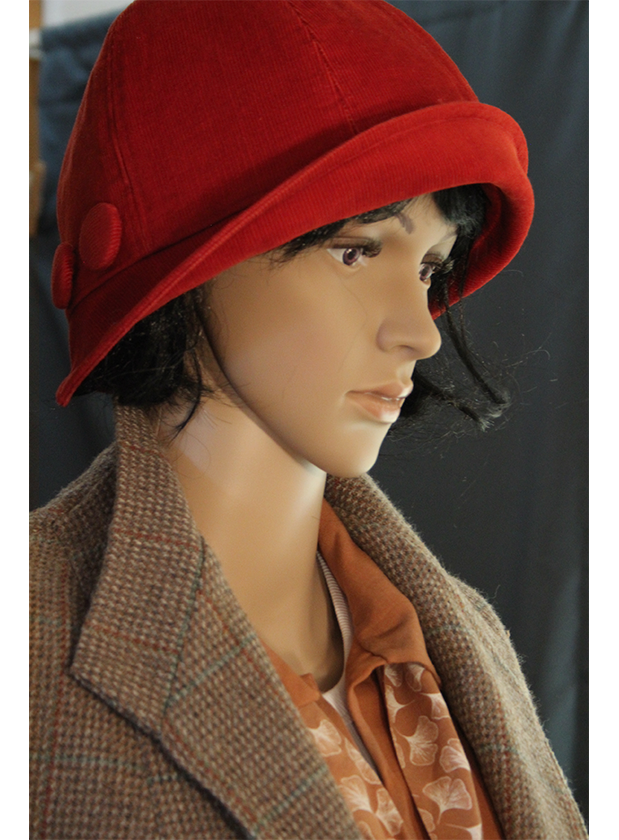
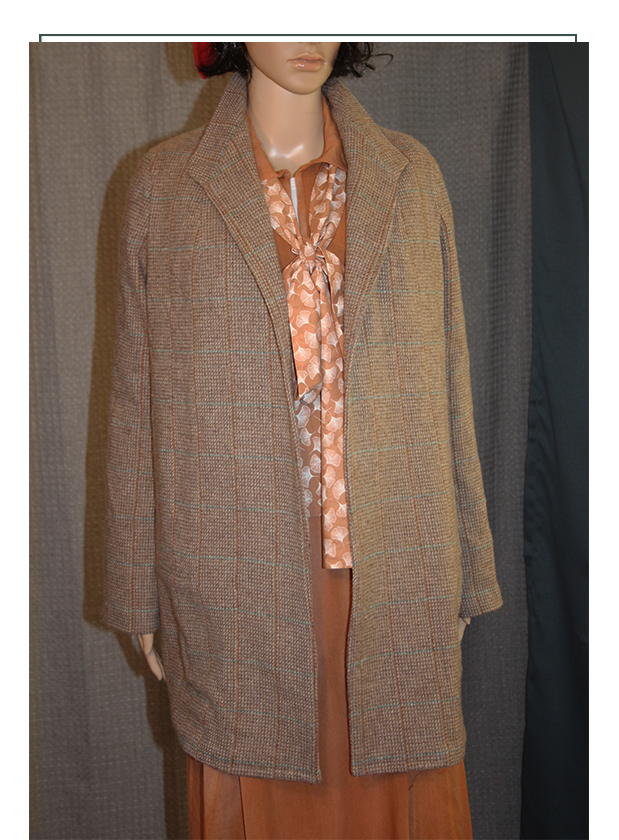
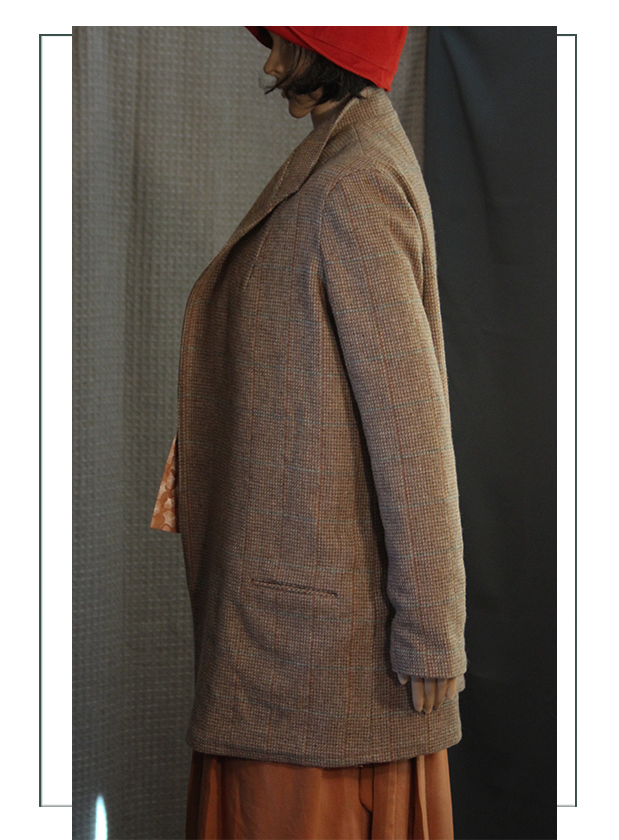
The jacket’s real coordinate is the pleated camisole-skirt which makes a complete and professional suit. As with the dress, there is a thick and heavy hem intentionally placed to pull the garment down with gravity.
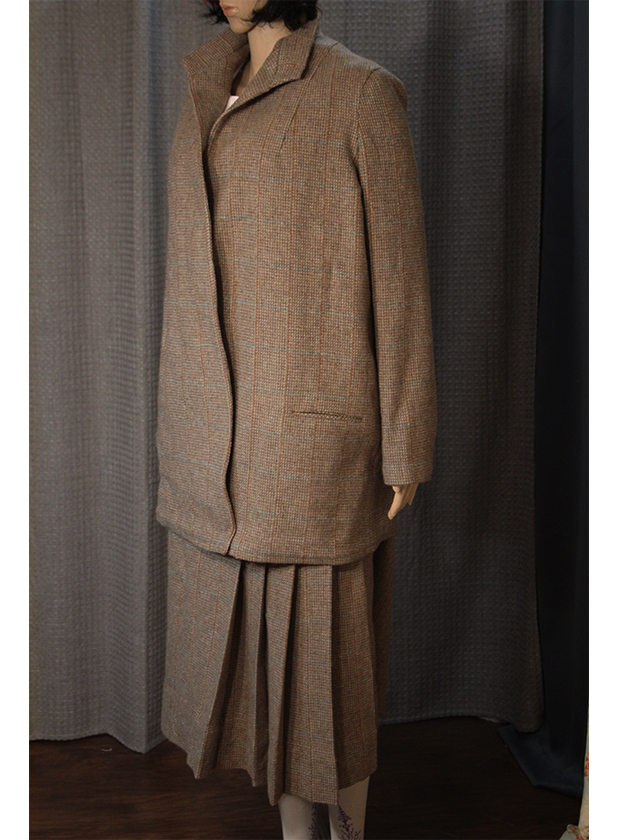
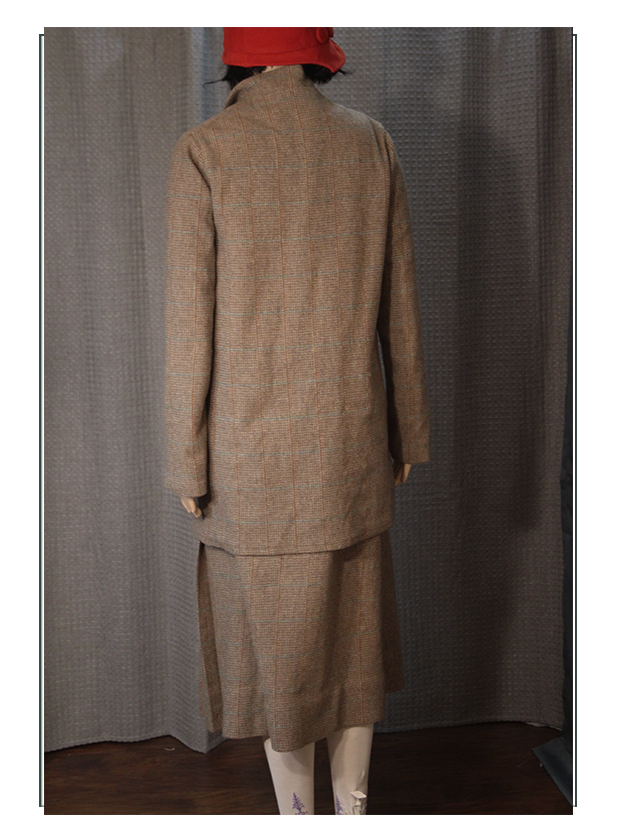
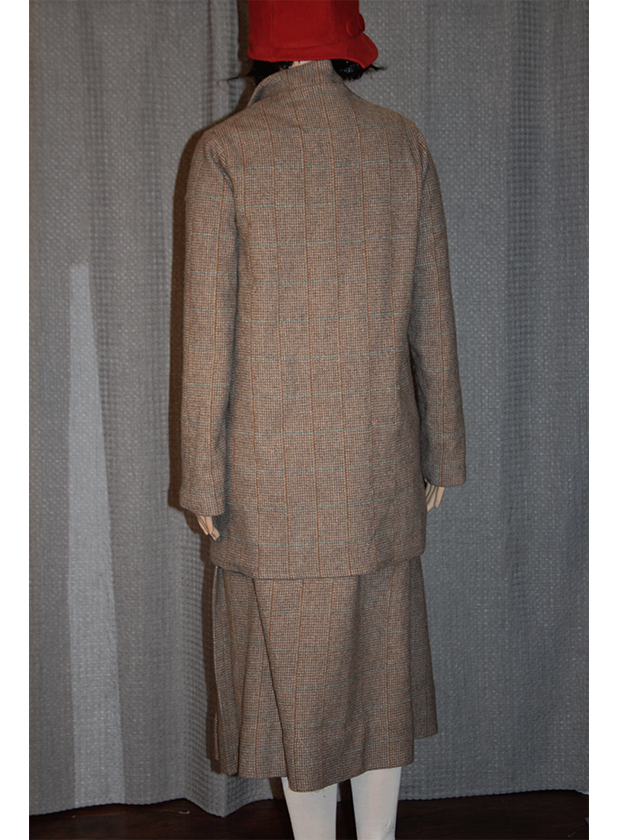
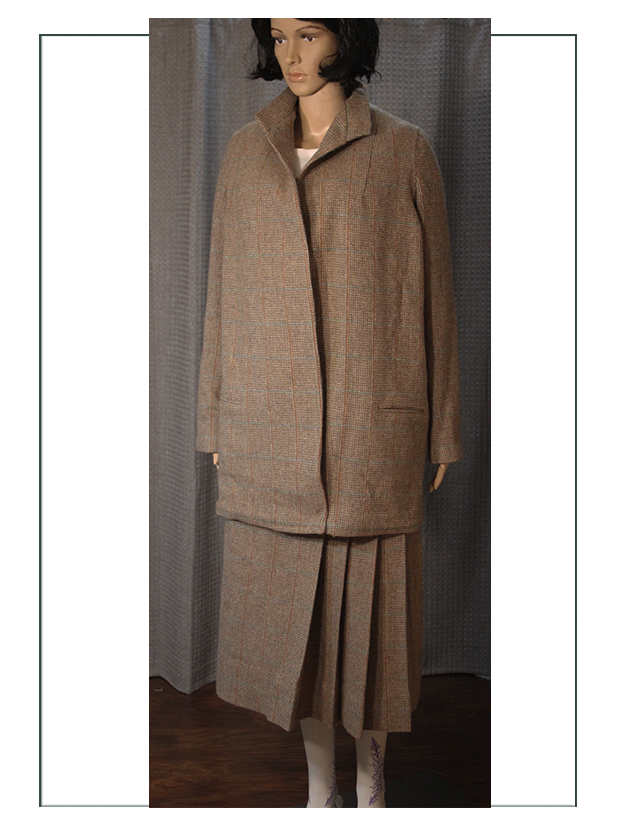
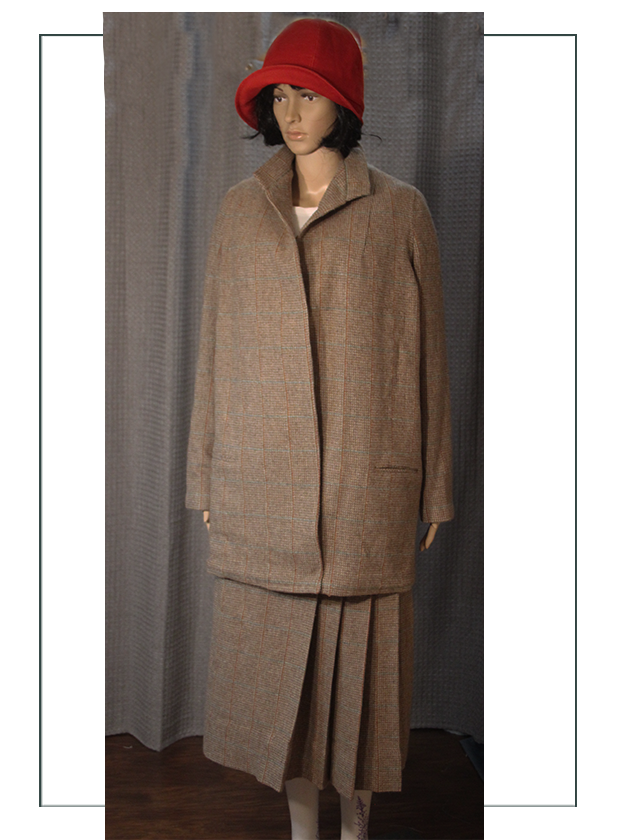
Wool & Batiste Camisole-Skirt combination
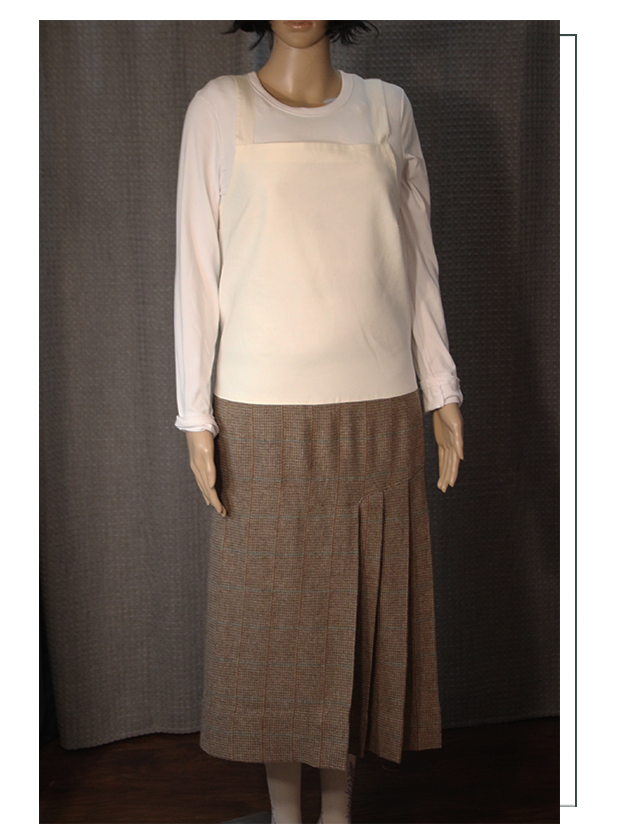
A very typical dress casual and way to stretch the budget, was to have a basic skirt connected to a plain colored camisole top as an “all-in-one” combination reminiscent of the undergarments of the late 19th century. They would then wear a variety of blouses over it which would have lace inserts or be sheer. In many cases, women did not wear any other undergarments under this, but treated it as a camisole bra top.

The color and fabric type and texture was the key to the success of this. A fine fabric like silk would be nice under a sheer and lacey dress blouse, but something more durable and washable was needed for every day cottons or wools.
In this we have selected a 100% heritage cotton batiste because it has a very dense weave and is a quality and very comfortable fabric to wear as a bottom layer (the shirt shown on the mannequin is not part of the ensemble. It is there to cover the padding on her to get the size of our teacher). This is attached to a 100% wool plaid the same as the jacket.
This concept of mix and match was not new to historical fashion. The 1880’s did this quite a bit, although the bodice was more often not attached to the skirt. Today we take forgranted skirt and tops or pants and tops being interchangeable, but one must remember prior to World War 1 when women entered the military and the workplace, only the rare or far western or rural woman would wear anything other than a skirt.
In the 1880’s, they would wear the same skirt for everything, and switch bodices. That is very much what we have here in the ’20’s.
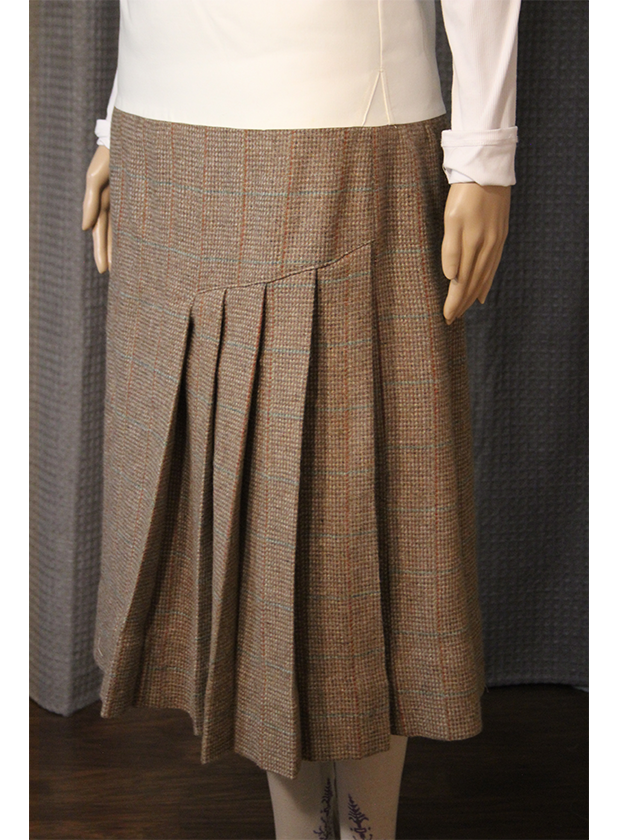
Note the low waistline of the day’s fashionable silhouette, with pleating just in the key spot so the wearer can move and walk or sit down. Placement of those pleats is key; too high and it can rip, but too low and she’s hobbled like the 1910’s skirts.
As with all the projects, this is built from a vintage pattern which had zero instructions and markings. Understanding the pleating and junction of the side seams was difficult, as the center front pleat actually continues underneath the skirt to give full range of movement in the legs.
We also reinforced the joining between camisole and skirt because from experience, we know the heavy wool with the huge hem (again a heavy hem so it will drag the silhouette down) can sag over time. This will be very durable, and even a little stiff, but it will keep its shape over time if the pleats are maintained through drycleaning.
As with all these projects, we are impressed that seamstresses of the 1920’s could build these without any direction. You can see here the beginning of the fashion that would be our mother’s in the 1940’s and 1950’s, although the waistlines would drastically rise from this, the concept of the wool pleated skirt with underlay top would persist.
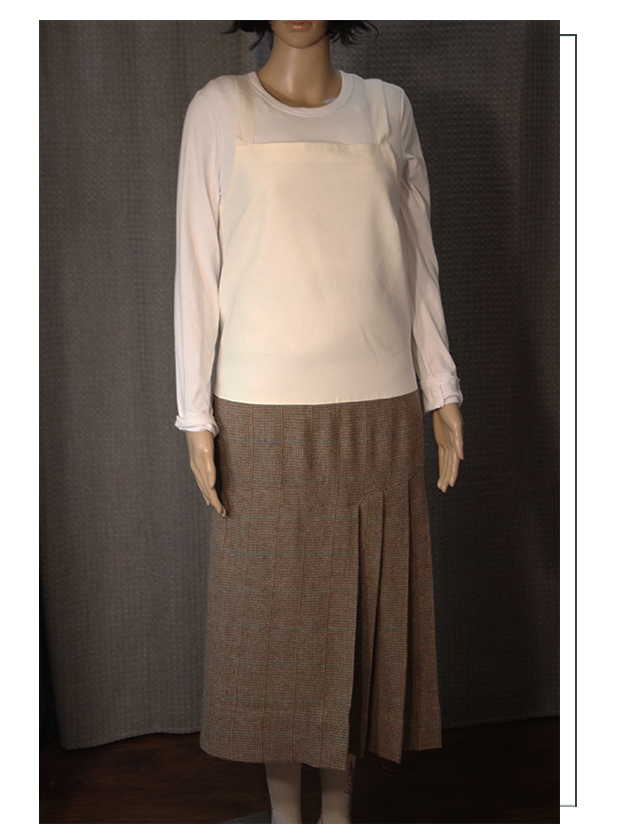
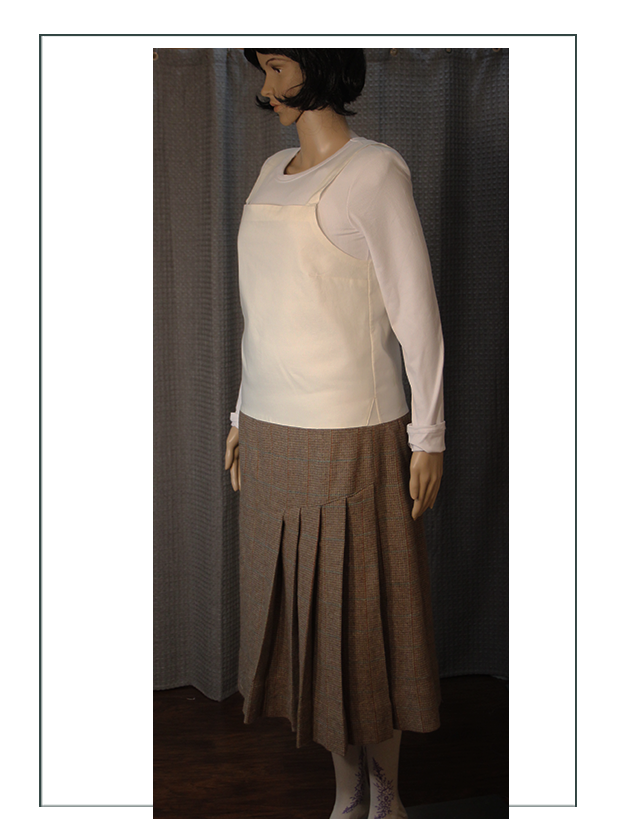
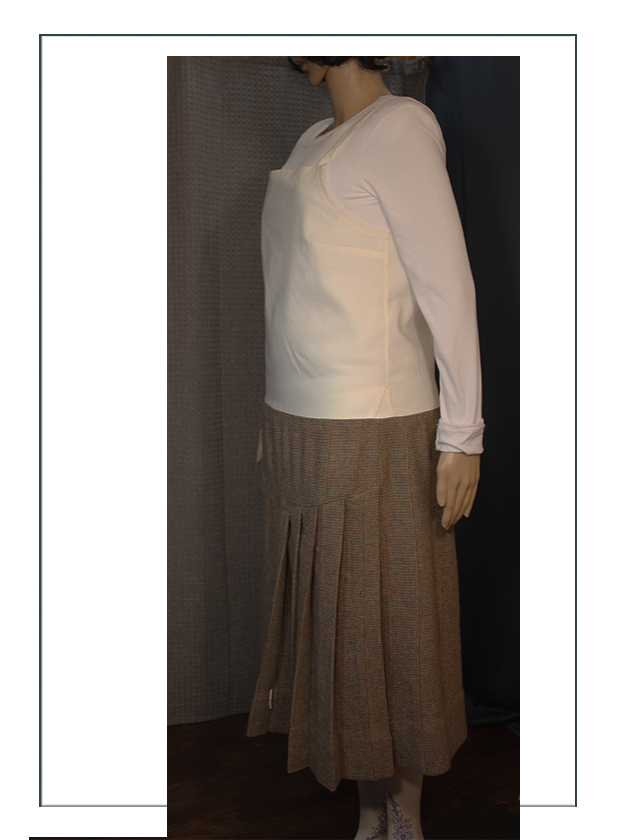
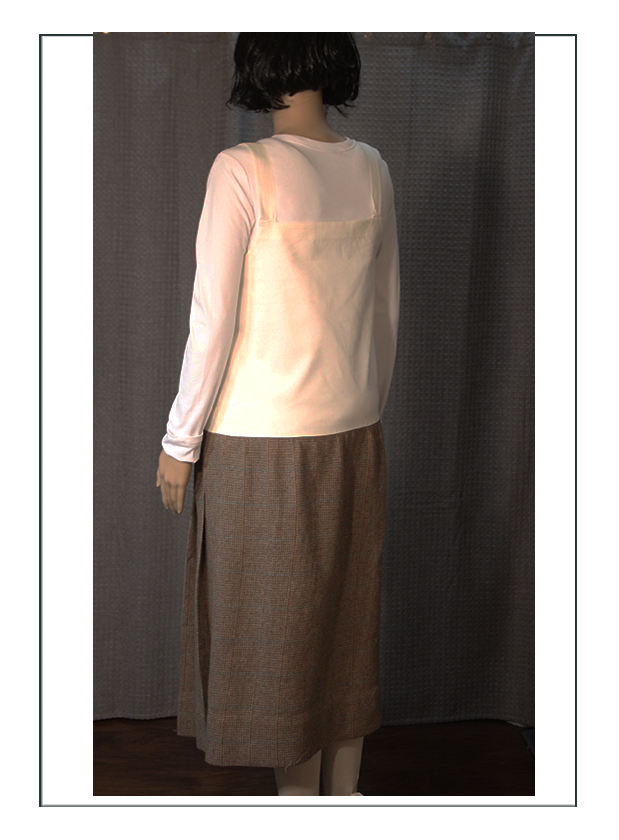
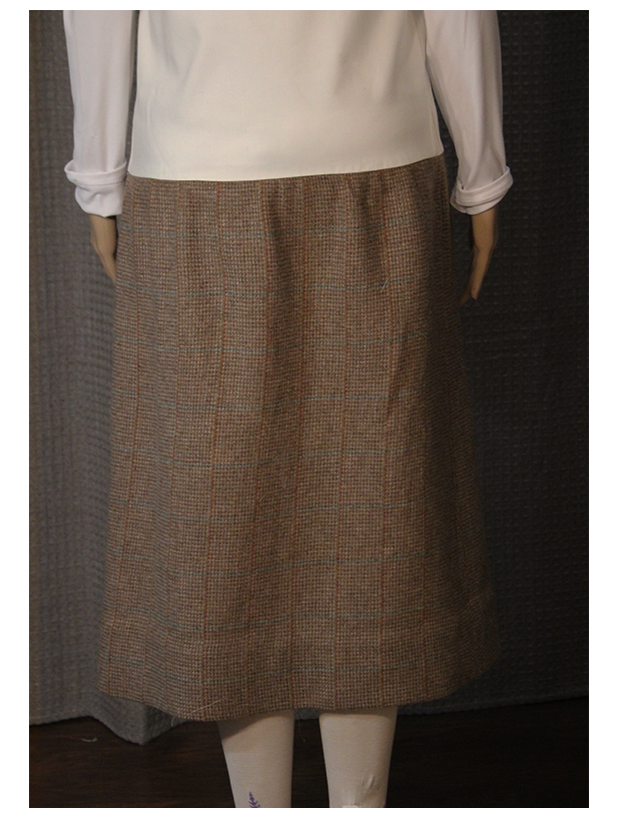
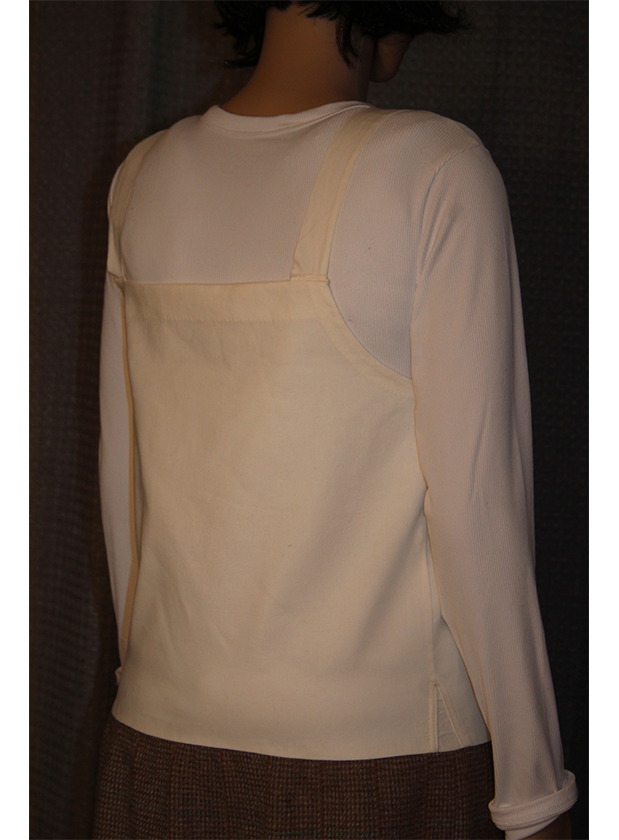
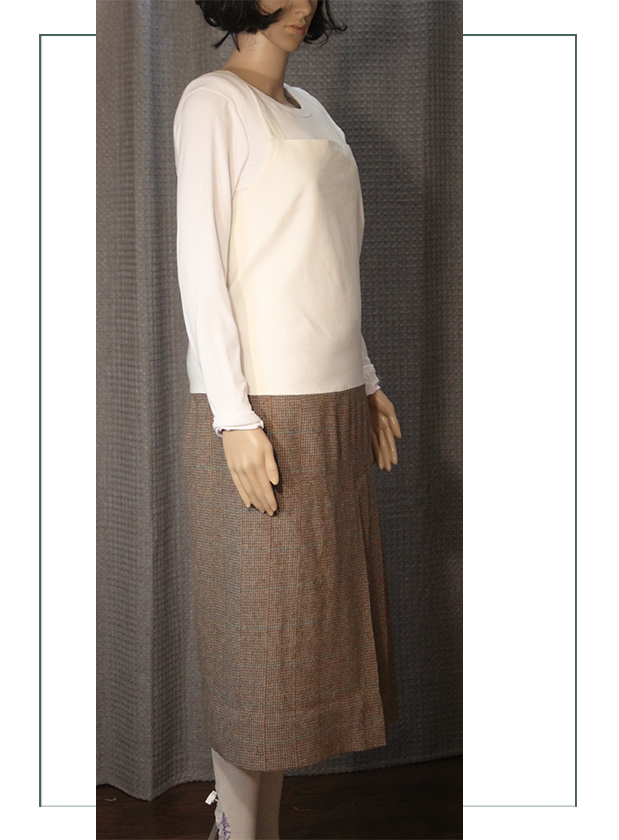
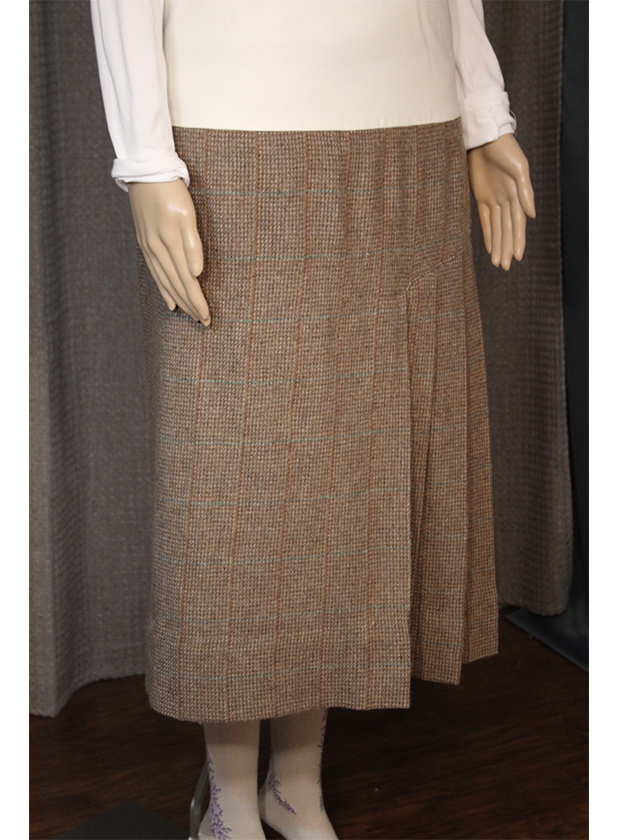

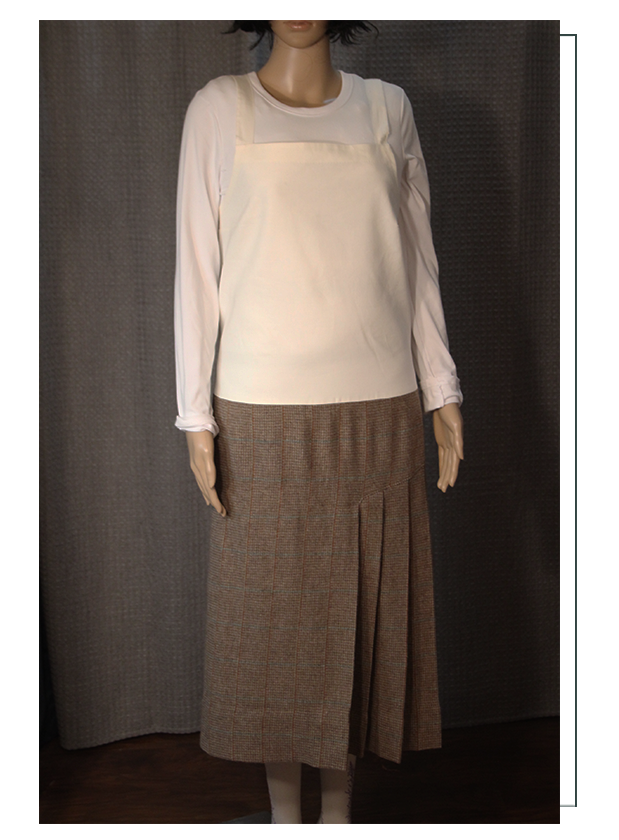
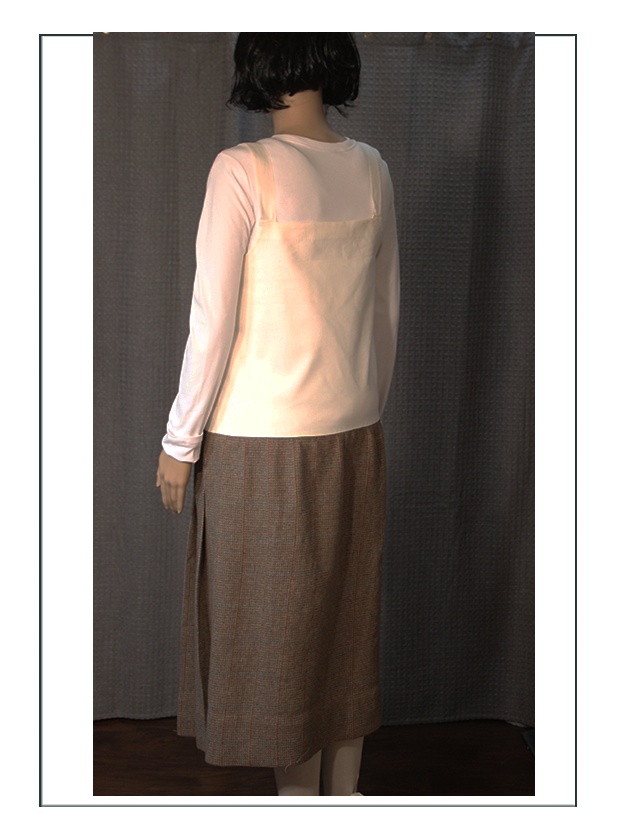
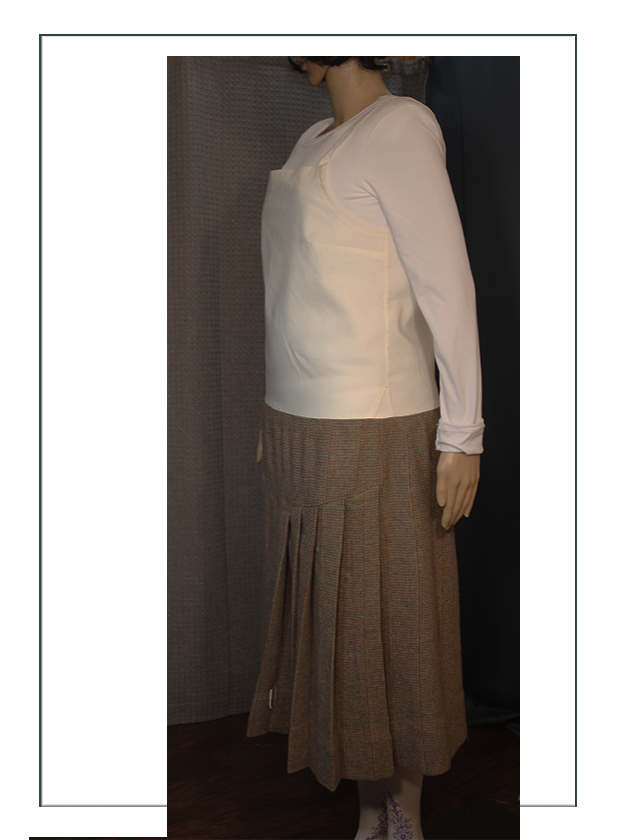
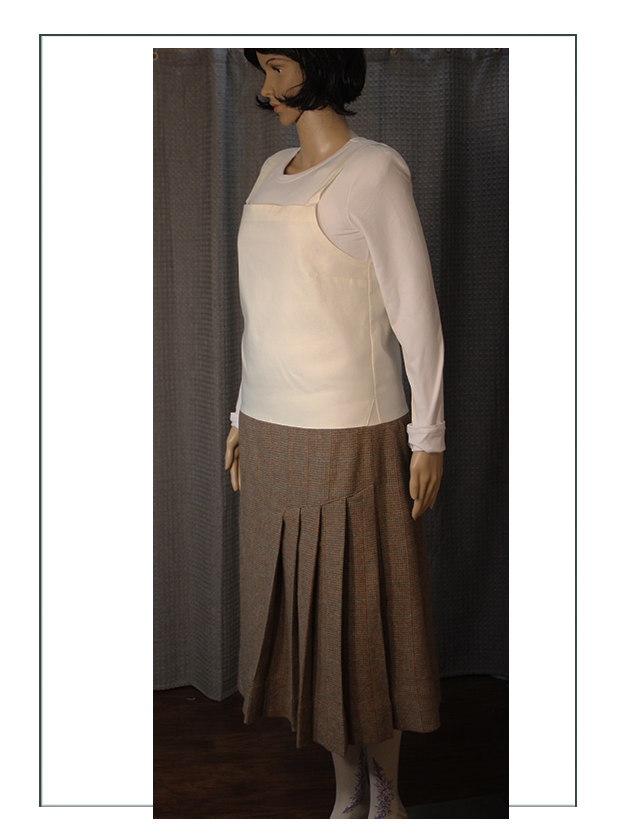
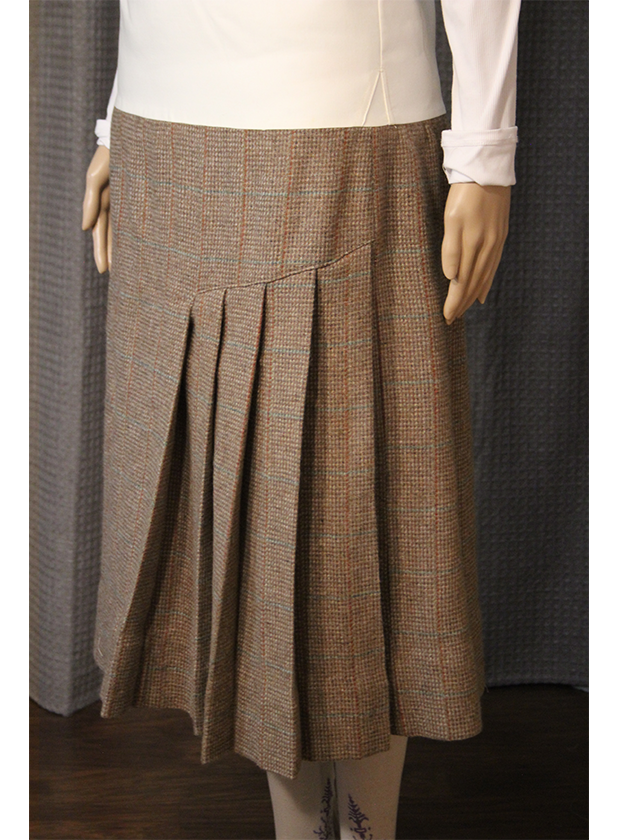
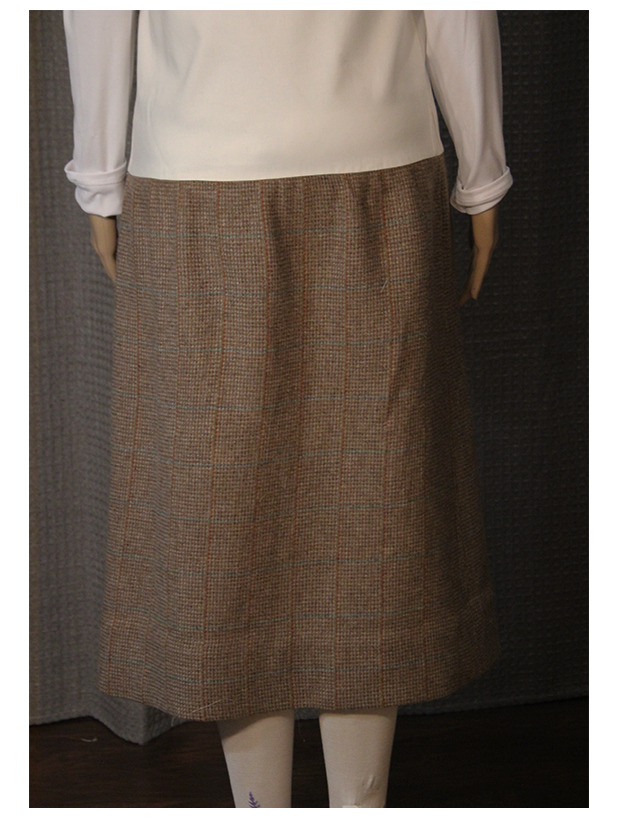
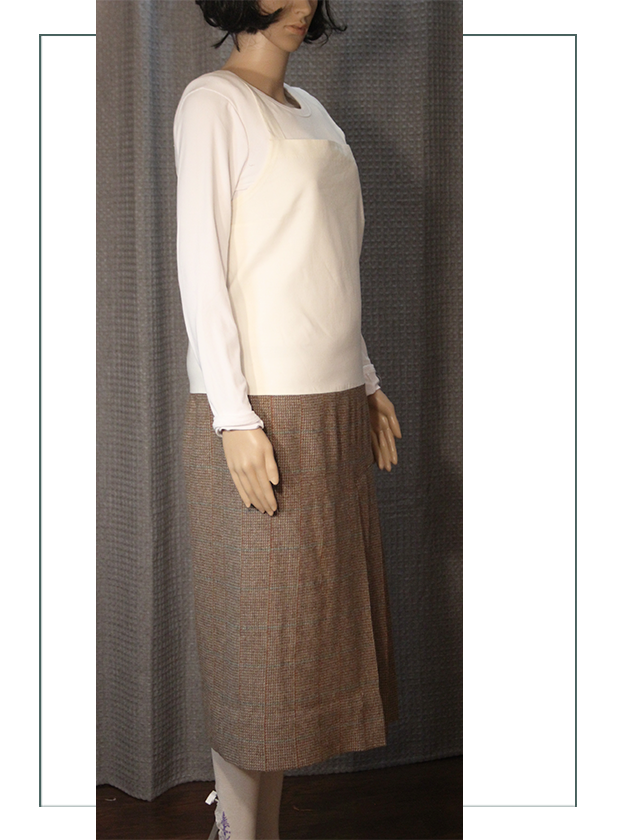
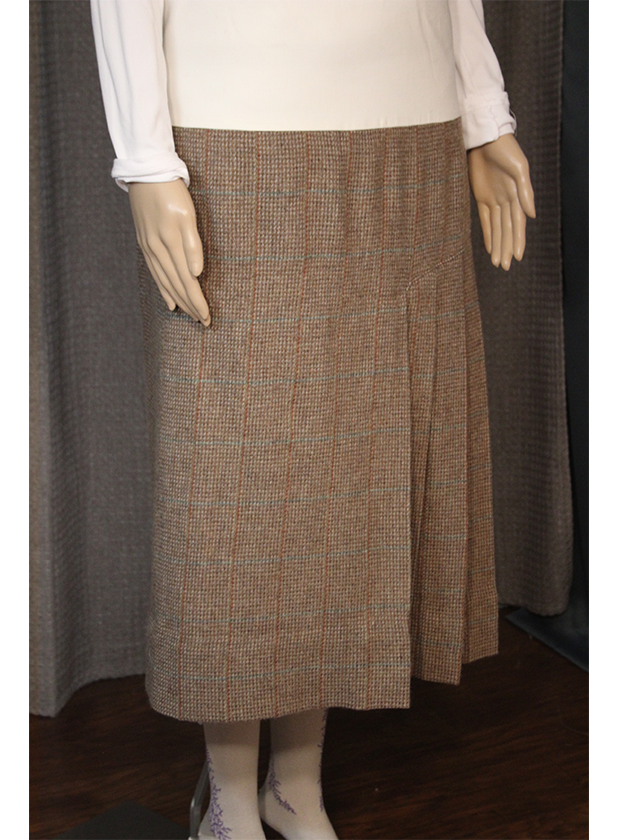
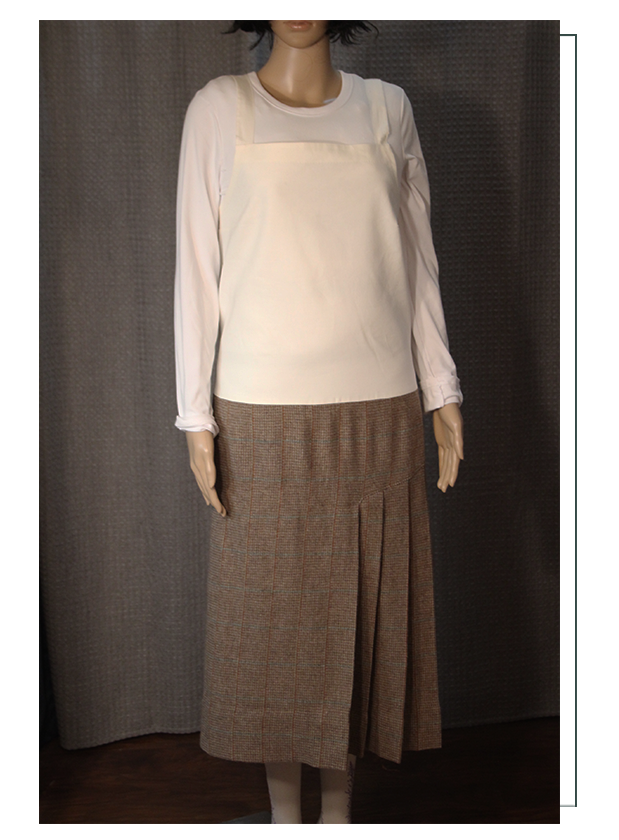
Fancy Blouse w/Jabot
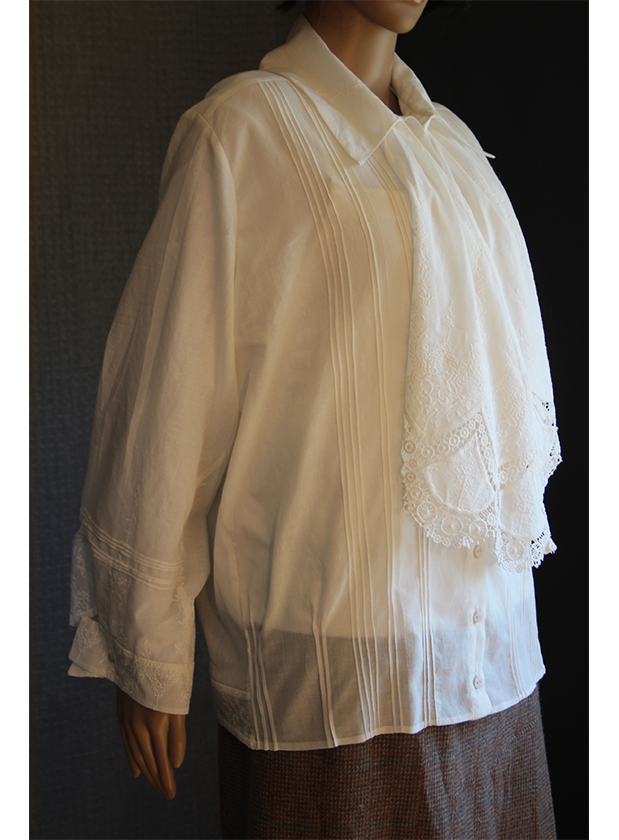
This was very interesting, as all we had was sketch in the pattern. We made the pintucks individually by hand (instead of the machine tool type that makes several in a row), and fitted it to the mannequin rather than followig measurements. This is designed to go over the camisole skirt which is the same color, and it is meant to be see-through.
This is a 100% cotton very loosely woven fabric, with integrated cotton trim which you can see on cuffs and back waistband as well as on the jabot. It was a fun use of an edging fabric to design this from scratch.
The jabot, which reminds us of men’s 18th century ascots (it seems everything by the 1920’s was borrowing some concept from the past), is integrated into the collar, which is unique to fashion history as usually that is a separate garment. Thus the term “jabot” vs “ascot” or “tie” of some sort. This one can be worn tied or hanging loose like in the picture.
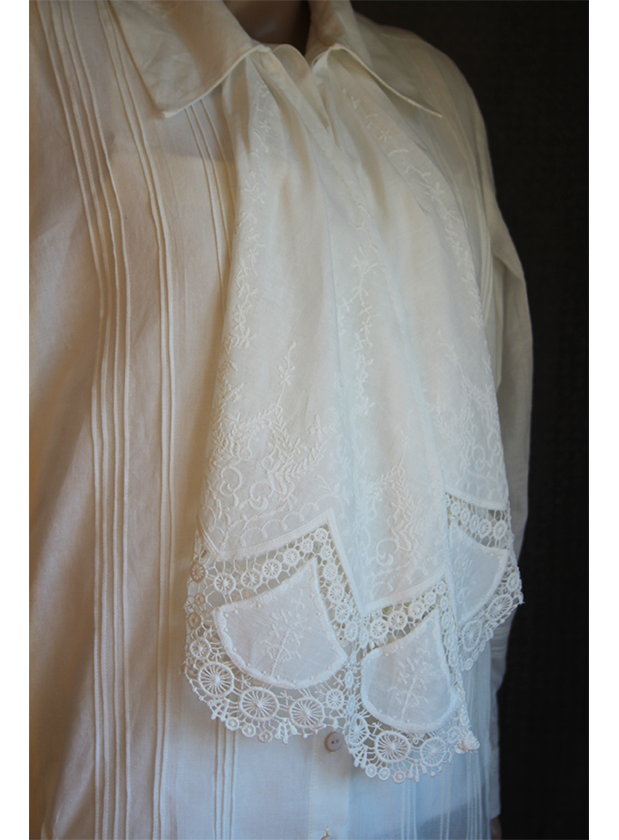
As with the other garments of this ensemble, it is long waisted and ends halfway over the derriere. In this case, however, the waistline is created through use of the tucks for bringing in the bottom of the blouse.
We made the sleeves a bit bigger than the other garments, so they hang a bit “droopier” on purpose. This is a dress blouse as a teacher would wear to a parent conference.
The sleeves and cuffs are the most unique features, however. They are french cuffs which use cufflinks rather than buttons. Buttons down the front as well as the hand made cufflinks are real vintage mother of pearl (MOP) from the Mississippi River and the author’s hometown, “The Pearl City” in Iowa.
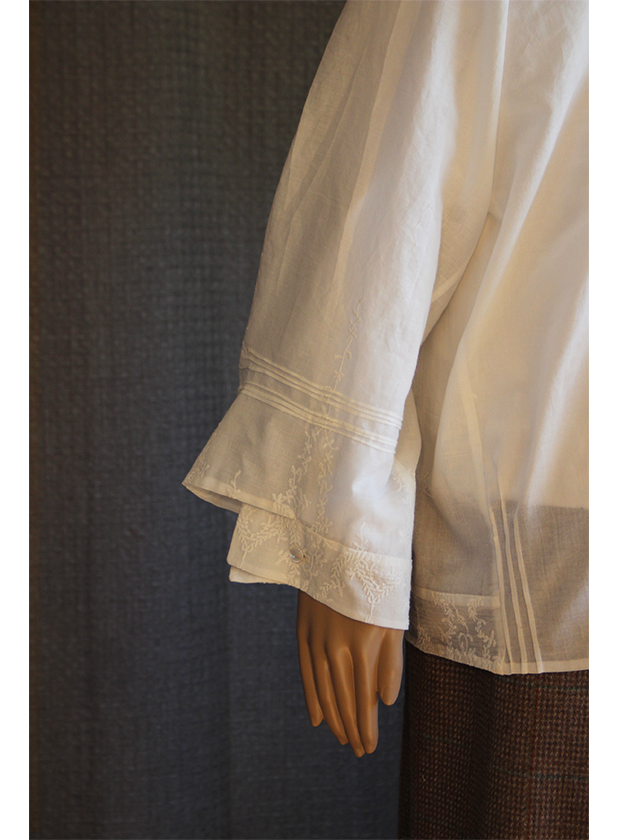
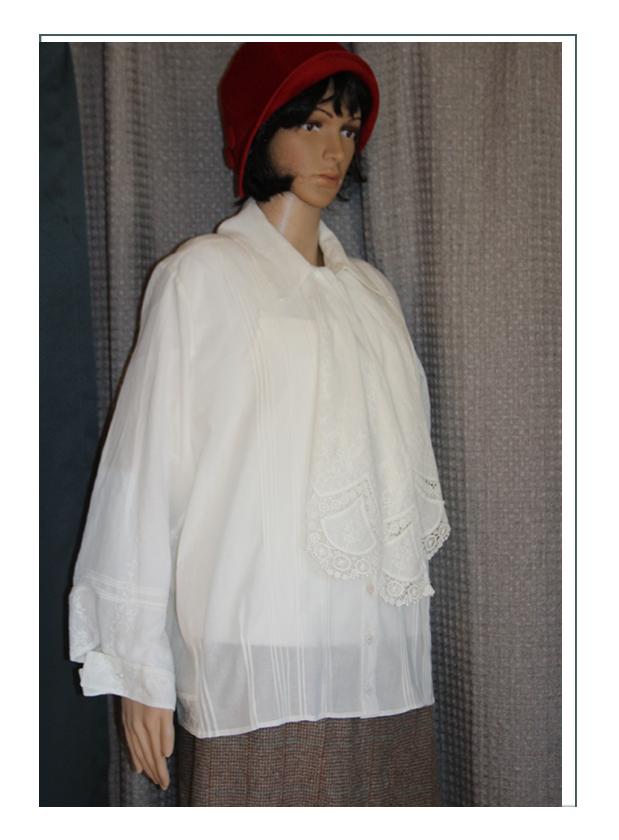
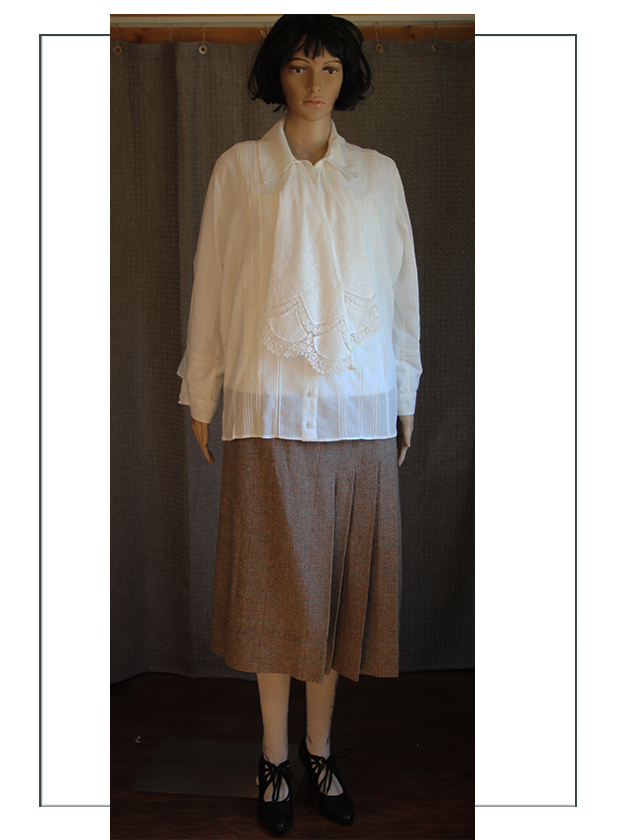
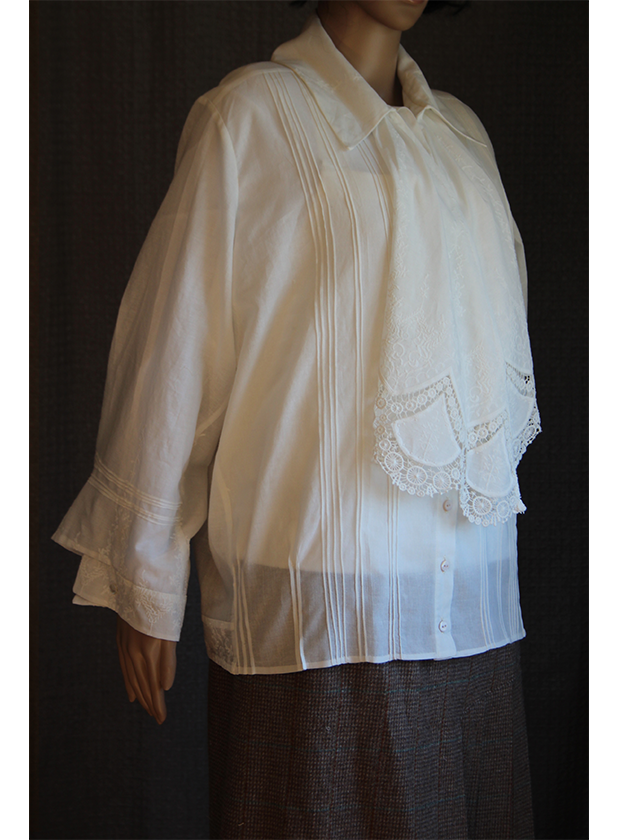
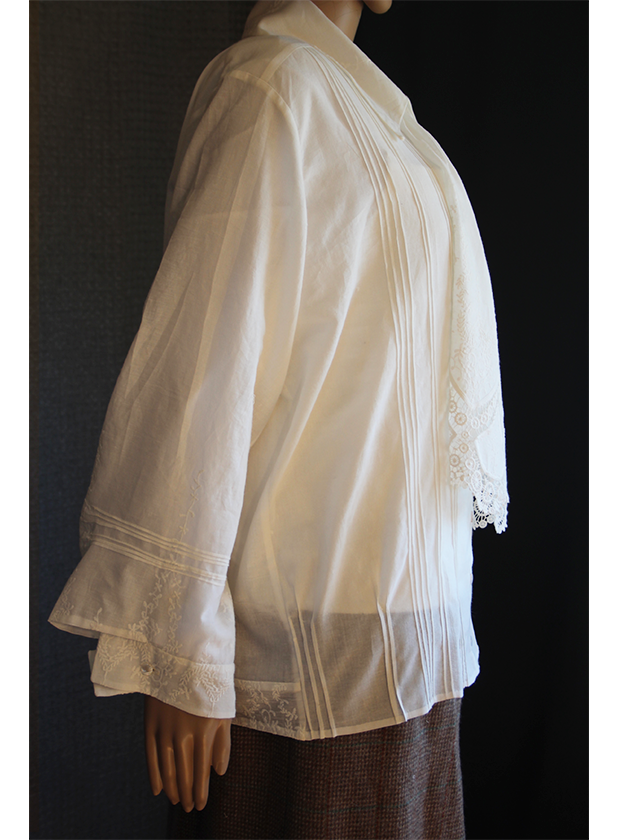

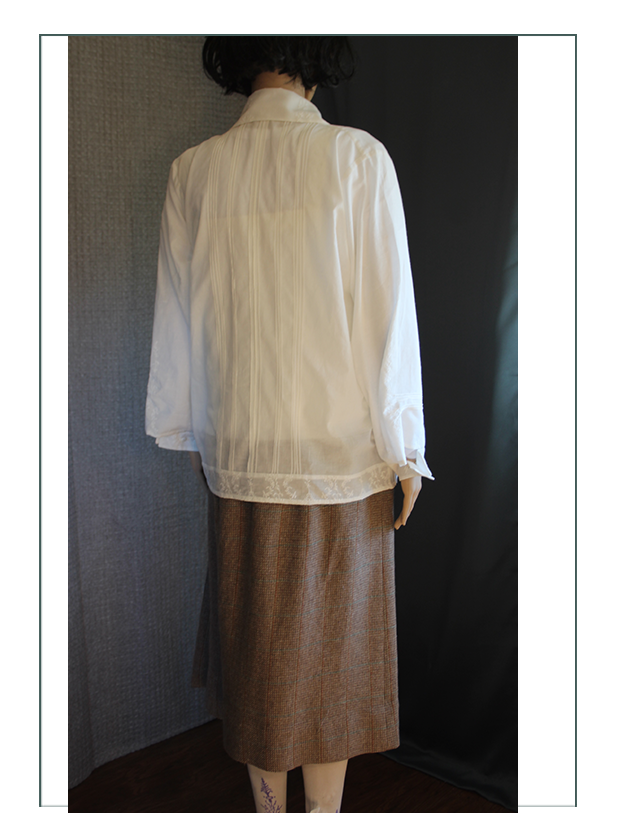
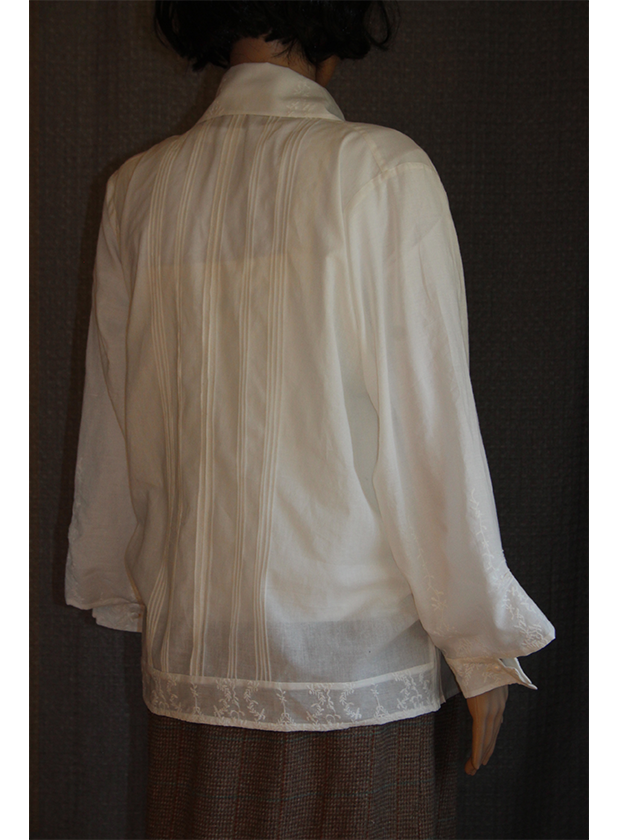
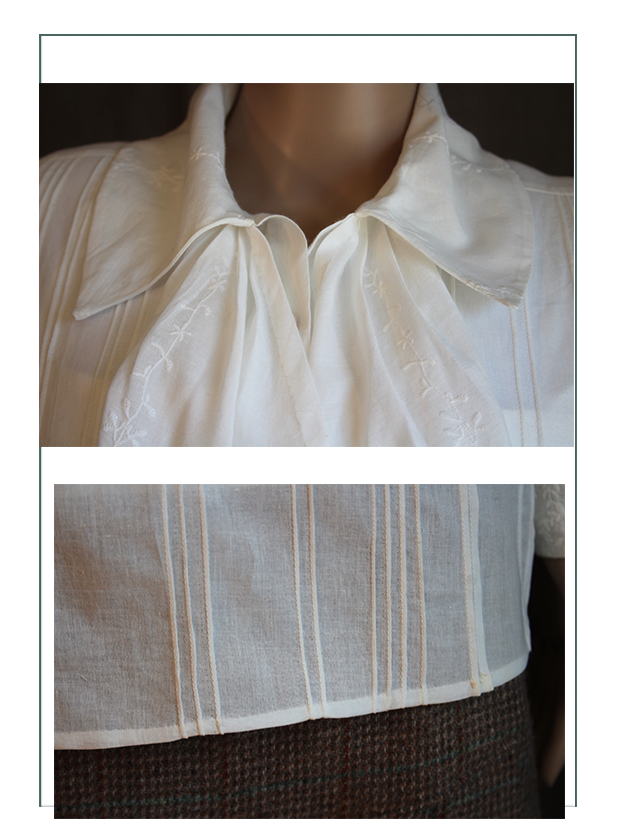
Apron
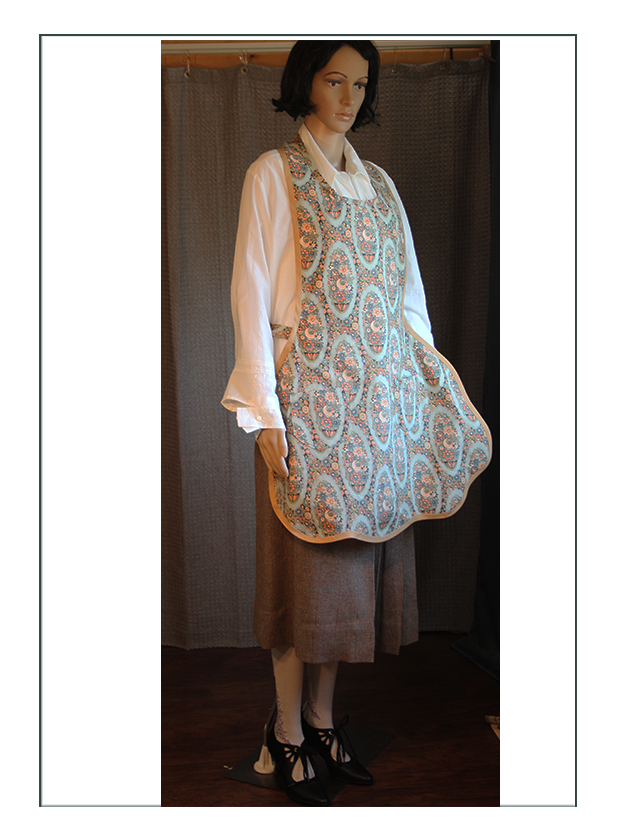
This is made from Andover Mills’ “Lady Edith” 100% 1-sided print fabric from their Downton Abbey collection, reproduction fabrics from the 1920’s. We are working with the advisor Carol B. Davey who worked with the Downton costumers in their research. Ms. Davey reproduces the authentic patterns of Mary Brook Pickens and Ruth Wyeth Spears who developed many of the high fashion patterns for commercial use in the 1920’s.
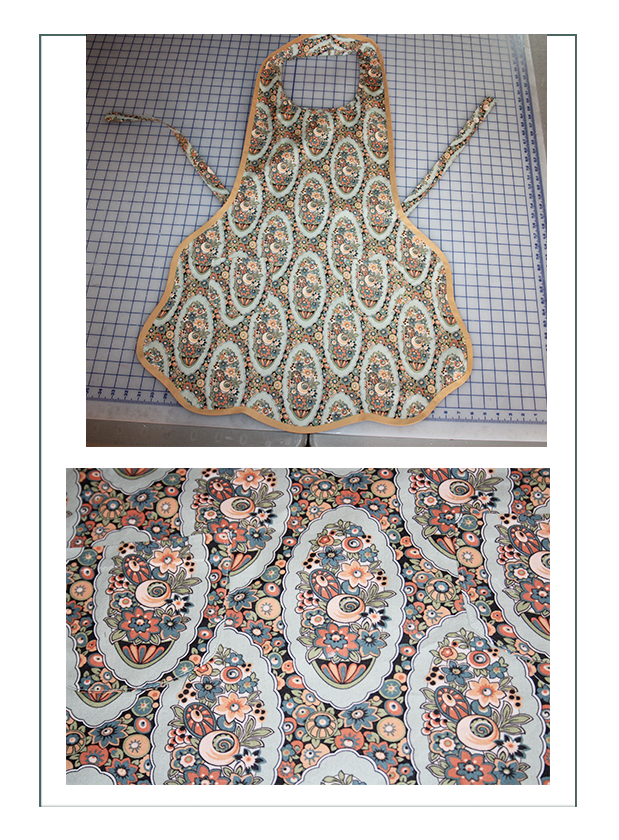
This design is featured as a “mother and me” in the ’20’s. We have made it as an example of a simple project for the museum to have us build for the kids who come to the immersion classroom. It is unlined, but has binding all the way around – some self binding and some contrast, which is sewn on entirely by hand. These can be made to be reversible and in a variety of sizes fairly easily too.
After working so many hours to build the above teacher’s ensemble, it just seemed right to cover up the fancy clothes with something practical for the immersion teacher to wear while working on projects with the kids.
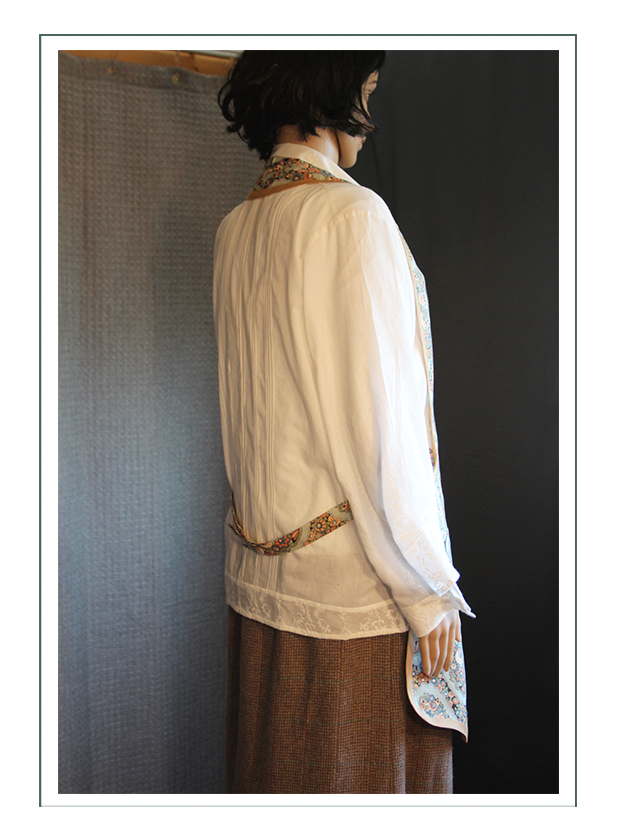
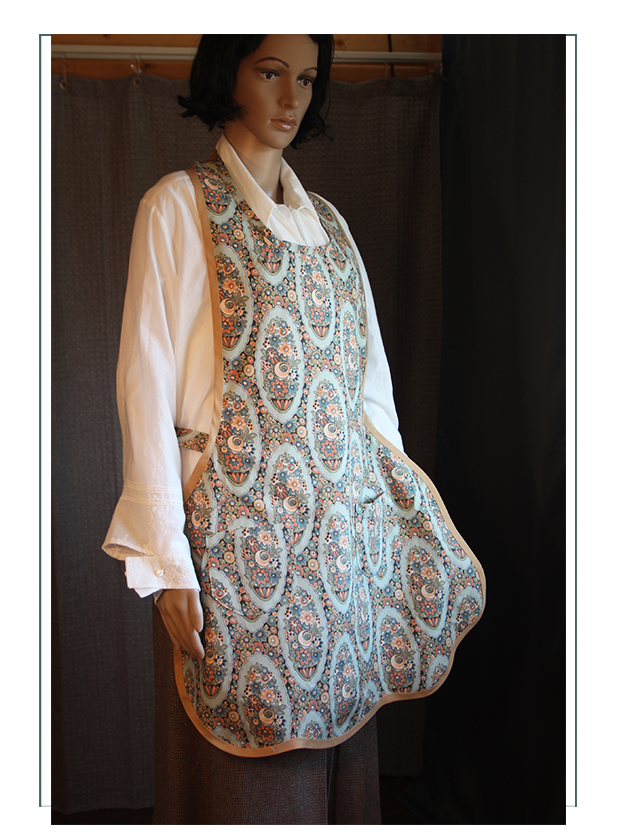
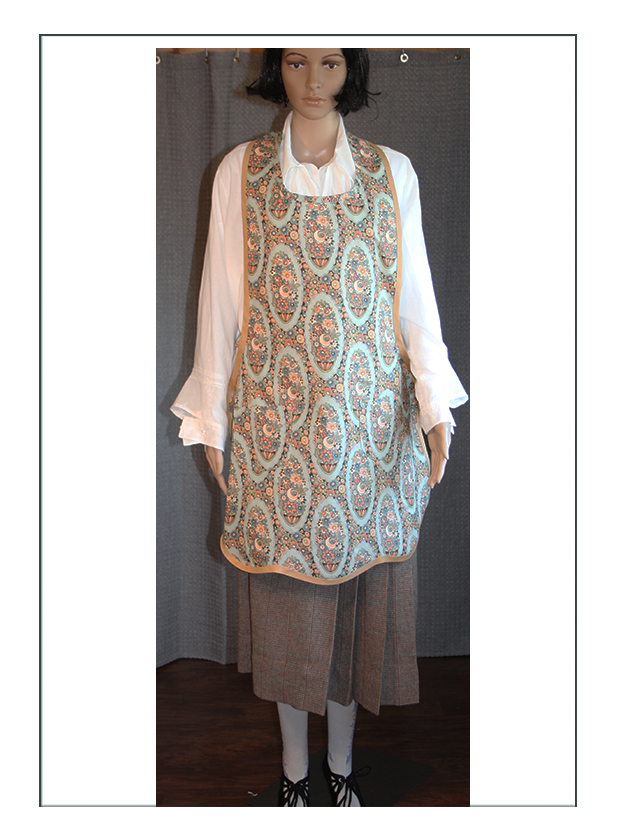
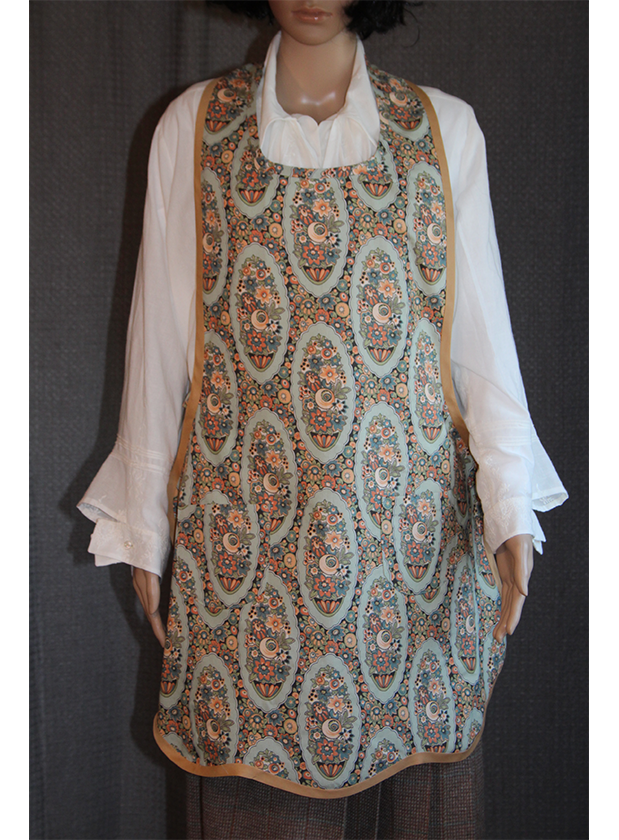
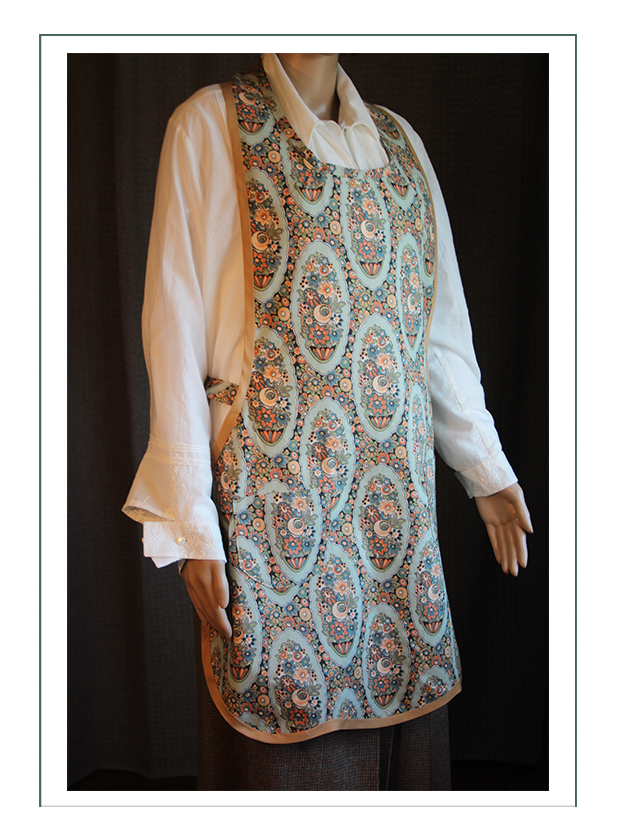
Hand Knit Wool Cardigan Sweater
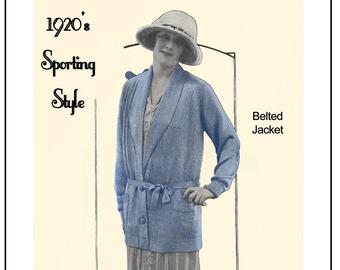
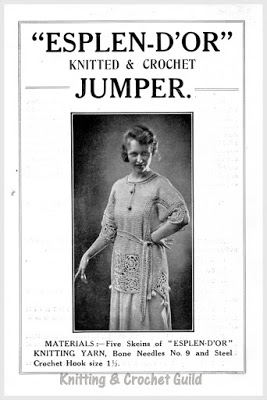
The pattern is actual as was available in magazines for free for a “Sports Coat”. This was worn to play tennis, badmitton, or other active outdoor sports and was most typically made at home from special and very narrow gauge yarn.
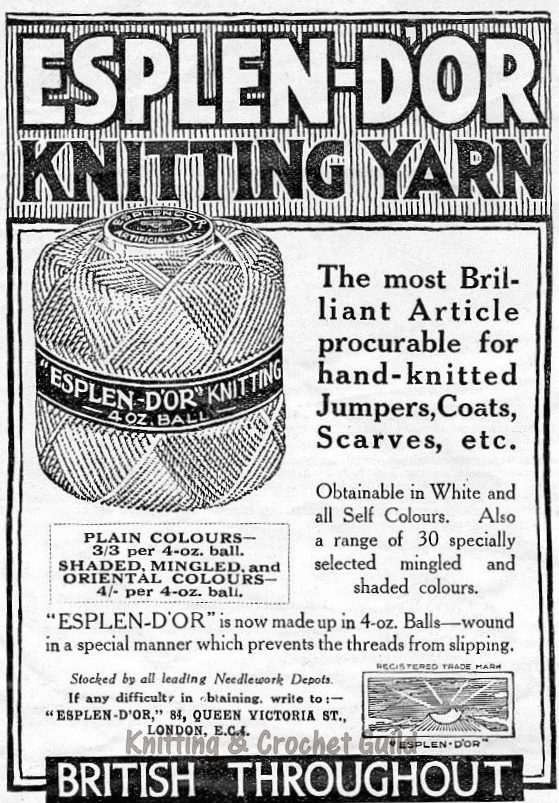
Ours is made of 100% organic merino wool which yields the same gauge but a bit rougher look with the natural “nubs”. While we did not chart the time to build, it took an estimated 400 hours of knitting time plus piecing to accomplish. It is pieced much like a sewn garment, although everything is knitted, except the buttons which are crocheted over button forms.
It has inset pockets with flaps, and large lapel collar, separate belt (called a “girdle” in the 1920’s), and belt loops – all knitted by hand using tiny needles.
in progress!
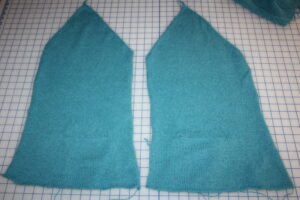
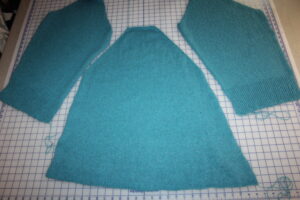
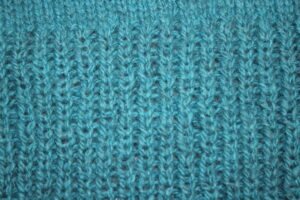
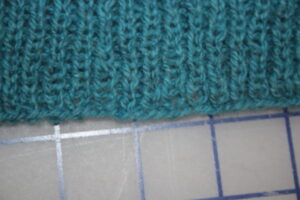
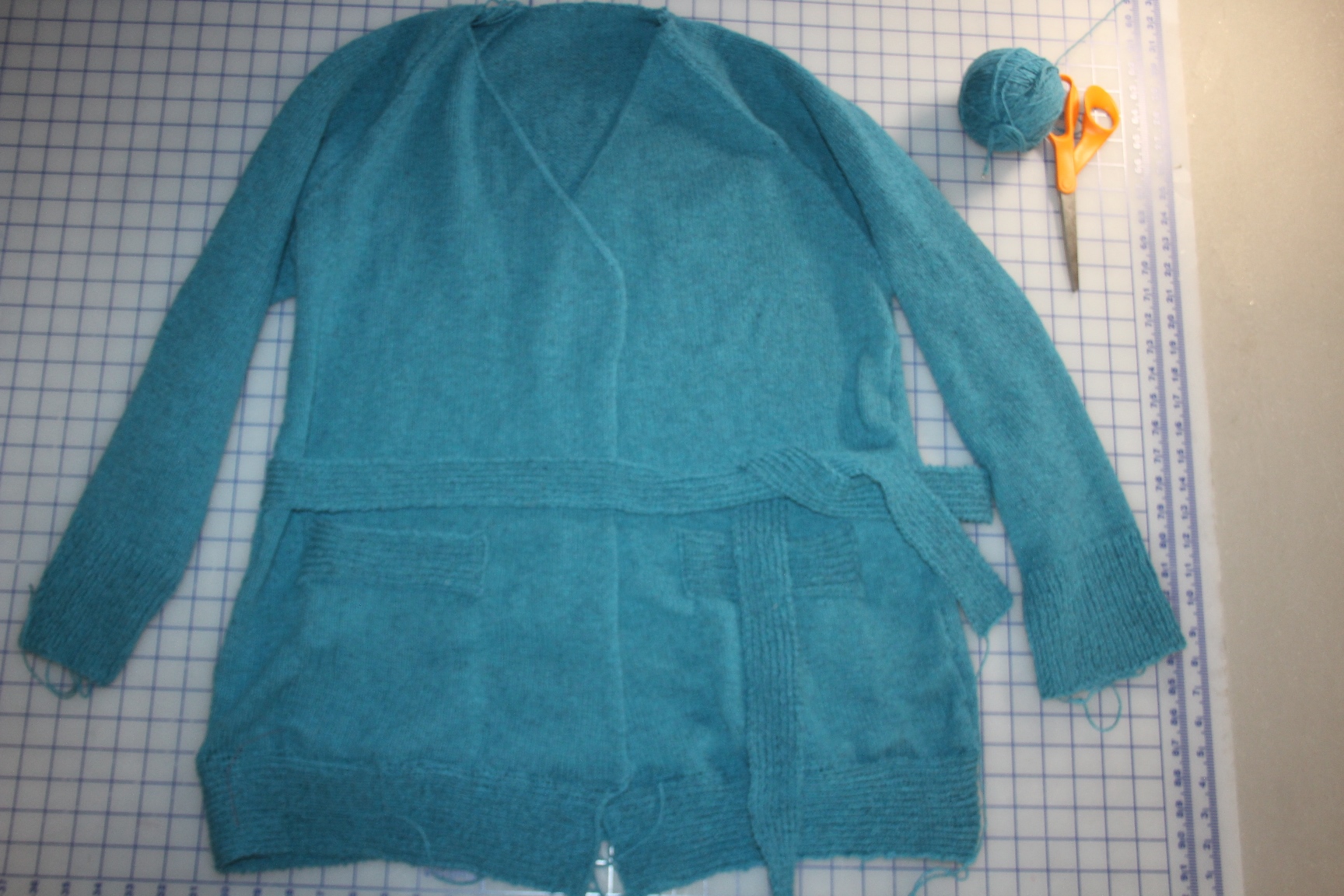
Finished at last
This is surprisingly light in weight and yet very warm; result of using the finest 100% merino (locally WY sourced) wool. It’s not thick nor heavy, but very densely knitted which is why it took so very long. The collar ended up being the largest and most time consuming of the pieces, although the pockets were the most challenging to figure out (and they are wonderfully strong and deep and useable). It’s because it’s a rib knit which goes every stitch back and forth plus the increases and decreases and edging.
There’s a special feature of a 3 stitch stockinette line which keeps the lapel turned without blocking or steaming on its own. There are very unique design features for comfort and ease in wear – remember this is a “sports coat” not a cardigan sweater! That means it is designed as active sportswear for tennis specifically, so the arm and shoulder area of necessity has to be very full for a wide range of motion of the arms and shoulders.
Crocheted belt loops, a wide girdle (belt), special vertical buttonholes, and other features mark this for excellence. Customer has been advised not to fit anyone over a 40″ bust even though it’s tempting, because then it looks like a 1950’s letter sweater (TO TIGHT) and could stretch it irreparably.
This should be worn loose and baggy as shown. It is exactly on the gauge and so dimensions of the original 1925 pattern.
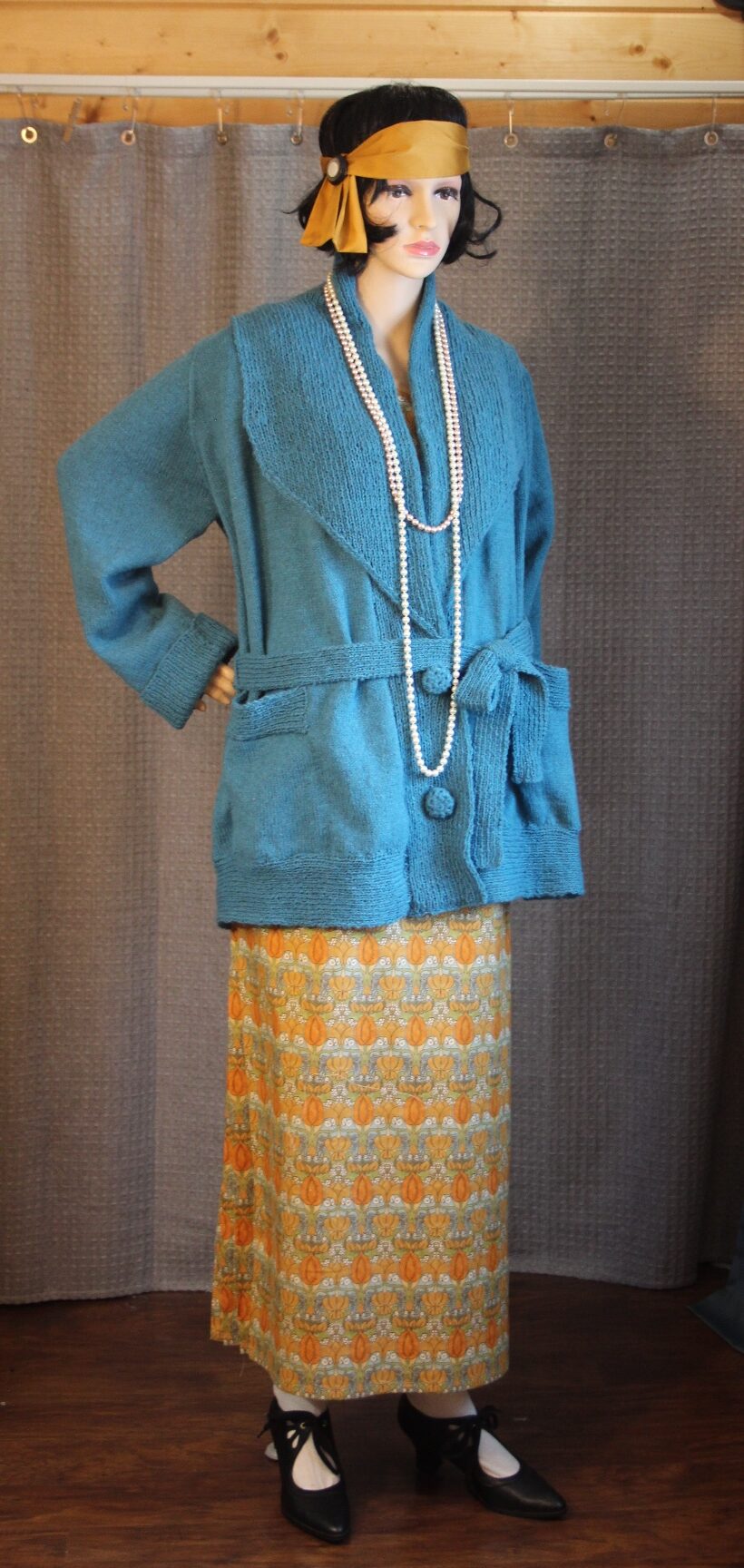
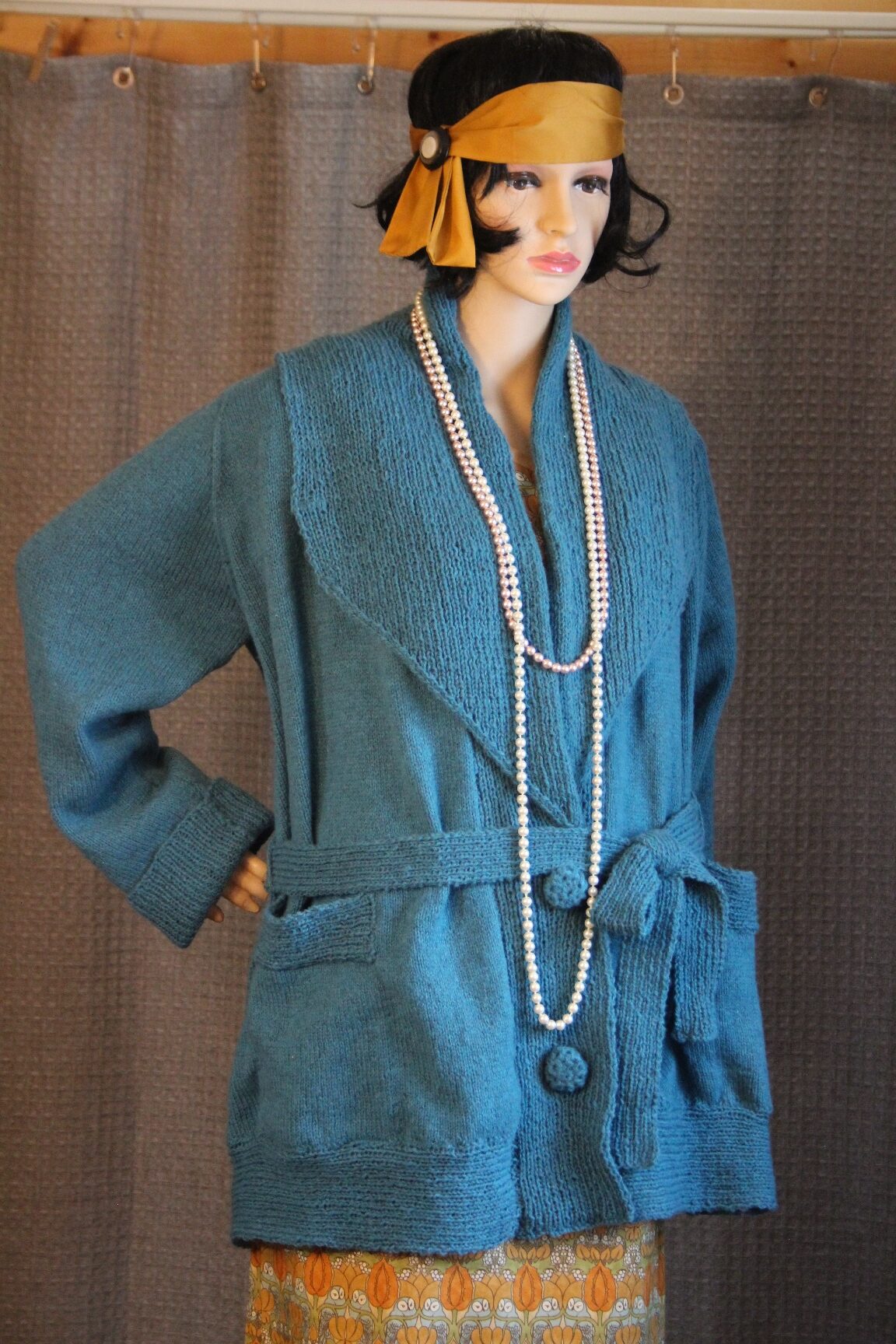
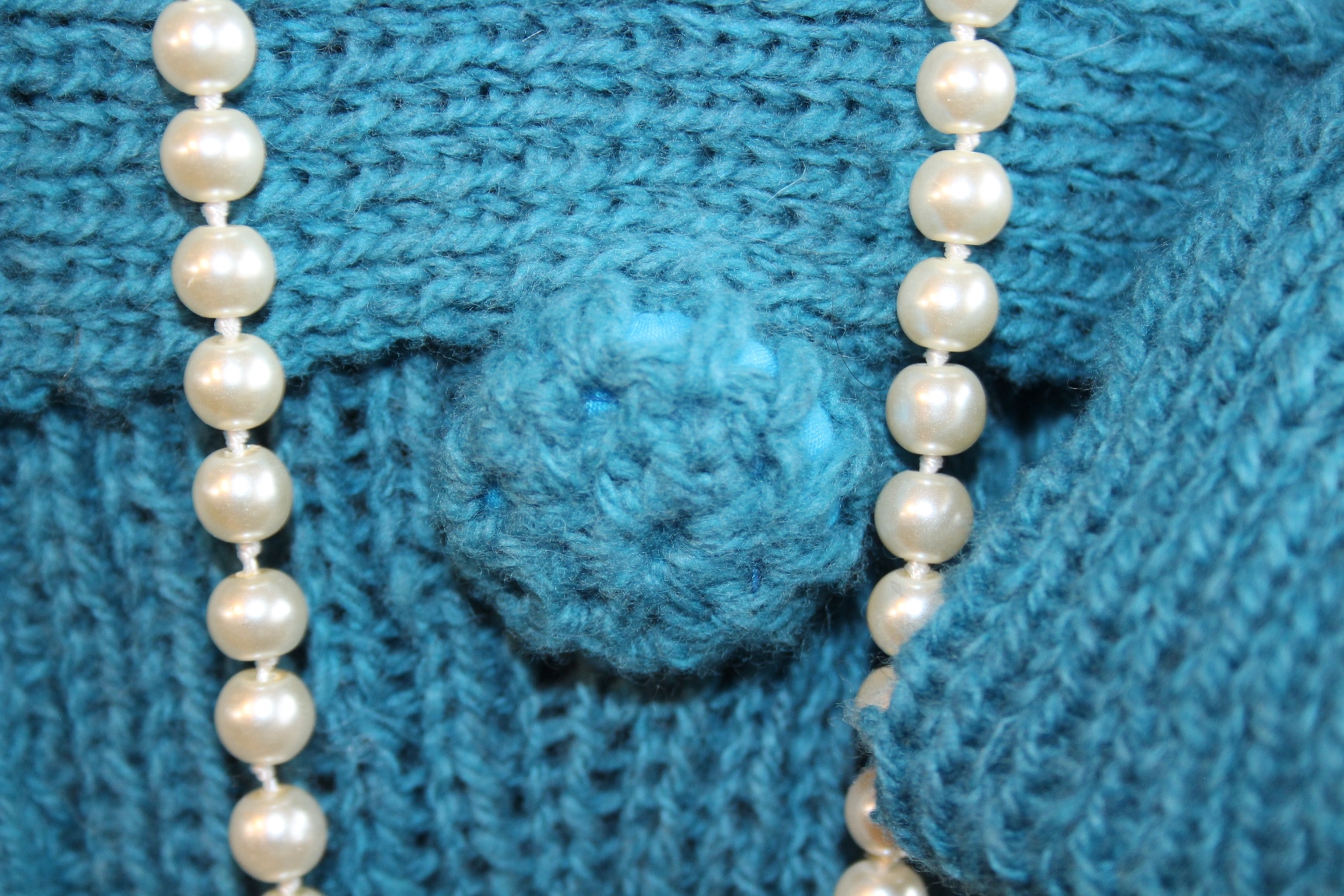
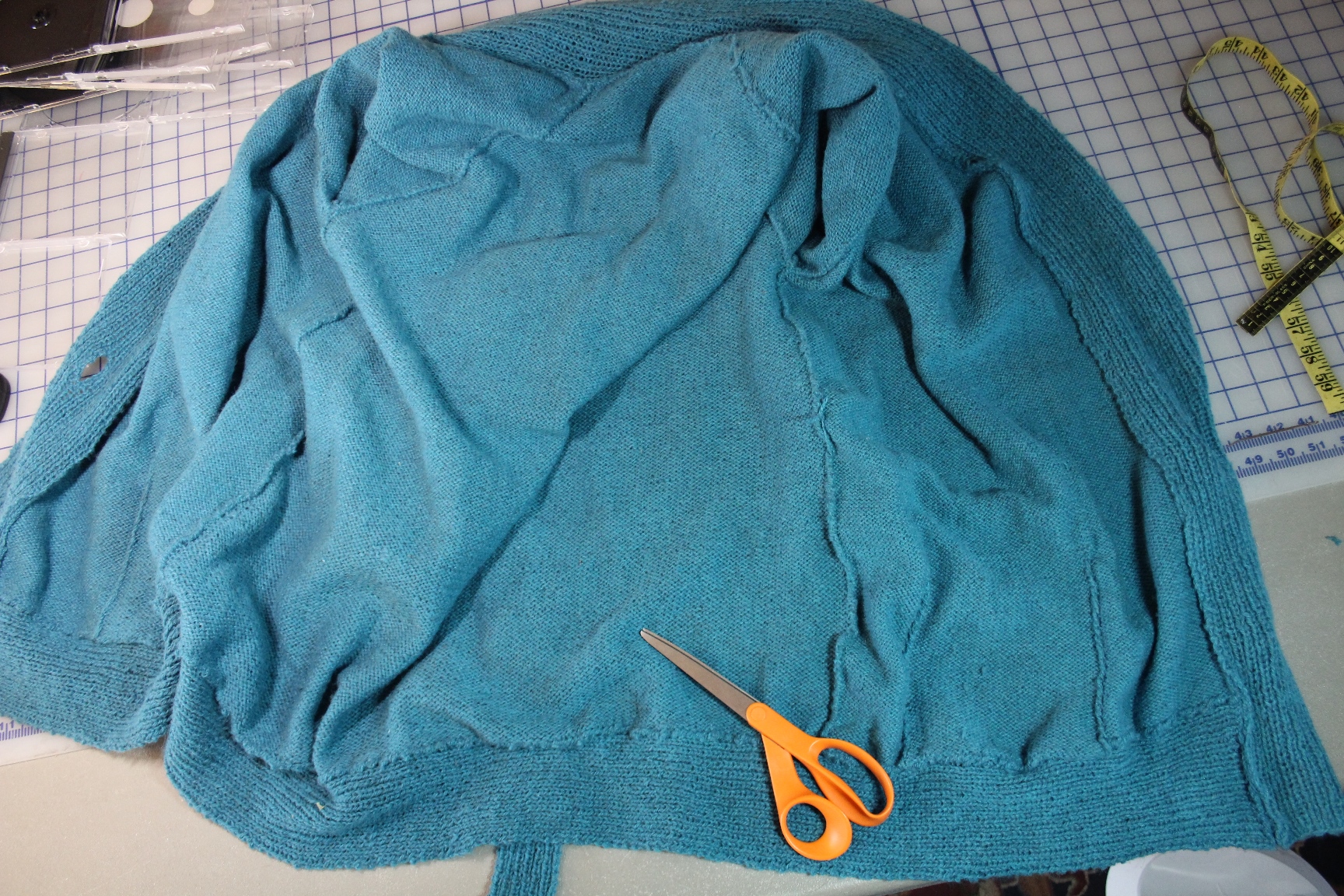
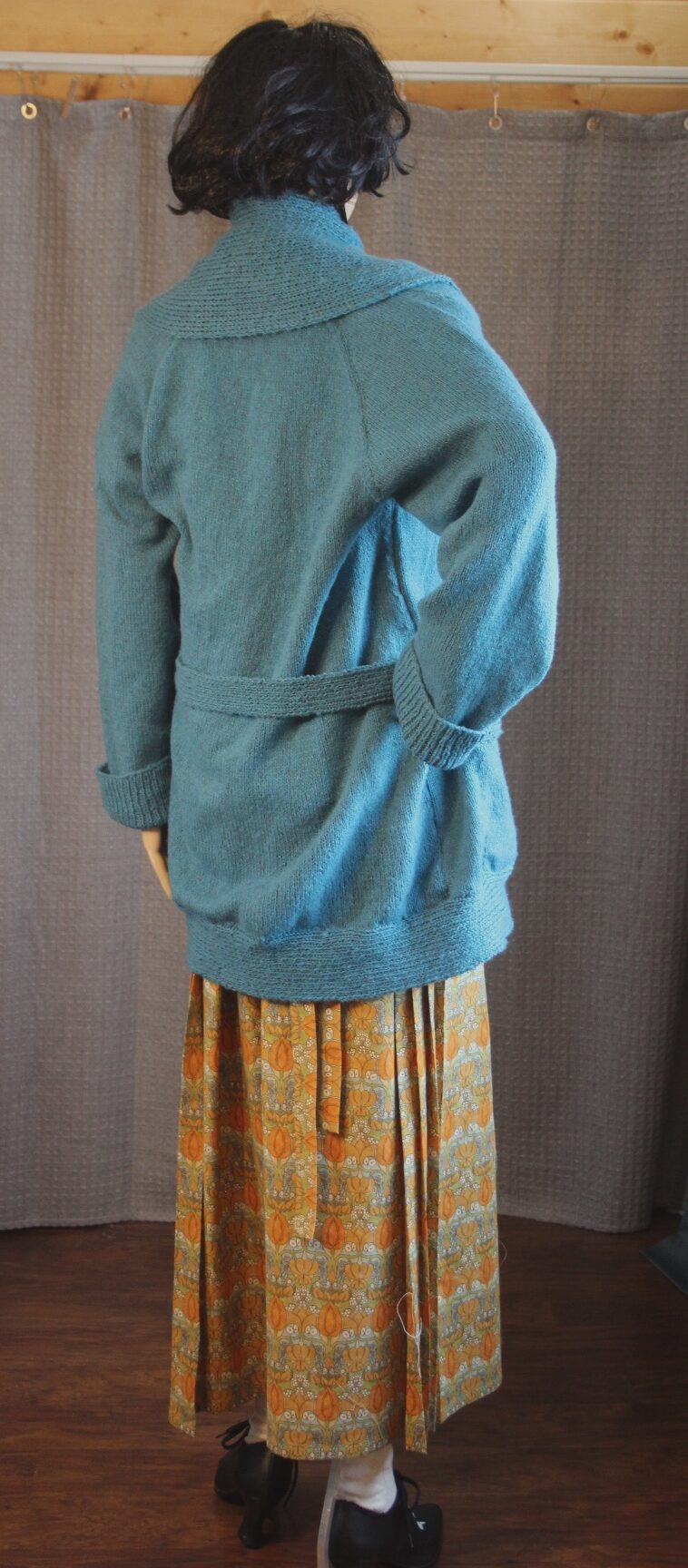
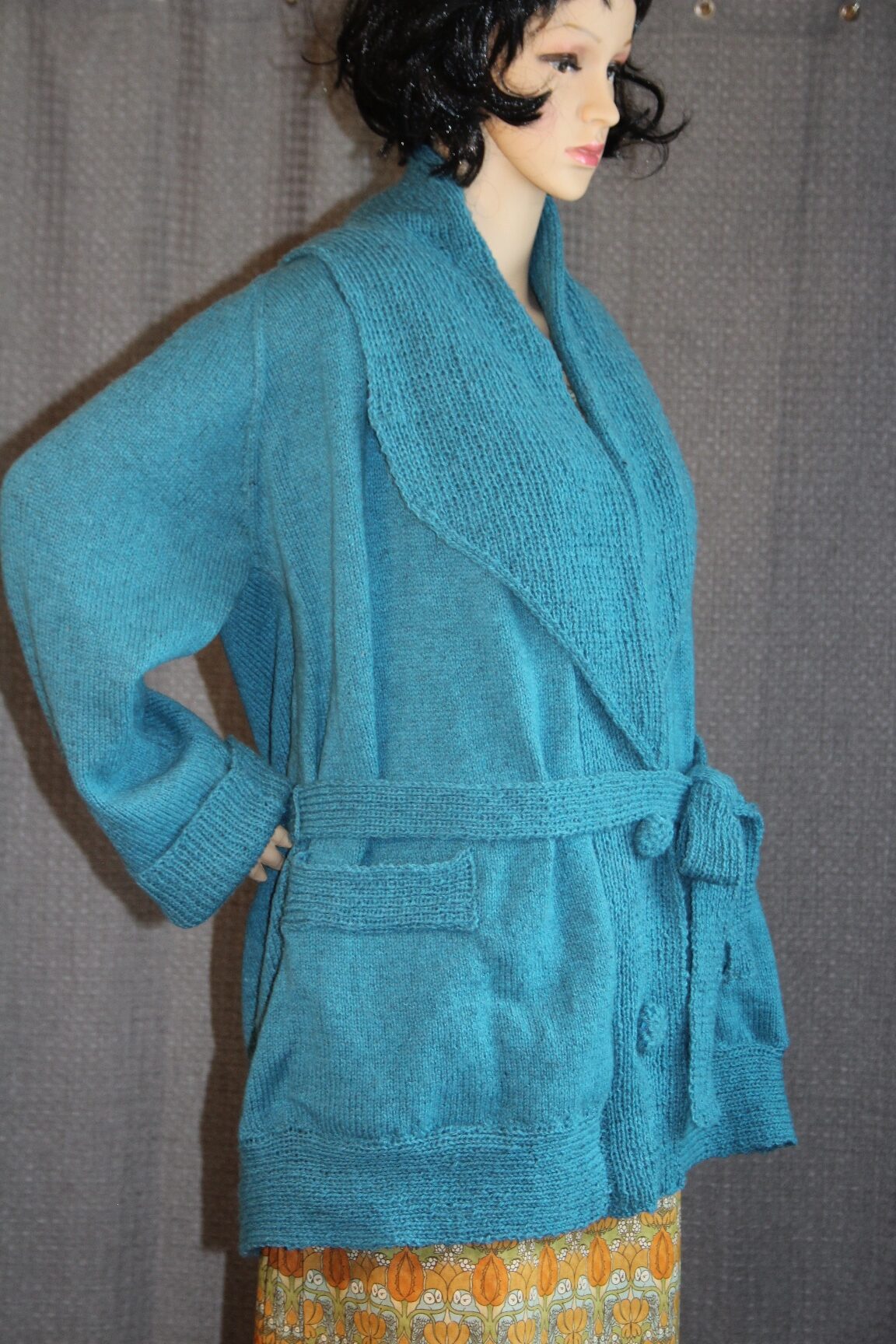
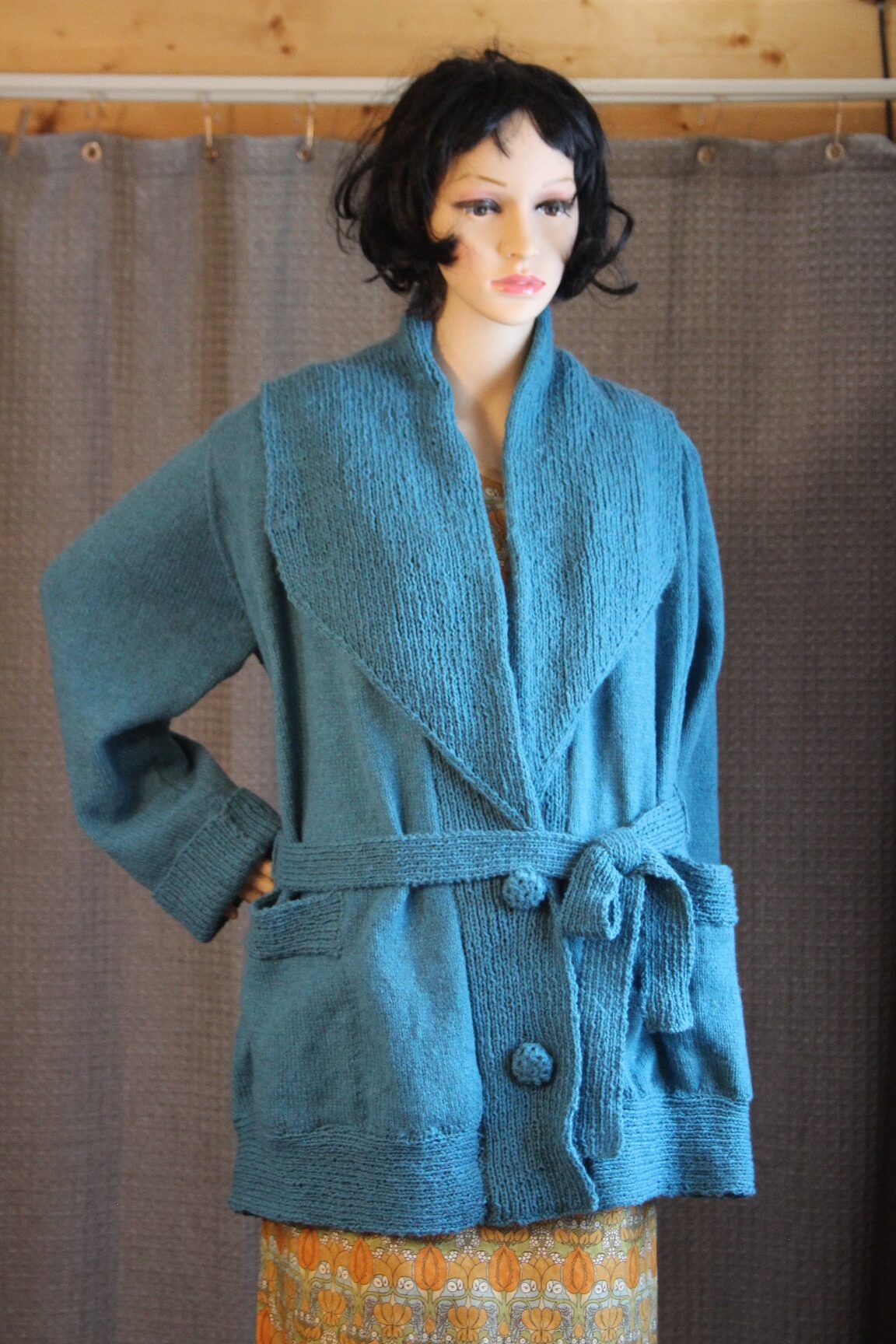
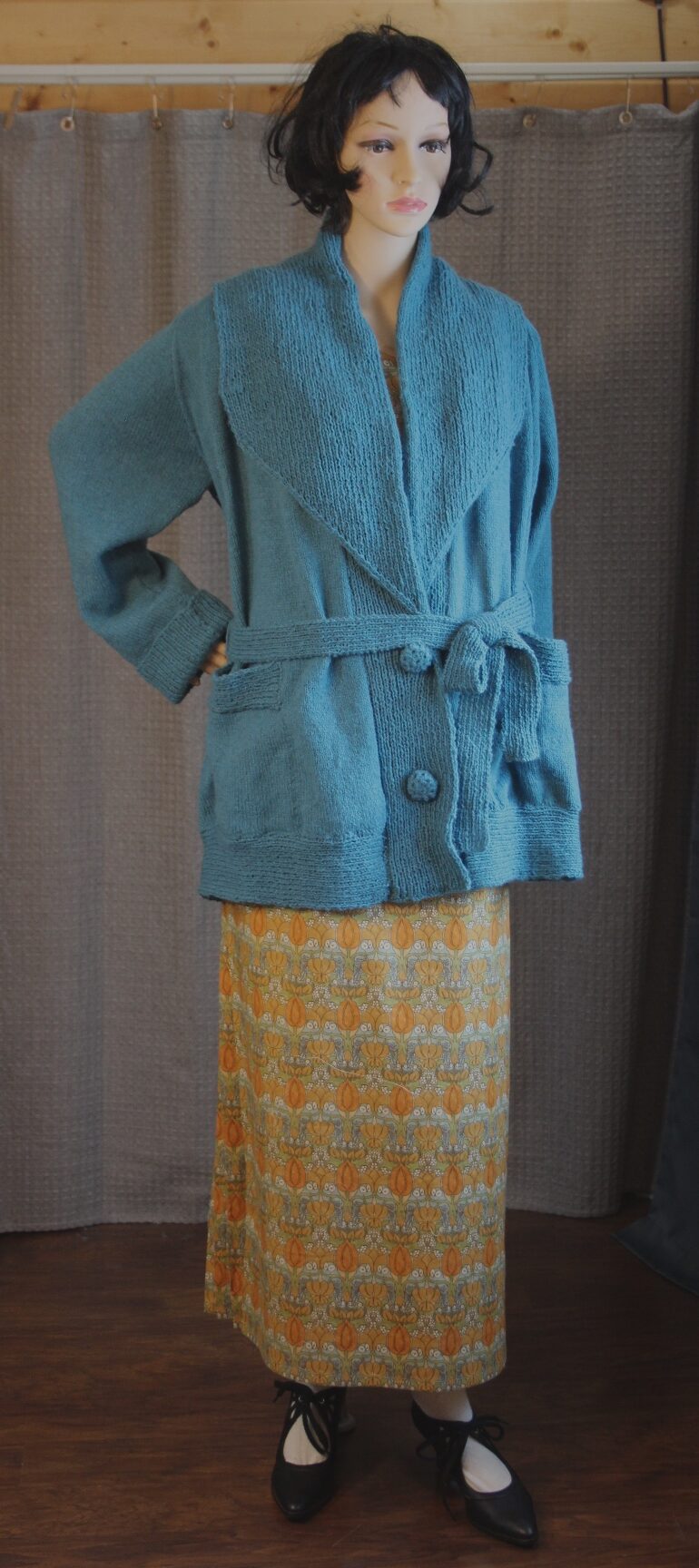
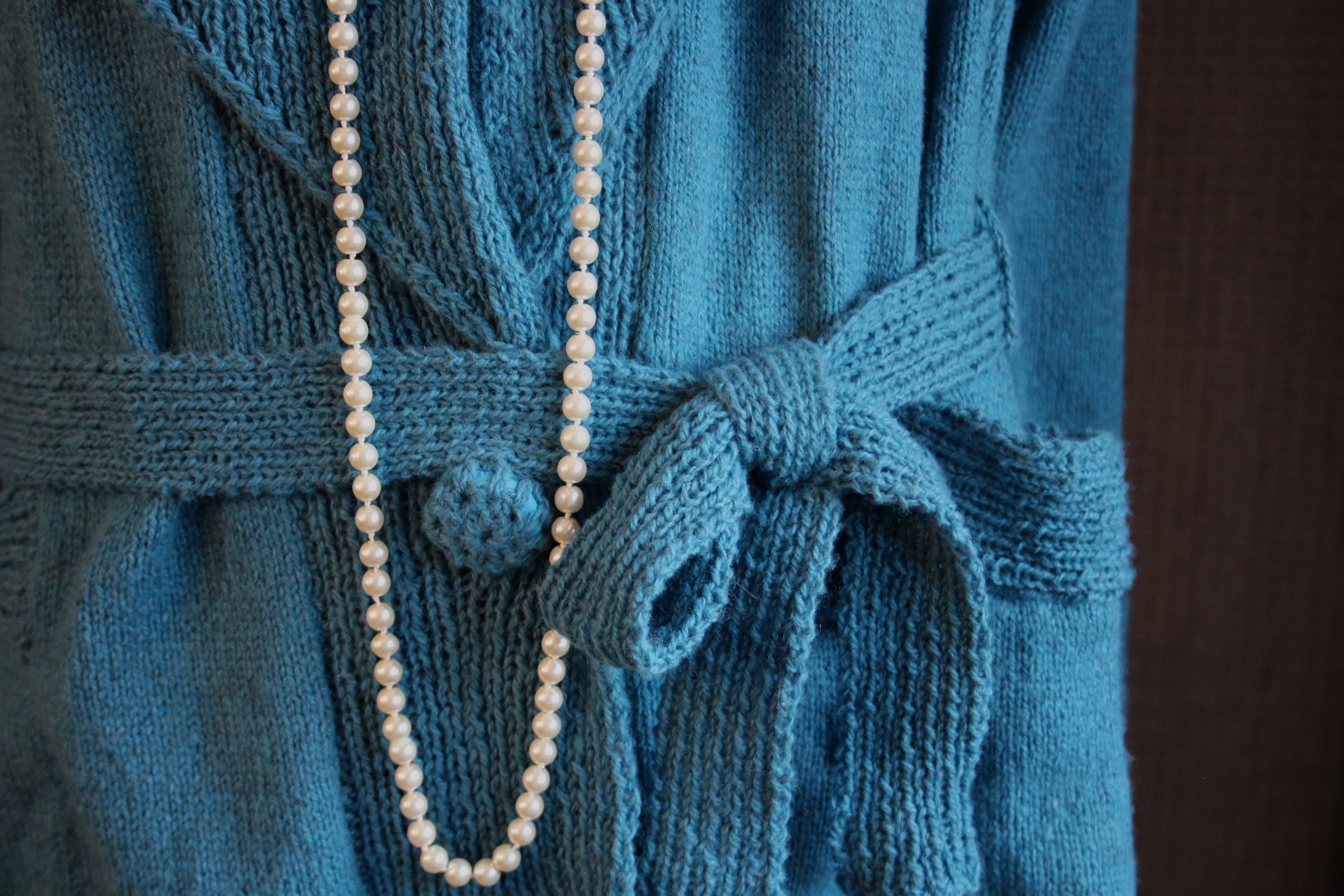
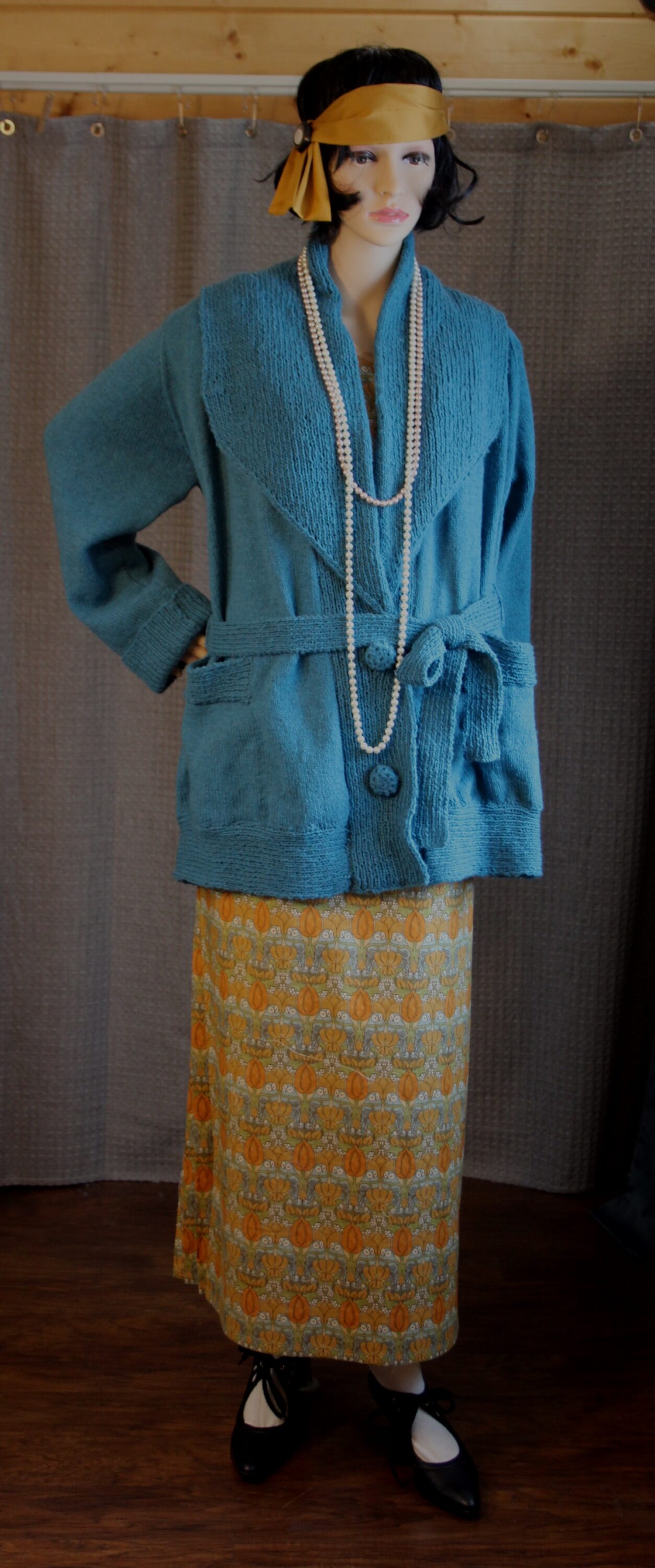
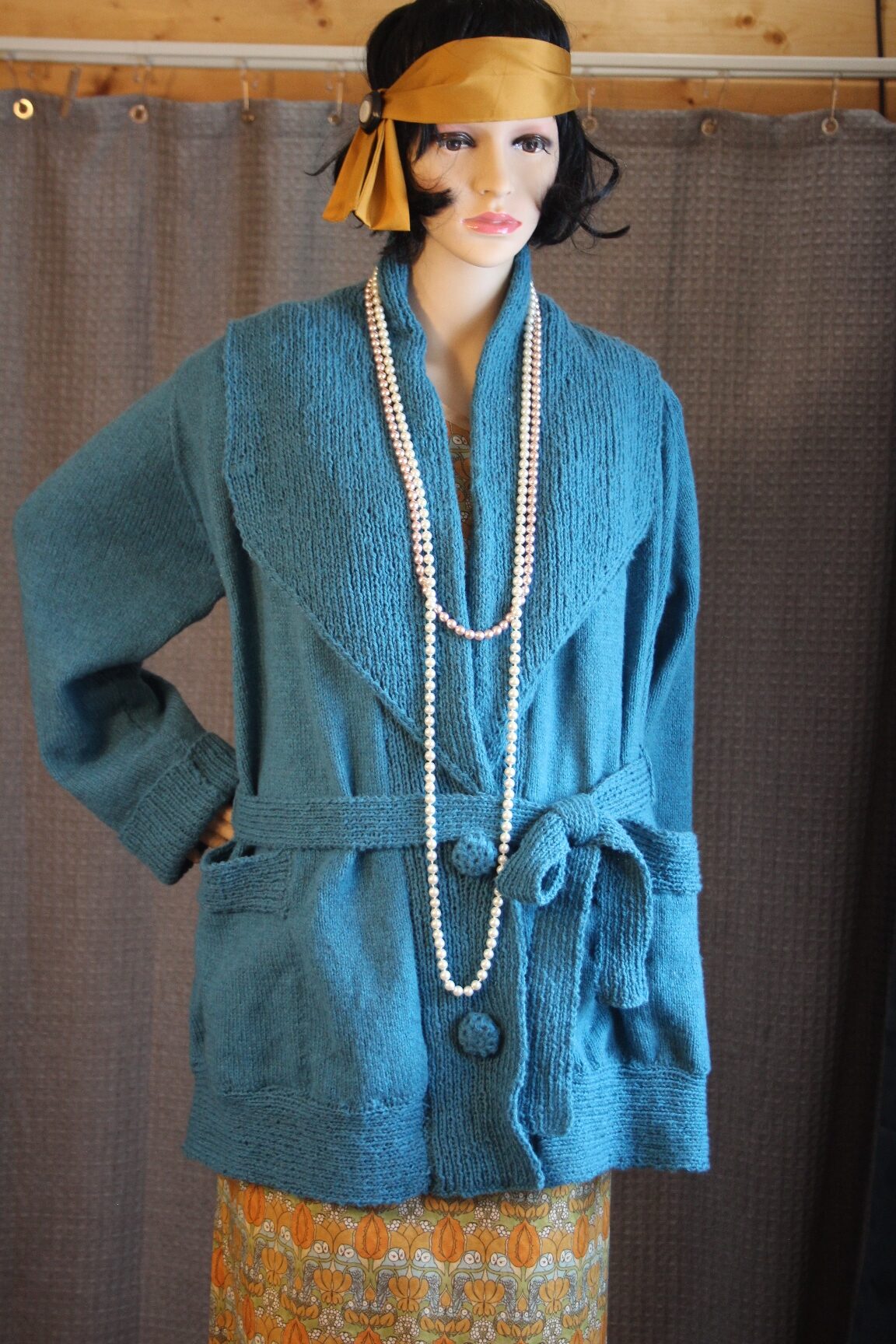
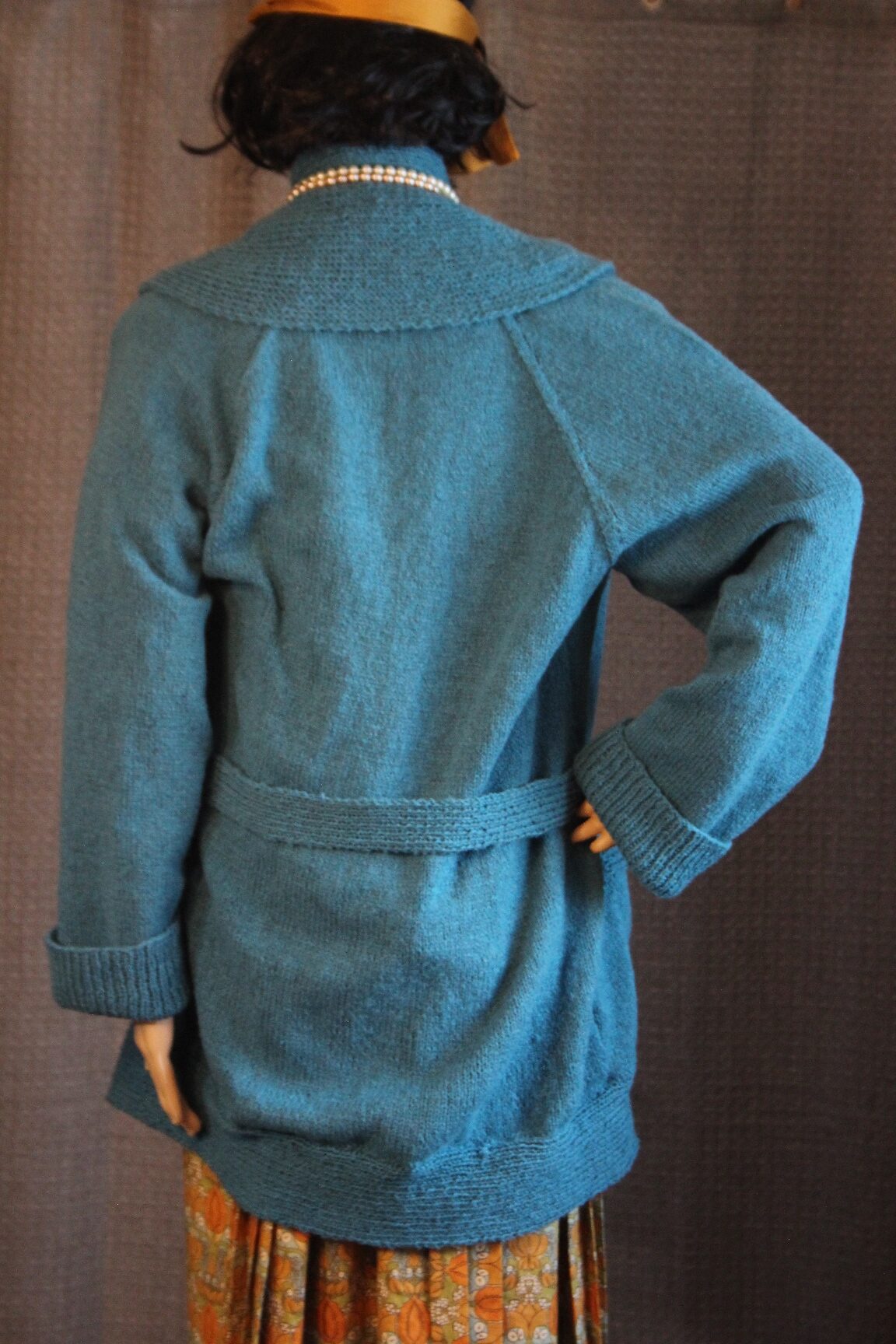
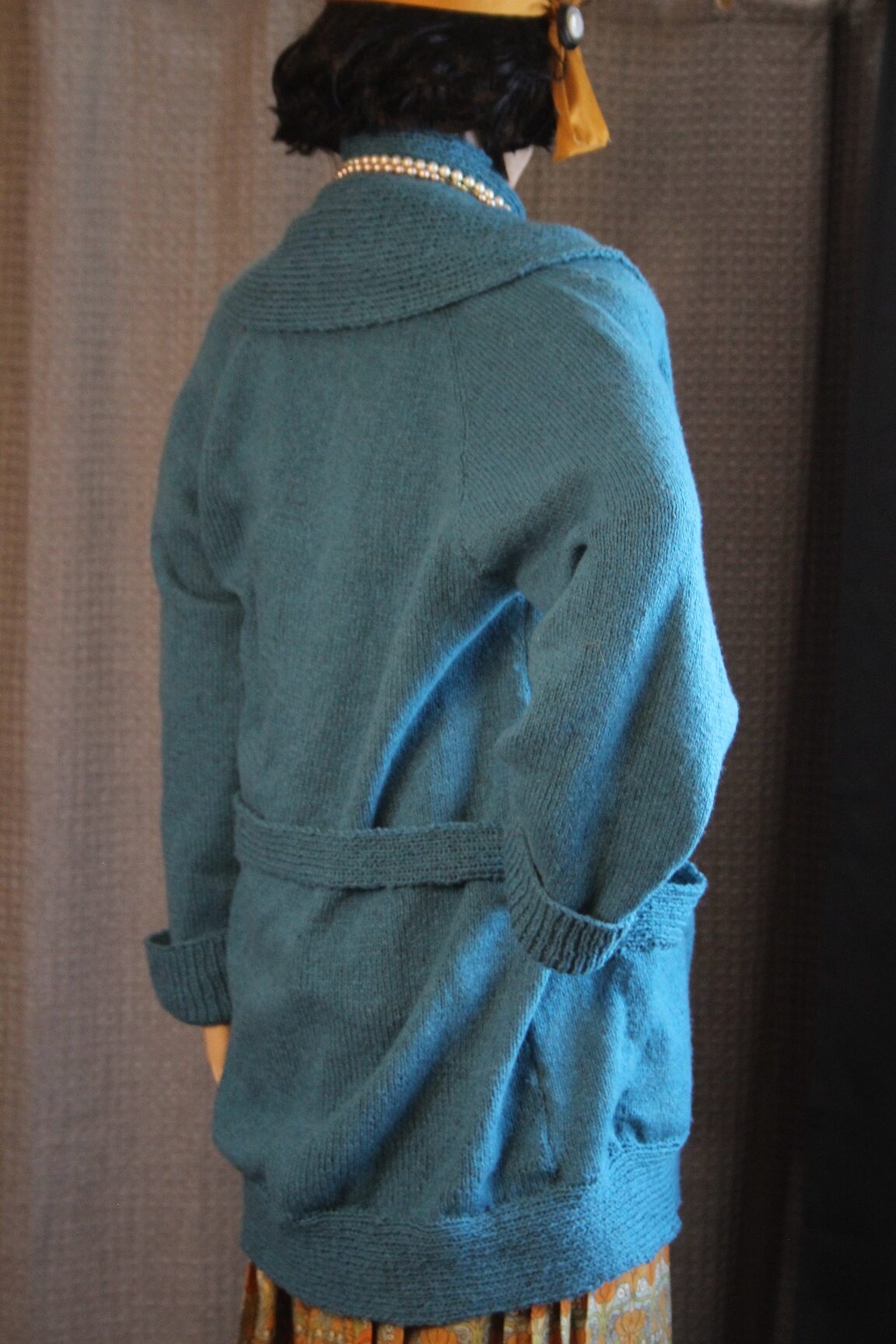
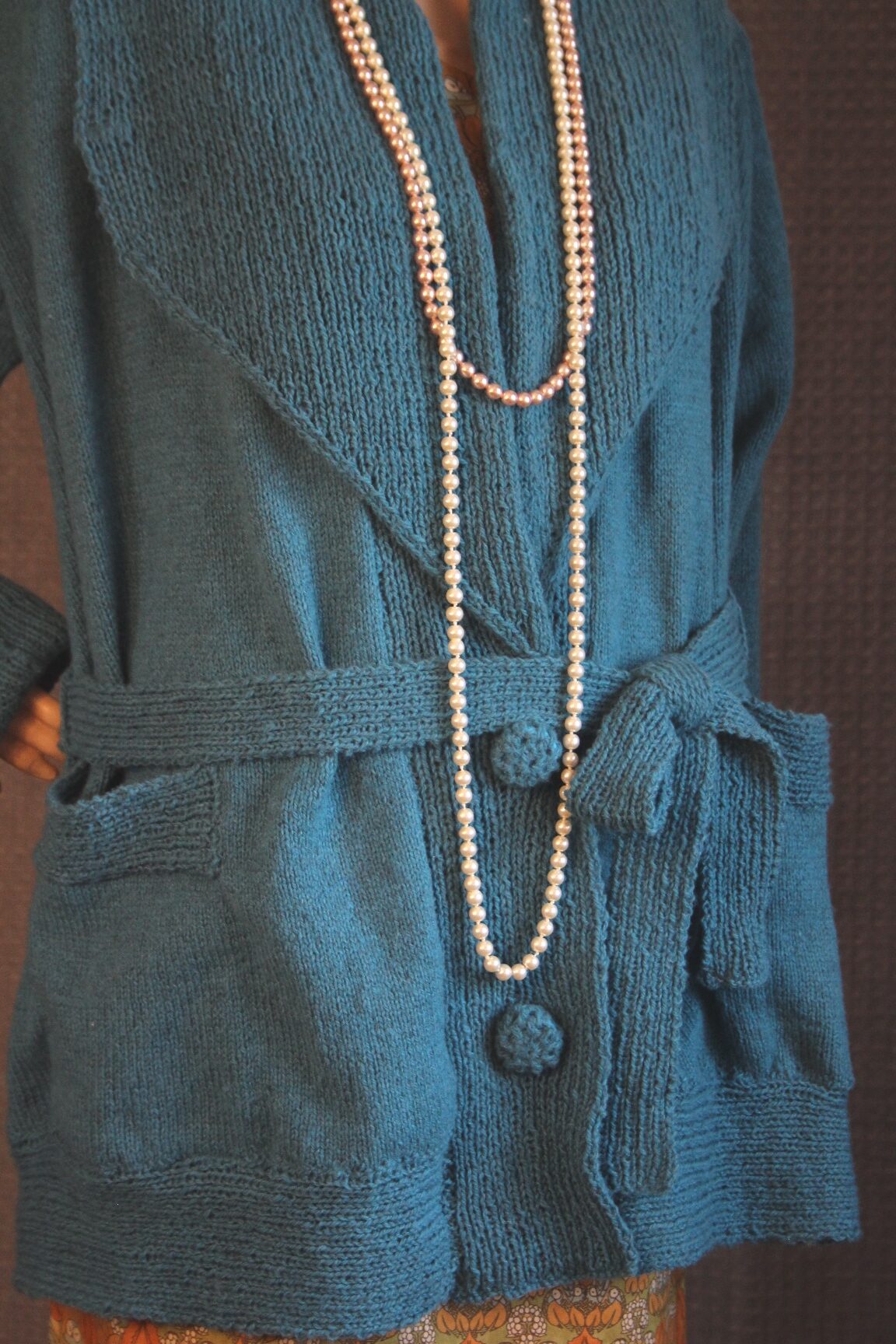

2nd Teacher Ensemble
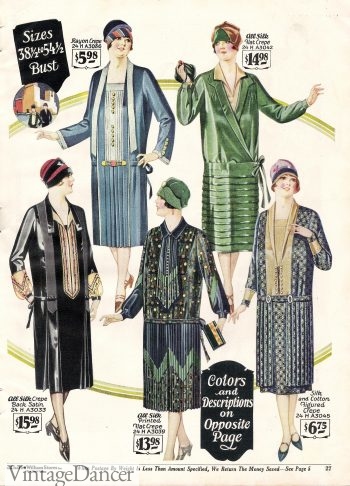
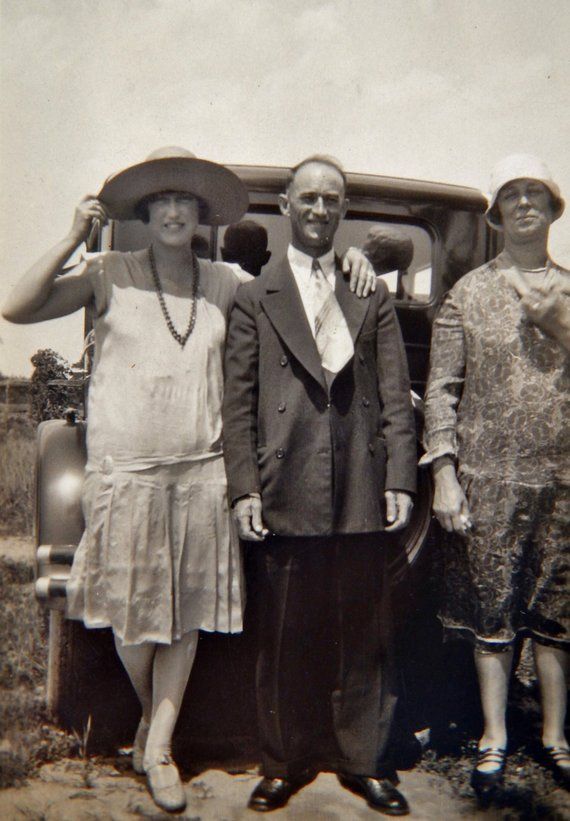
Response was overwhelming, and a second teacher was added to the program. She needed a complete ensemble, but preferred to wear a modern body shaper rather than historically accurate garments. We compromised the shaper corset of the 1920’s for the shaper, but insisted she still wear the correct slip for the silhouette and for modesty since the fabrics of the era were rather chilly for Wyoming winters when the program takes place.
We also insisted she add a cardigan, at least a lightweight cotton or rayon type like in the promotional video of the real teacher from Canada. She’ll still need to sit near the stove in the schoolhouse.
While we wanted to built a custom cloche hat in a different adult style, Heather also wanted to just borrow a hat from the kids’ collection. We suggested using one of the dark green or dark blues to complement the ensemble.
She will provide her own shoes and stockings, although we have offered and recommend wearing the Tango or Mary Jane shoe style with the slight tapered heal like we provided for the mannequin and the first teacher.
The museum will provide an authentic necklace from their collection.
For project development including fabric and pattern choices (this was built from authentic 1926 patterns which are a pain to work with), see the Project Development pages.
Proposals accompany fabric samples in two basic color schemes and choices of the simple “one hour dress” made at home (which takes us 3 days after the pattern is developed!) or a designer dress like they would buy off the rack or out of a catalog.
Because Heather wears eyeglasses, and such are readily available from the 1920’s, we suggested she buy a vintage pair instead of her modern eyewear.
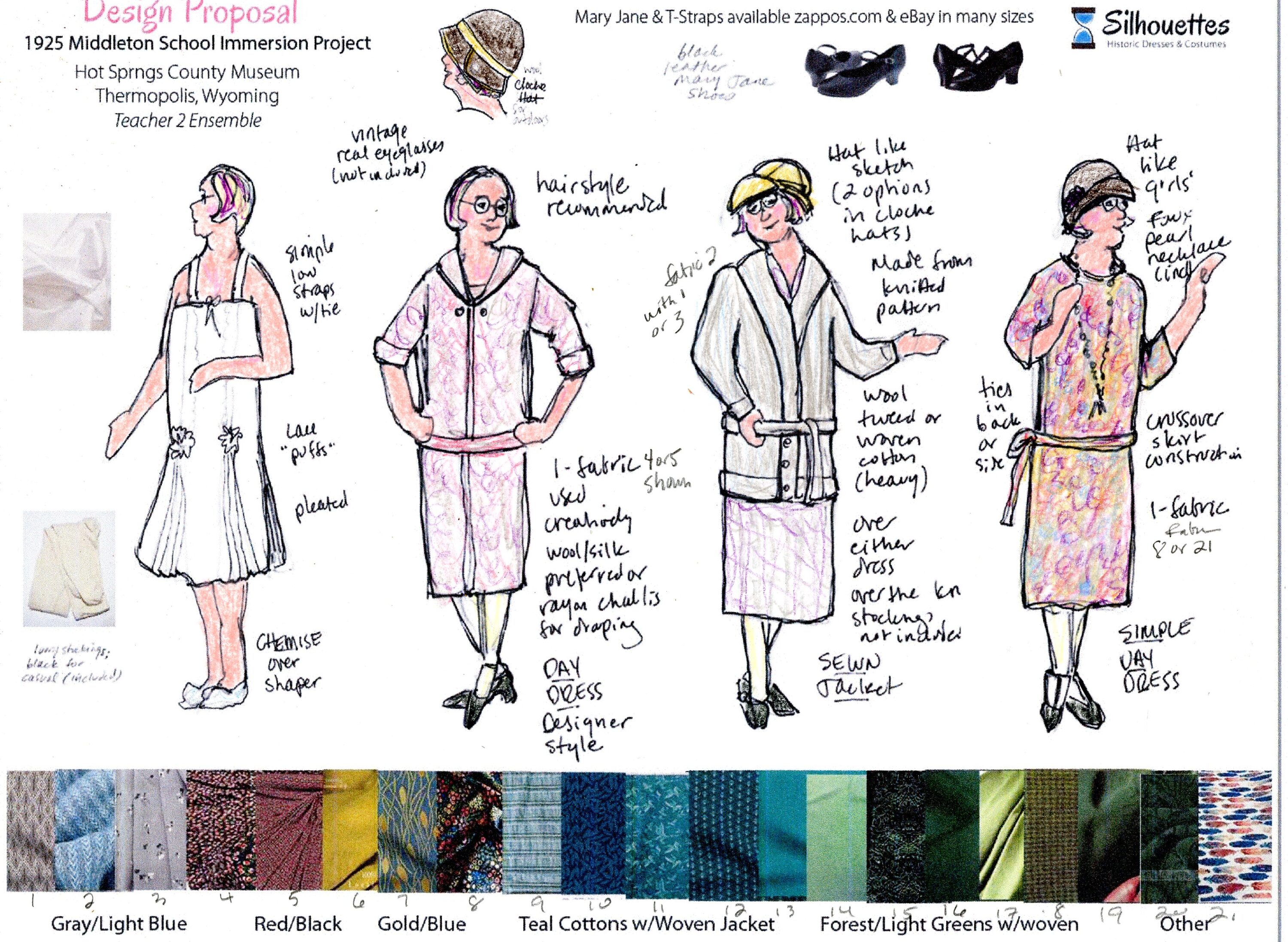
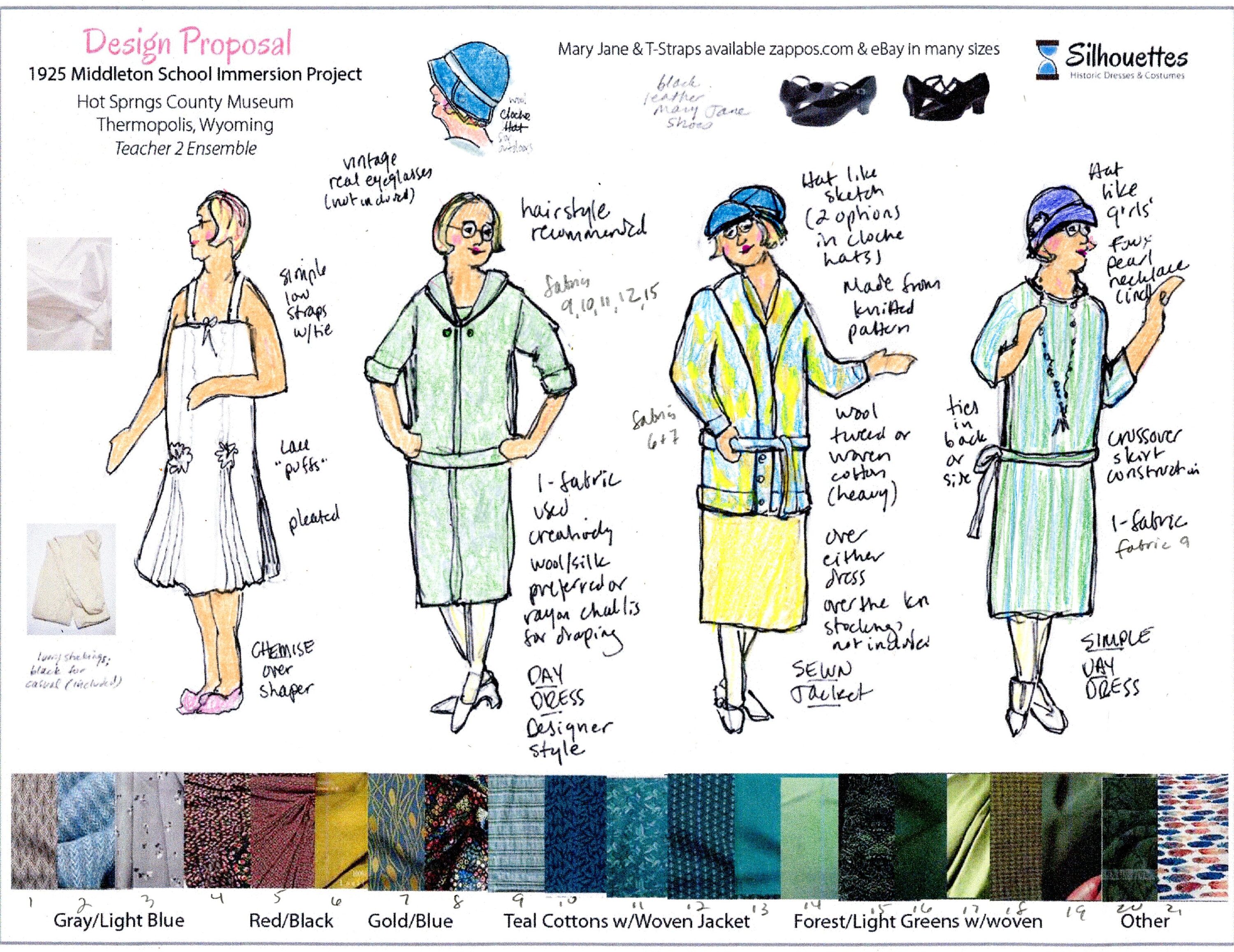
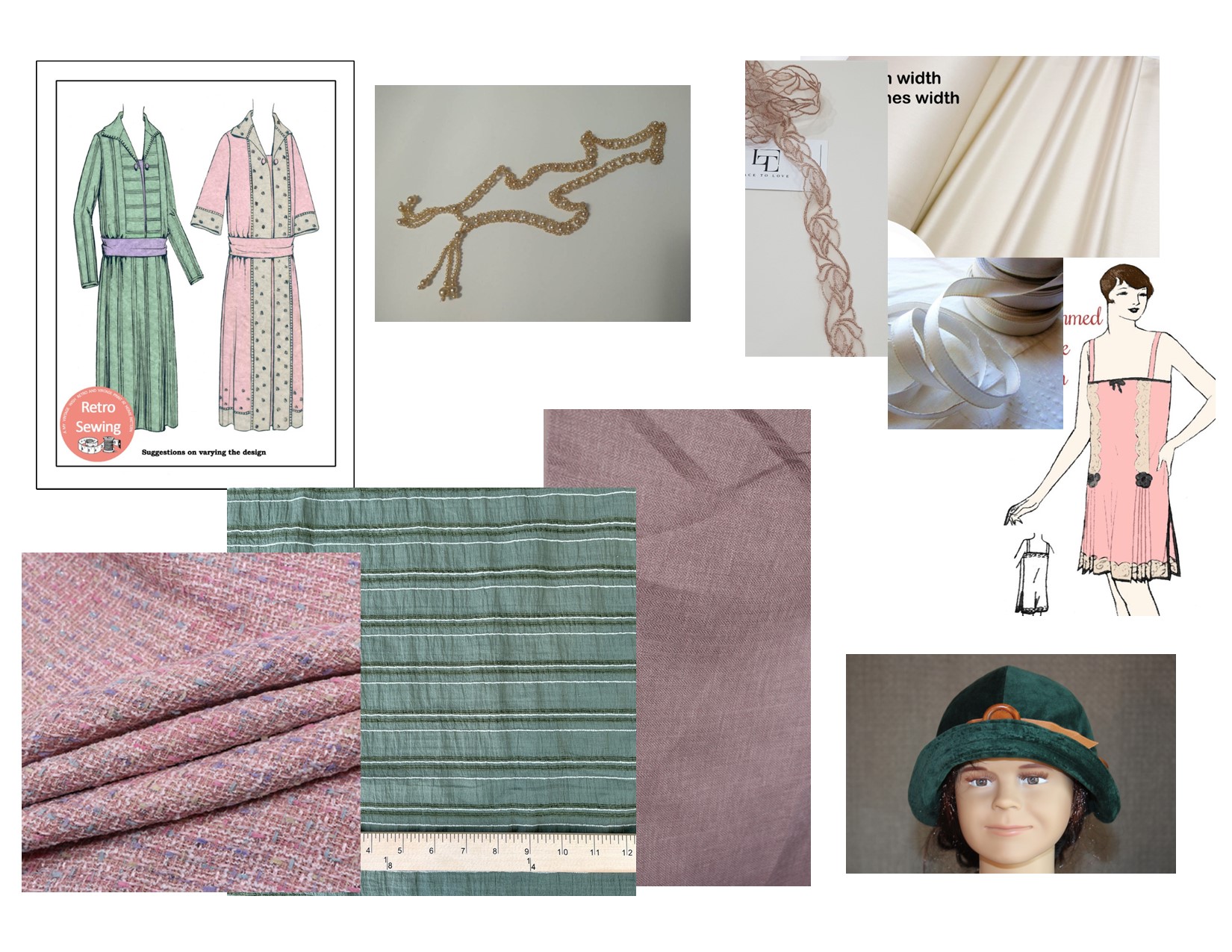
These selections run just like the vintage reproduction pattern we will be adapting. We decided on a cream colored ribbed cotton for the “sports coat” (aka “cardigan sweater”) instead of the pink, because the seersucker fabric is more green than the photo shows, and the pink weave does not have green in it. We also believe a real teacher of 1925 would own only one sweater in cream, beige, or brown so it would go with everything, especially in rural Wyoming which was in a depression before the rest of the country.
Chemise (Slip)
100% cotton with 100% silk ribbon and poly Art Nouveau lace. Pleats are specific to the era, and this is adjustable. It is made to be worn low over the breasts with the straps very wide over the shoulders so that the line falls straight vertically.
This one is shorter so it will fit both of the dominant lengths; under the knee and ankle. Note the intentionally heavy hem you see on all the garments. The weight of hems helps pull the vertical line like a bobber weight.
In addition to the pleats which allows a woman to walk and sit, there is a deep slit so she can also sit down. Think about it; without the slit, it would be like trying to perform inside a hot dog.
This was built using instructions that would have been provided to the home seamstress in a periodical. There were few to no instructions, no sketches, and the patterns were pretty much just a square shown with dimensions. It must have been that everyone already knew how to make these things. We do now!
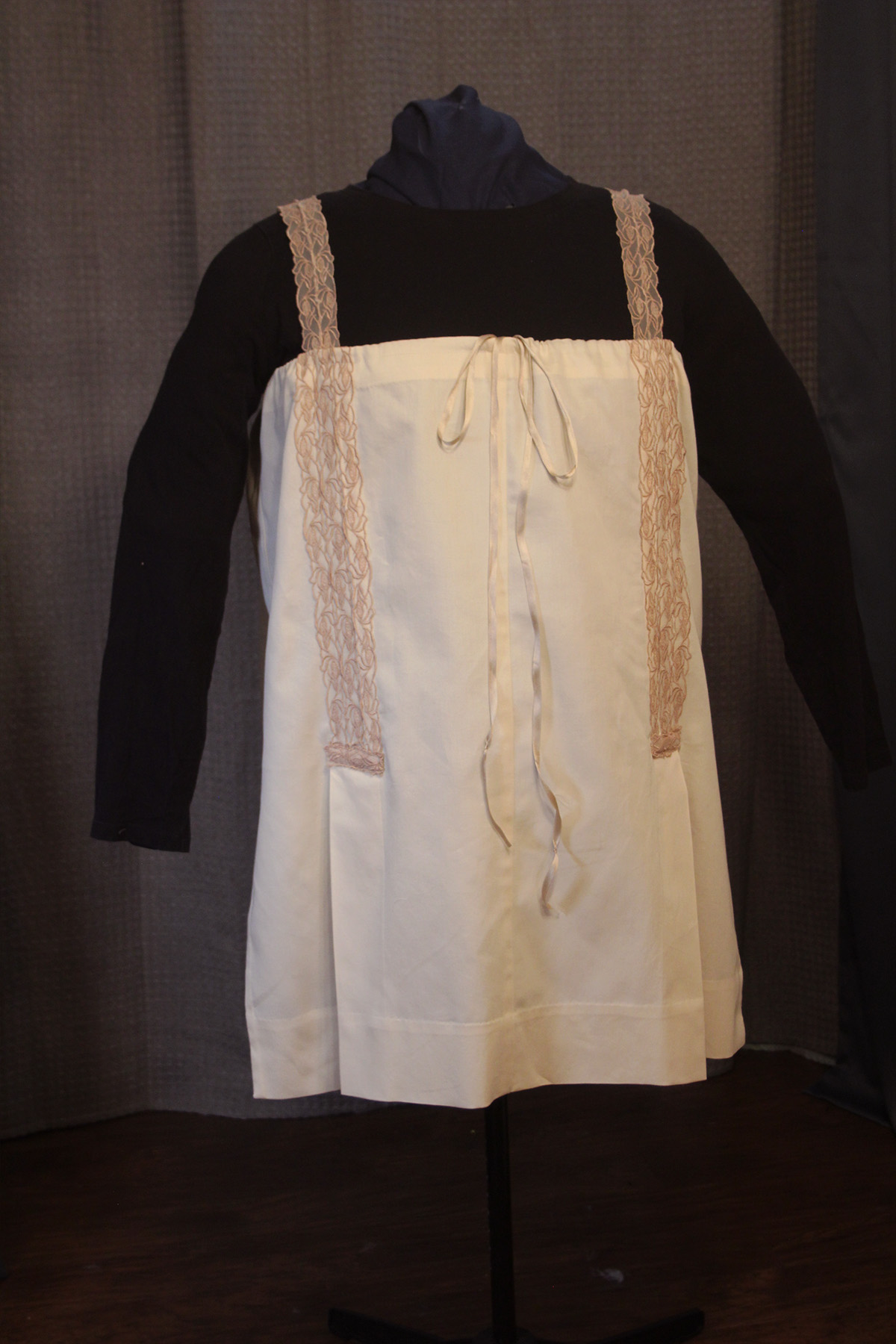
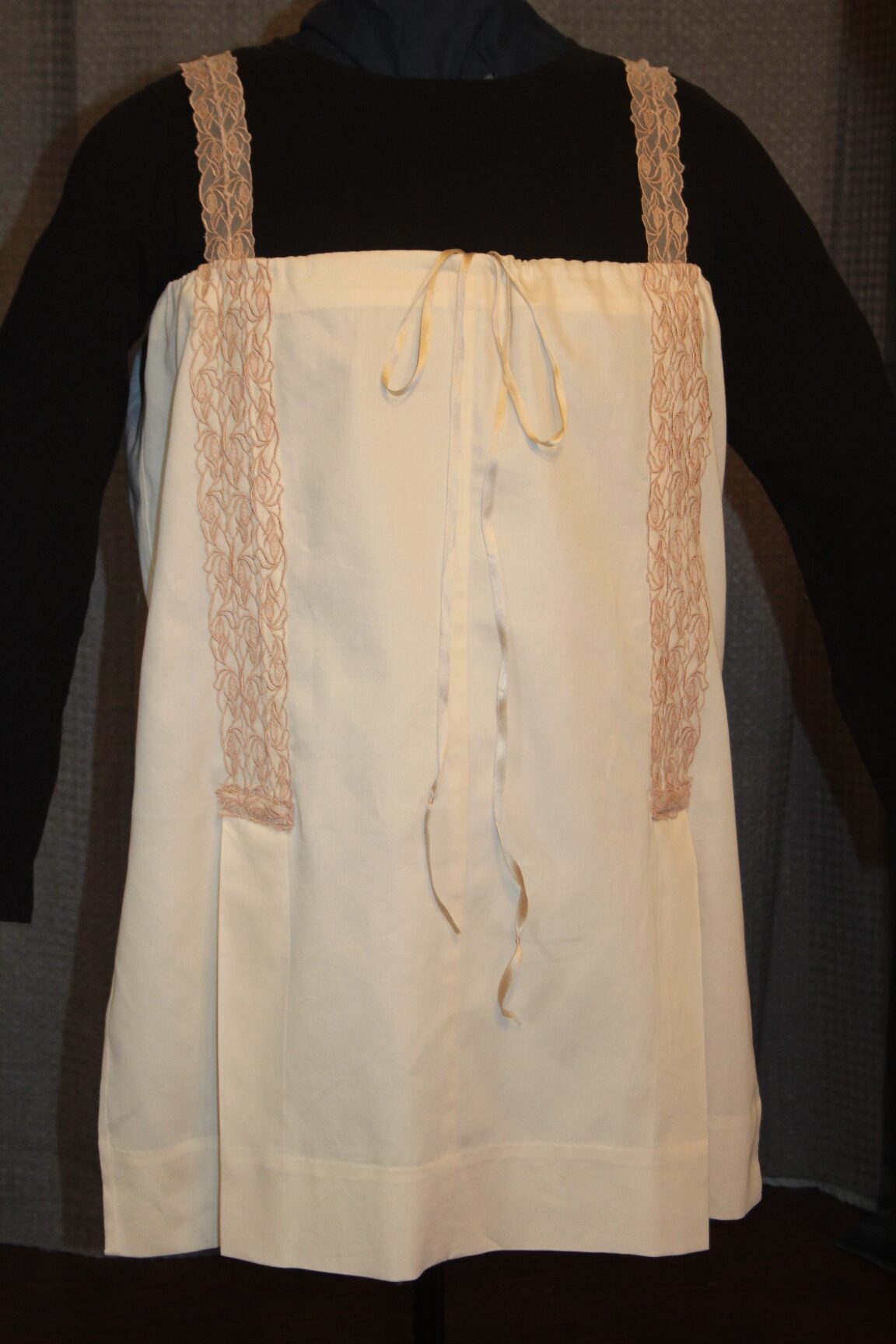

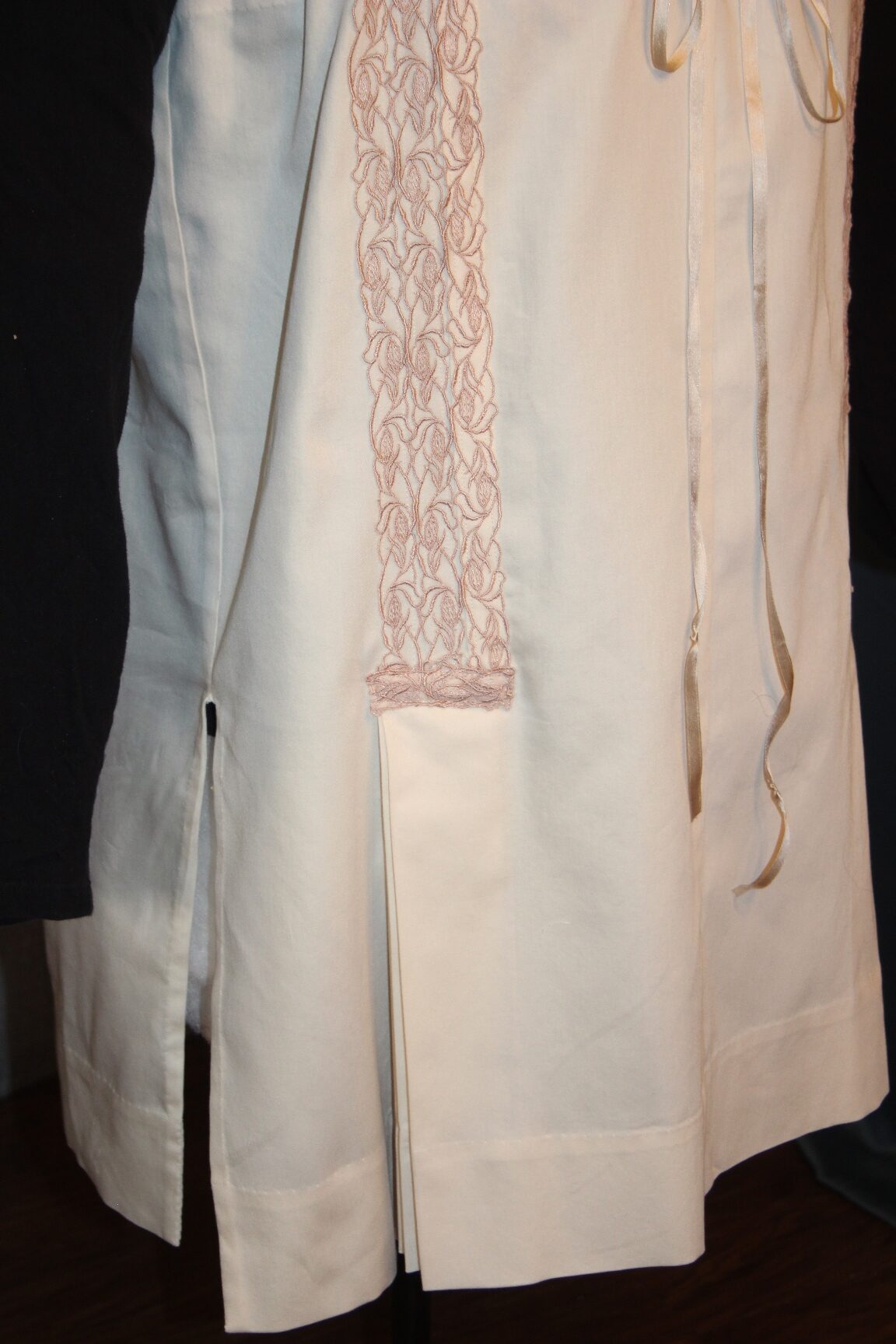
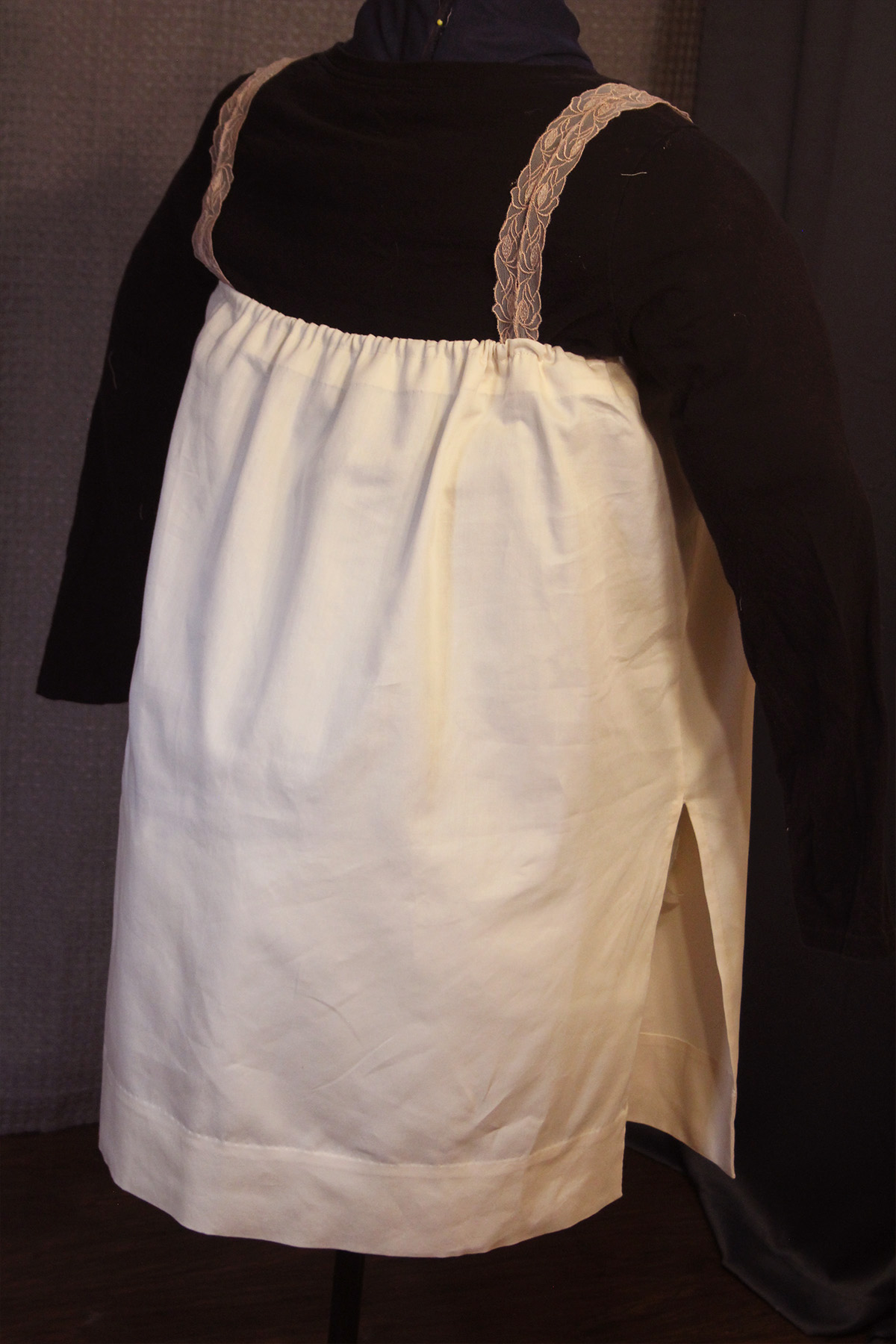
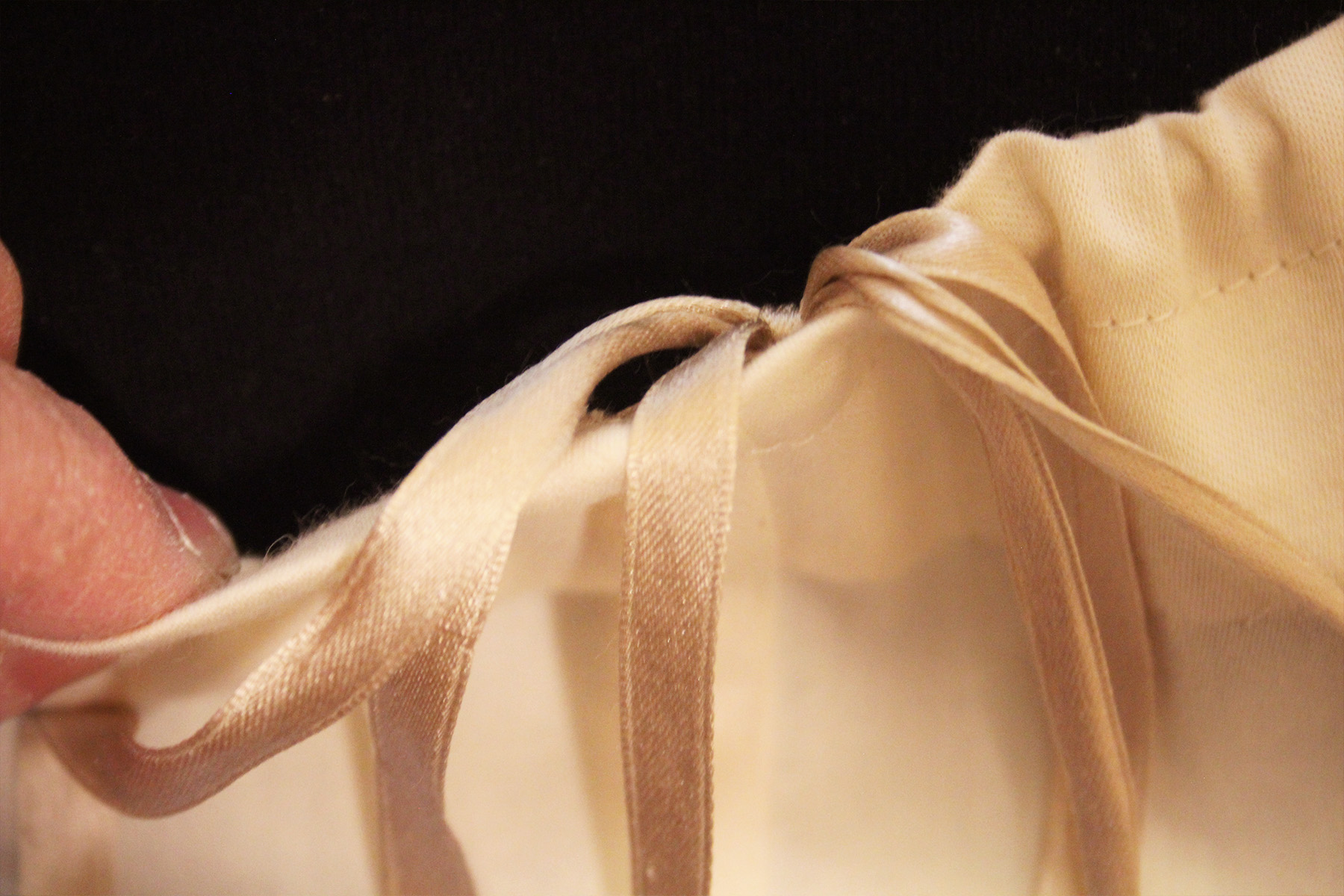
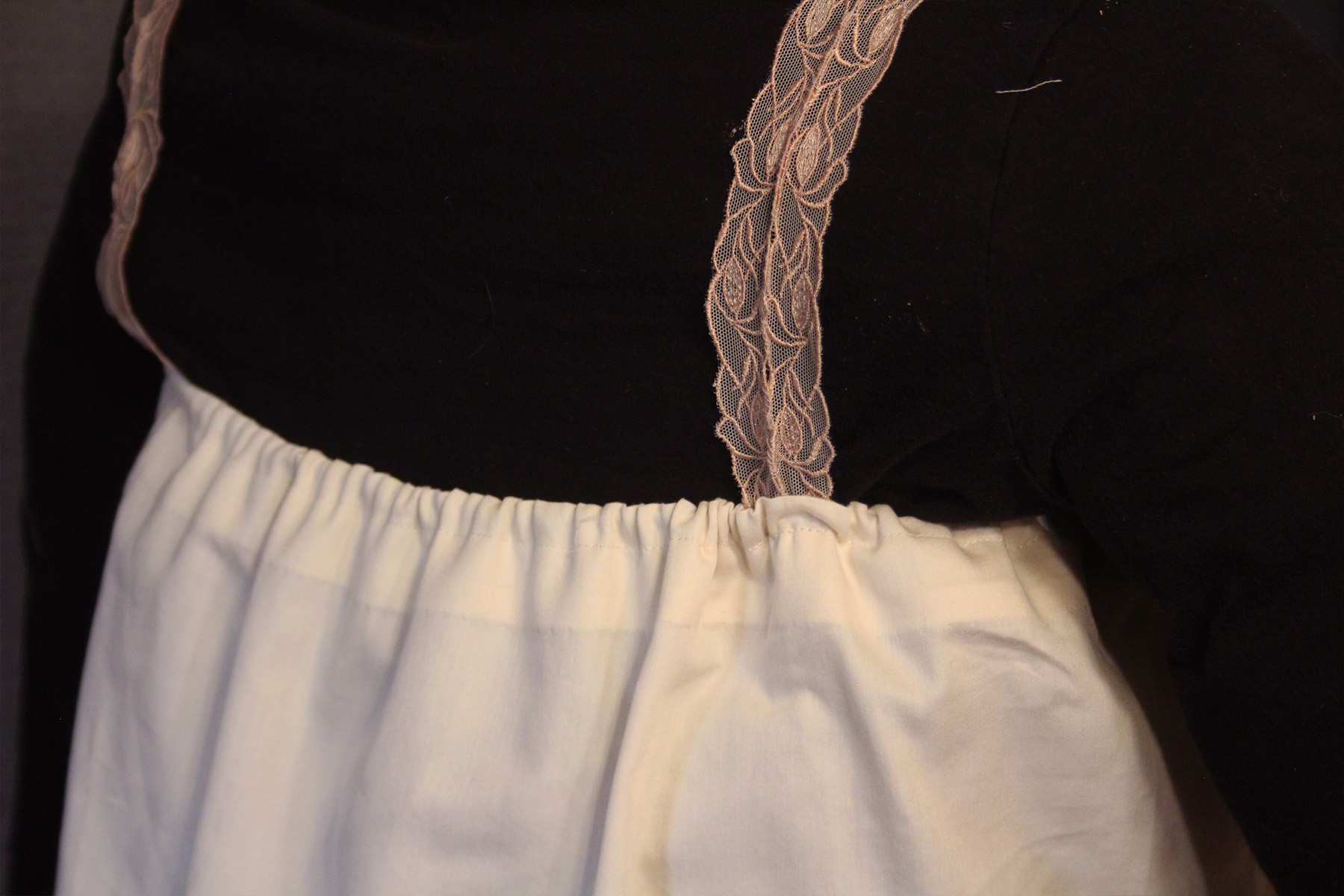
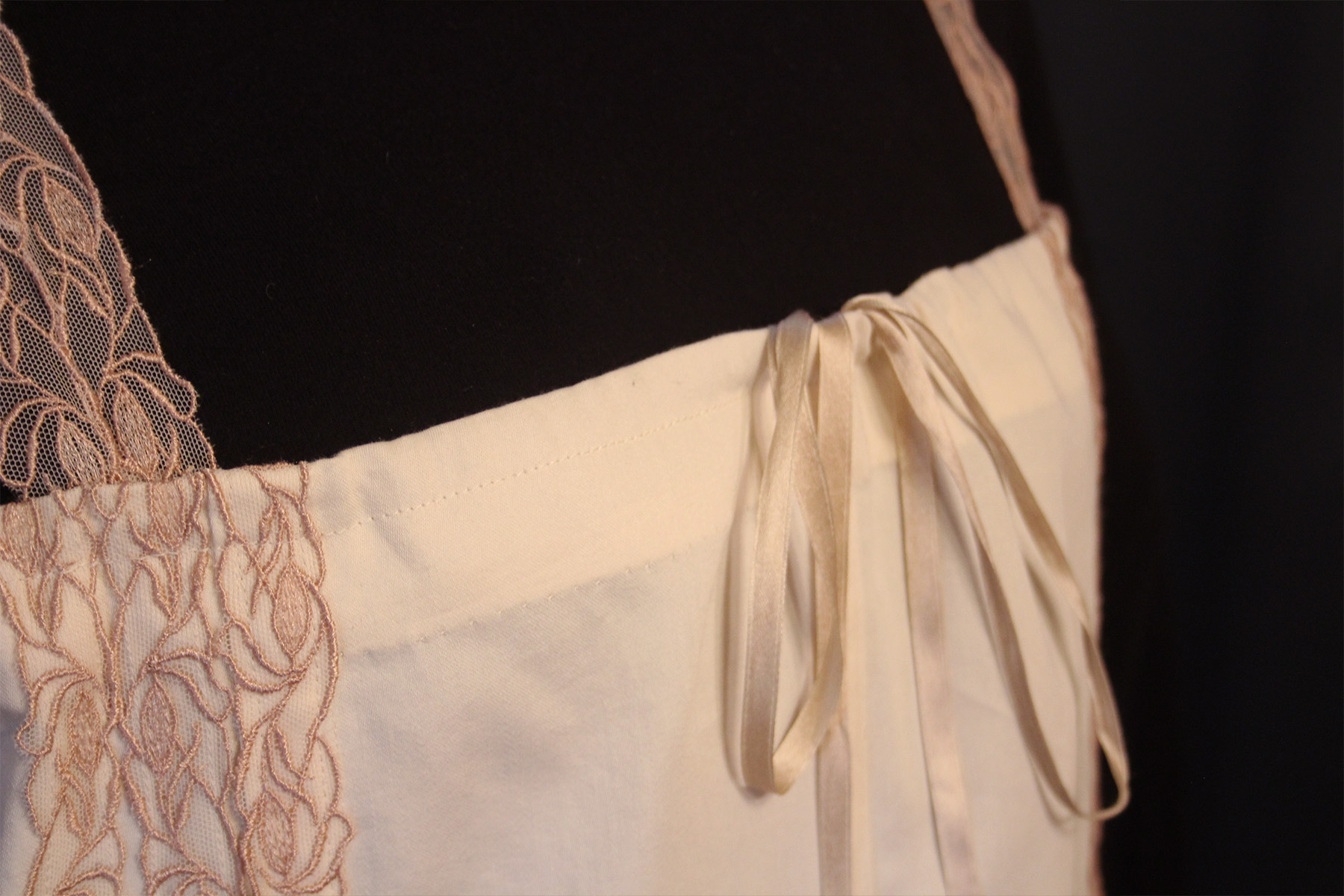
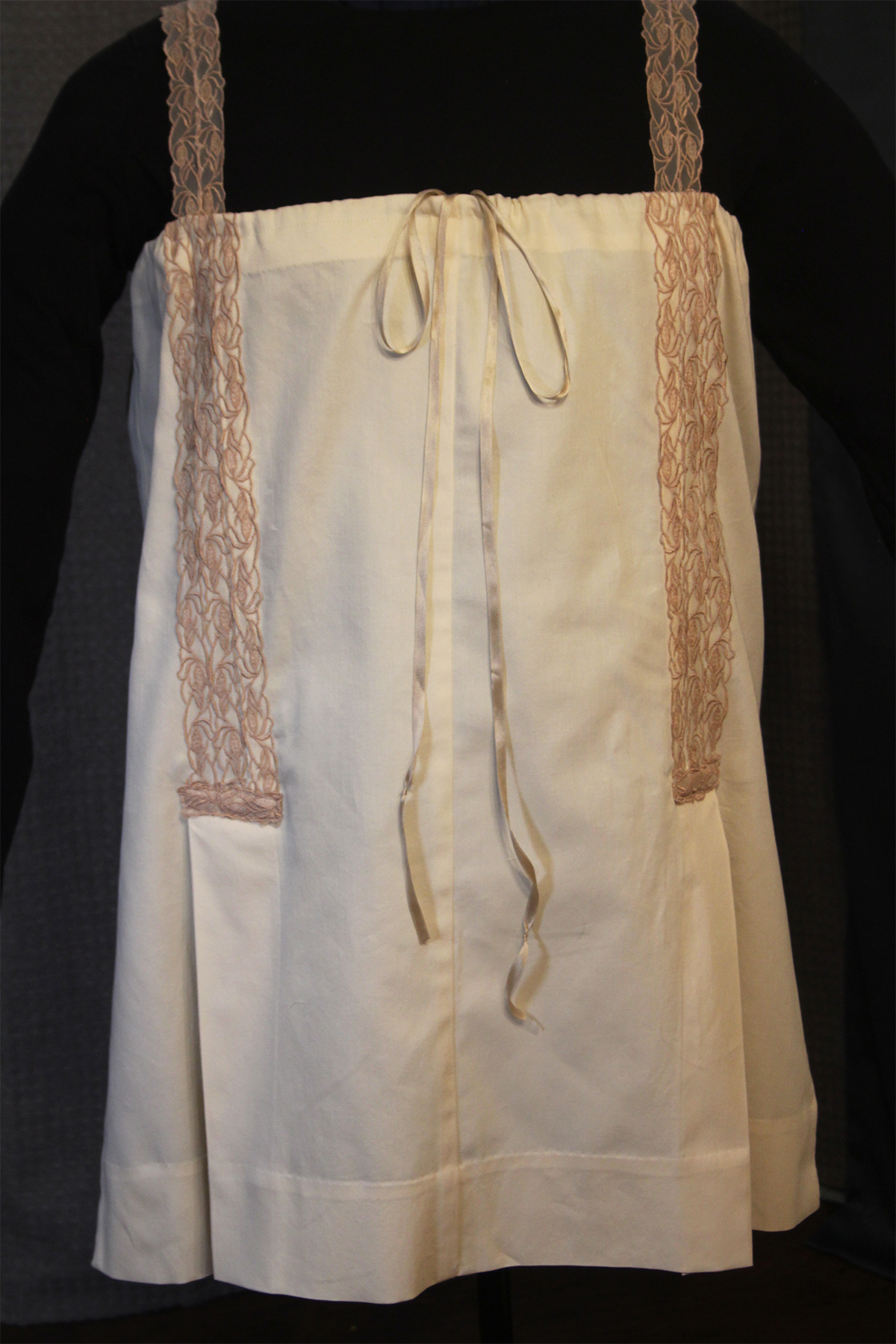
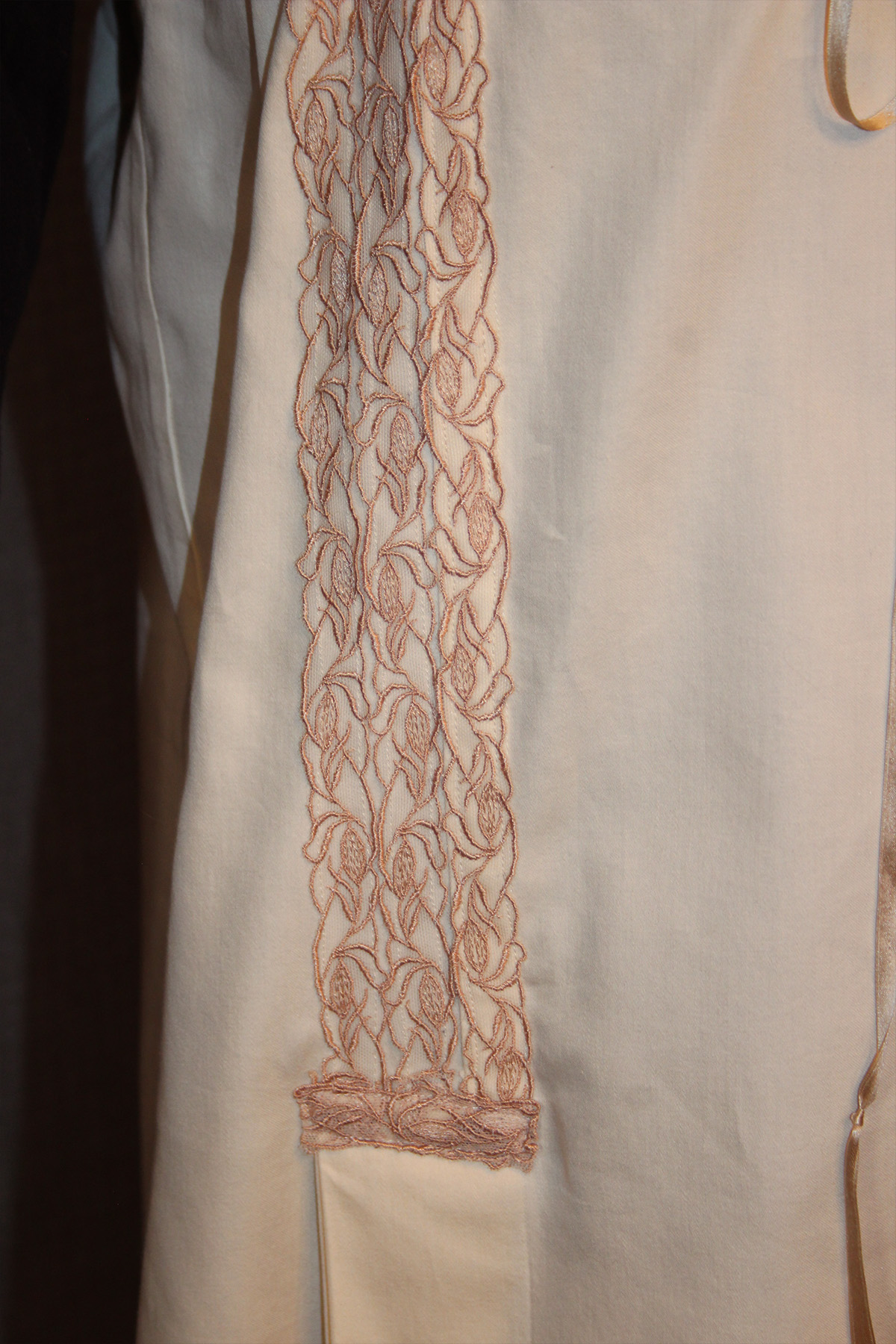
Smock (Dress)
A most interesting and EXTREMELY difficult design and fit, this is based on a real McCall’s pattern of 1925 that you could buy in the “5 and Dime” store. The reason it was so hard to build was there were no instructions, one sketch that made no sense to modern knowledge, and a sketch of what it was supposed to look like when finished. There was nothing about the sash, attachments, junctions, materials, notions, and there was no real pattern.
We winged it. What appeared to be a box pleat in the center front was actually just a piece of fabric sewn on to give it depth. Nothing was finished, so we figured out how to finish edges and match things on our own. The result was a bit thicker center front because we accidentally doubled the panel which was actually supposed to be the collar lapel.
The collar was a real mess. The pattern had it has a straight rectangle, like a cowl neck, and it was huge and didn’t drape. After draping on the mannequin with a lot of basting, we got a reasonable facimile of the sketch. We’ve found two things in all these 1920’s “patterns” that are frustrating: 1) use of slits and buttonholes to stick things through which end up too large every time as holes; 2) collars that are ill fit and you have to build inside out from historical or modern because they actually “flip” from how current ones are made.
If we had to pick several more frustrations, it would be that this was an 1880 revers which they called a “vest”, but that the joining and attachment was supposed to have been made like an 1860’s bodice-to-skirt juncture.. but without the structure of the semi-pointed bodice to cover the junction. We opted instead for a simple underlay of hooks and eyes like an 1905 skirt would have in center back.
The other challenge with this, as would have been in the 1920’s, was creating the lean and vertical line out of a shapely woman. We learned with the first teacher’s ensemble that you have to take the largest circumference measurement, and make the whole thing that big plus ease. That is usually the rear end, but in this case it was the bust. The result is that slightly inverted bottom of the skirt, which is historically accurate. The challenge will be if measurements were accurate enough that we clear the fullness of the rear end in back without bunching, but if you look at photos of 1925, you’ll see many home sewn garments bunched up; presumably when the woman sat down.
All in all, we’re very glad this one is finished! Buttons are covered in self fabric but only hold the lapels down and don’t button anything. The sash is also sewn on, and the self covered buttons are just used to cover the side seam opening. The sash is a poly blend, and the green is 100% cotton.

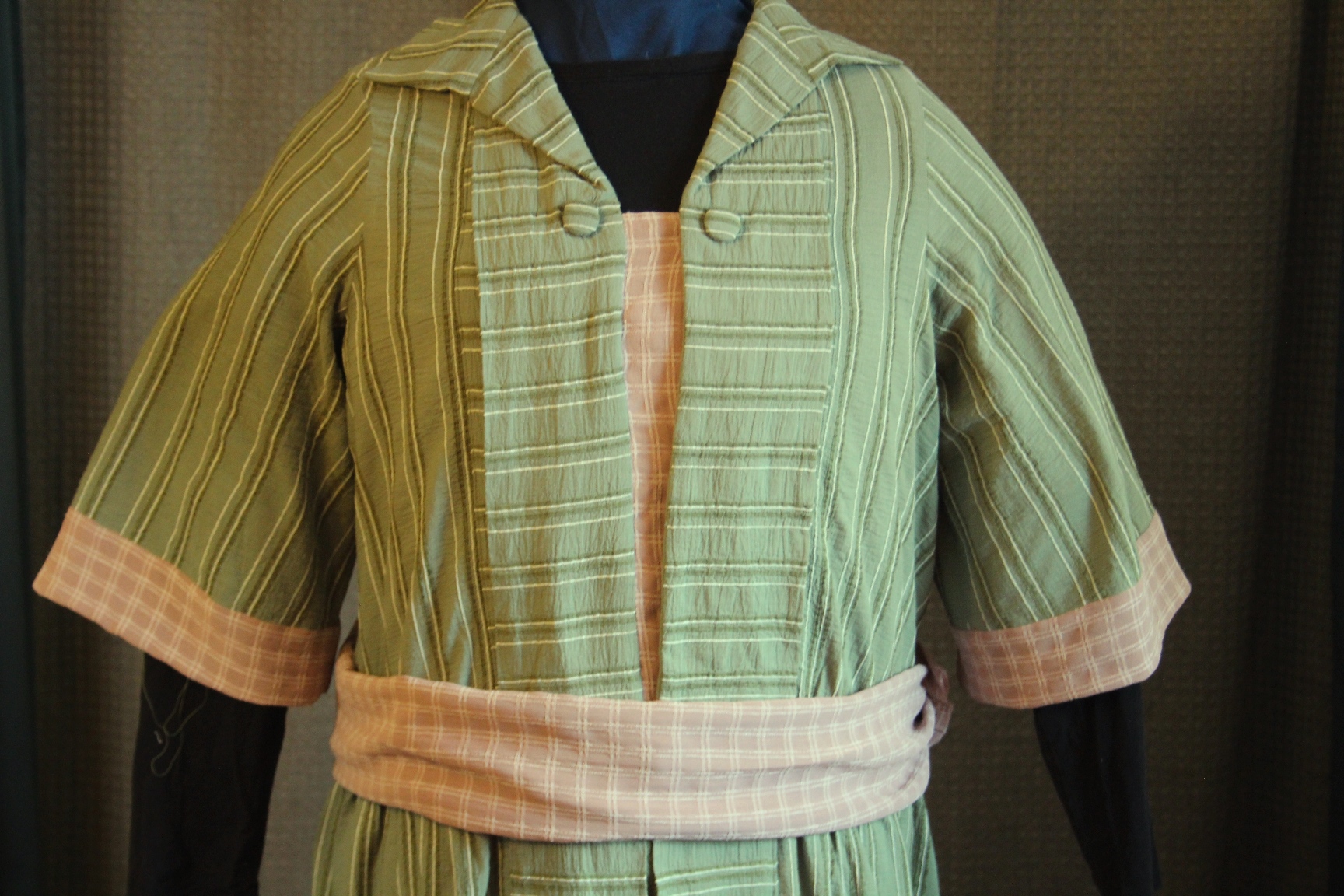

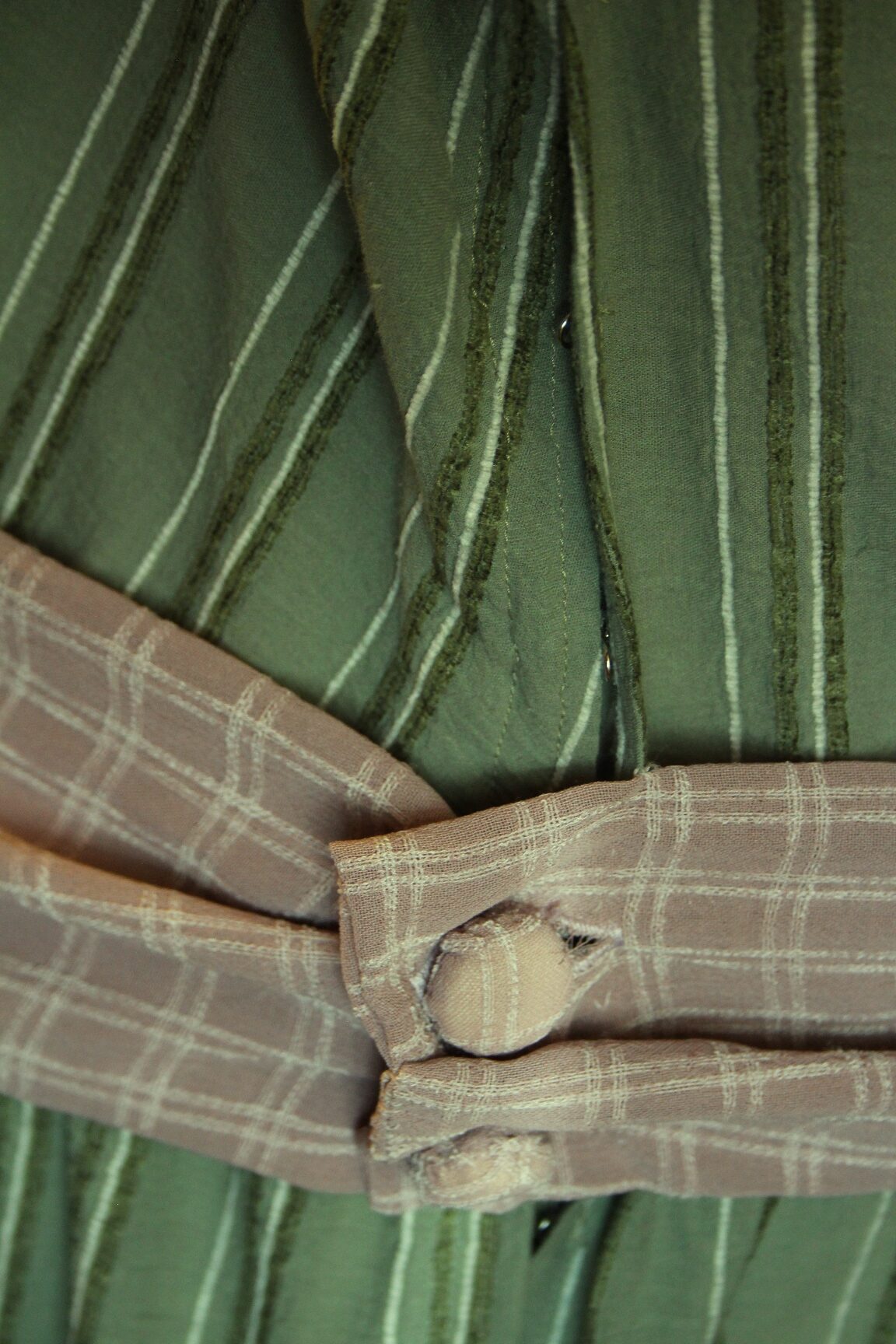
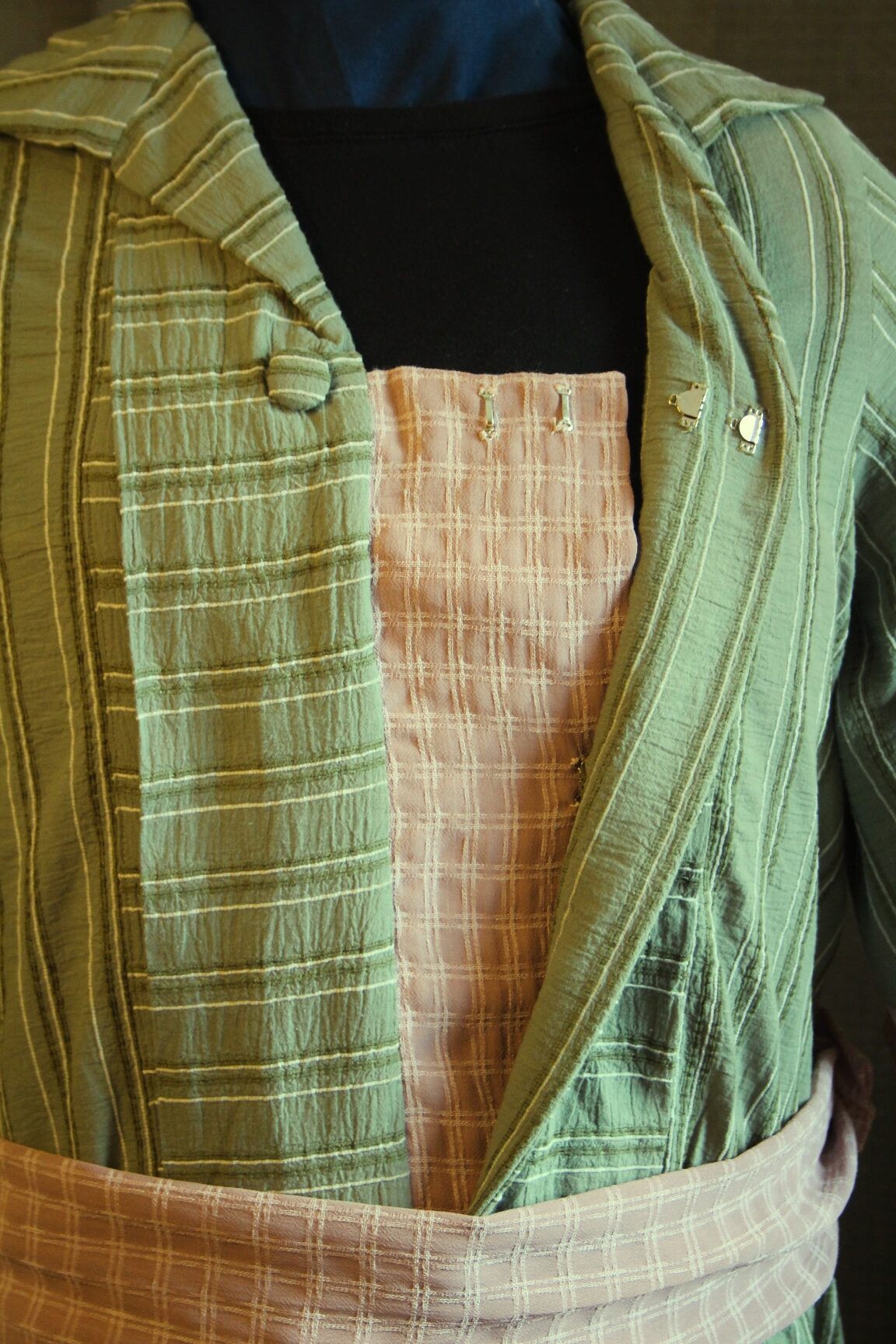
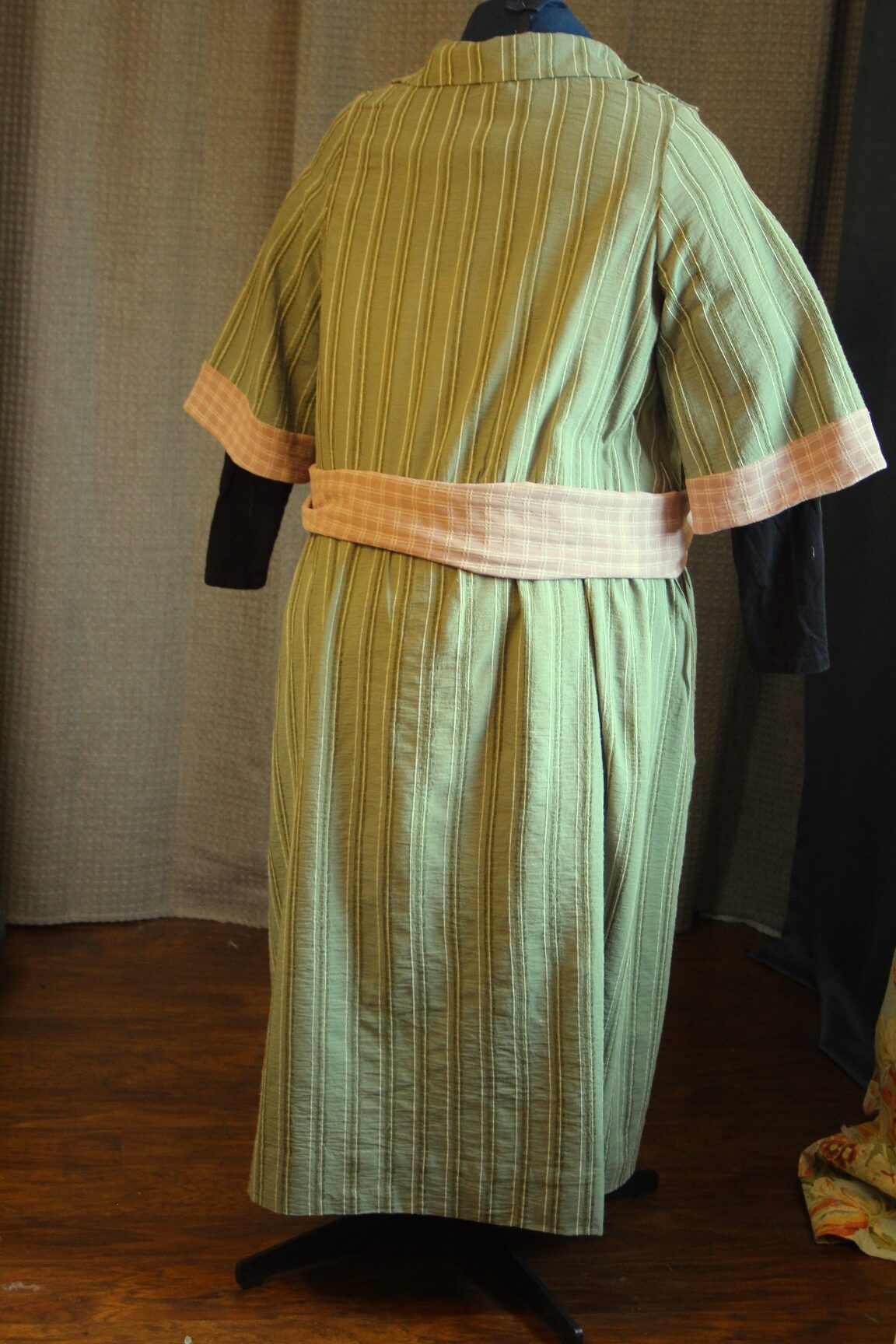

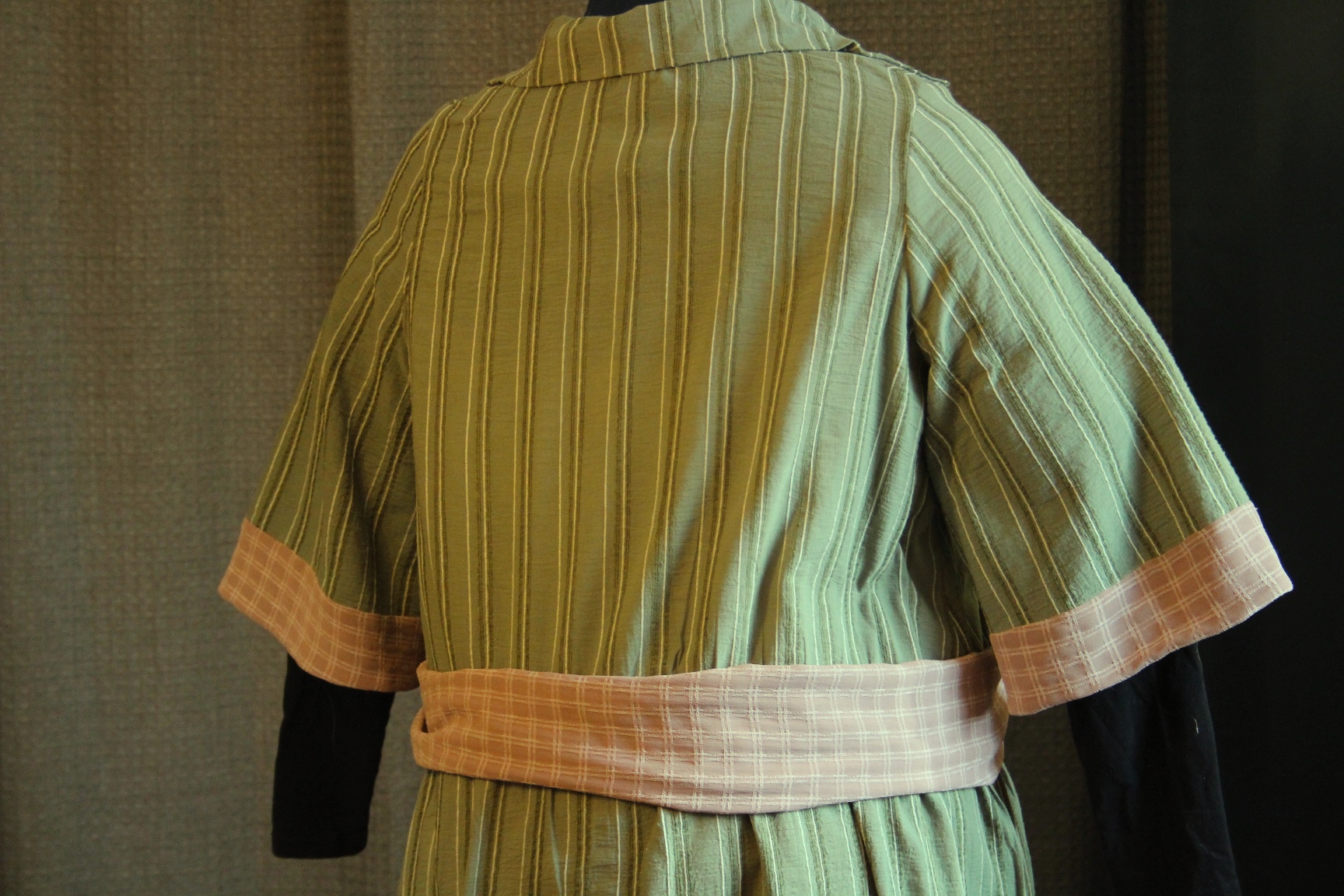
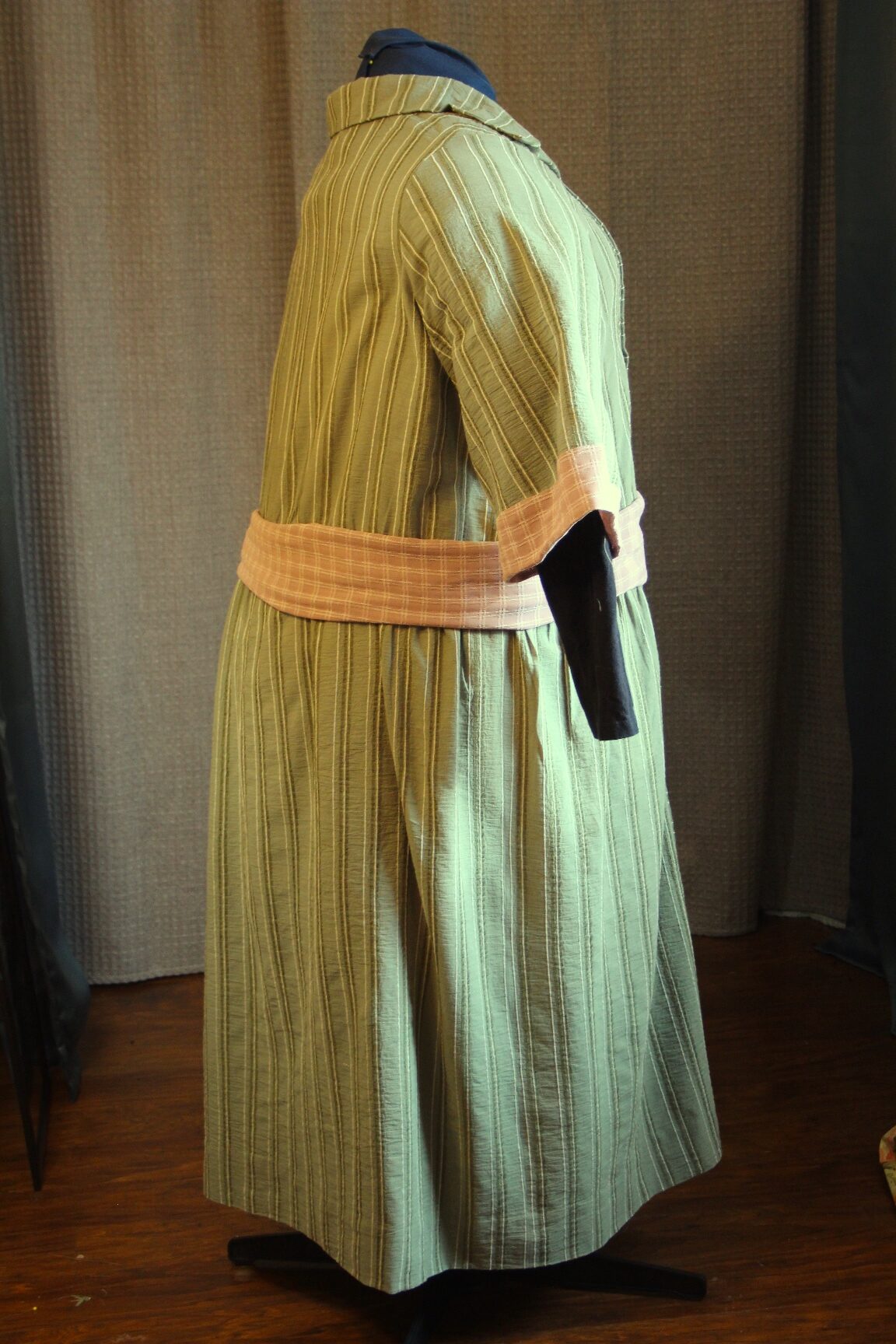
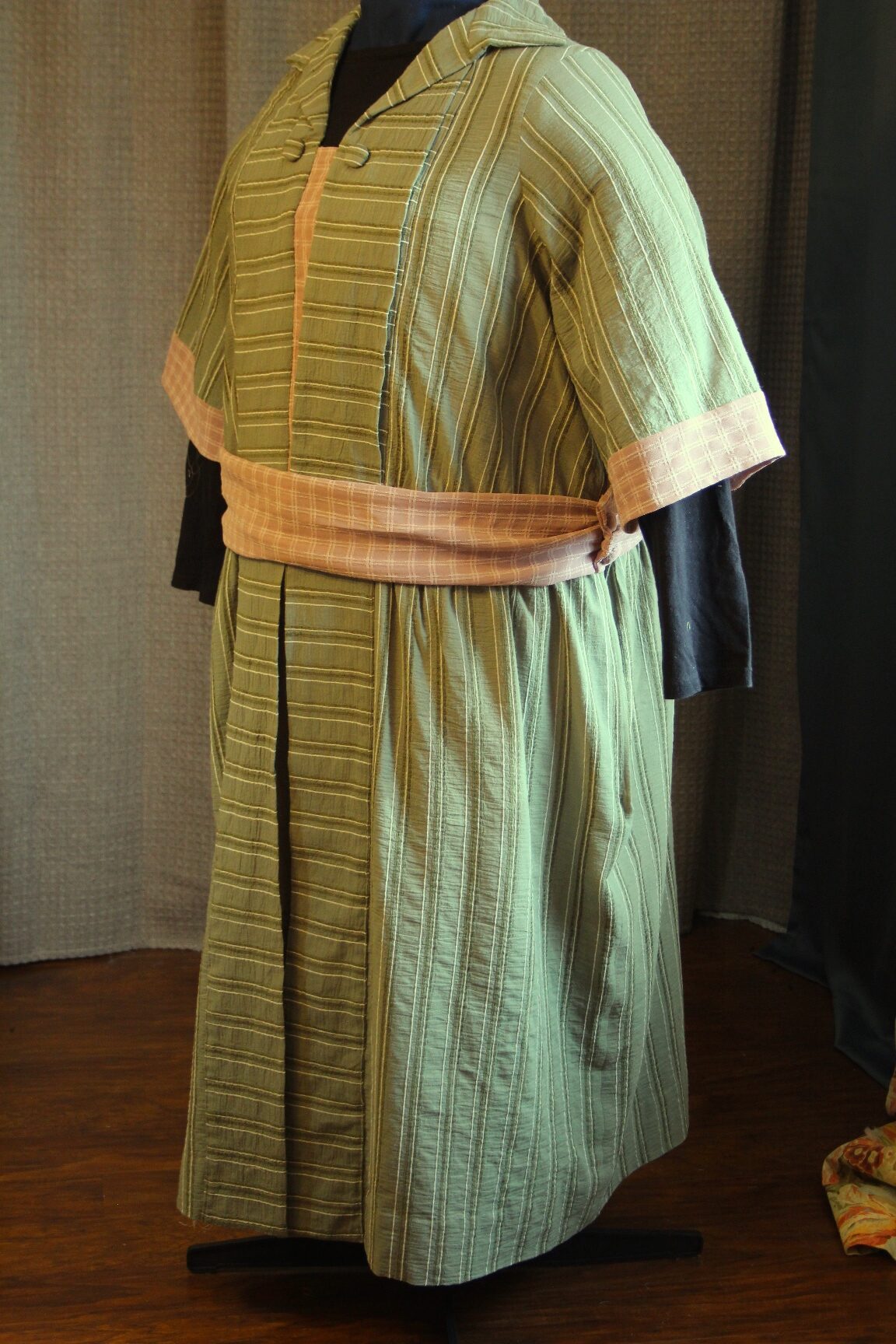
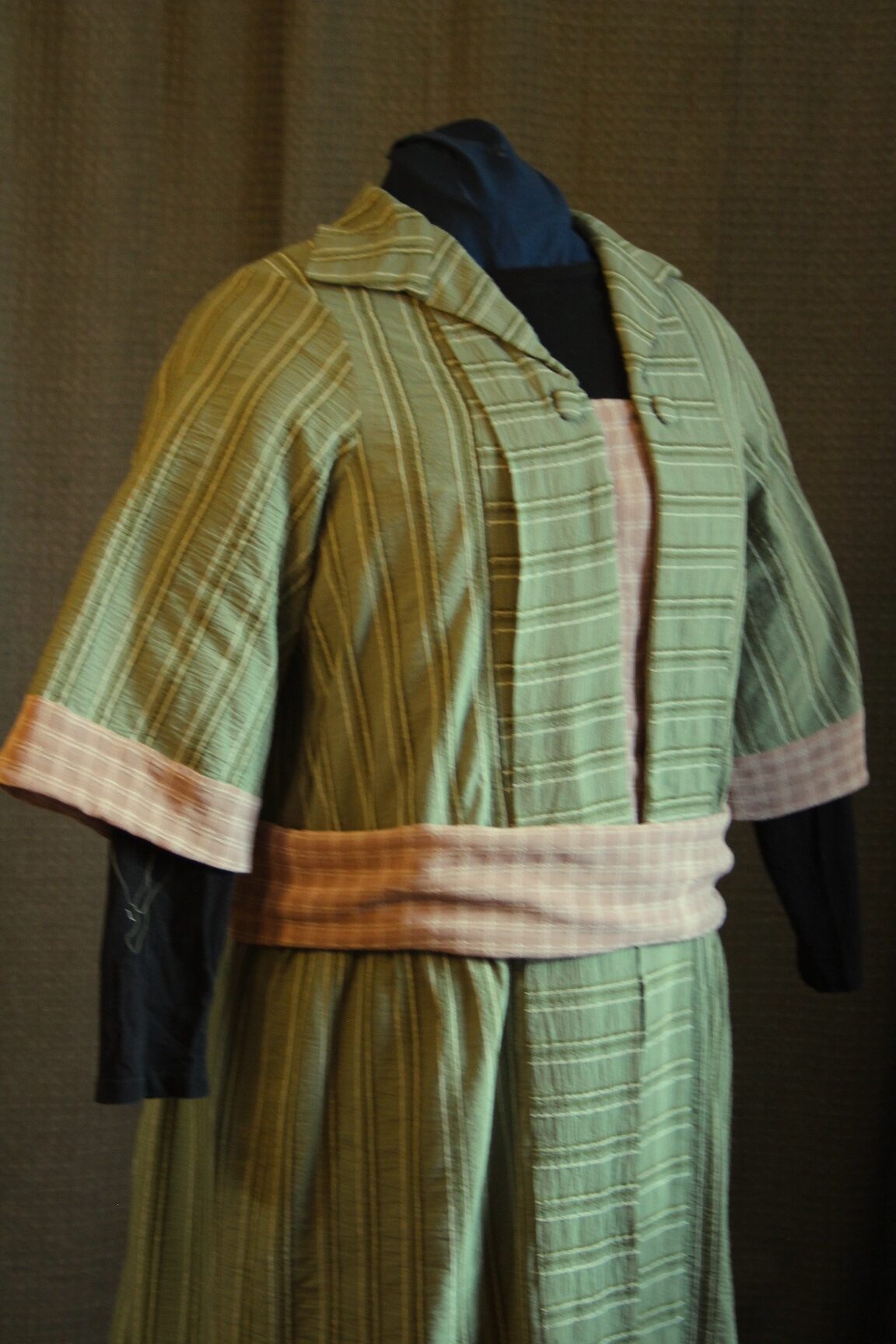
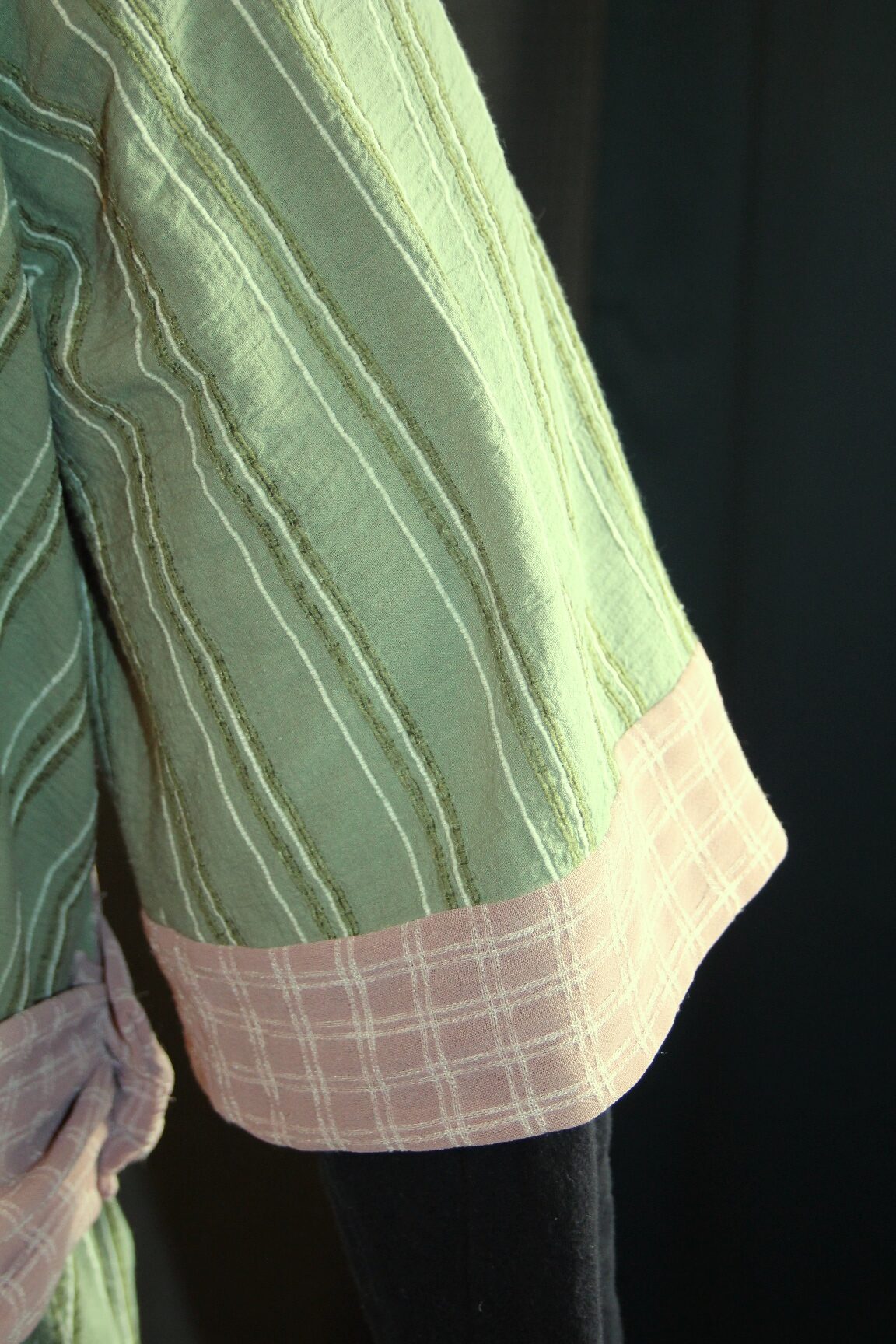

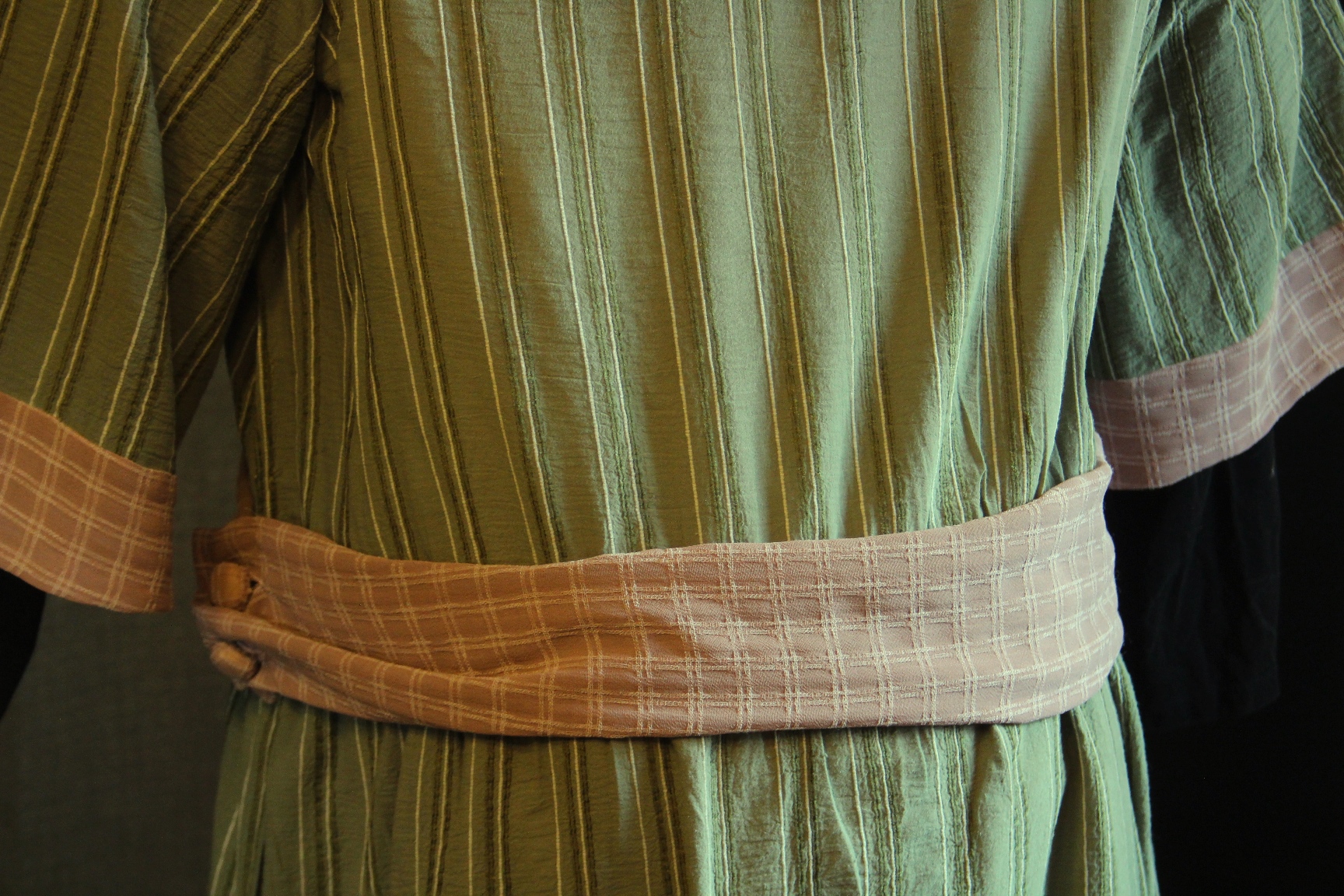
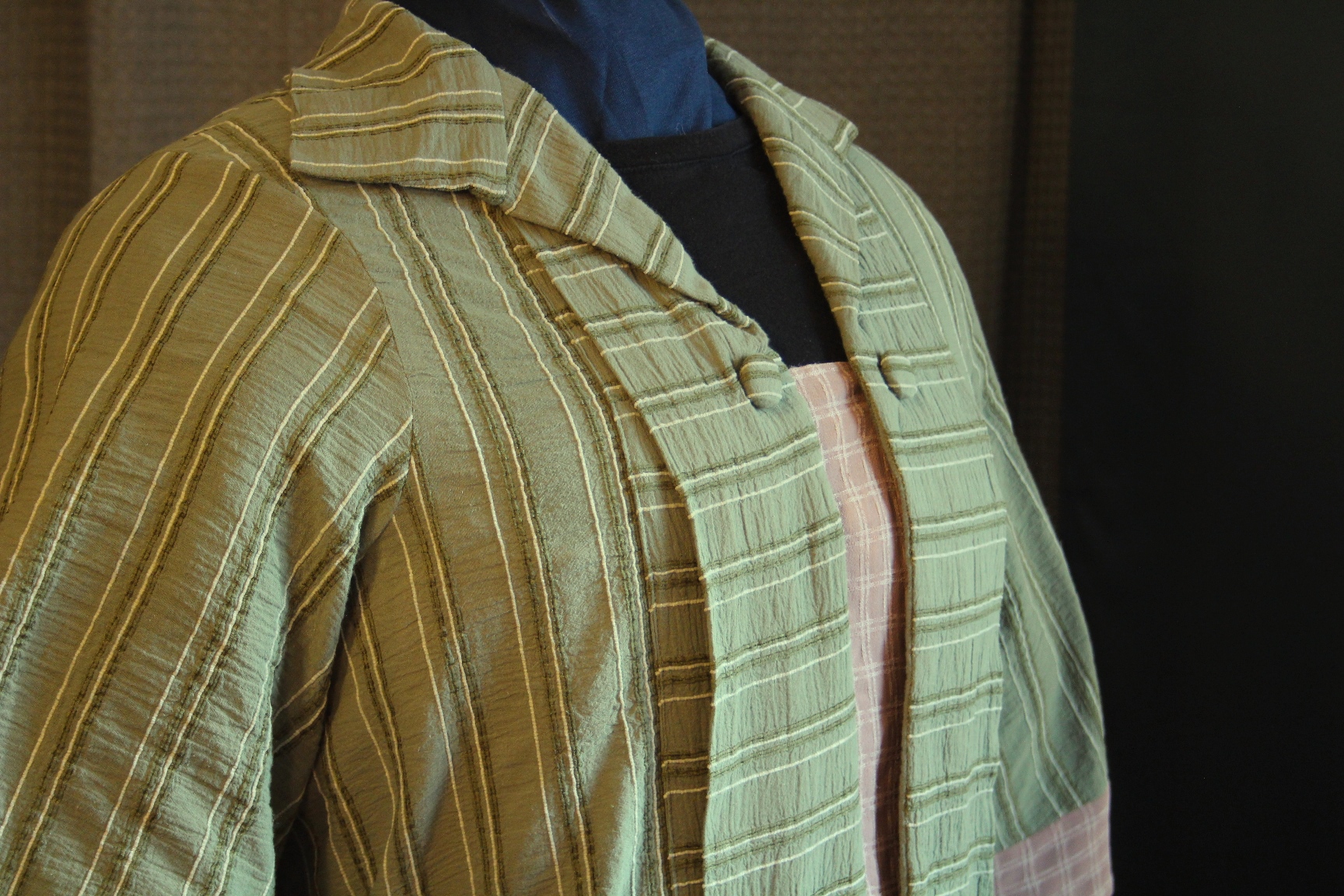
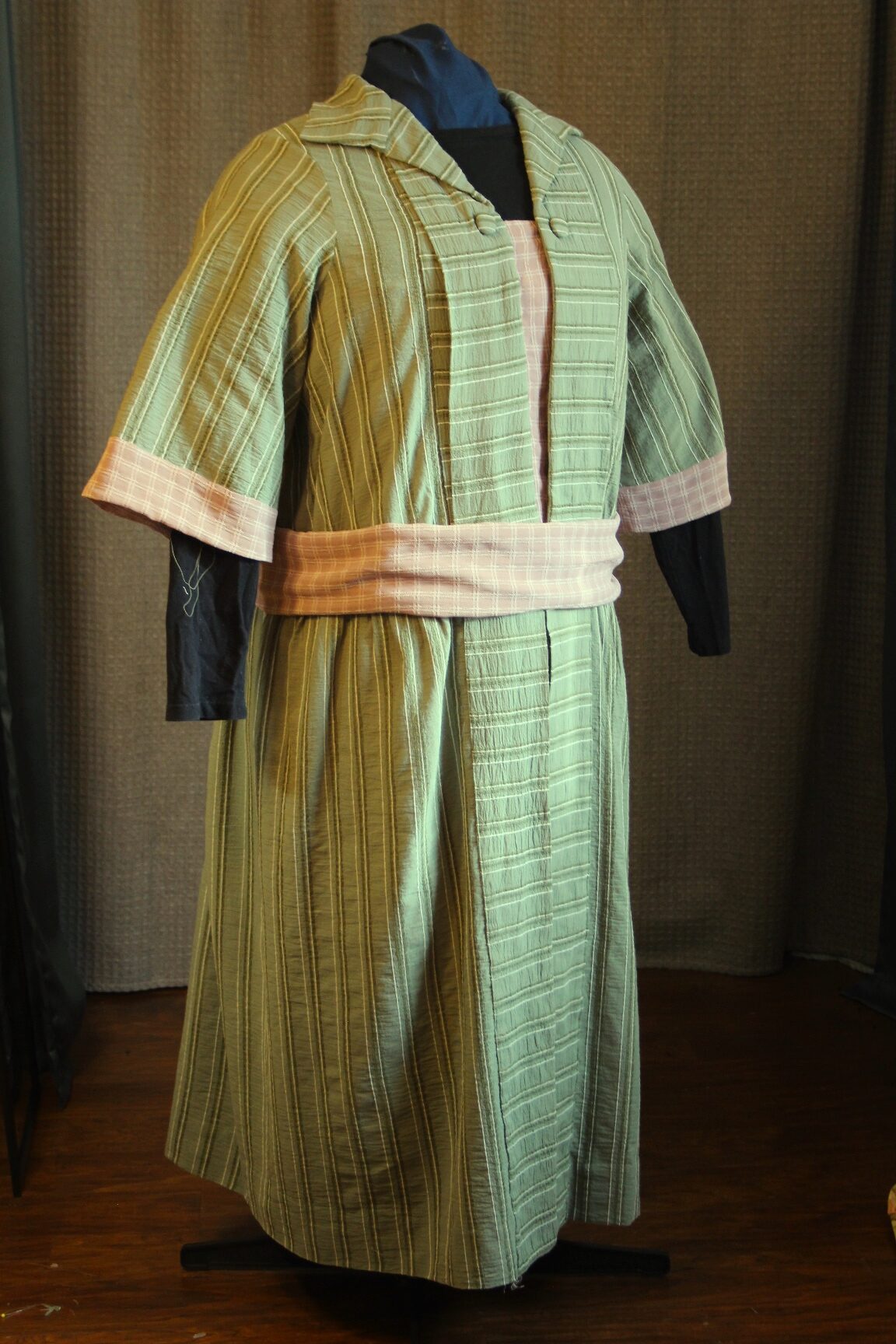
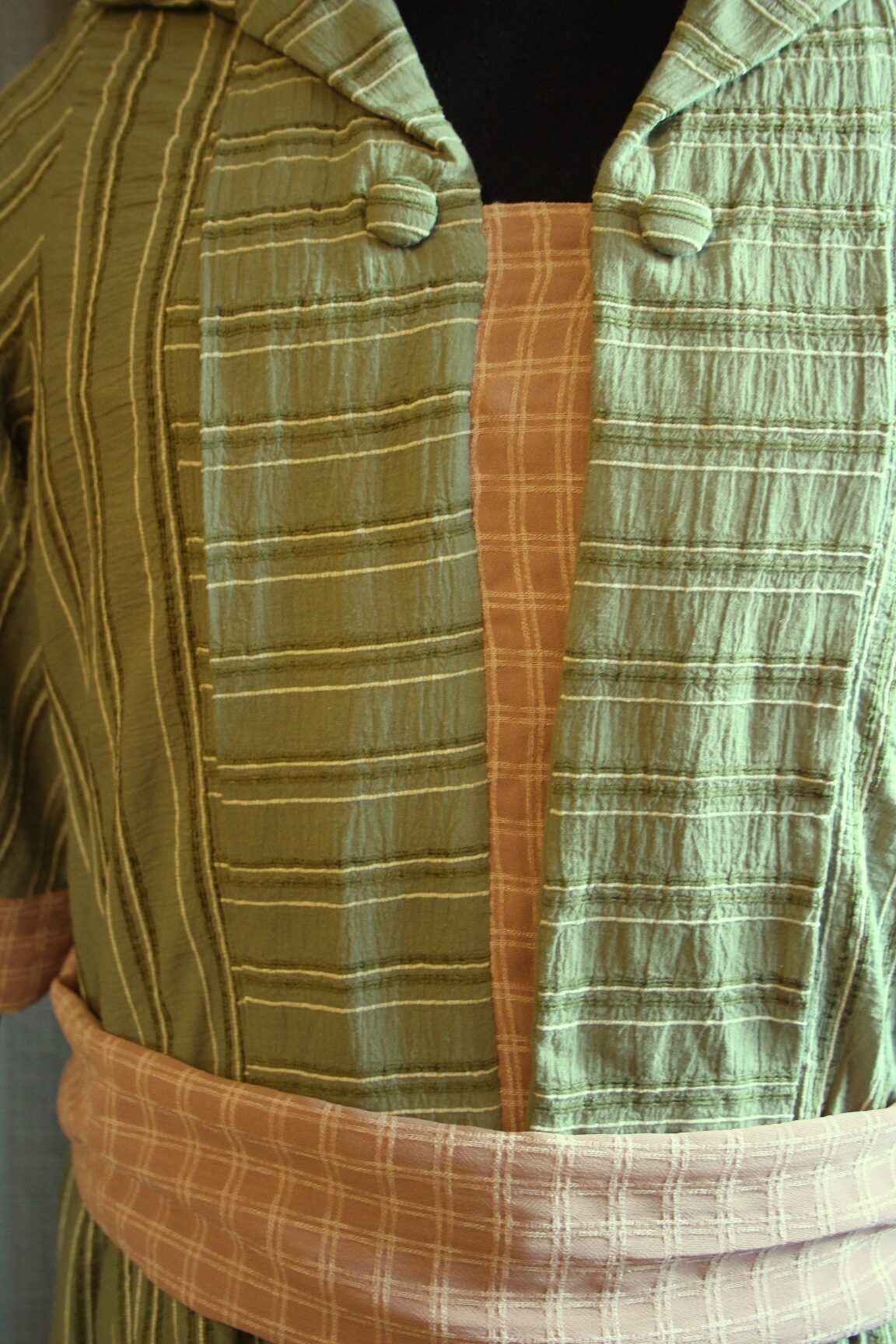
Rib Knit Sports Coat (Cardigan Sweater)
Silhouettes donated this because it is winter in Wyoming, and a cotton dress would have been worn with a sweater just like this. Based on the knitted sweater pattern but upsized to fit, this is a loose design with full sleeves and shoulders for comfort. It is made of a 80/20 cotton/spandex because we couldn’t find 100% cotton, but it has the clingy look of sweaters of the mid 1920’s. This is the garment you see worn inside the school by teachers, and it would have been the “go to” for every day use.
The challenge with this was in getting the right amount of fullness in creating the pattern from scratch because the knitted pattern was much smaller and designed for the stretch of knitting. This ended up a bit tighter and shorter than it was supposed to be, but considering it is a freebie given to keep her warm, it should be very durable and provide some easy warmth.
Buttons are gorgeous real mother of pearl buttons from the 1910’s, and it has a nice thick collar with raglan sleeves for easy on and off and warmth around the neck. The ribs are used the same as the knitted; horizontal to prevent stretch at bottom and sleeves and vertical through the body so it will stretch.
A favorite home sewing detail in the mid ’20’s was to use buttonholes as holes for belt loops, scarf holders, and anything they couldn’t figure out how to hold in place. The girdle (belt) in this was very heavy, and the double buttonholes placed strategically were perfect to use instead of external belt loops.
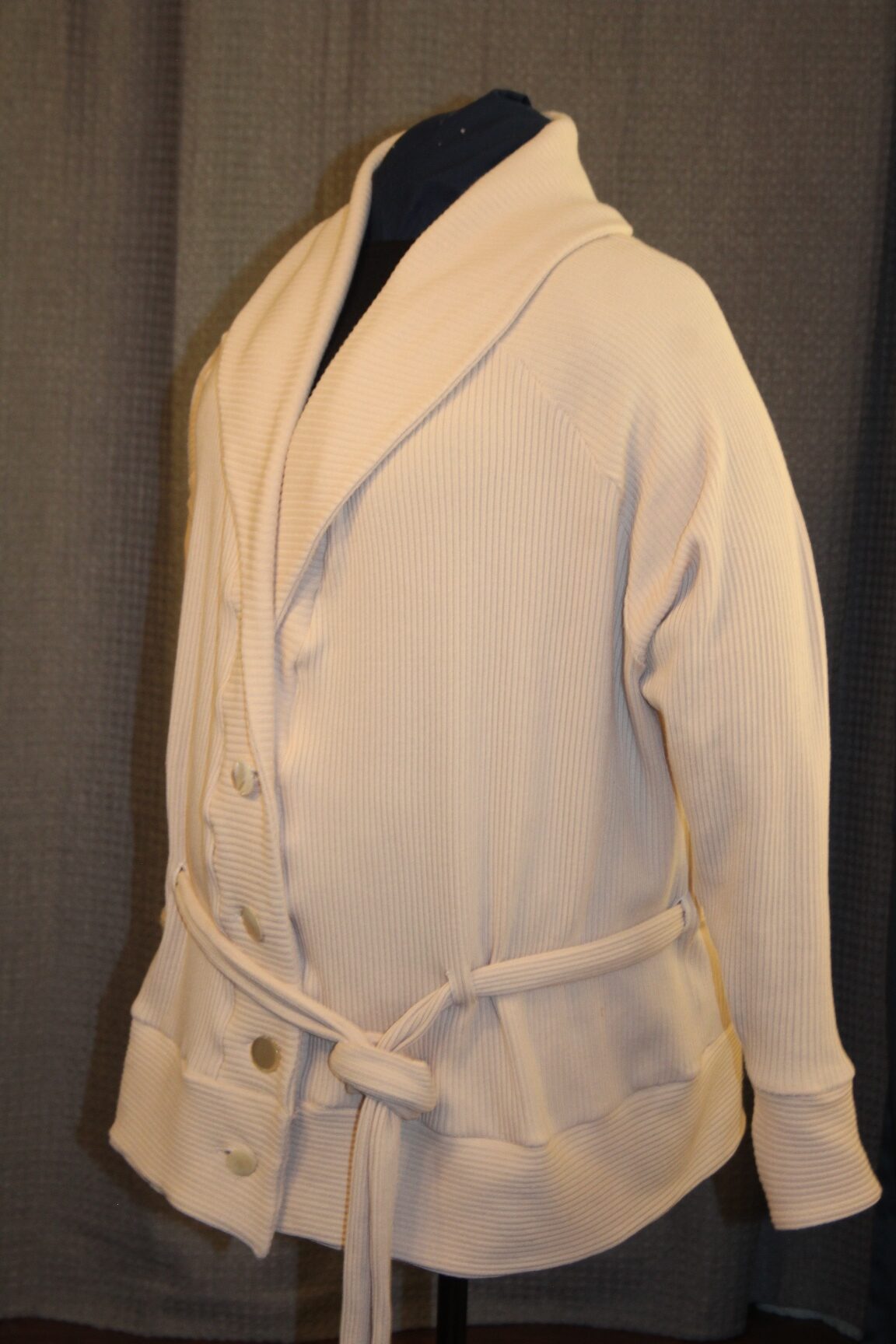
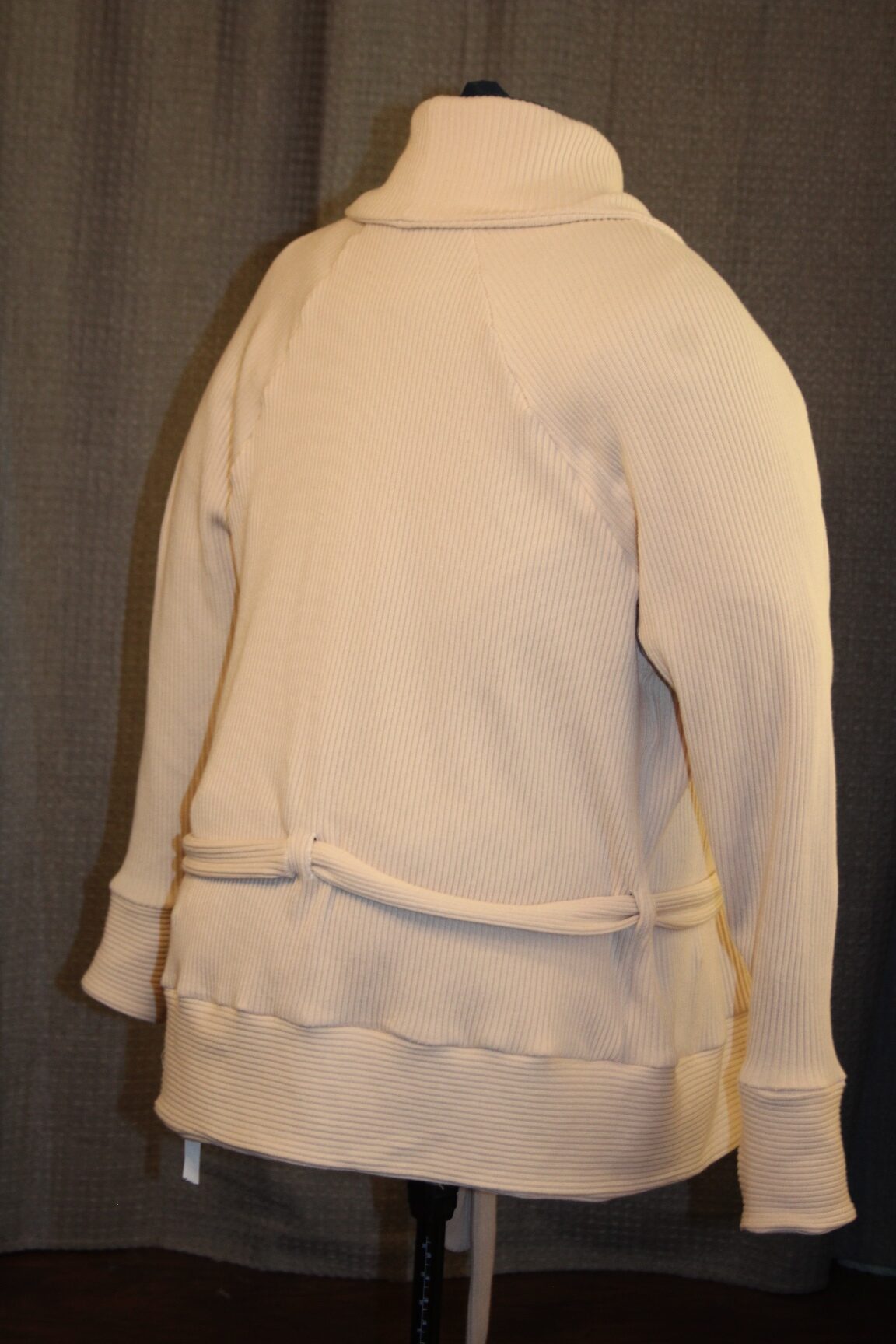
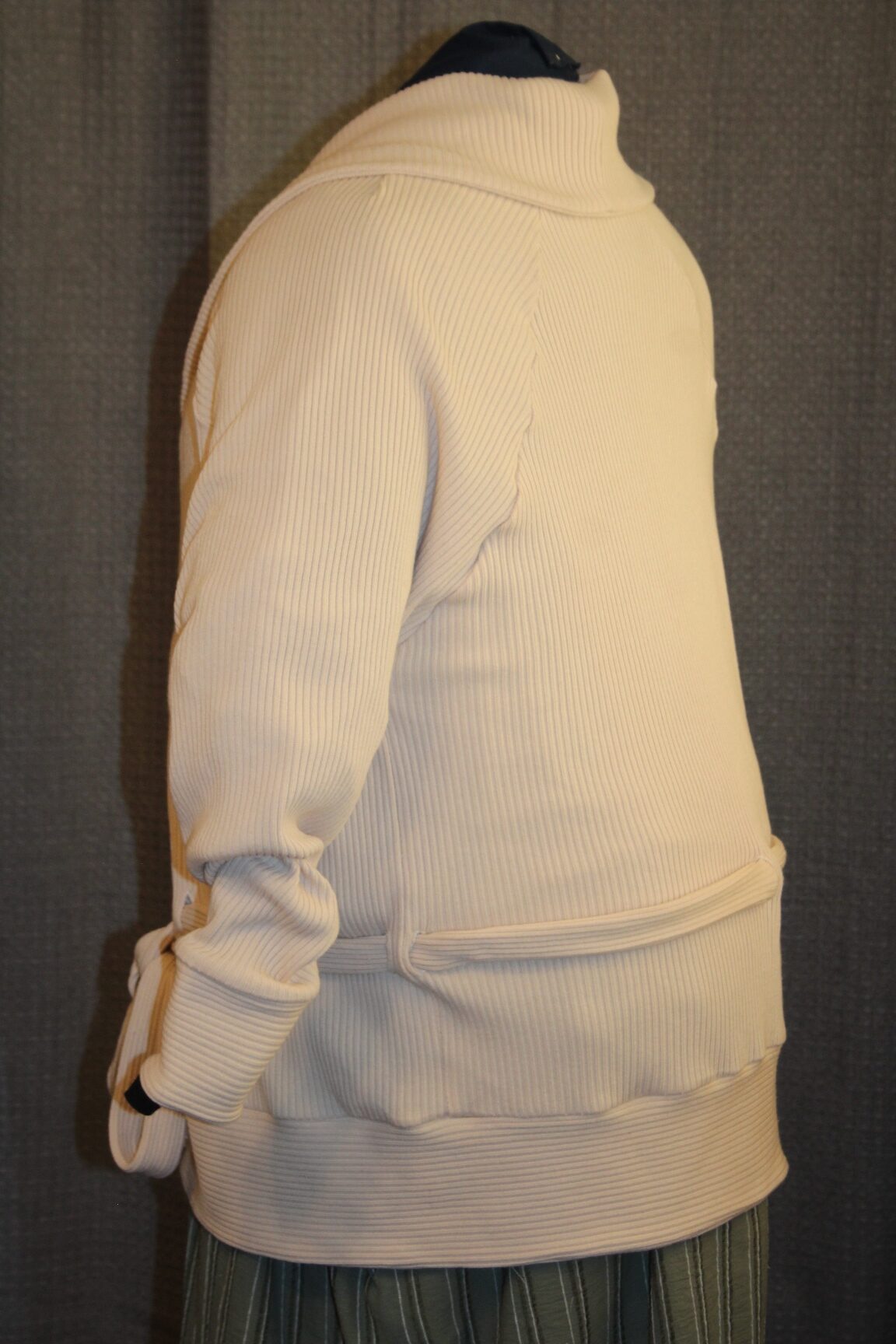
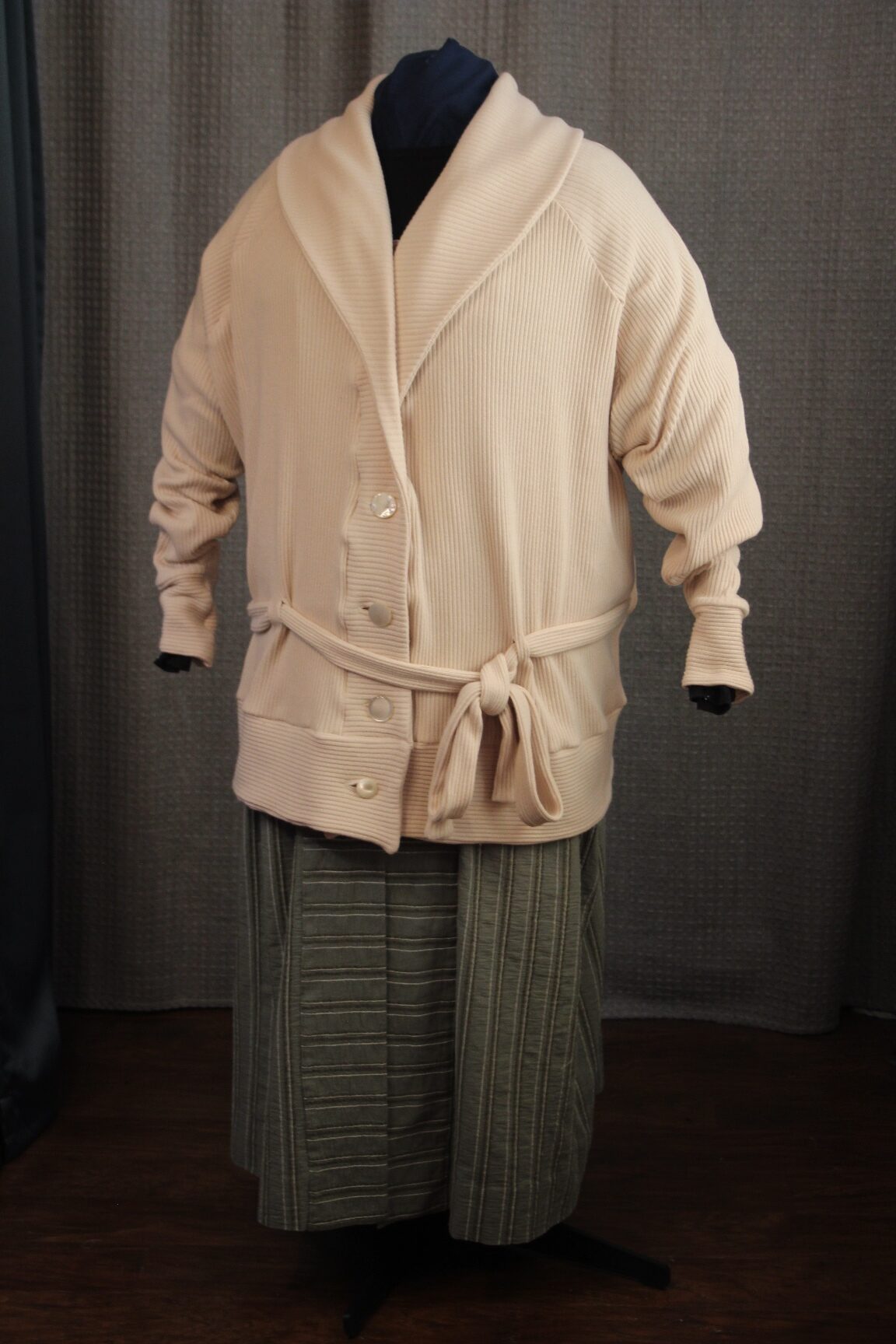
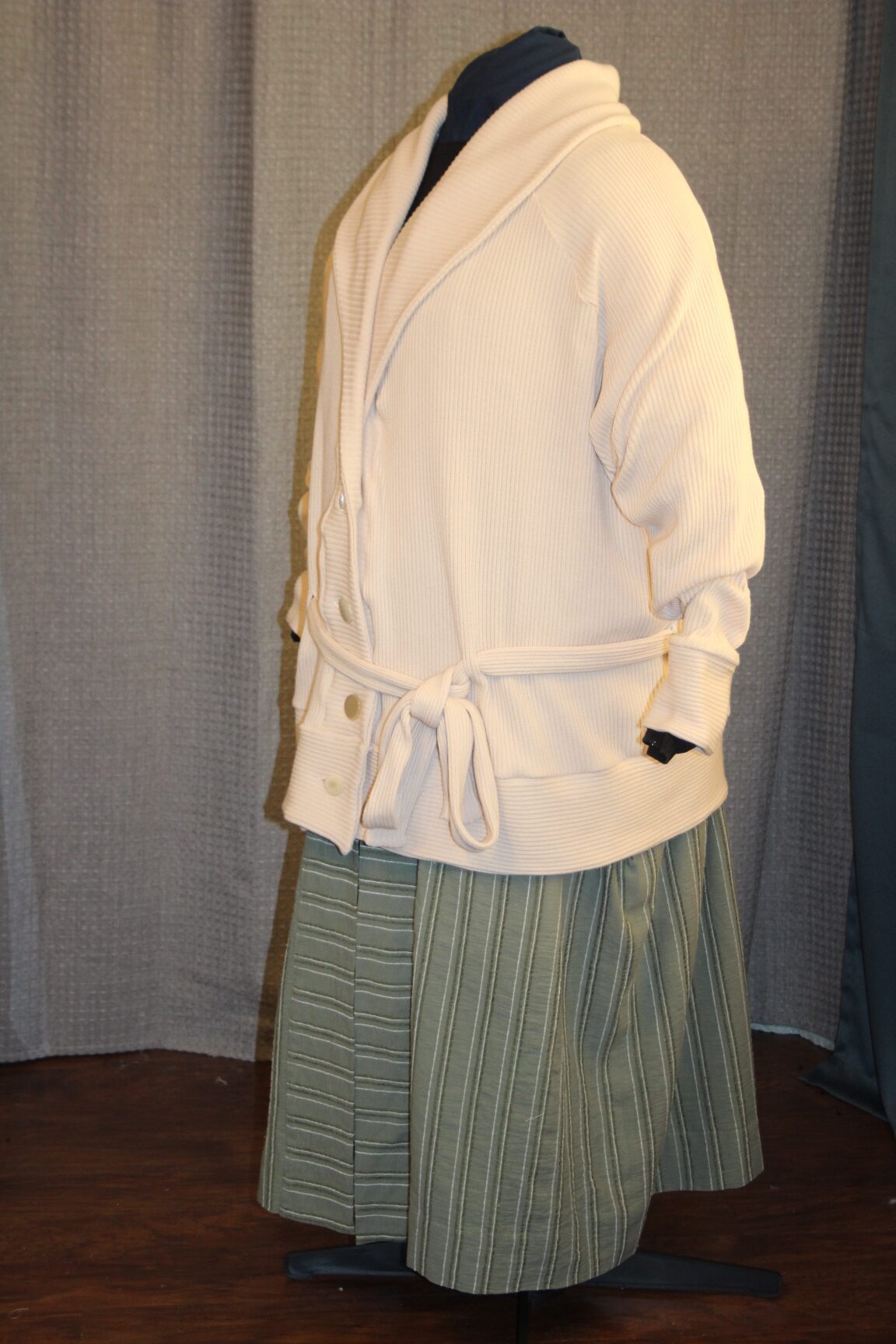
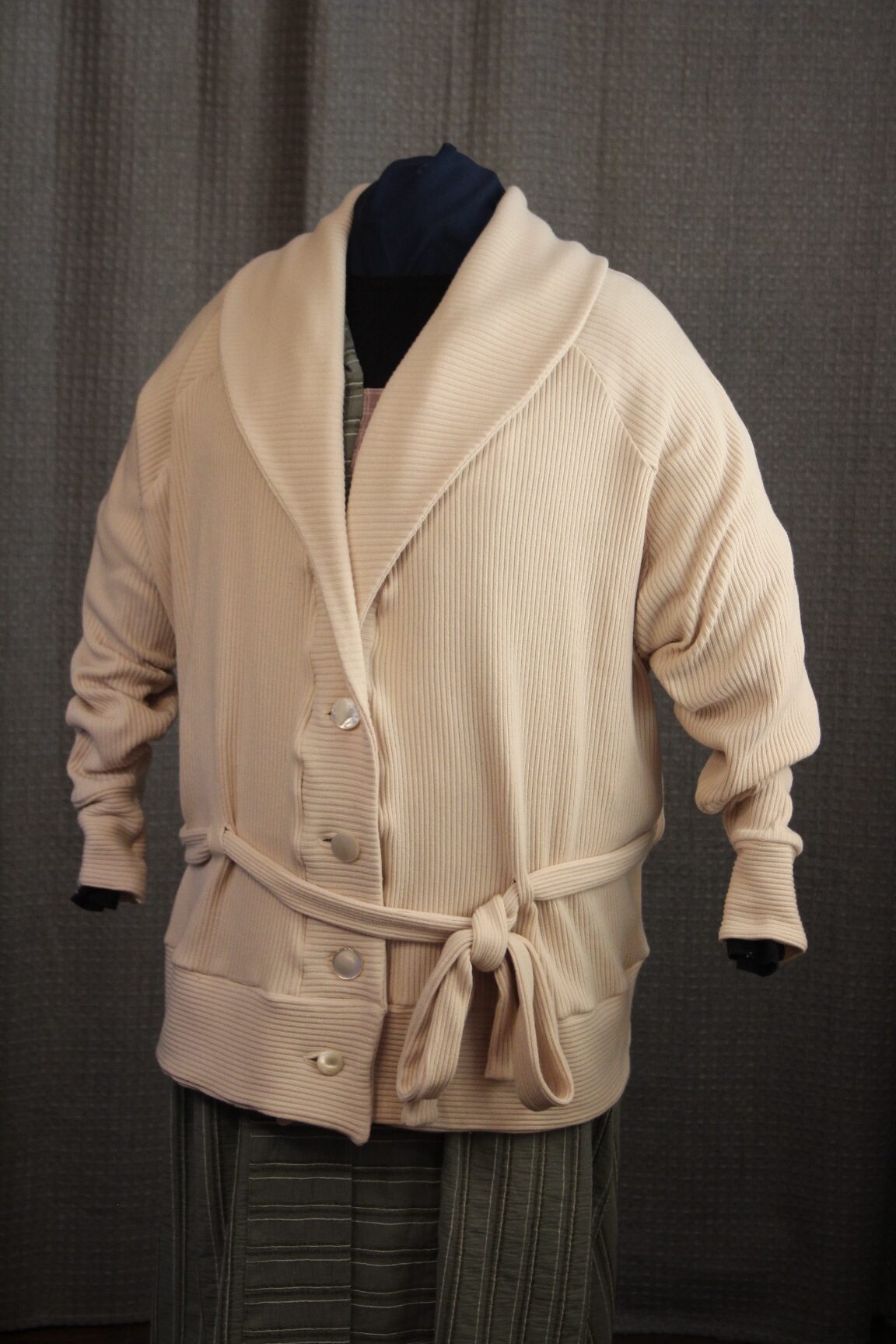
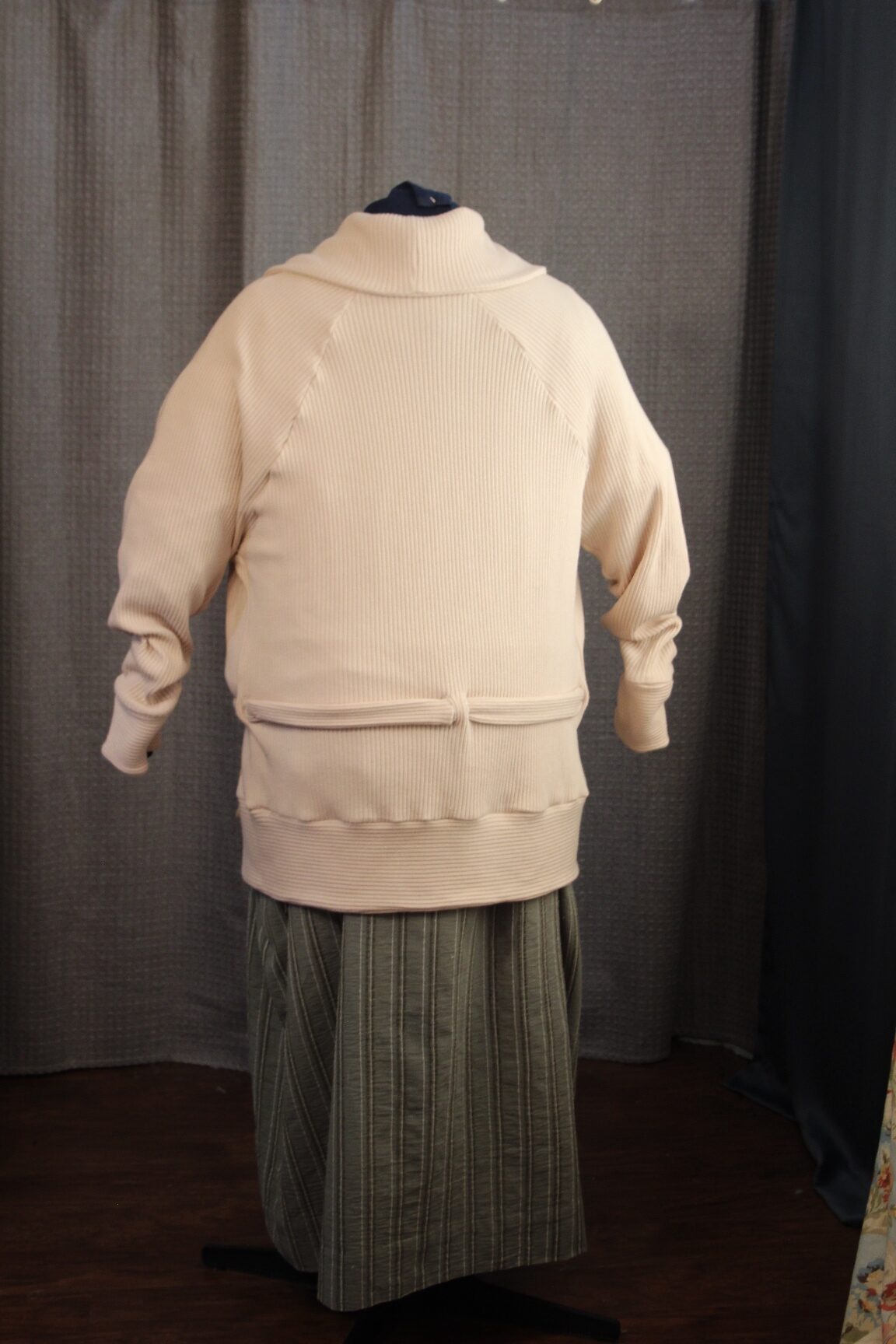
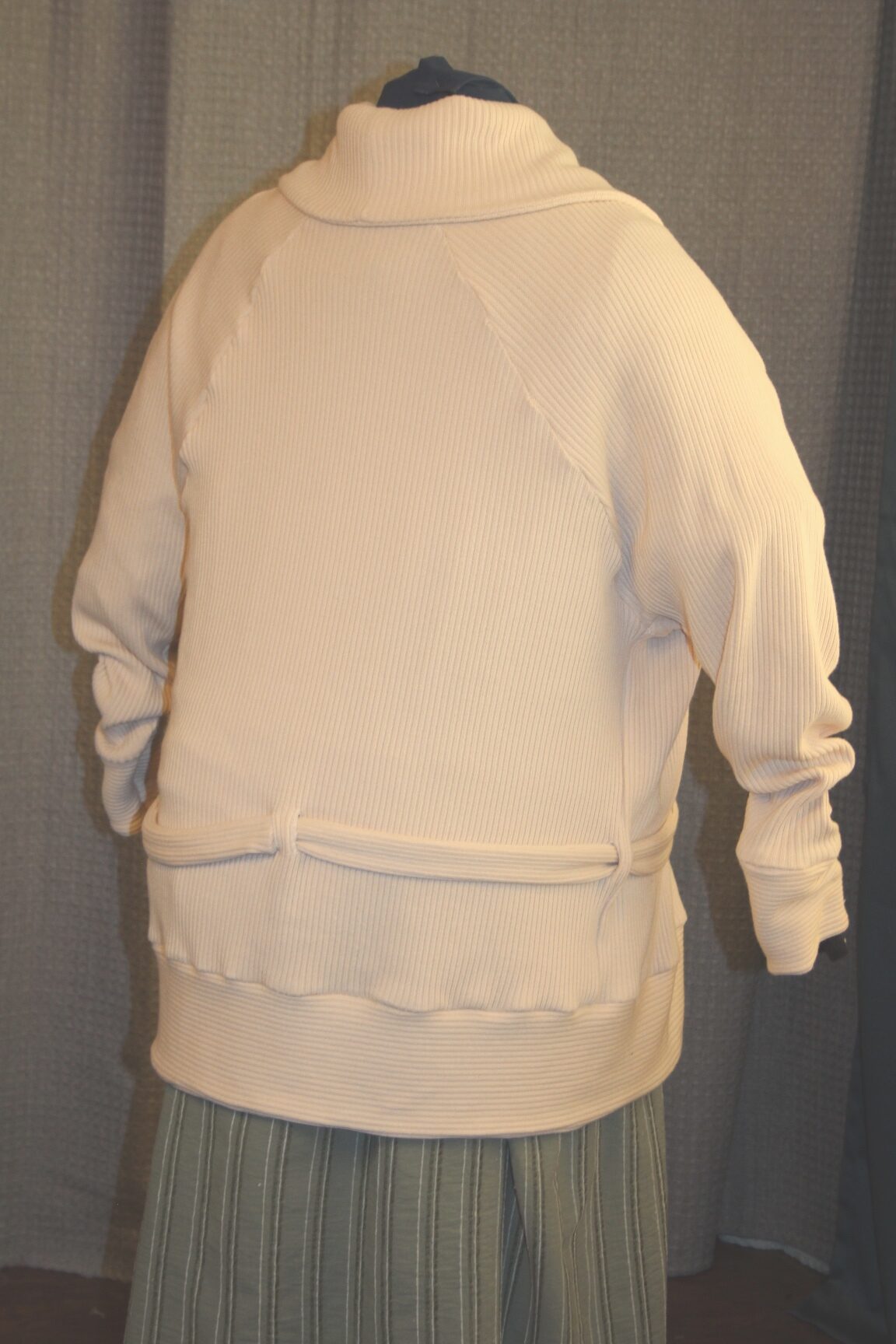
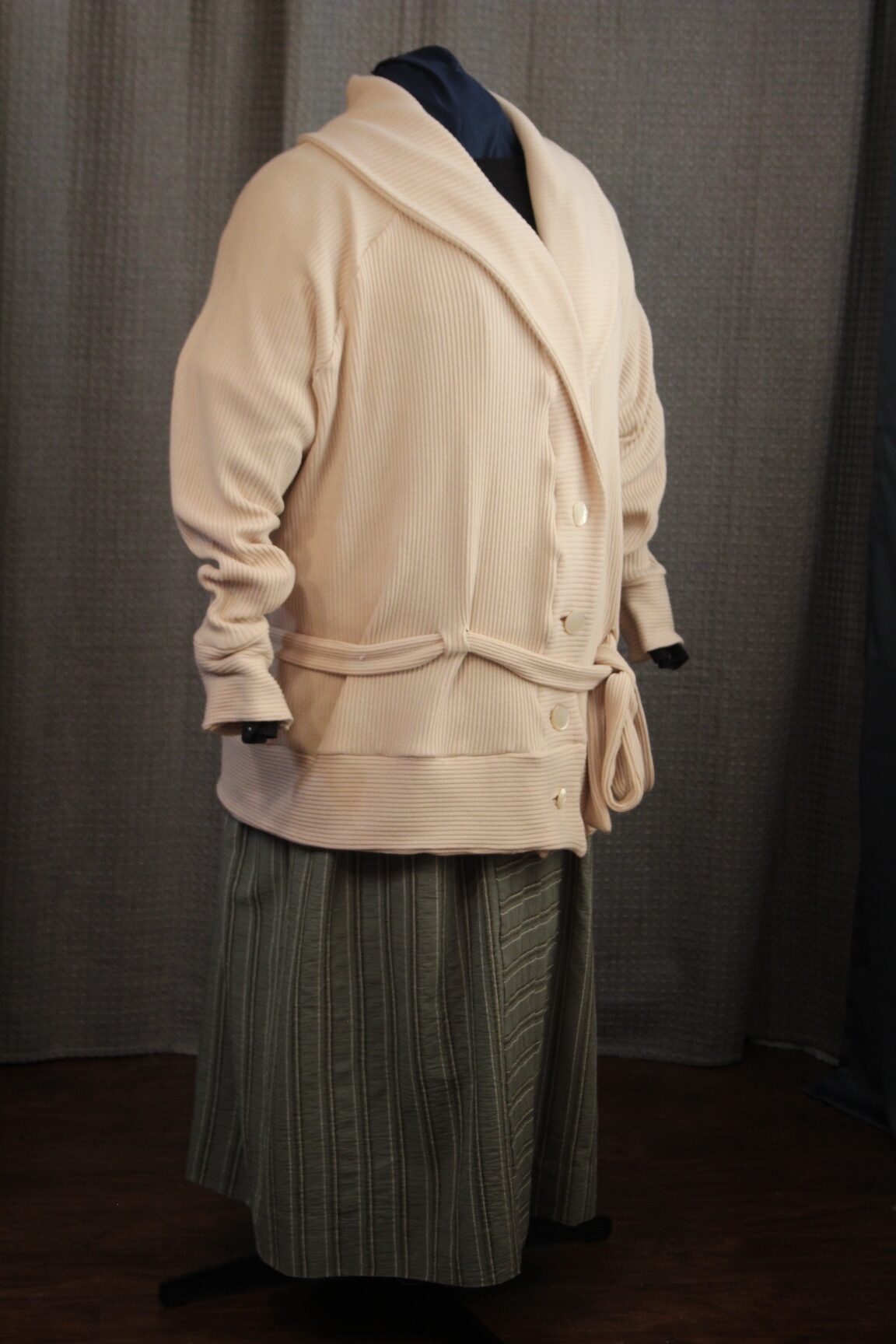
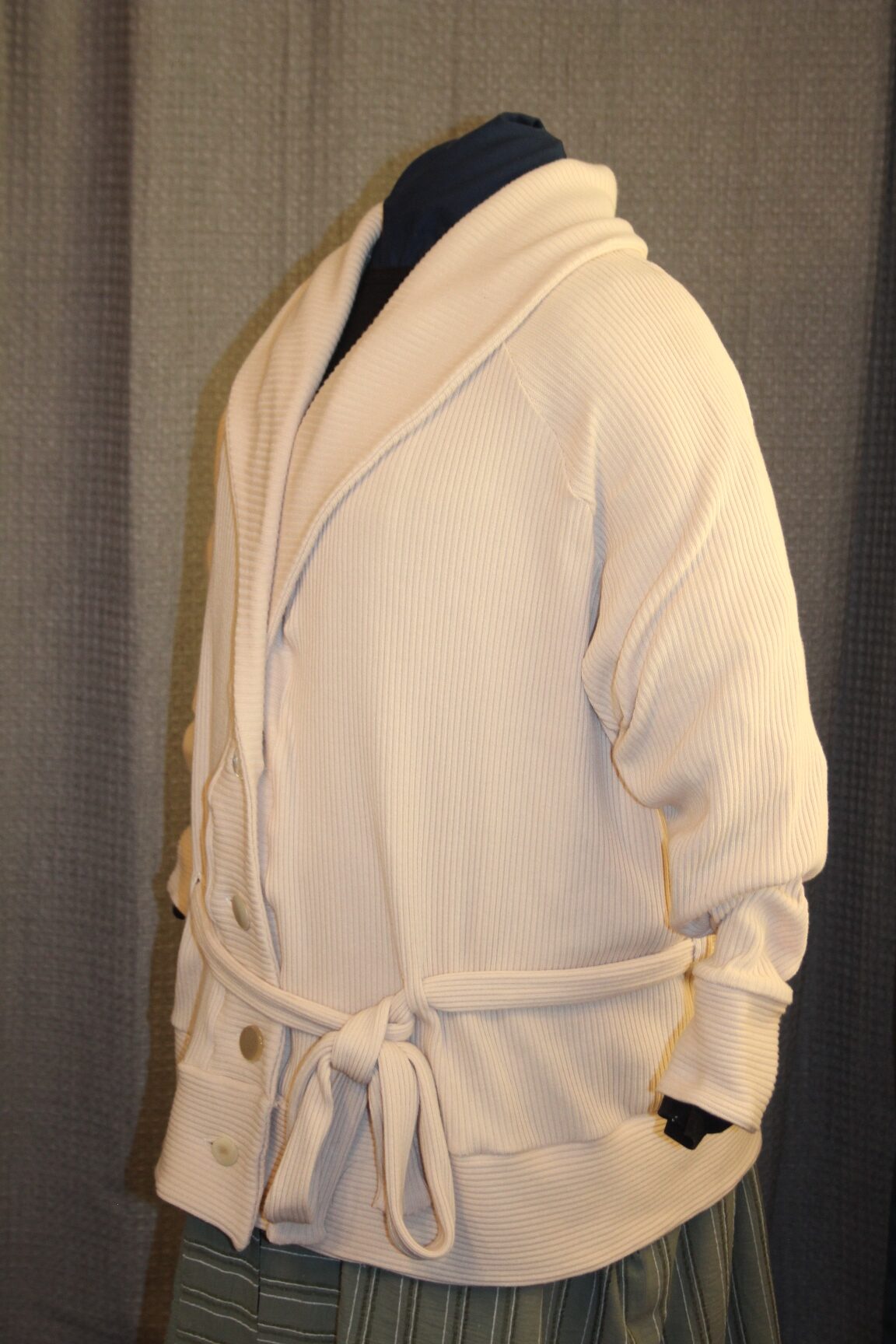
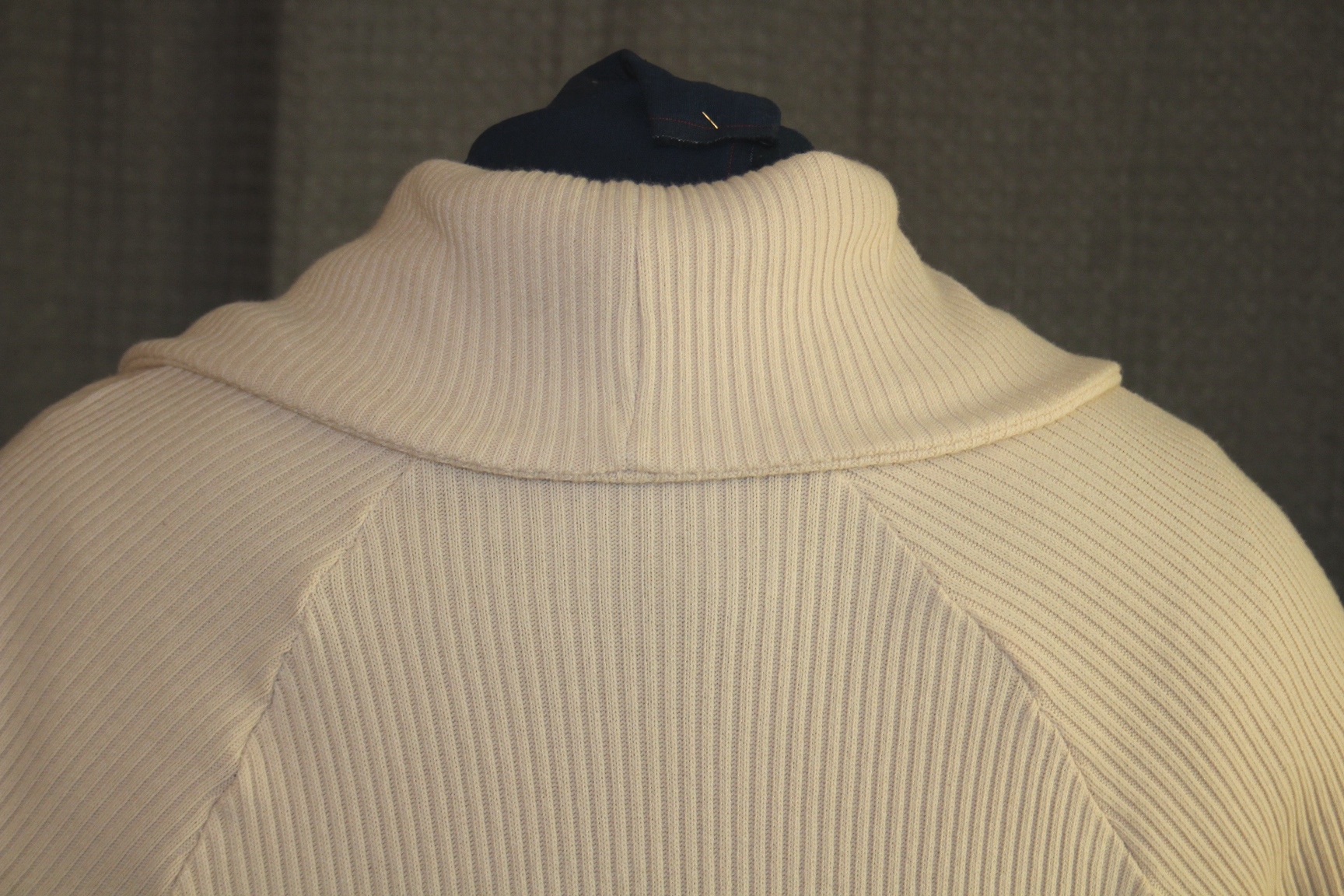
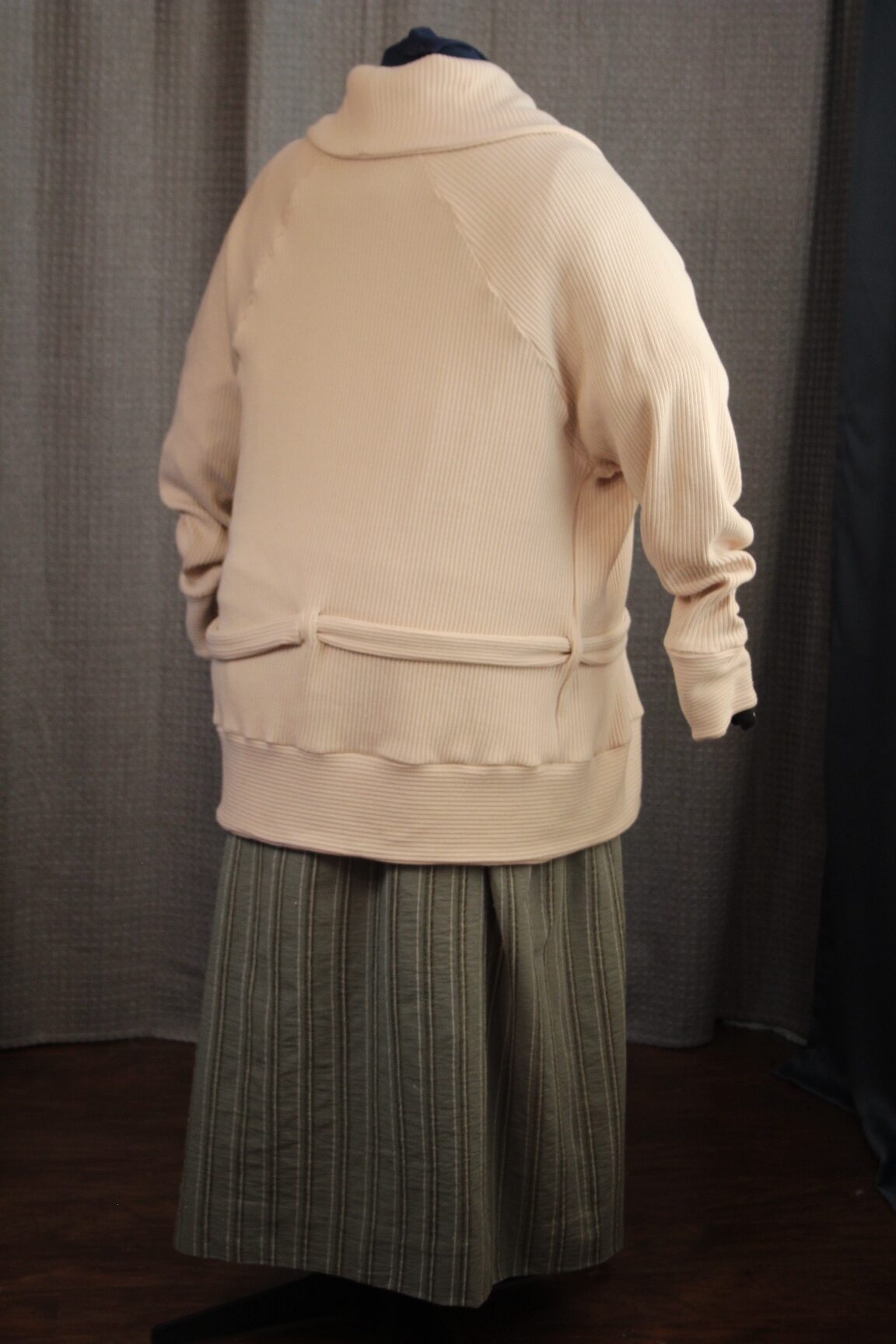
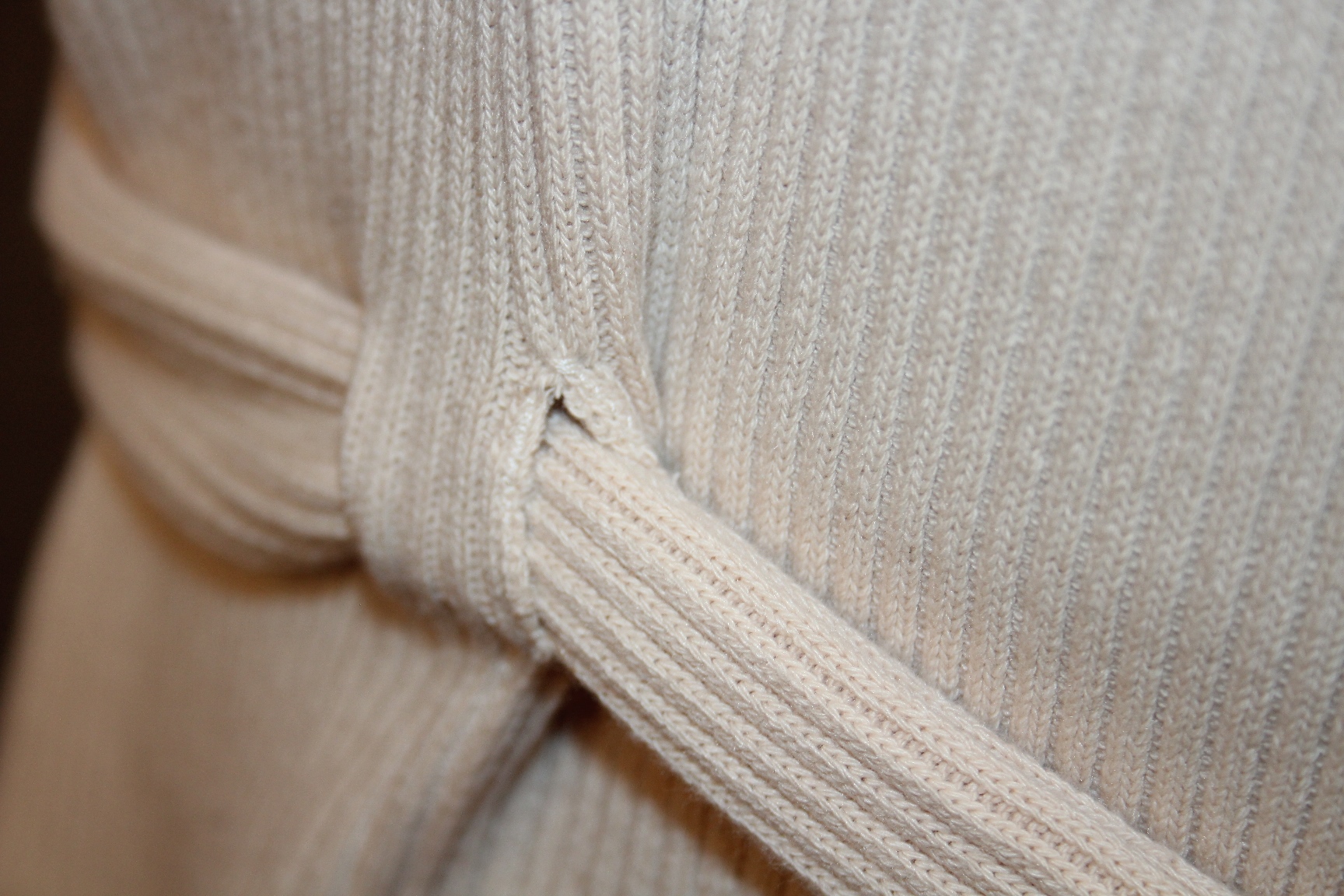
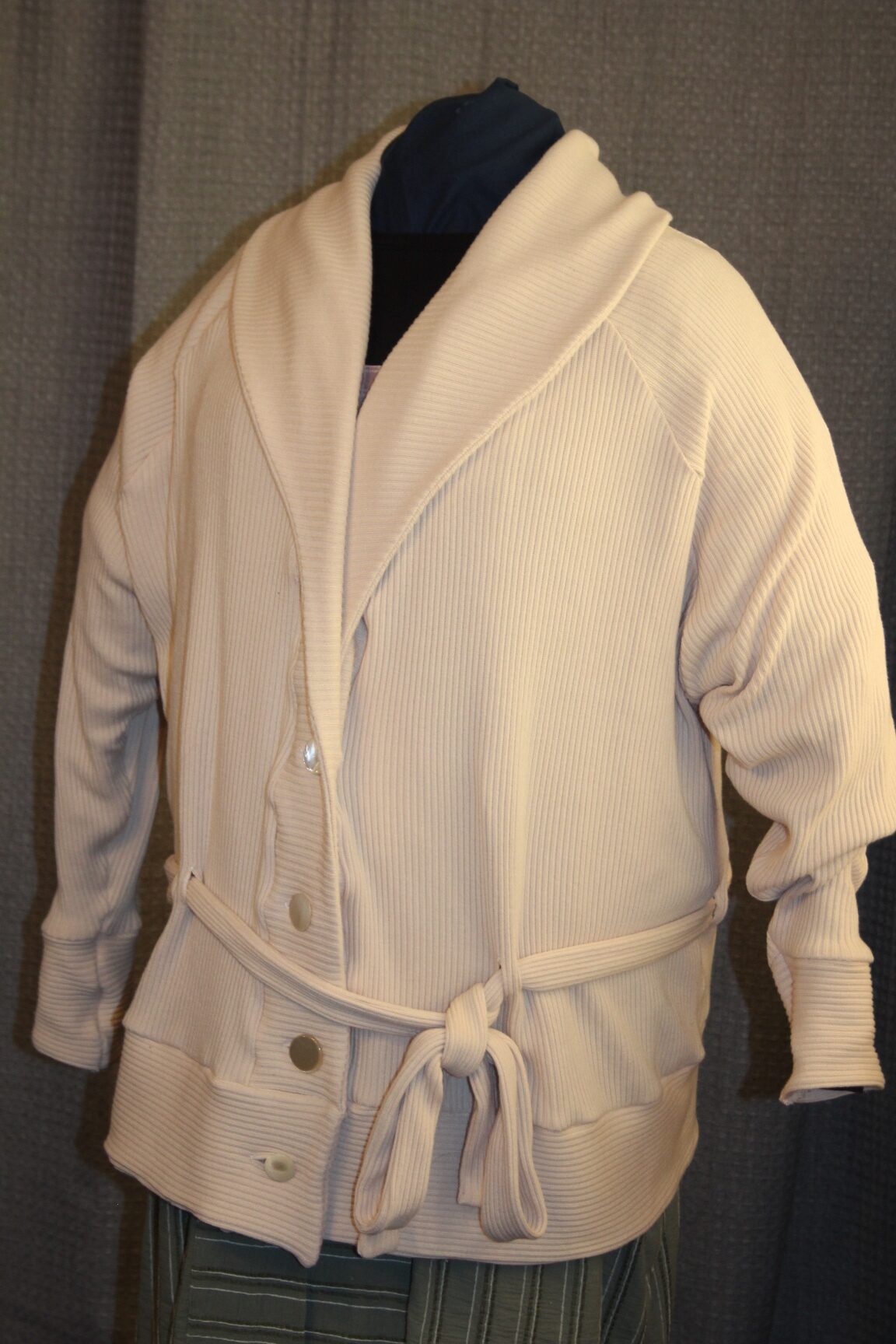
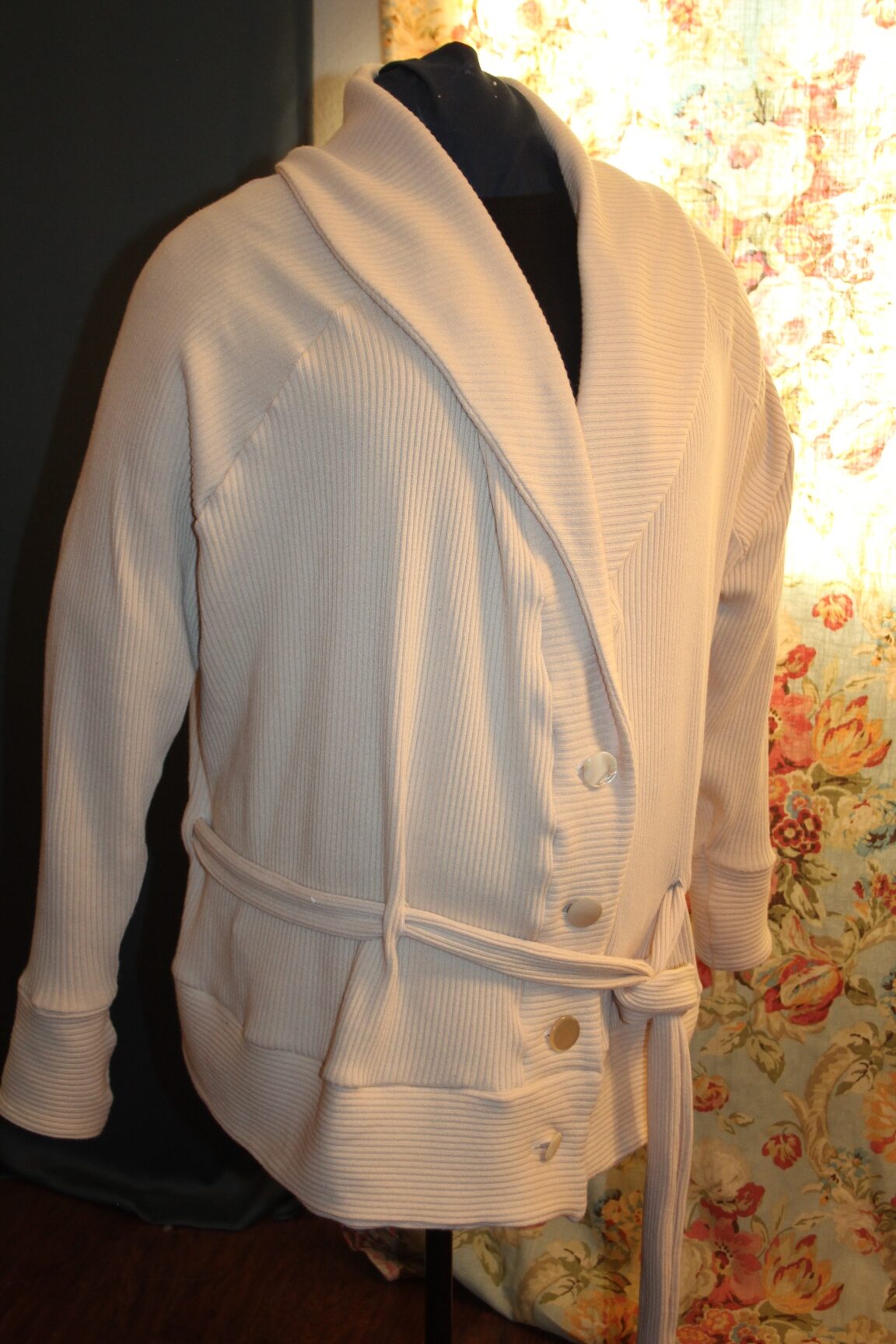
Casual Day Dress
“Owl Dress”
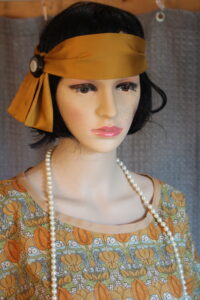
This is not really part of the project, but we had to make something in which to photograph the model with the sweater. The sweater was the last to complete; long after delivery of the rest of the teacher’s ensemble.
This was made from instructions (no patterns!) from a Mary Pickens magazine article from 1925. It is called a “one hour dress”, but it took us 10 hours. Like all the “one hour” things in this project, either people in the 1920’s were brilliant seamstresses, or we are dumb and slow. Most likely, they did not finish seams or worry about quality and durability. They might already know how to make this type of garment, and they probably had all the materials ready on hand.
Or it really took them 10 hours too.
Regardless, we have this cute art nouveau fabric featuring tiny blue owls. We modified the Picken’s design to suit the one directional fabric. Following instructions exactly, it looks too short in the body and way too long in the skirt for our real life teacher, but fortunately the mannequin has very long legs. This is to be at ankle length and just slips over the head.
The construction method, like all the projects for woman and girl, is the strange “front crossover” design where you end up with a weak junction of front to back at the hip (see the “slip” above). The nice thing about these designs though, is that you can personalize them. We used bias tape as accent, and put little pleats at the side junction for interest.
We bought a 60″ strand of faux pearls; vintage from the 1970’s, to complete the authentic look when she wears her sweater over it.
The headdress is of Giza cotton which is much like silk satin, and that is a 1920 Mother of Pearl over abalone shell over resin antique button. This ensemble illustrates the influence of Egyptian and African styles on the period. This will be sold in our Etsy shop, as it was only built for photographic purposes, and not for this customer.
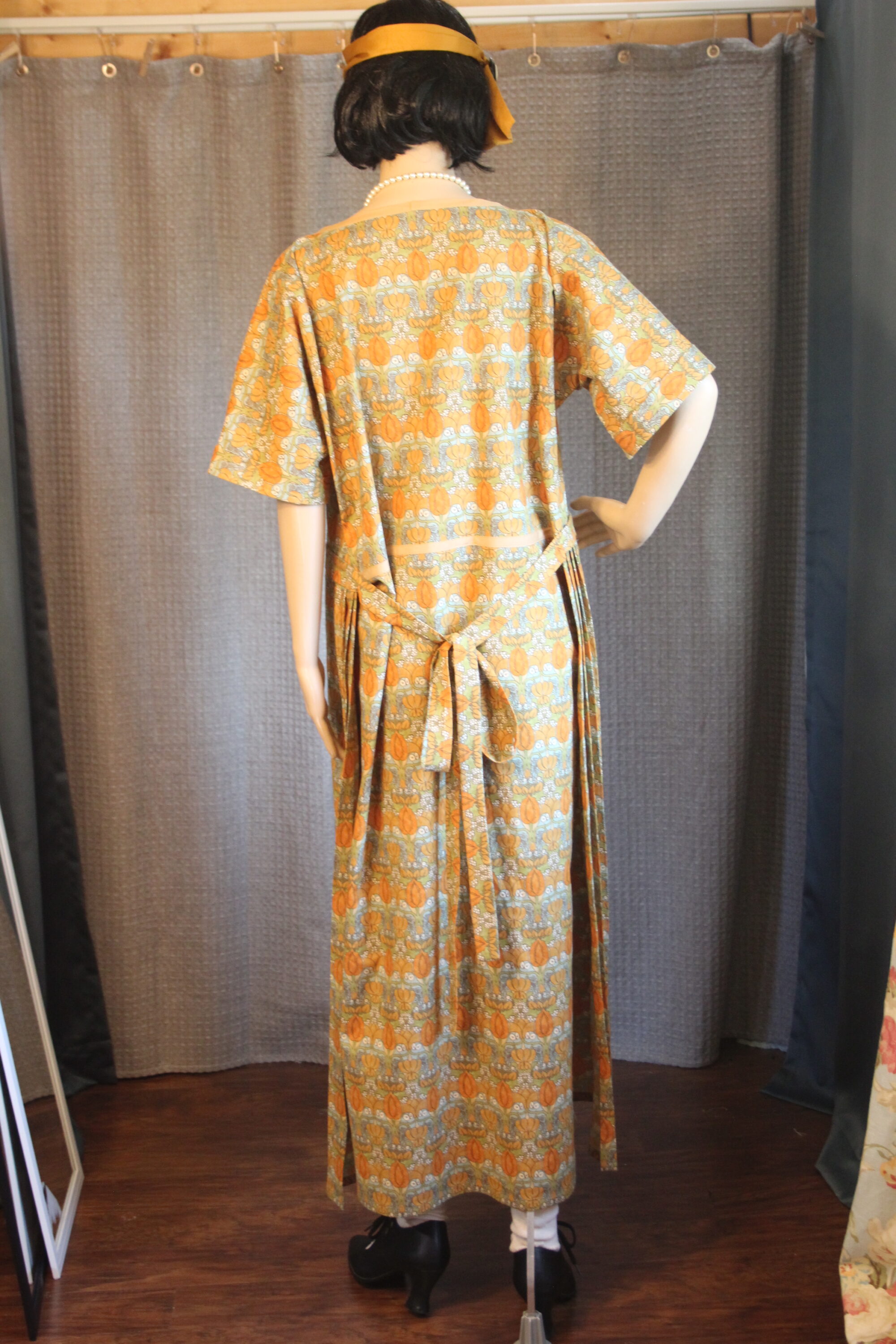
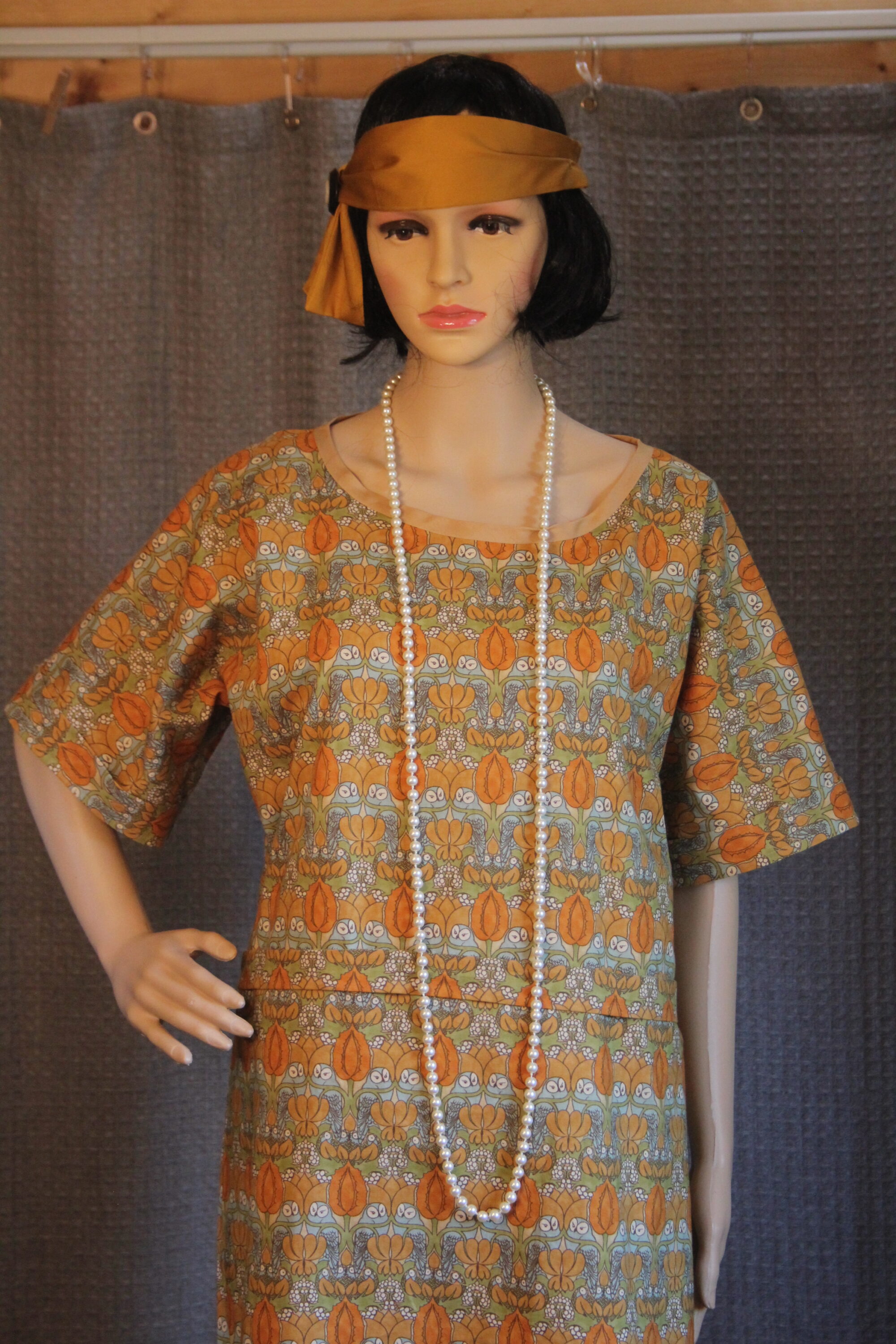
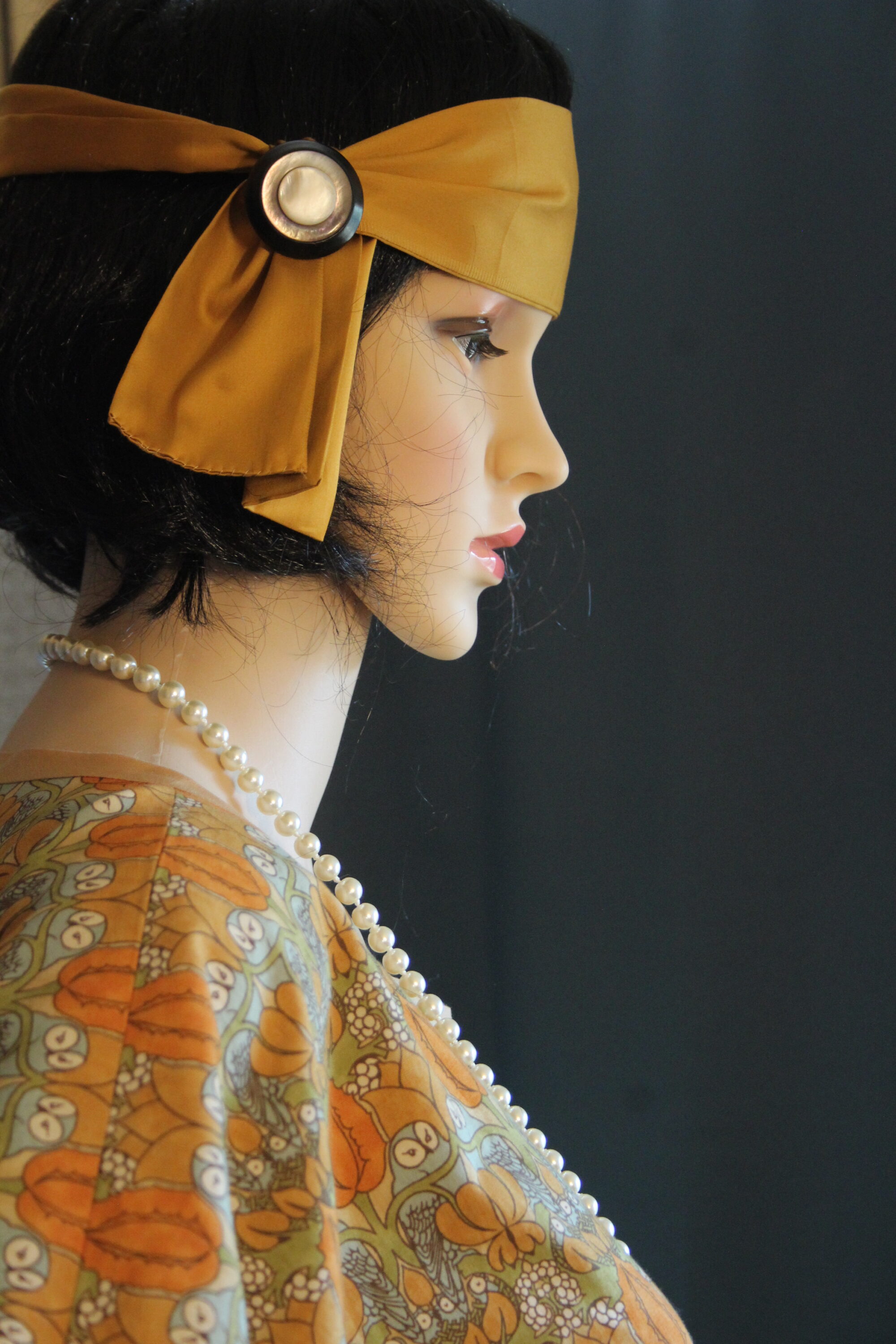
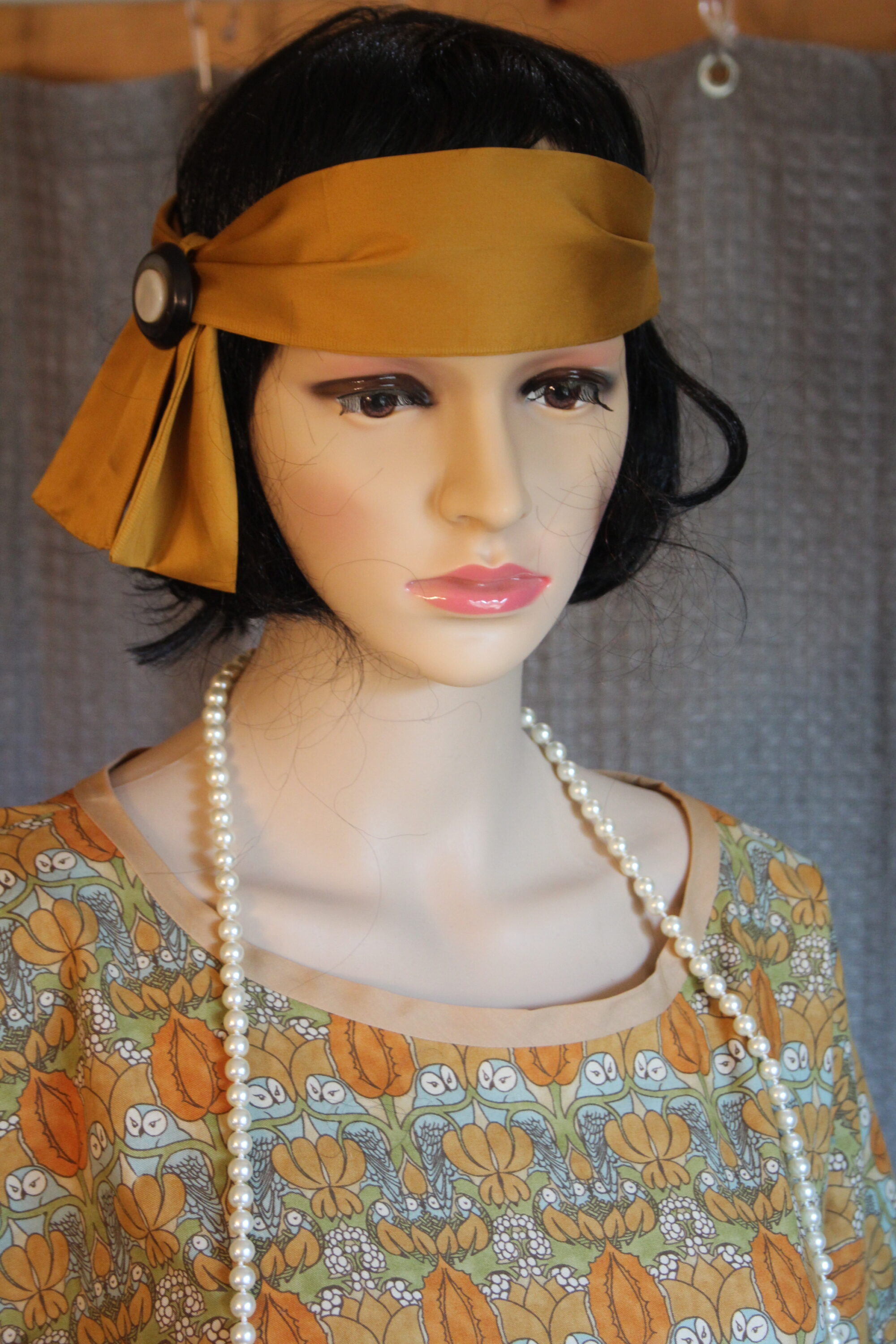
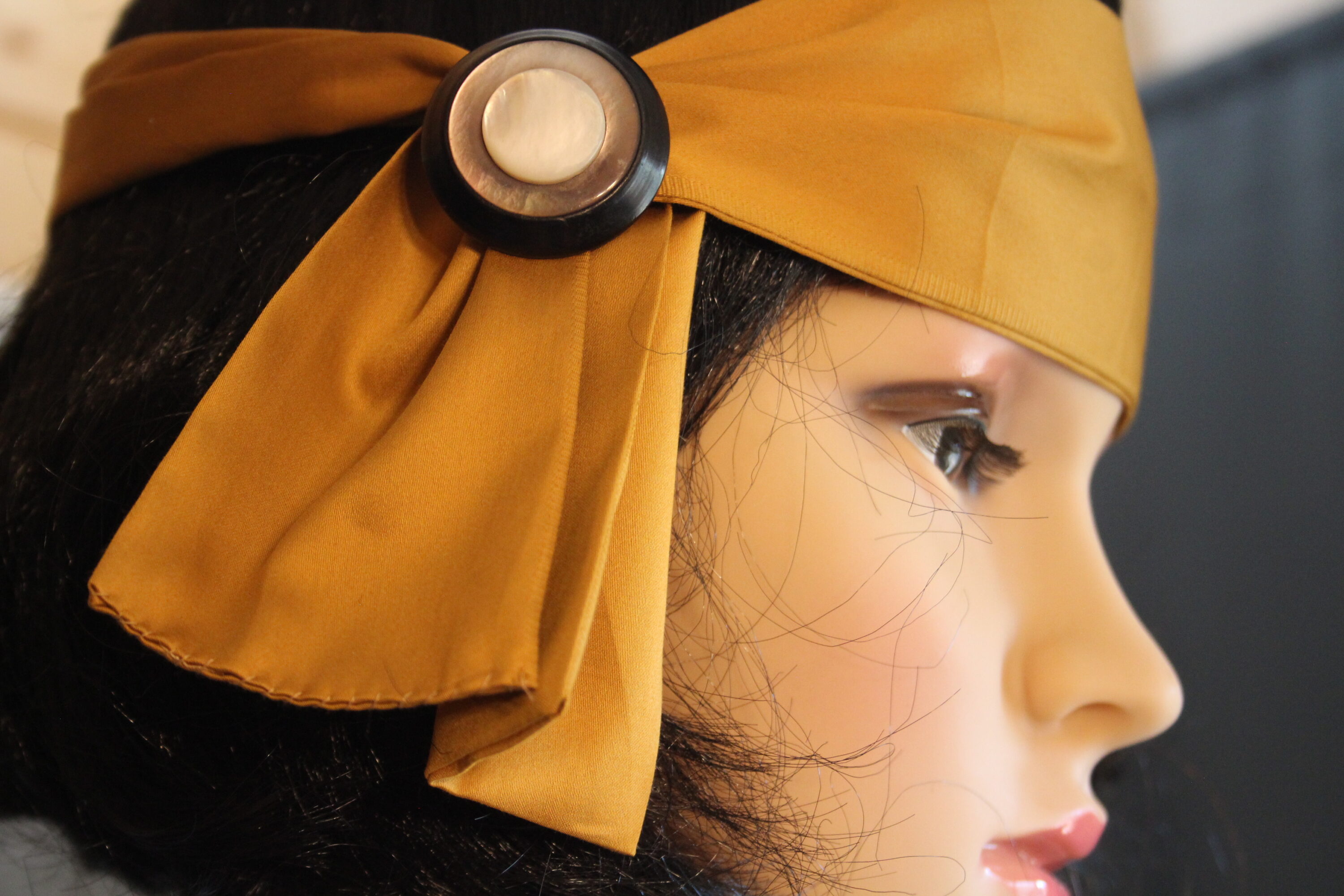
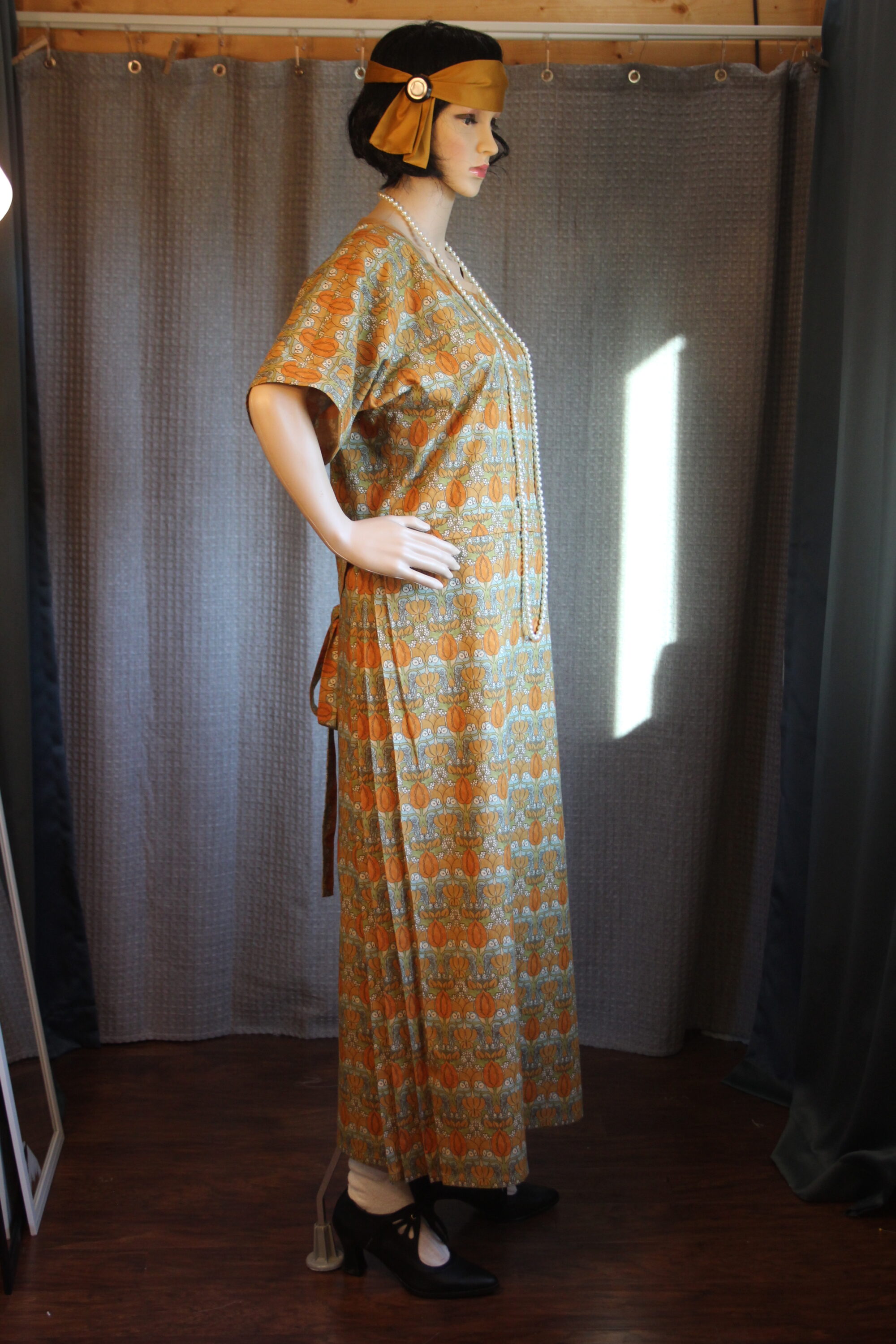
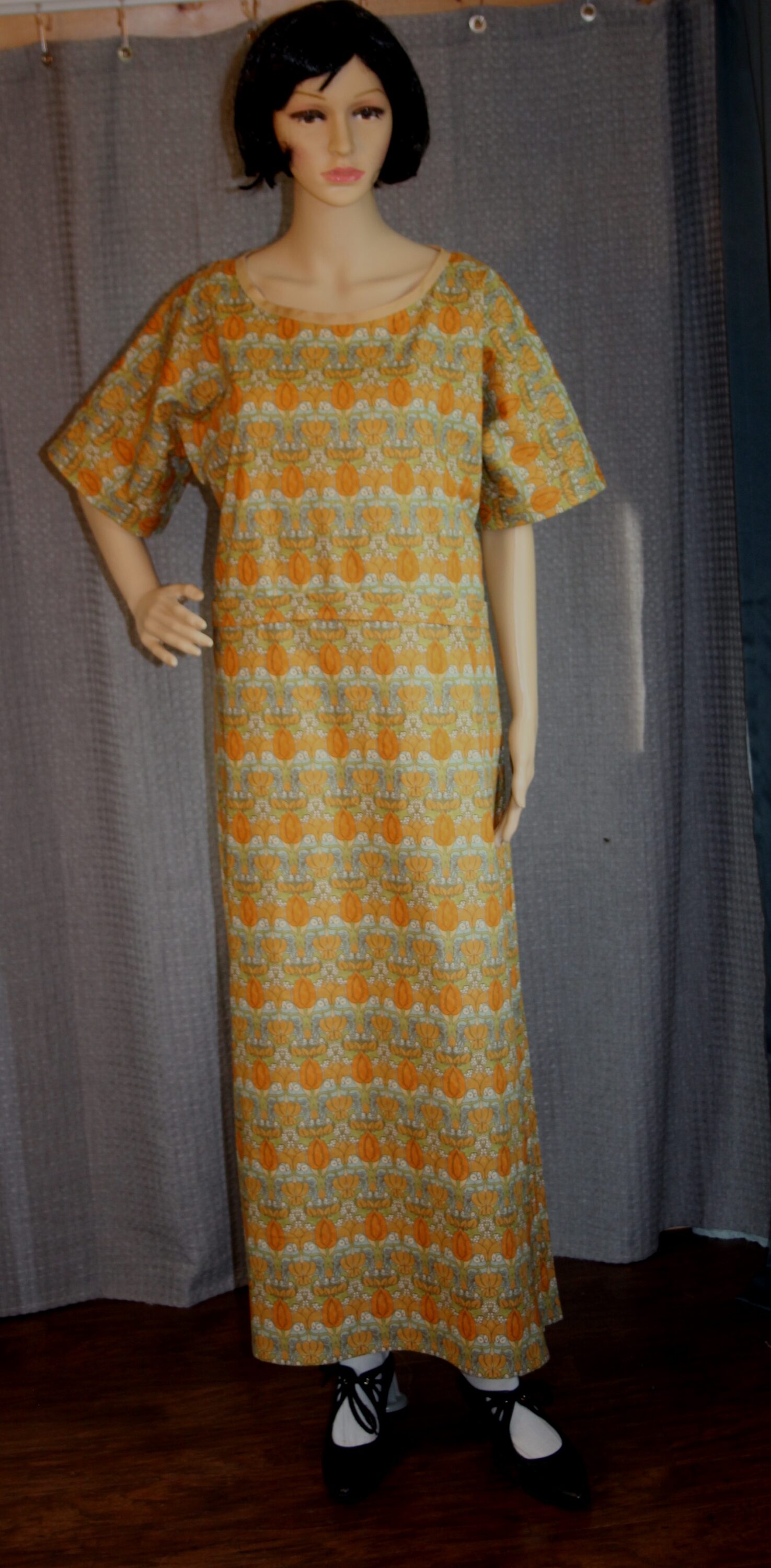

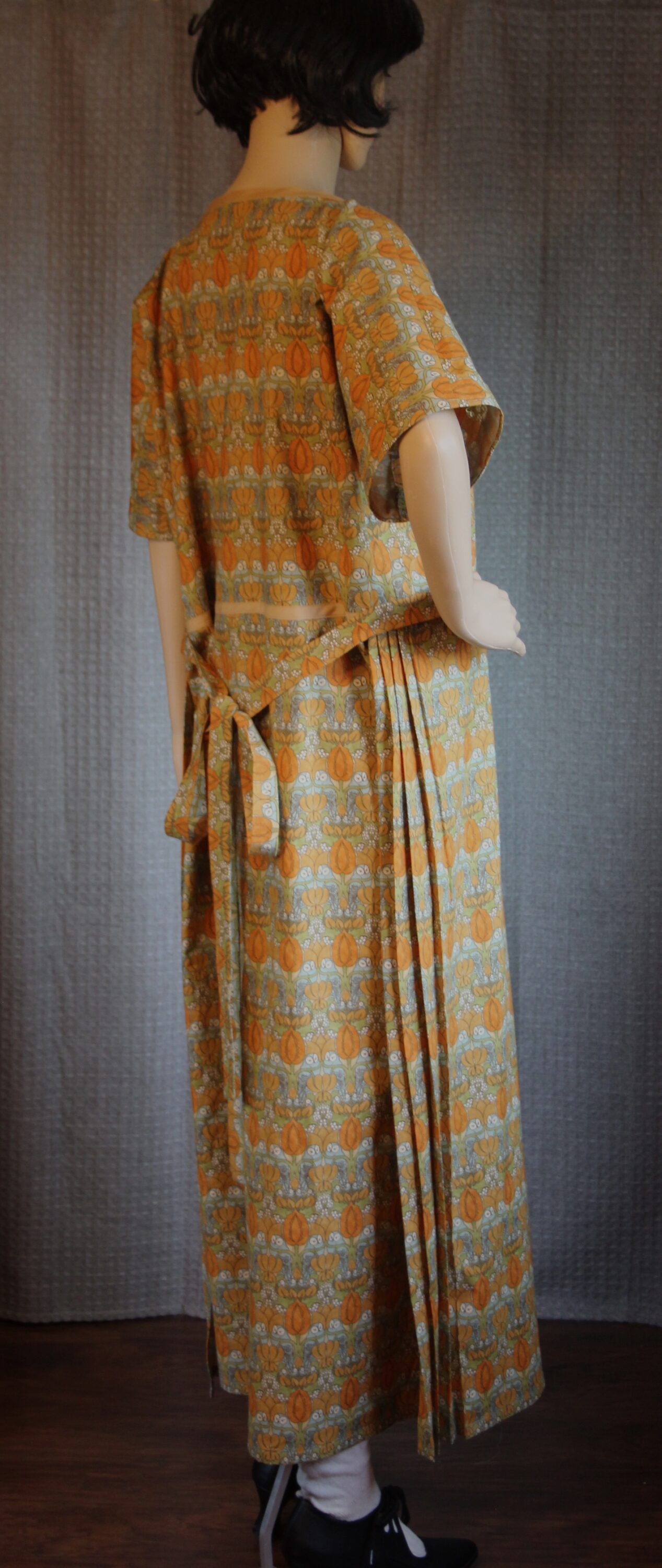
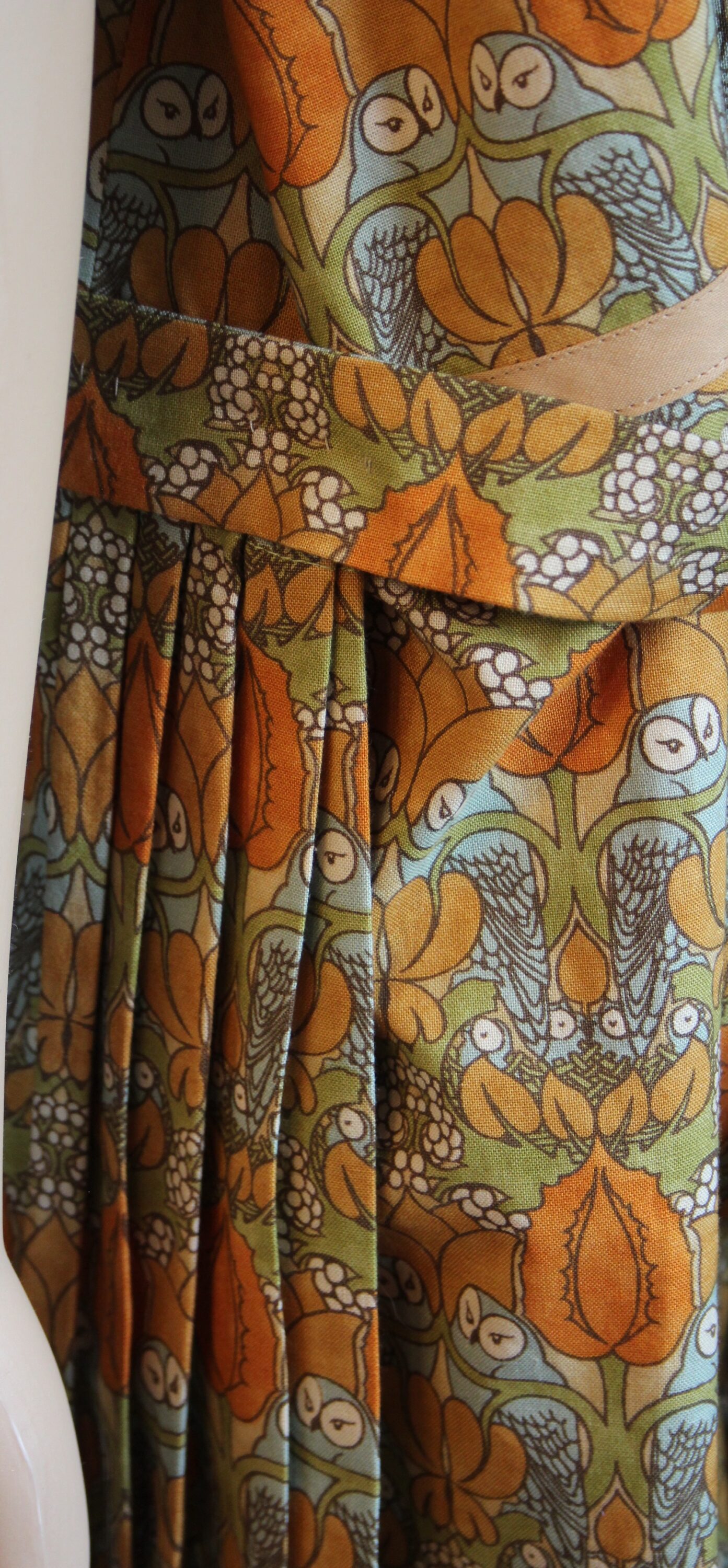
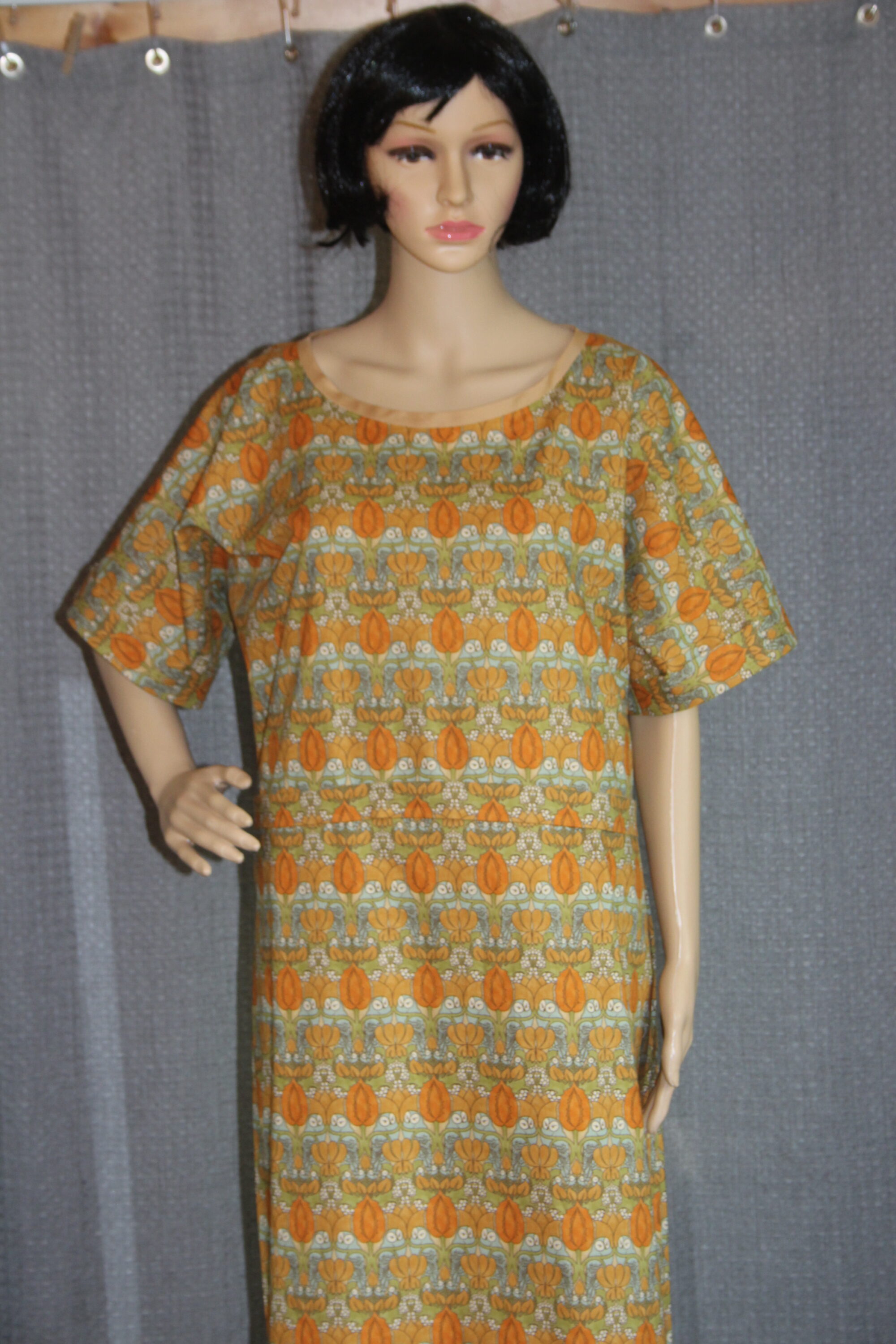
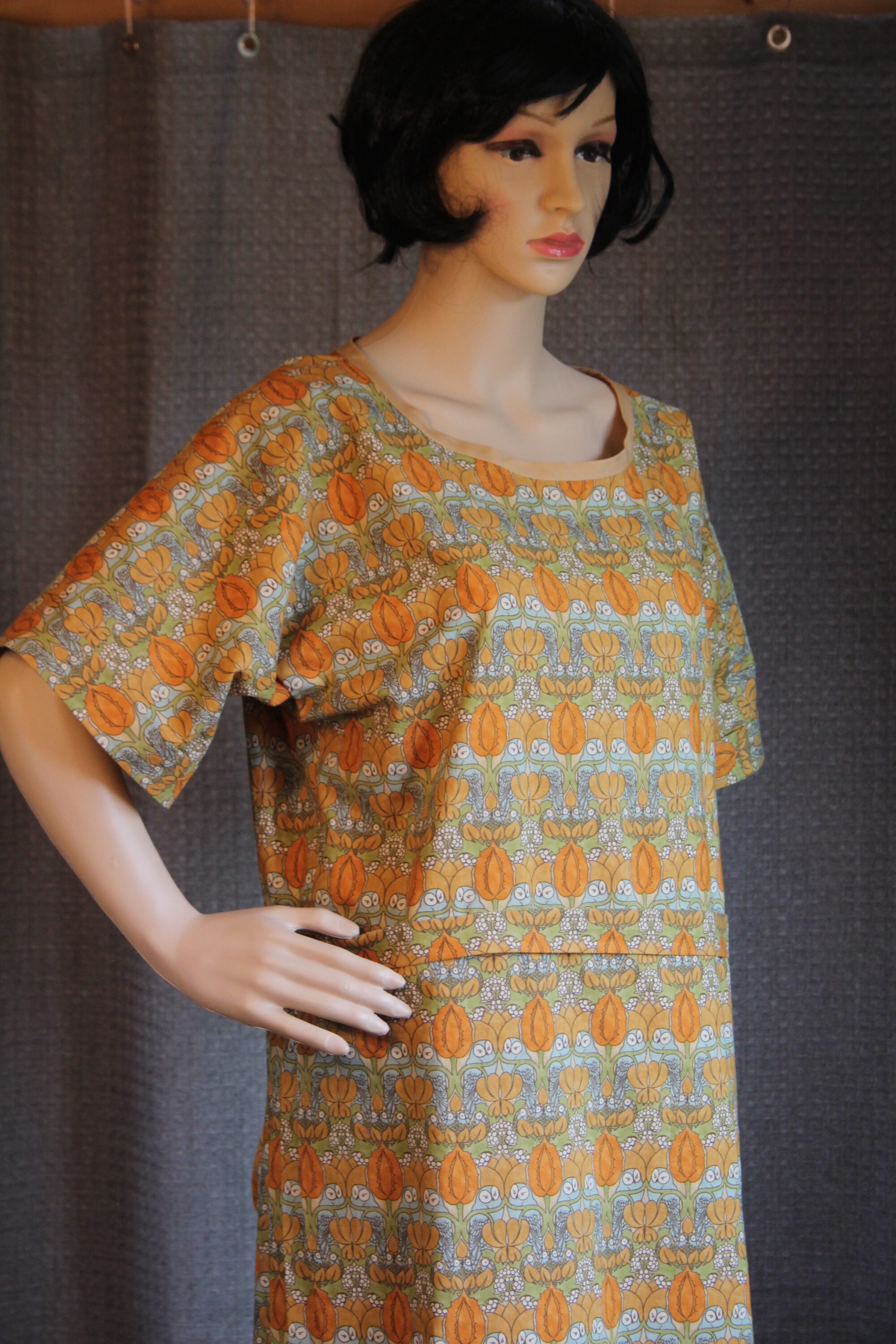
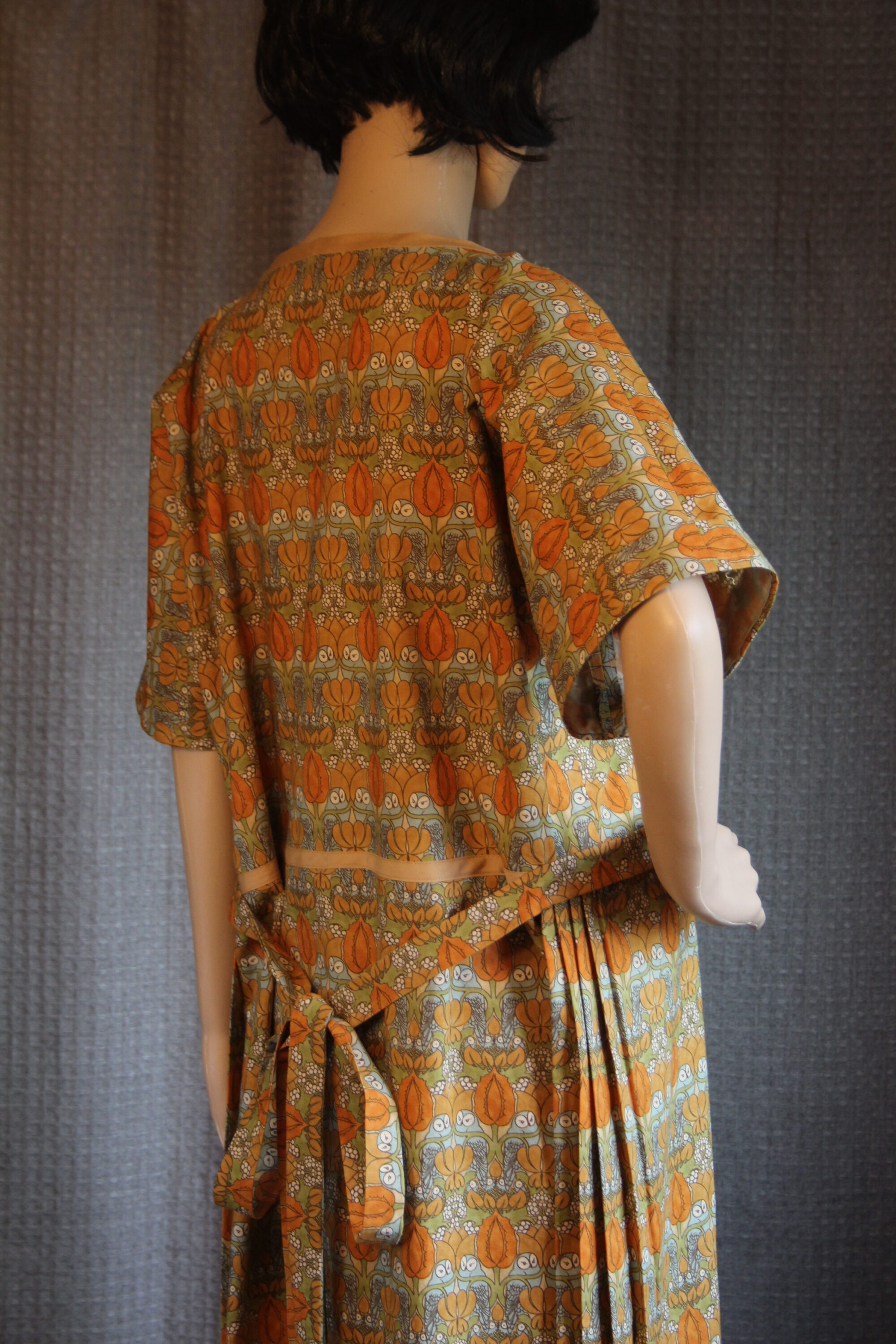
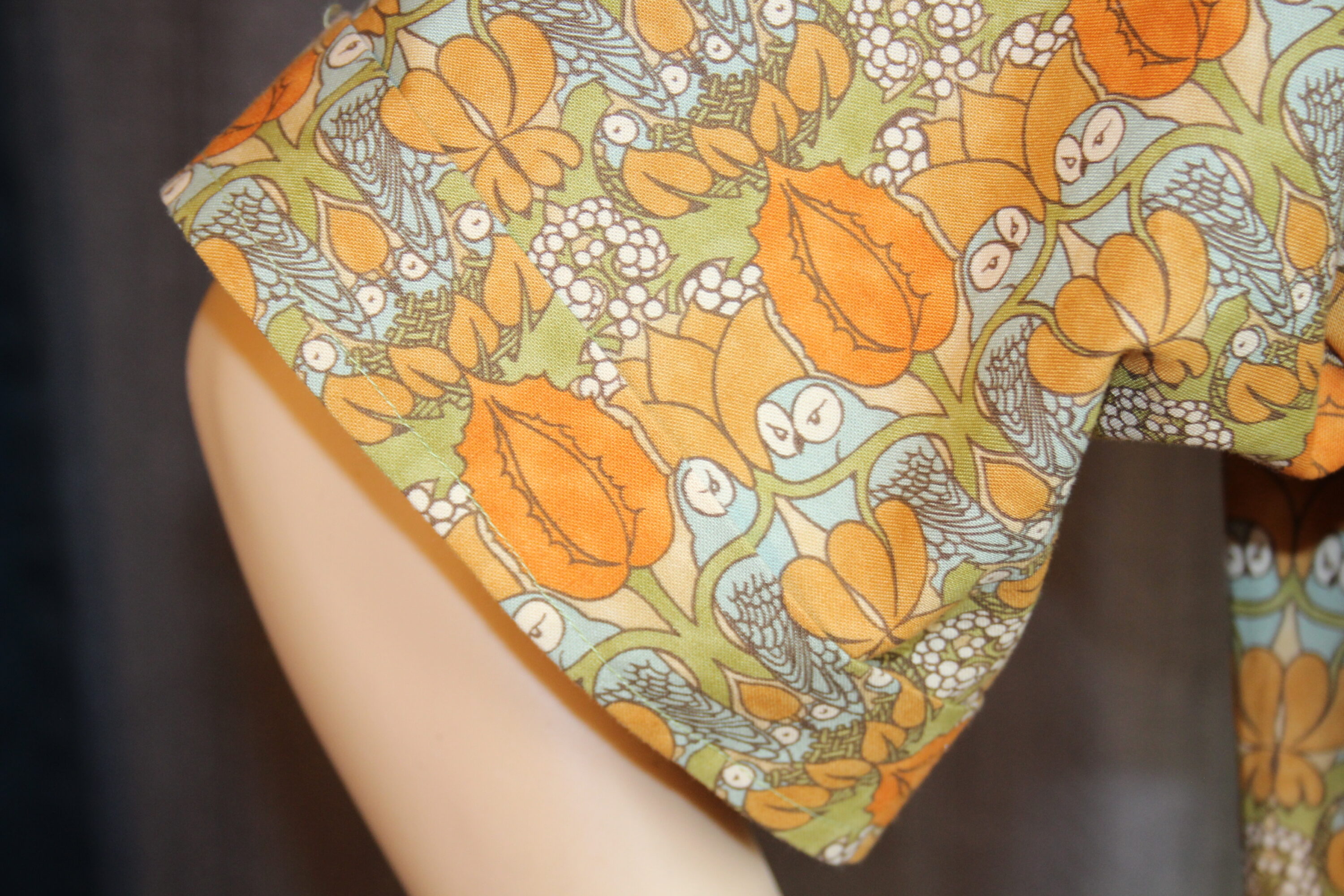
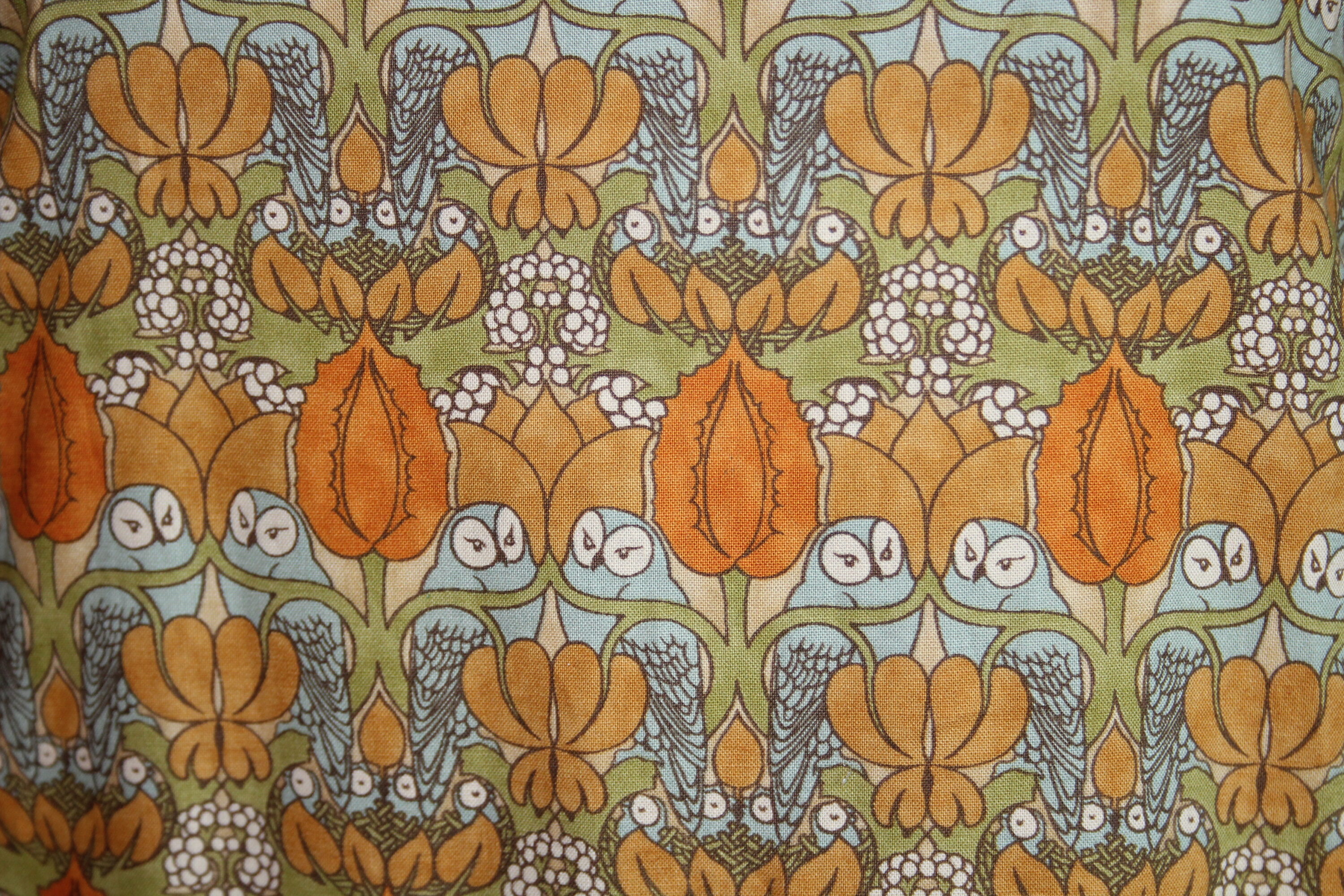
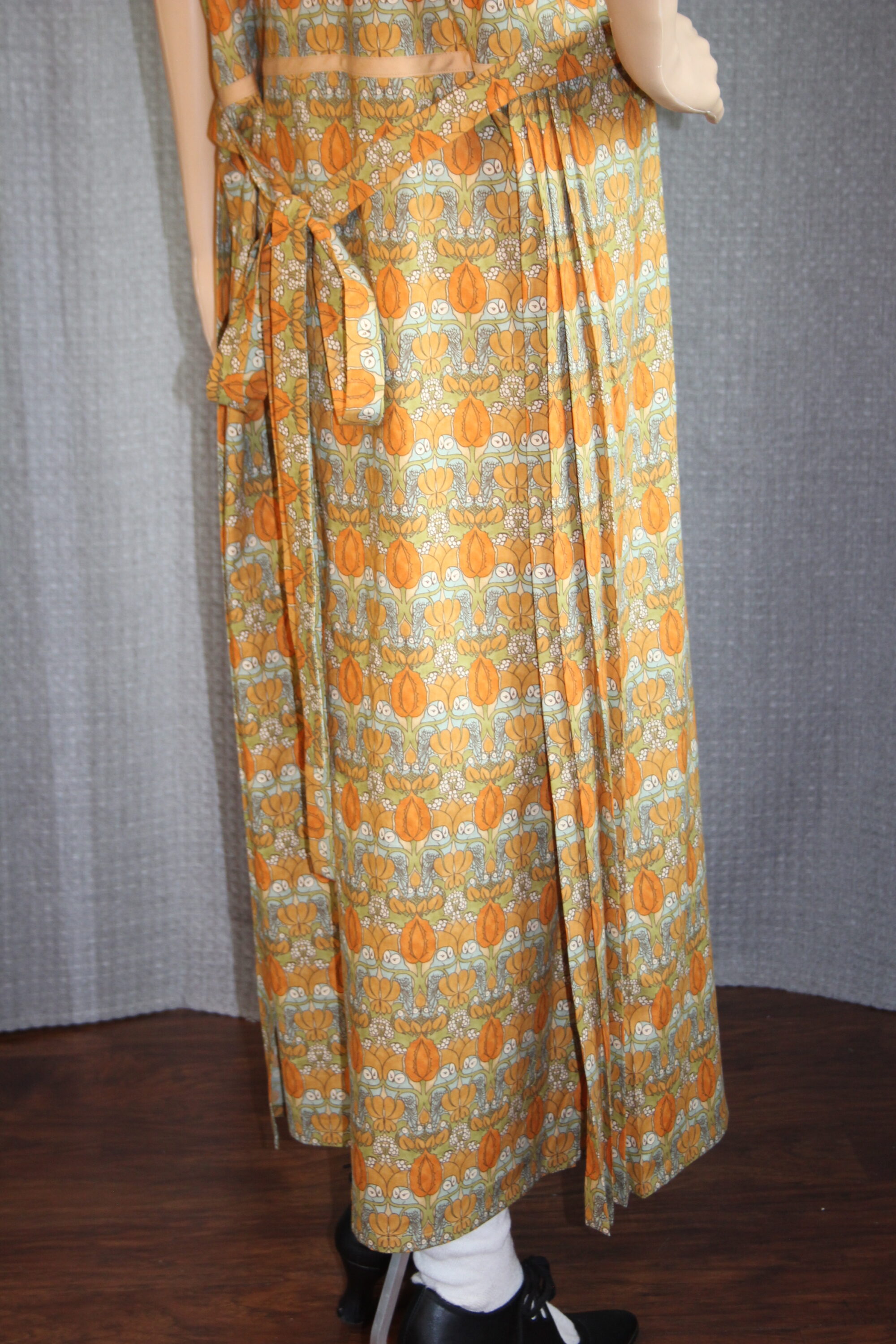
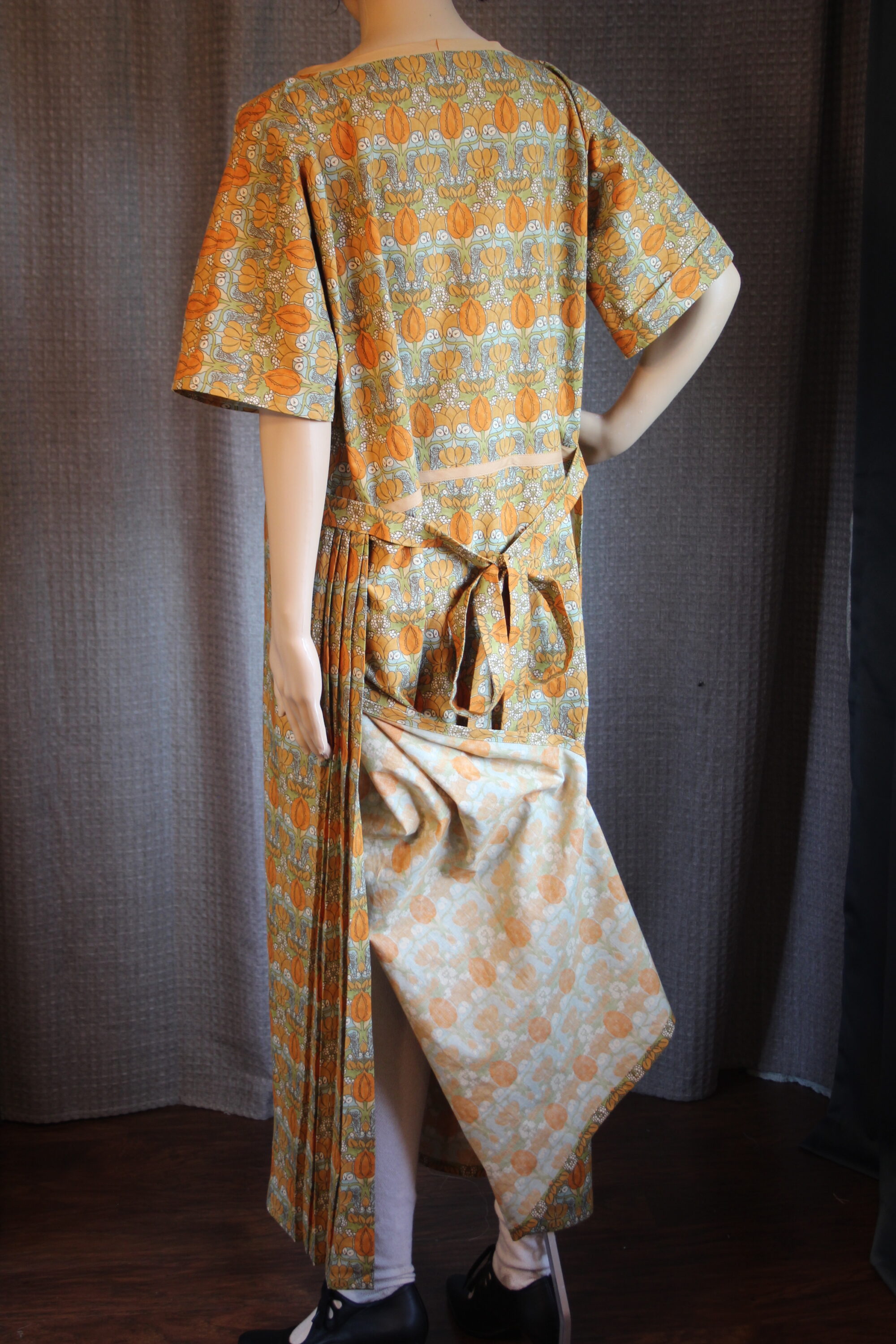
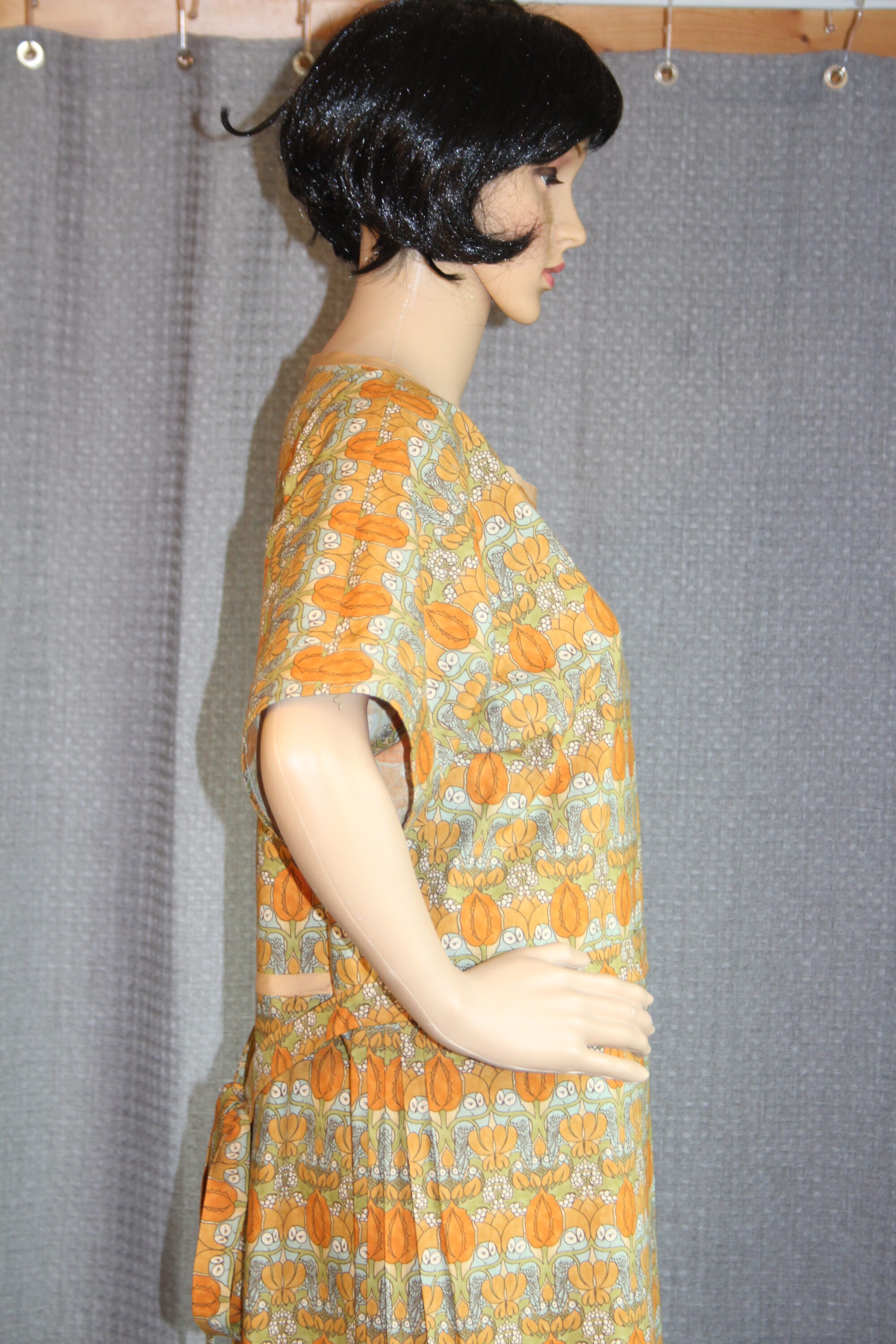
Boy’s Ensemble
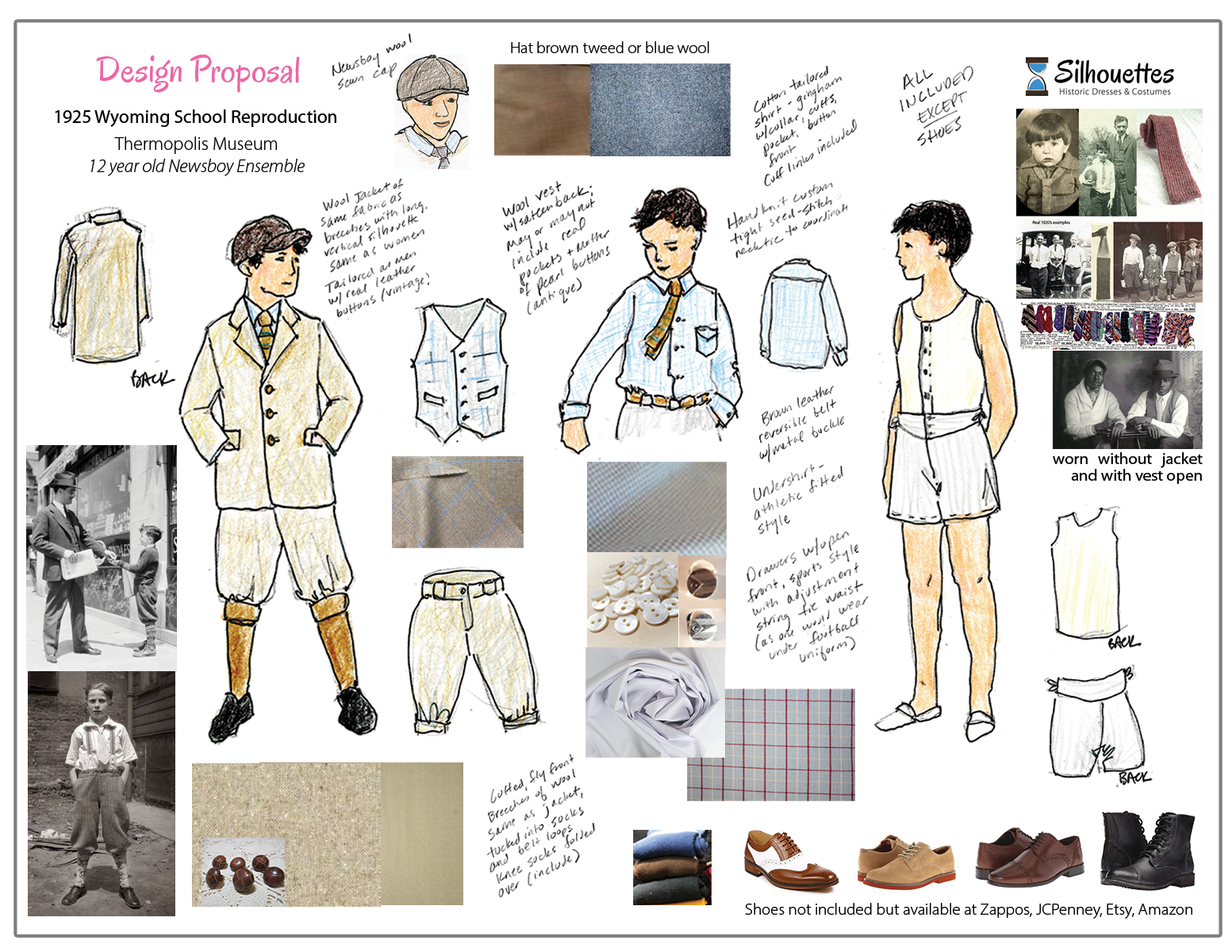
Undershirt
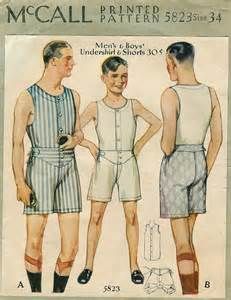
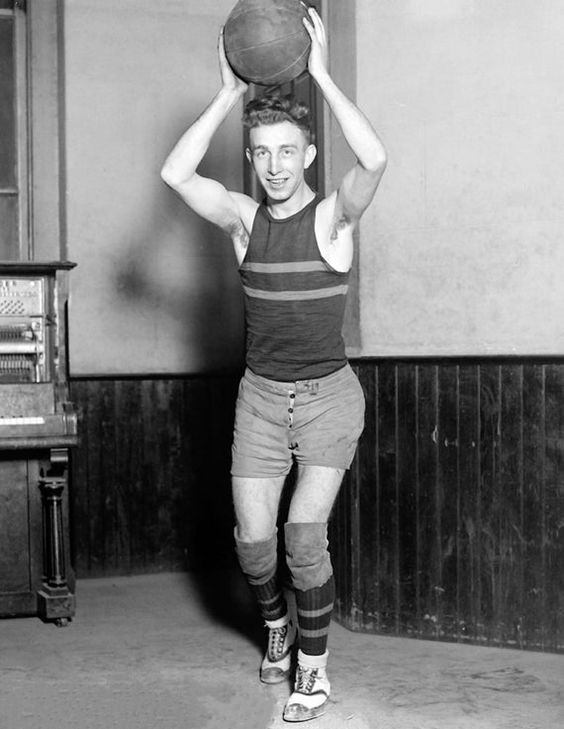
The 12 year old boy’s undergarments are what a boy in 1925 would have worn under his athletic apparel such as a football or basketball uniform. The undershirt has splits over the hips for full leg movement, is somewhat fitted through the neck and arms, and is long in the silhouette of the day and so it doesn’t pull out. It was always worn tucked in.
While many were cut on the bias or made from knit fabrics, this one is of organic 100% cotton muslin and features mother of pearl buttons.
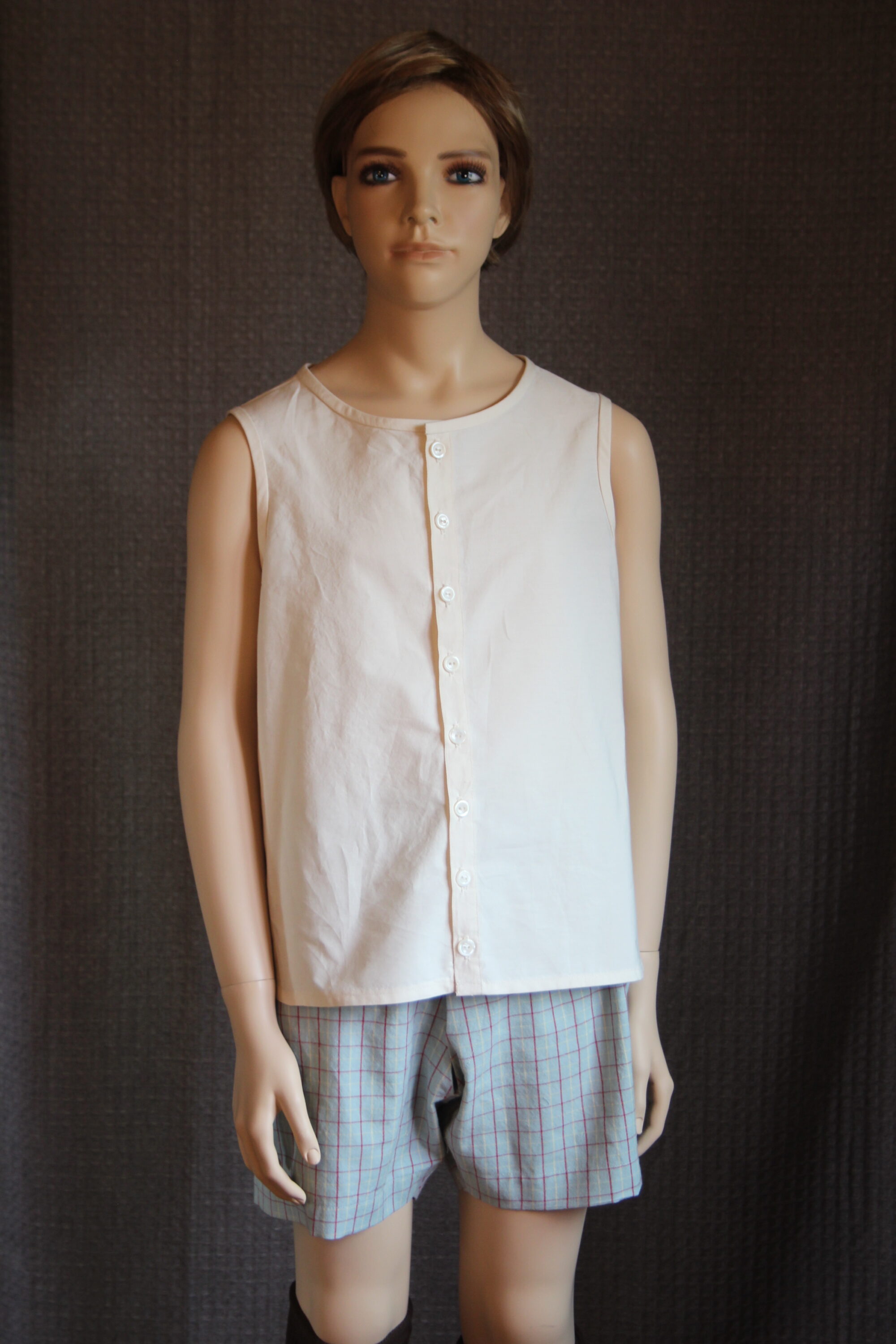
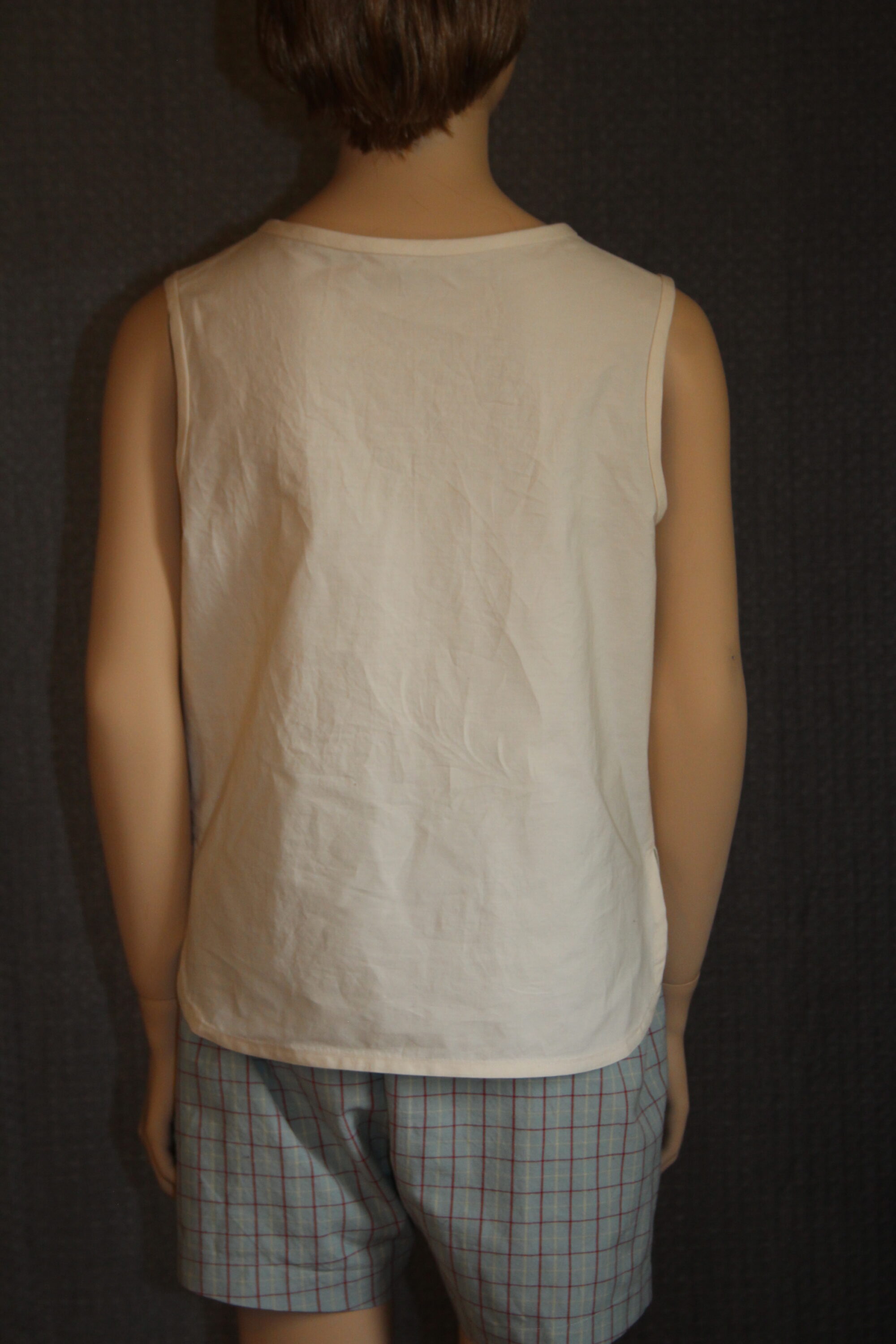
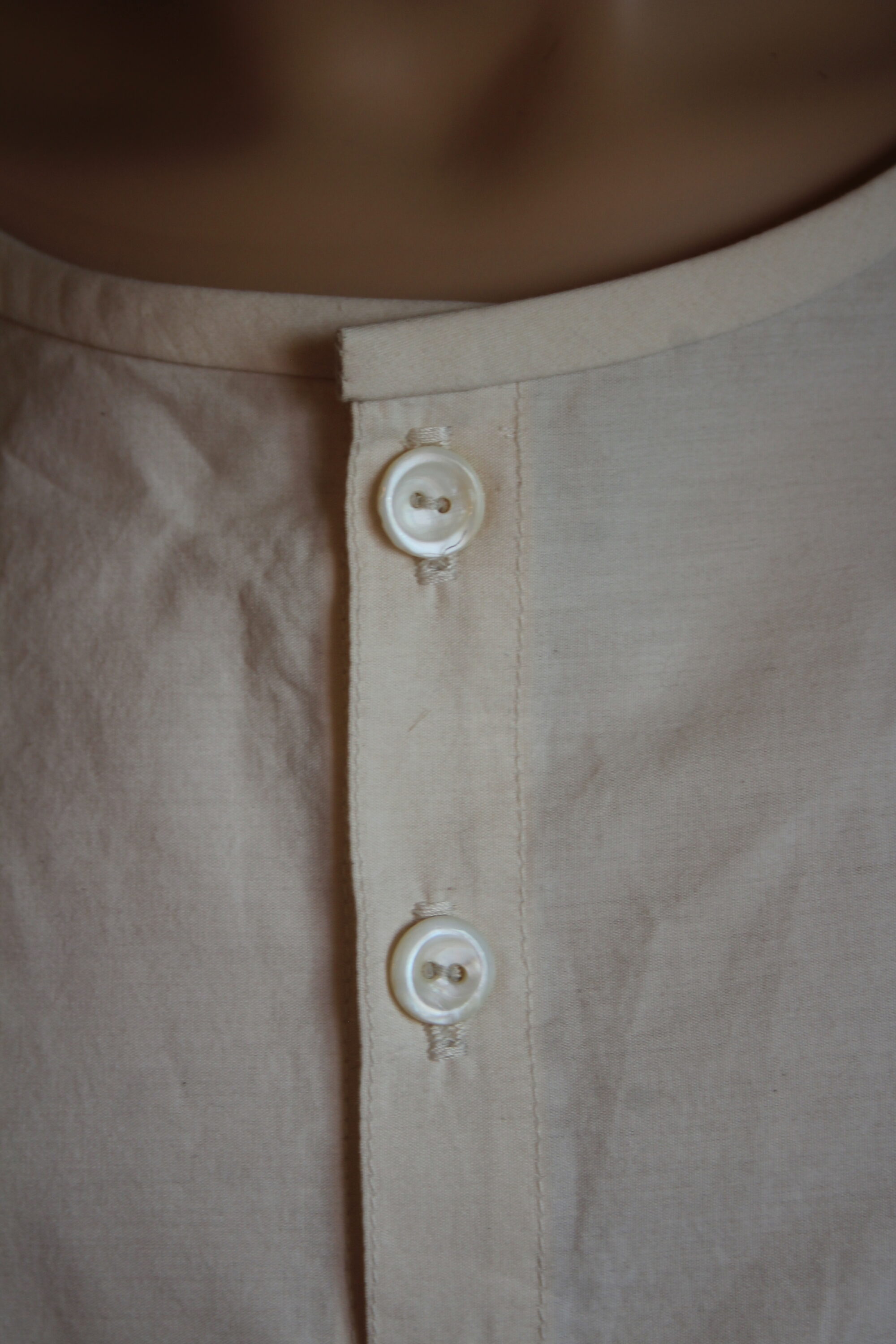
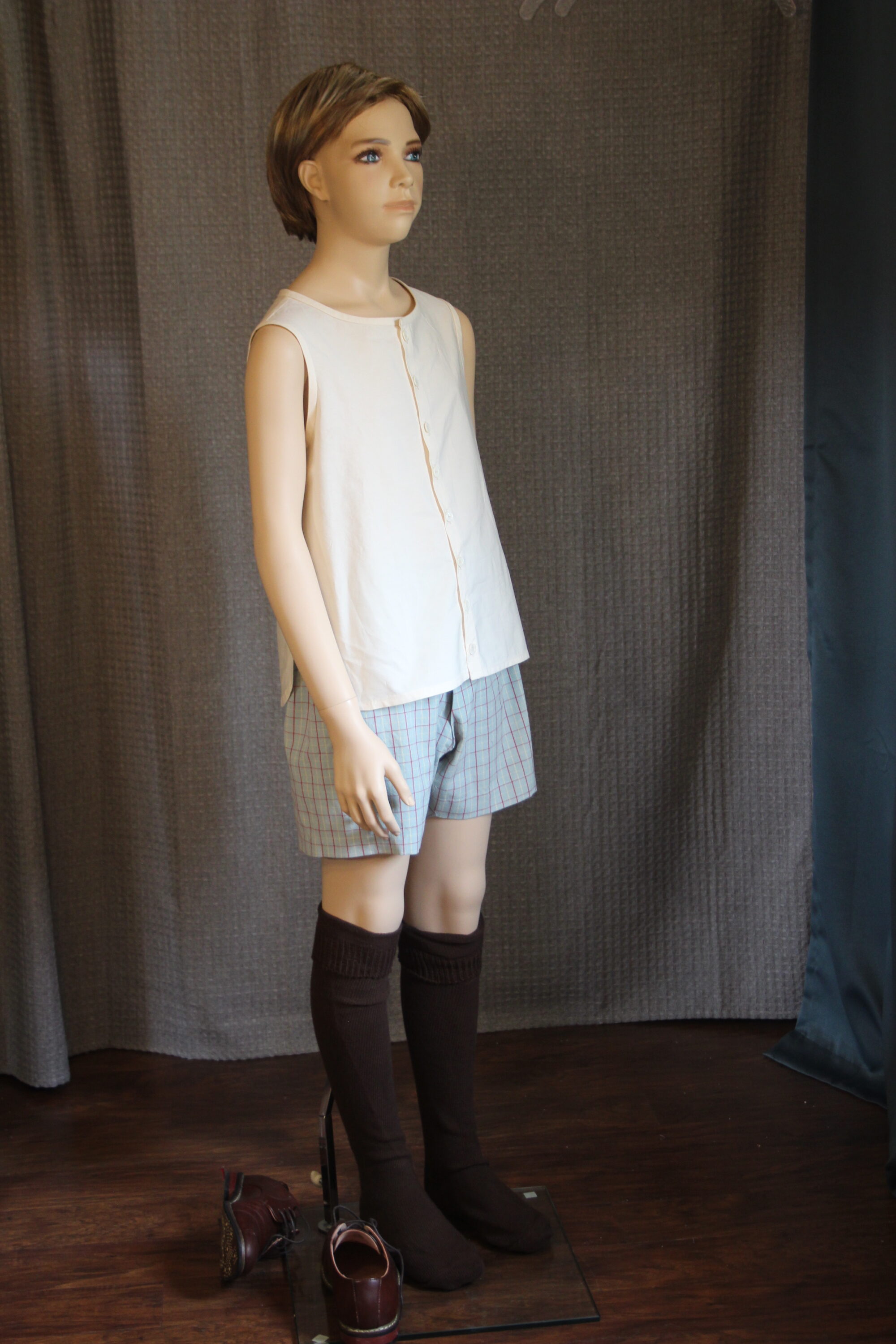
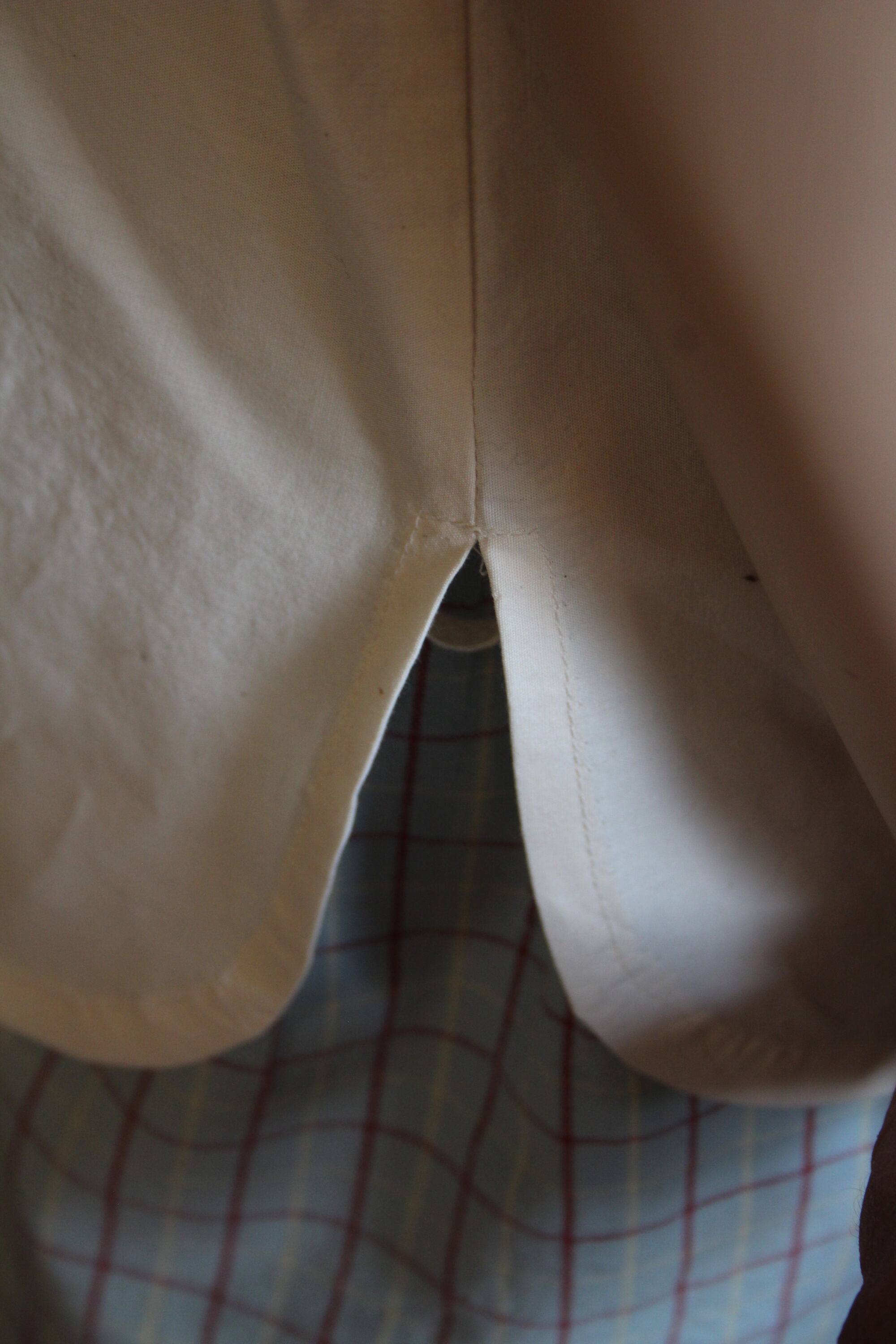
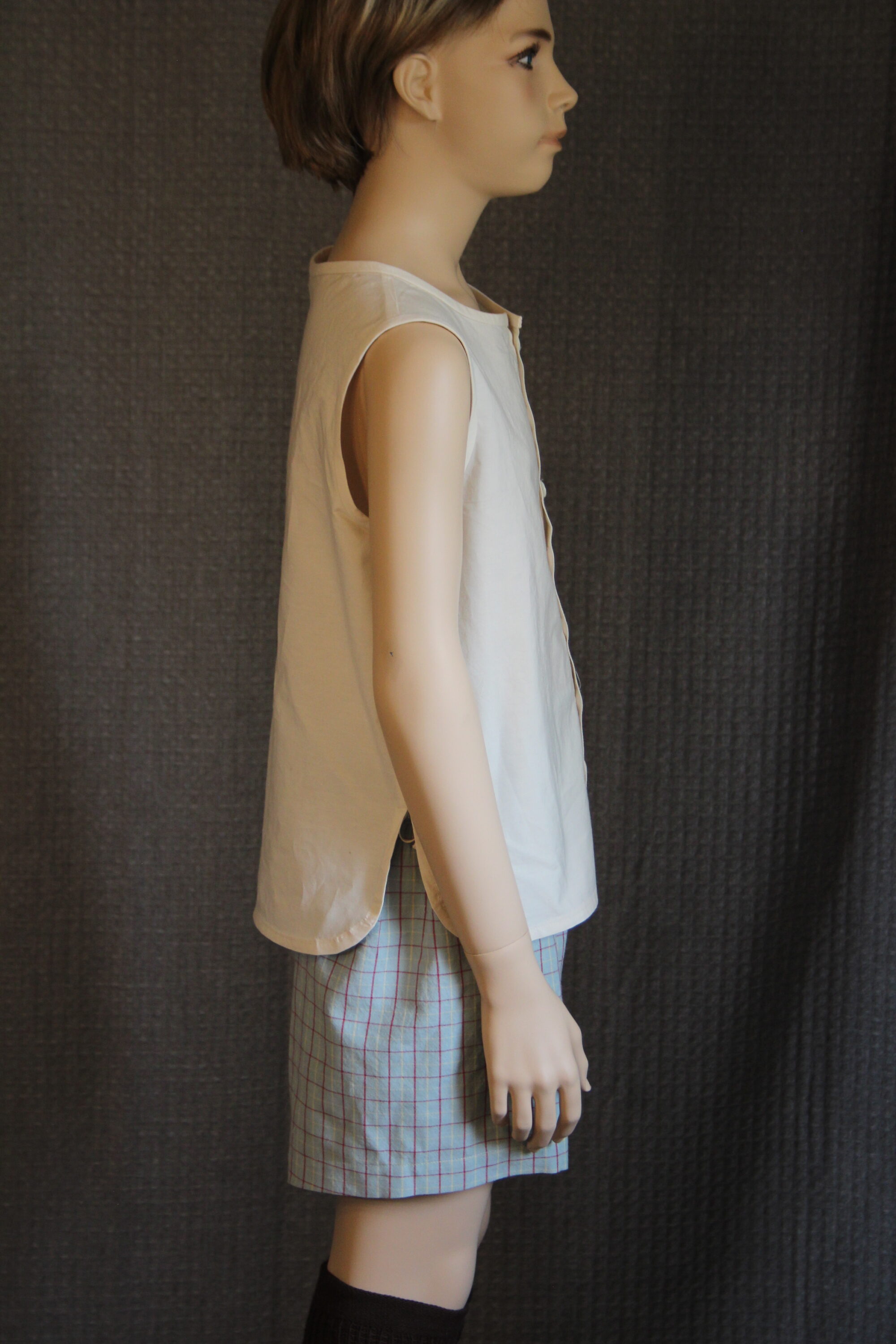
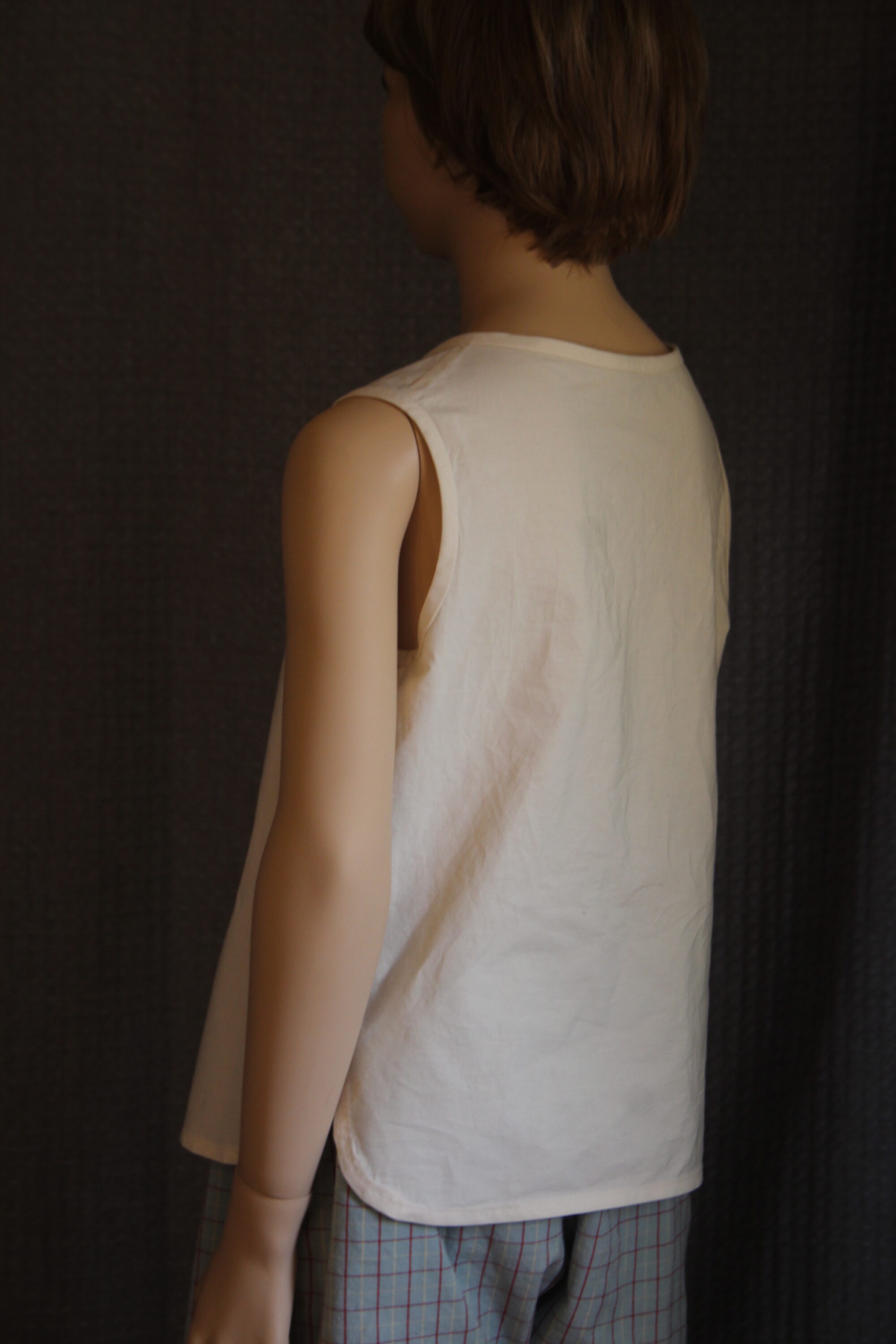
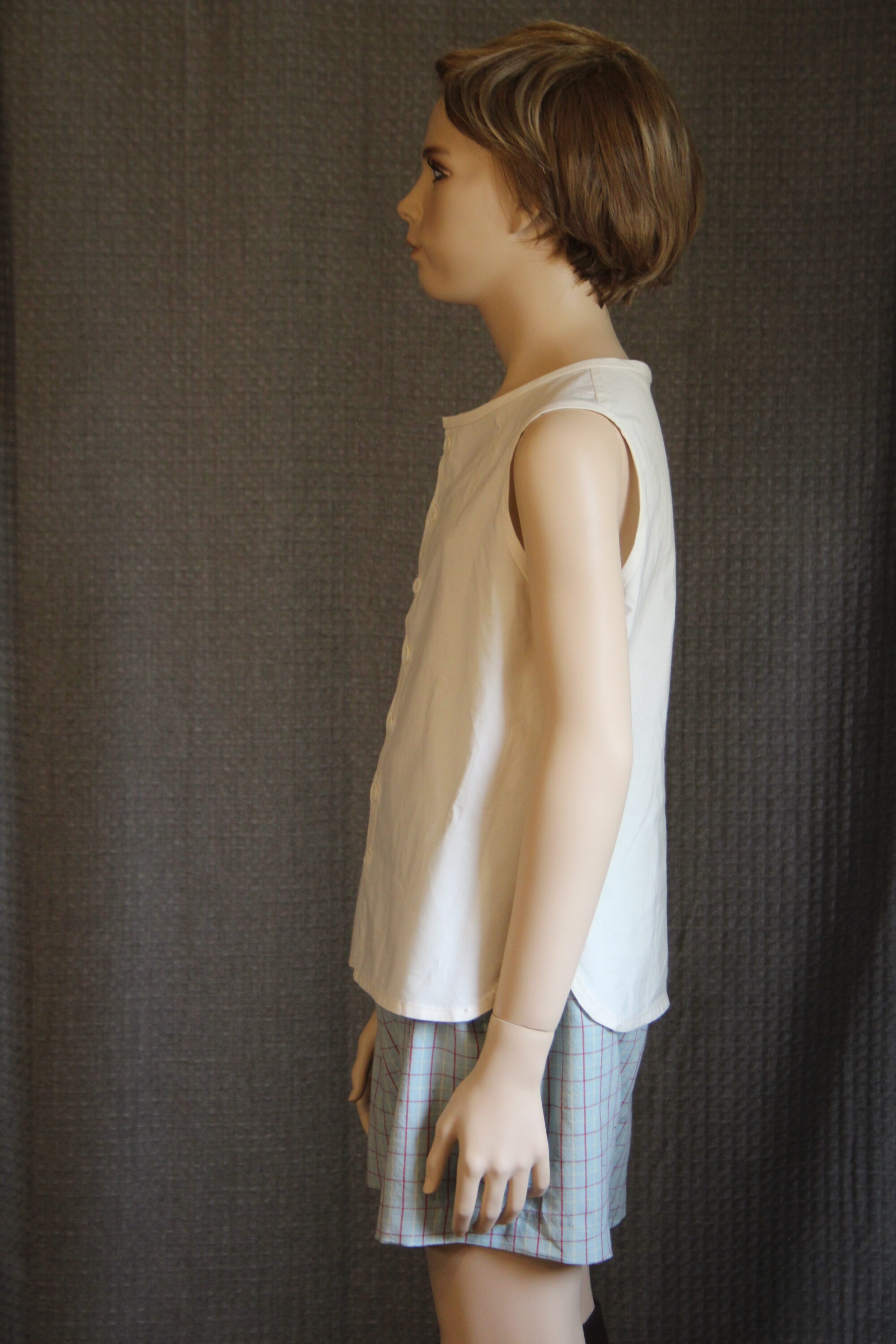
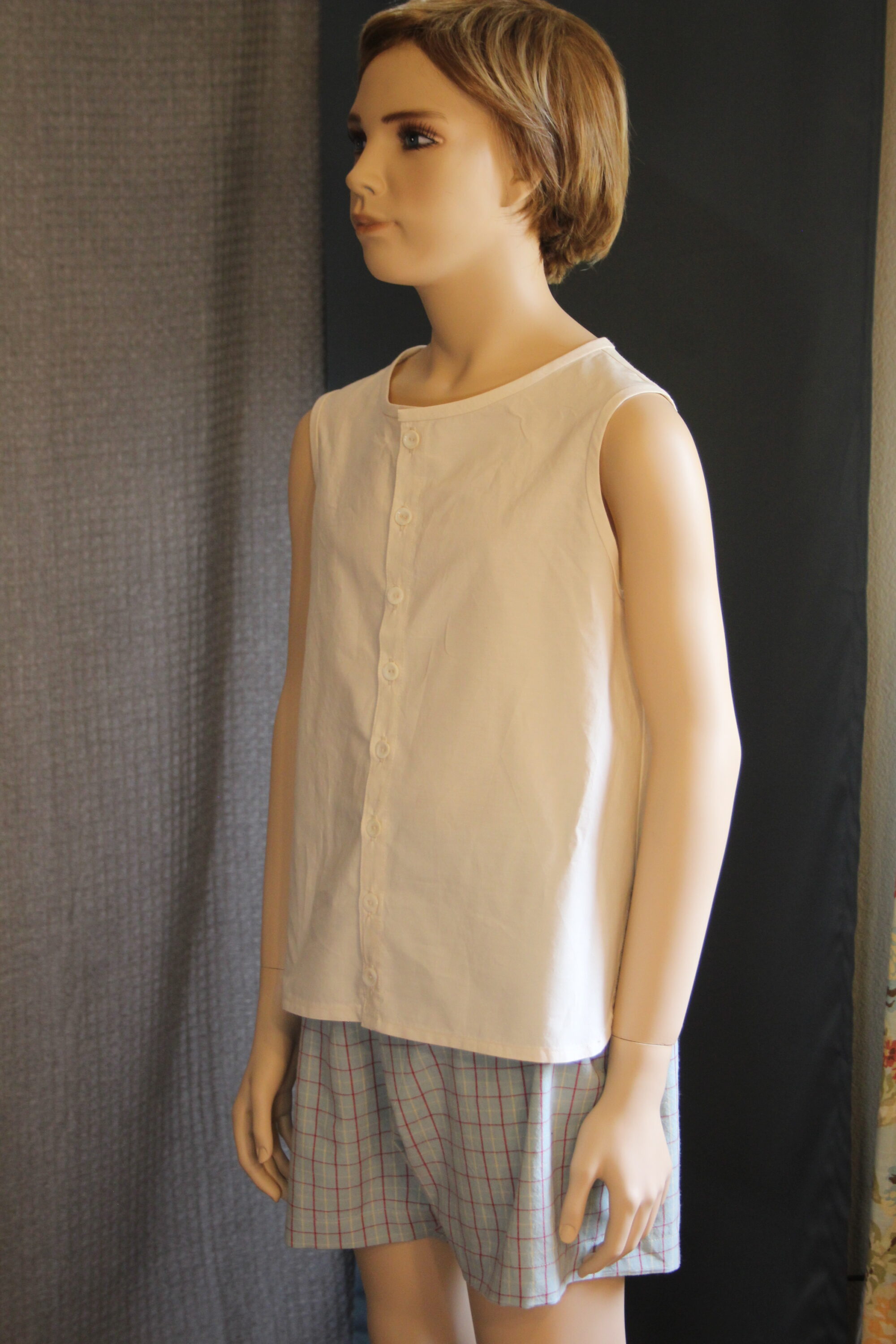
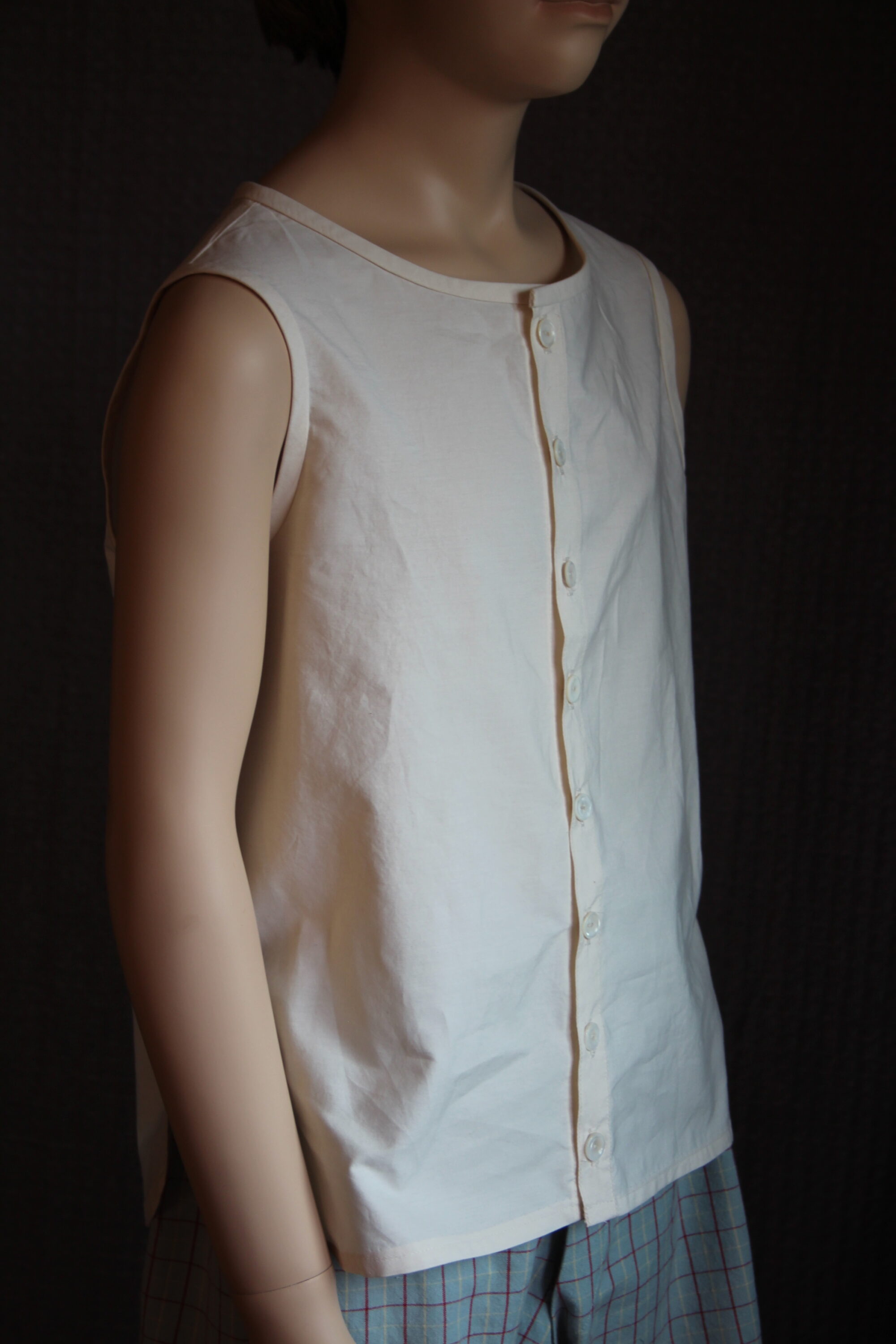
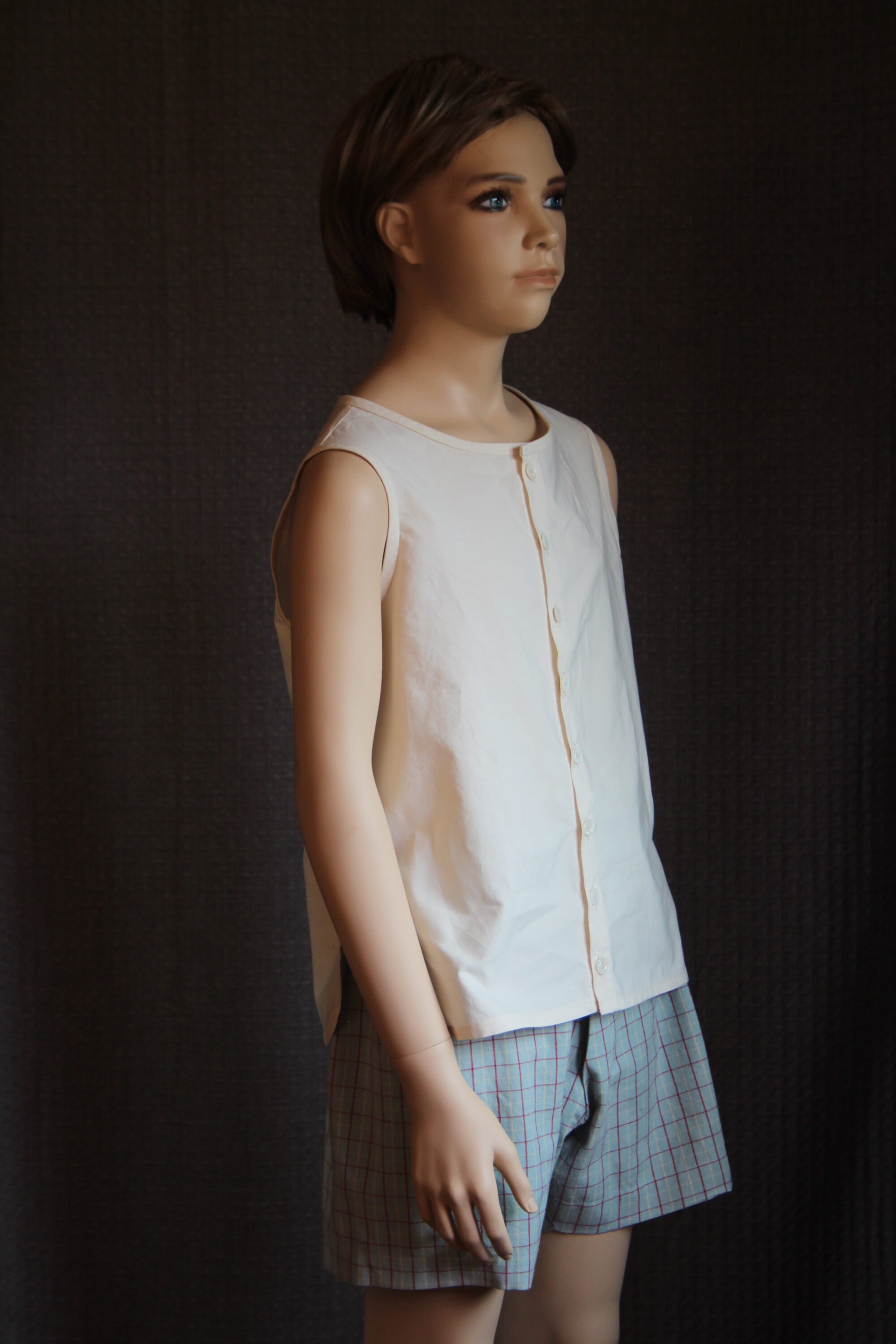
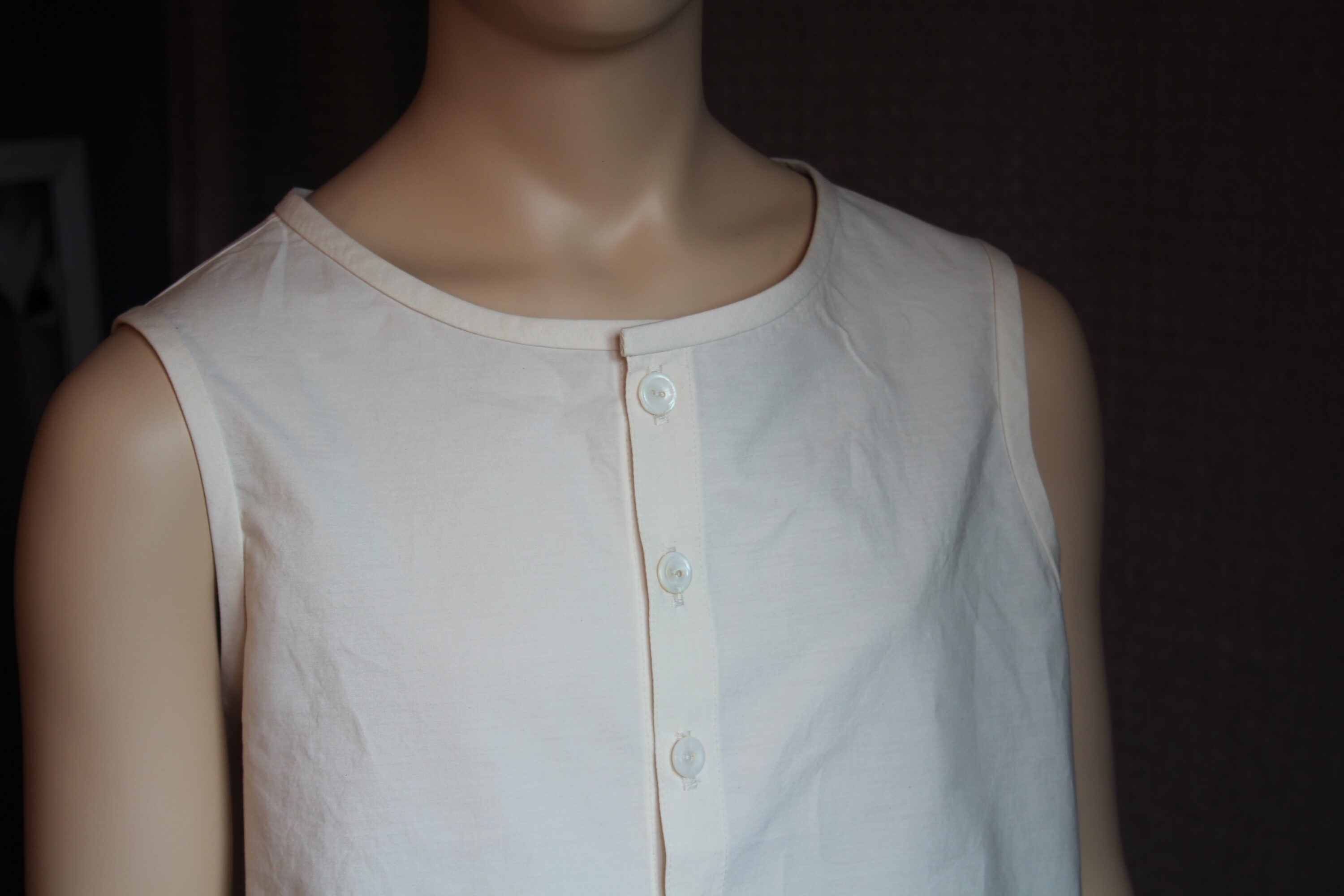
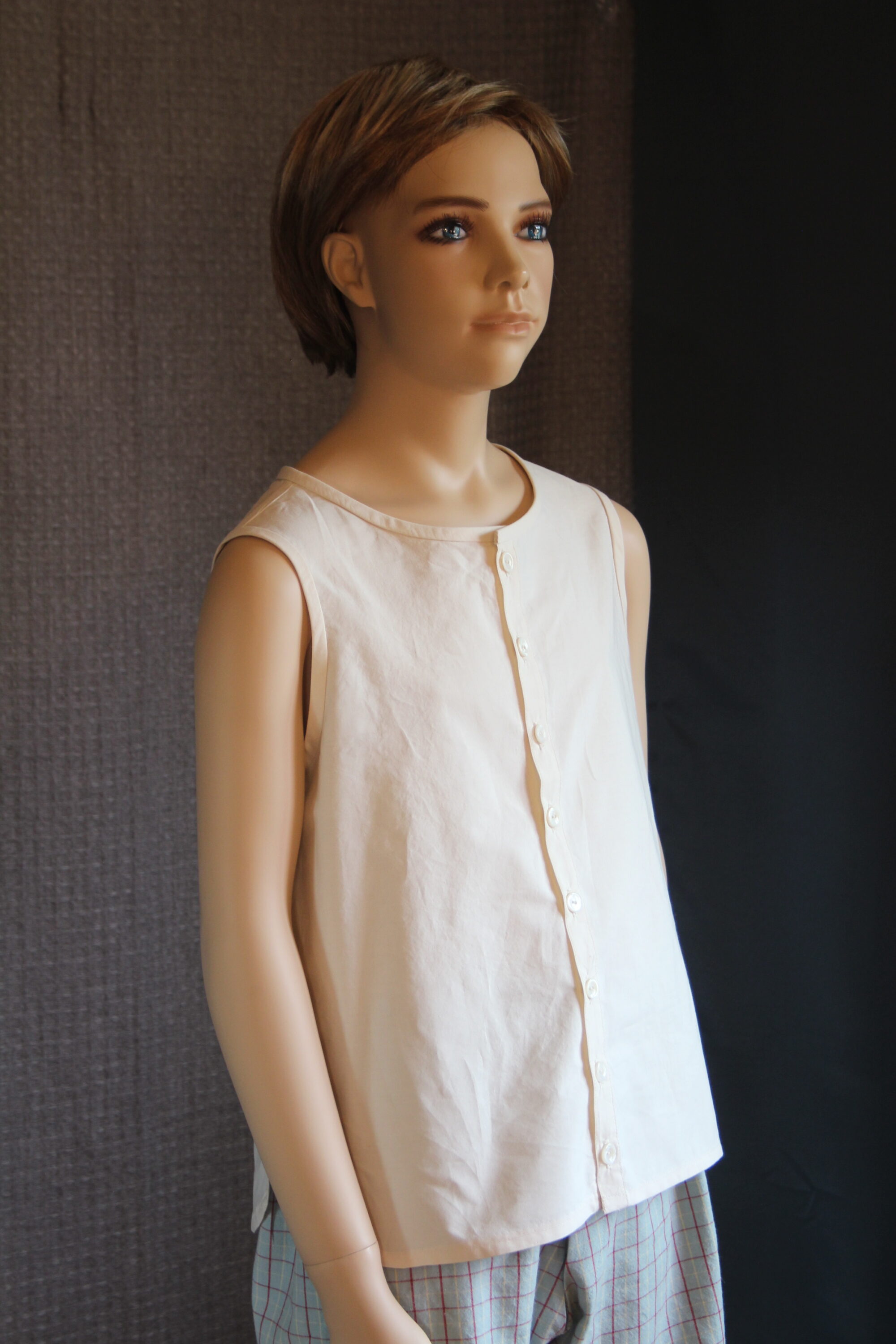
Shorts (Knicker UnderDrawers)
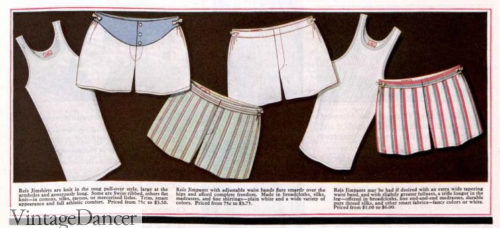
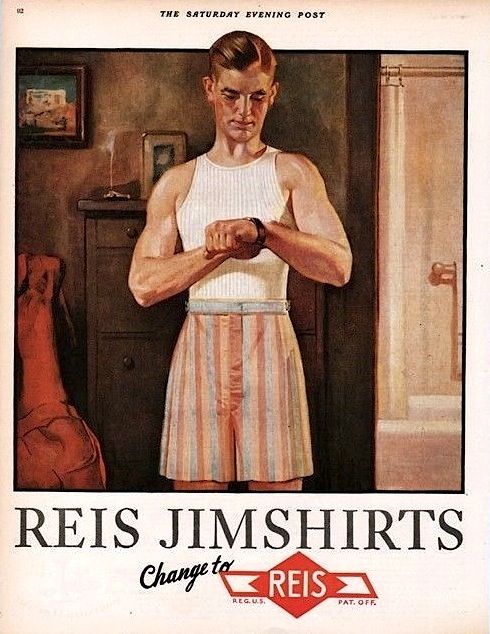
These are made large in the waist with a double waistband that is straight on the inside for support, and dips low in front and back to keep the smooth lines of the ideal man at the time.
Made of 100% cotton flannel check, checks and stripes being the most popular at the time, it features mother of pearl buttons and string ties to cinch it in at the sides. Silhouettes sews exclusively for women, so the structure of the facings and shape of the groin area were a challenge for us. It is supposed to “tip” a bit out from the bottom of the waist, but the vintage 1925 pattern was very wee on instructions or illustrations and had no pattern markings, so this is the best we could do from extant garments and period advertisements.
These and the undershirt are a bit big for the mannequin who is on the smaller size of age 12 (patterns were sized by age not measurements), but since it may also be worn by a docent child, this whole ensemble will fit a more round boy too. The cup area is made flexible so we would suppose a boy might put an athletic protector in the “pocket” the pattern had us build. Frankly, we didn’t understand any of this construction, and are glad it’s over and it looks OK, even if it seems a bit bulky and big to us.
It does regardless look just like the ads and the mannequin is very handsome. At least he’s not naked in the workshop any more. The test will be if they give the shape and support and protection needed under the wool knickers they are worn under. The shirt will most certainly stay tucked in!
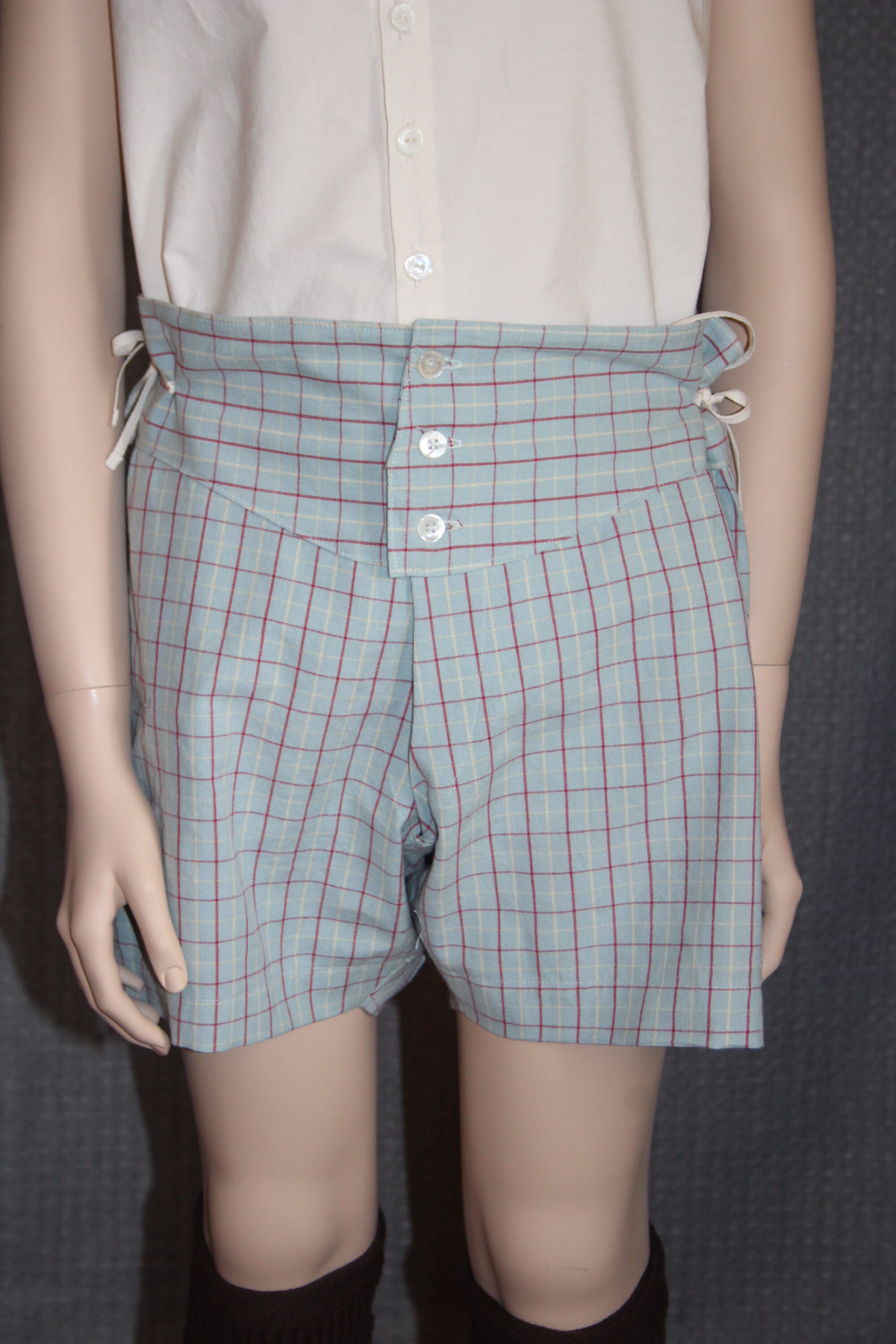
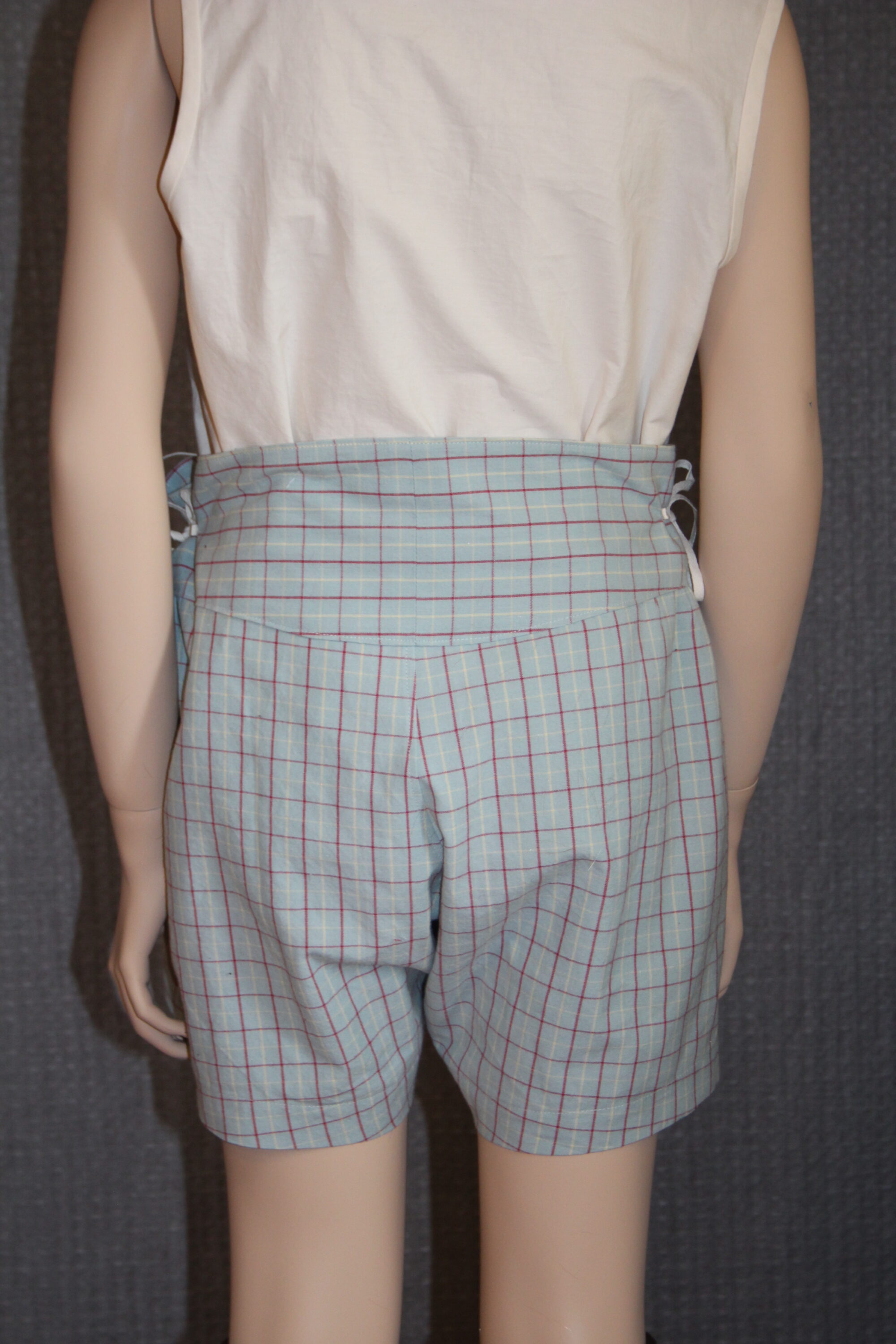
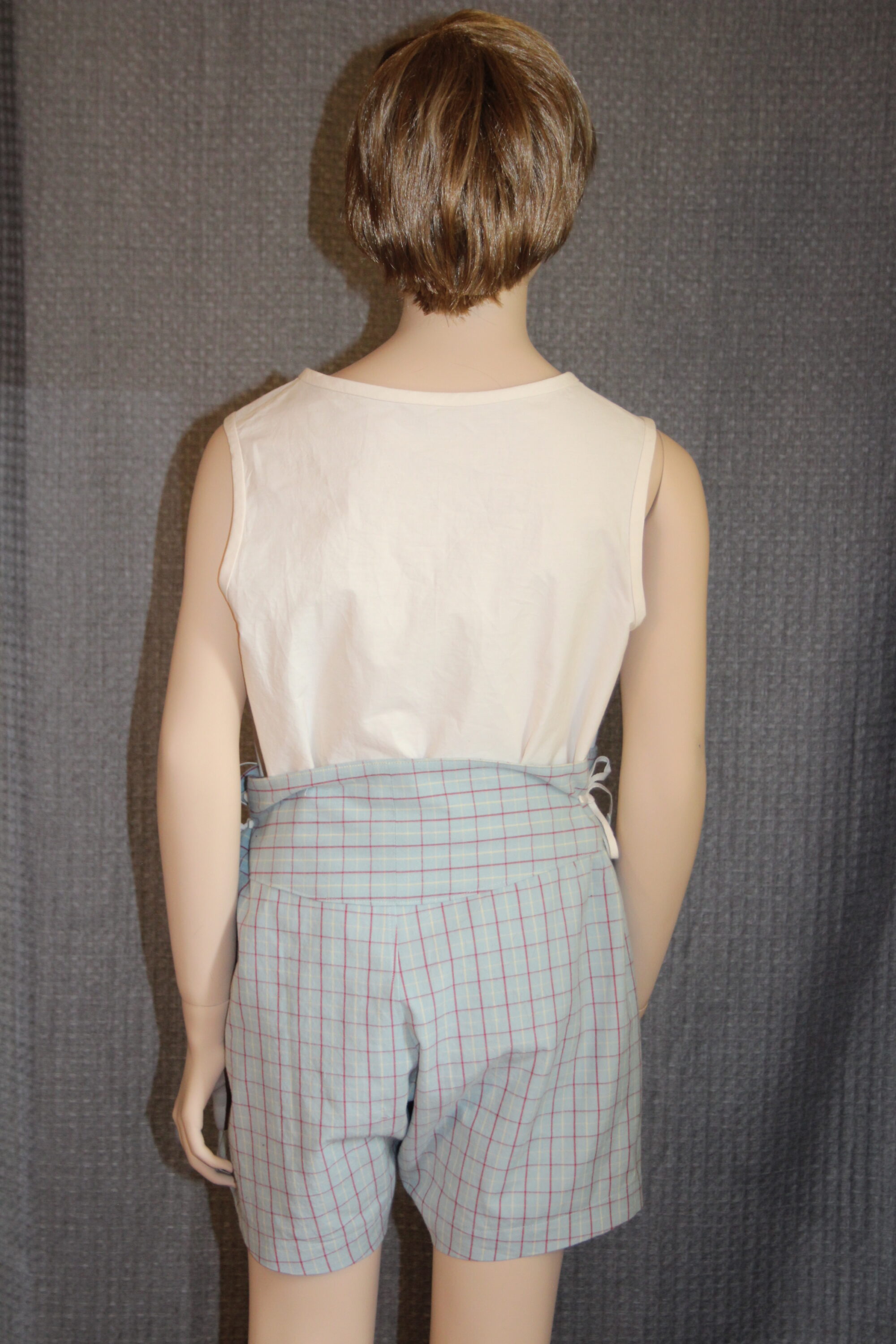

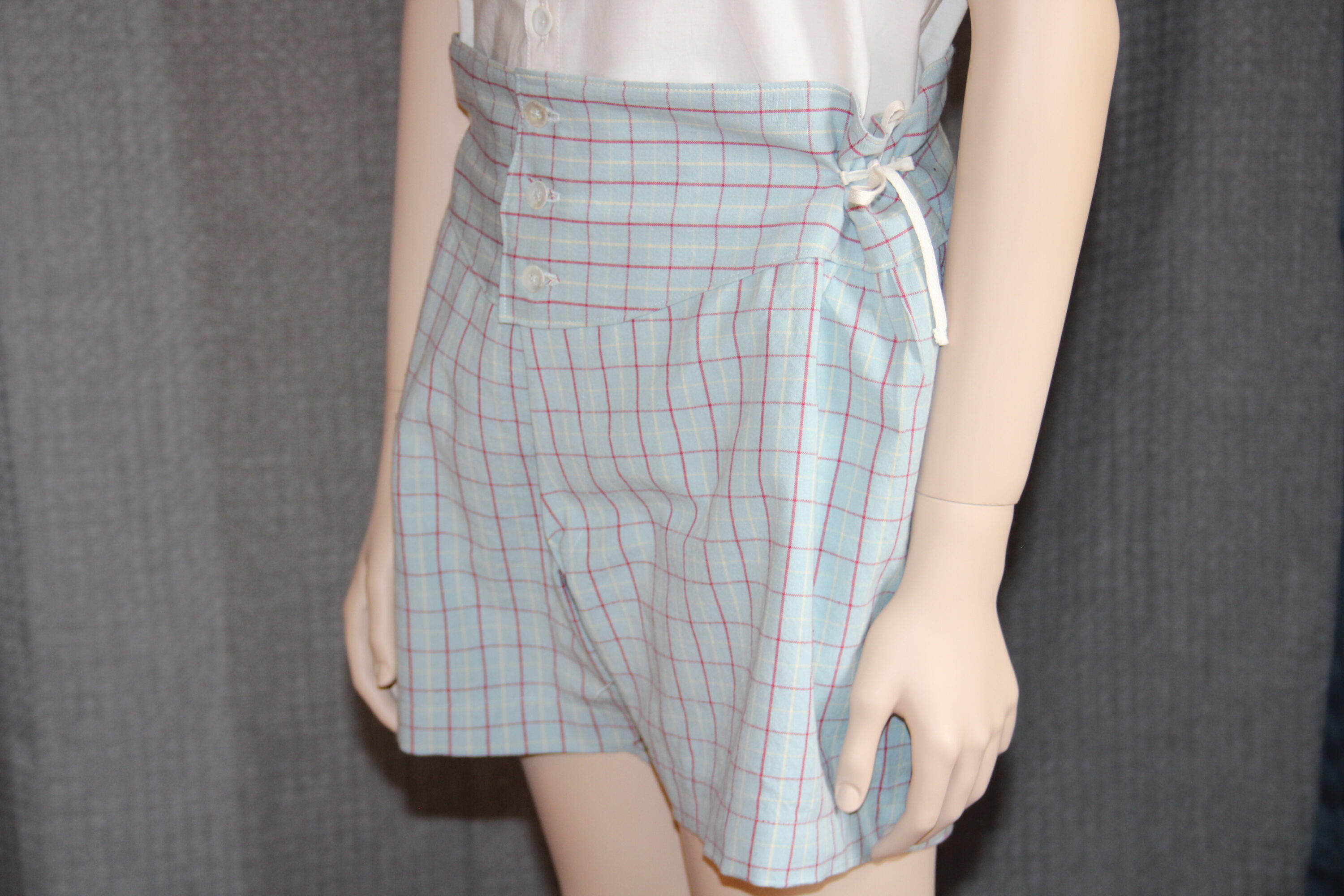
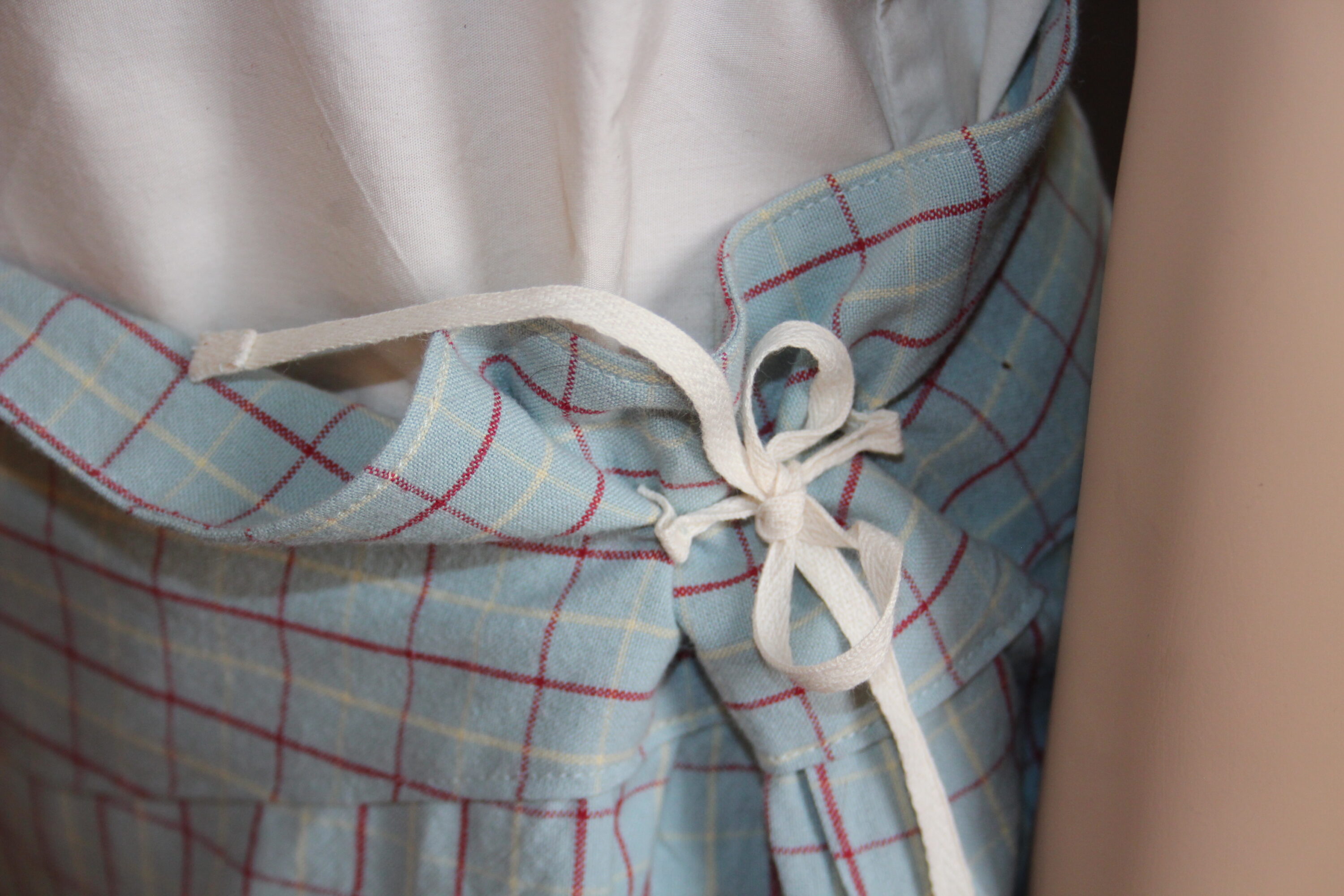
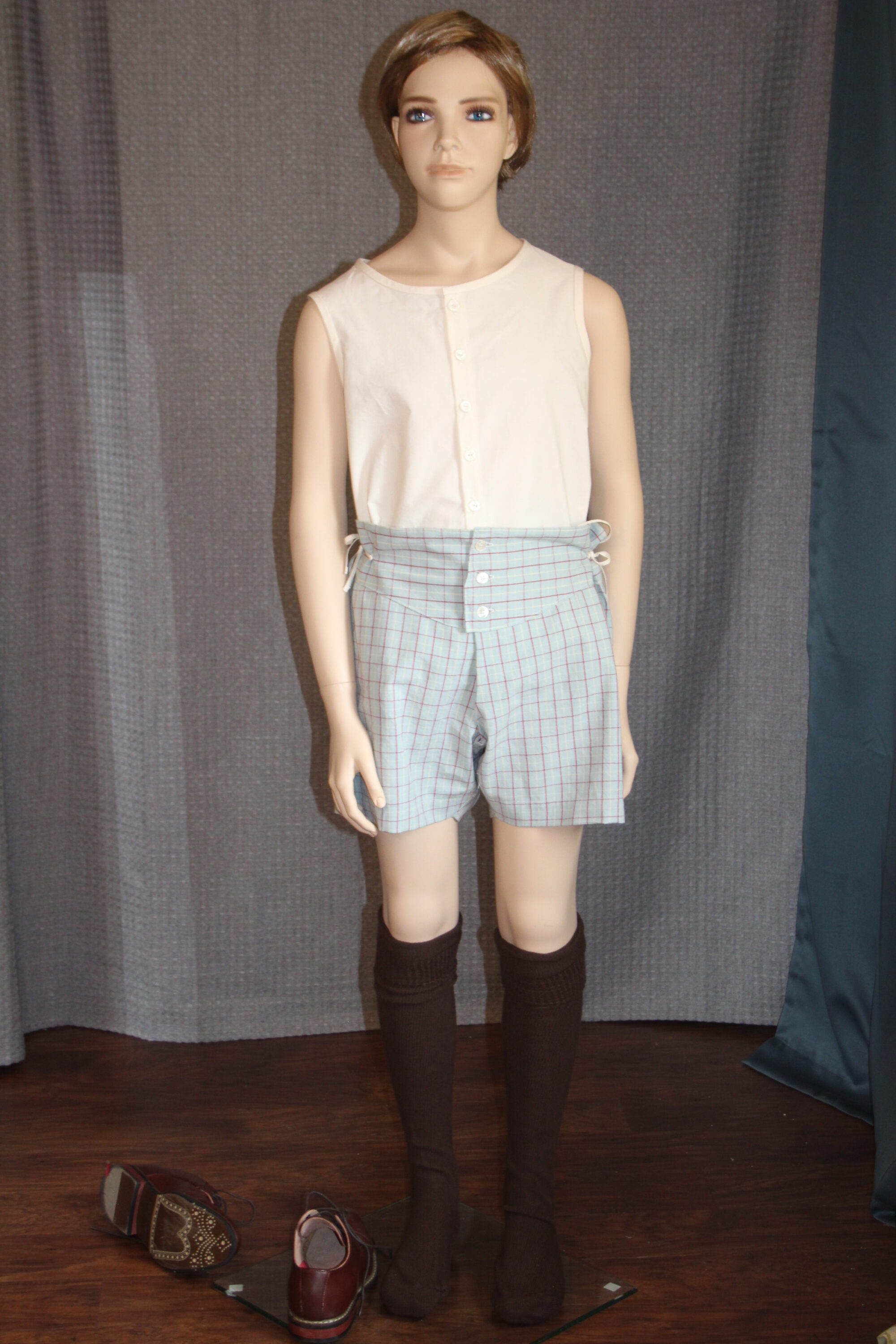
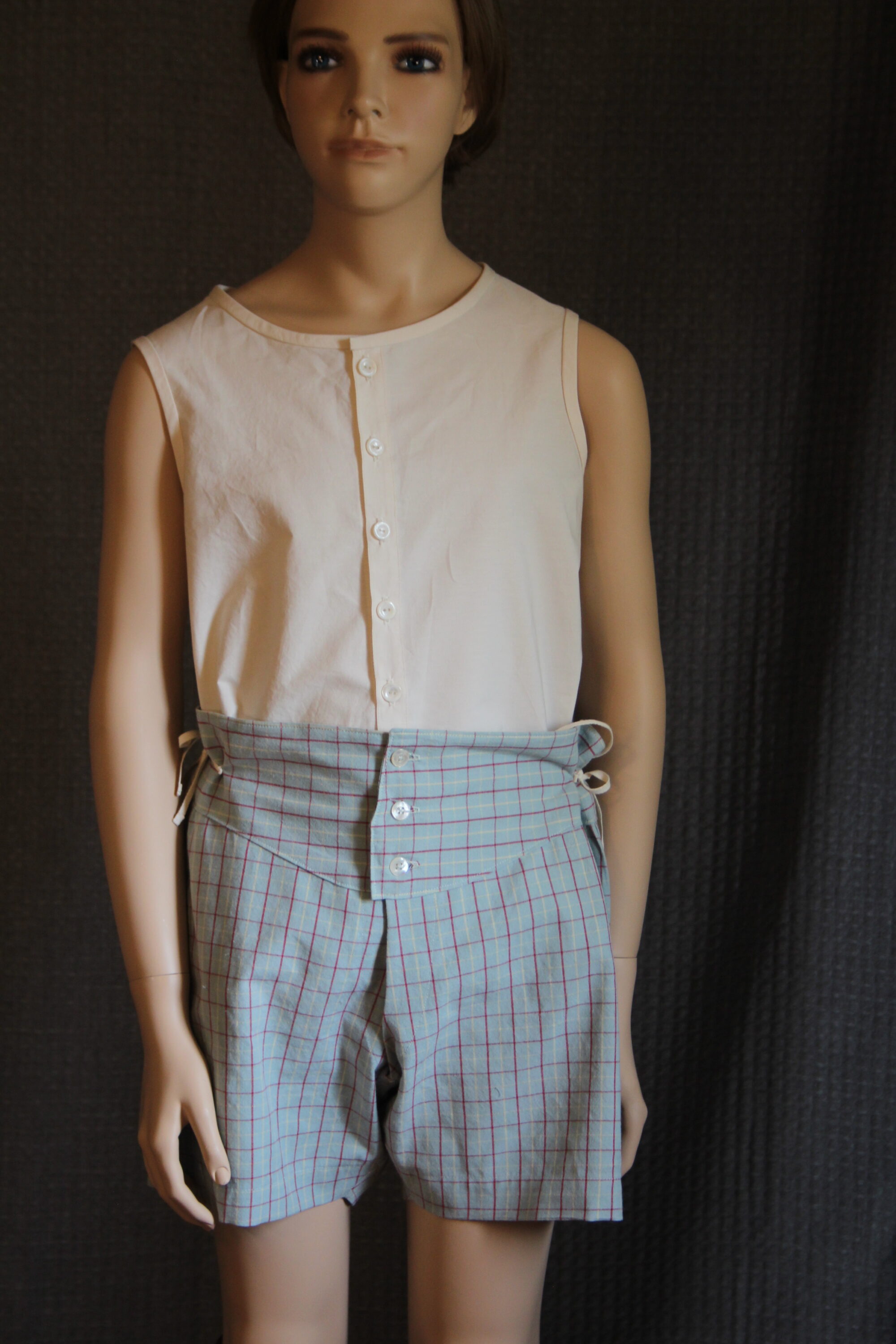
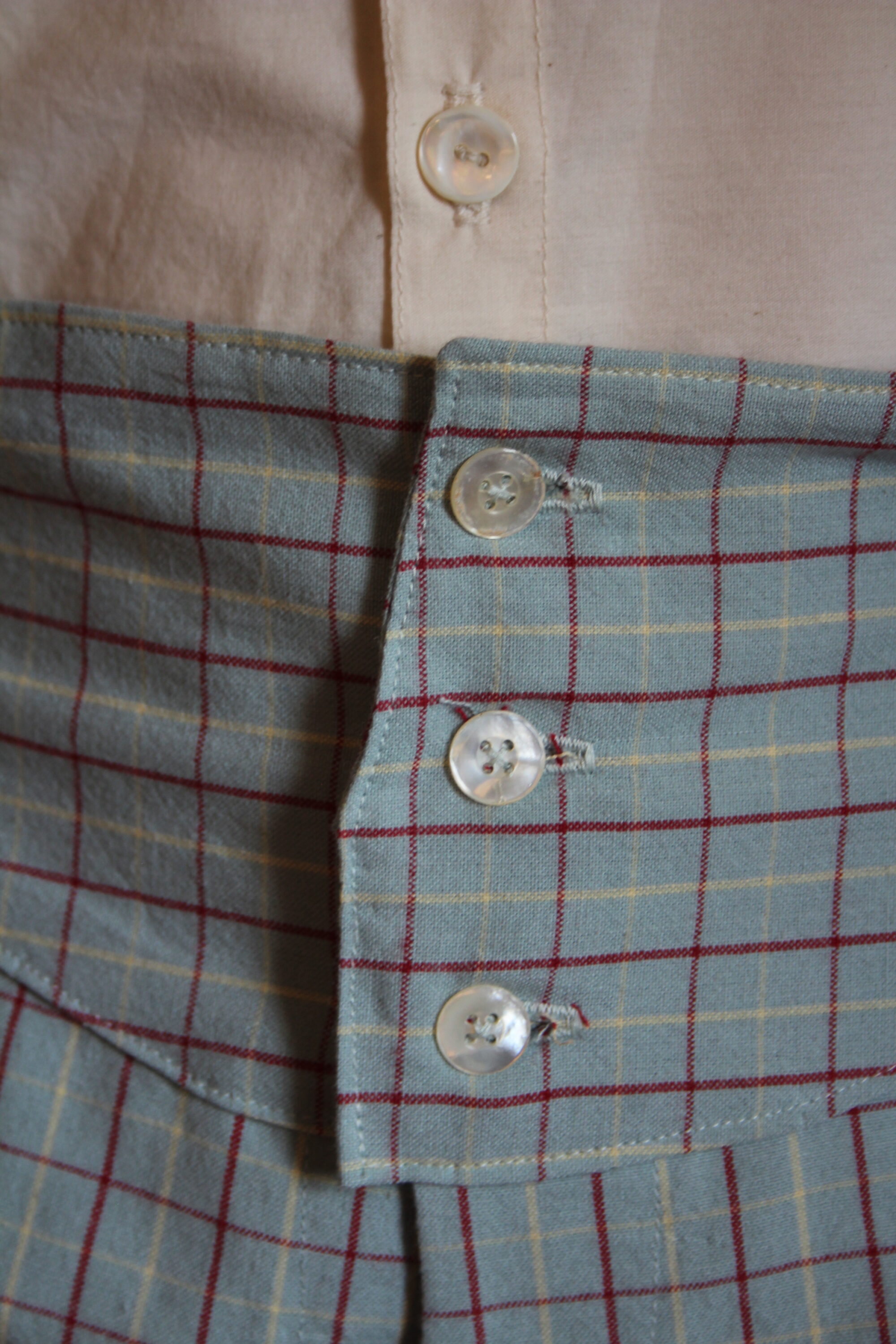
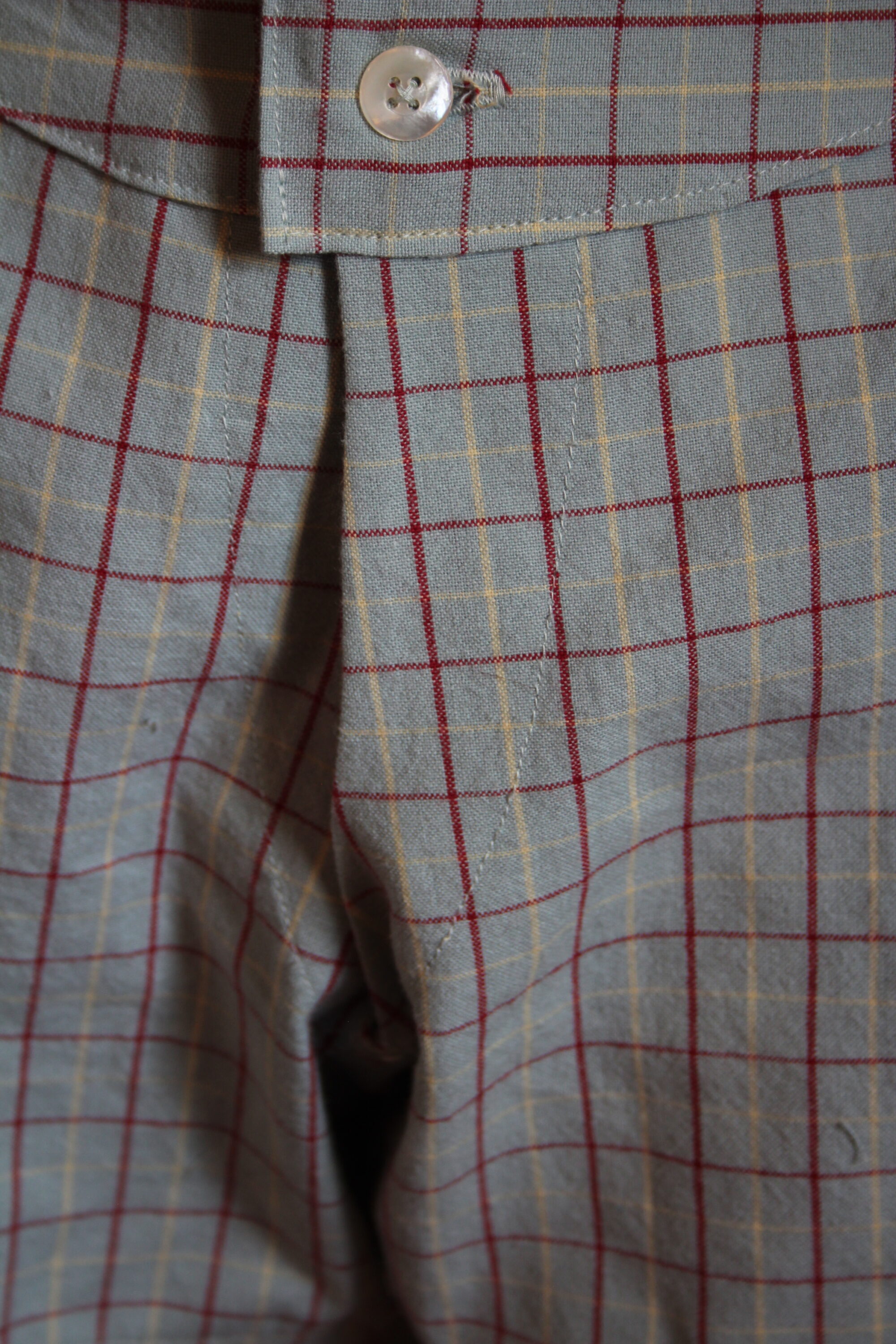
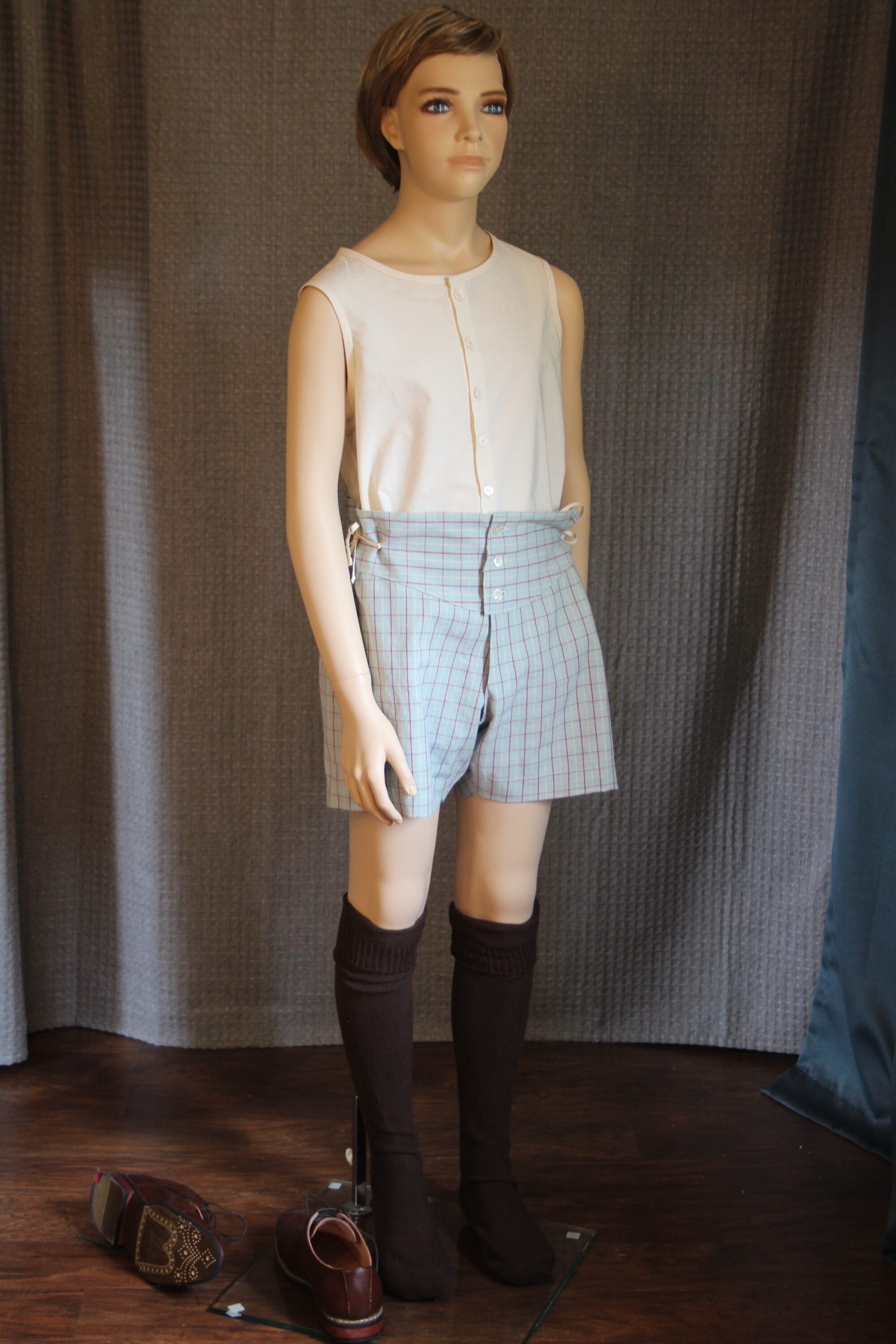
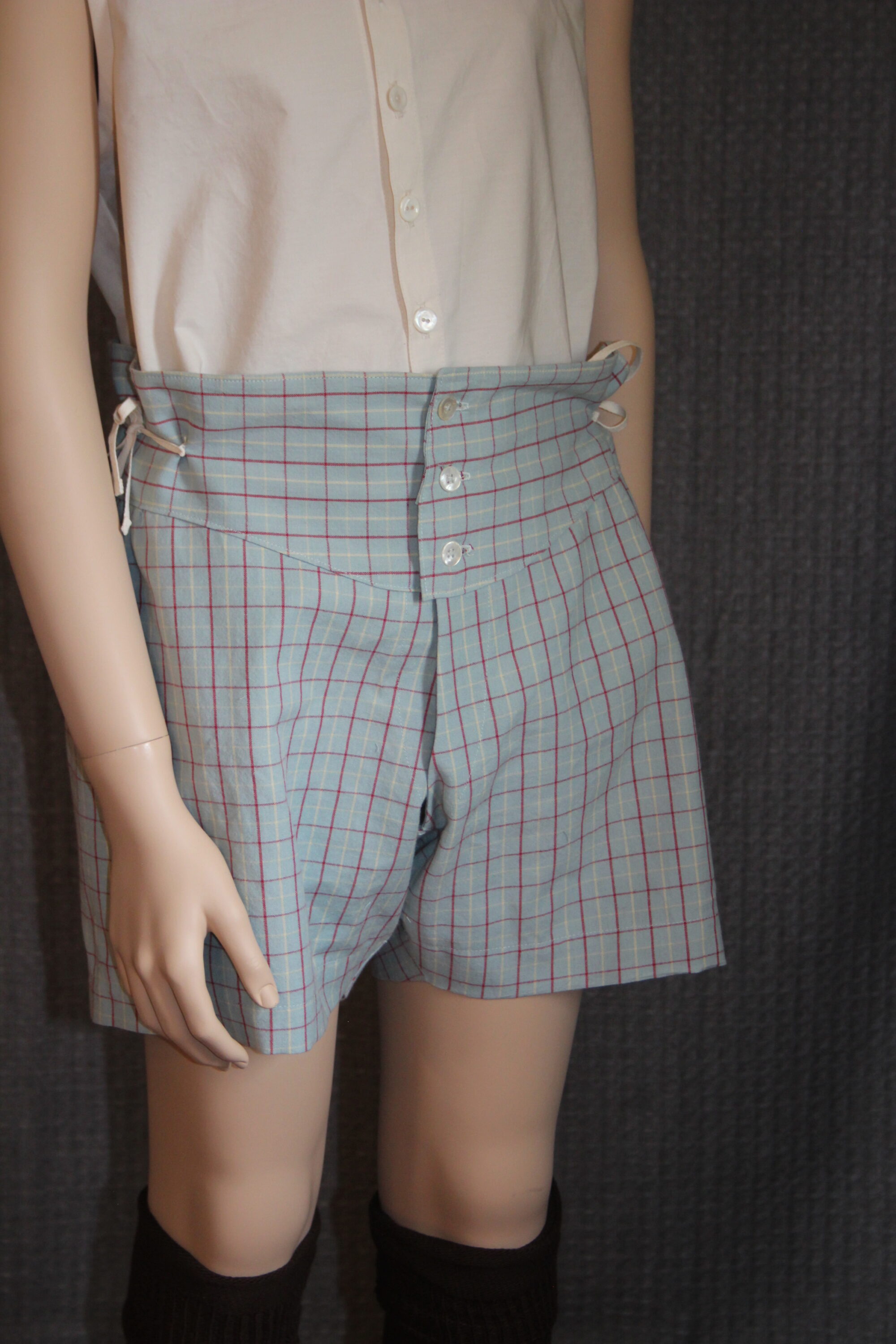
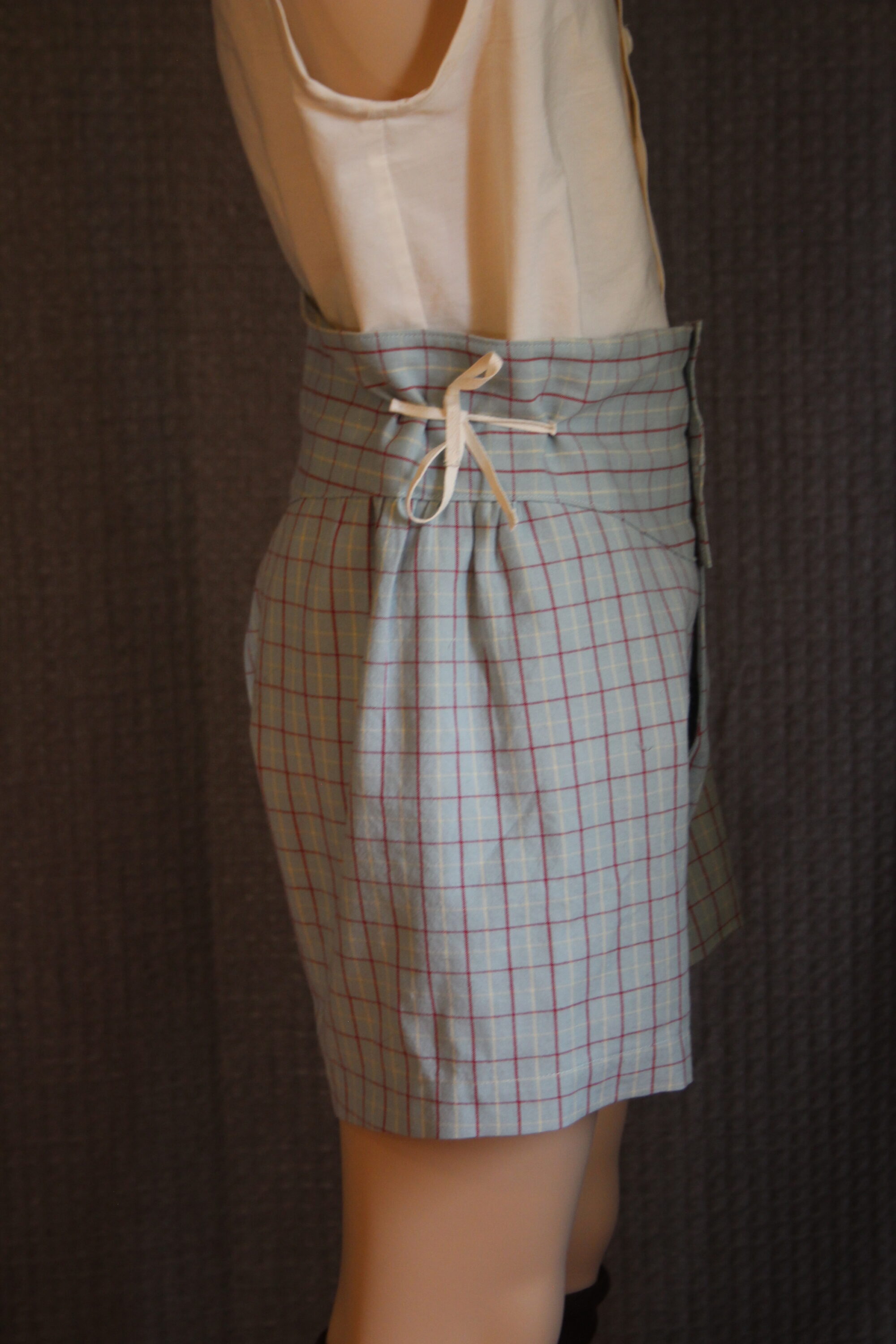
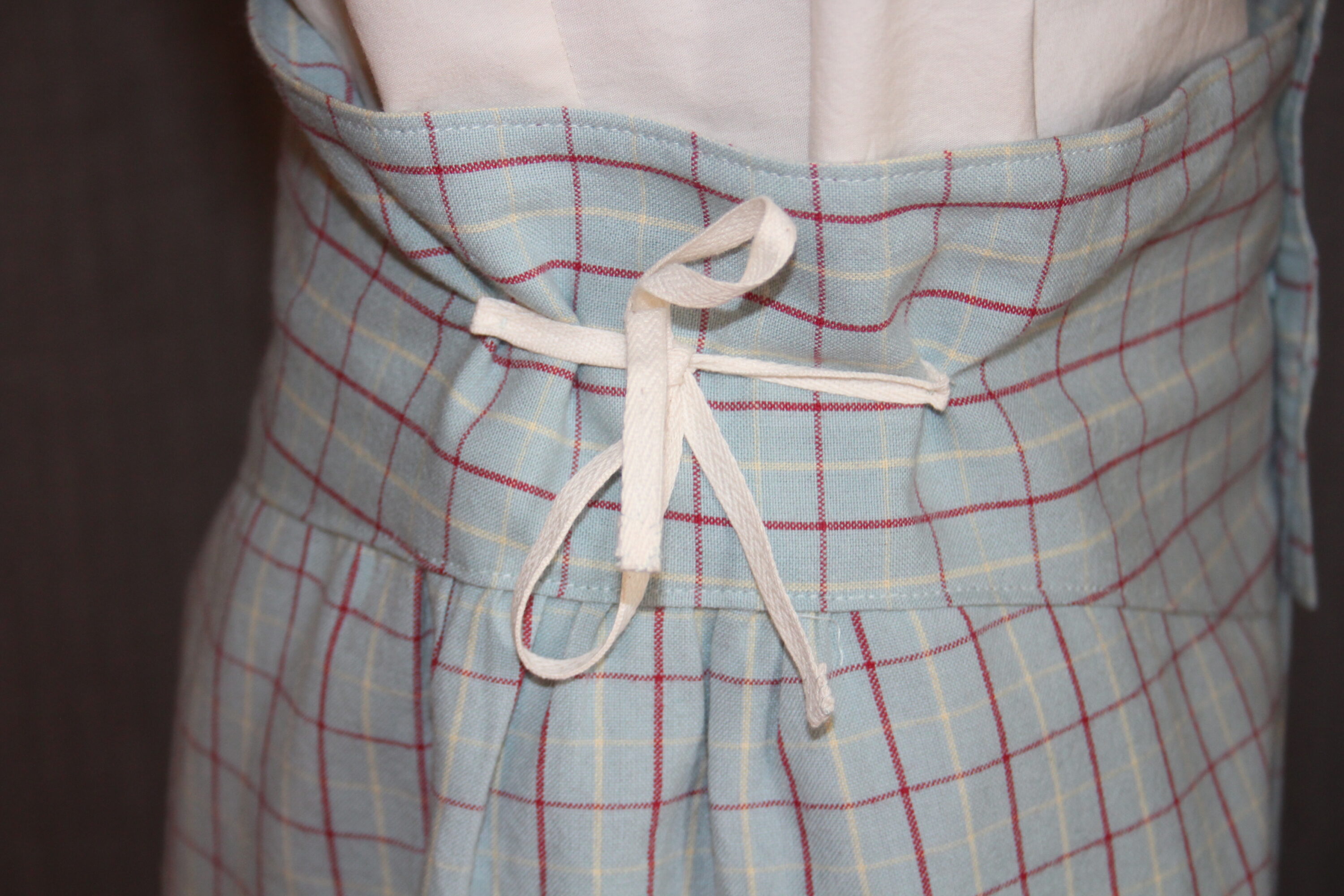
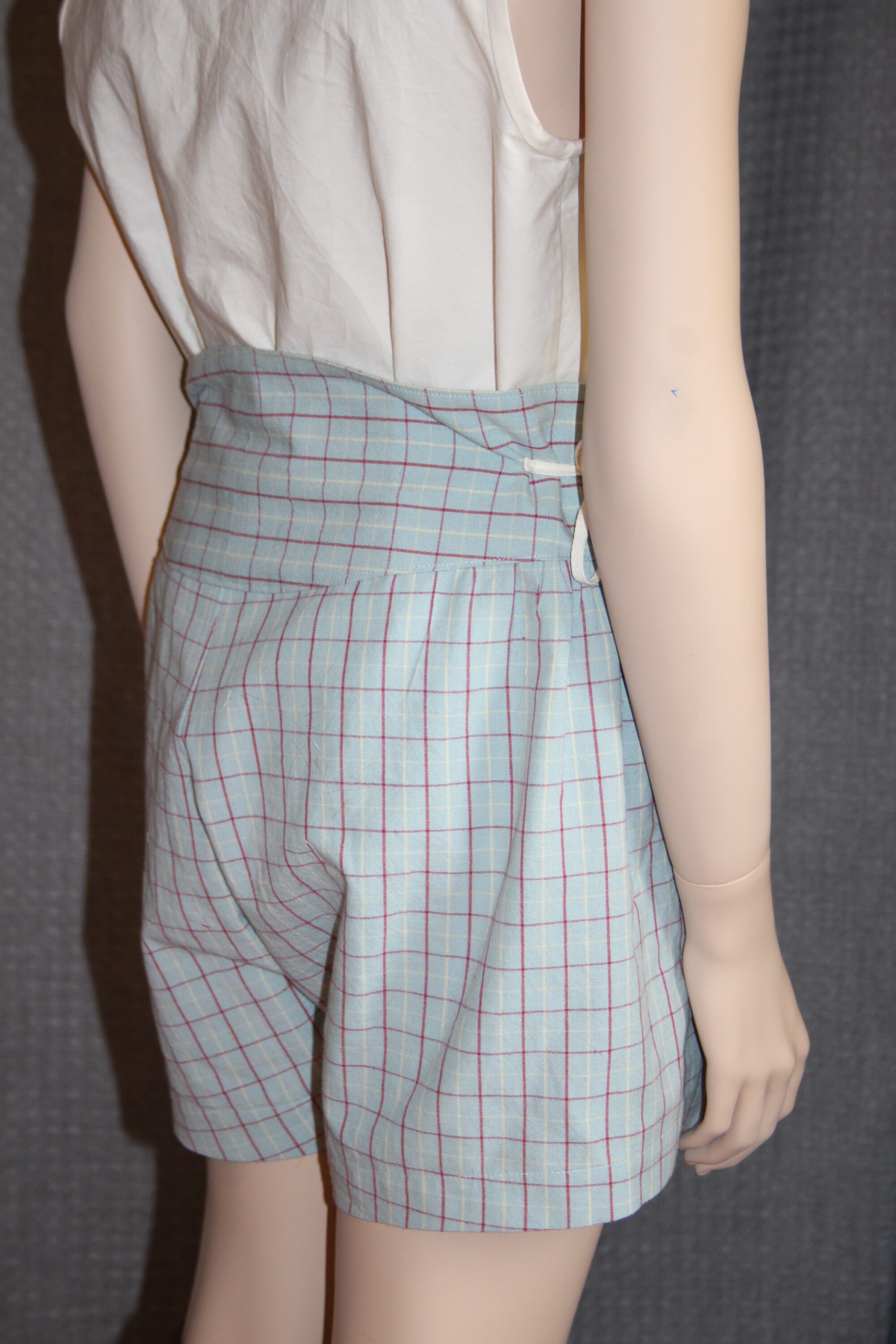
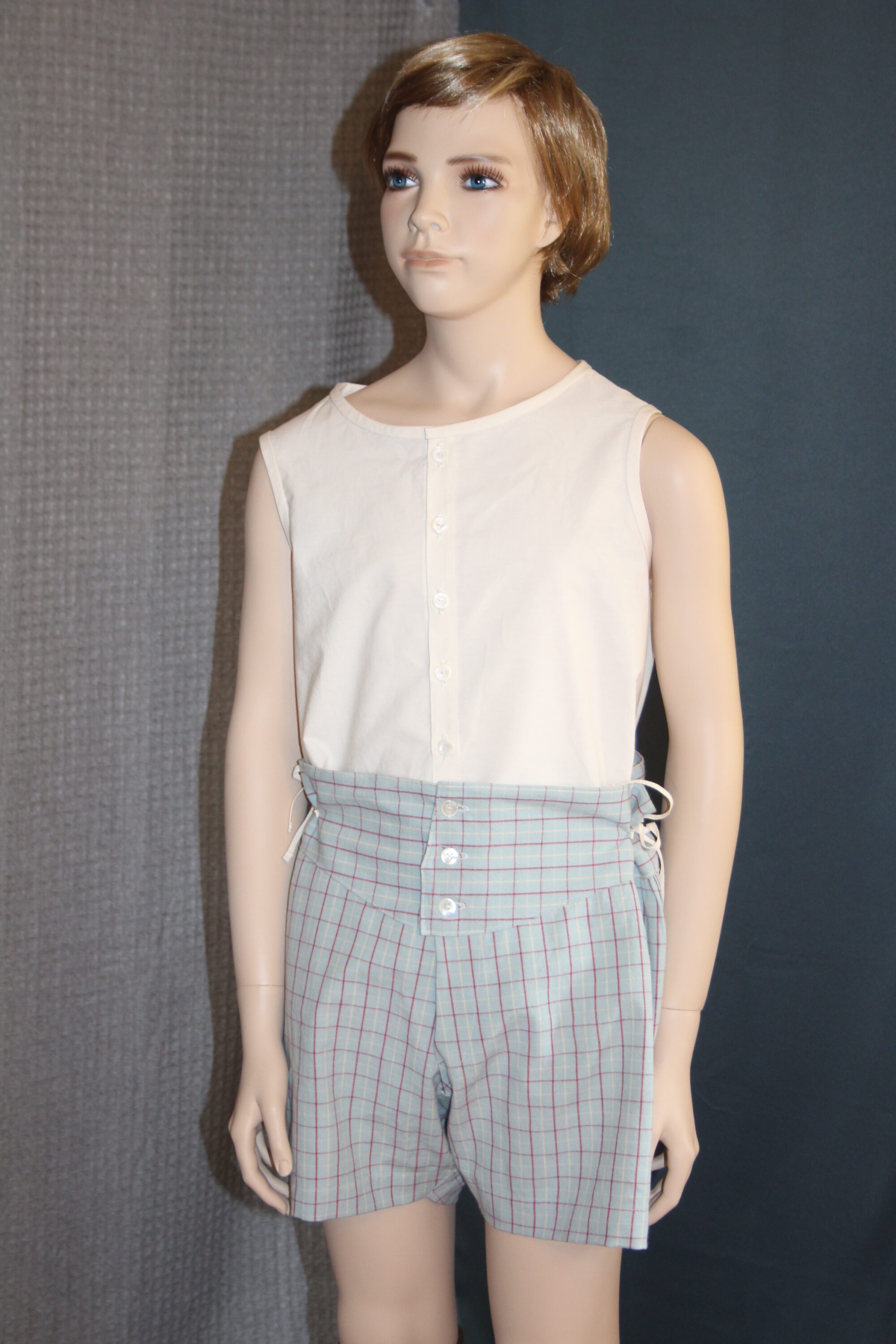
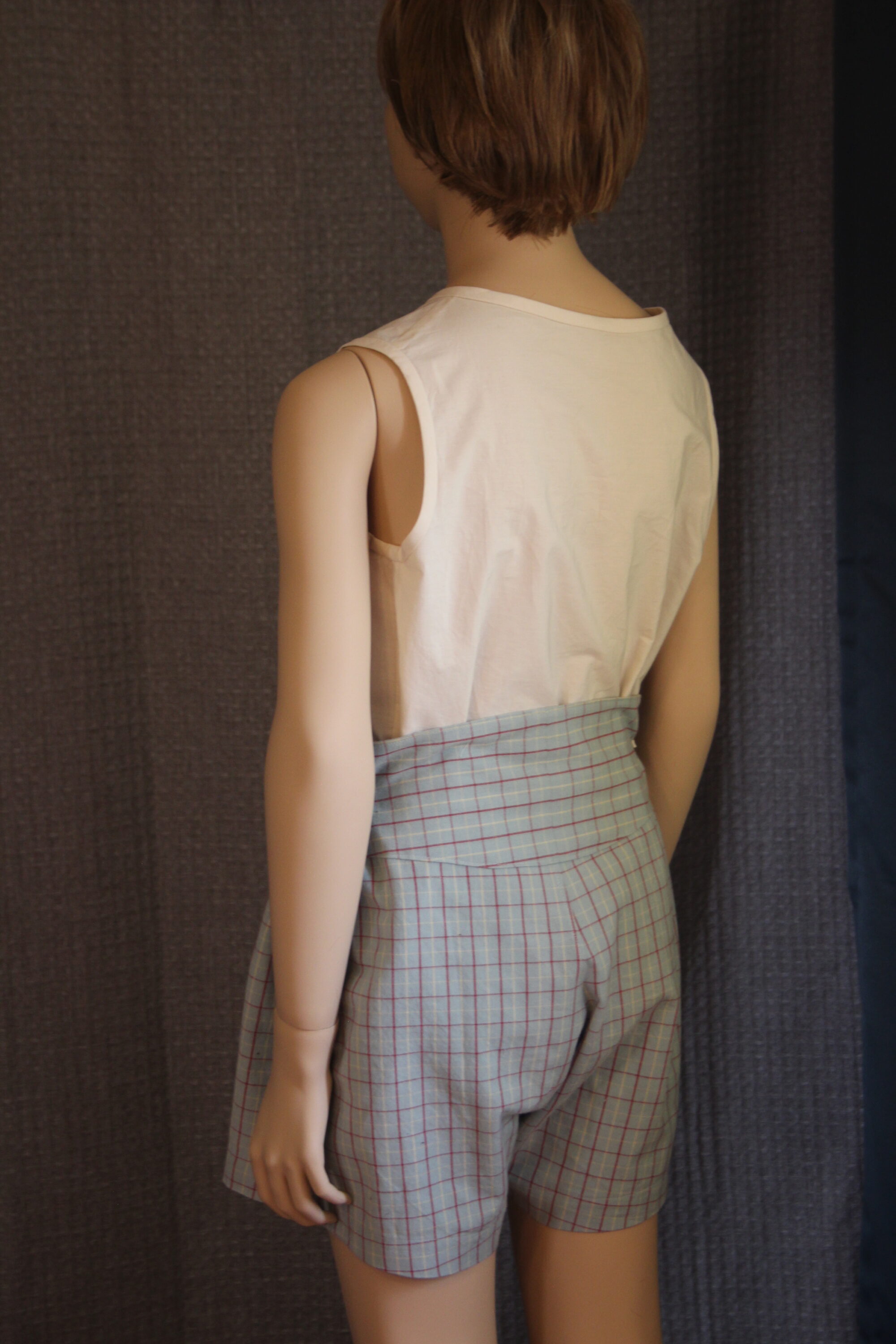
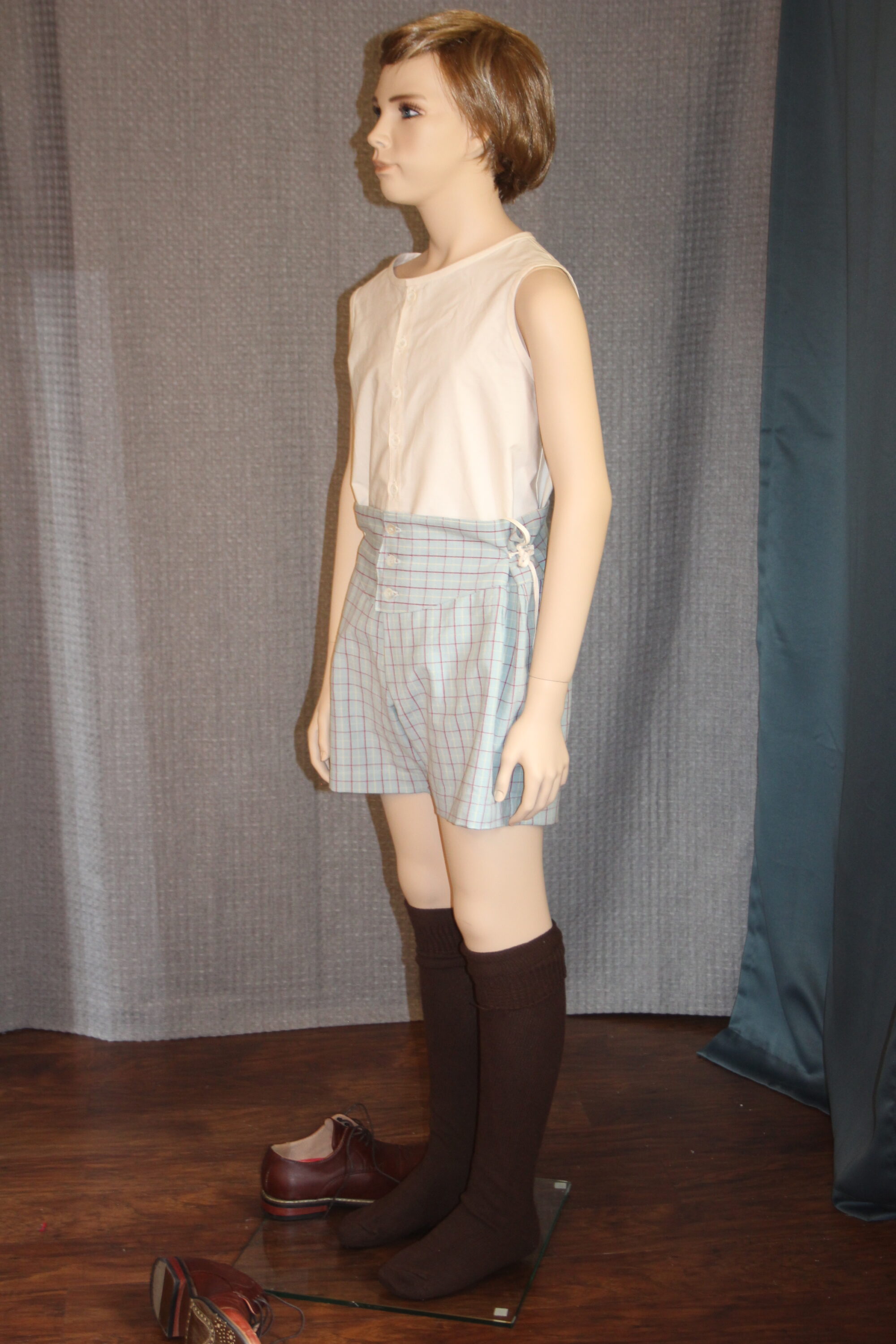
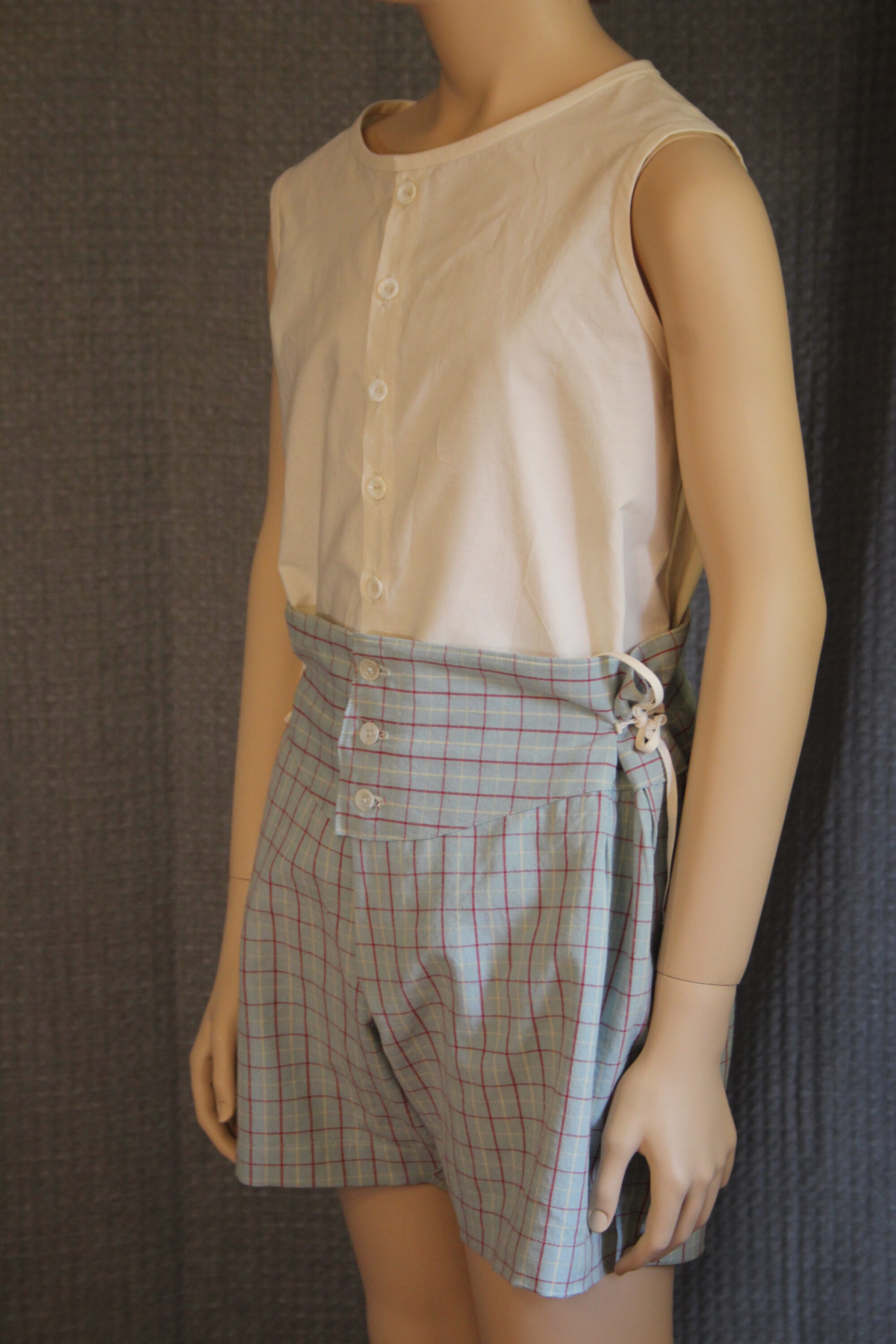
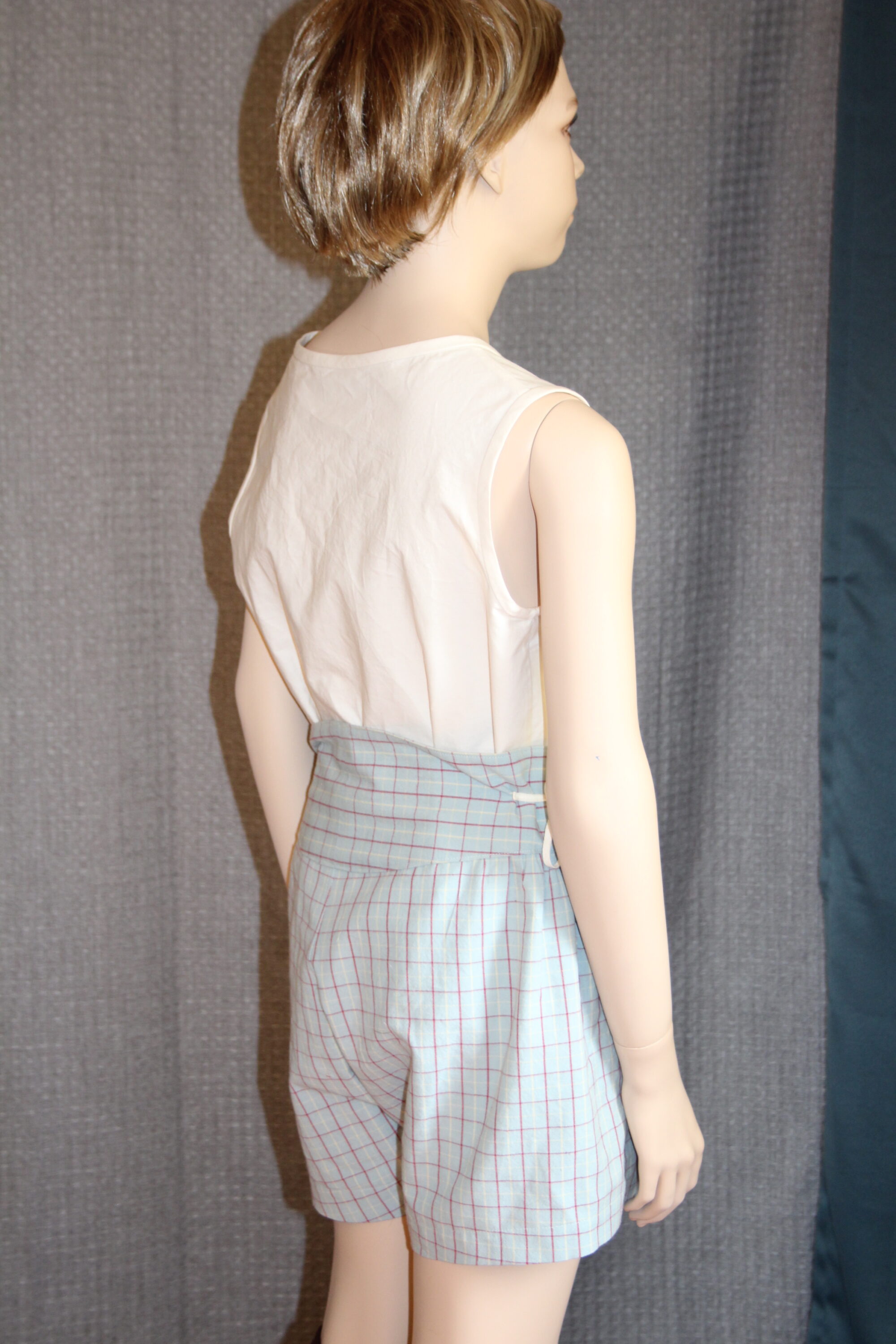
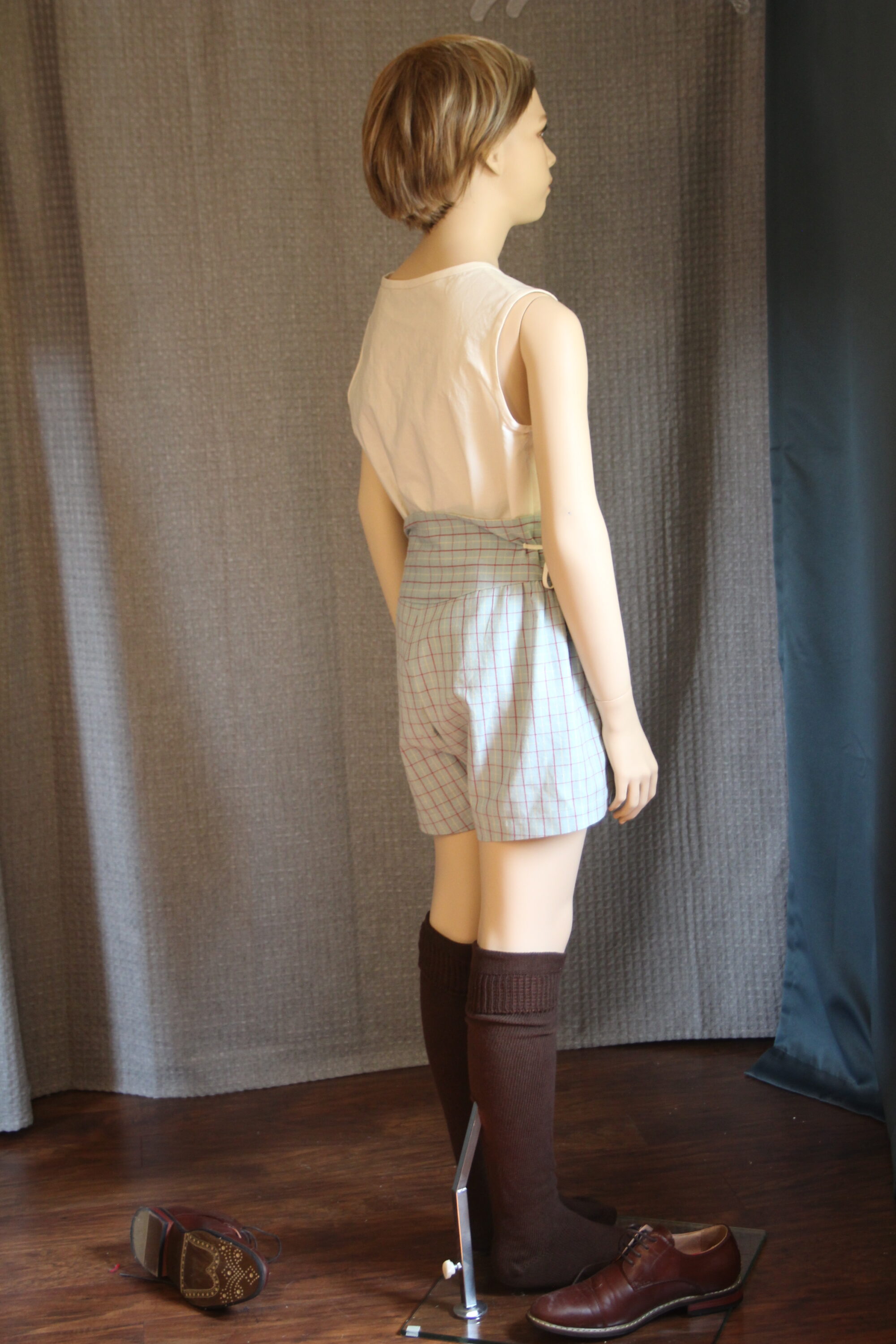
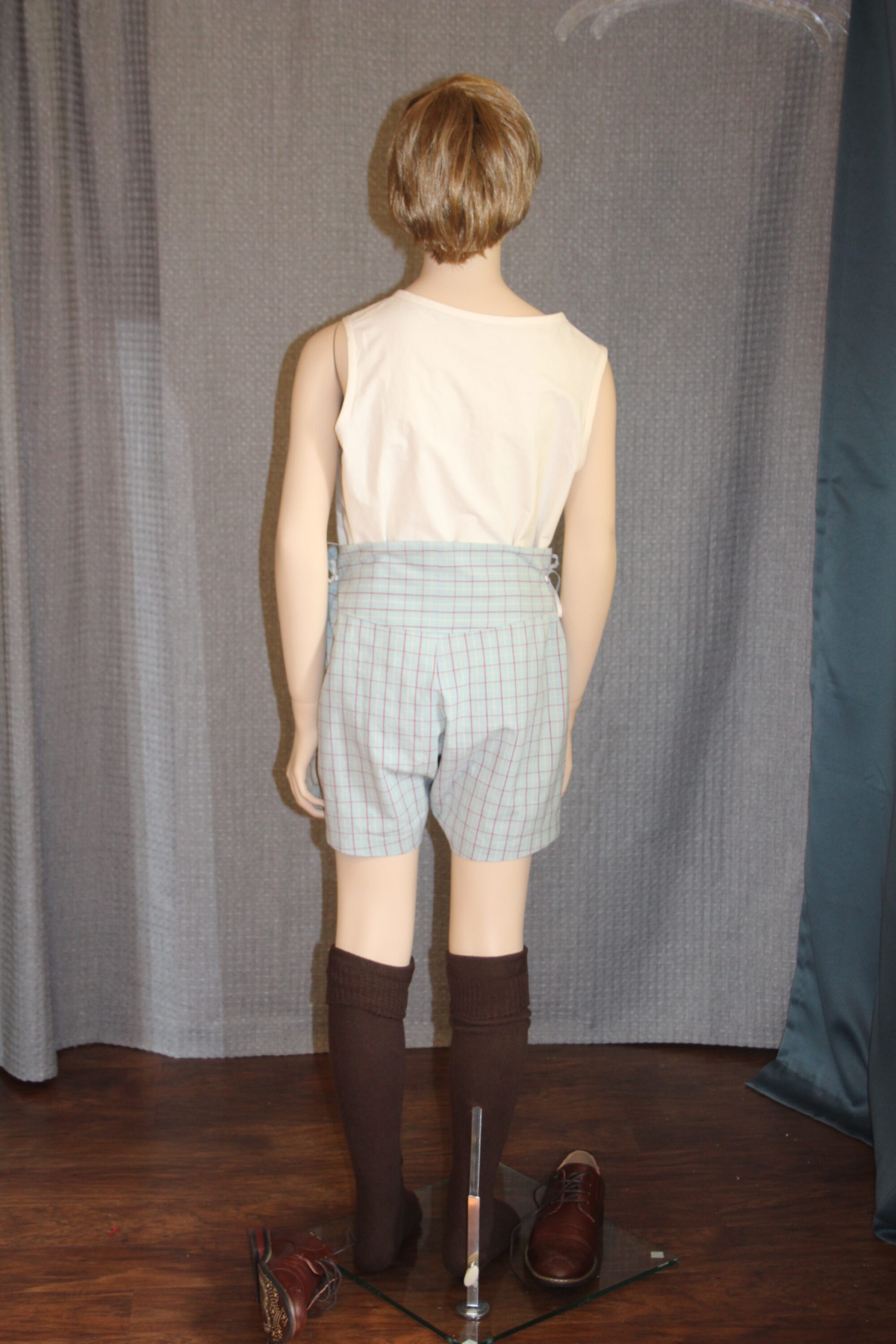
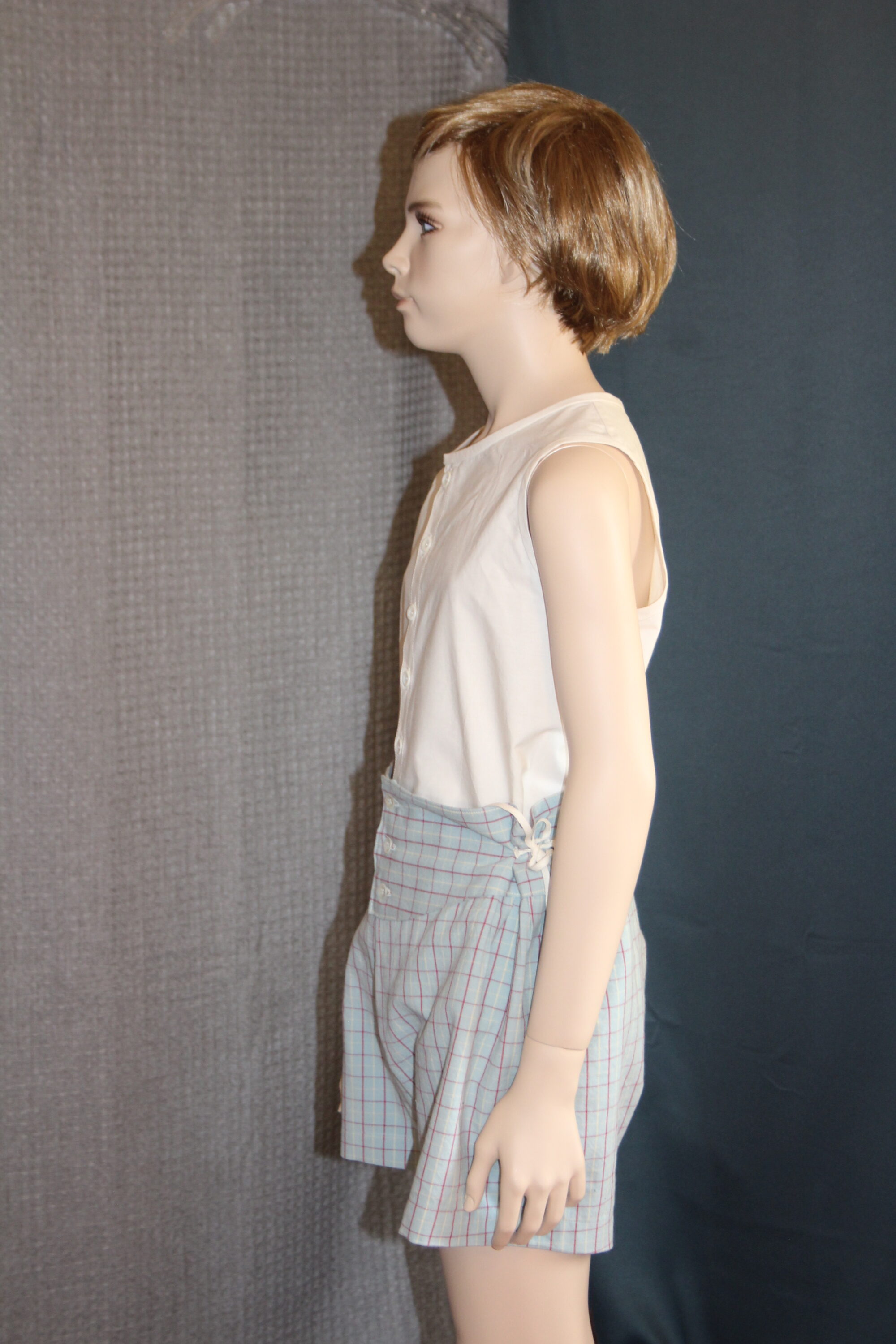
Shirt
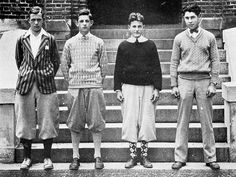
The shirt pattern which is a McCall’s pattern surprised us in that 1) it was printed and actually had instructions!; 2) appeared to actually fit a real person; 3) had a tied bottom so the shirttails could stay tucked in or be worn outside the trousers without sticking out.
We are most proud of the collar, which is where the real difference between this and a modern garment is. It is higher, with more width, and much stiffer. This allows it to nicely support the many choices in neckties from the era, because tiny boys to old men all wore a necktie even in casual situations. This one is stiffened and has a wide turn (created by a certain curve in the flat pattern piece that brings it up nicely), and a slight crossover center front so there is no gapping.
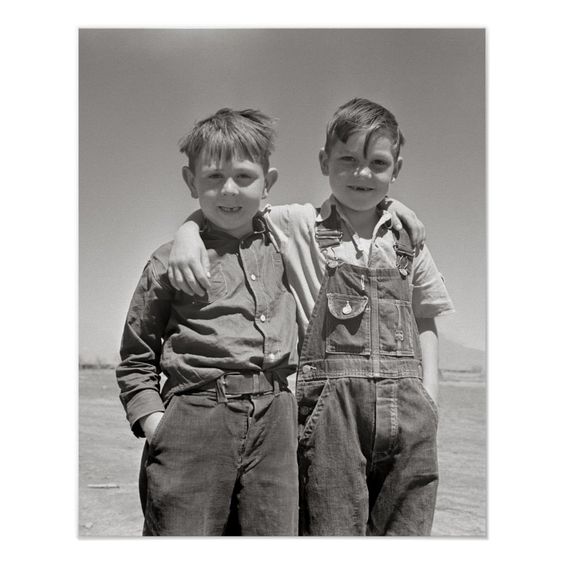
People who see this think “well, I can buy a shirt like that at the box store cheap”. No you can’t! Pocket placement, method of installing the sleeves and how they integrate with the shoulders, and how it is fitted at the neck but full on the bottom is specific to the mid 1920’s. Most notable is that there is a drawstring at the bottom, and that drawstring is very far below the natural waistline. Like the women, the long lean look with fullness at mid-calf was the preferred silhouette.
In menswear, that was achieved by having a tight bodied shirt and undershirt (ours is a bit loose because we didn’t pad out the mannequin to a true size 12, but it will be tight on a modern 12 year old – on purpose!) that was long and tucked very far down into the loose breeches or knickers. The drawstring allows the shirt to go along the things without making a lump. The “lump” was preferred below the knees, with a gradual widening of the trouser or breeches on the way down. These basic garments enhance that silhouette which we will see once the knickers are added.
This was originally intended to be long sleeved with cuffs and cuff links, but we were not able to buy enough fabric and were under a tight completion deadline, so shortsleeves suffice well. The length of the sleeves is historically accurate to the time as is the simple machine sewn hem on sleeve and bottom.
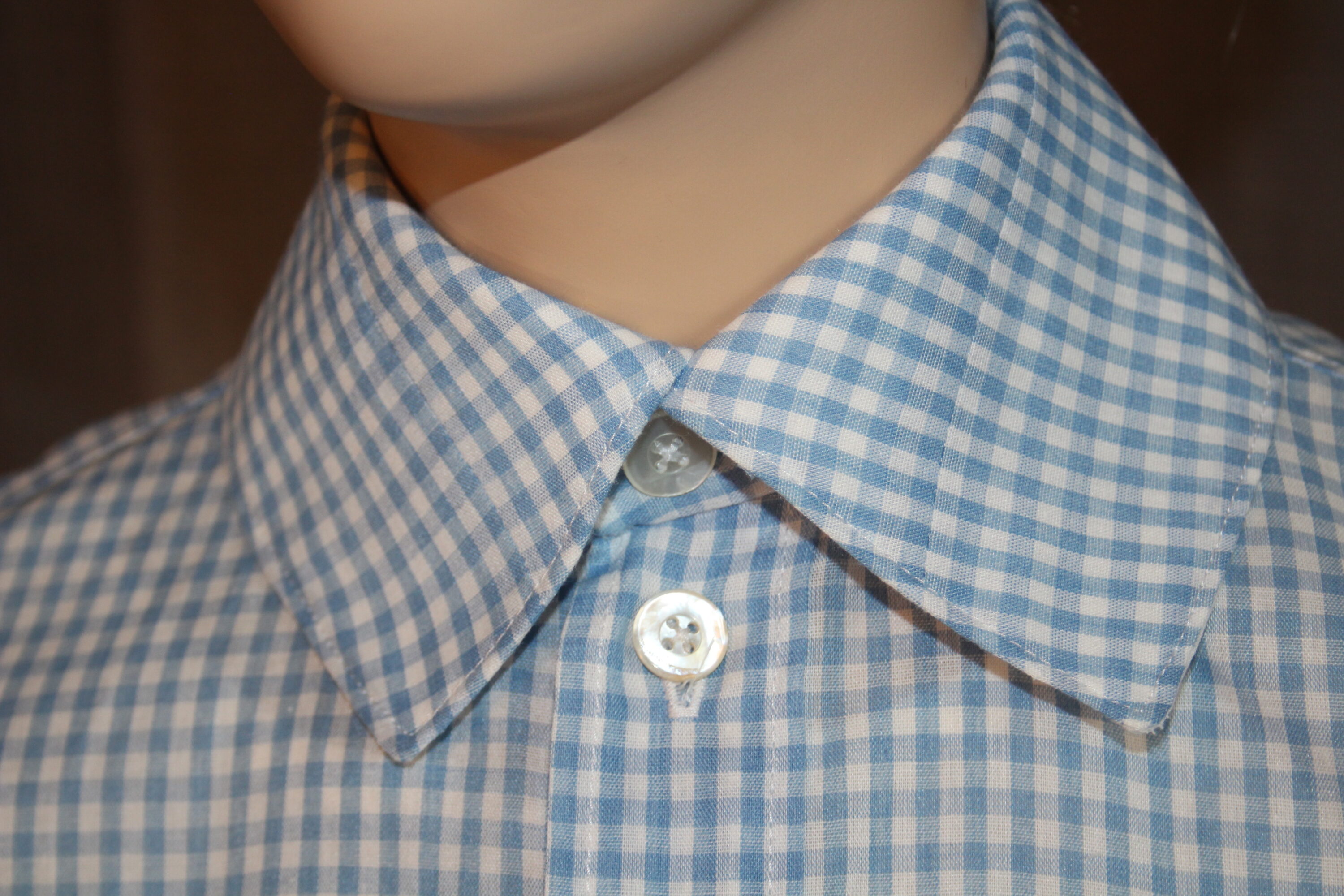
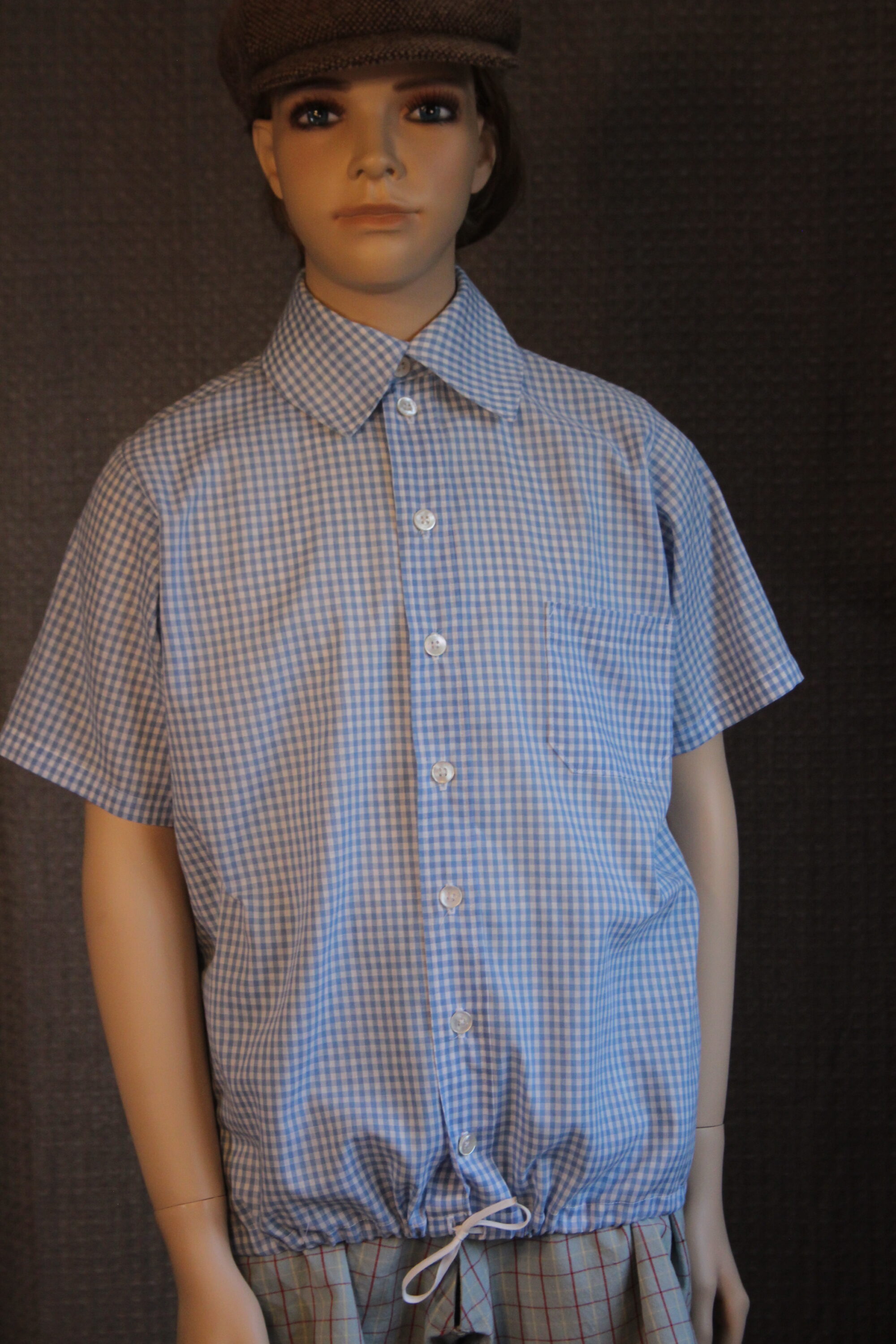


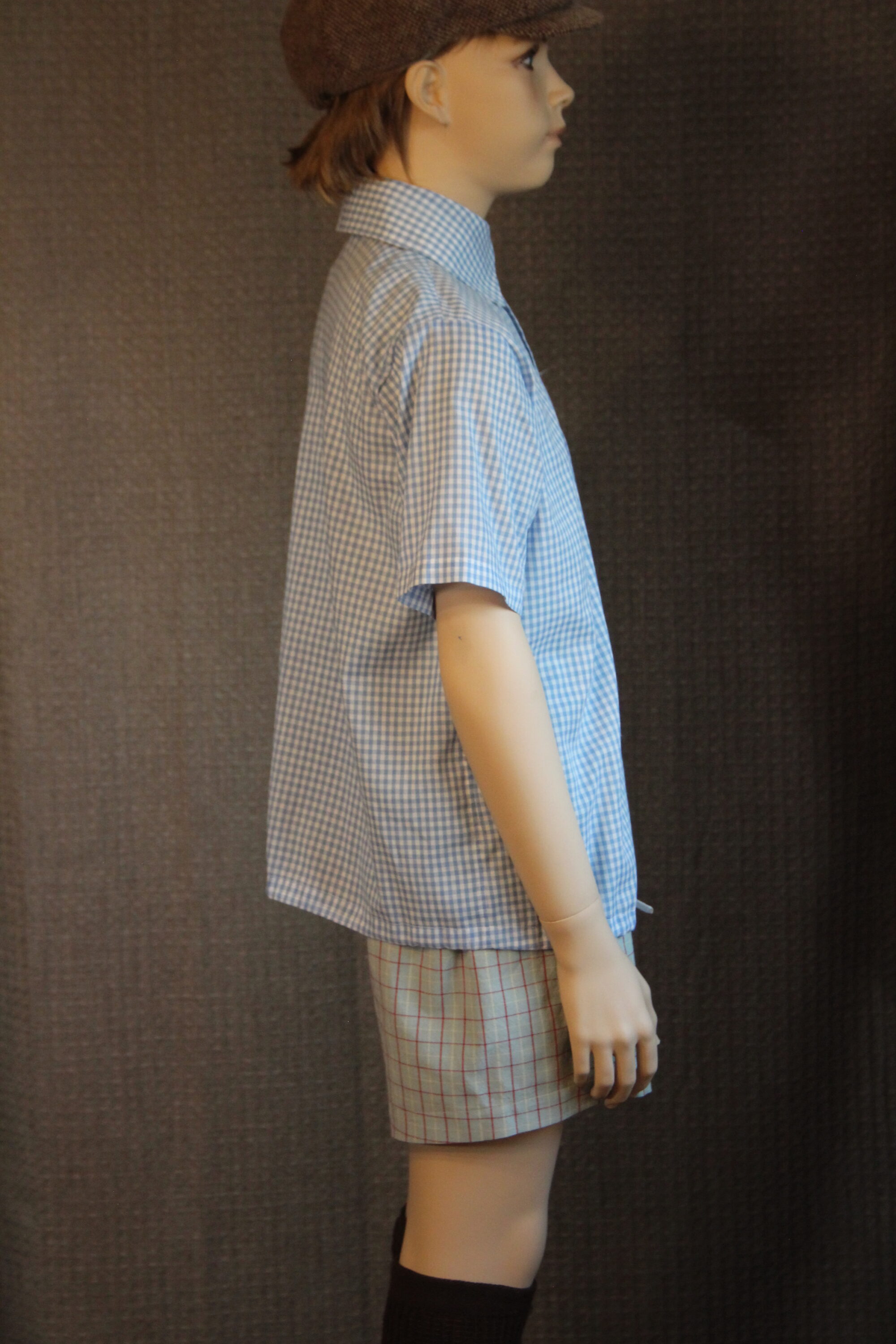
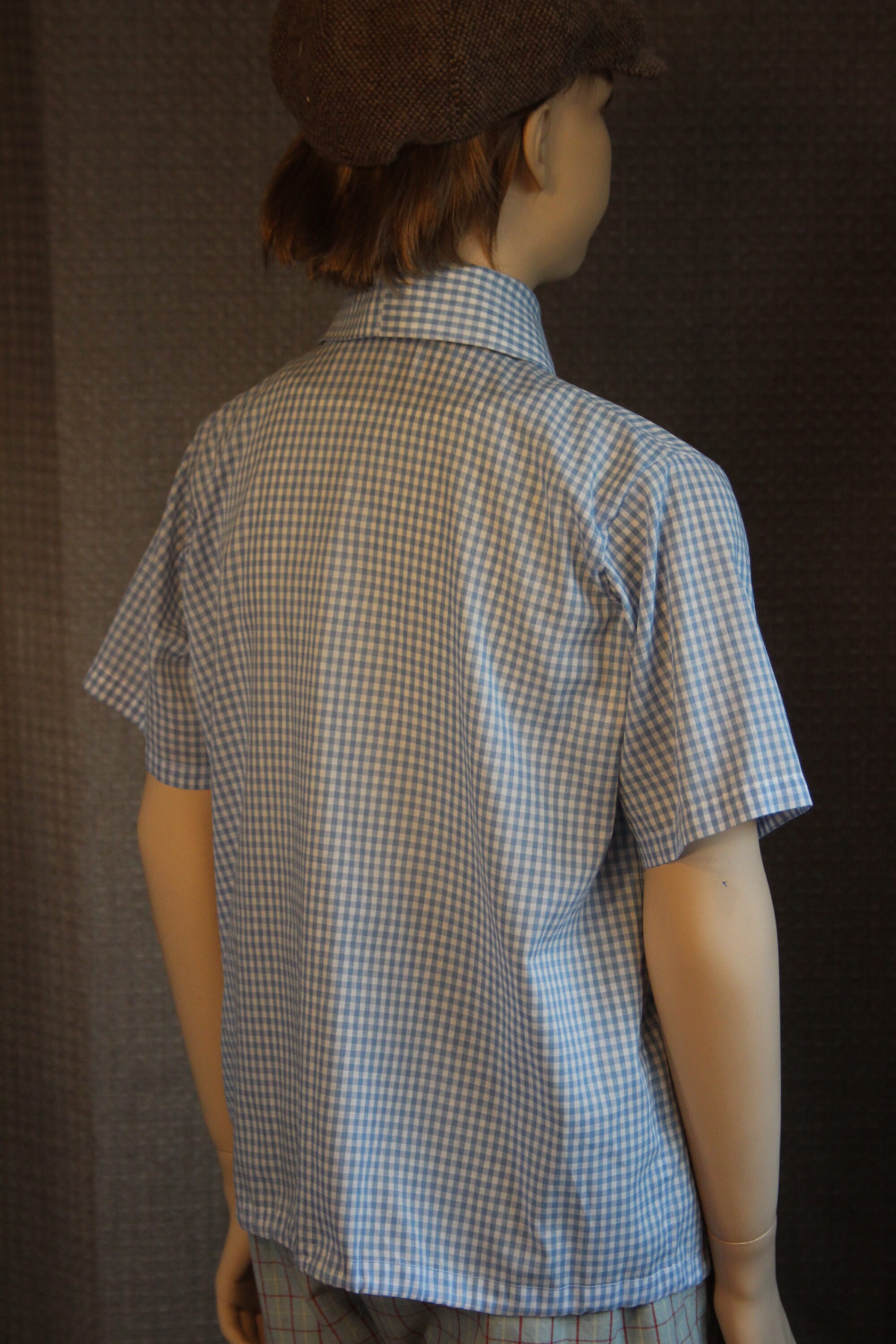
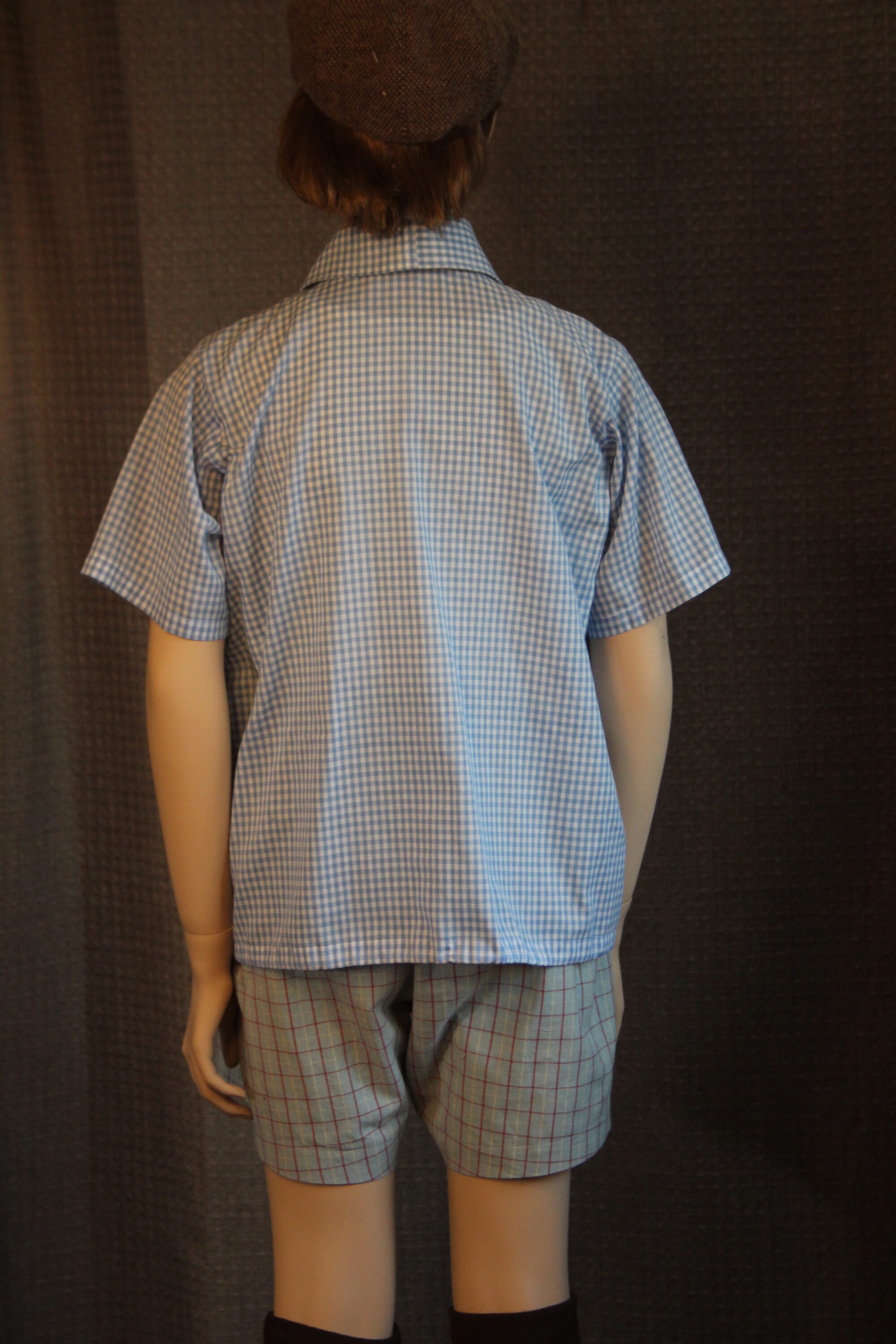
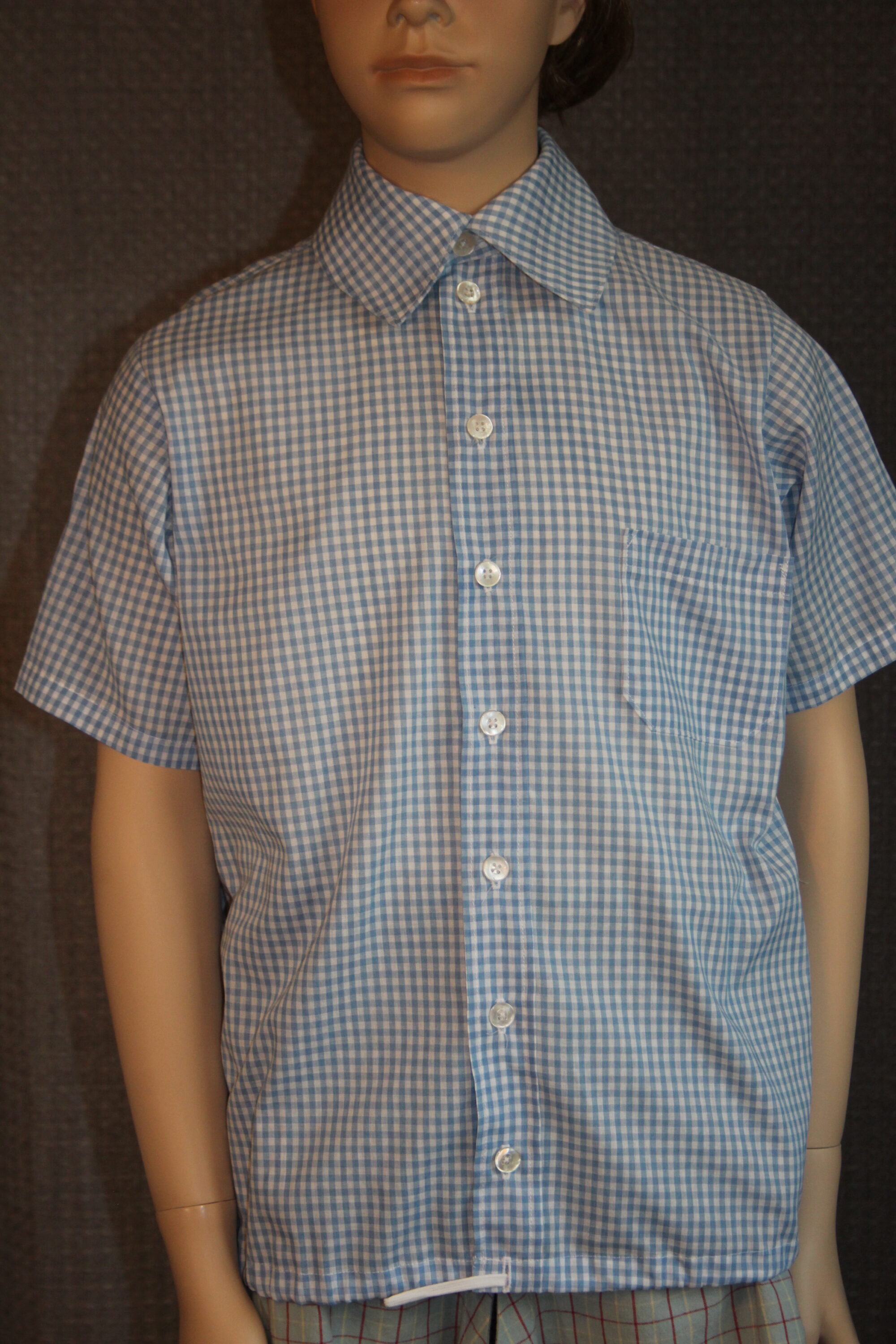
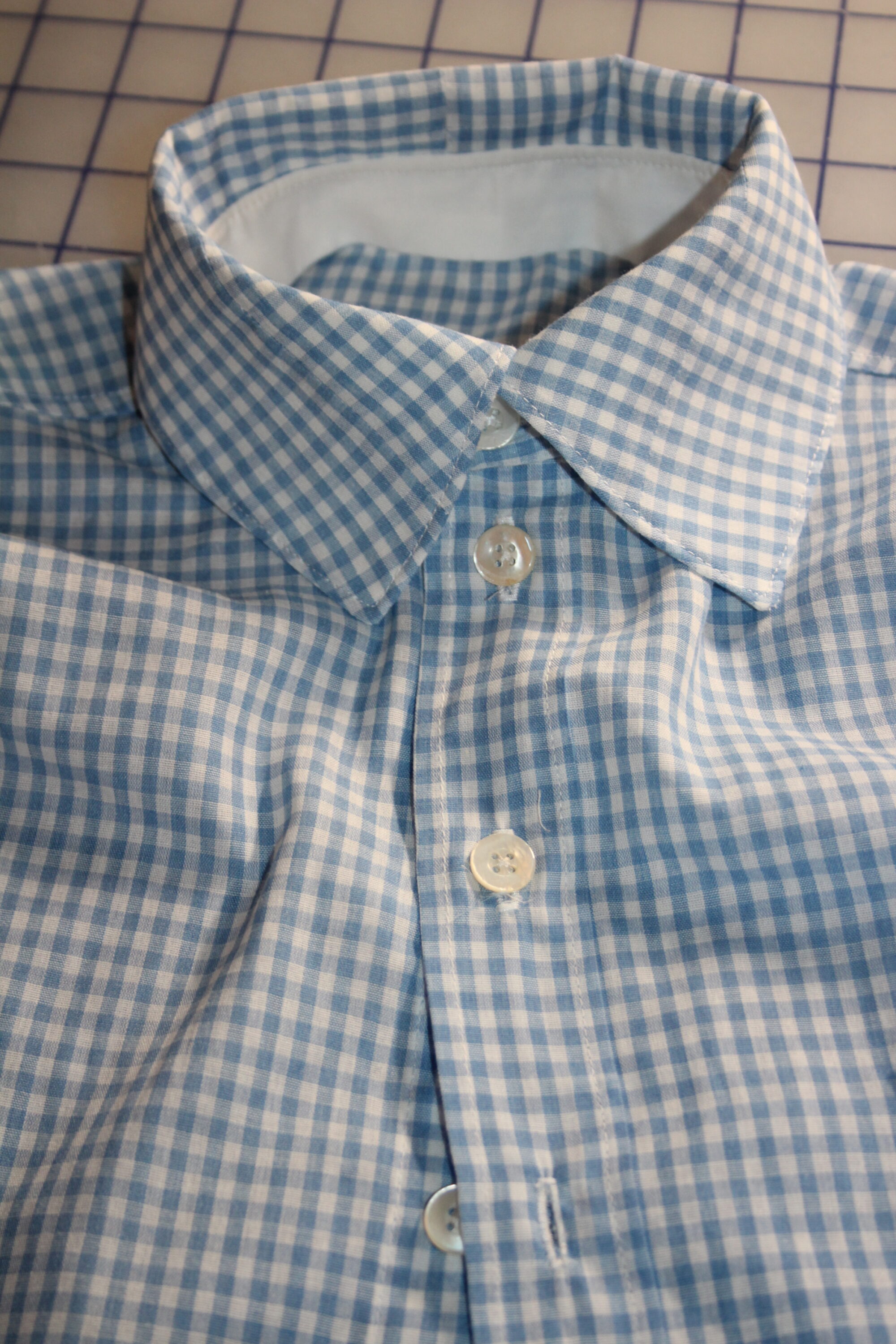
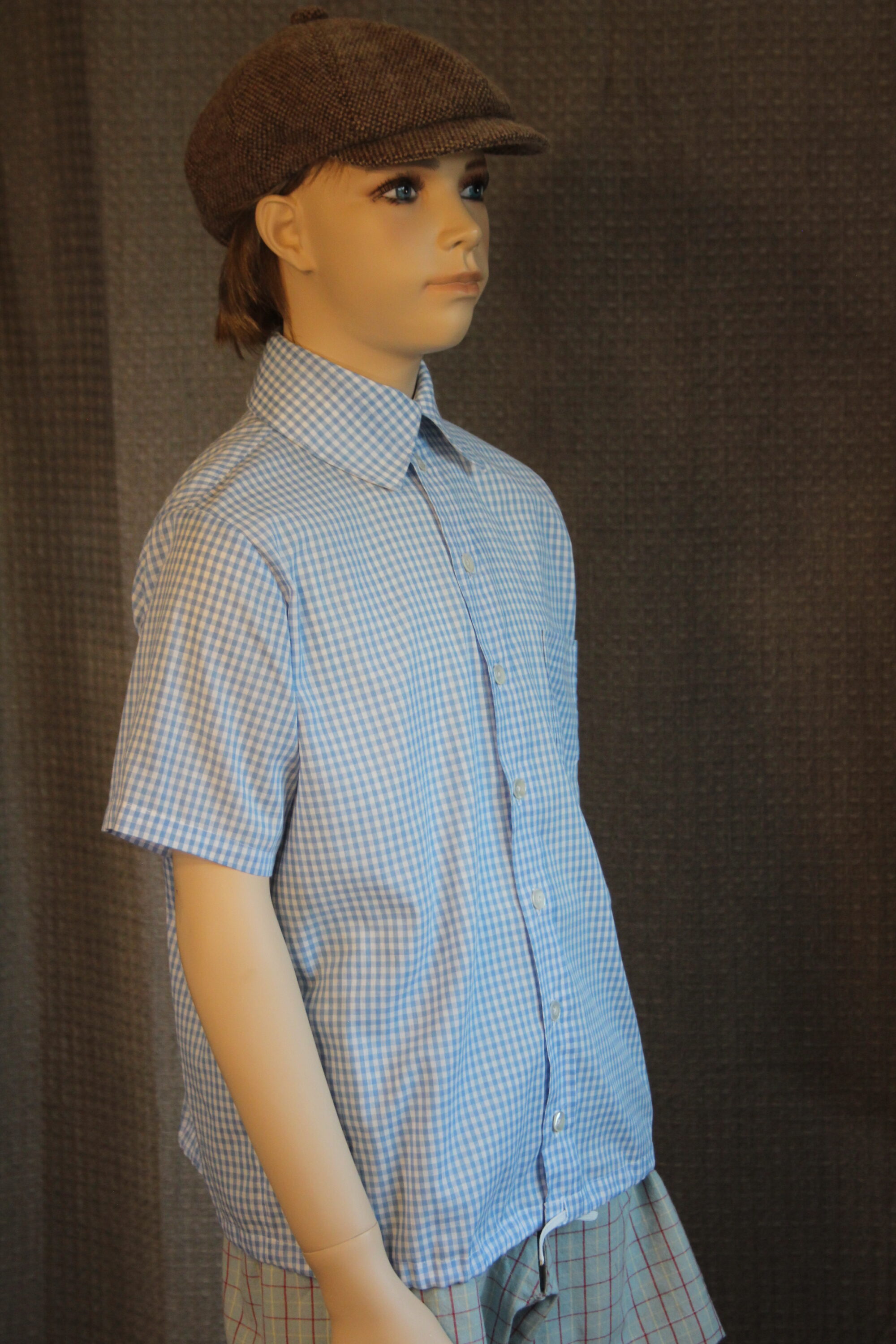

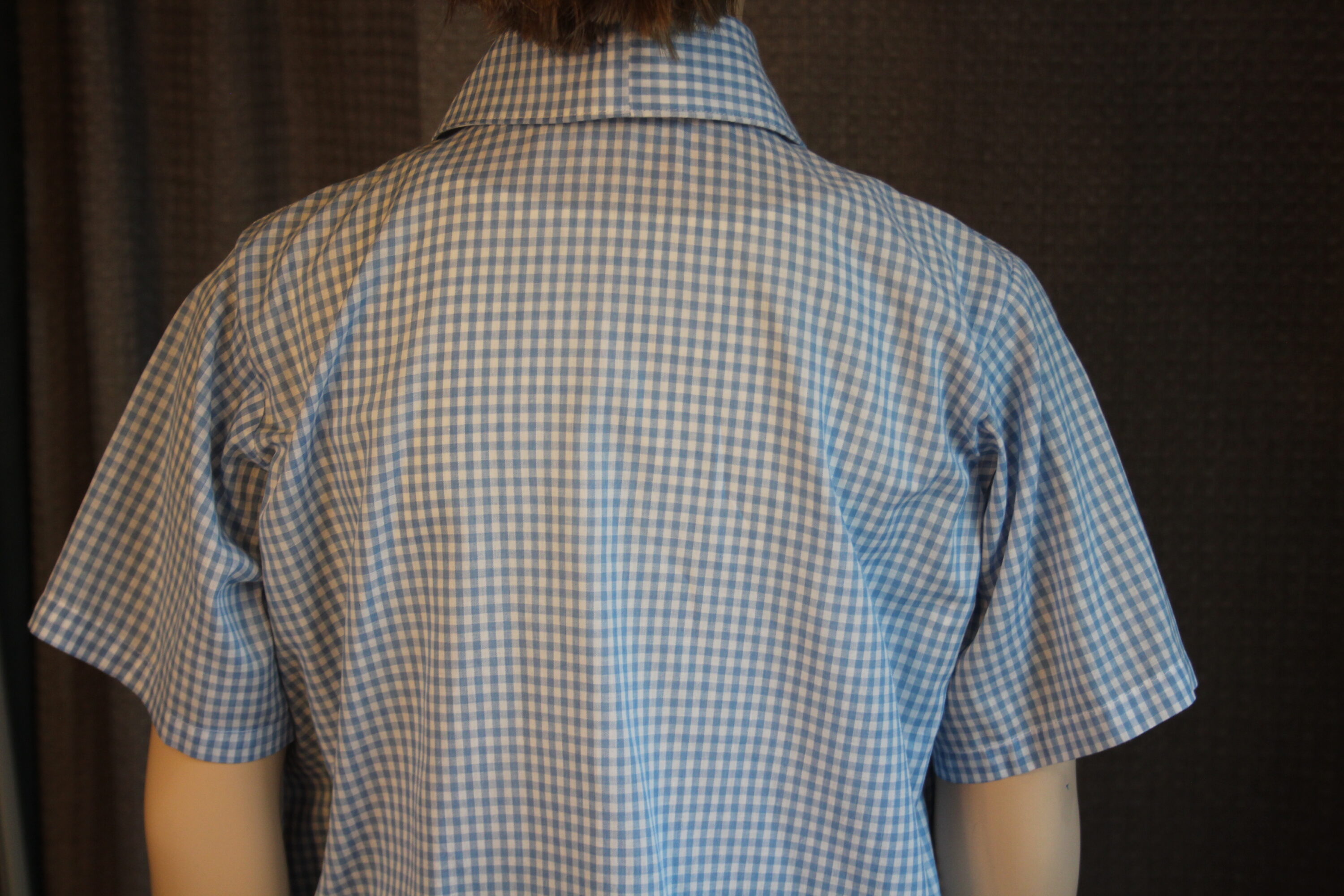
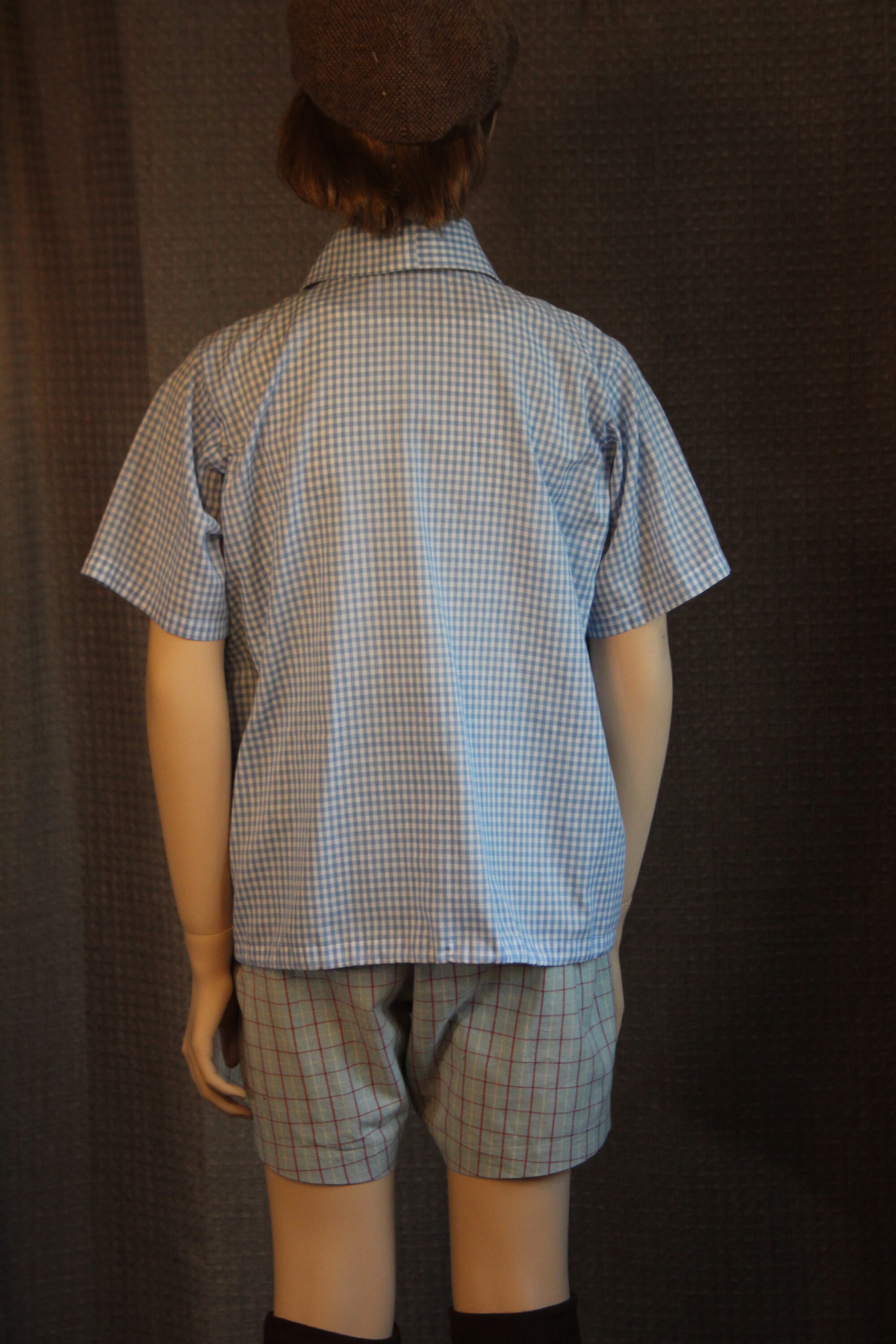
Breeches/Knickers
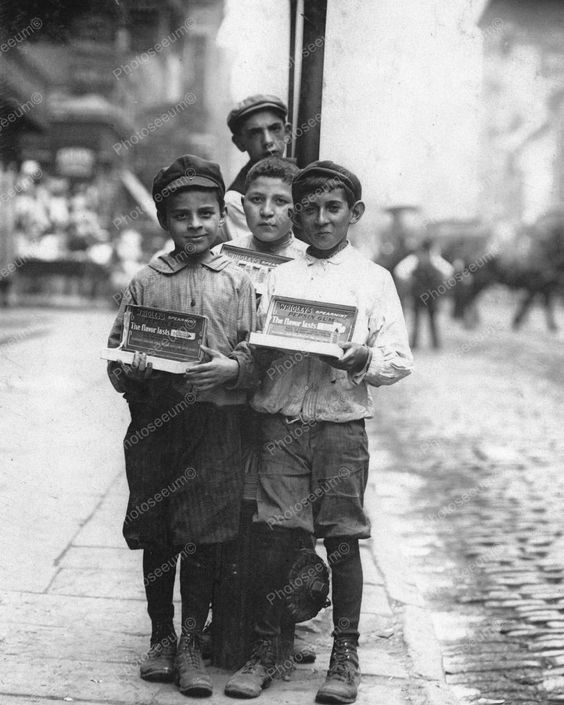
These knickers are from the same McCall’s pattern and made from a lovely wool tweed like the jacket. They are made absolutely historically correctly using the interesting, complex, and extremely difficult methods of fly structure (front button flap – similar to today’s button fly jeans), front, and back pockets. Even the belt loops are historic and time consuming. The most difficult was figuring out the waistband which the pattern wanted to be made of lining material while the sketches (and extant photos) showed the waistband to be made from the main fabric, although running an equal degree of difficulty and taking TWO DAYS EACH to build, were the side pockets.
These pockets are different than anything we’ve seen before, and they leave a big gaping hole in the side. Why? We have no clue, but we carefully followed the scant instructions and extant examples as best we could. Linings are silk, but on the fly we used the main heavy fabric which made it a bit bulkier (our mannequin has no man parts, so the bulk is to give a bit of realism).
The waistband ended up being a design for creating and inside buttonhole for suspenders, which we are not using, so we modified it to simplify it or we would have been building the waistband for a week. Although we EXACTLY placed all pockets including the tiny coin or key pocket at the front waist, it ended up too high and into the waistband, so we had to create a way to work around it.
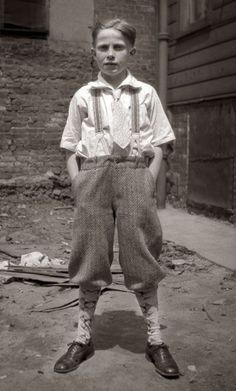
Same thing happened with the other pockets; the back pockets, although exactly built as per pattern and placement, ended up rather narrow to get a hand into, and wide on the body. We guess that’s because when belted or with suspenders, the center back of the pants is supposed to gather up, which would bring the back pockets in.
We built this exactly, but either boys in the 1920’s had skinny skinny calves and knees, or our mannequin is HUGE. The bottom band of the knickers legs was more than 3″ too small to go around! We had it all done, so had to add and extension. These were often worn under the stockings, so it’s OK. We’d like to know how it fits a real boy. Overall the fit was loose around the waist which was fine because the belt made for a perfect fit, and very tied at the bottom. It might have been better to just give up, hem the bottom and make “fours” (half knickers; half trousers or a short and full trouser/shorts).
Pockets and linings are Giza Egyptian 100% cotton for comfort; same as used in the jacket. It looks and acts just like silk taffeta. Buttons are a gorgeous mother of pearl dark gray/brown from the polished back side of the mussel shell, and are also over 100 years old.
Overall, as women’s dressmakers, were are VERY glad to have these done, as we rarely if ever have made flies, side pockets, and fit to accommodate male parts, let alone the left side crossover for buttons, etc. Women just don’t have these things, and it was for us a lot like suddenly having to switch to driving on the left side of the road when you’ve been driving 50 years on the right.
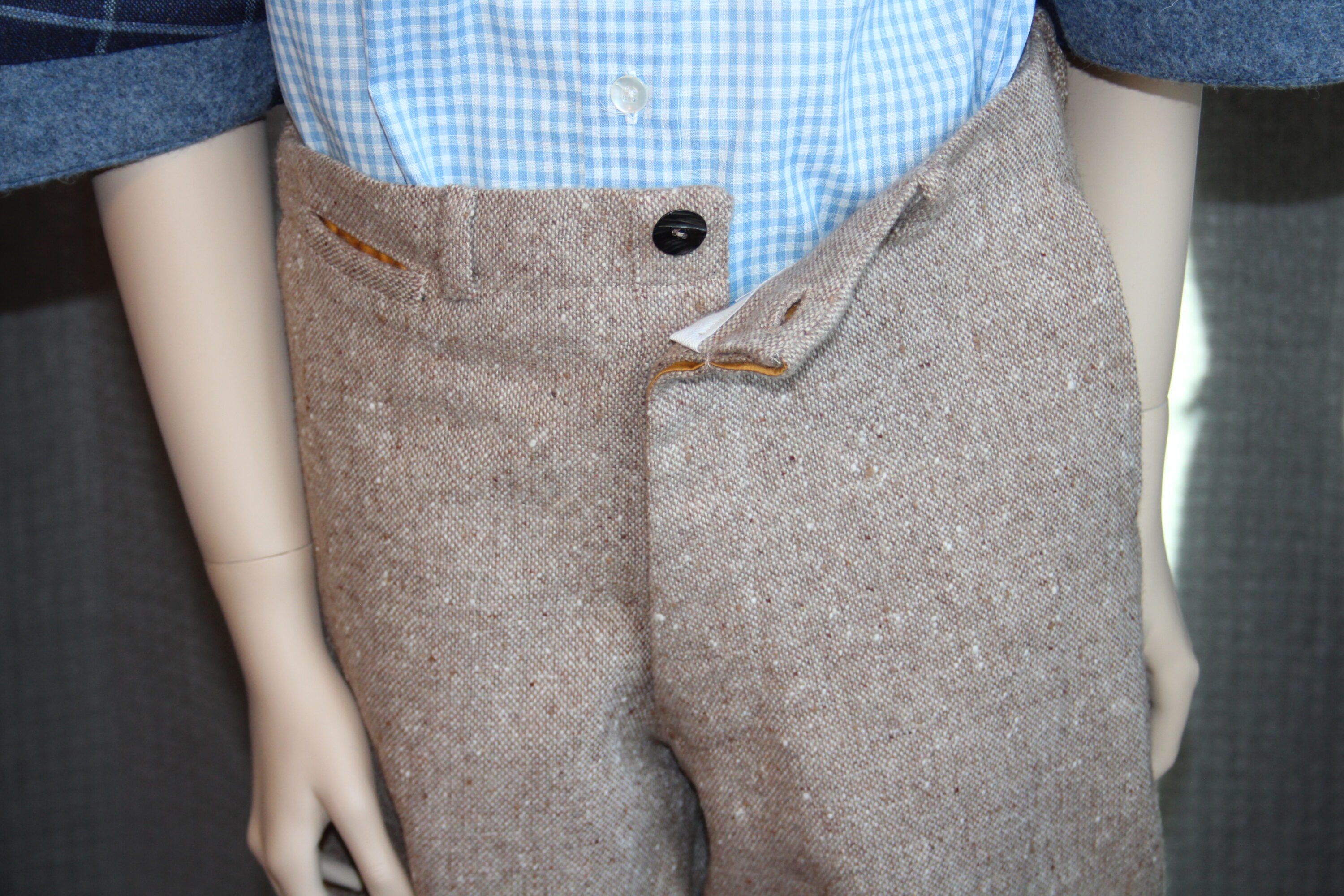
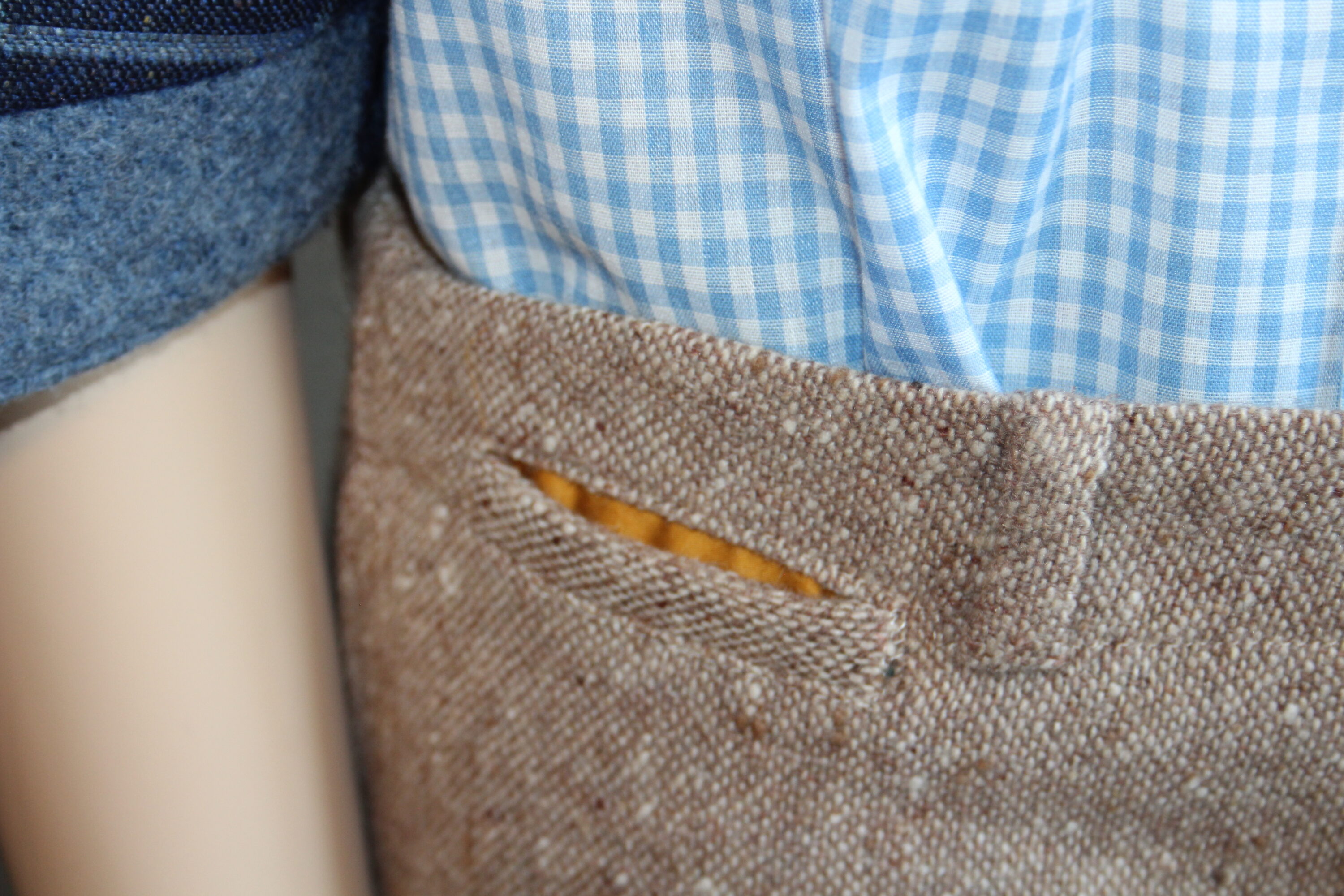
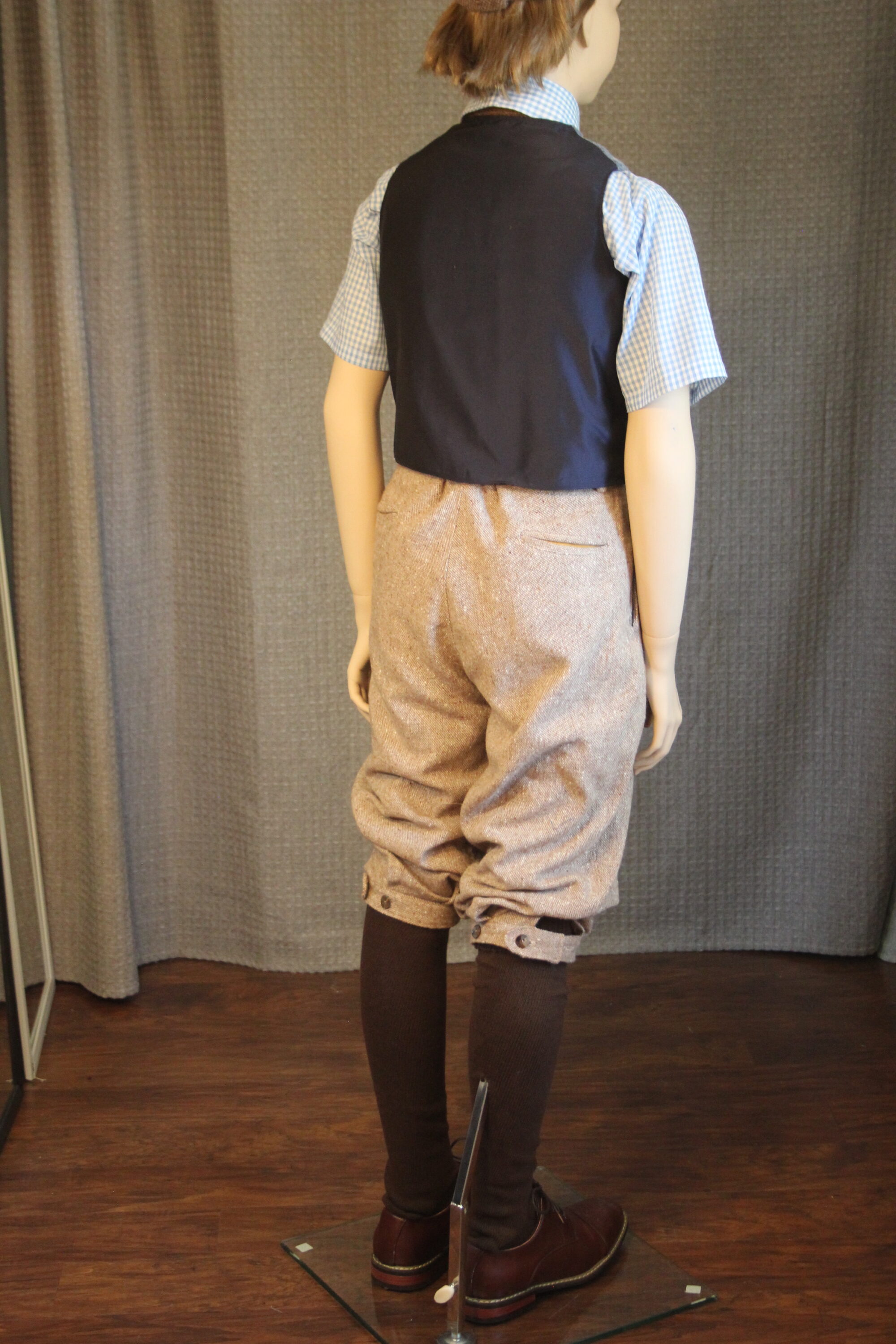
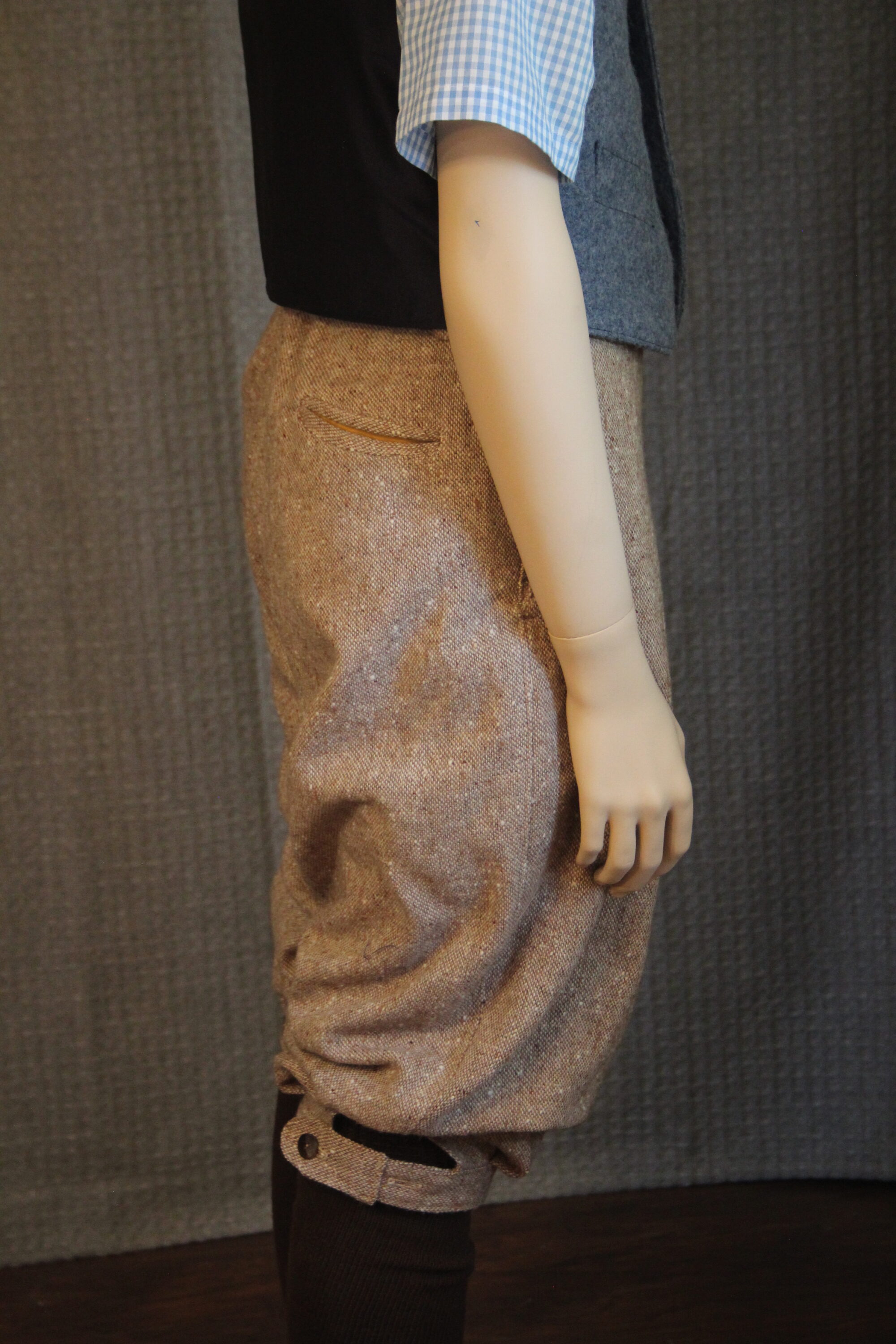
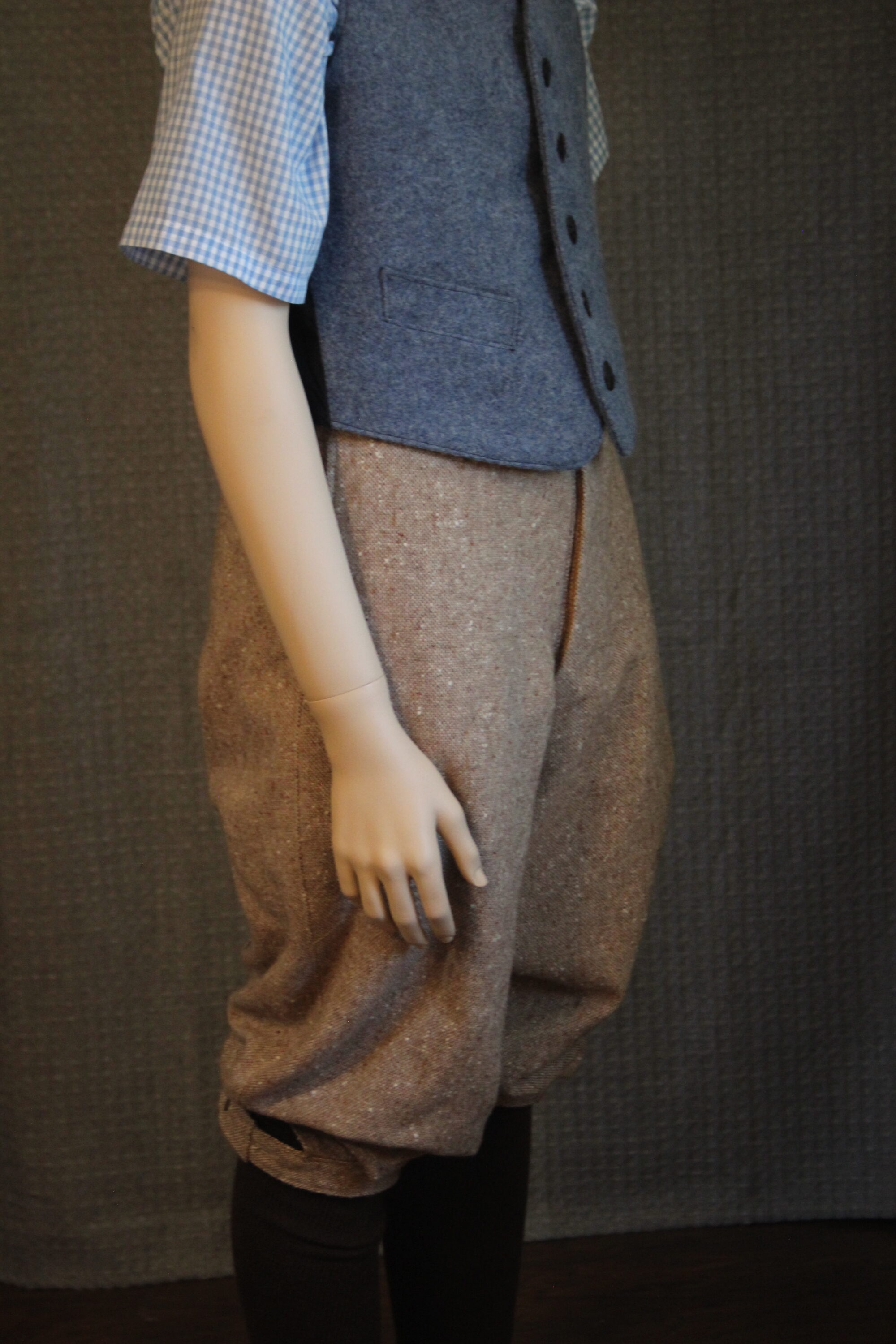
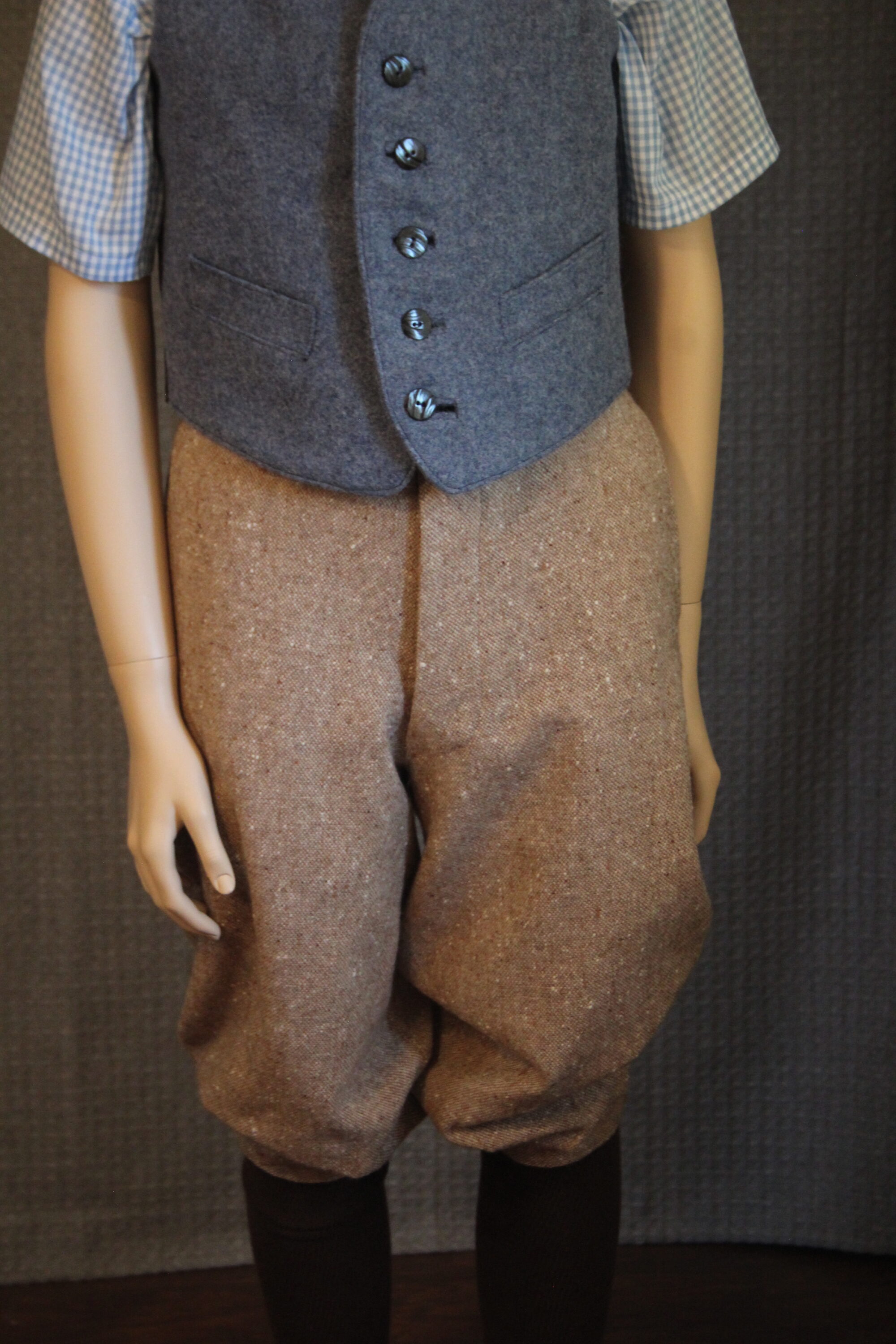
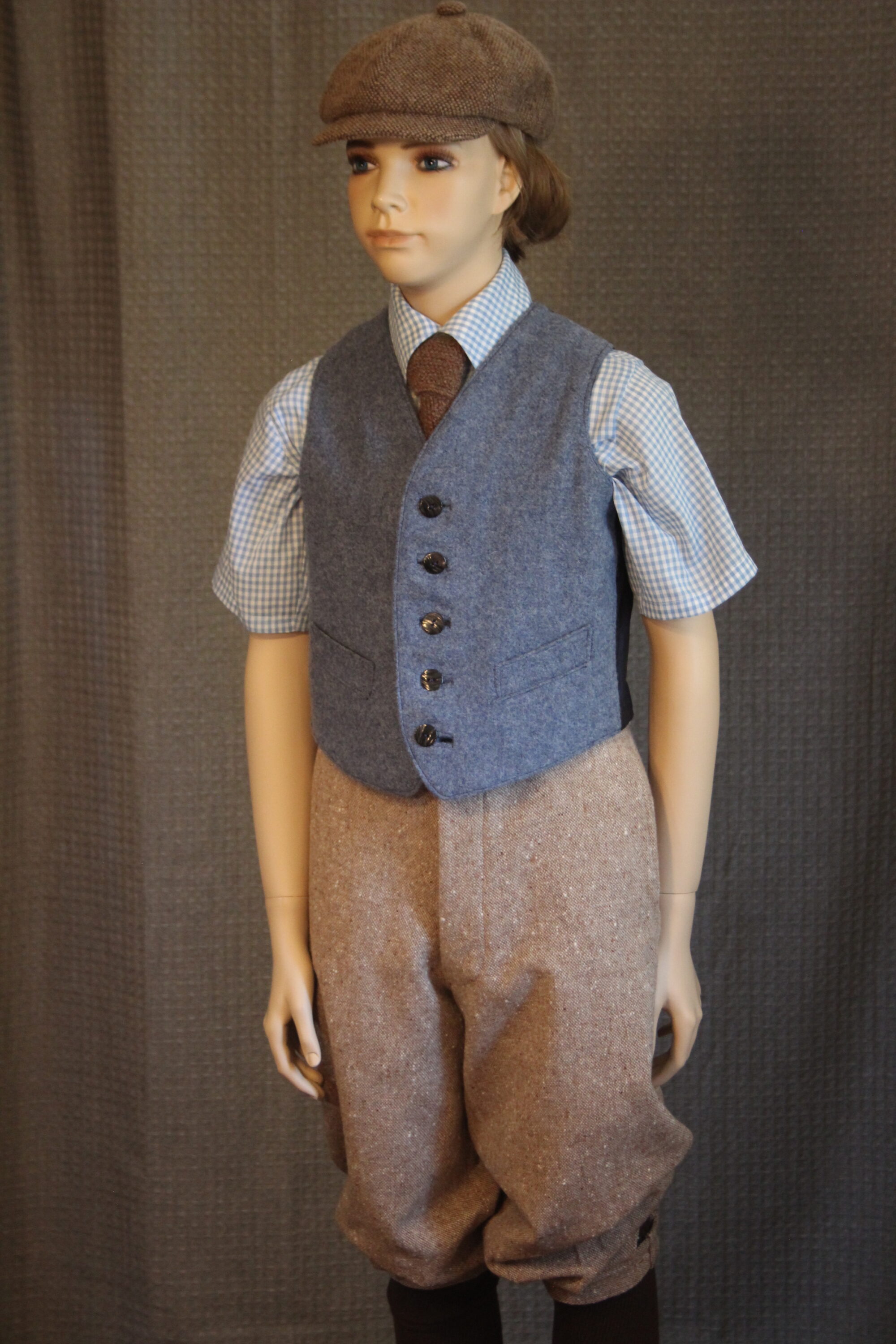
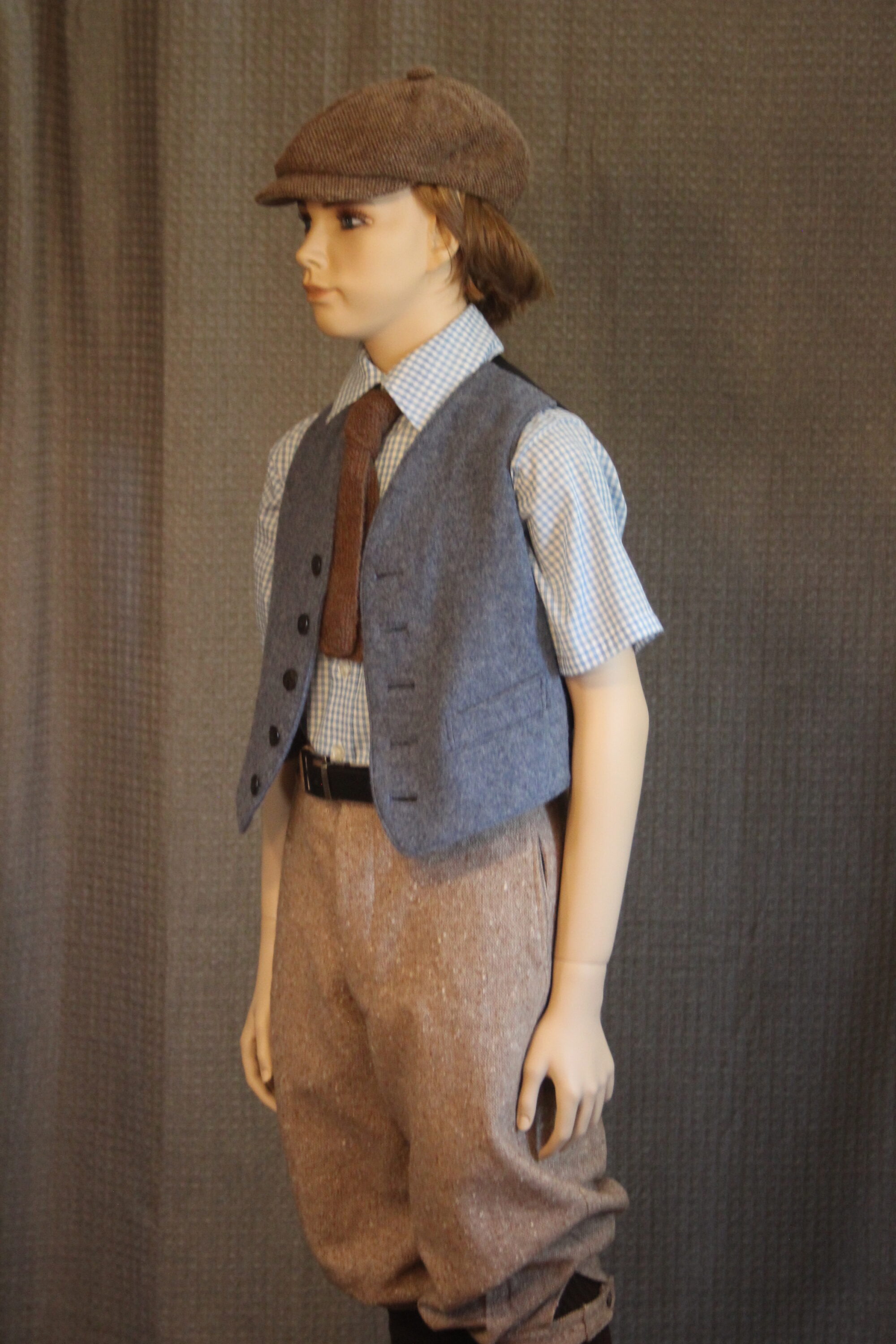
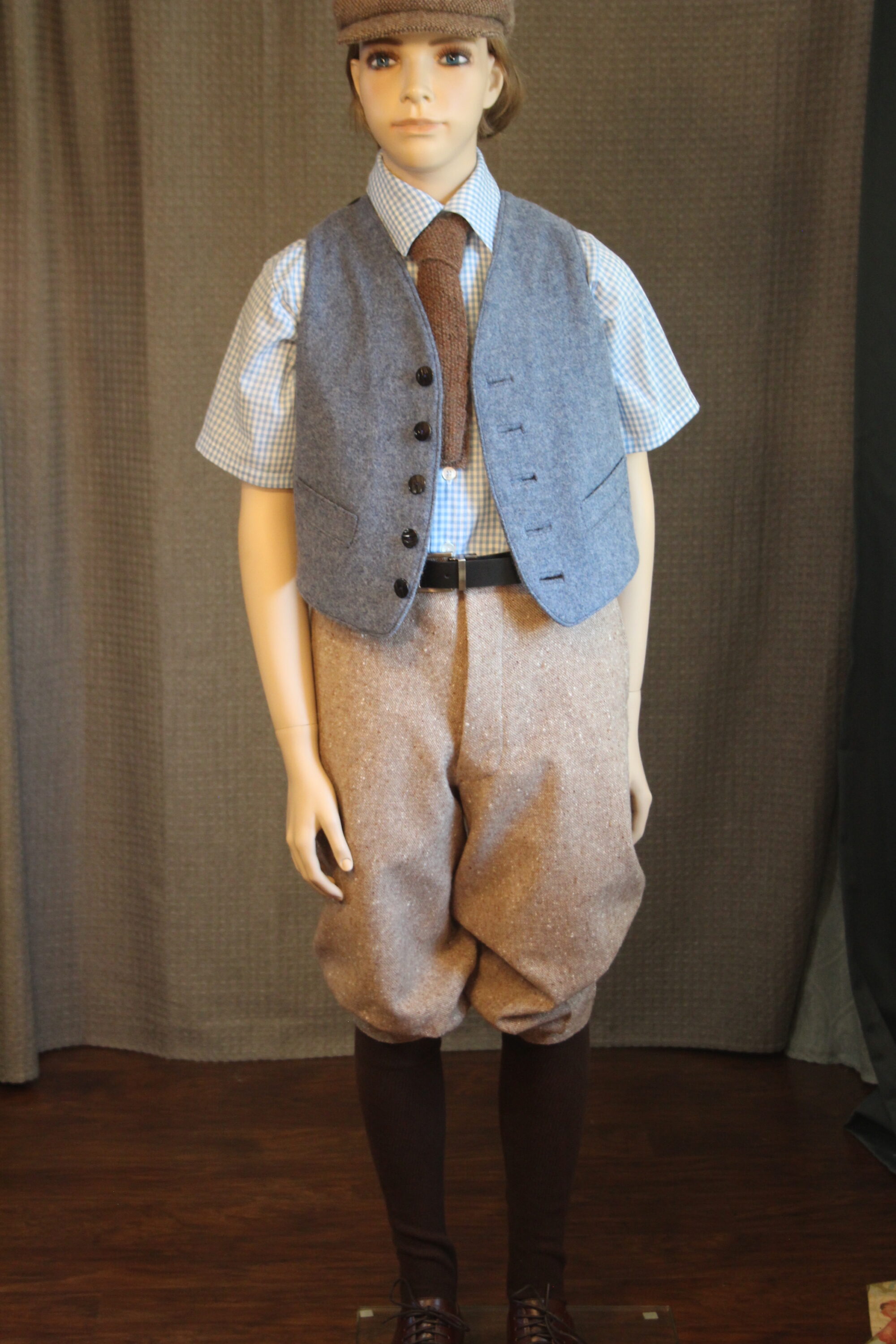
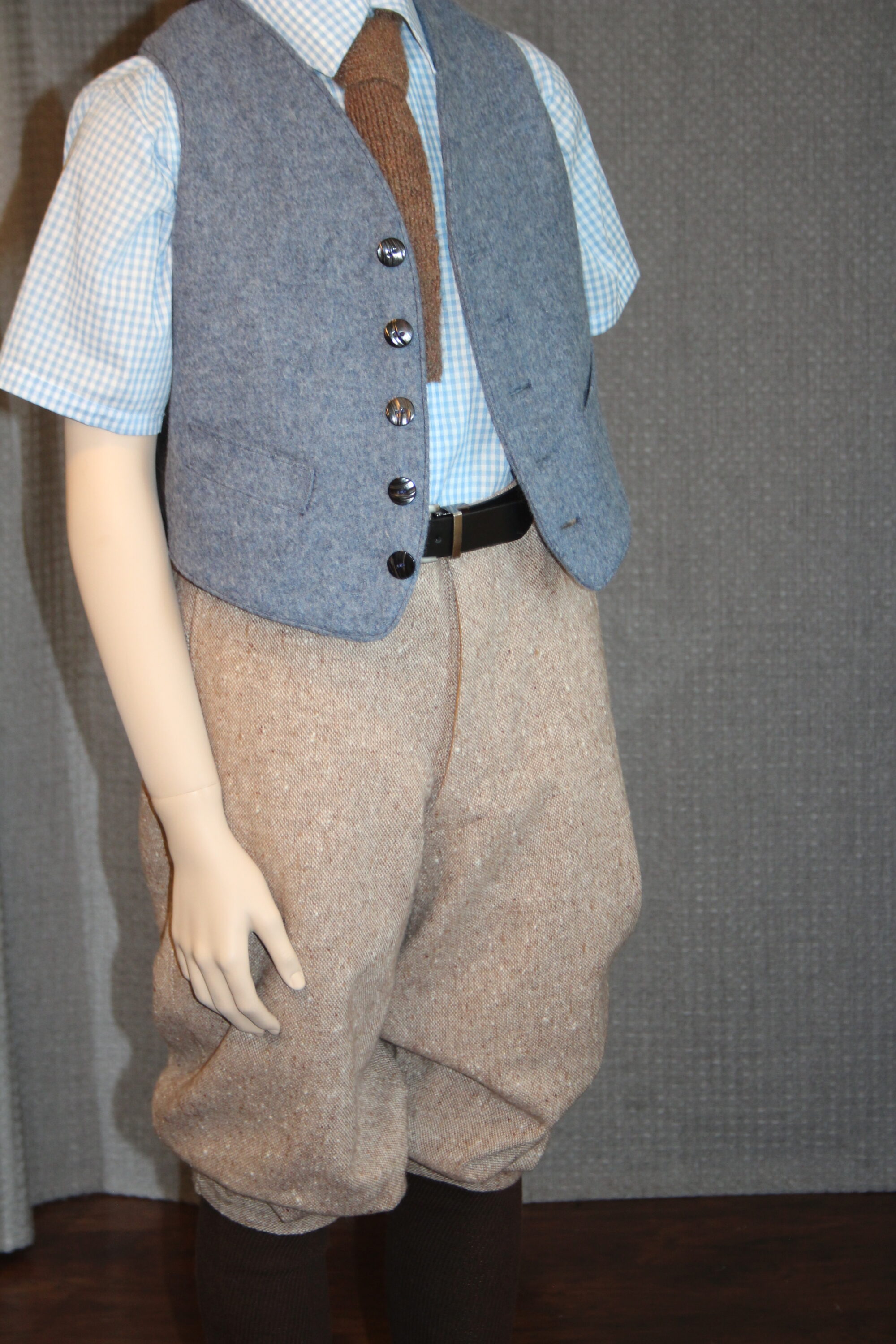
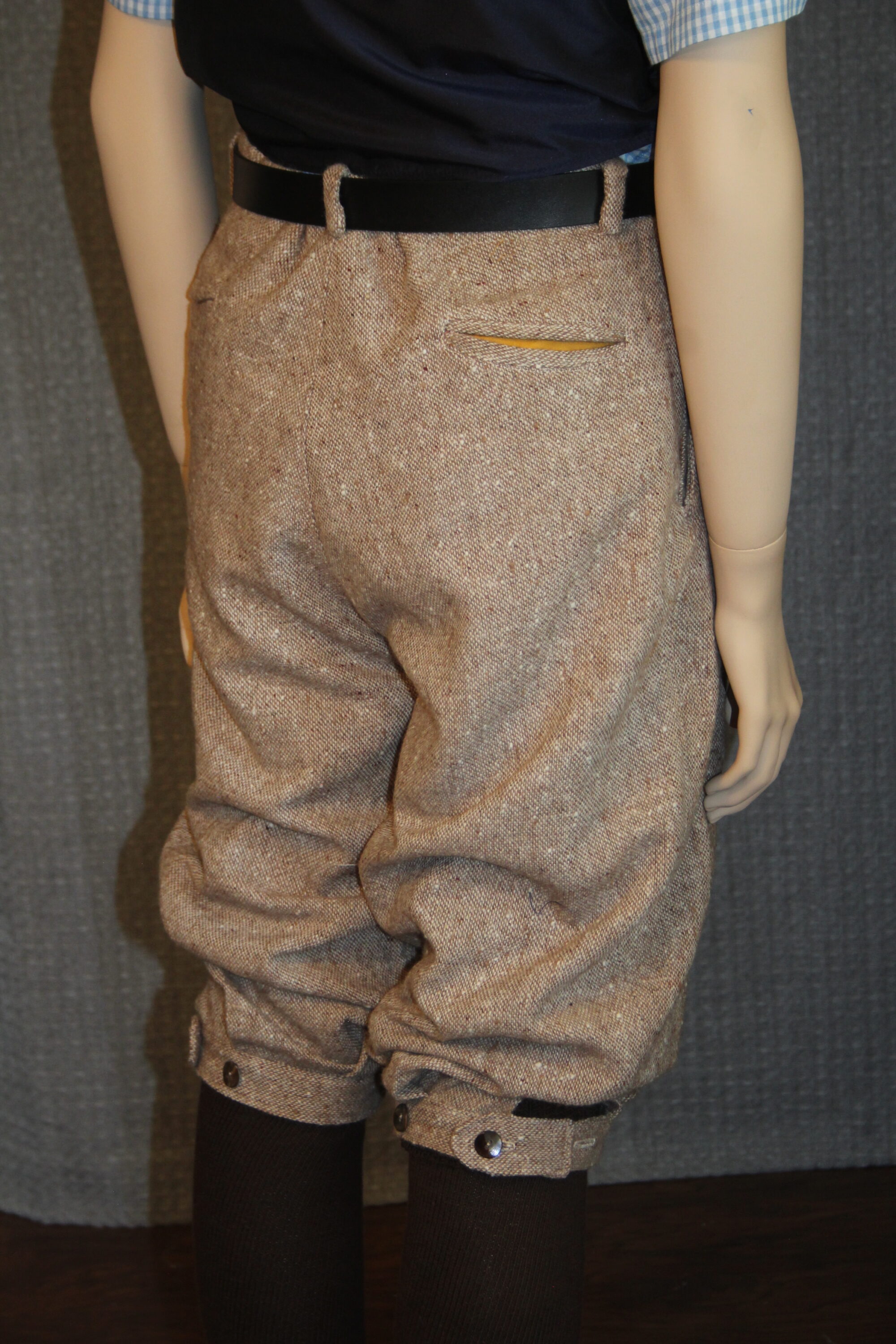
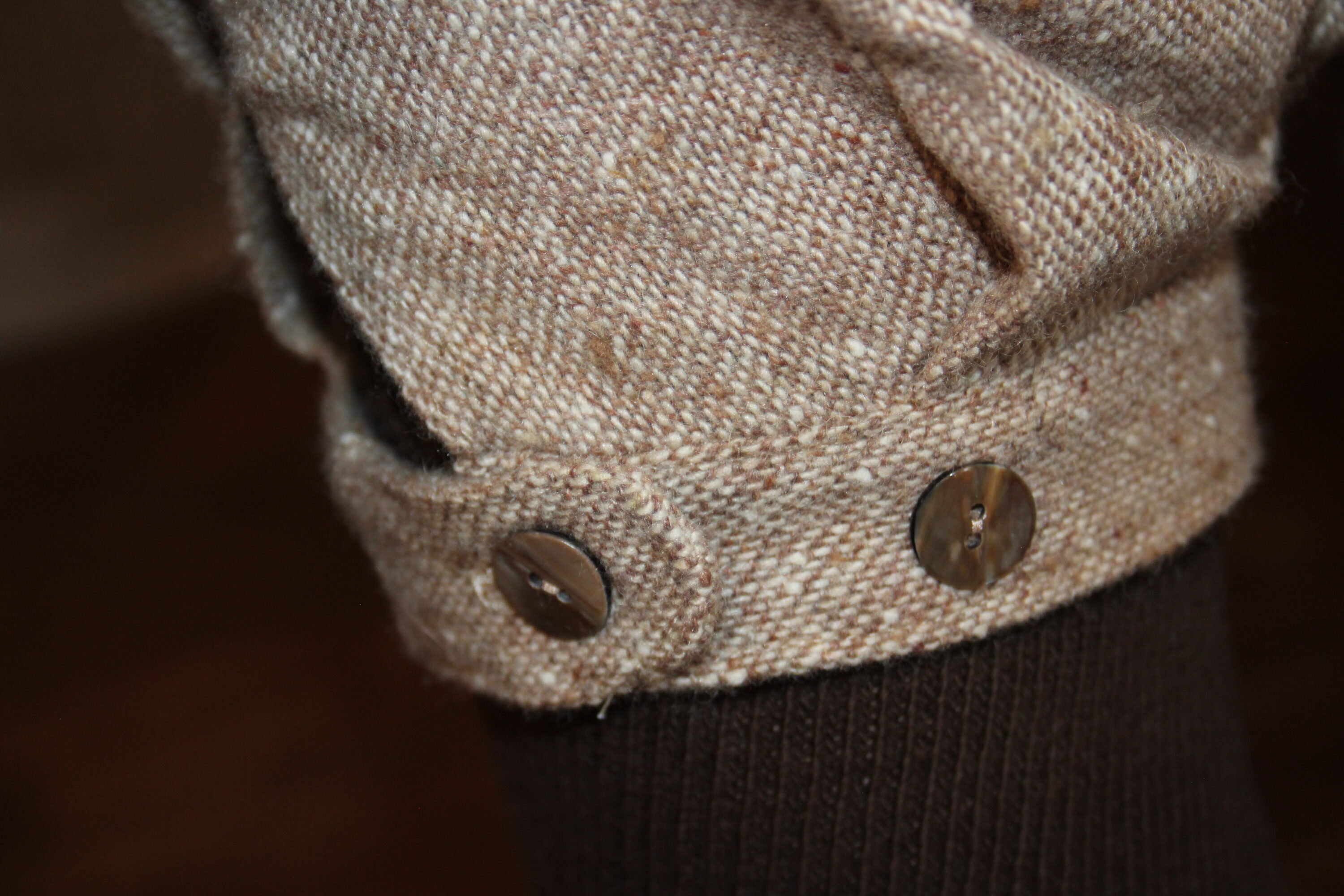
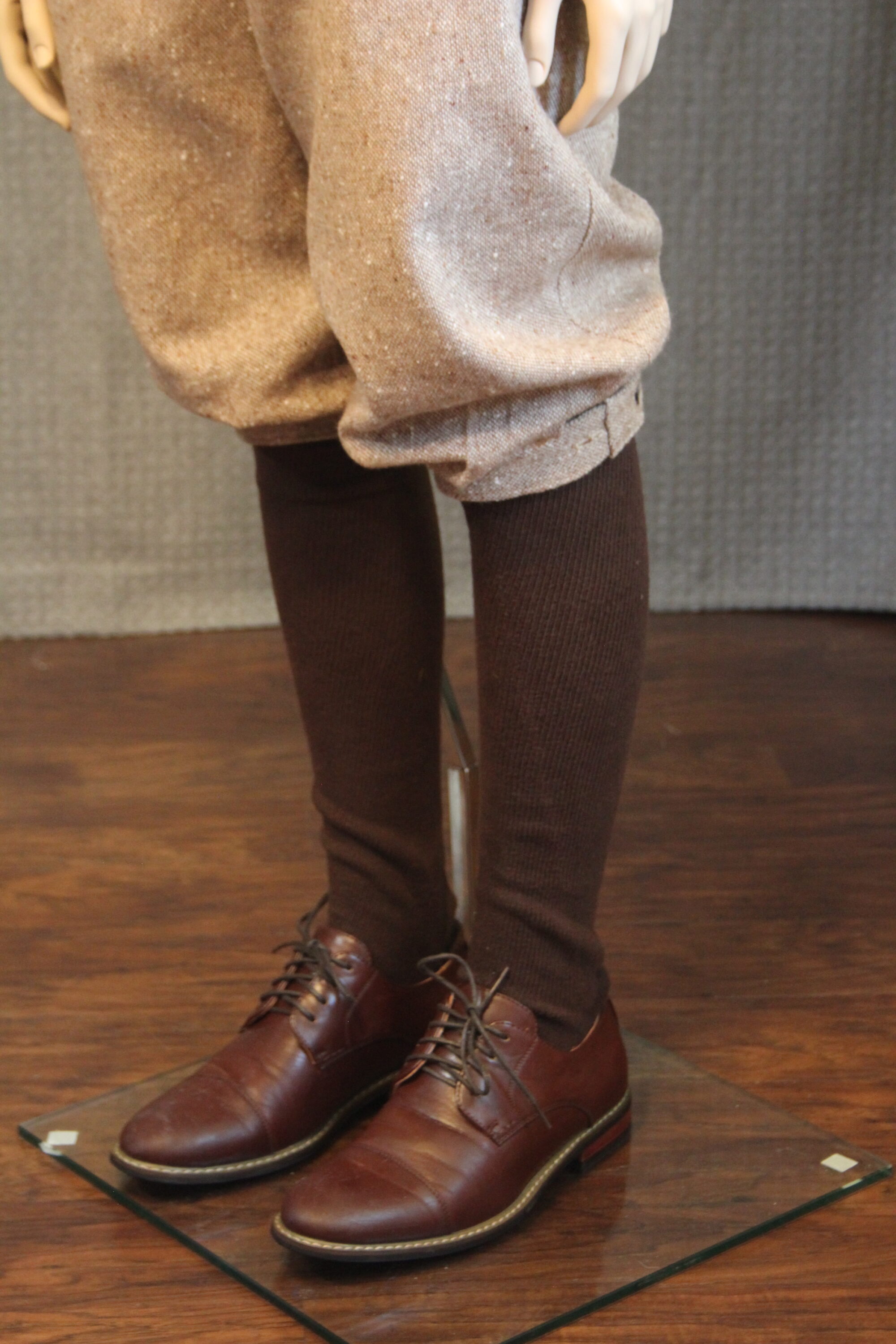
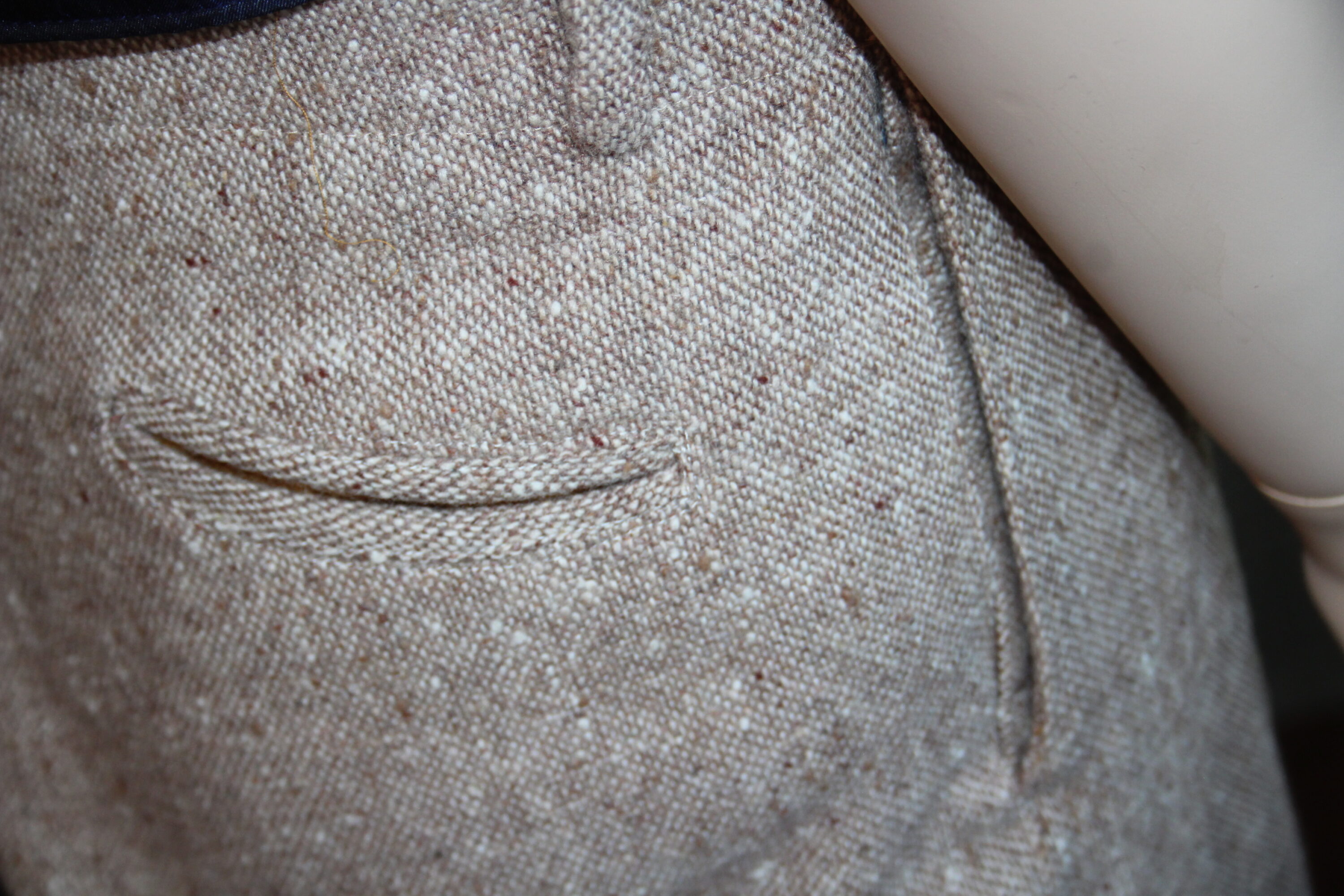
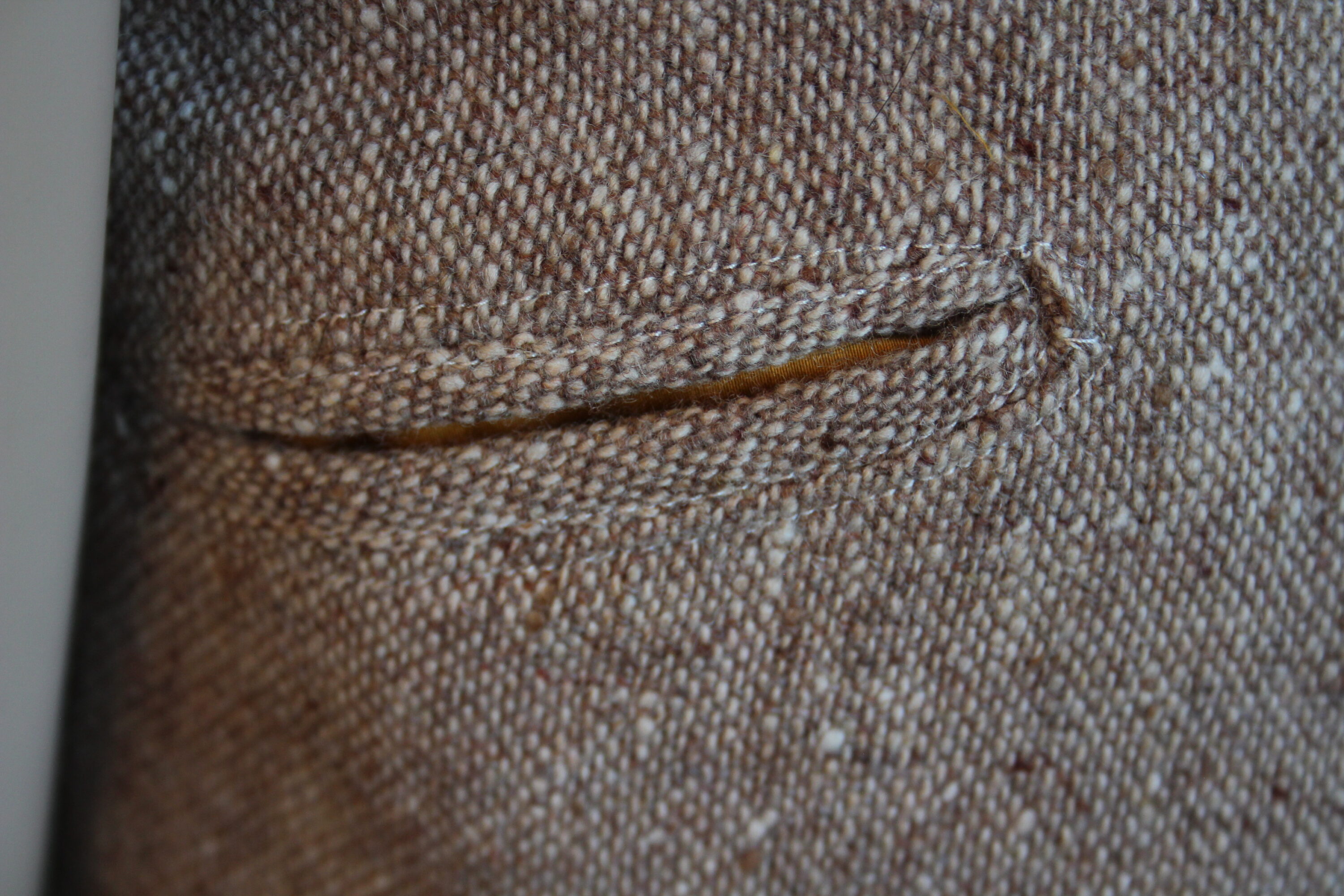
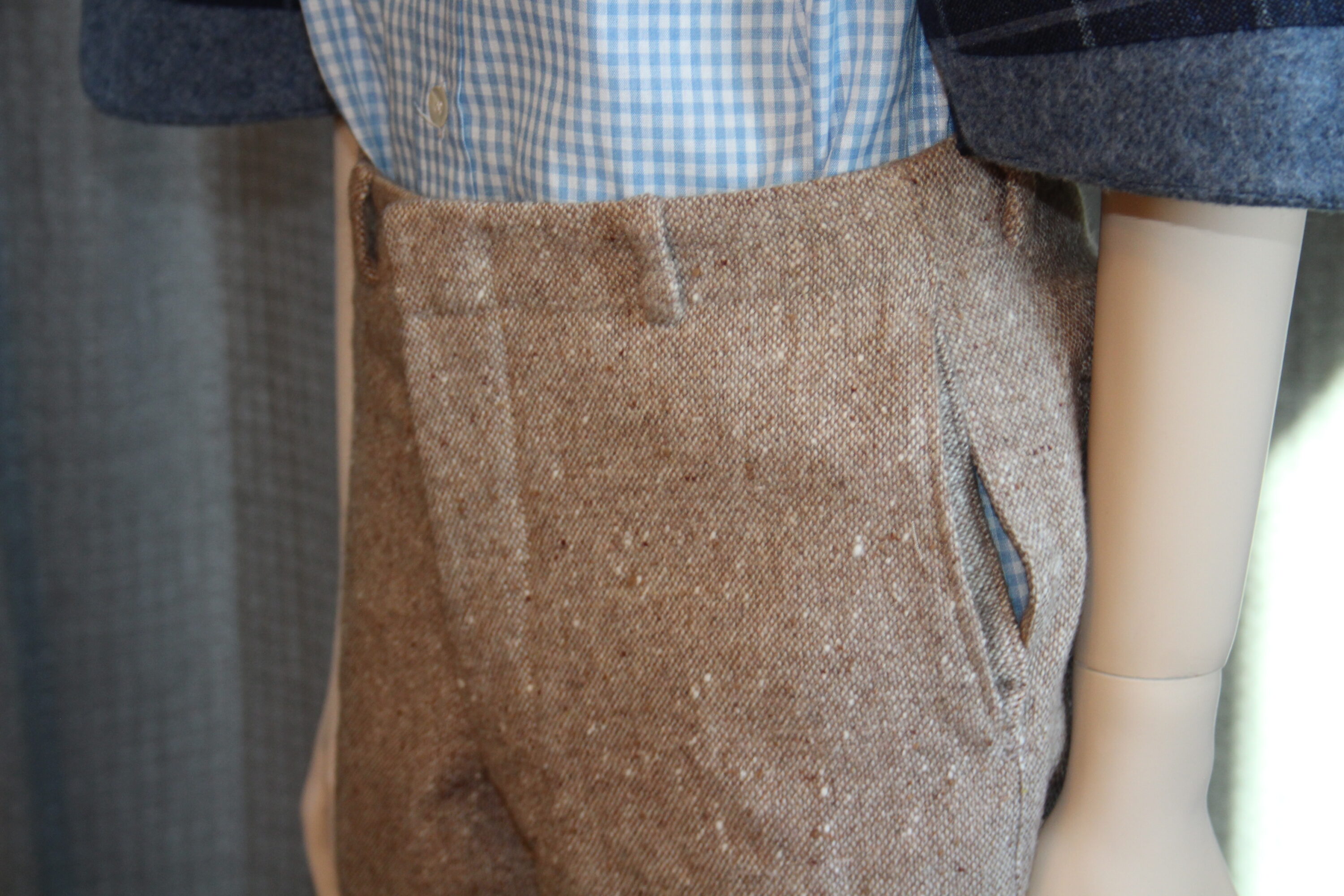
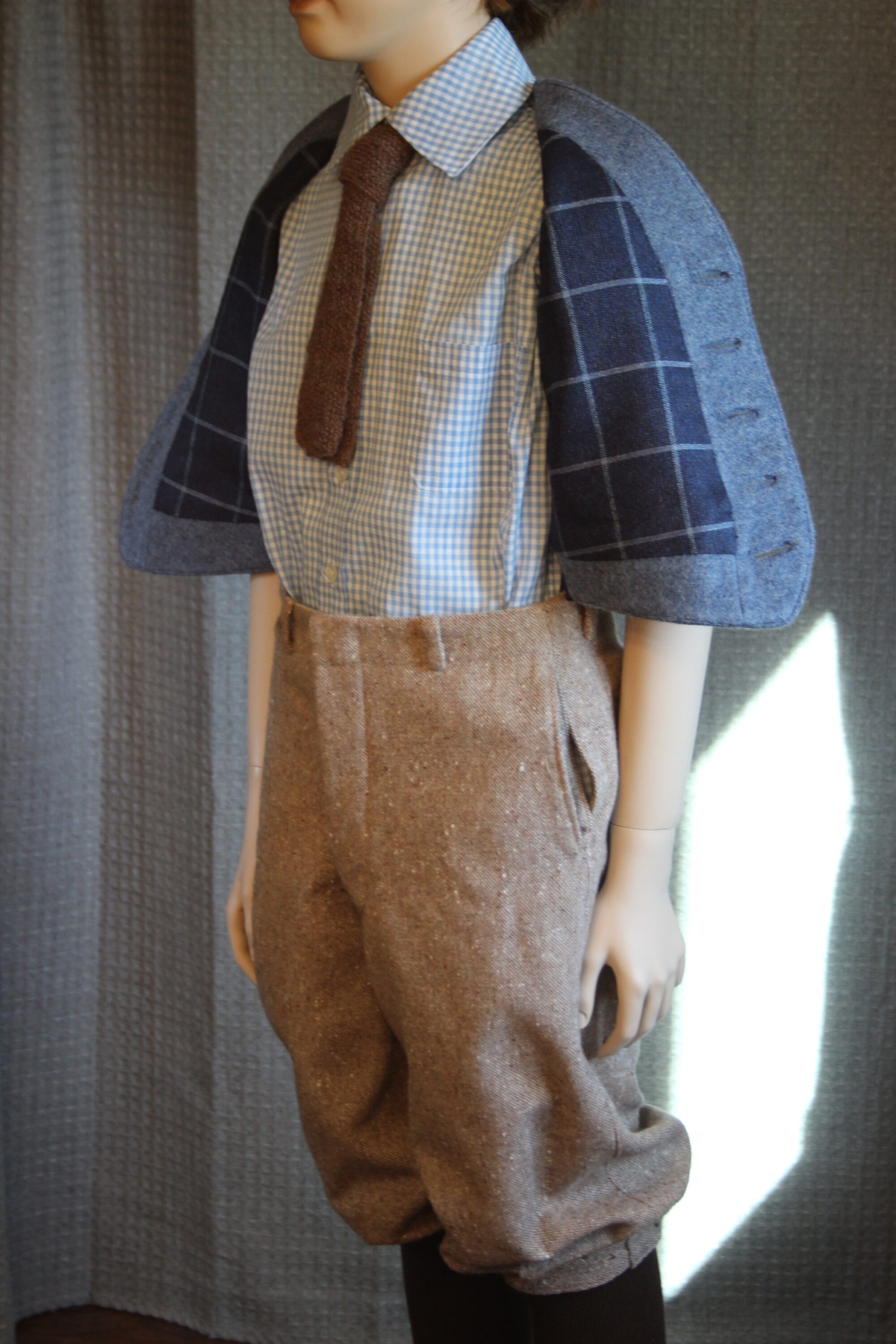
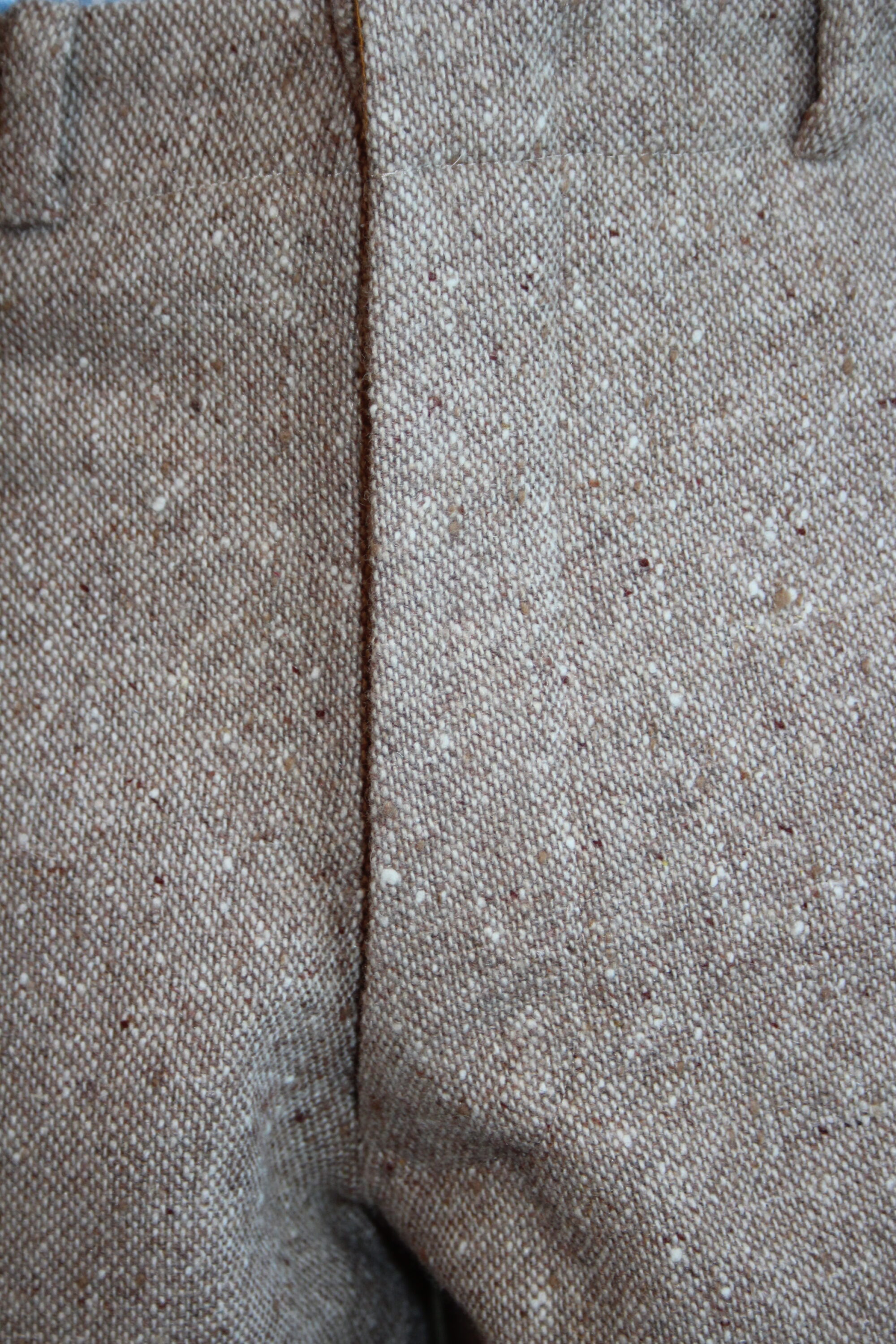
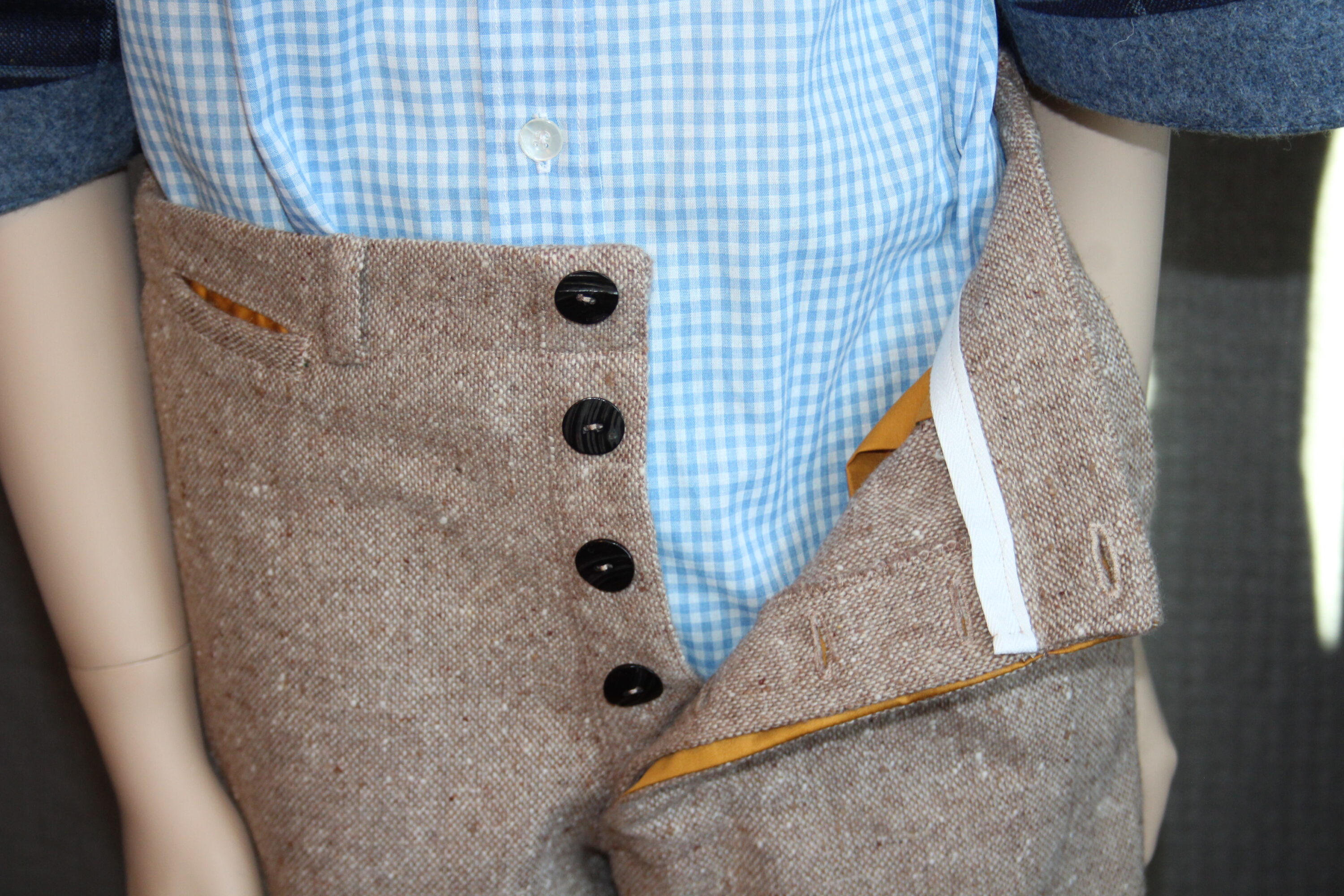
Vest
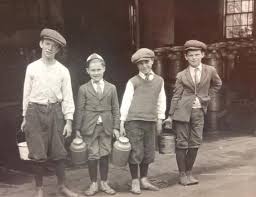
Of 100% cotton felt, this was lovely to work with. We chose to make hand tailored buttonholes and welt pockets for a classy look. Actually, despite the museum personnel being worried “don’t make this too fancy. These are rural boys!”, rural boys DID wear these lovely tailored suits with these beautiful techniques. The McCall’s pattern we used is the same for vest, knickers, and jacket, and was actually nice to work with, although we had NO instructions for the vest and no sketches for some reason while there were some sketches for jacket and knickers.
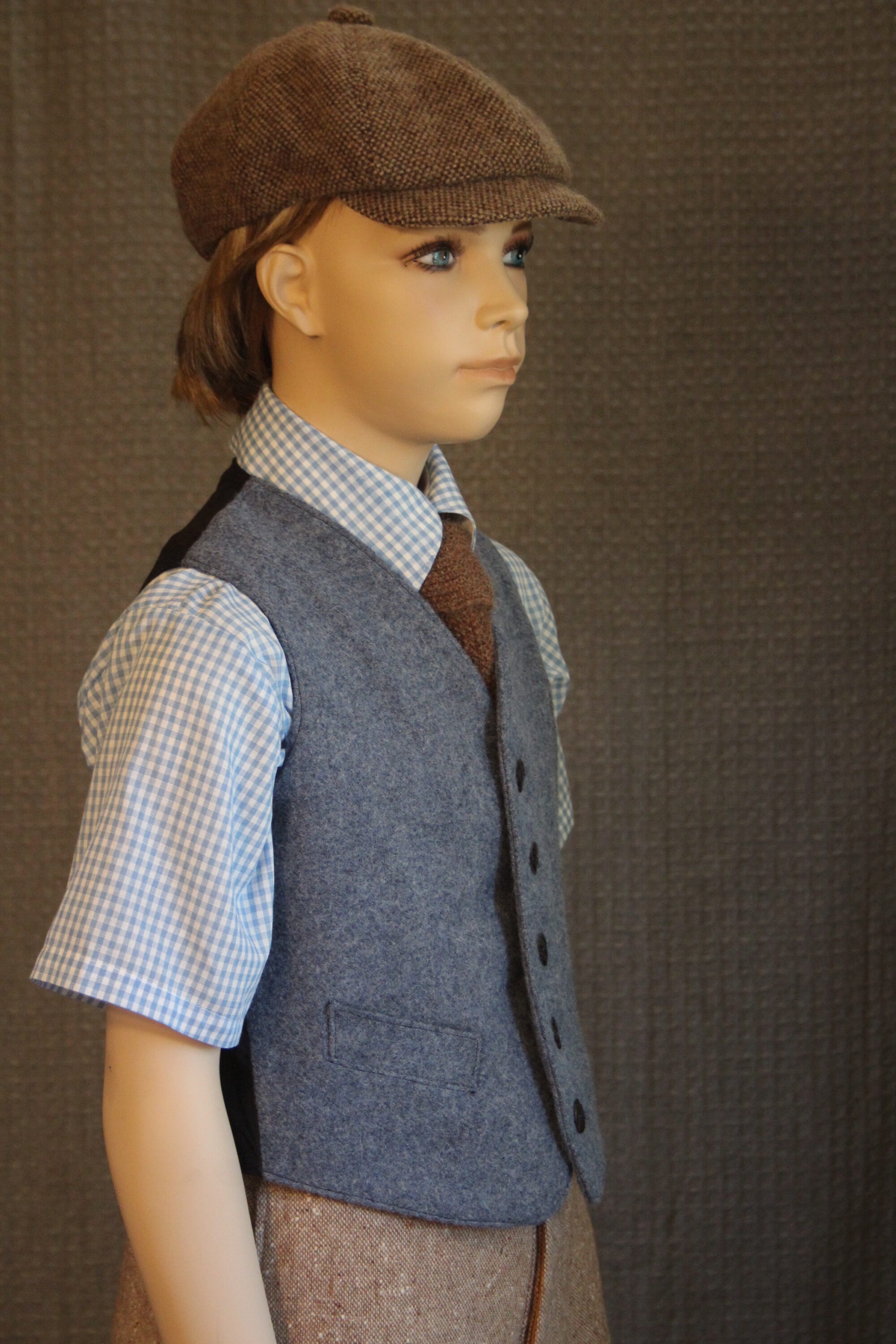
This is fully lined in the same fabric as the girl’s and the back section is of 100% silk taffeta which is lovely to work with, and these are REAL working pockets – not just flaps. Buttons are the same gorgeous 100 year old mother of pearl polished backside of the mussel from Suzi’s hometown on the Mississippi River. We chose the bigger size to show them off, and the placement being near the edge of the vest center front is historically correct as is the length angle back length, and fit (except it’s a bit big on the mannequin; made to fit a modern size 12 real boy).
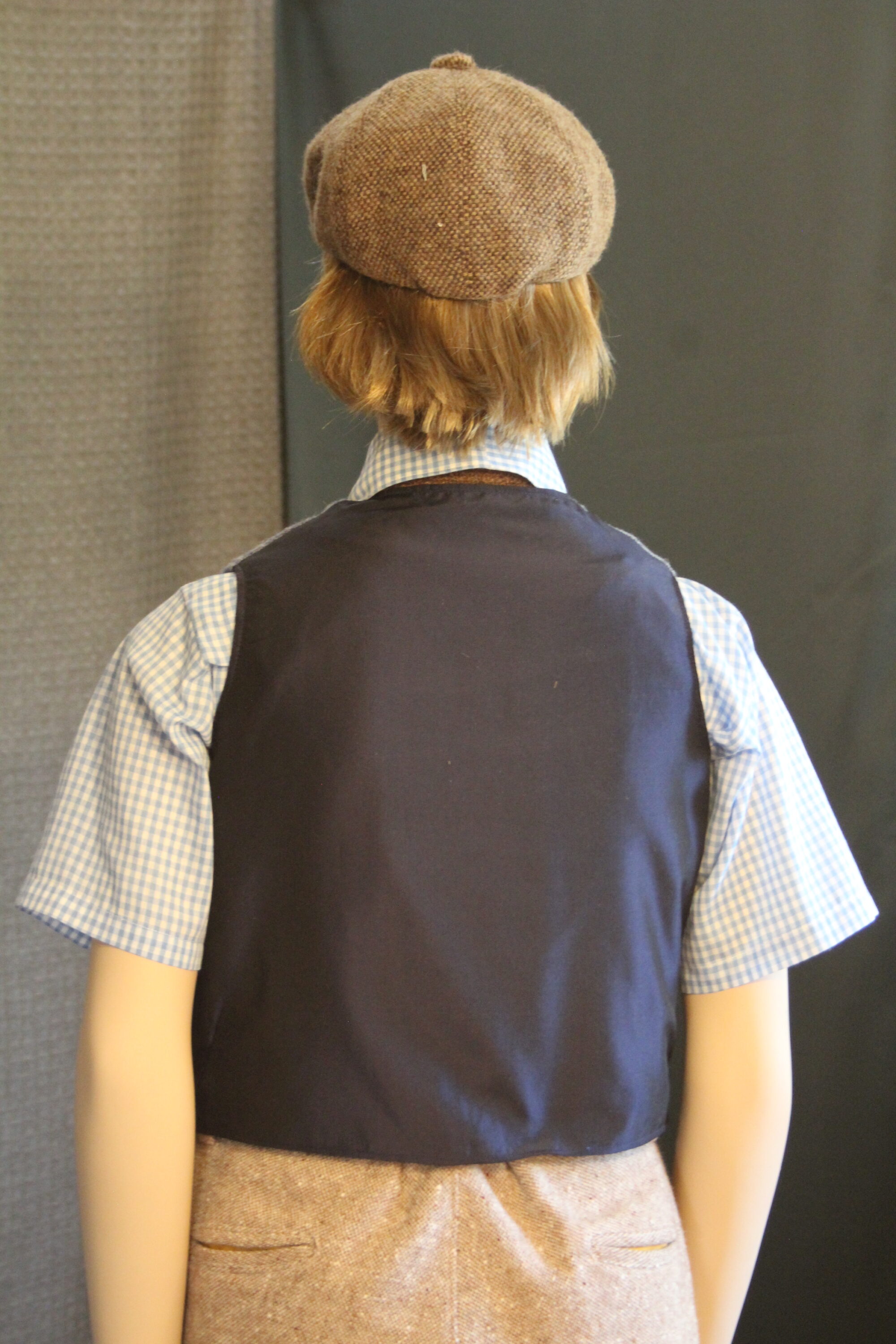
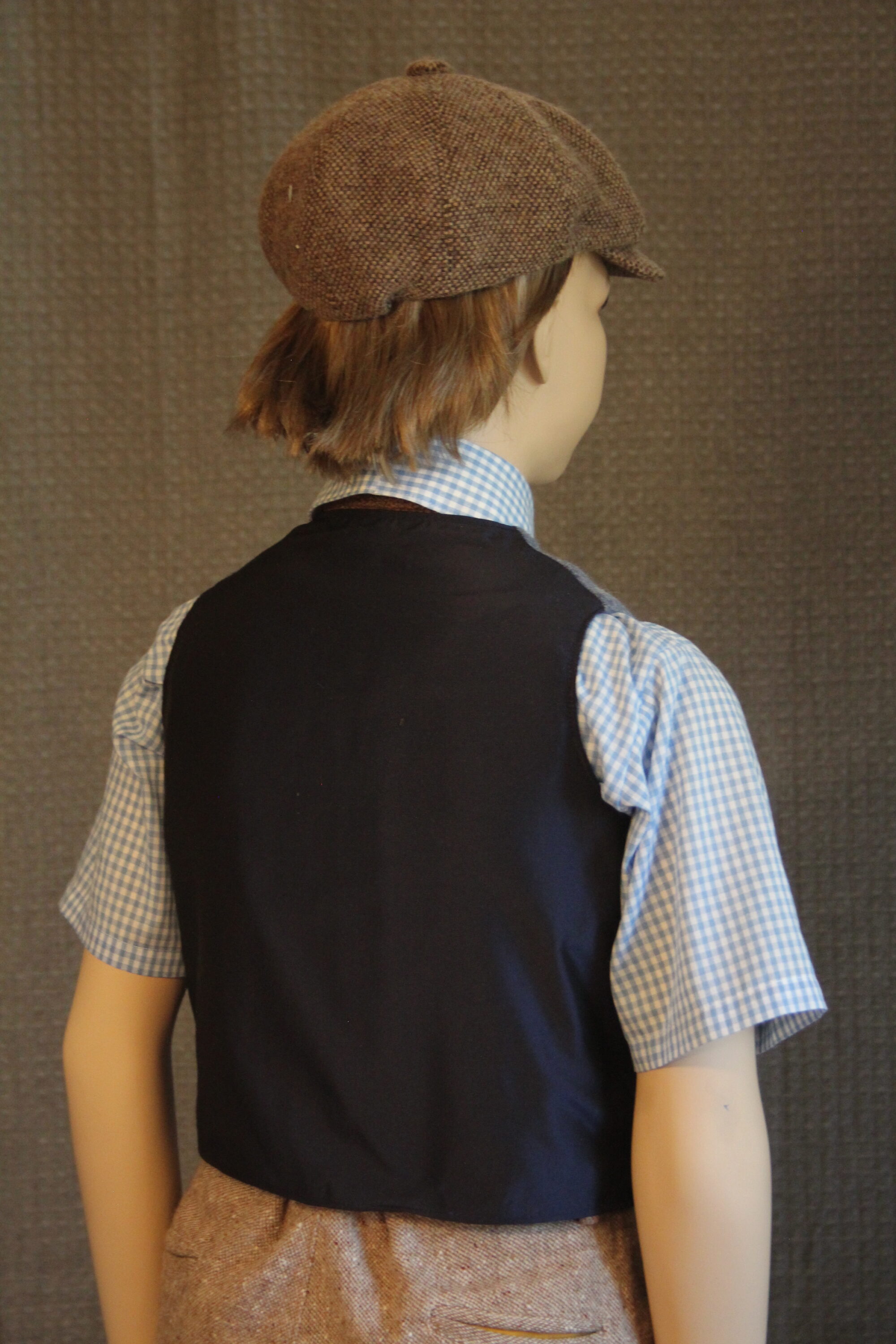
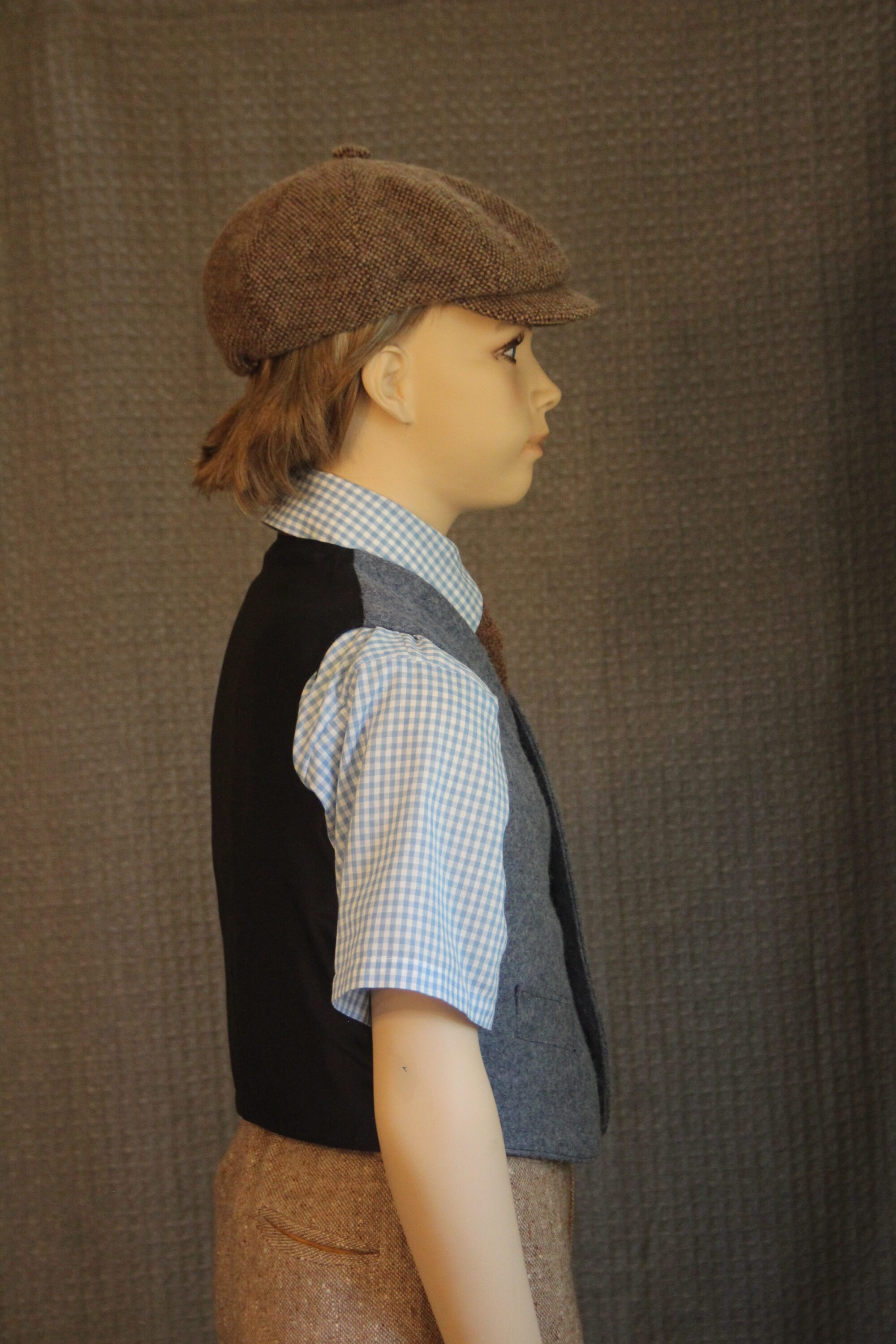

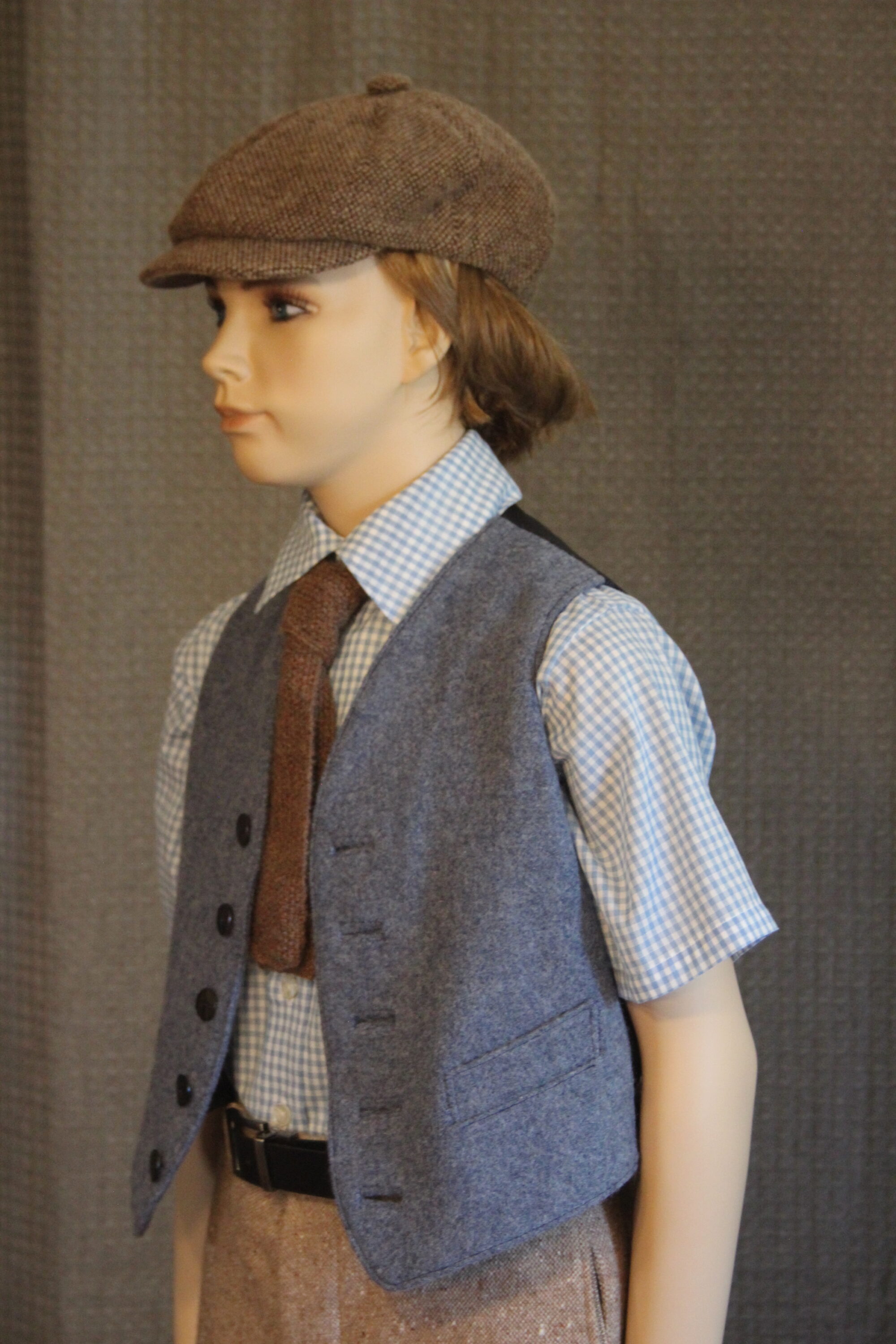
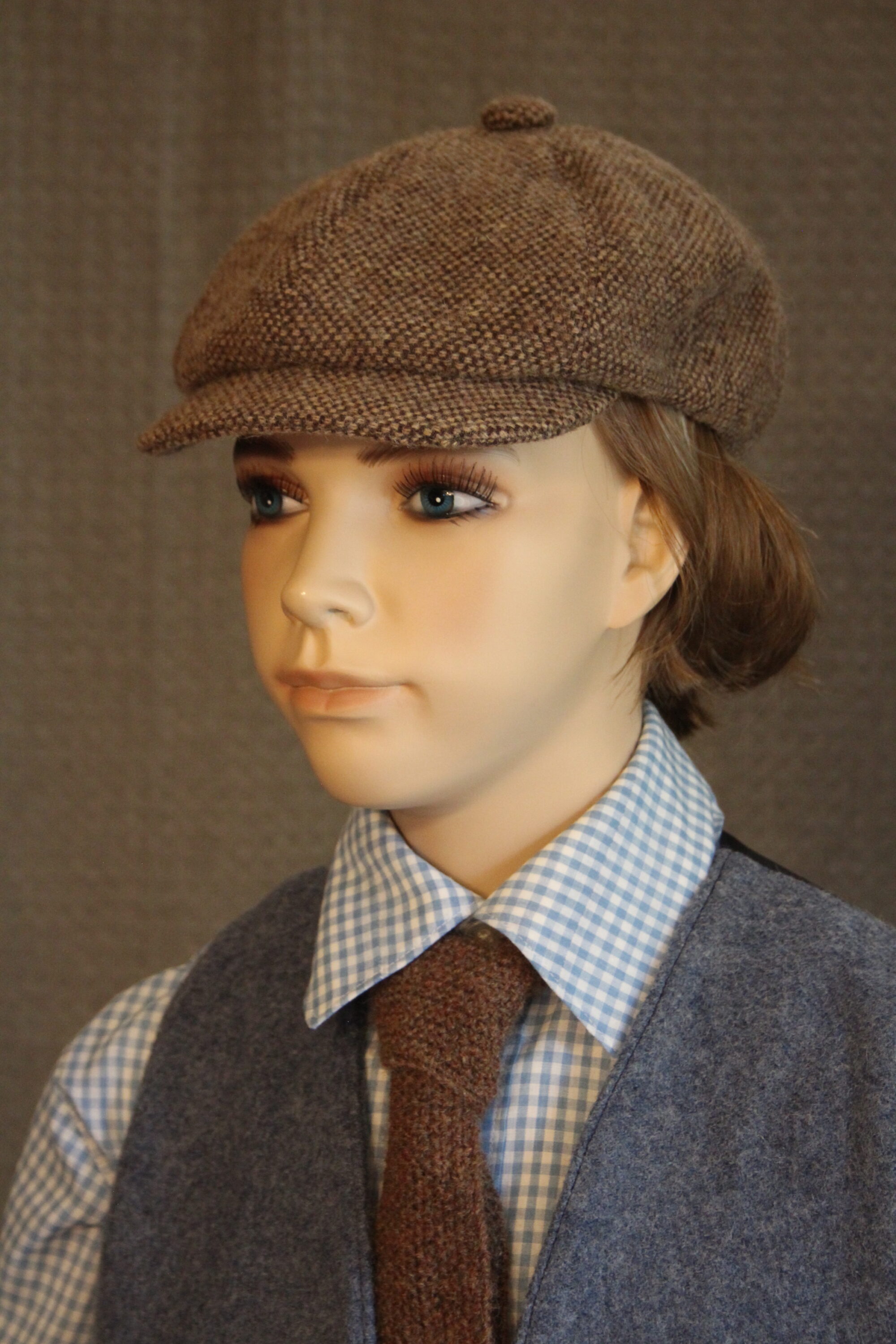
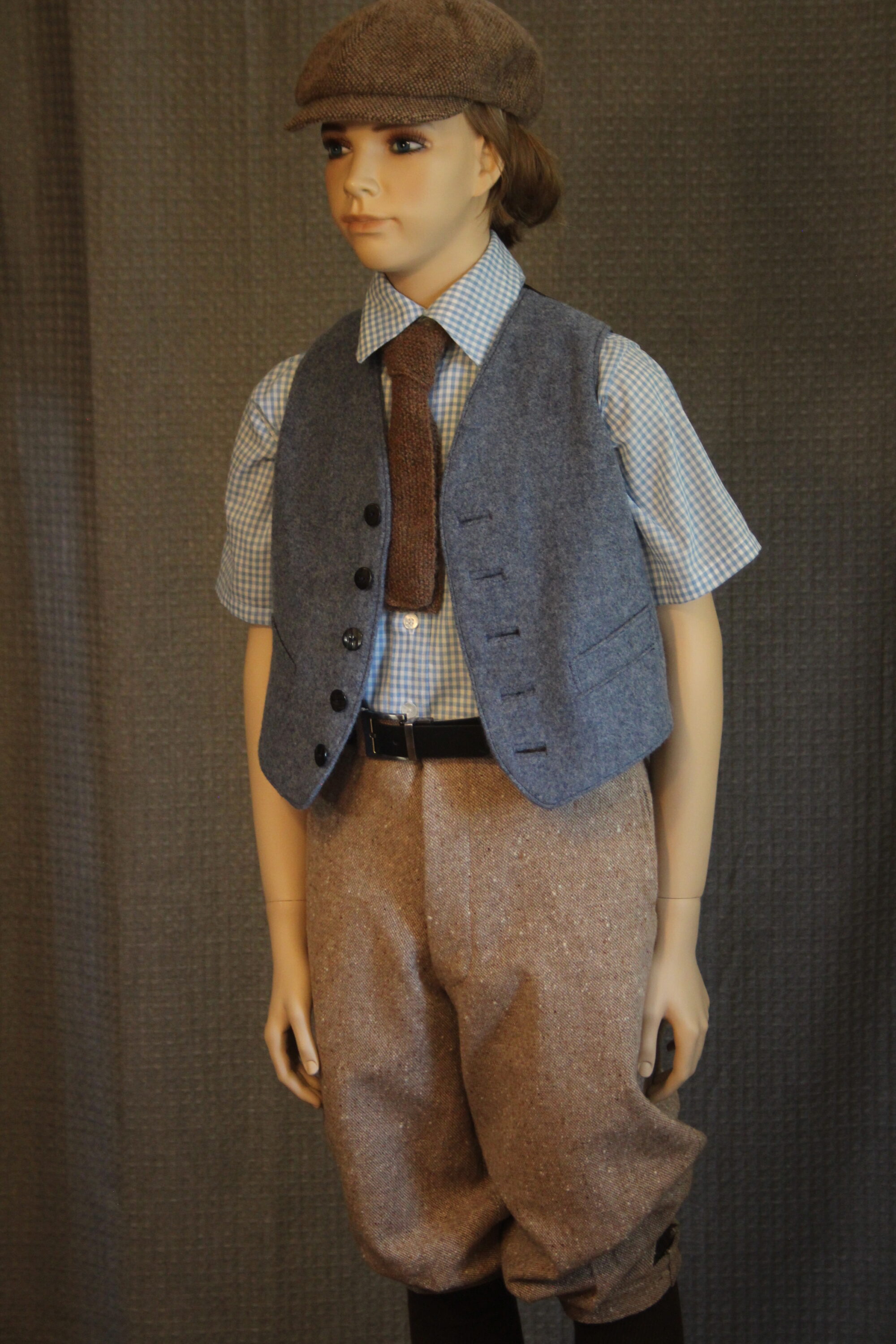
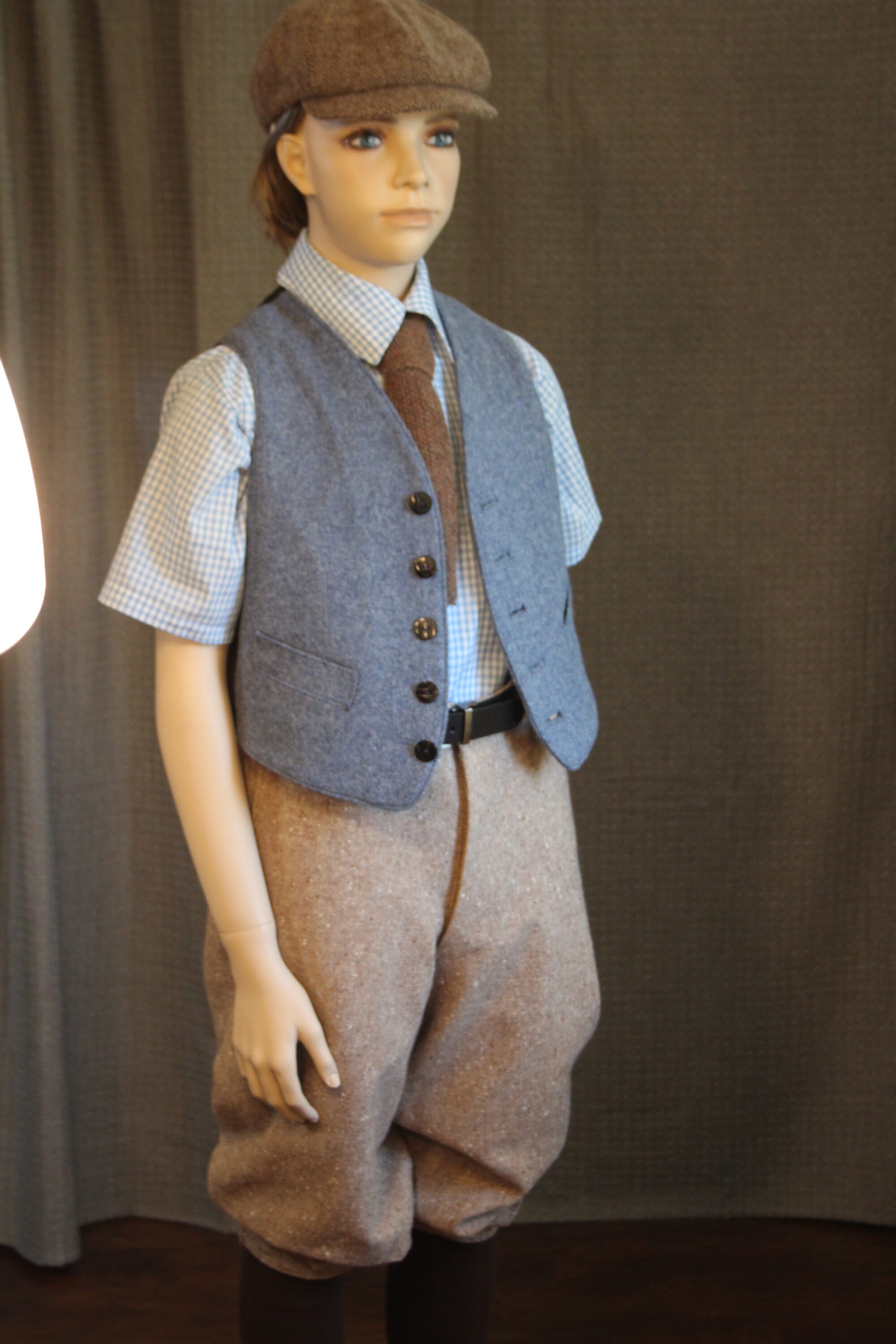
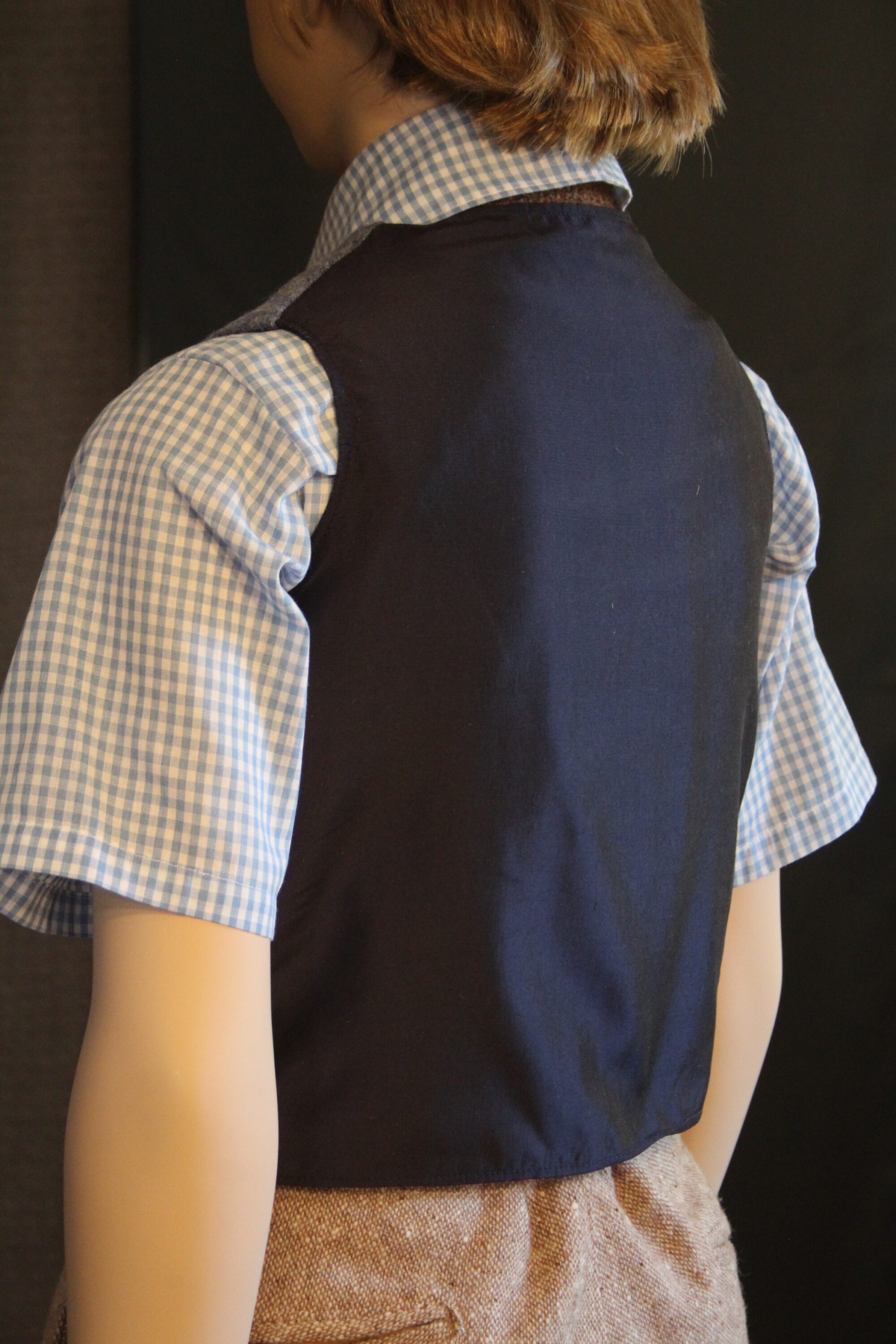
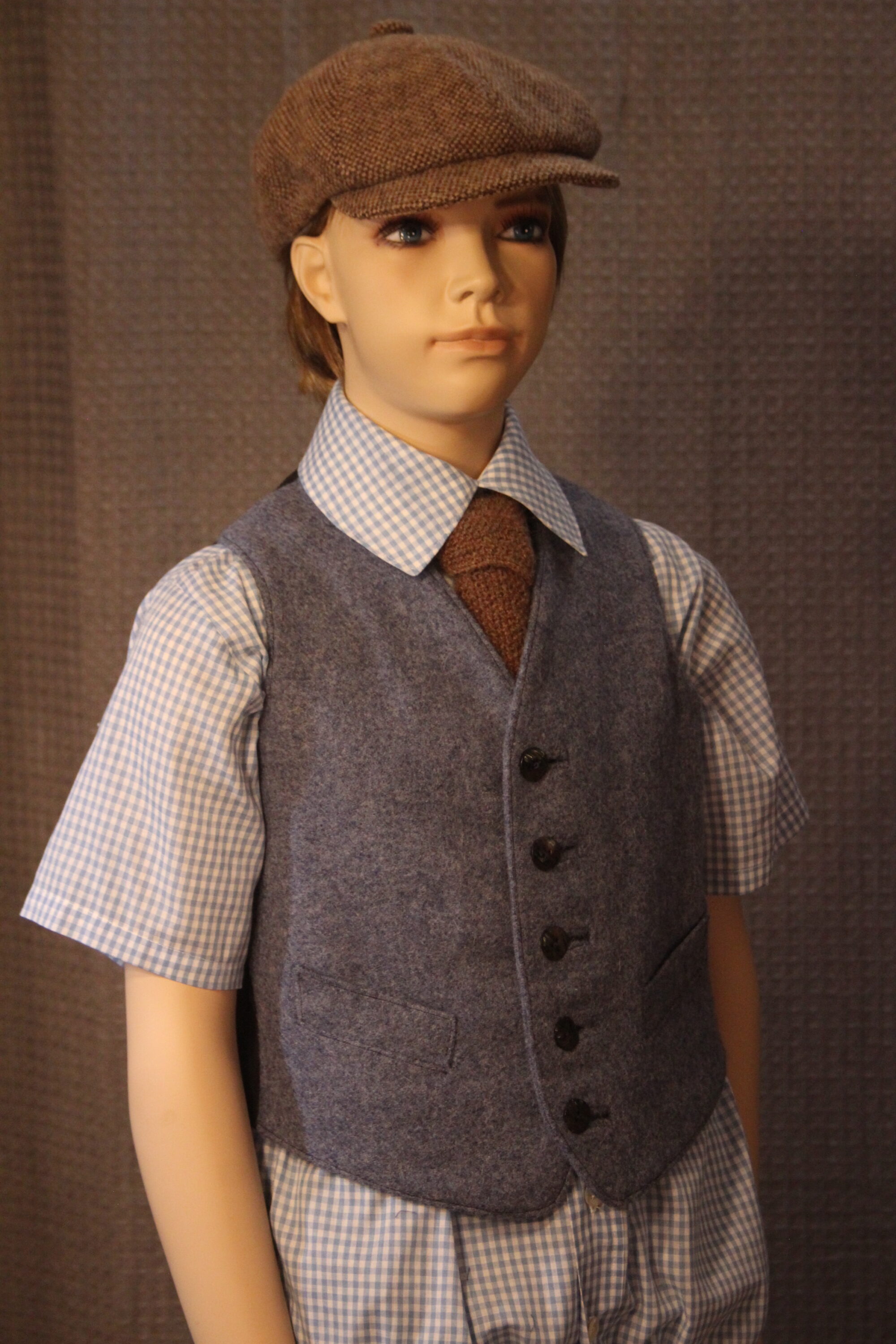
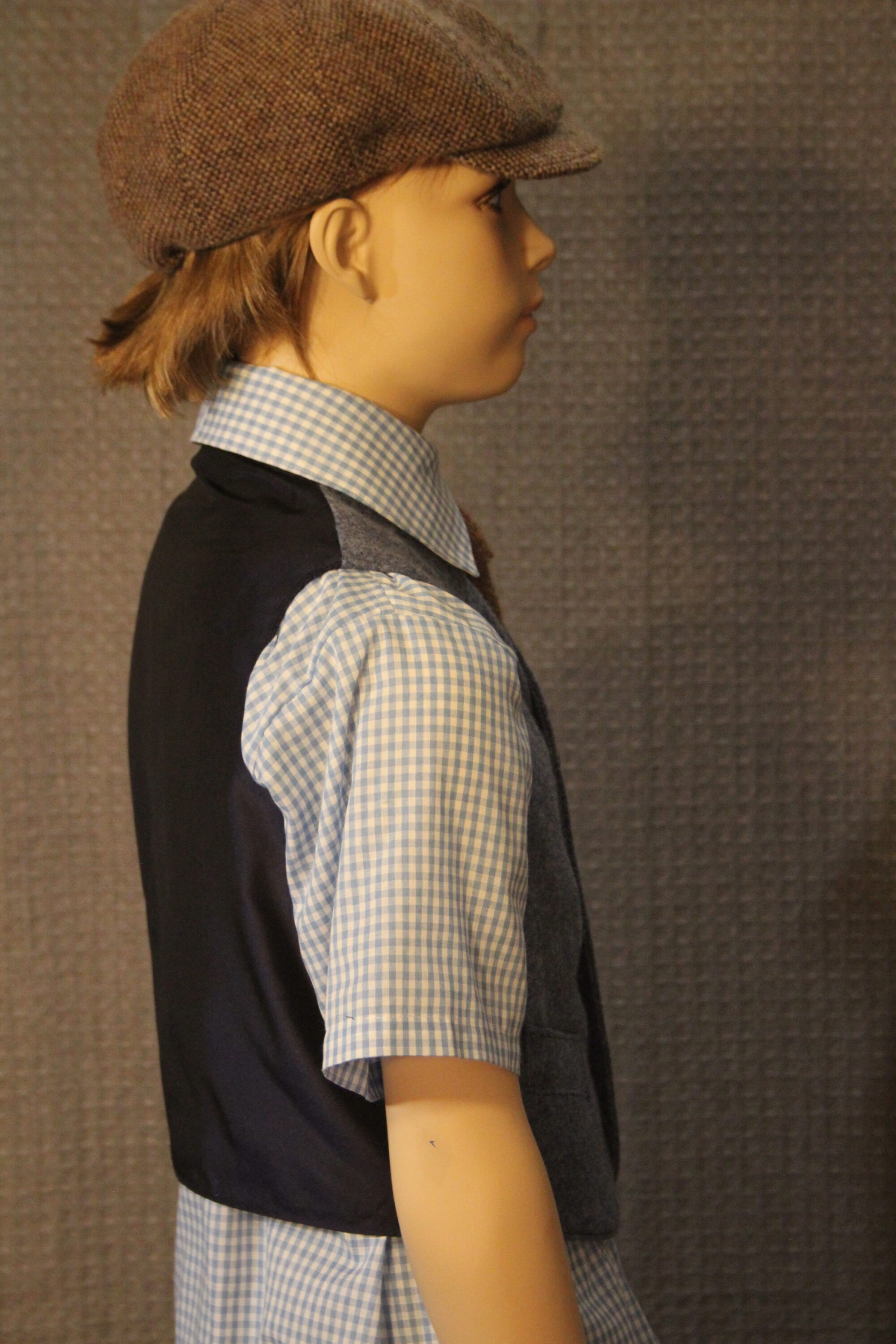
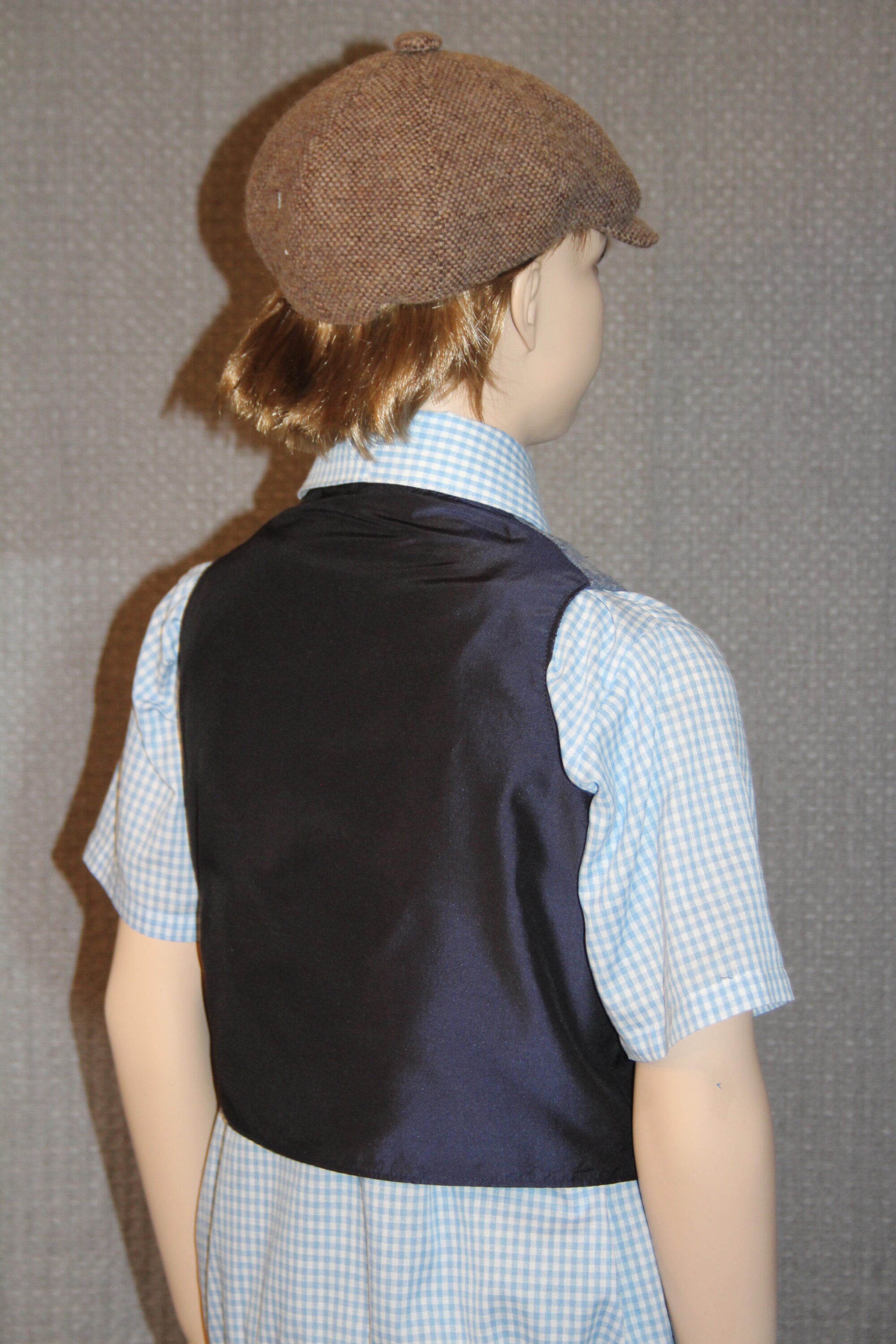
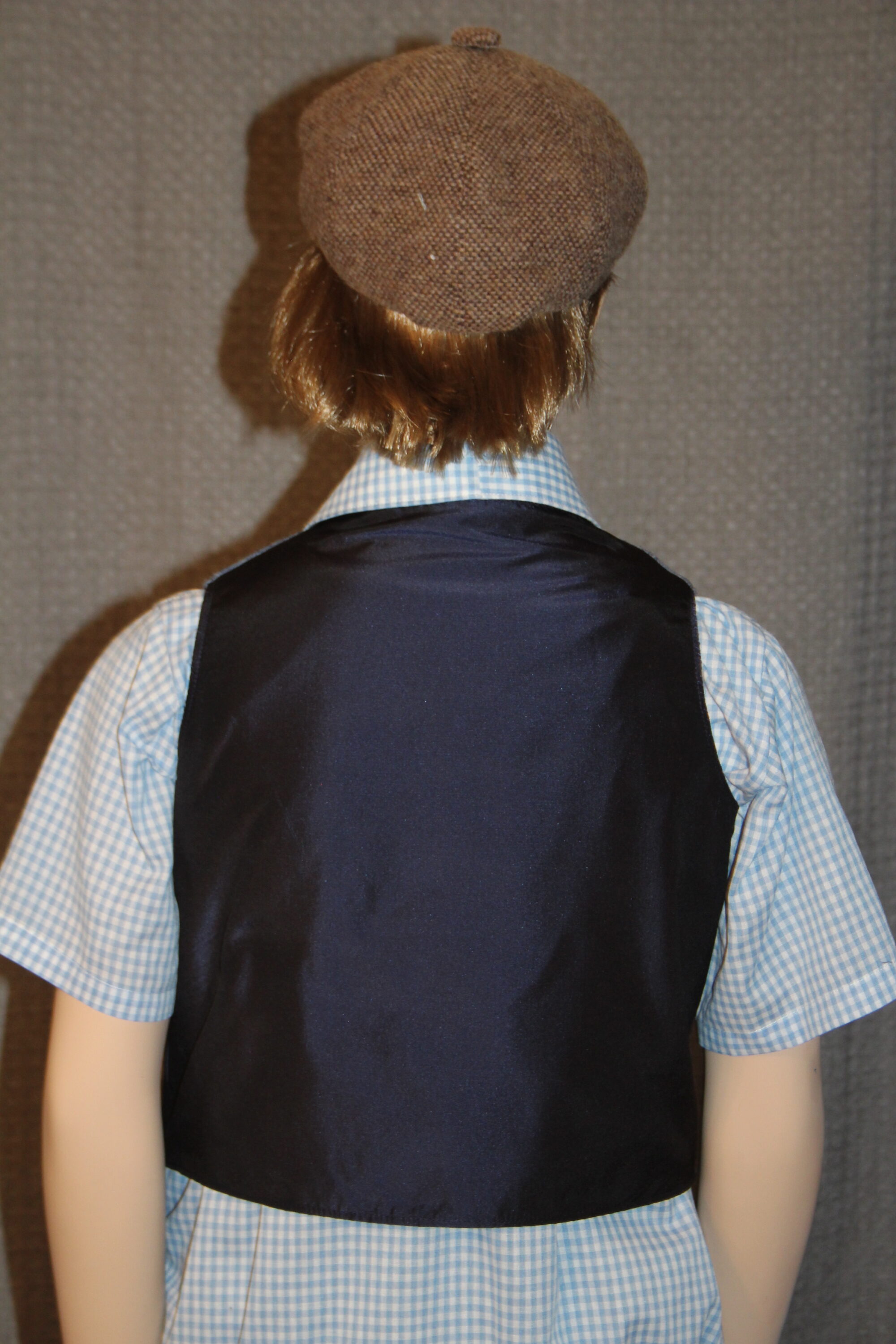
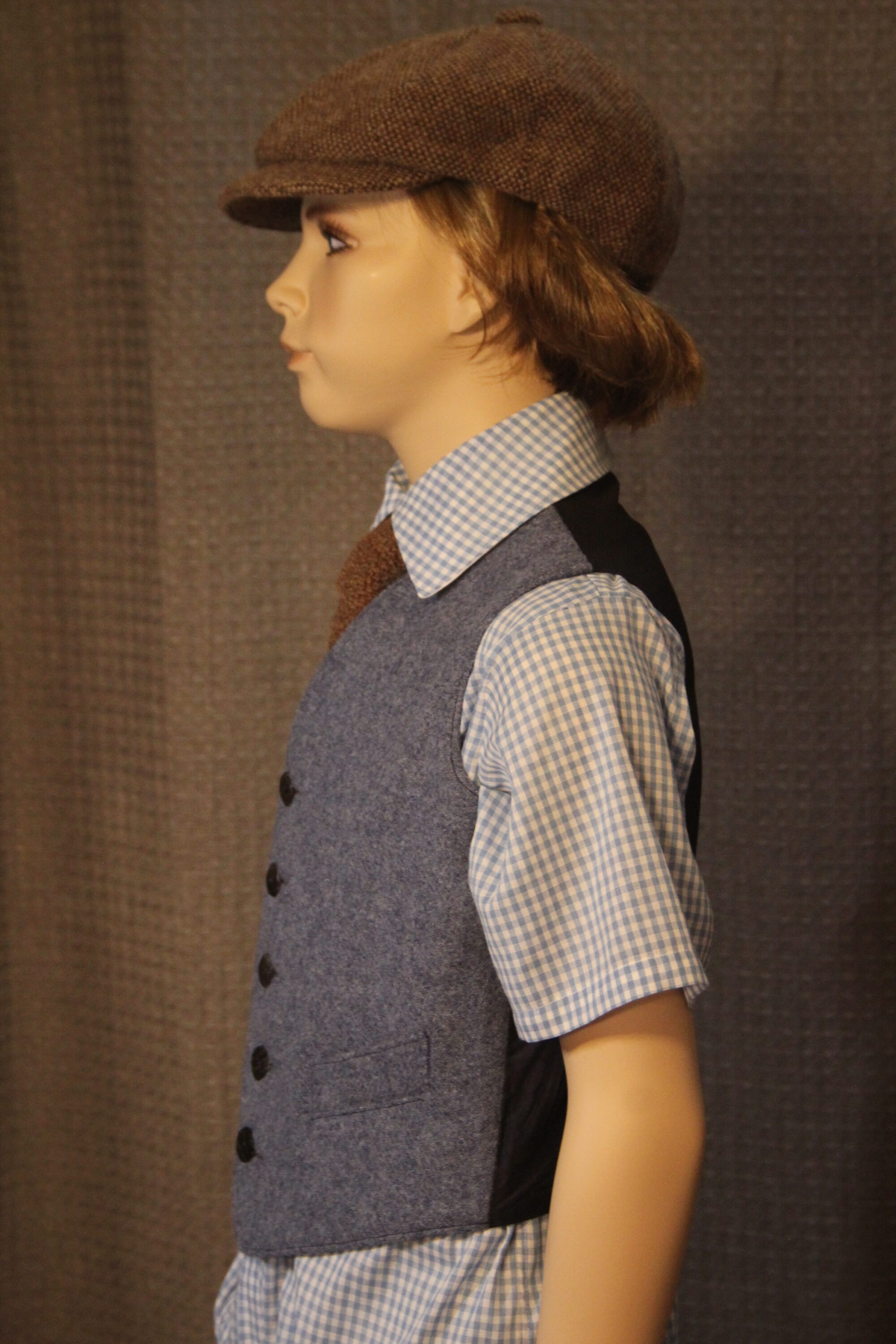
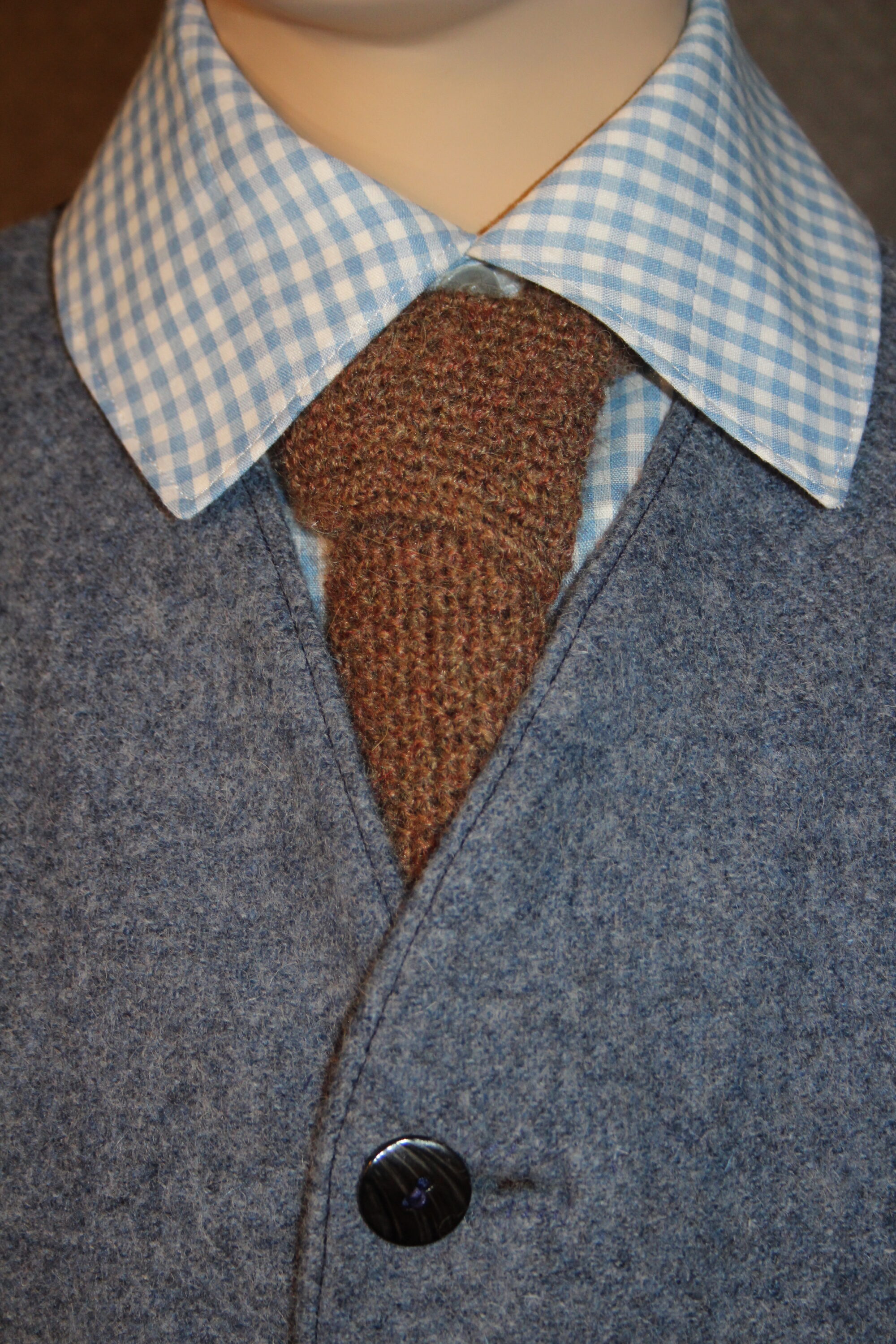
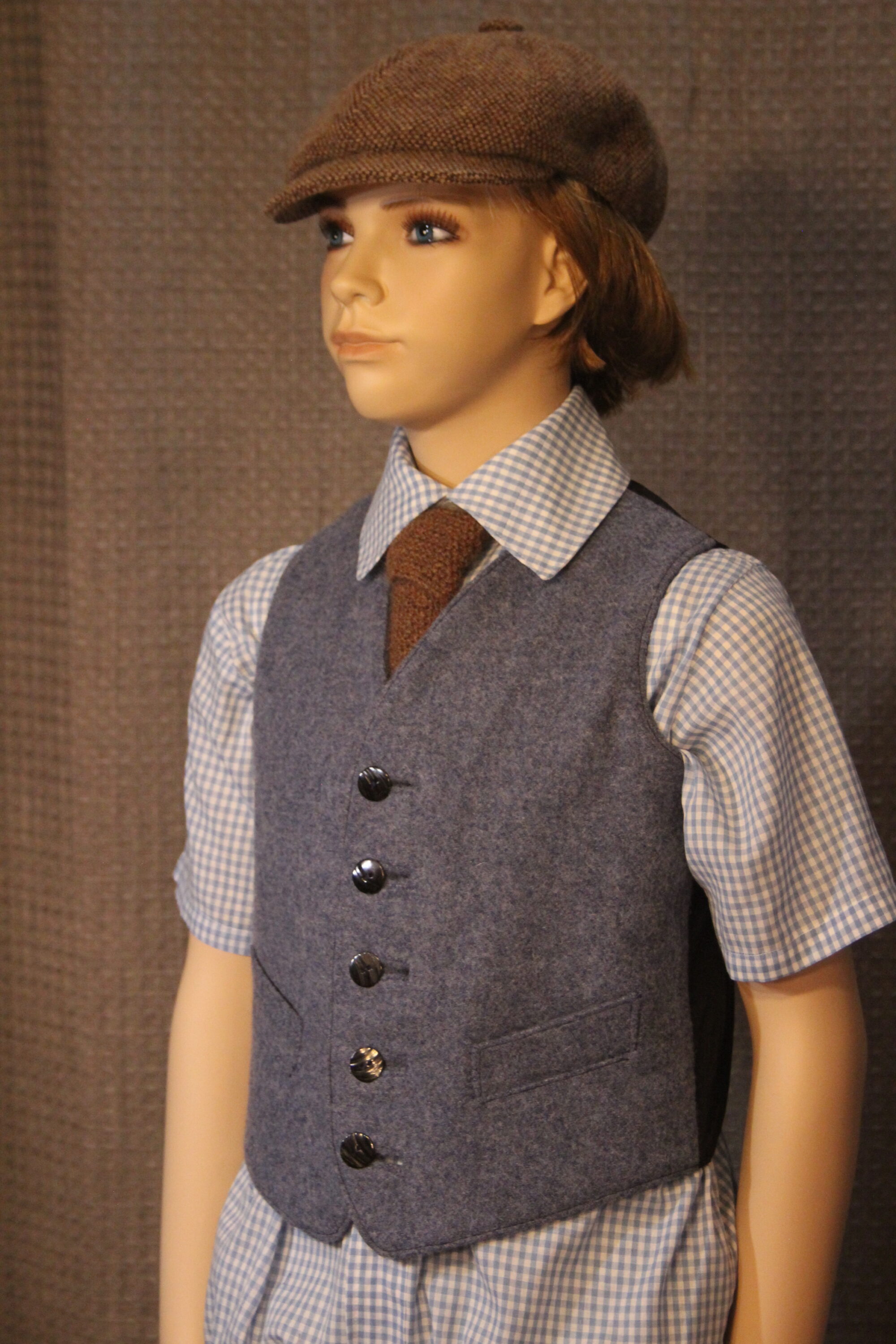
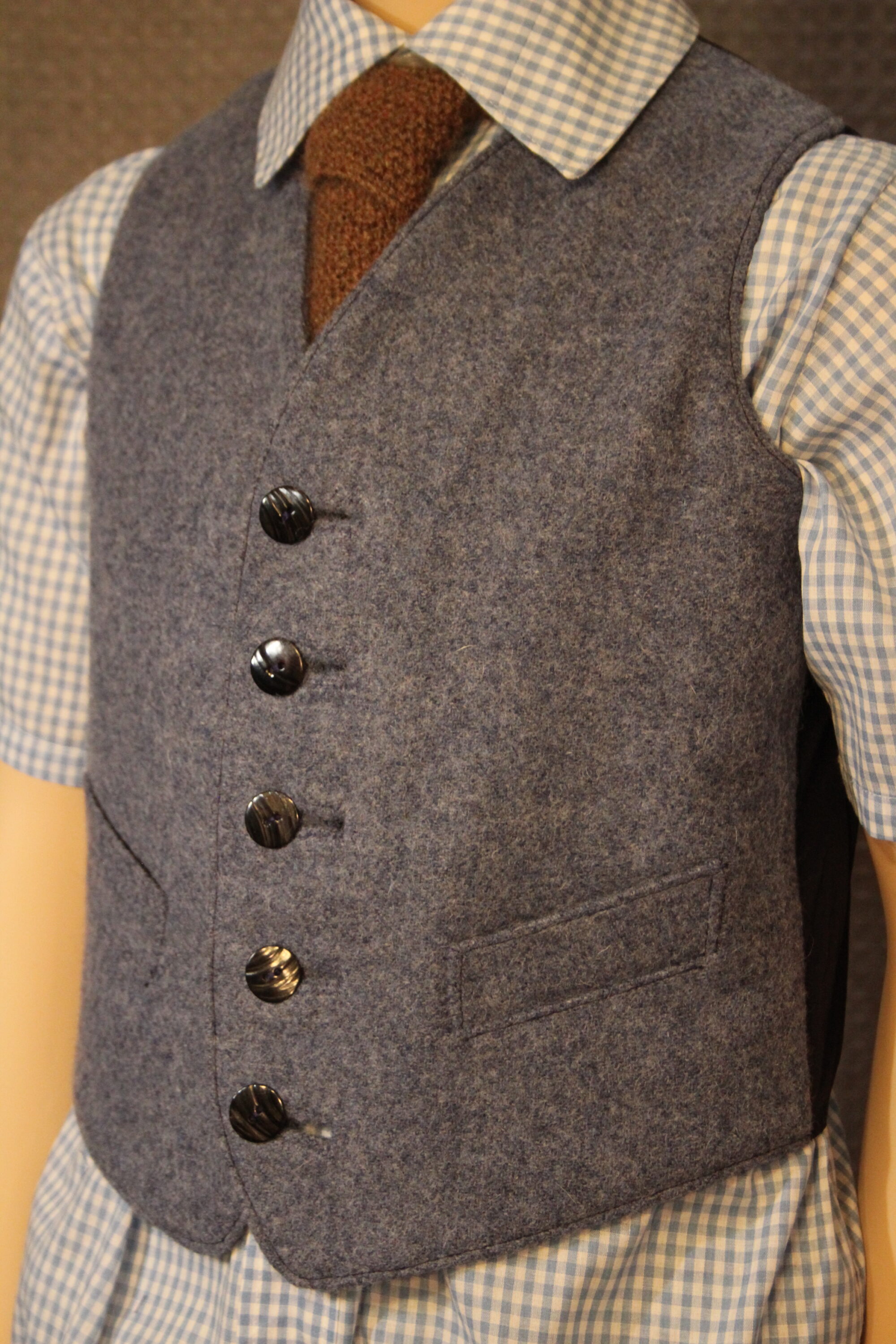
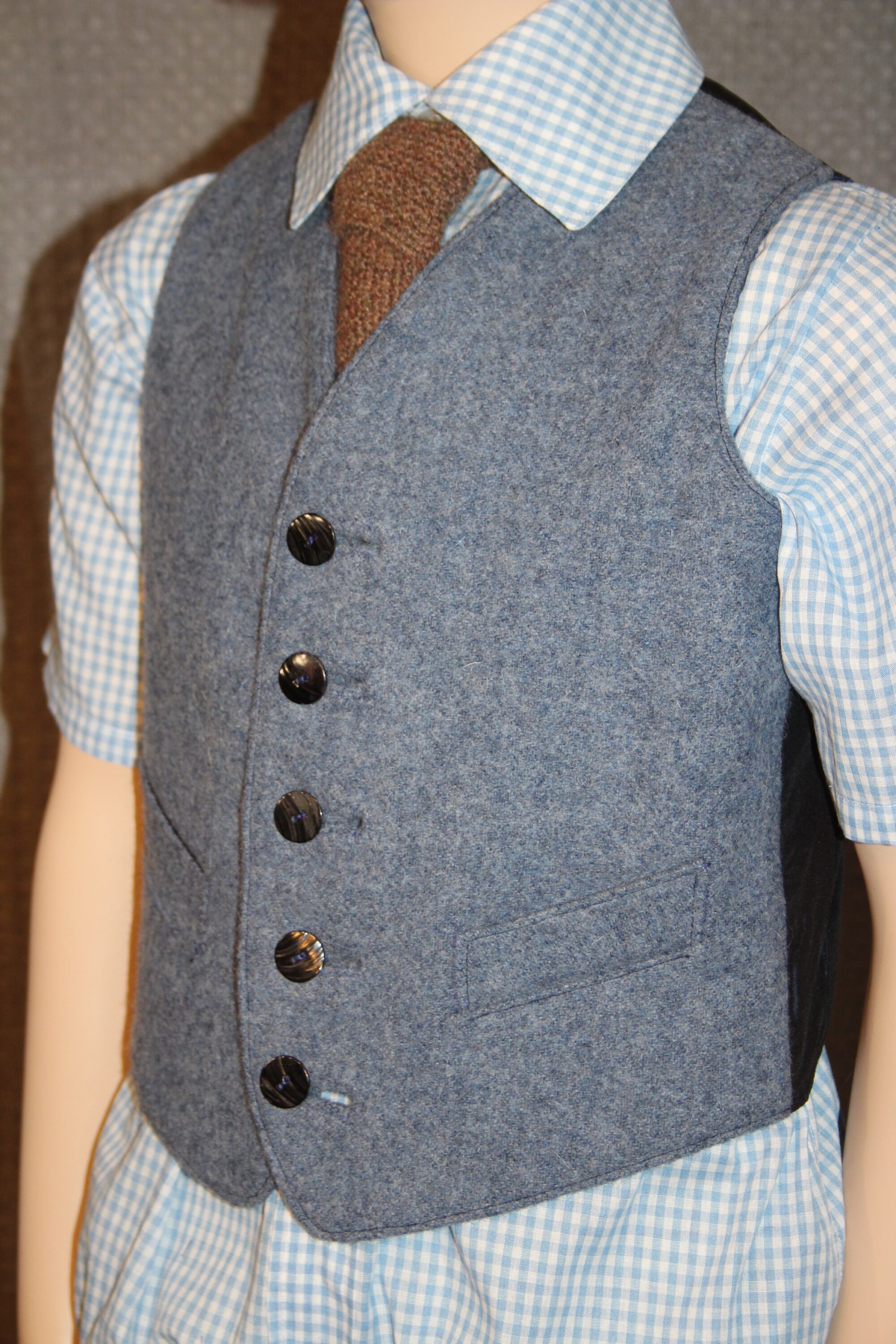
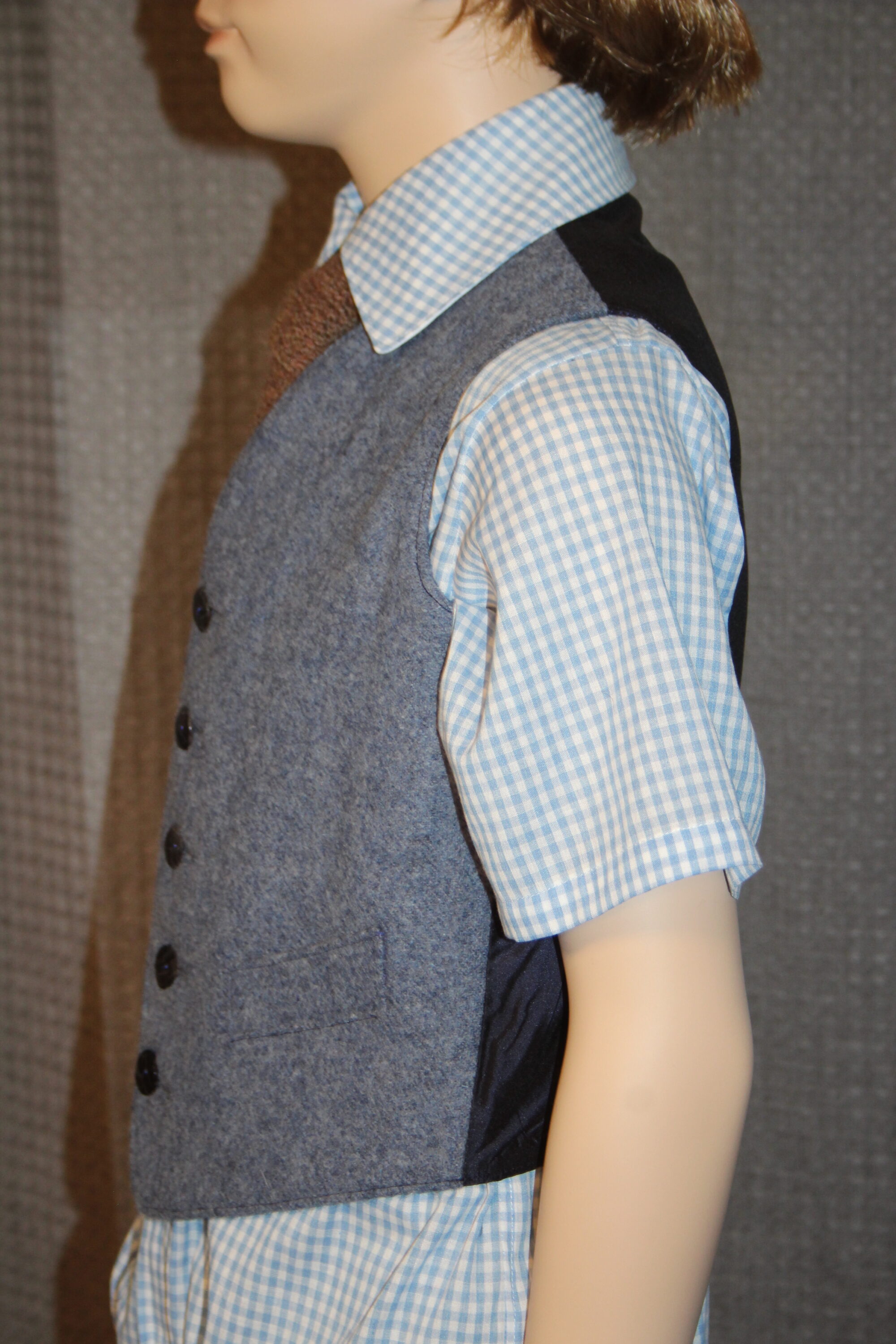
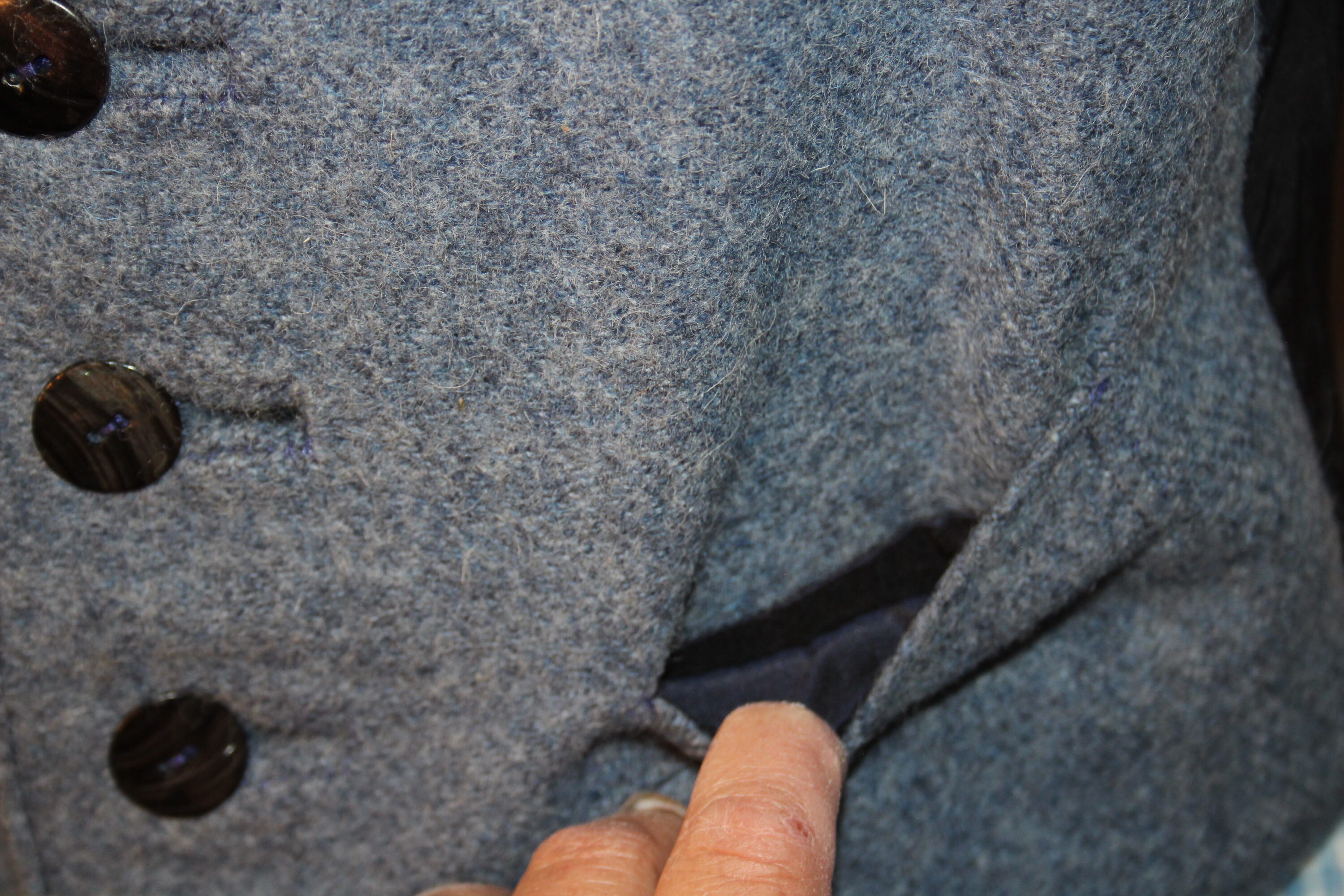
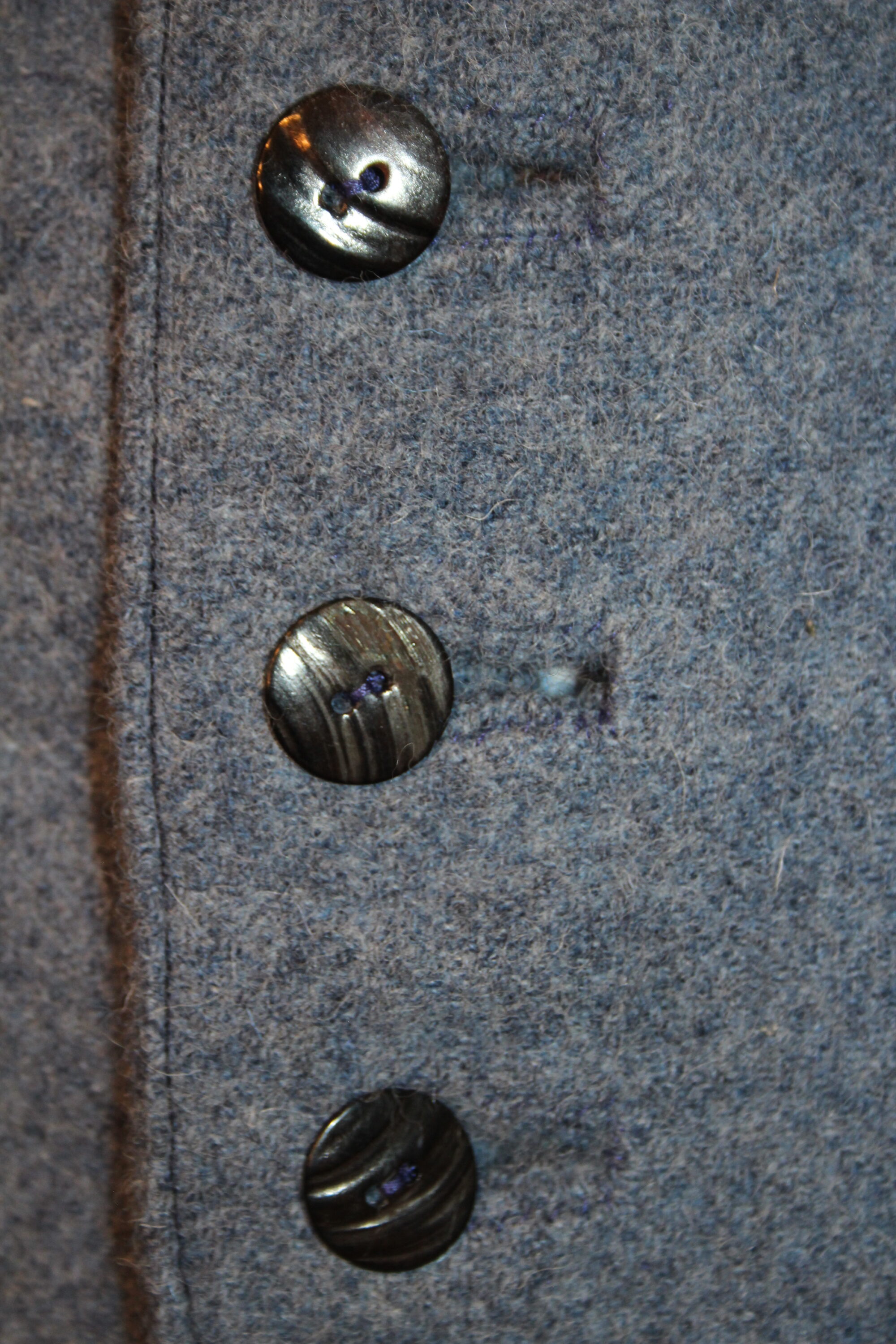
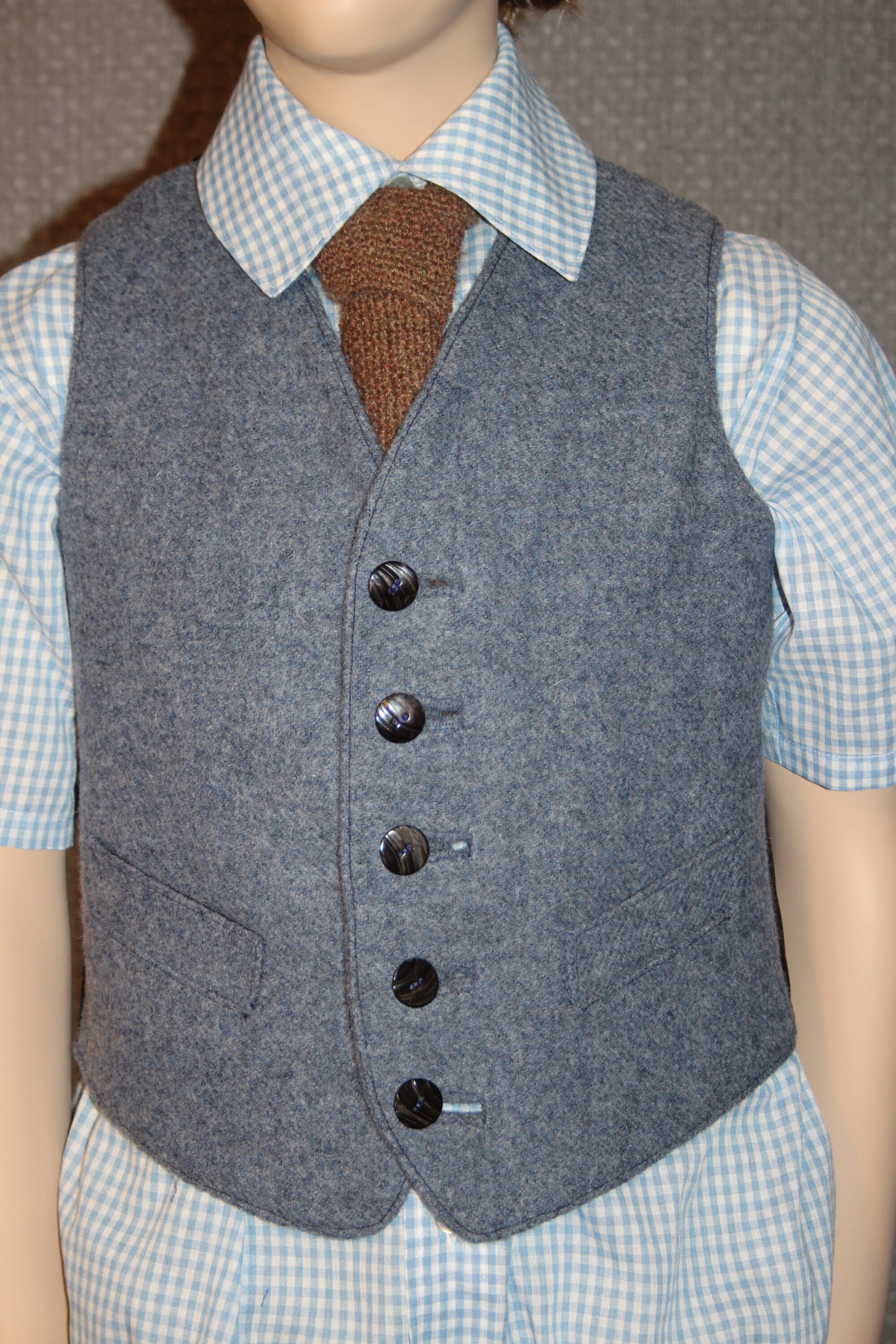
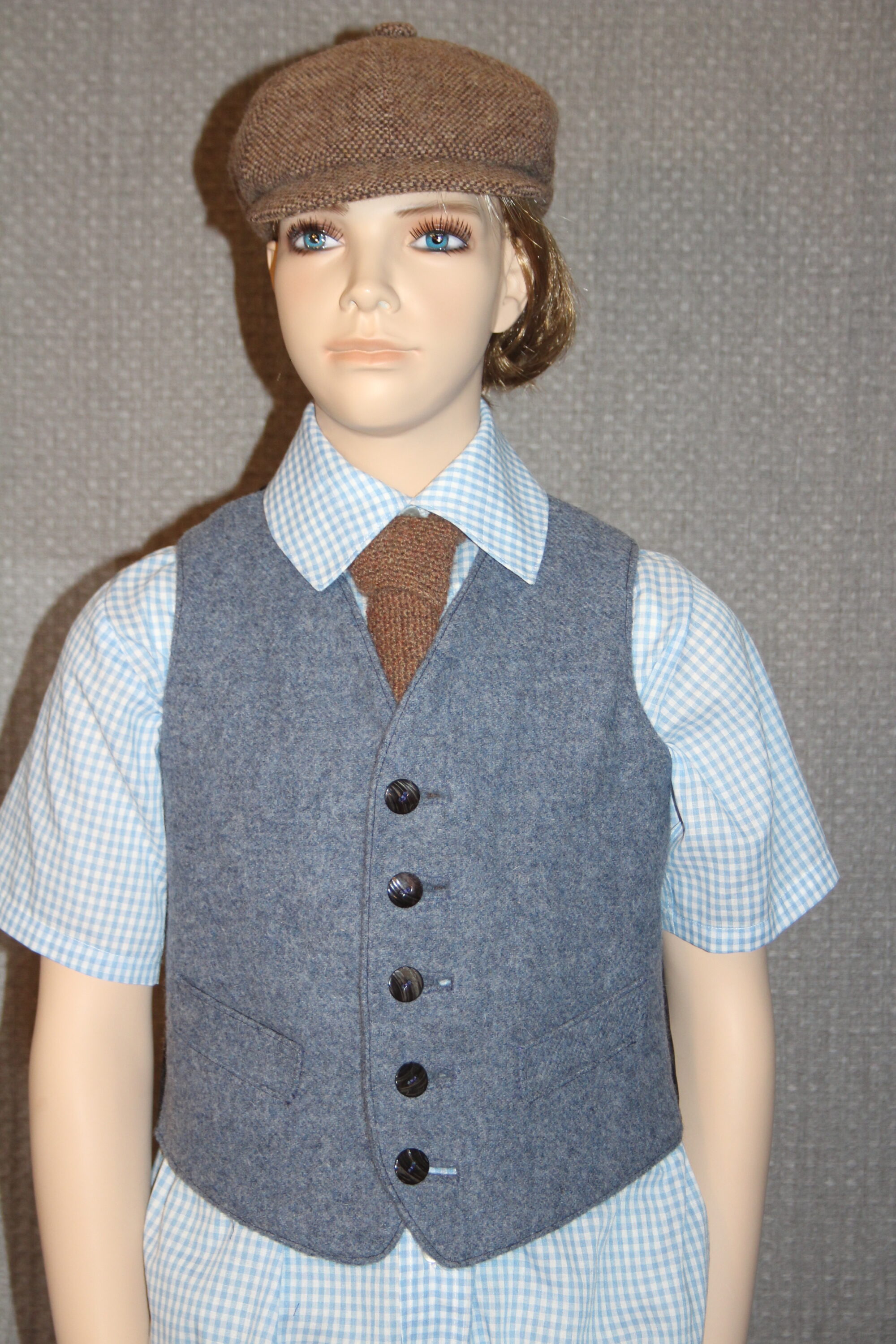
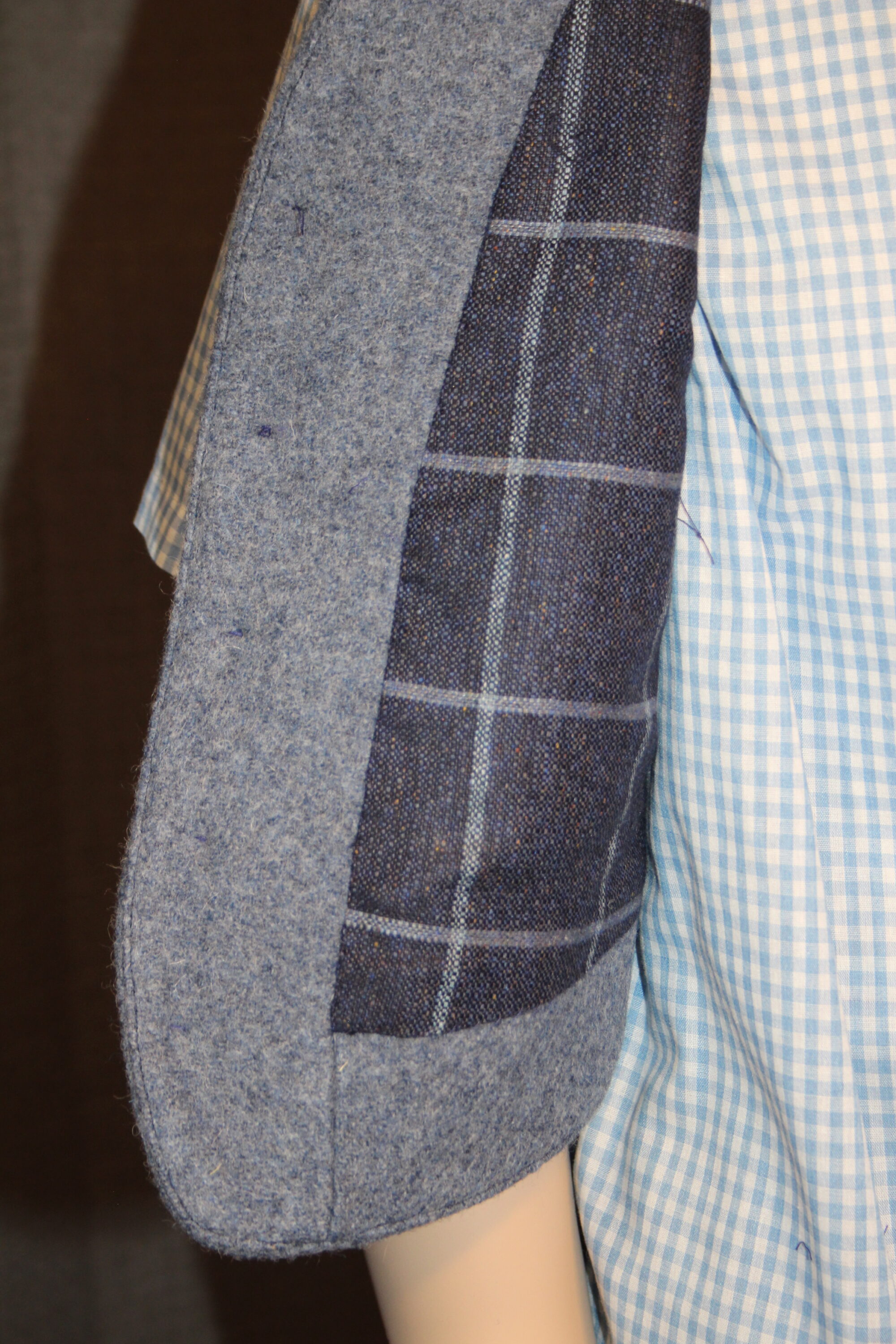

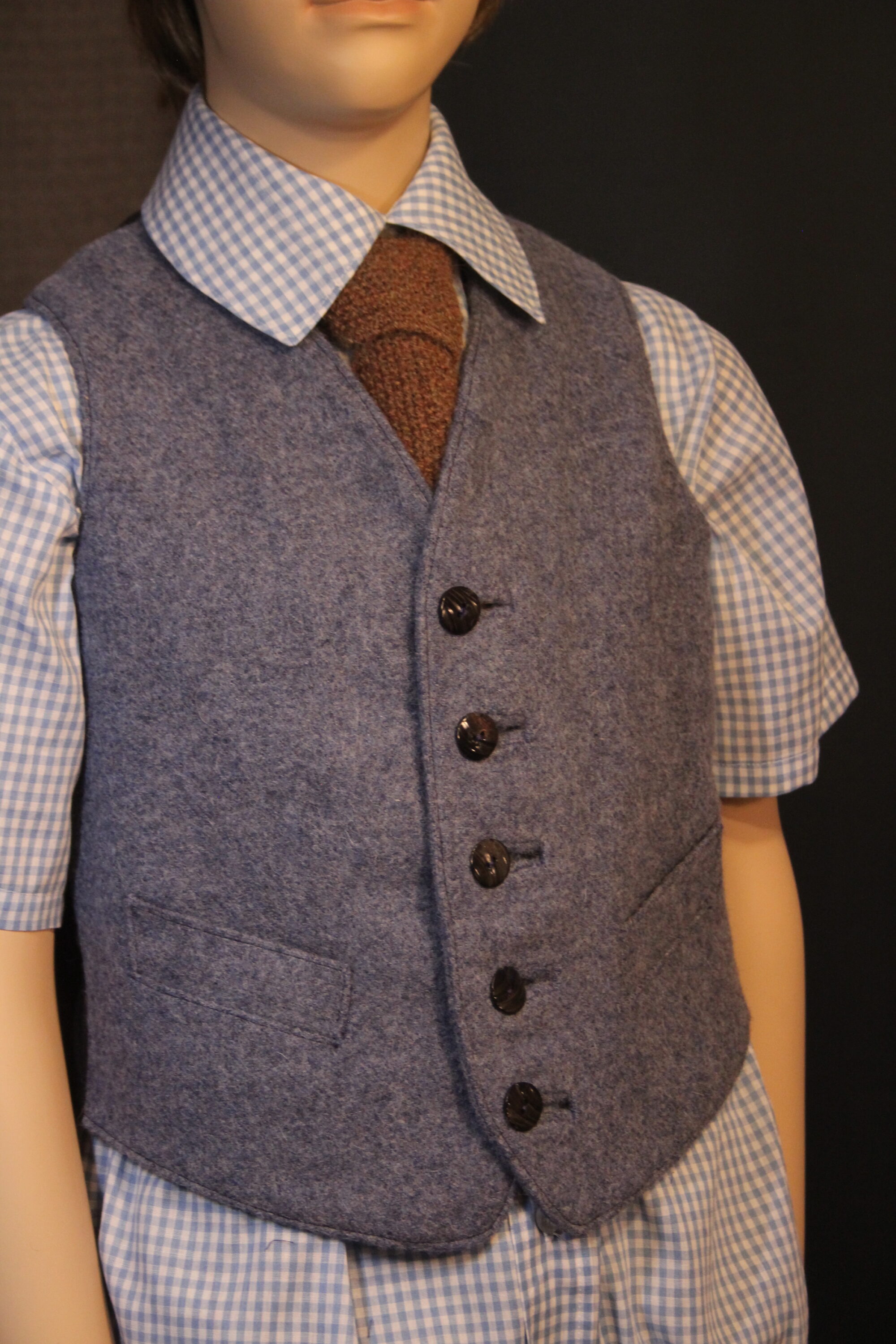
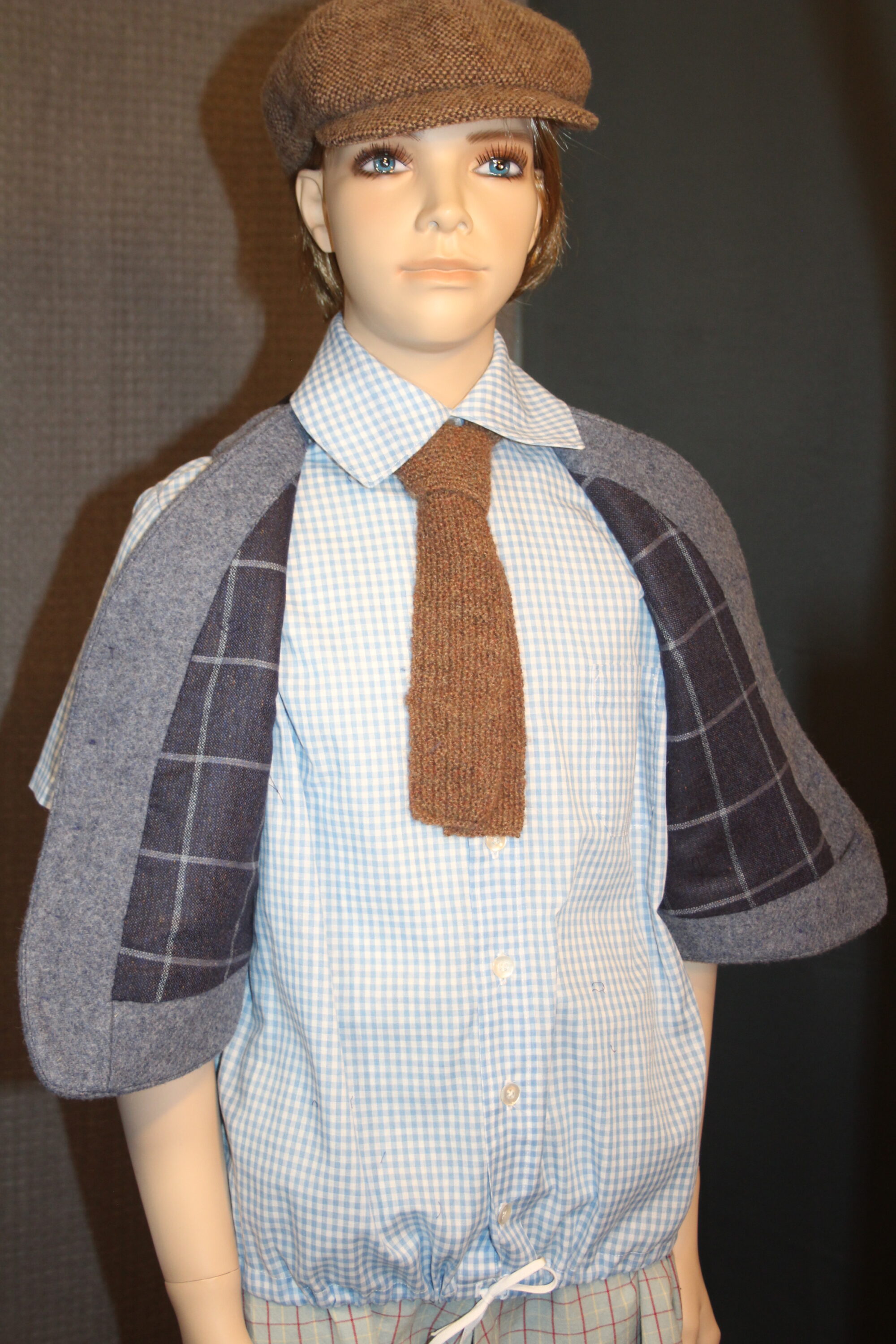
Jacket
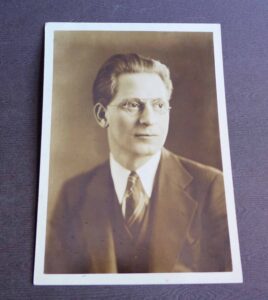
The most challenging of all of the projects except maybe the breeches which had an insane design for fly and side pockets and waistband, is the man’s tailored jacket. Yes, boys and rural boys wore them. Yes, they were tailored. Yes, they often were ill fit or outgrown since wearing a full suit every day could be expensive.
This is of matching 100% wool tweed which looks and behaves like a burlap back (unravels) which made for challenges in finishing seams before they came unfrayed. It was extremely difficult because of the advanced skills needed which are different for men than women. Regardless that buttons and buttonholes are on opposite sides, the whole inner structure of a man’s suitcoat is different than for any era in history for a woman.
Men’s suitcoats or jackets have specific tailoring techniques for canvas interfacings including “feather stitching” “roll stitching” “underfacing” and the like. This one we added difficulty by making it fully lined.
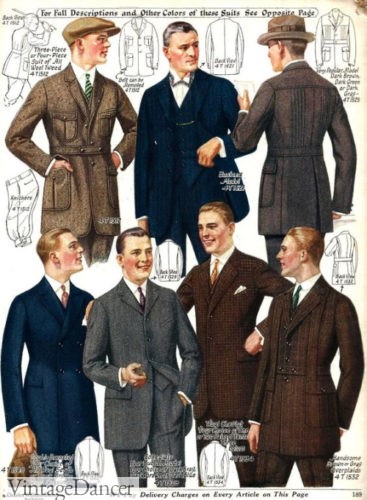
The mannequin has extra long arms from elbow down and legs from knee down, which makes things harder as our intent was to build the exact vintage pattern without alteration. It ended up on the small side, and we are glad we didn’t pad out the dummy.
The one interesting thing is that the sleeves are intentionally short so that the shirt with cufflinks can stand out. Since we made a short sleeved shirt, that was not an issue. On a real boy, this jacket will be tight through the body and shoulders, and the sleeves will probably be too long.
It goes on really well though with the lovely 100% Giza cotton lined sleeves which is really like silk. Buttonholes are handmade 18th century style (the pattern asked for that method!) unlike on the vest which has the tailored buttonhole. This gives it a bit more rural or rustic look than high fashion.
Buttons are vintage from the 1920’s too and are of real leather. We had just enough buttons; they are hard to find.
Other features are the narrow lapel of the day with the “cross” up high so it just barely shows the vest when buttoned up. It also has the extra button and buttonhole on the lapel so it can be closed to the neck, since most men did not wear an additional outer coat, that had to suffice along with a scarf in winter for most boys.
Full flap pockets are big and deep and real; no fake flaps on any of these projects! These are all real, made from real patterns and real techniques of the era. We did not cheat, but we did swear a few times. The shop smells like wet sheep from all the steam to get the crisp edges out of a soft and very thick fabric.
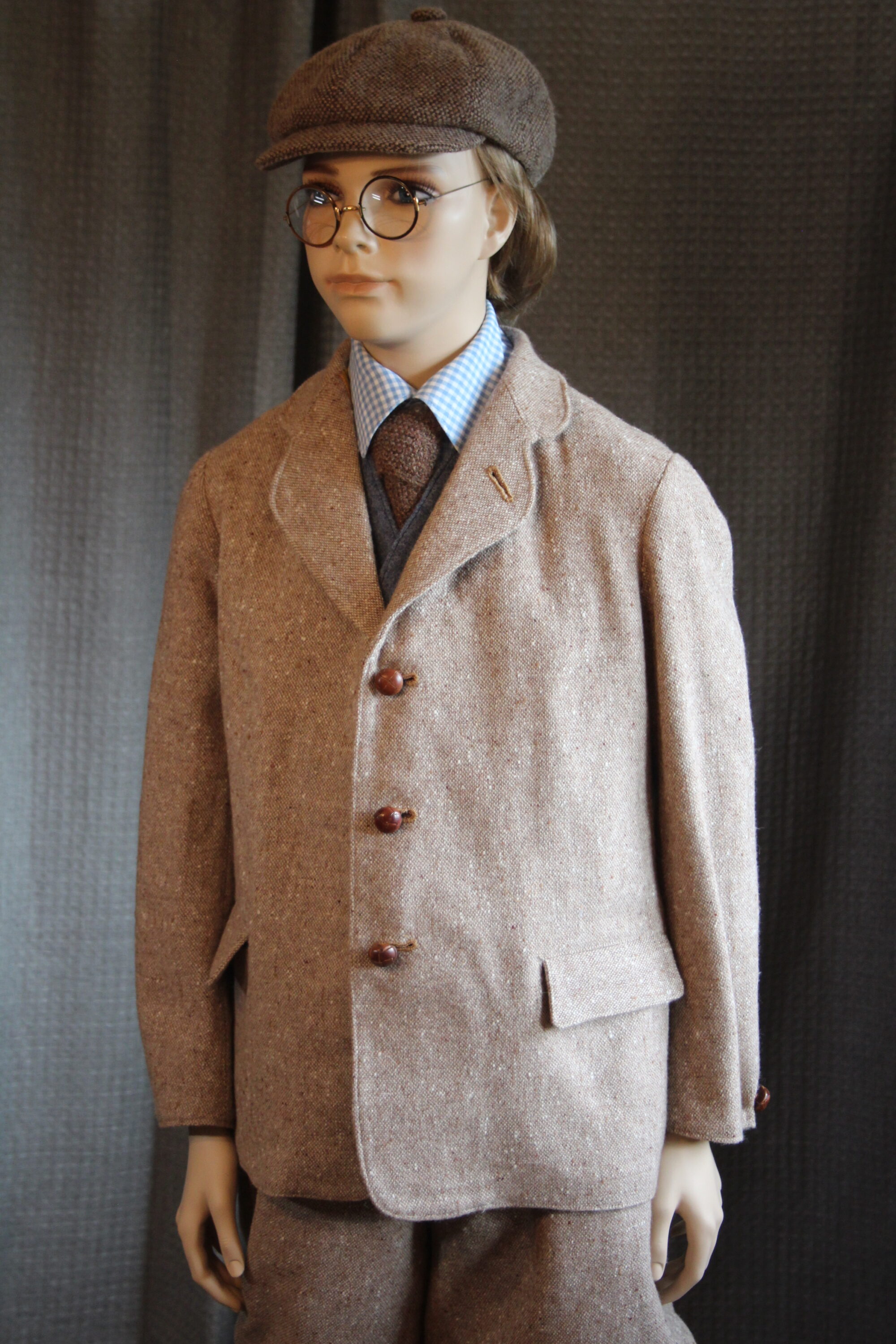
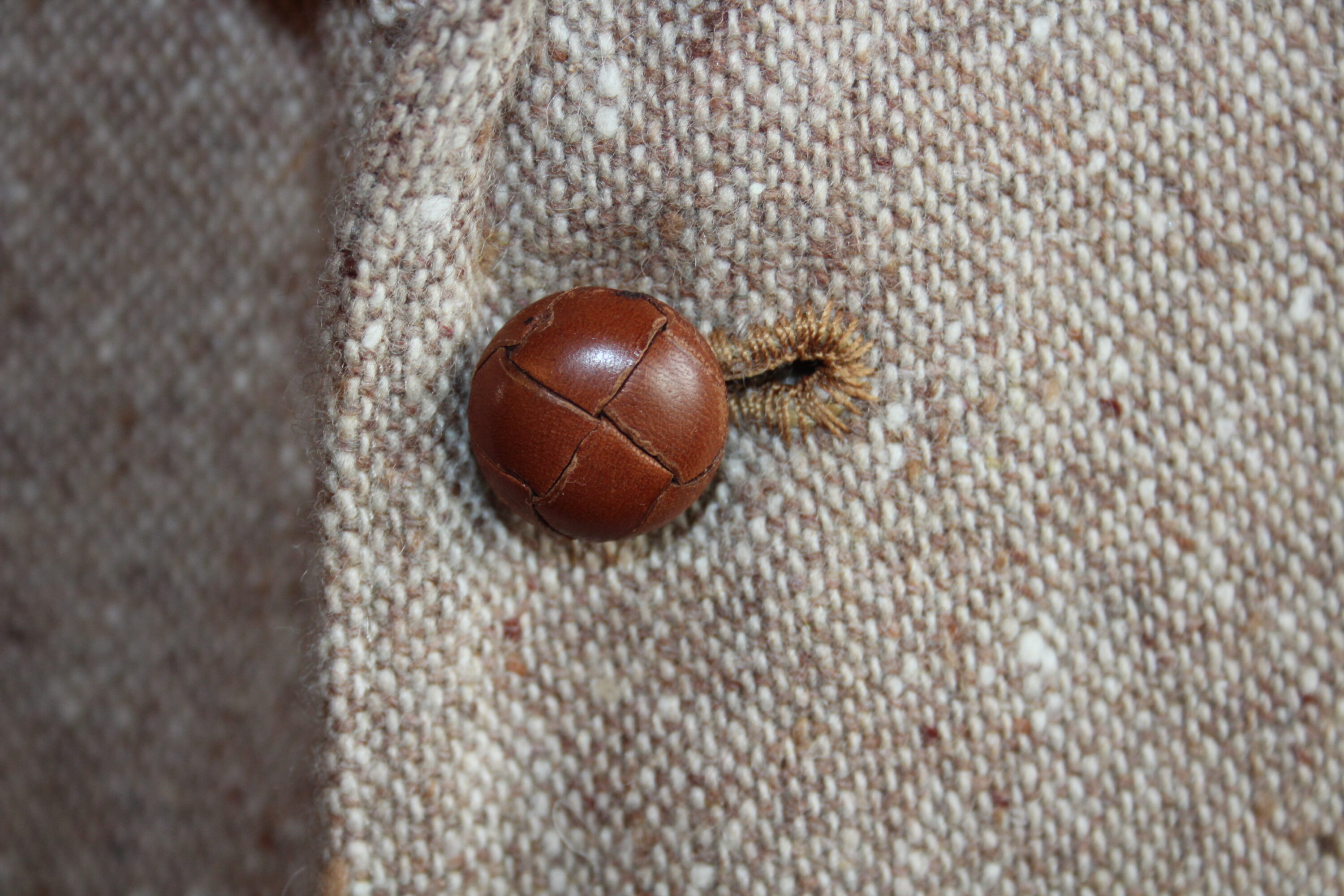
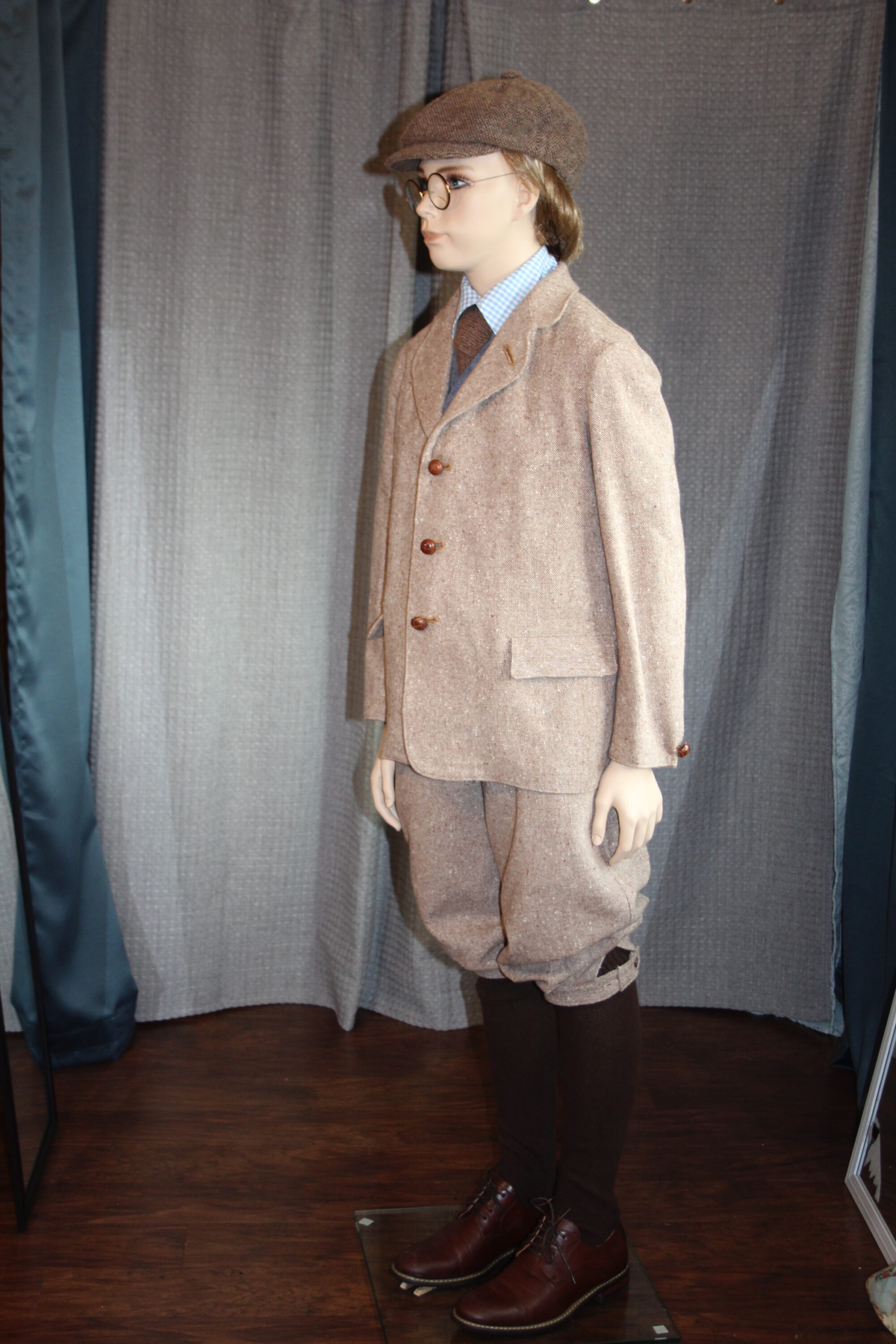
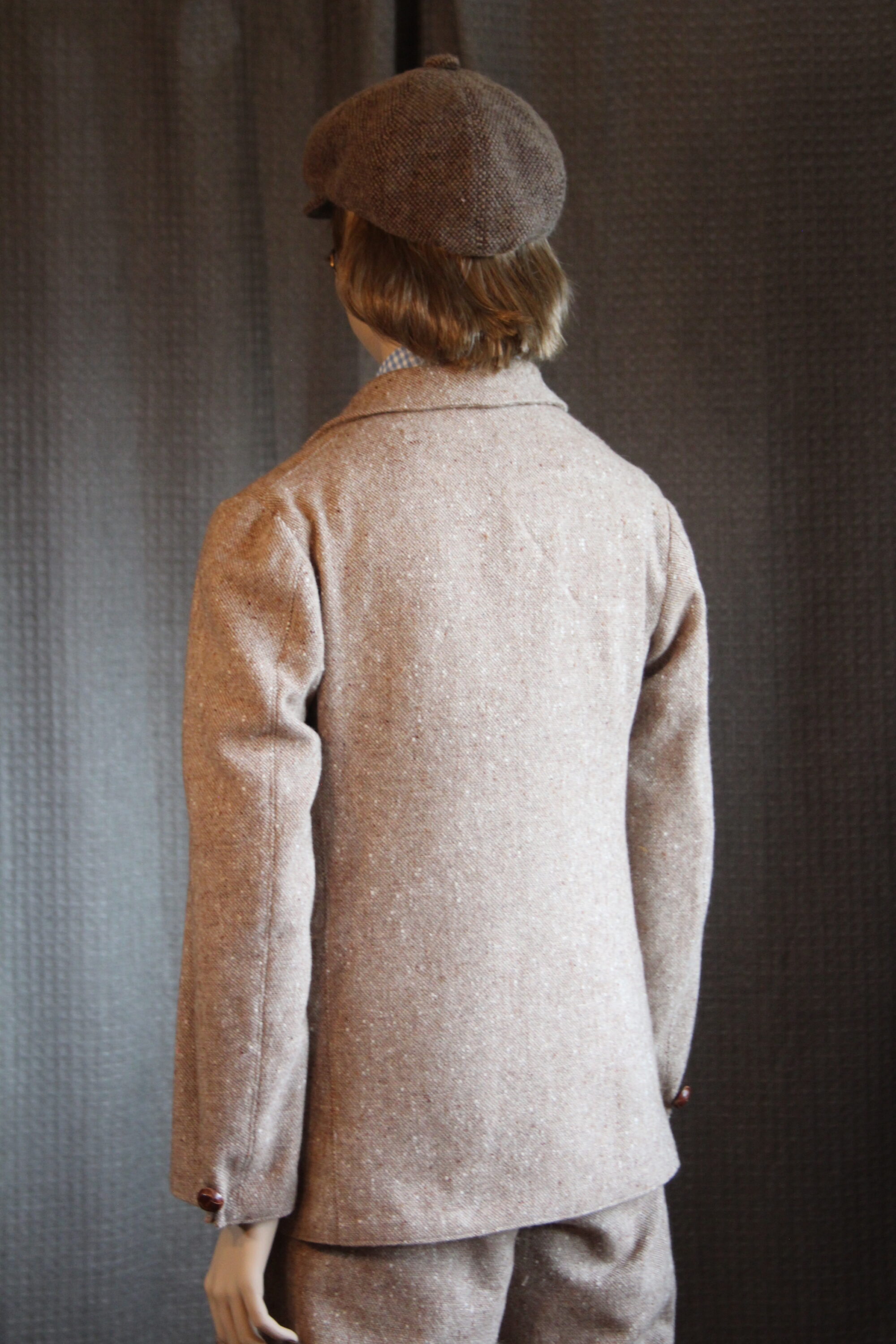
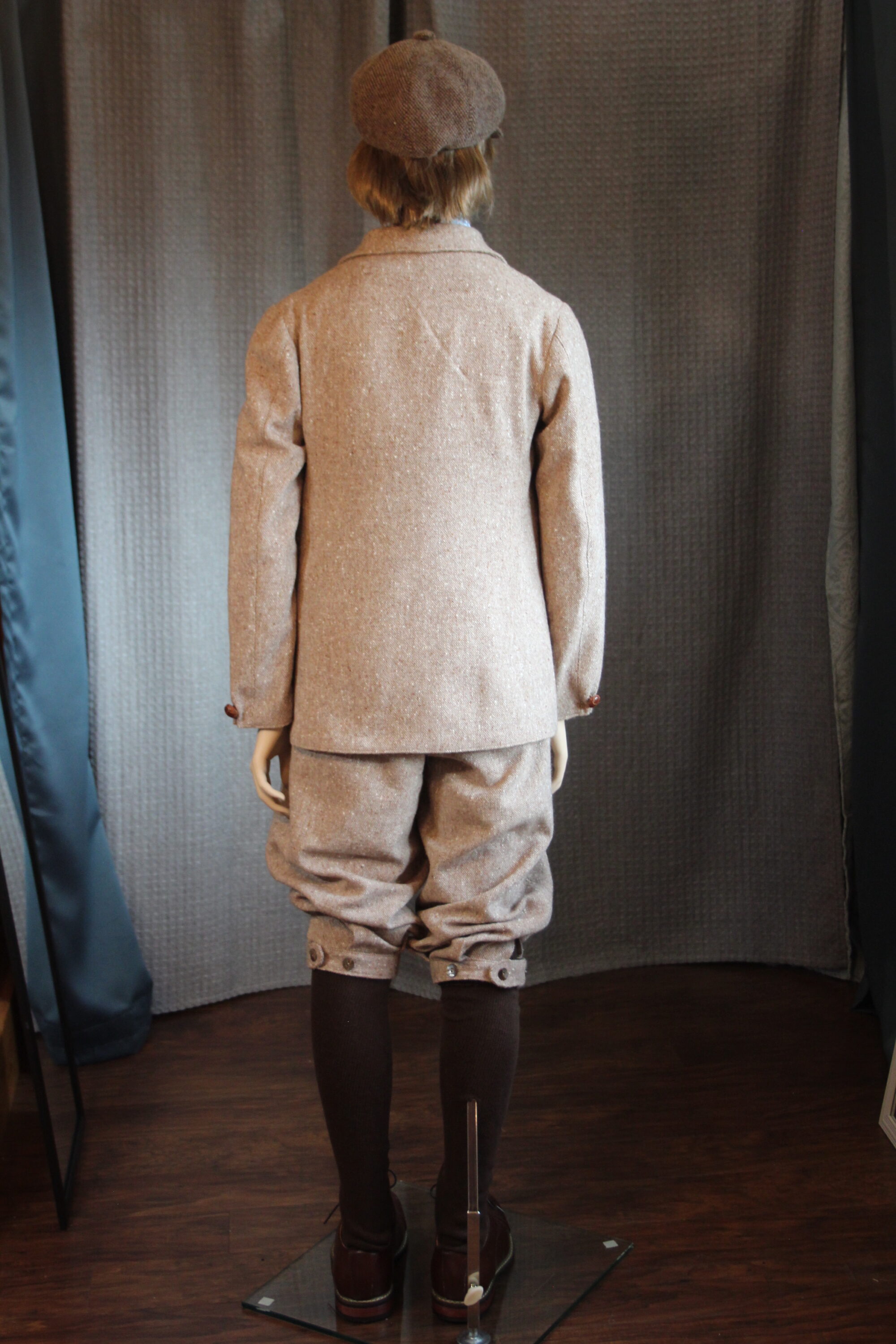
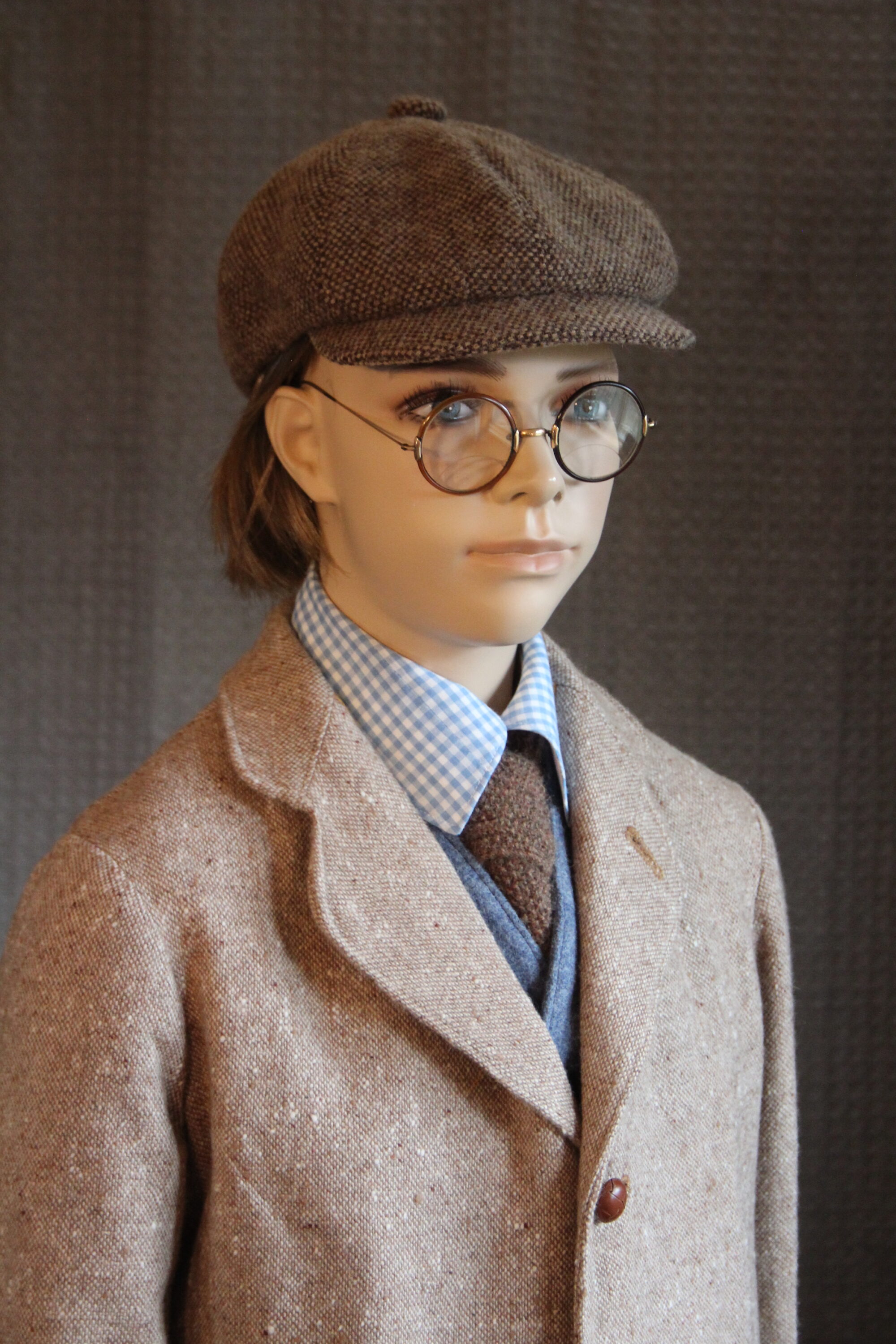
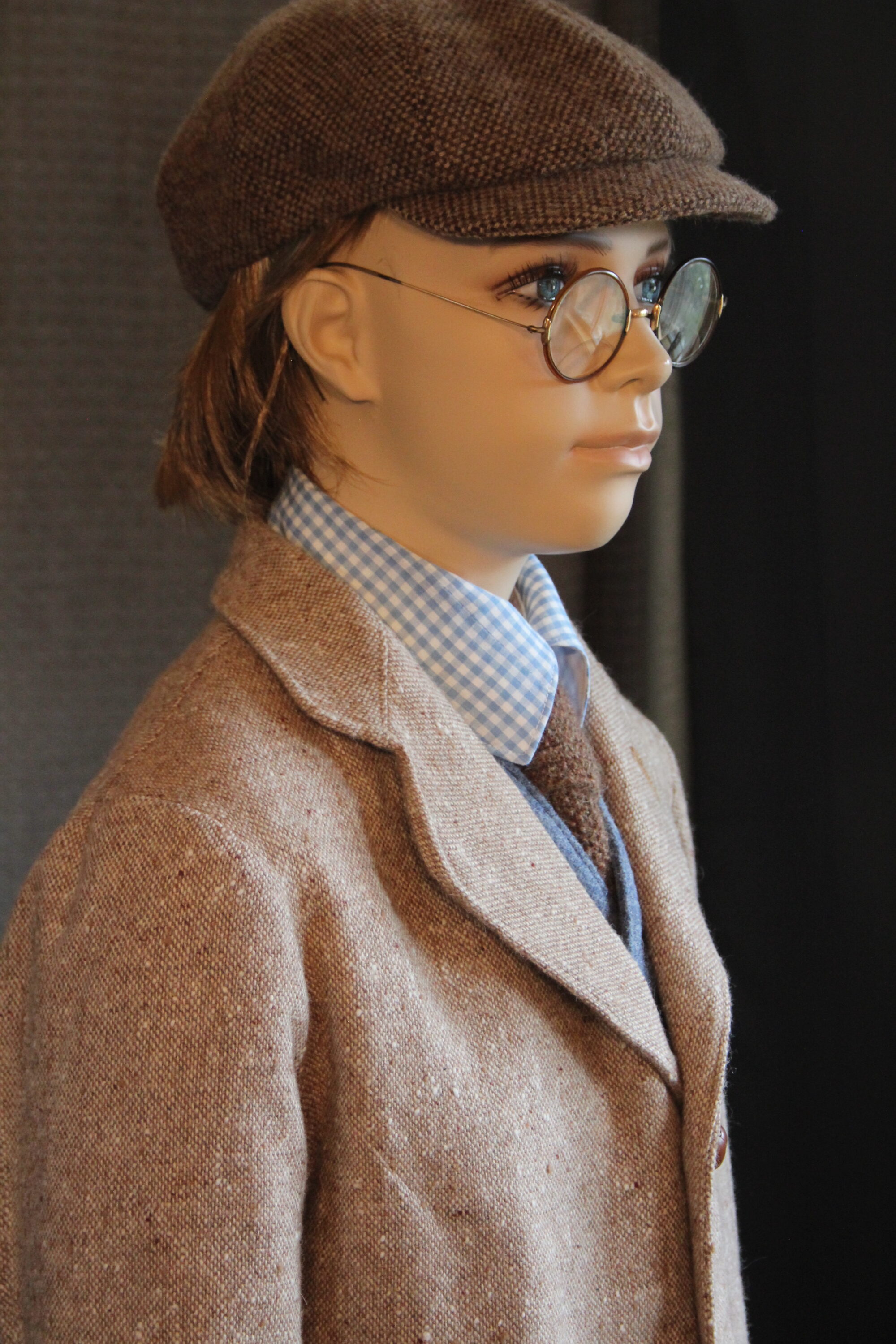
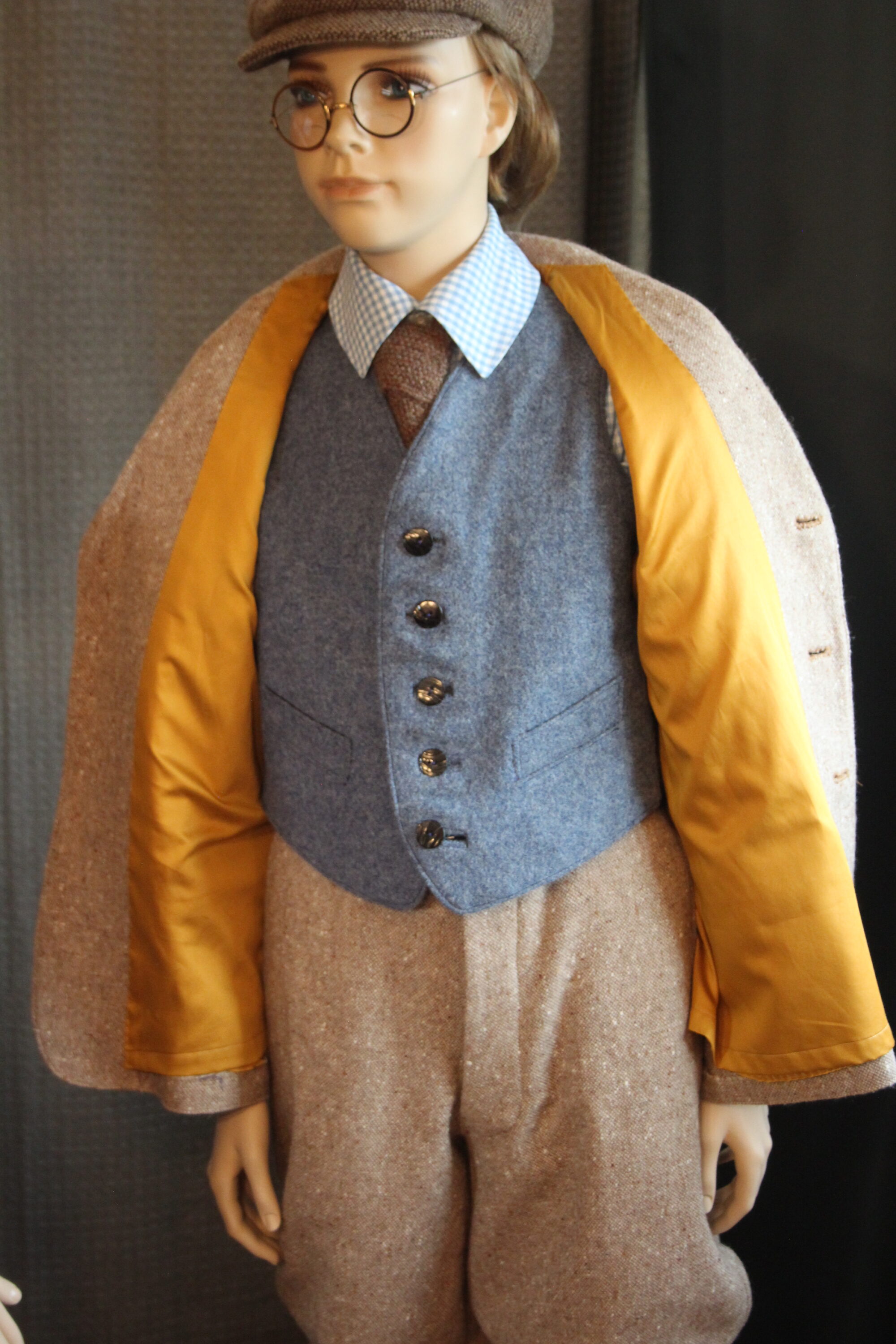
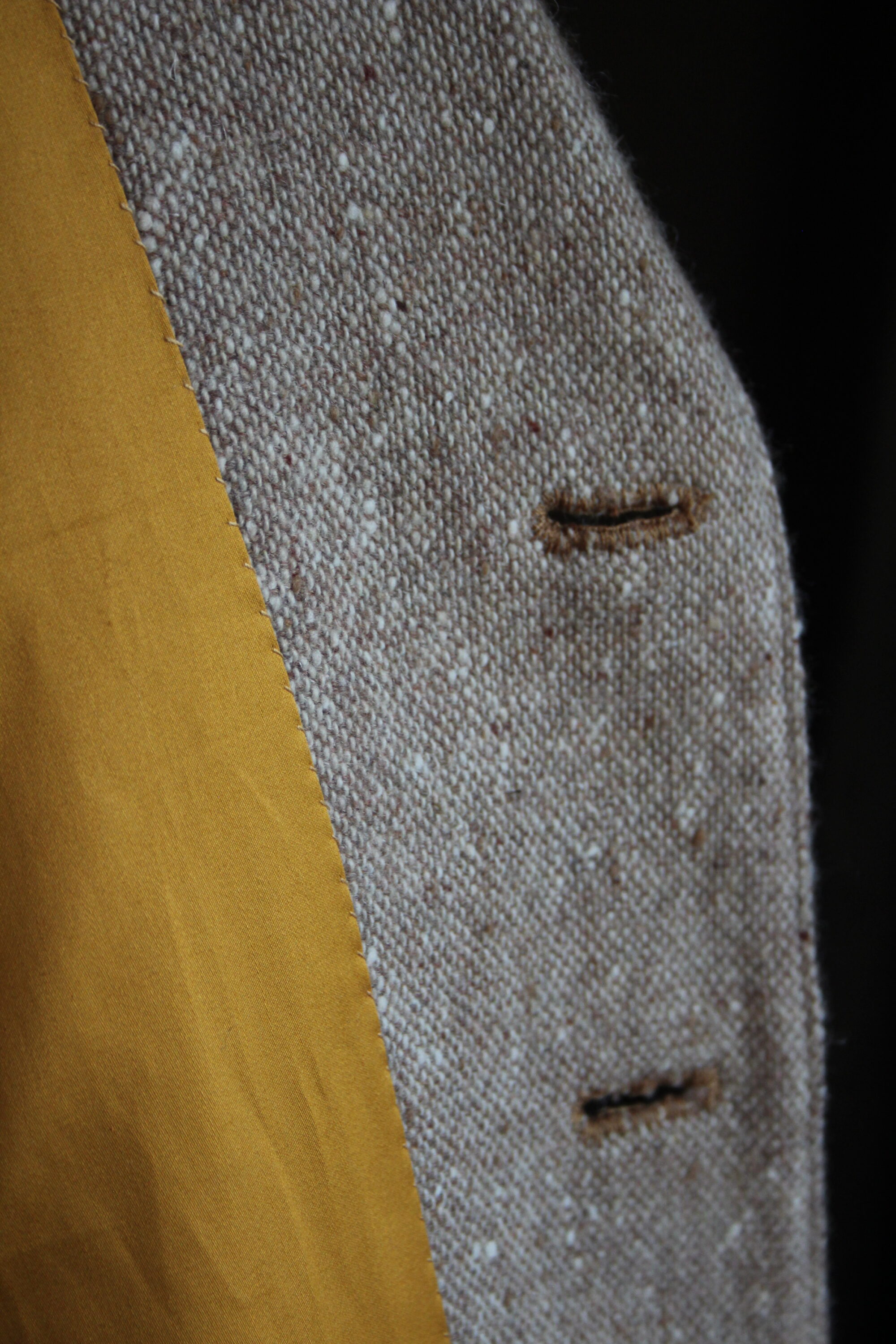
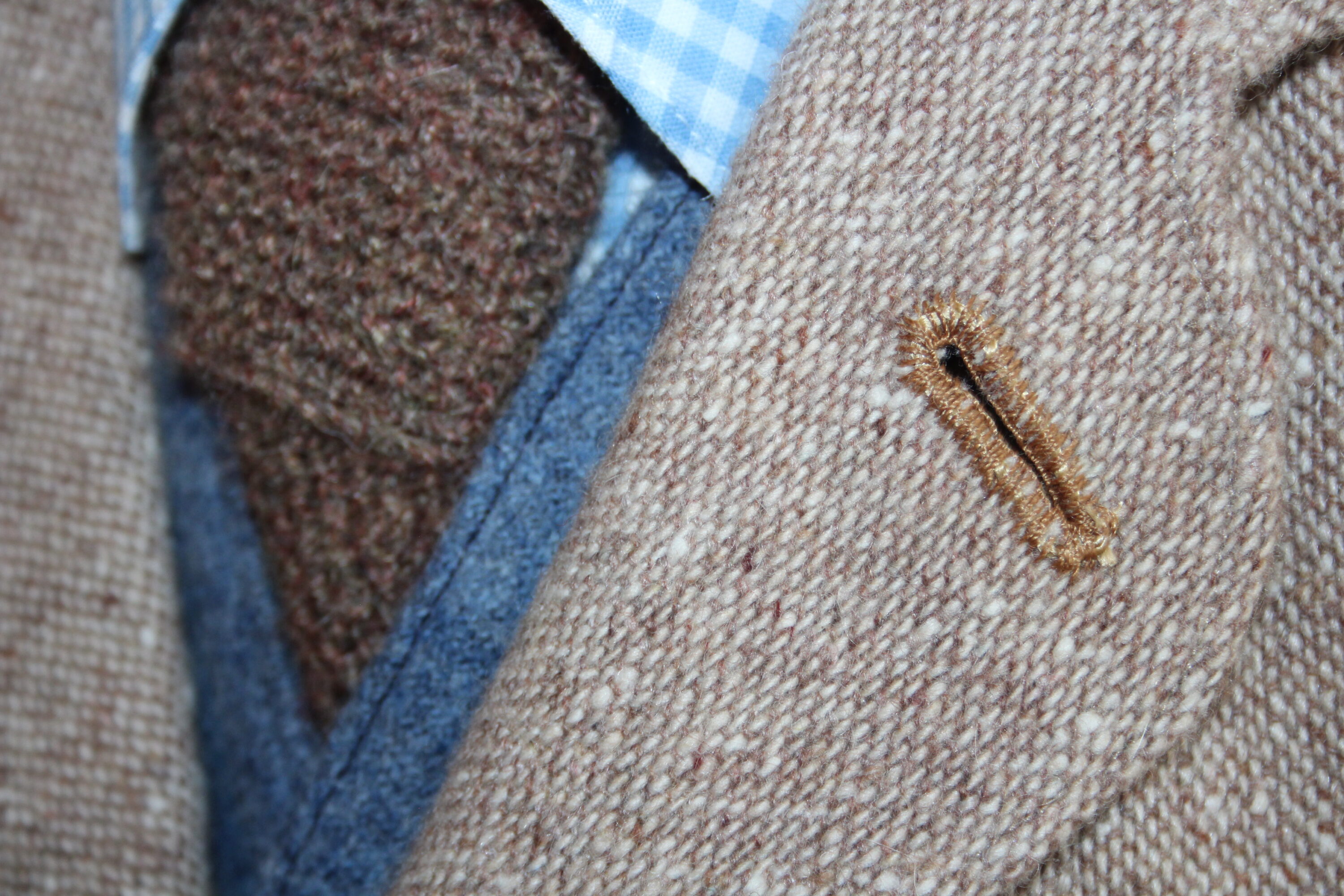
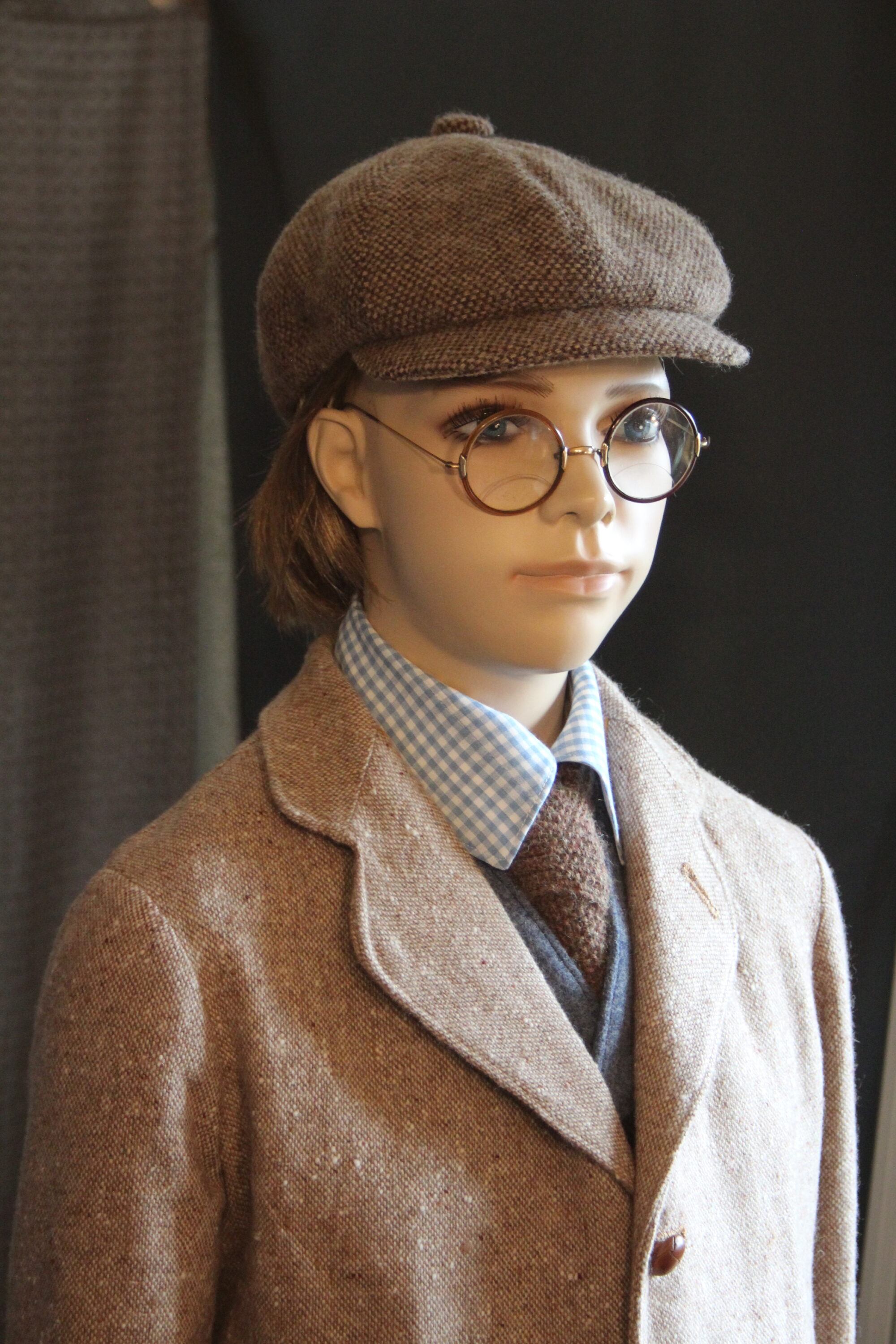
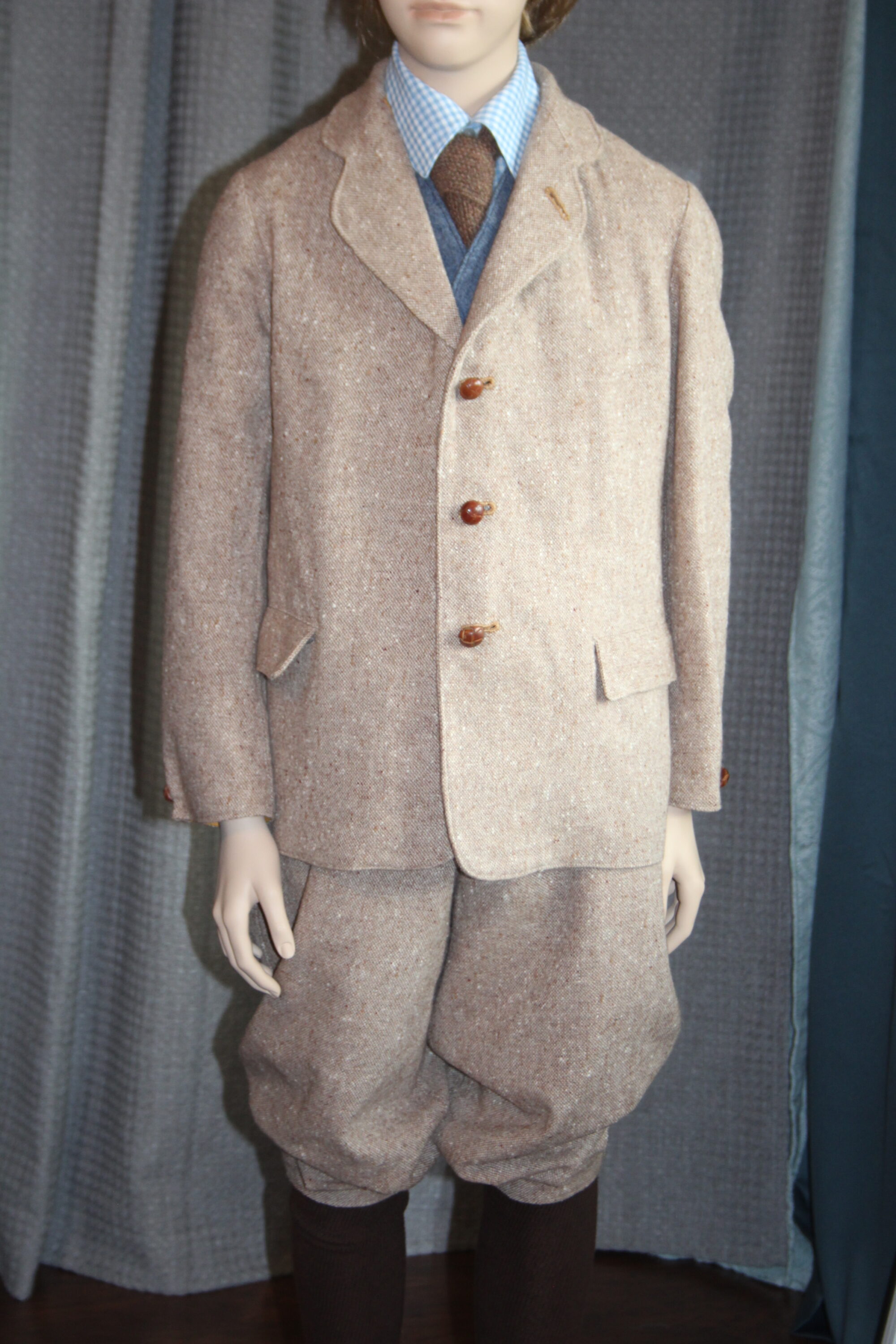
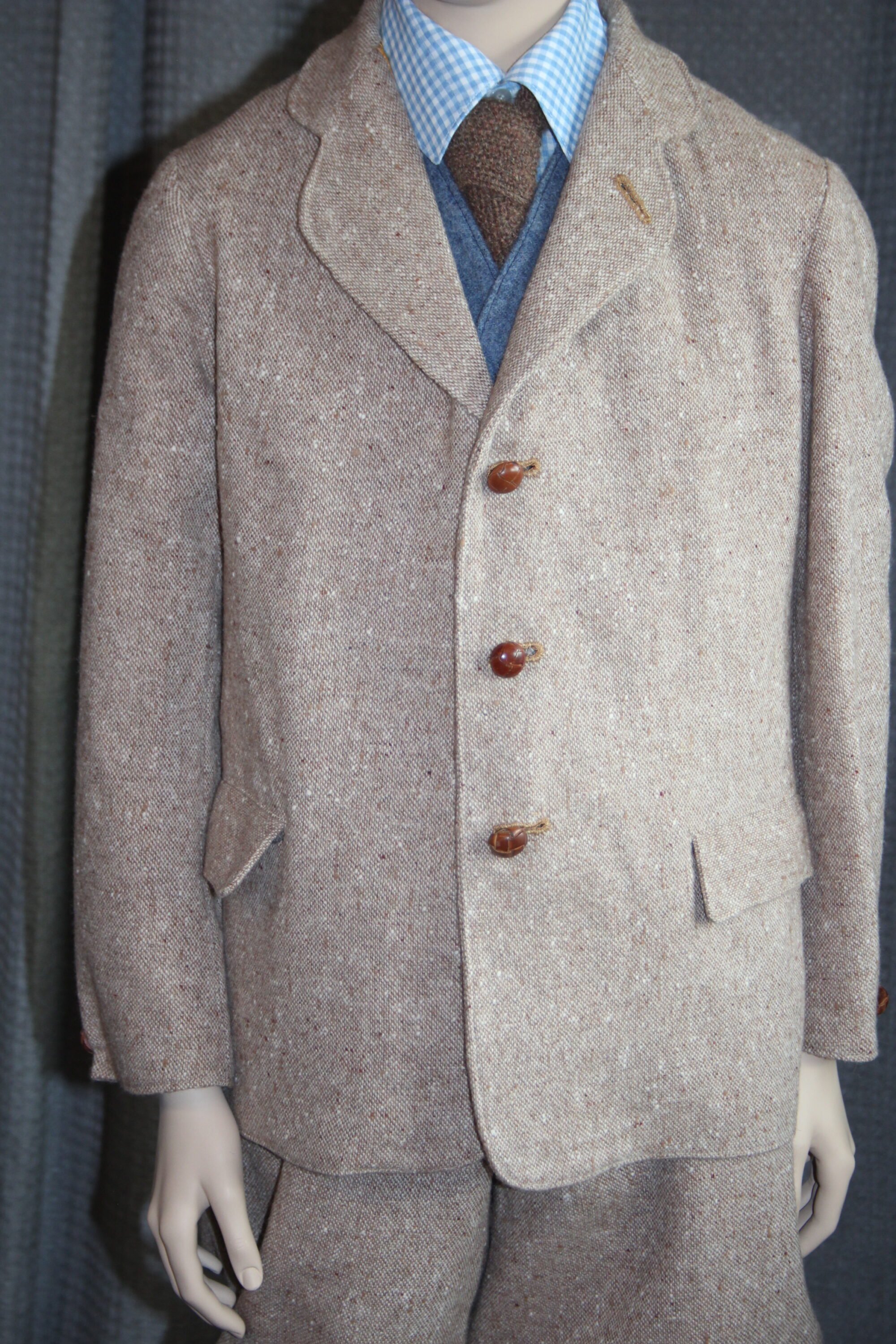
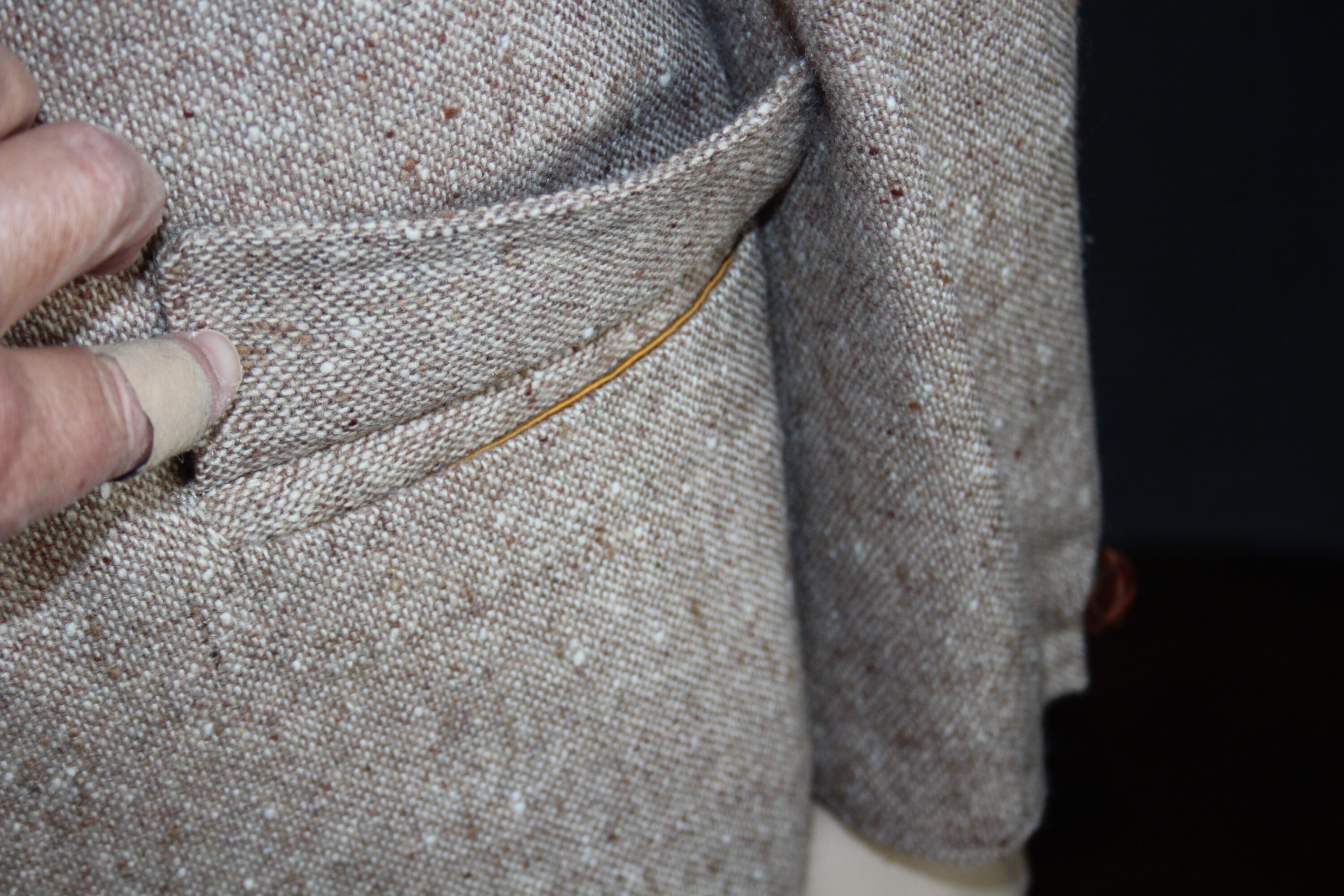
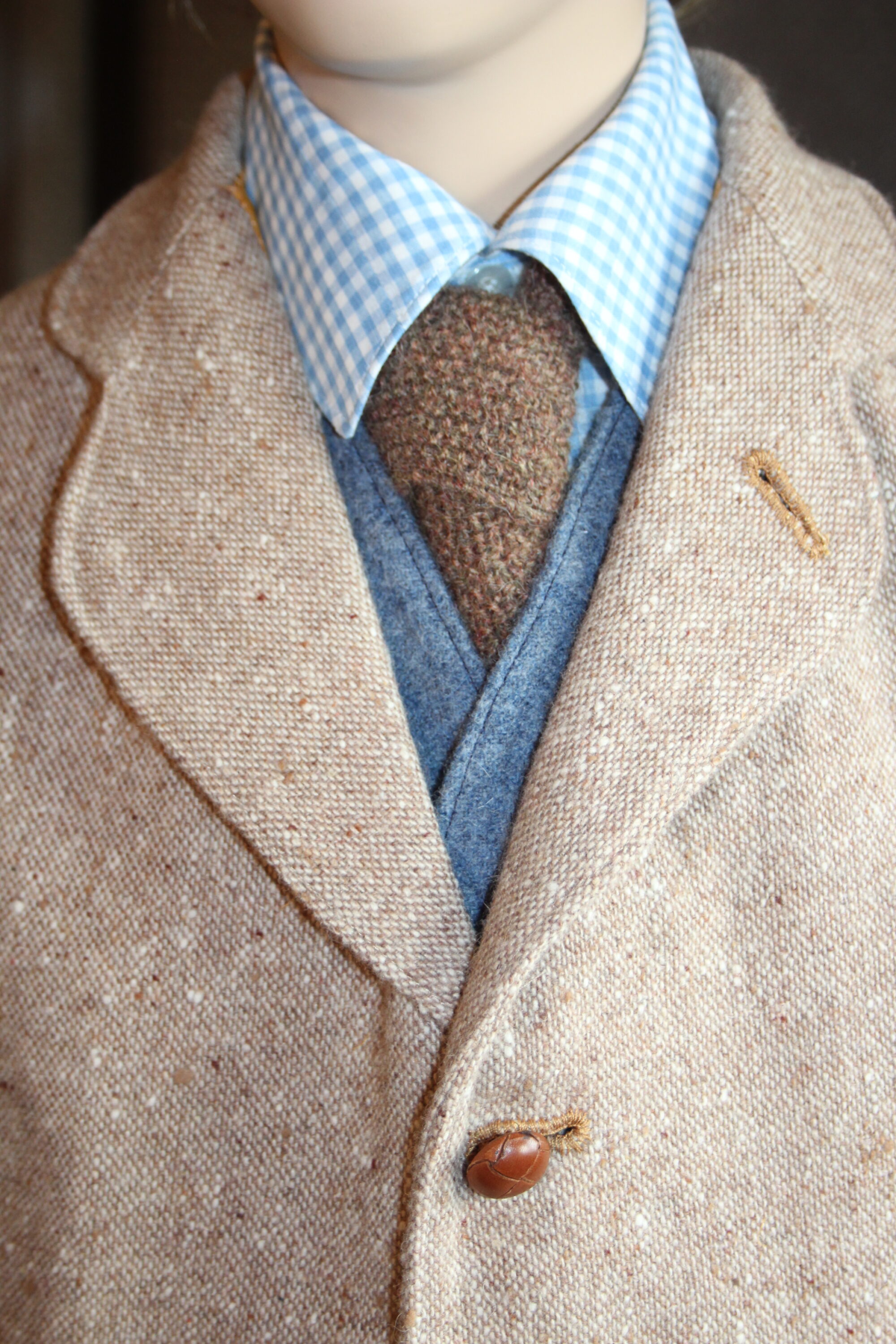
Eyeglasses
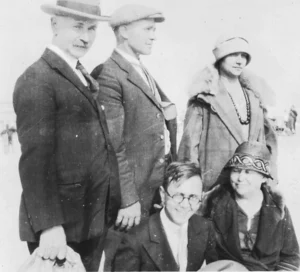
We found something very special! REAL antique metal eyeglasses from the mid 1920’s! These are bifocals in excellent condition and include the original case which comes from a company in Iowa.
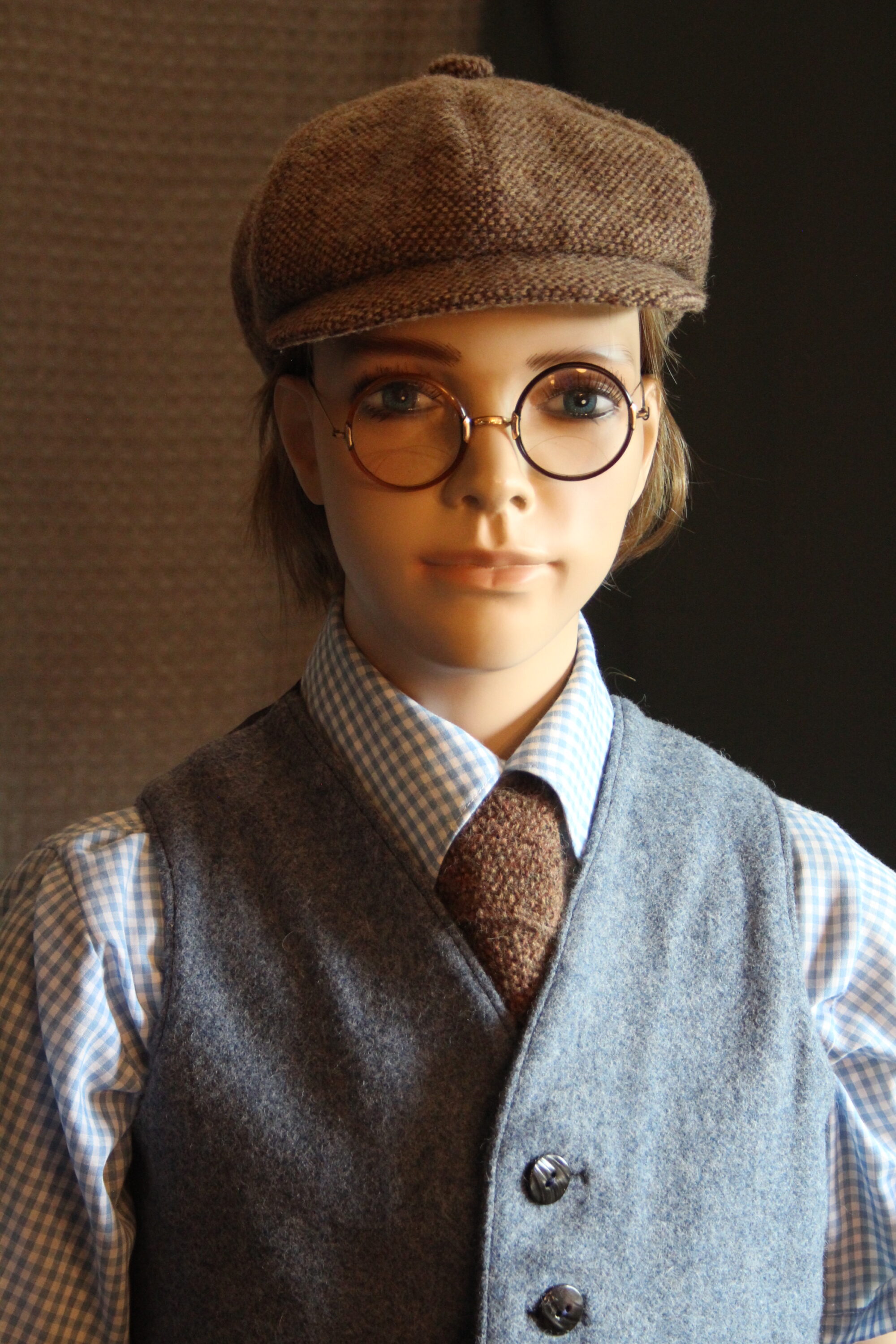
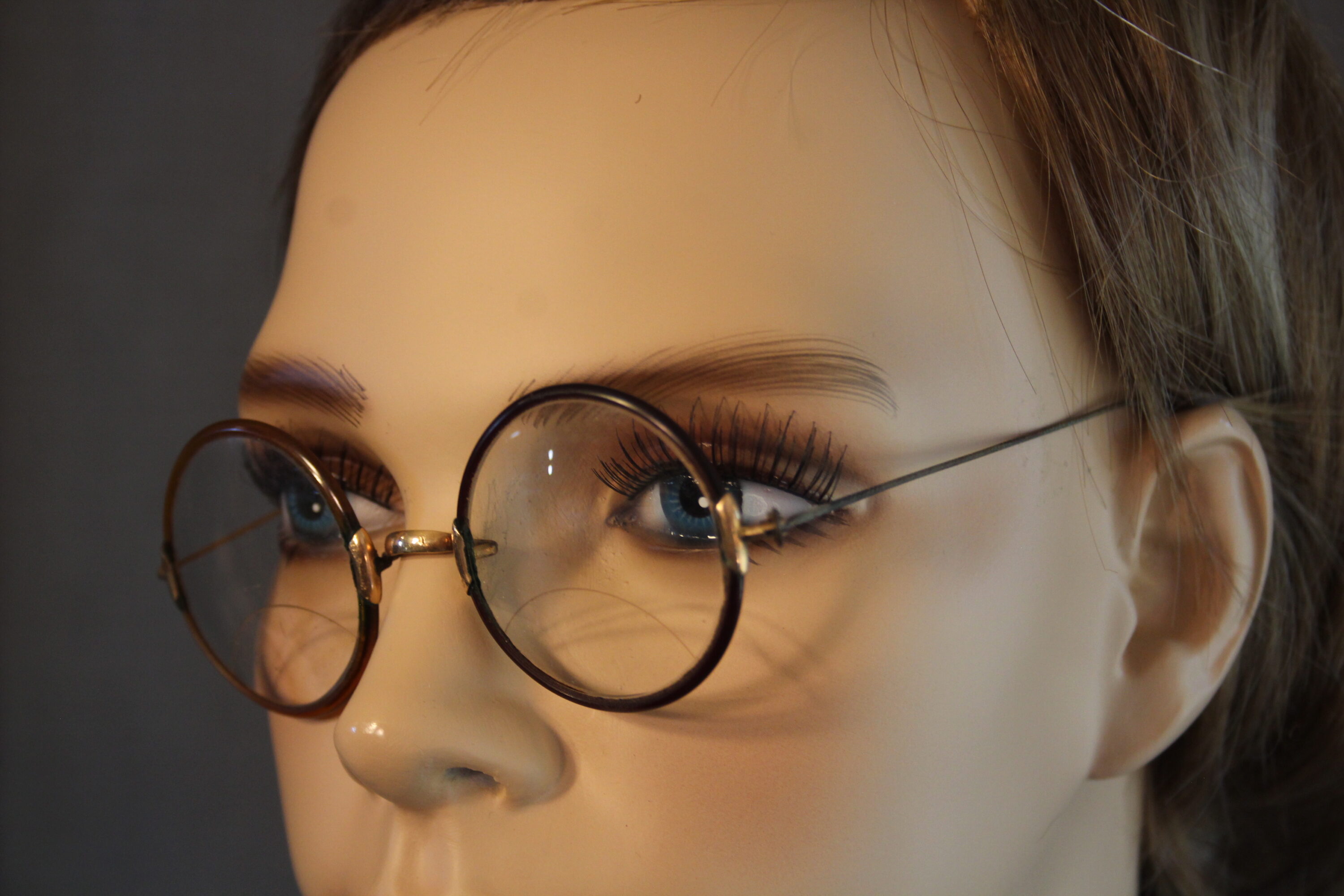
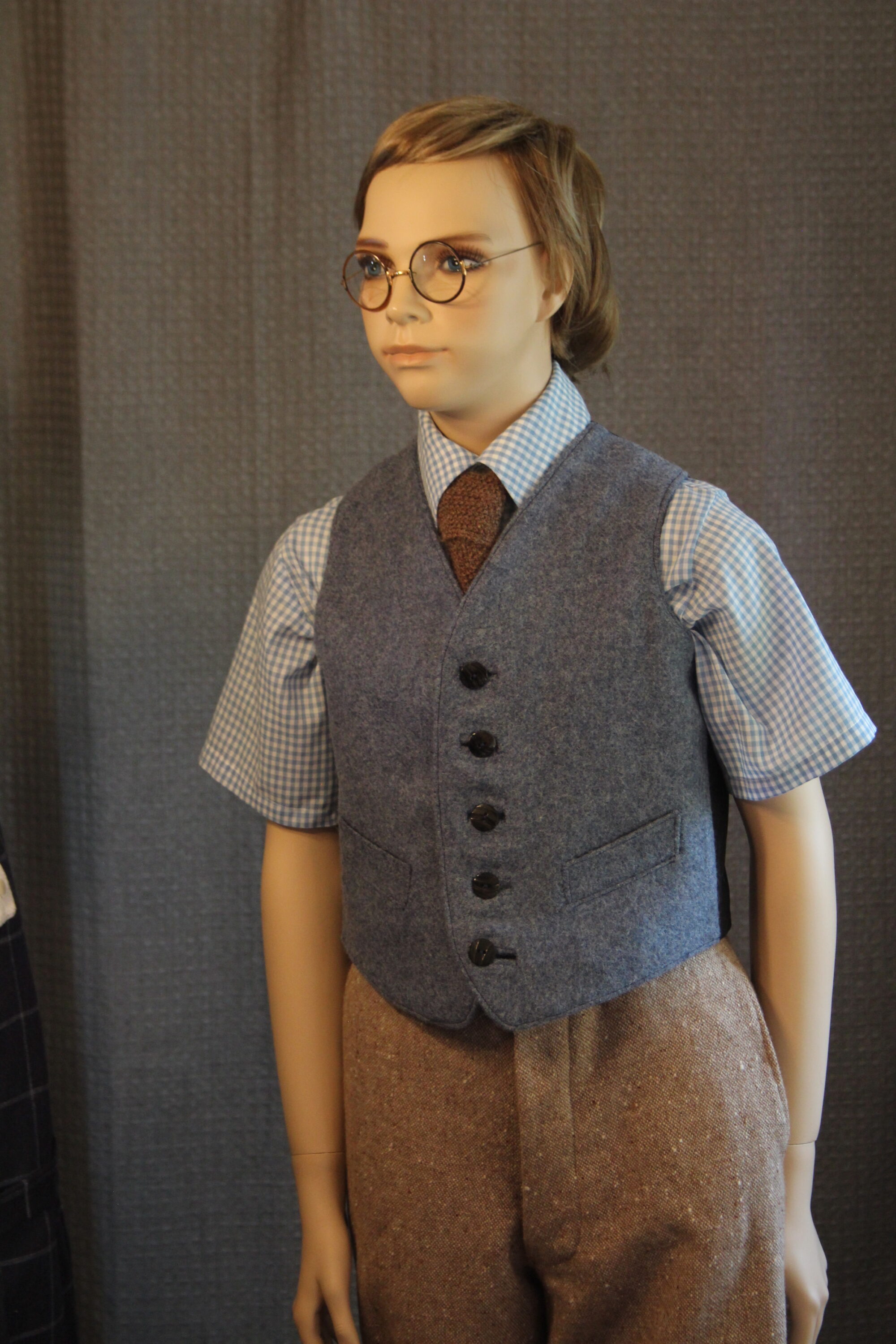
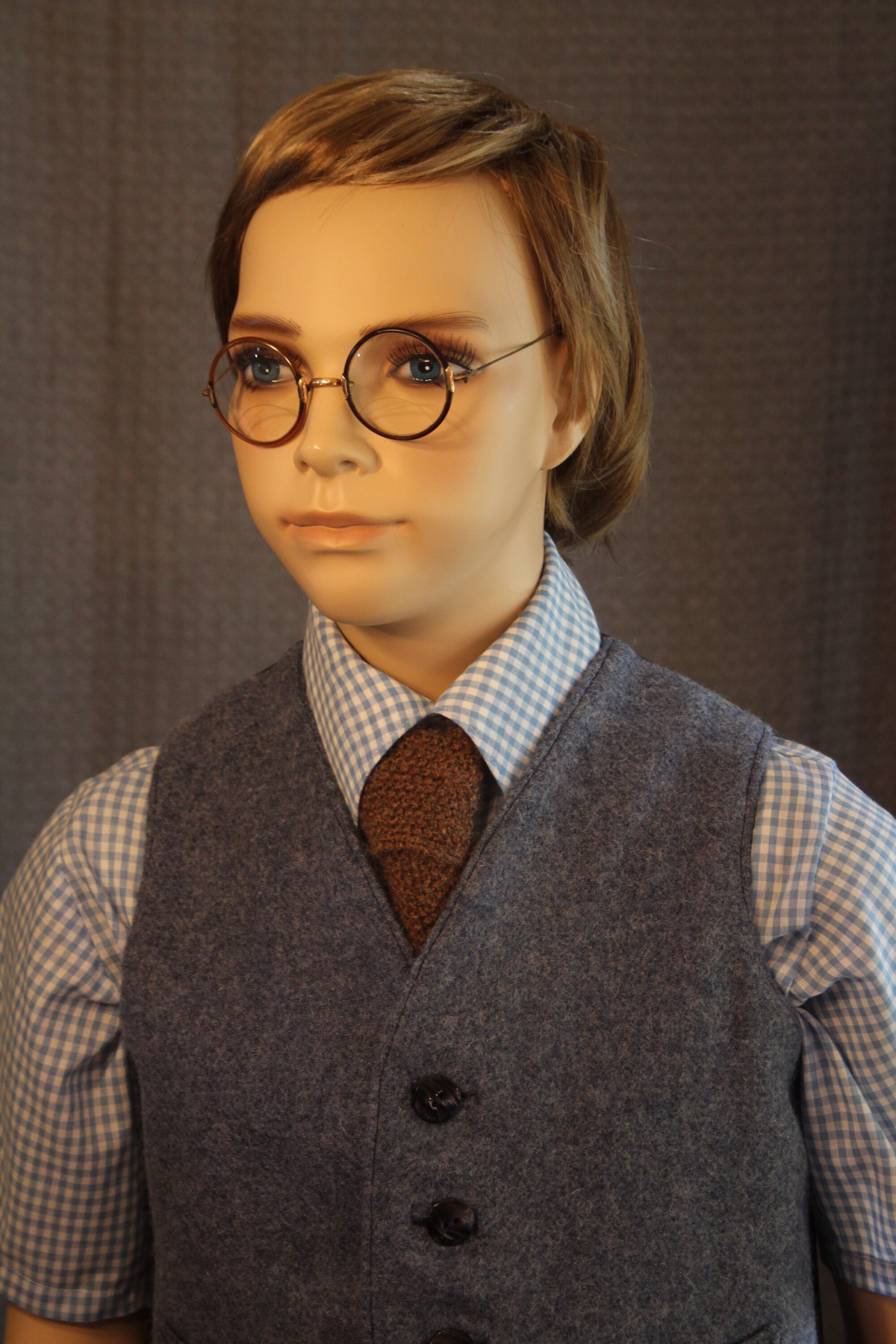
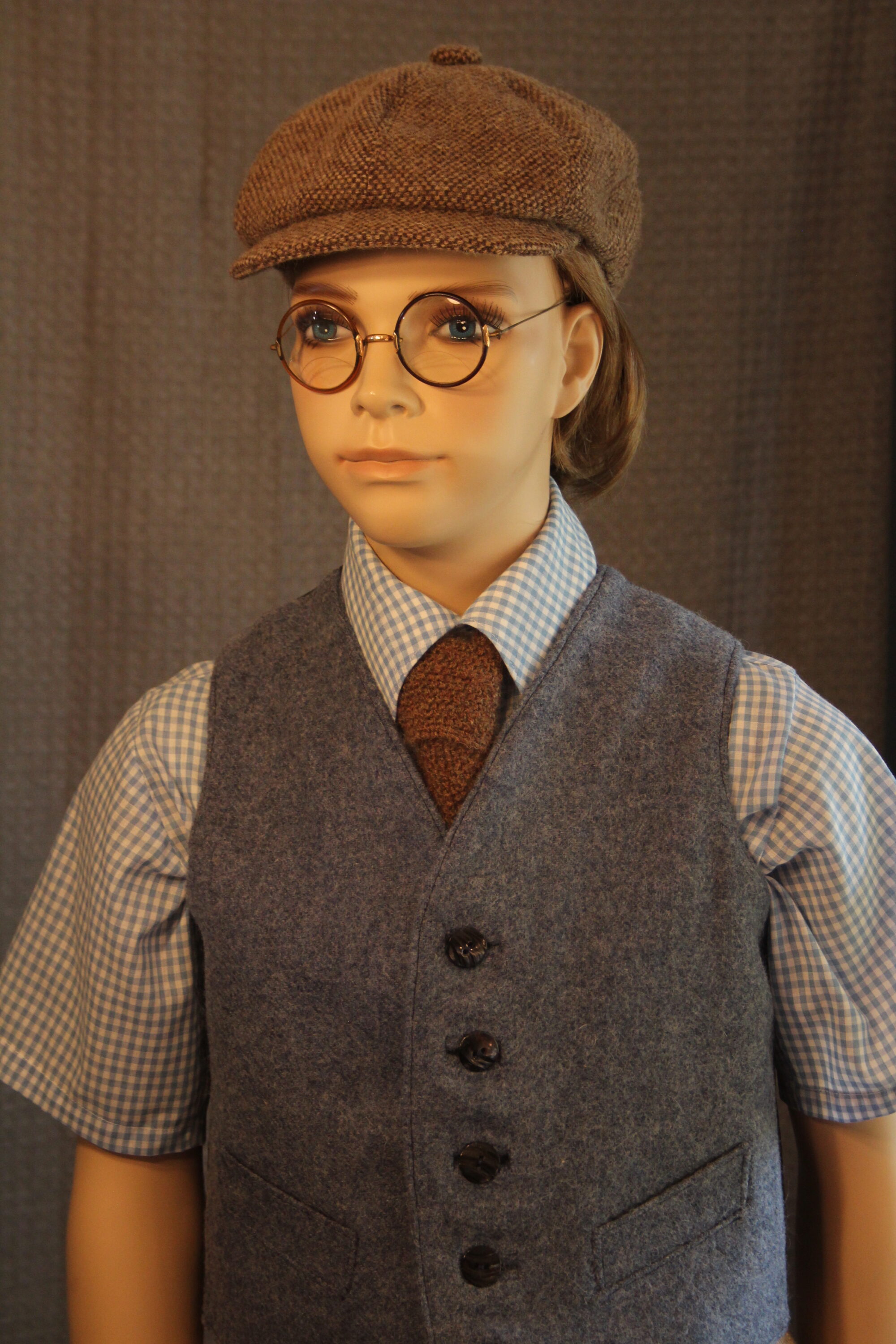
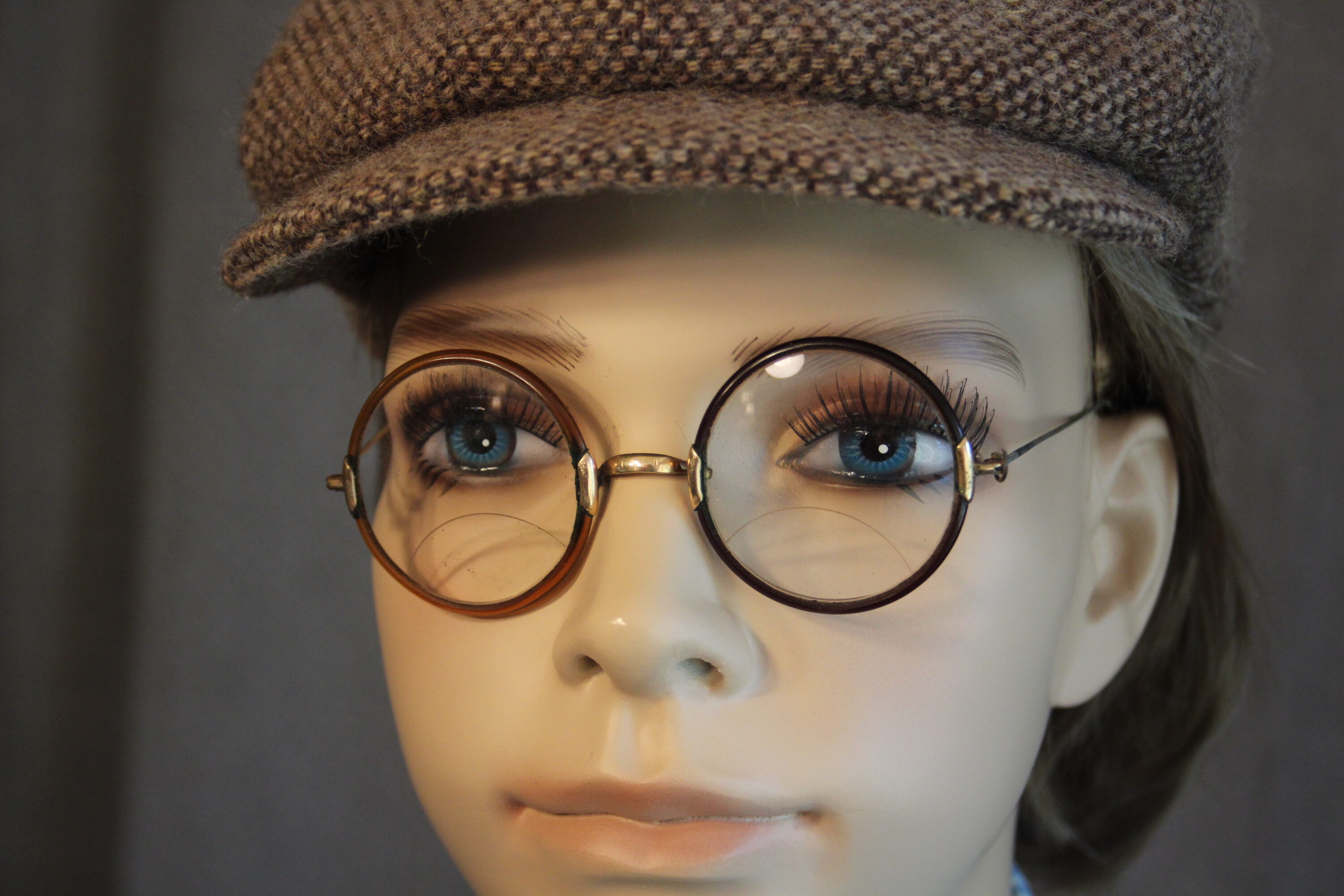
Newsboy Cap
This cap is made the same as the visitor caps from another vintage pattern. It is 100% wool tweed with grosgrain ribbon band and real silk lining. We made this a bit on the large side to cover his hair that is longer than historically correct. This looks great with a modern polo shirt as well as his historic ensemble.
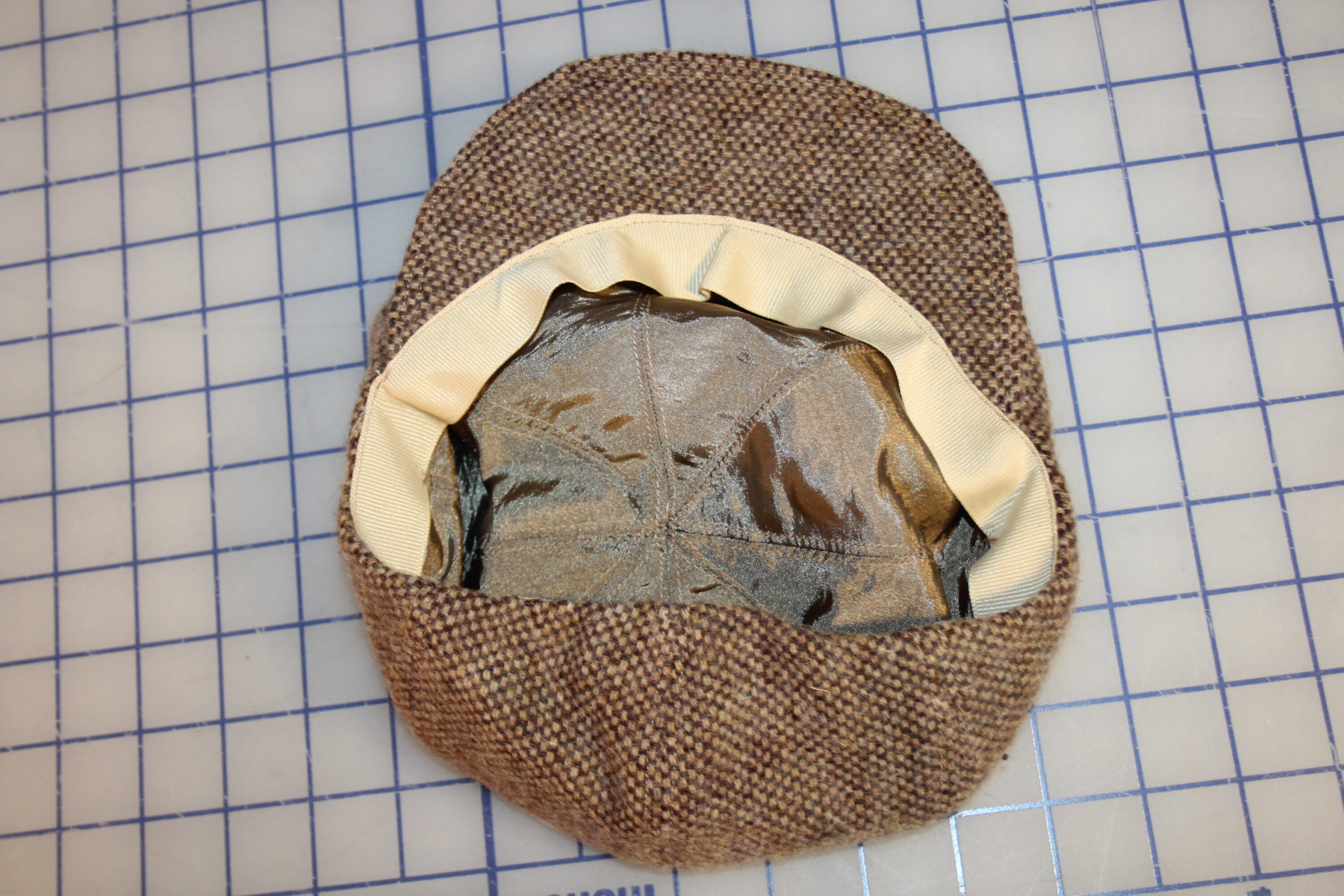

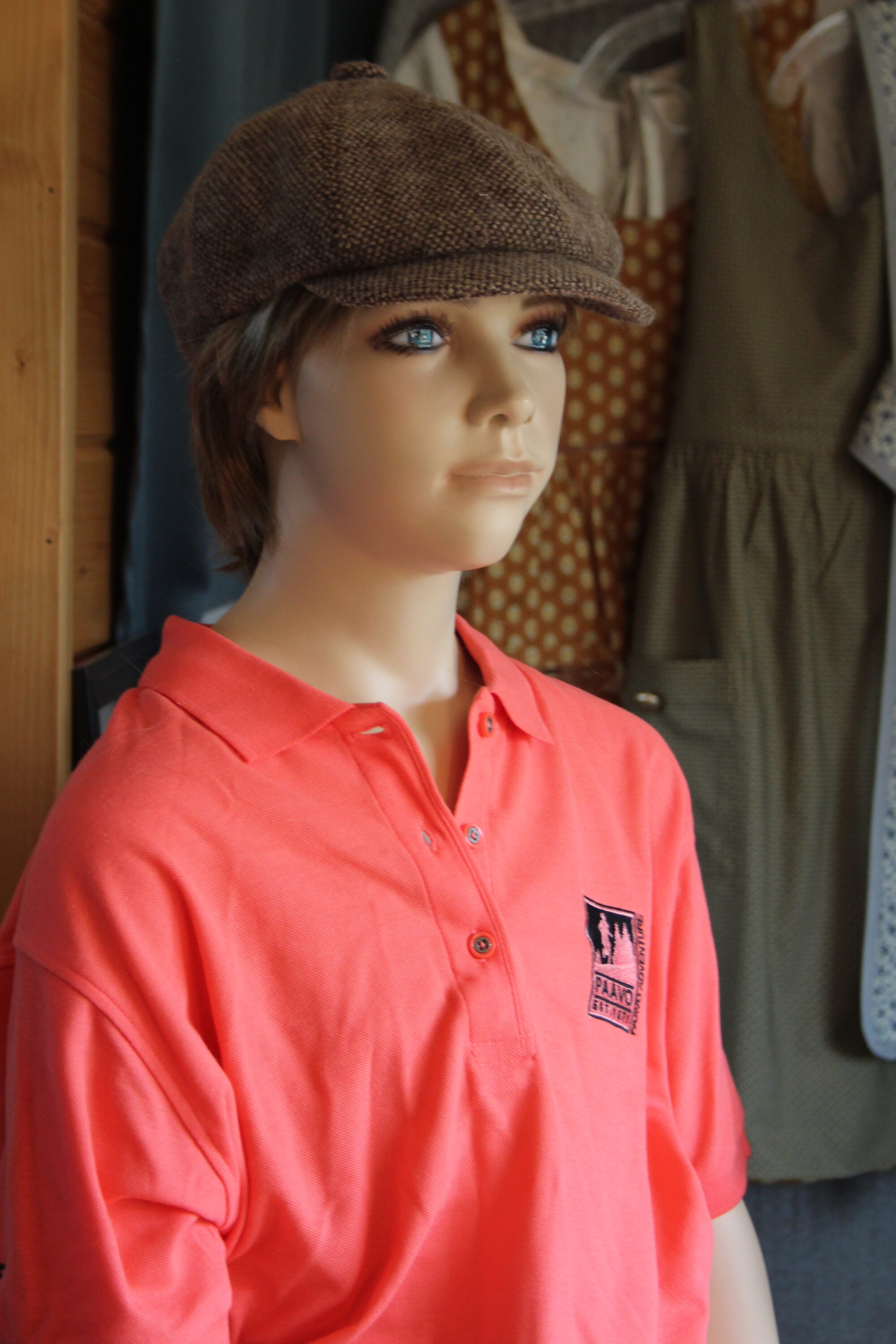
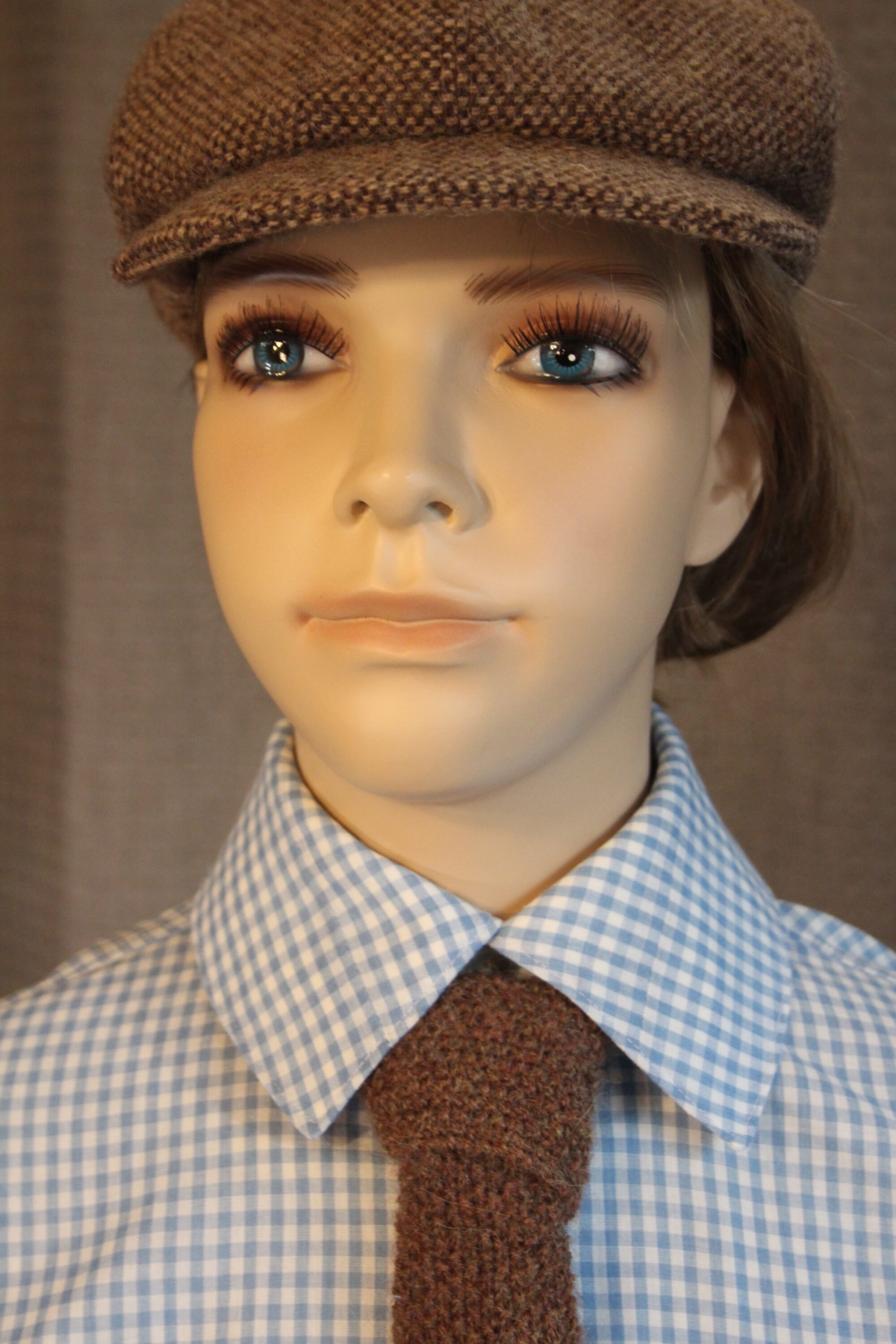
Hand knit necktie
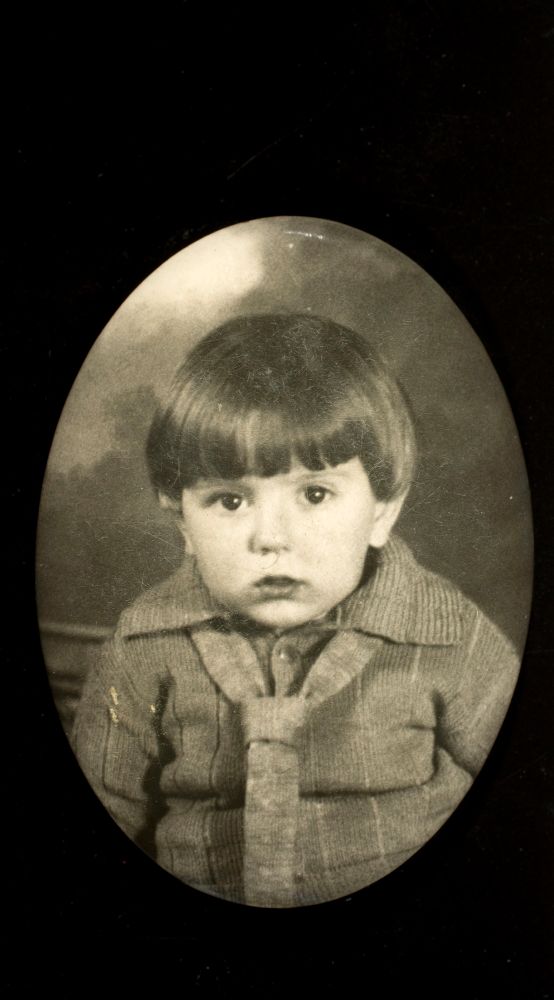
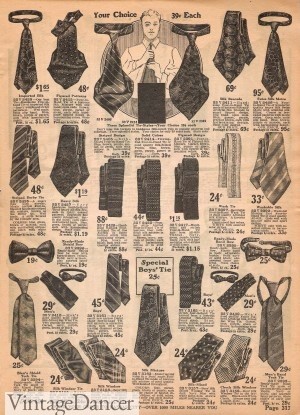
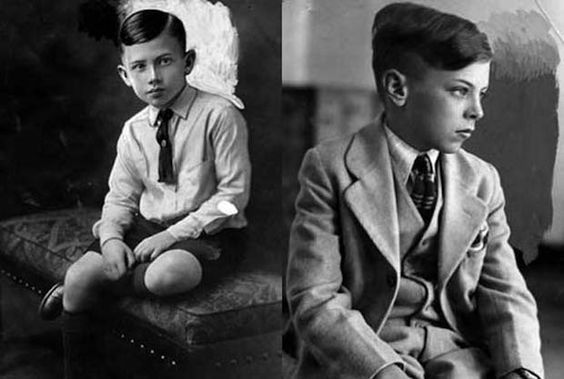
This is a “seed stitch” made from a gorgeous Melton 100% wool variegated yarn in brown and orange. Originally, it was to have a tiny light blue stripe, but the plain and somewhat rough looking finish of the wool was beautiful by itself. As there are NO PATTERNS modern nor vintage for this, we used extant photos to determine the design, width and length – oops! It is a bit short for a big boy of 12, but will be just fine under the vest.
That’s because it is to be worn with the knot very thick and bulky, and bunched up under the stiff collar when dressing up. It was even fashionable to wear it hanging around the neck untied with the vest open.
This is a gorgeous piece of art that photos do not do justice because it is so soft and has a really unique texture you don’t normally get out of knitting because the seed stitch is very complex. We’re giving the museum our “also ran”, test runs from blue and brown striped 100% wools too, in case they’d like to have another docent wear an historically correct tie or if they want to switch these out since they are all lovely.
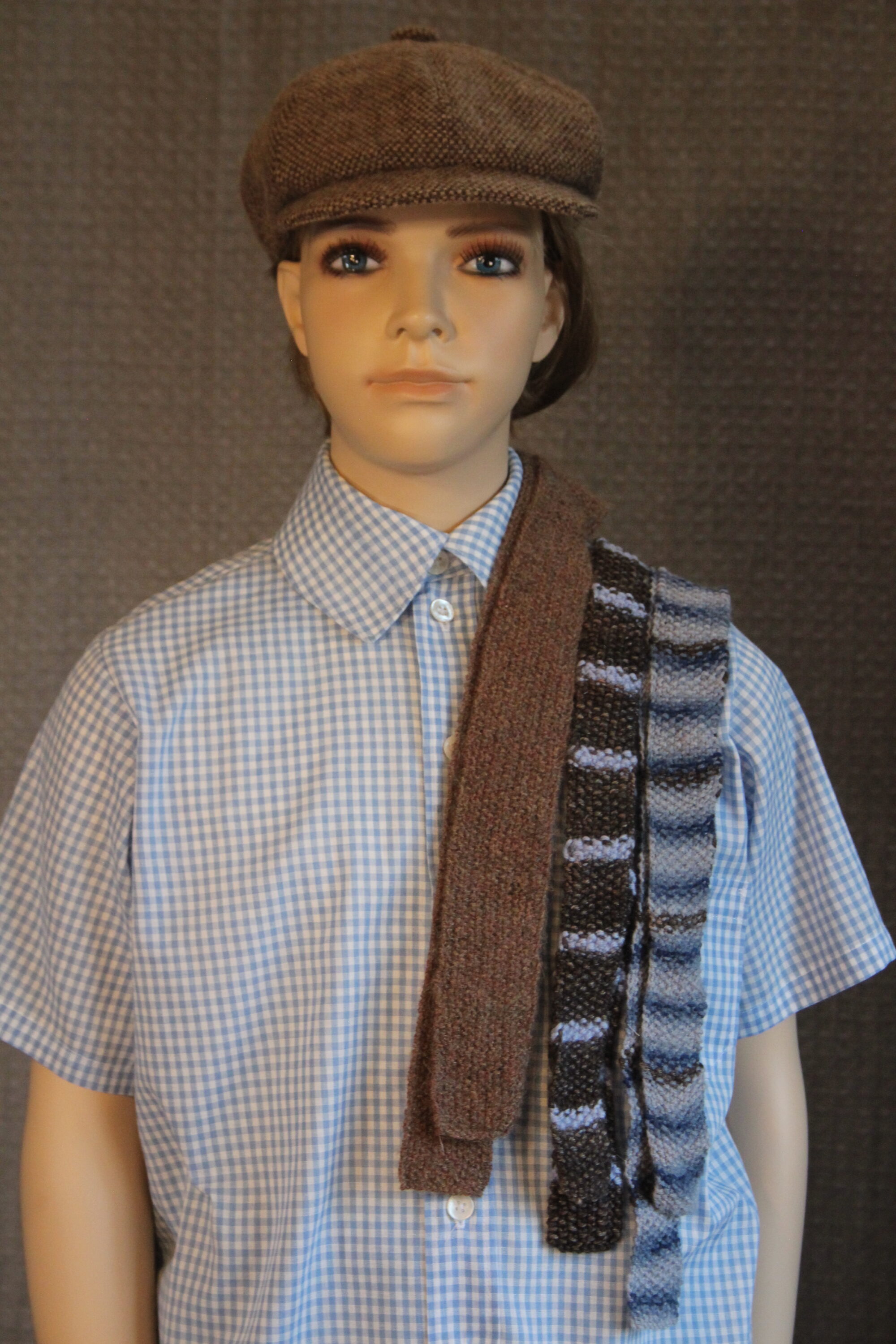
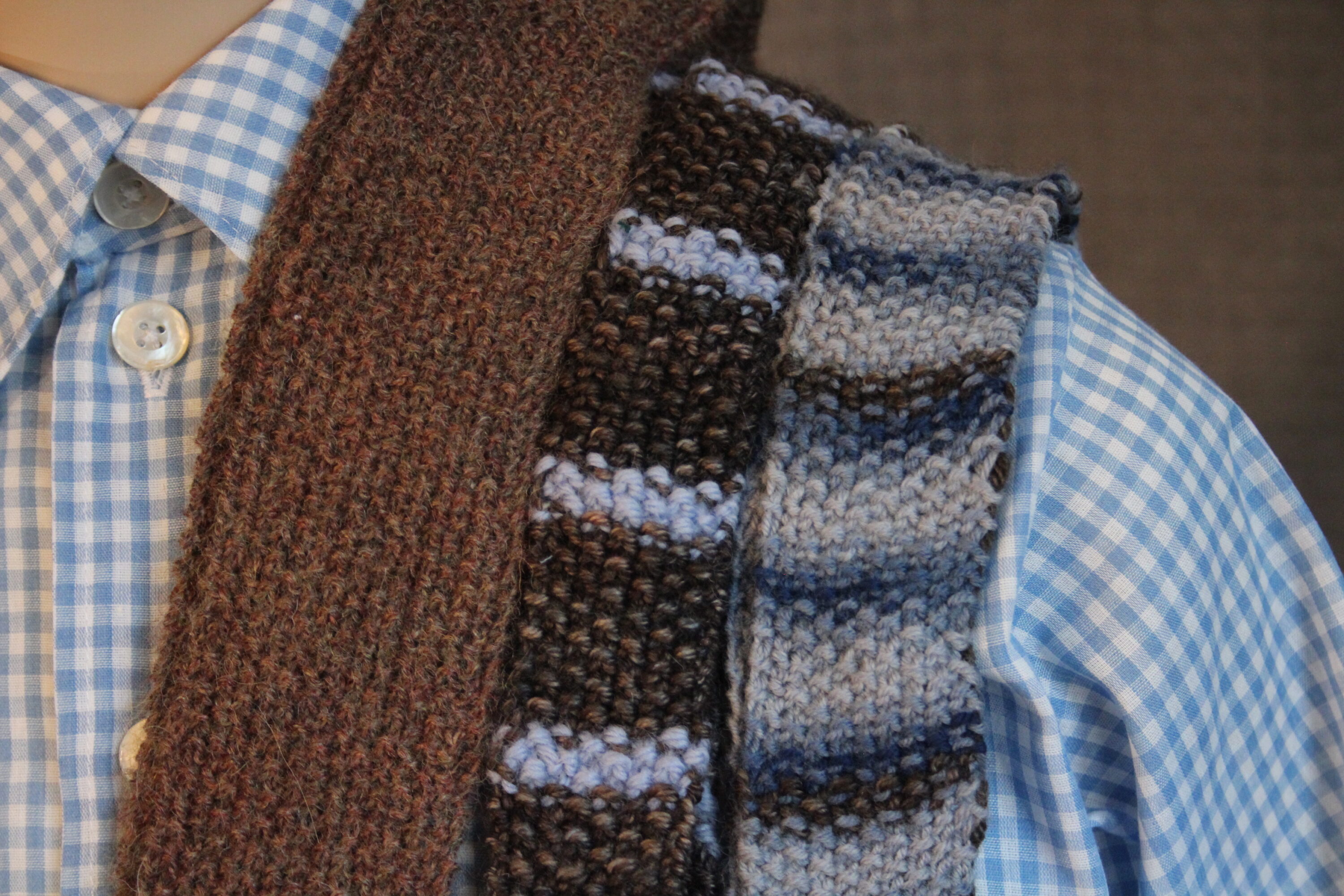
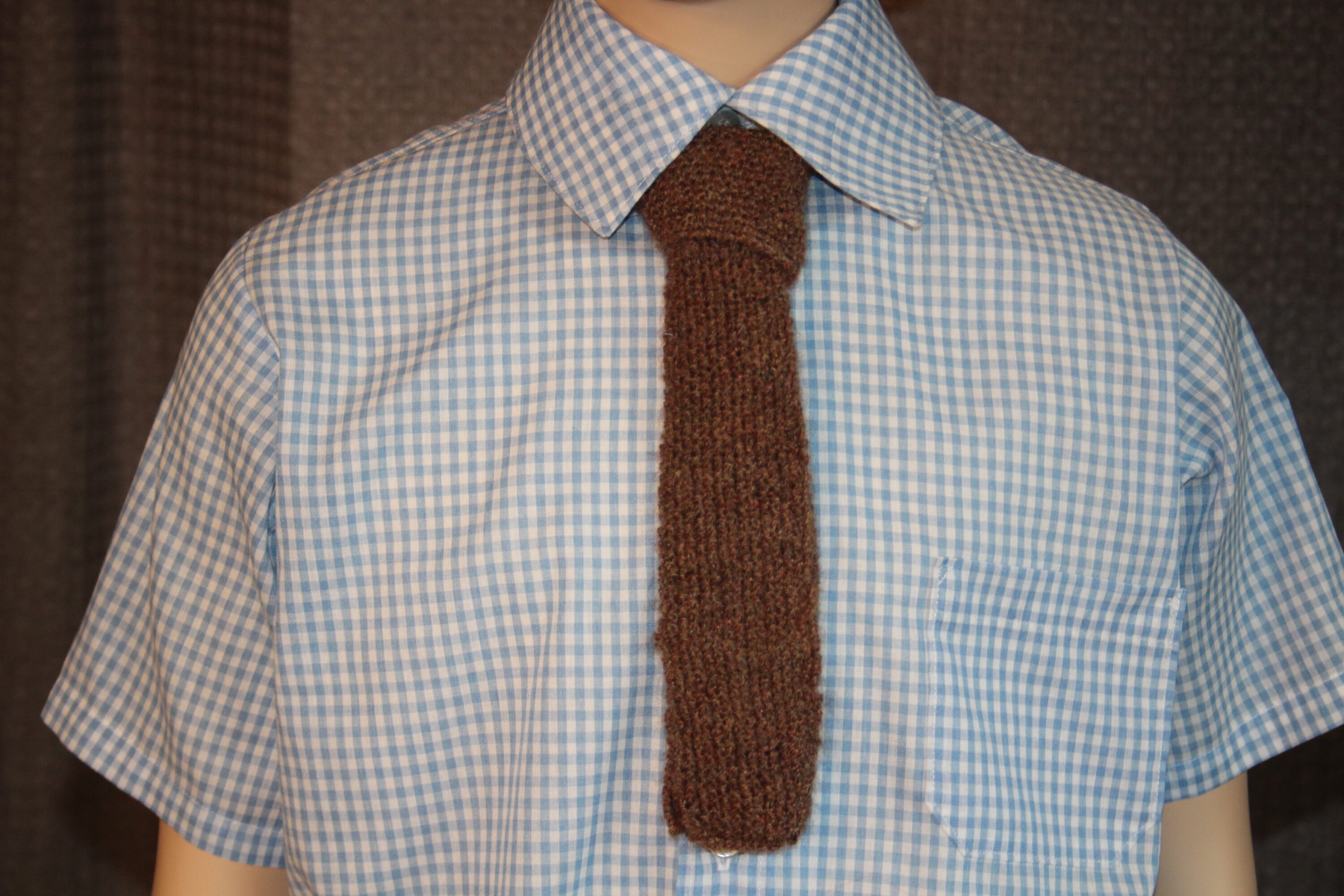

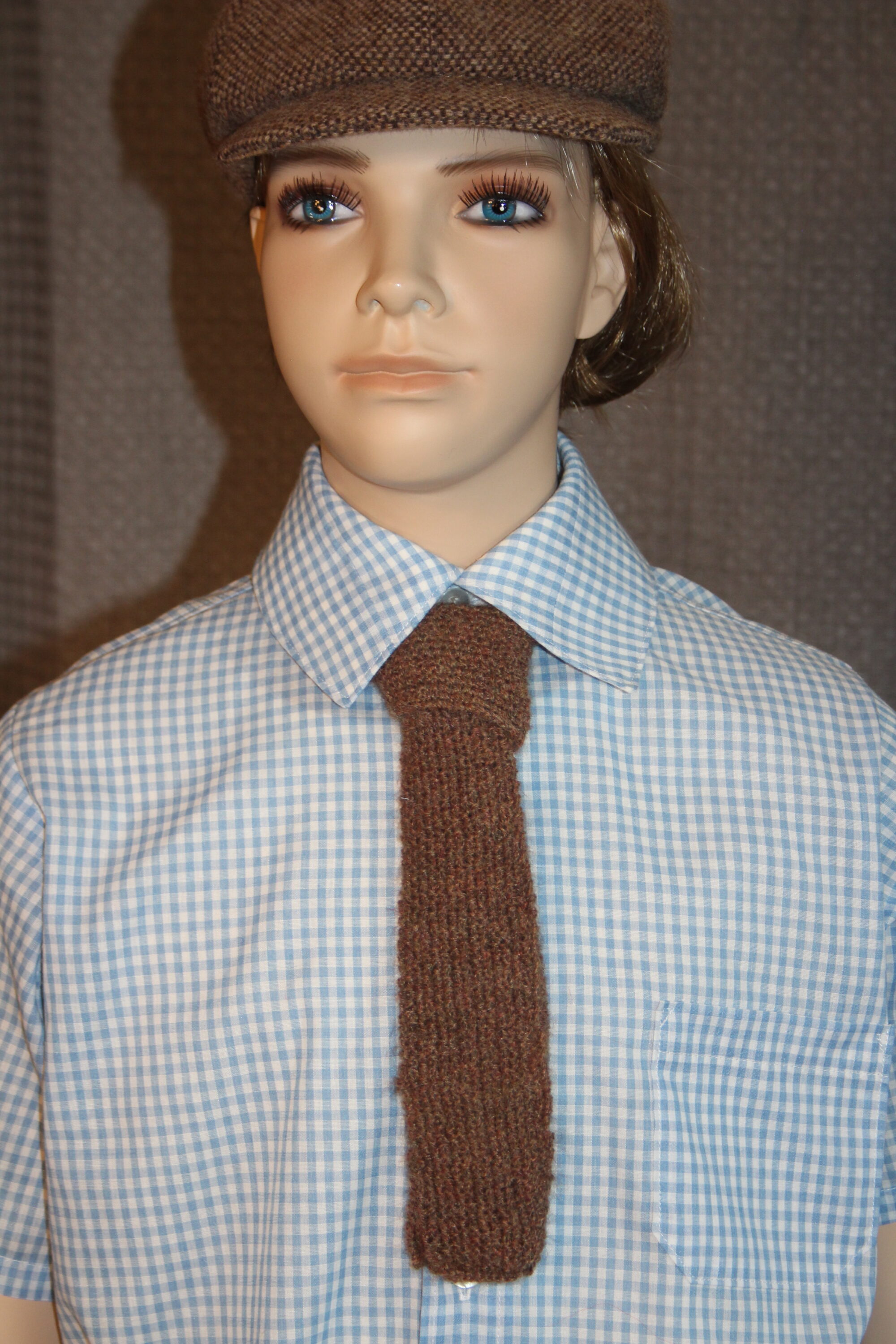
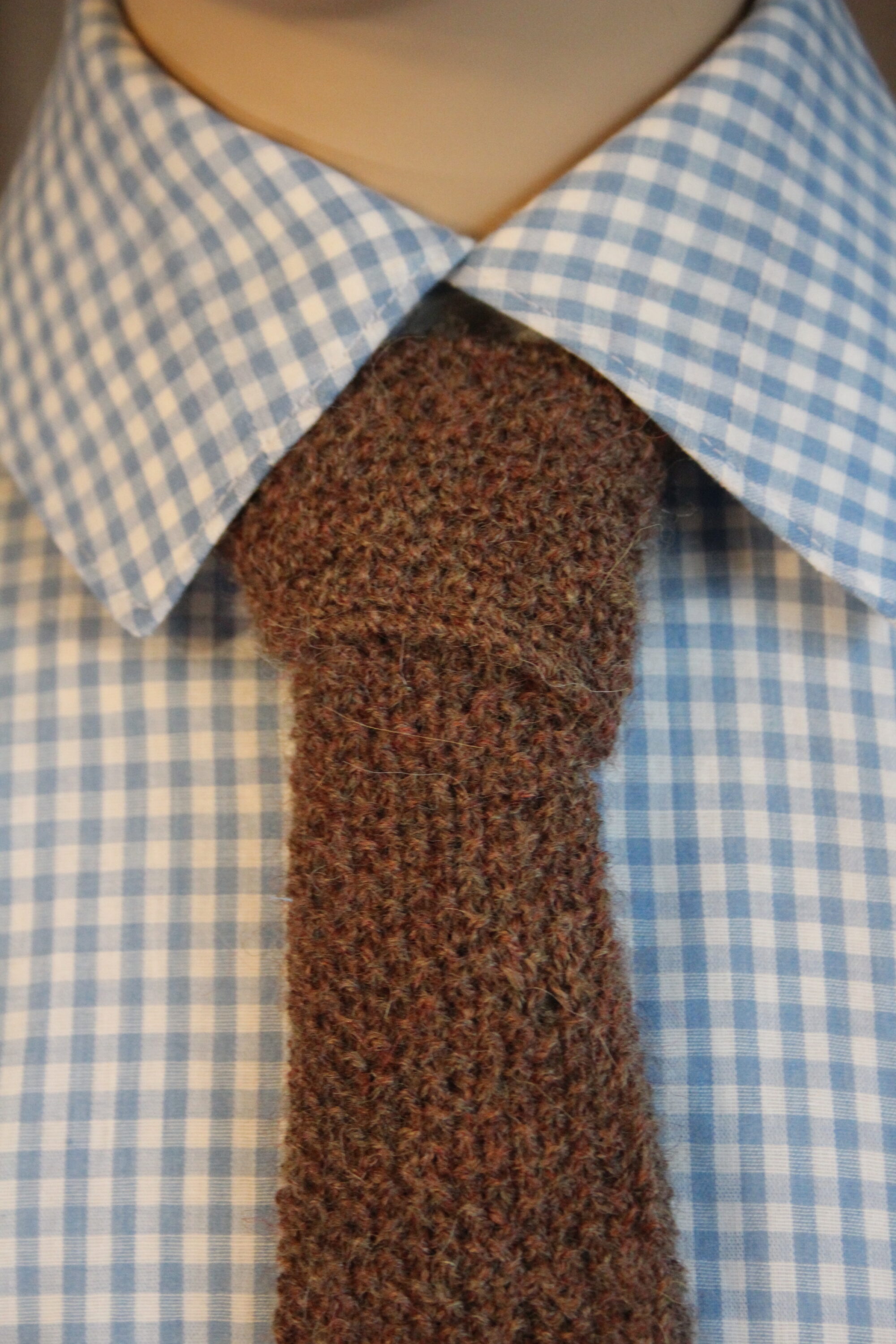
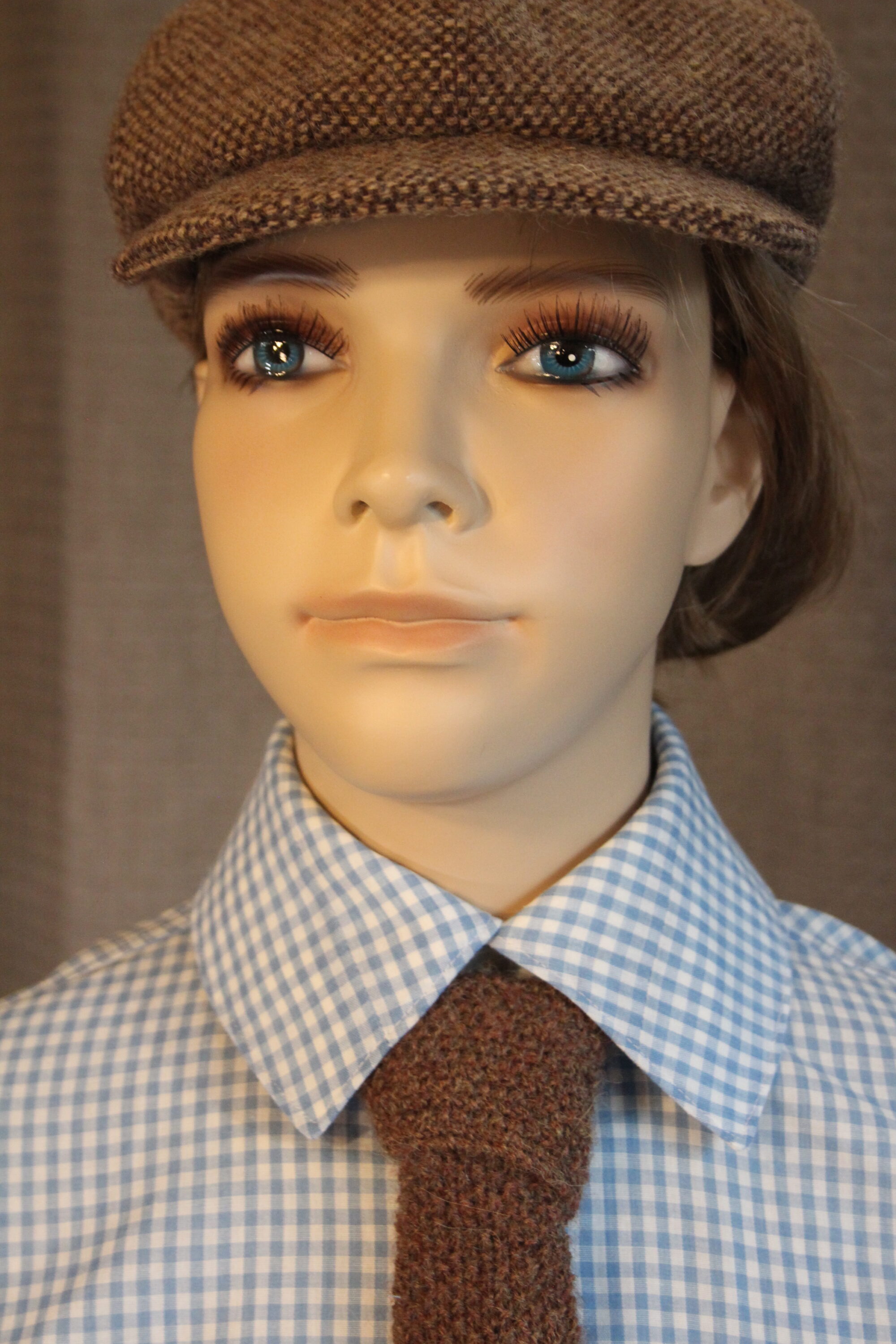
Accessories Shoes & Belt

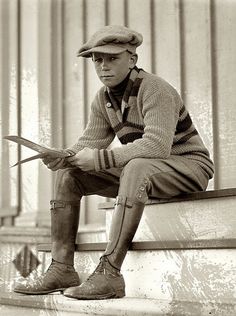

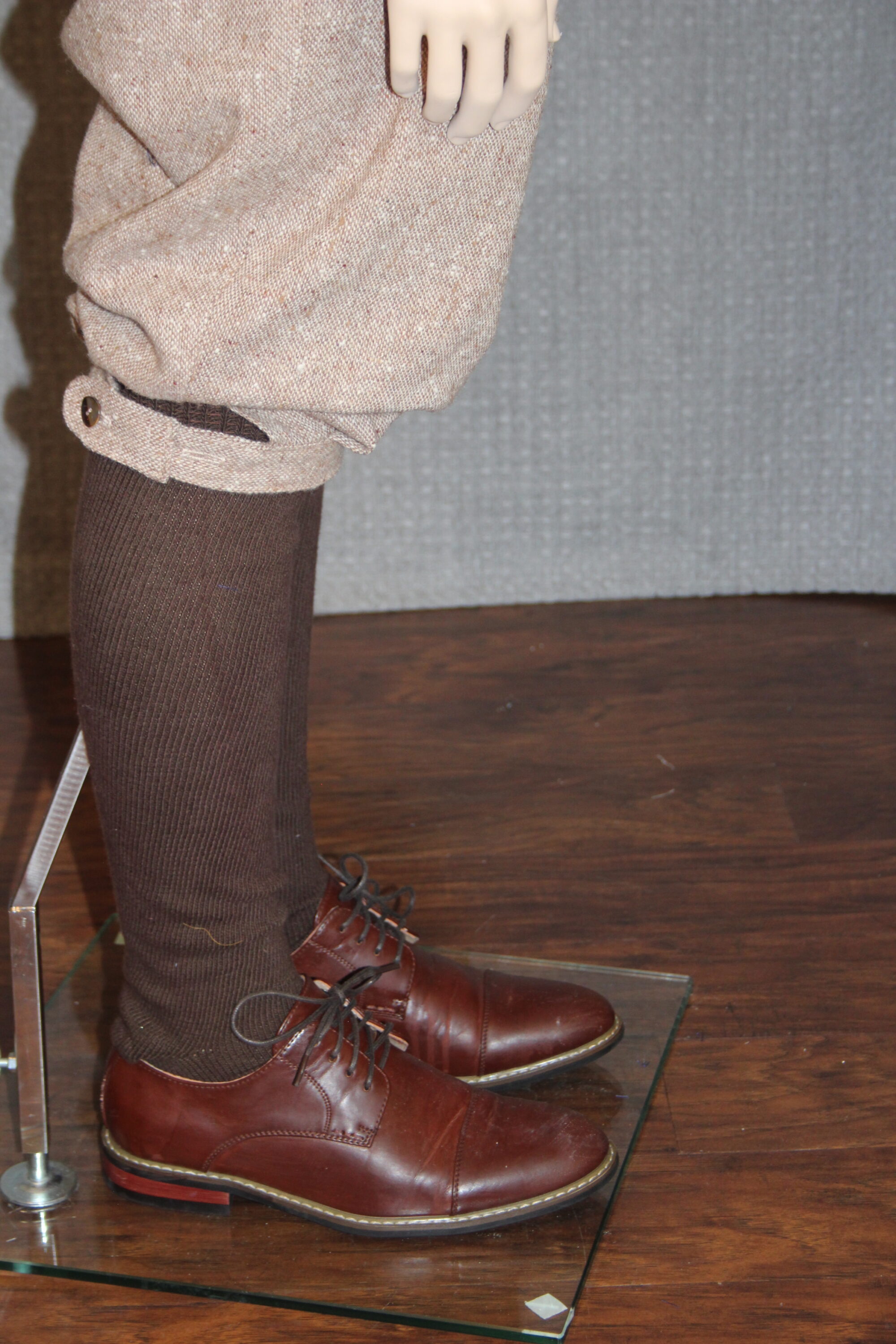
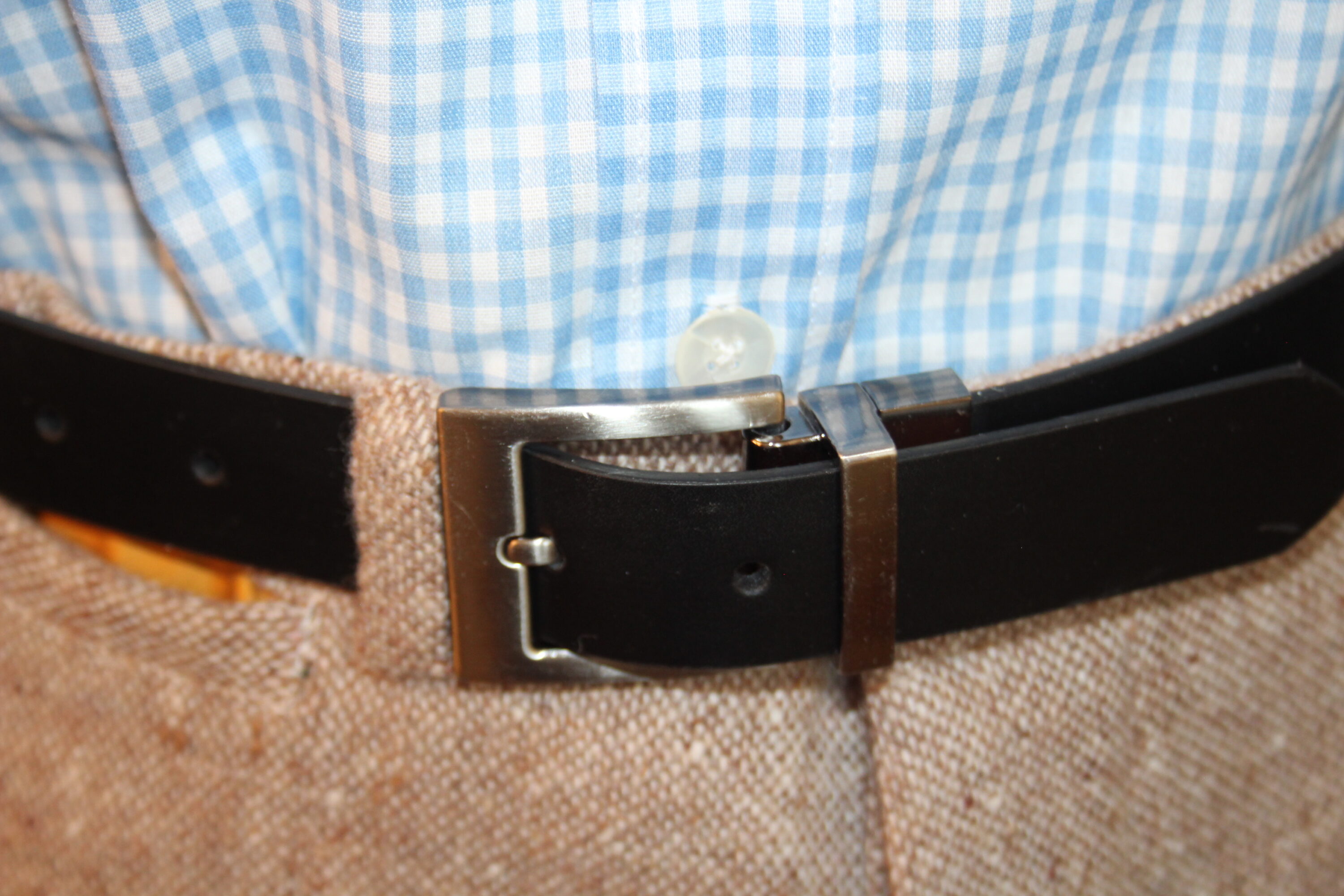
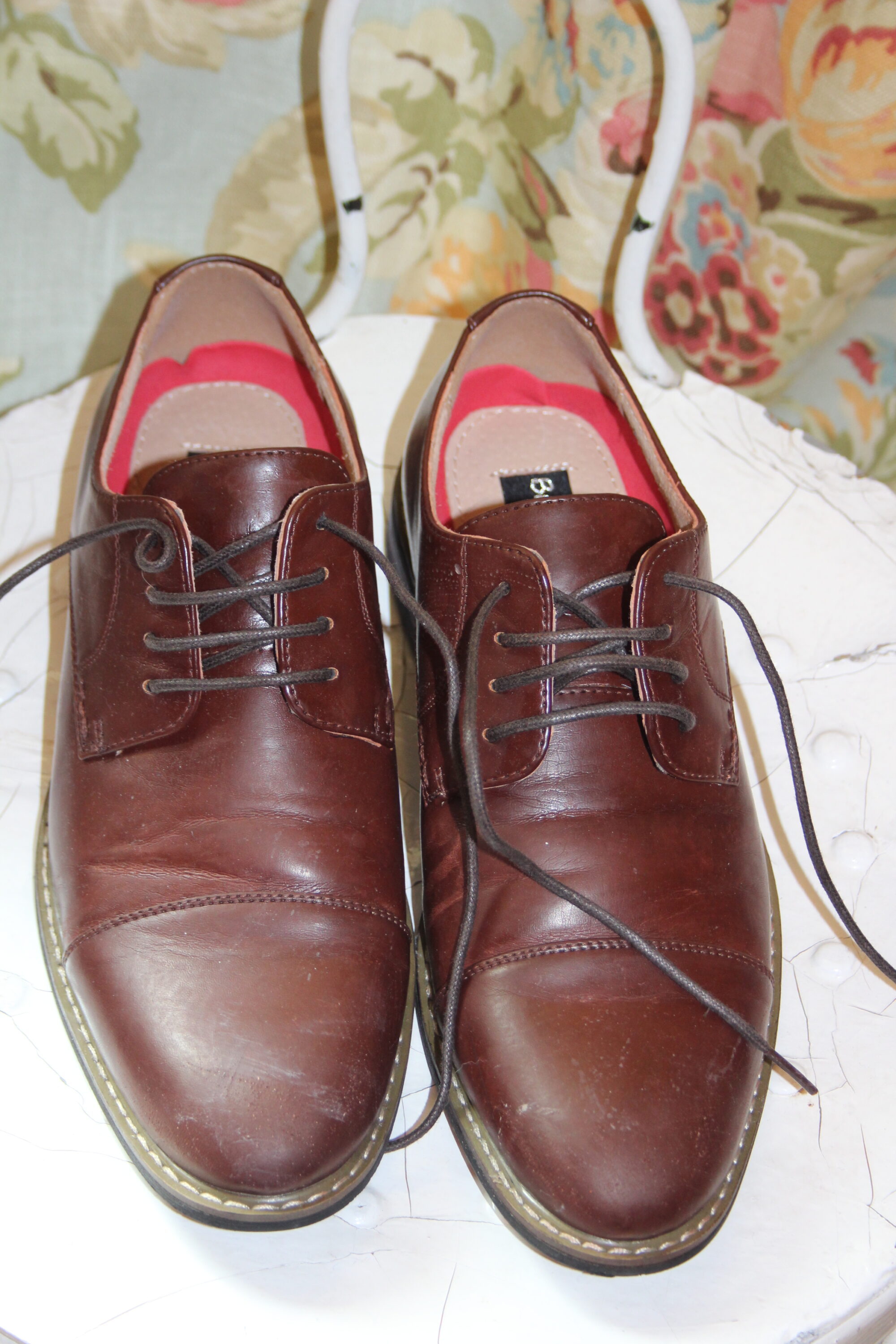
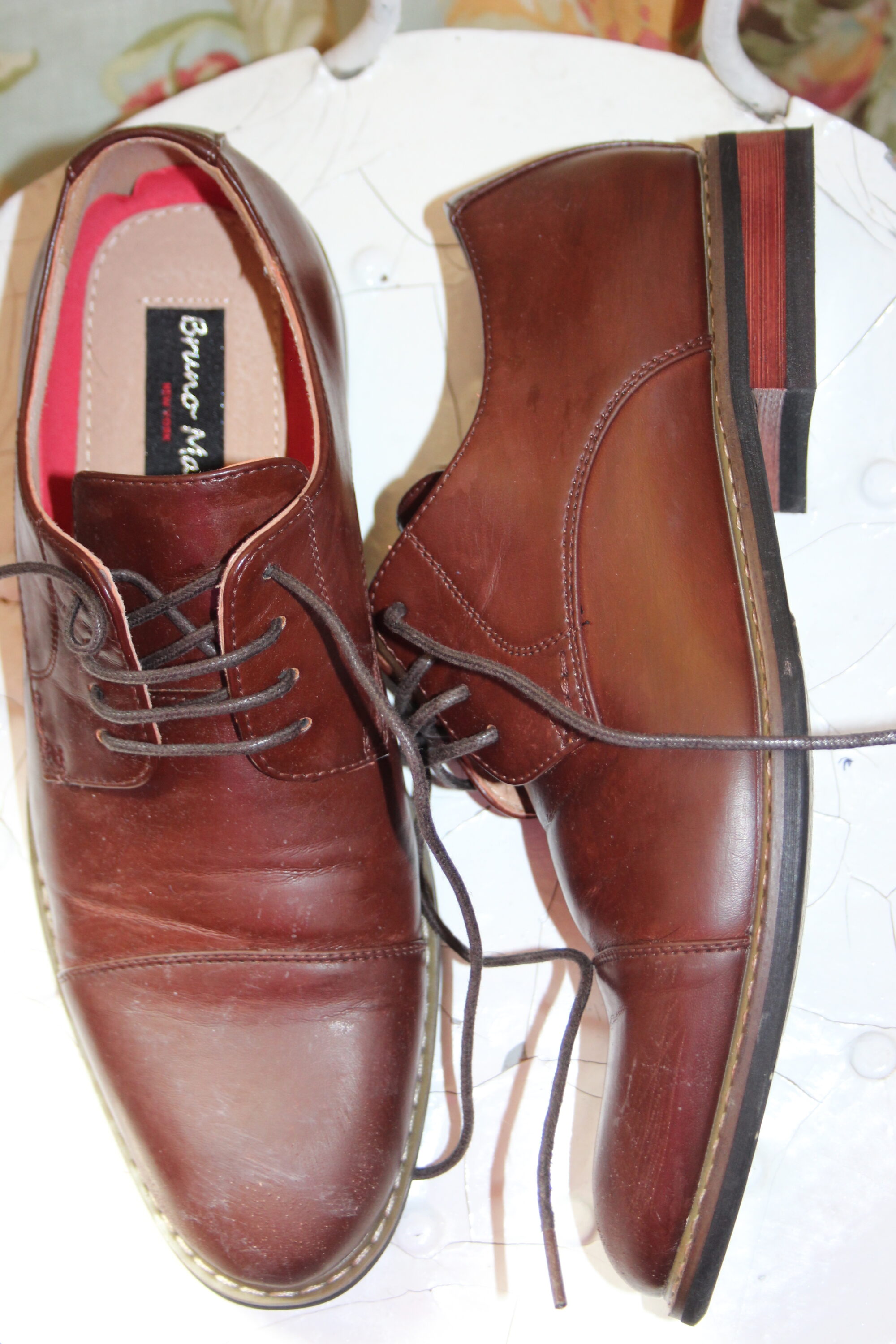
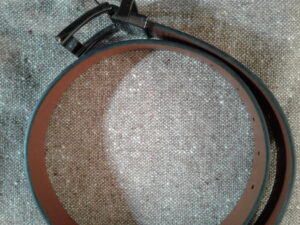
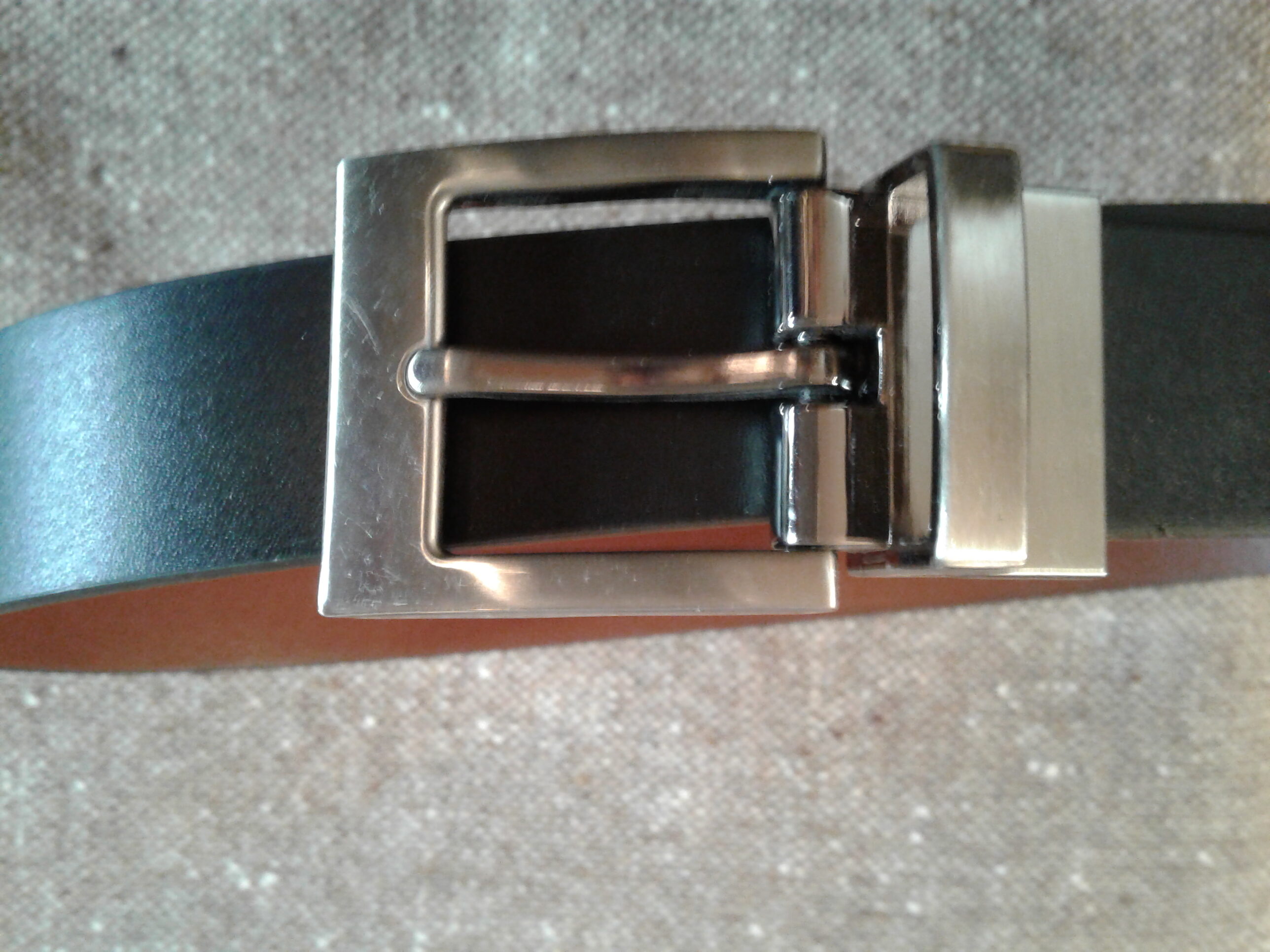
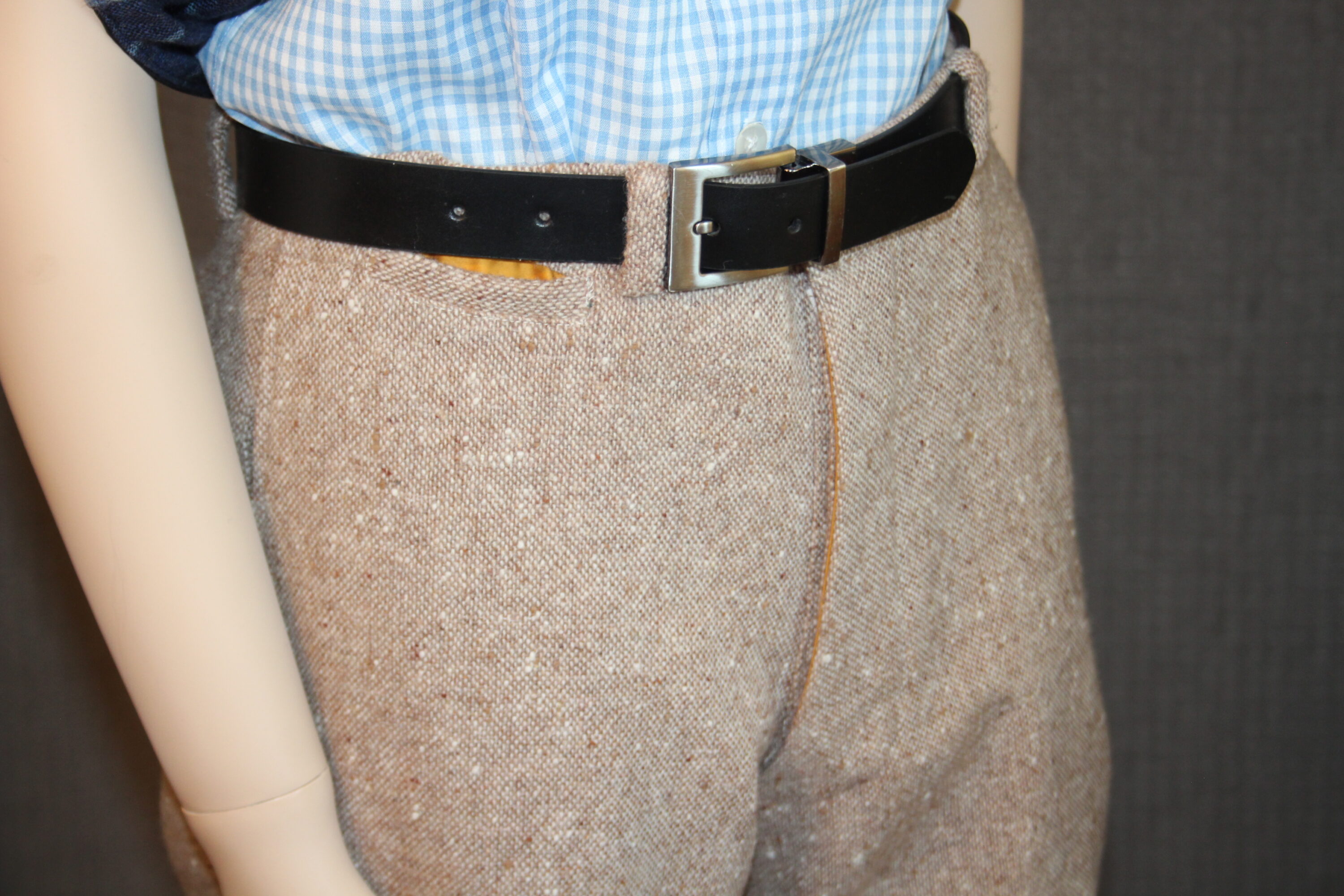
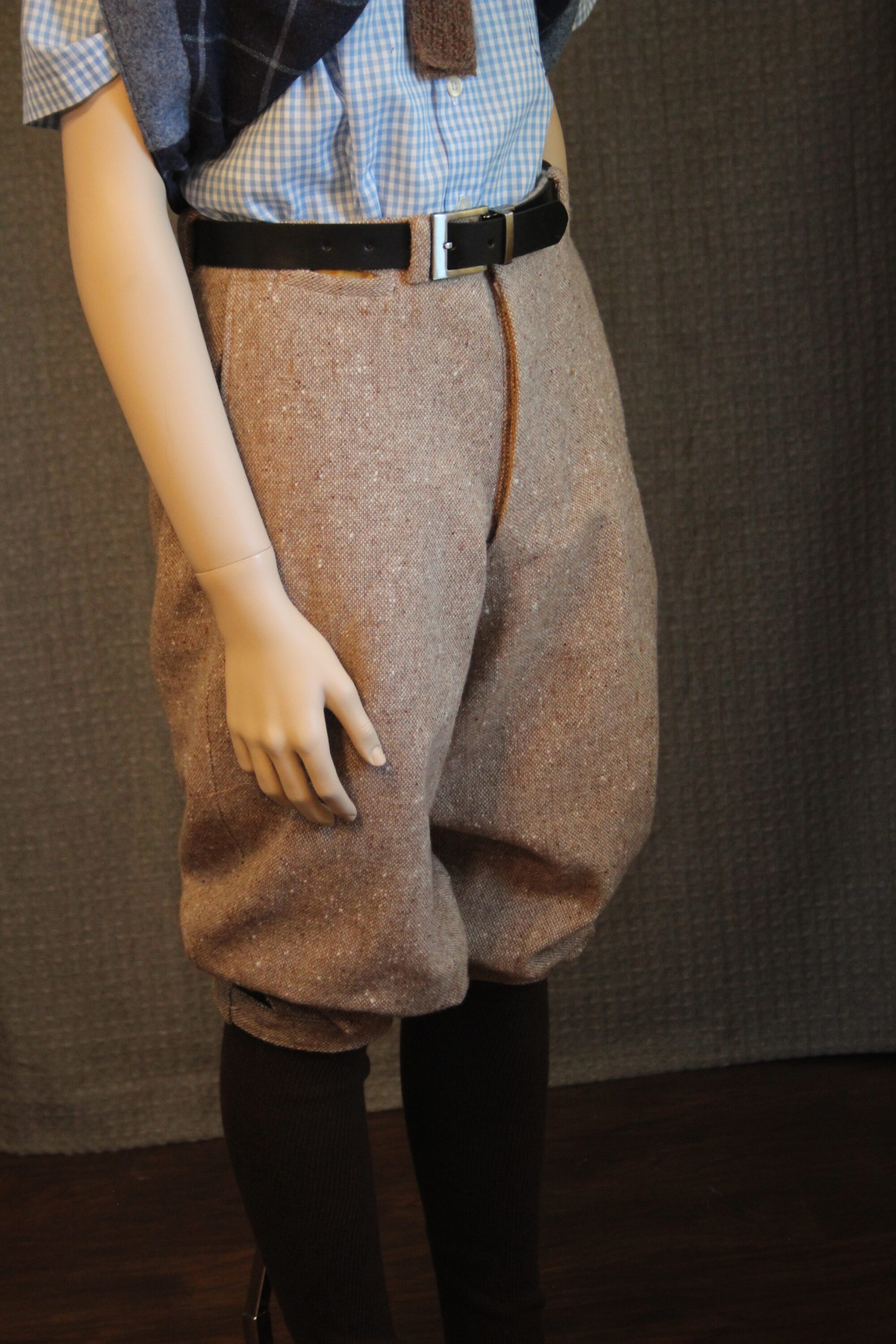
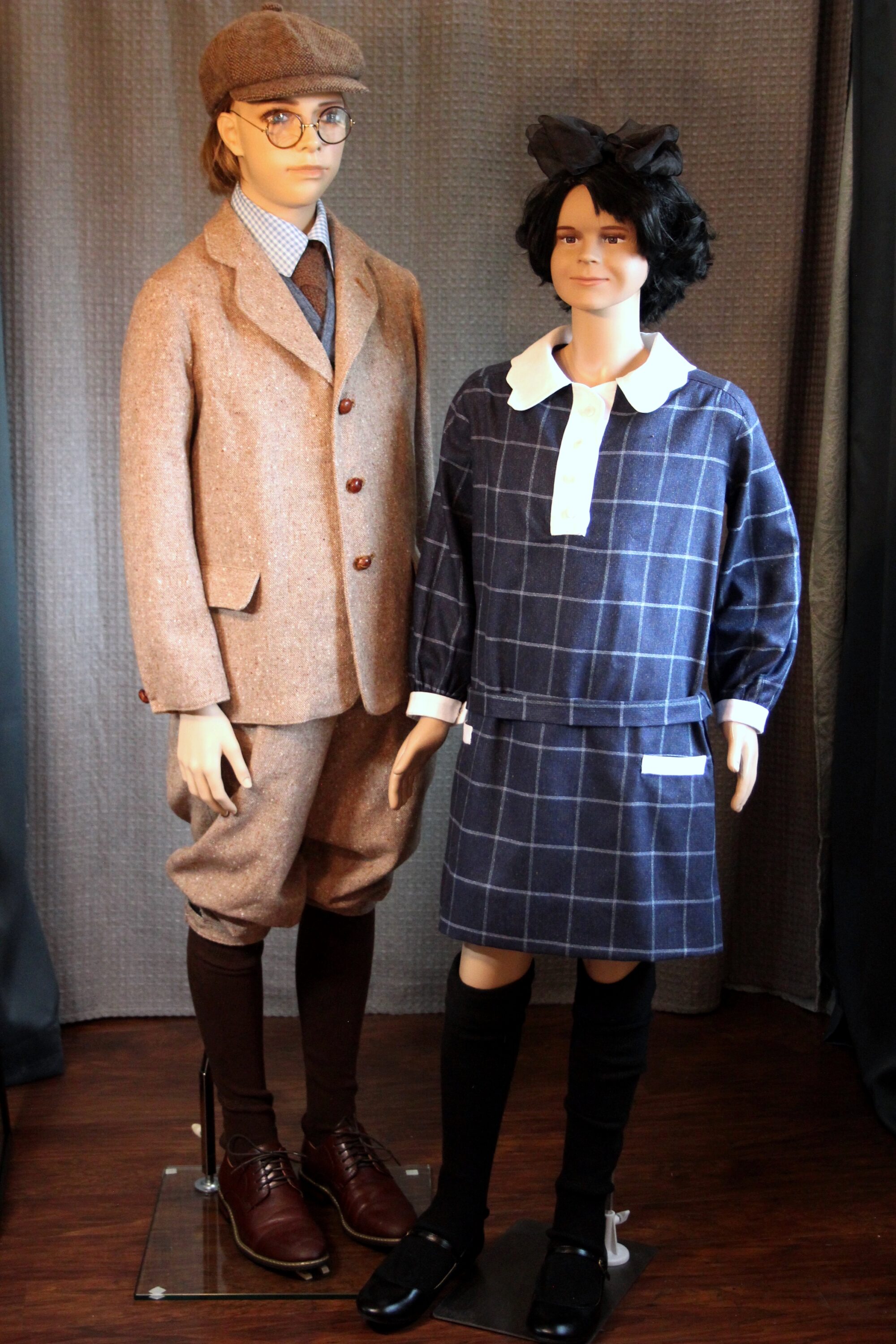
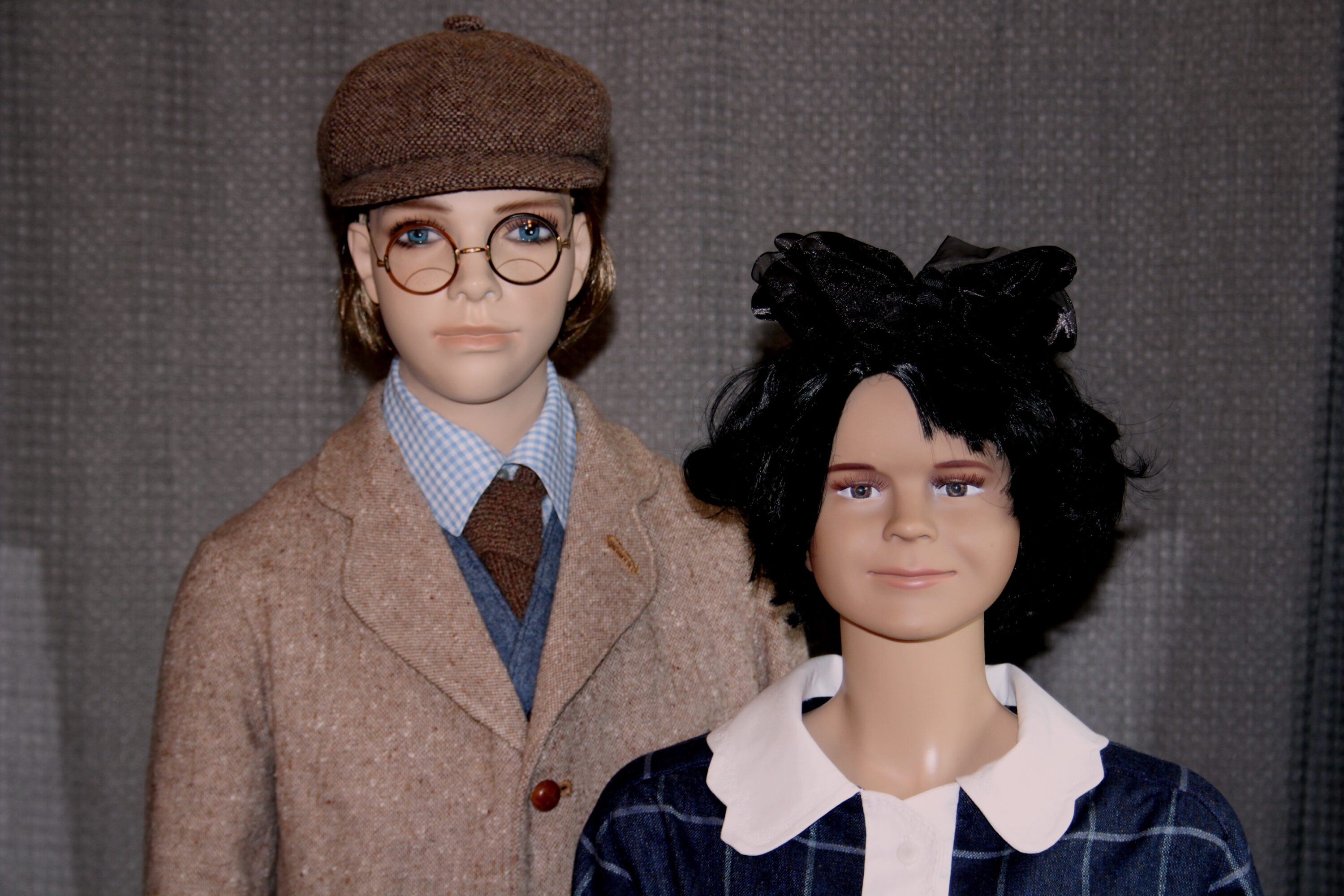
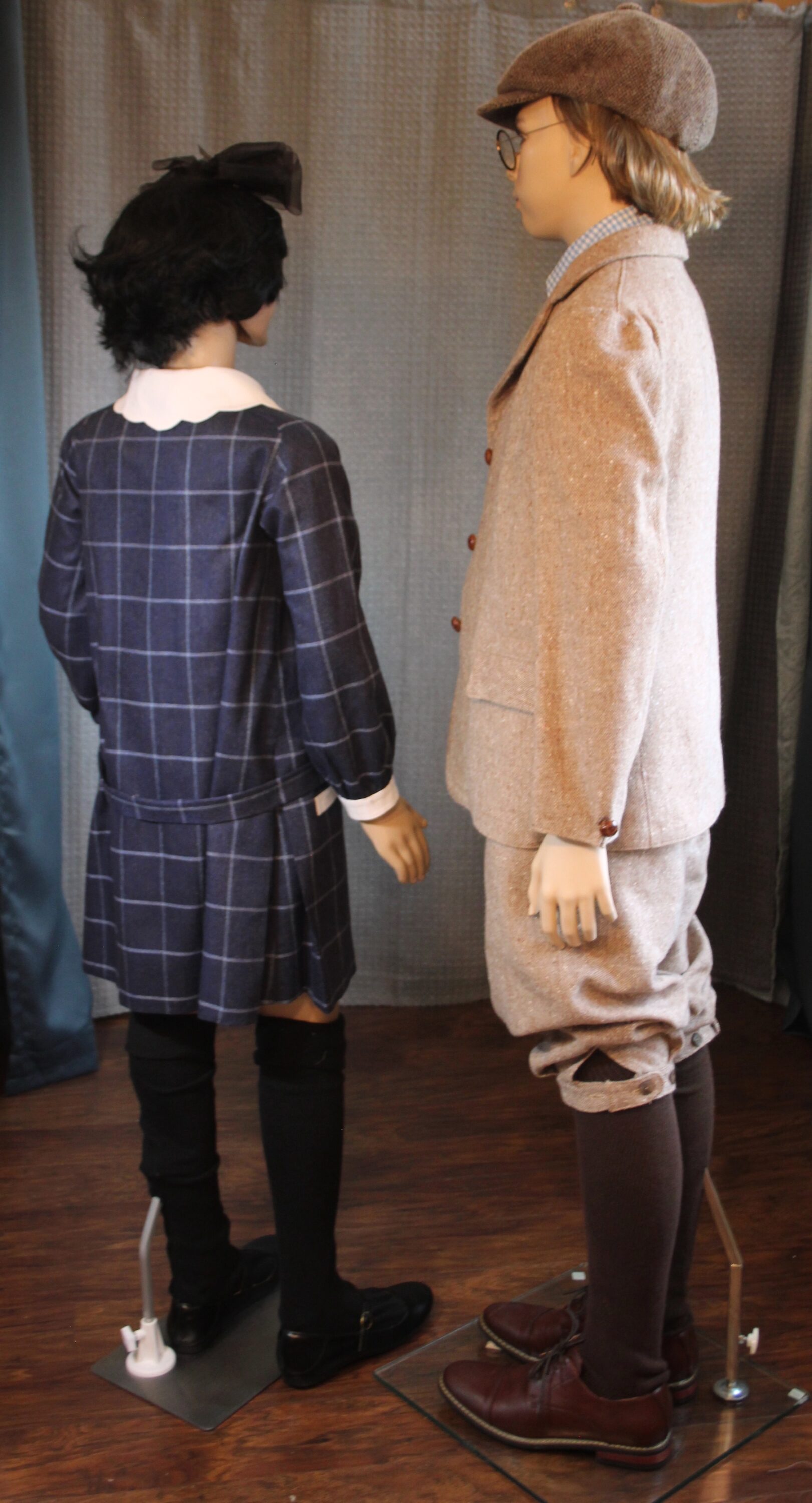
Girl’s Ensemble
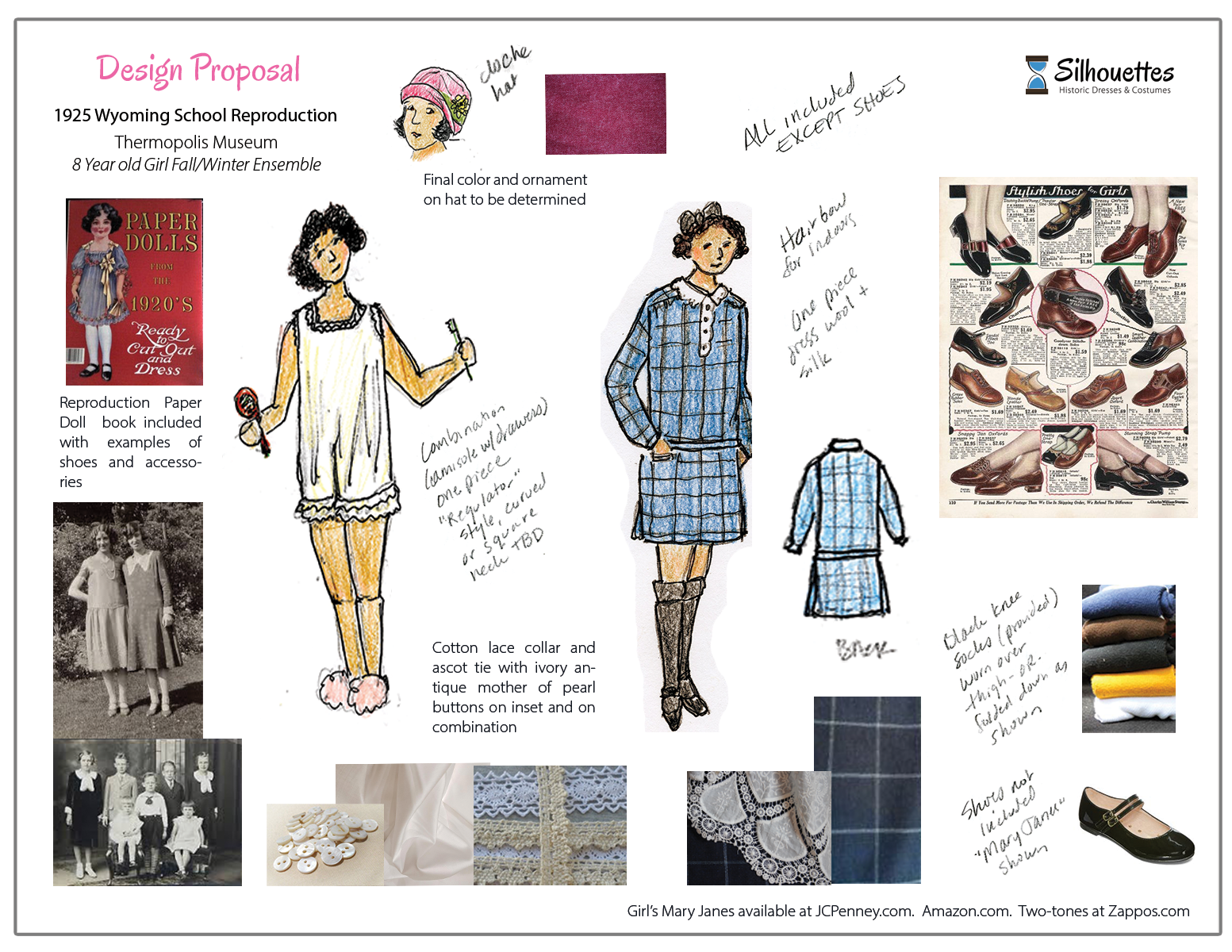 Combination (camisole/panty in one)
Combination (camisole/panty in one)
Very challenging as apparently people were too sensitive in the 1920’s to explain how an undergarment was built so the person could use the restroom. There were absolutely NO instructions in the vintage 100 year old pattern we used, and no sketches, drawings, or markings. Pattern pieces were just tissues with holes punched in them.
Based on our knowledge of the history of drawers and combinations (when the chemise was attached to the drawers starting in the late 1870’s to give a smooth front and side silhouette), we assumed the long smooth line was also the desired objective – in the front and in the back. Earlier versions didn’t care about the back because those were bustle eras. We think fullness in the back was necessary in this era so the person could sit down.
There appeared in one sketch to be “drop drawers” like a man’s flannel undergarment by the way there were buttons shown. Since the crotch was evidently sewn, and not used with snaps like later 1970’s undergarments would be, that meant the back drawers had to unbutton and flap down to use the restroom.
That meant there had to be long slits on the sides or a pocket of some sort in the back. The use of ties at the bottom of the pants legs were “aha”; meaning they might have left the sides opened but tied at the bottom and then untied to use the restroom.
In the absence of any historical information due to modesty apparently, and any instructions or people alive who can remember, and no photos or indications of how these were made anywhere in the world (except perhaps some hidden extant garments somewhere we don’t know about) – we built these as you would a basic combination consistent with historical examples, and made a flap back instead of the split drawer.
The result was a lovely fit with a smooth line and a low waist that will create the perfect silhouette for the outer garments, but the slit on the sides is rather immodest and in future projects could use some modification.
This has lovely mother of pearl buttons that are very easy to use, cotton trim in layers, and a basic 100% cotton lightweight fabric in bright white.

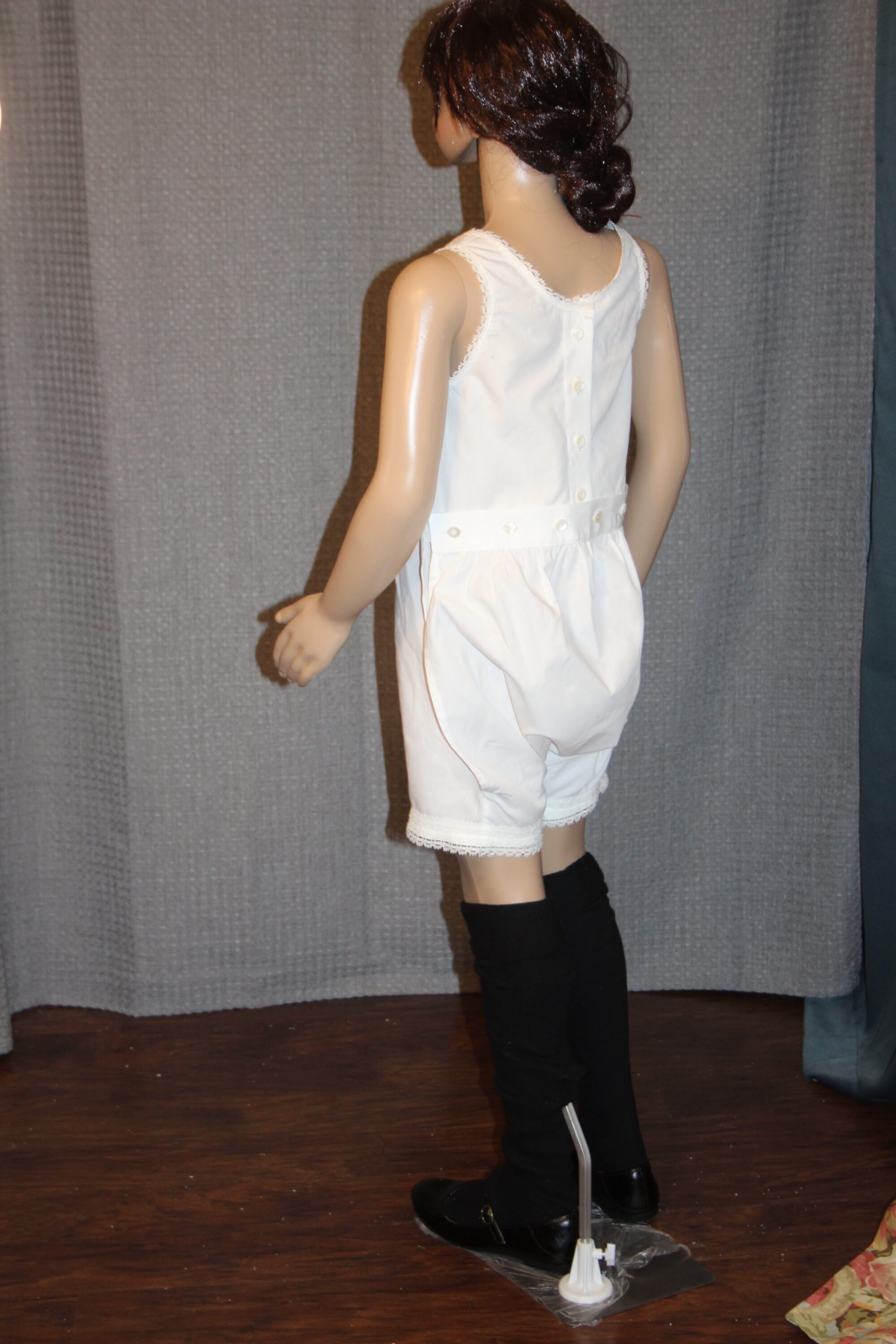
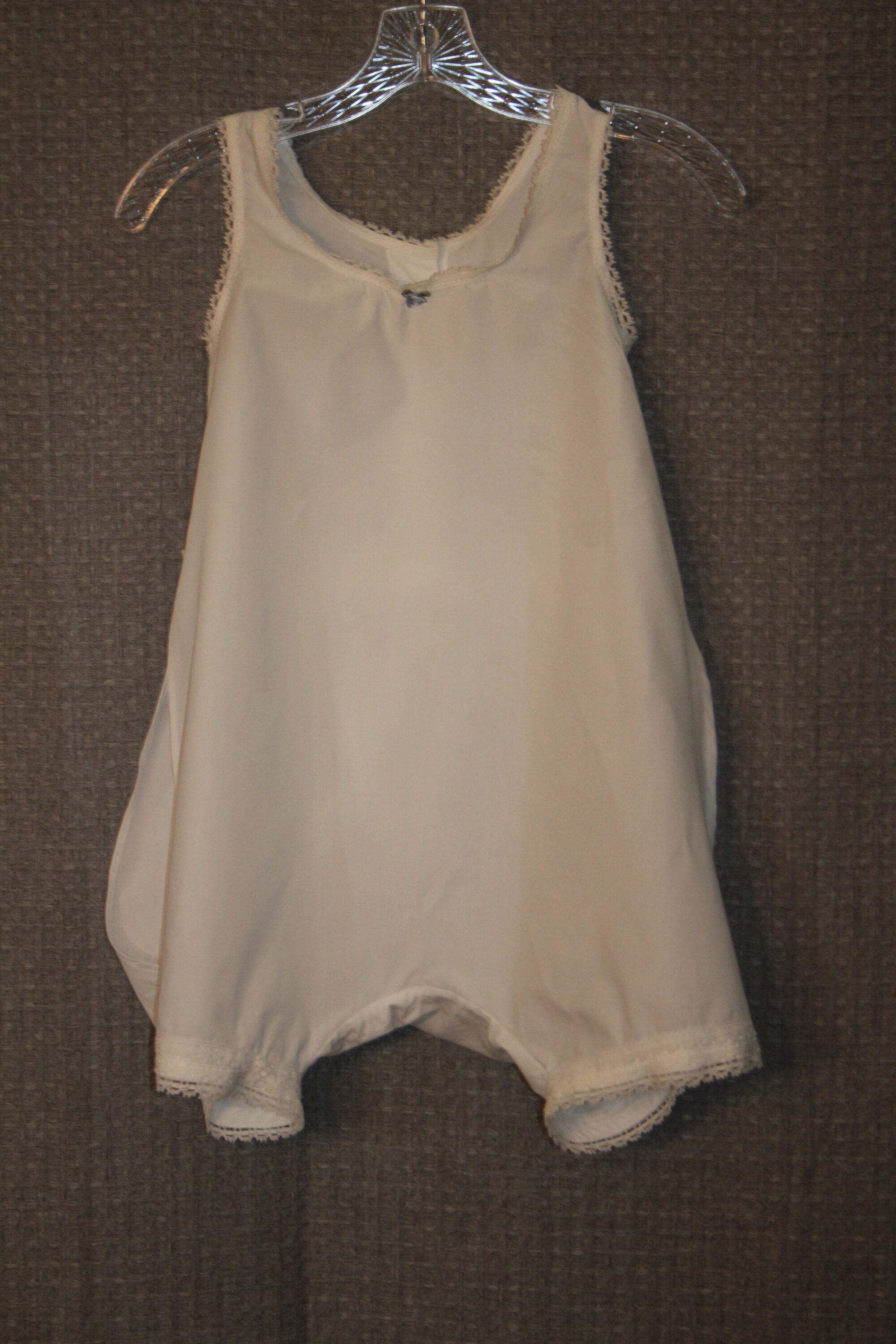
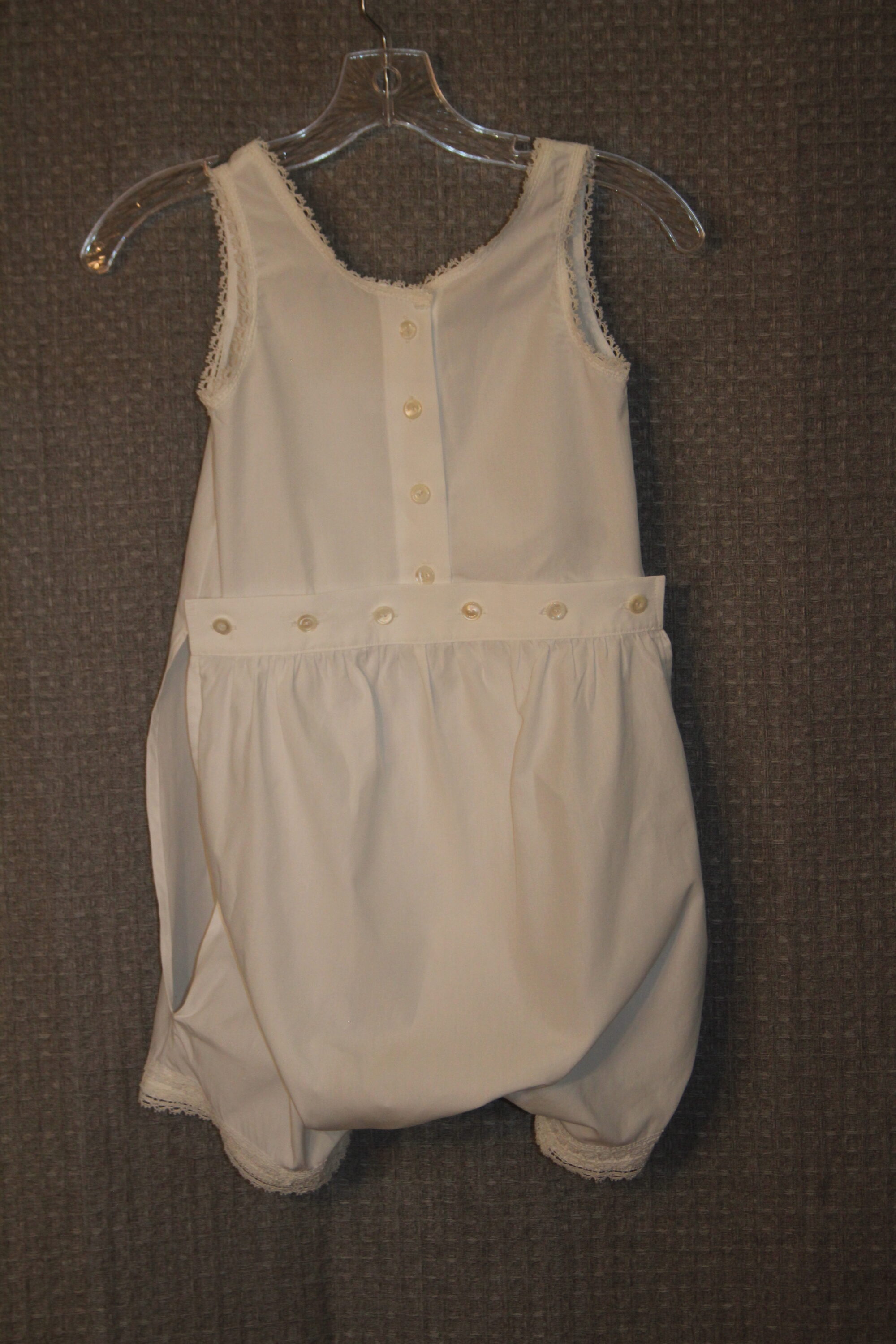
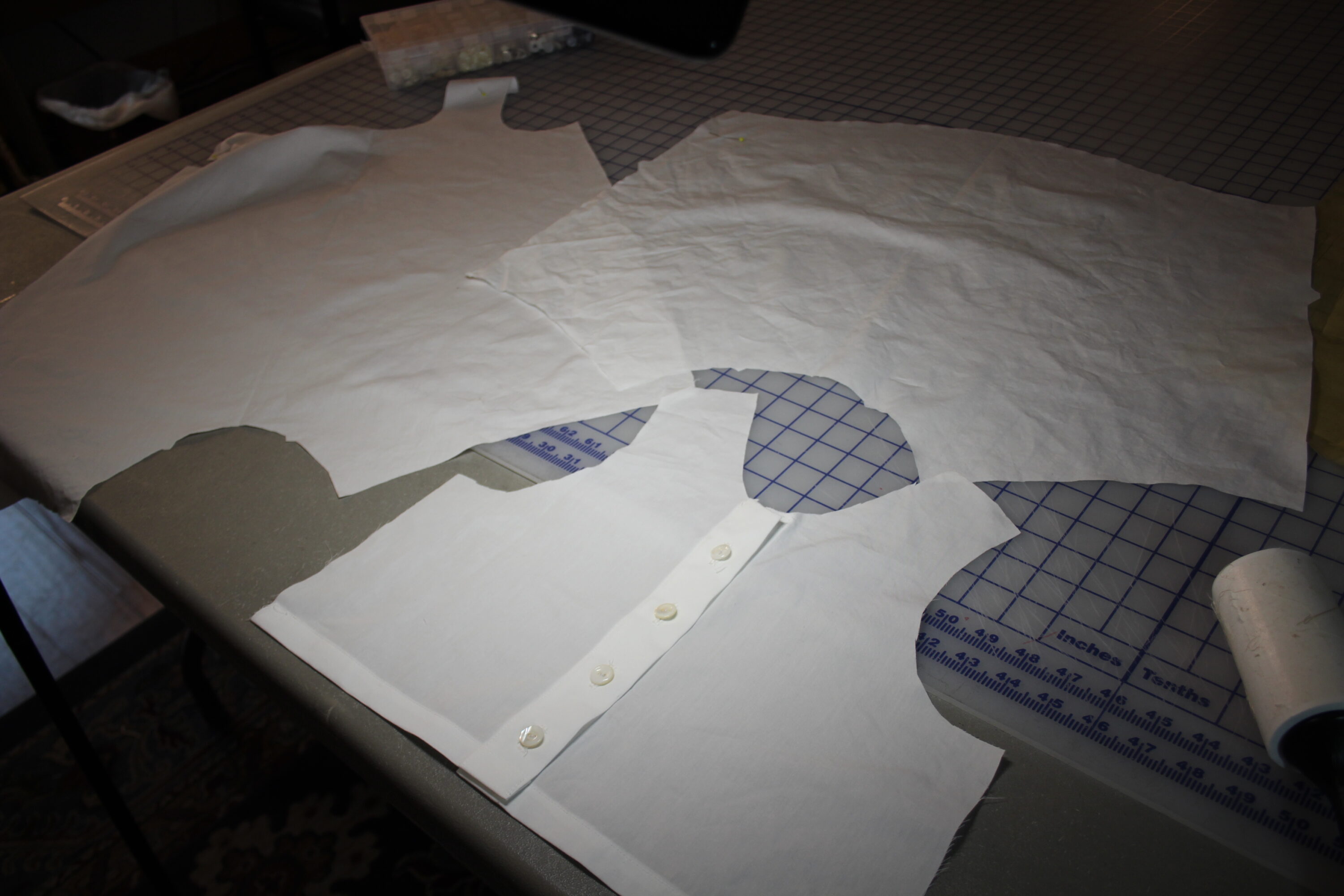
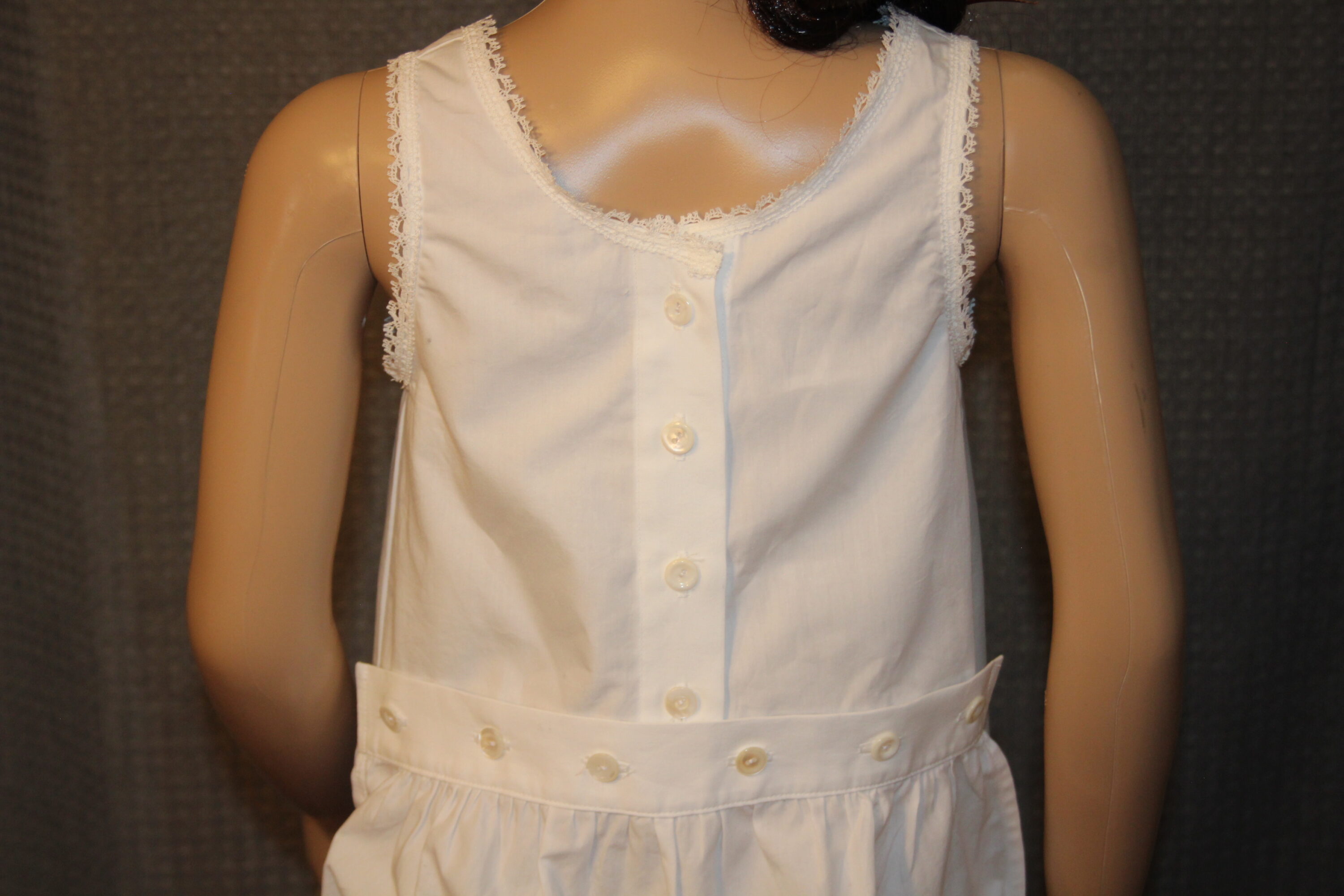
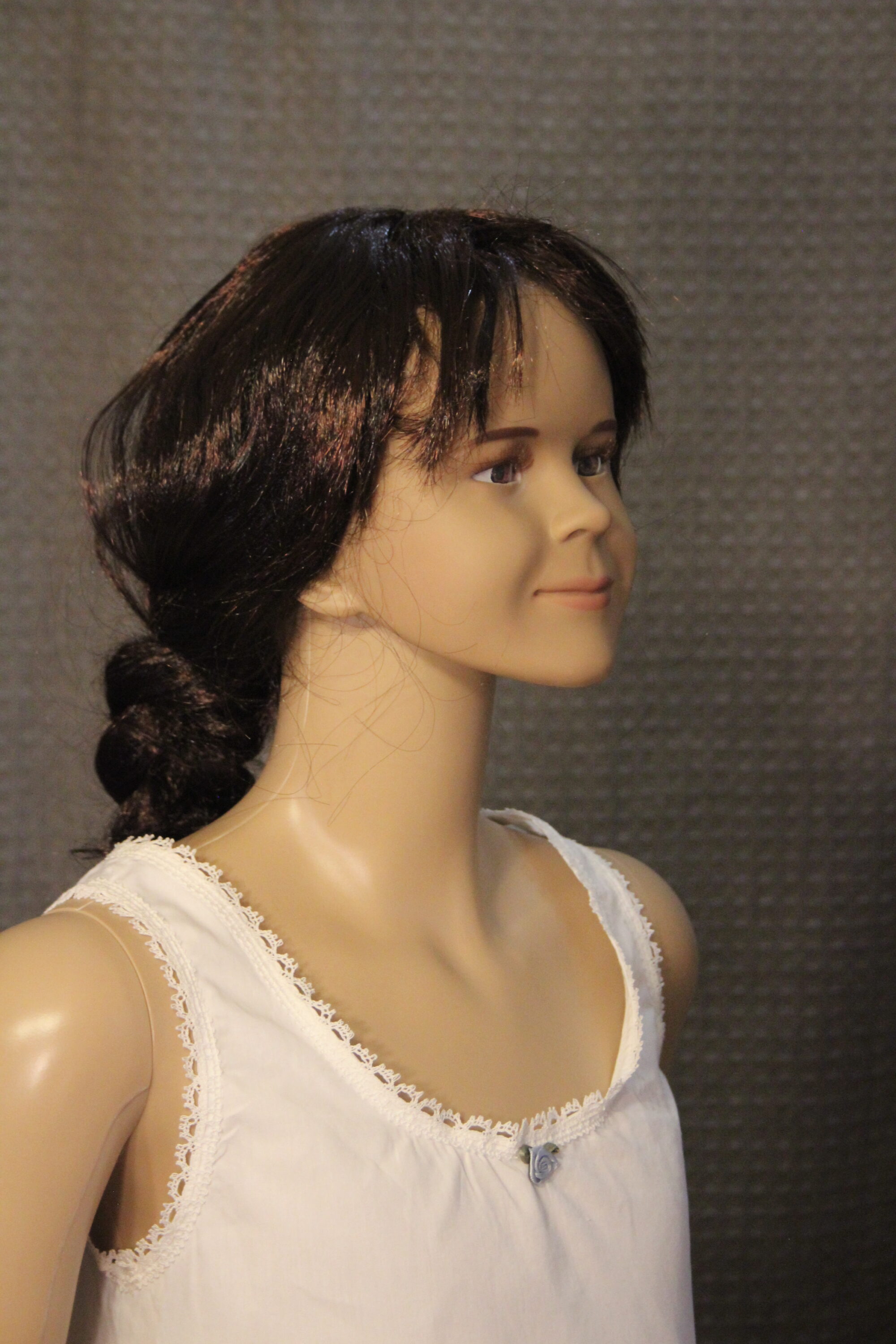
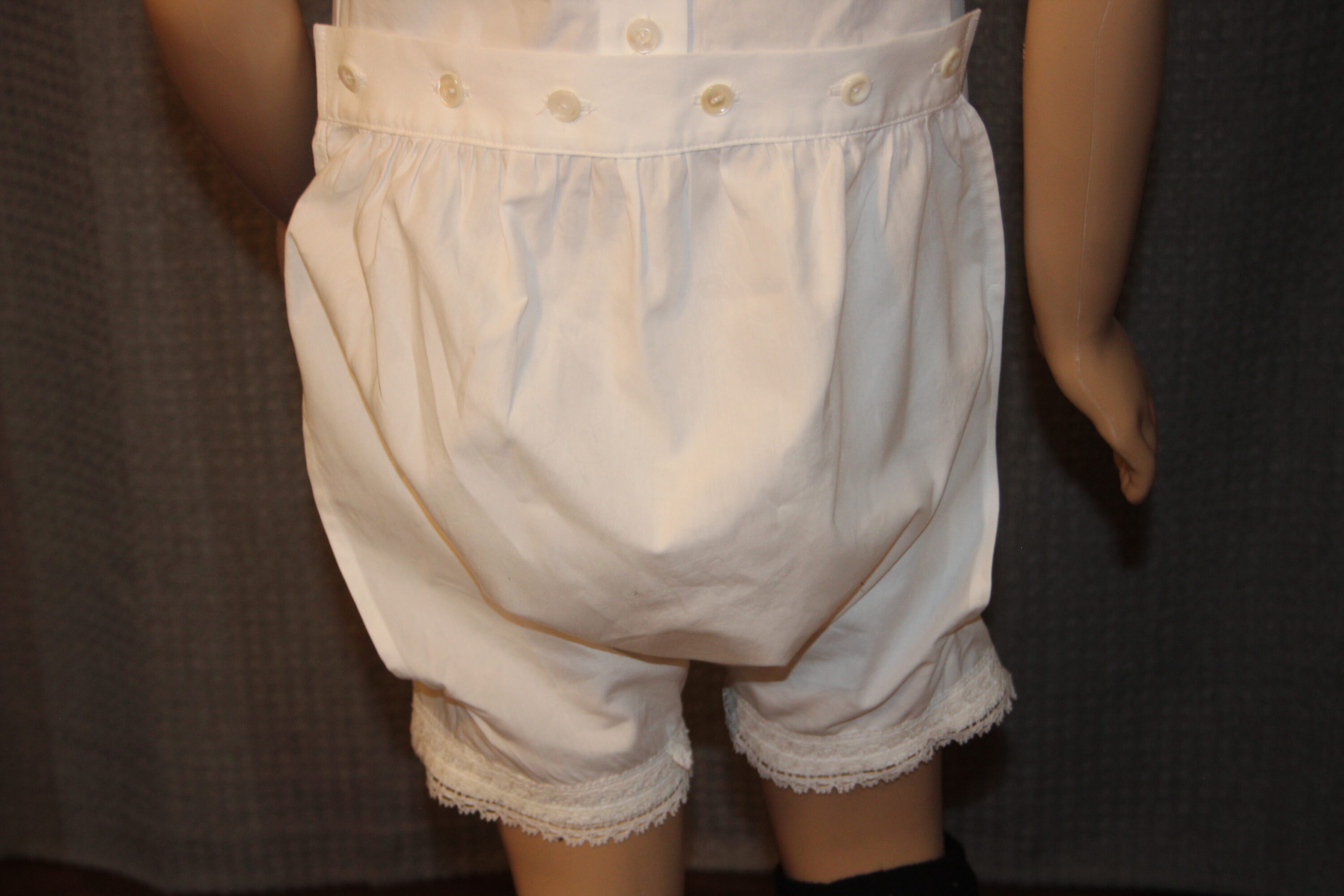
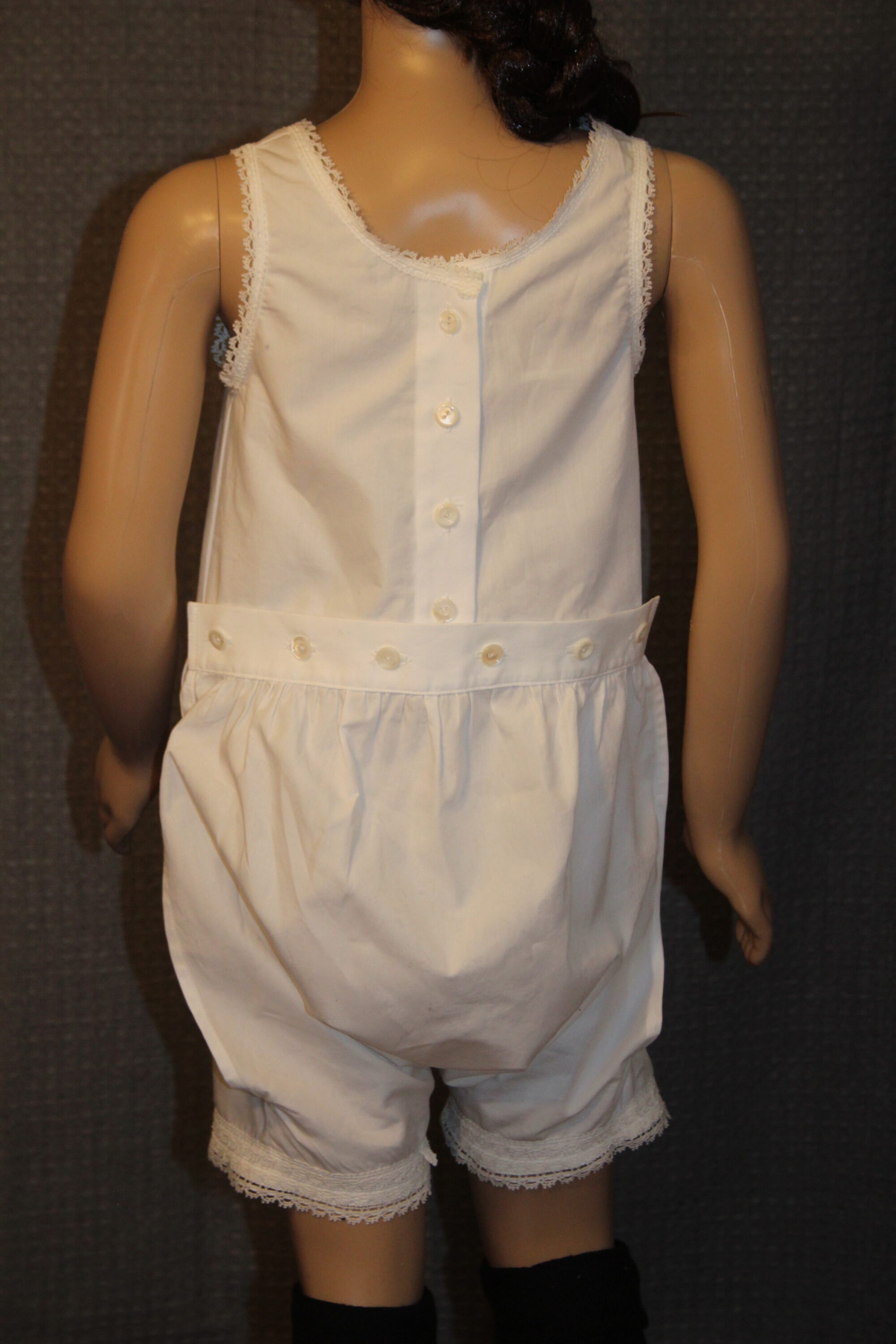
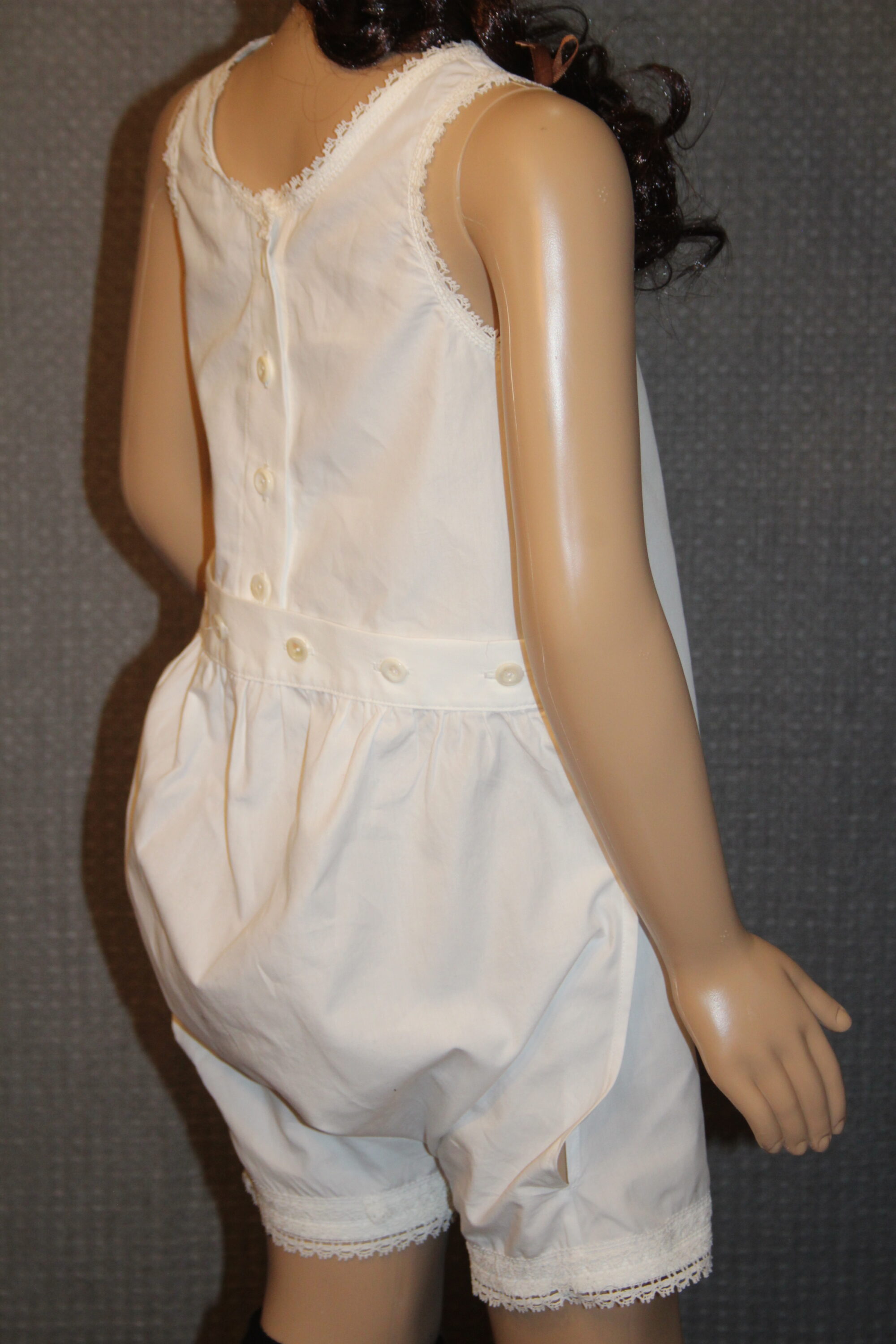
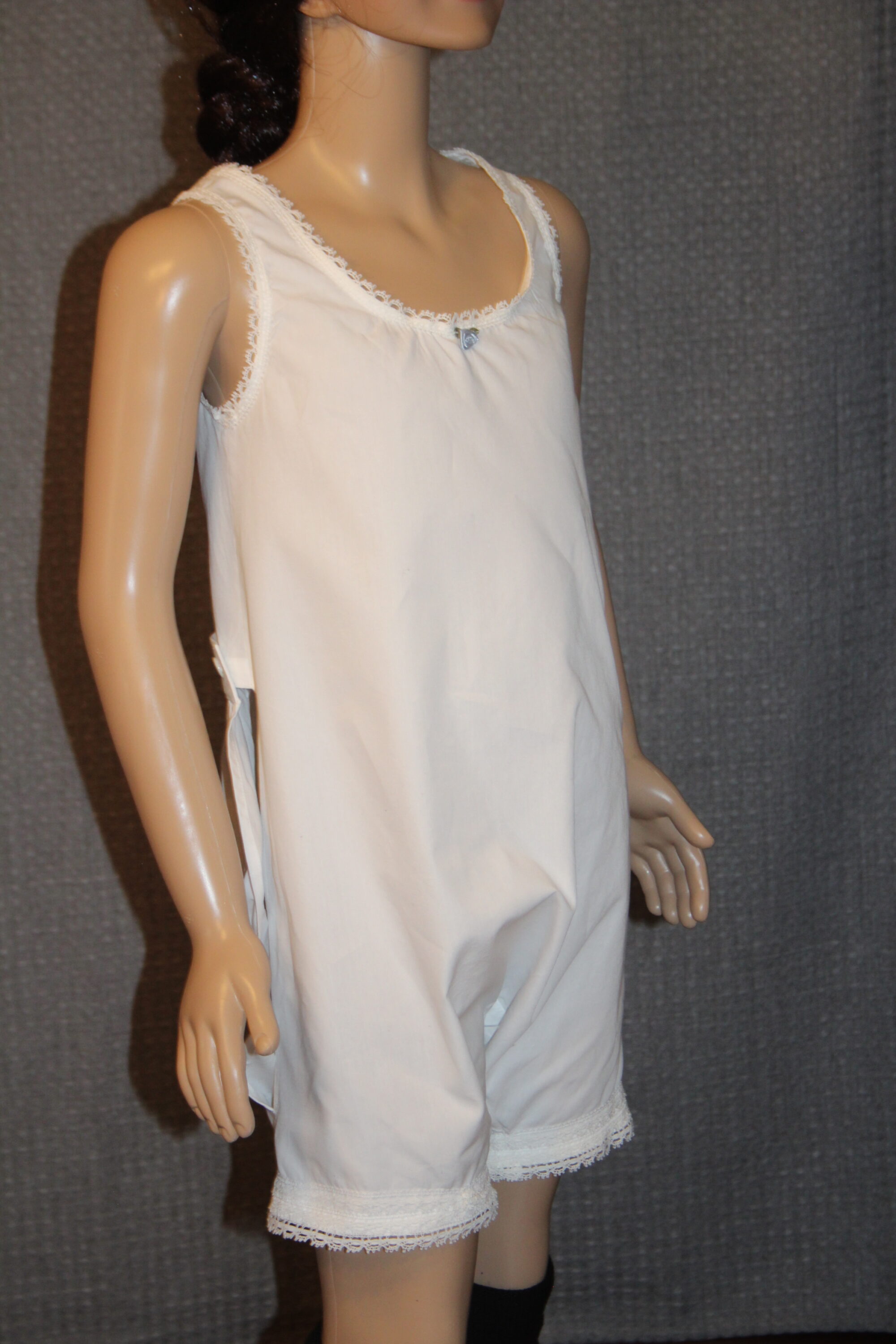
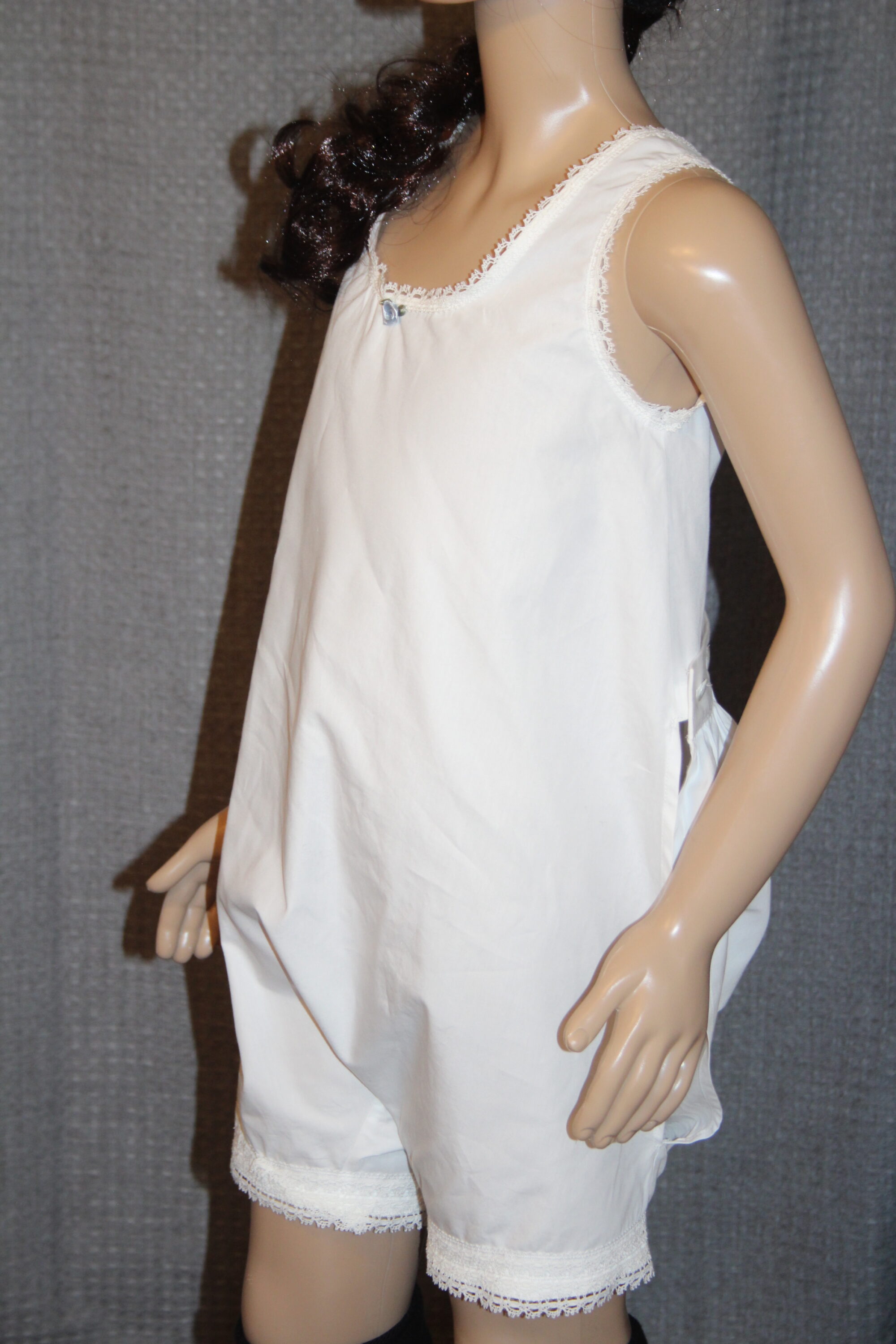
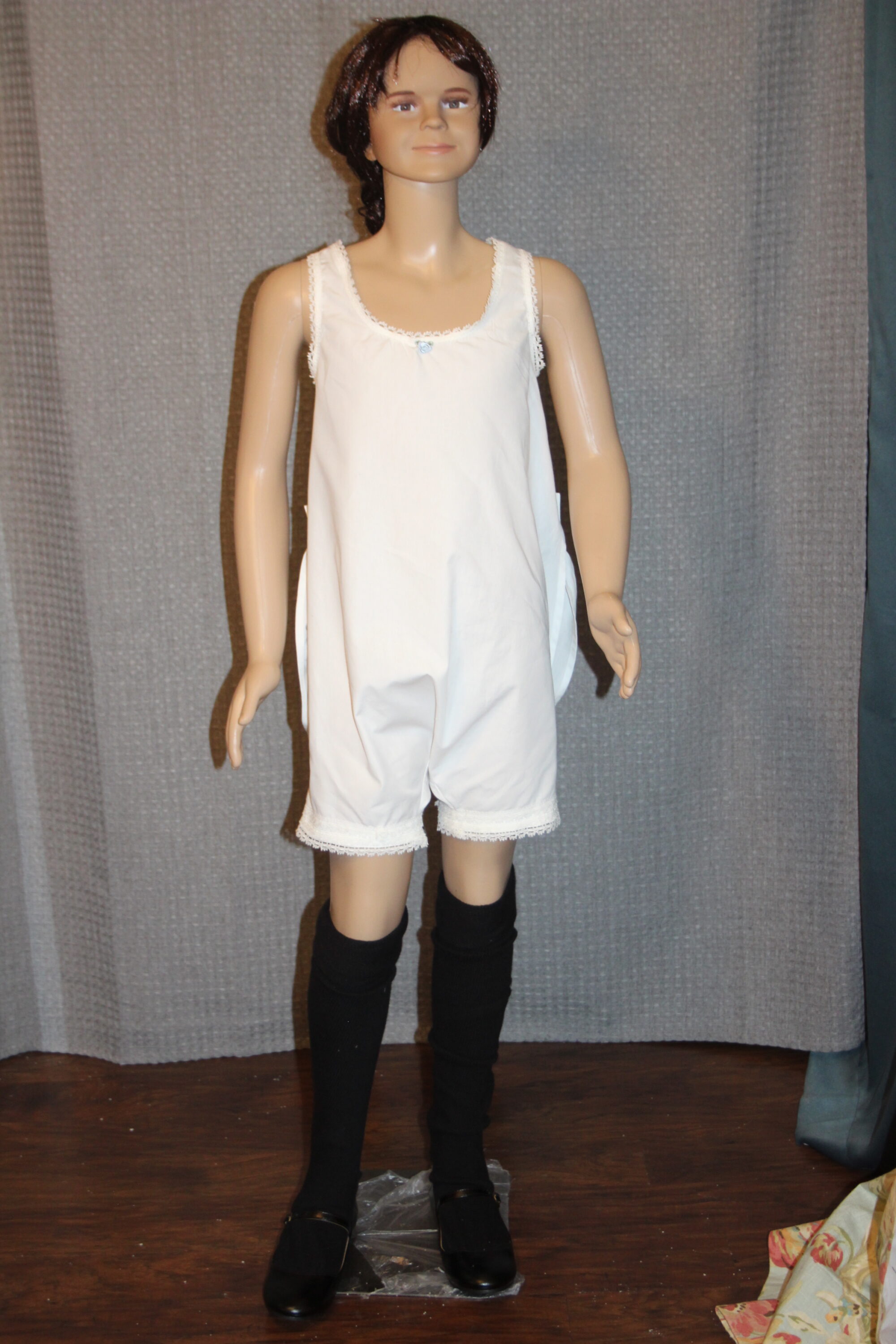
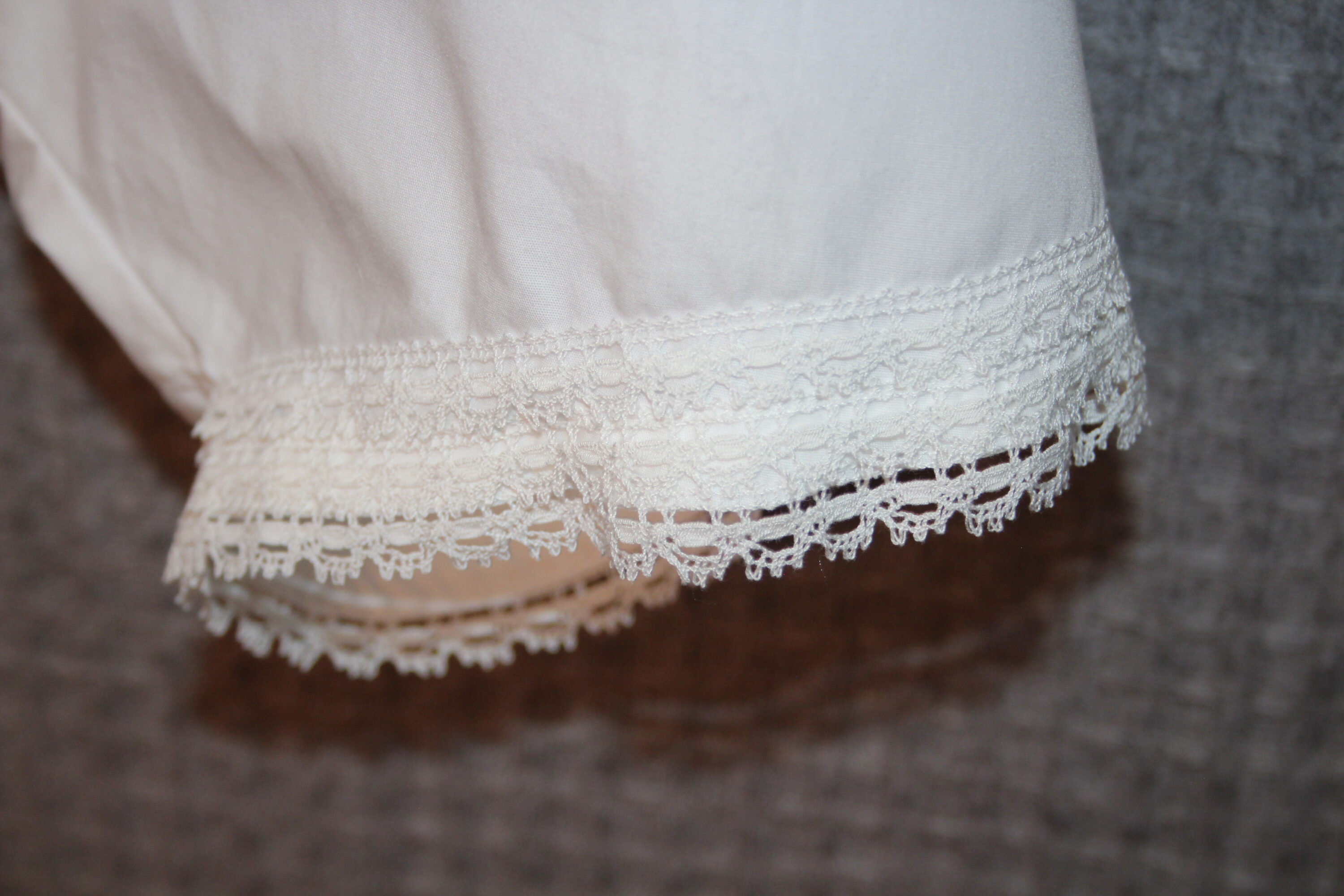
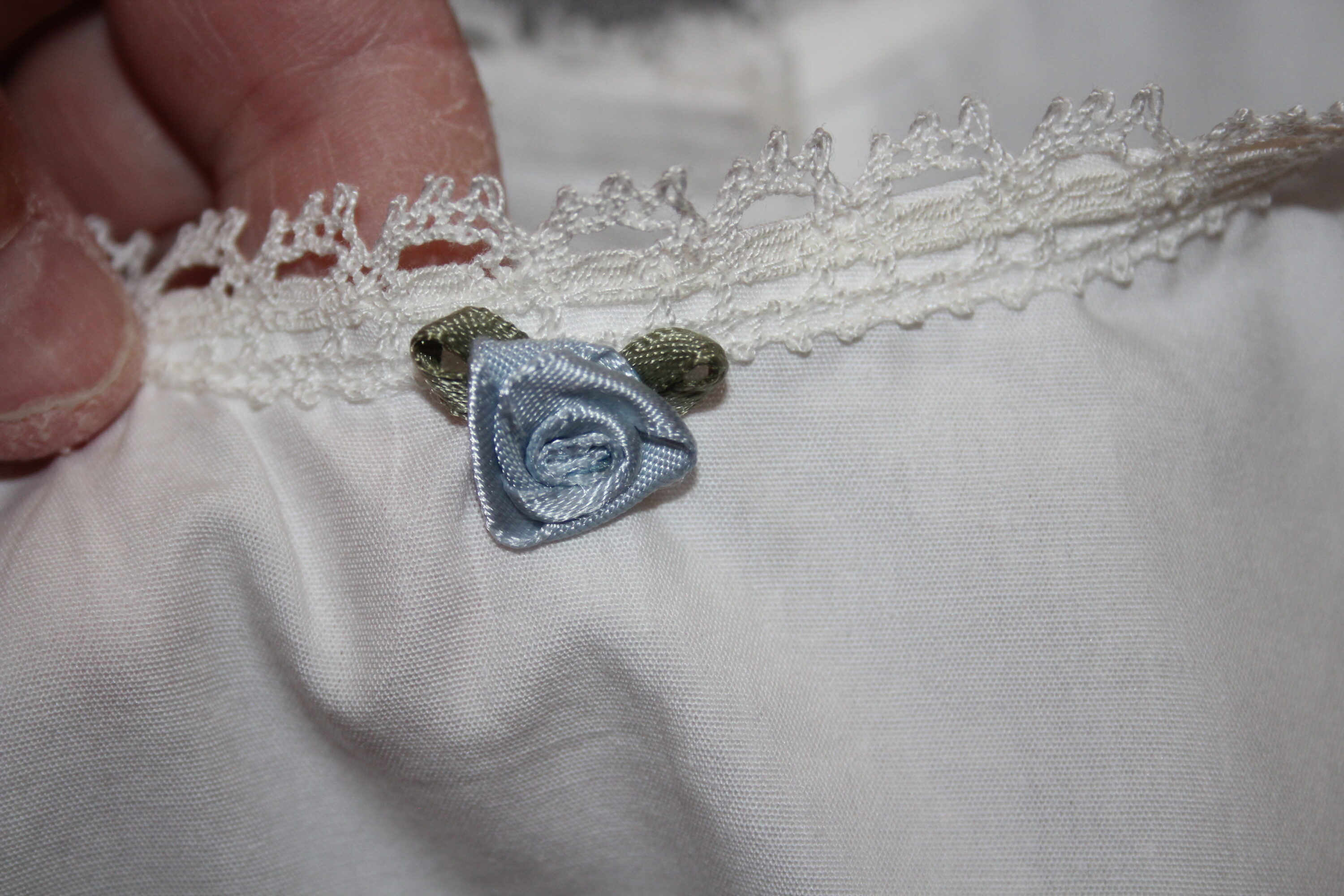
Wool/Linen/Silk Frock Dress

While paper patterns were first developed and sold in the 1860’s, in the mid 1920’s, tissue paper patterns could be purchased for about $.35 at the dime store, or ordered from a magazine or catalog. Many were available in periodicals for copying or following instructions without paper patterns.
The Butterick company, one of the first to mass produce tissue patterns which is still in business today, introduced the concept of the “Deltor”, or written instruction sheet. While we discovered the Deltor to be more confusing than helpful, it was a major step from the commercial patterns of the 1910’s which assumed the seamstress knew entirely the building process. The Deltor at least gave some clues.
This dress, made of a lightweight wool/silk/linen blend was challenging because it raveled and had a coarse texture like linen, was delicate and could not be ironed like silk, but was “ok” to shape using steam like wool. The smell during steaming was most interesting.
This pattern, as with all the others, was extremely confusing to the modern mind and methods. It took a while to figure out what “the girdle” is (the belt), and that it was tacked on. There were absolutely NO instructions for implementing the pleats; guess every person in the 1920’s knew all about pleating.
Most frustrating were the inset pockets. We began trying to follow the instructions which made no sense whatsover, and ended up building a pocket the way one would in a man’s tailored vest. They turned out fine, although we would not interface all the white pieces next time as it made them too stiff to manipulate for the hand finishing and crinkled.

There are also no indicators as to how to build the front opening and collar, plus there was a lot of “baste first and then sew” which seemed redundant and unnecessarily time consuming.
All in all, it took probably 3 times as long as a woman could have sewn it in 1925, and there are some errors and flaws. It does look just like my grandmother did in 1925 though, and intuitively seems right for the age. This style is perfect for the pre-teen, and the breathable fabric can take it from fall to winter.
The checks and wide bright white collar were THE THING for teens at the time. We made this very durable with all seams finished and reinforced for docent use. The mannequin will wear it with hat or bow, and with her newly cut hair when she is delivered to the museum rather than her long thick (very out of fashion for 1925) hair. The hat again is for outdoor use.
She would wear this with a similar silhouette in a wool coat with big lapel and big buttons.

This features gorgeous real mother of pearl buttons, some fancywork, and a lot of hand sewing.. blood, and sweat. The original pattern did not have cuffs with buttons, but just a loop of fabric. We put in the extra hours so it would be easier to put it on the mannequin or a docent student. The pockets are real and useable!
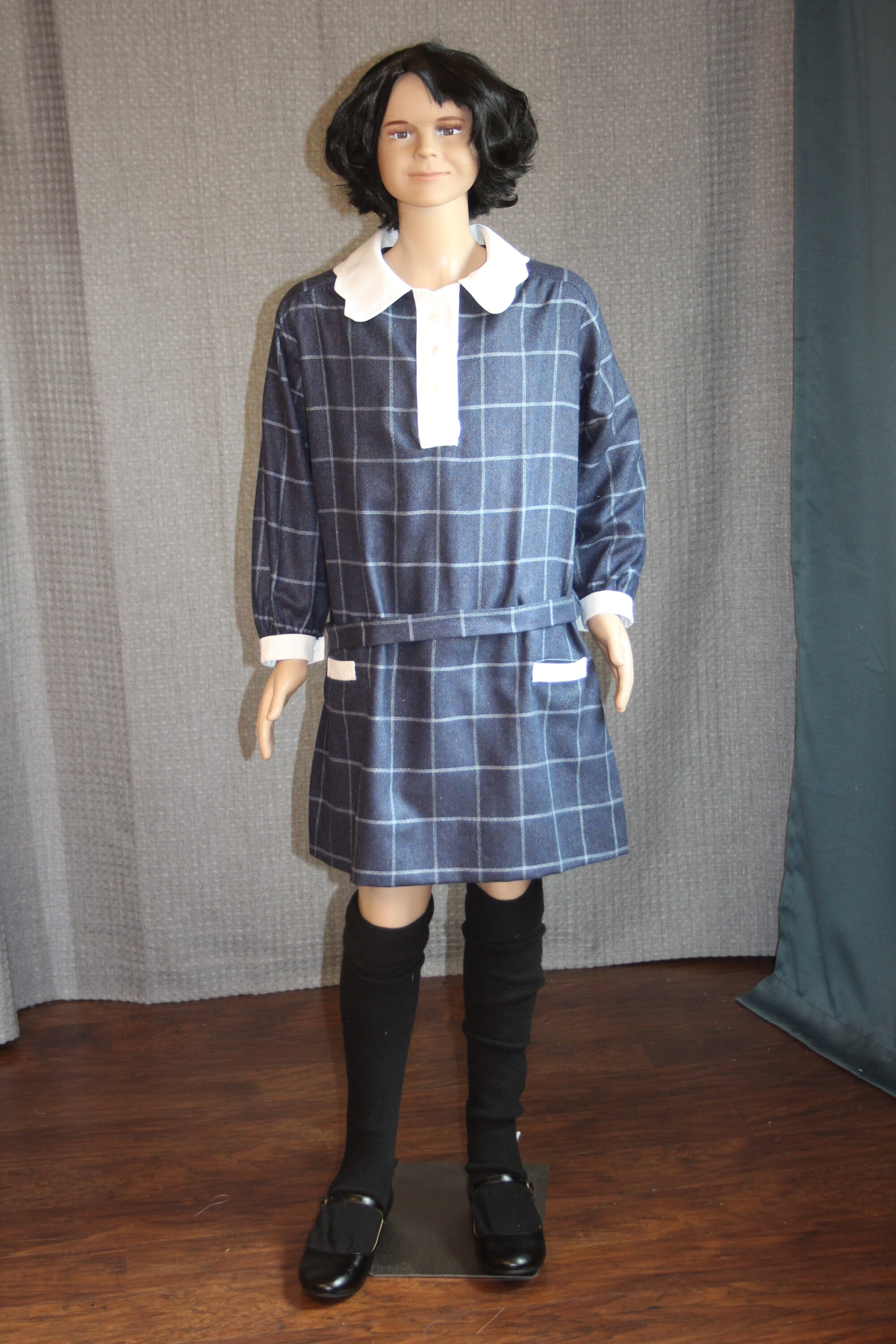
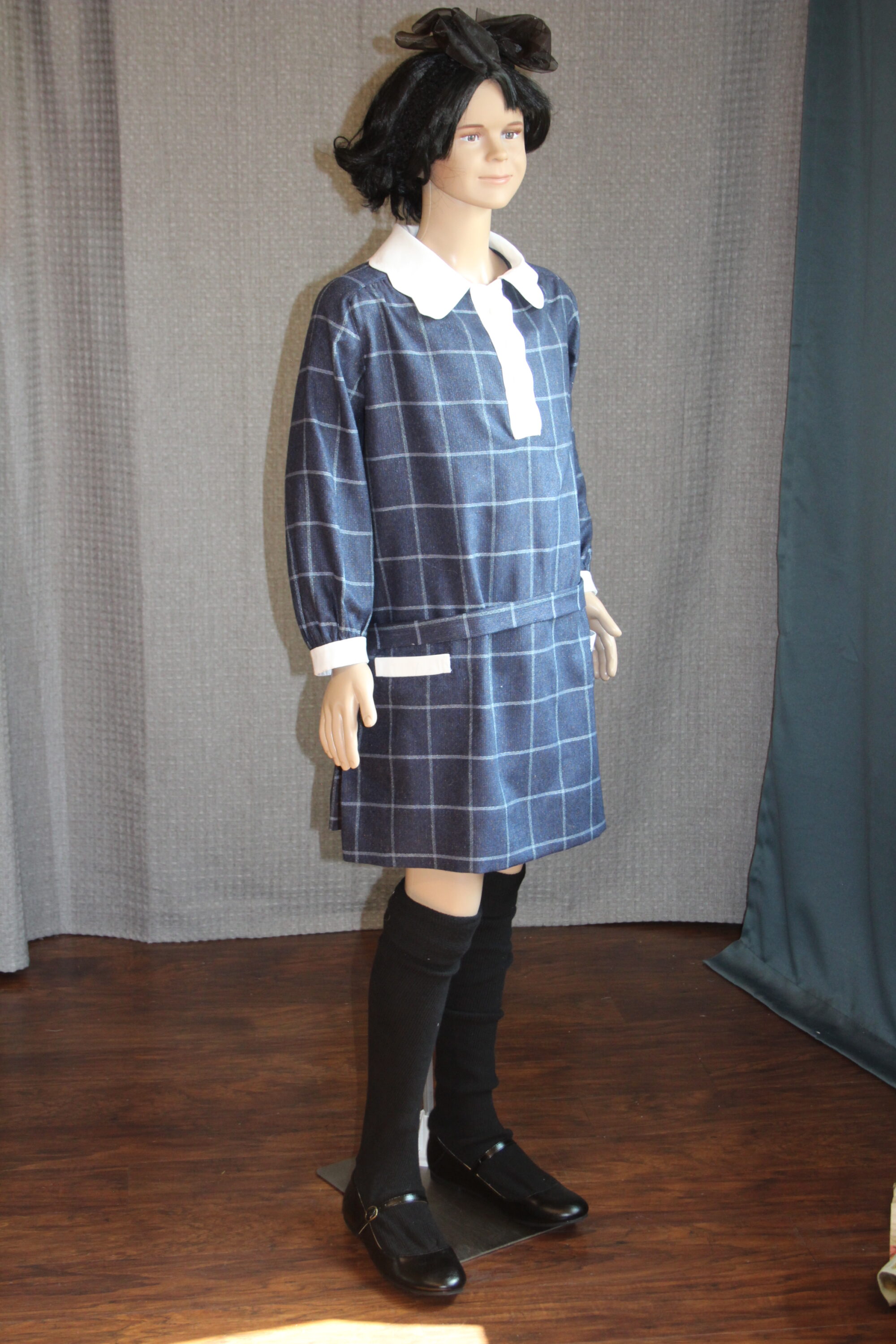
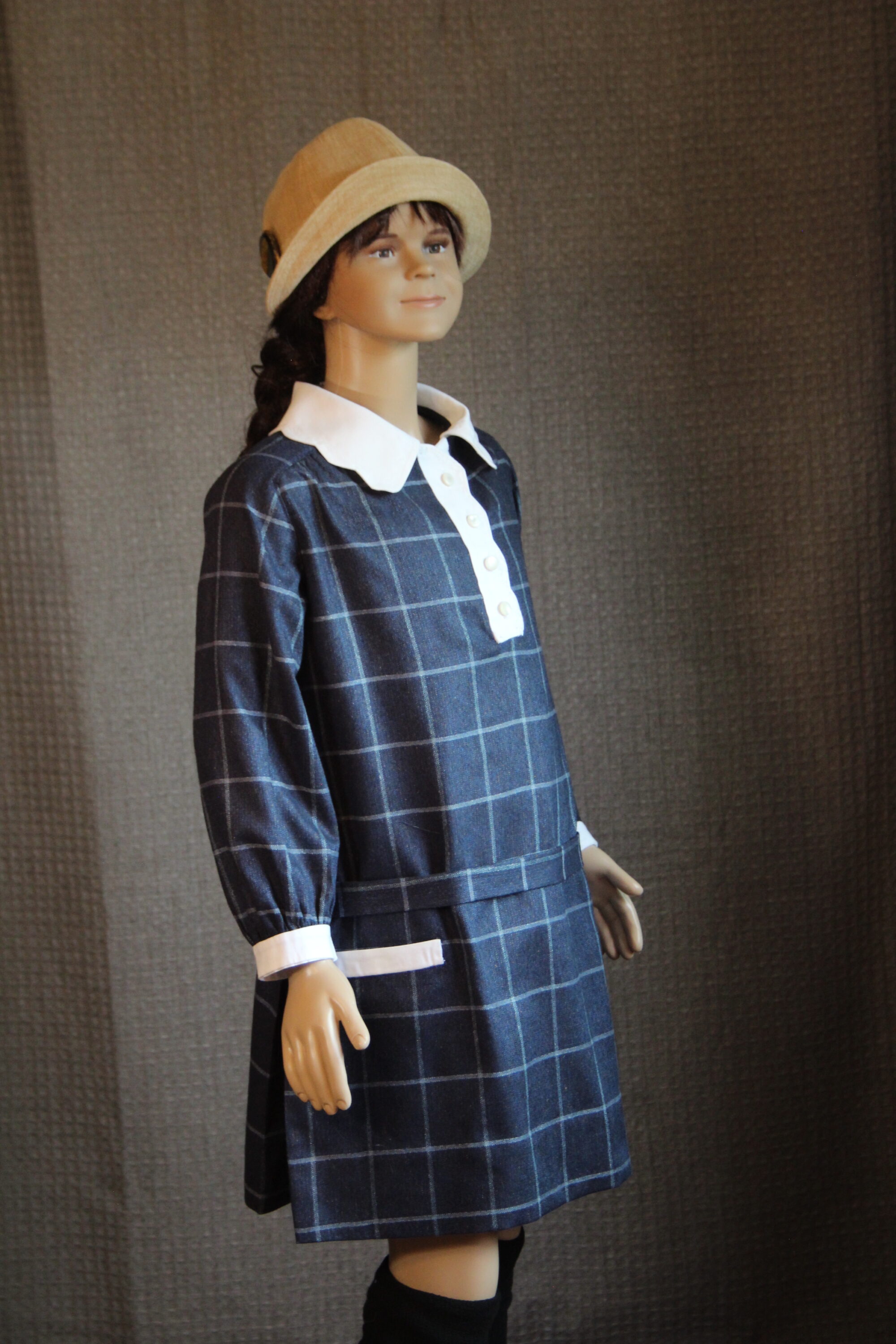
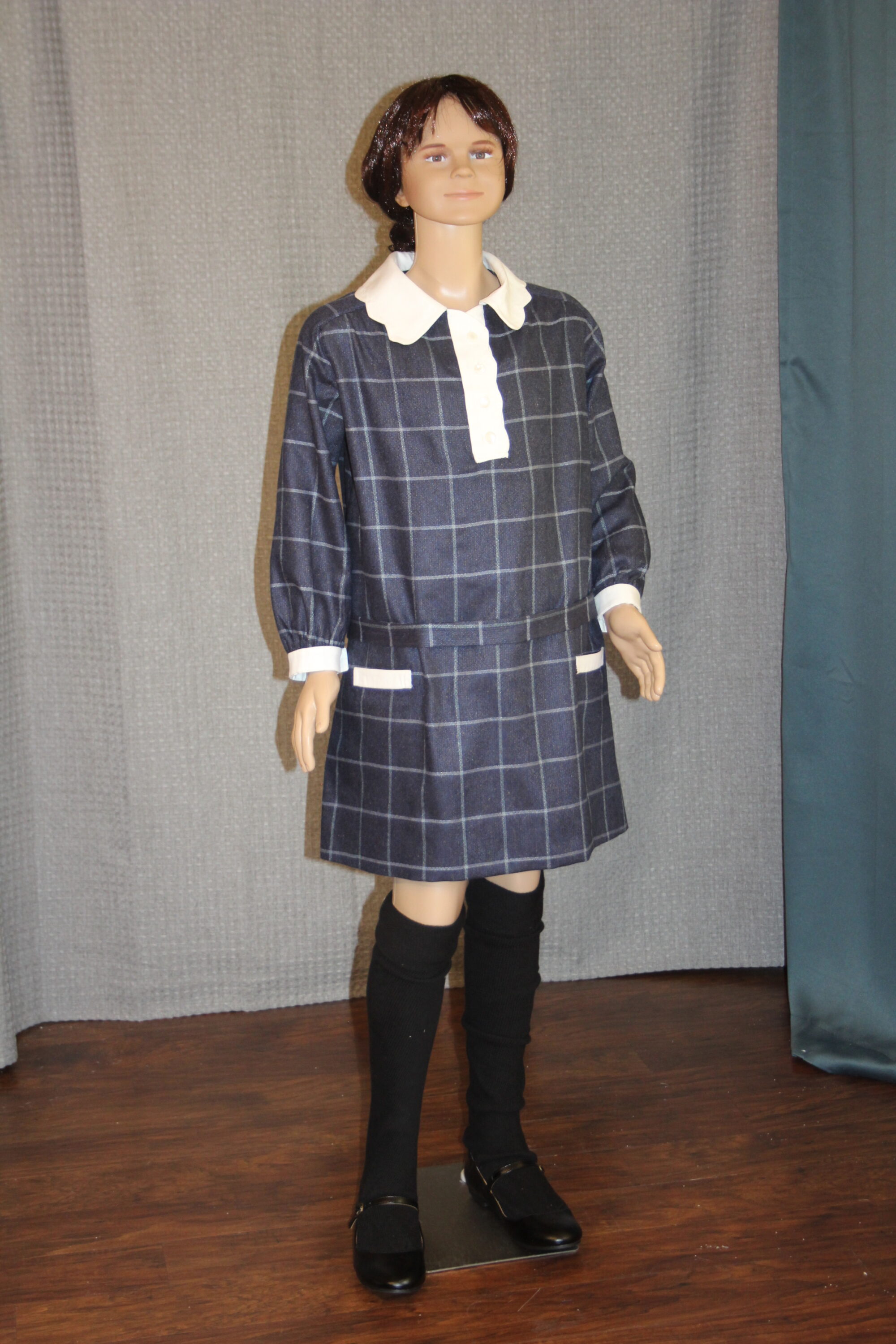
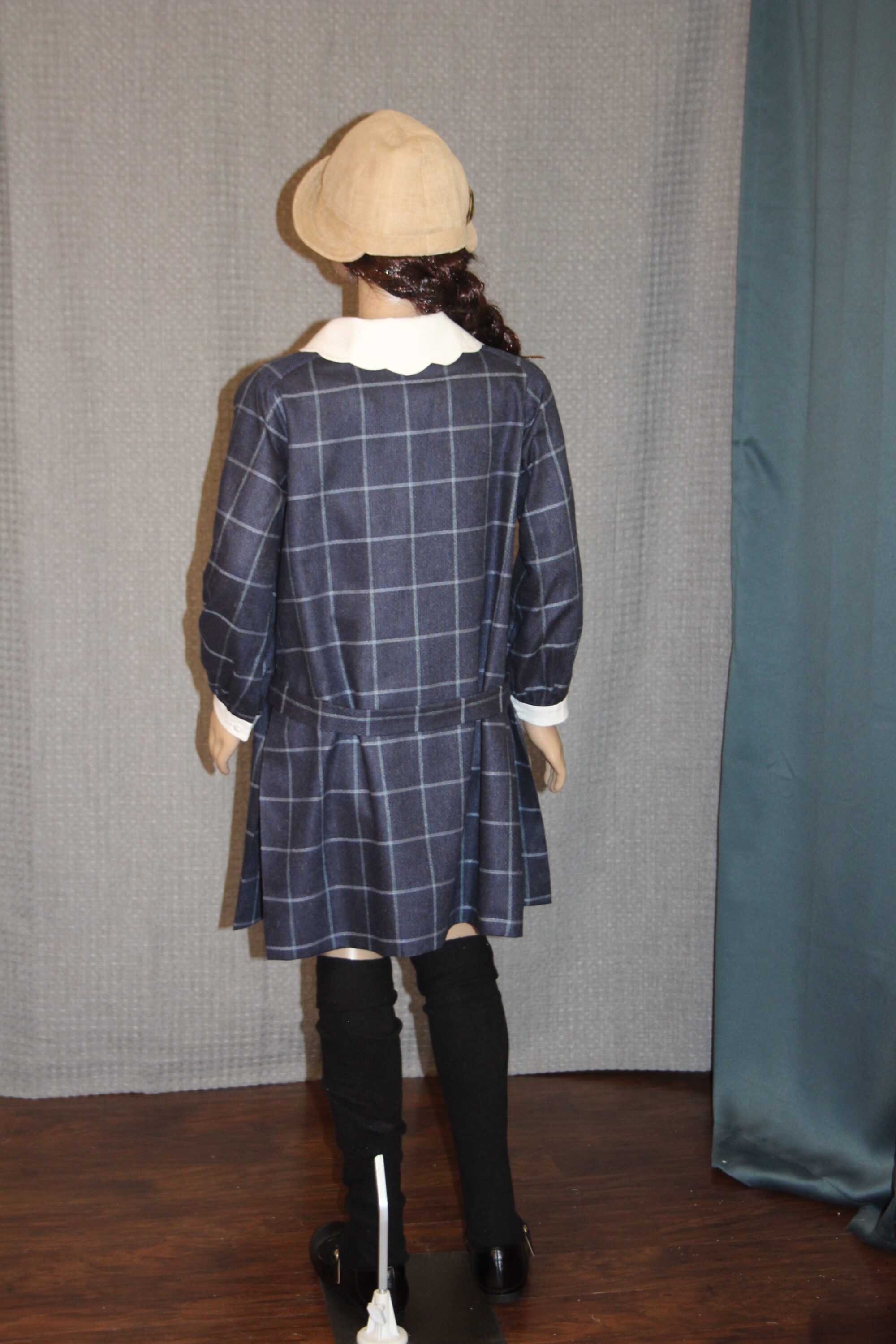
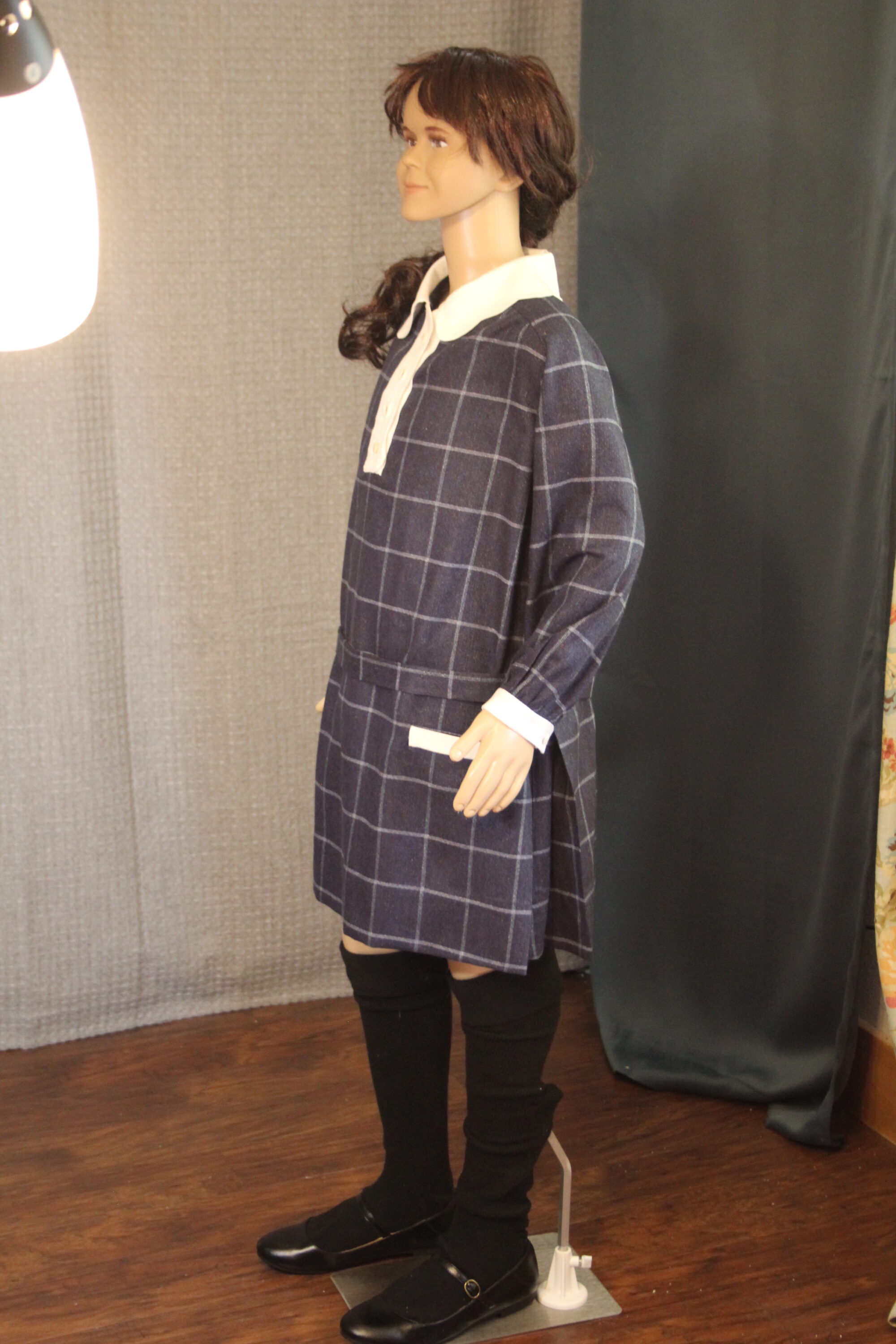
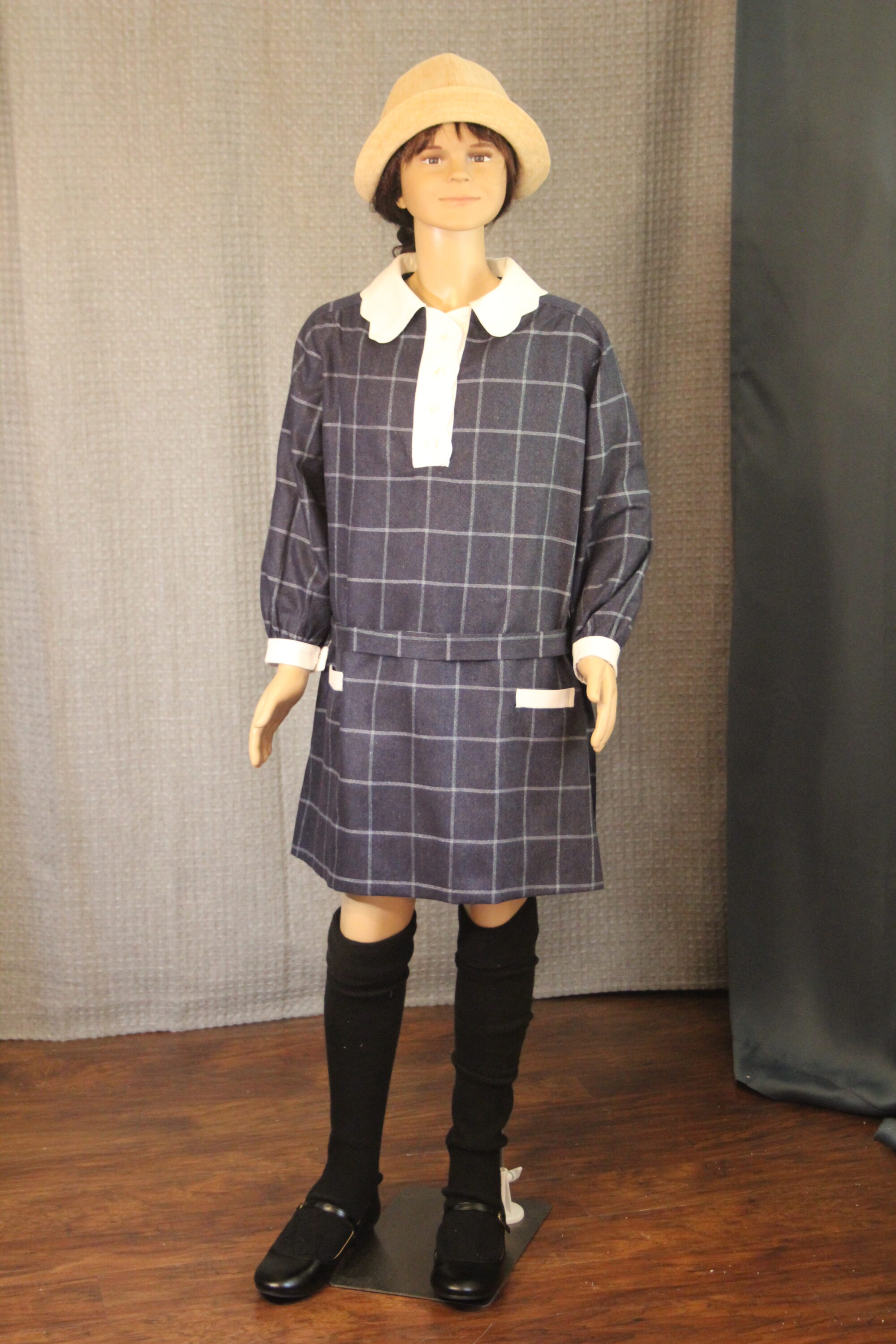
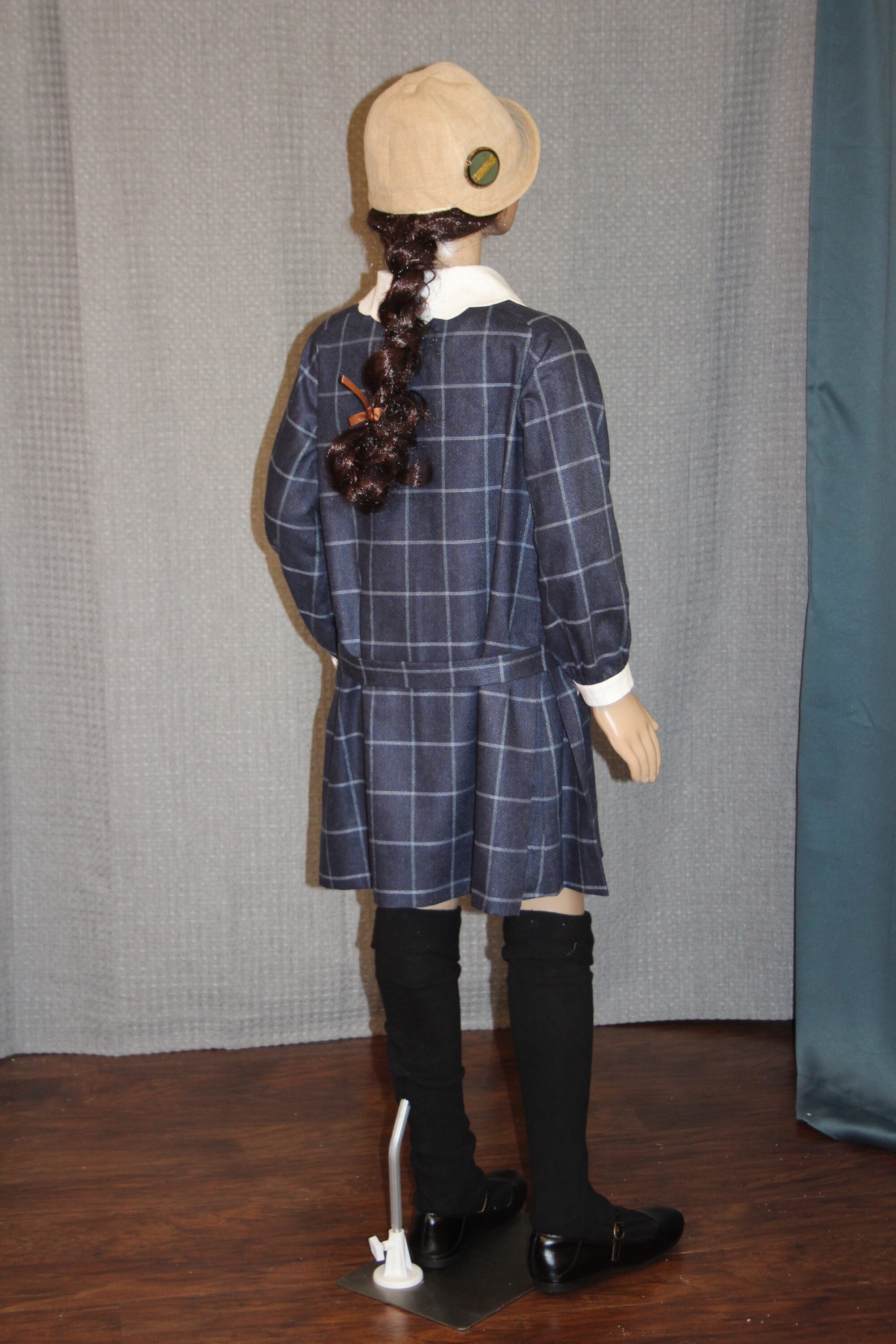
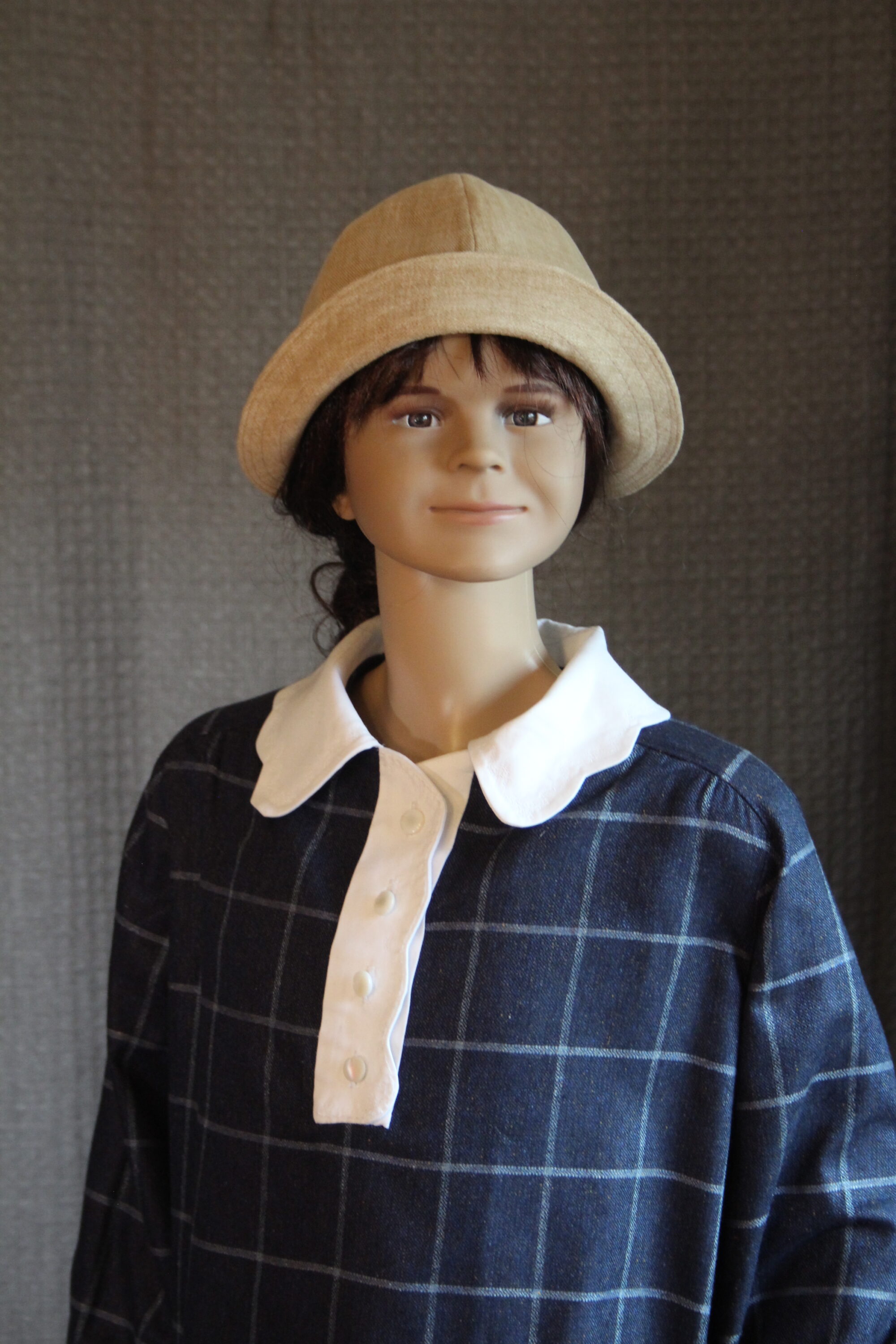
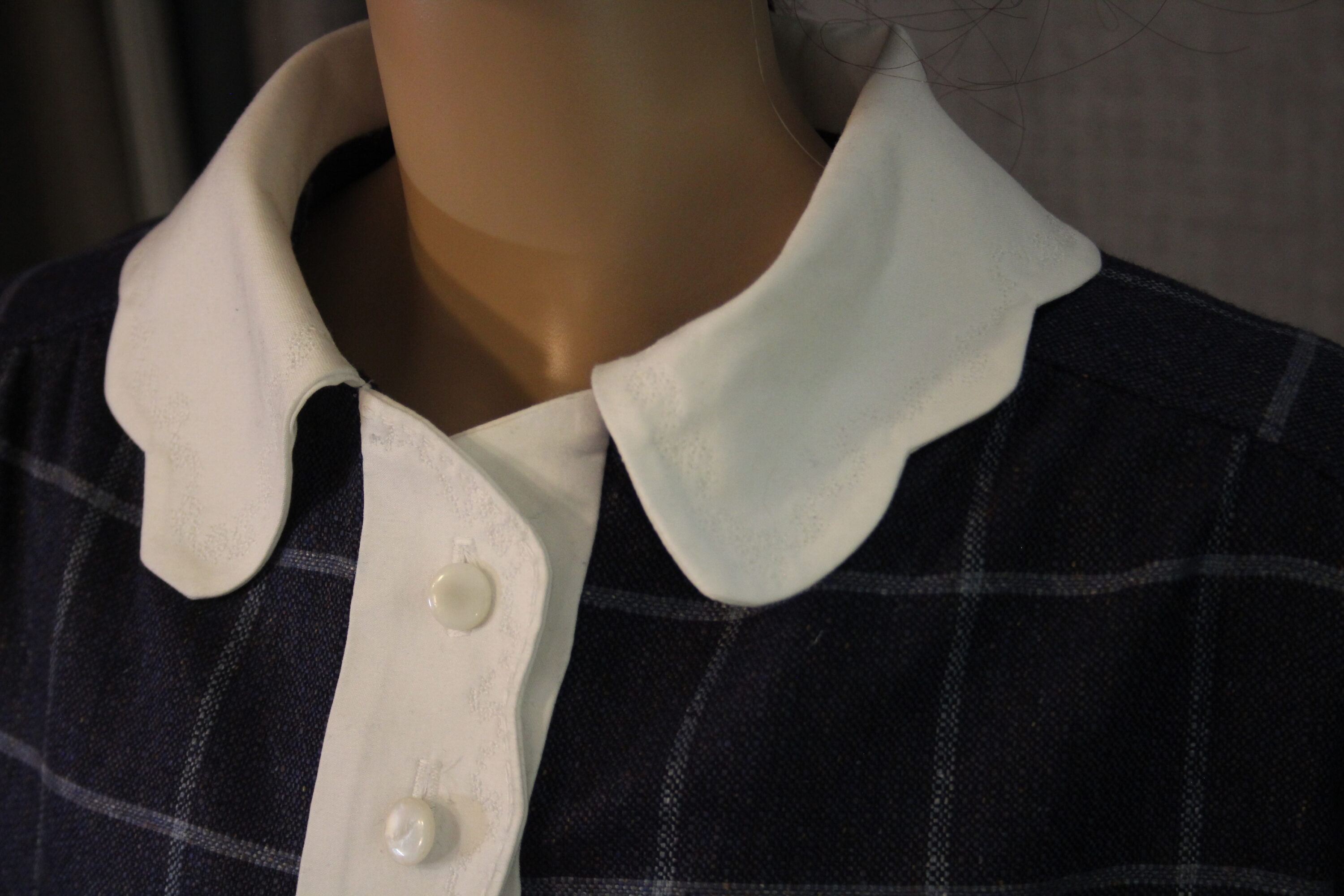
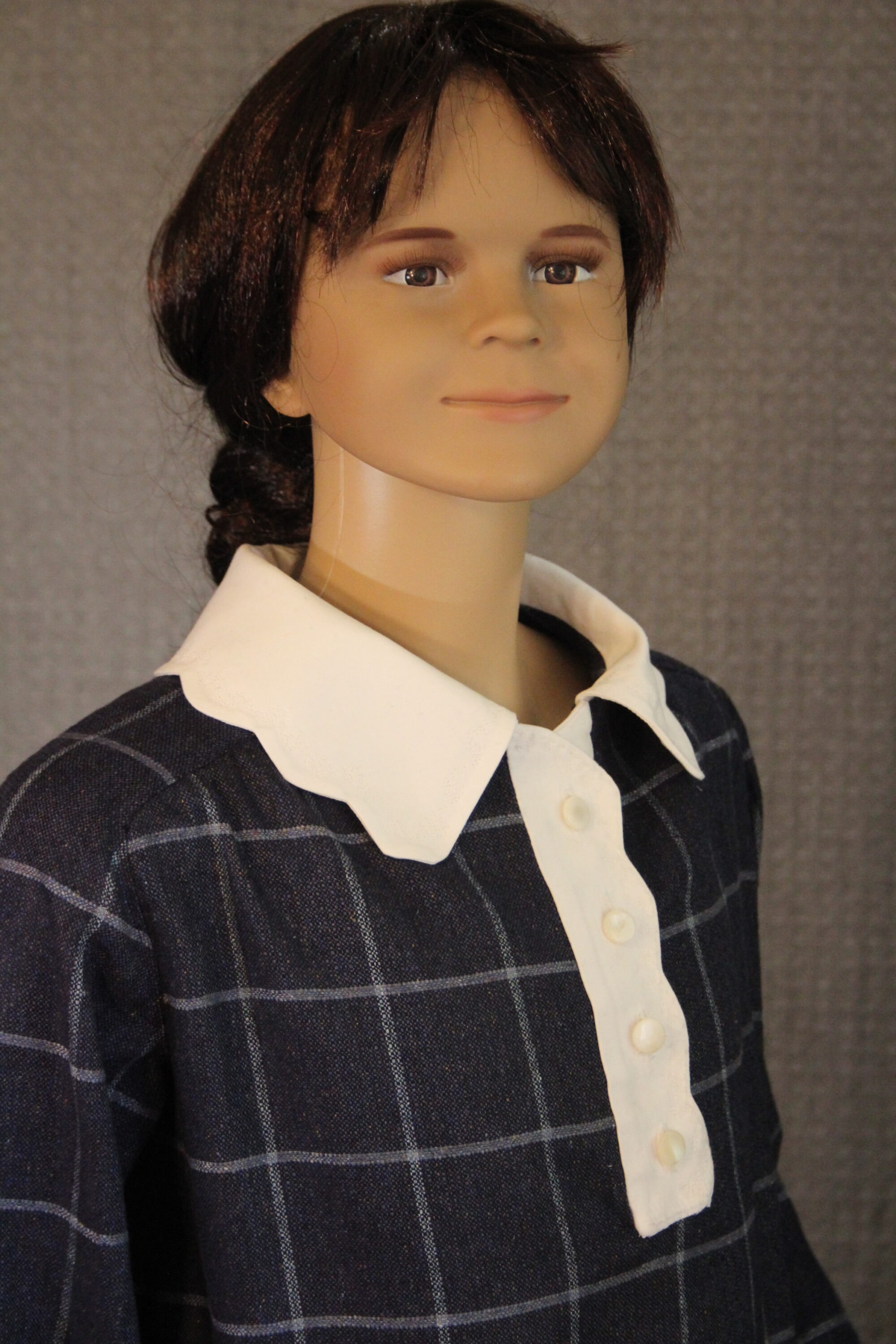
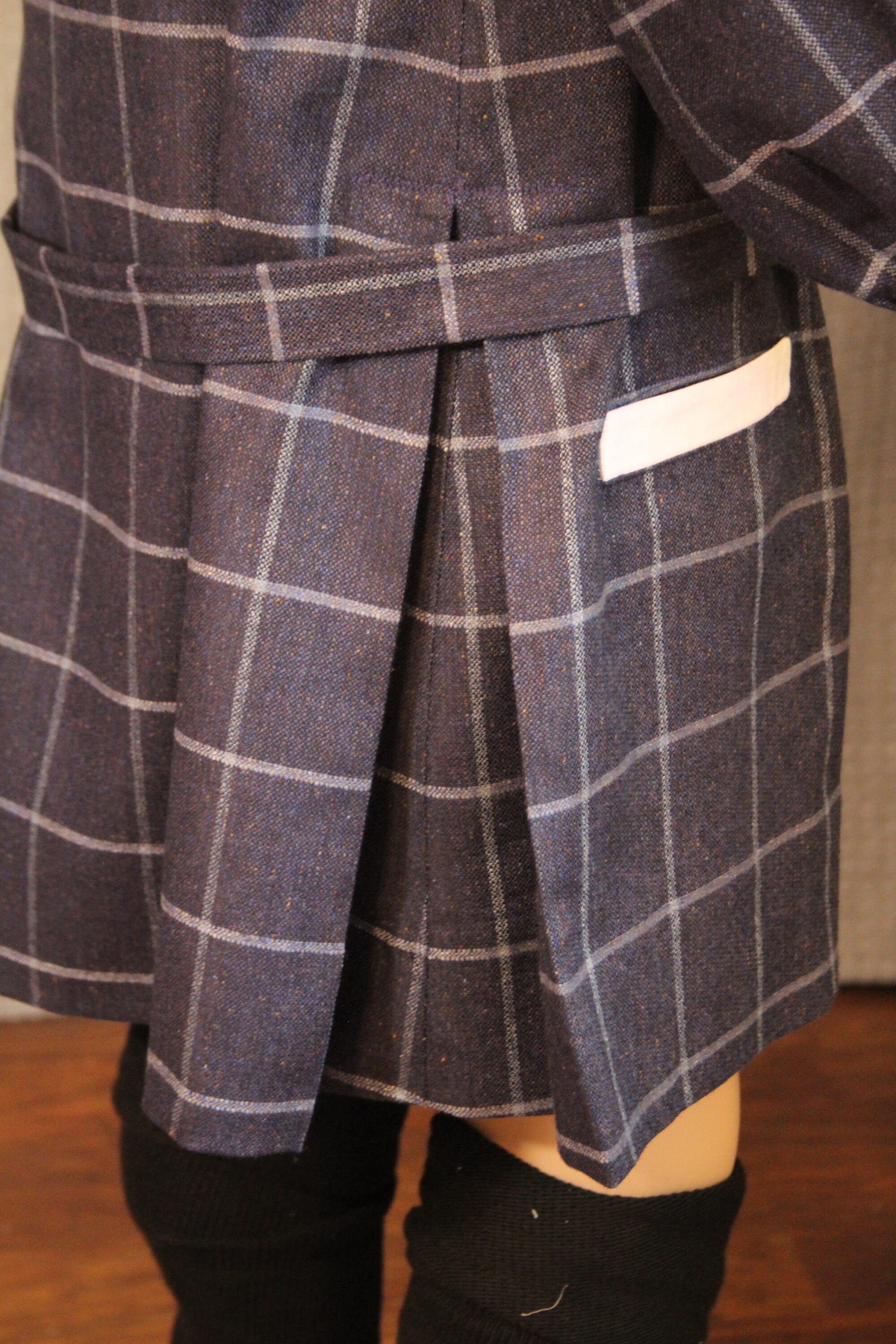

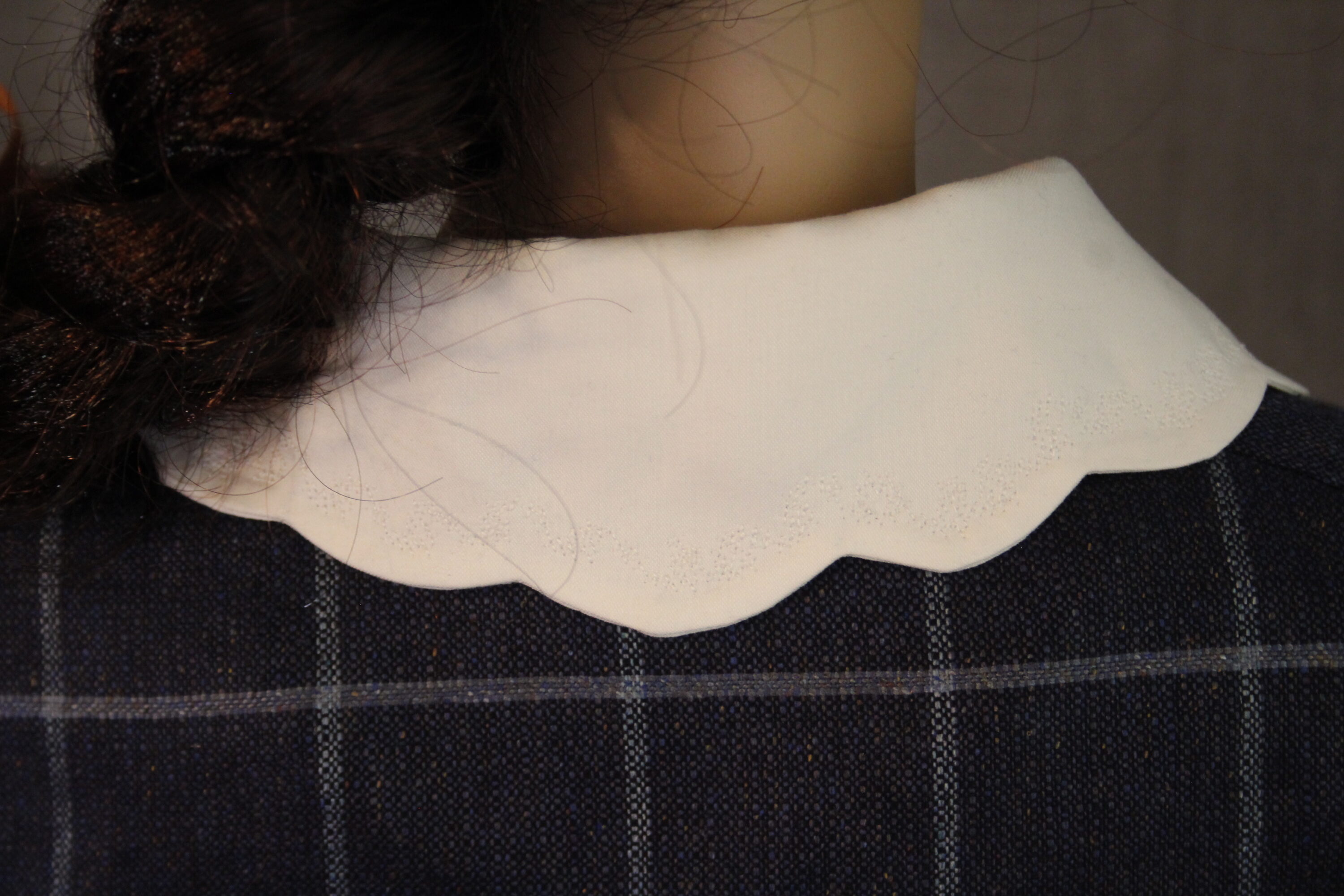
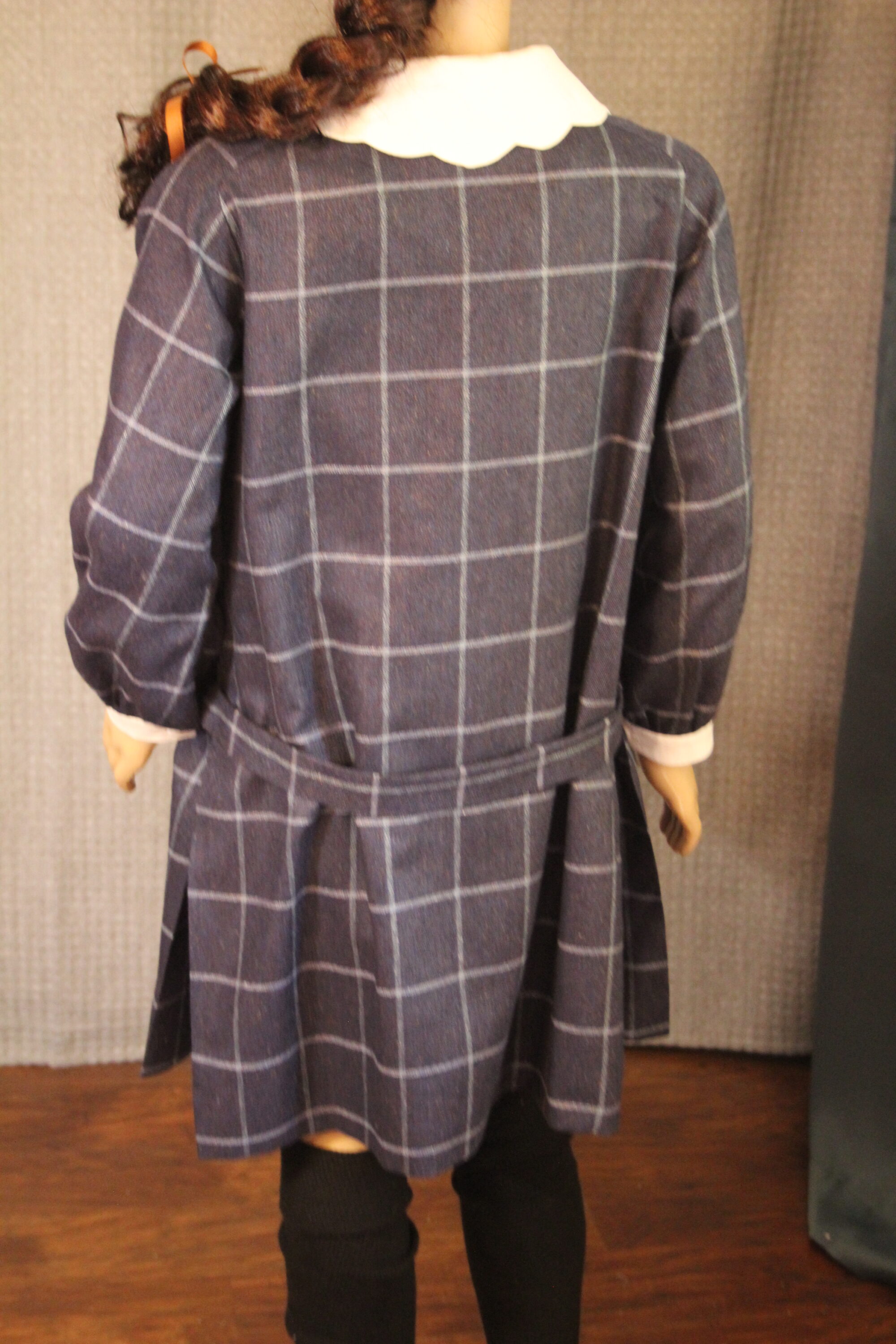
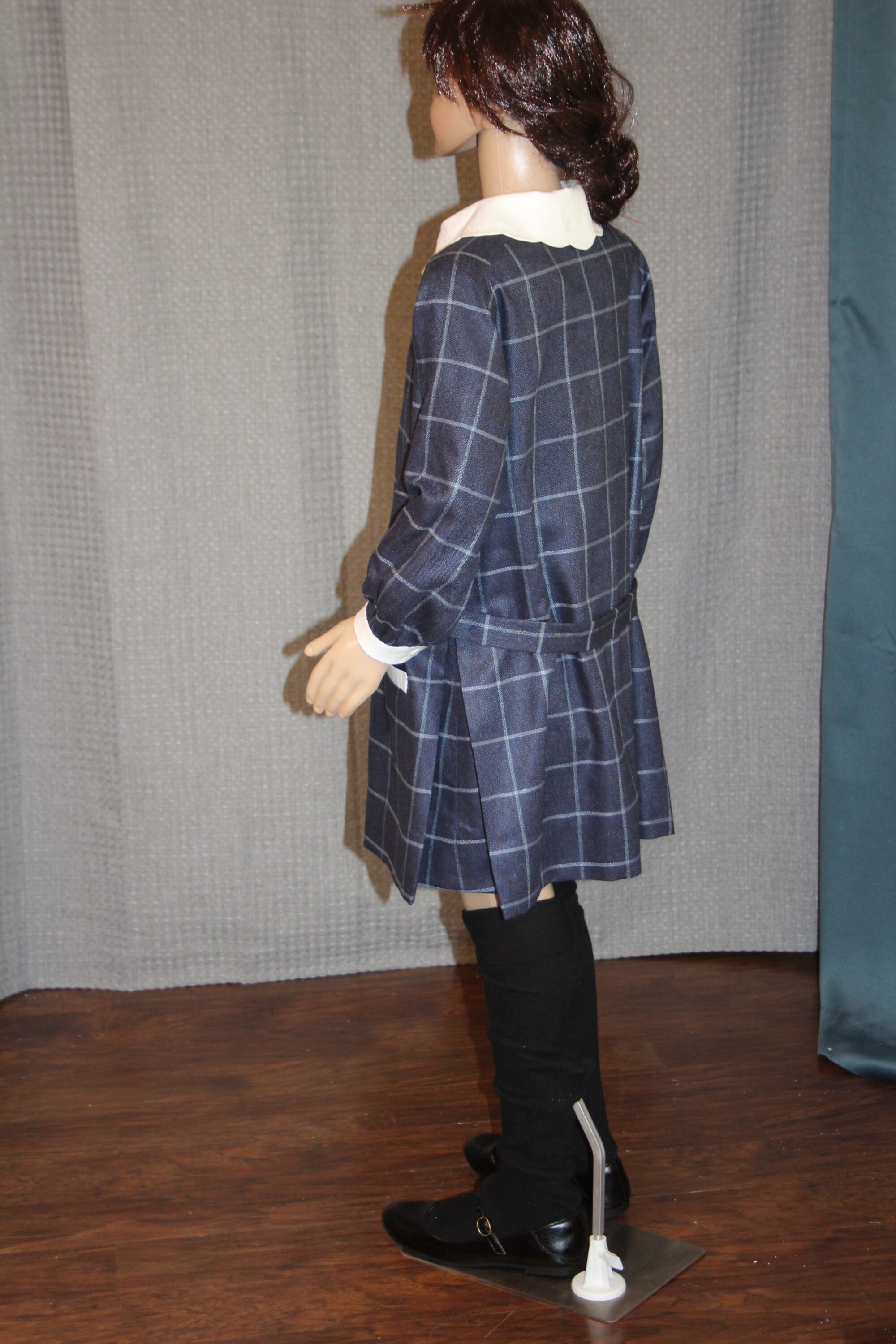
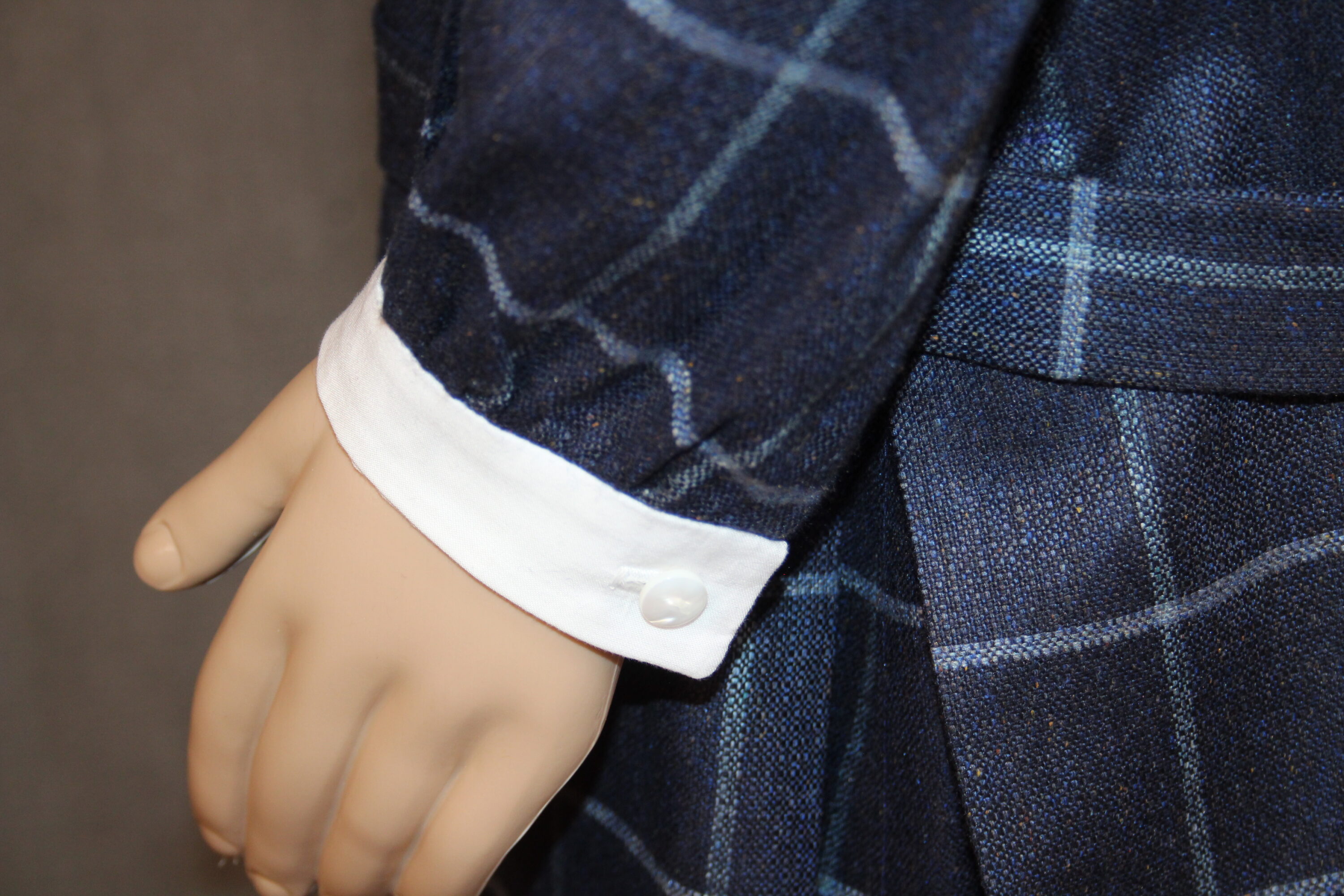
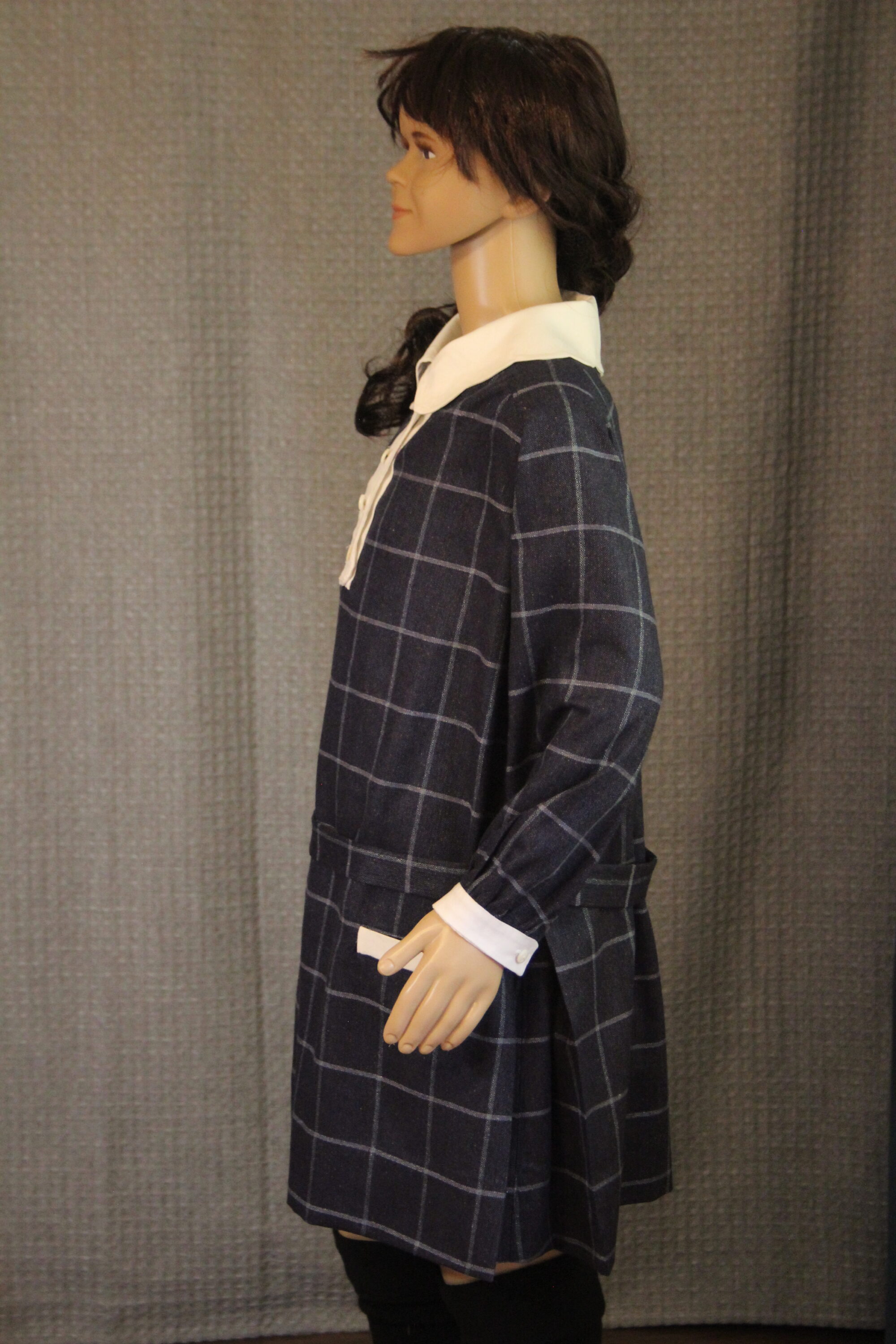
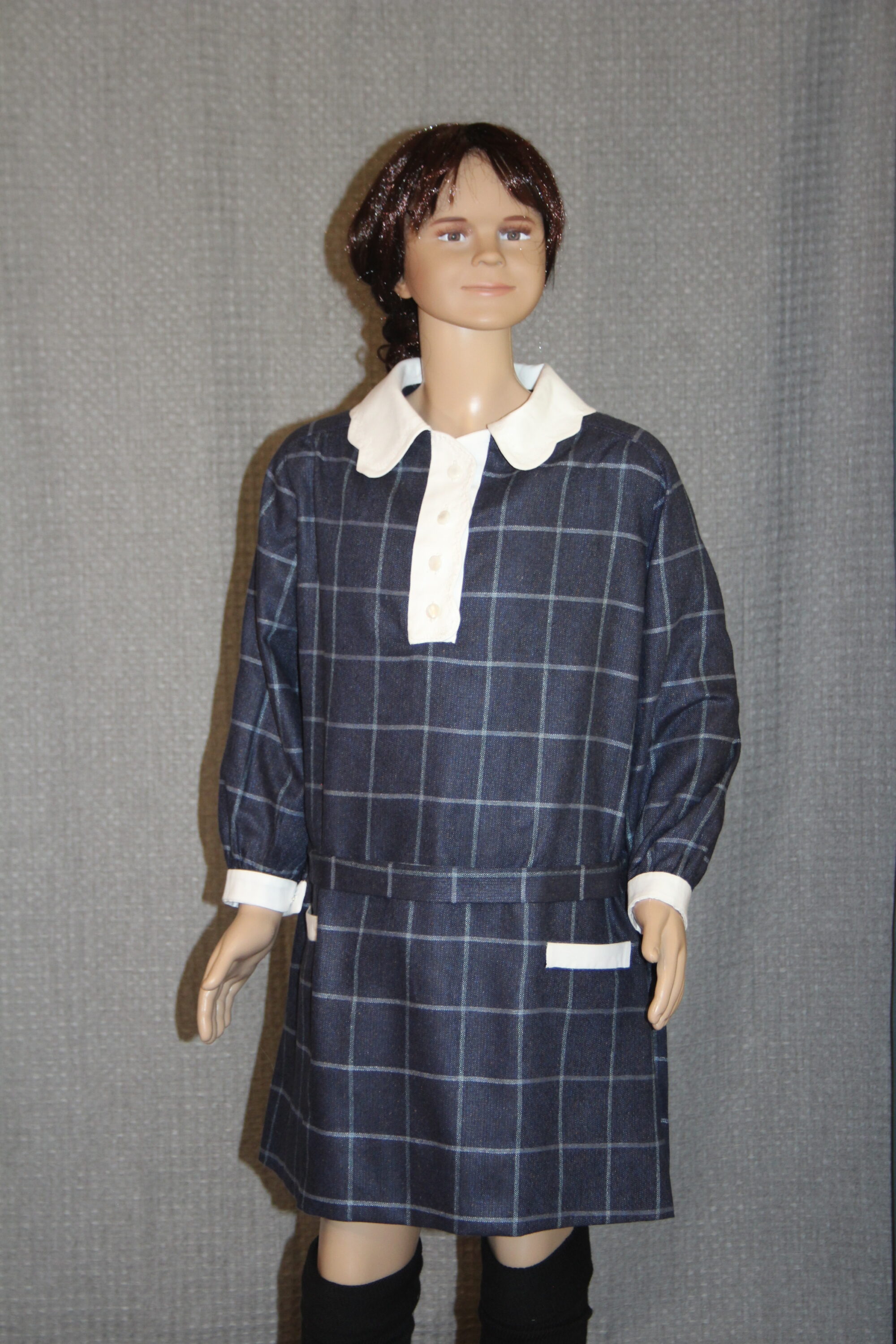
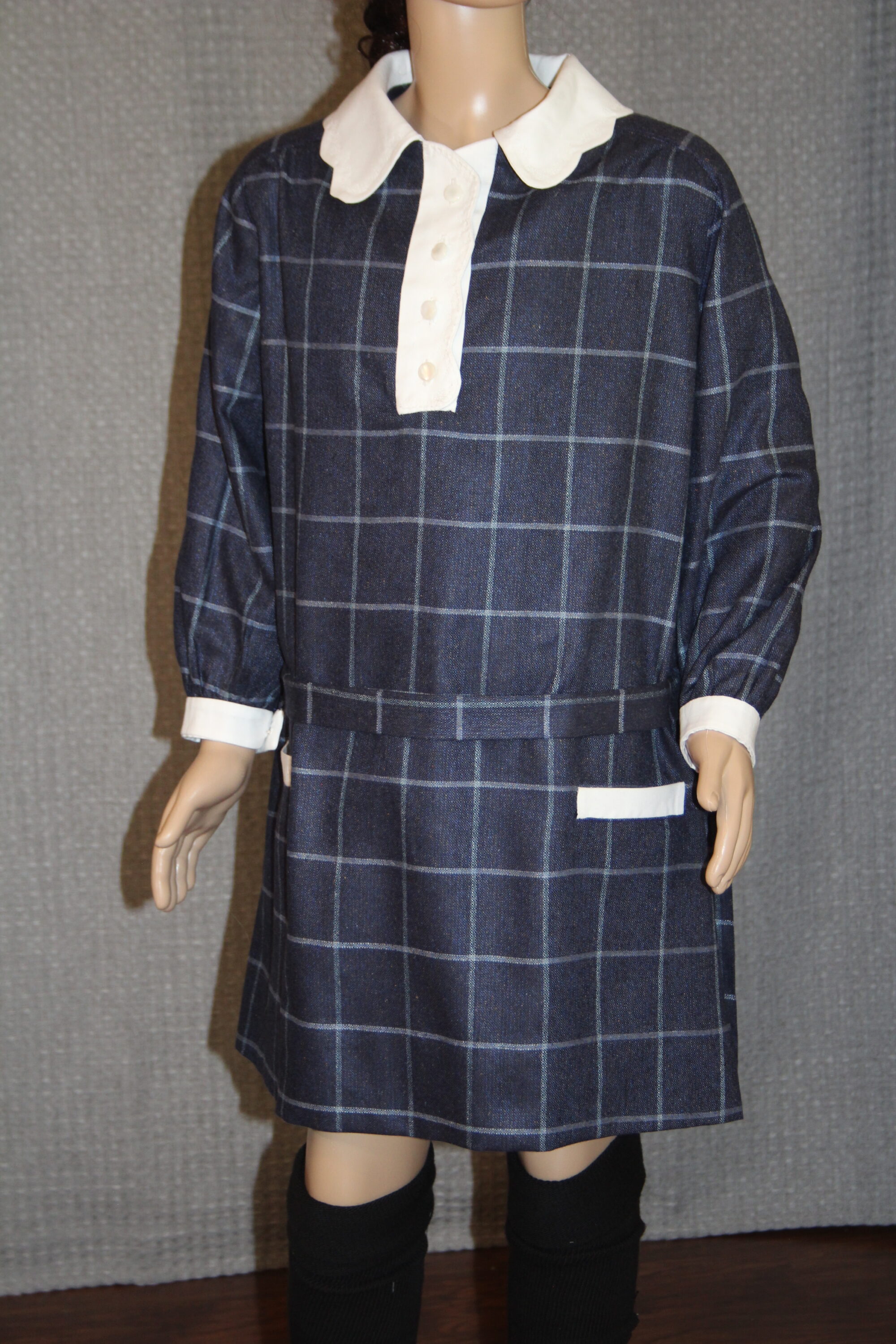
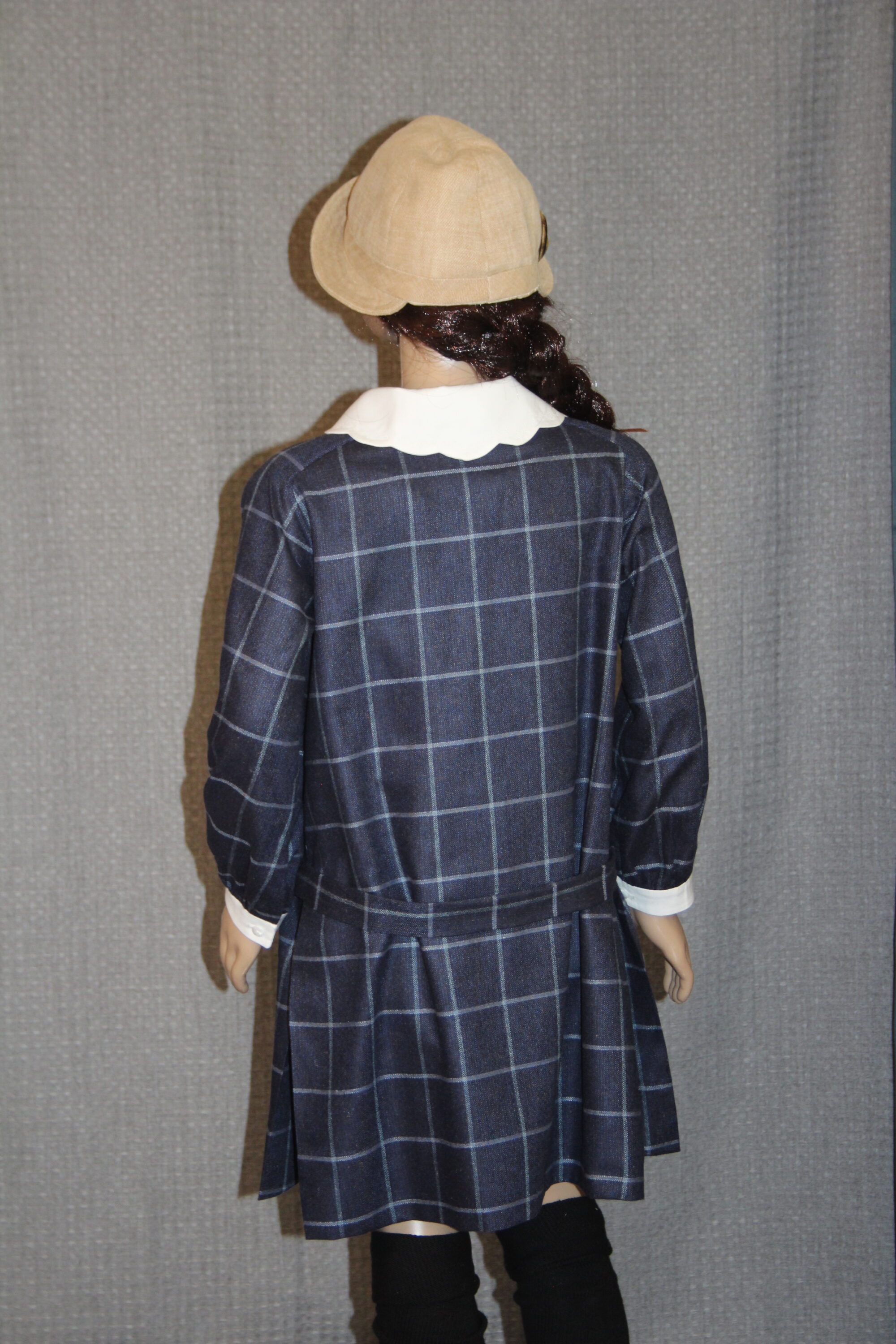
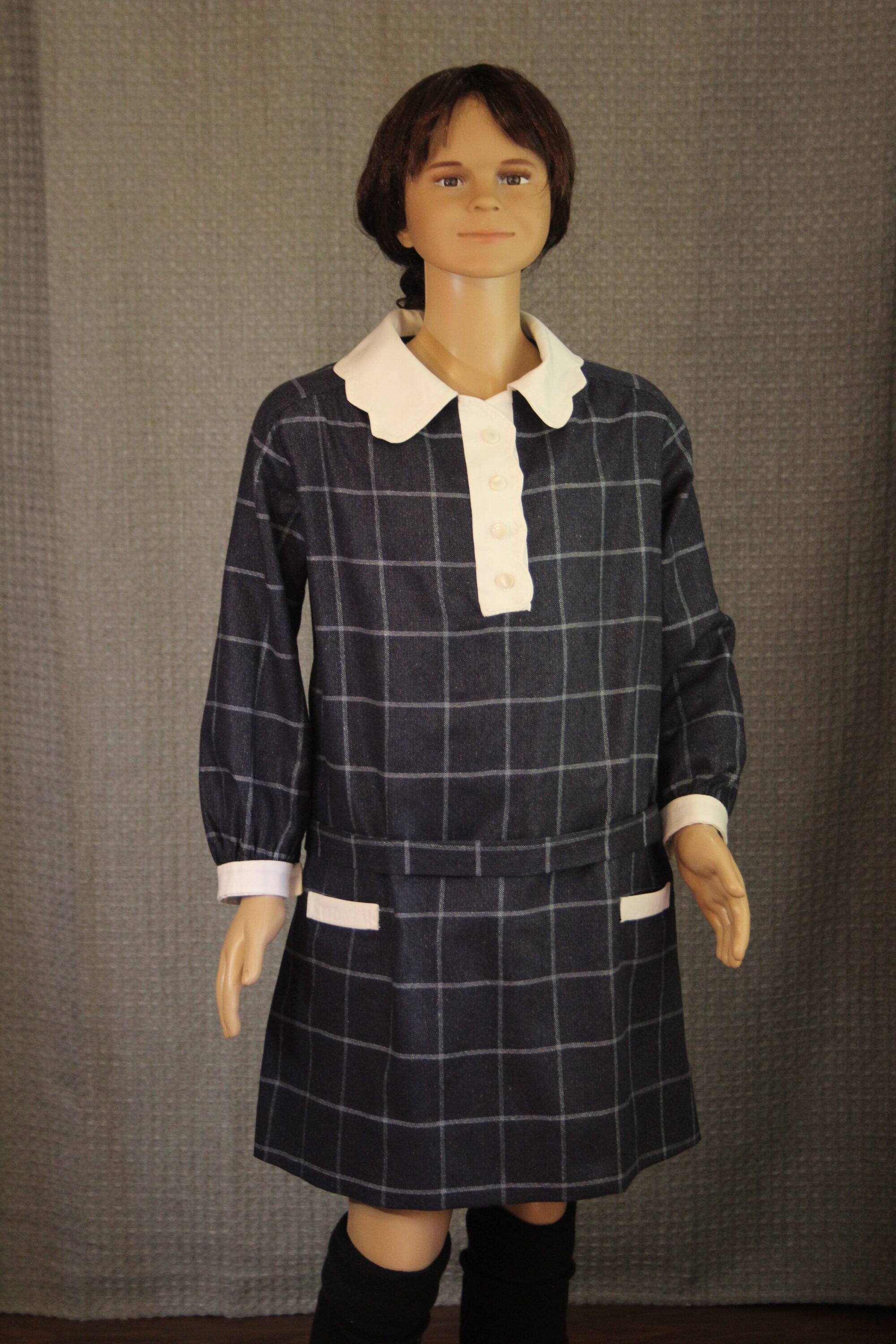
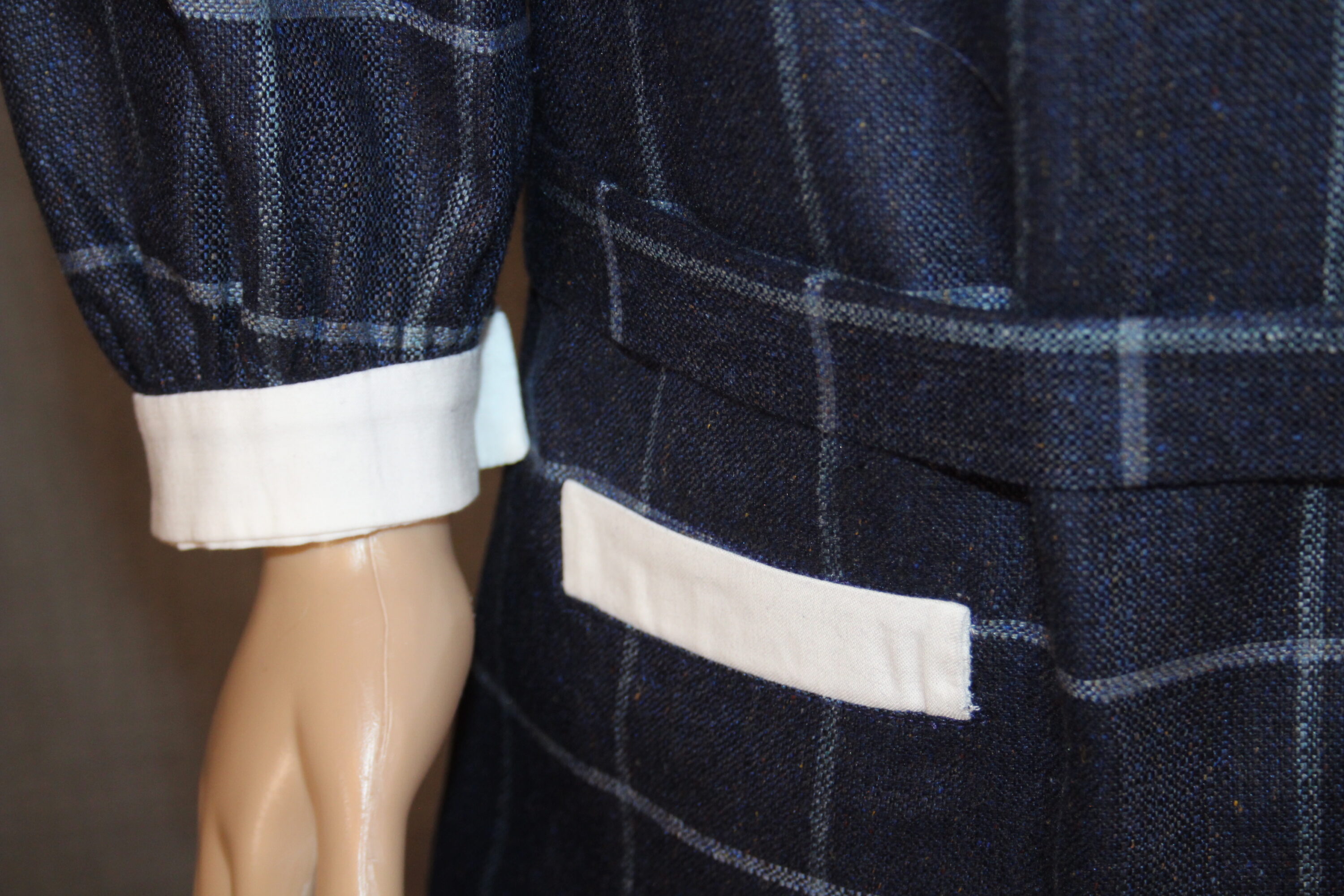
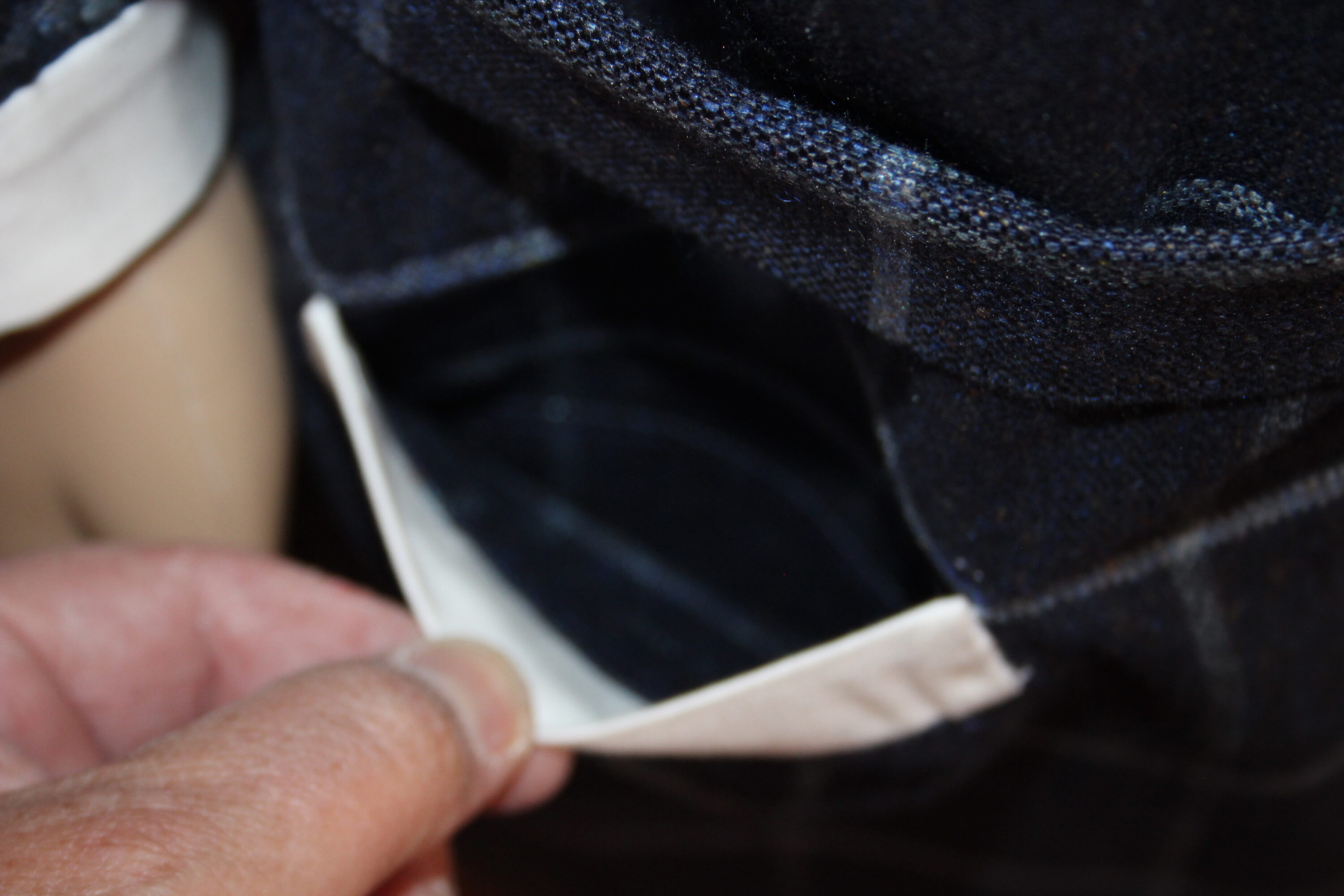
Accessories (Wigs, Hats, Hair Bow & Shoes)
The most natural hair is a long wig with brownish/purple highlights. This was completely wrong for the 1920’s, as few little girls had long hair by 1925. We replaced it with a jet black wig which we trimmed to style. In an instant, our mannequin (“Pearl”) aged about 4 years, as the new short style made her look much older.
Photos here are taken with both. You can judge for yourself.
Hair Bow


Worn for dress up and picture day, these huge bows are most notable in family and child staged portraits. This one is hand-crocheted of an elastic yarn and has a polyester ribbon. Girls loved these at the time because they were much like their big sisters and high fashion “flappers” wore with their headpieces and hair bands. They wore them high on the head and straight up; as a “flapper” would wear a feather or headdress.
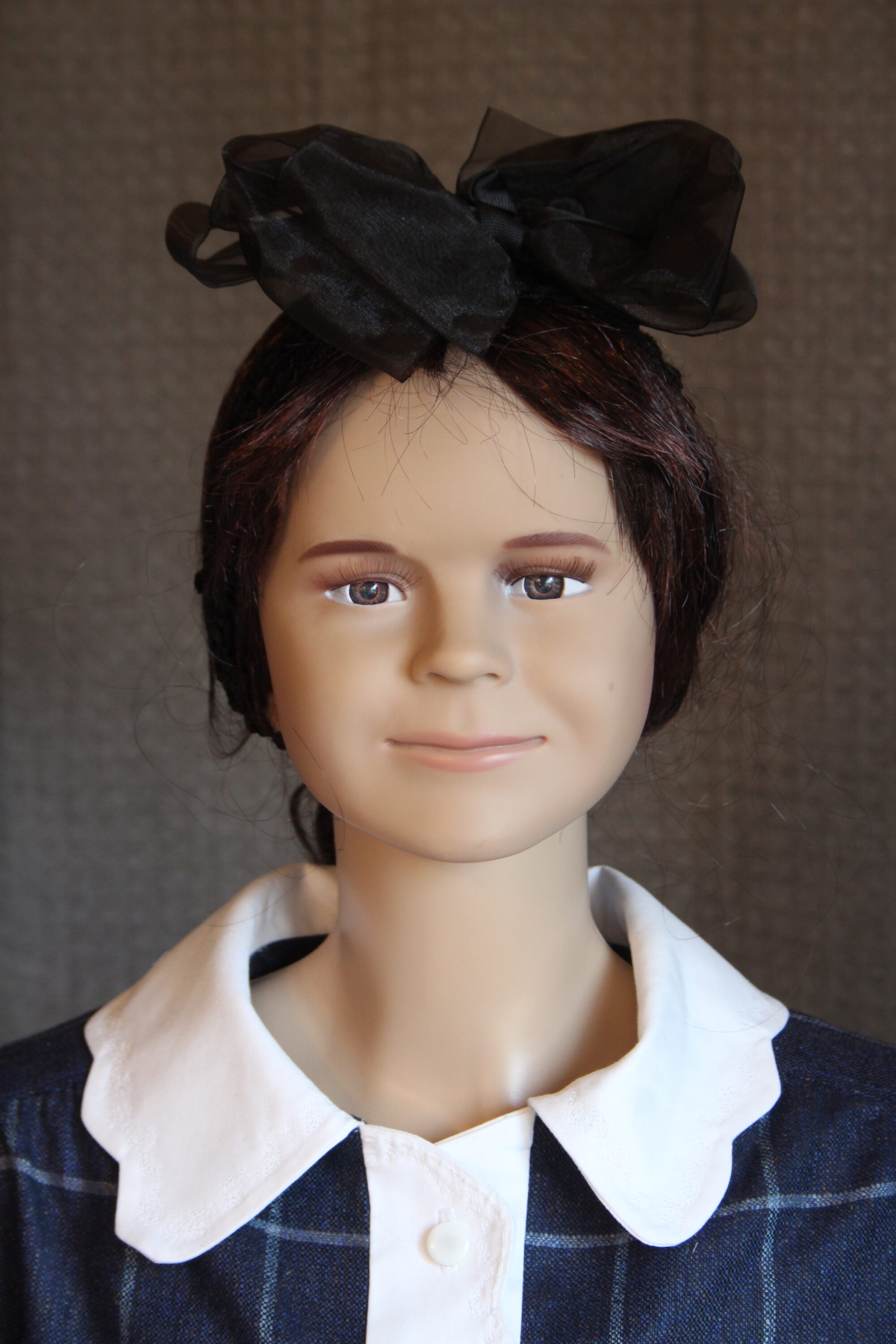
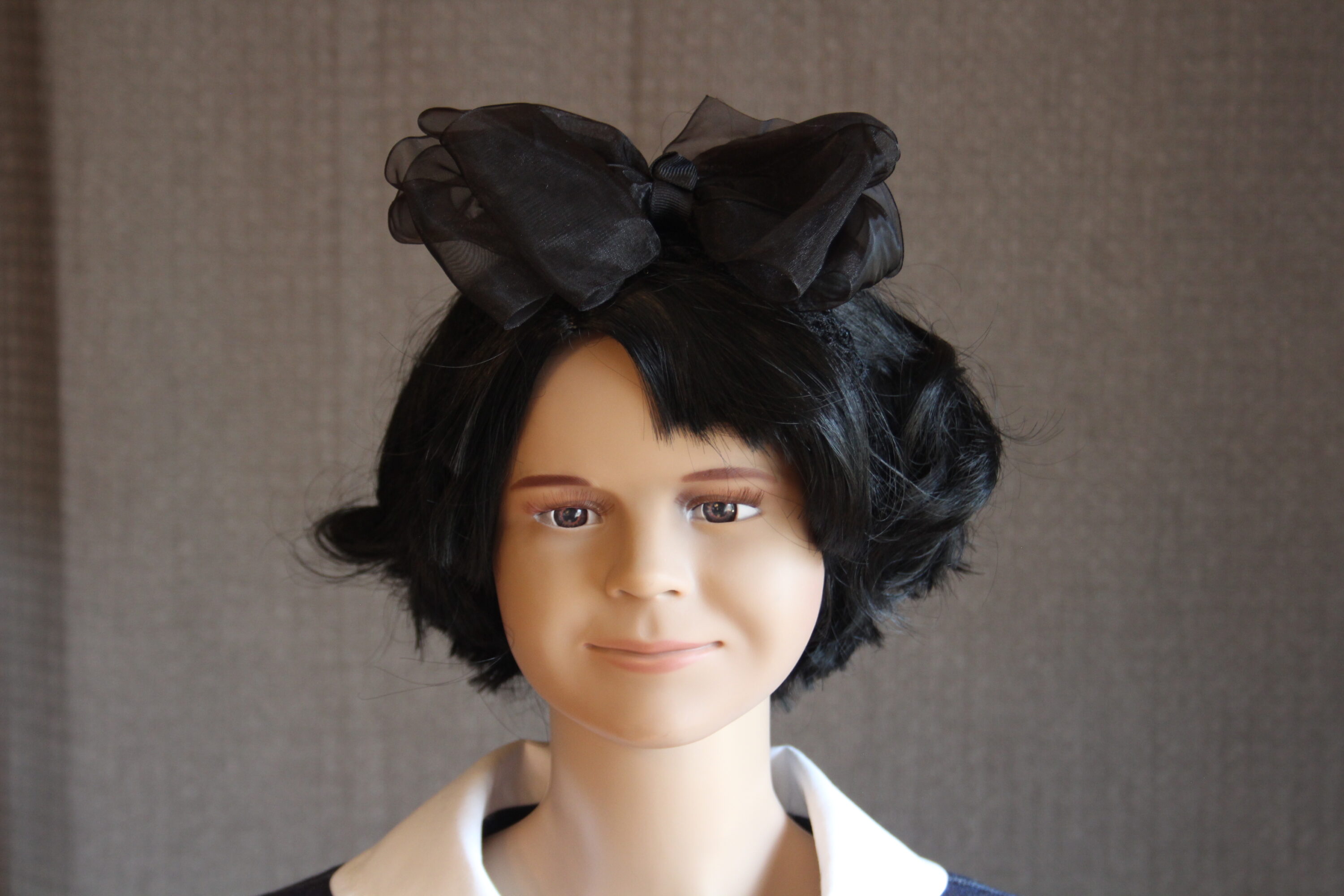
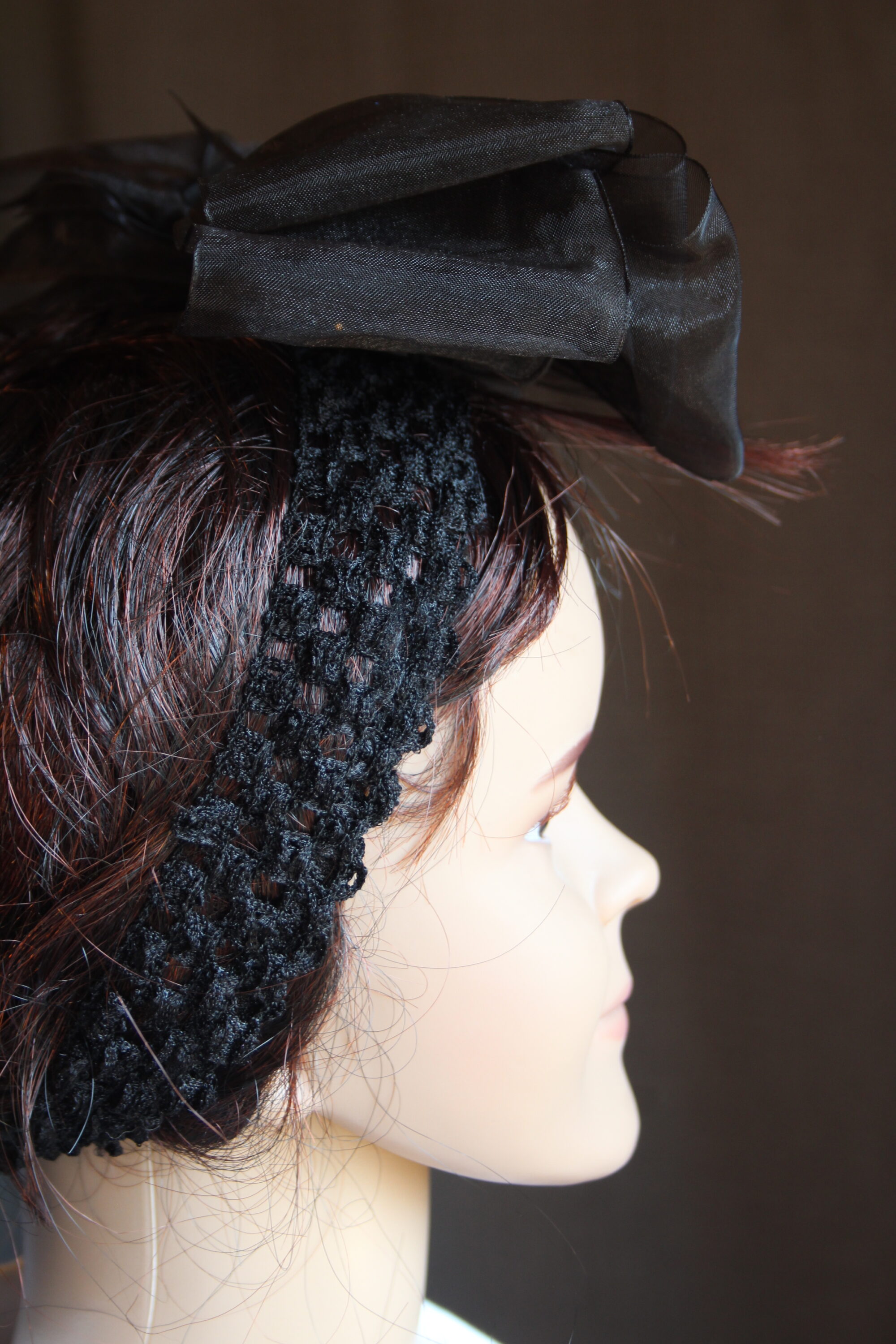
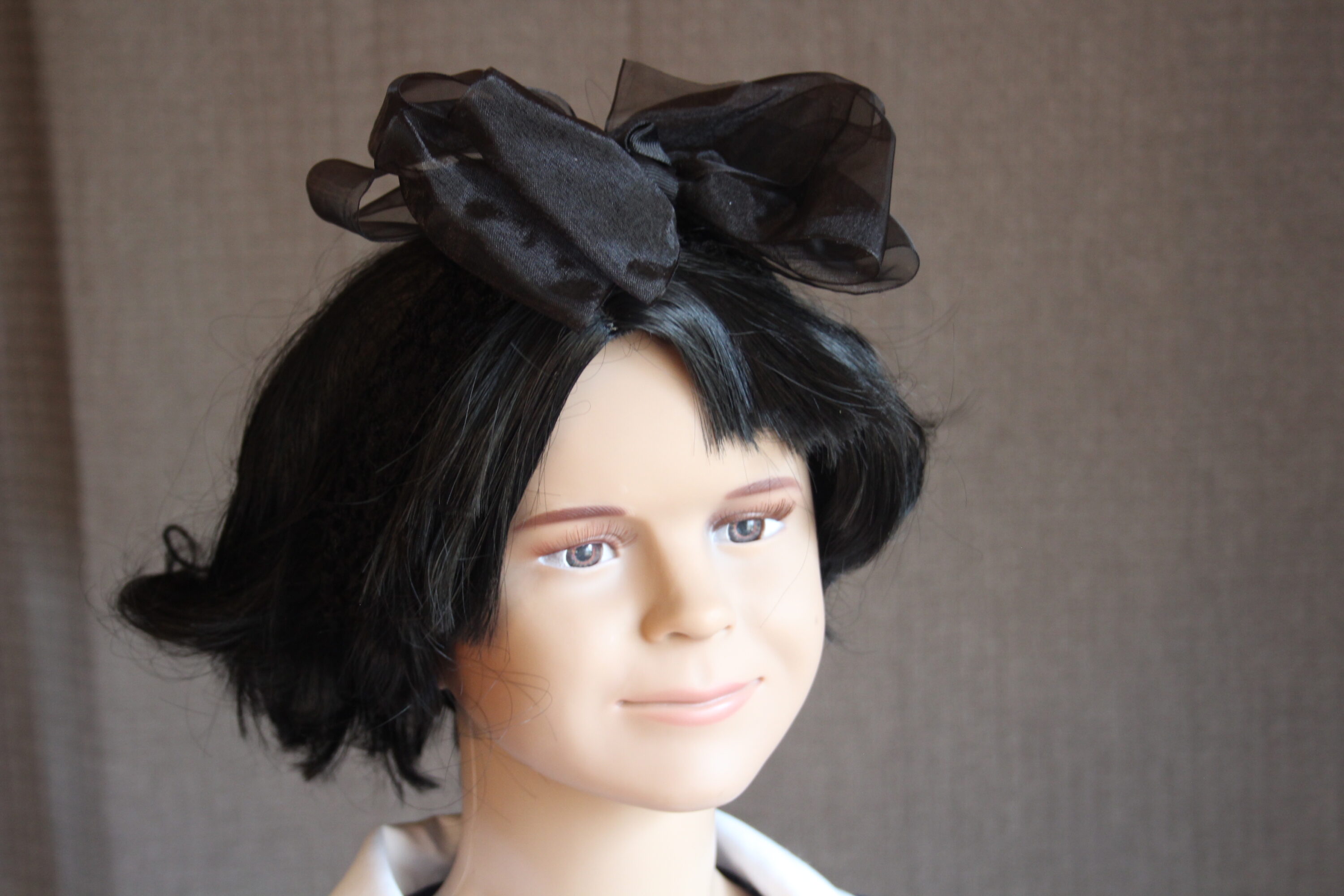
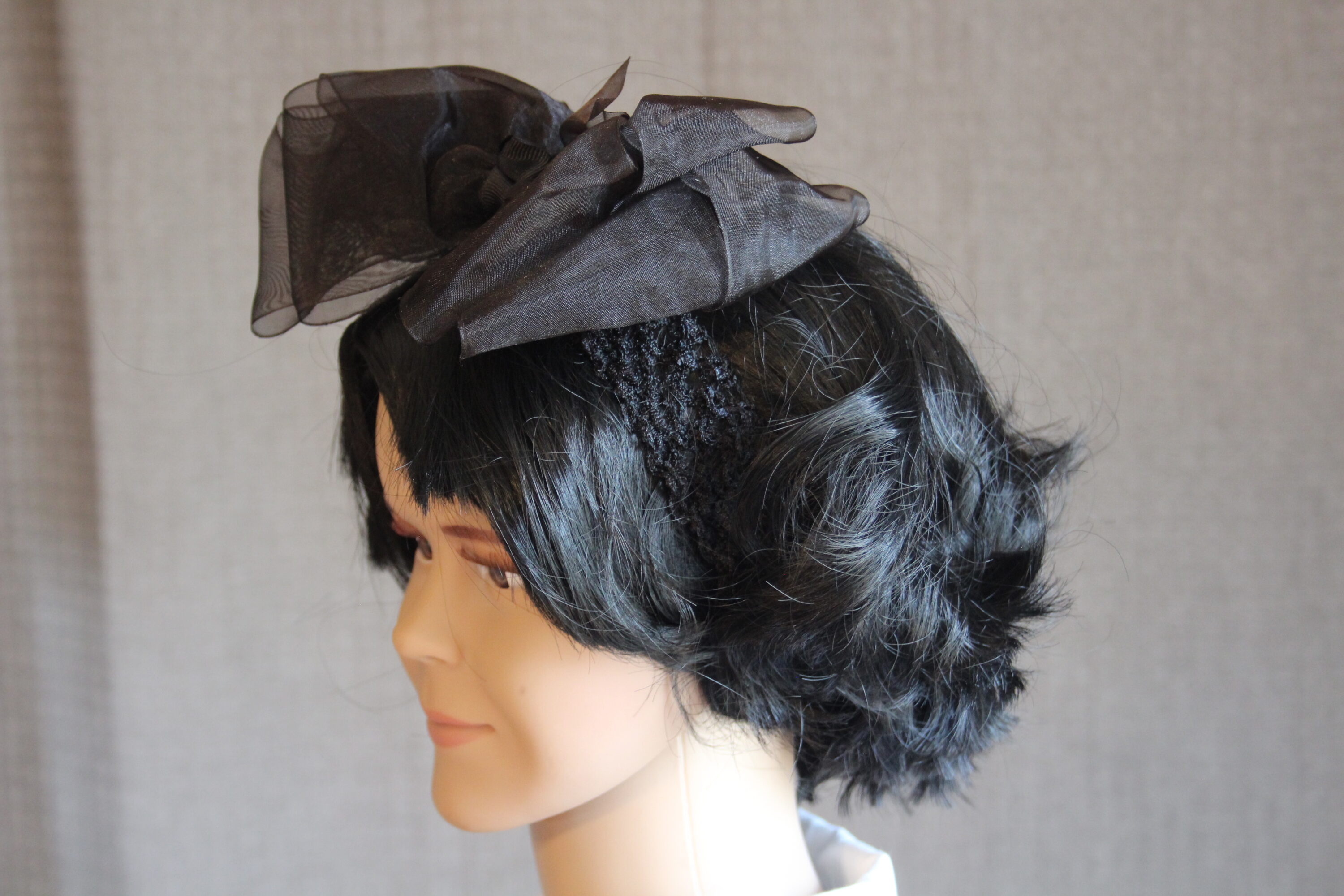
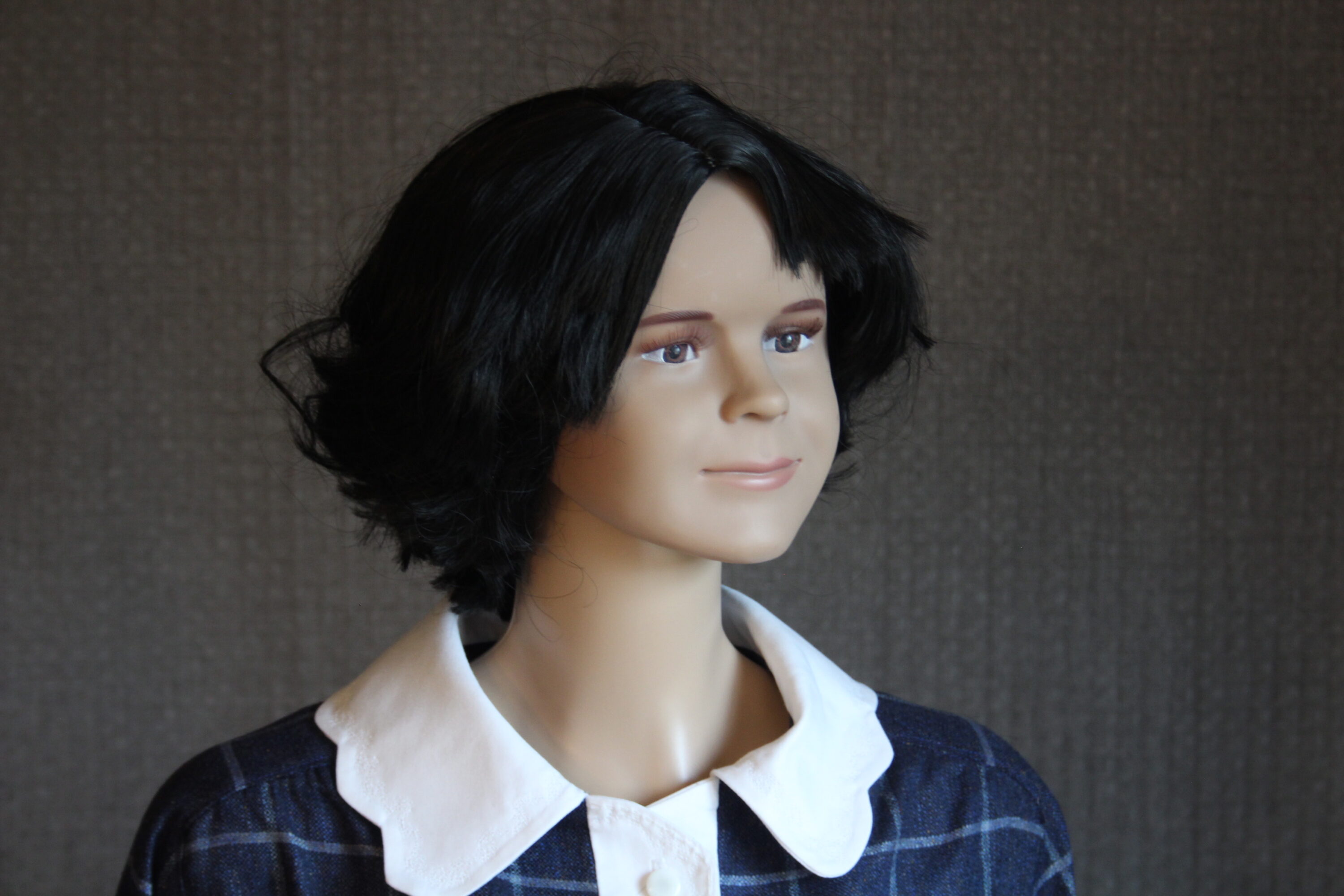
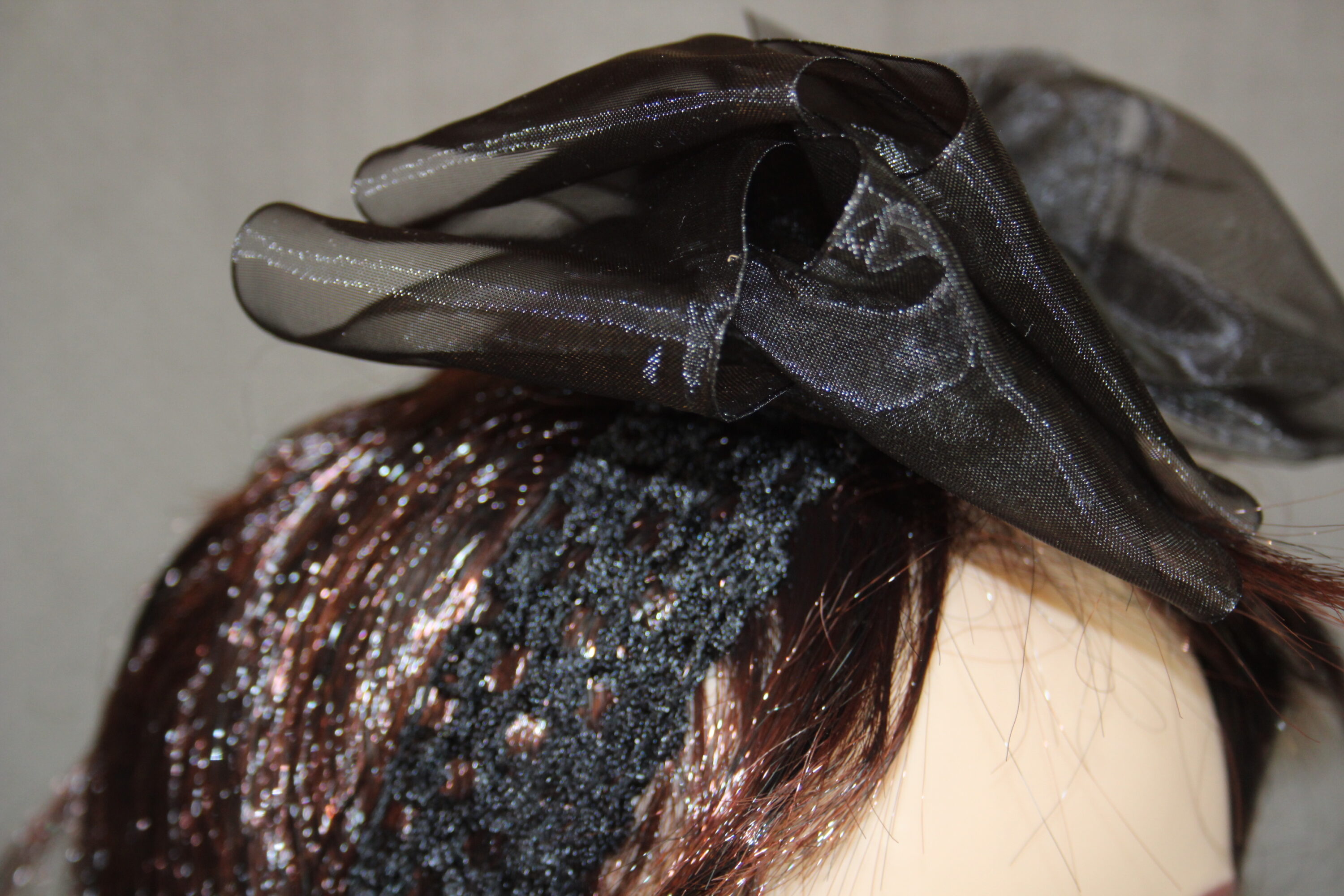
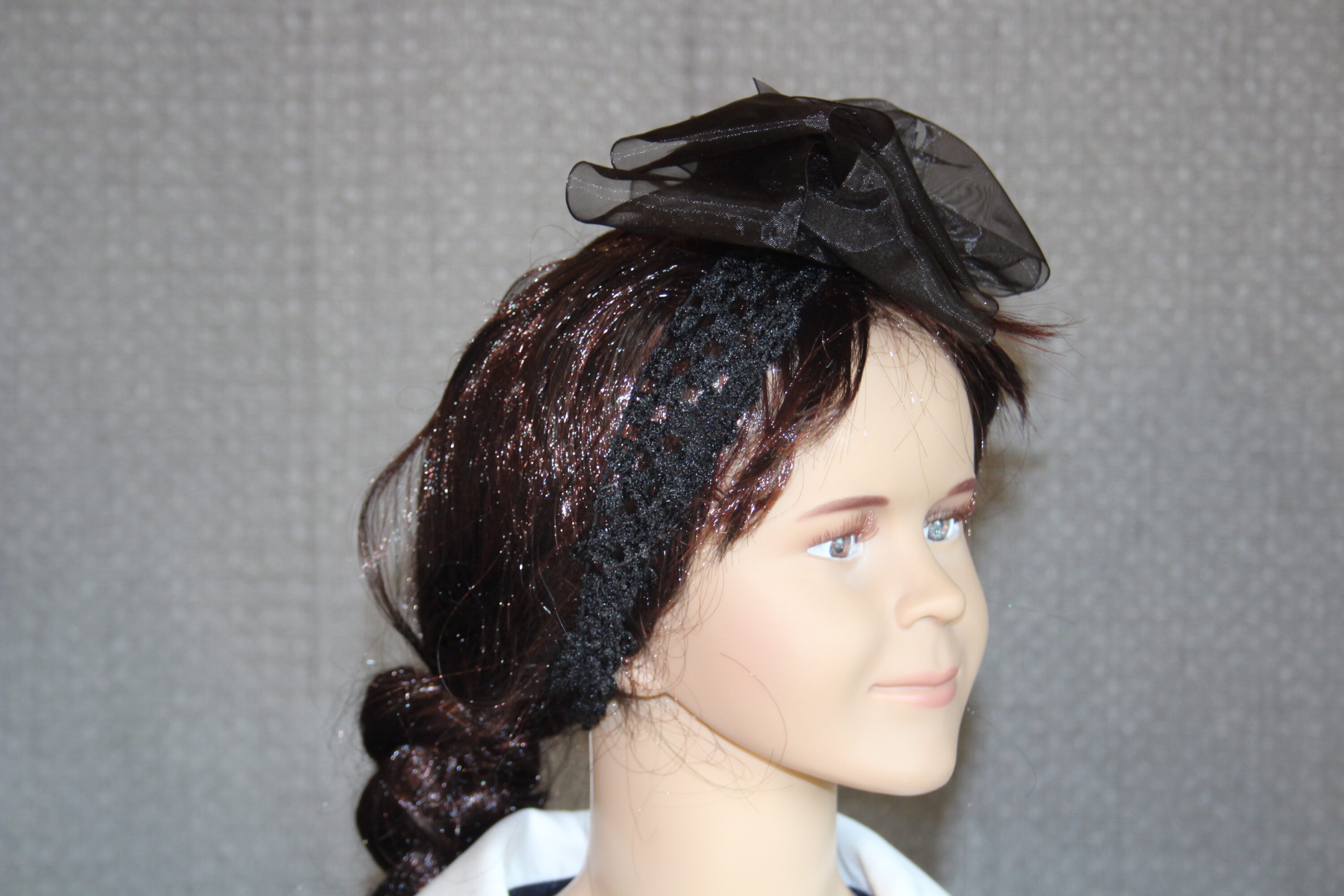

Knitted Cloche Cap

Special just for our little girl, we made this extra gray/green and ivory hand knitted cap. Using the same vintage 1920’s pattern as for the visitor caps, this one has extra TLC just for display. The idea is she can rotate between cap, hat, and bow (bow for indoor use typically; the others for outdoors).
Here is our mannequin again, with the original long haired (1910’s – so out of style!) wig and the new 1920’s styled black wig.


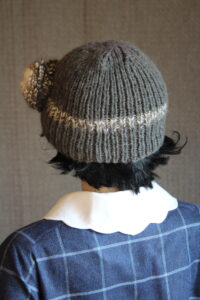
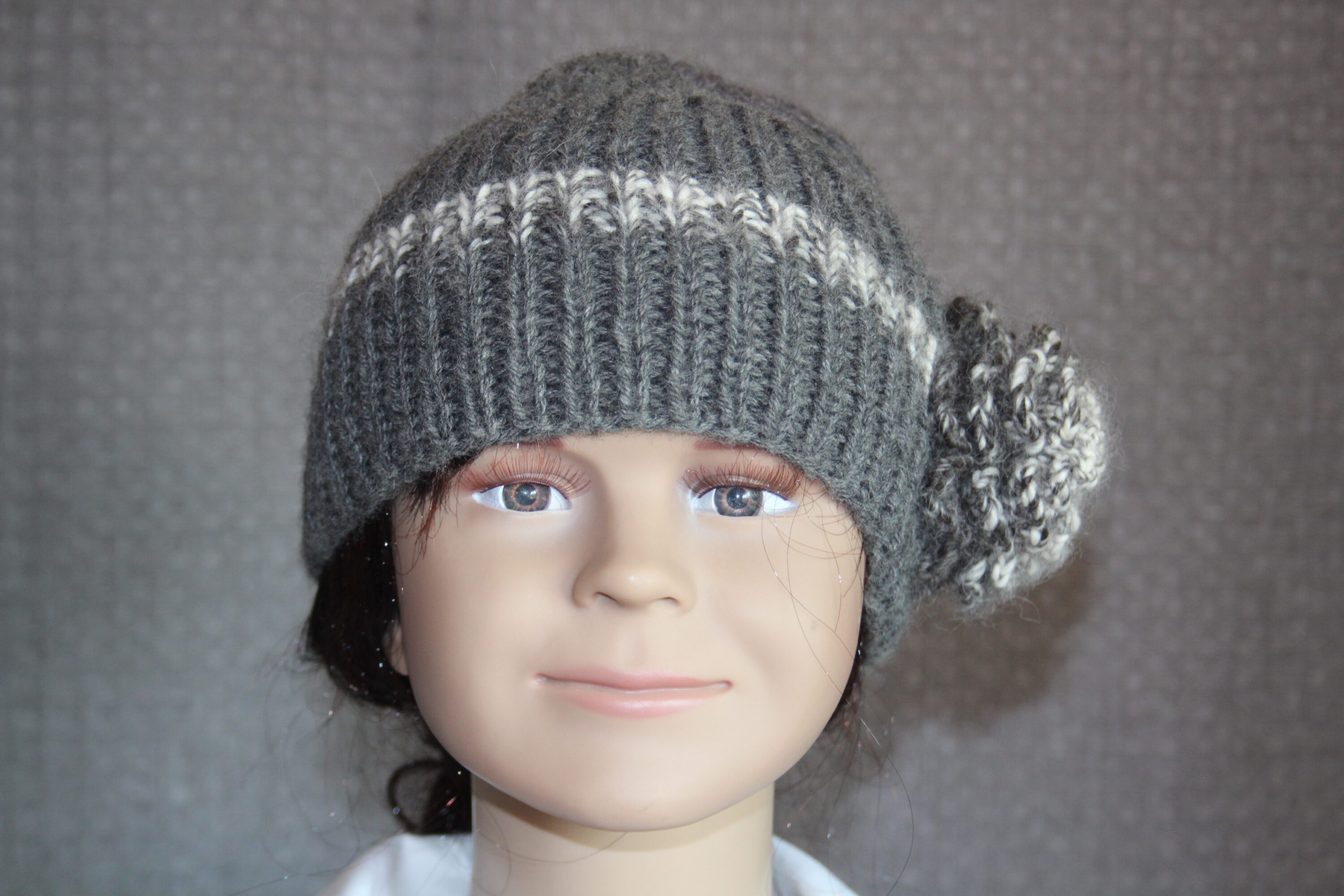
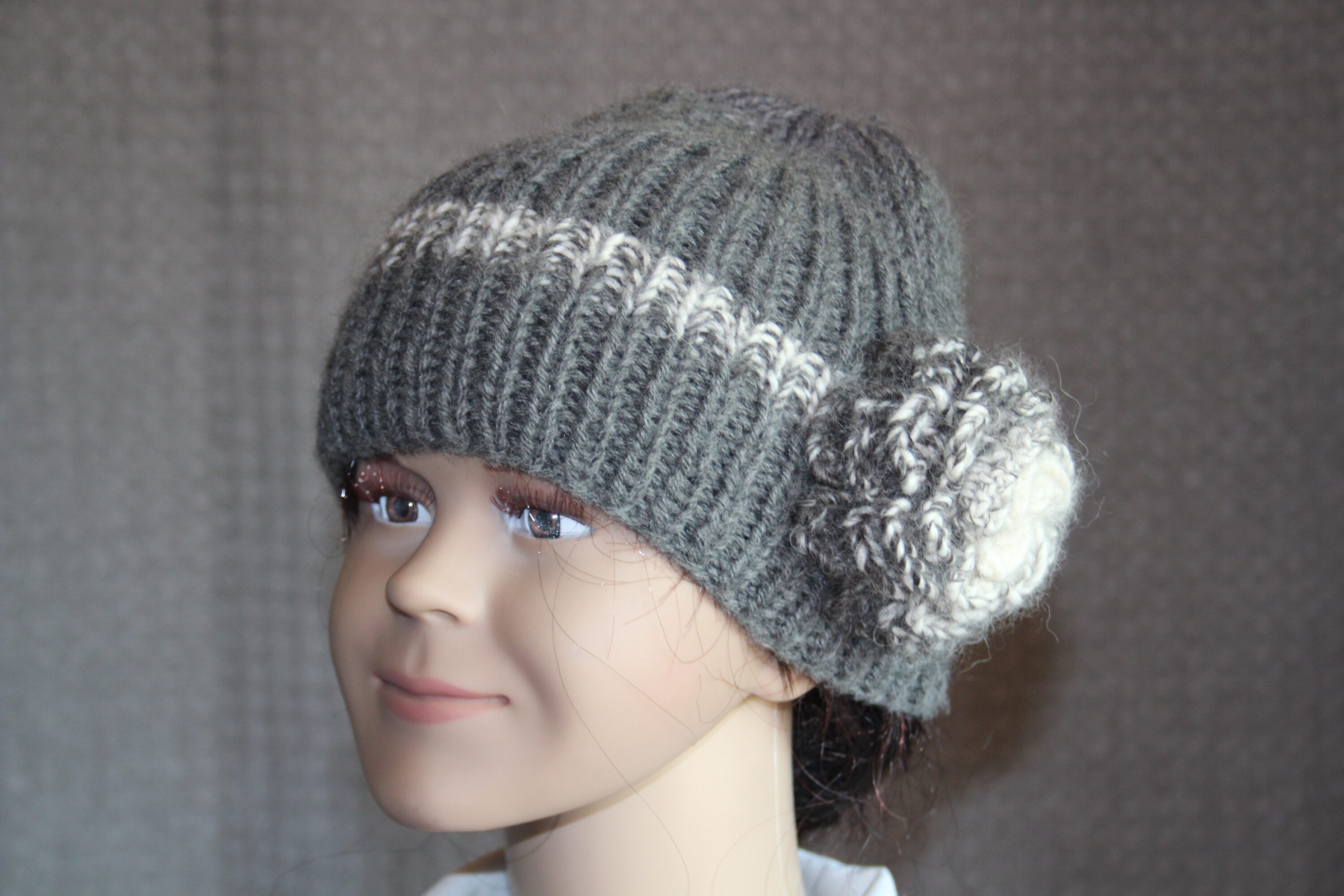
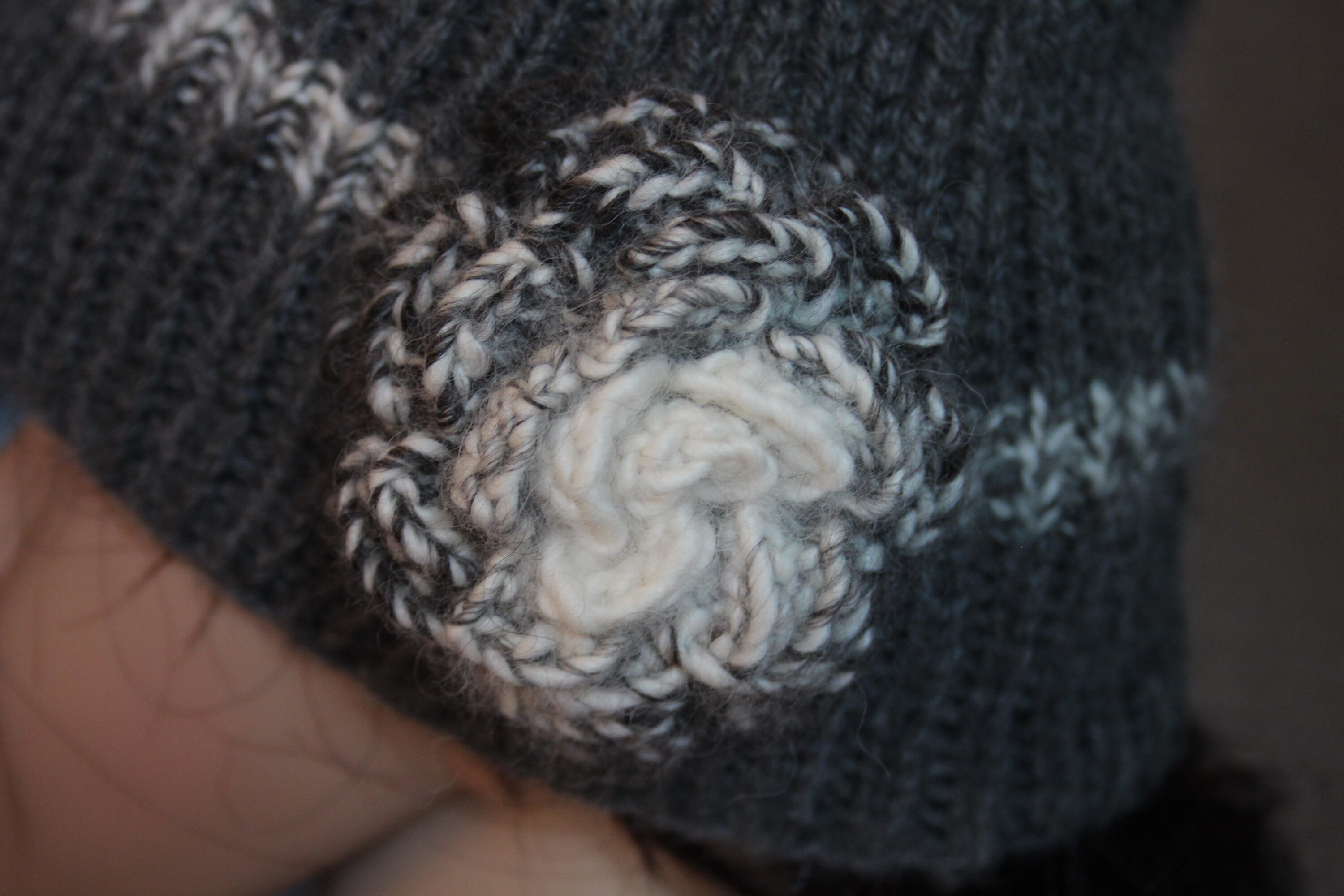
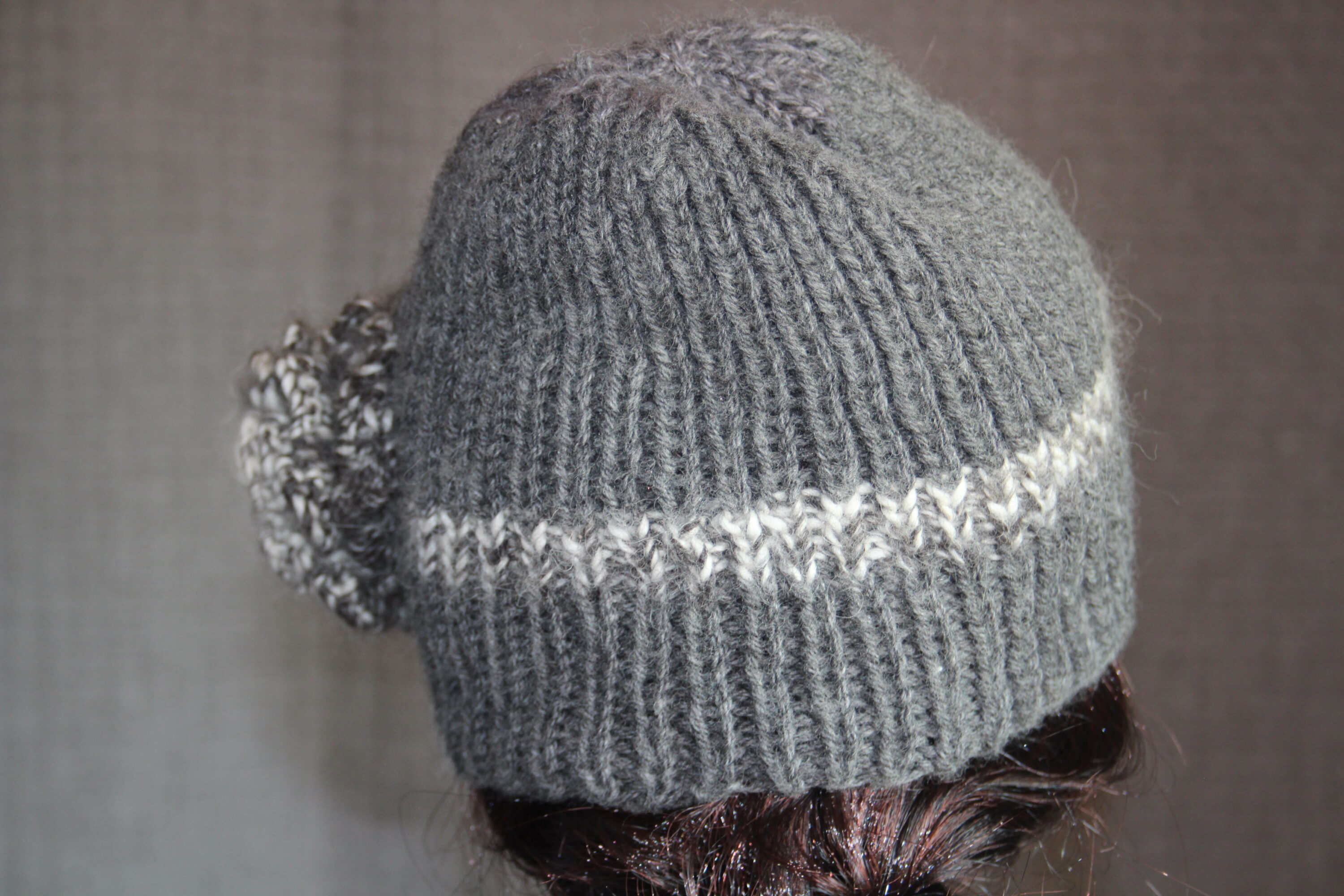

Cloche Hat
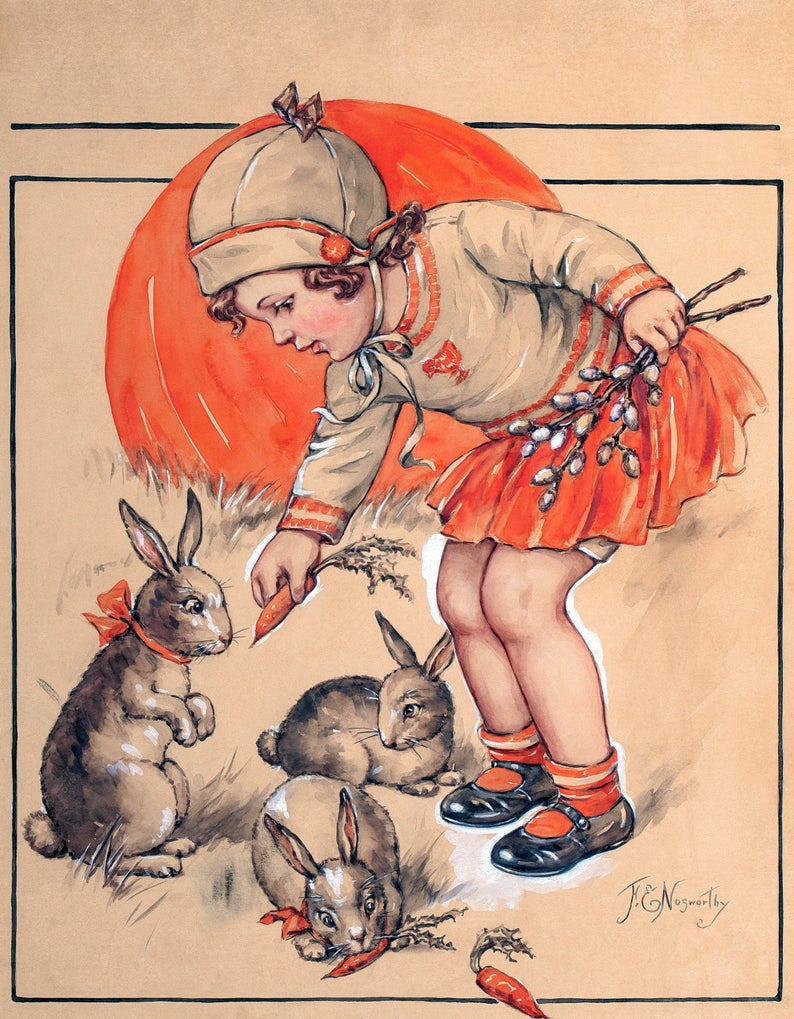
Matching that which the immersion students will wear, this is a very basic beige cotton brushed denim with 100% silk lined comfortable hat in the style of a young girl. It features an AUTHENTIC 1925 resin button as its sole decoration, and will be worn over the hair bow. This would be worn outside, and hung in the cloak room during the school day, while the boy would be worn during school if at all.
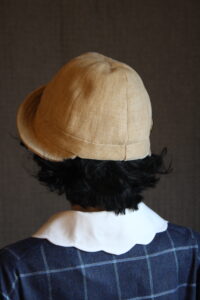
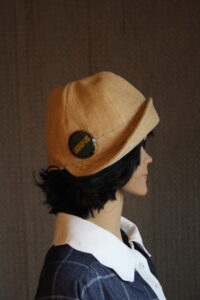

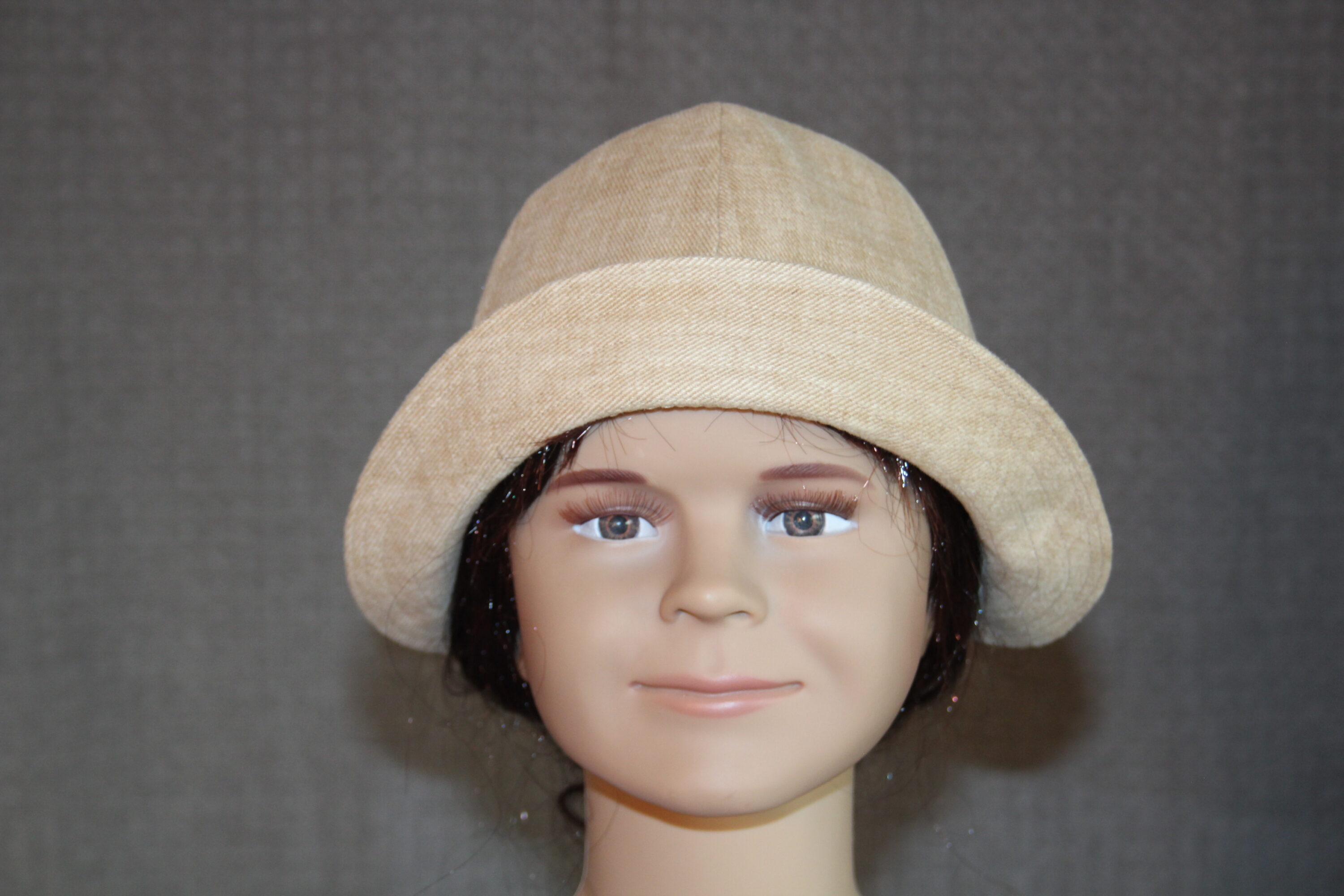
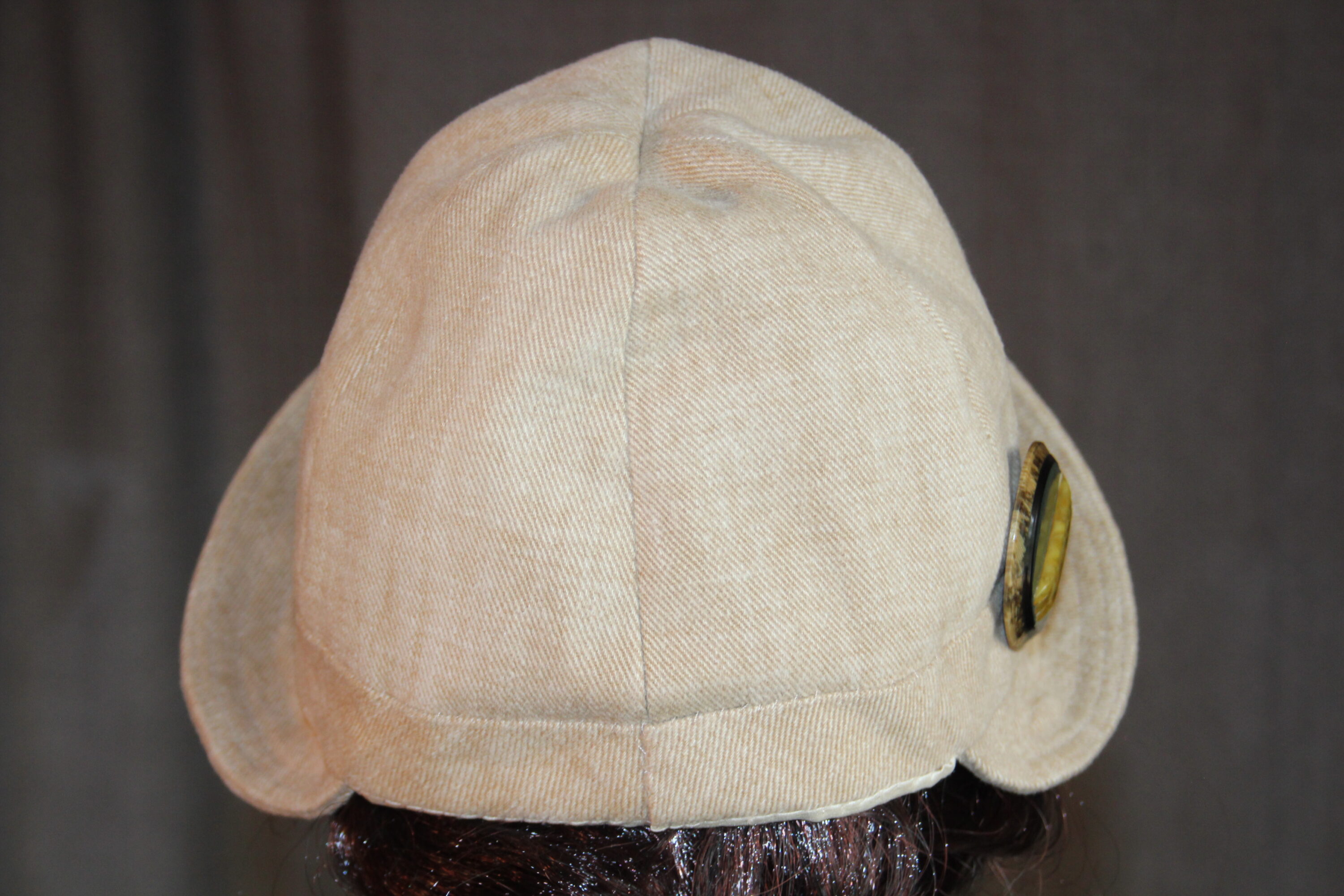
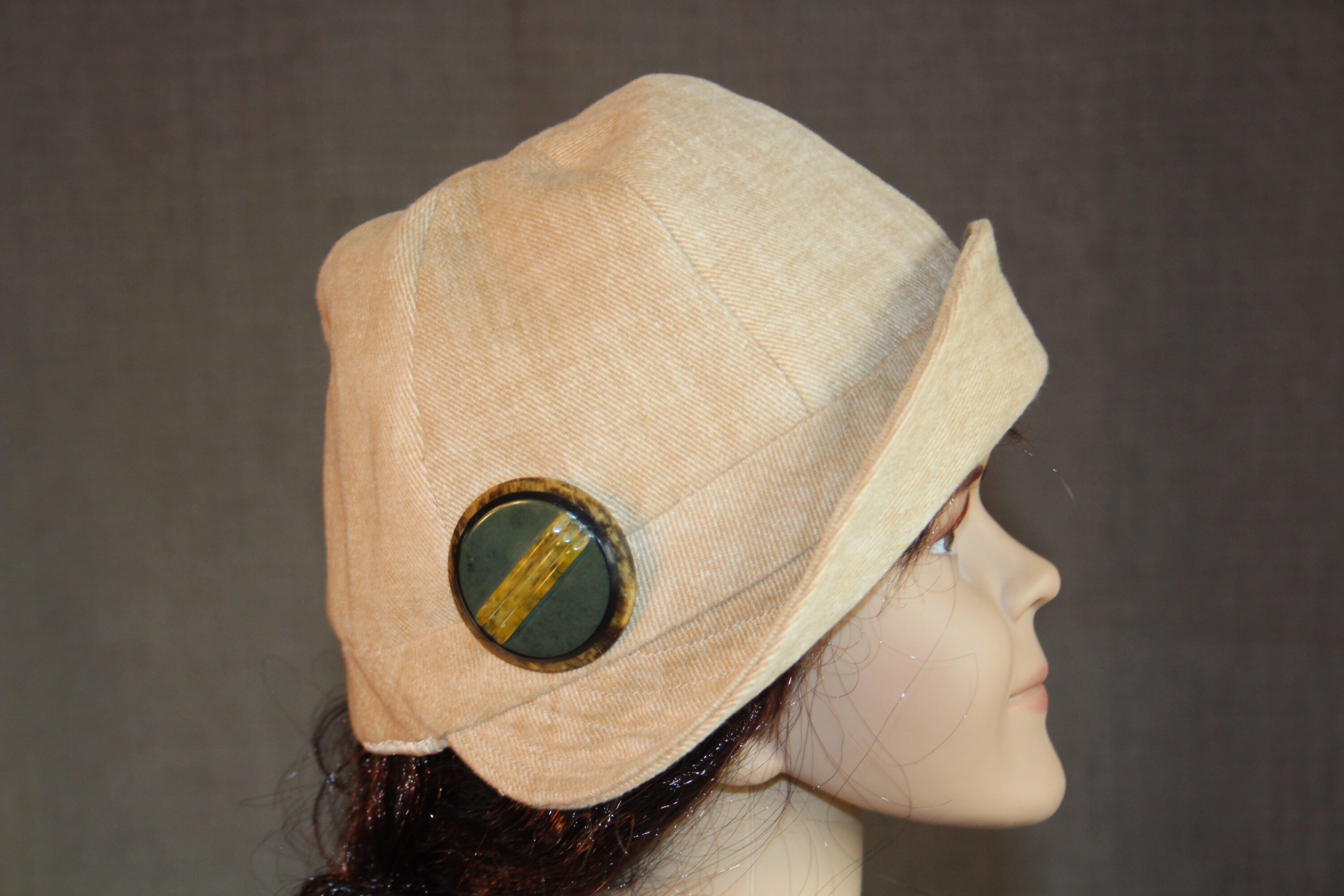
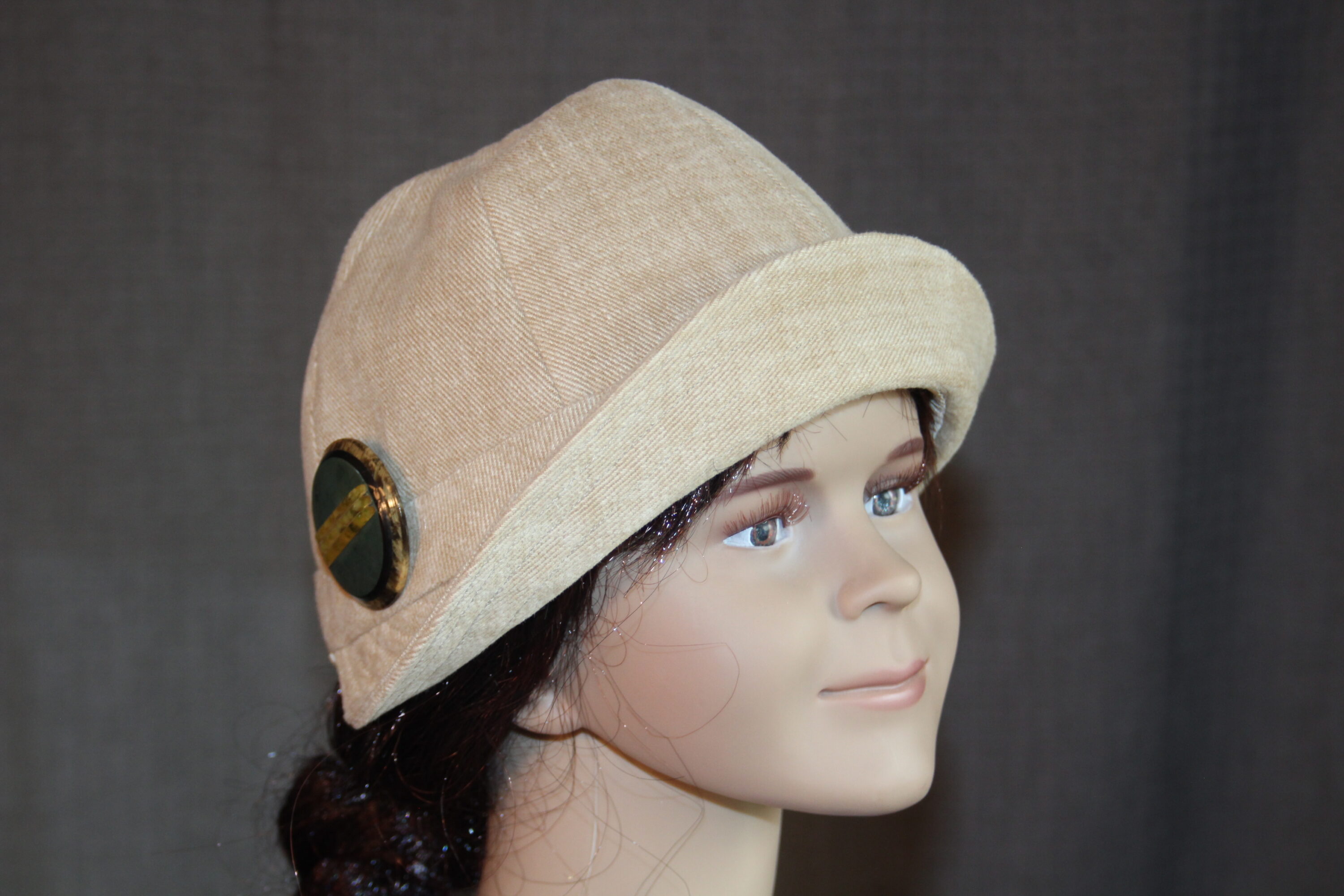
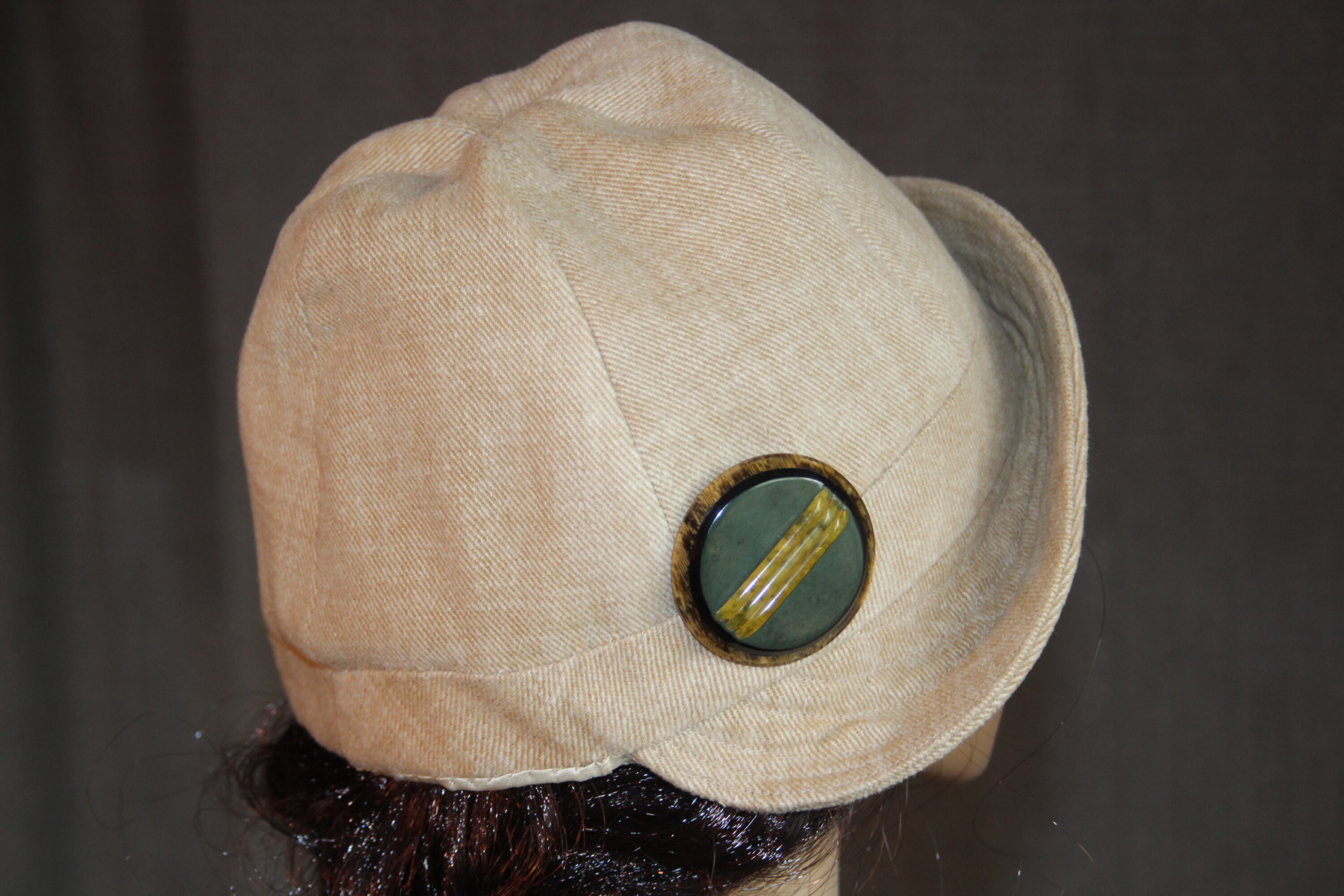
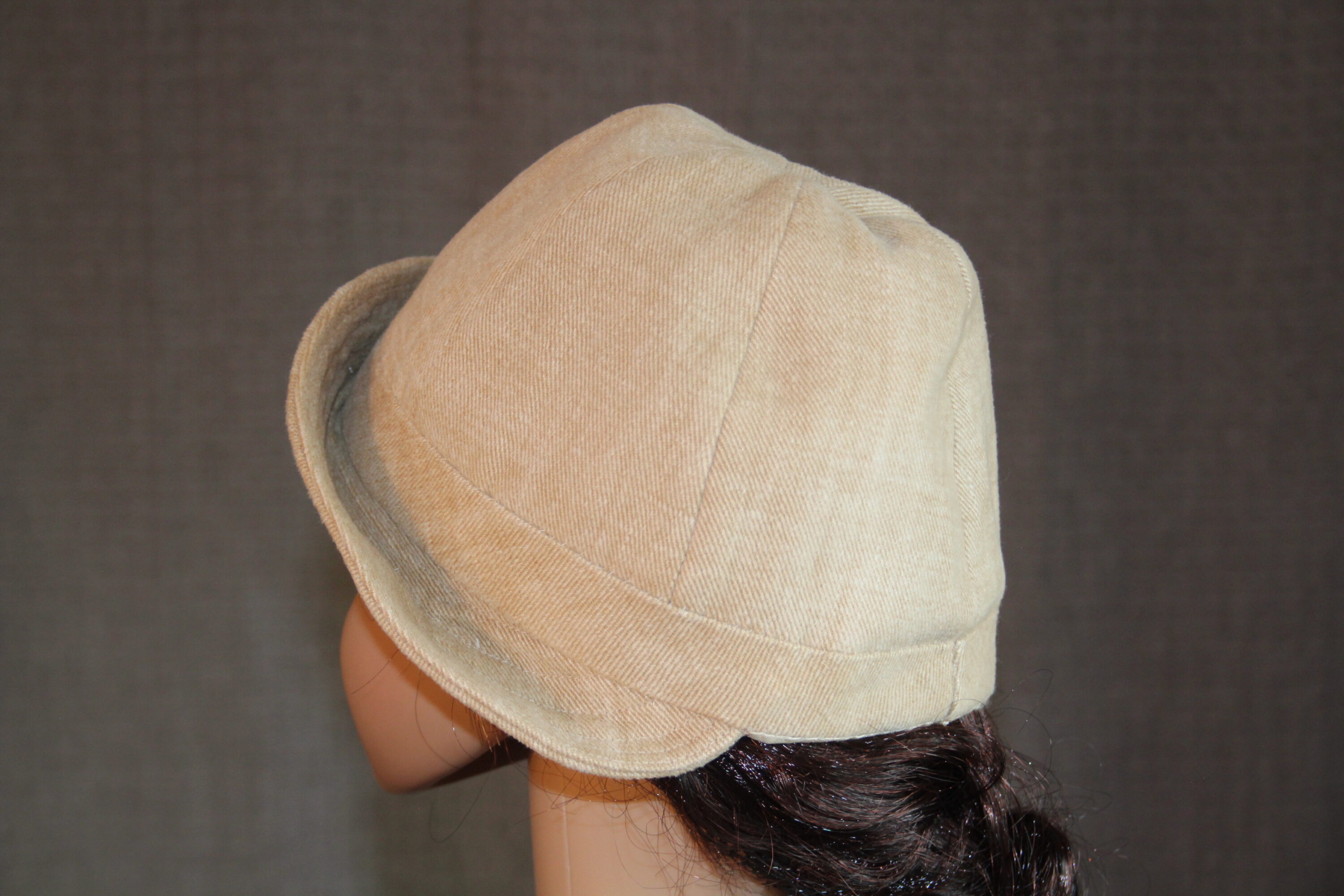
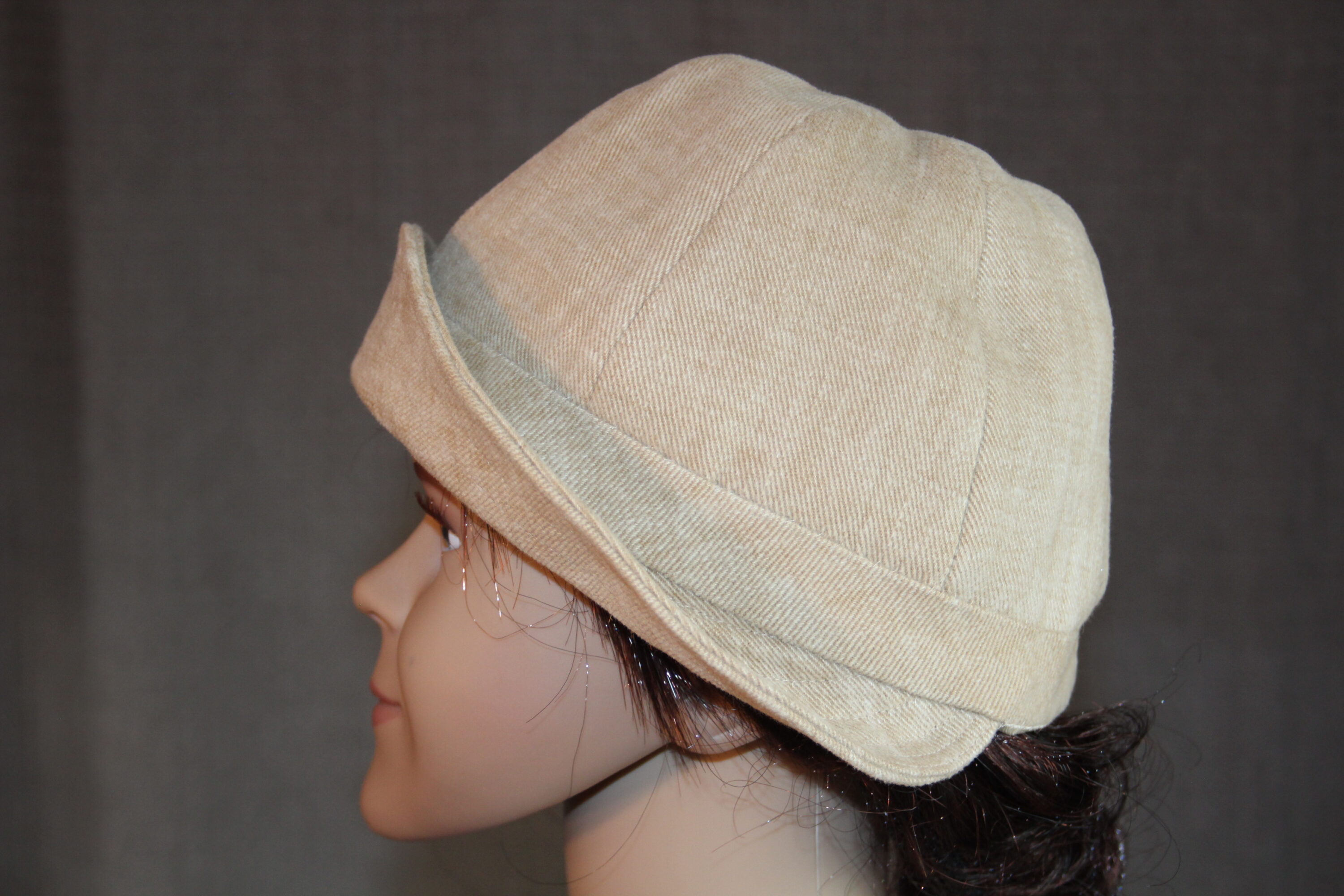
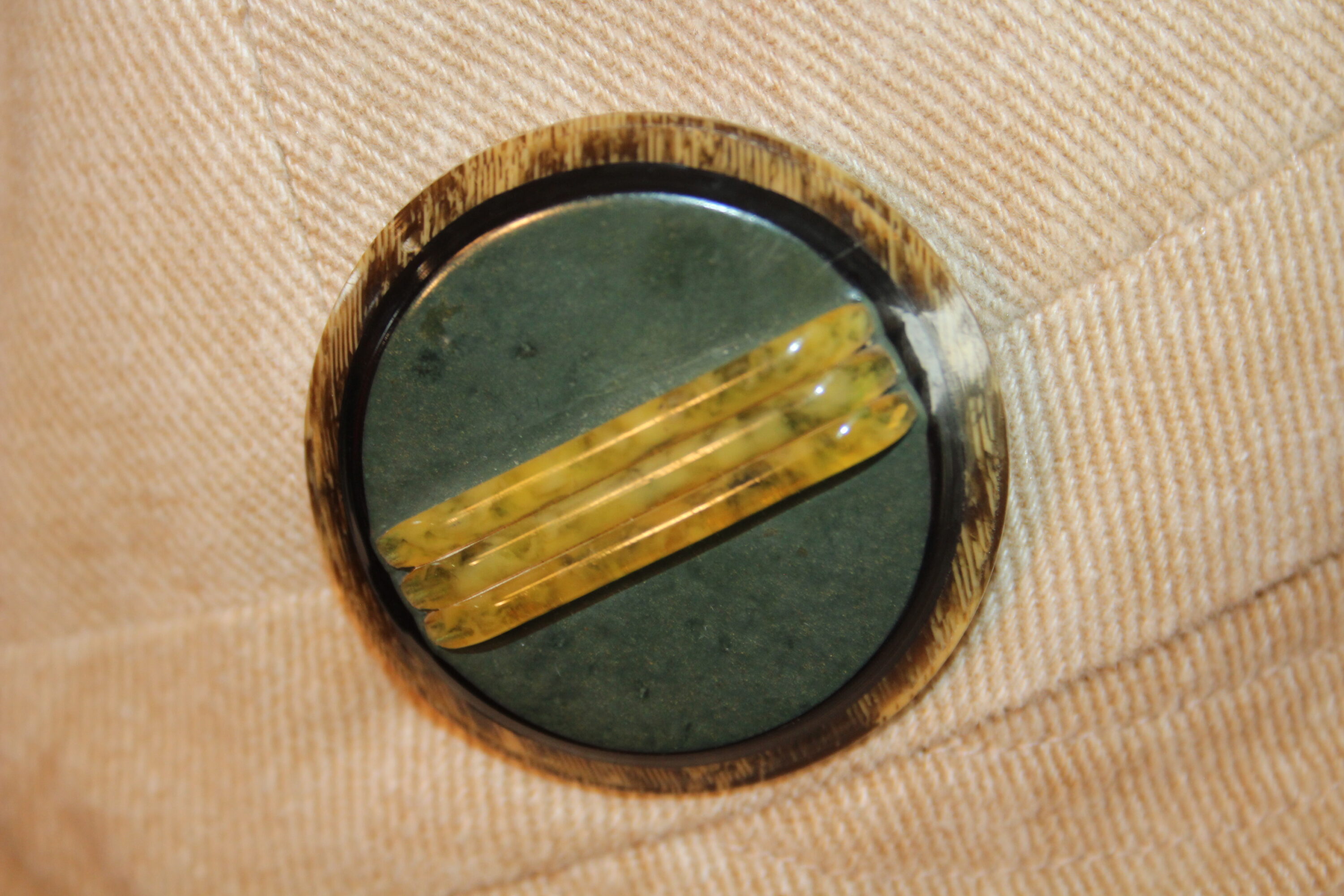
Mary Jane Shoes
These are reproduction “Mary Jane” shoes. They are worn with cotton over the knee socks which a young girl rolled down to wear just under and slightly on the kneecap.
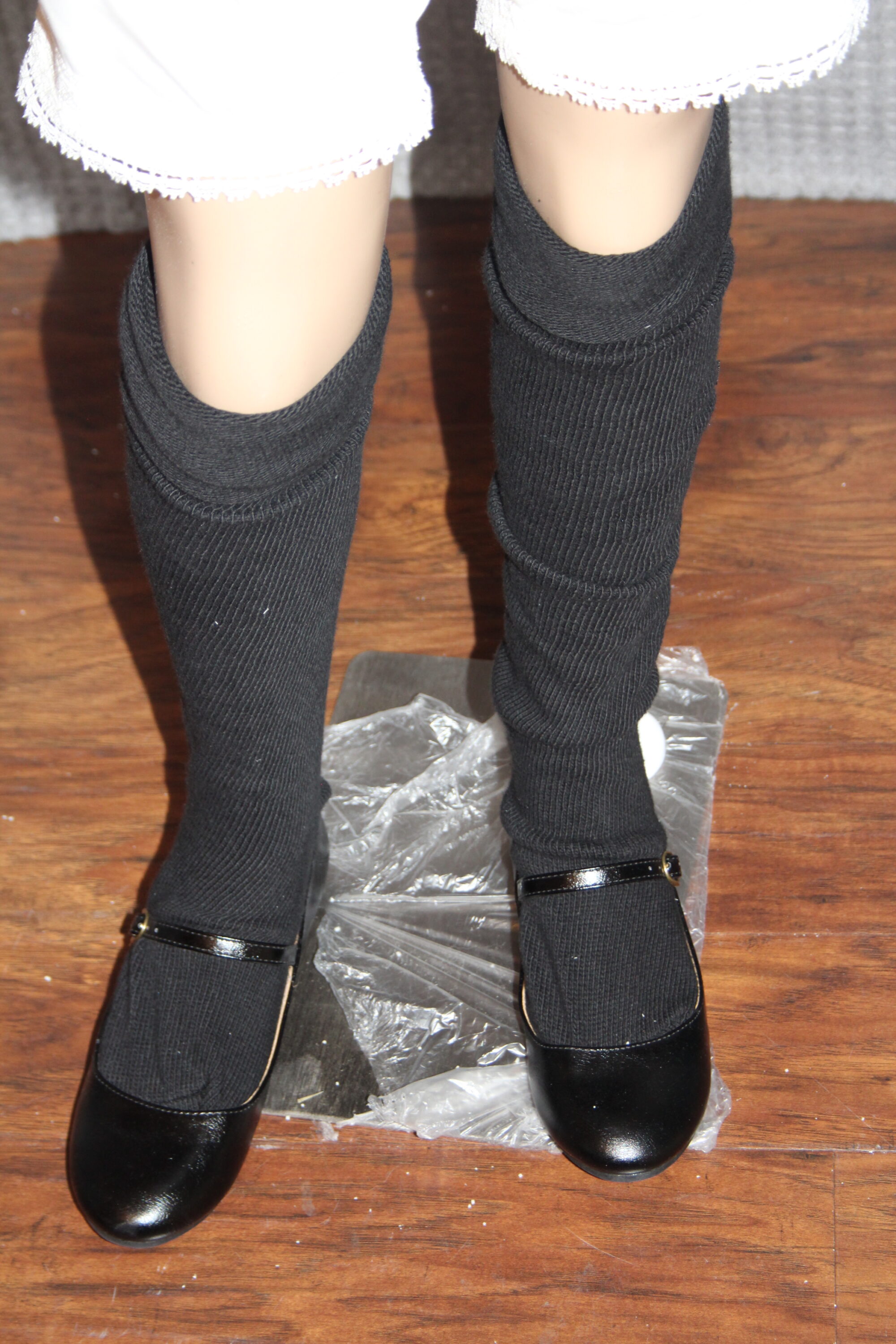
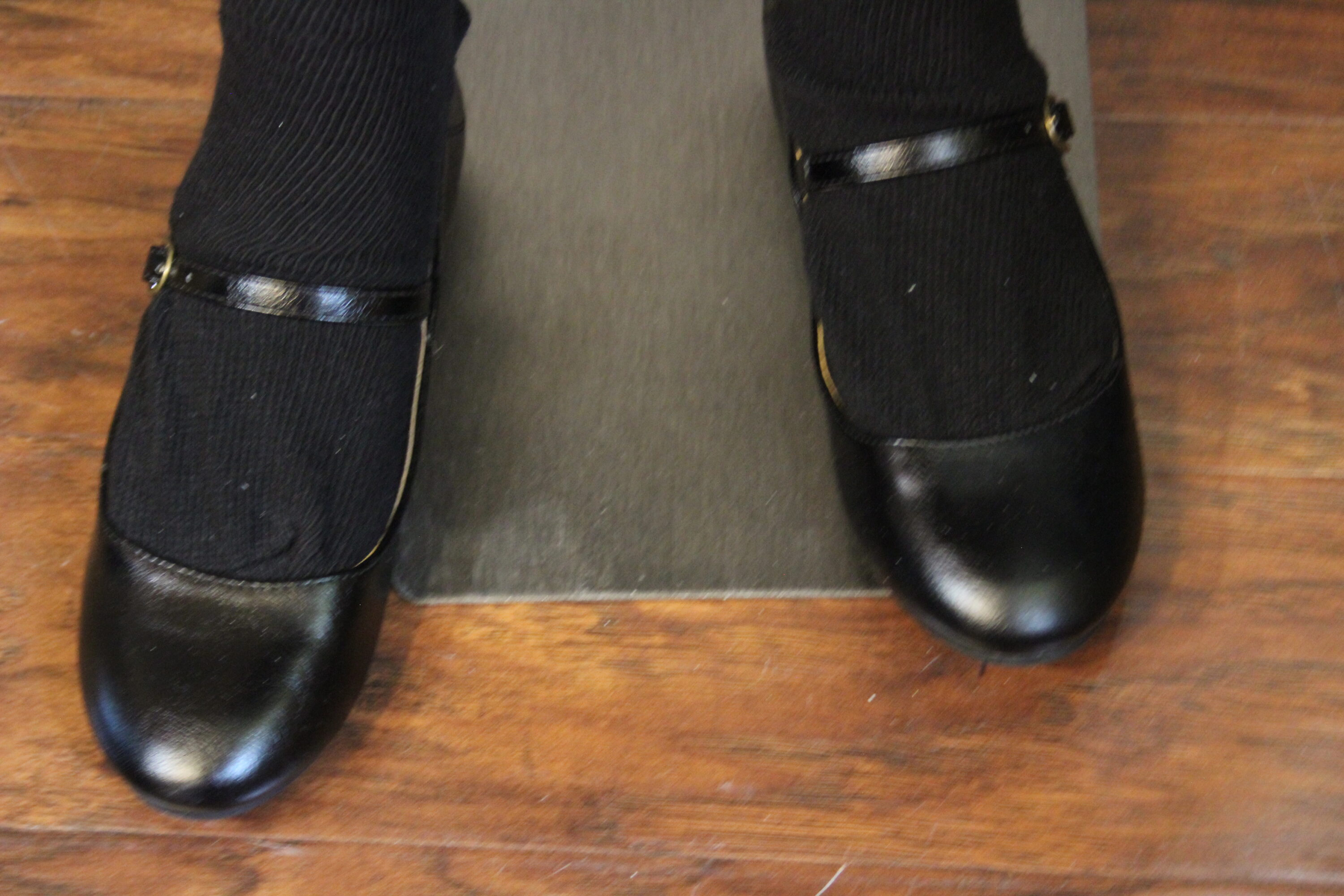
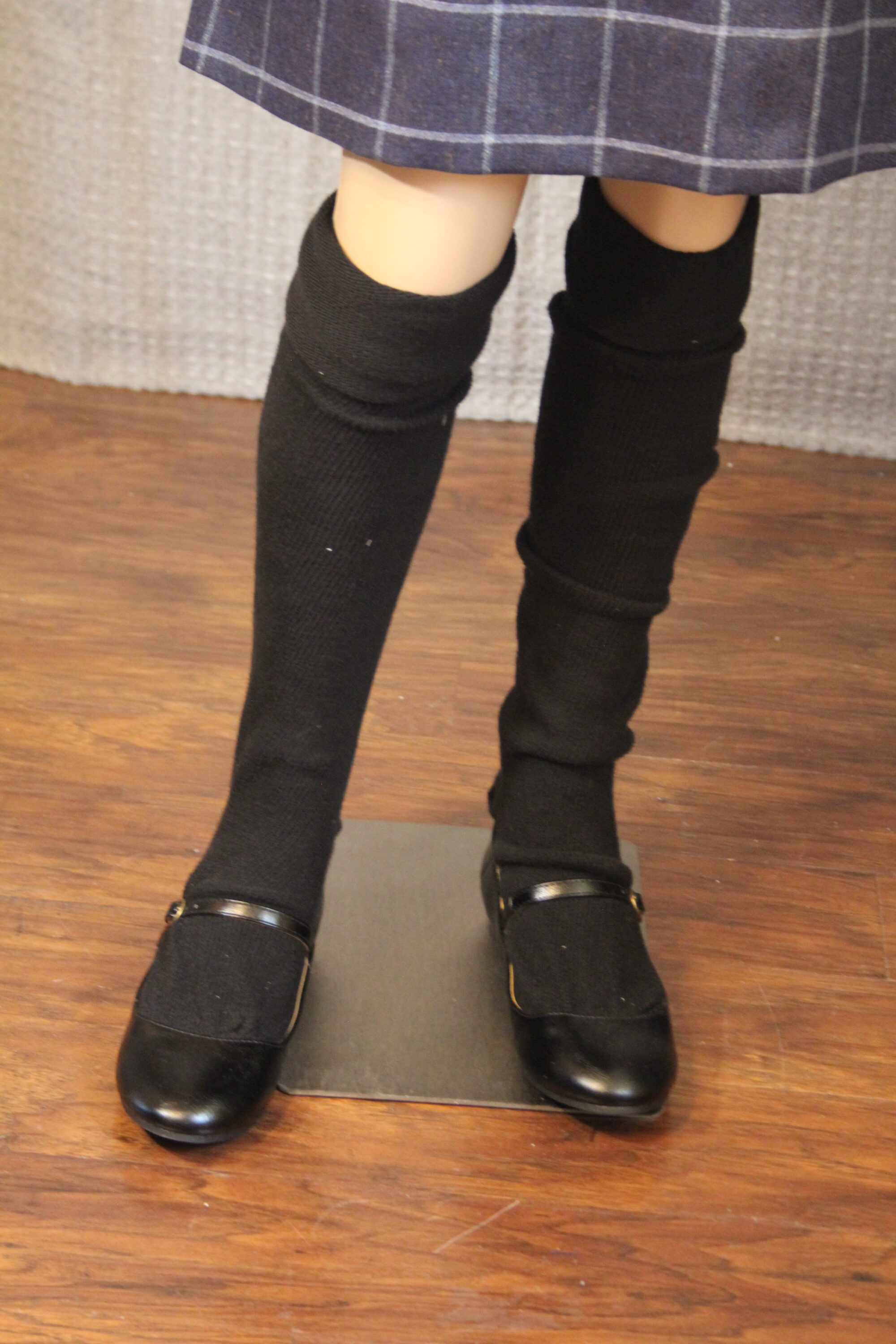
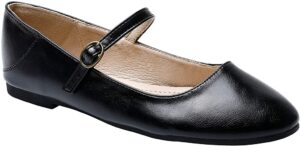
Hats for Visitors
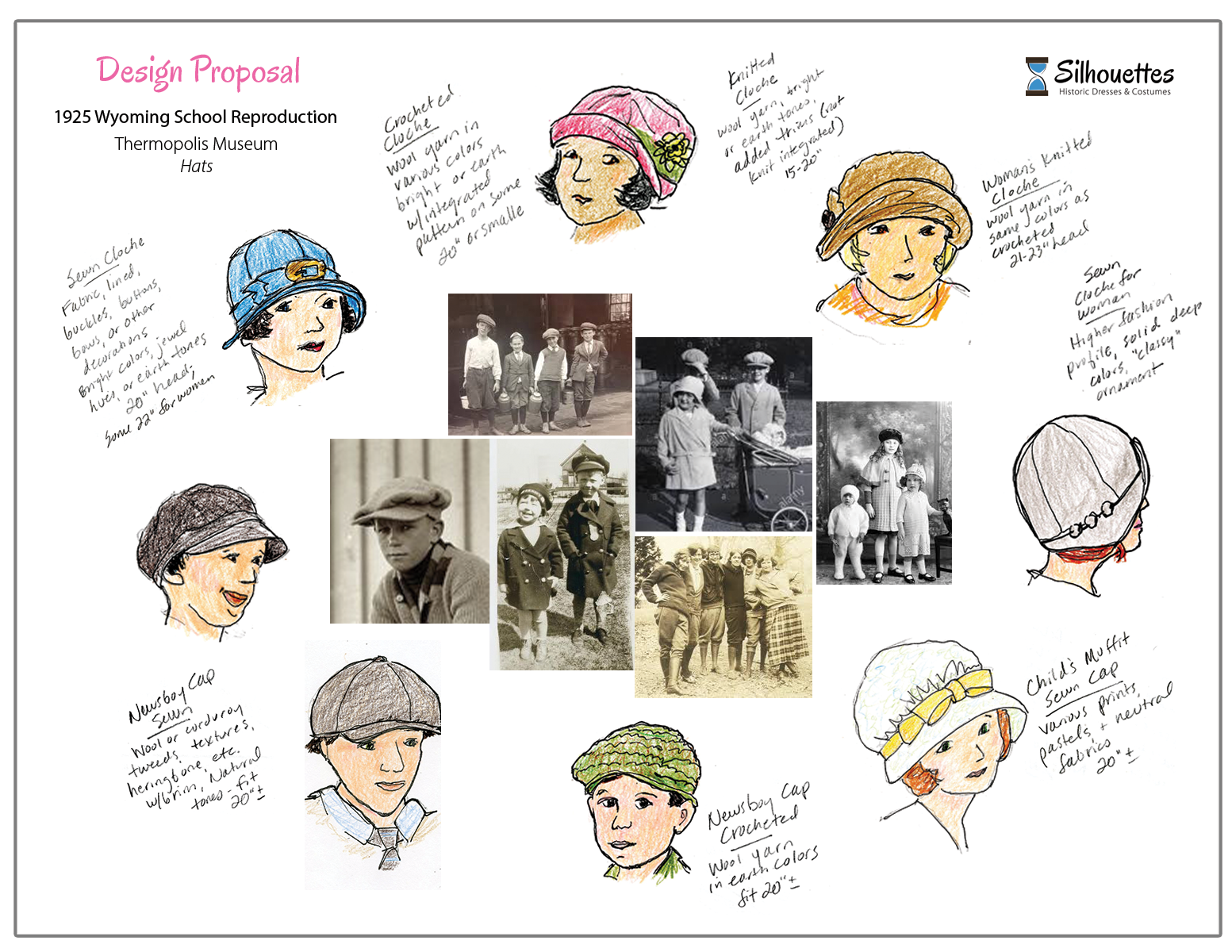
Newsboy
Knitted & Crocheted
100% wool or cotton, these yarns are specifically chosen to replicate those of the day. Patterns are original vintage patterns from the 1920’s. Sizes from 20-23″, but much bigger because they stretch. Colors are also historically accurate. Overall, combined with the sewn caps, they have a classroom color scheme of neutral and earth tones specific to the era.
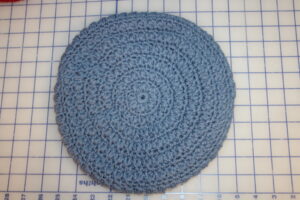
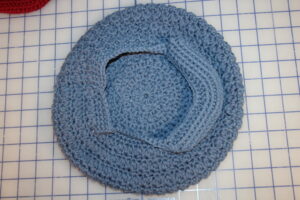
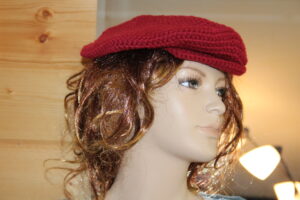
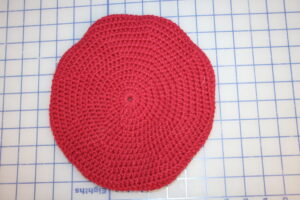
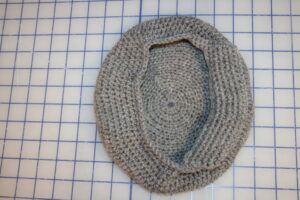
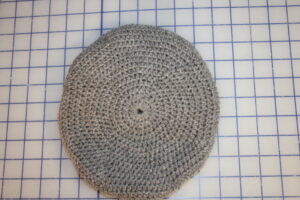
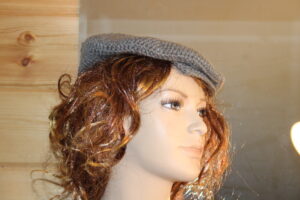

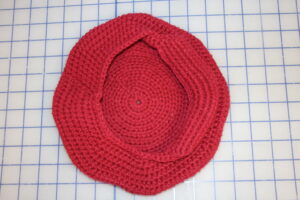
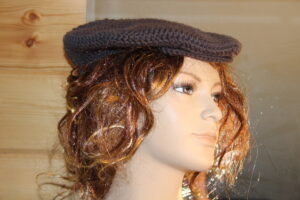
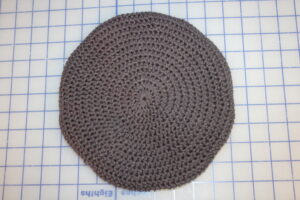

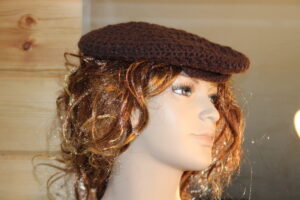
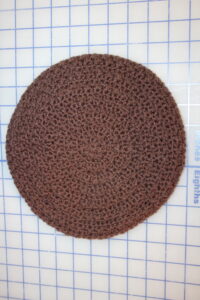
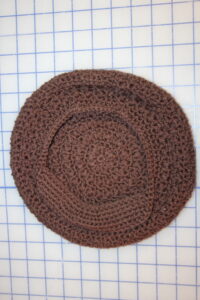
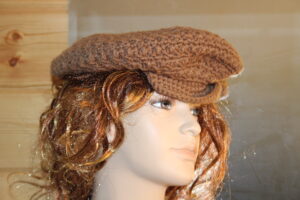
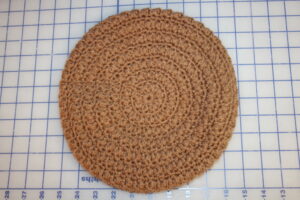
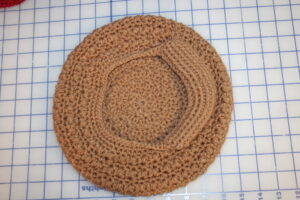
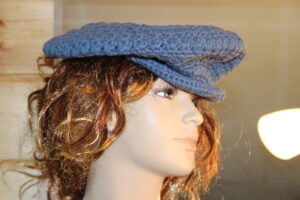
Sewn
100% wool or cotton, these are made using vintage instructions and patterns taken from extant garments. They are 100% silk lined or polyester. The ones with bands are reversible. All have buttons. Those without bands have a ribbon band. Sized from 18″ hat size to 23″ with most being 20-21″ which is statistically correct for 4th graders.
Colors and textures are specifically selected to replicate 1925 garments which can still be found today.
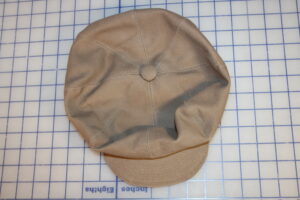
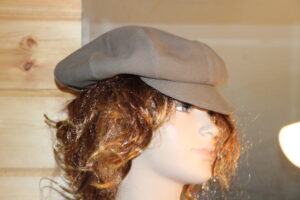
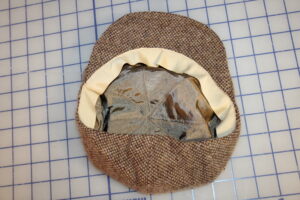
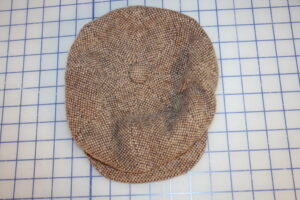
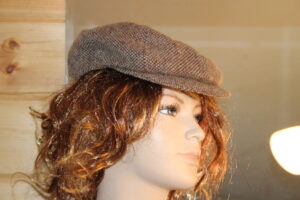
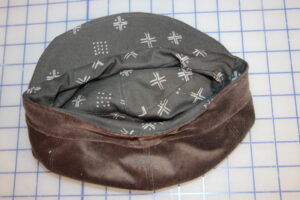
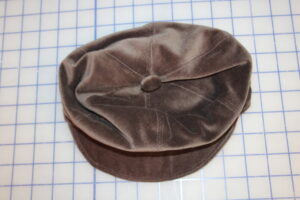
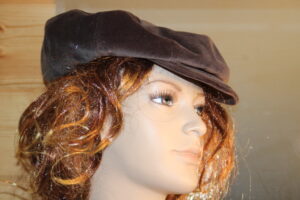
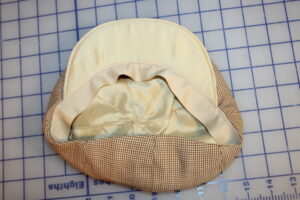

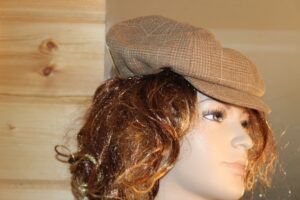
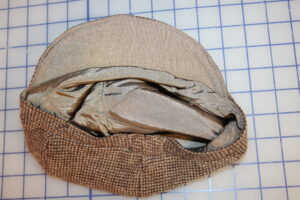
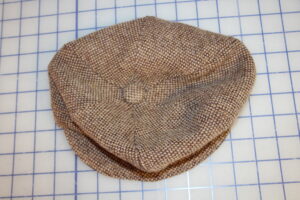

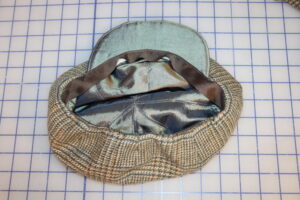
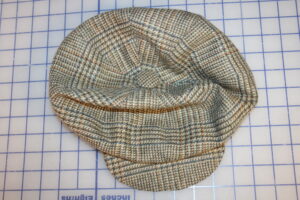
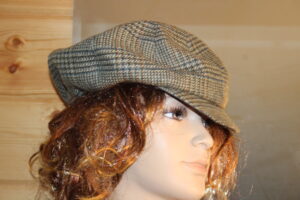
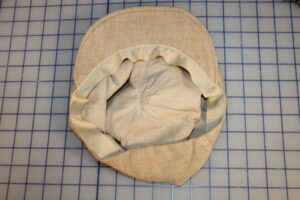
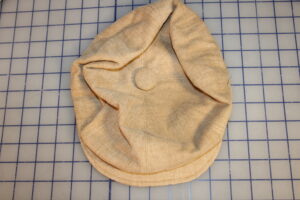
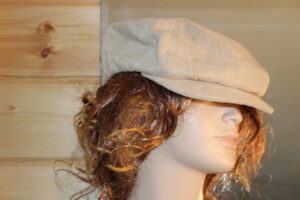
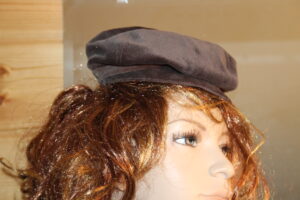
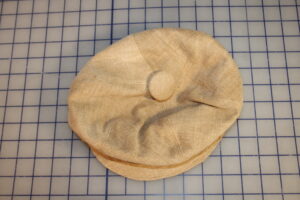

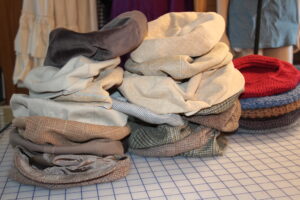

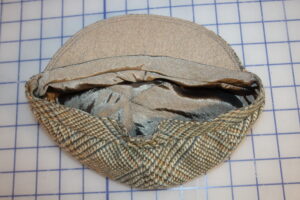
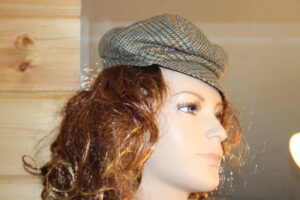
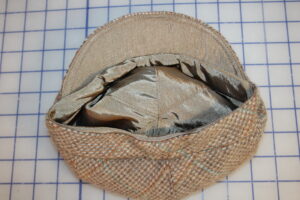

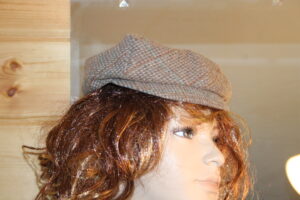

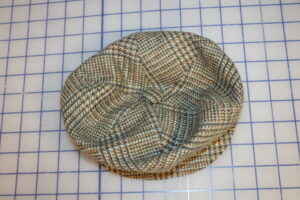
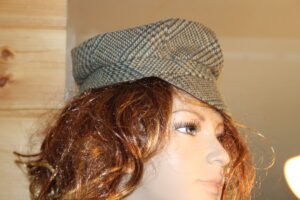
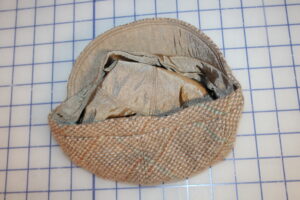
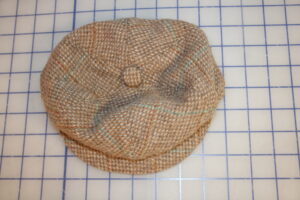
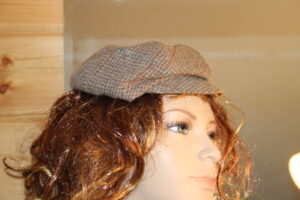
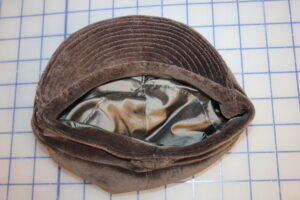
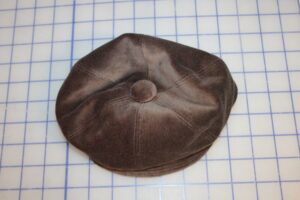
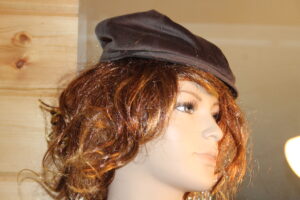
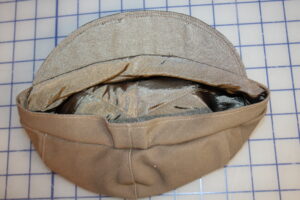

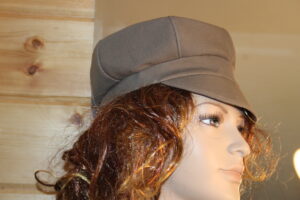
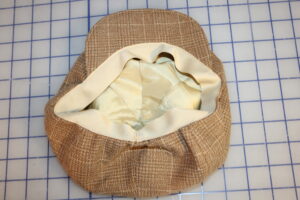
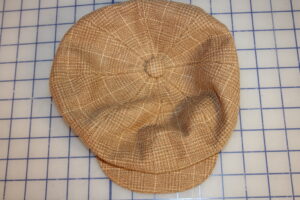
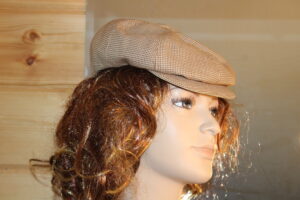
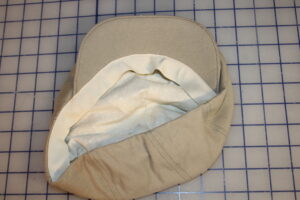
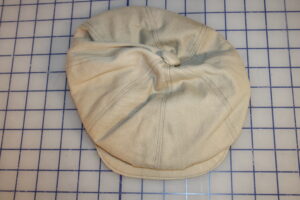
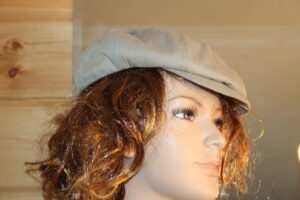
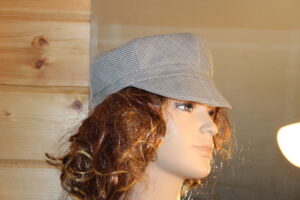
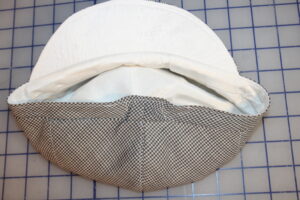
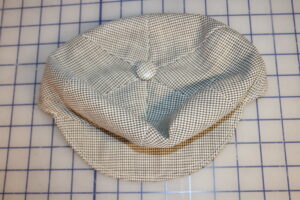
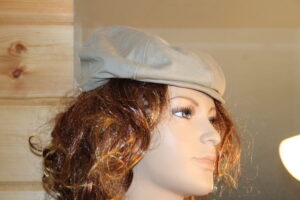

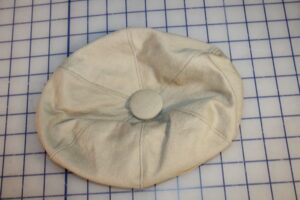
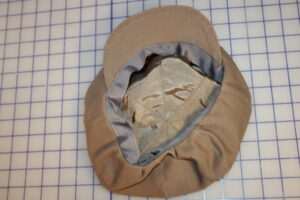
Cloche Hats for Girls
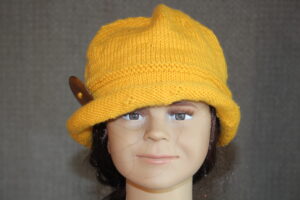
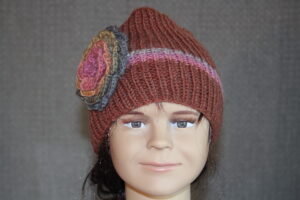
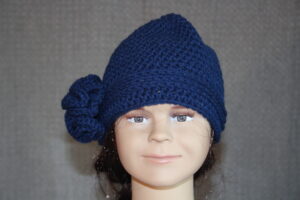
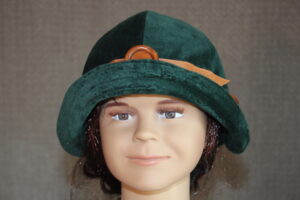

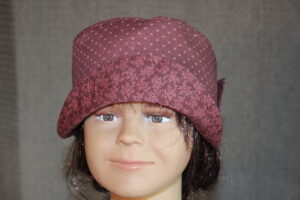
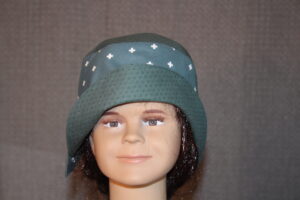
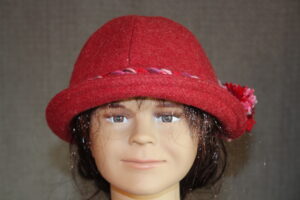
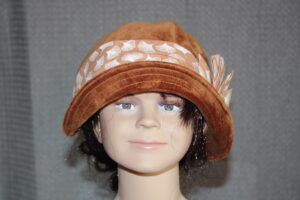
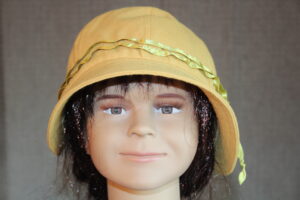
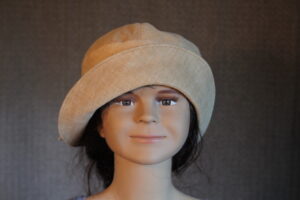
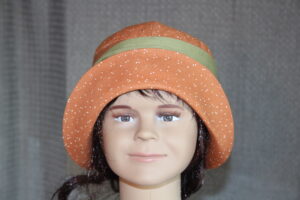

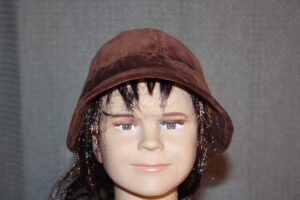
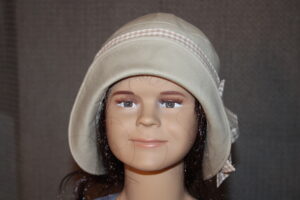

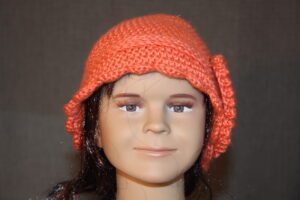
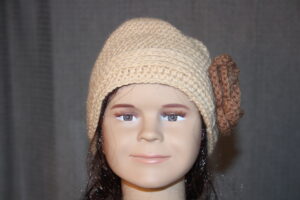
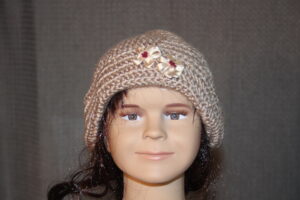
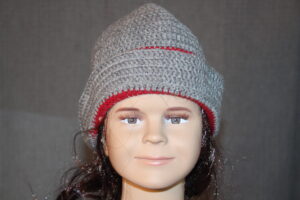
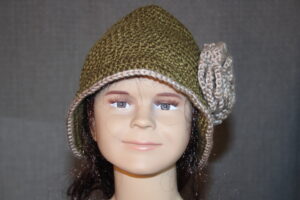
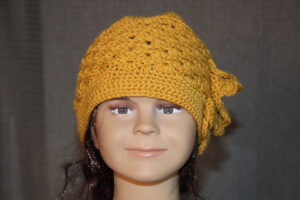
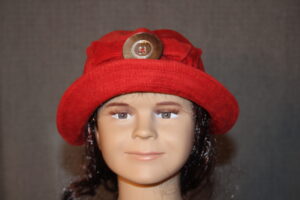
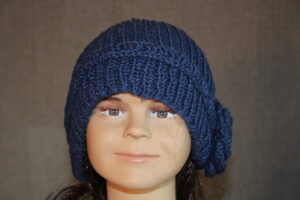
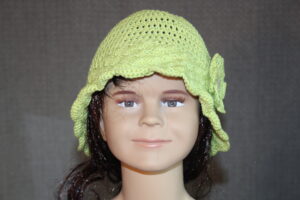
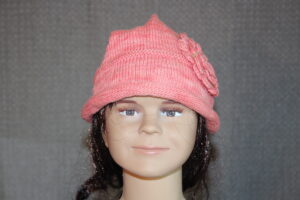
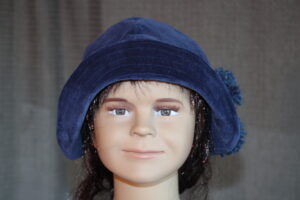
There were MANY different styles of cloche hats, with a whole world of imagination lent to the decoration and adornment of such in the mid-1920’s. We draw from extant examples of knit, crocheted, and sewn, using vintage patterns; notably patterns developed by Mary Pickens in the 1920’s which were adapted for use in the “Downton Abbey” series.
While these are still based on the earth tones the same as the boys, we add the “jewel tones” (sapphire, ruby, emerald, etc.) and more color than with a newsboy hat. These will coordinate with the aprons and smocks to some extent, although these are outdoor hats.
We keep them simple, although there are a few fun puff balls and folding ribbon designs taken from magazine instructions at the time. They will all appear to be too large, as they are to be worn down over the eyes and covering the entire head.
All of these are painstakingly HANDMADE by real artisans experienced in the old crafts. These would have largely been homemade in the ’20’s Wyoming, although they might have been purchased from a mercantile as were in downtown Cody, or through a catalog too.
Knitted & Crocheted
Patterns for knit and crocheted hats are taken from actual 1920’s instructions as were published in magazines and newspapers at the time. They have been adapted by pattern experts who copied extant garments and reproduced instructions for ease in the modern construction. These instructions are still confusing, and the were made by very advanced artisans. Crochet was a little easier than knit because of the rounded shape which has to either be worked on 3 needles in knitting, or done through complicated yarn overs and increasing or decreasing stitches.
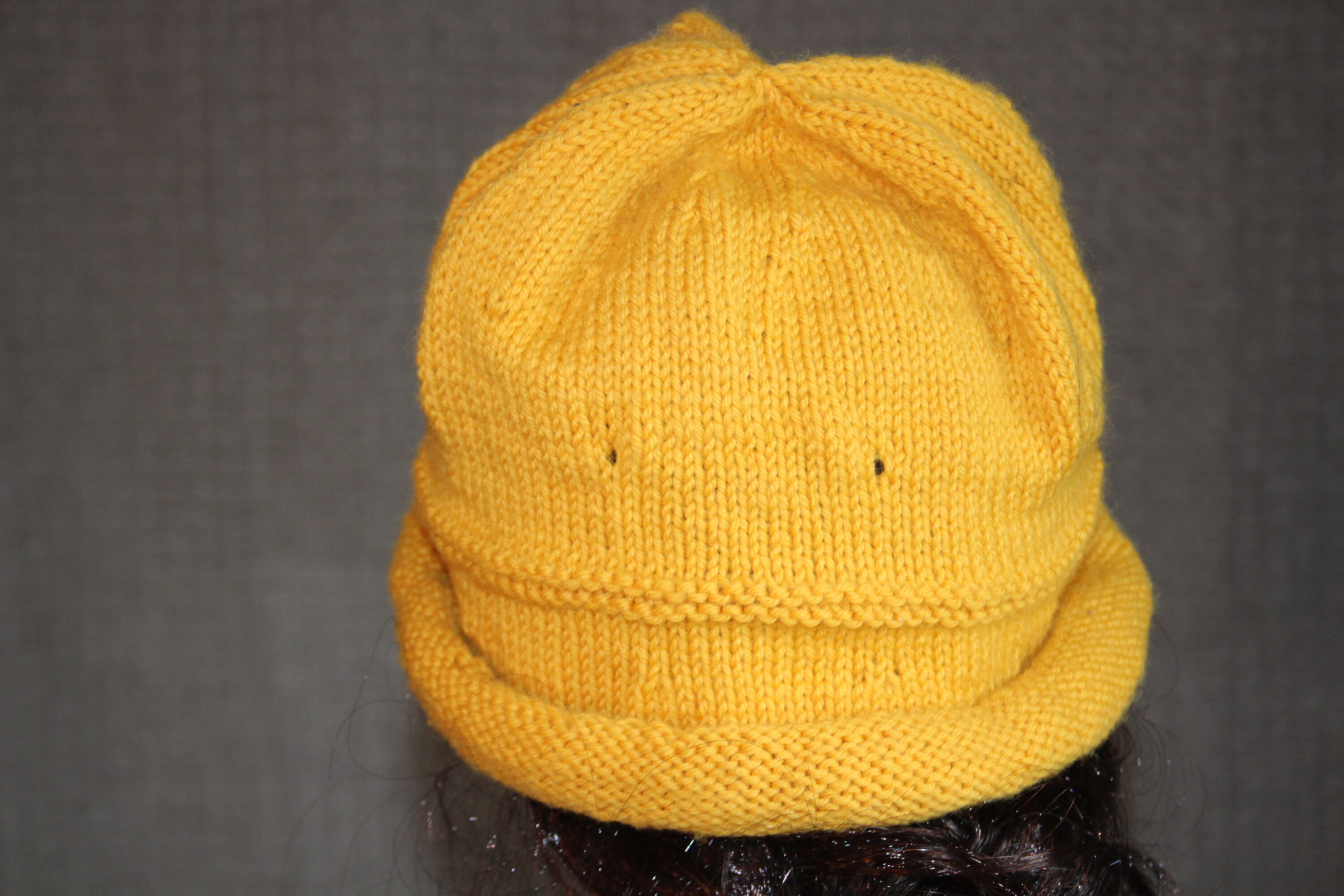
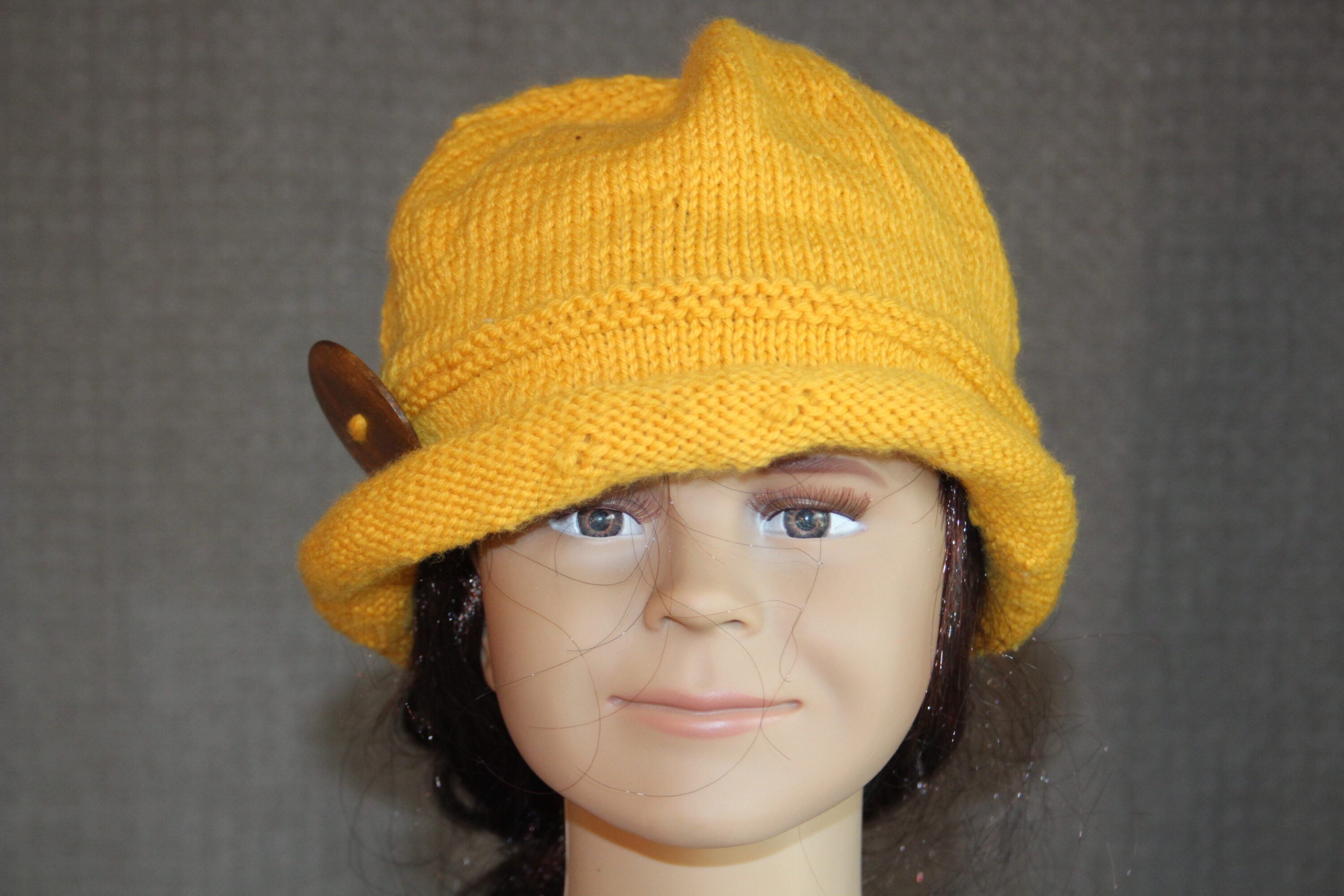
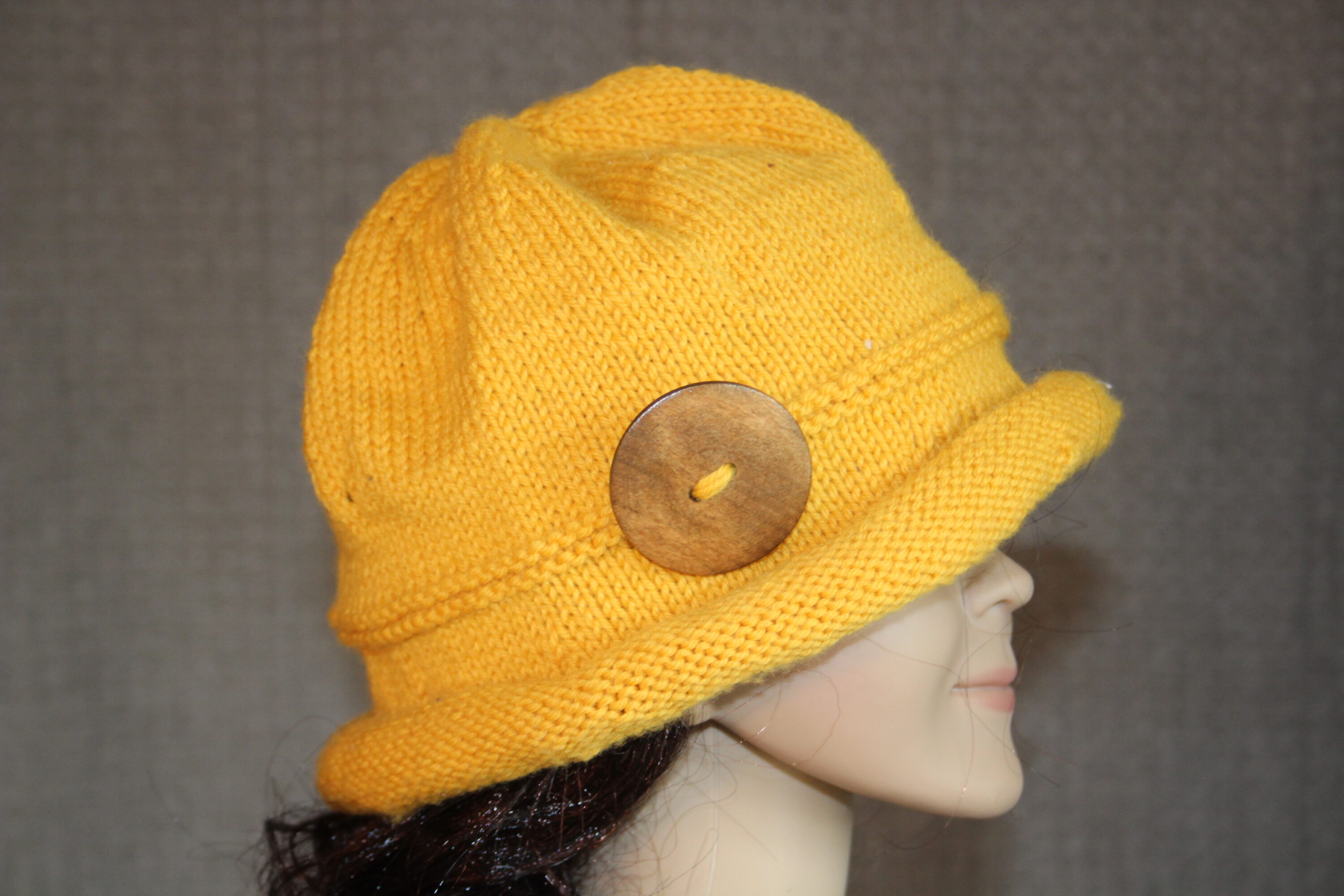
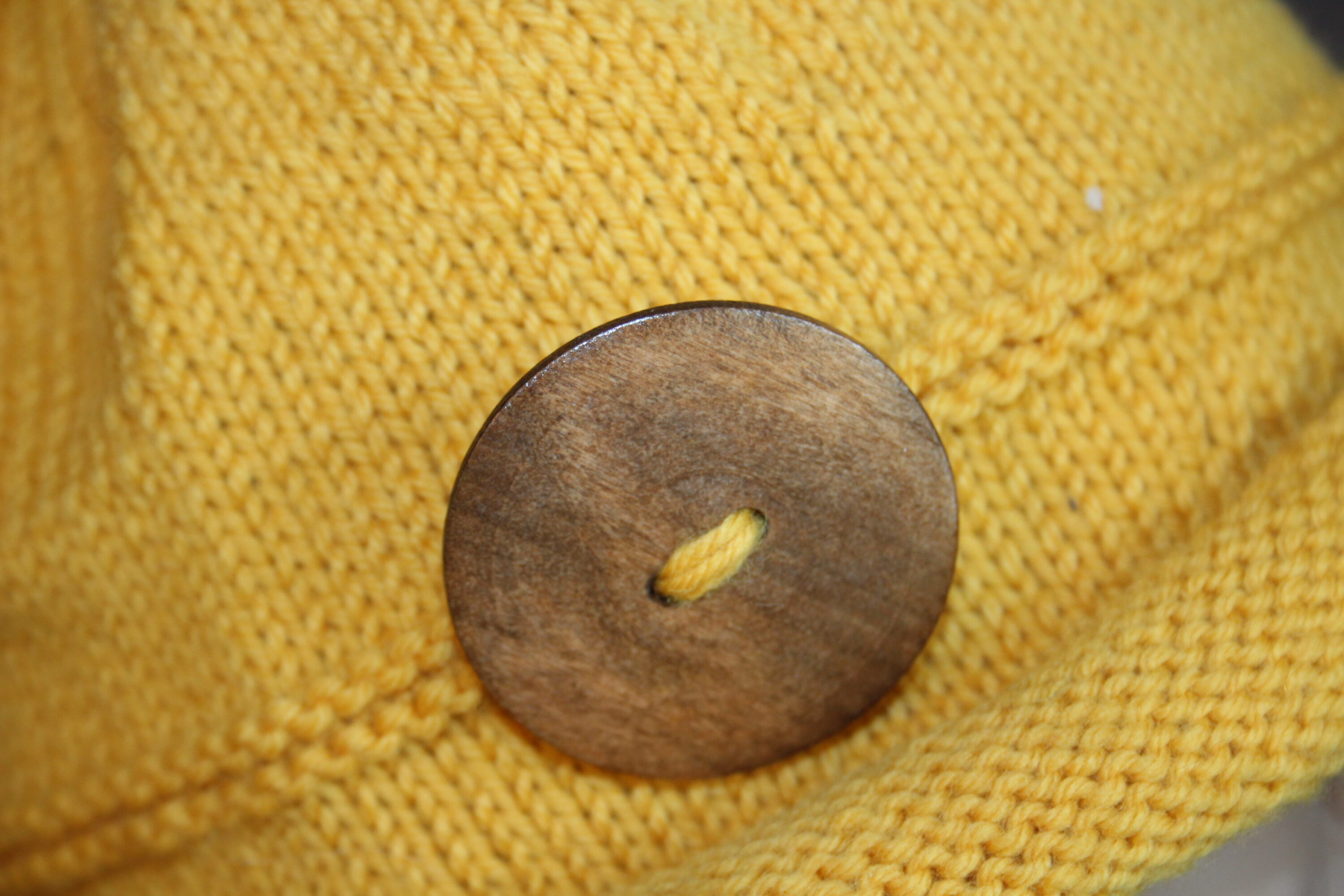
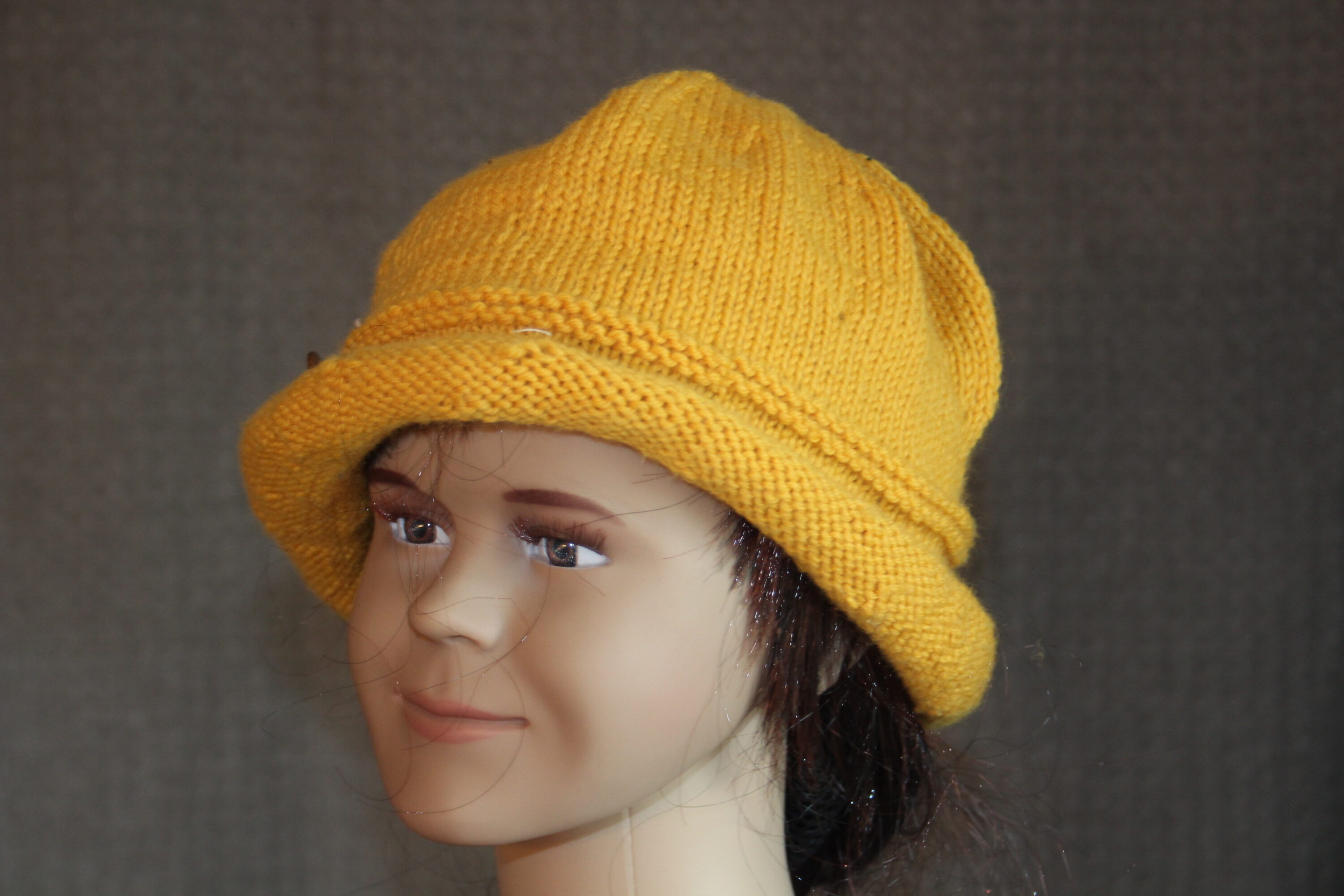

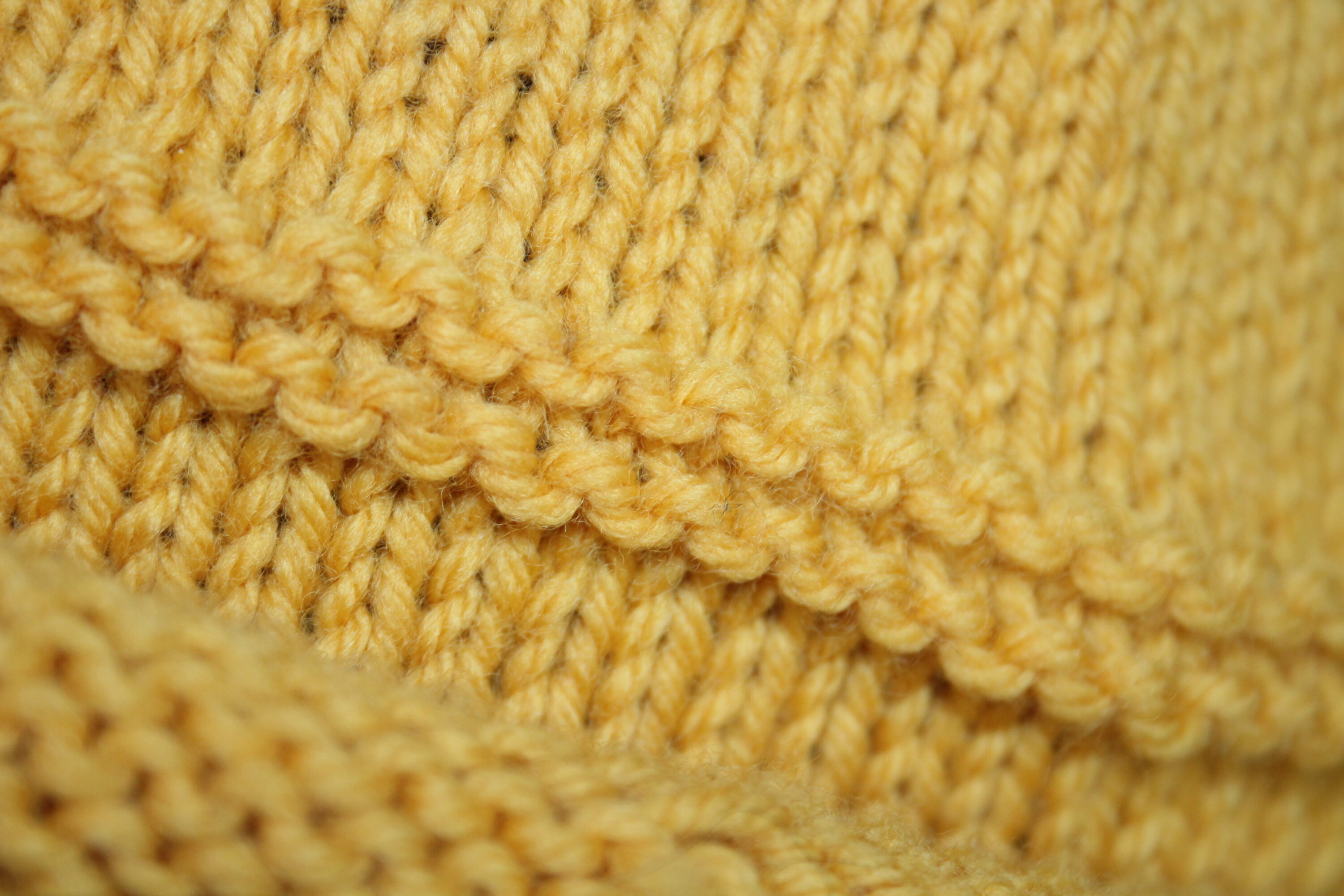
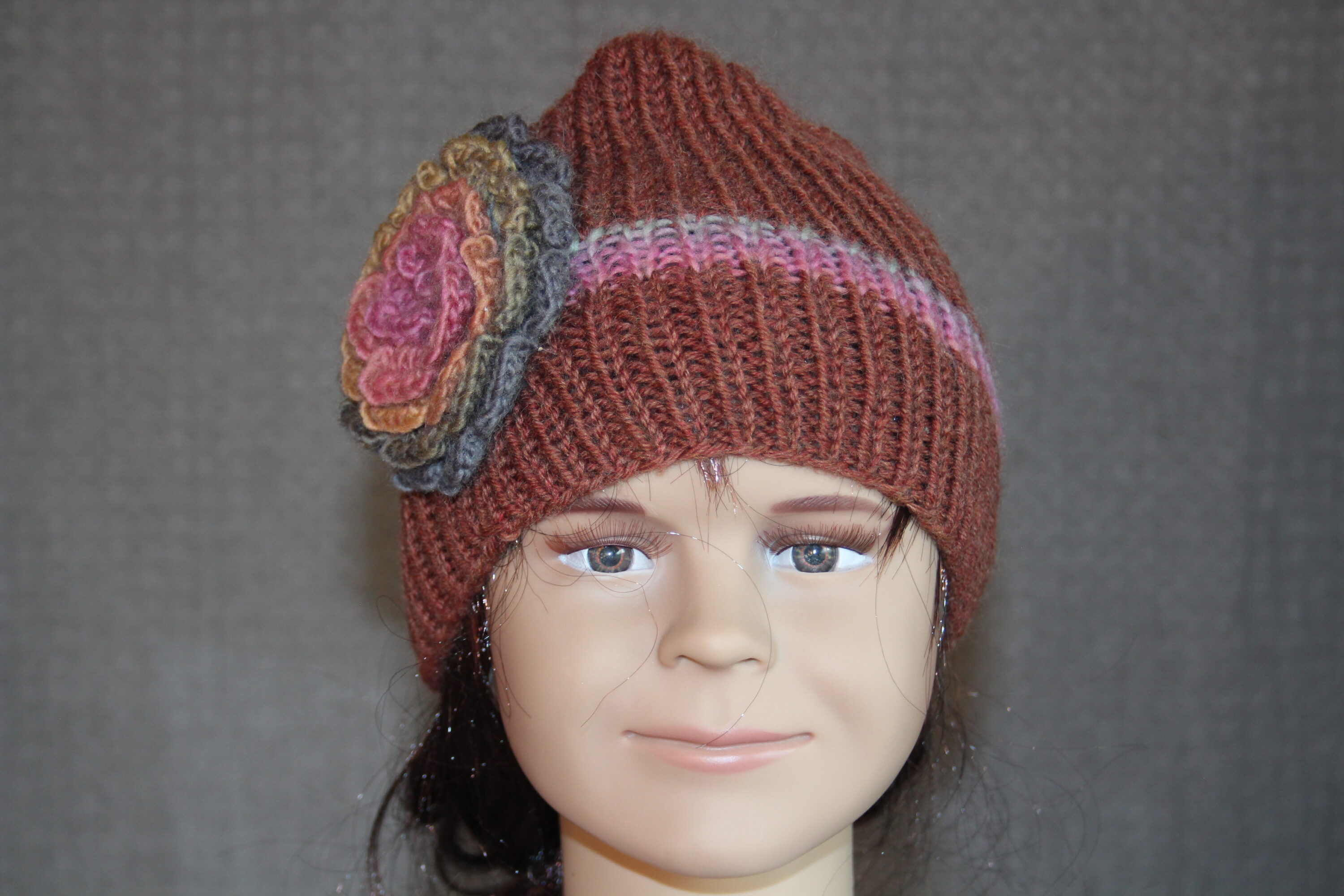
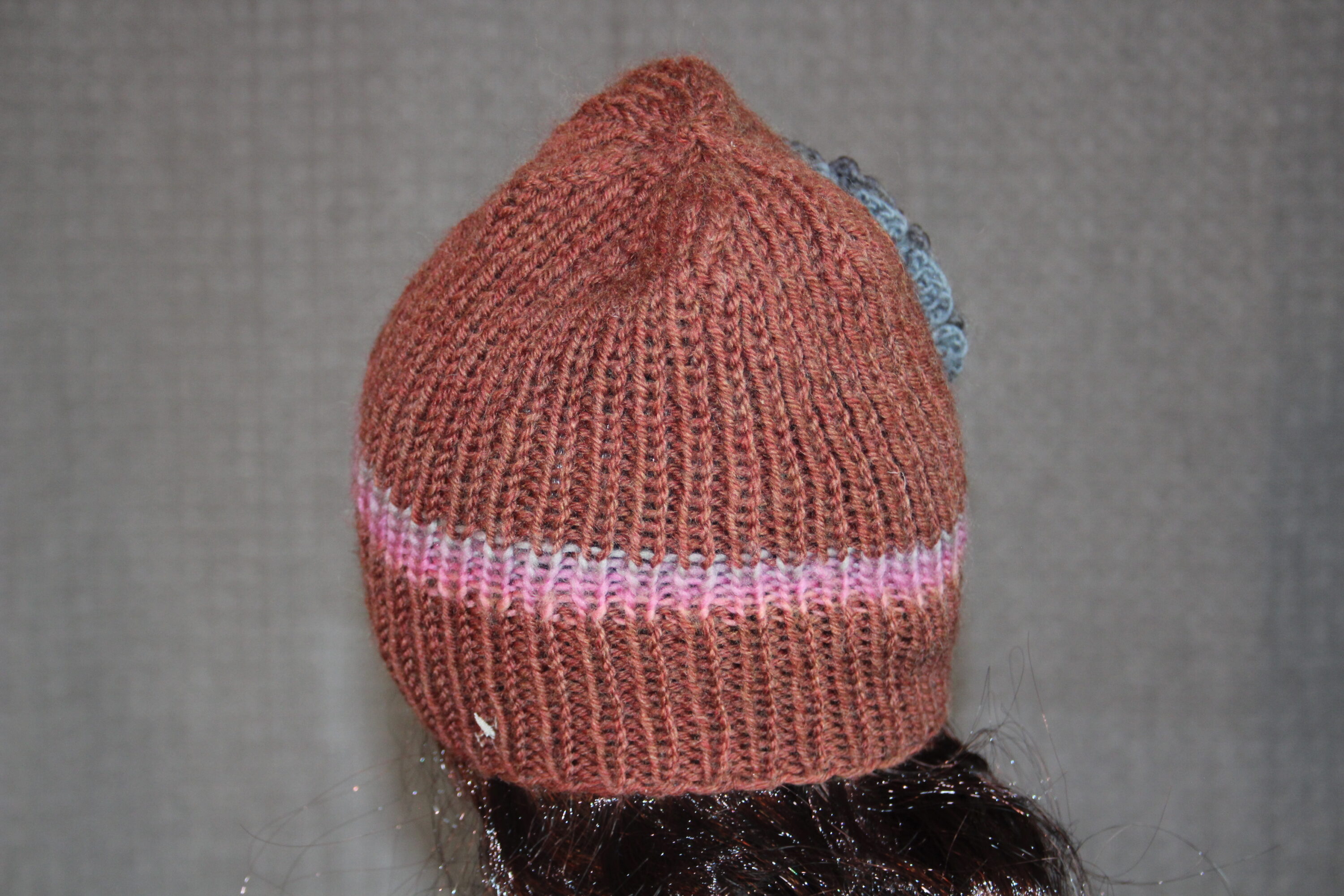
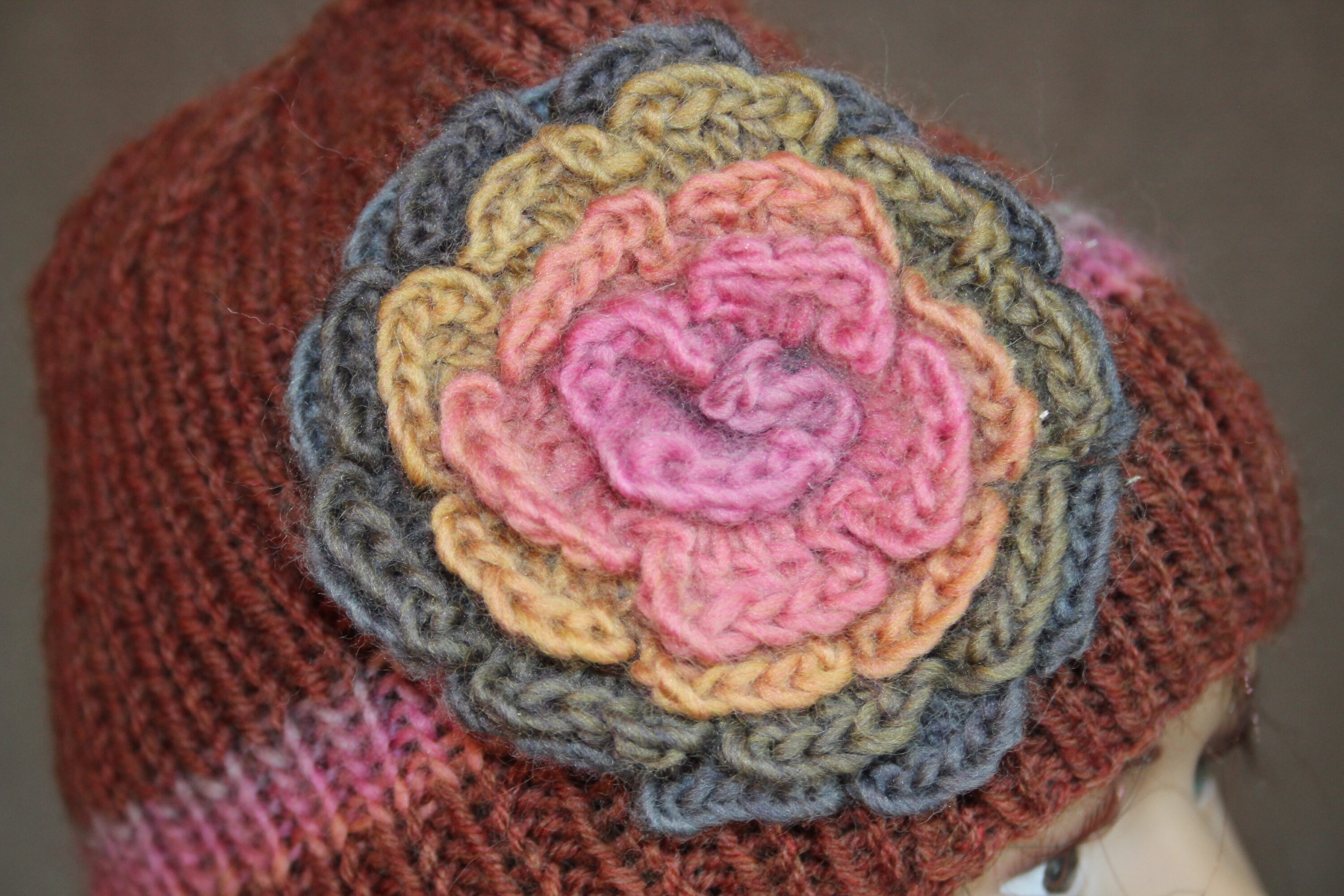

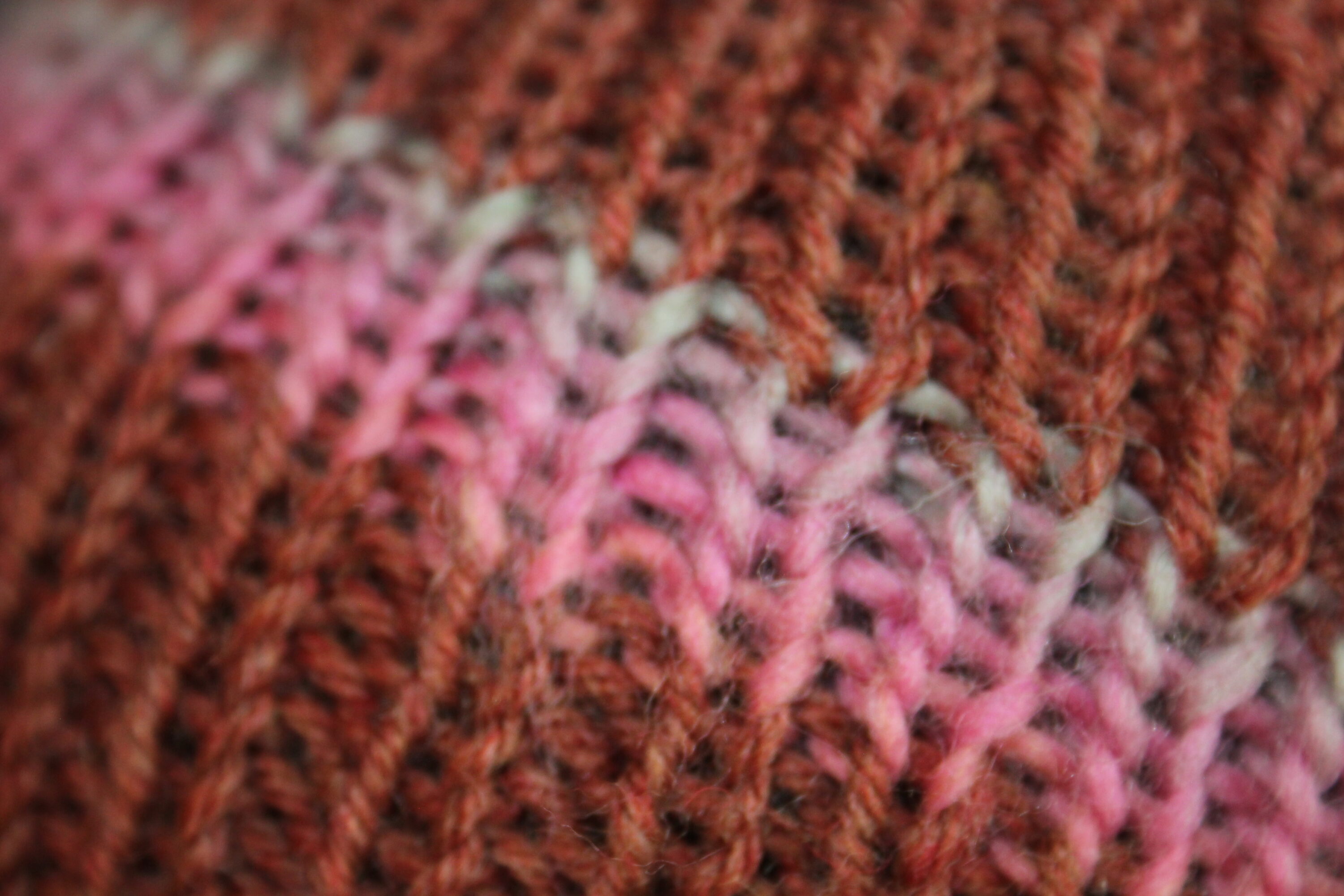
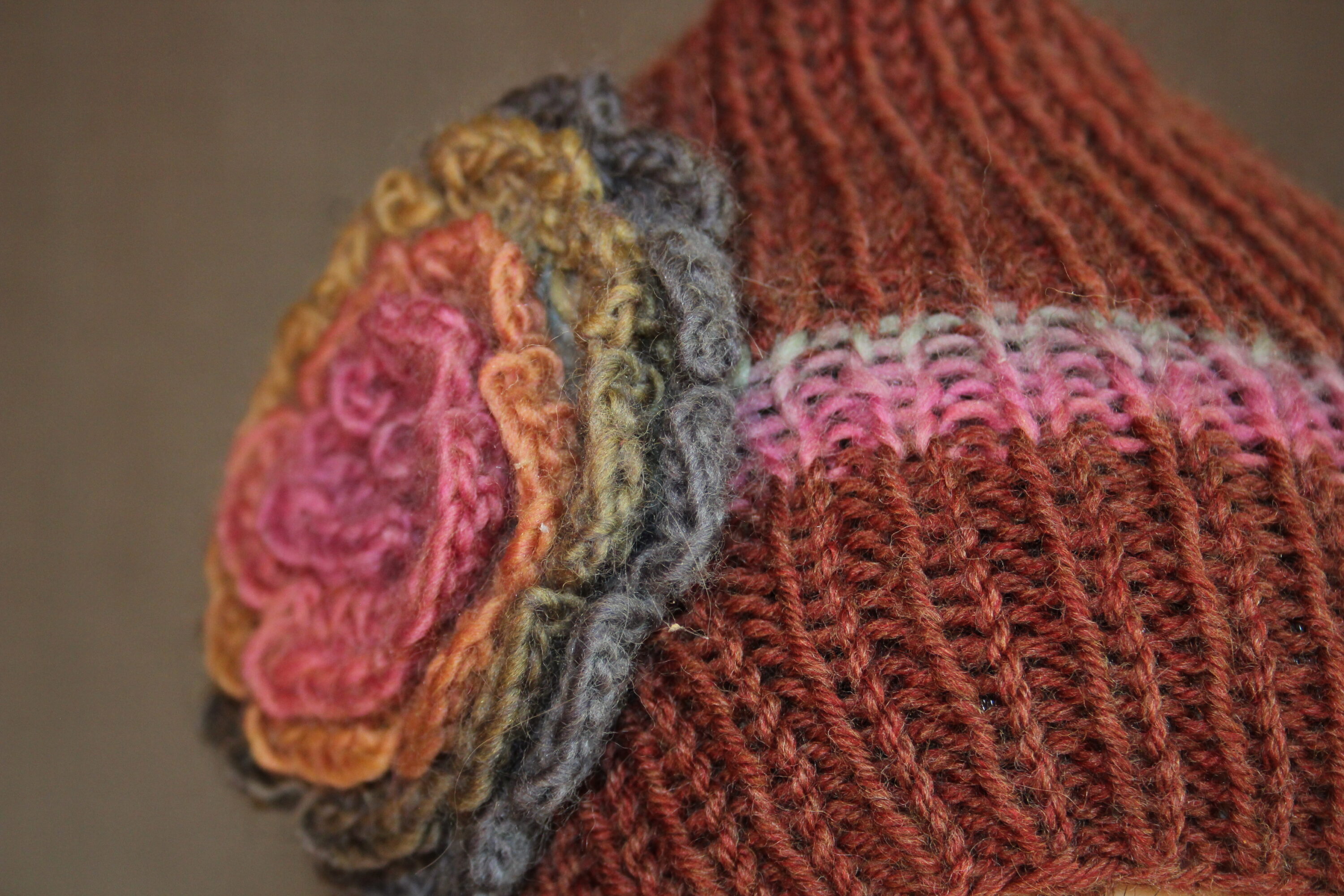

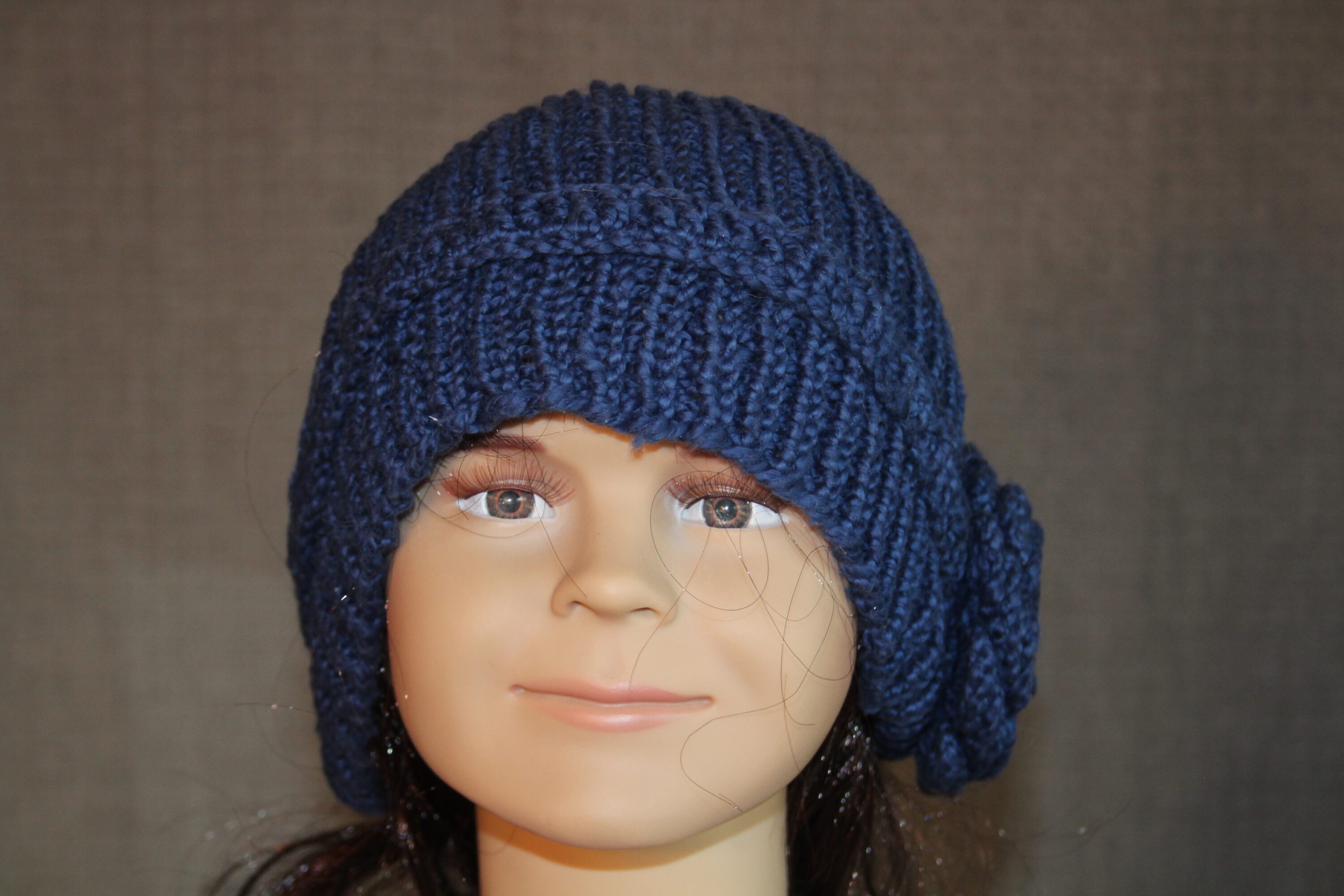
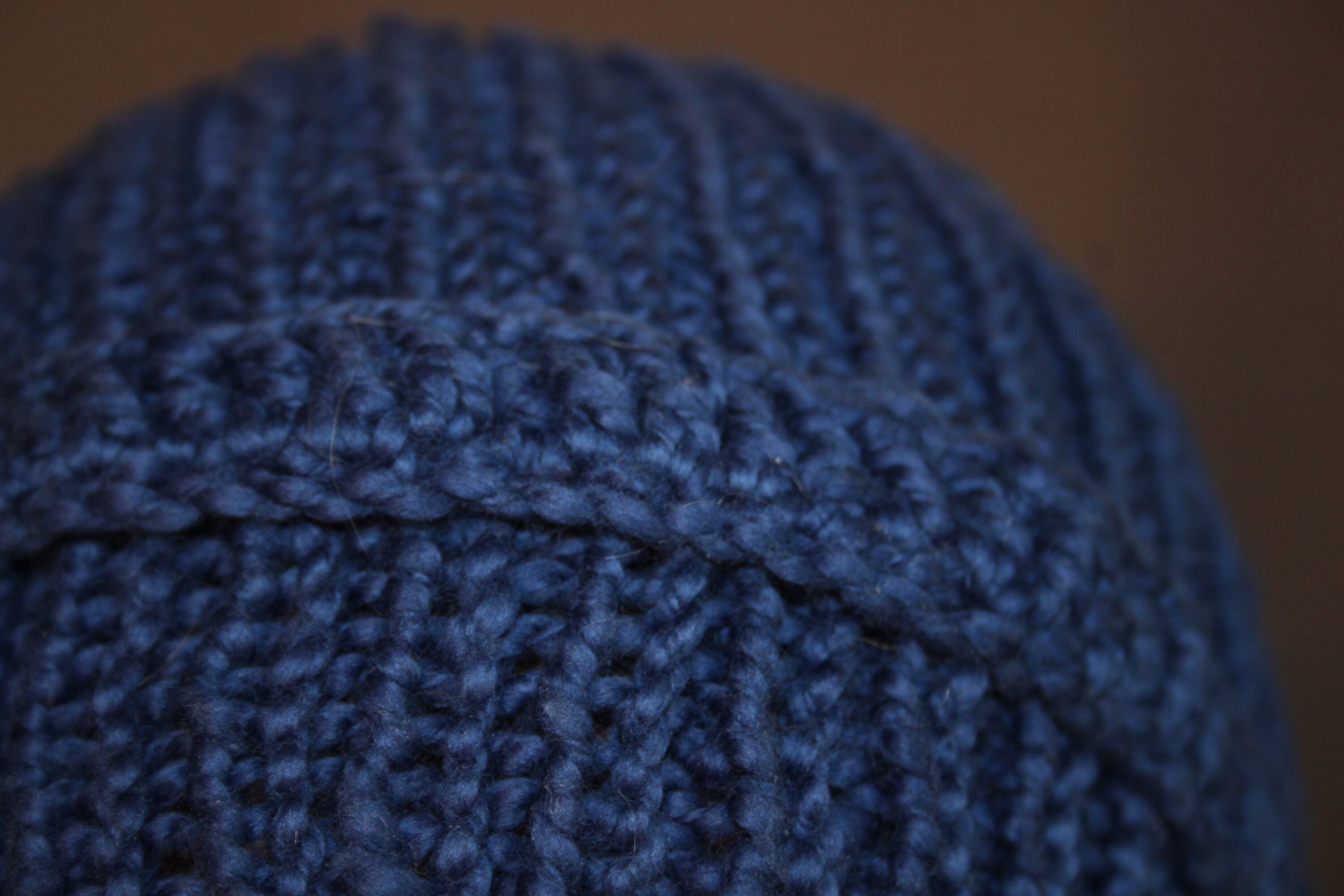
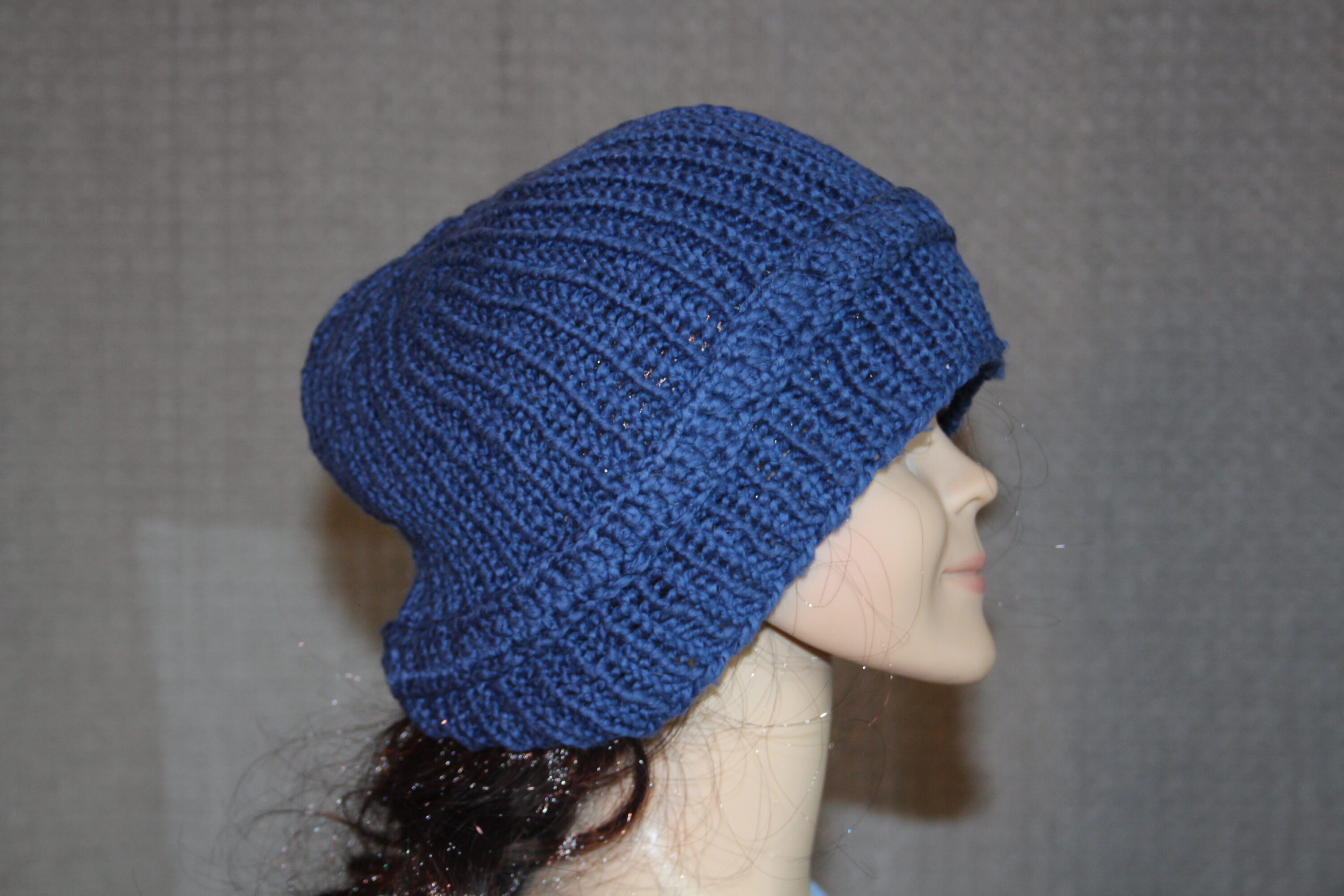
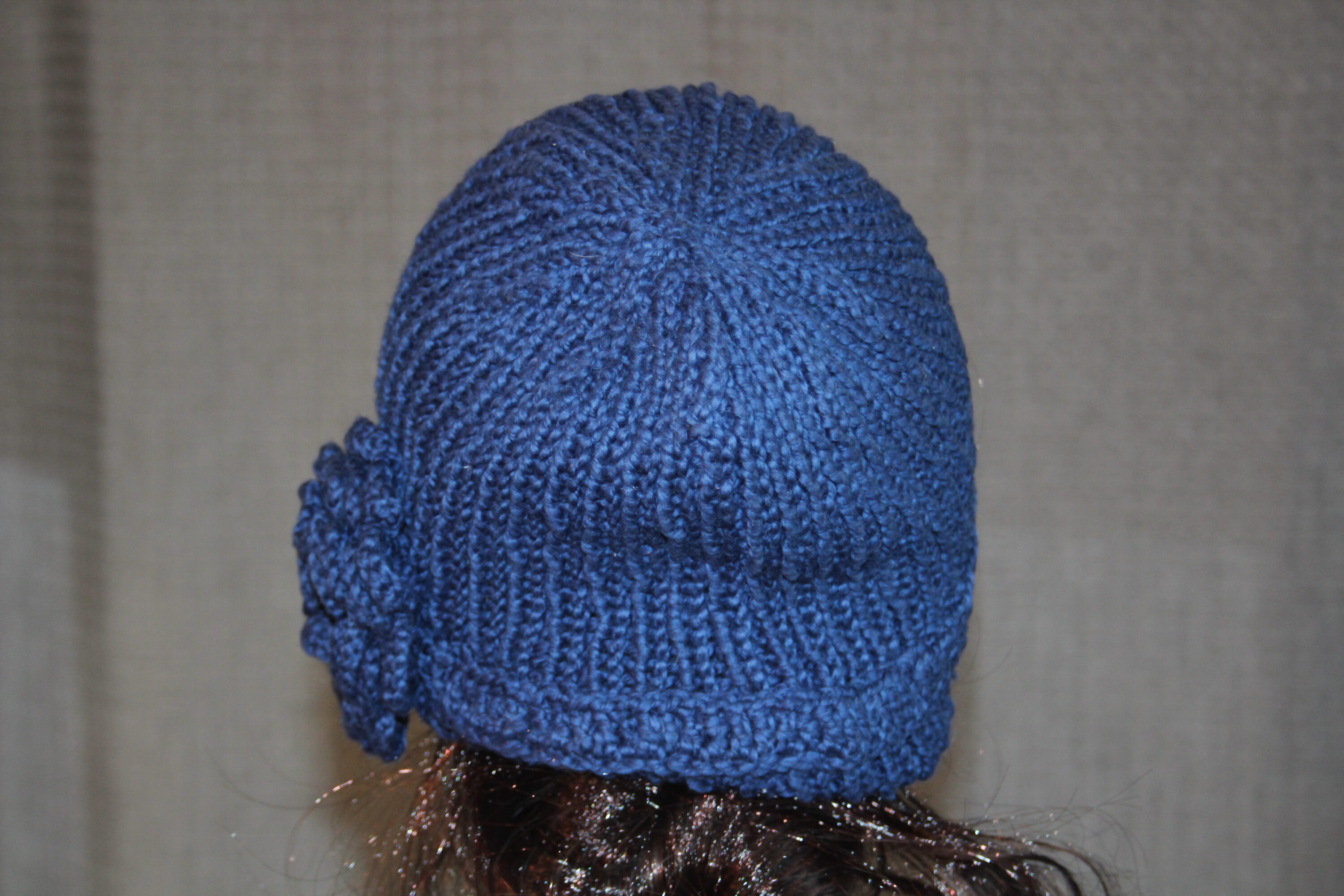
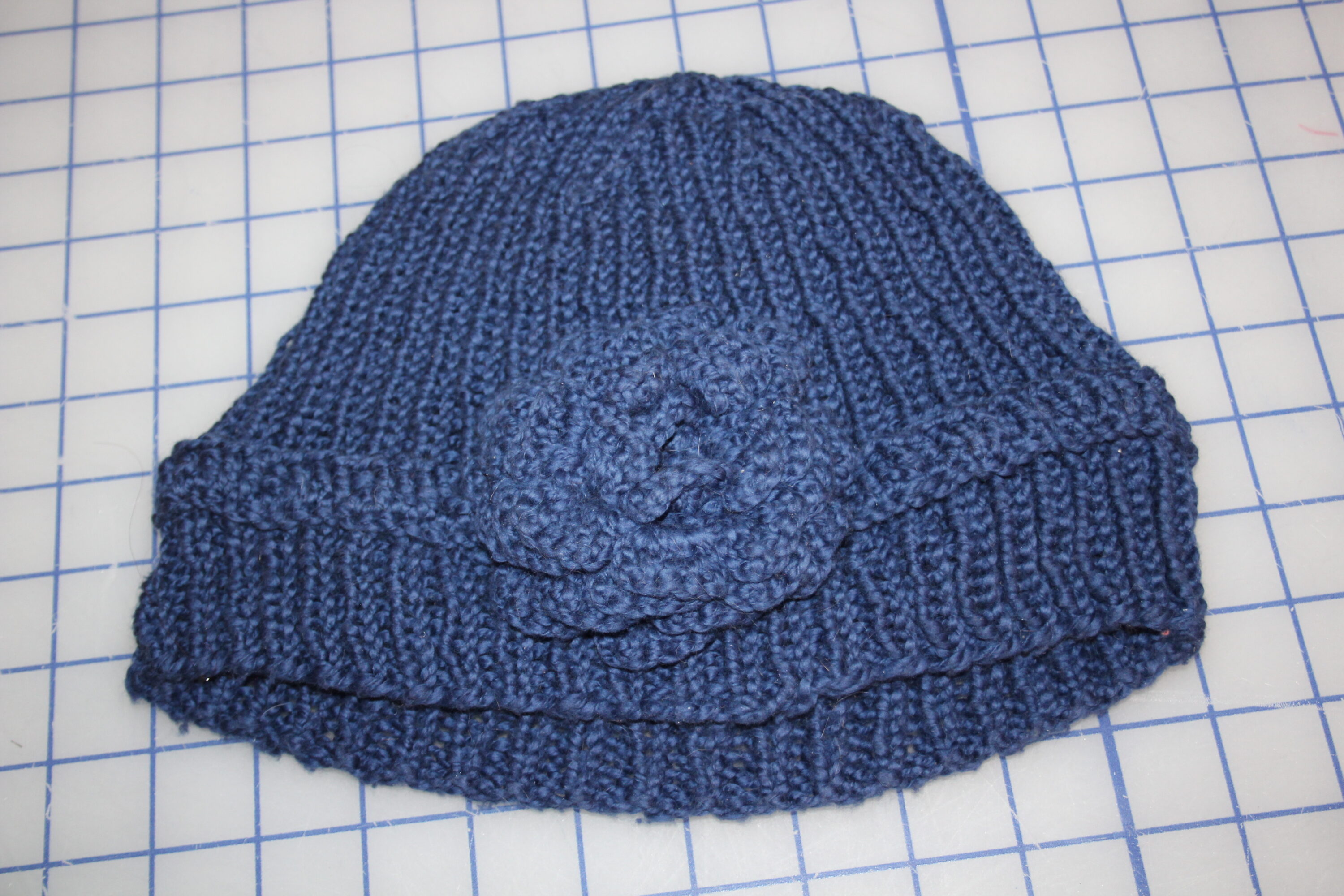

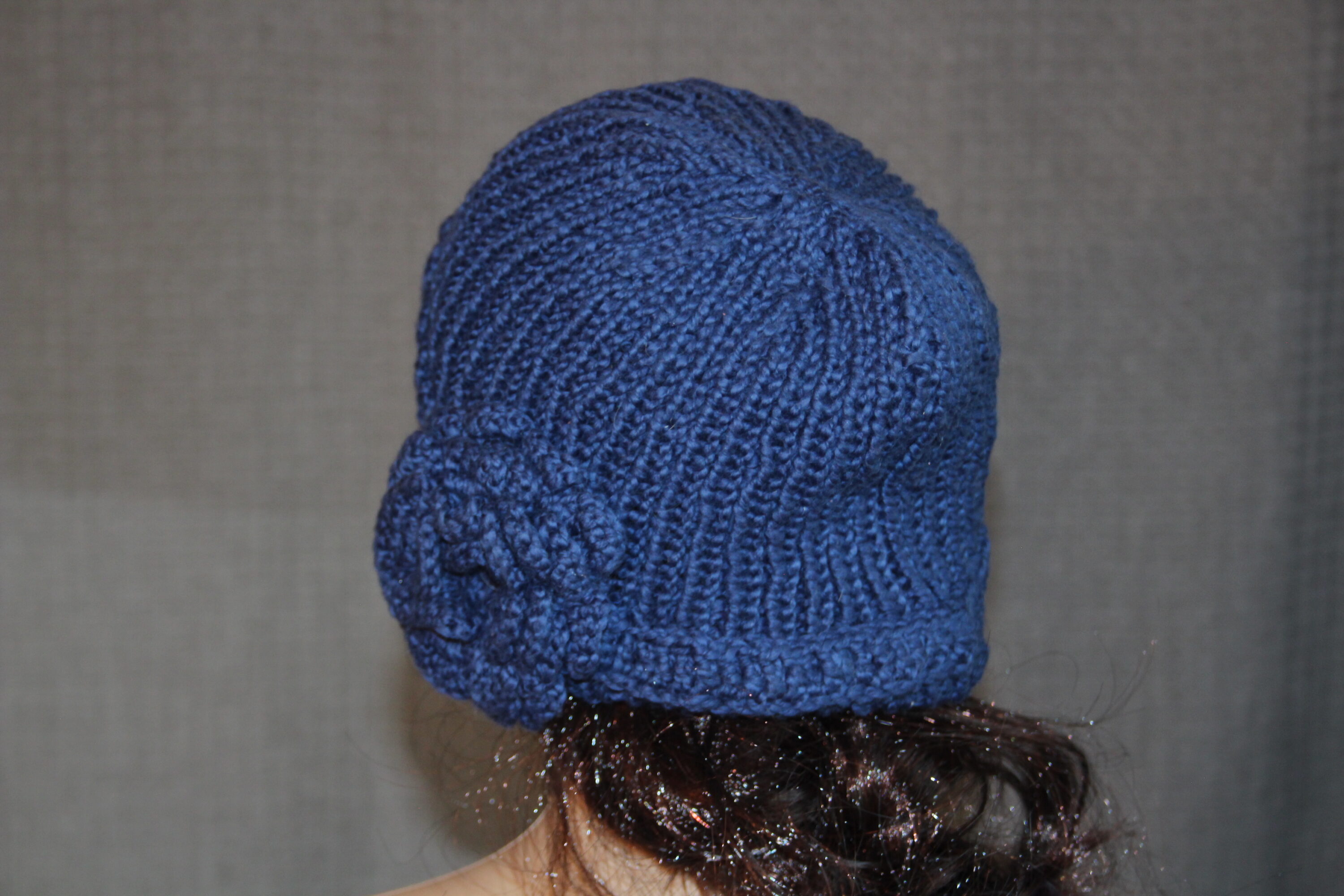
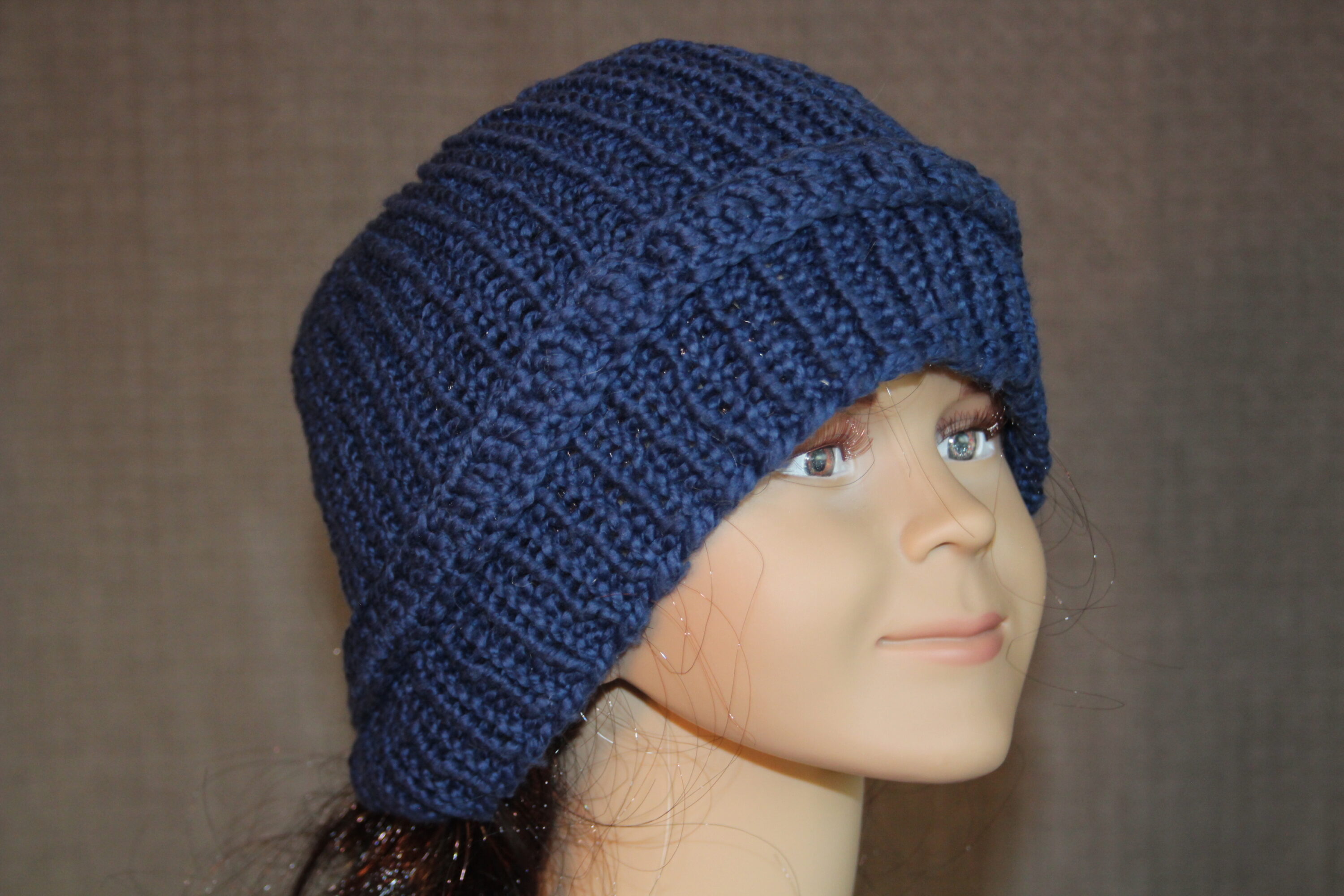
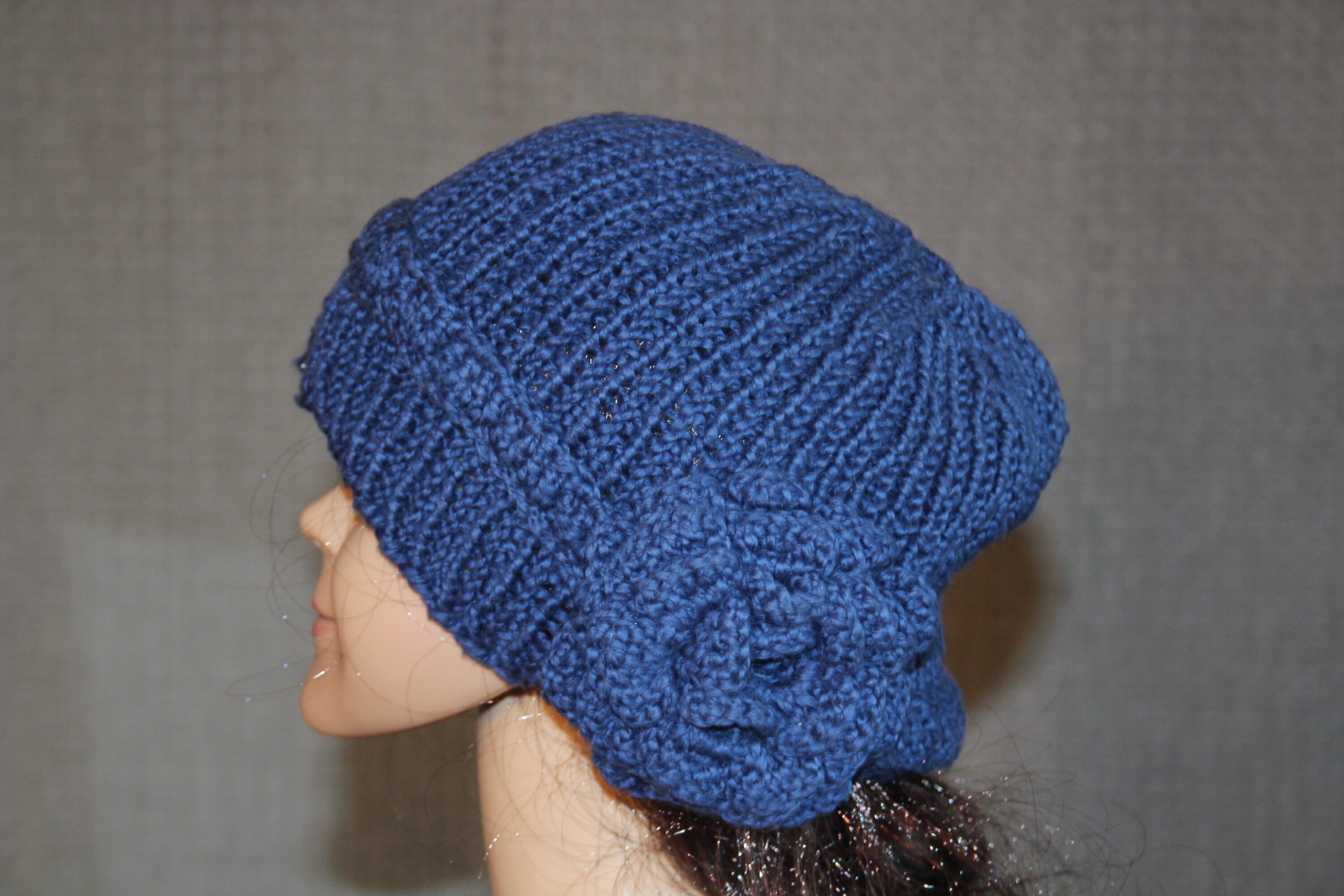
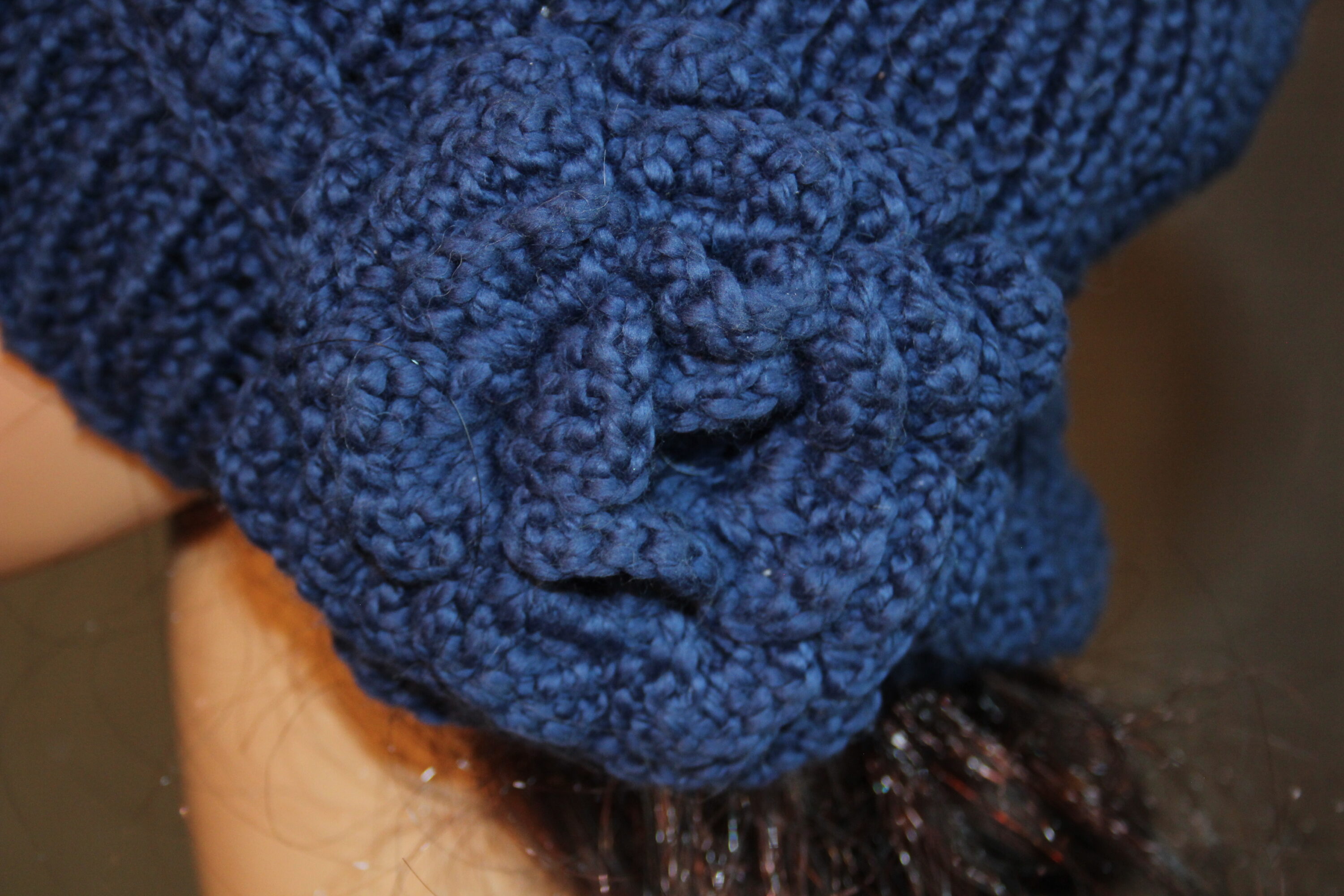
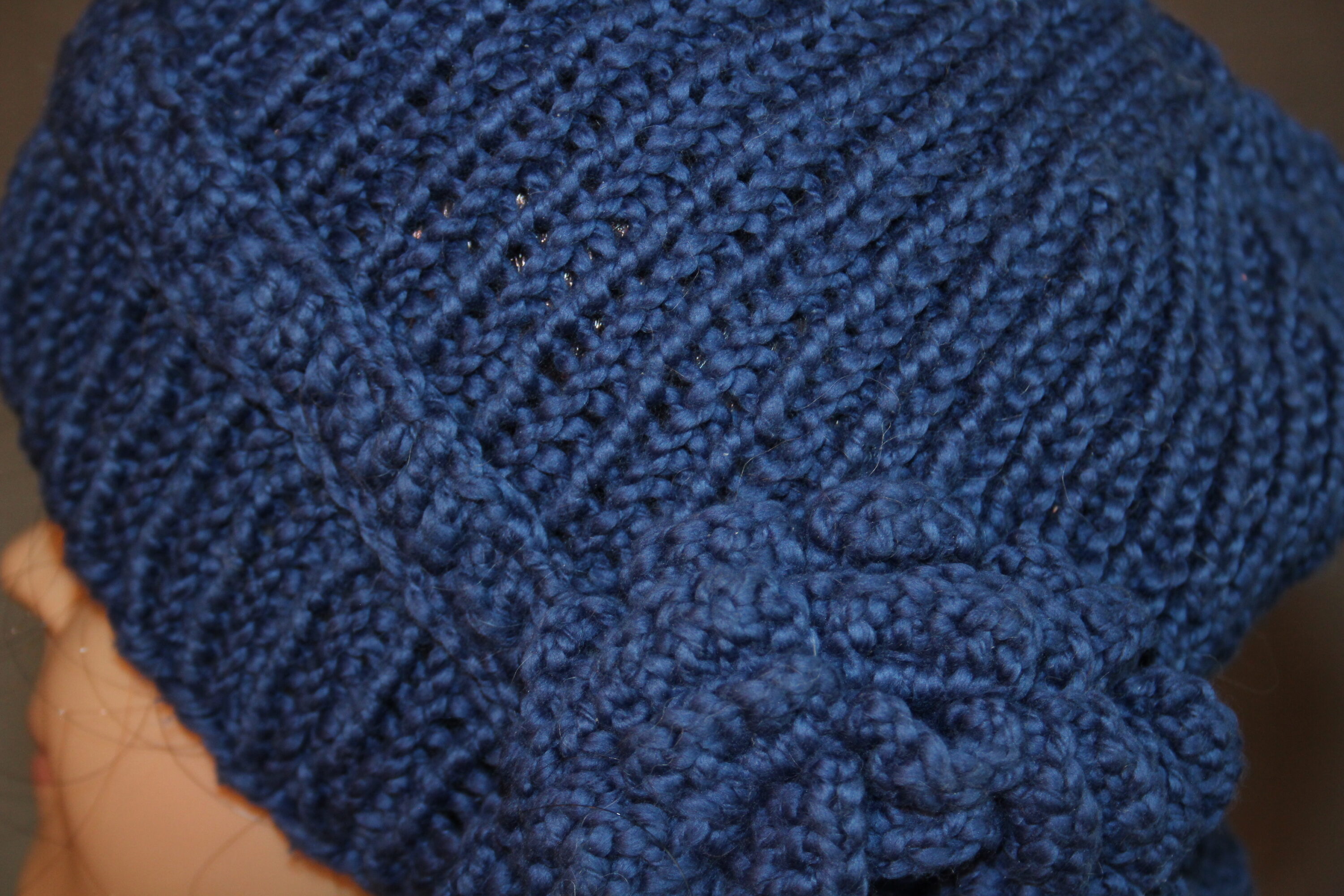
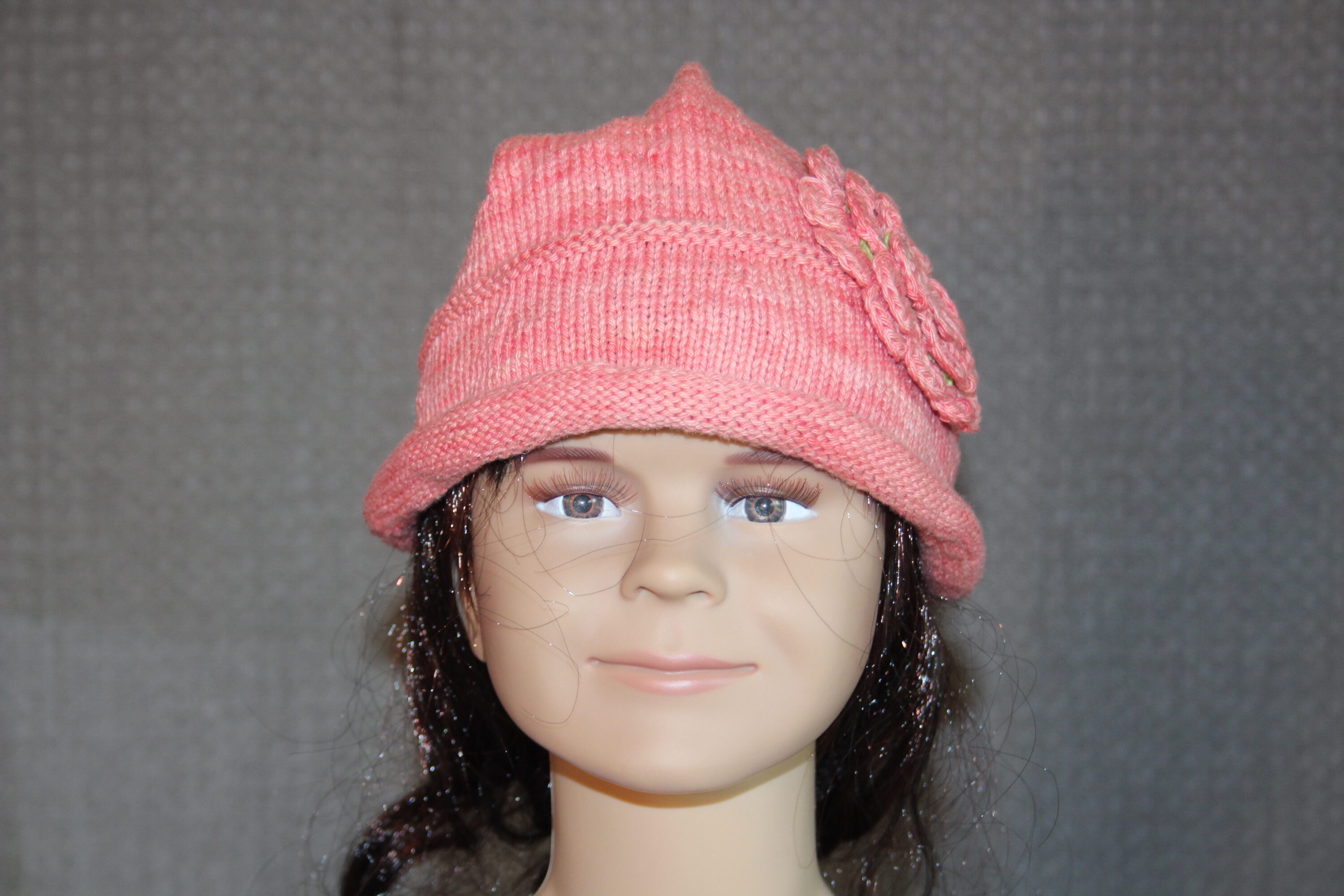
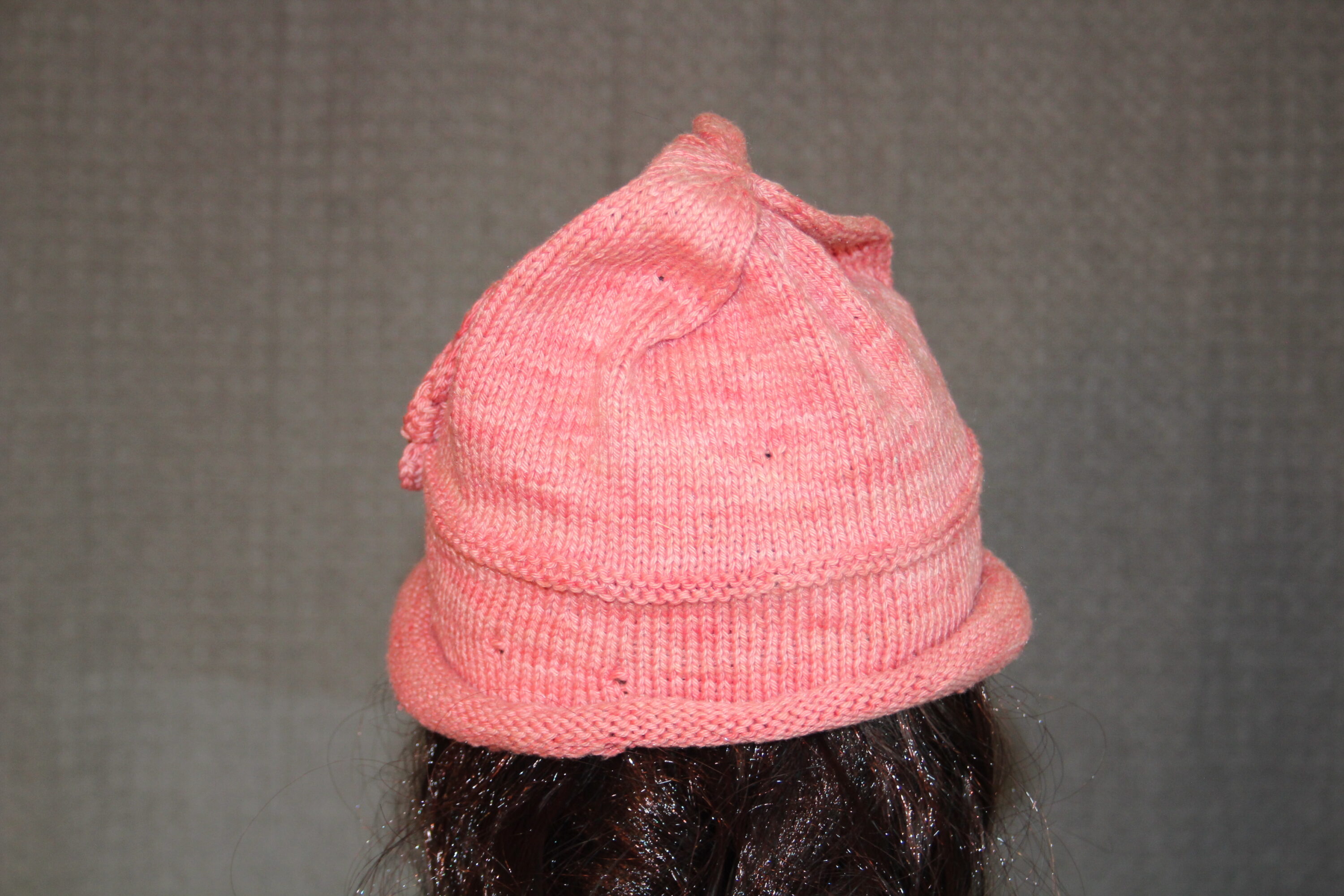
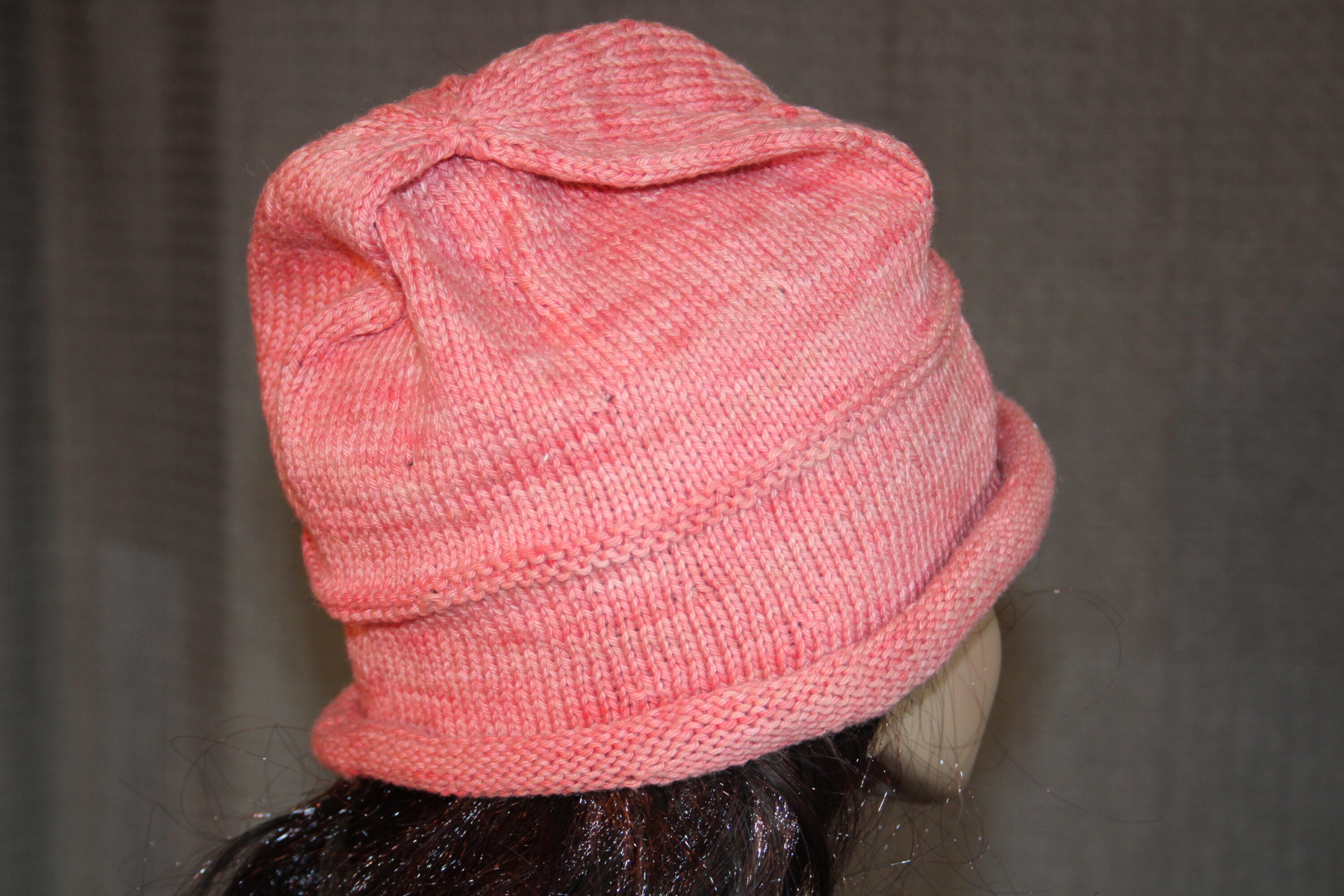
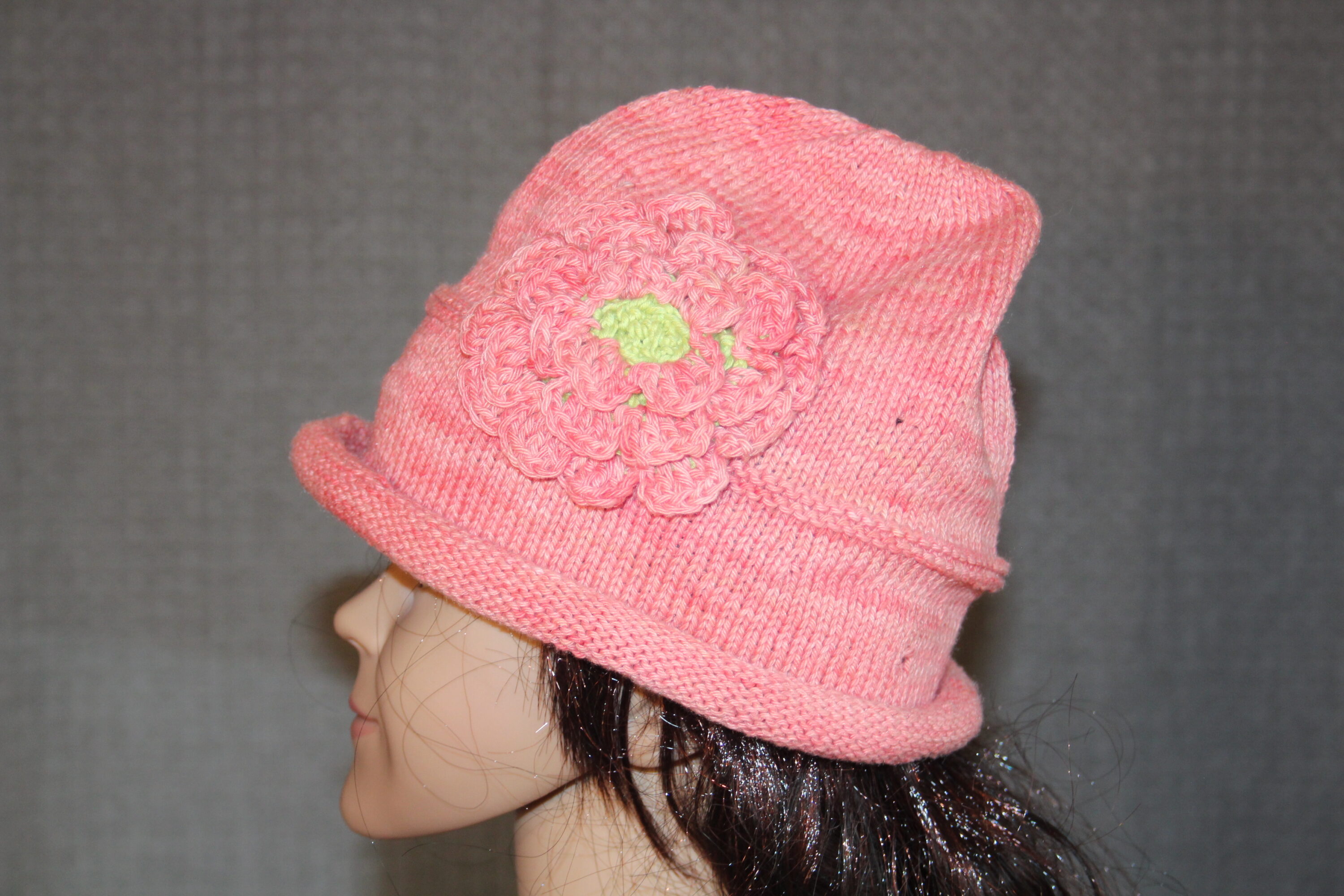
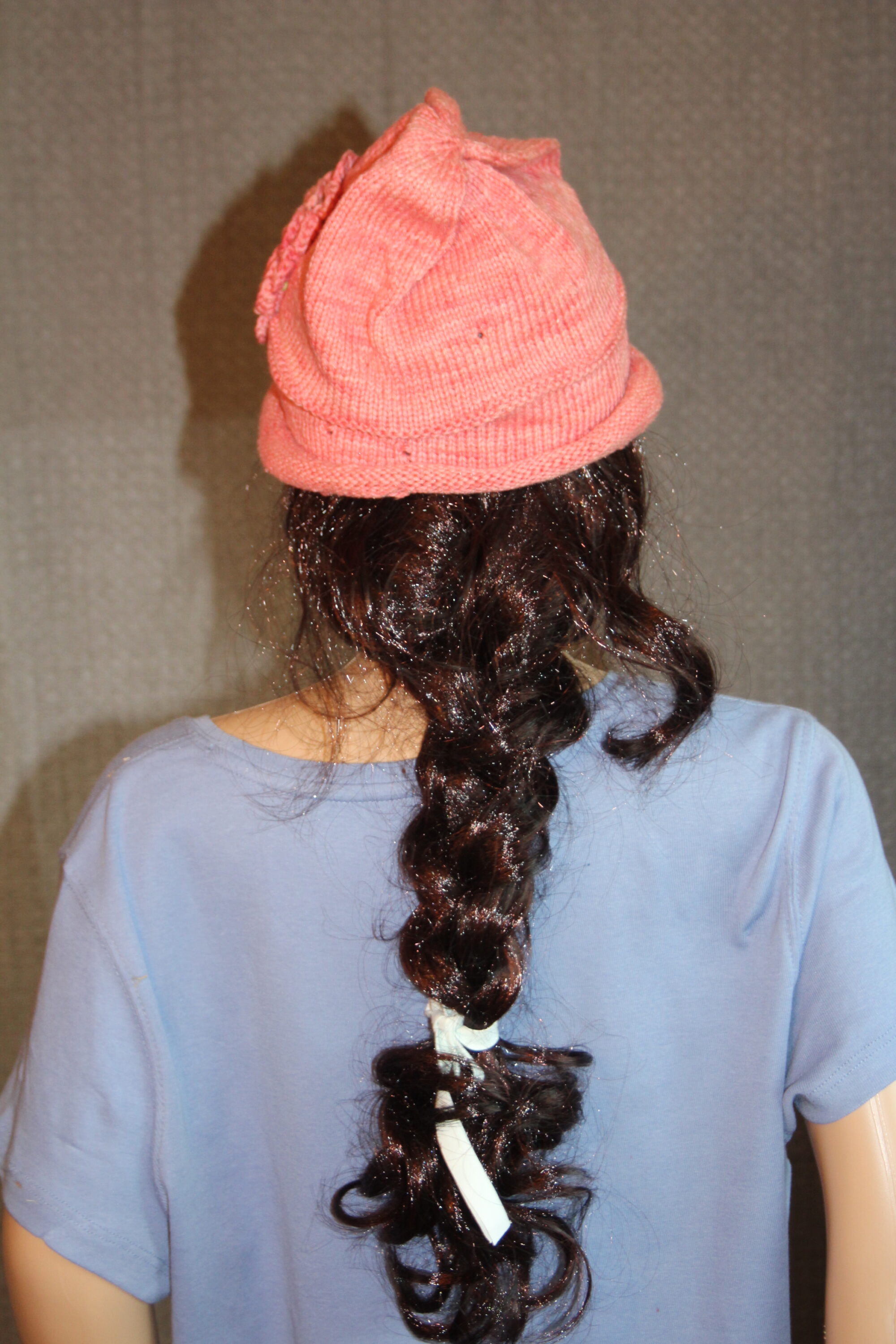
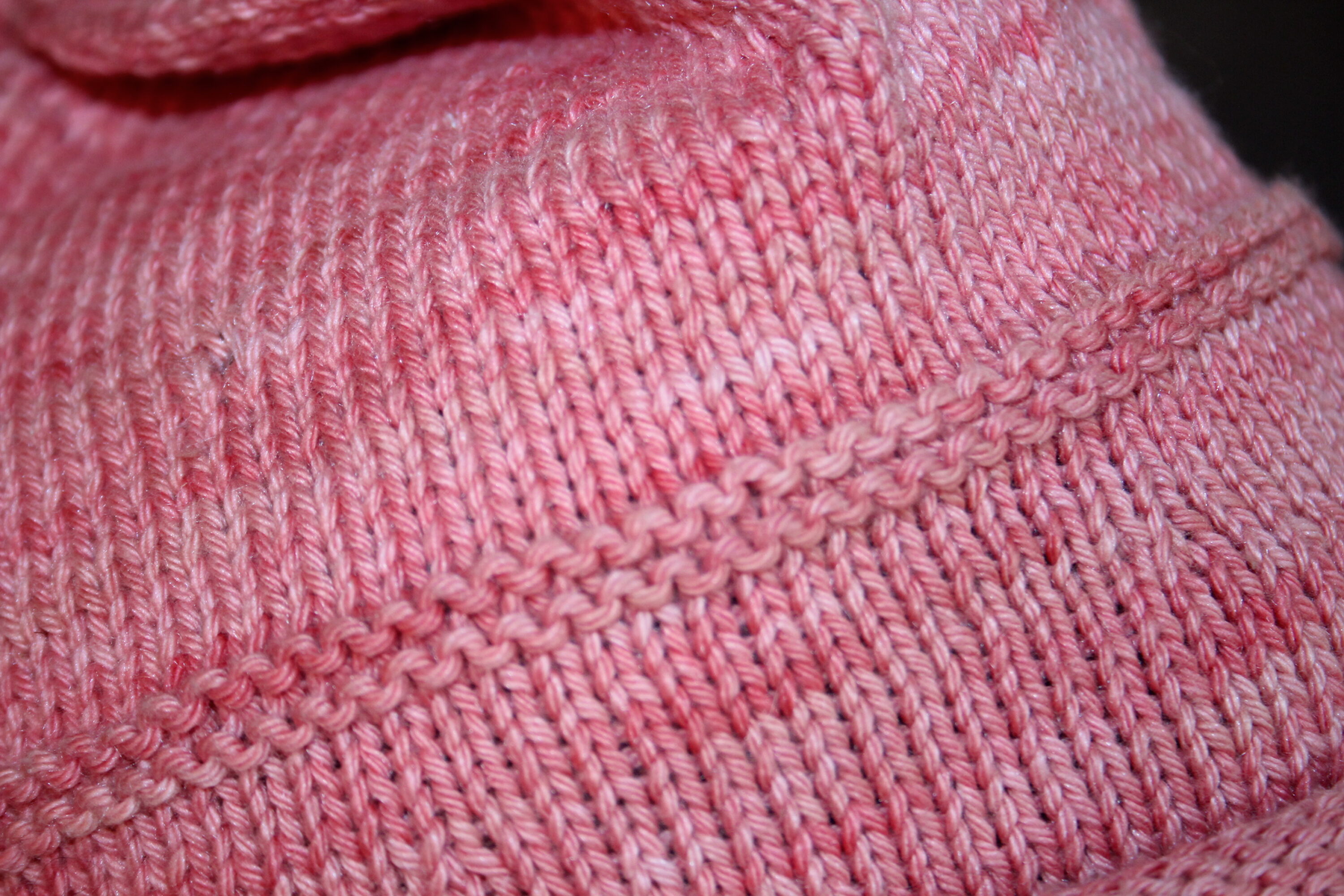
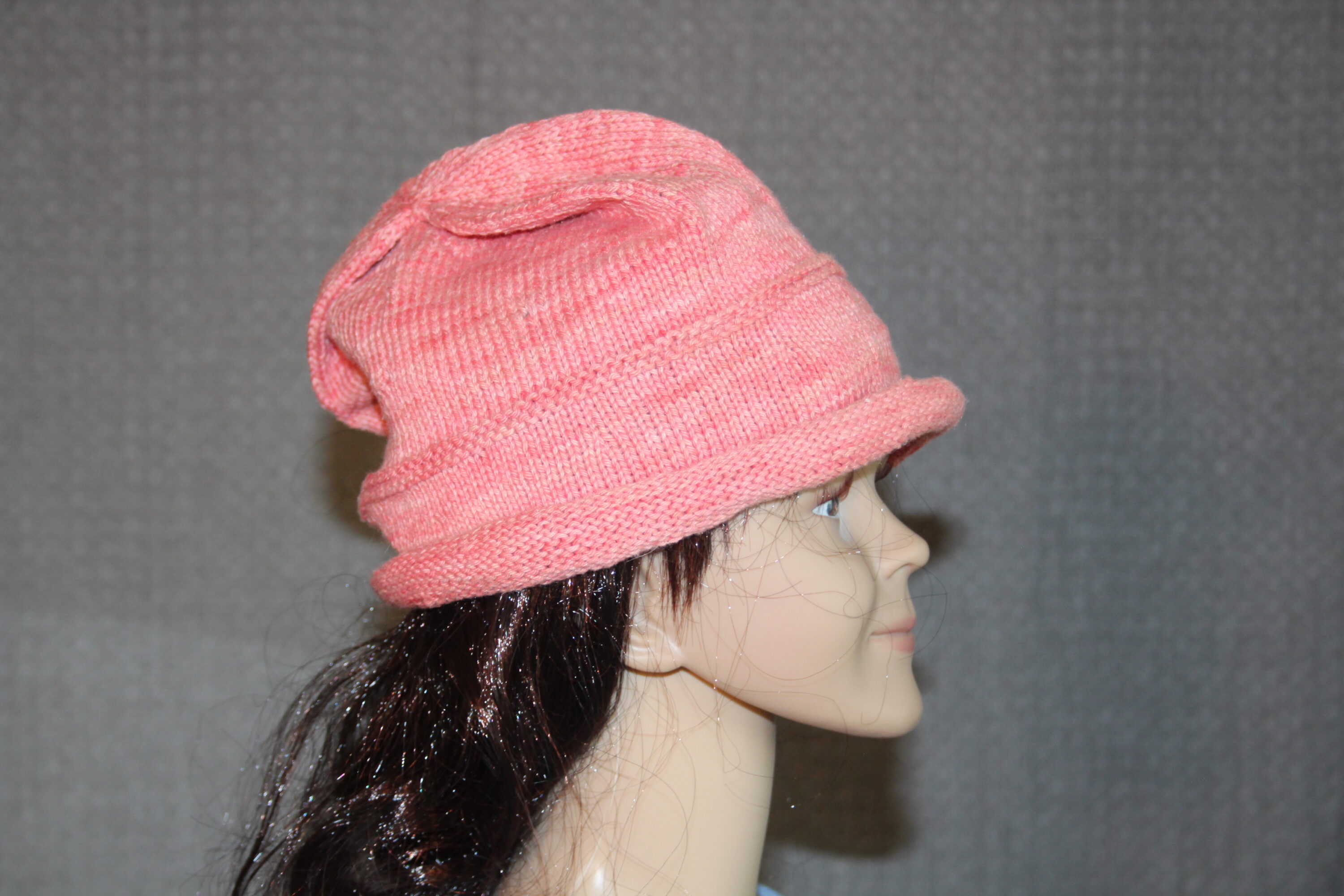
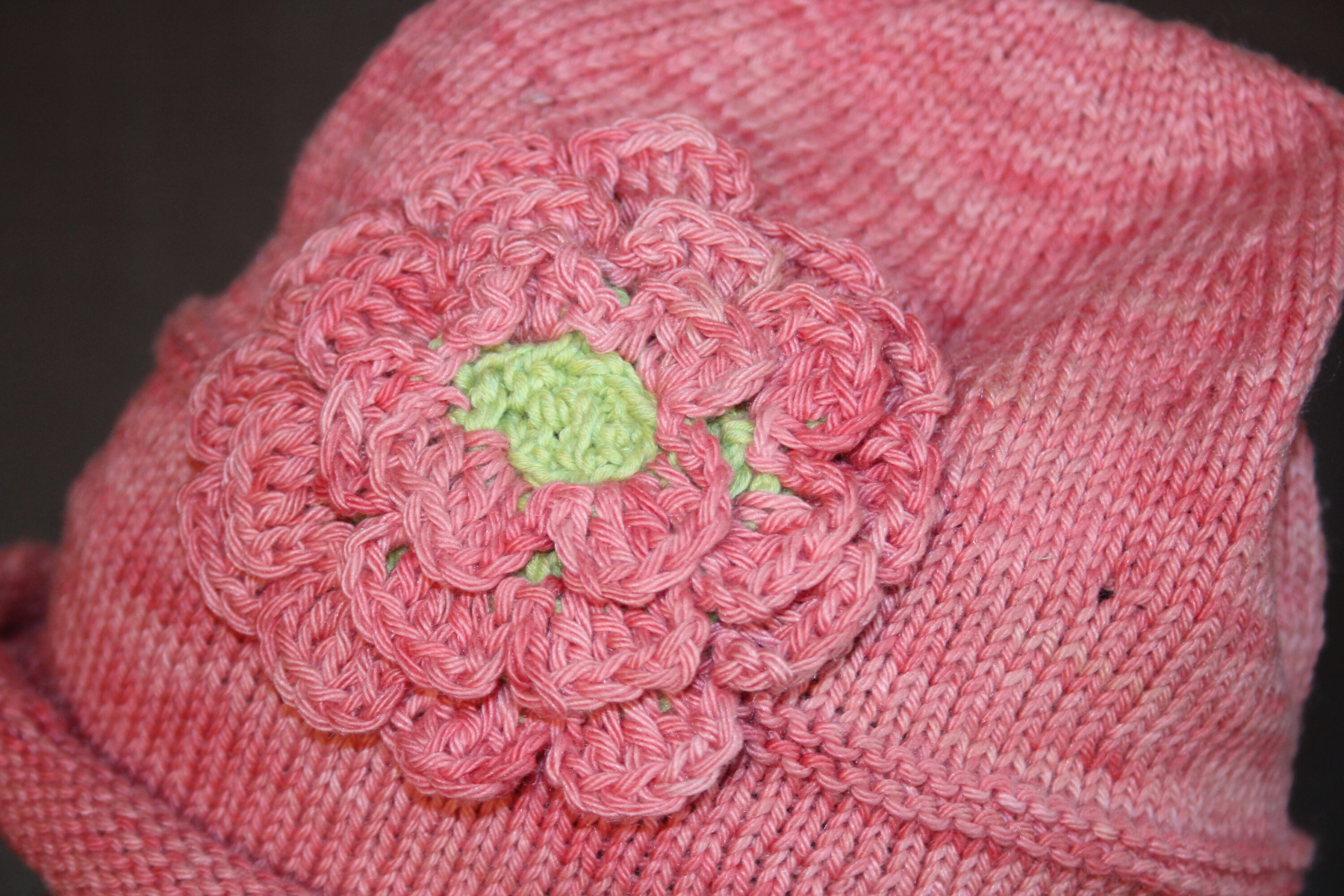
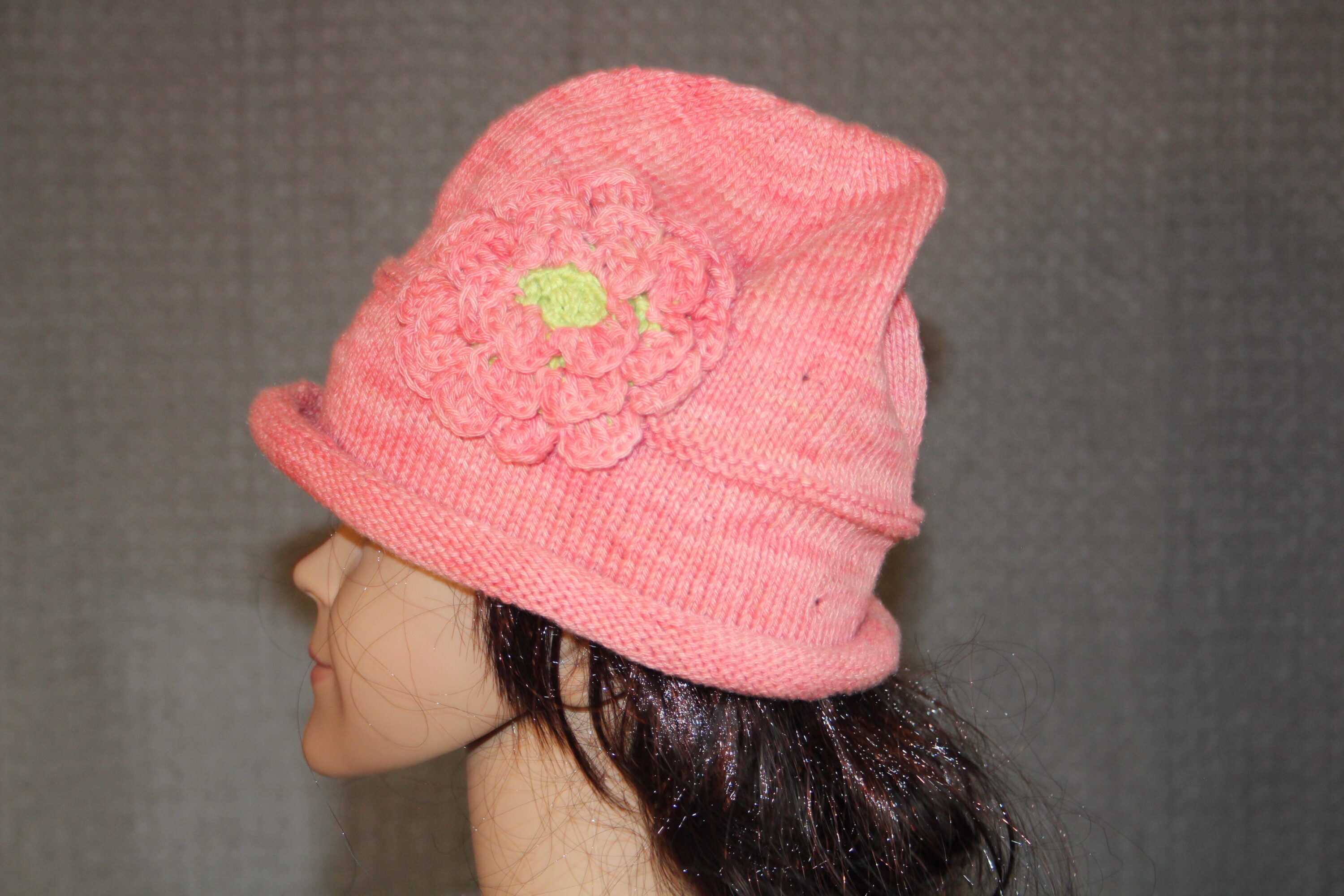


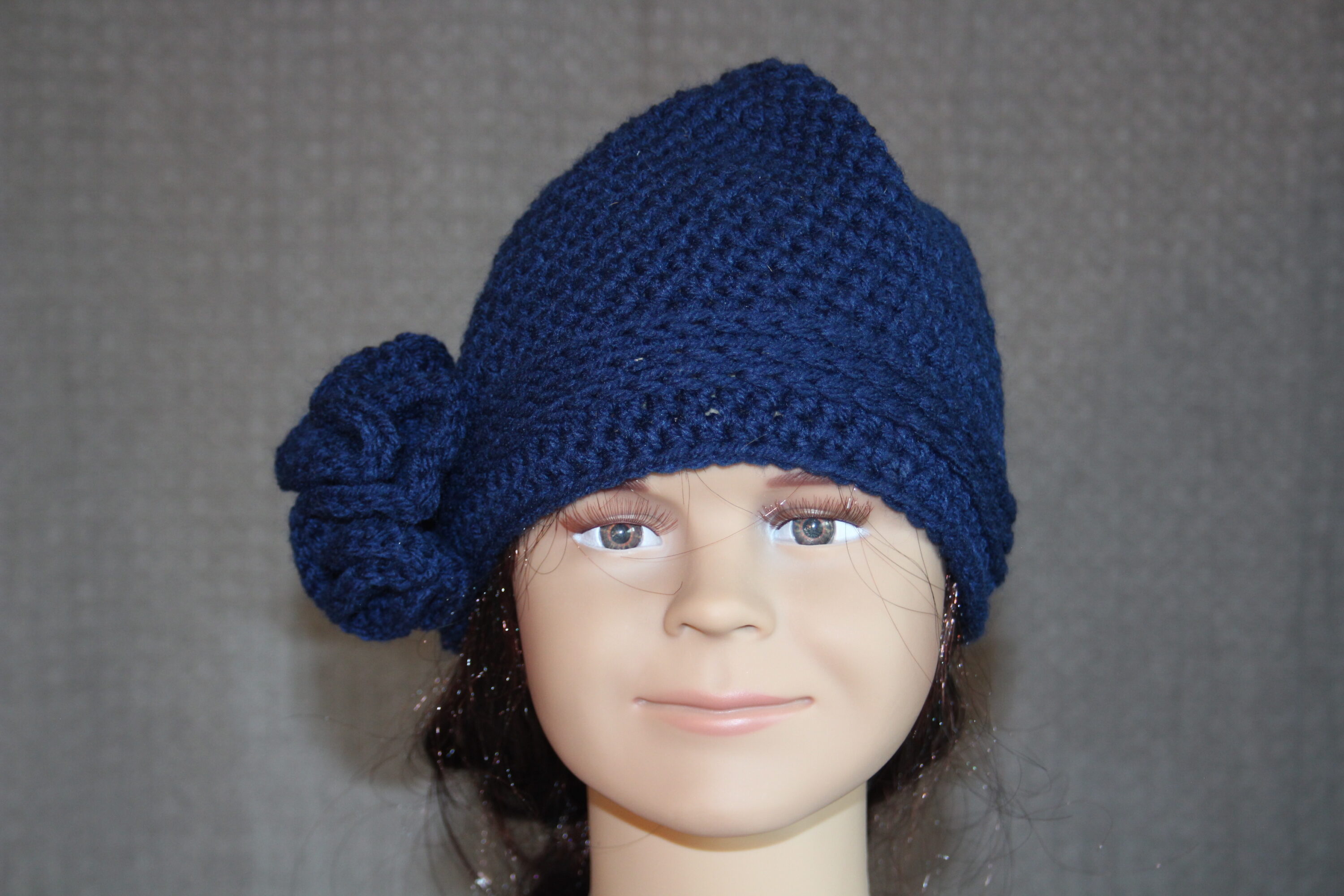
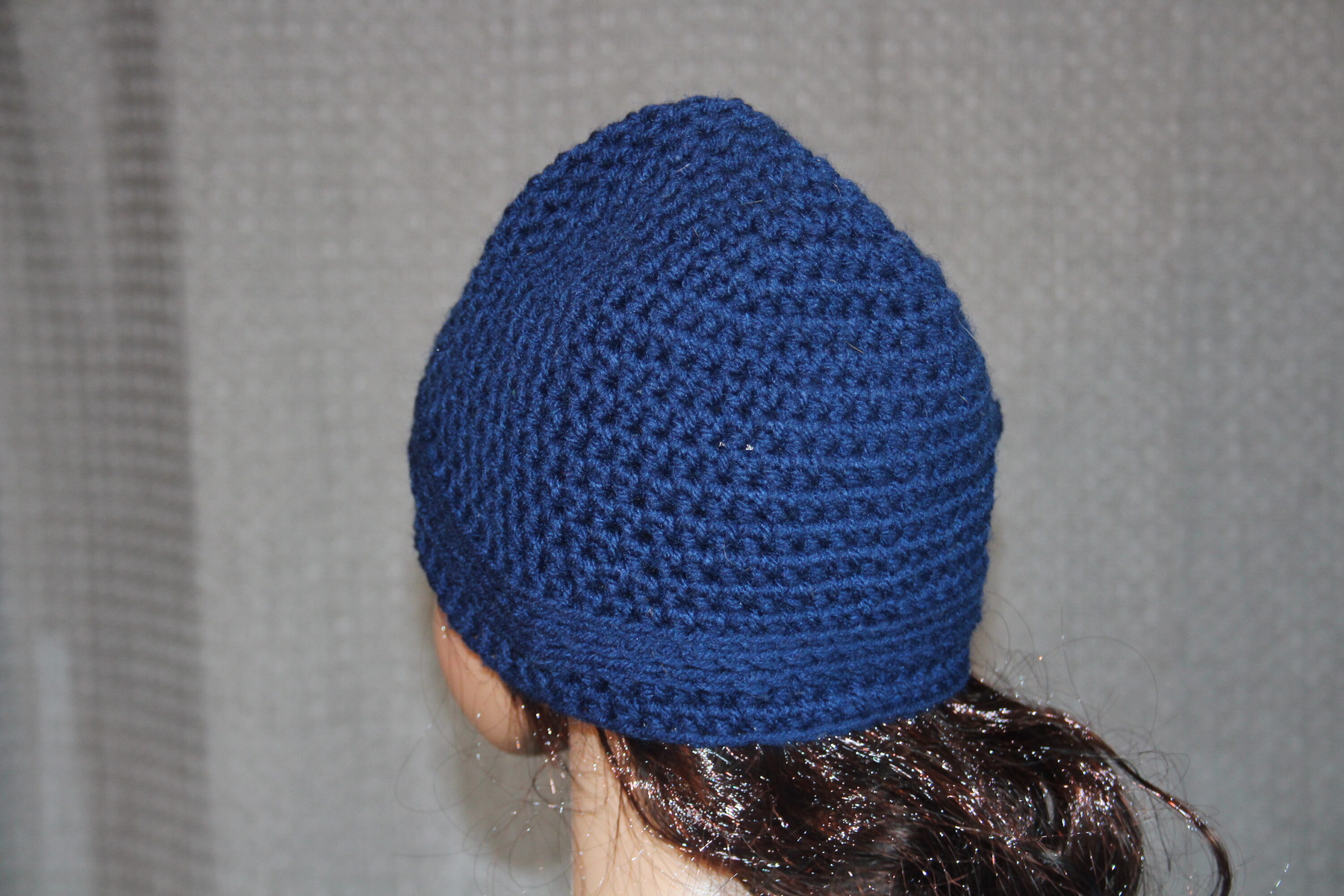
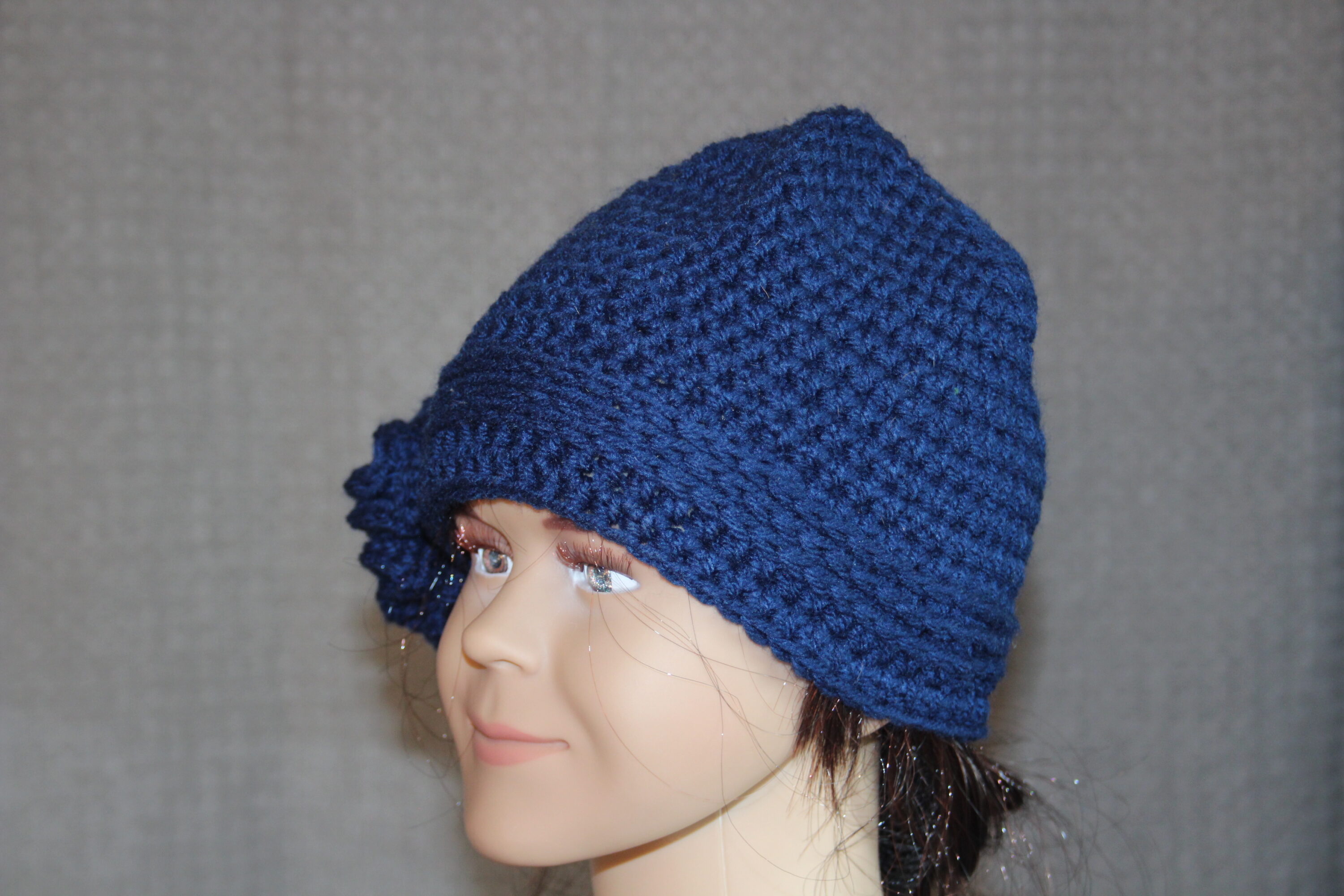

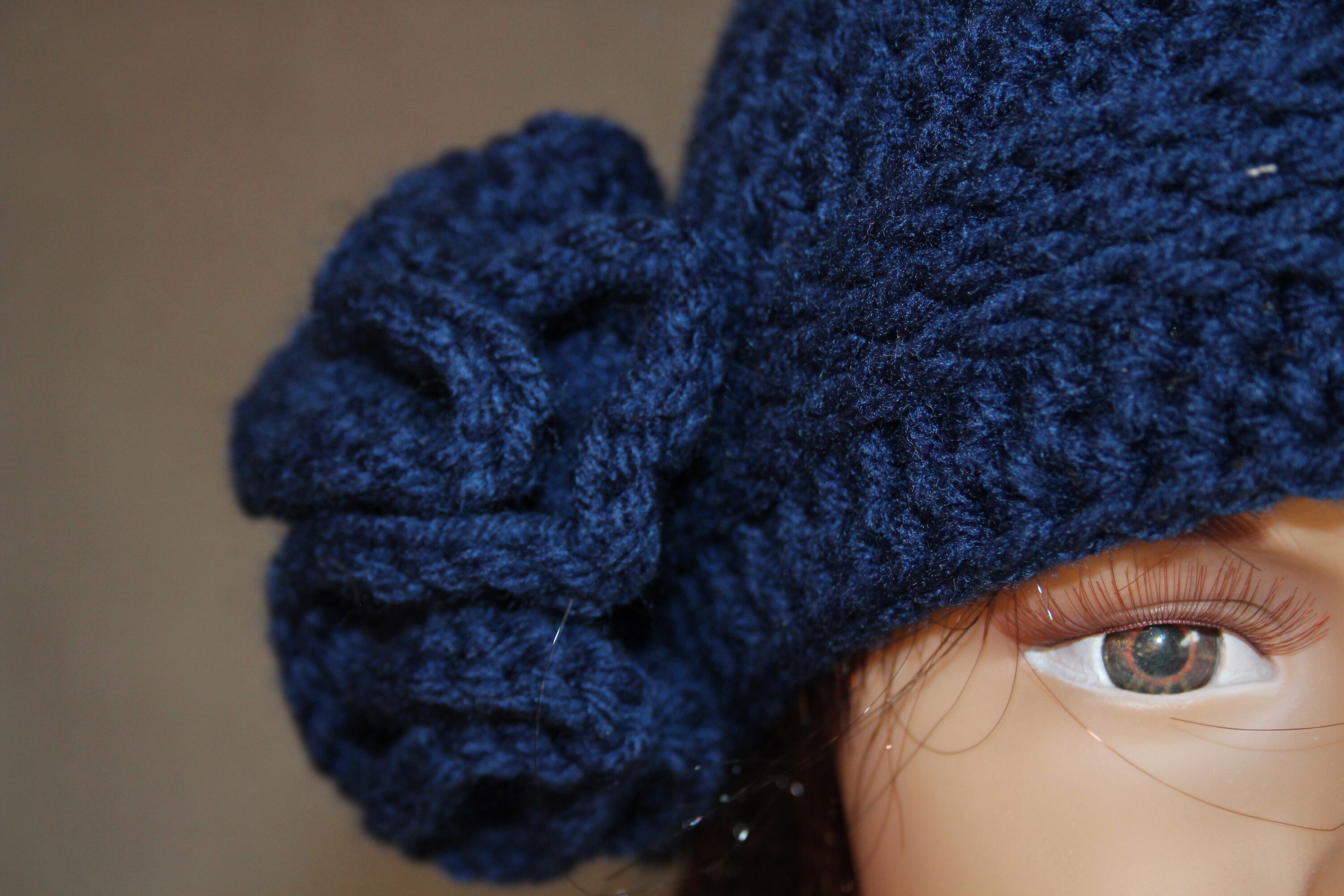
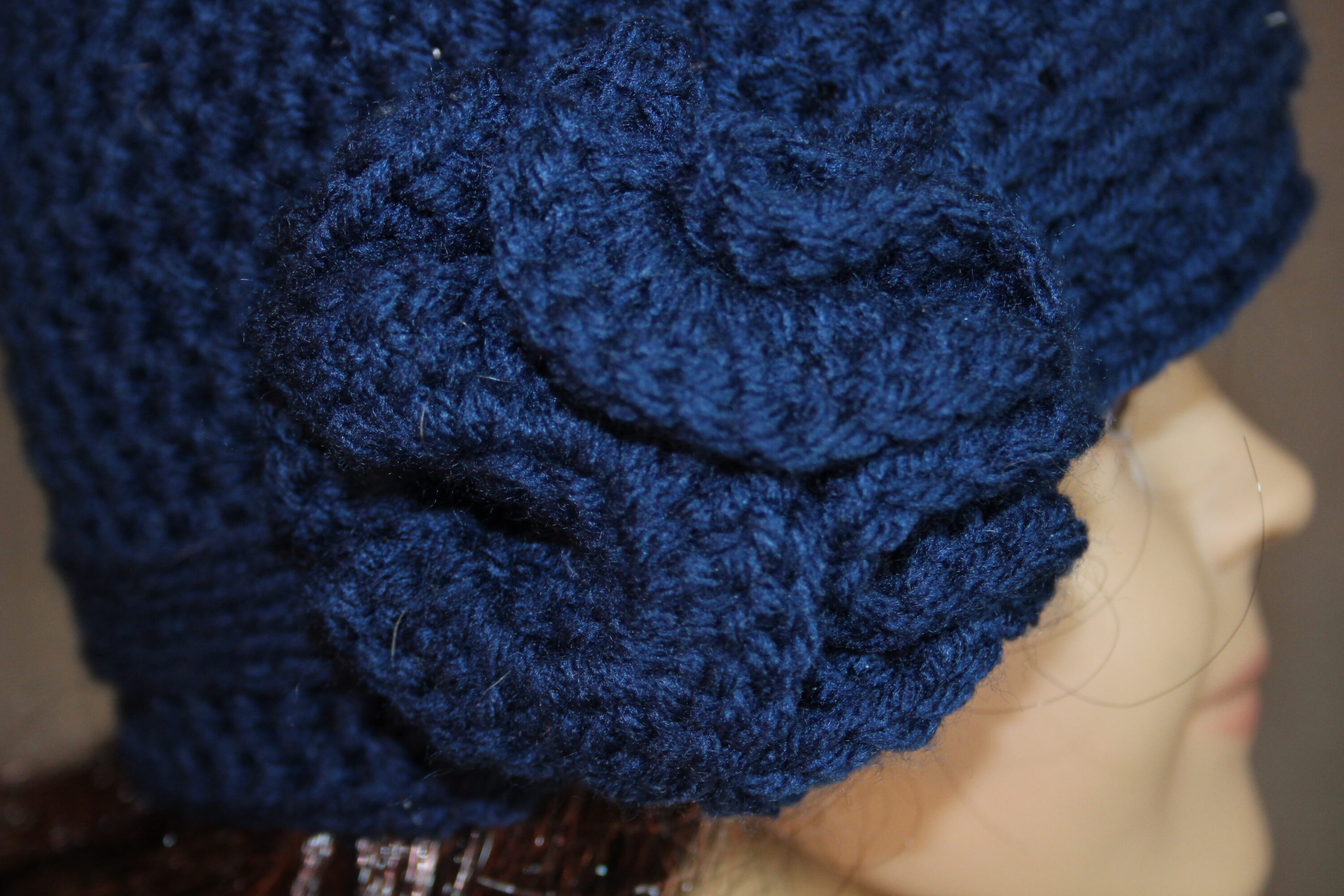
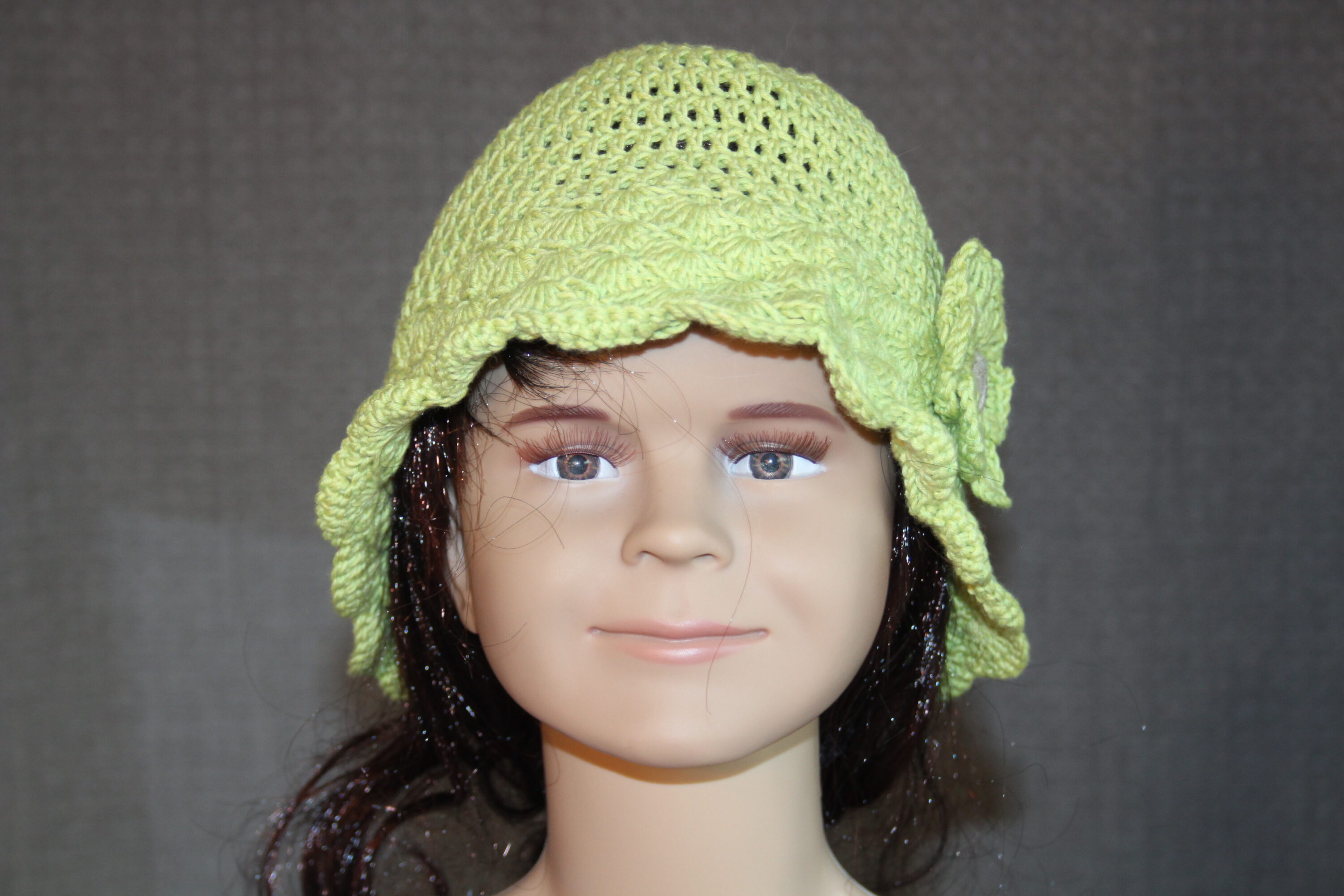
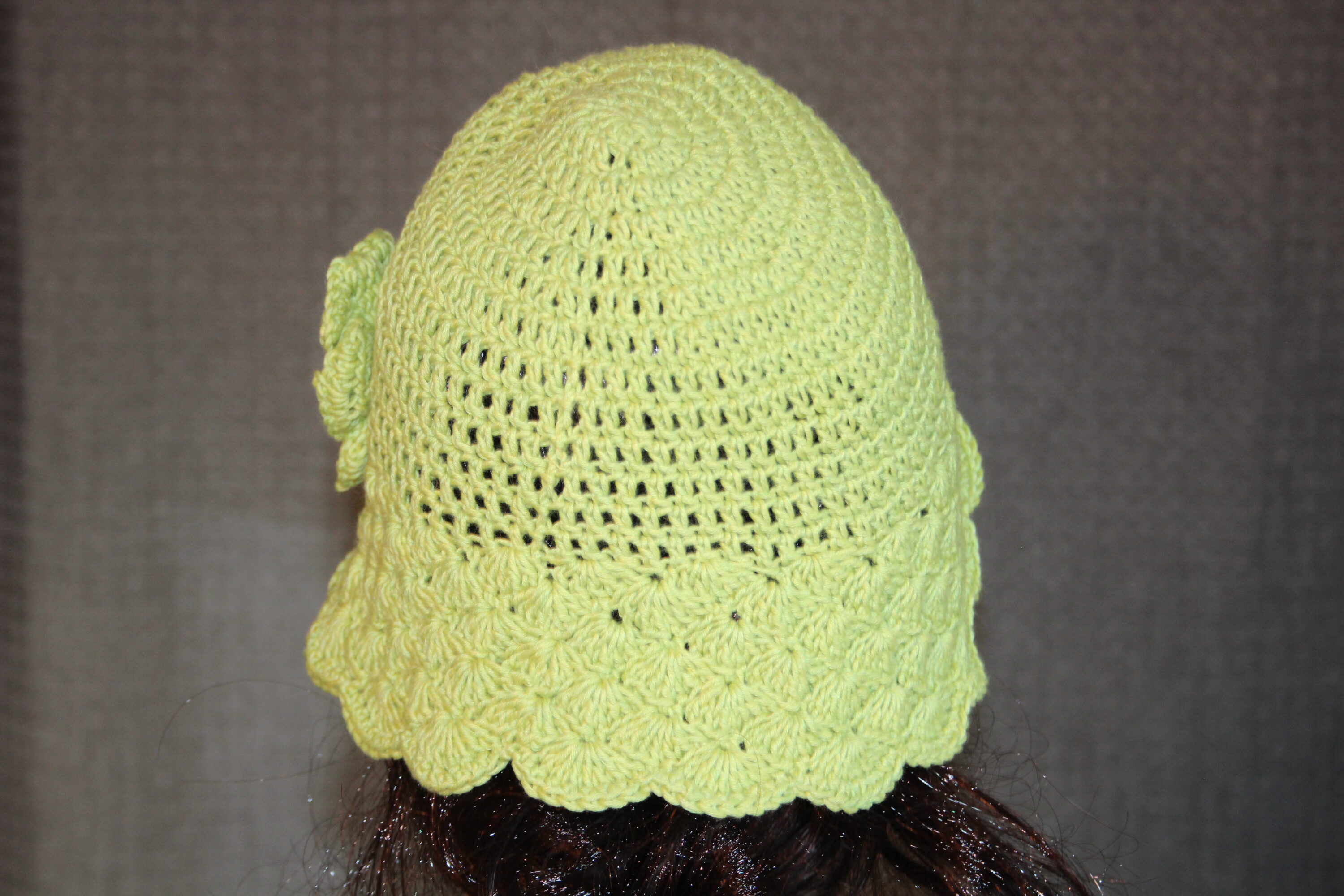
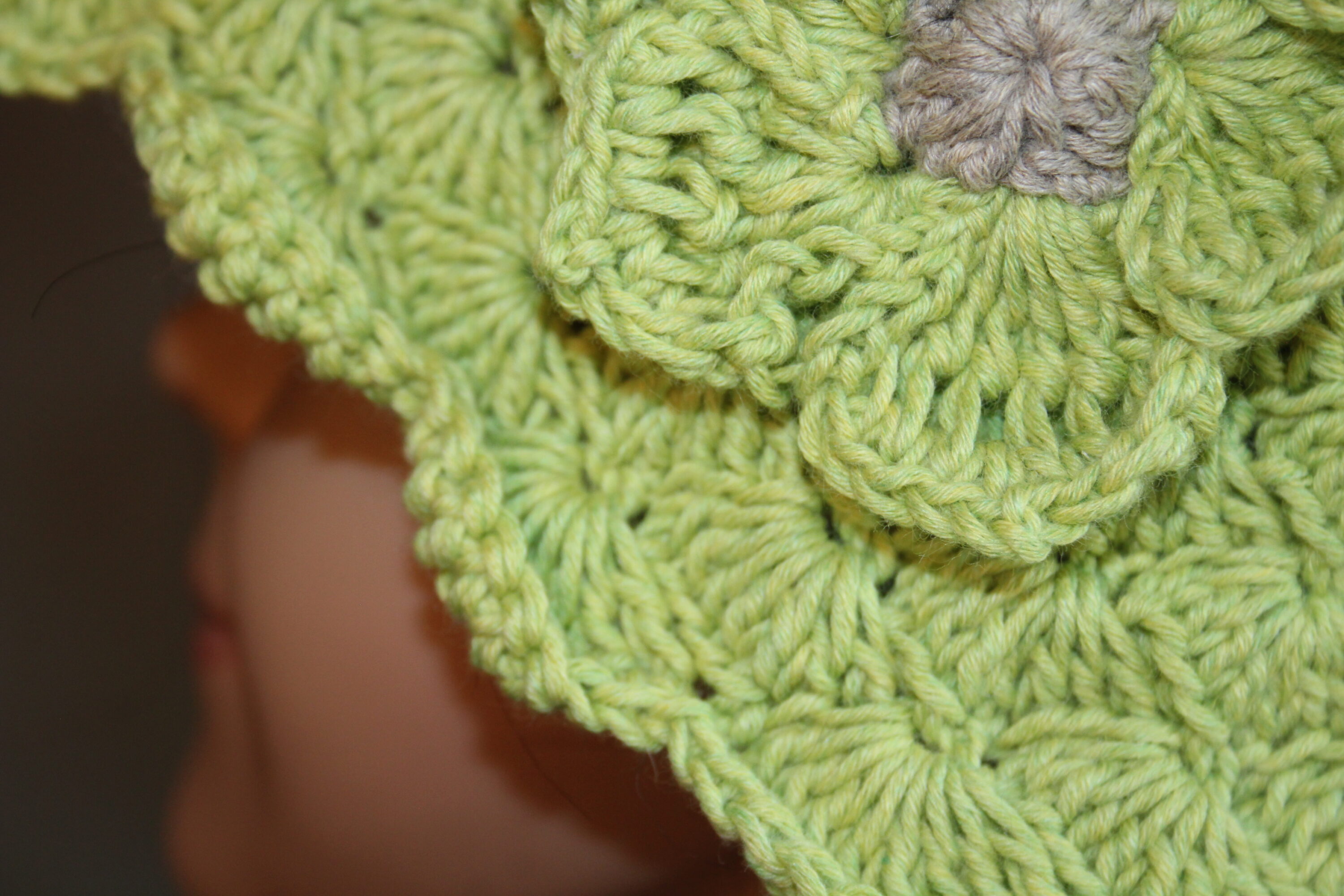
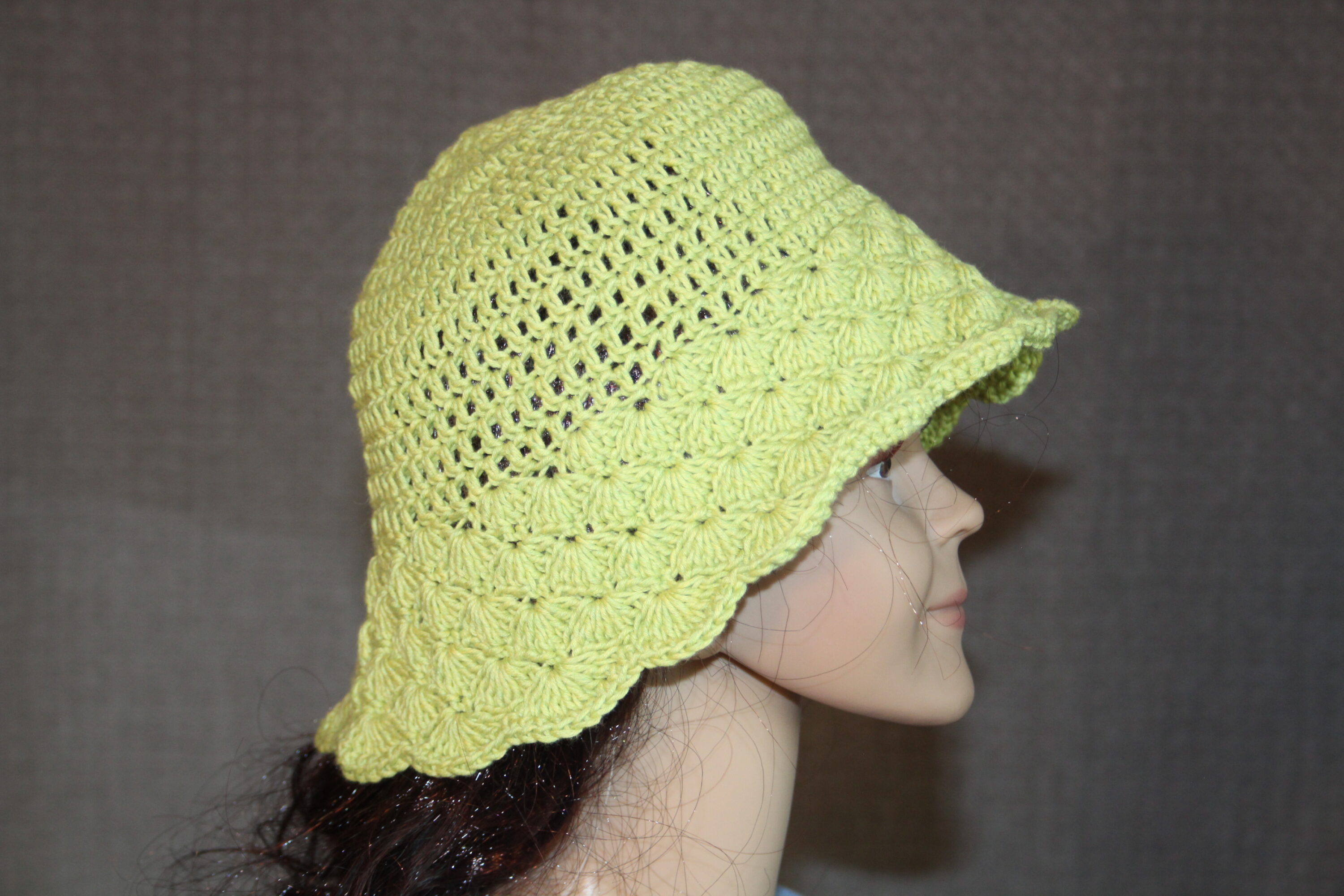
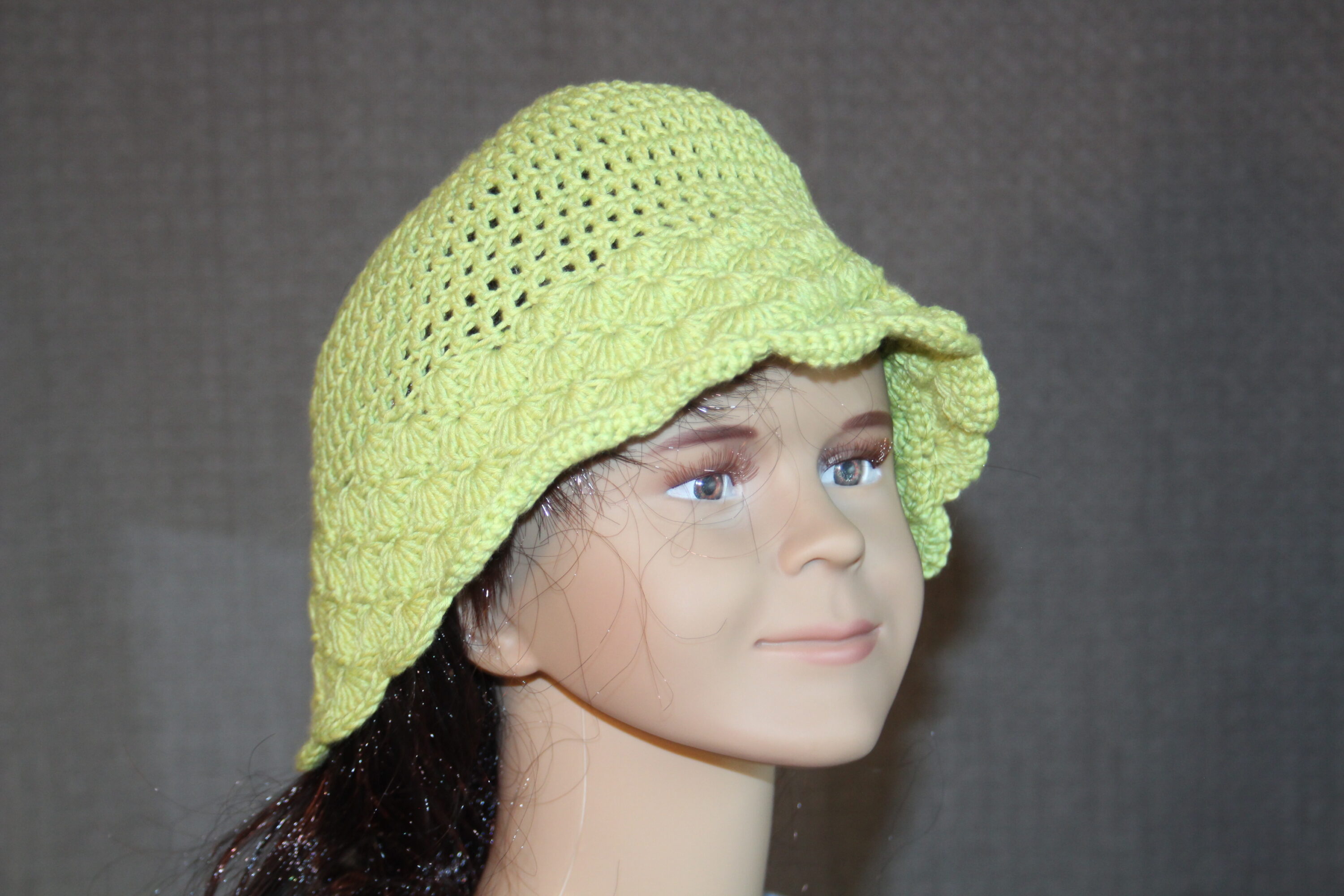
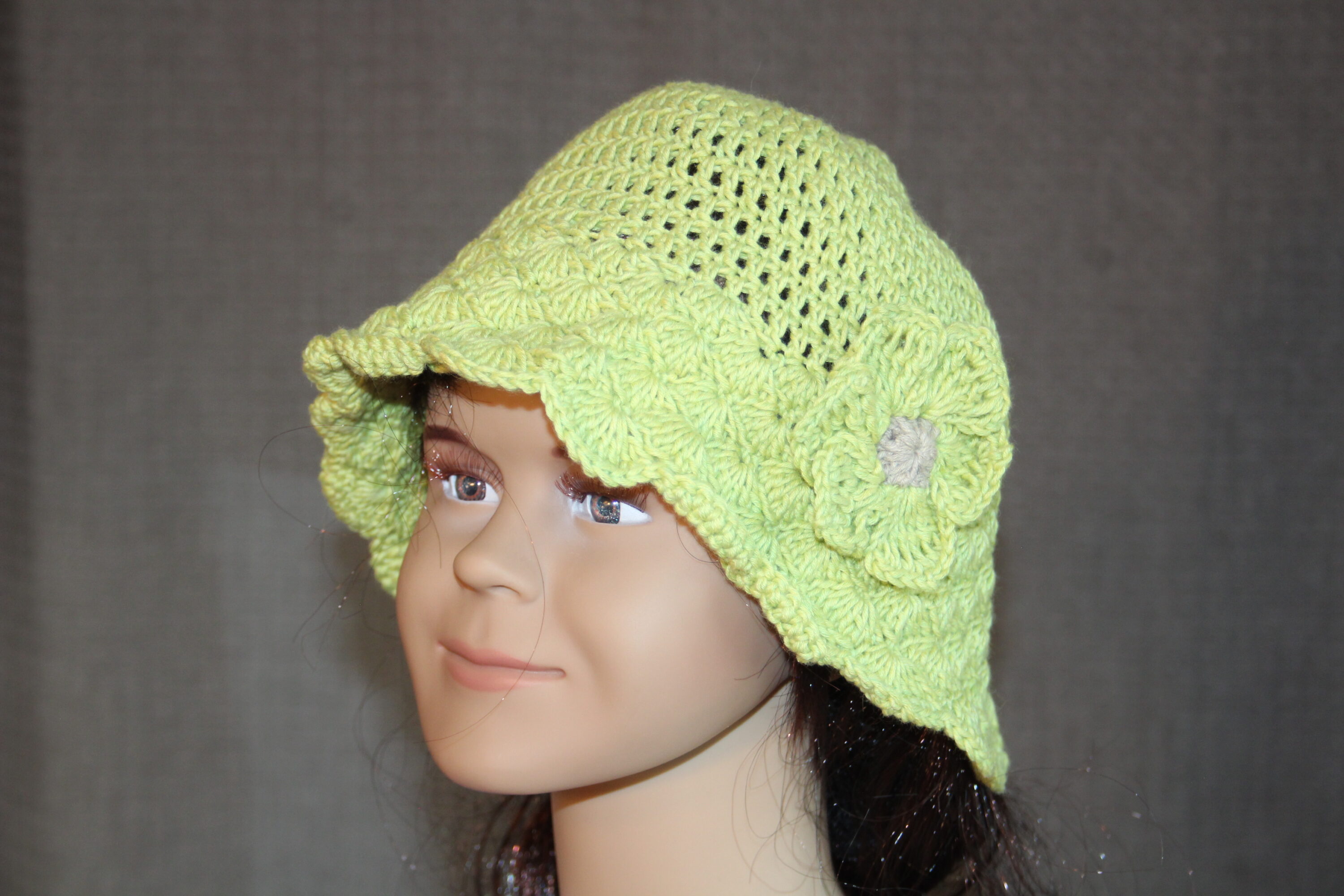
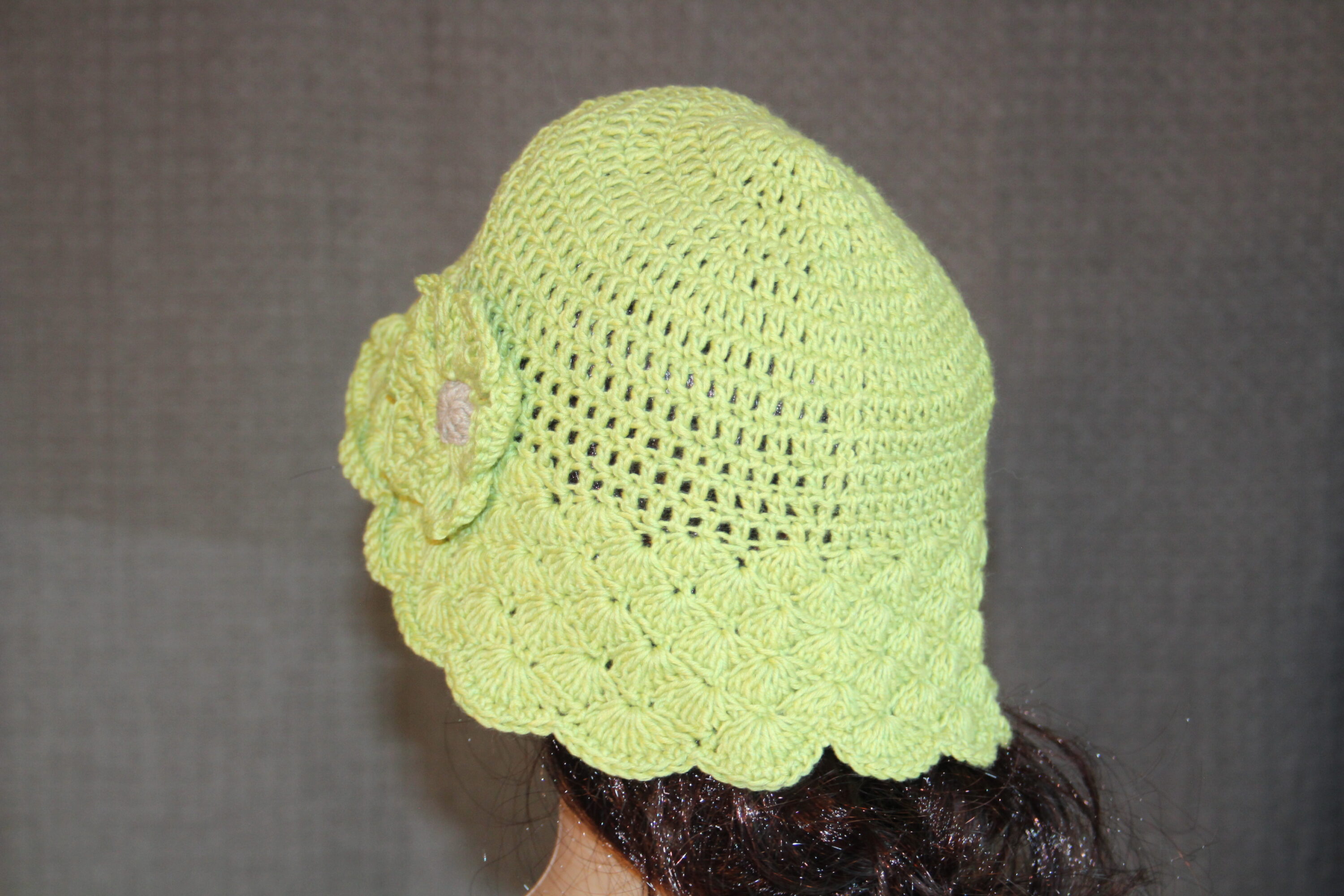
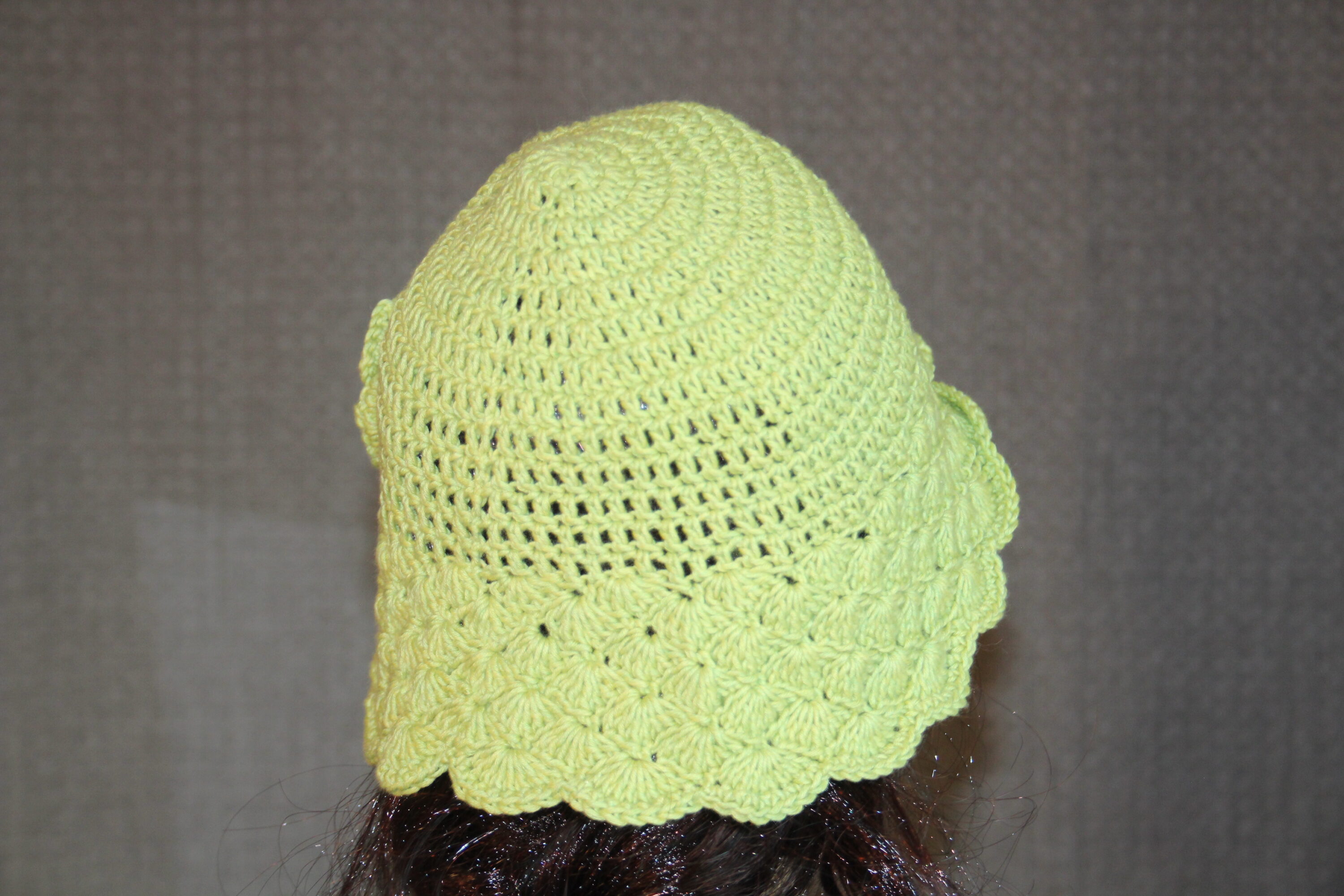
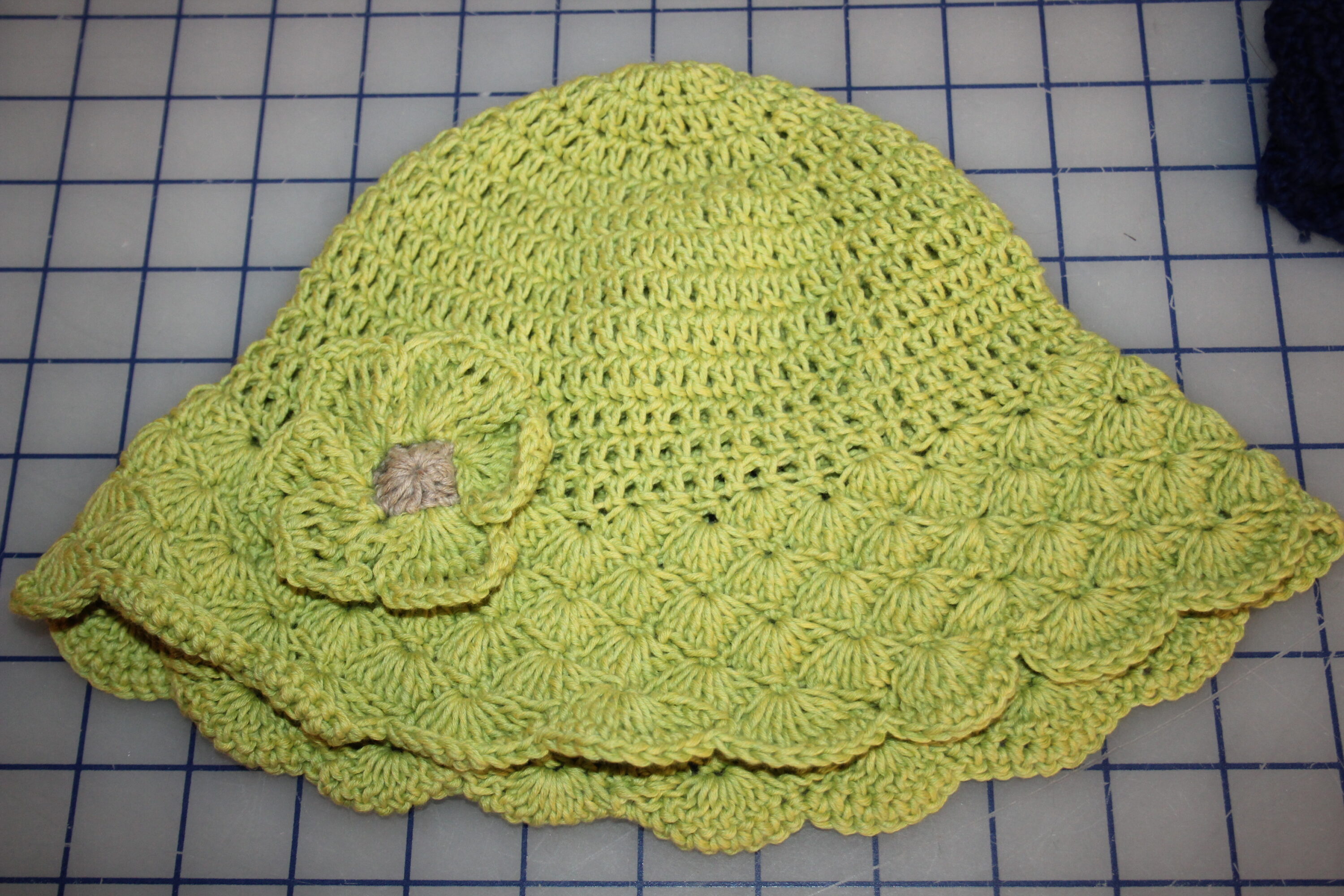
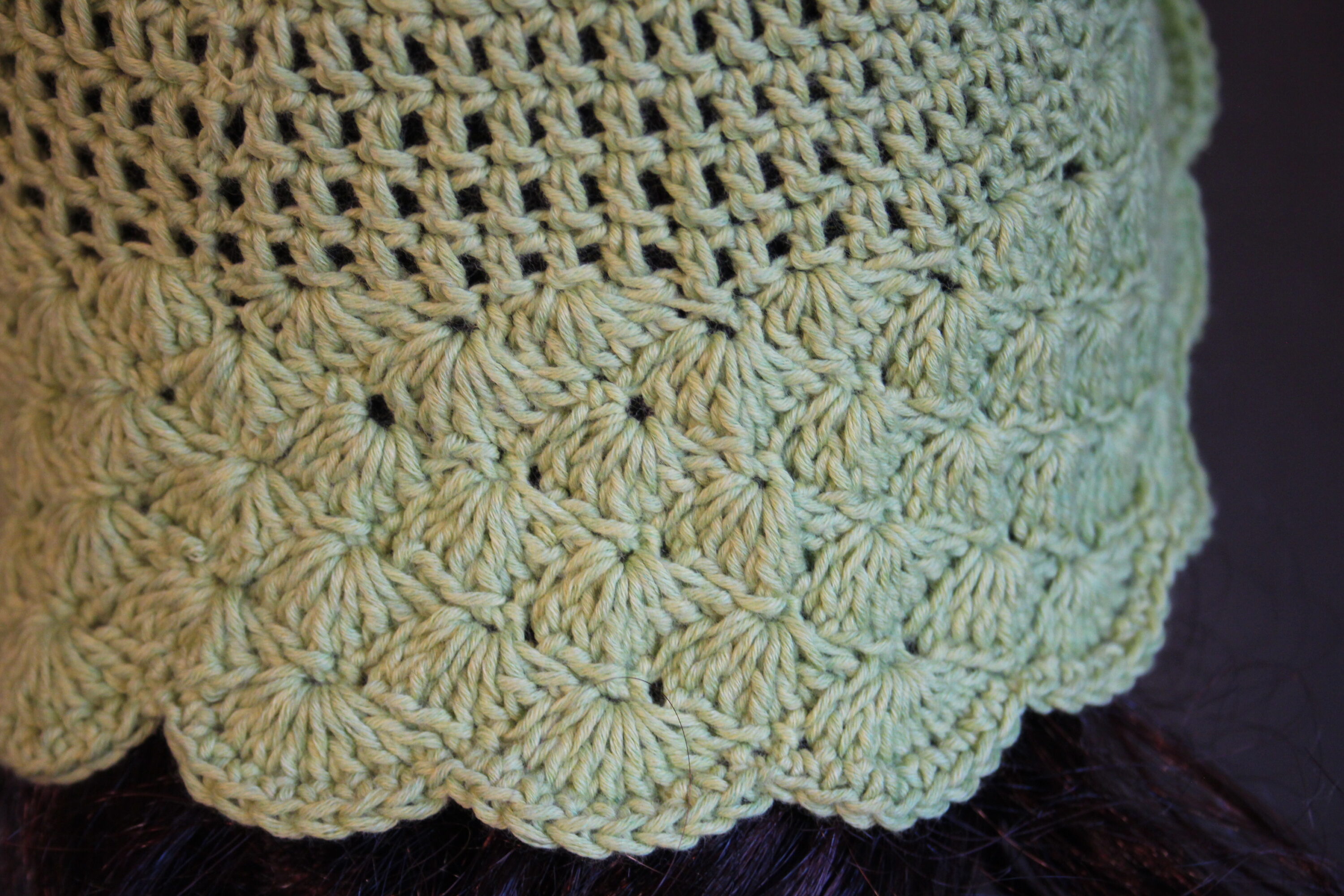
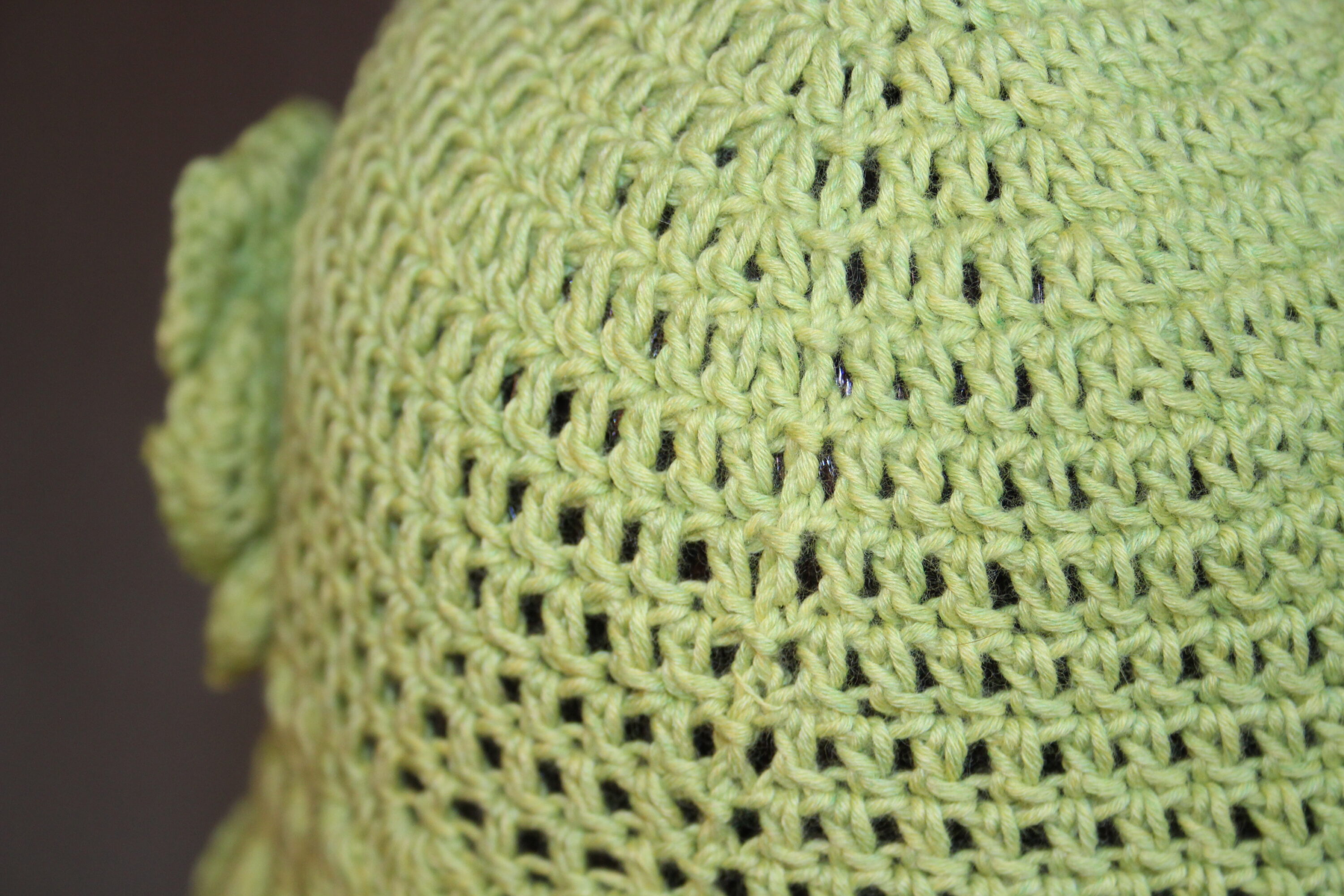
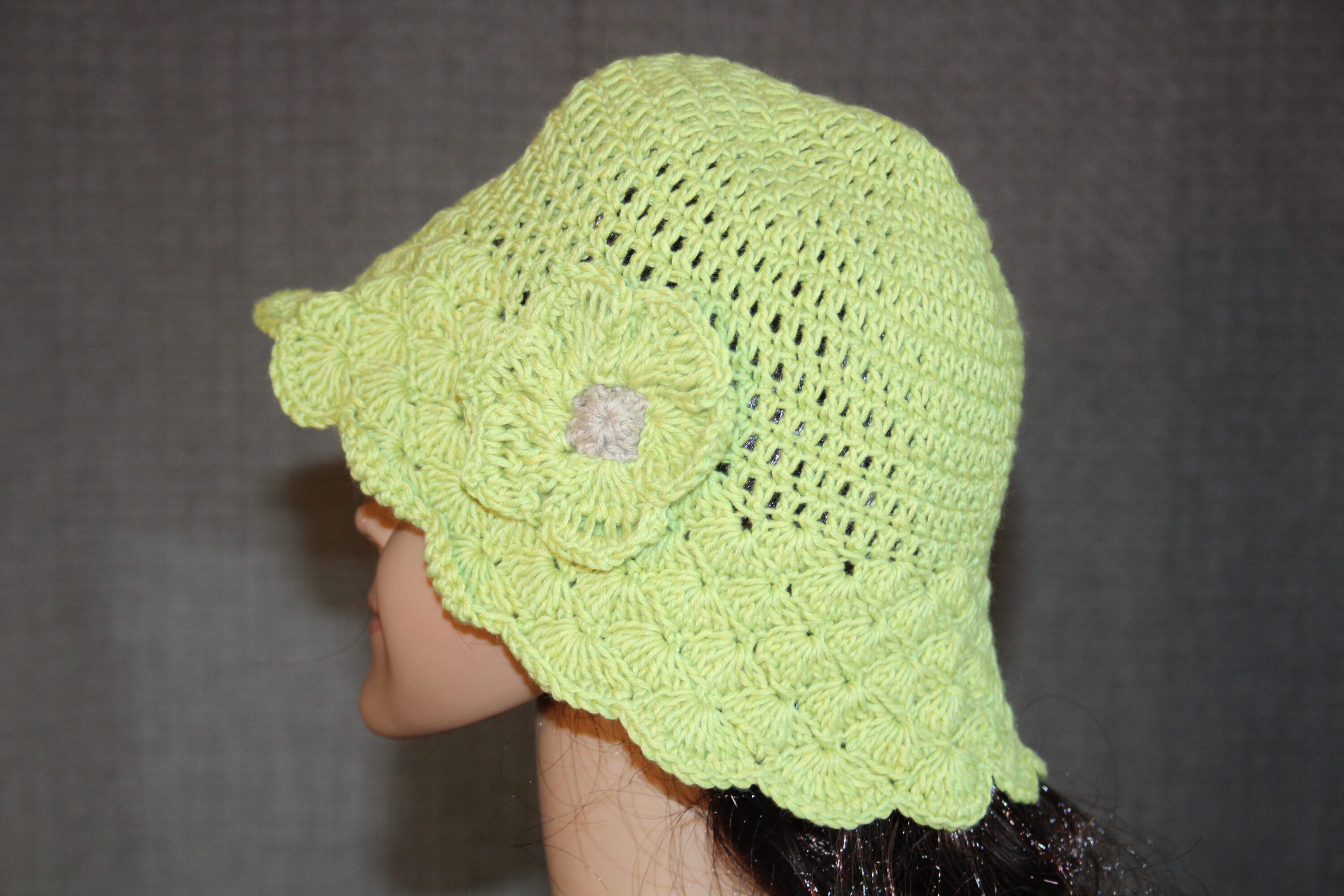
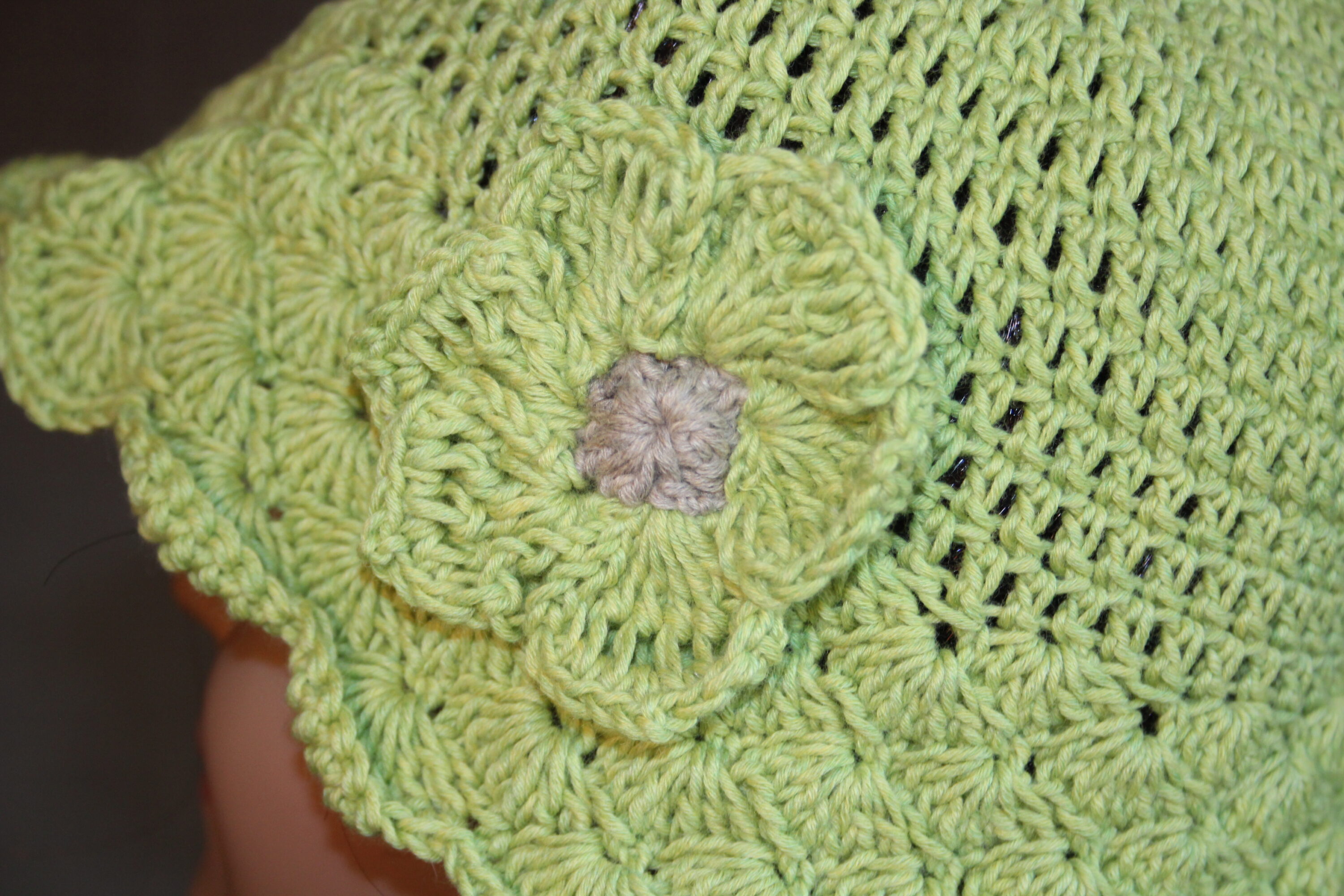
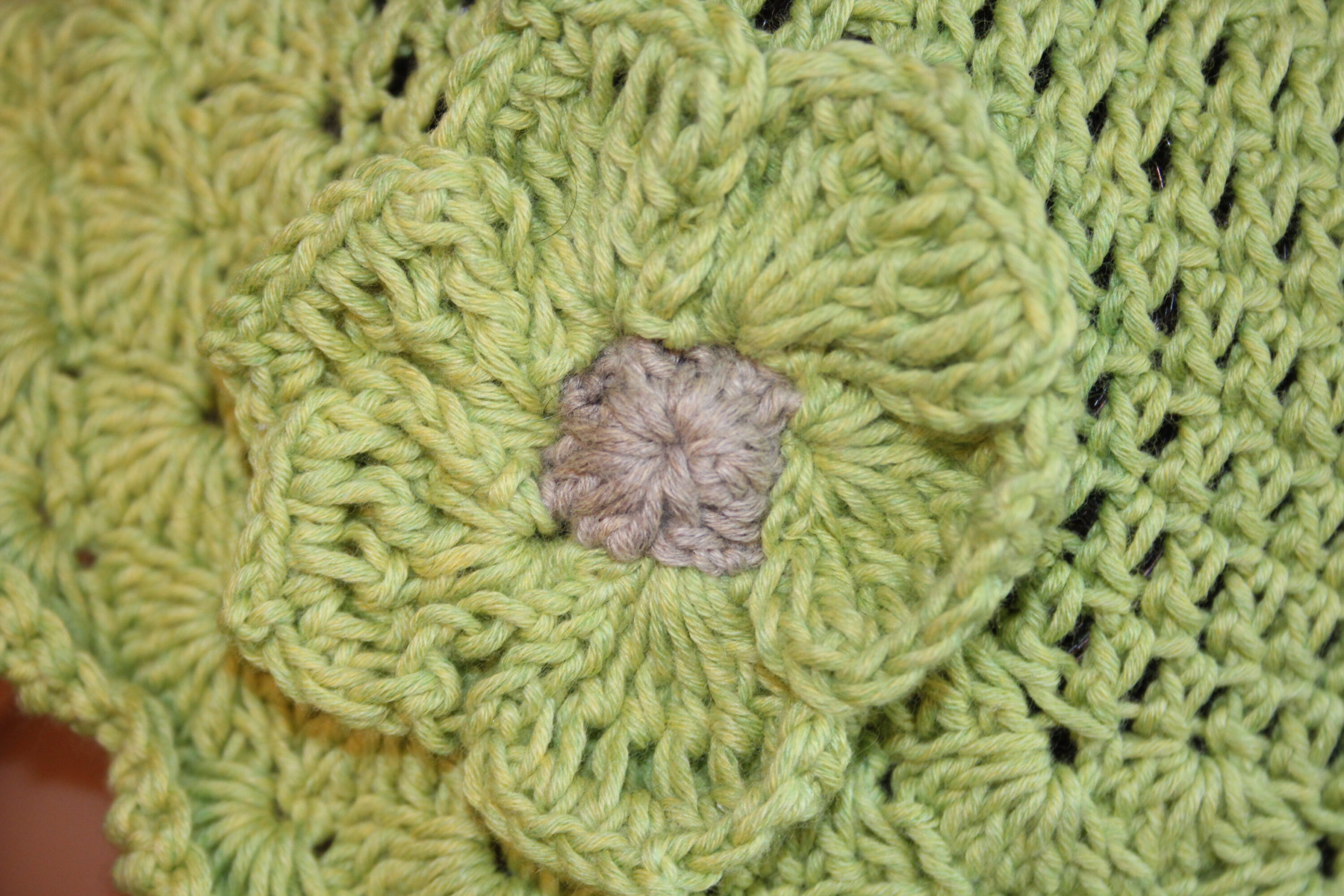
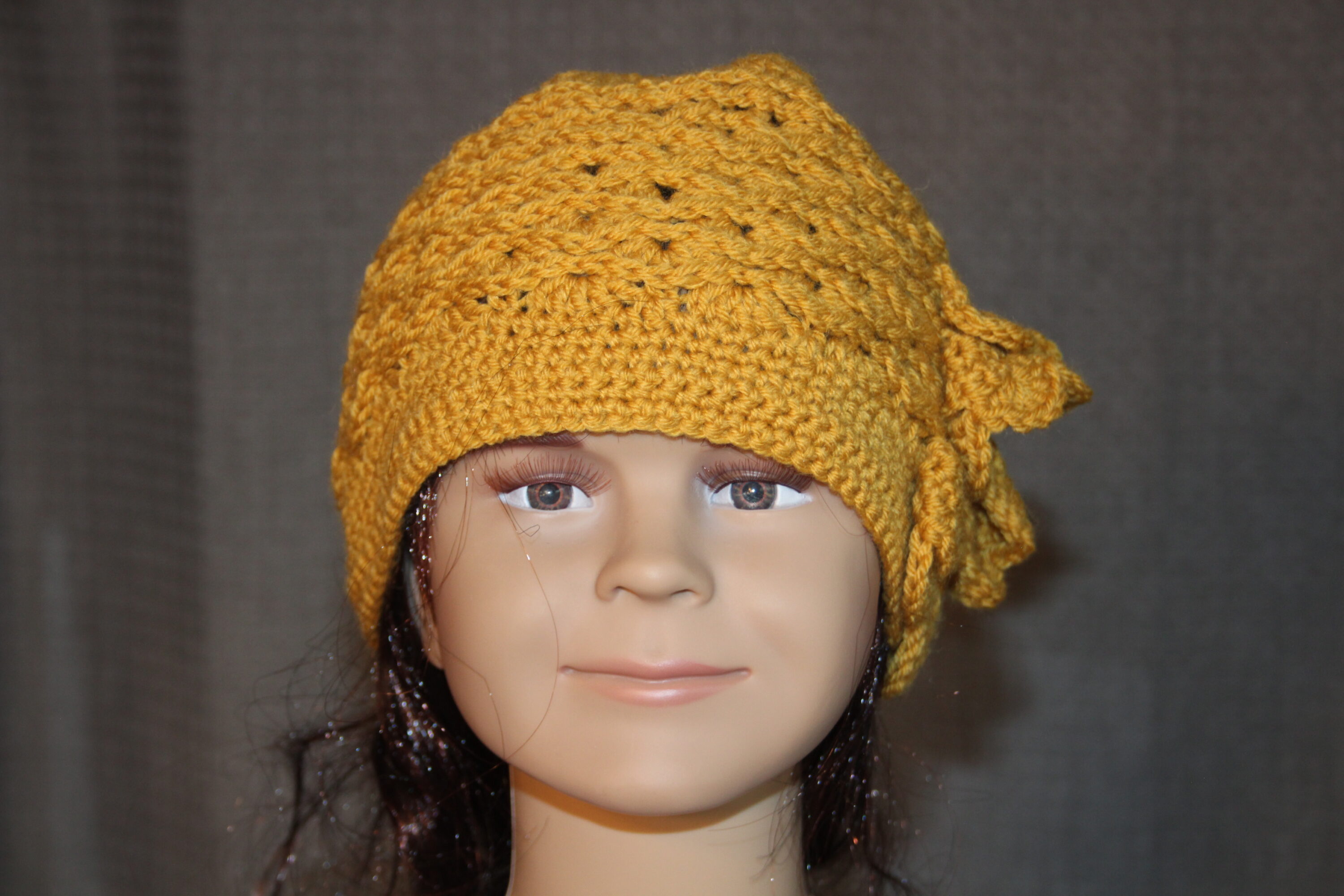
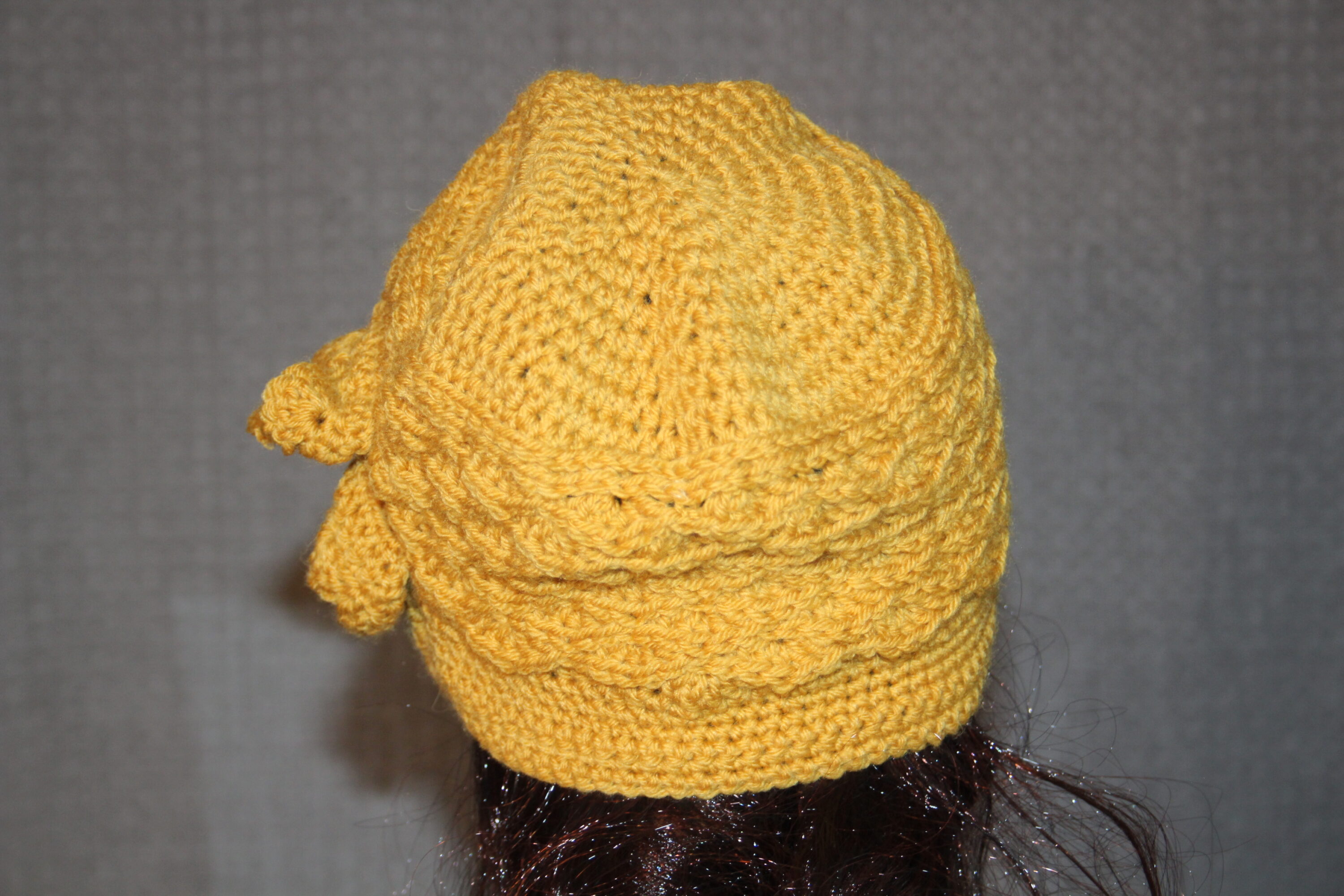
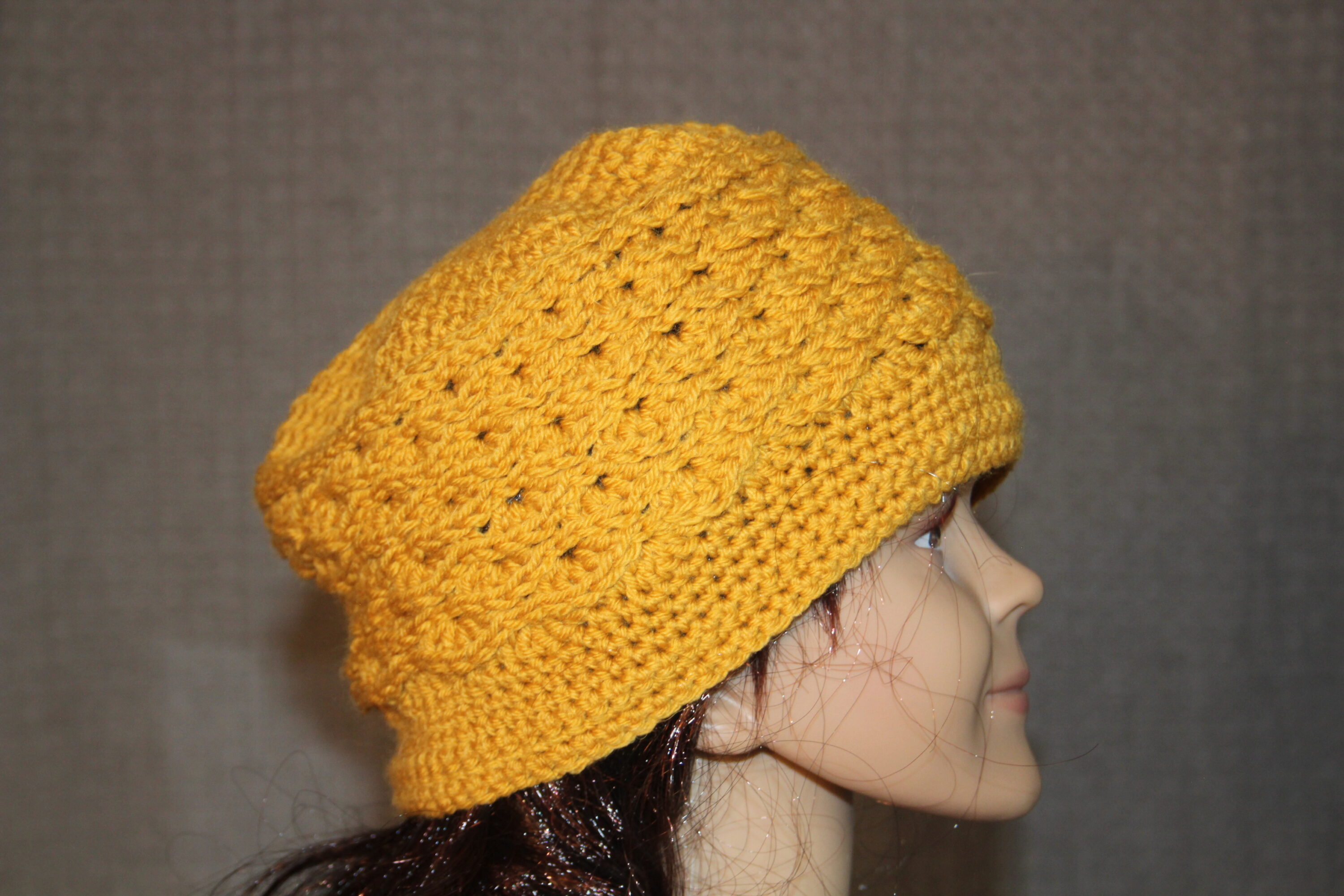
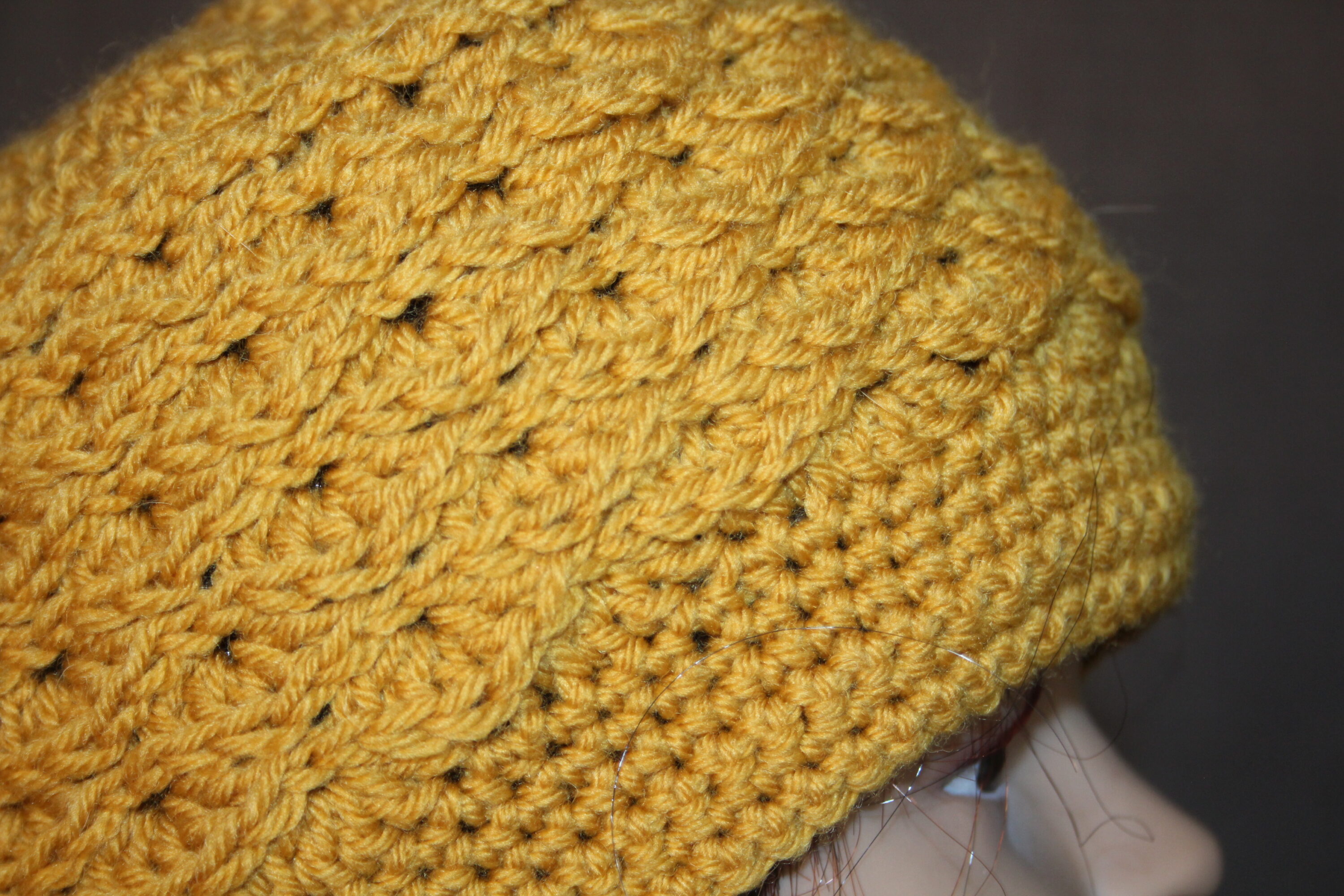
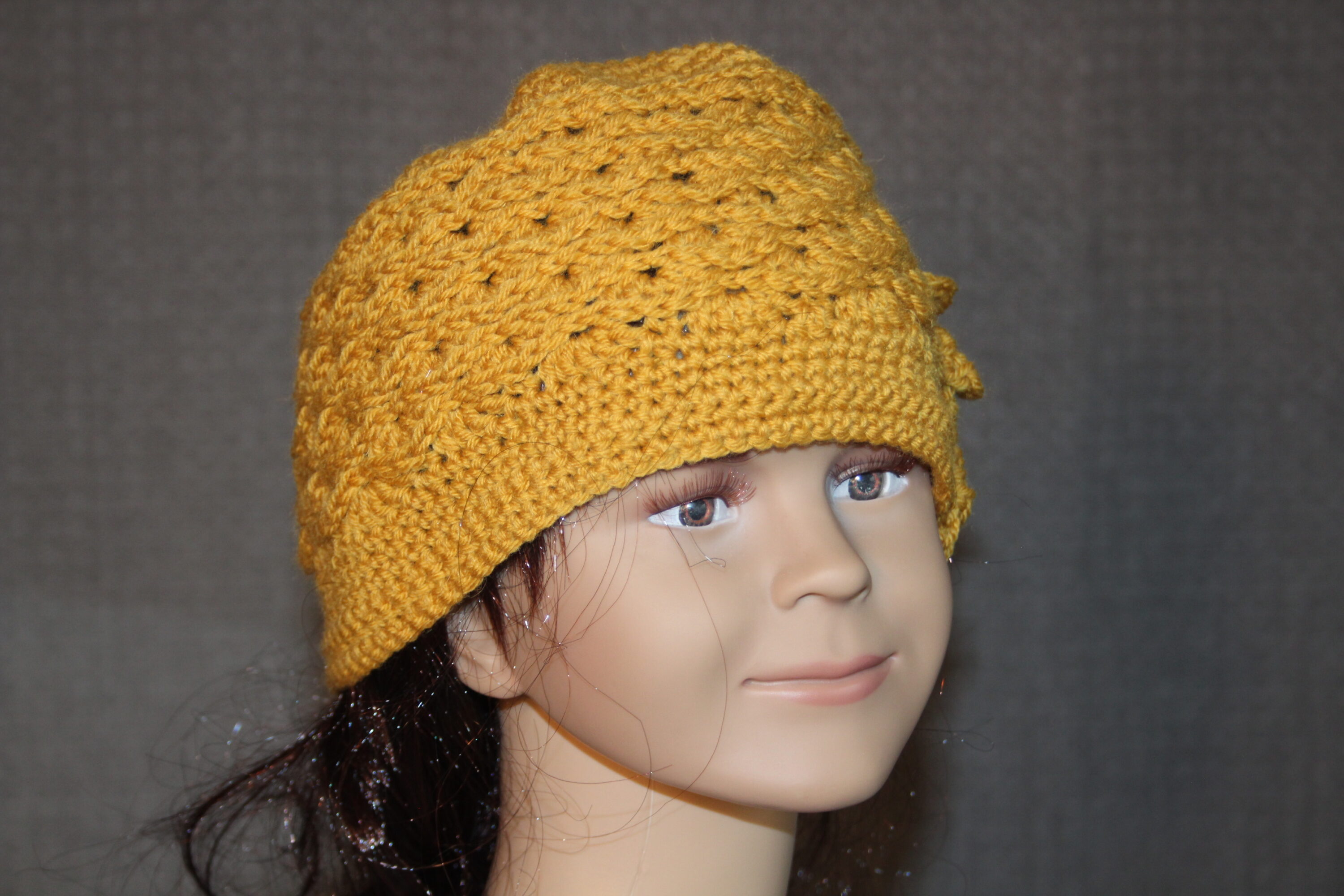
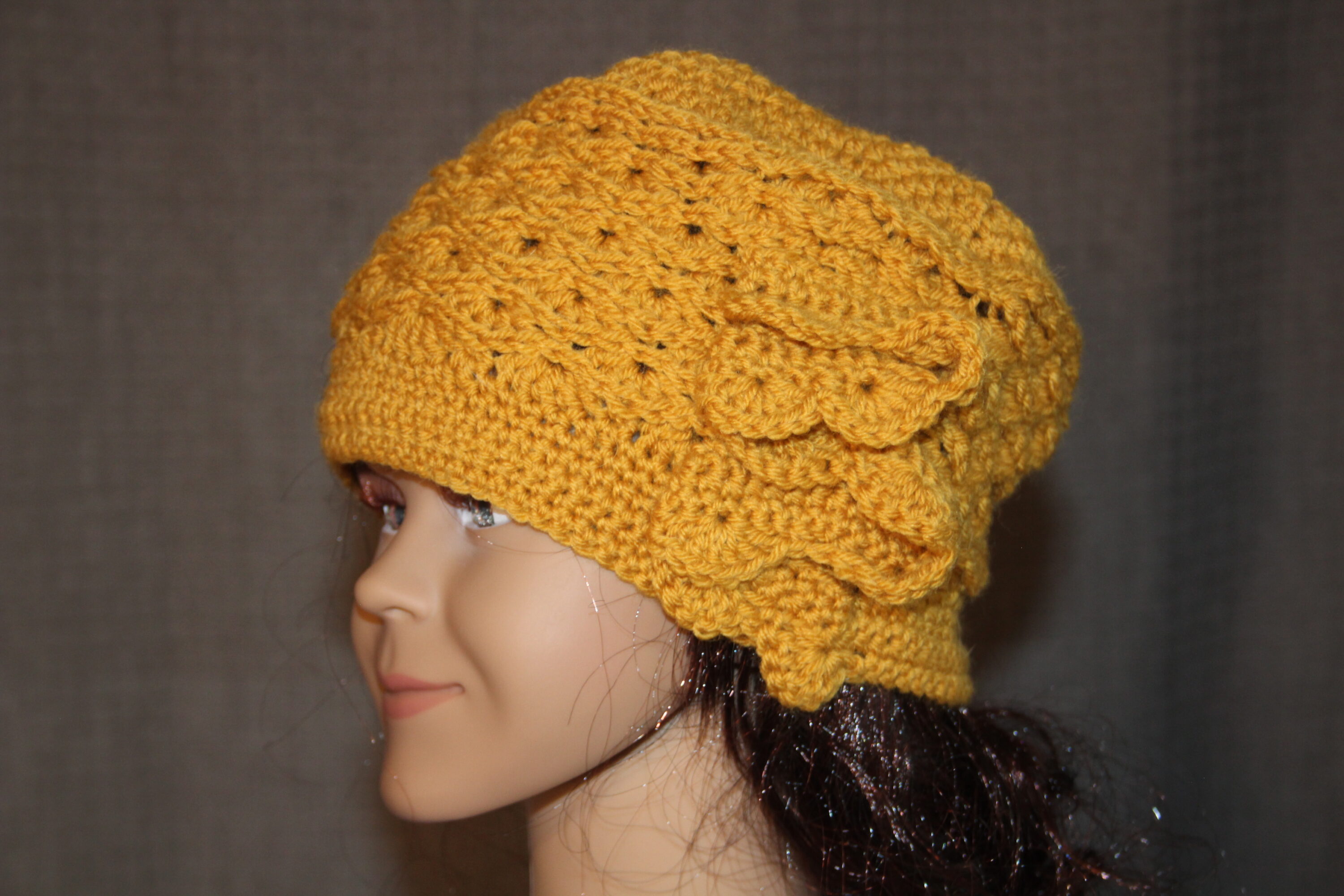
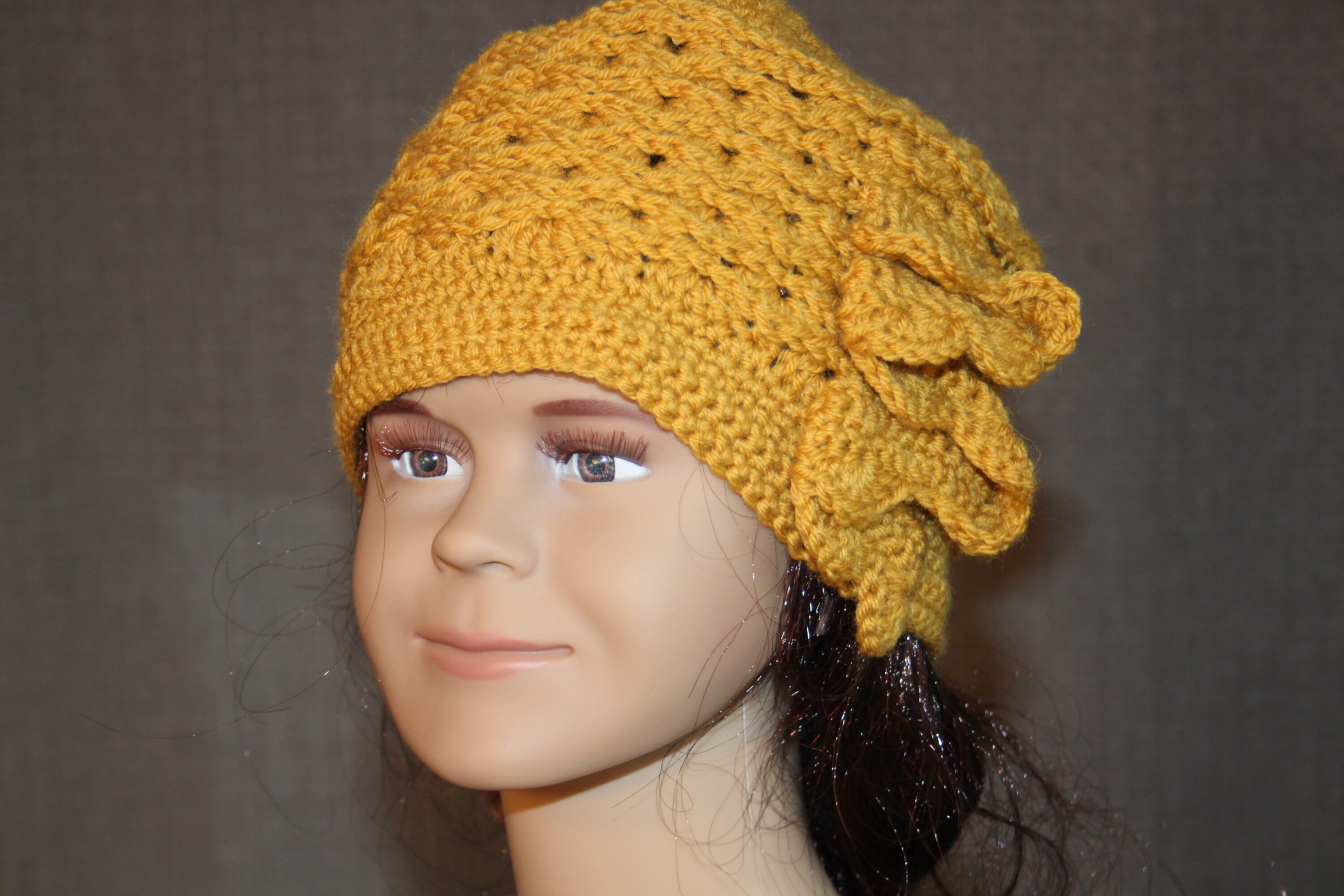
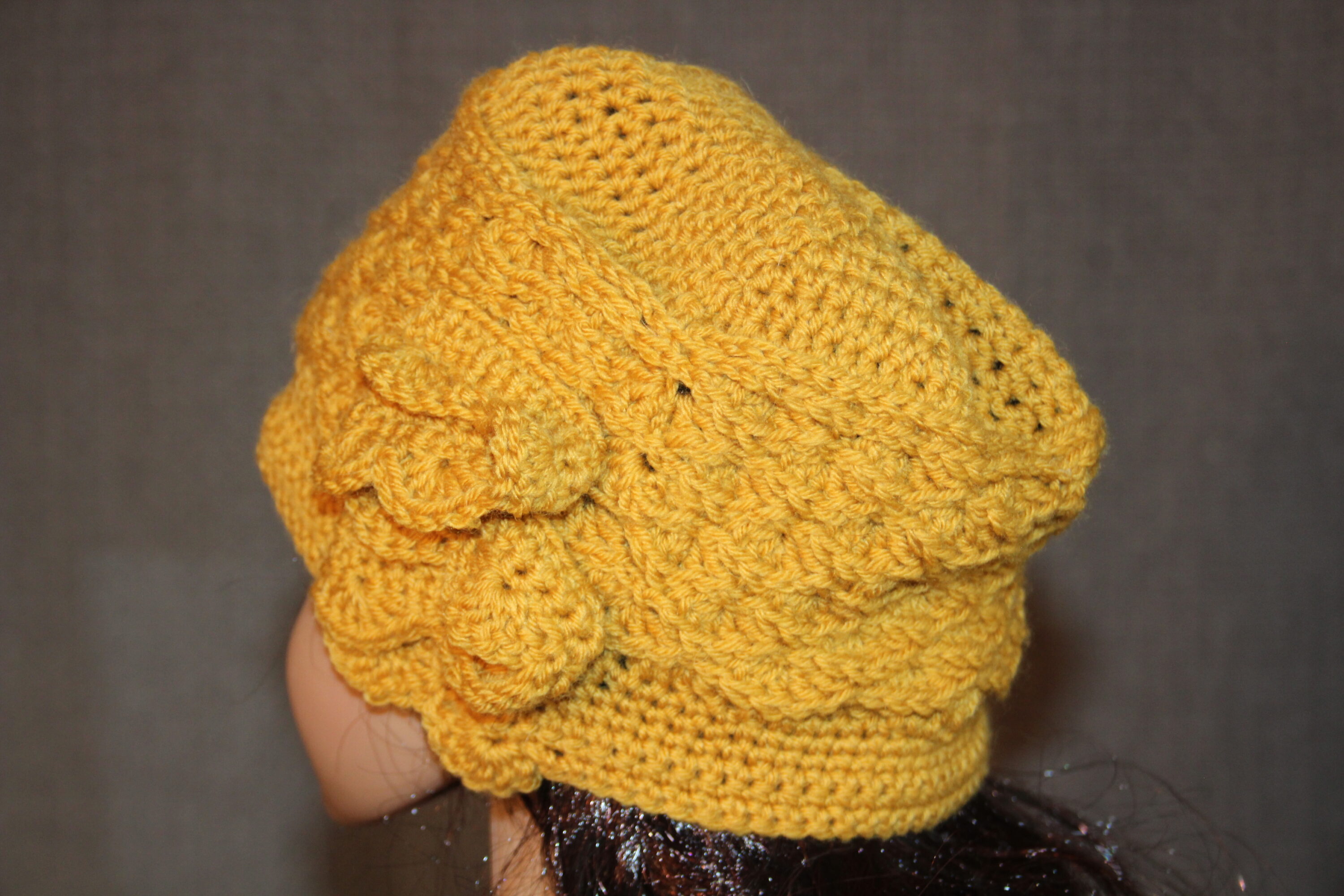
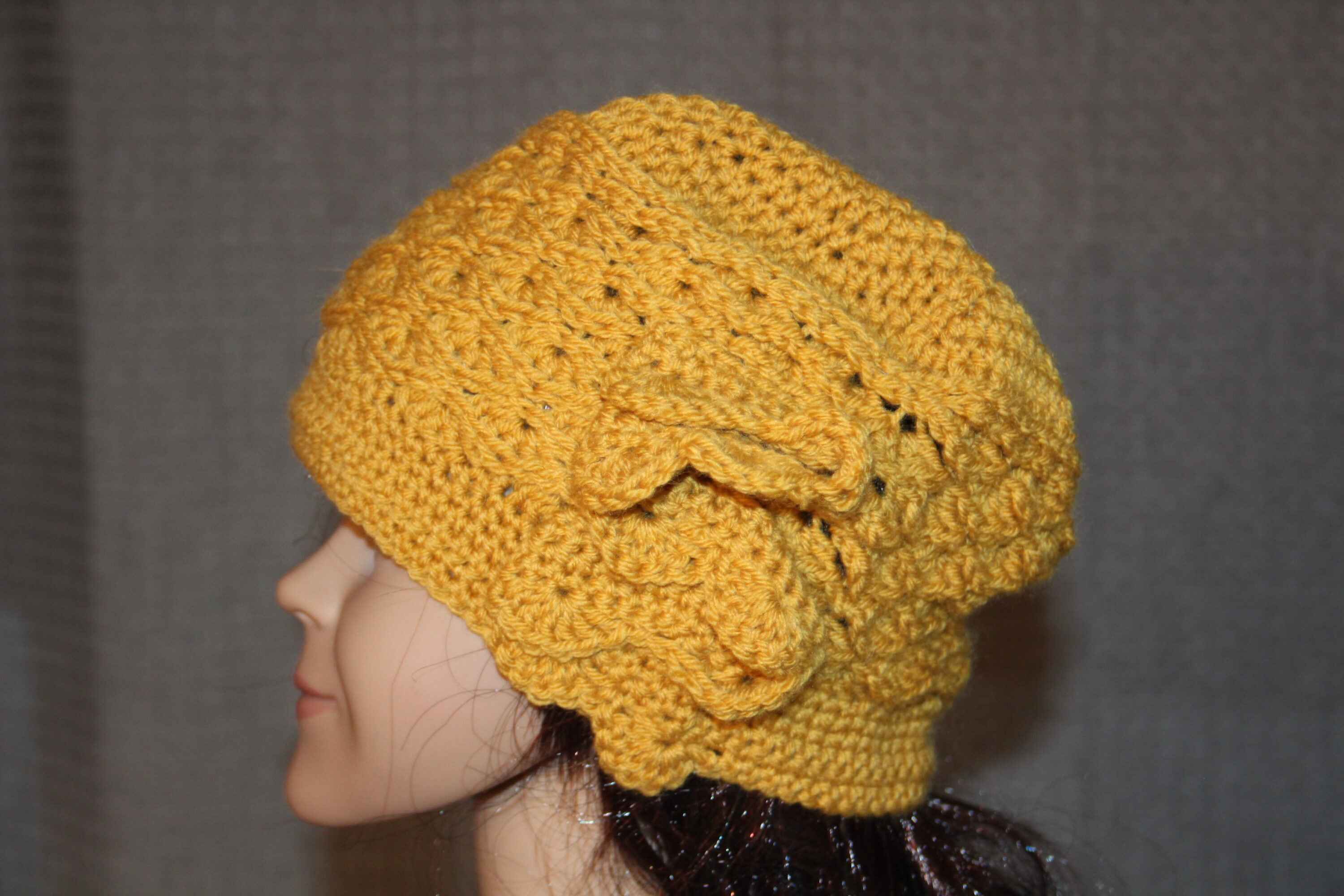
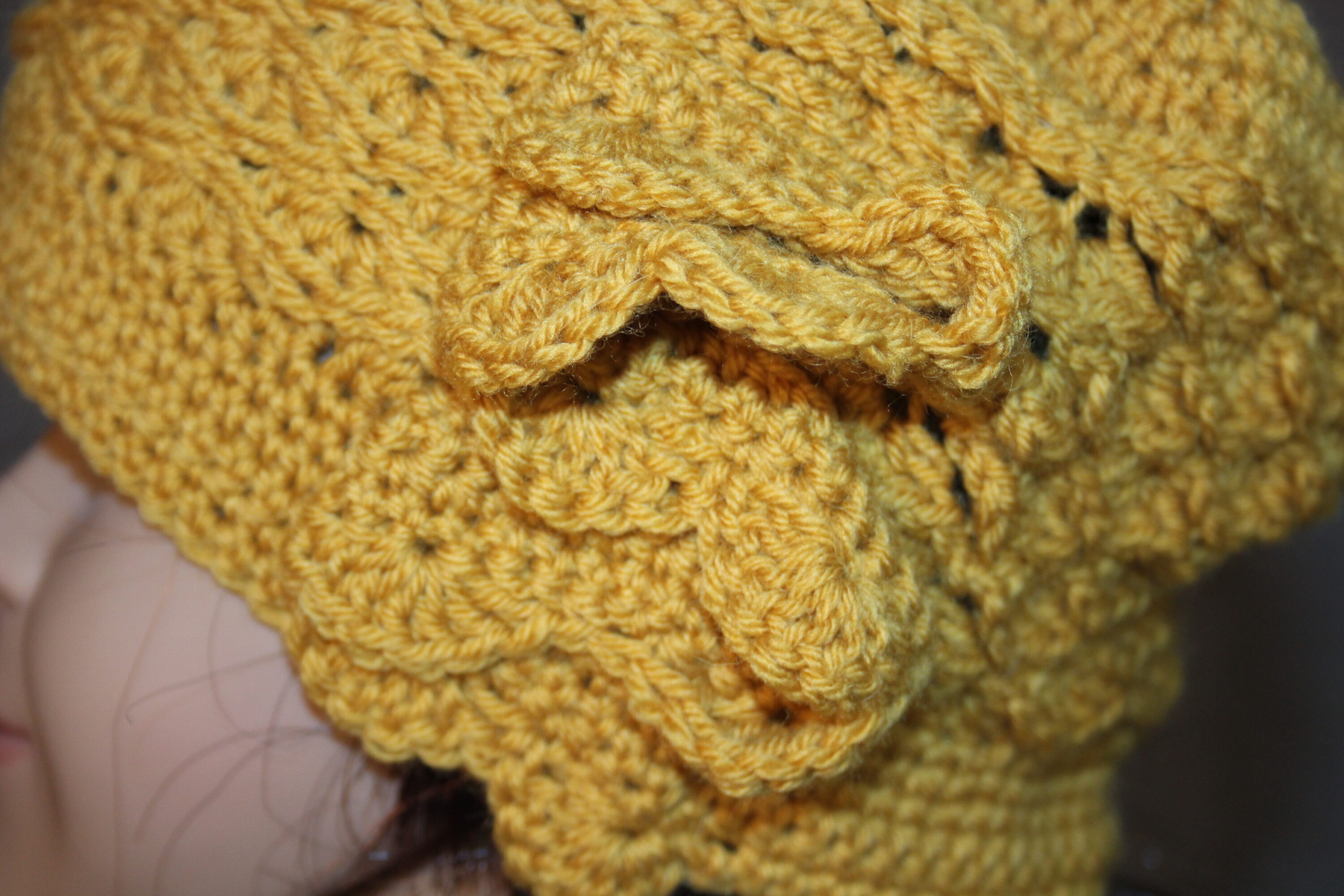
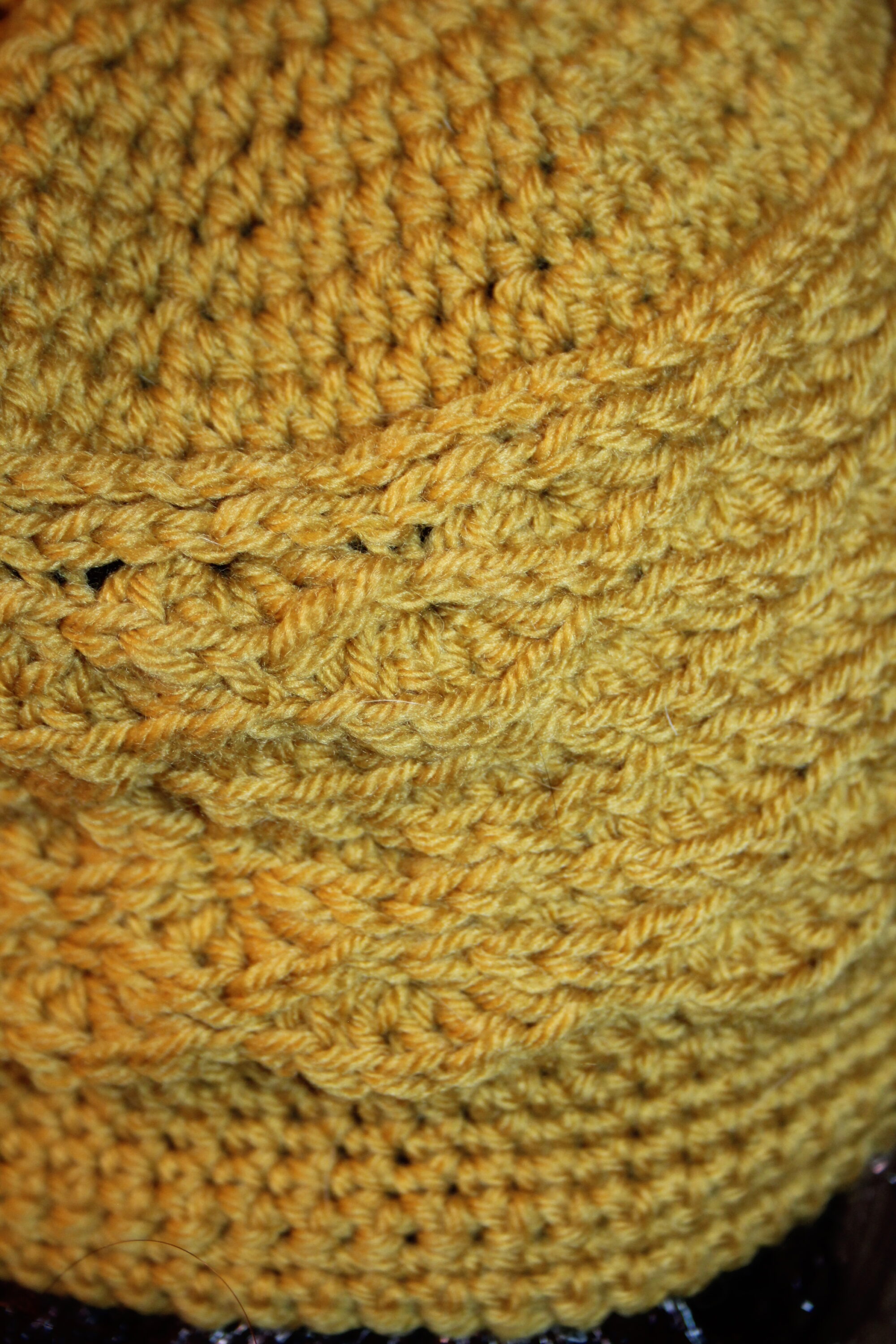
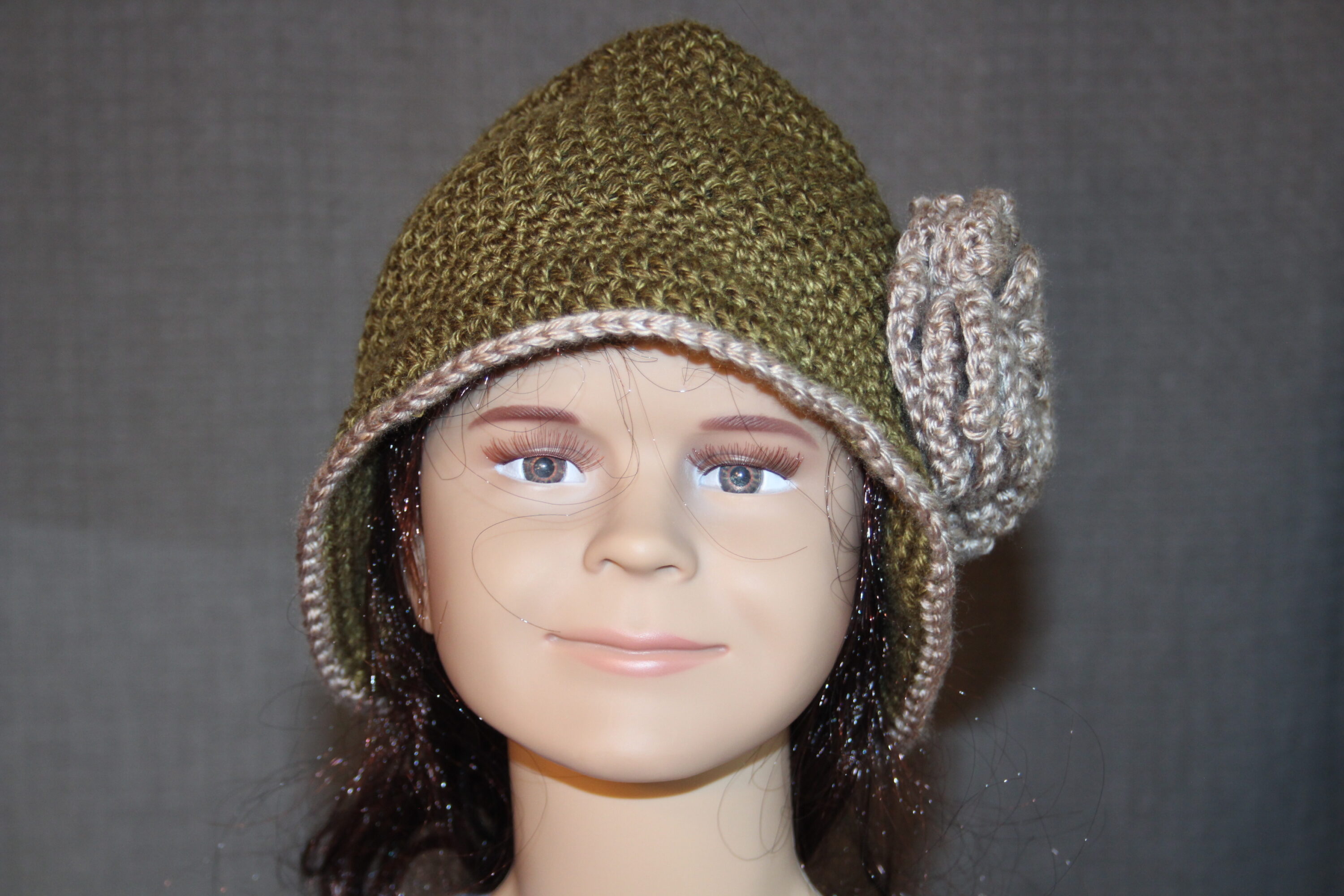
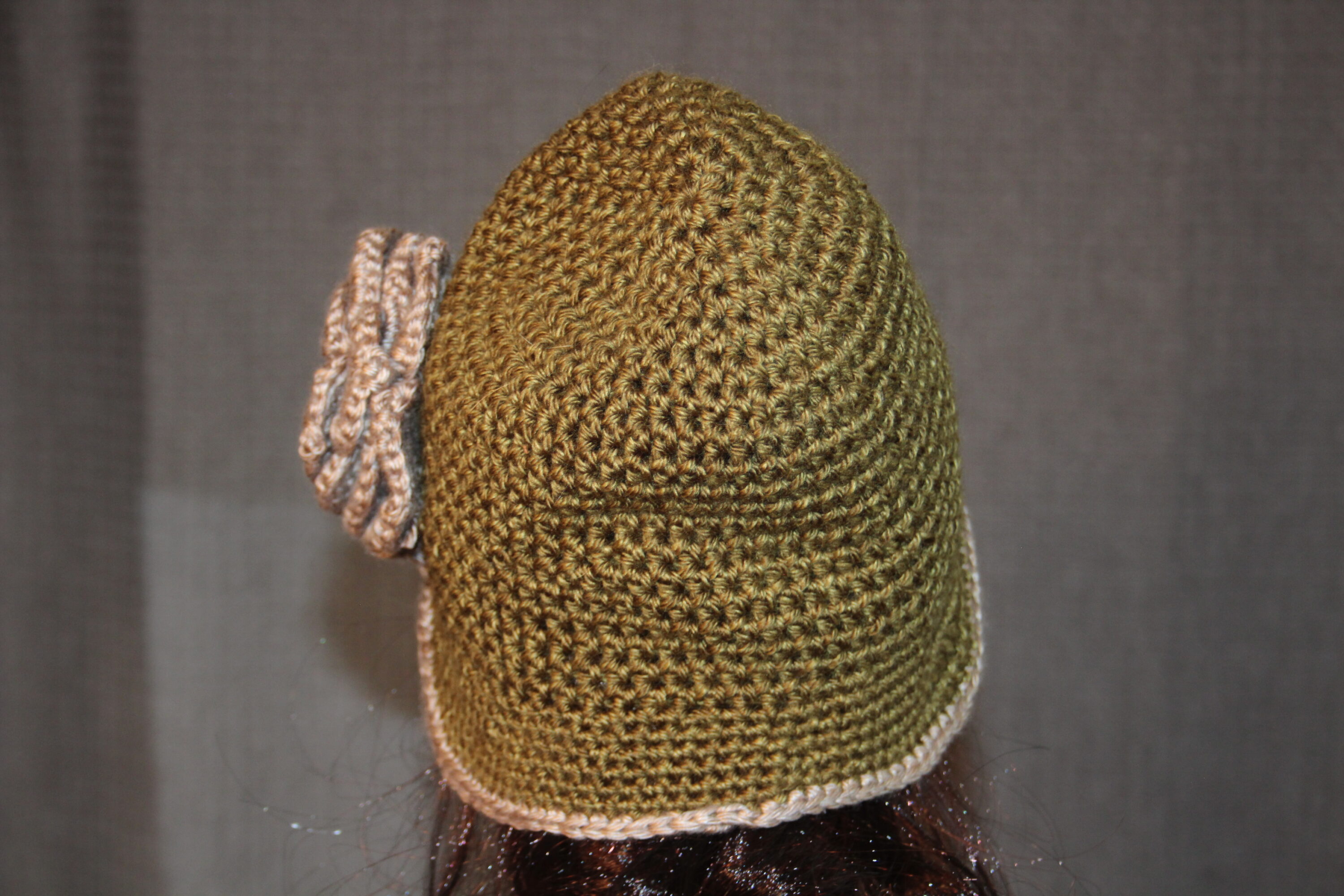
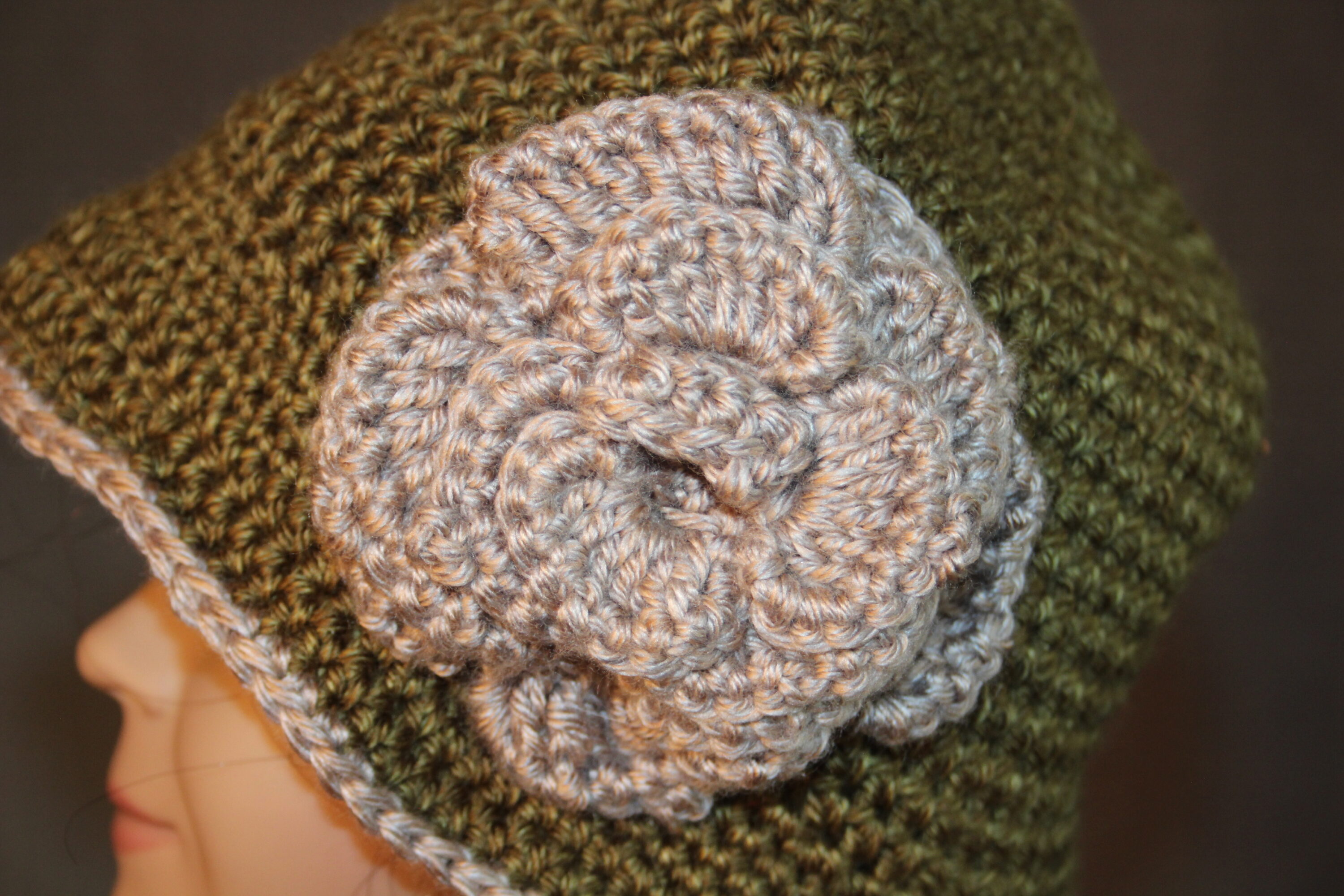
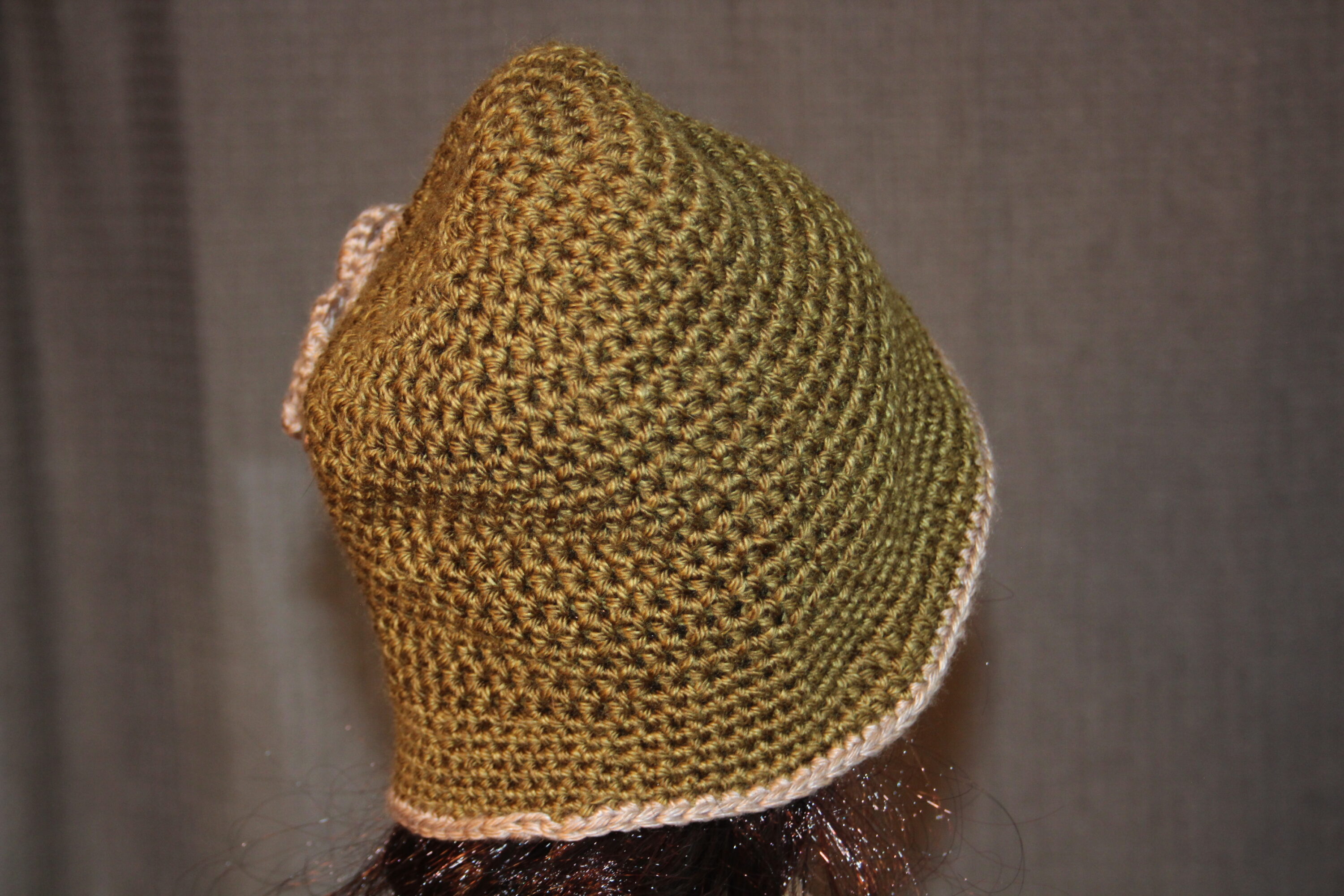
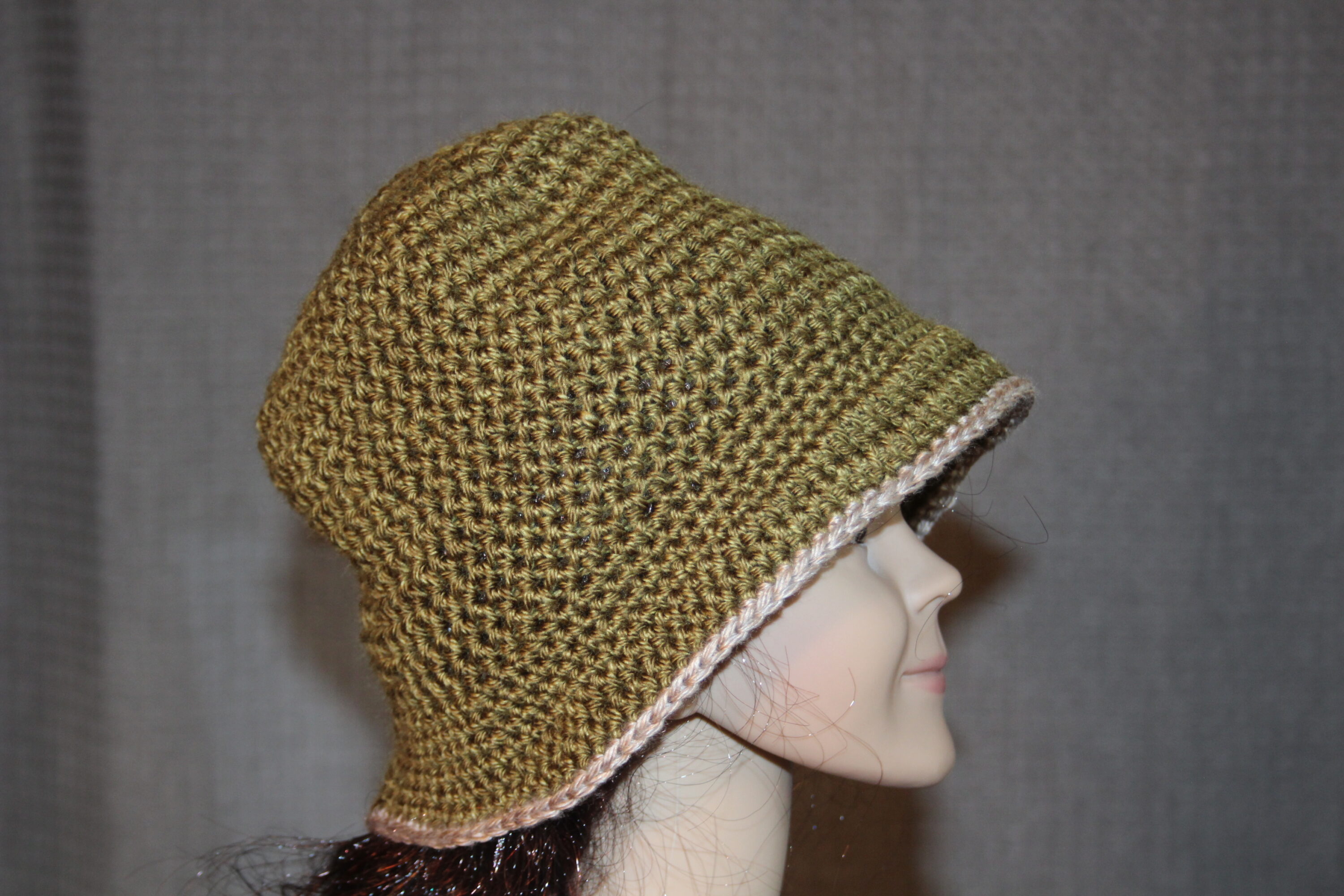
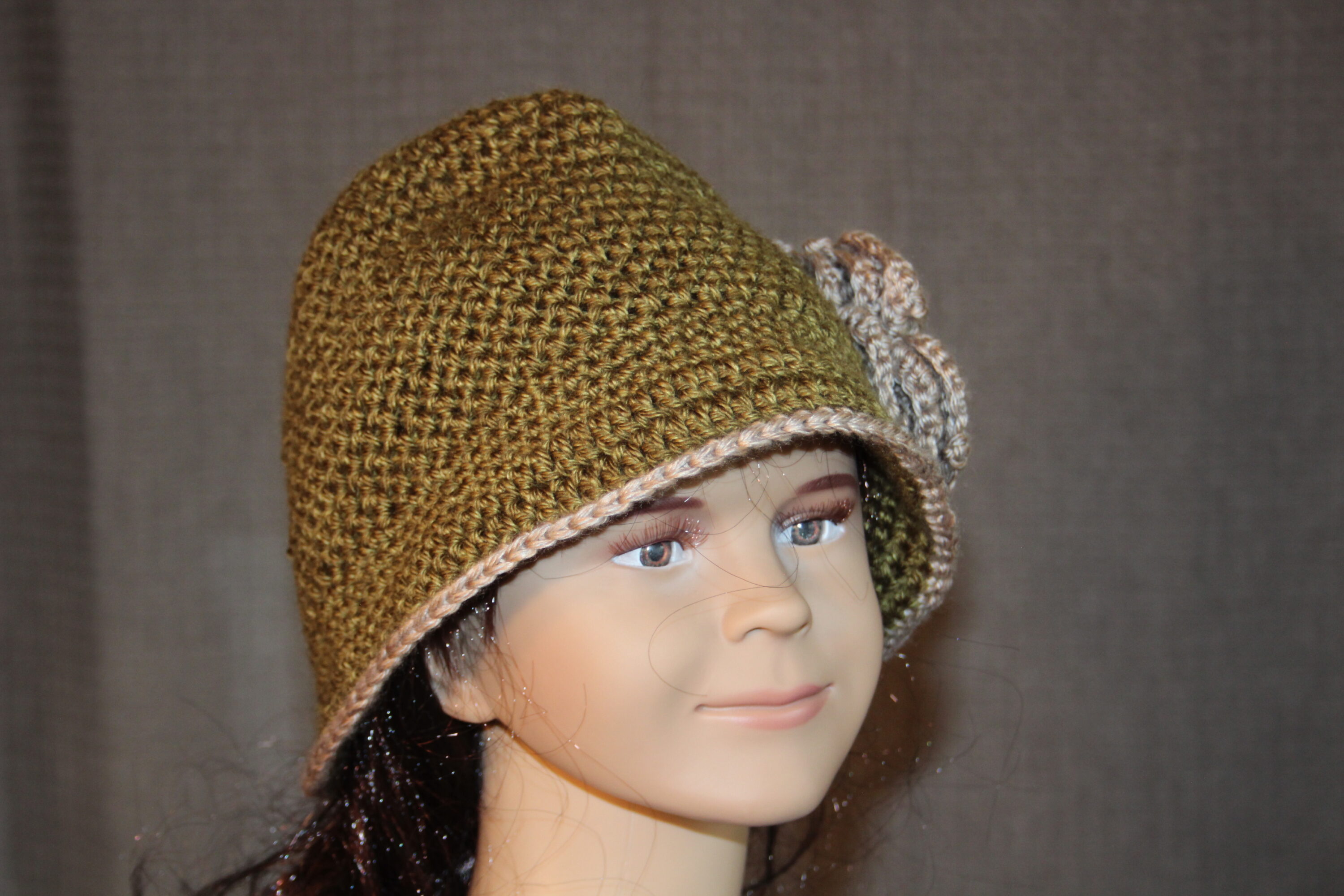
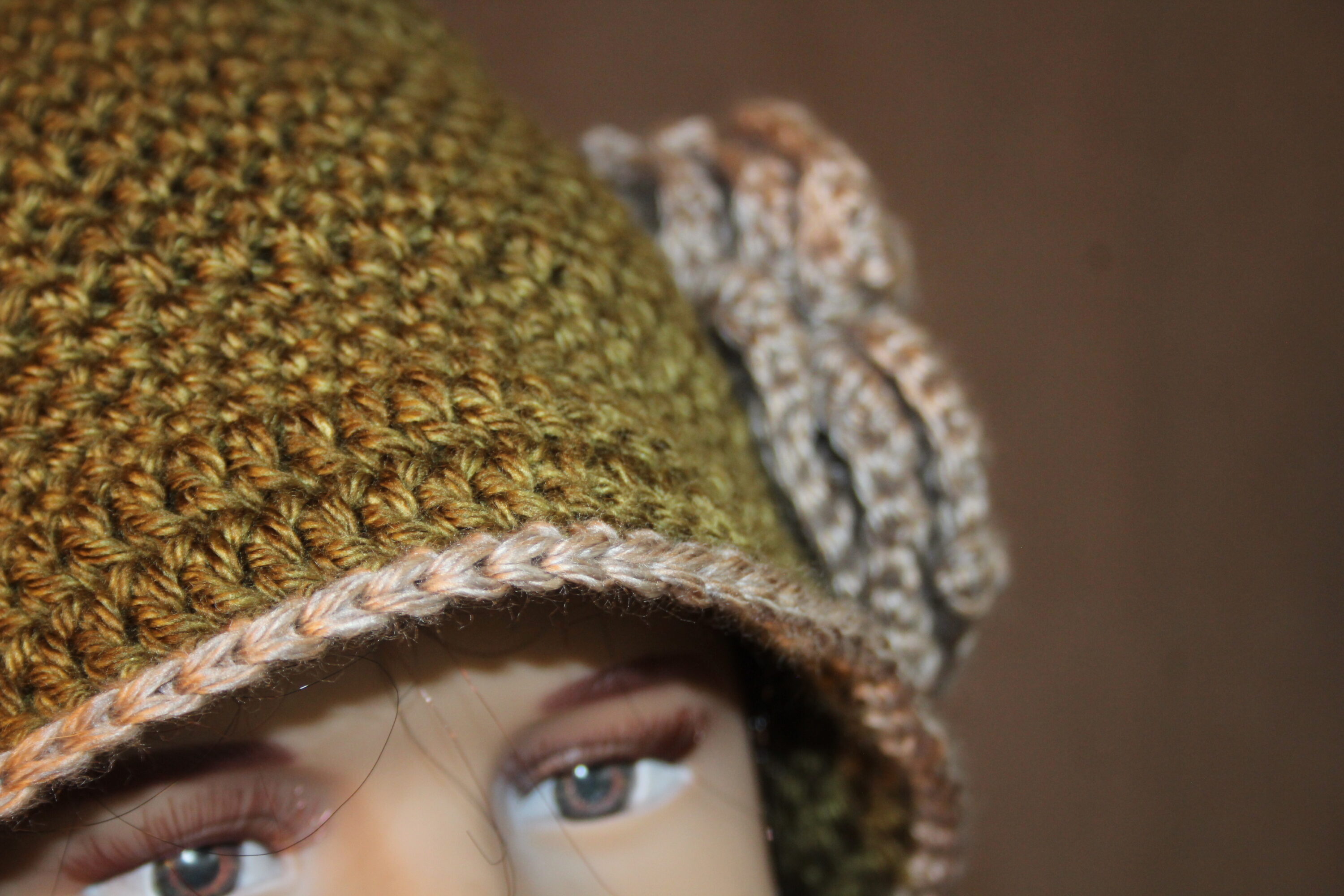
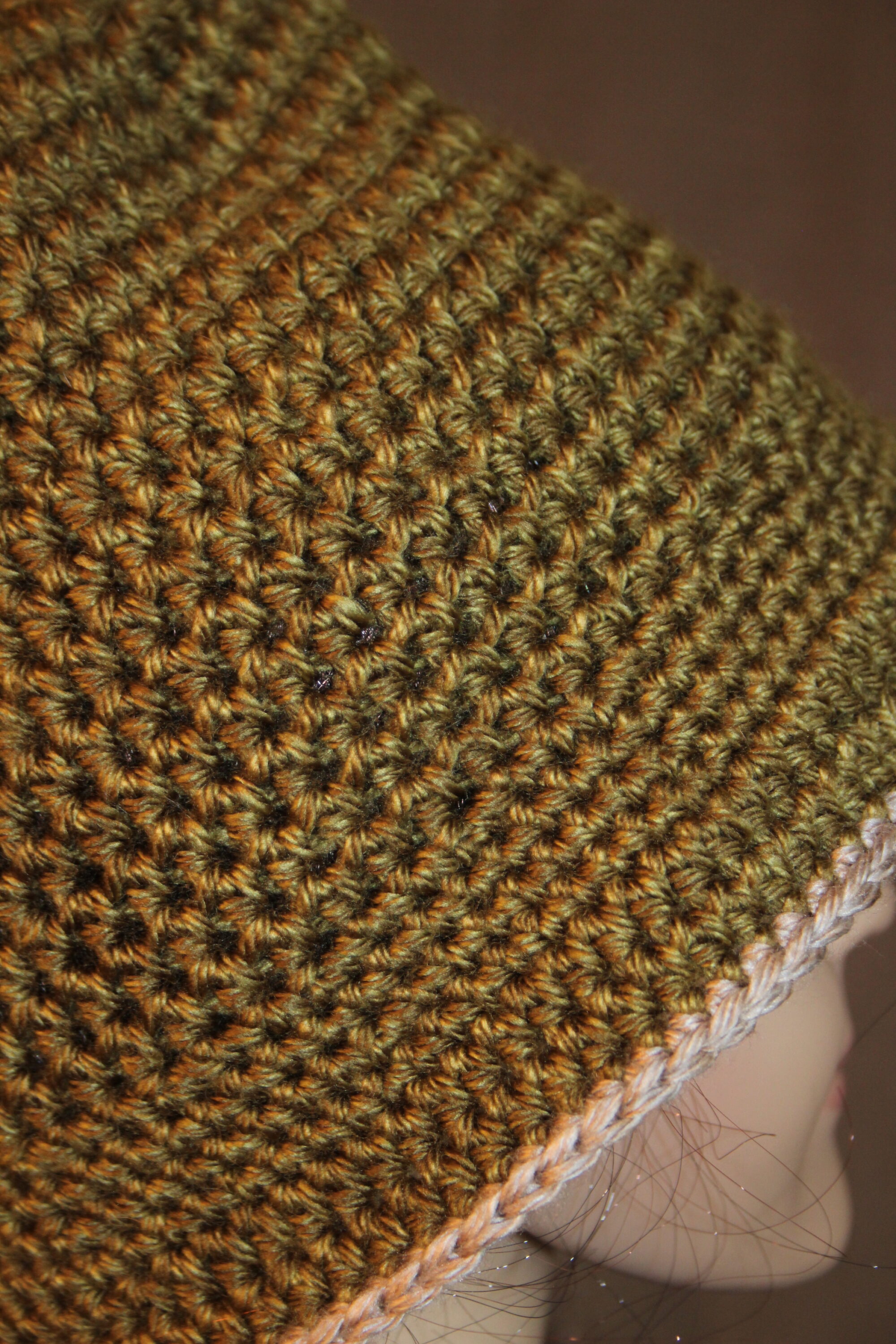
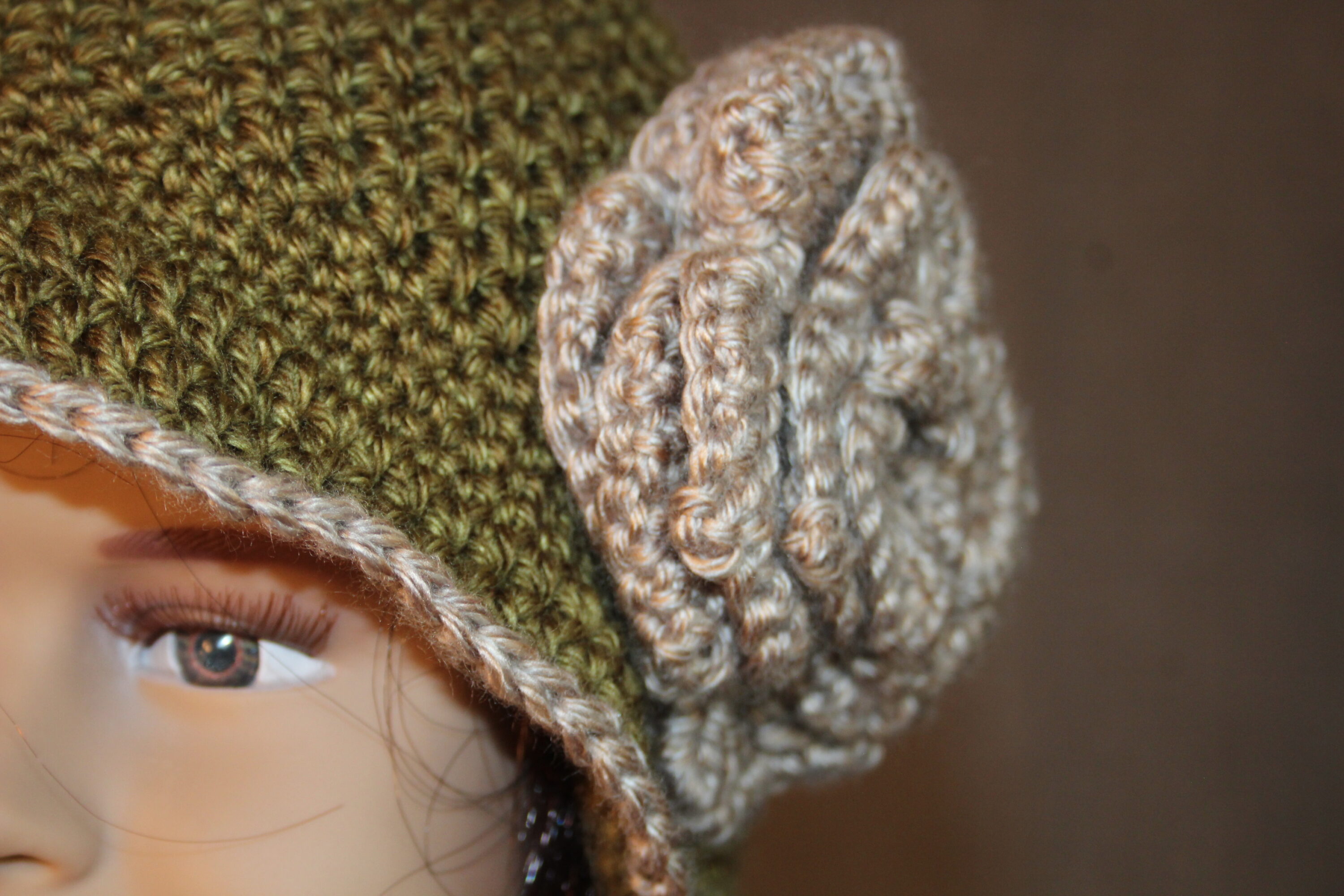
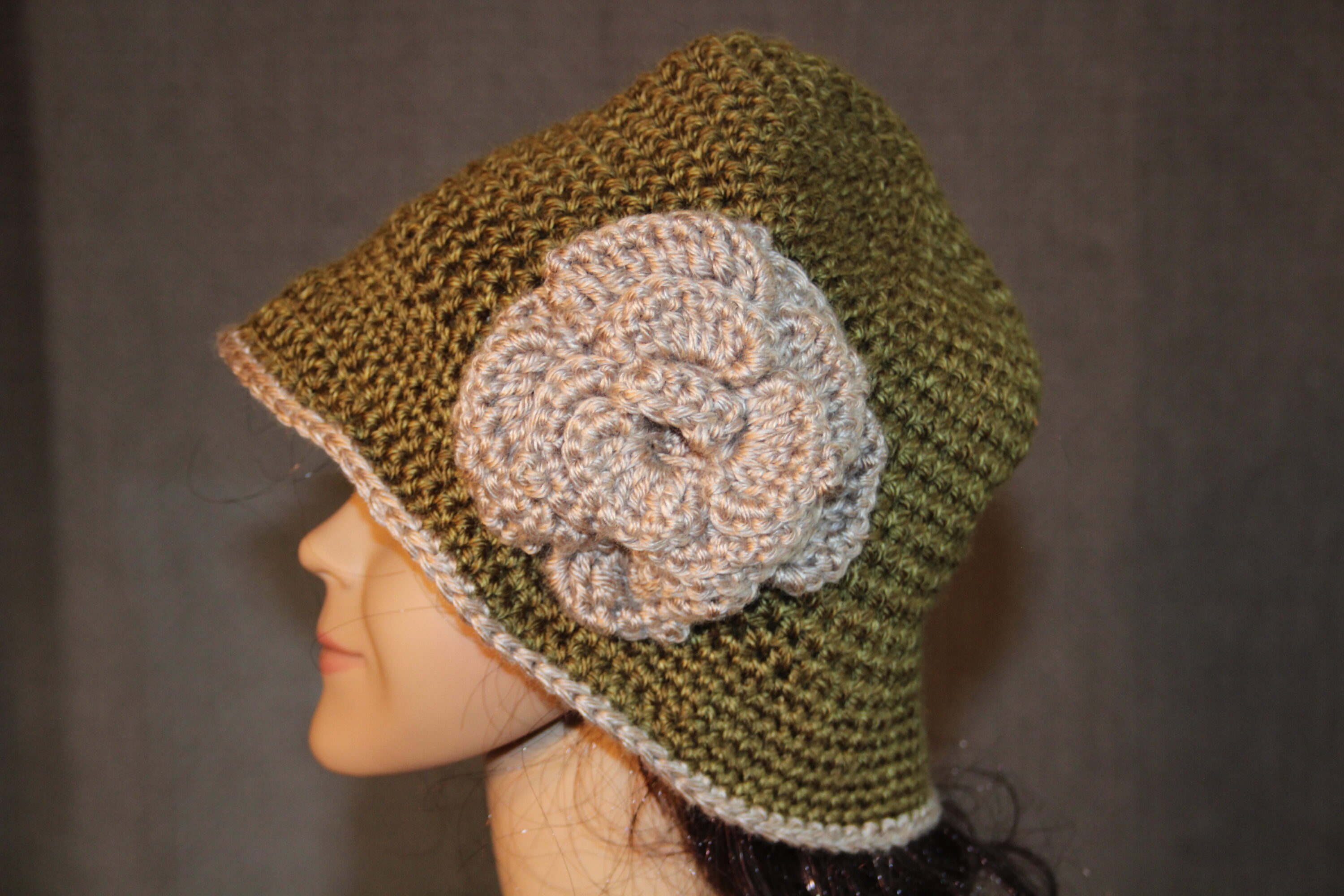
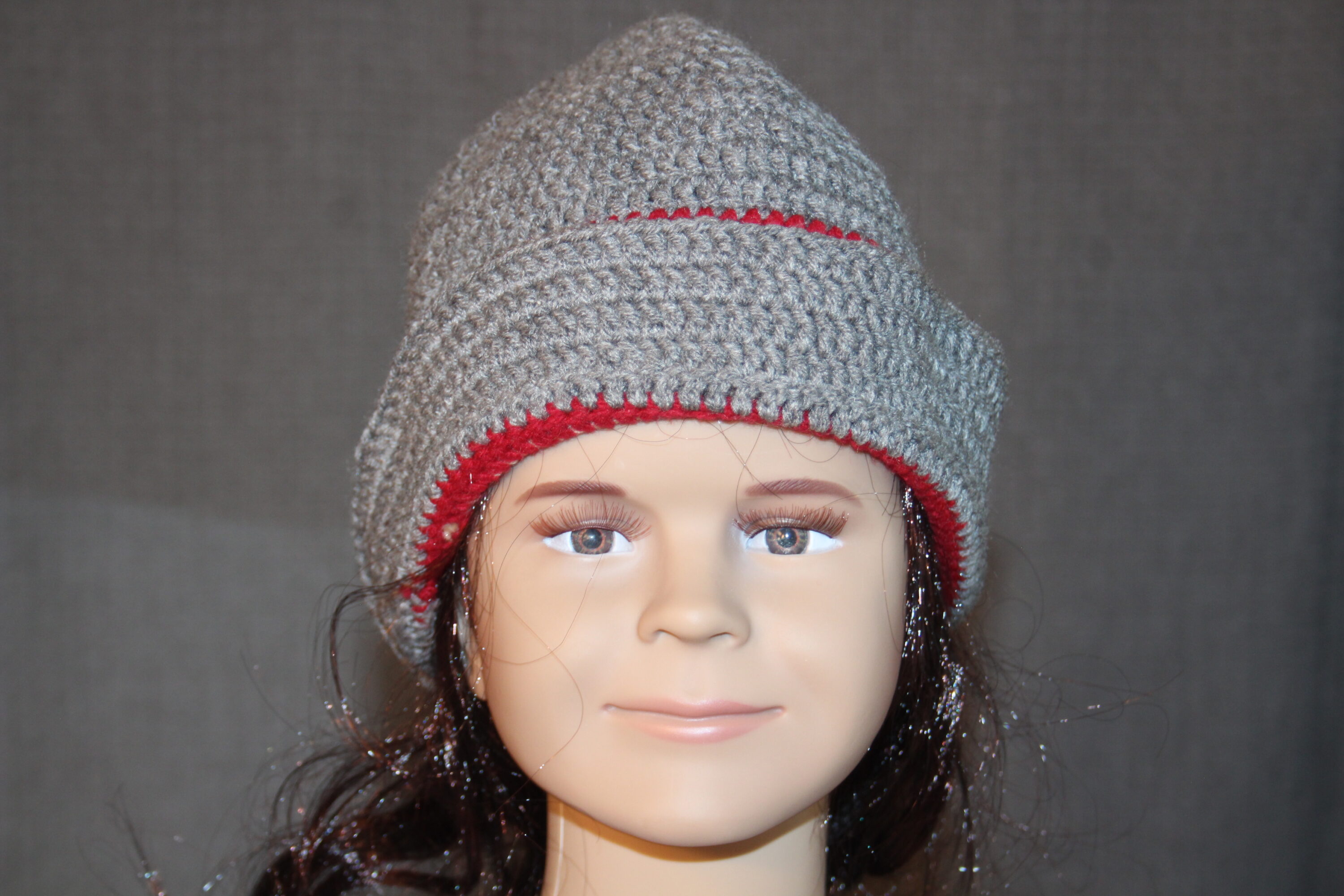
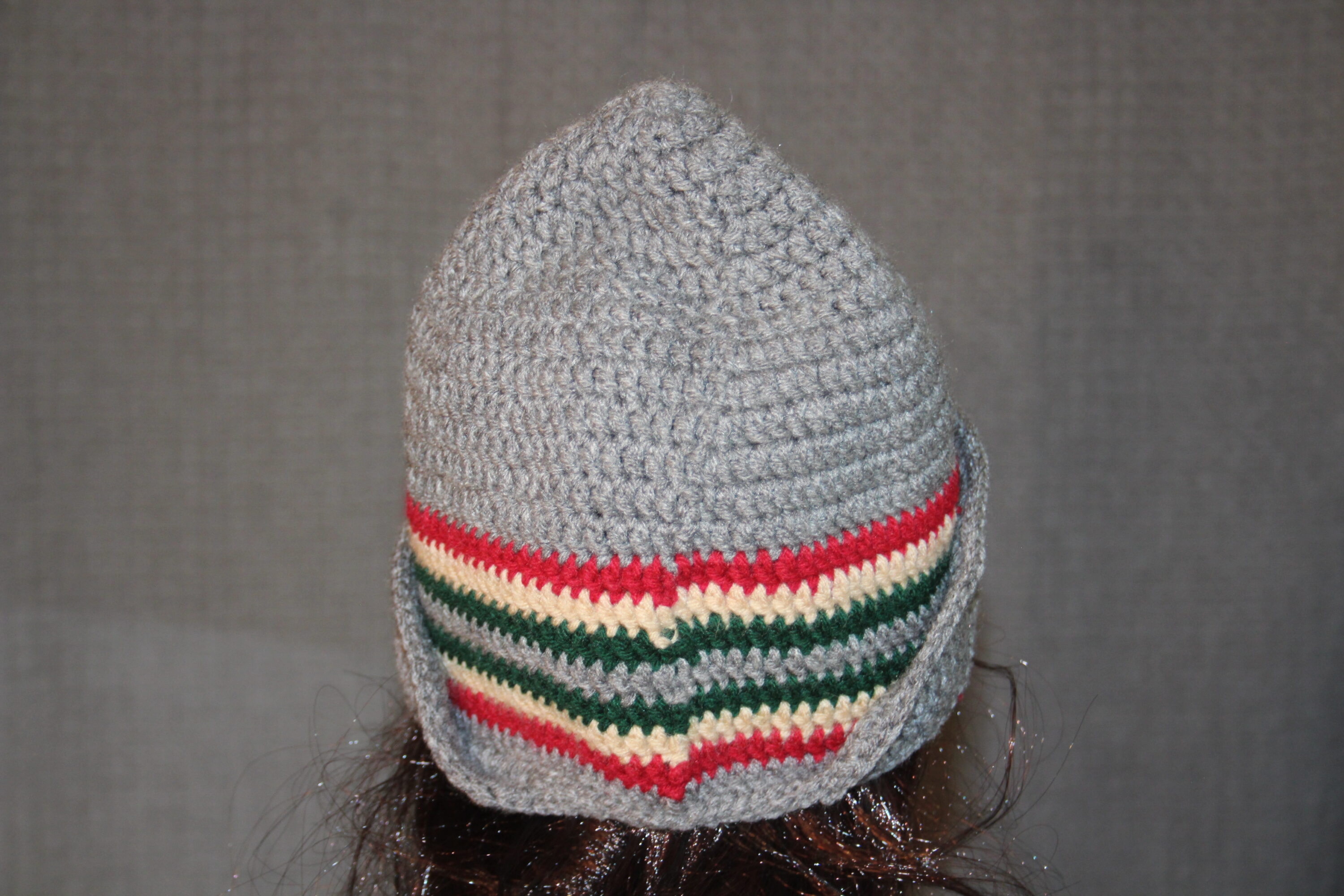
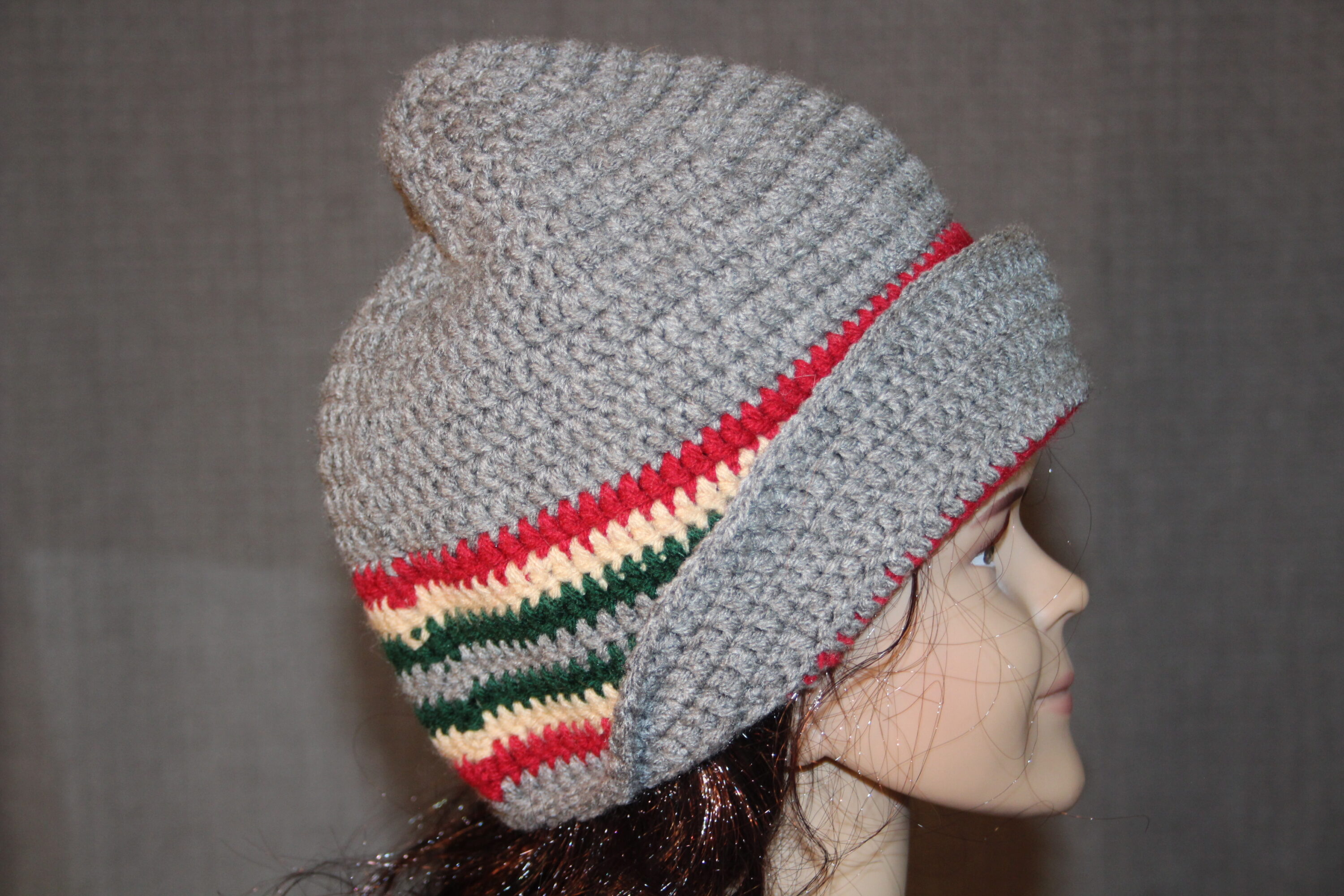
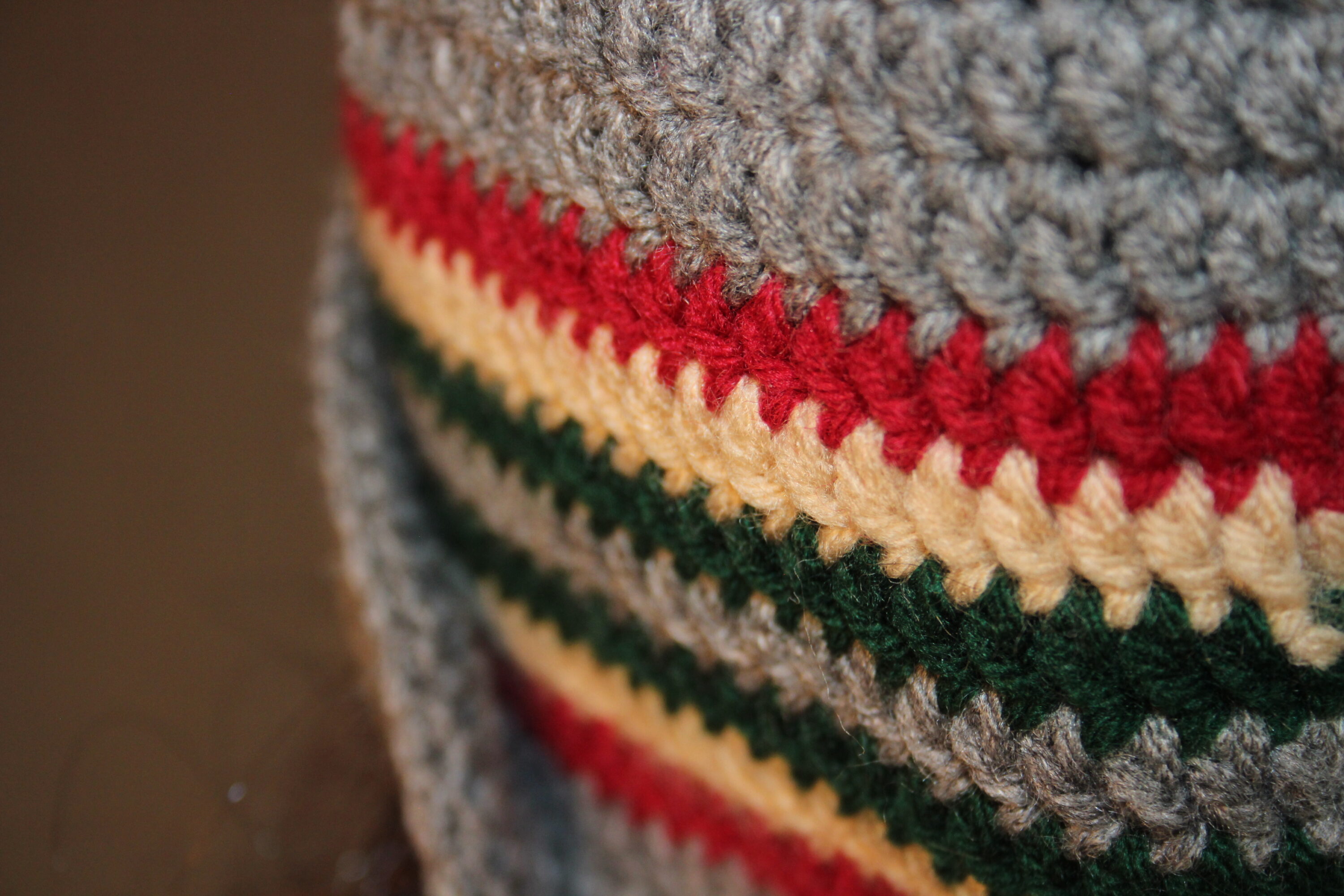
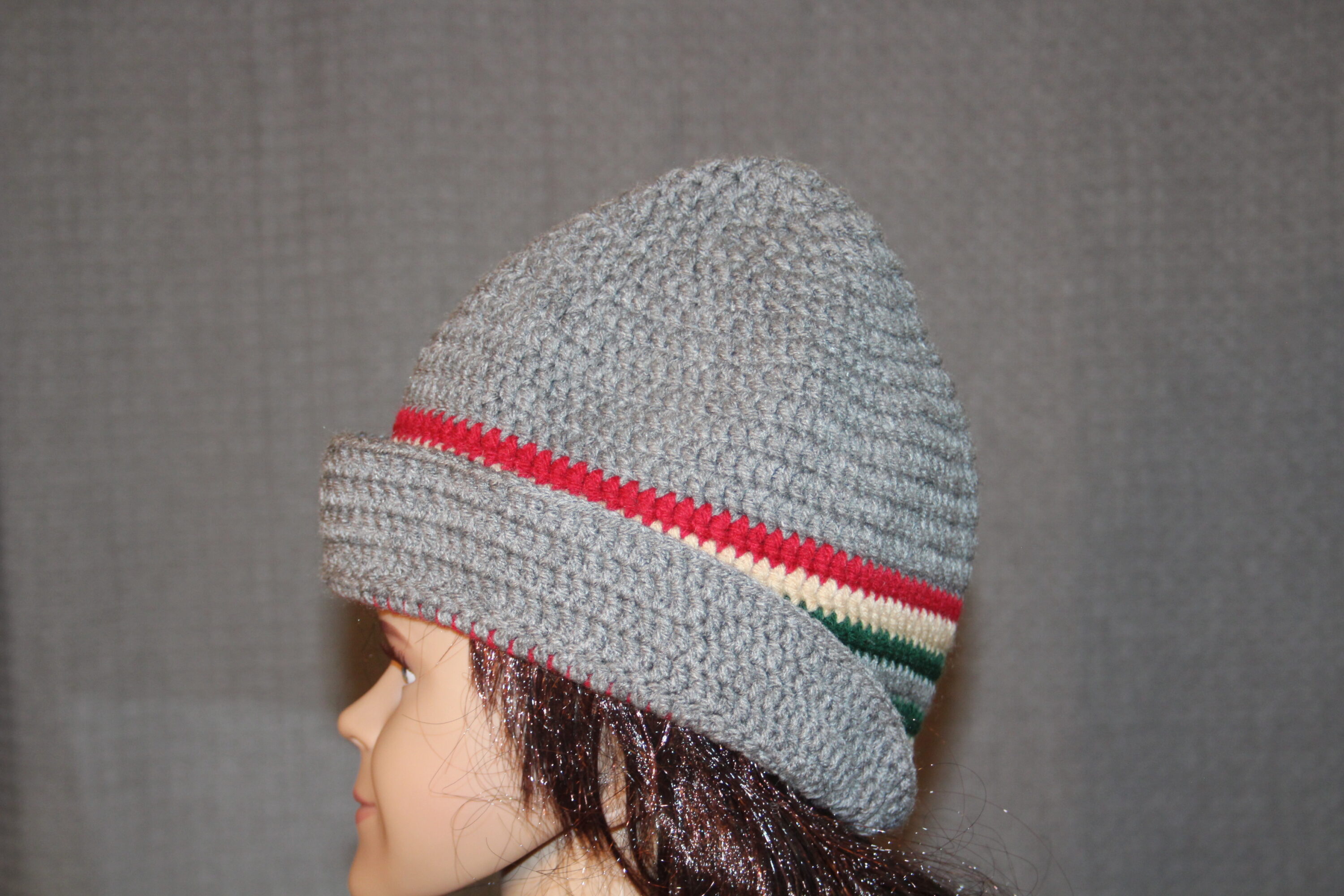
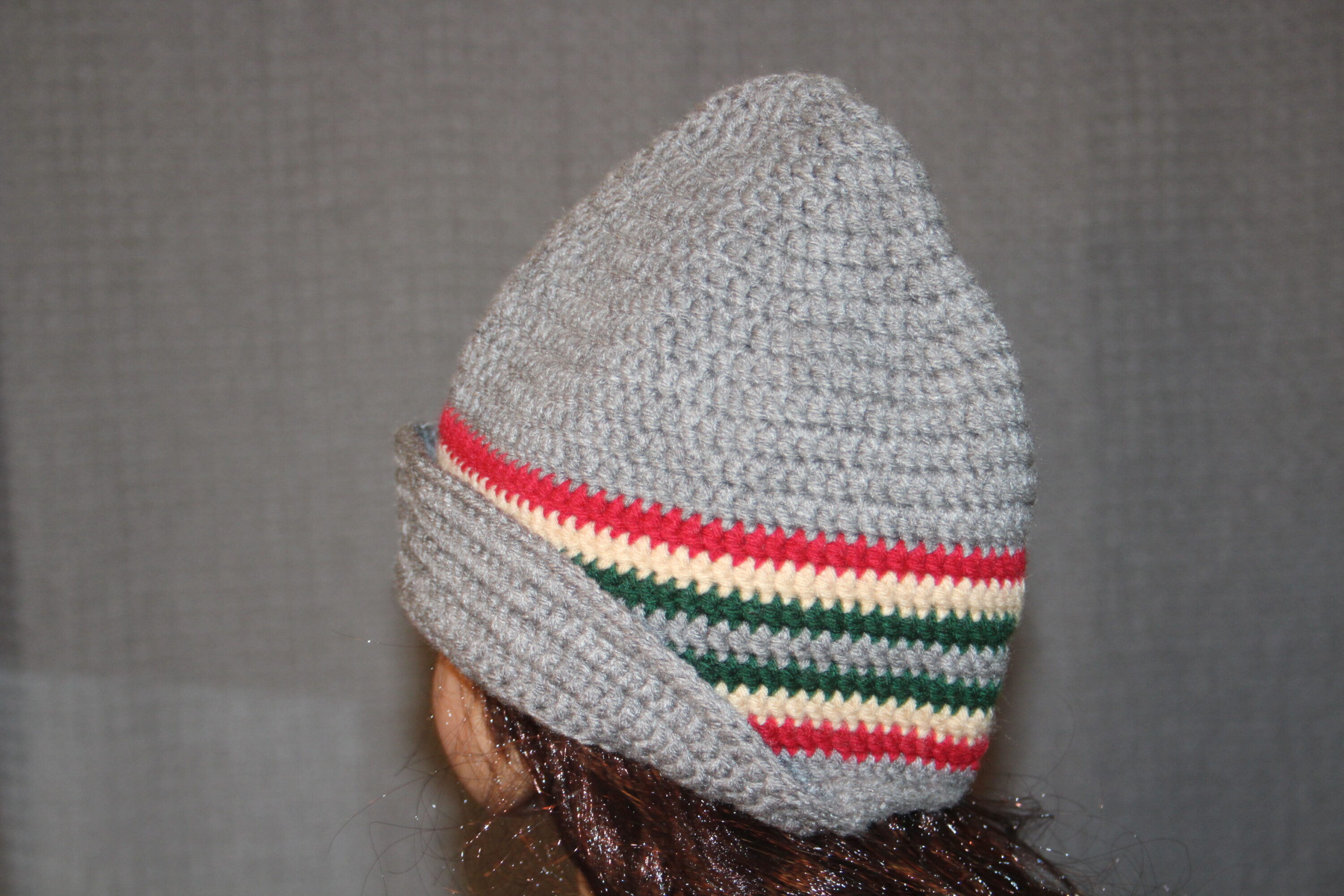
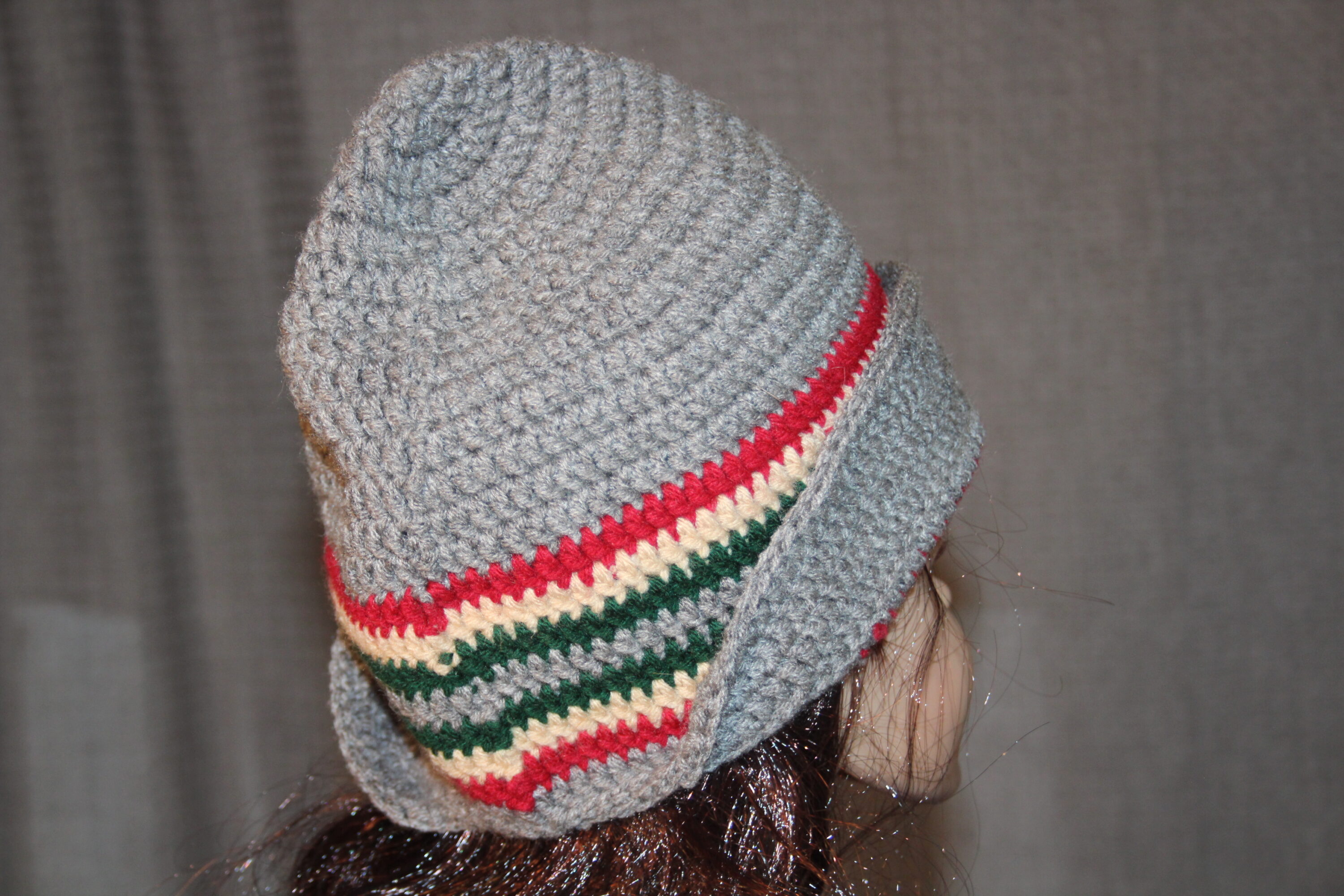
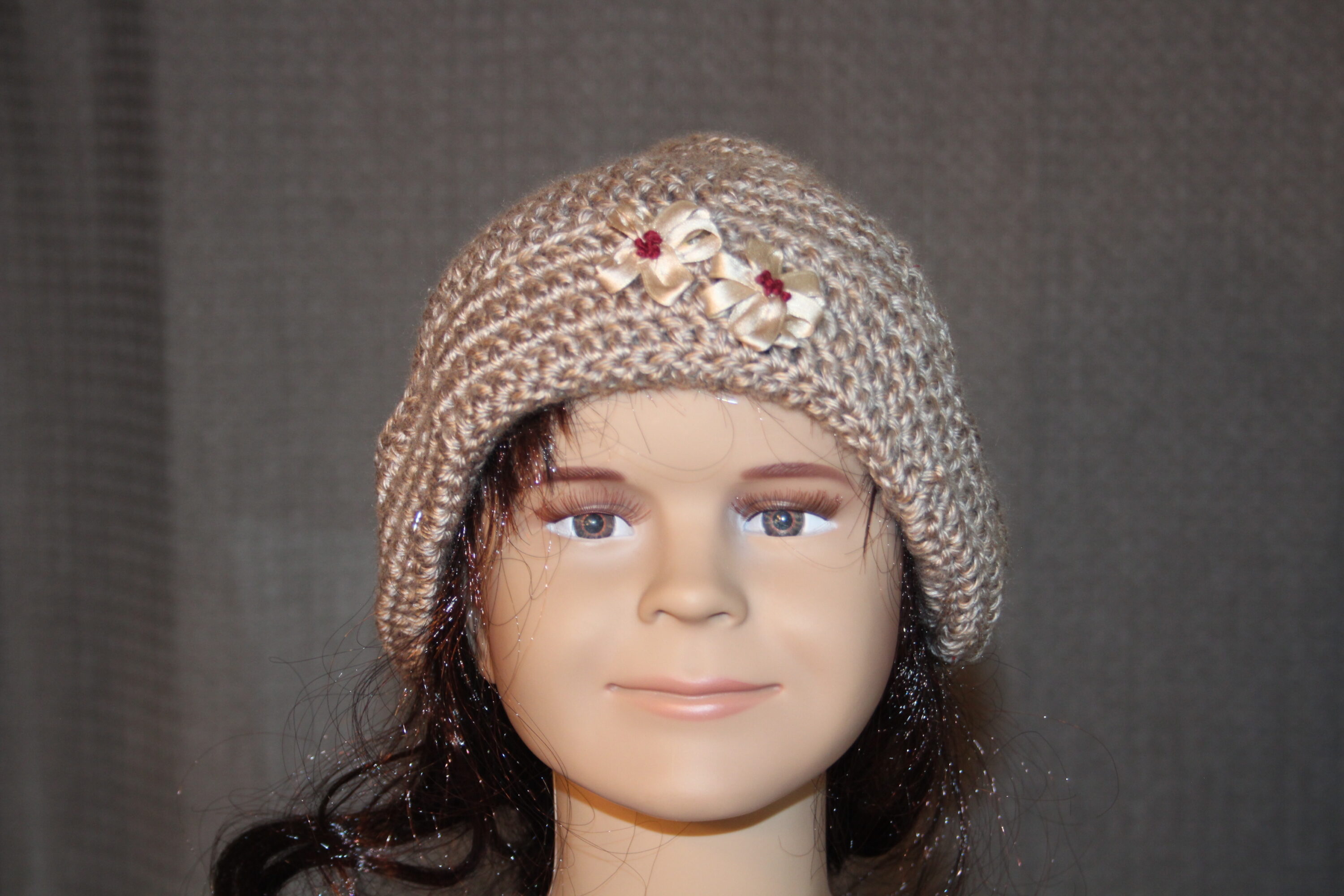
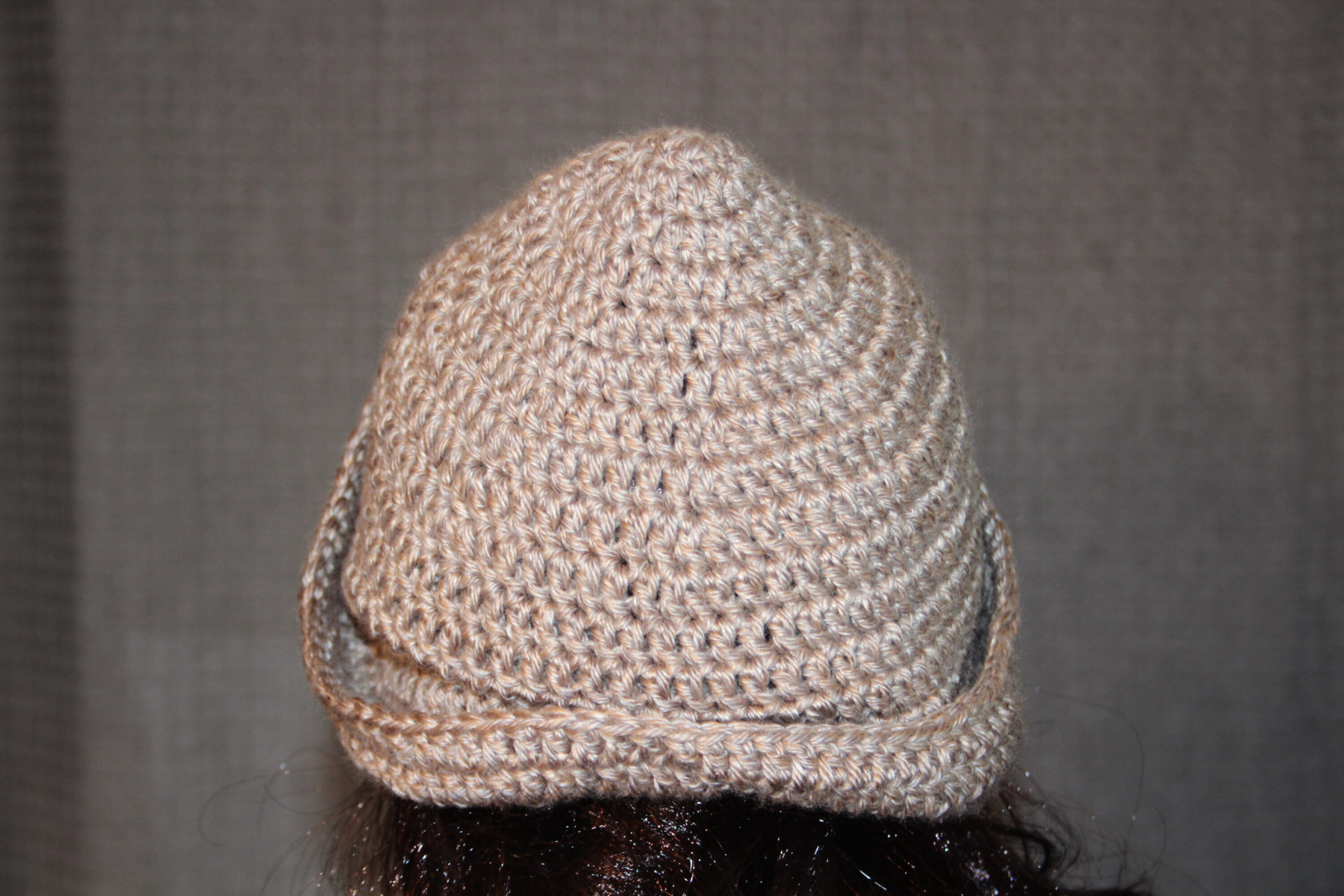
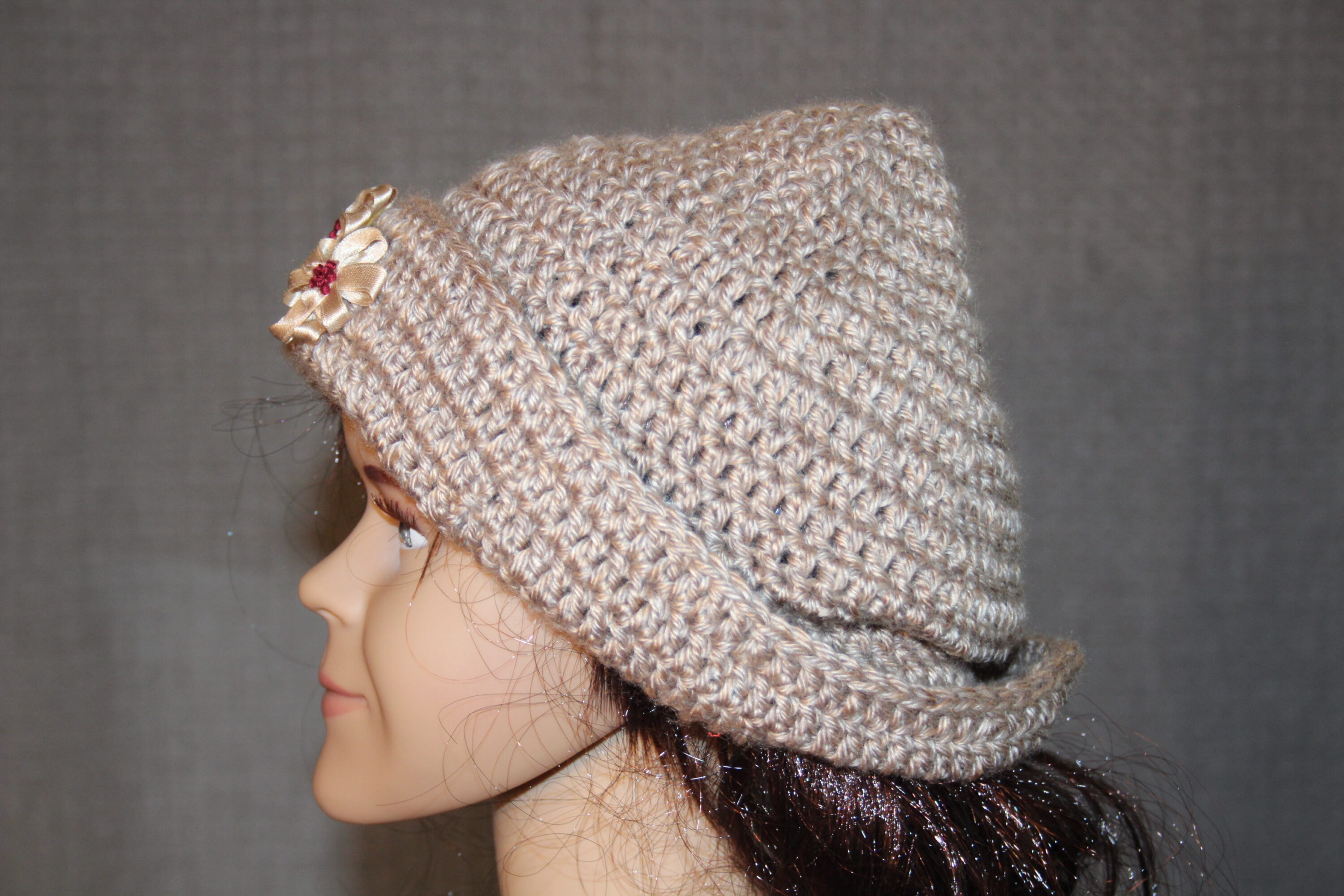
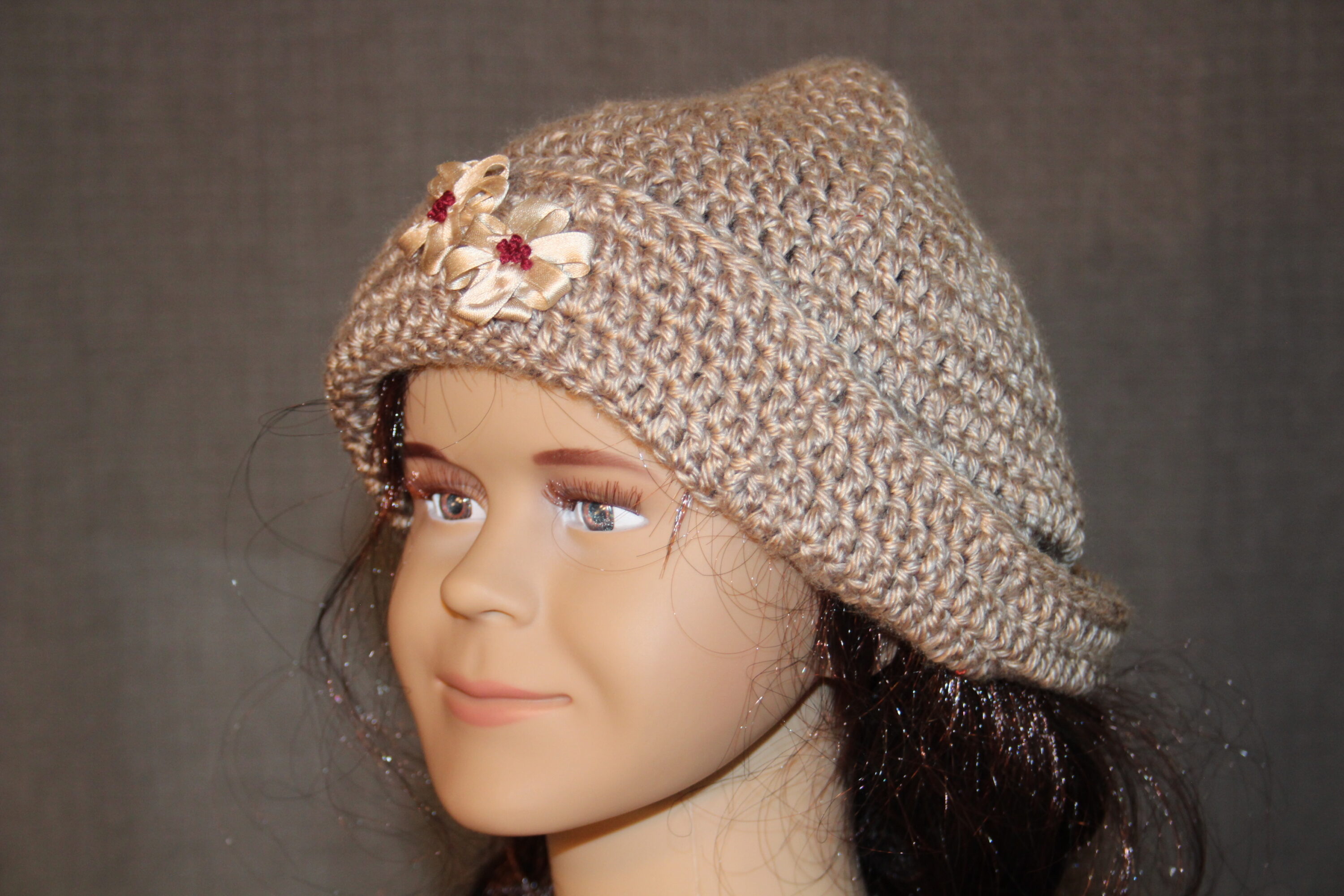
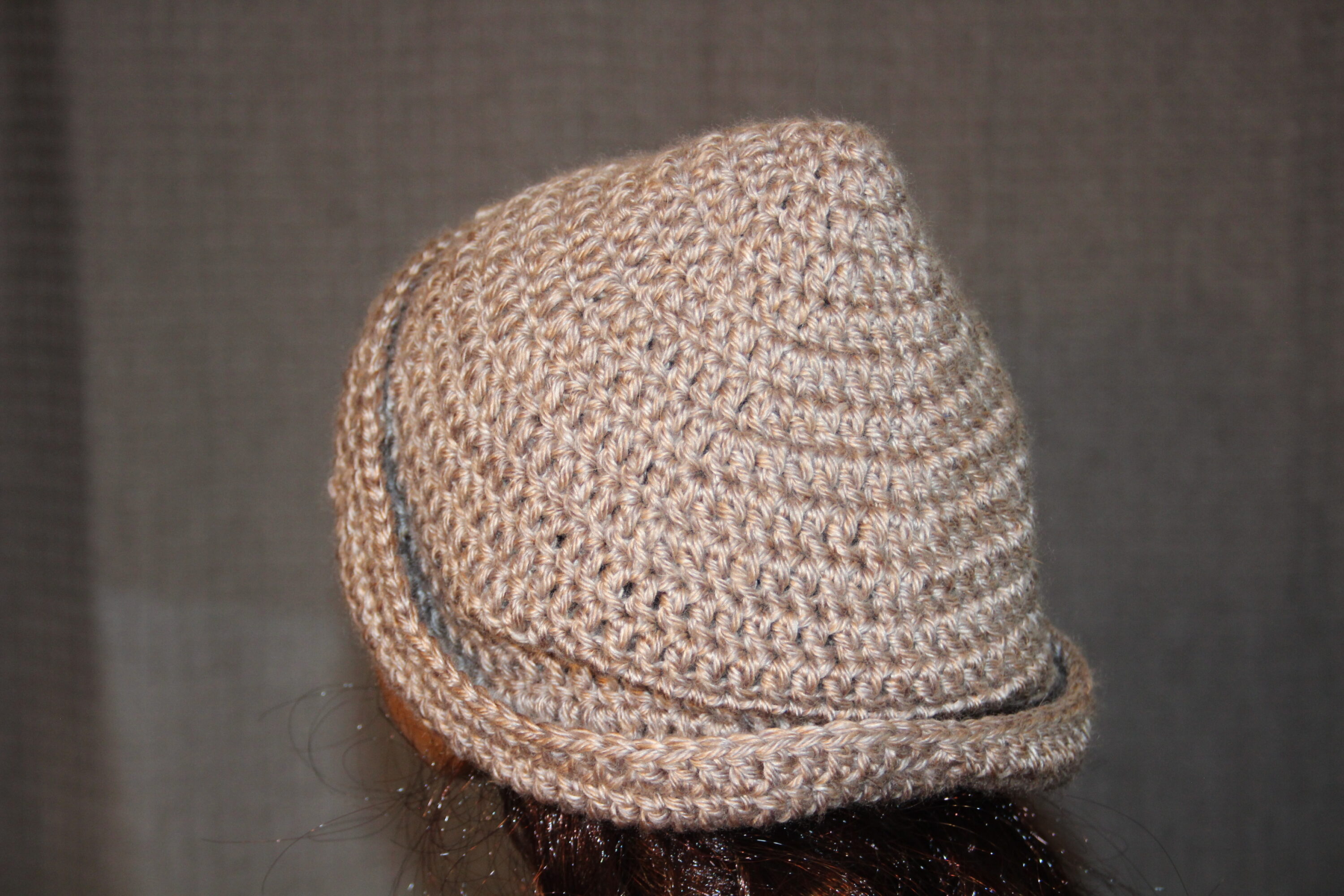
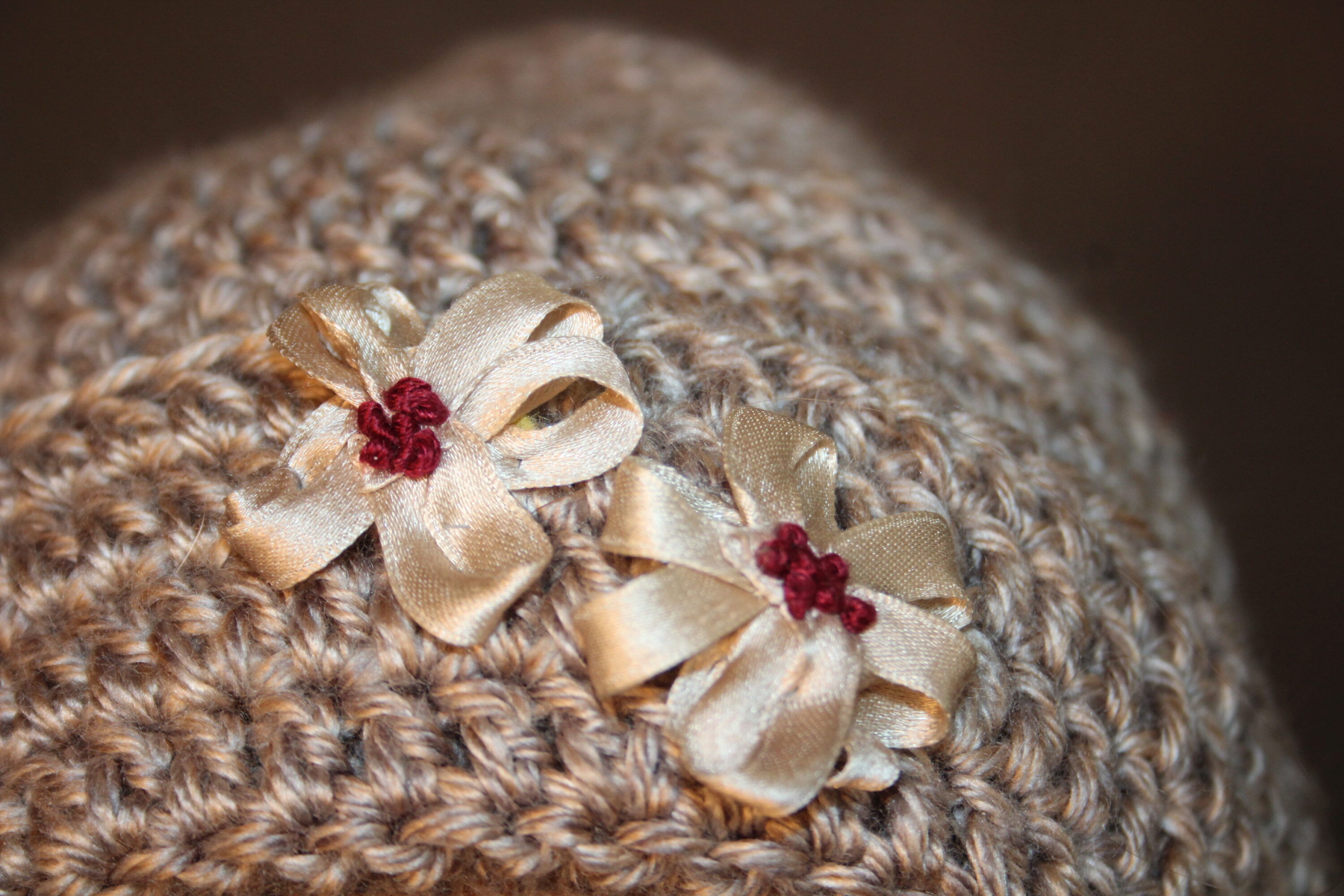
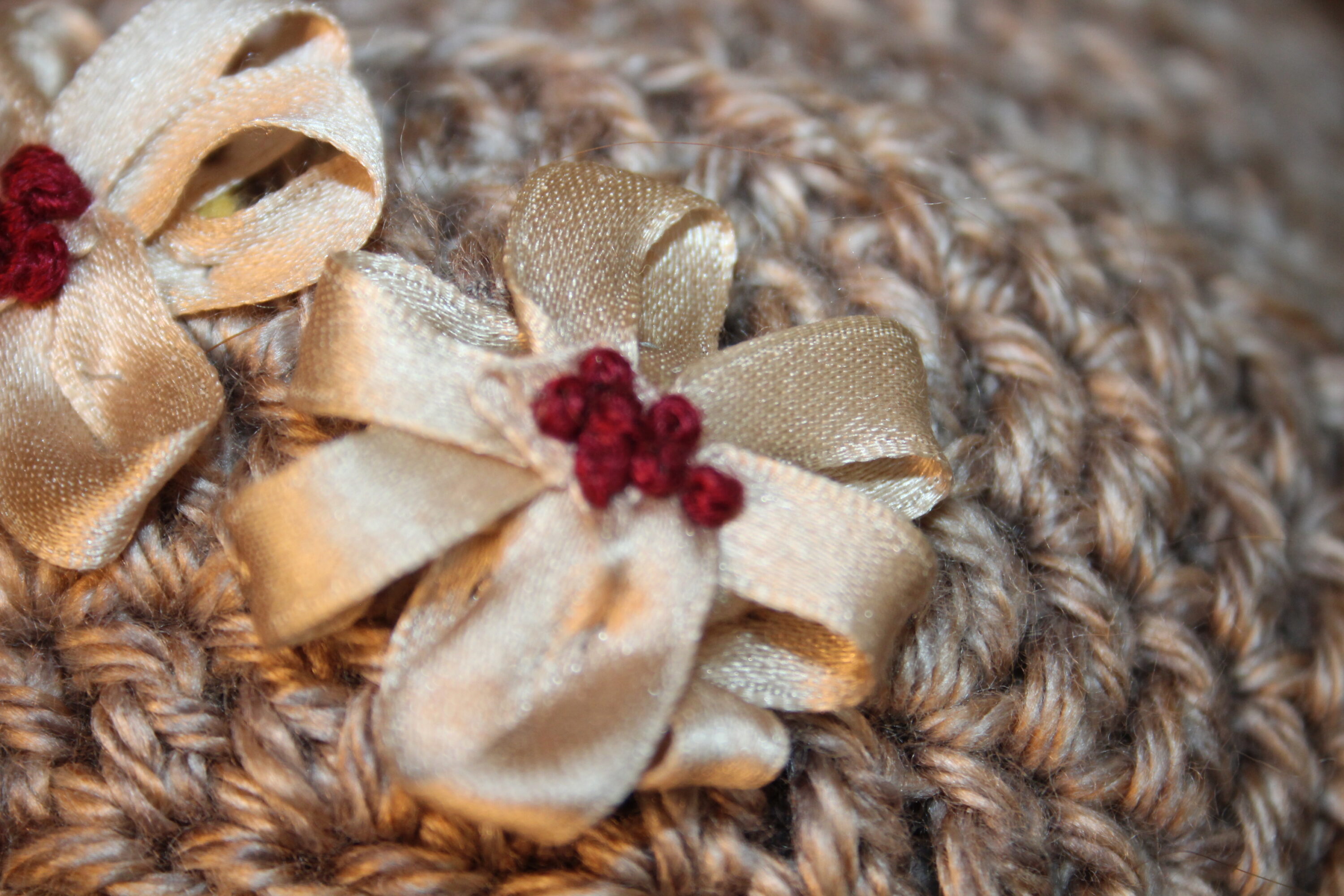

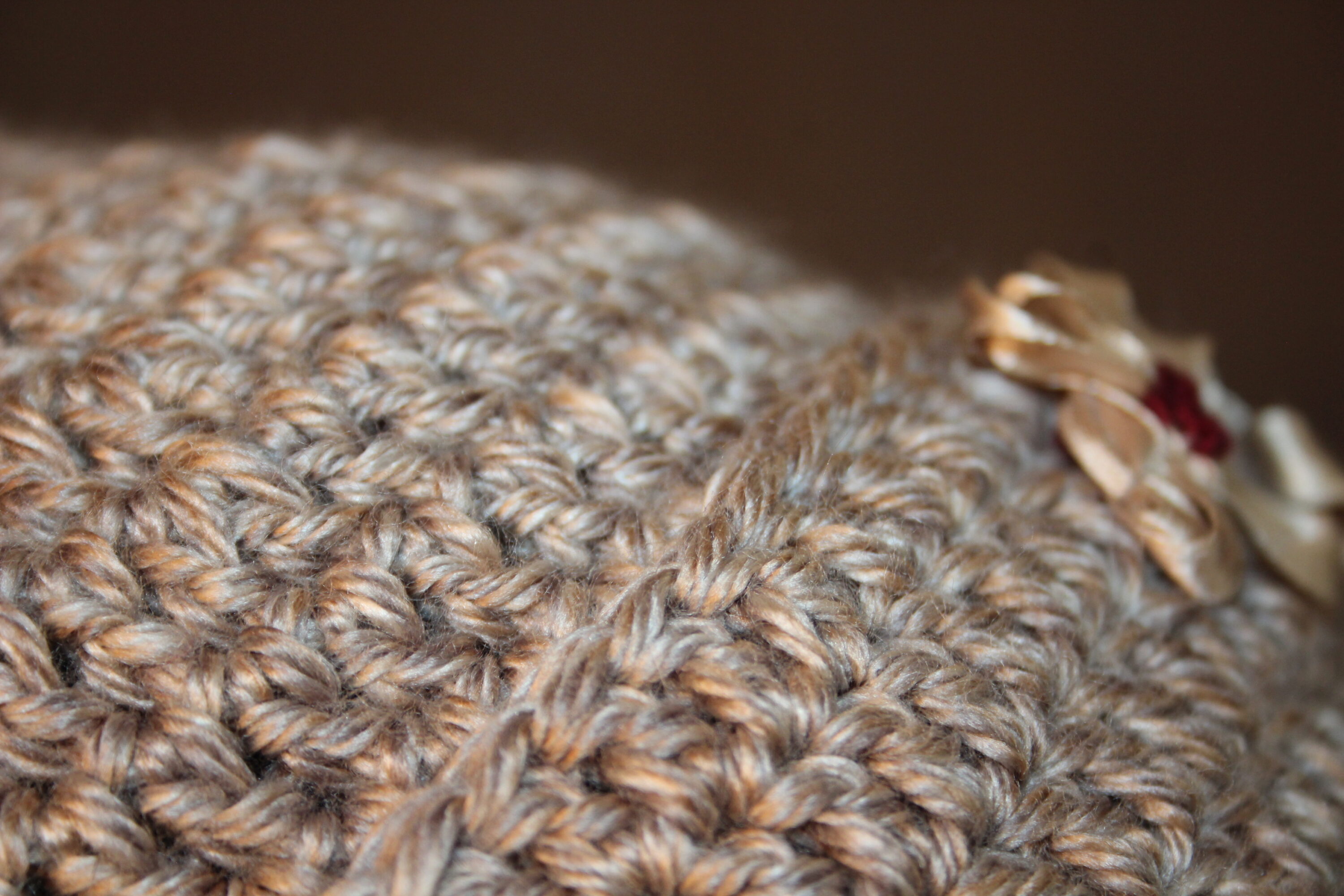
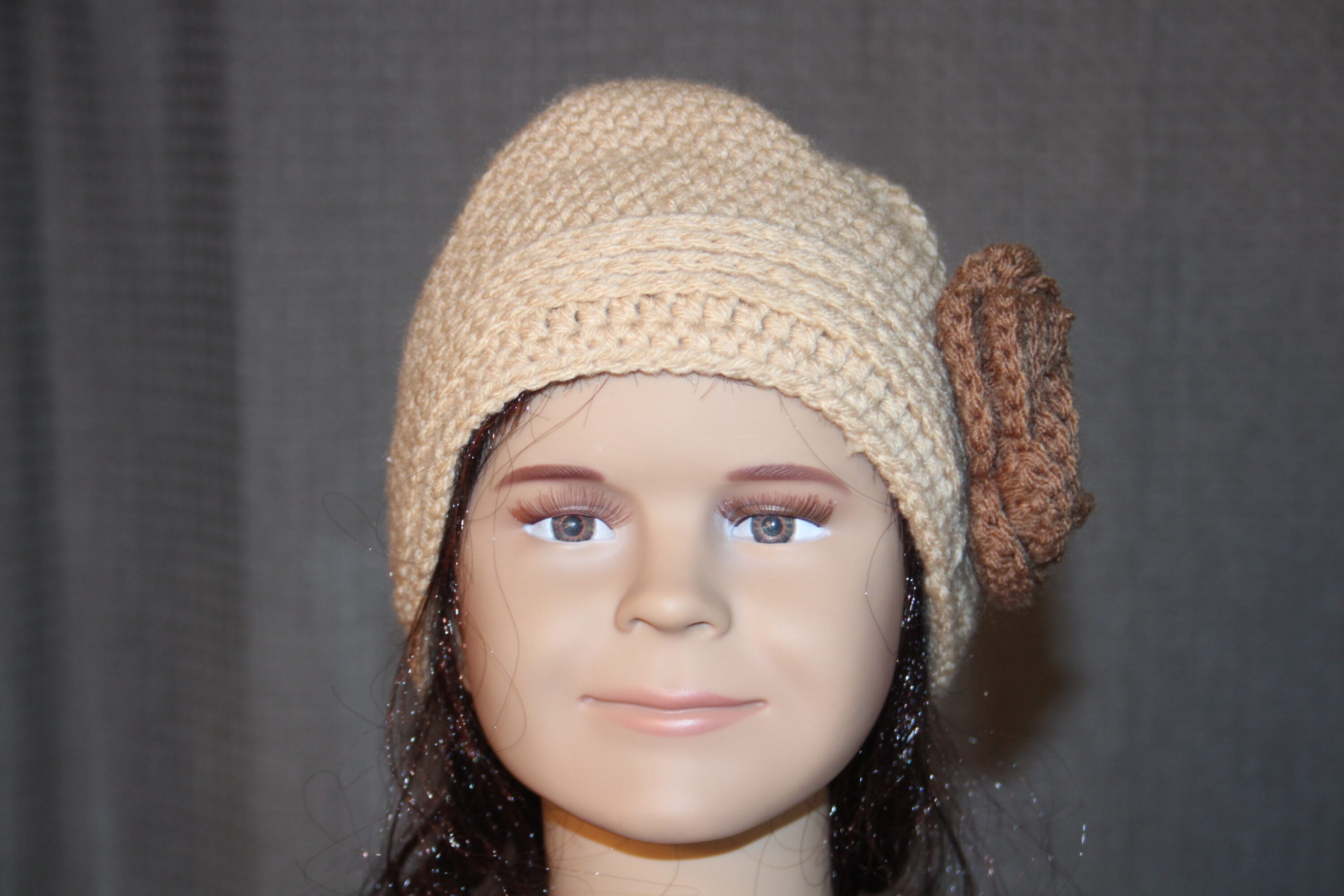
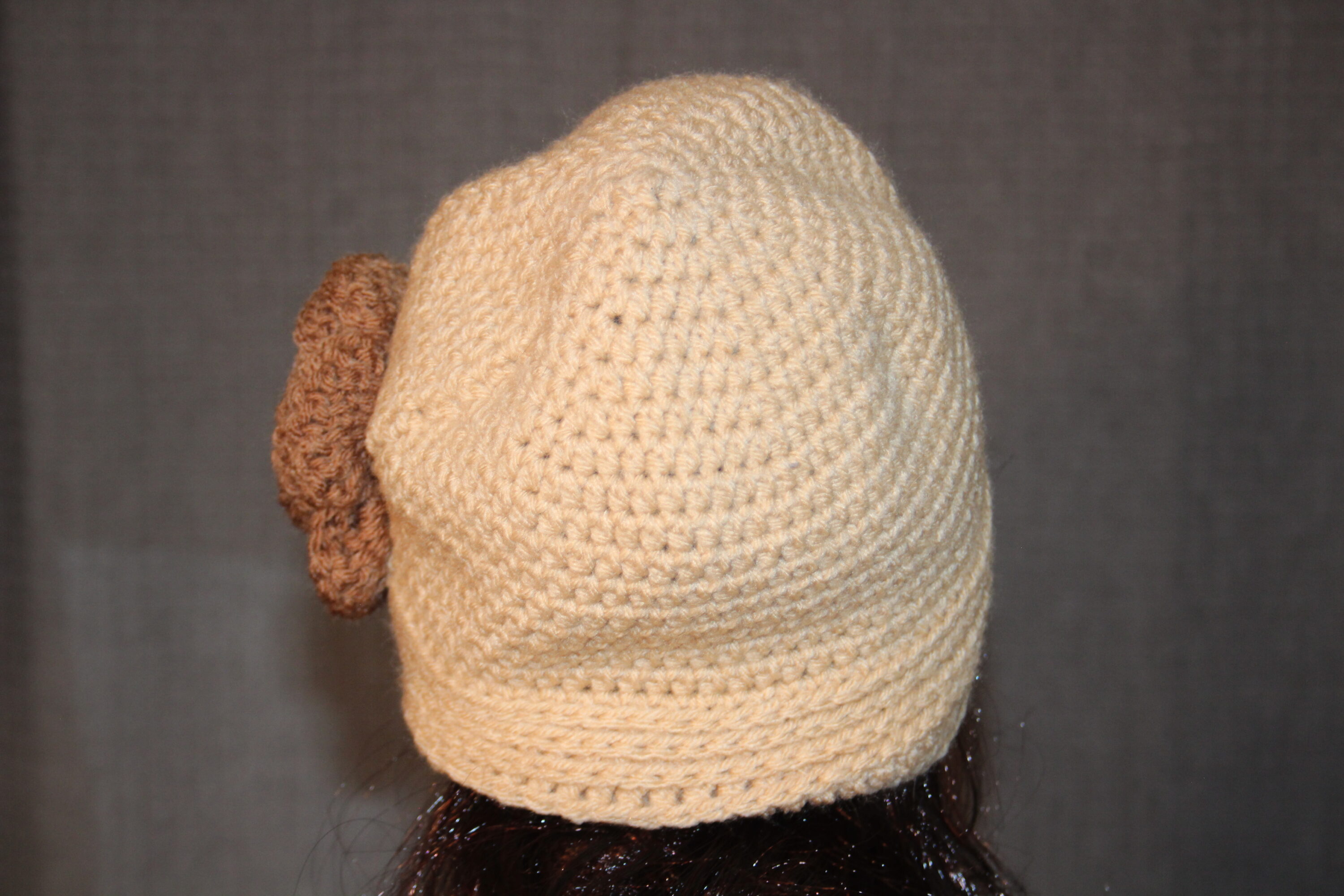
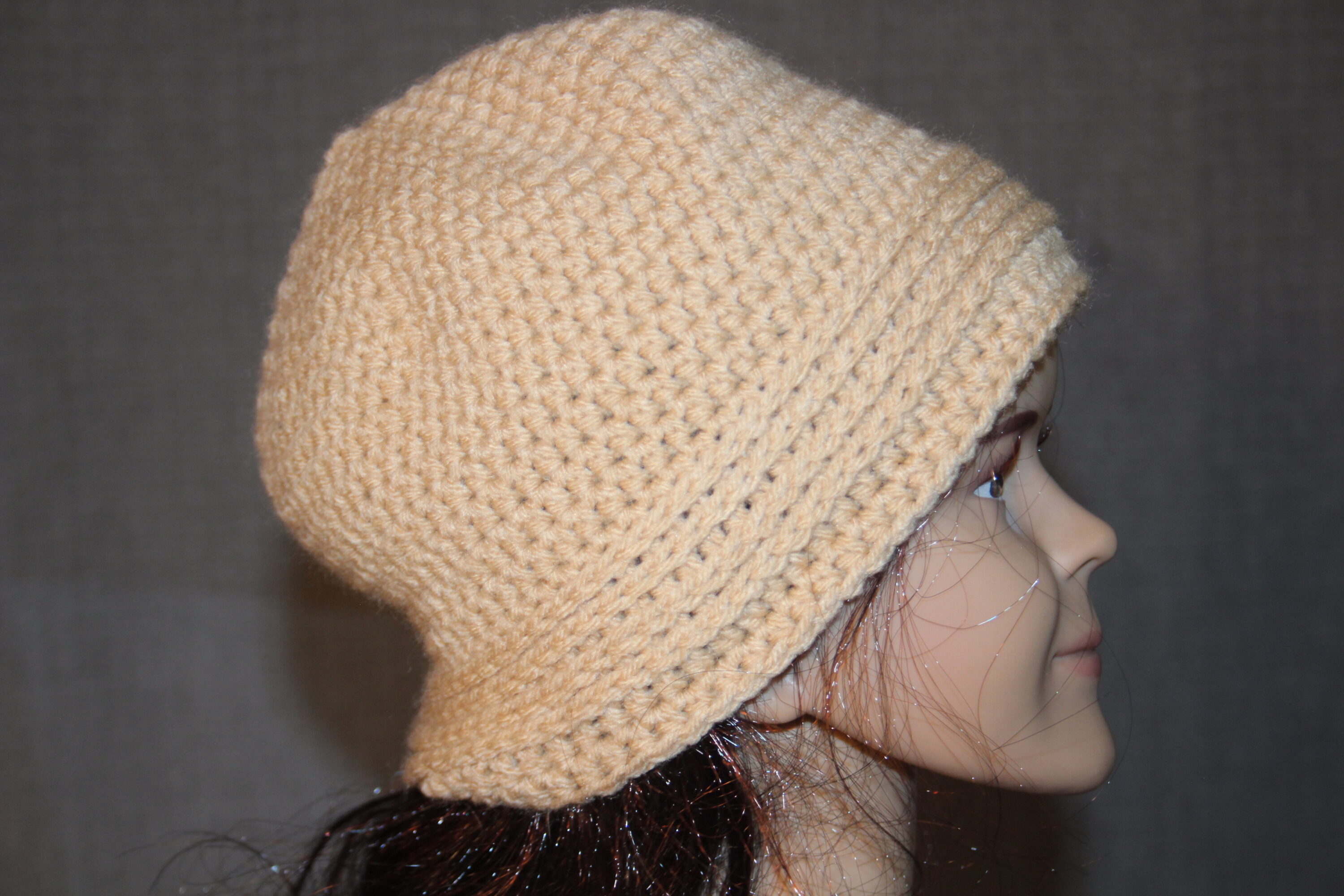
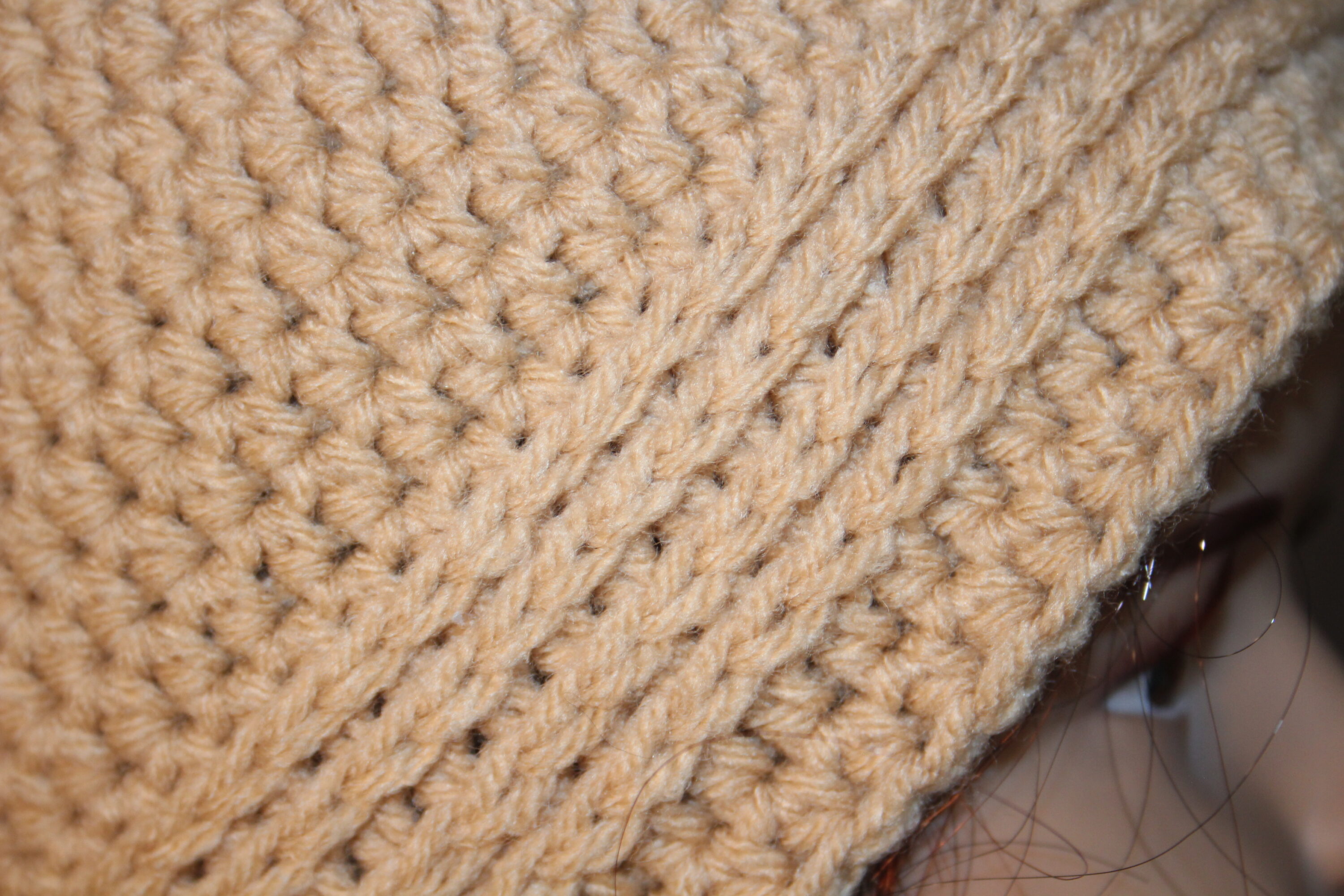
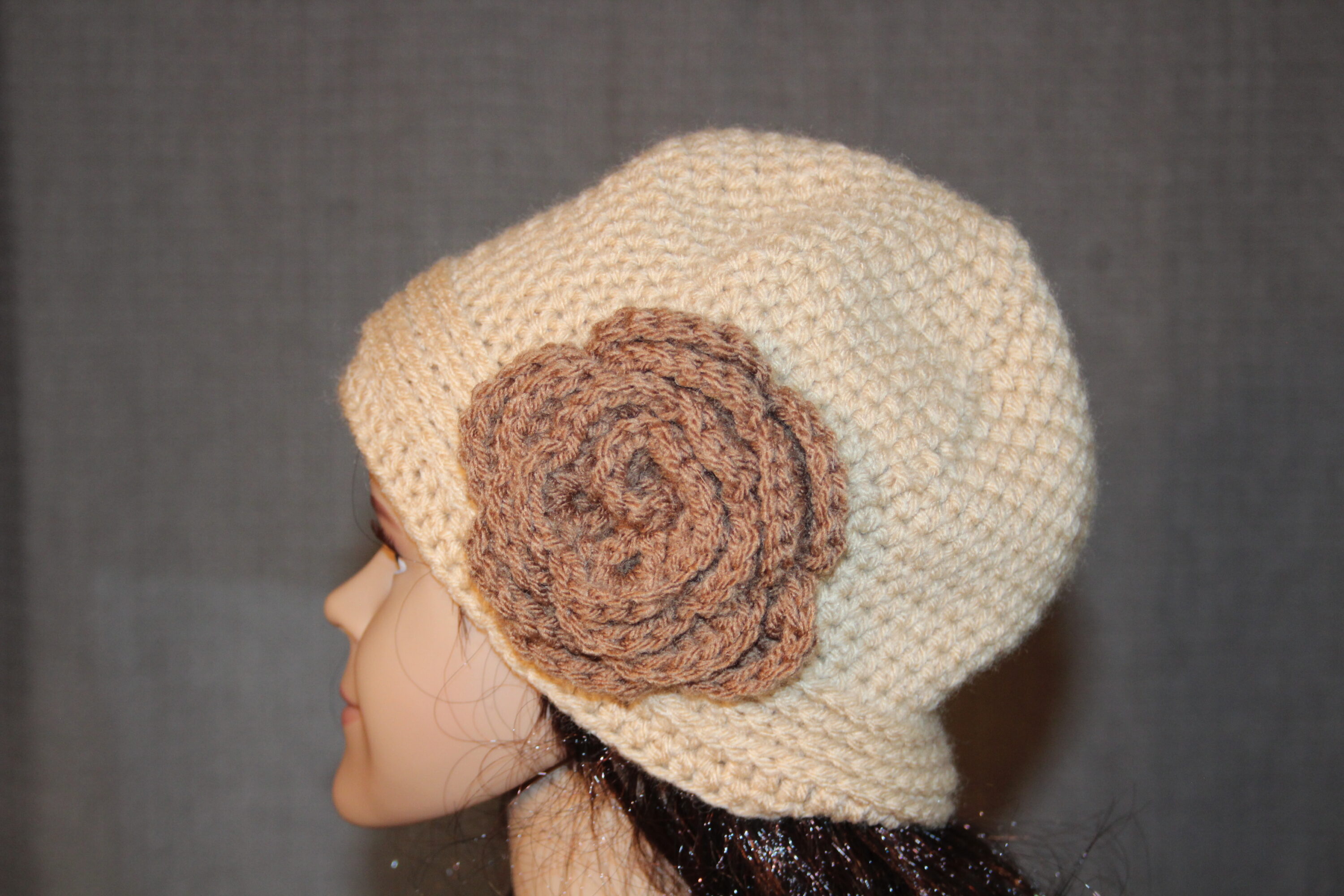
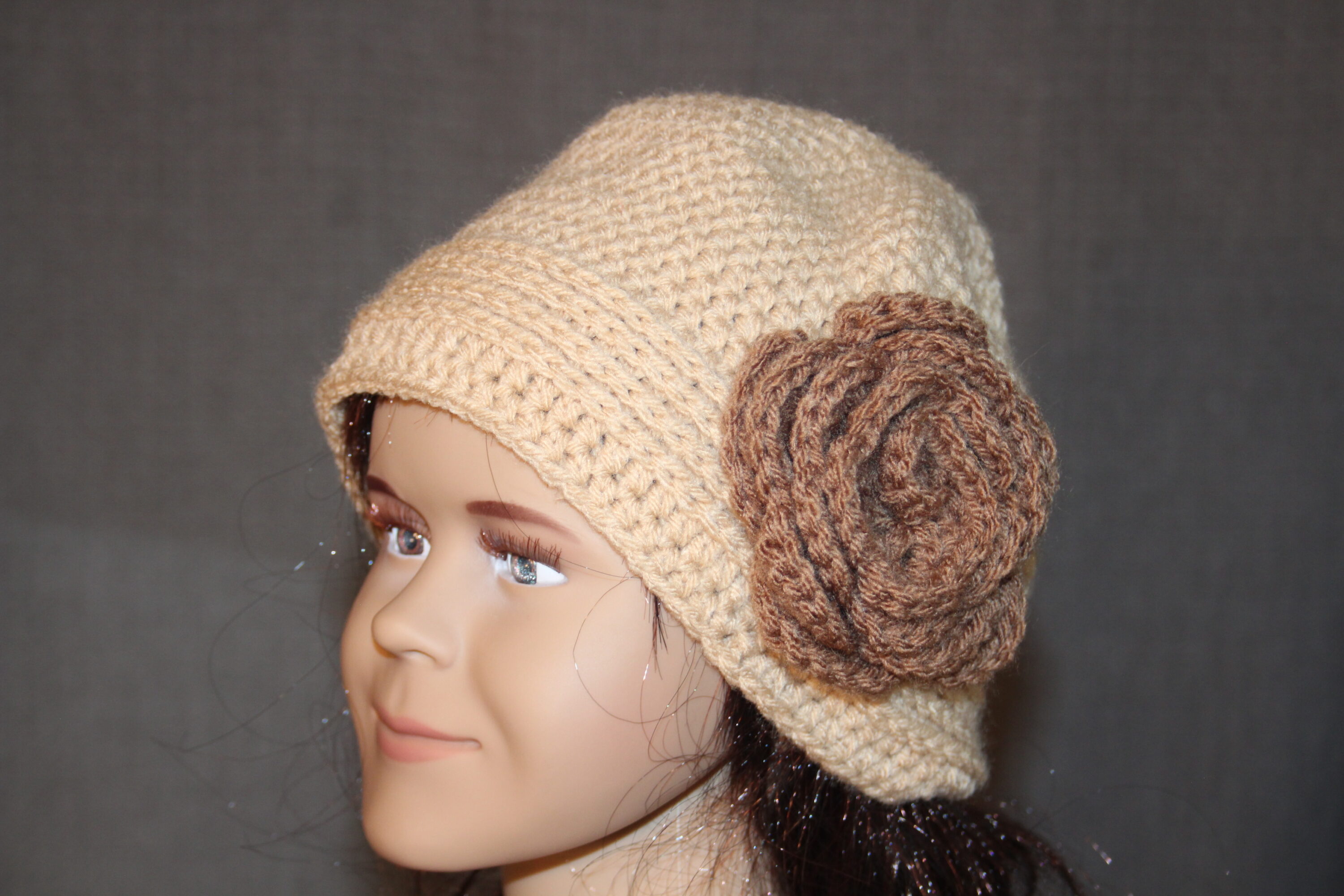
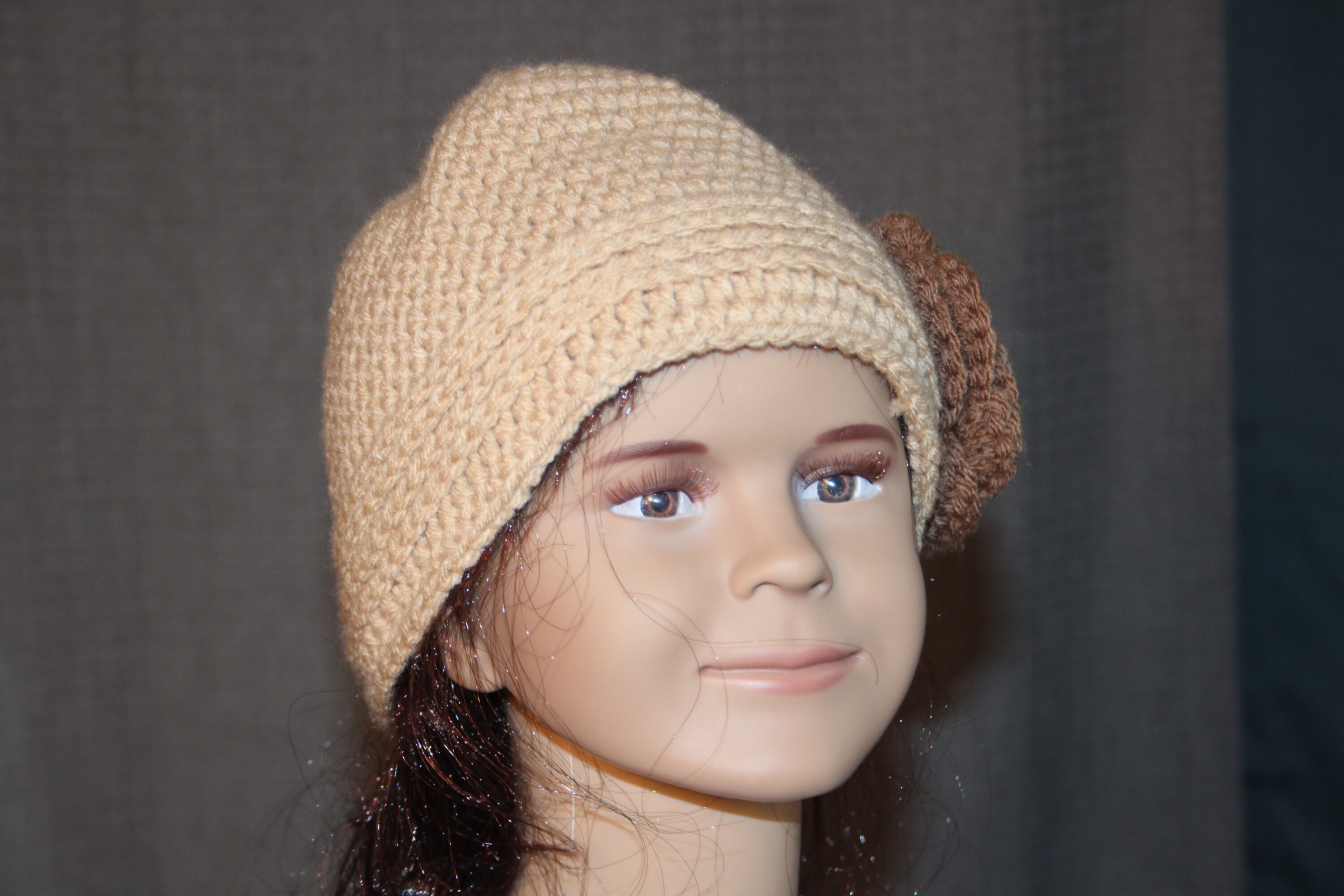
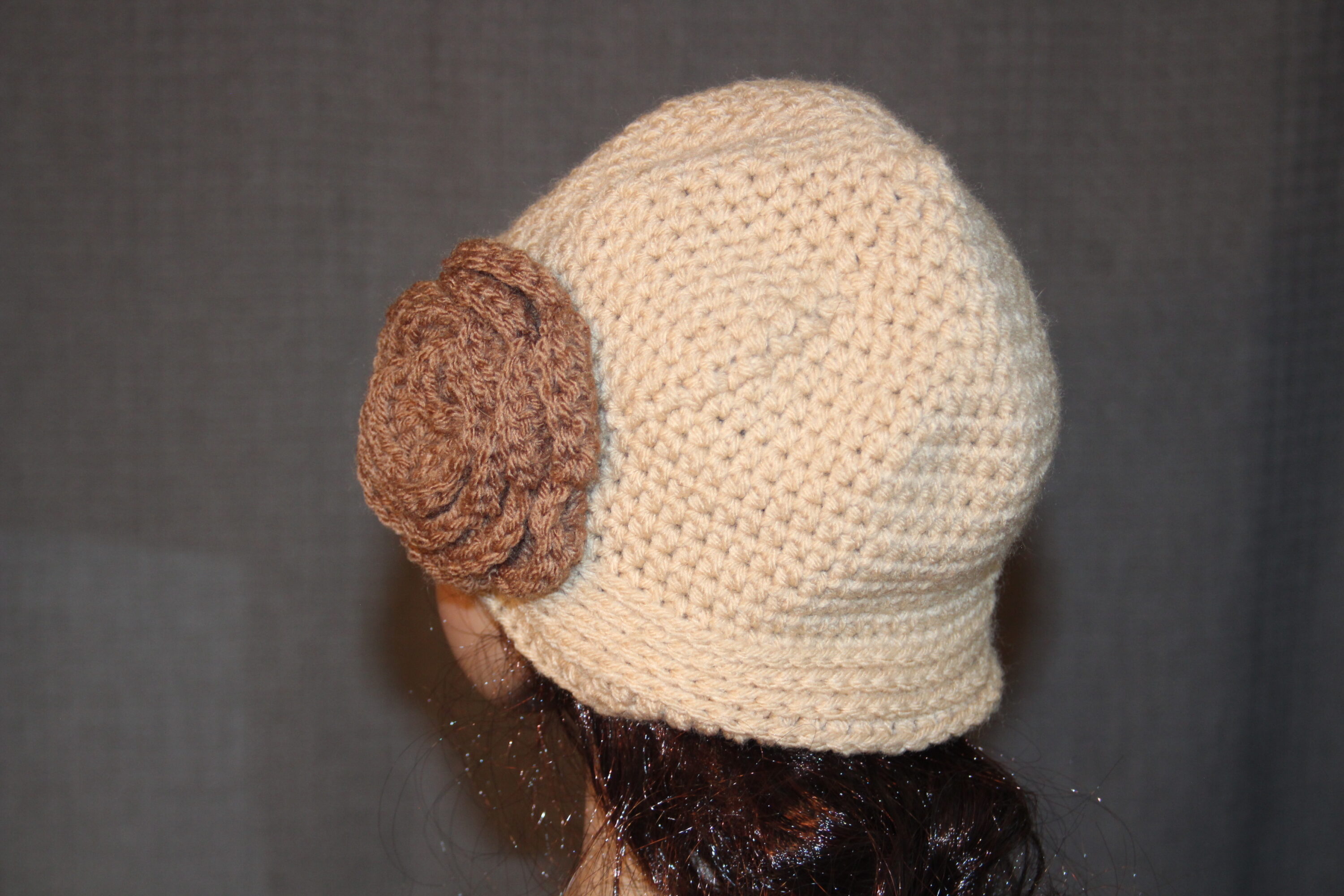
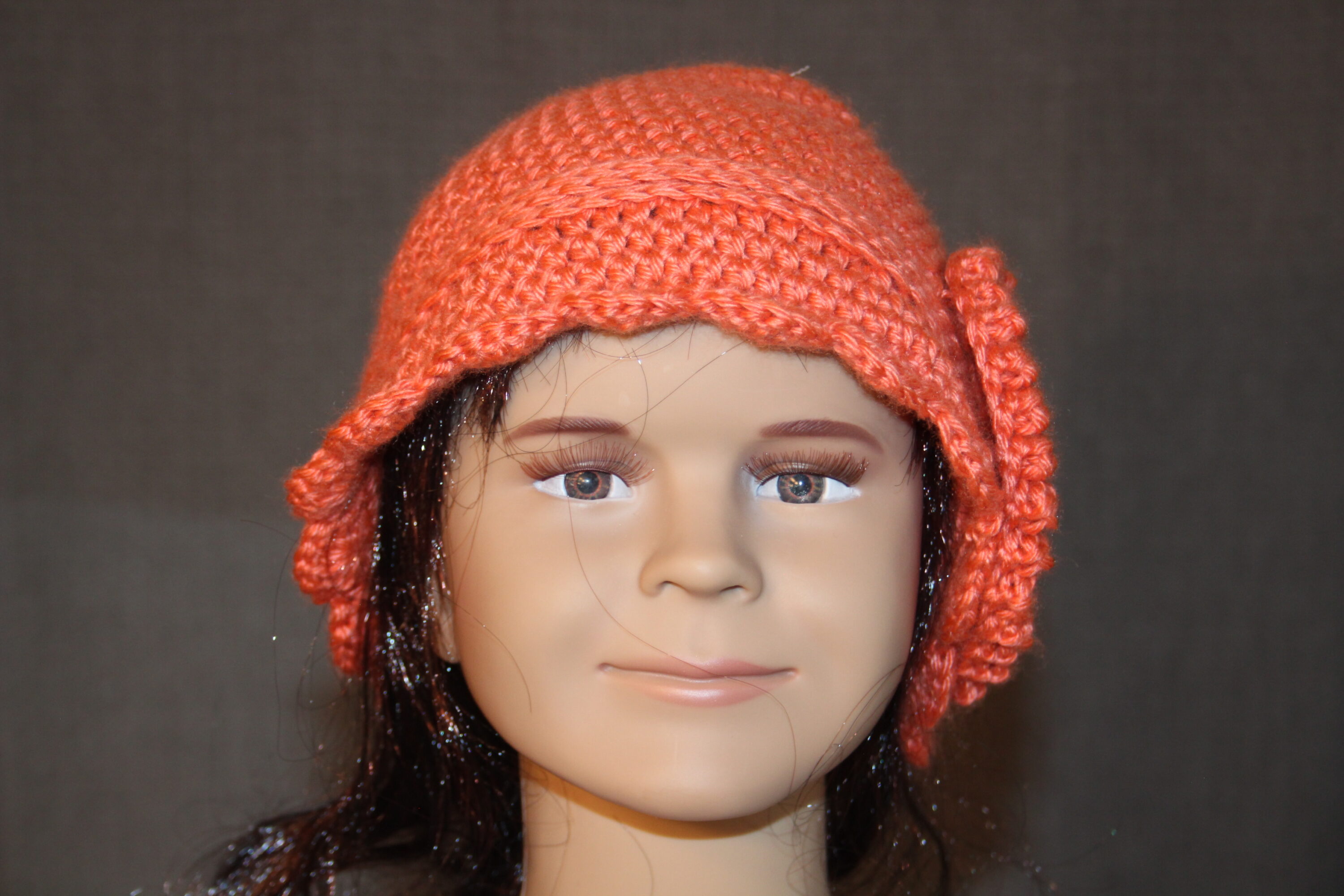
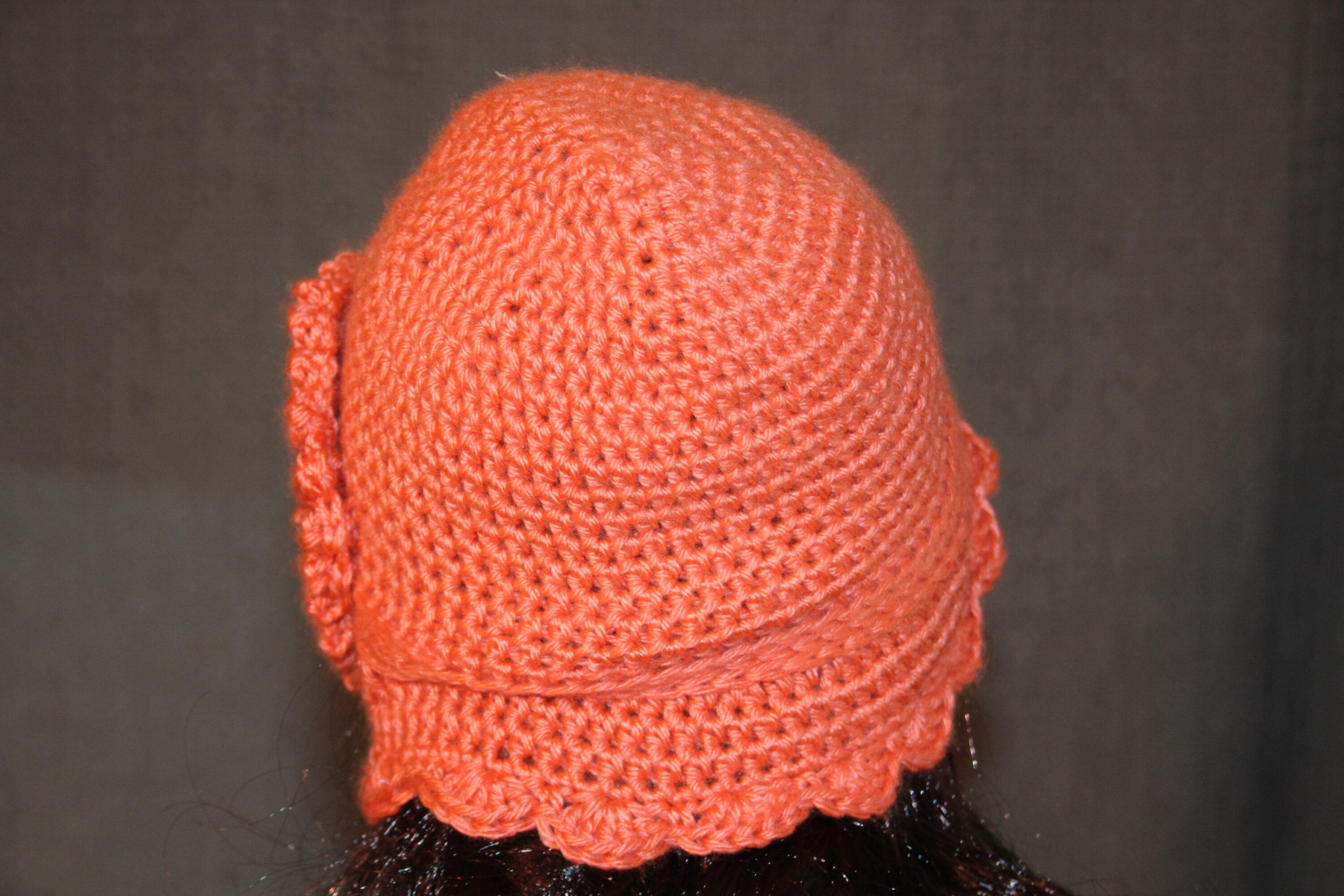
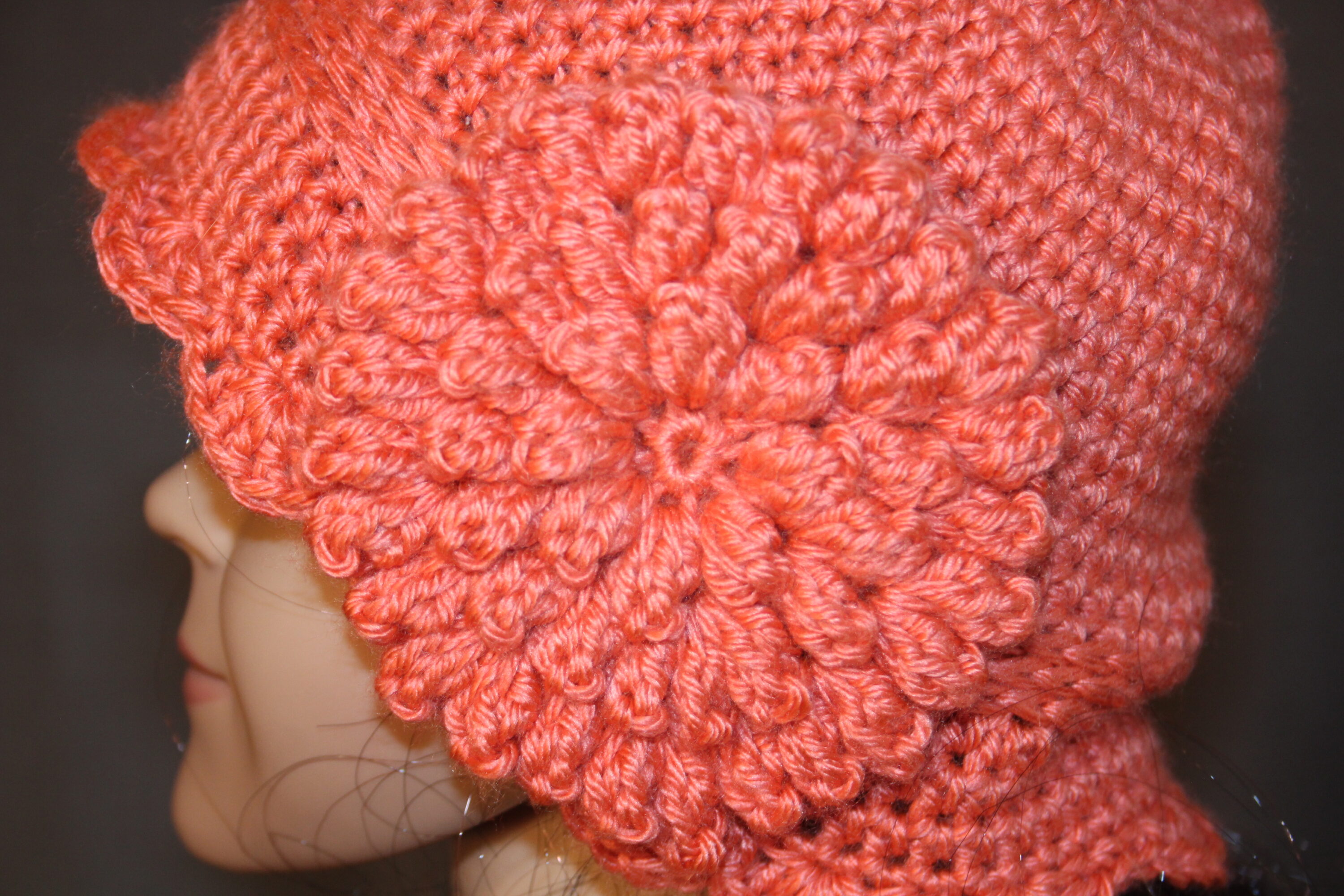
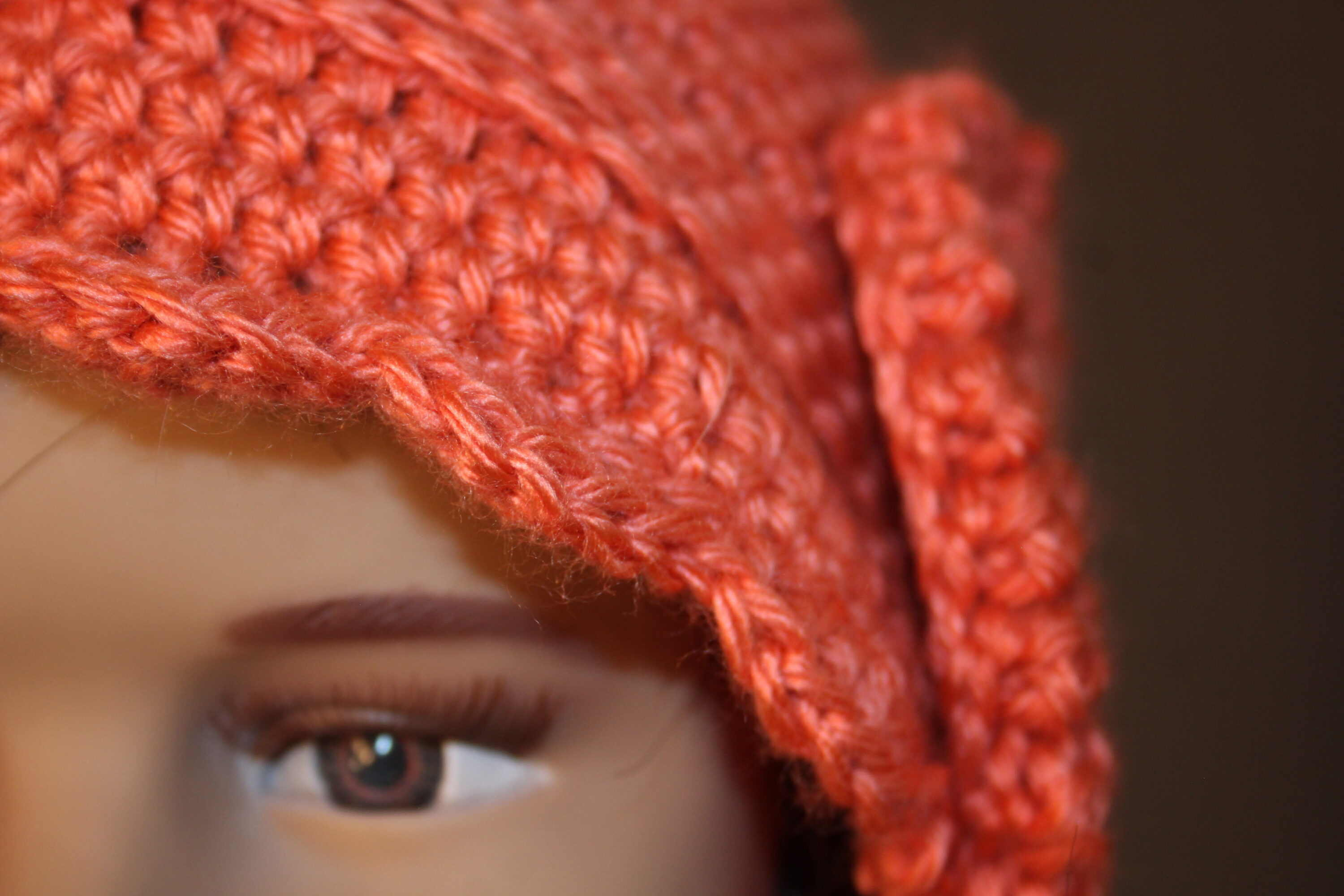
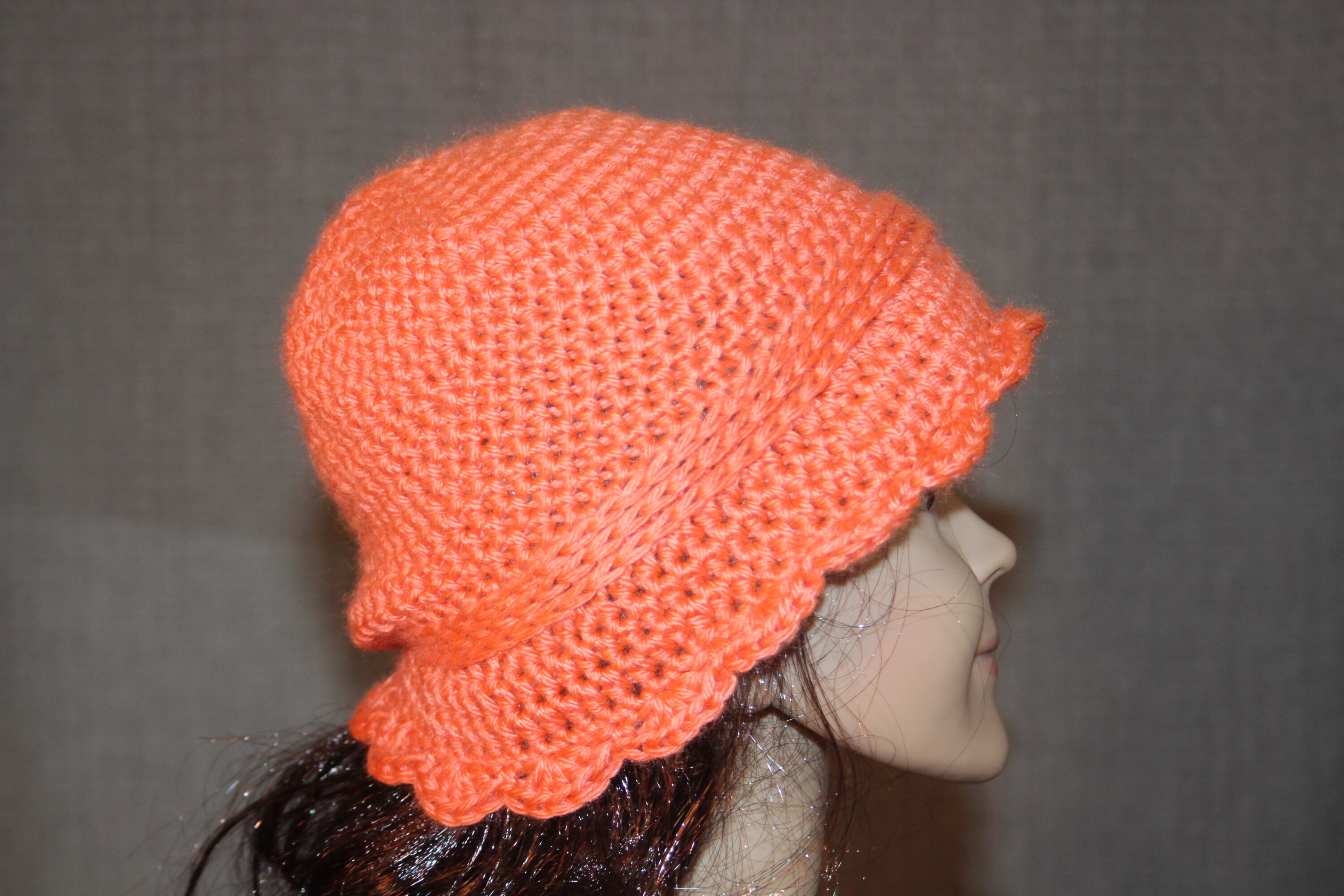
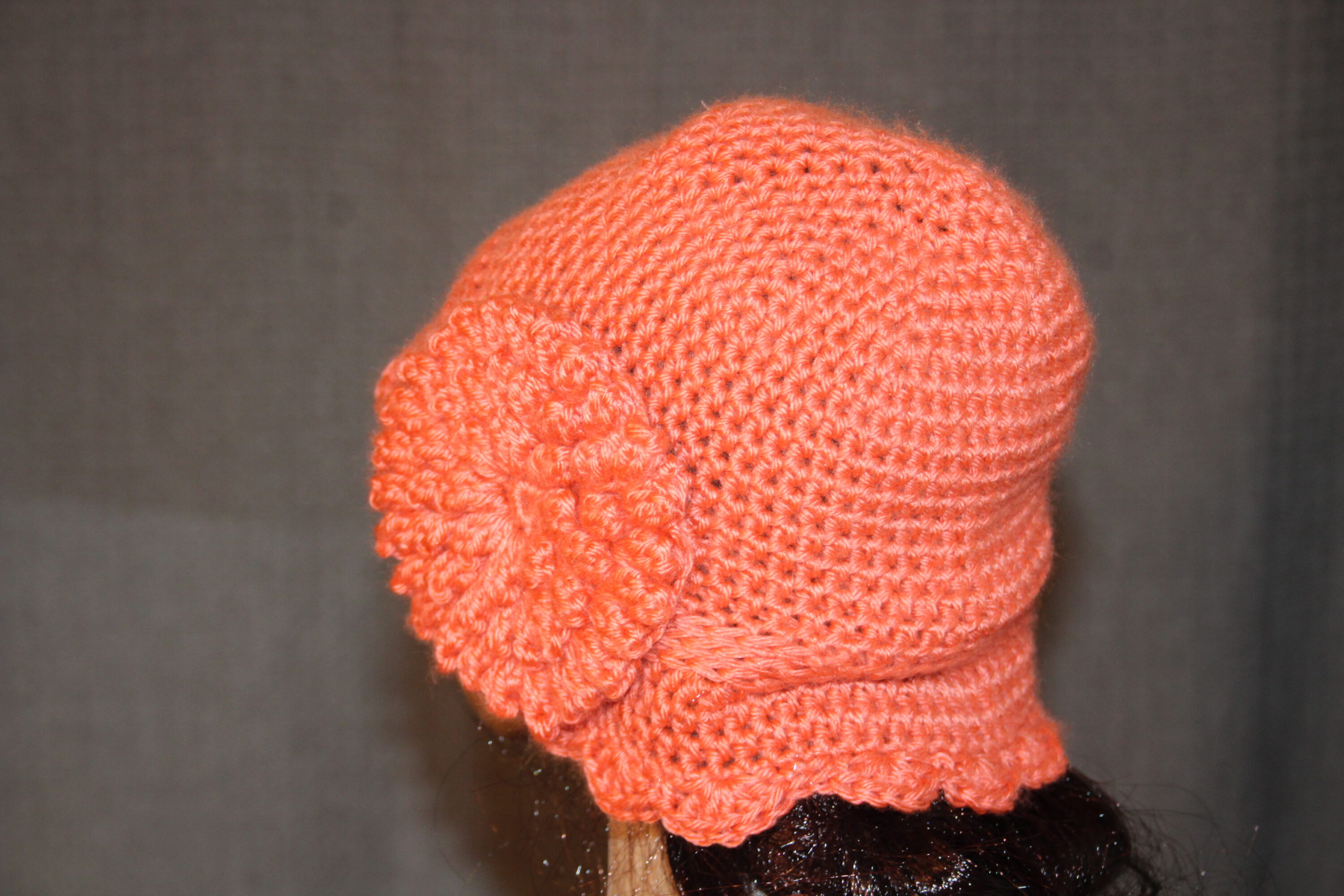
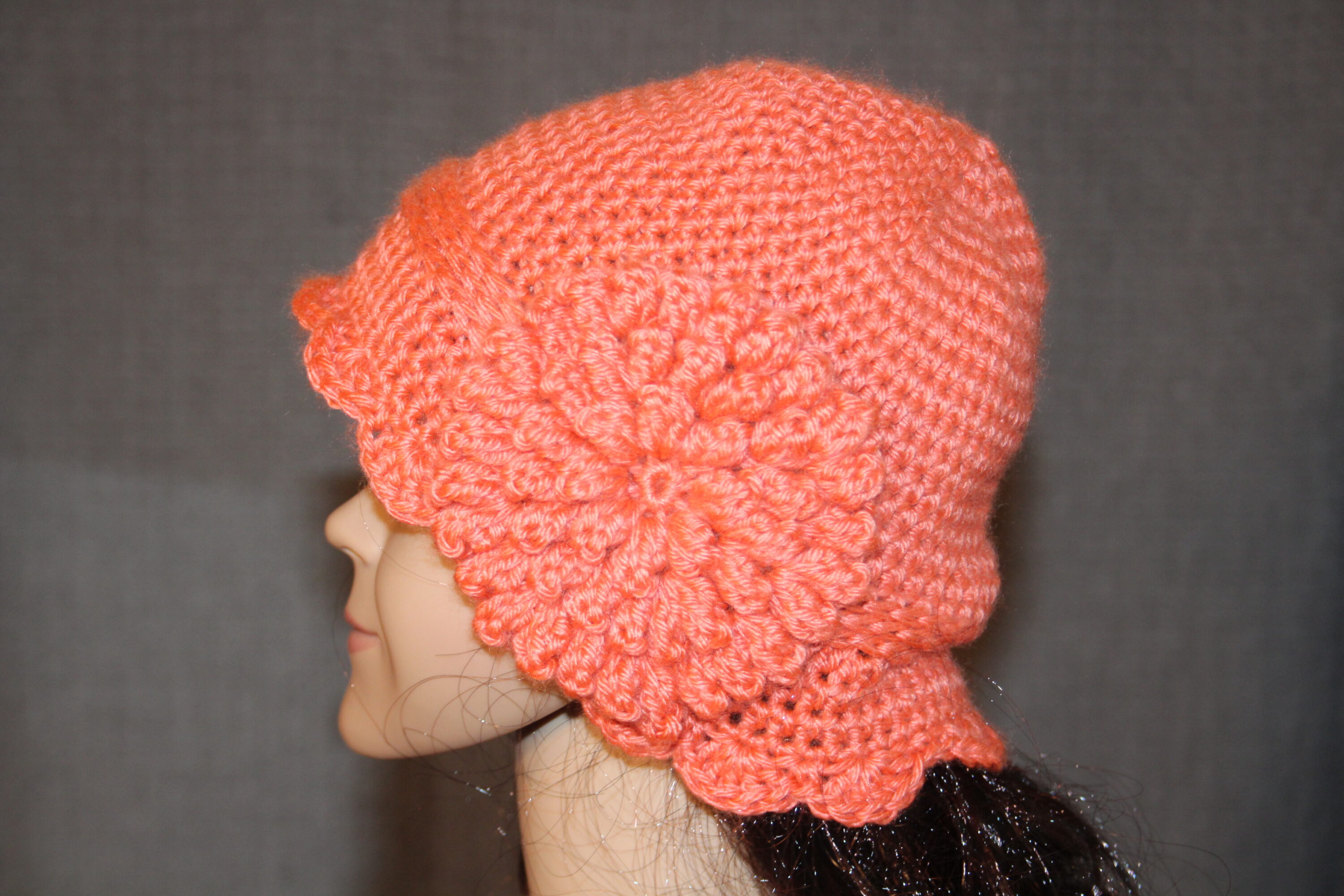
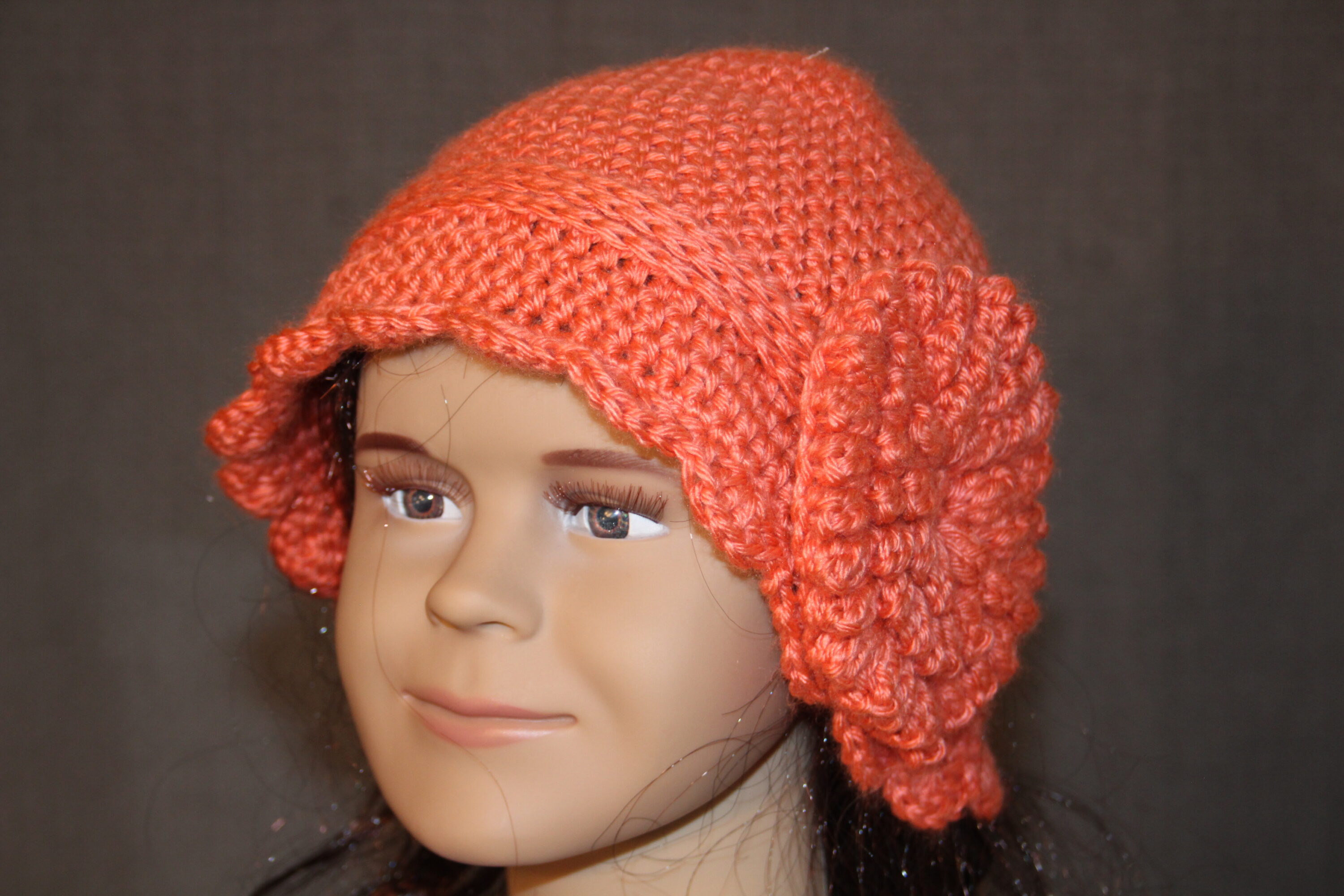
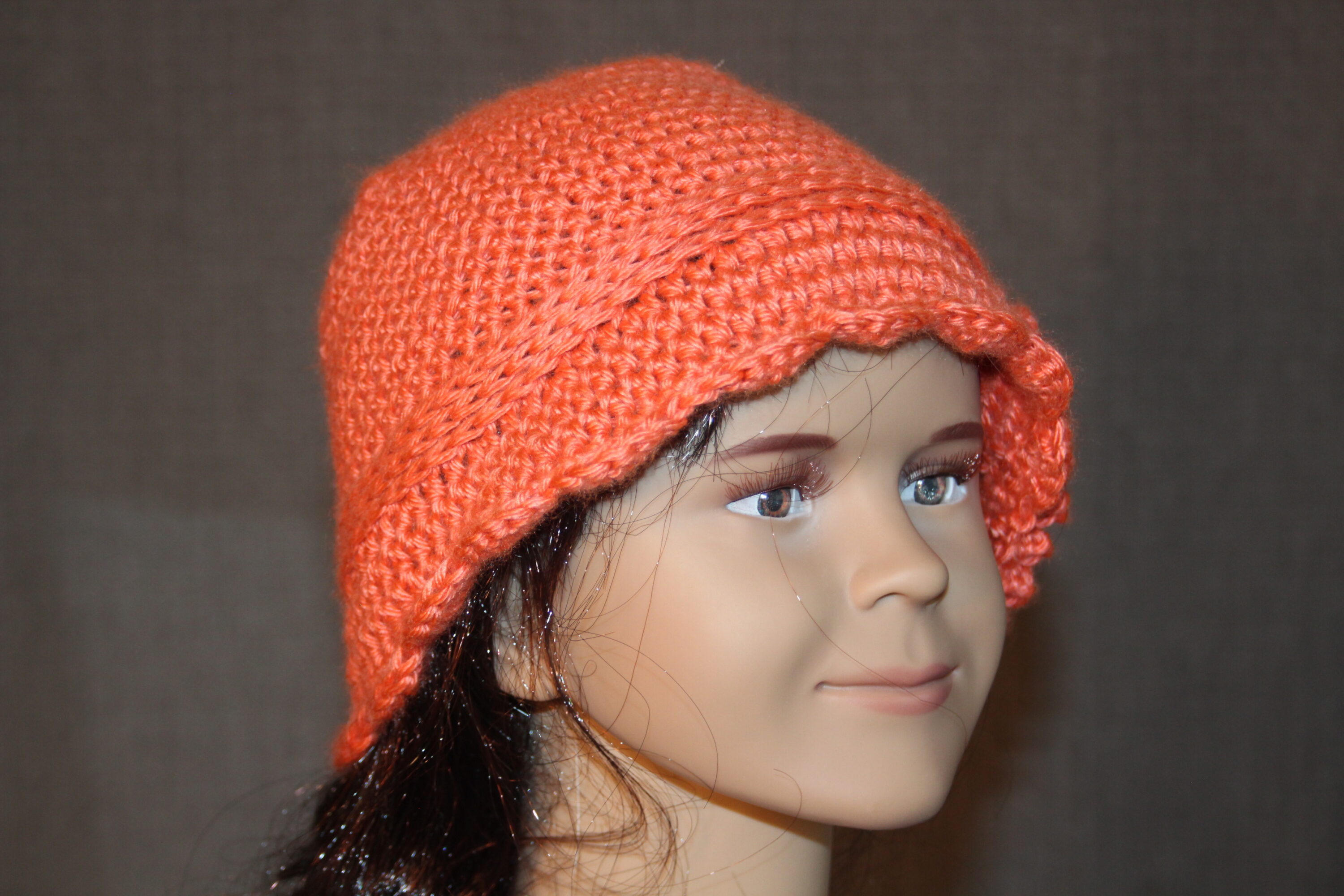
Sewn
Patterns for the sewn hats are from vintage magazines, and were the instructions actually followed by women in the mid-1920’s. Scant on instructions, with confusing sizes, these are true millinery masterpieces as the methods of construction are the same as building the more complex women’s hats of the era.
There are 3 types of sewn cloche hats: stiff rounded children’s version with upturned brim, soft “Downton Abbey” styles “Lady Edith” which is actually a pattern from Mrs. Spear’s Weekly Sewing Column that was published in newspapers along with advice in the 1920’s to 1930’s. It too is scant on information and long on flowery description. The 3rd is a woman’s “Lady Rose” cloche design also from Mrs. Spears which is a soft version of the stiff rounded child’s hat.
All of these would have been worn outdoors and removed in the classroom.
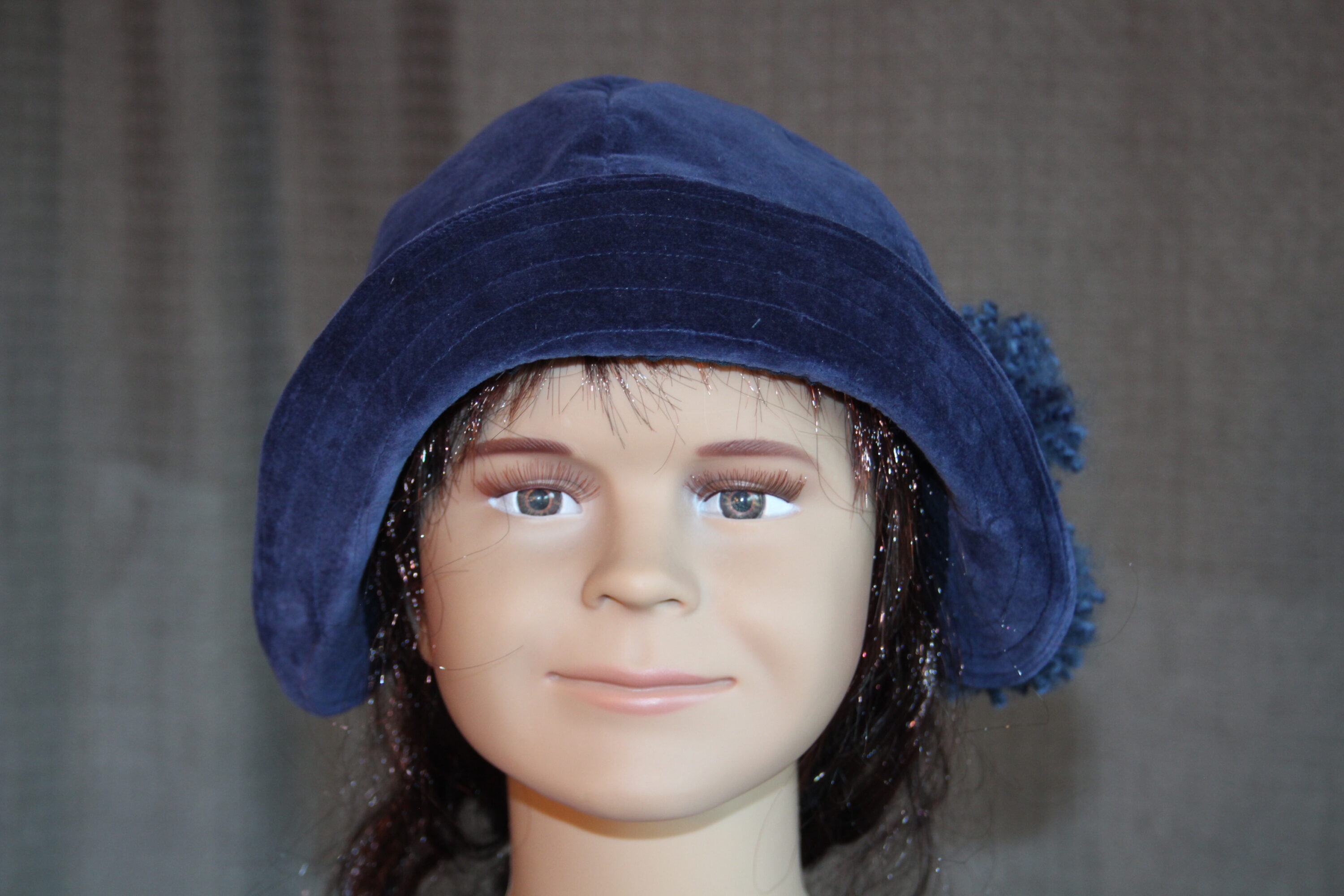
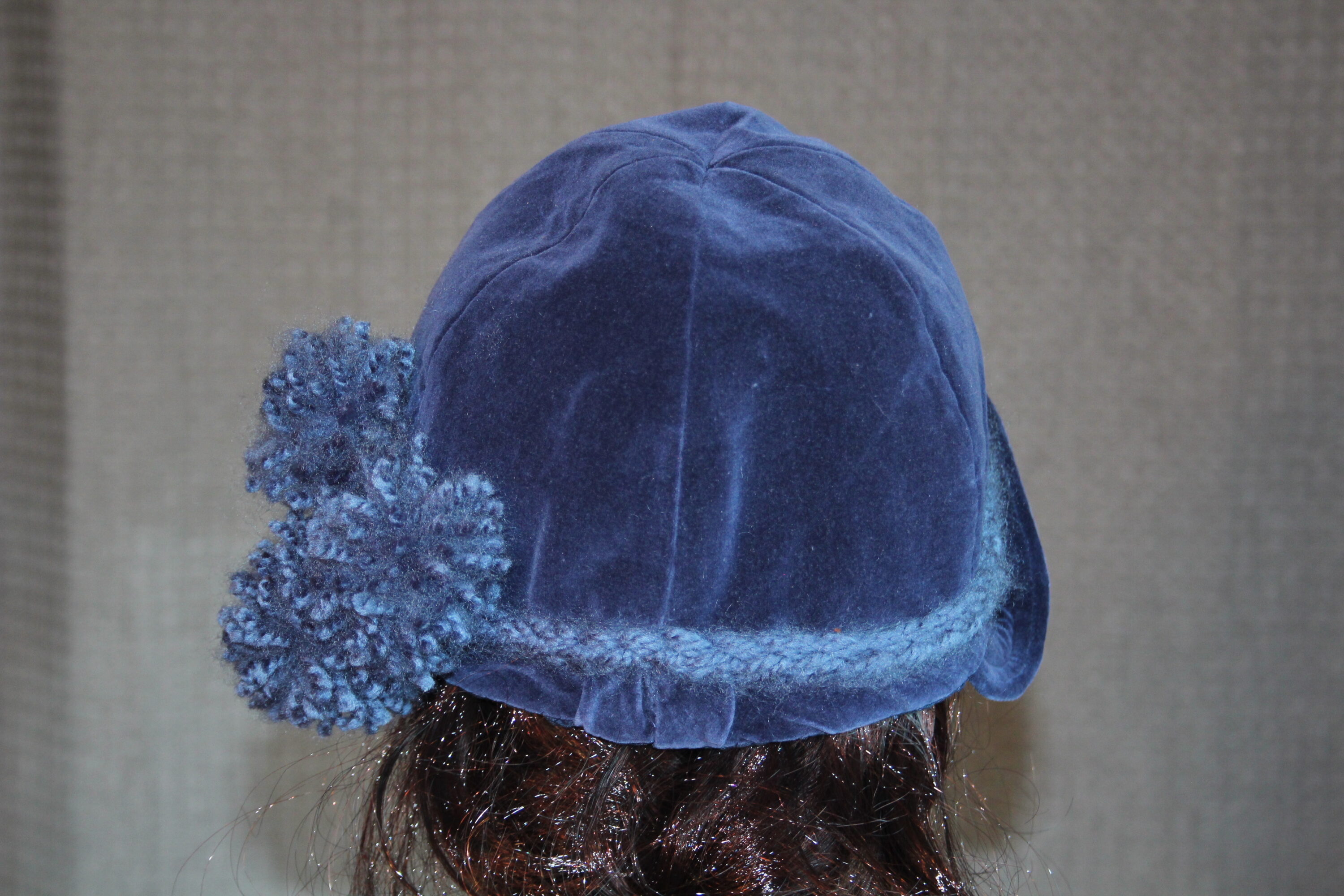
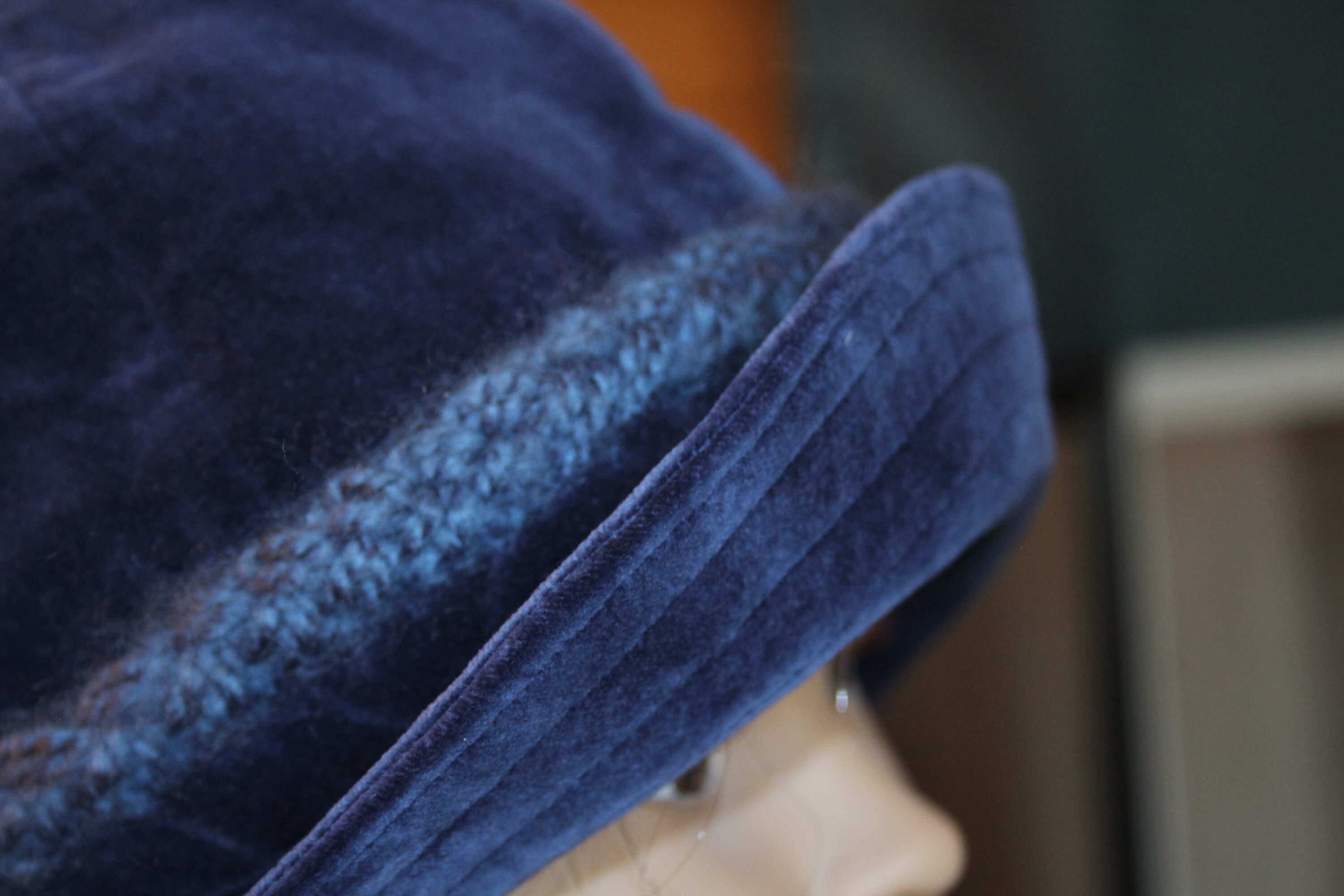
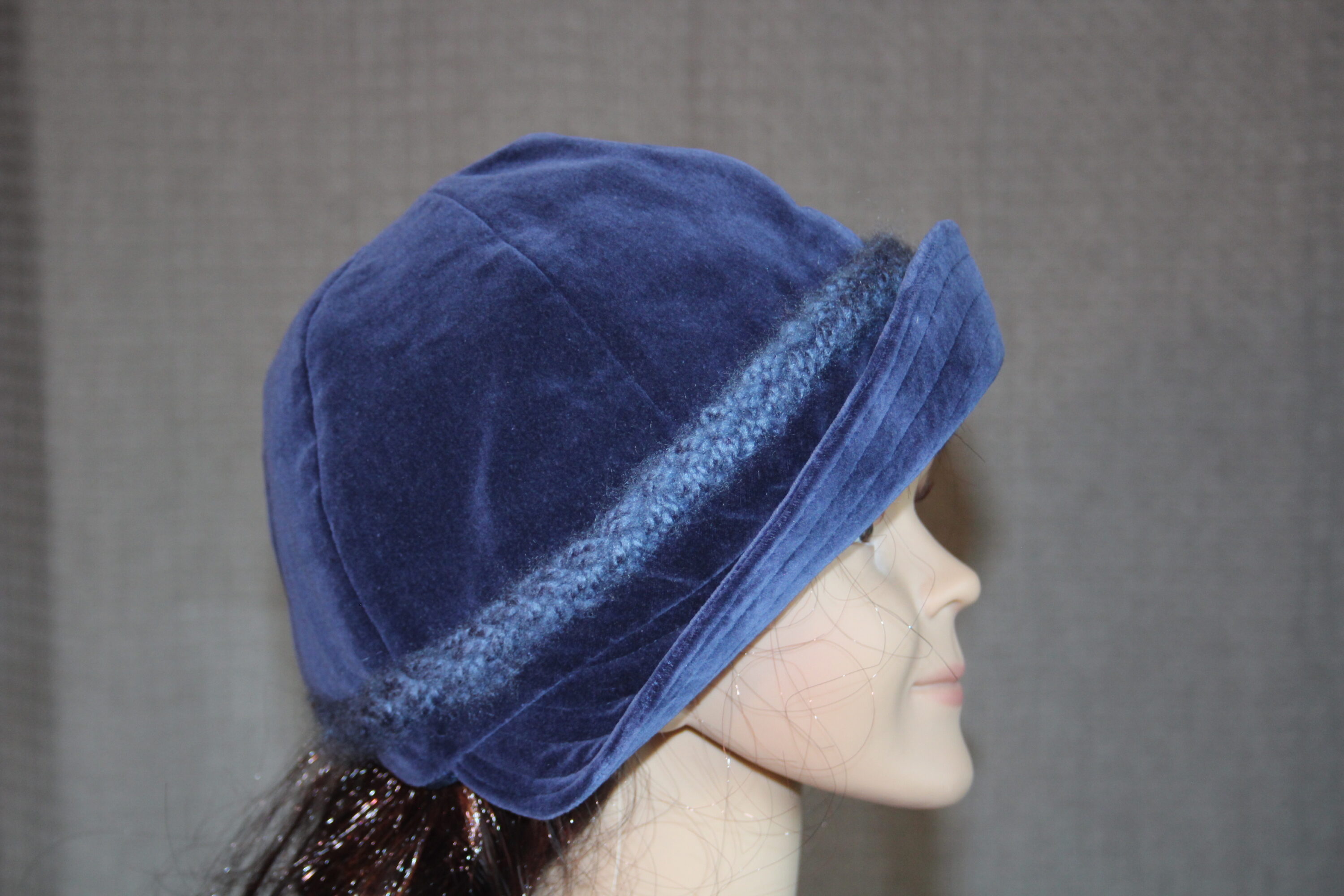
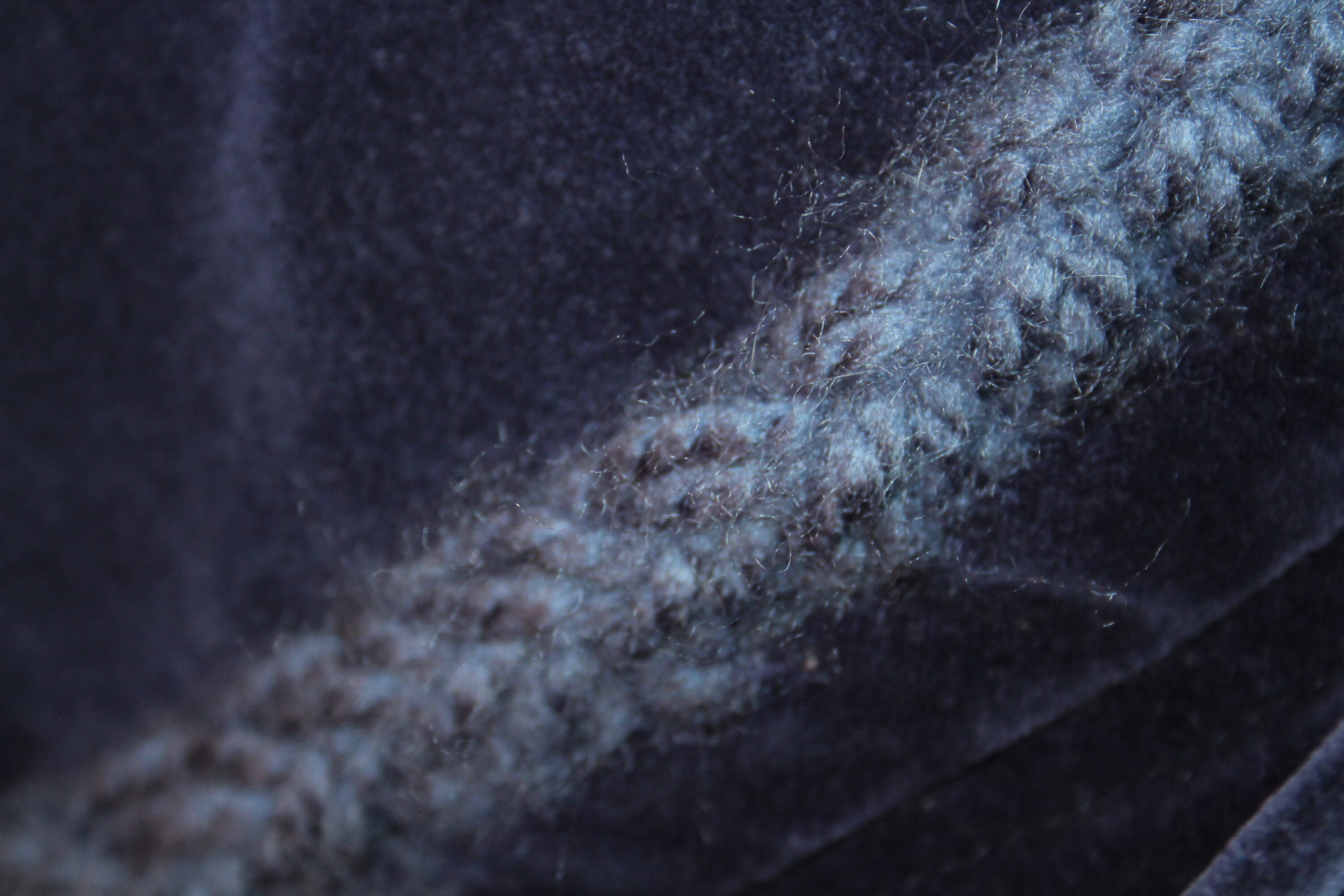
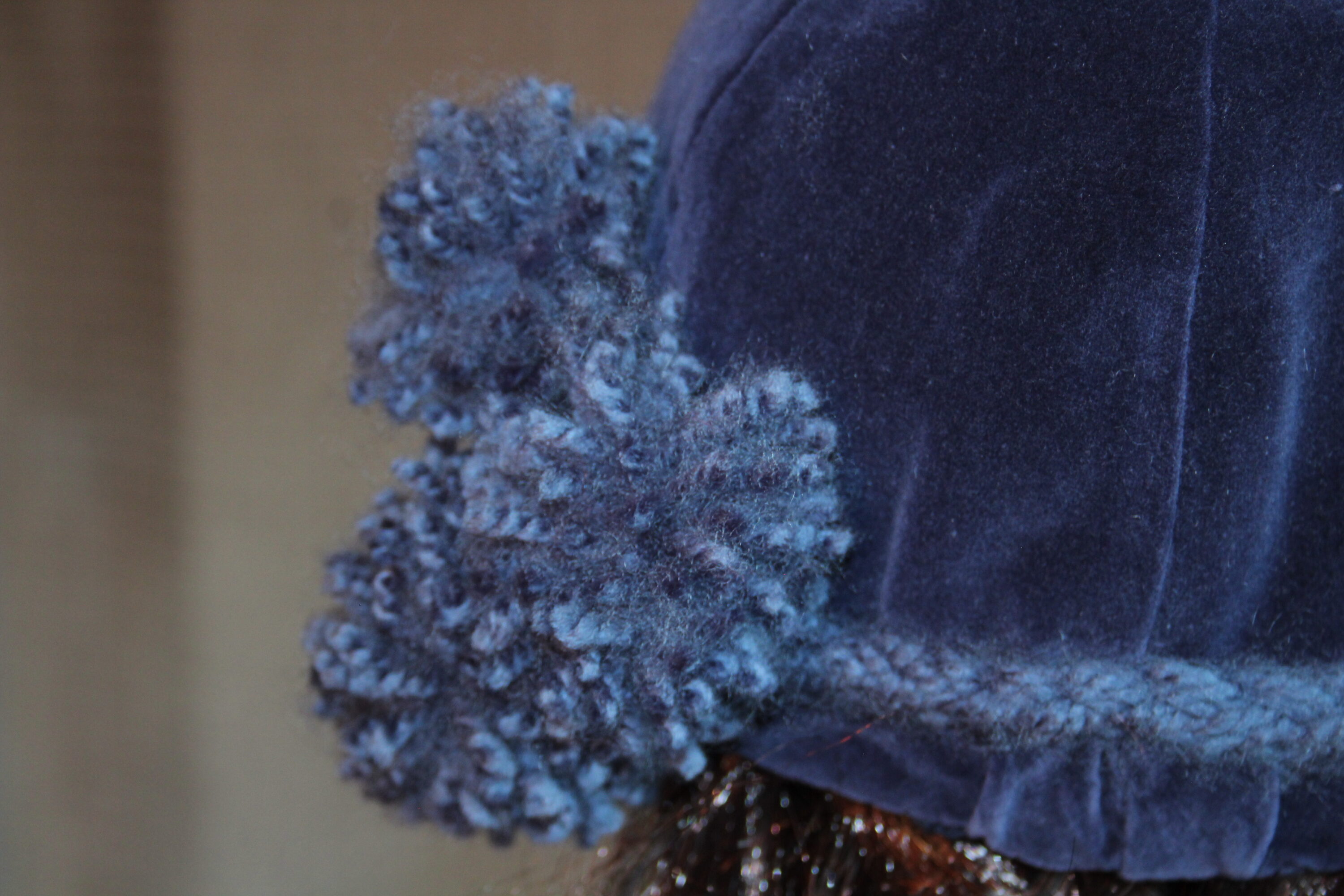
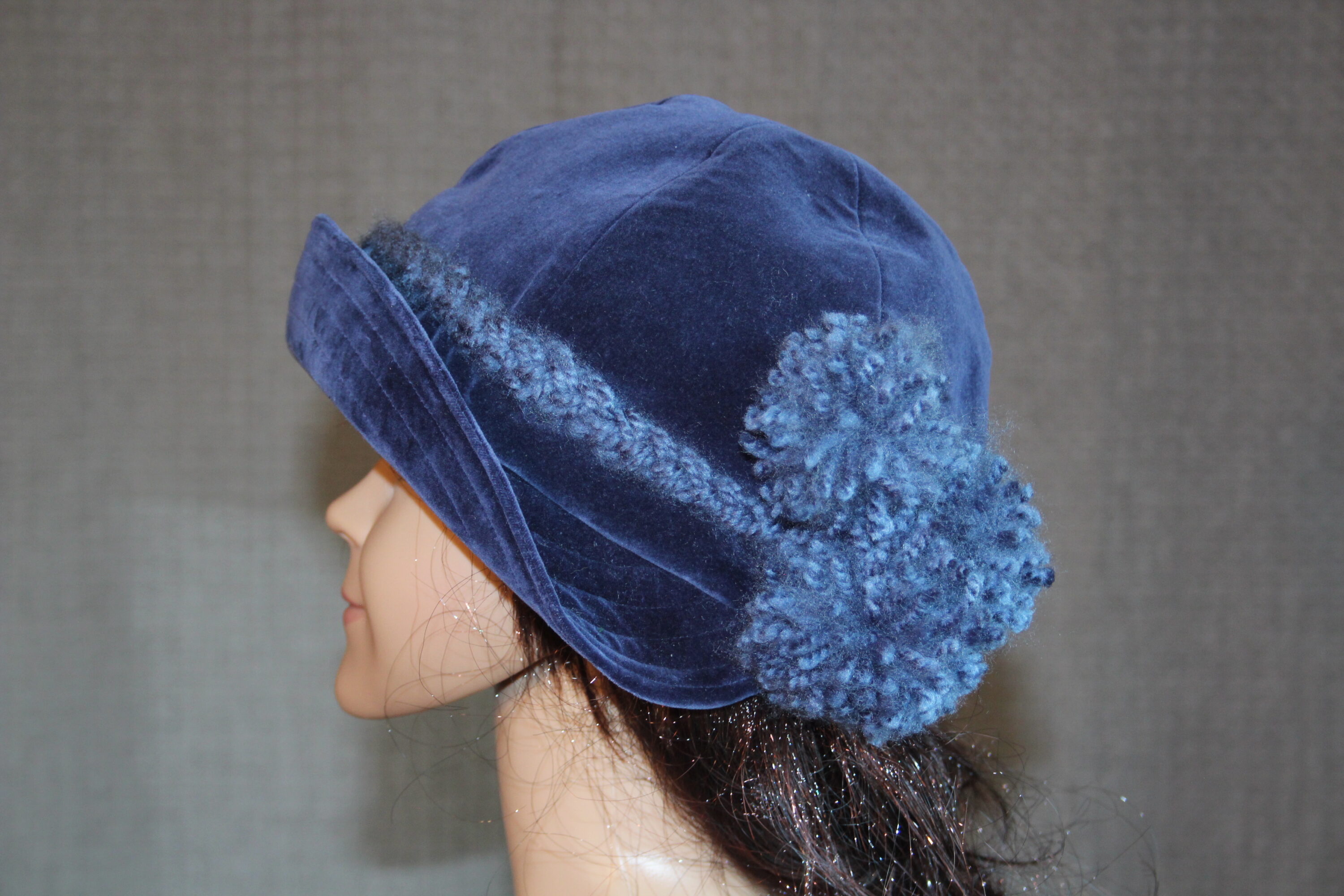
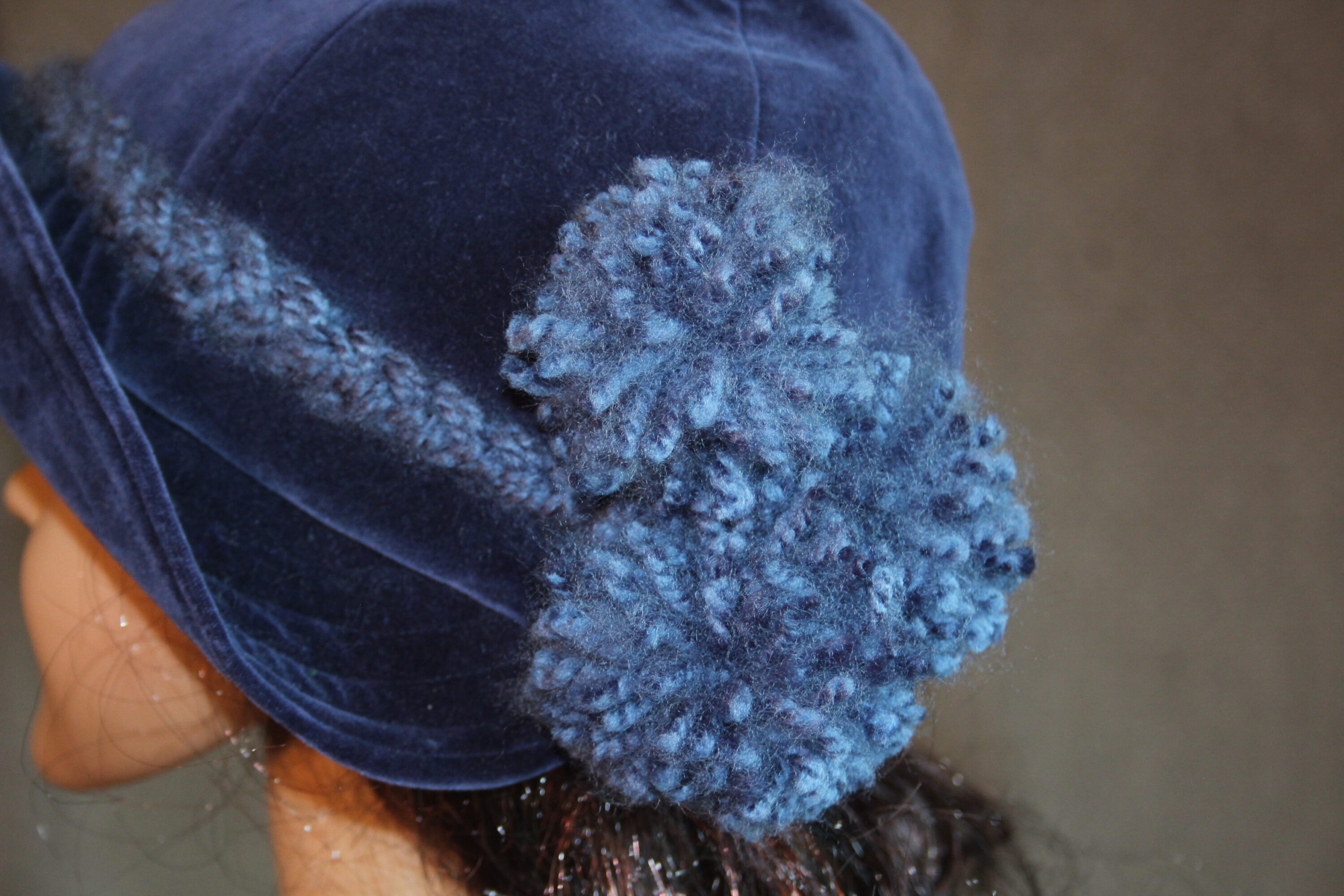
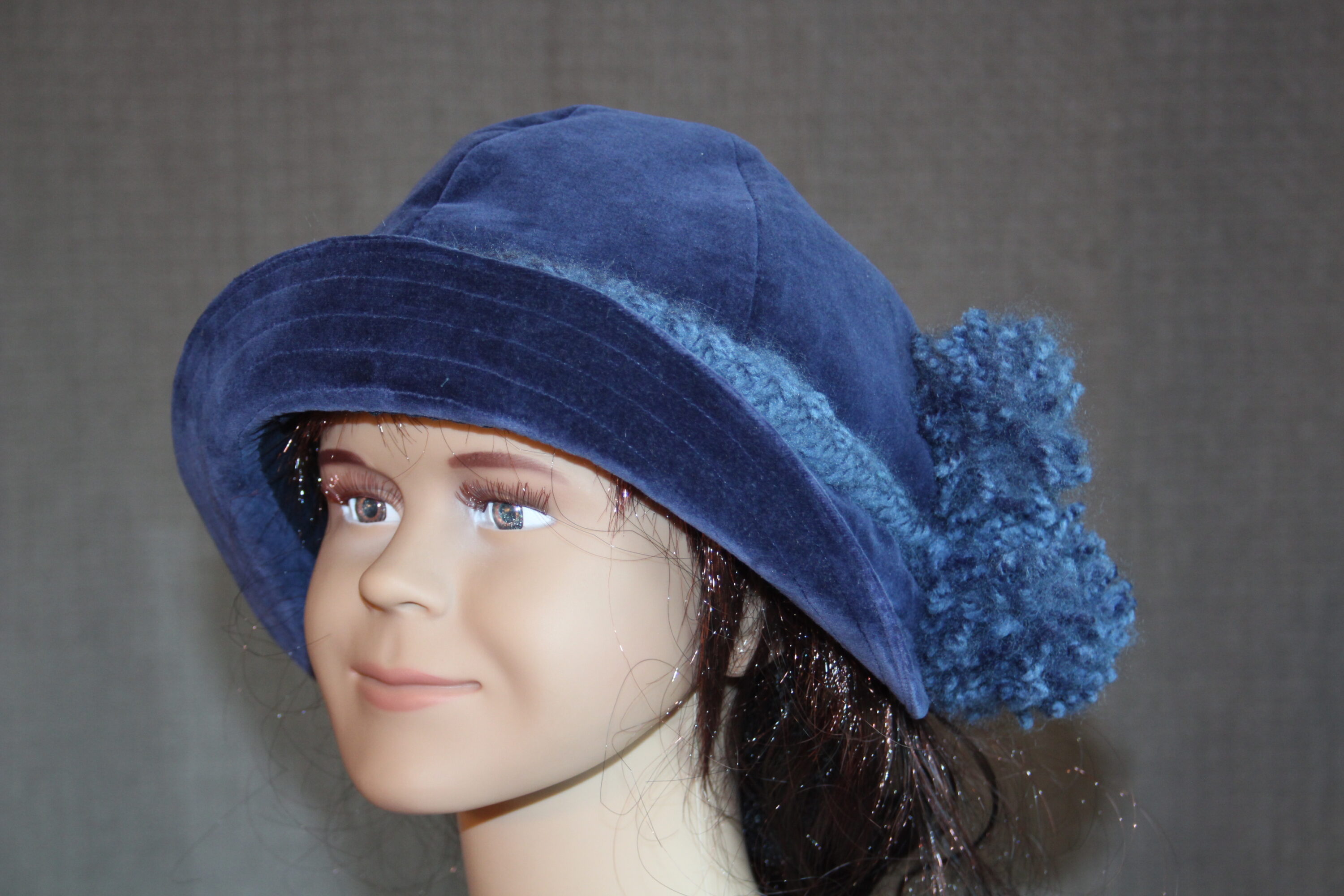
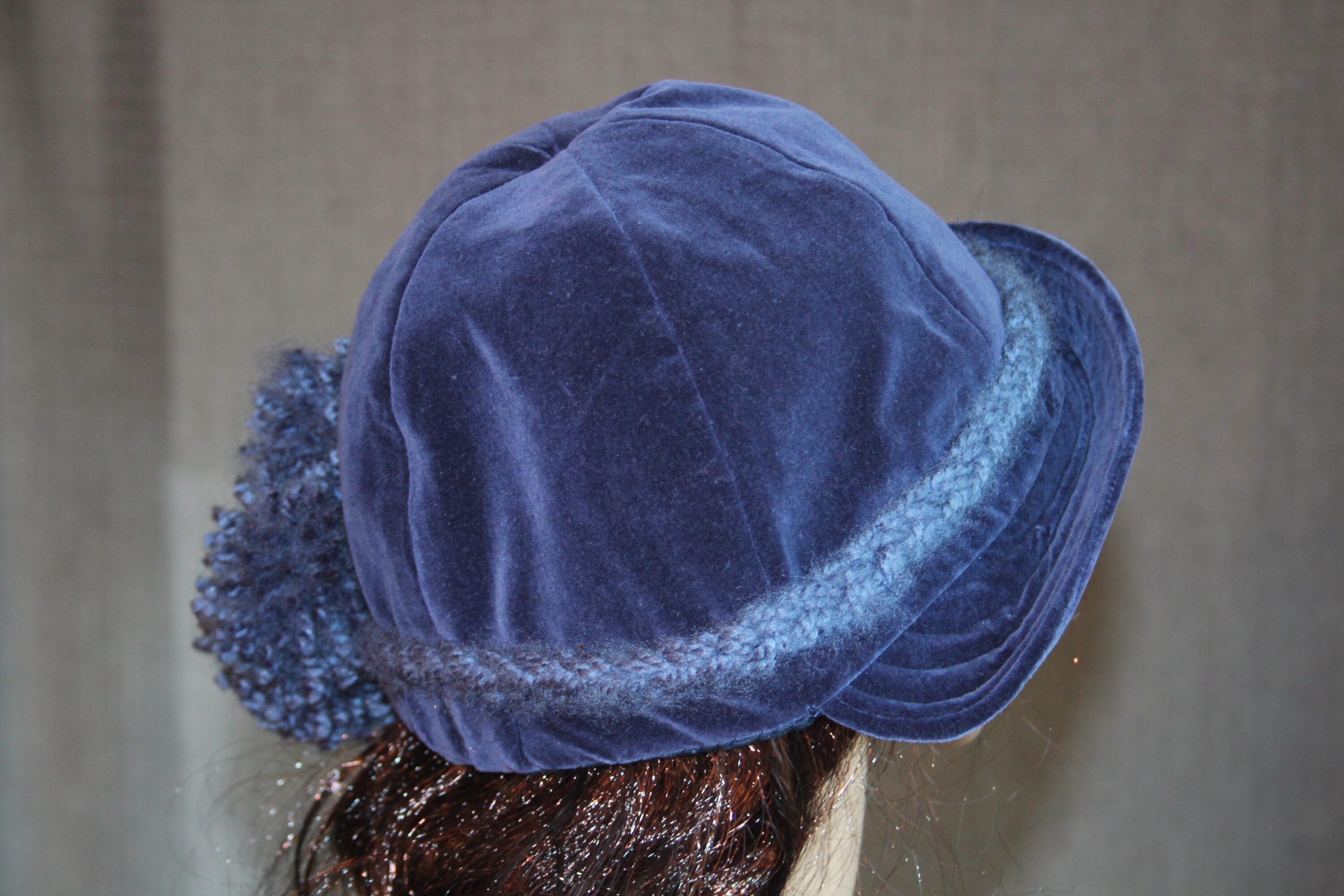
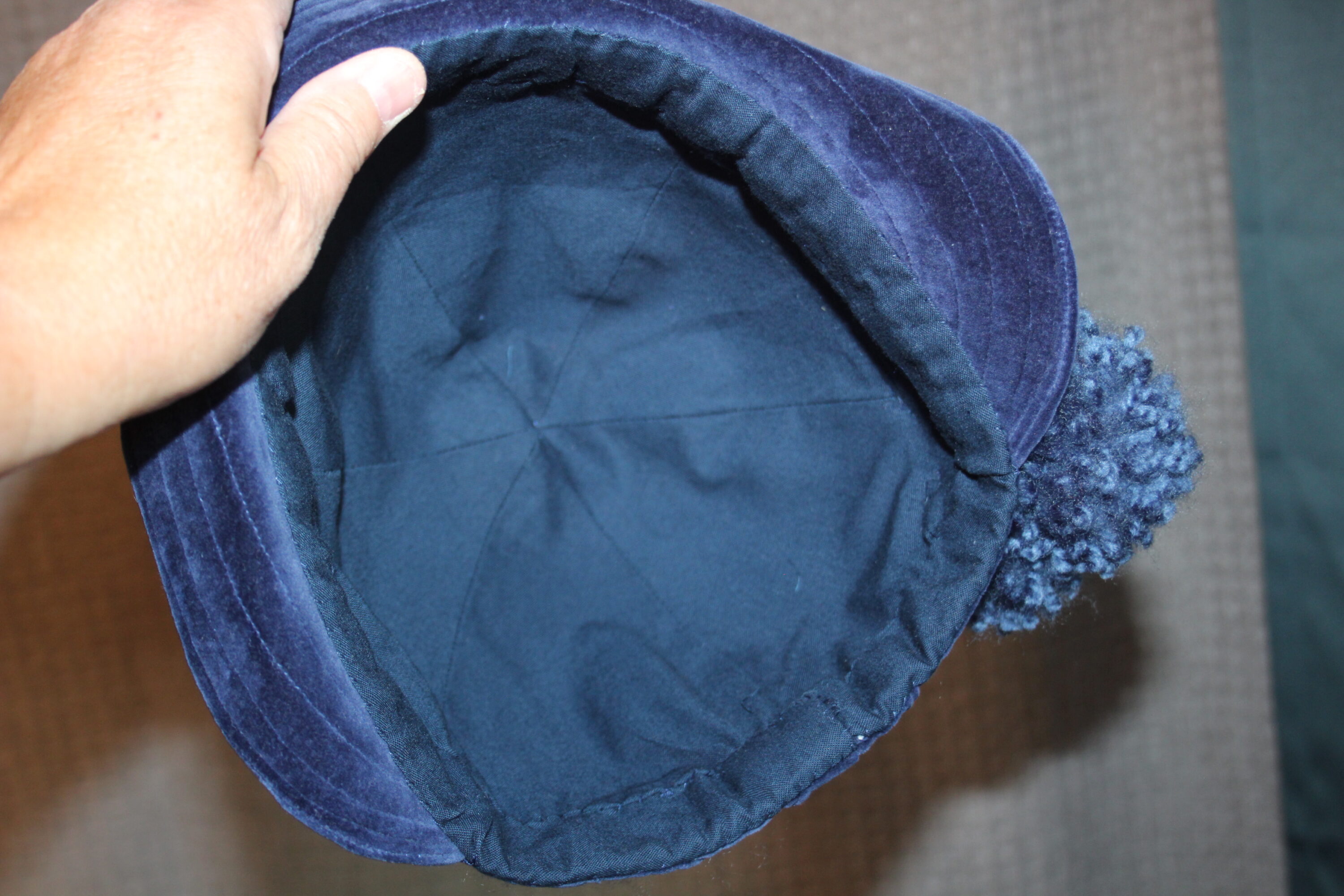
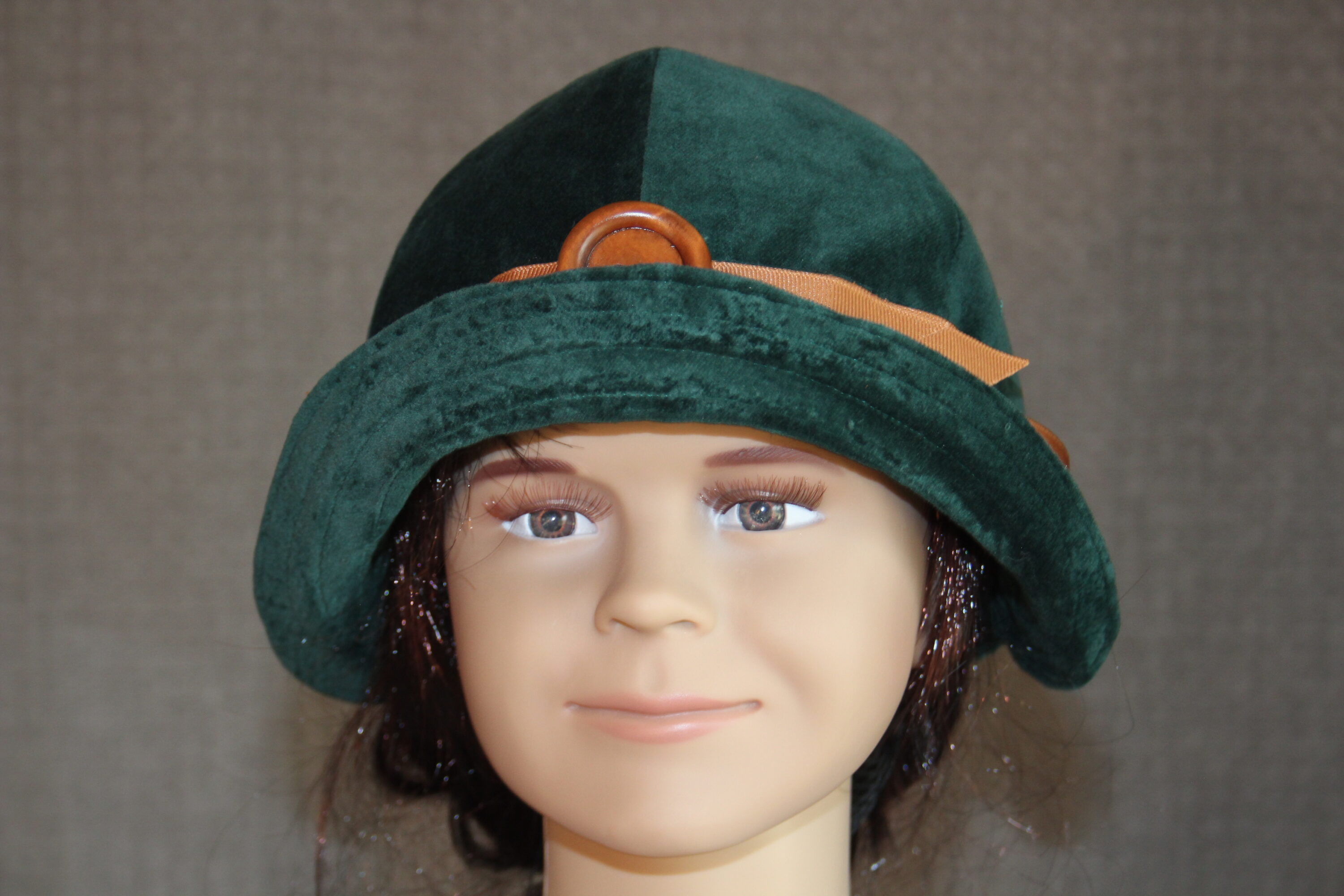
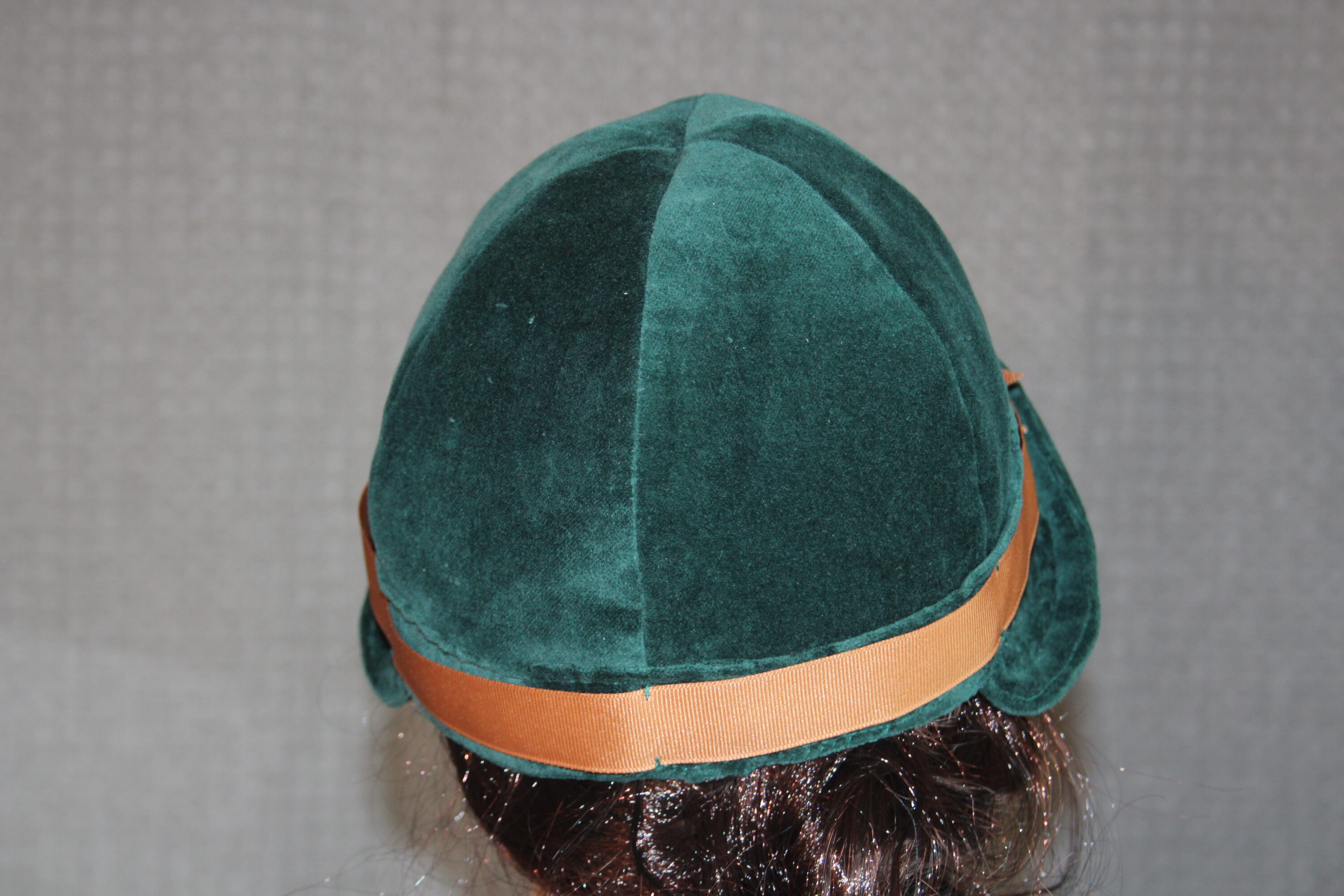
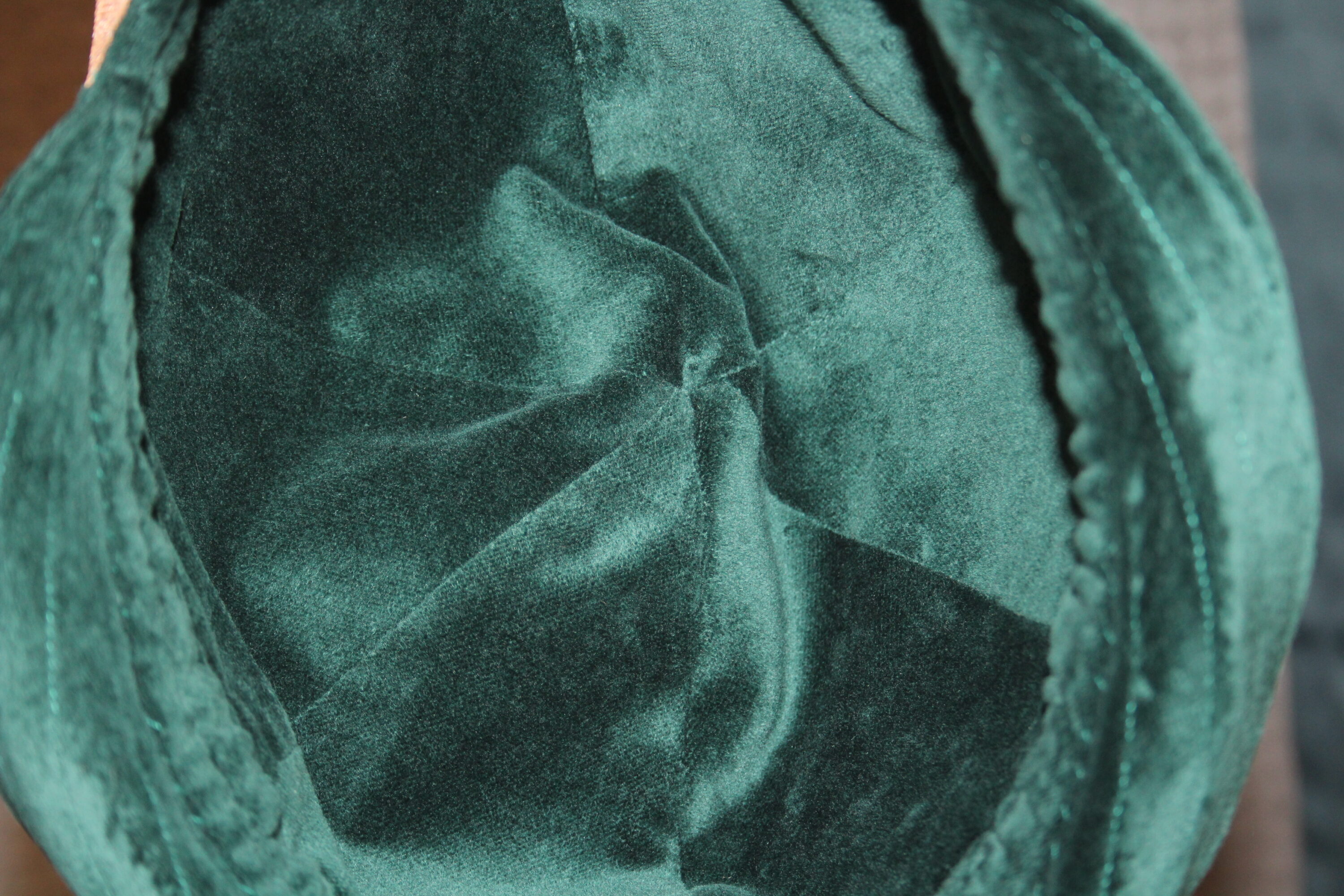
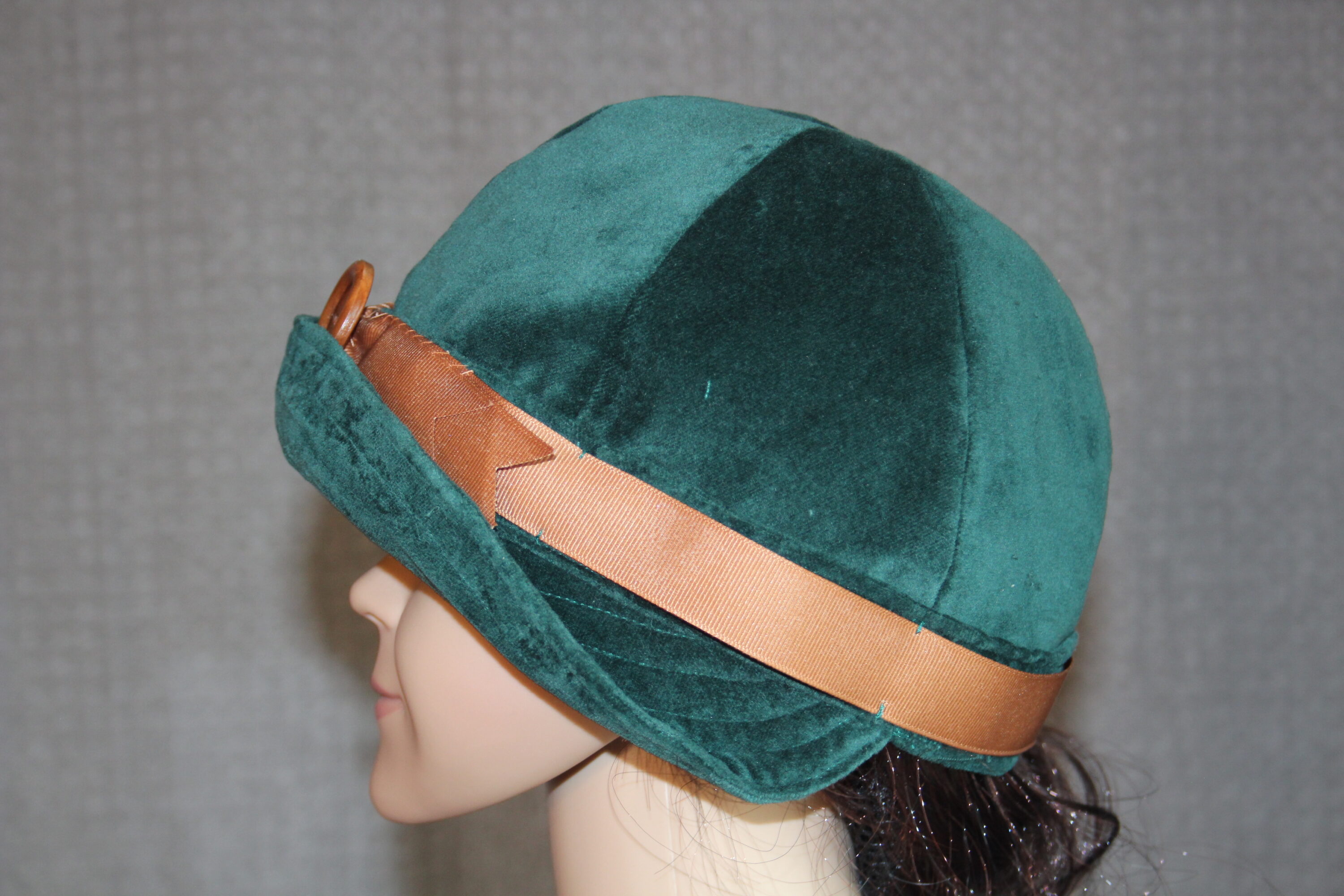
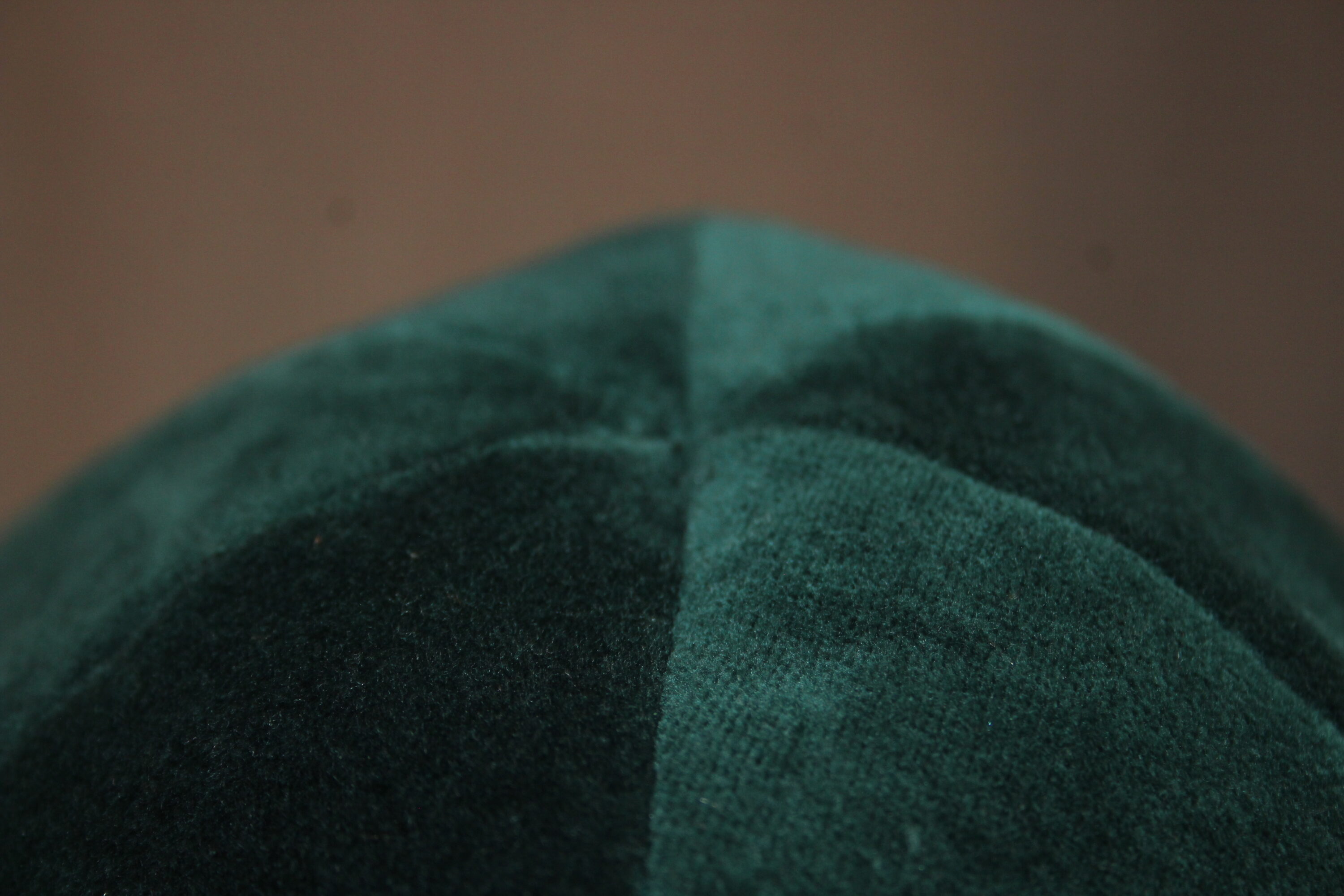
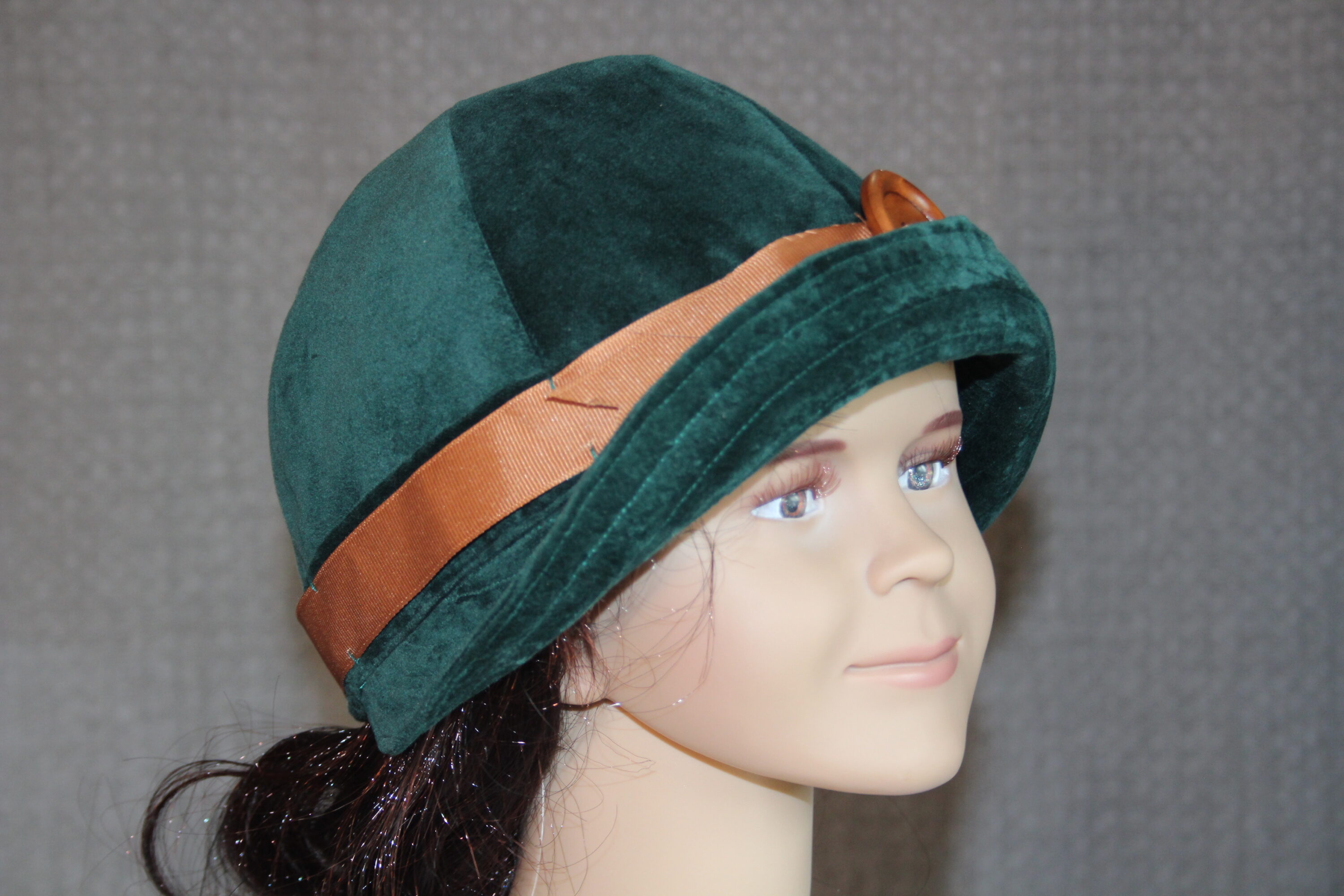
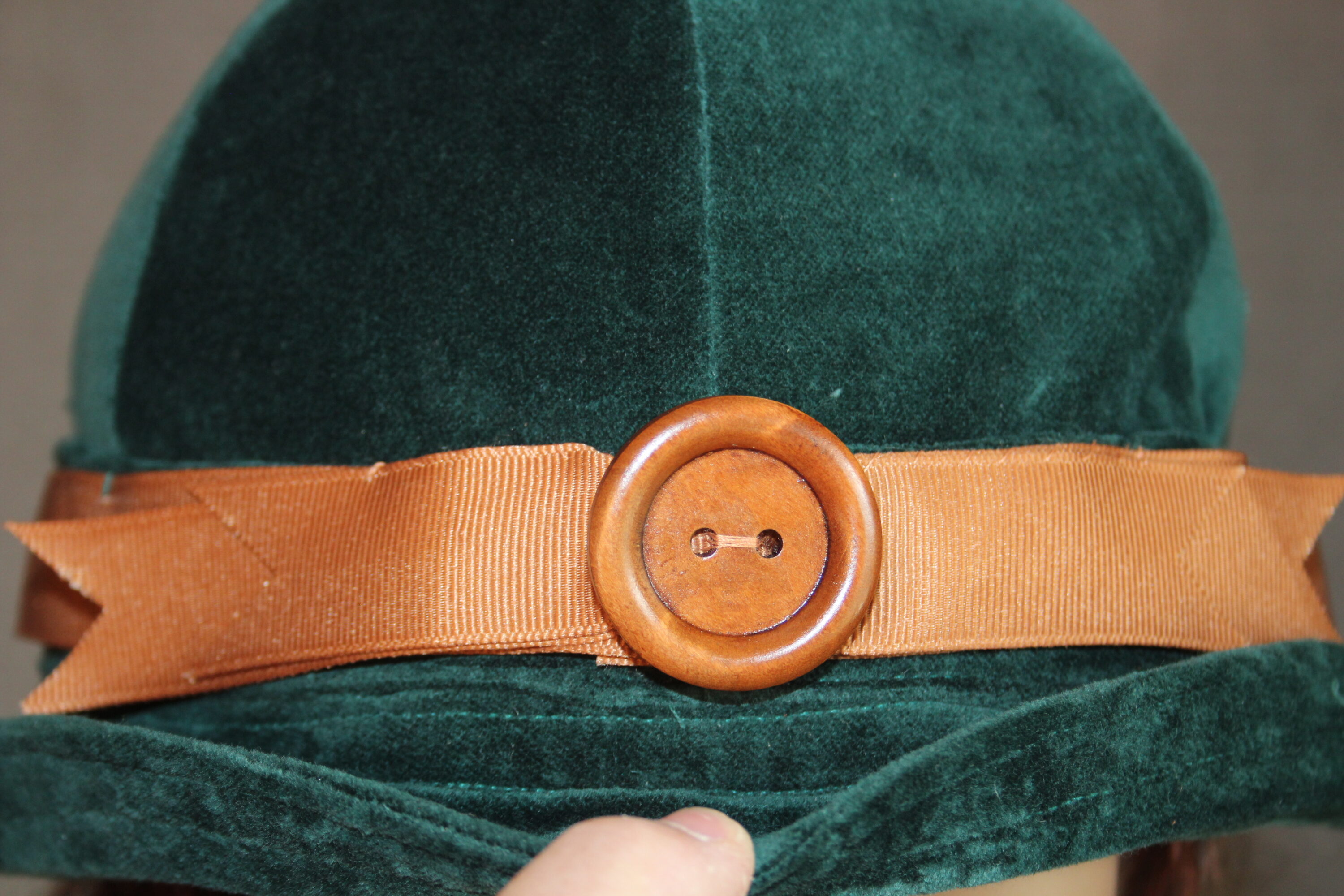
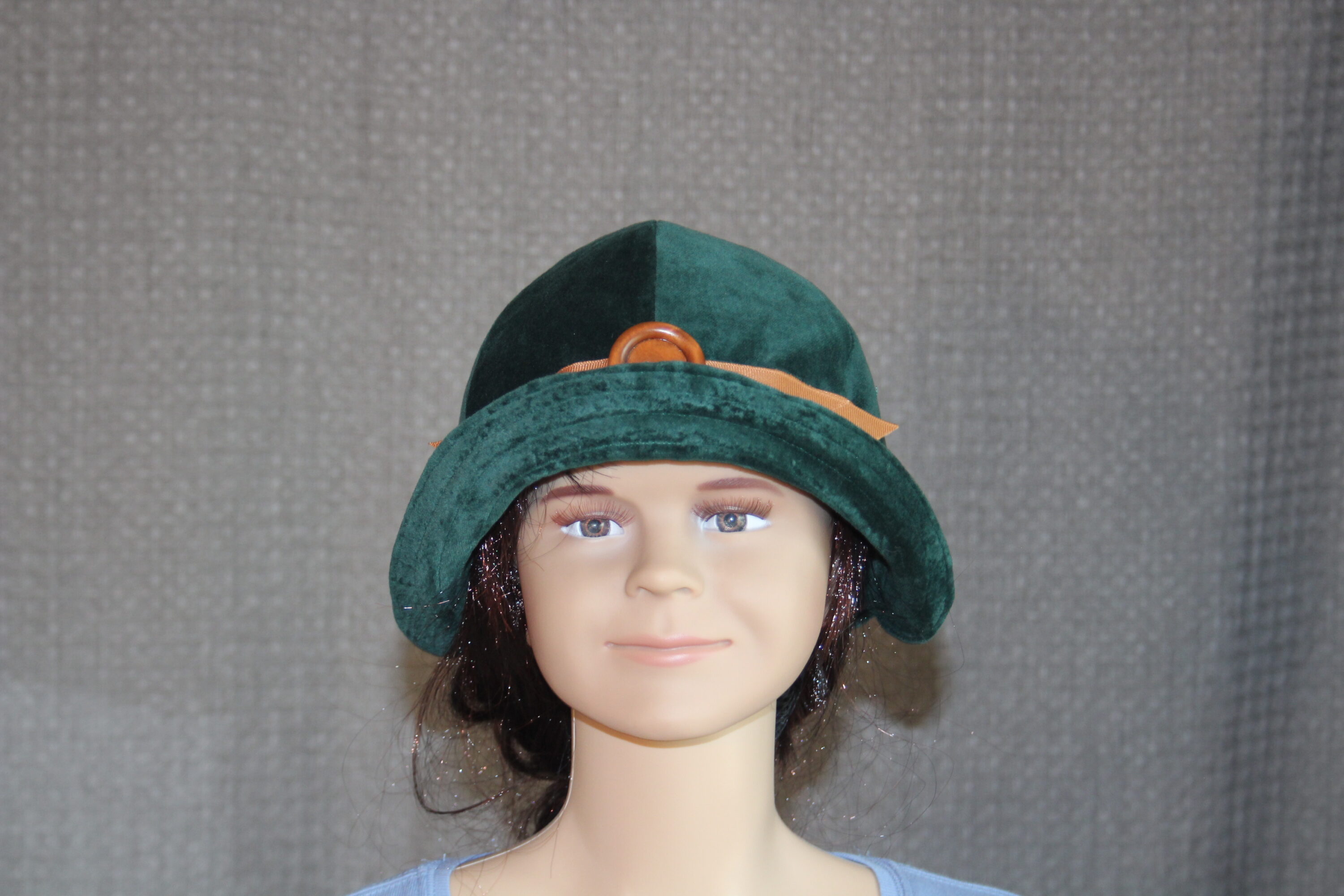
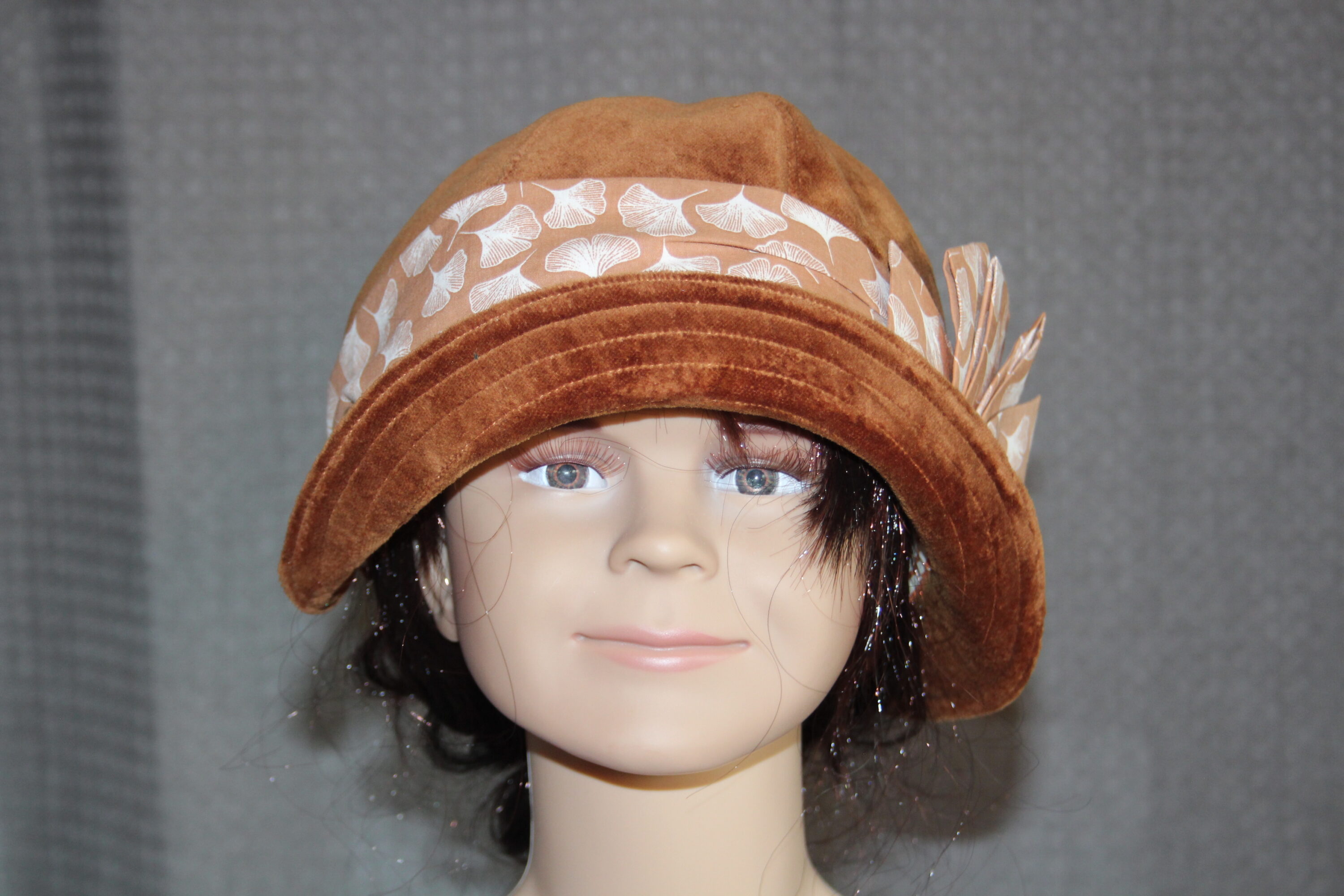
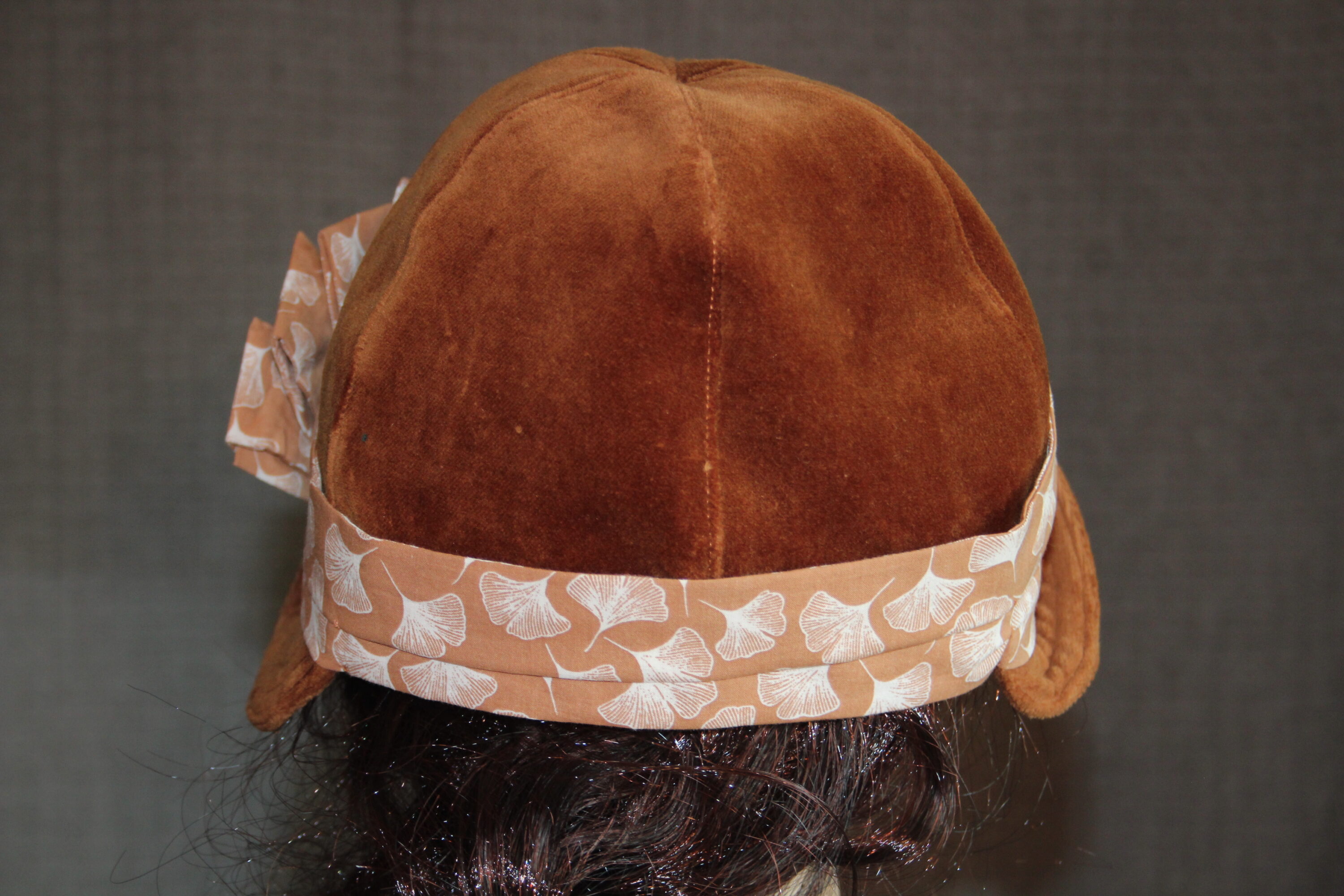
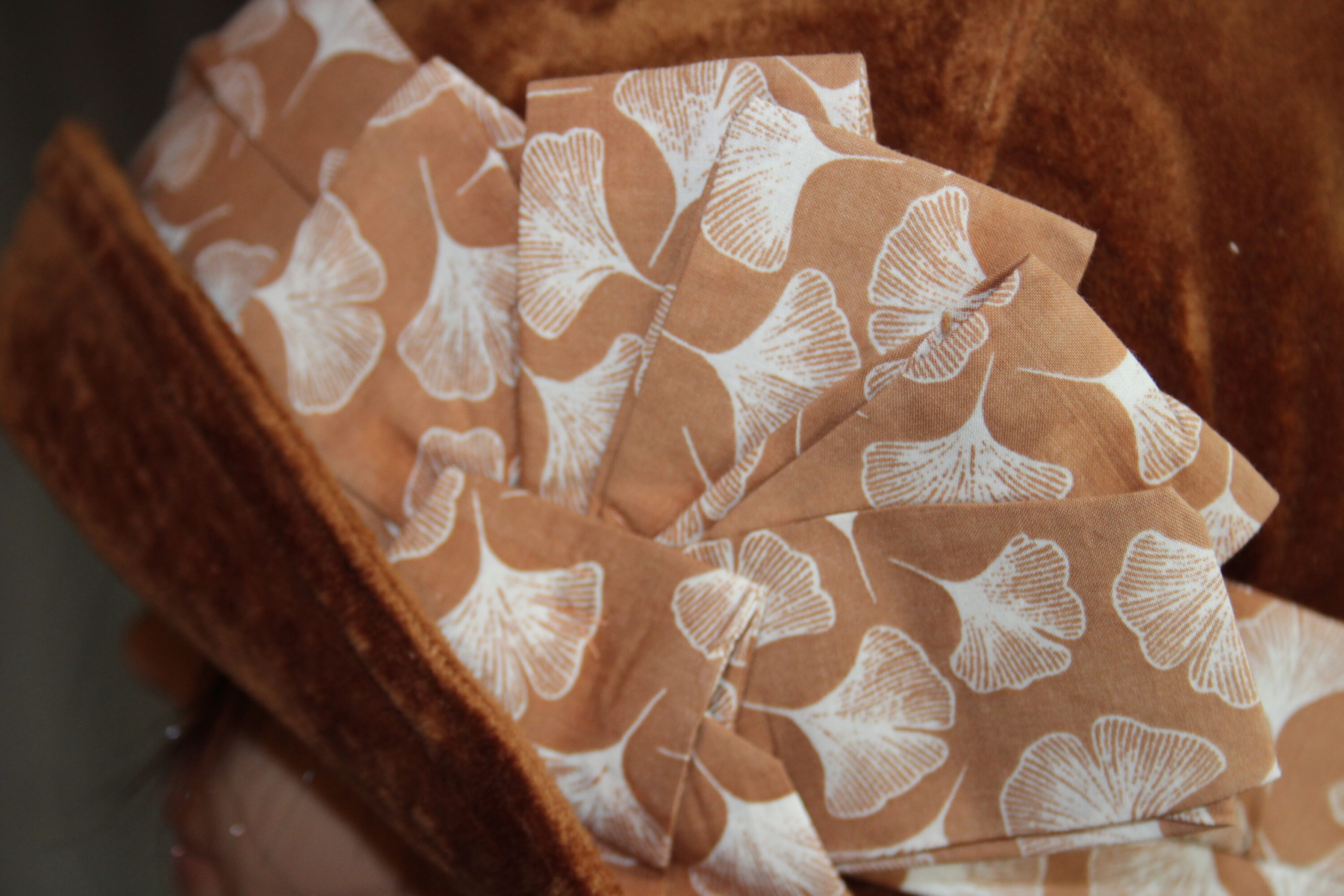
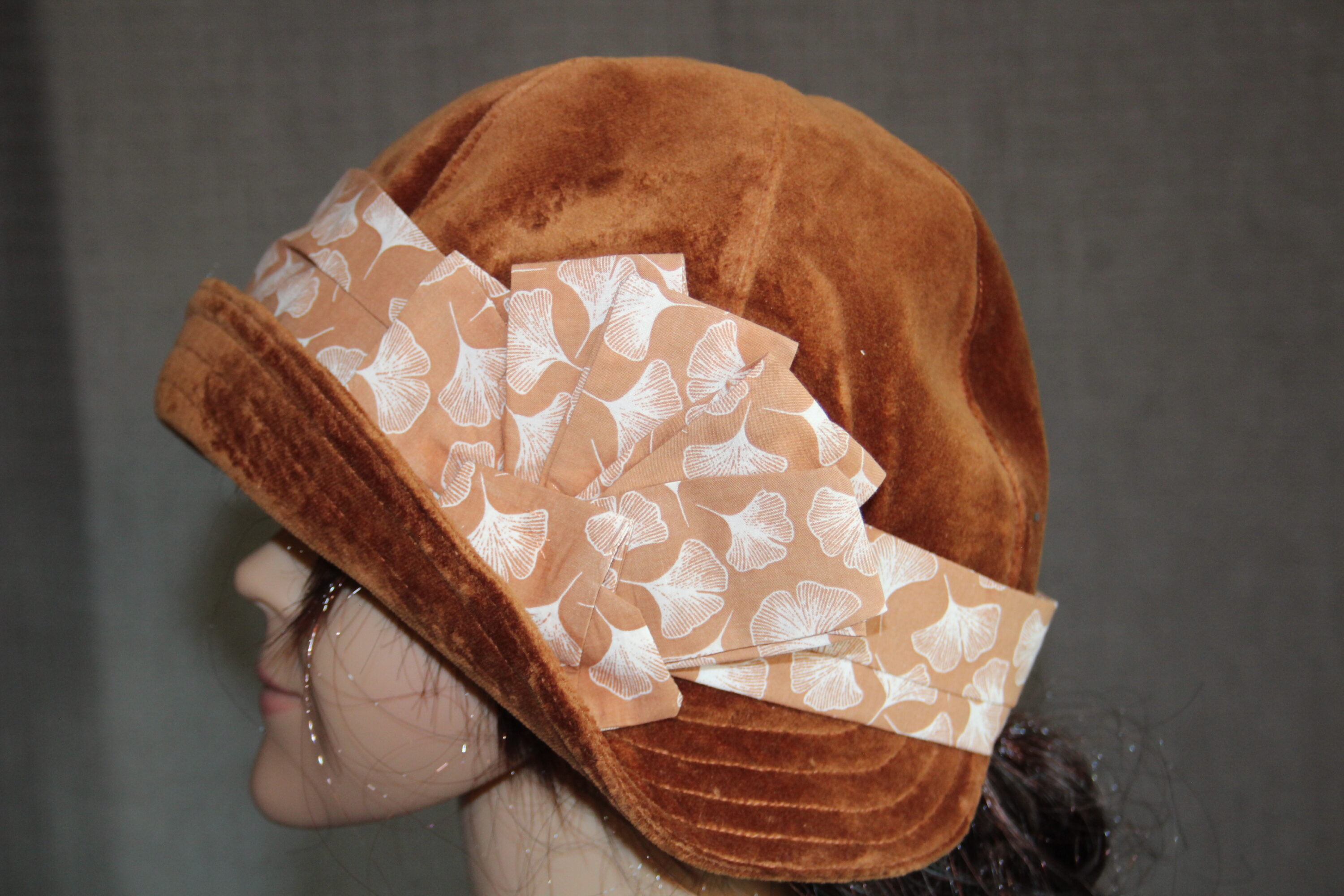
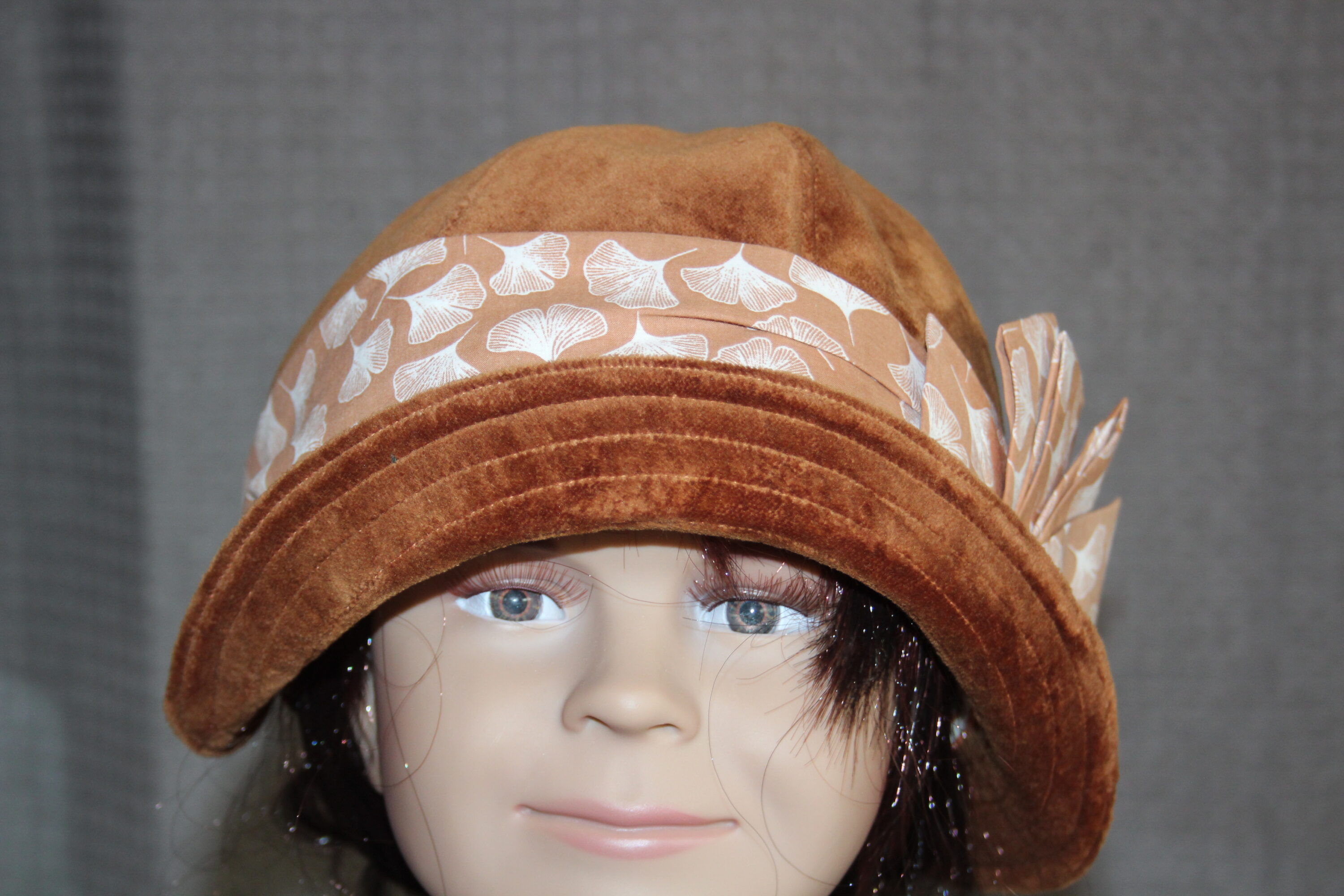
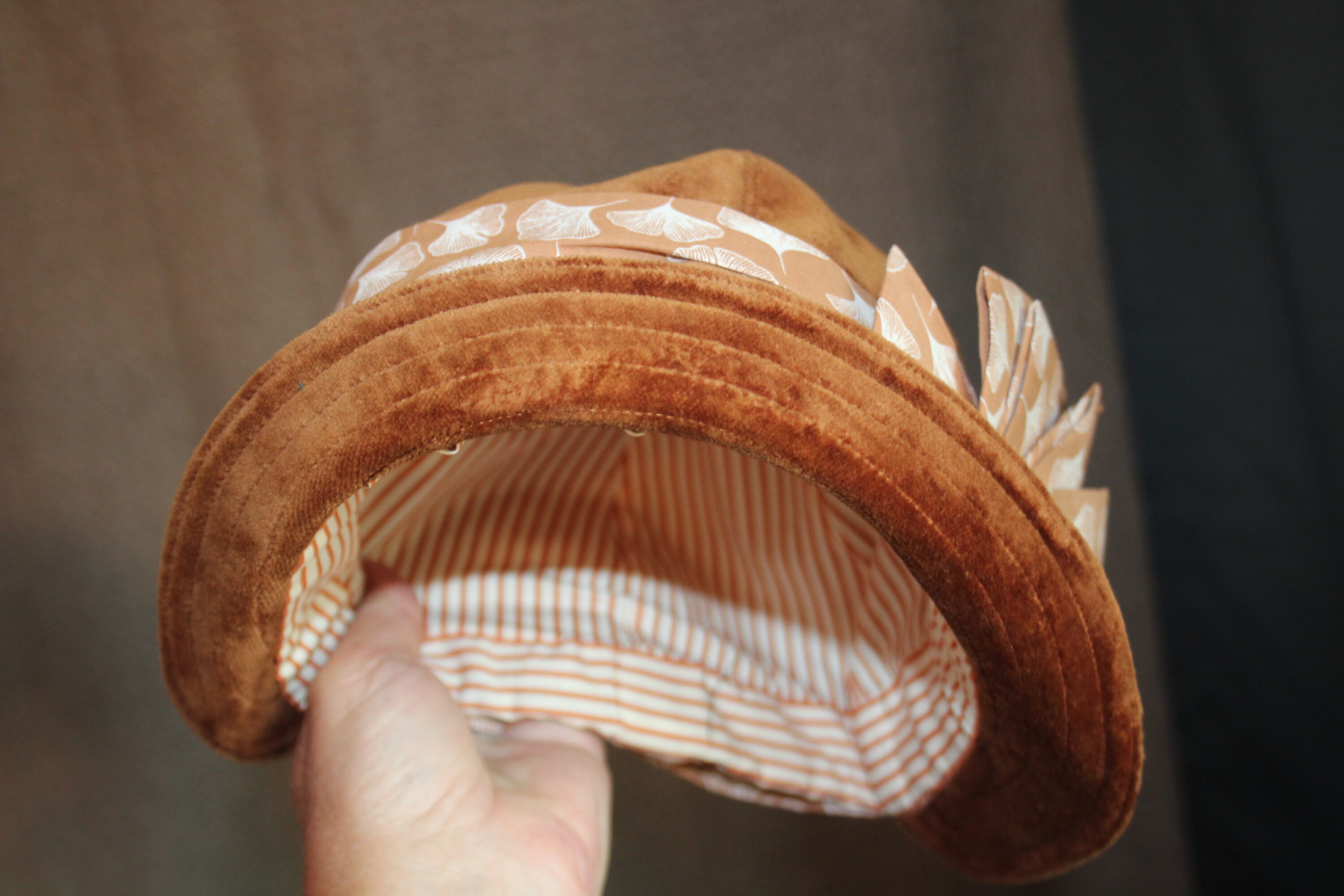
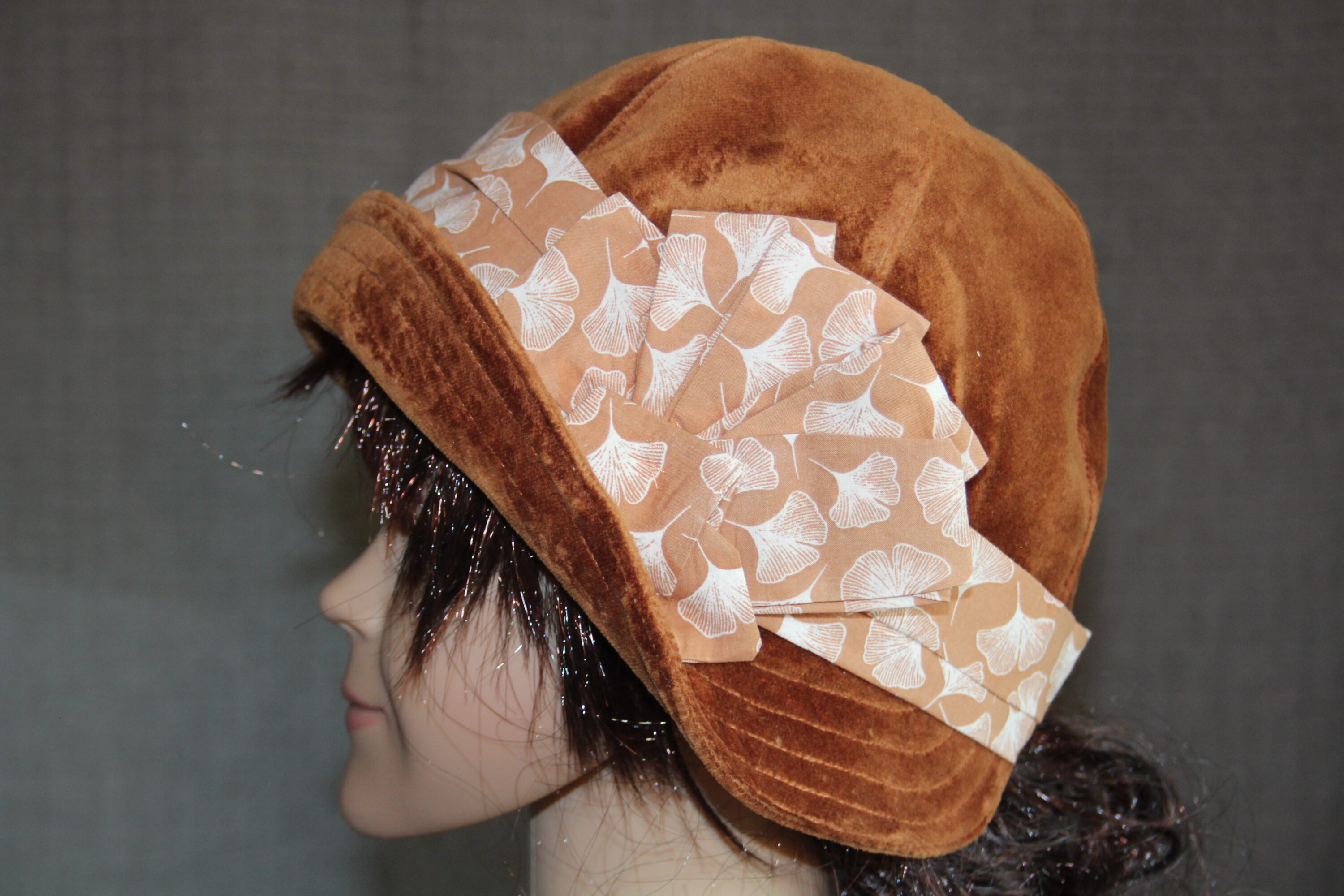
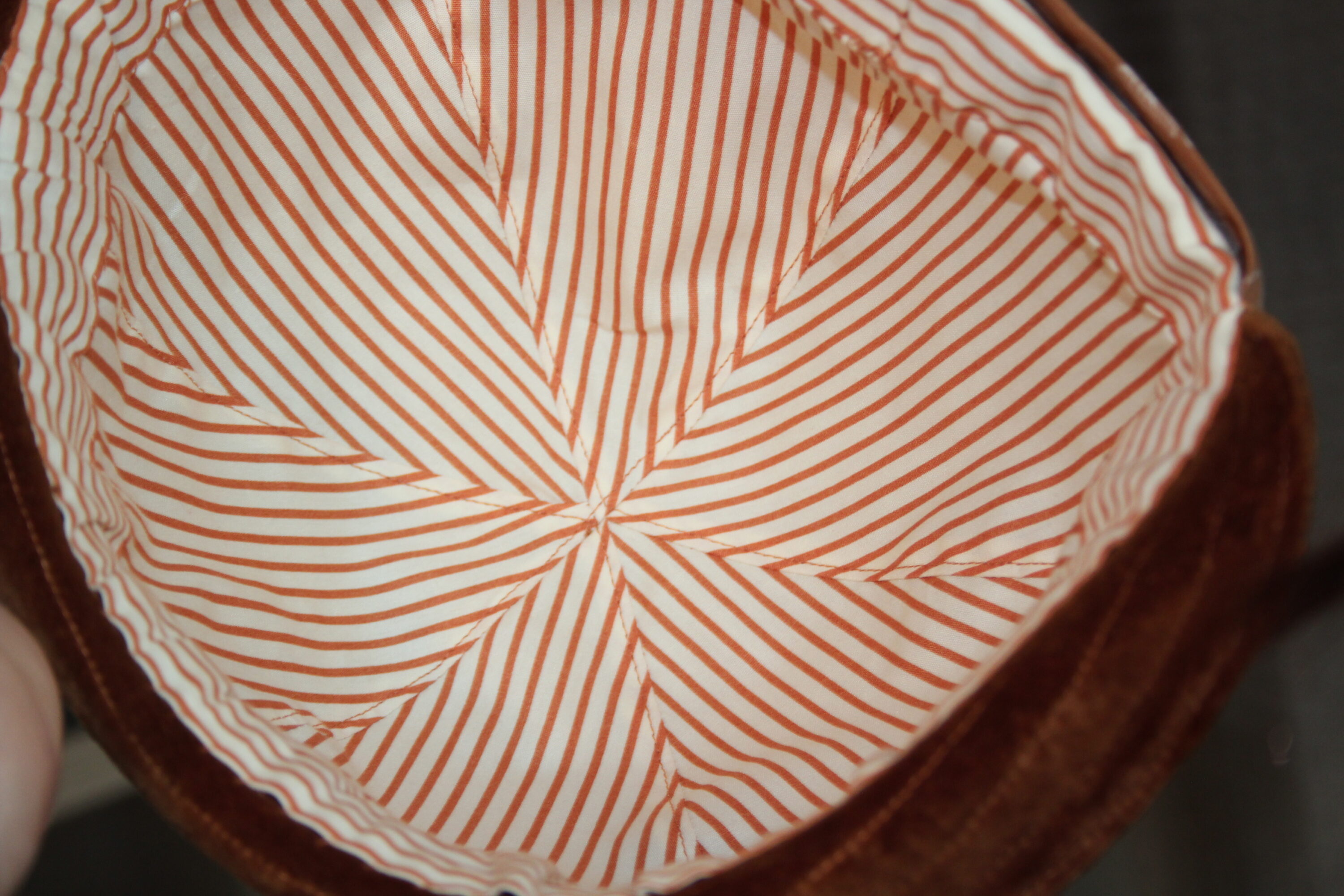

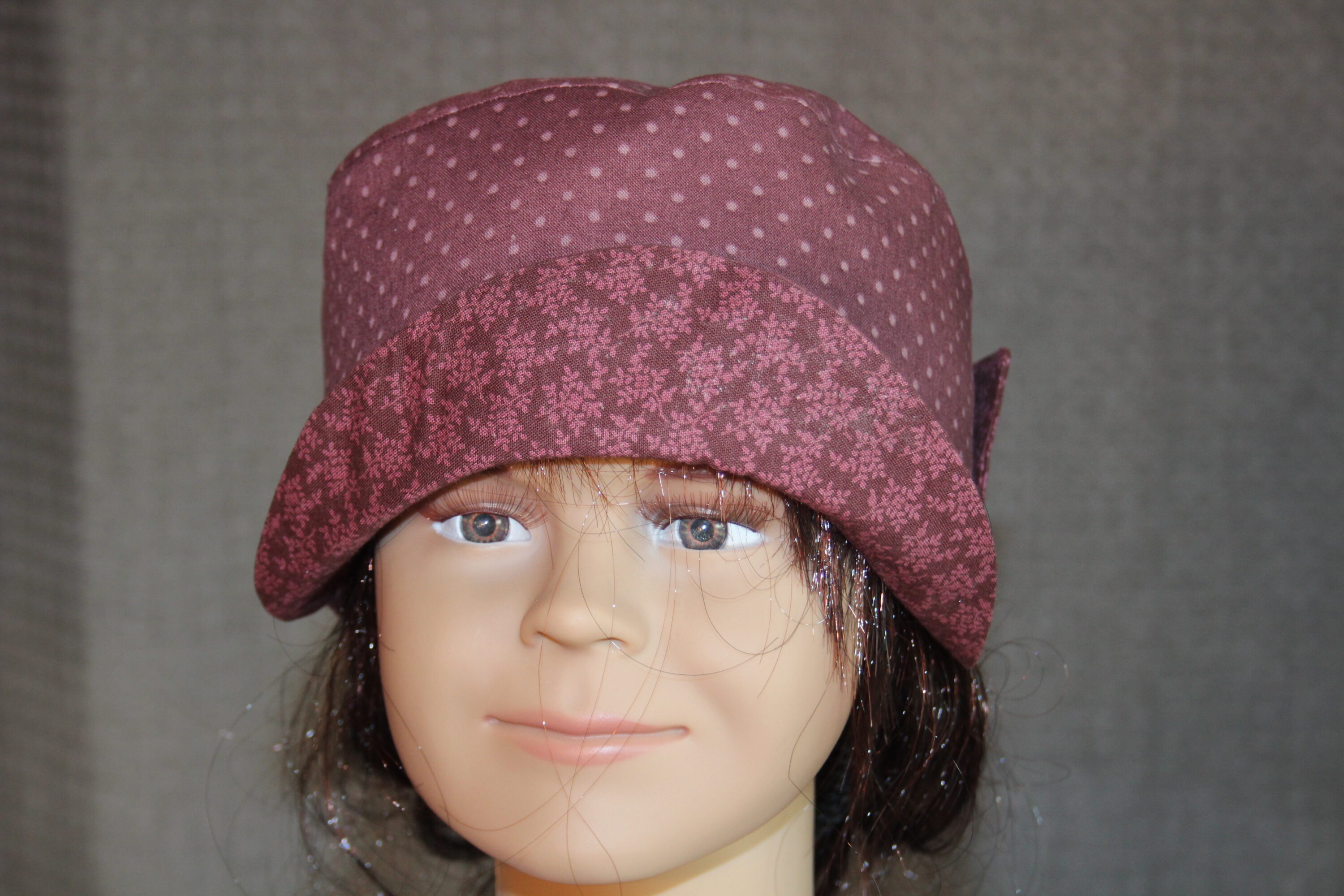
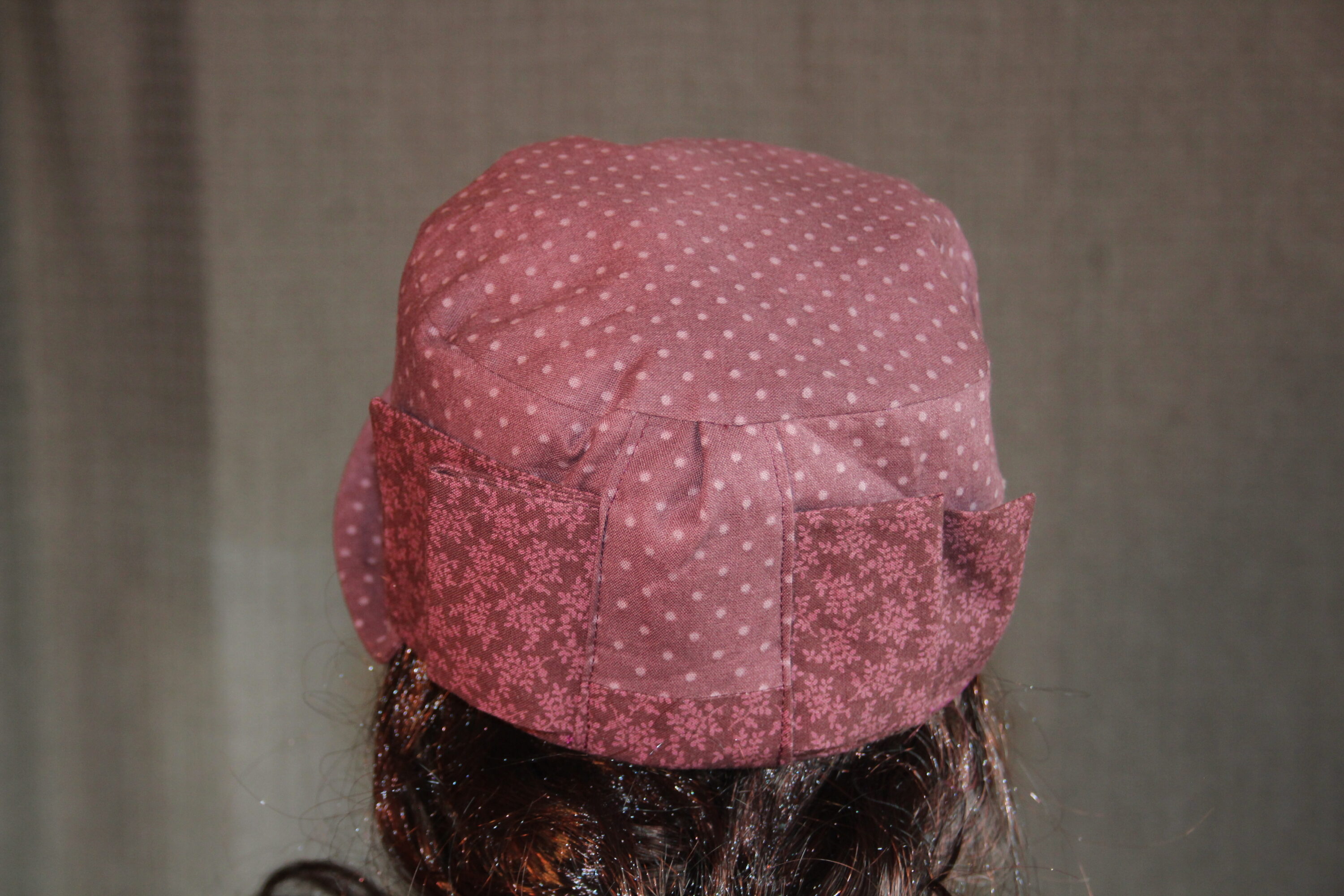
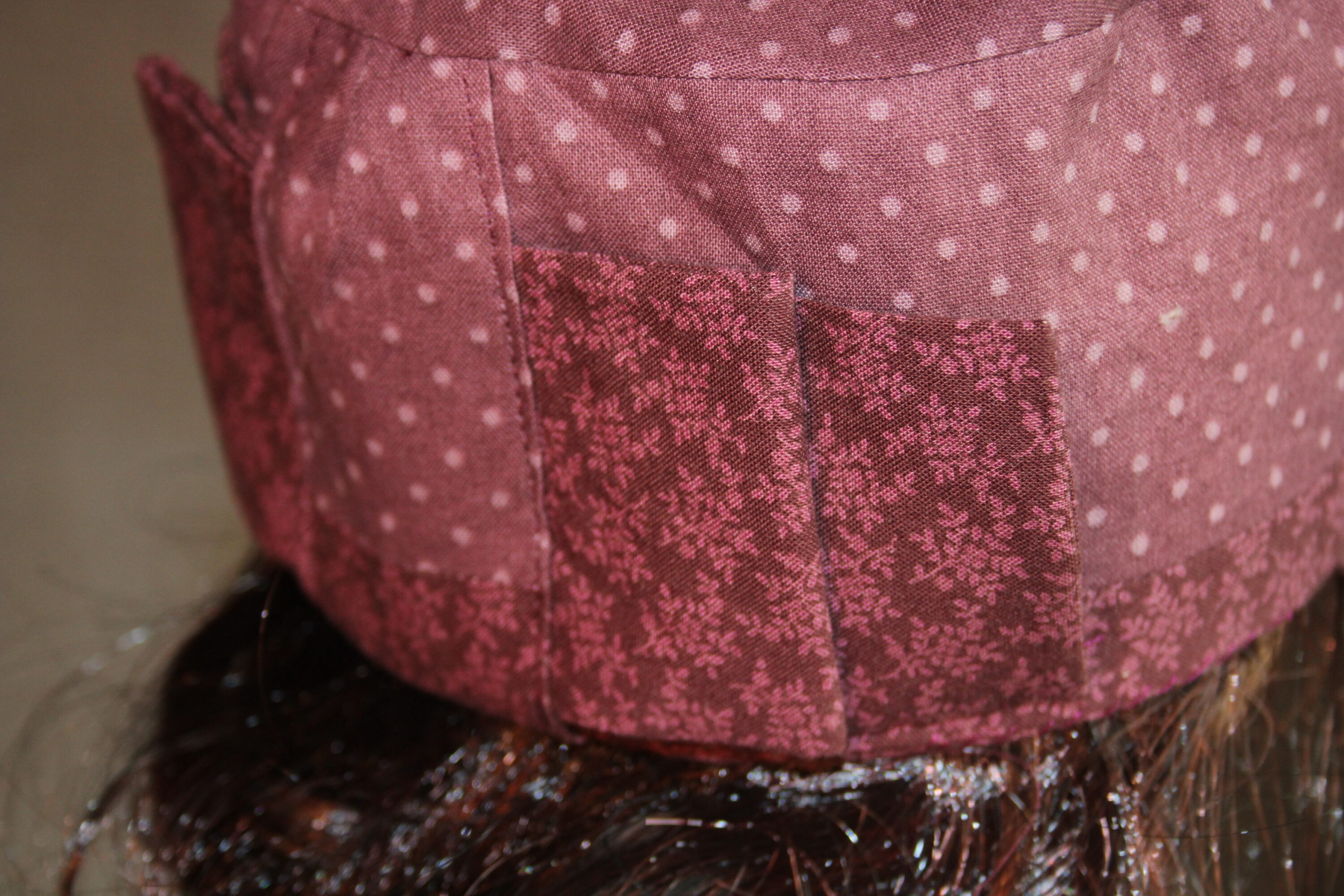
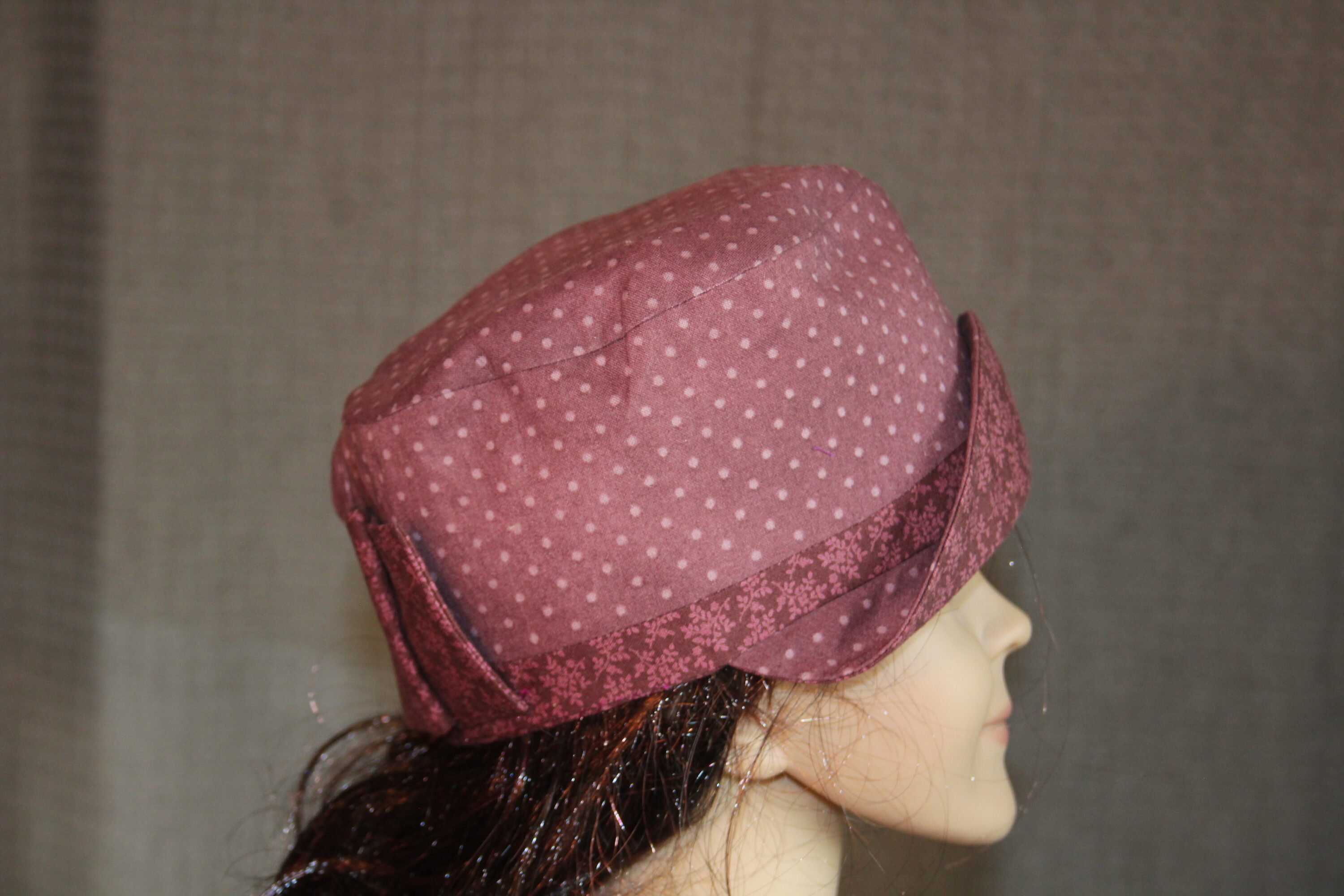
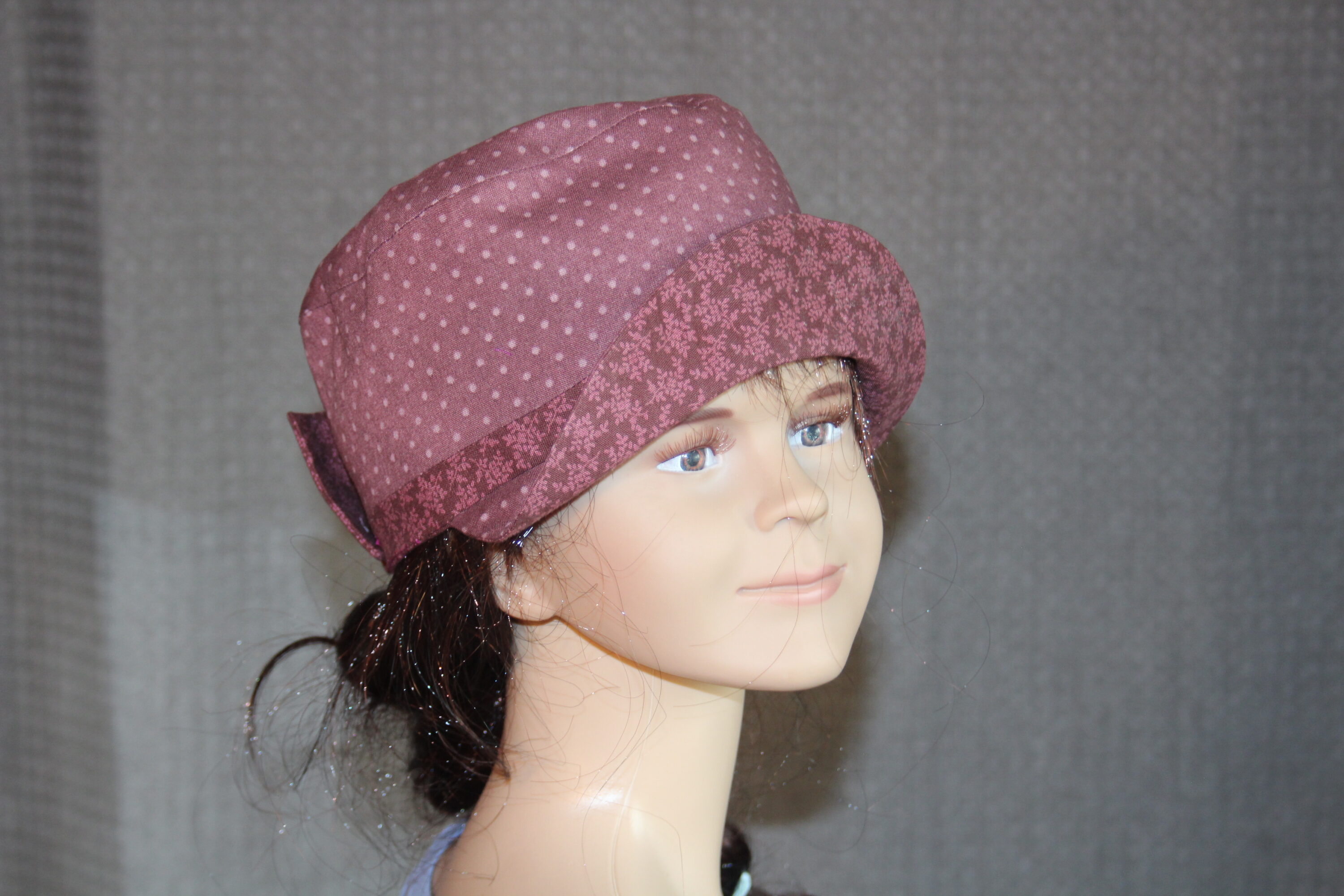
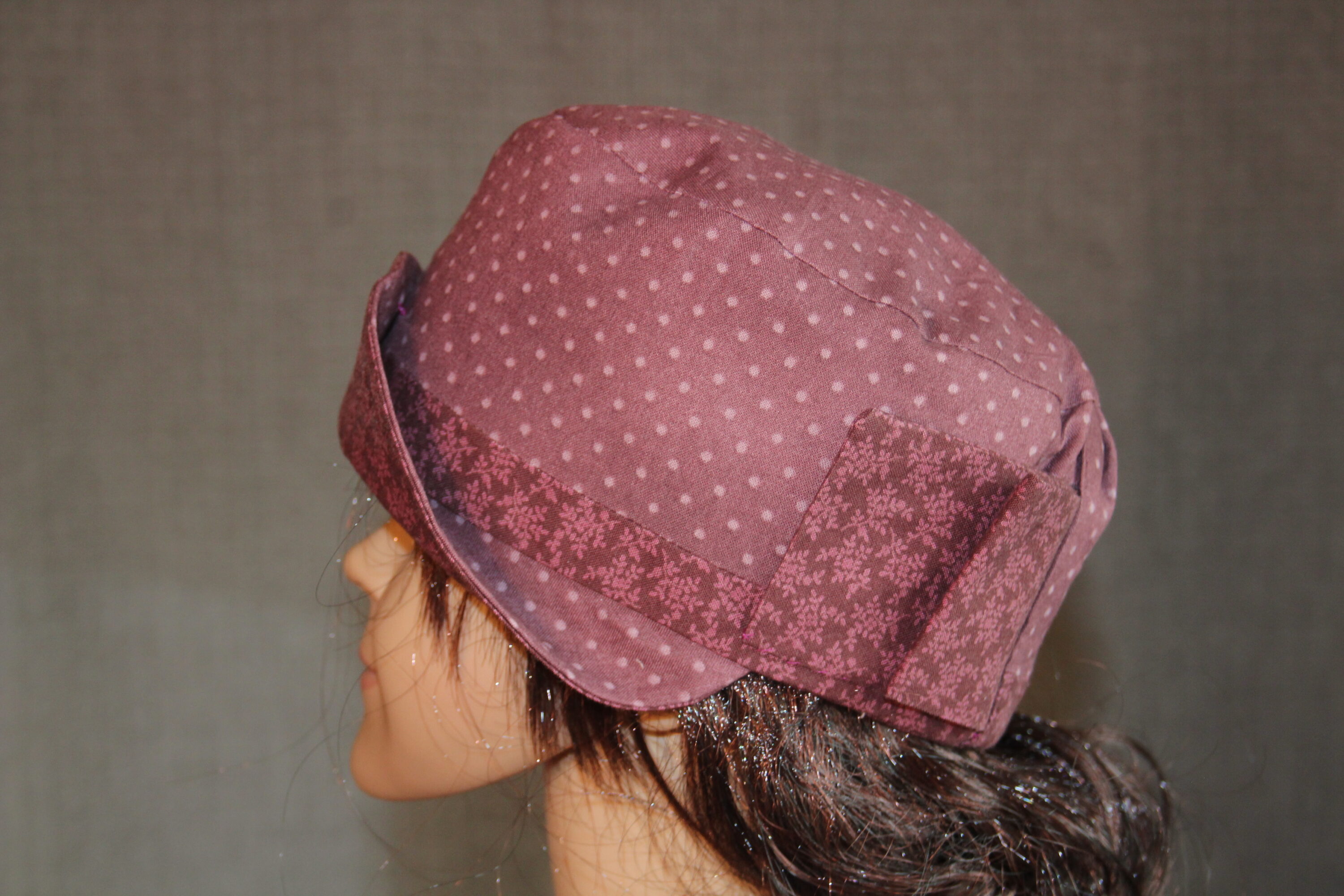
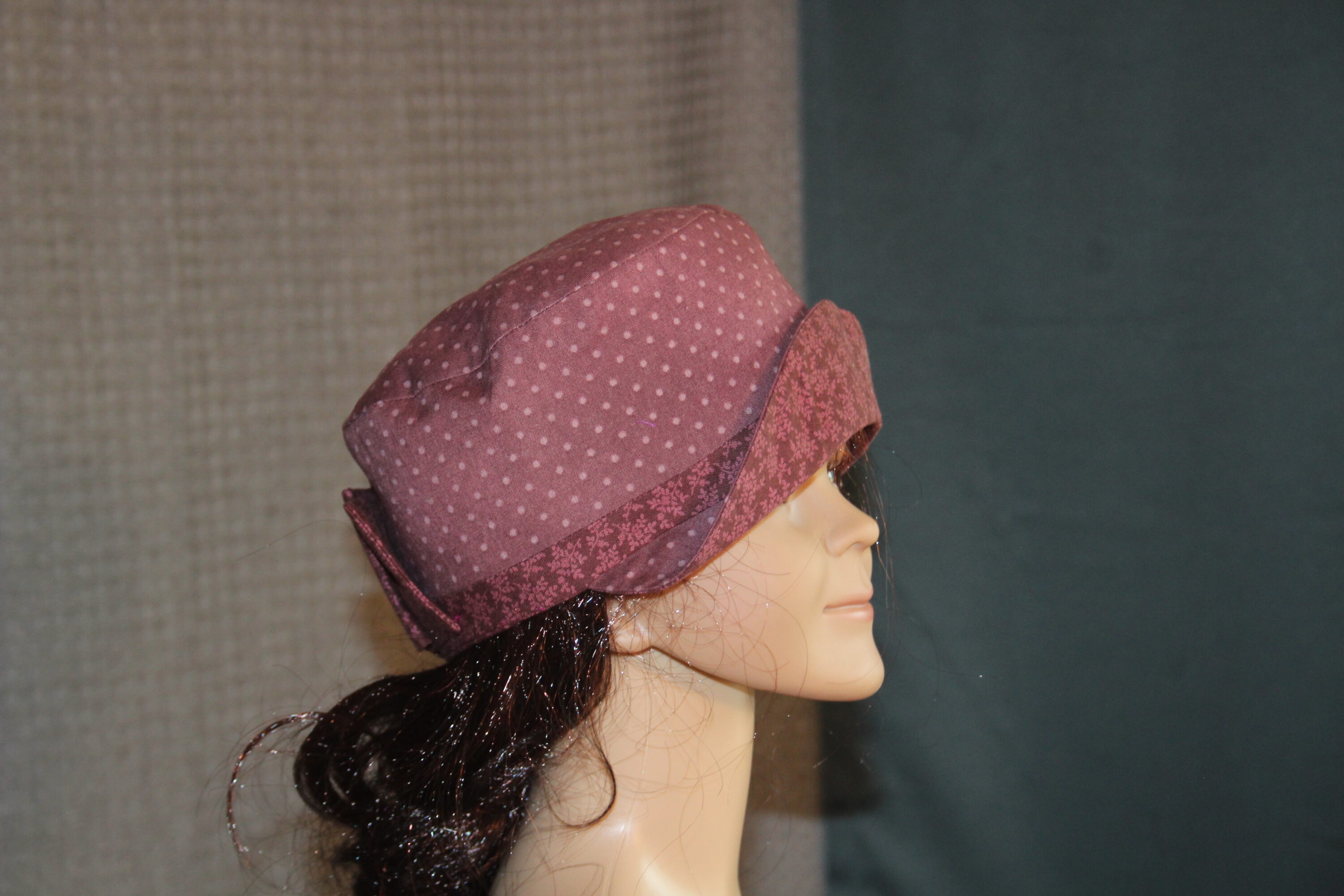

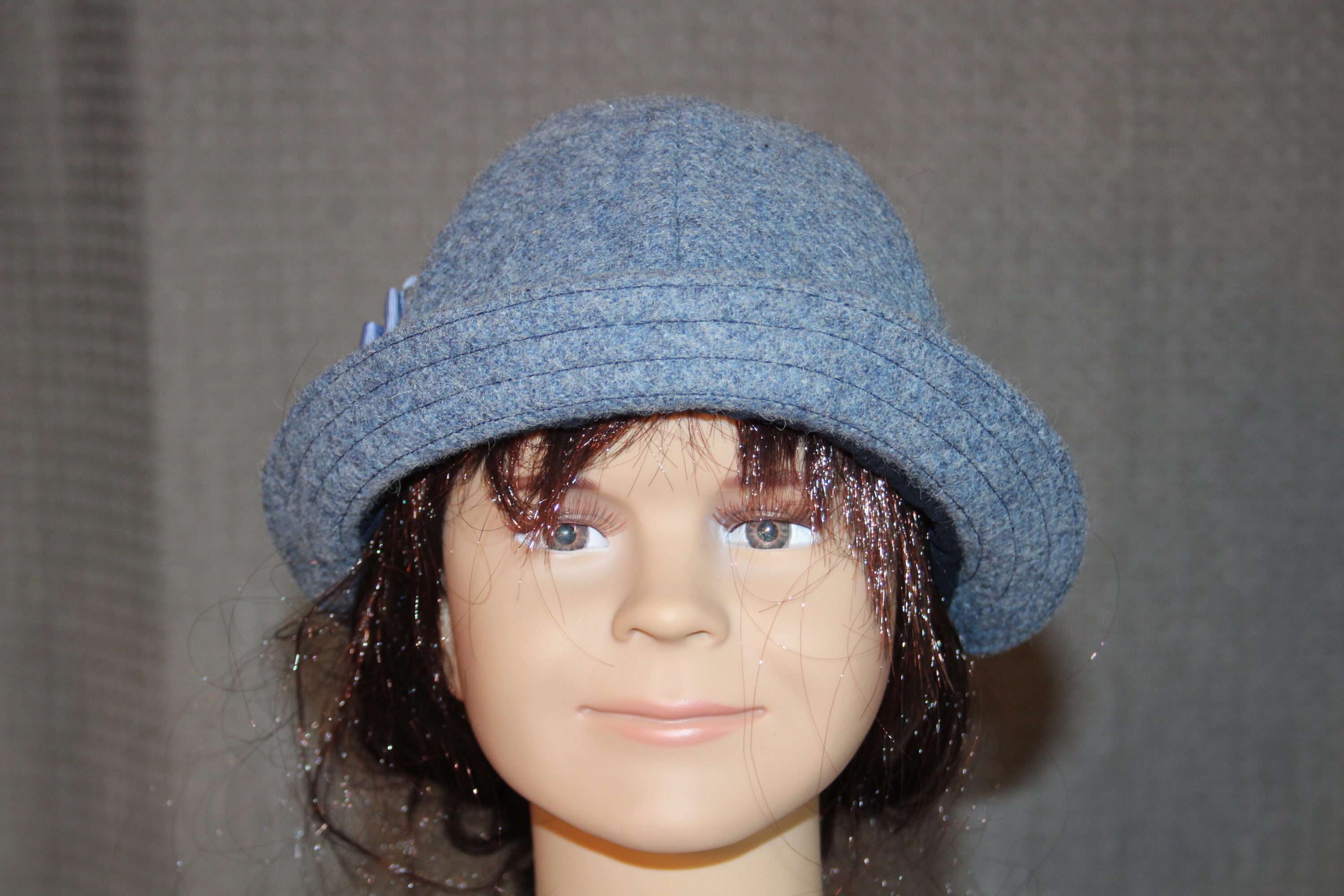
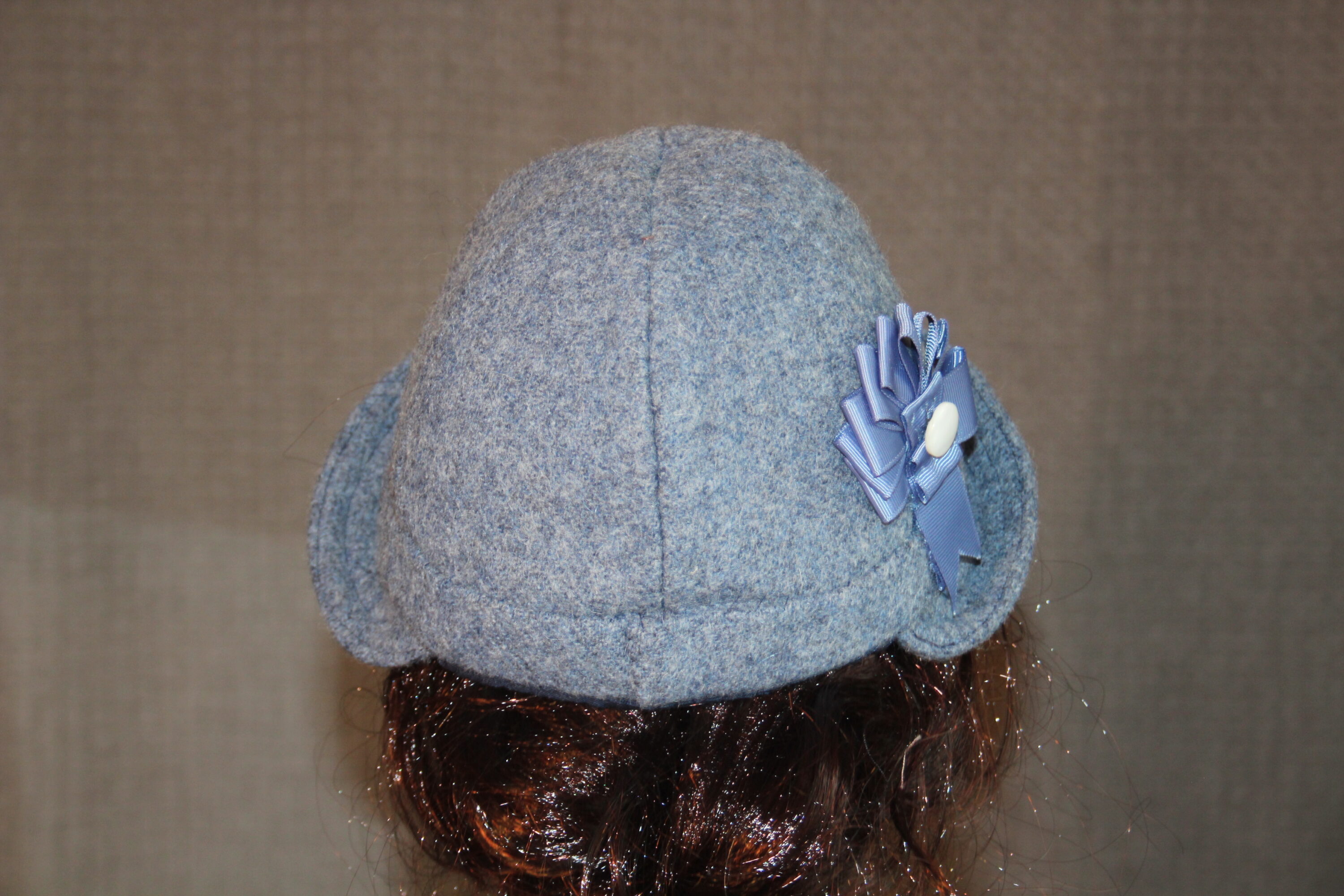

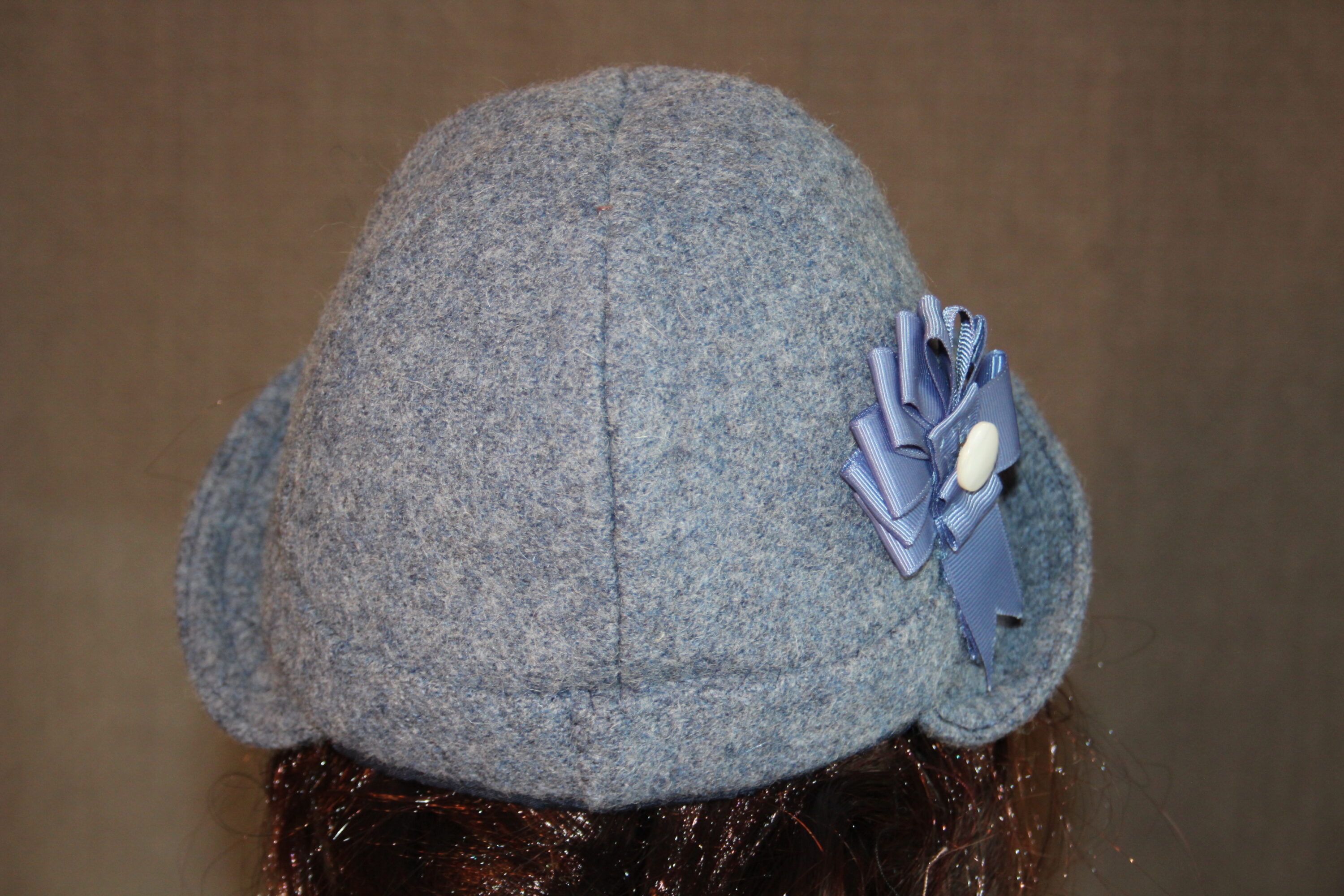
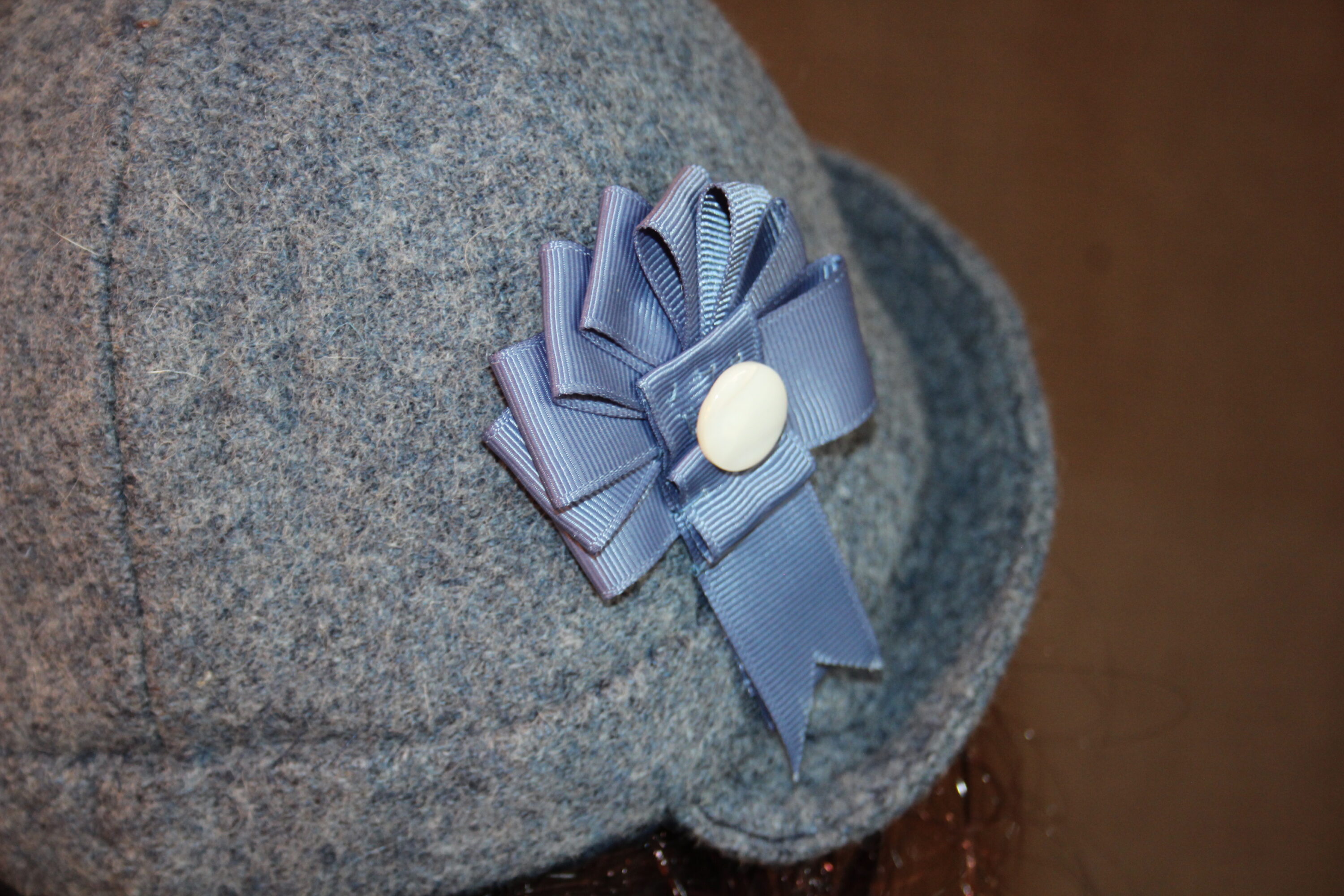
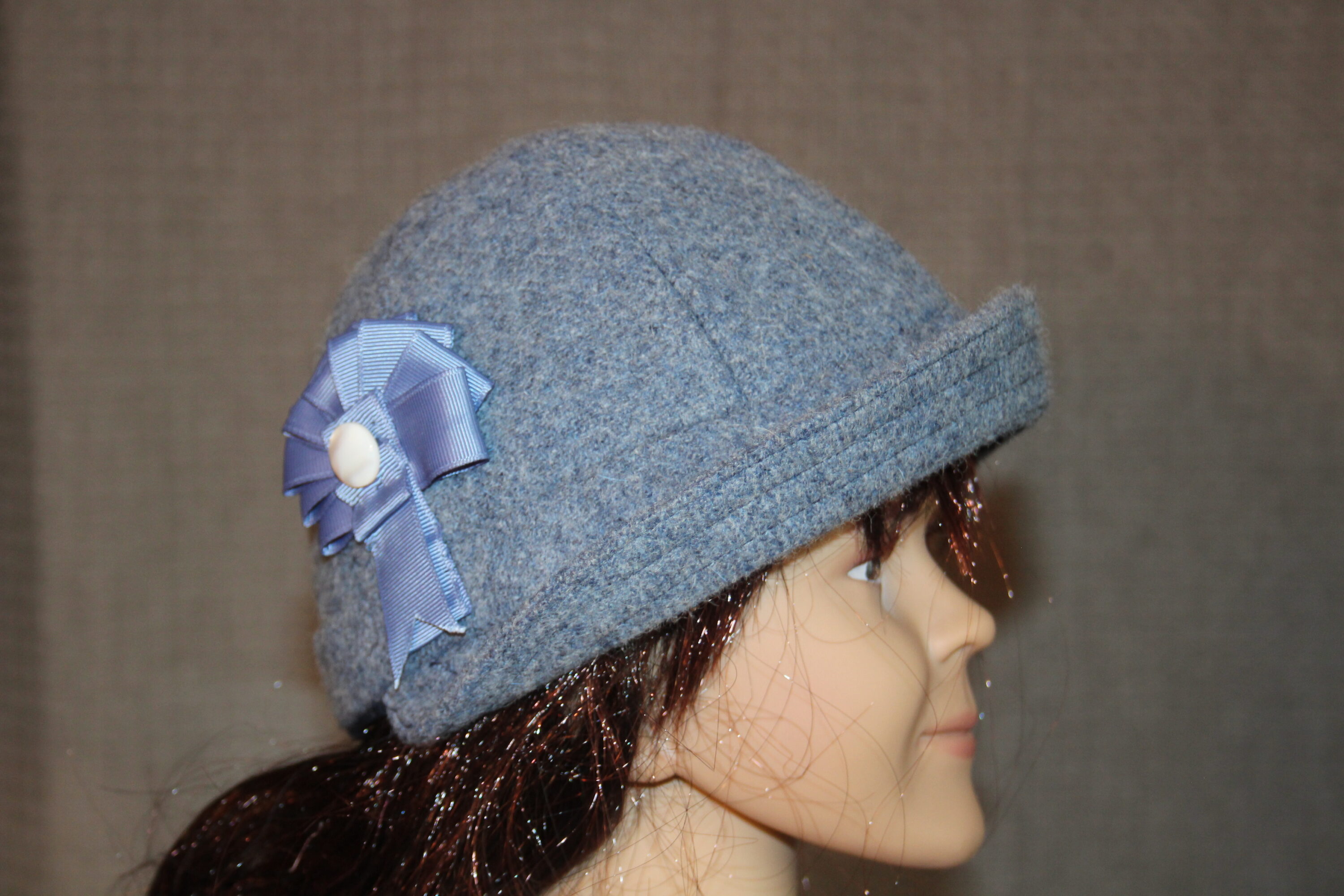
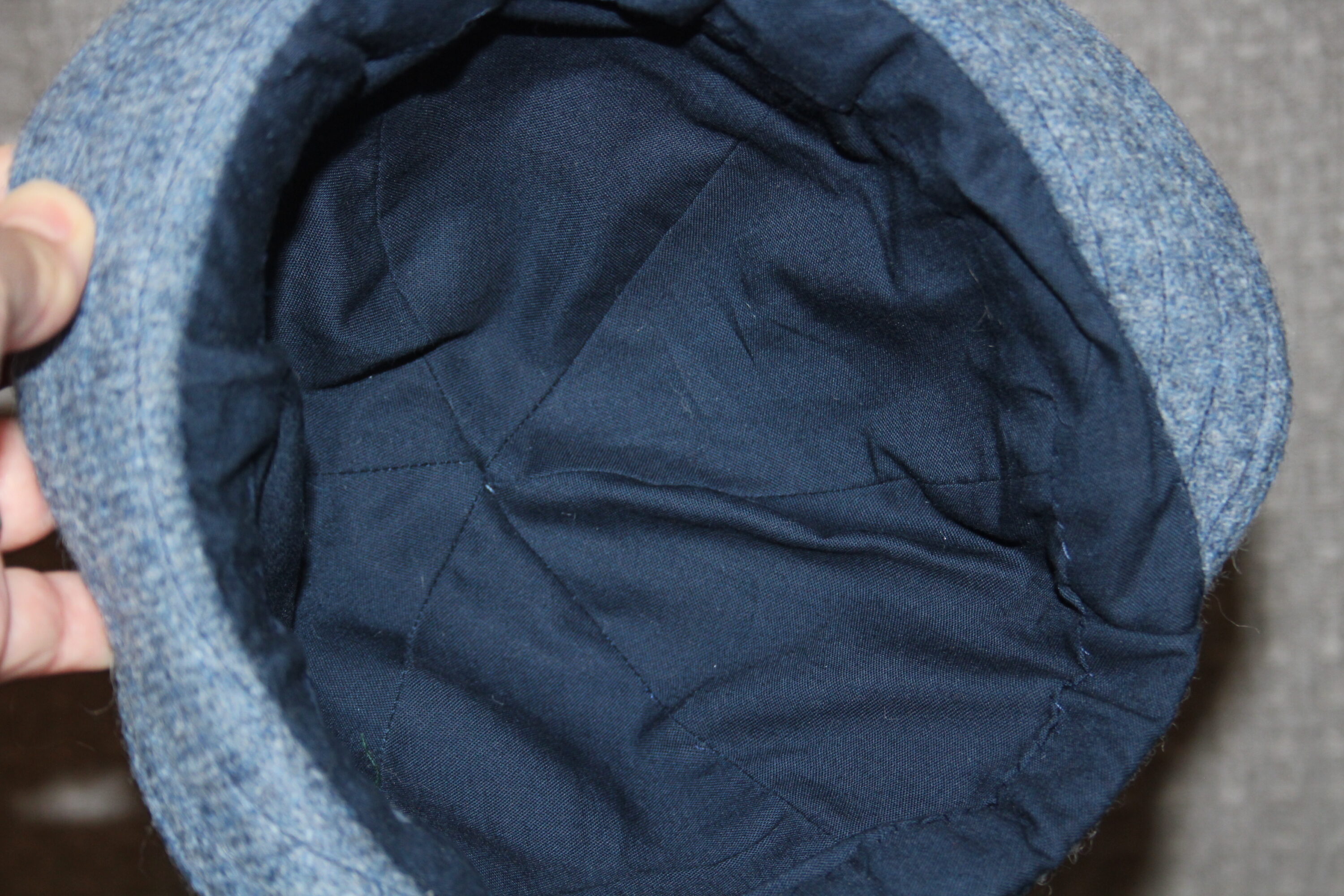
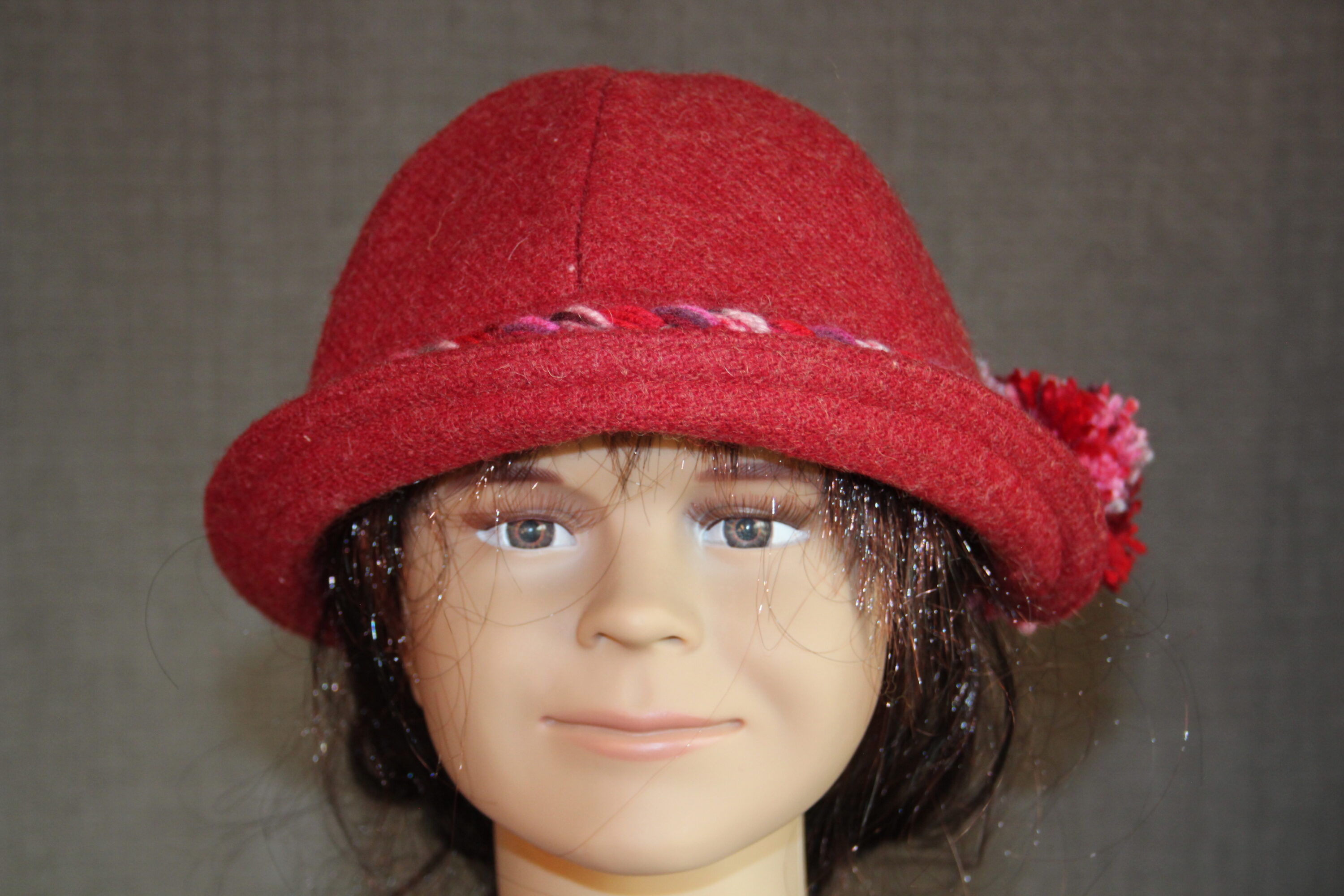
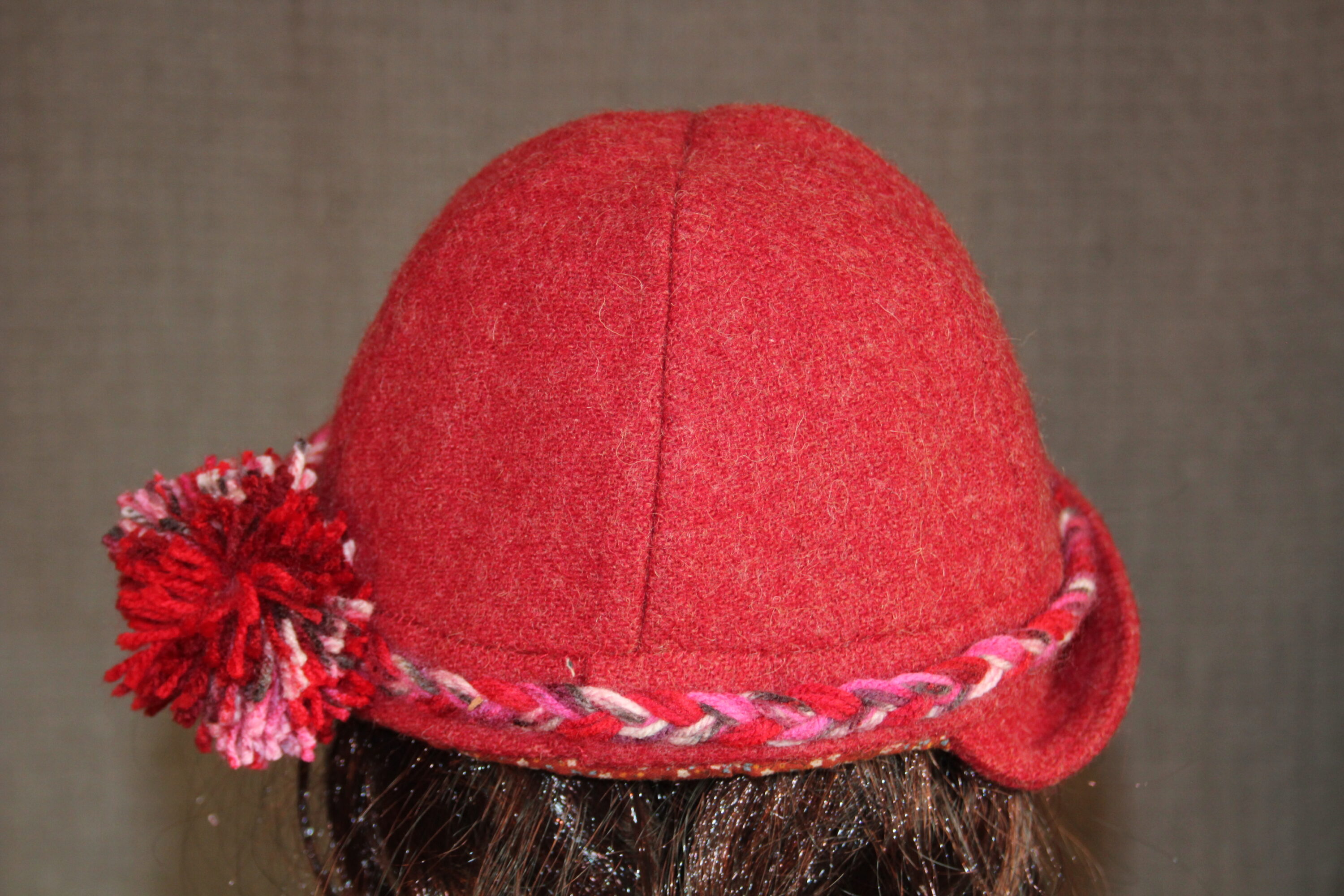
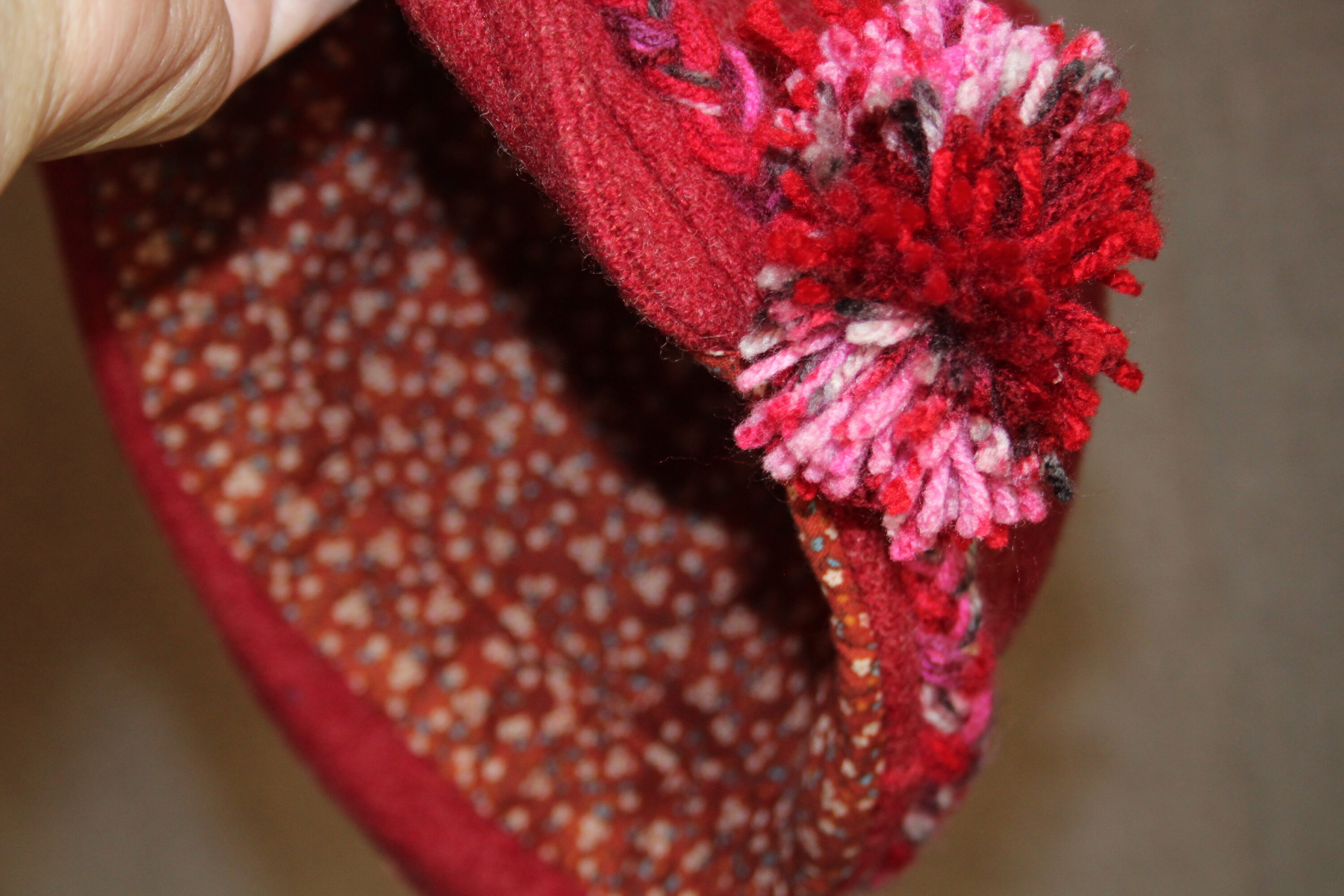
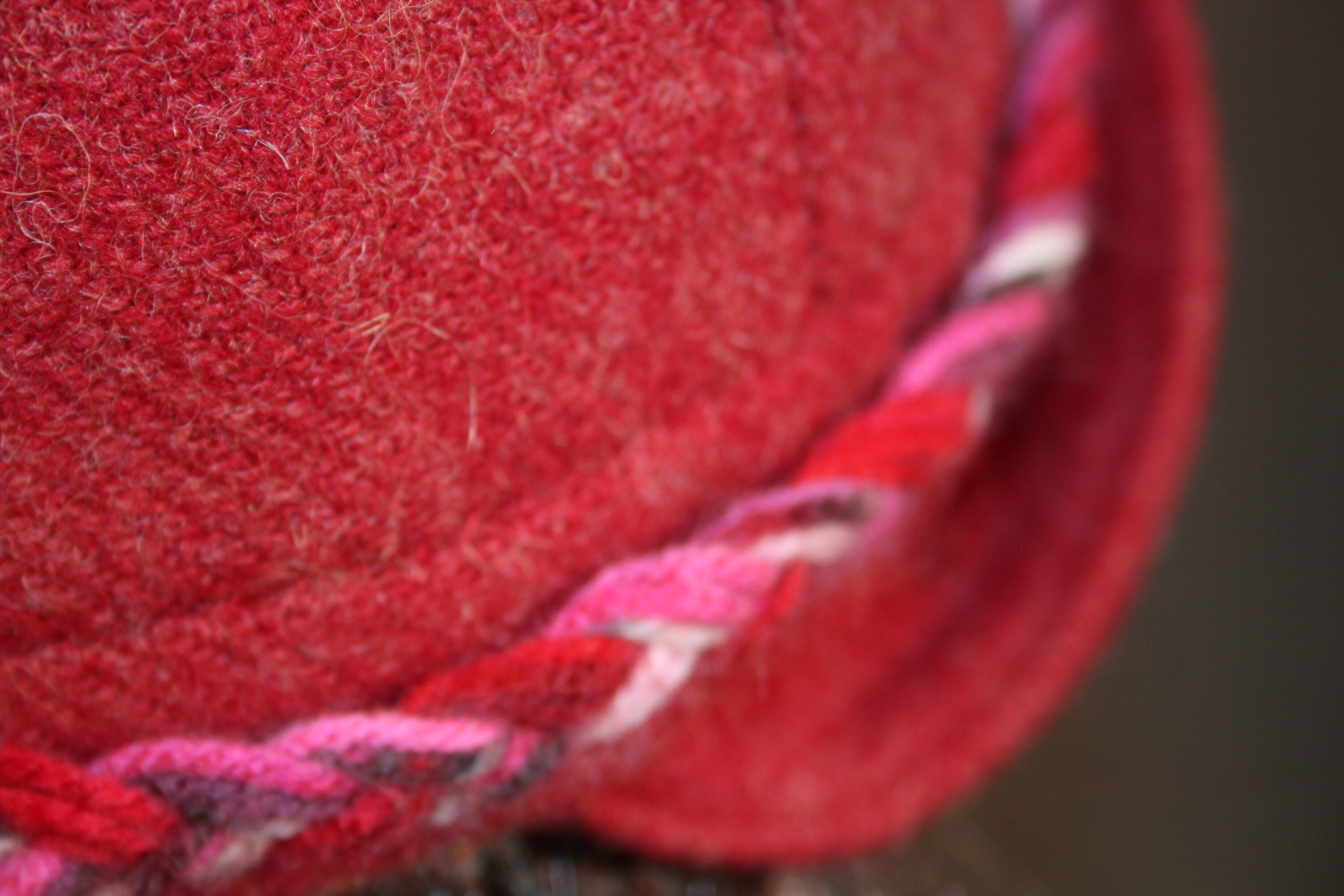
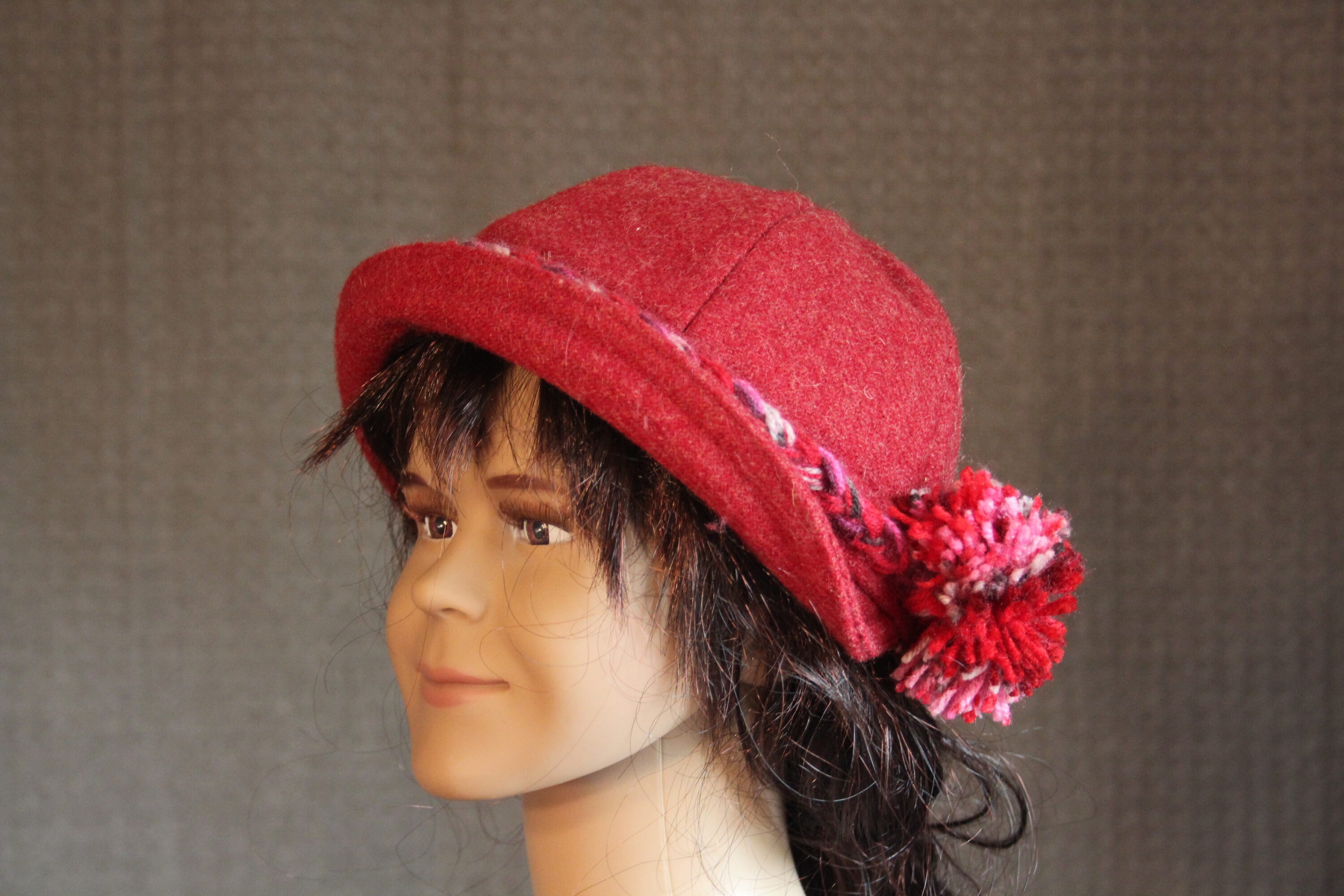
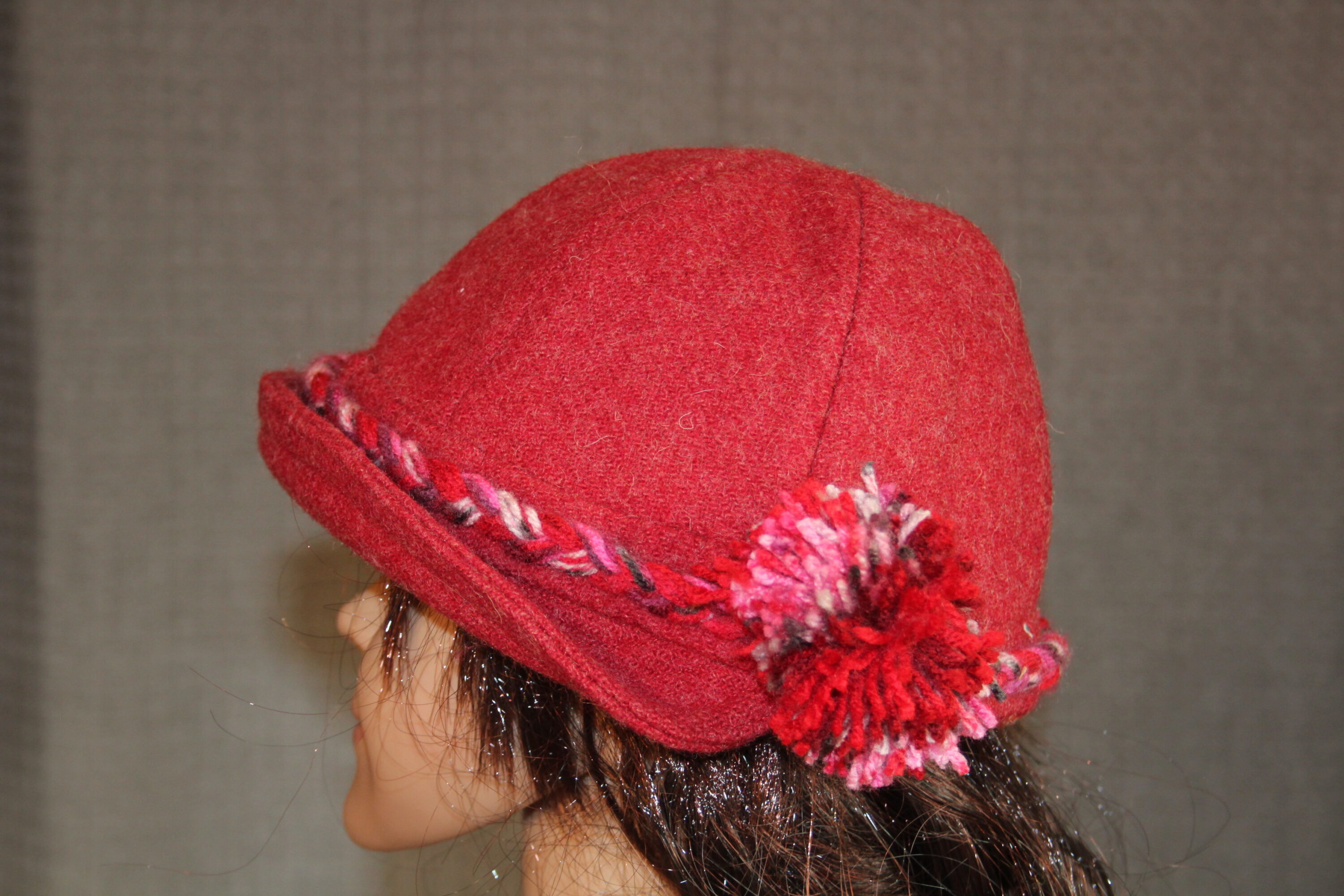
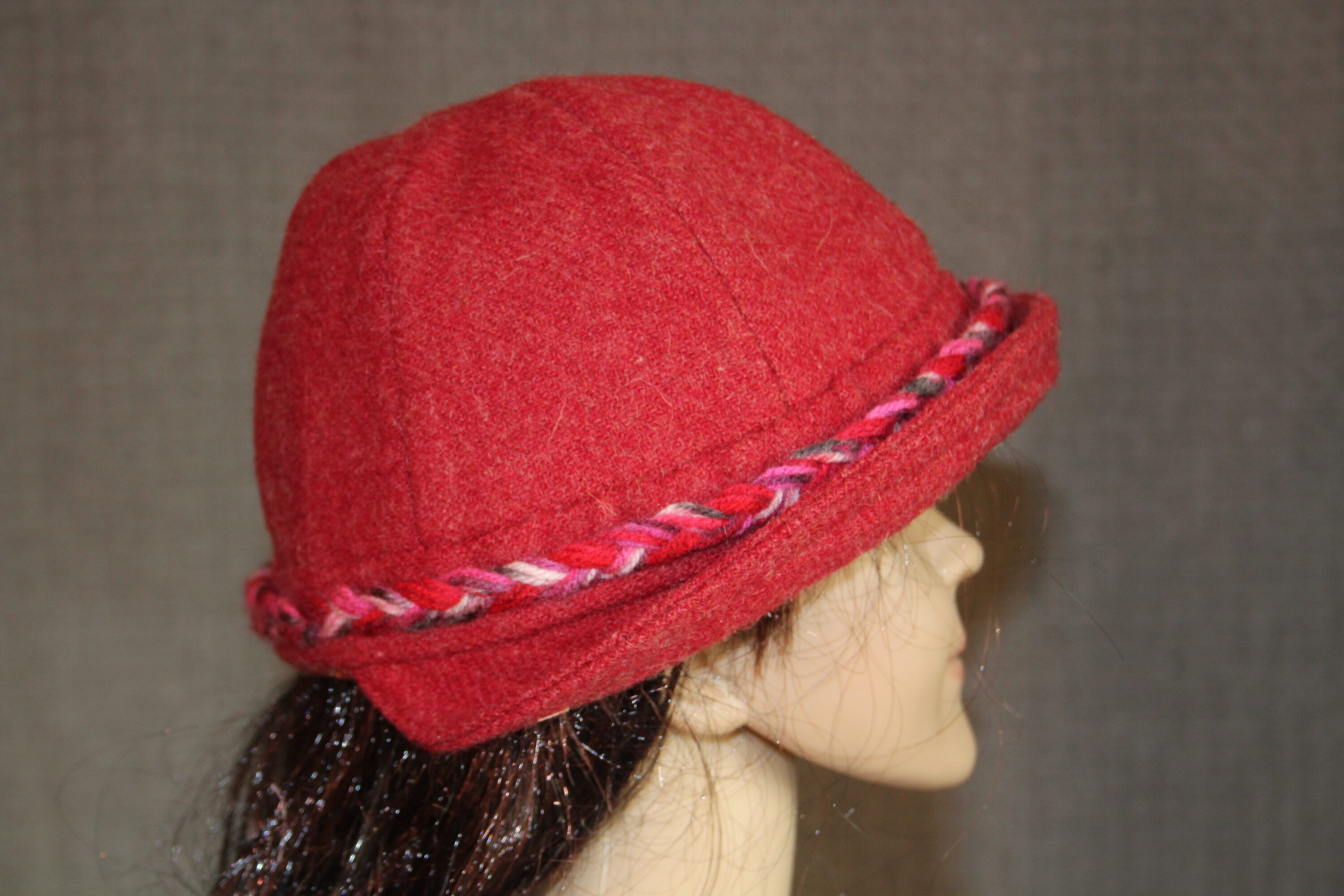
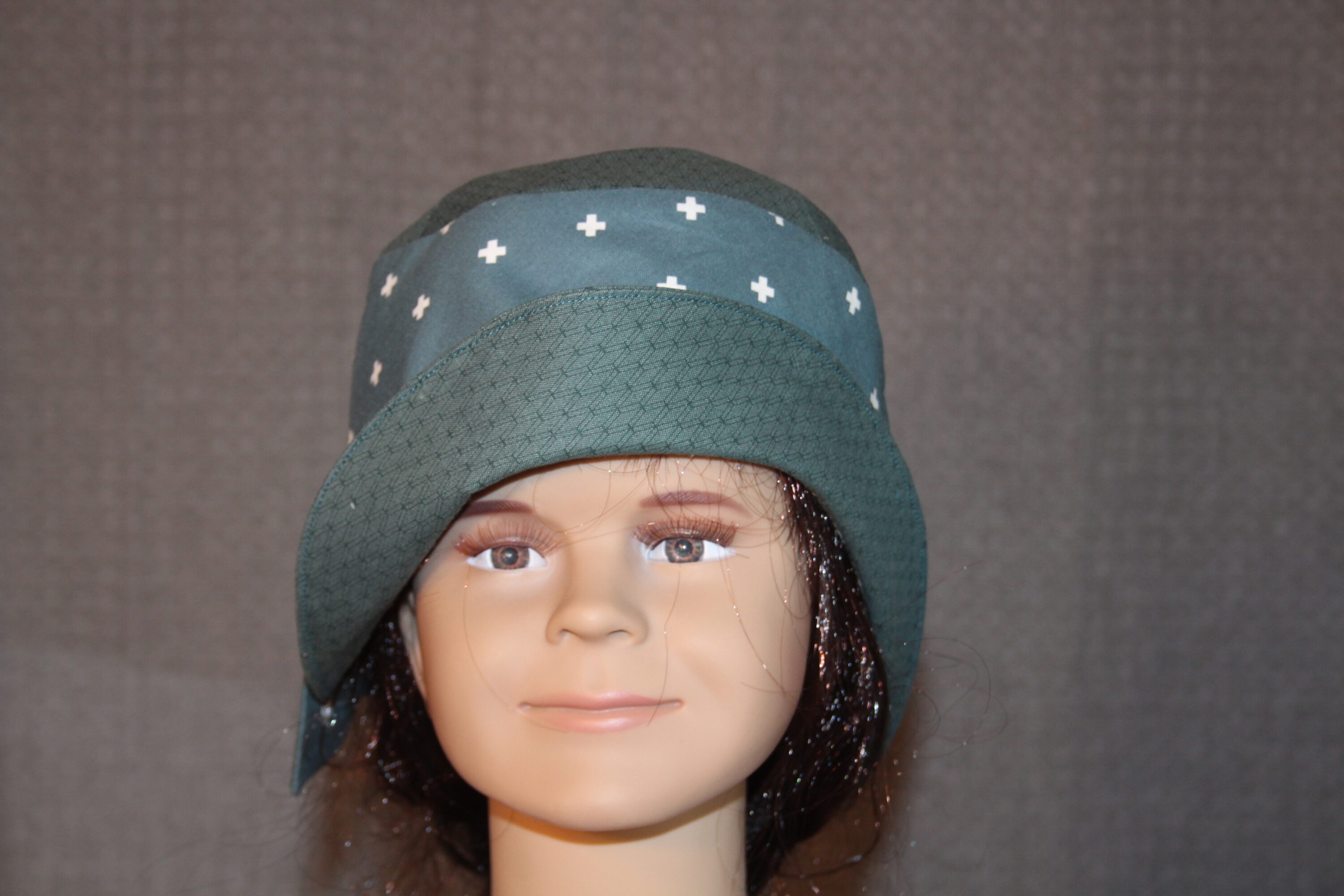
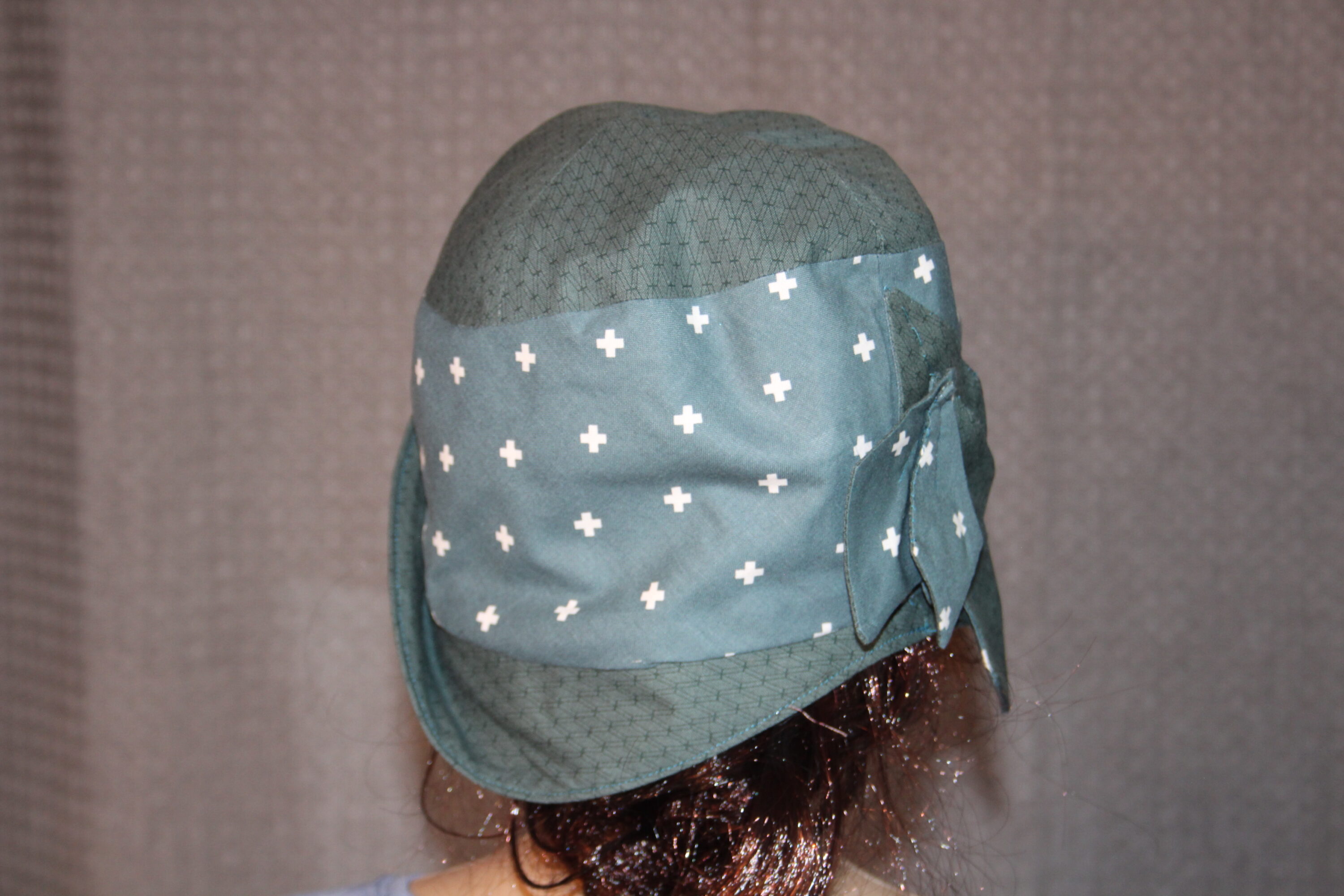
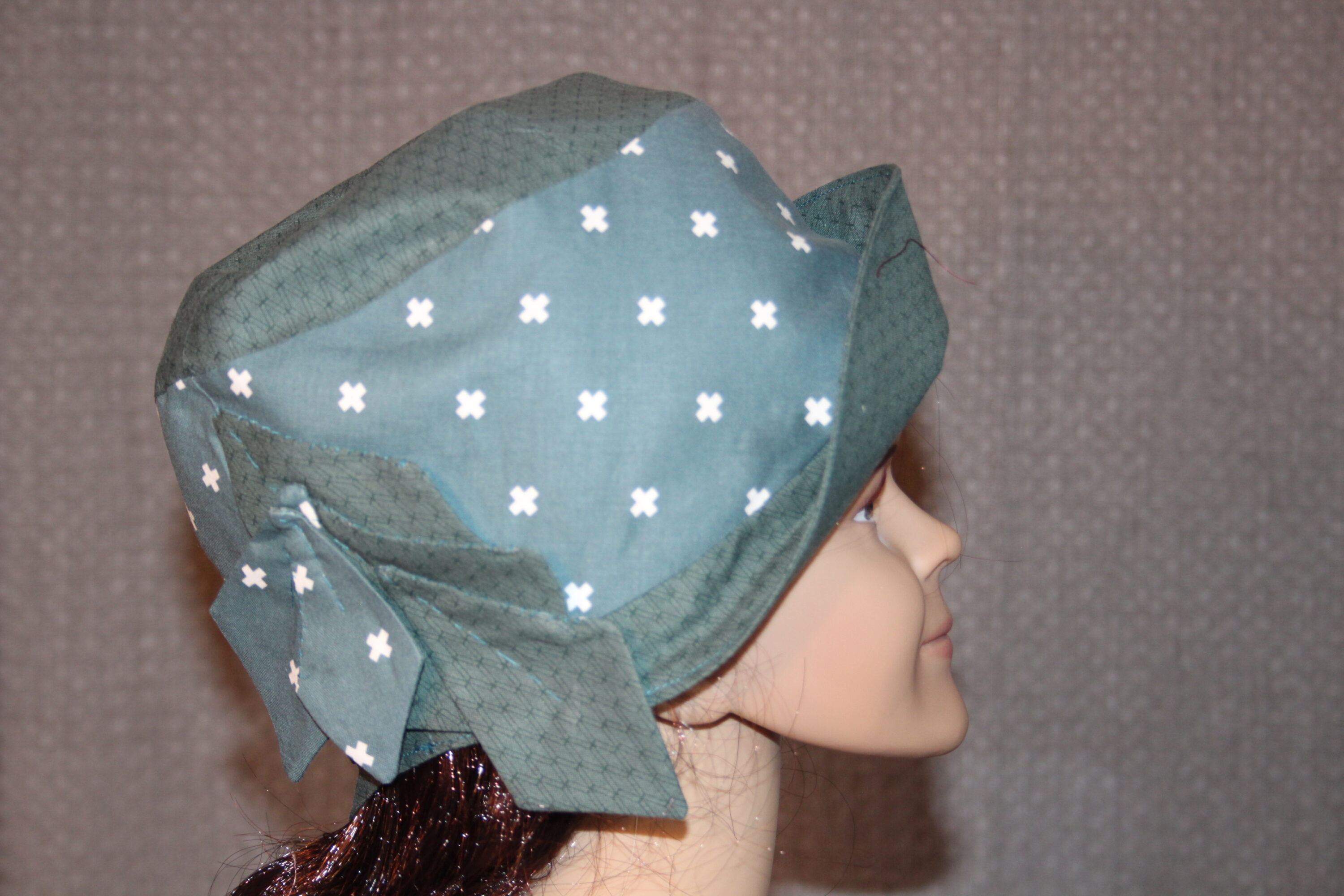
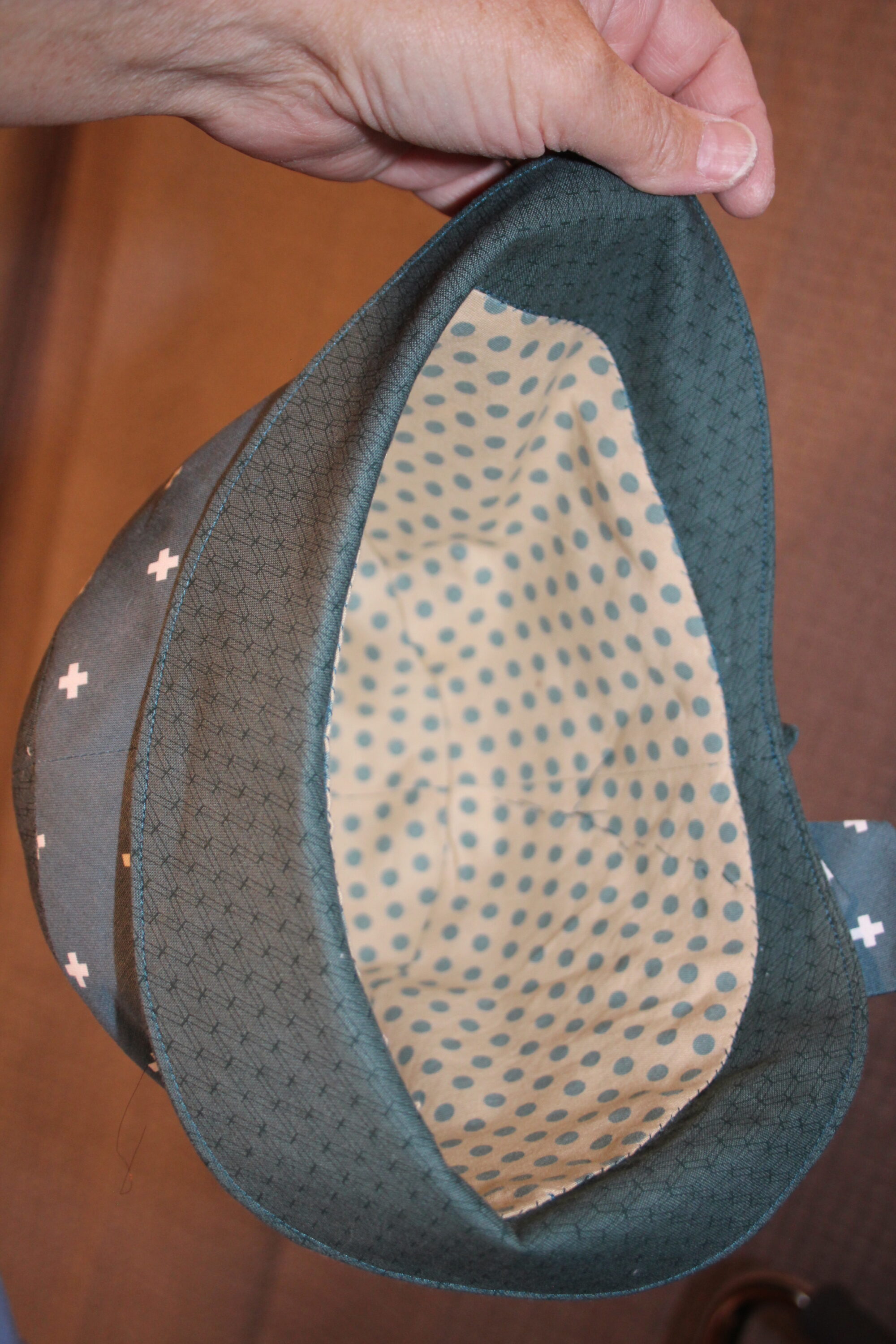

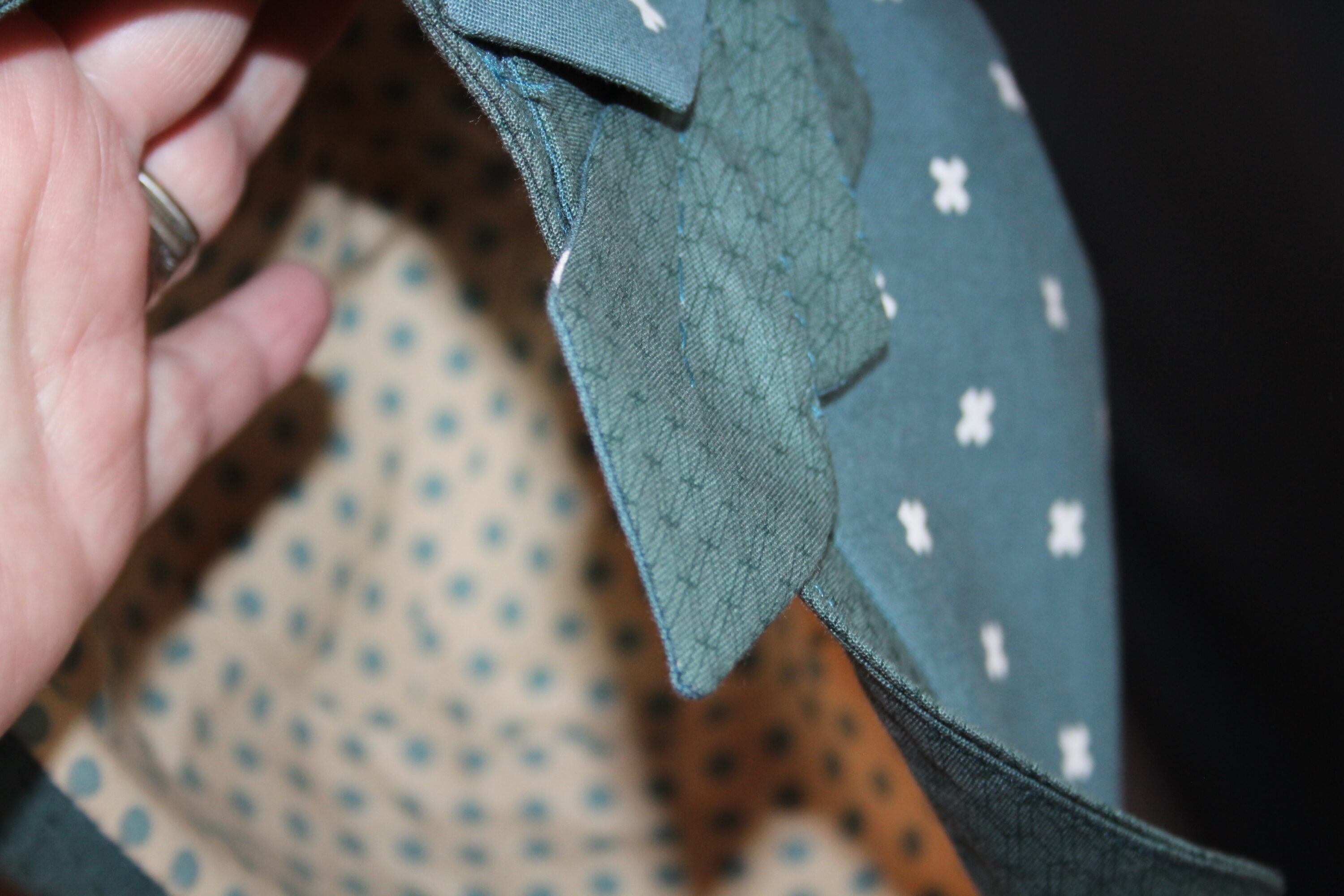
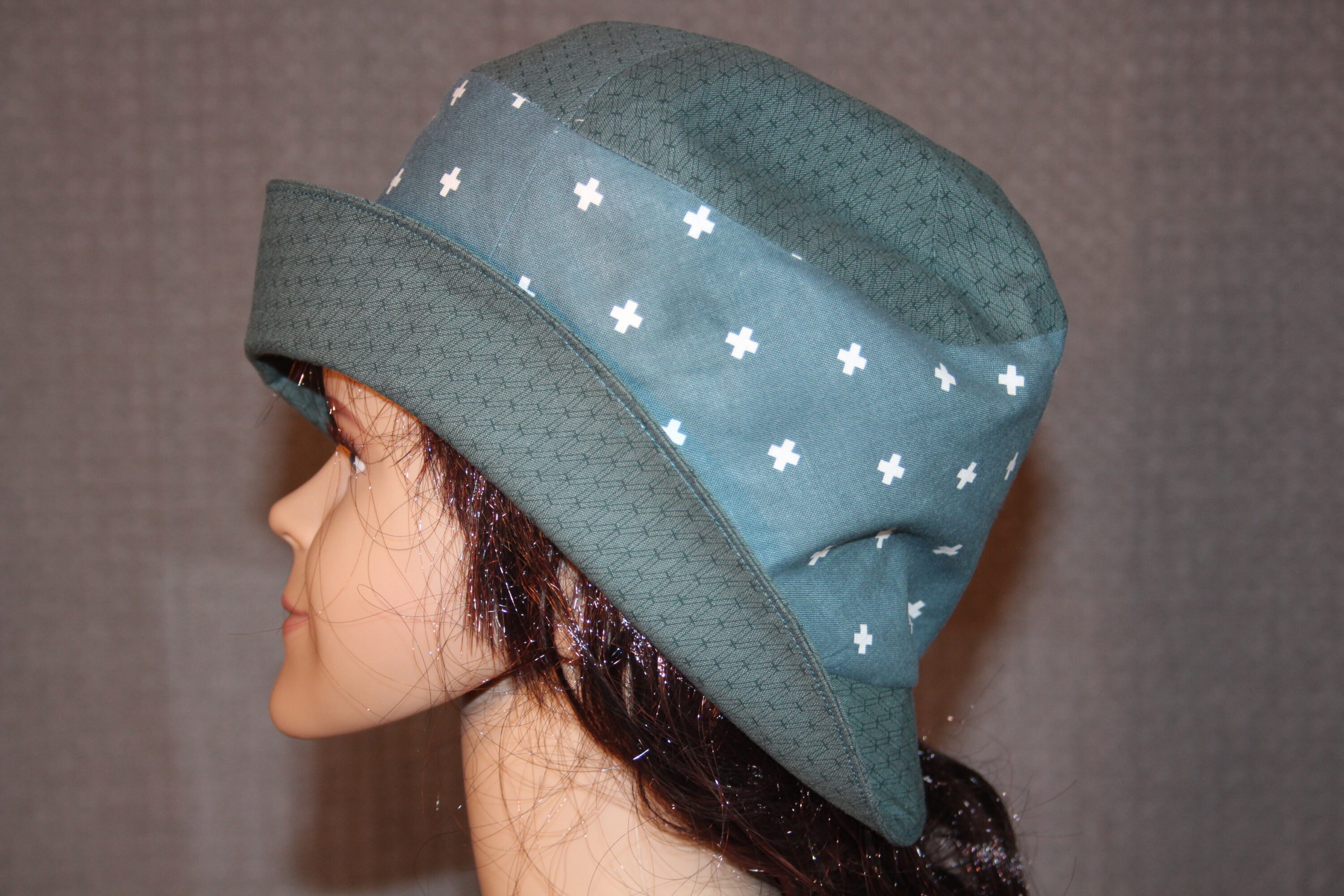
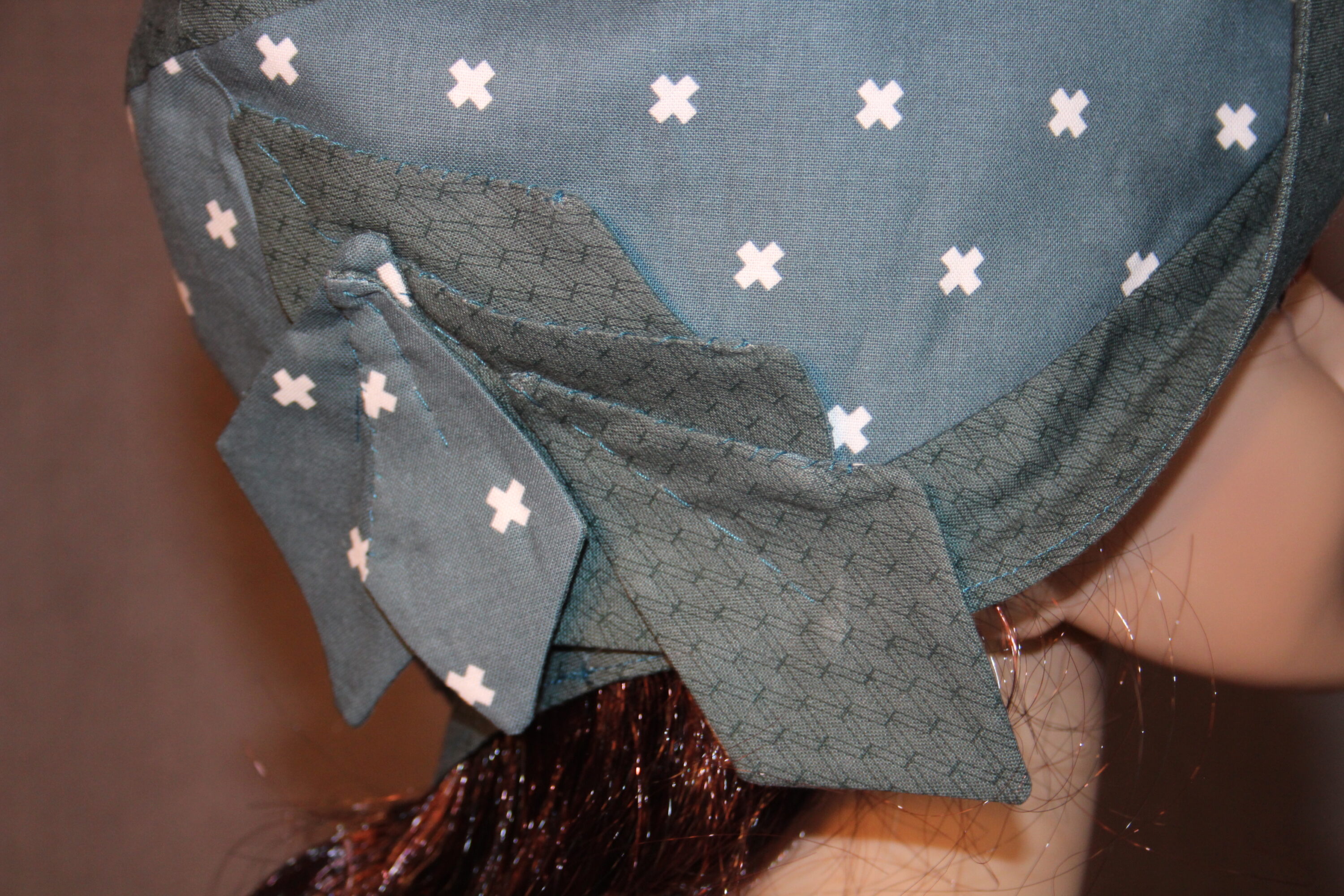
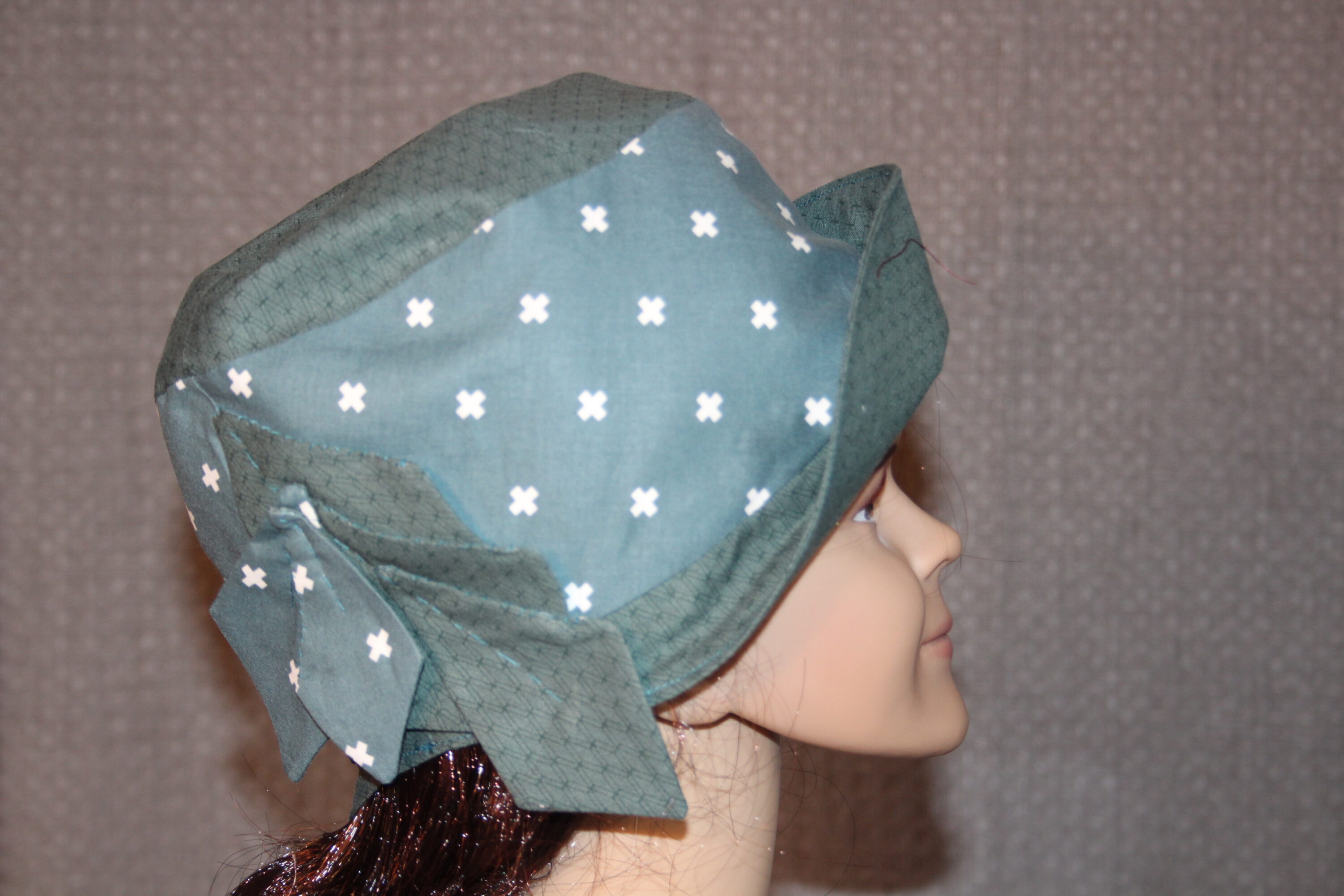

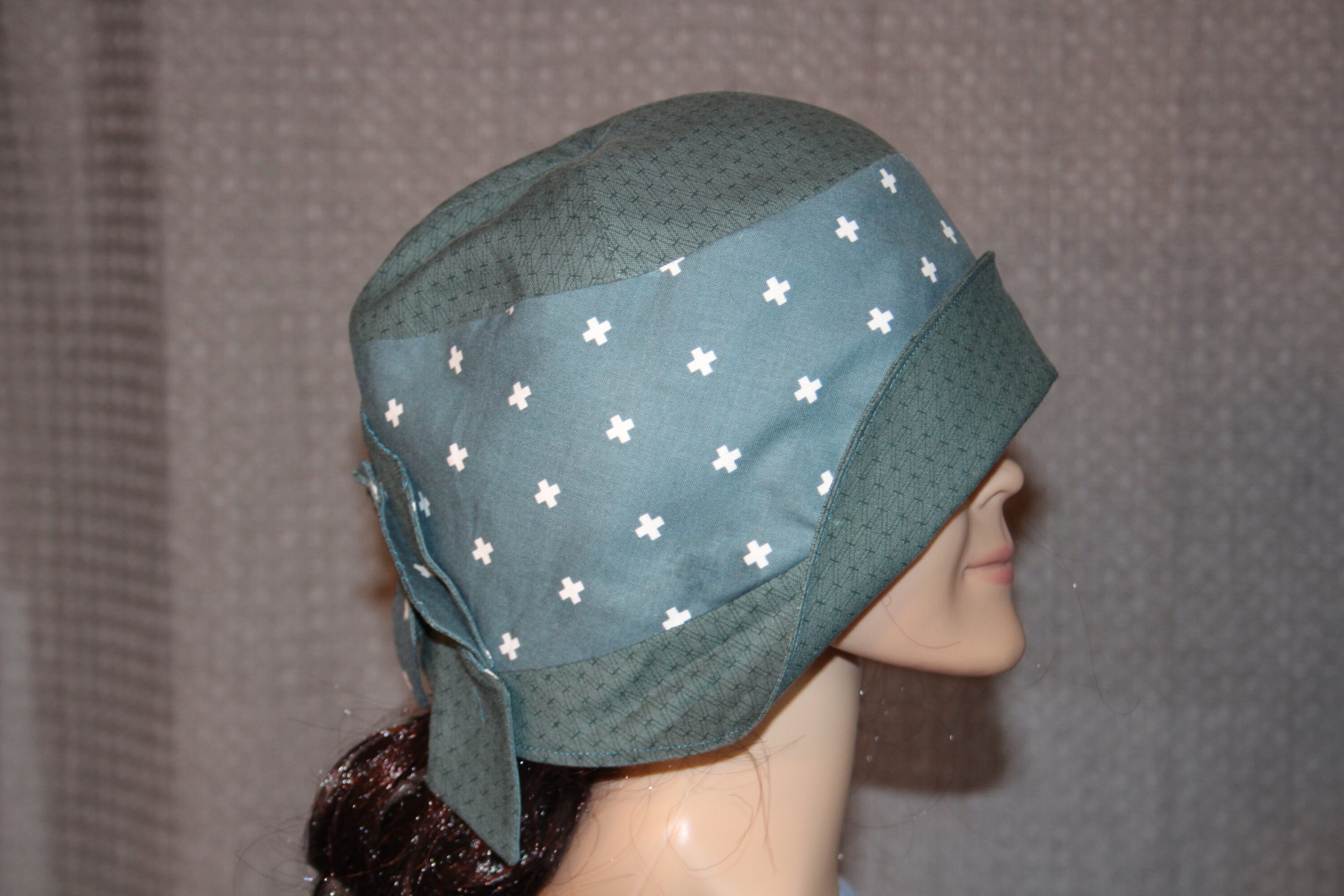
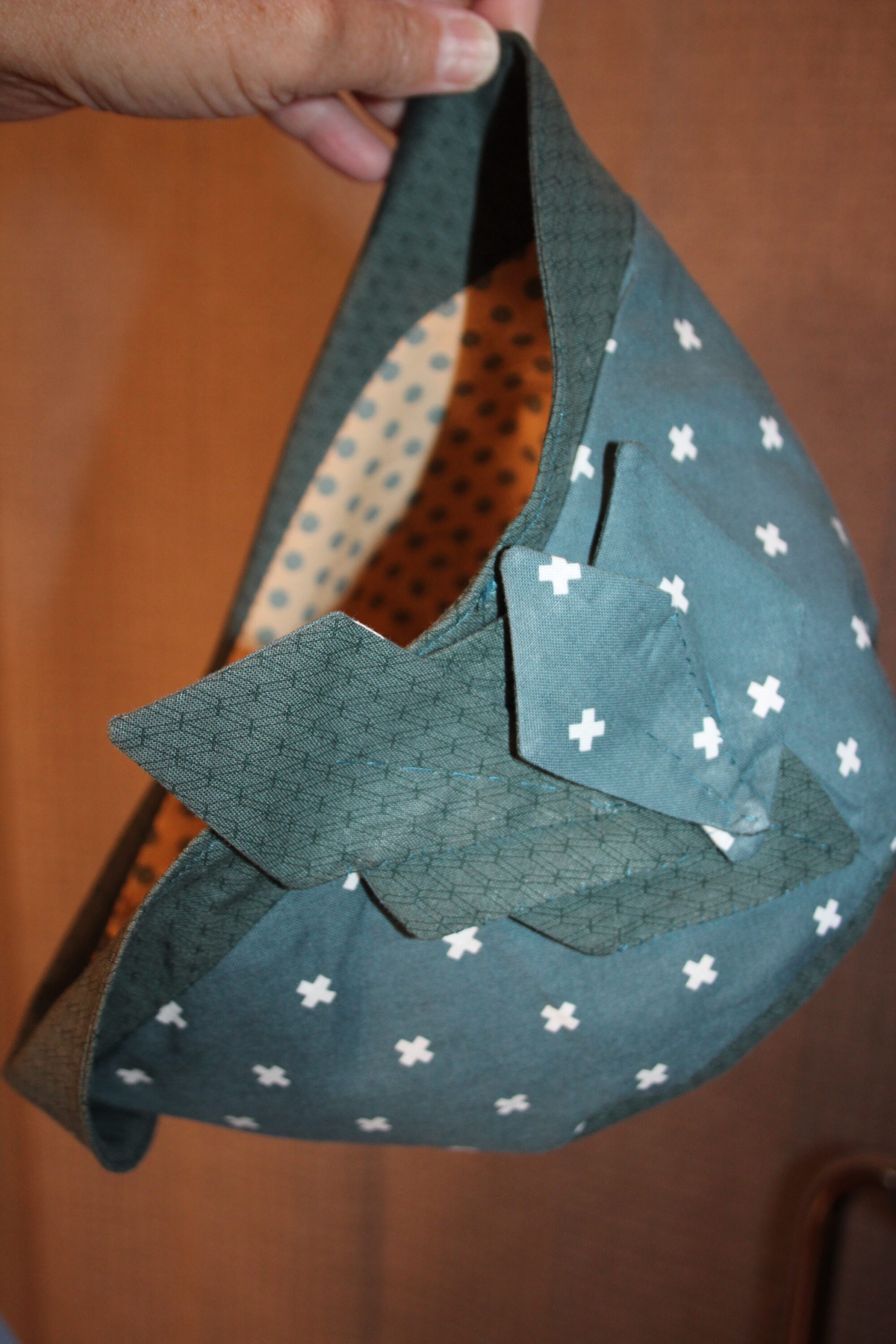
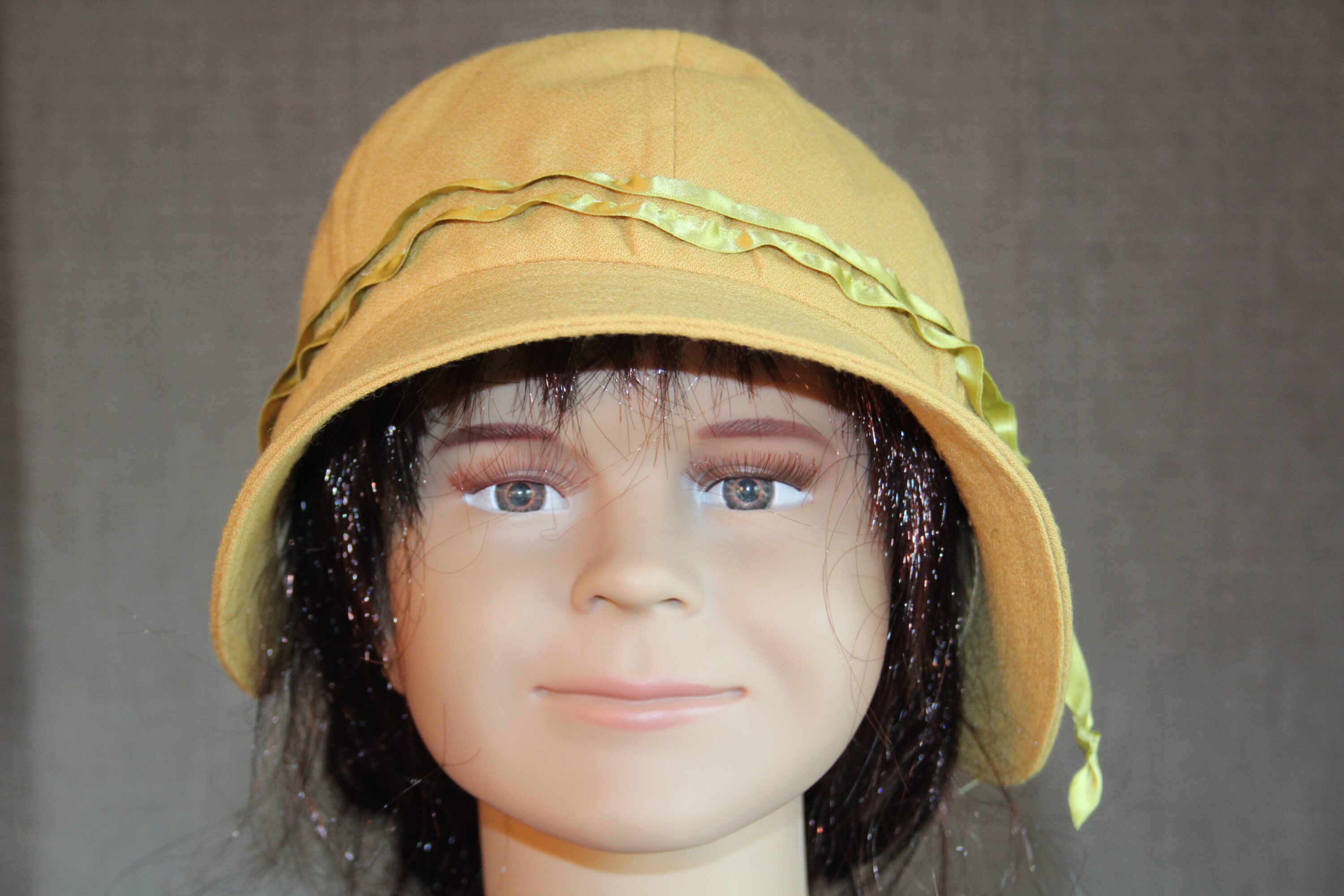
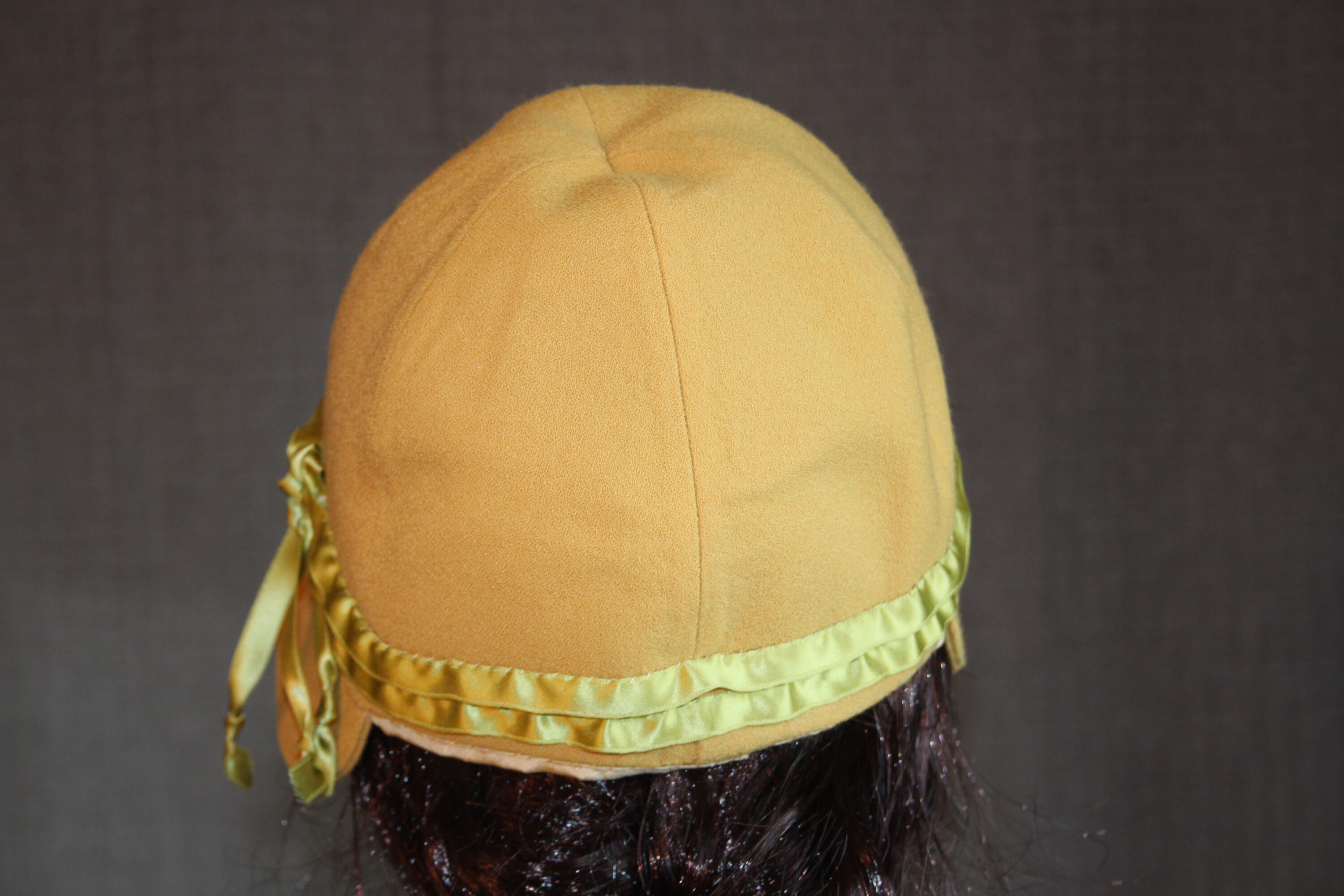
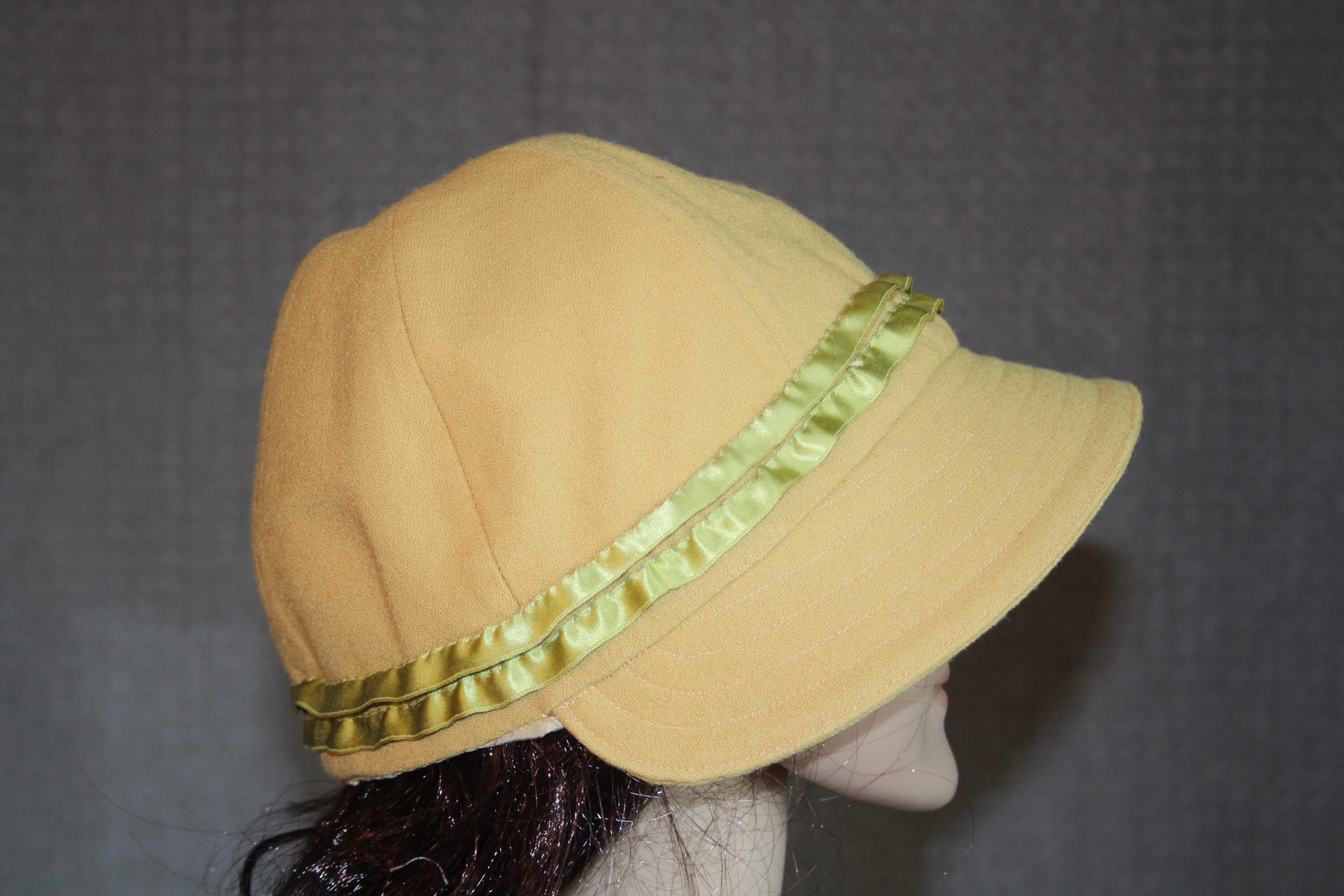
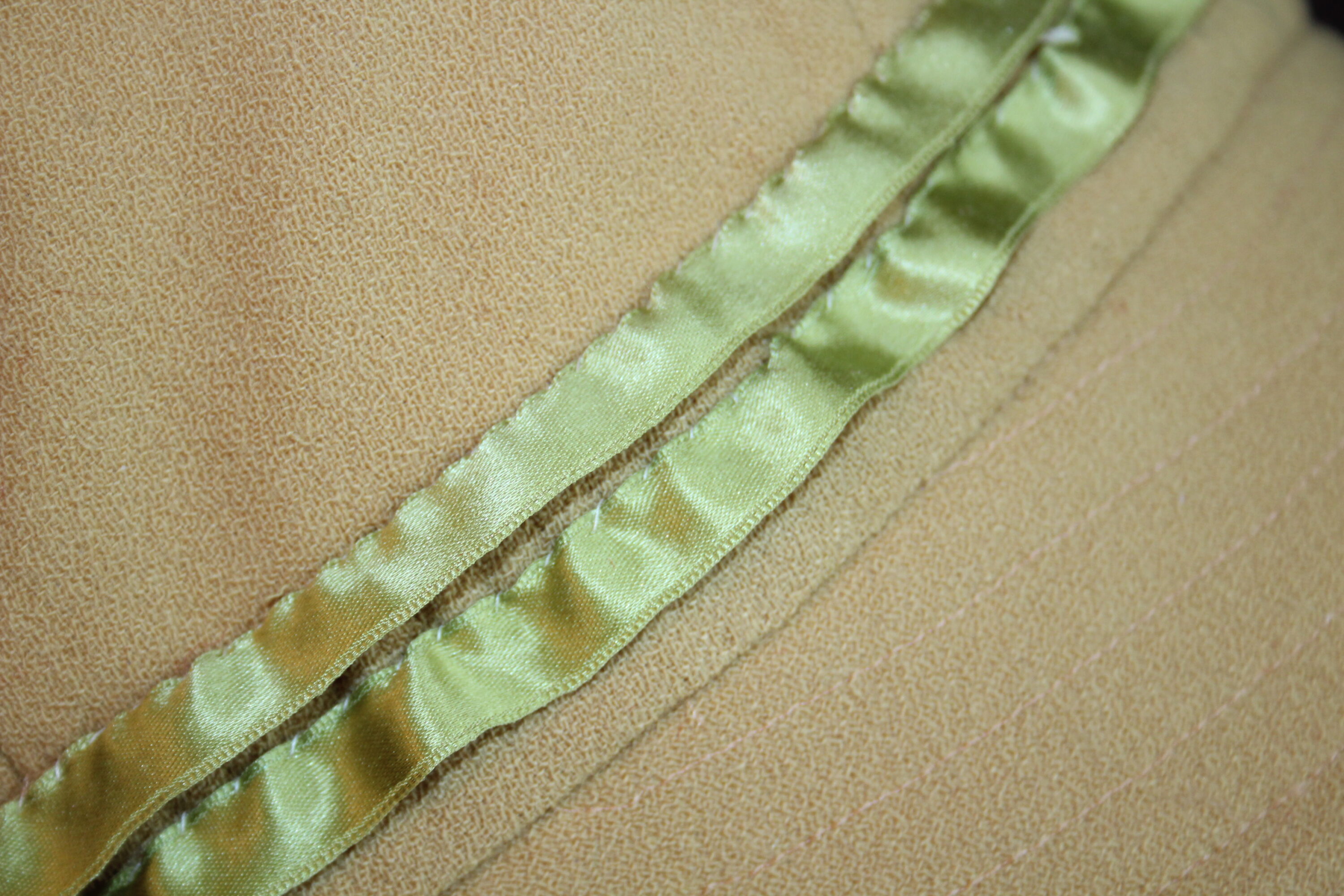
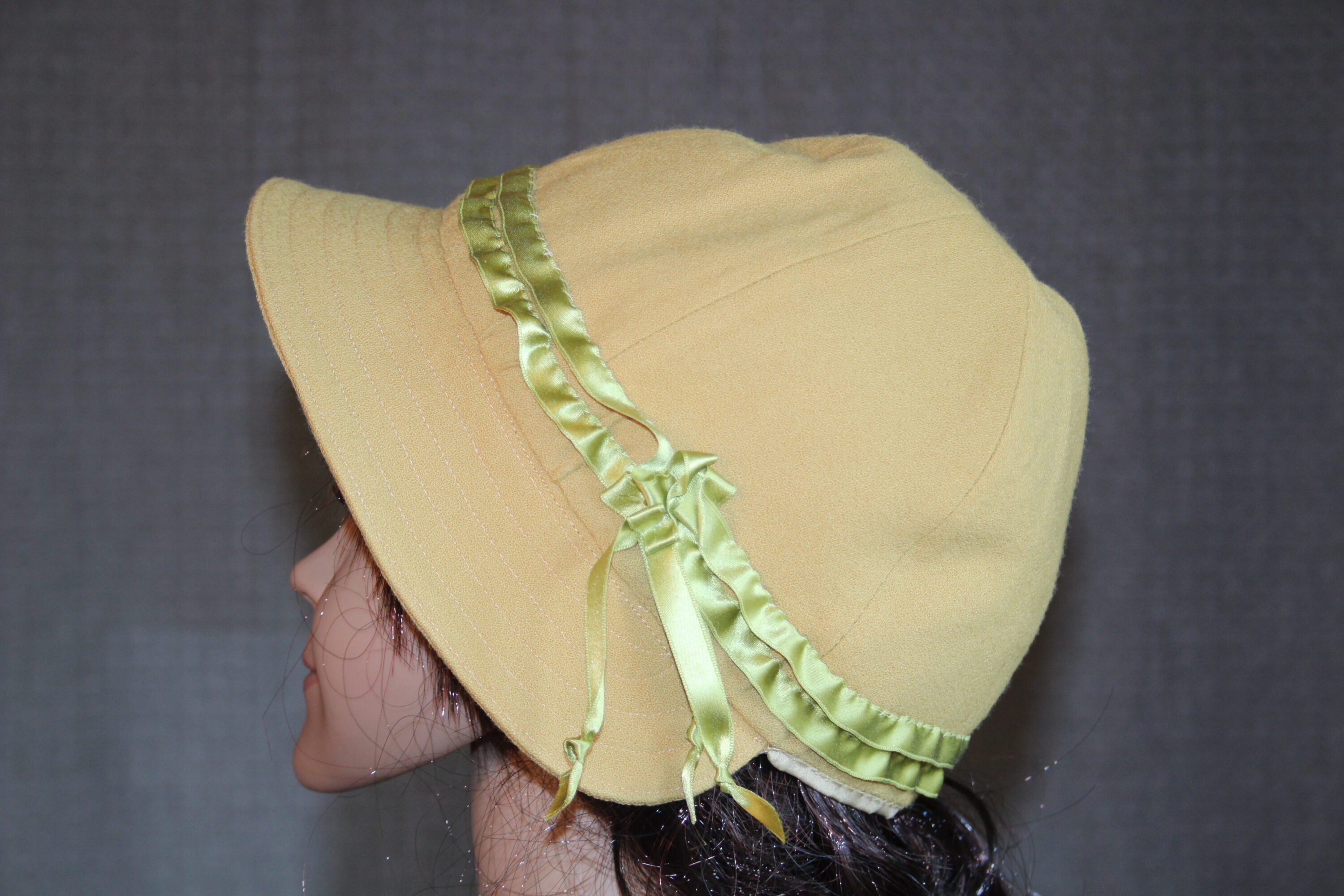
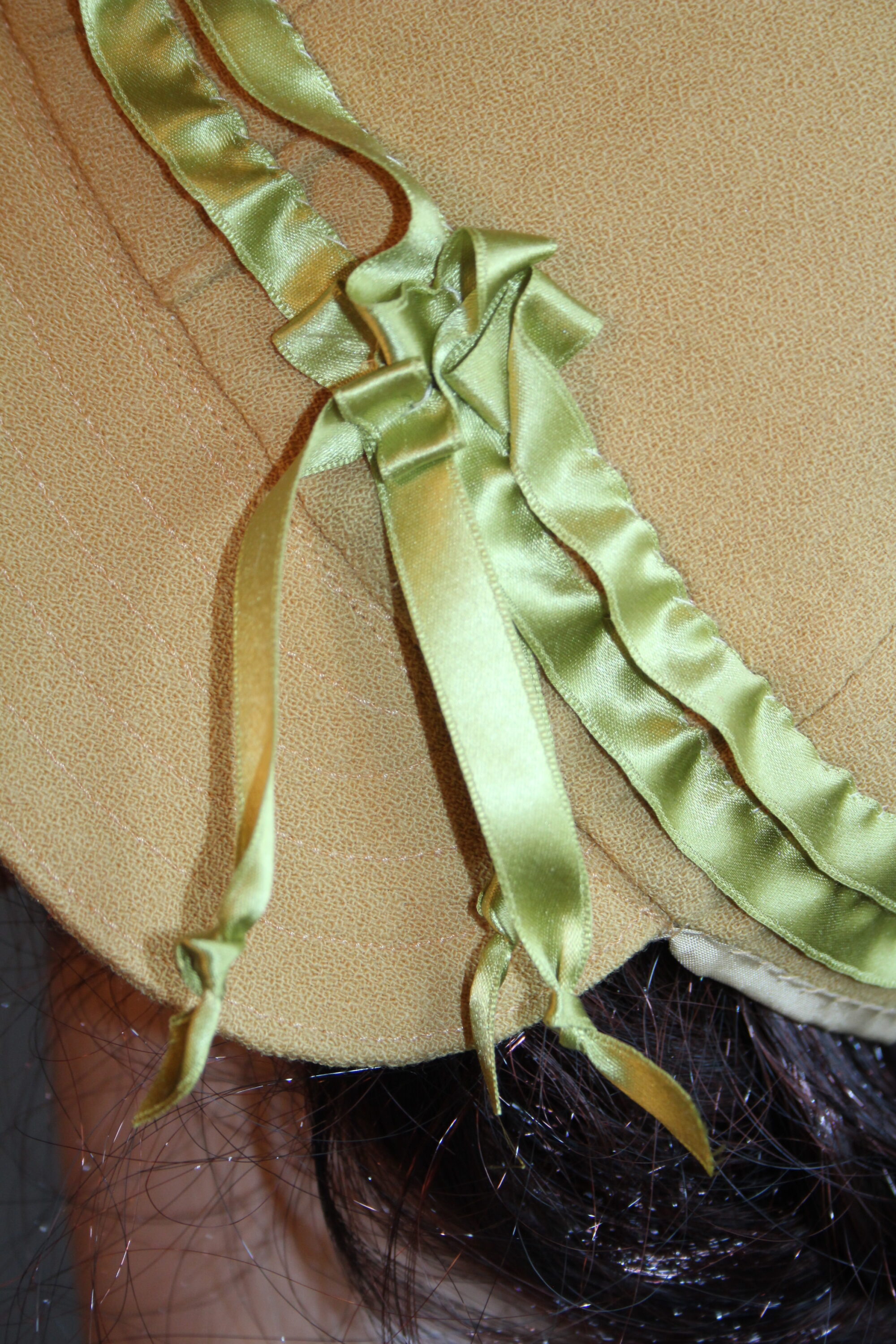
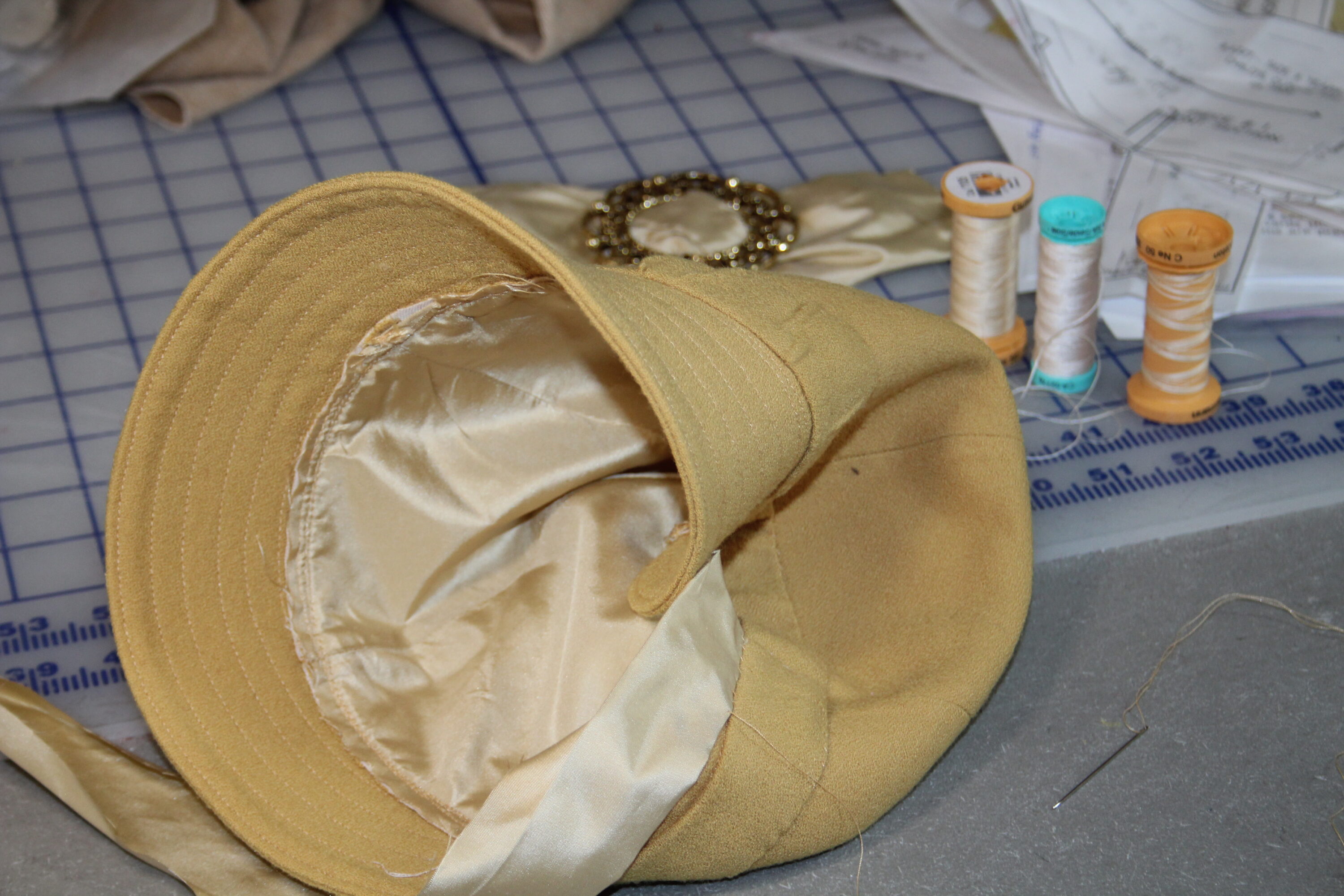
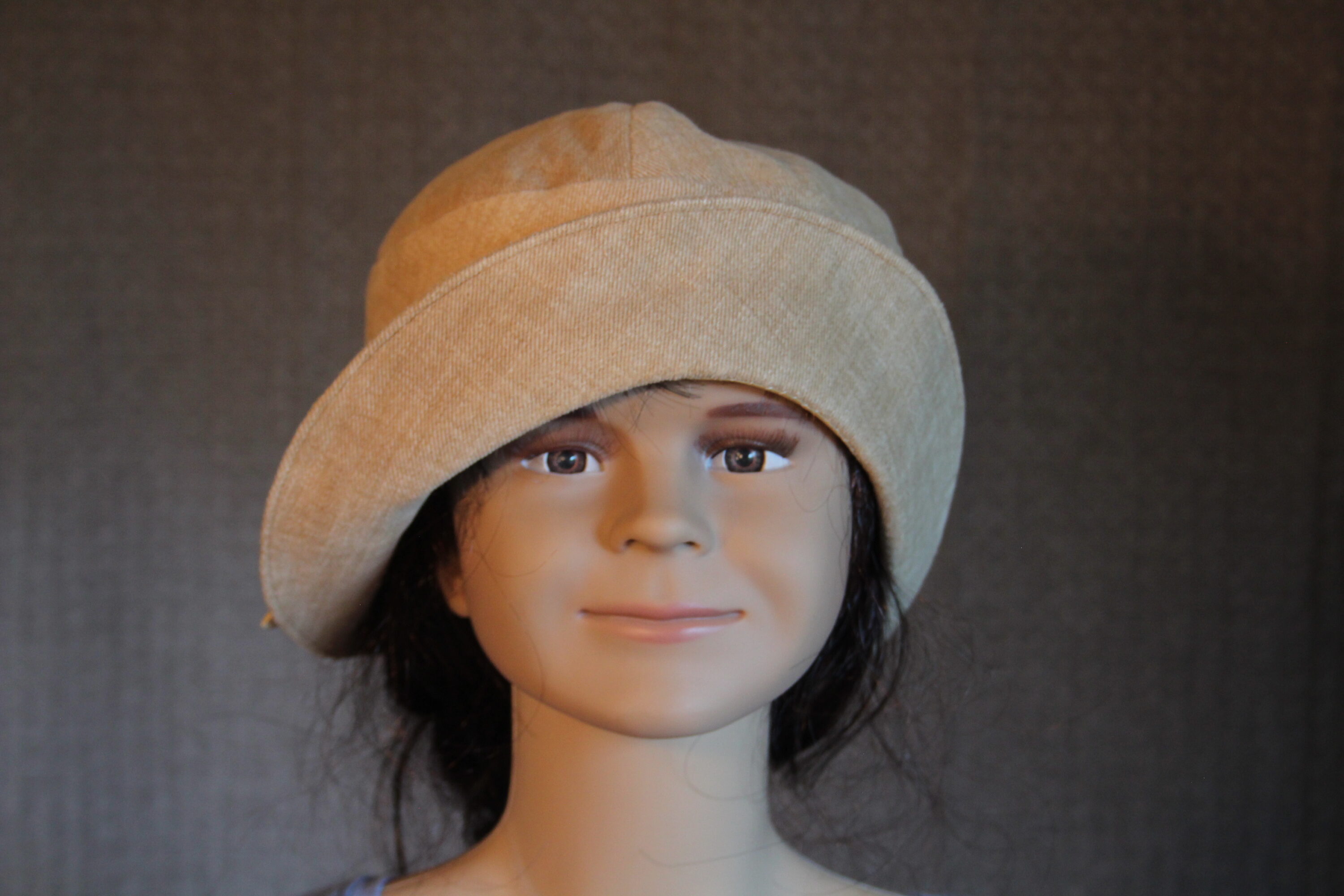
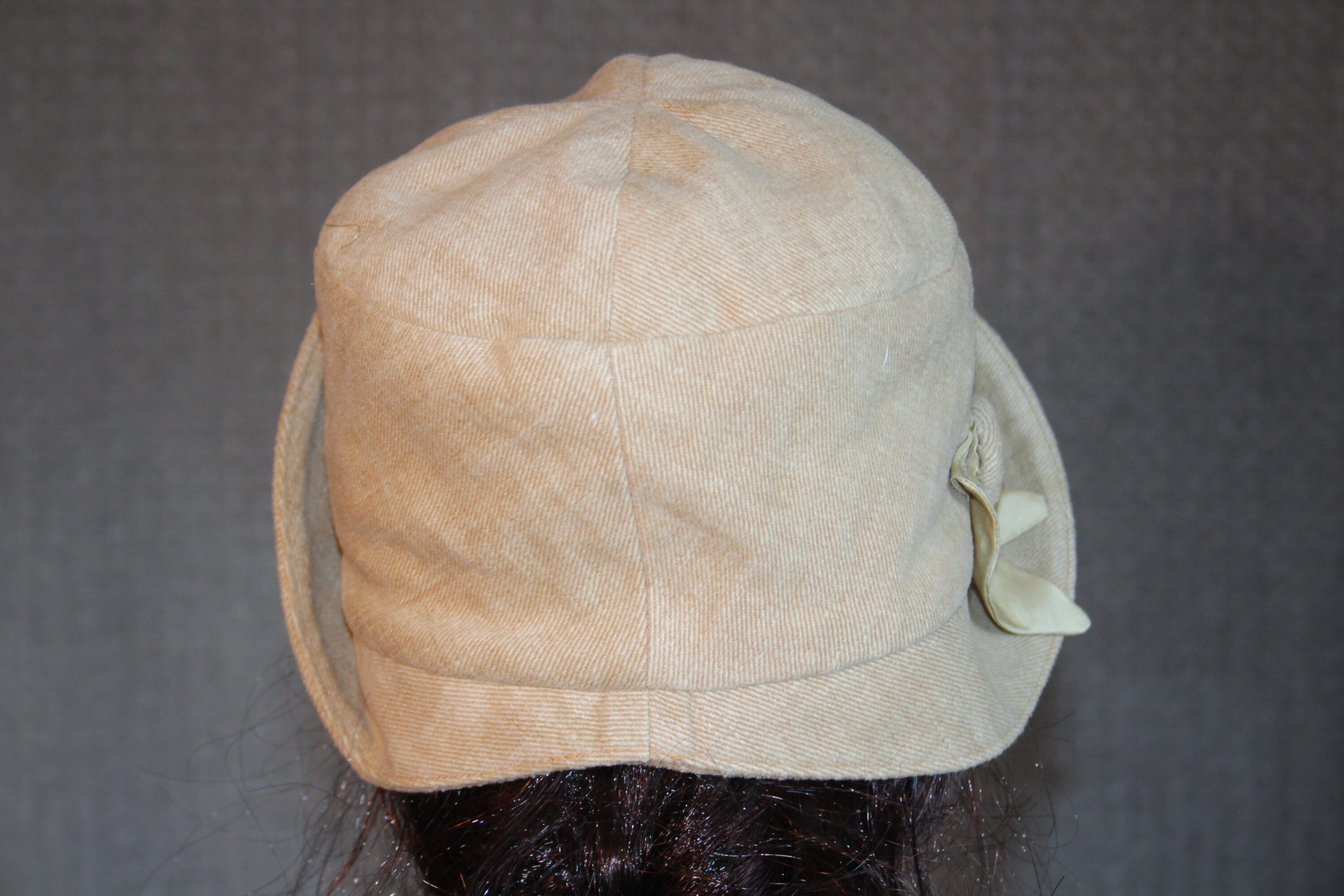
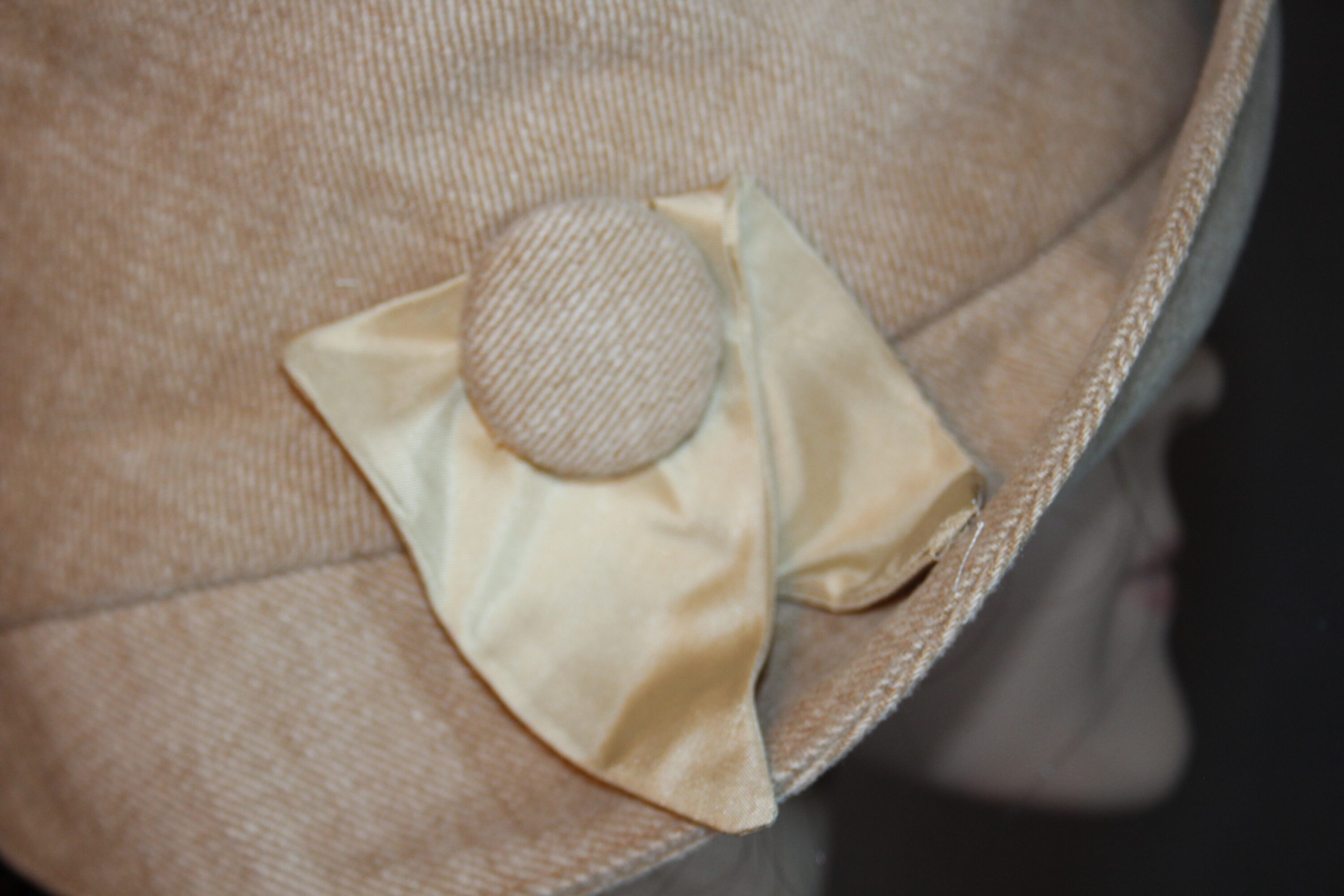
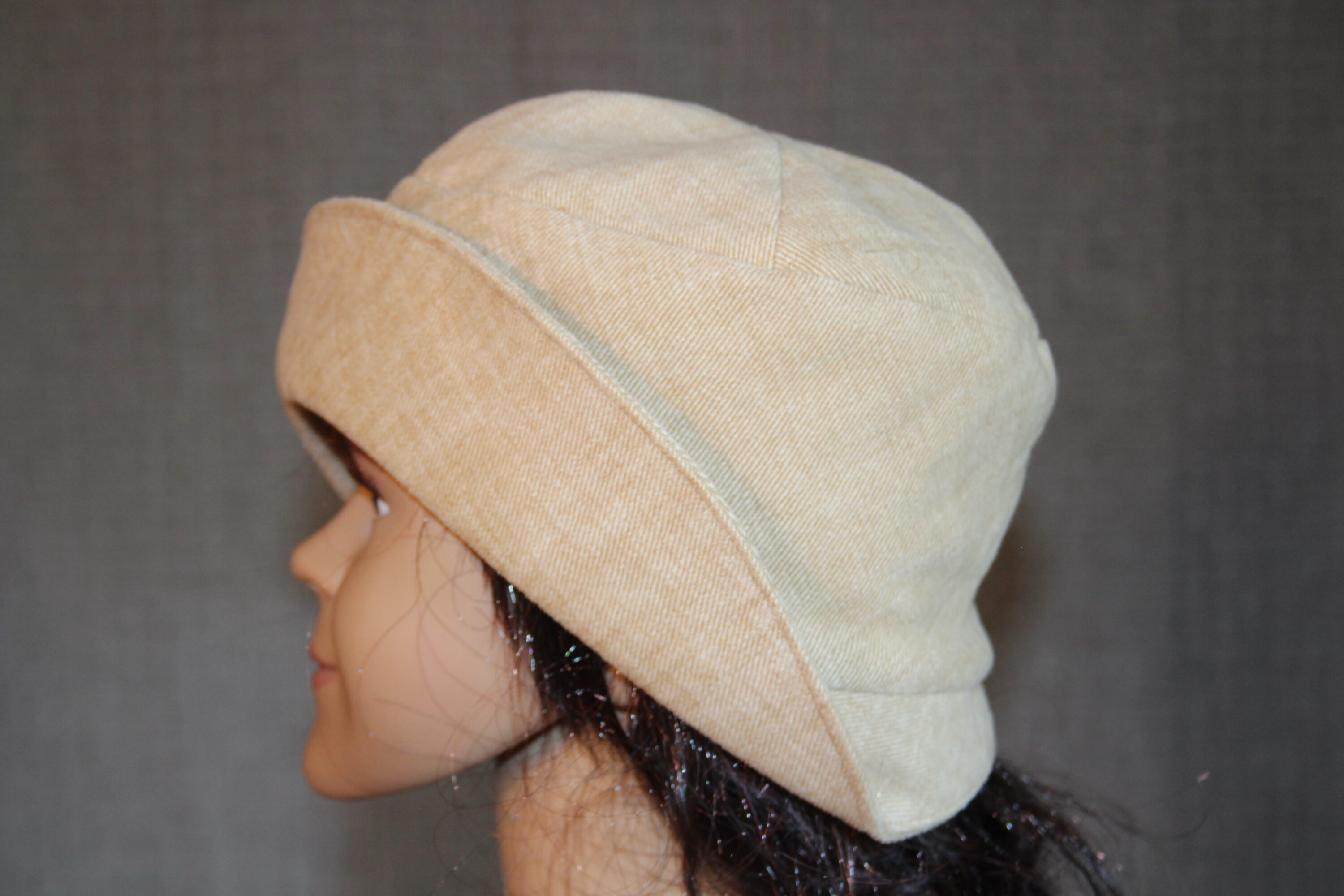
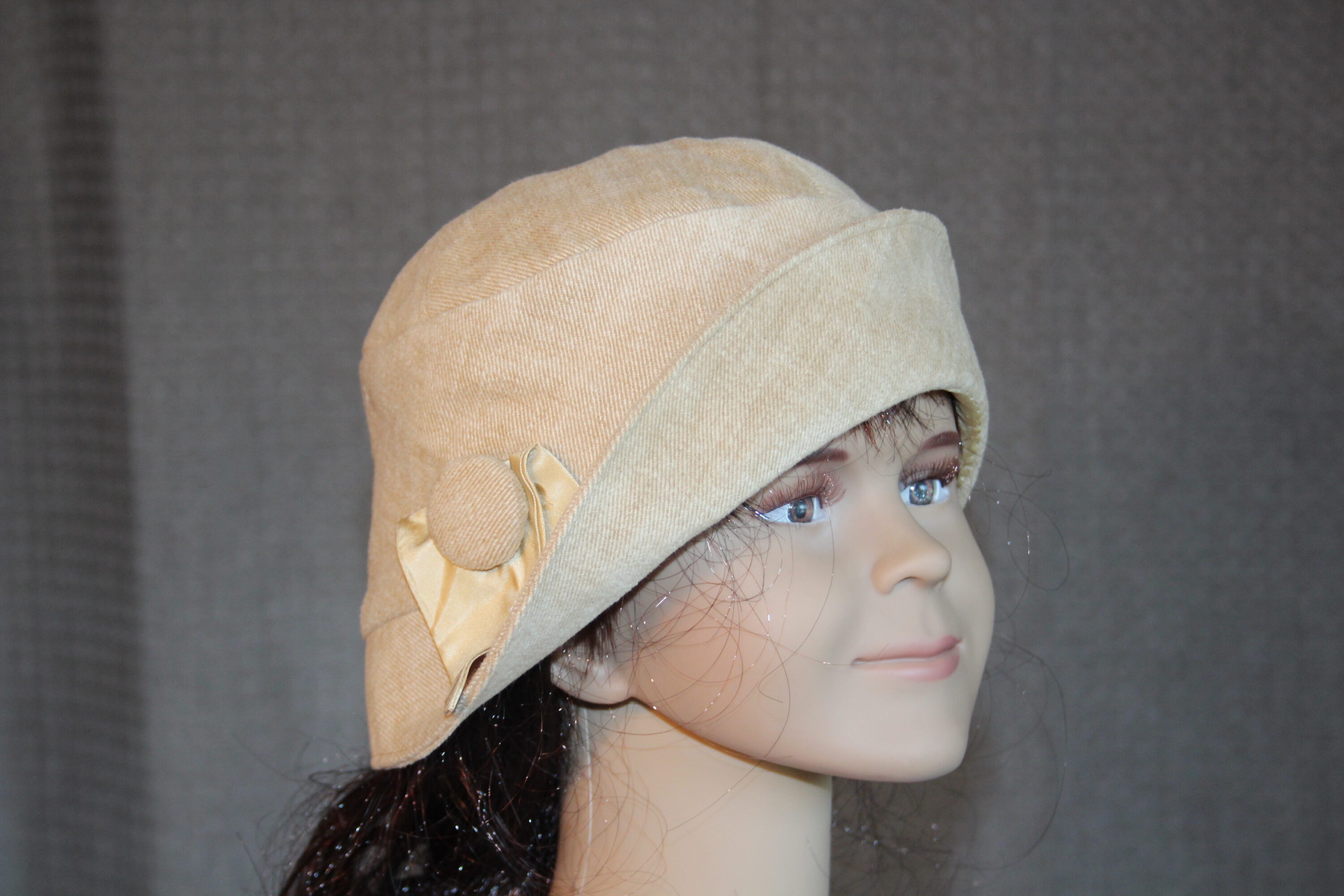
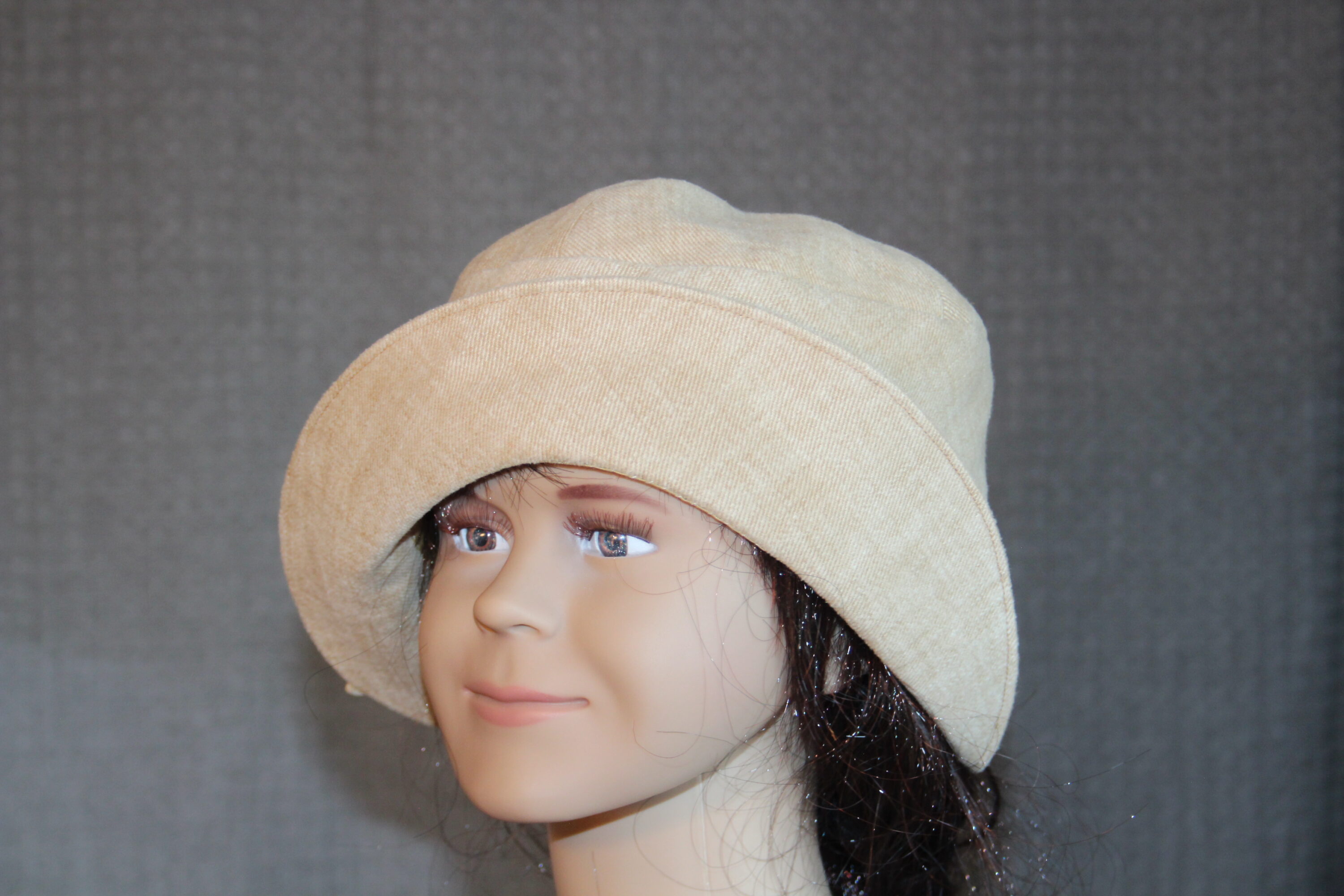
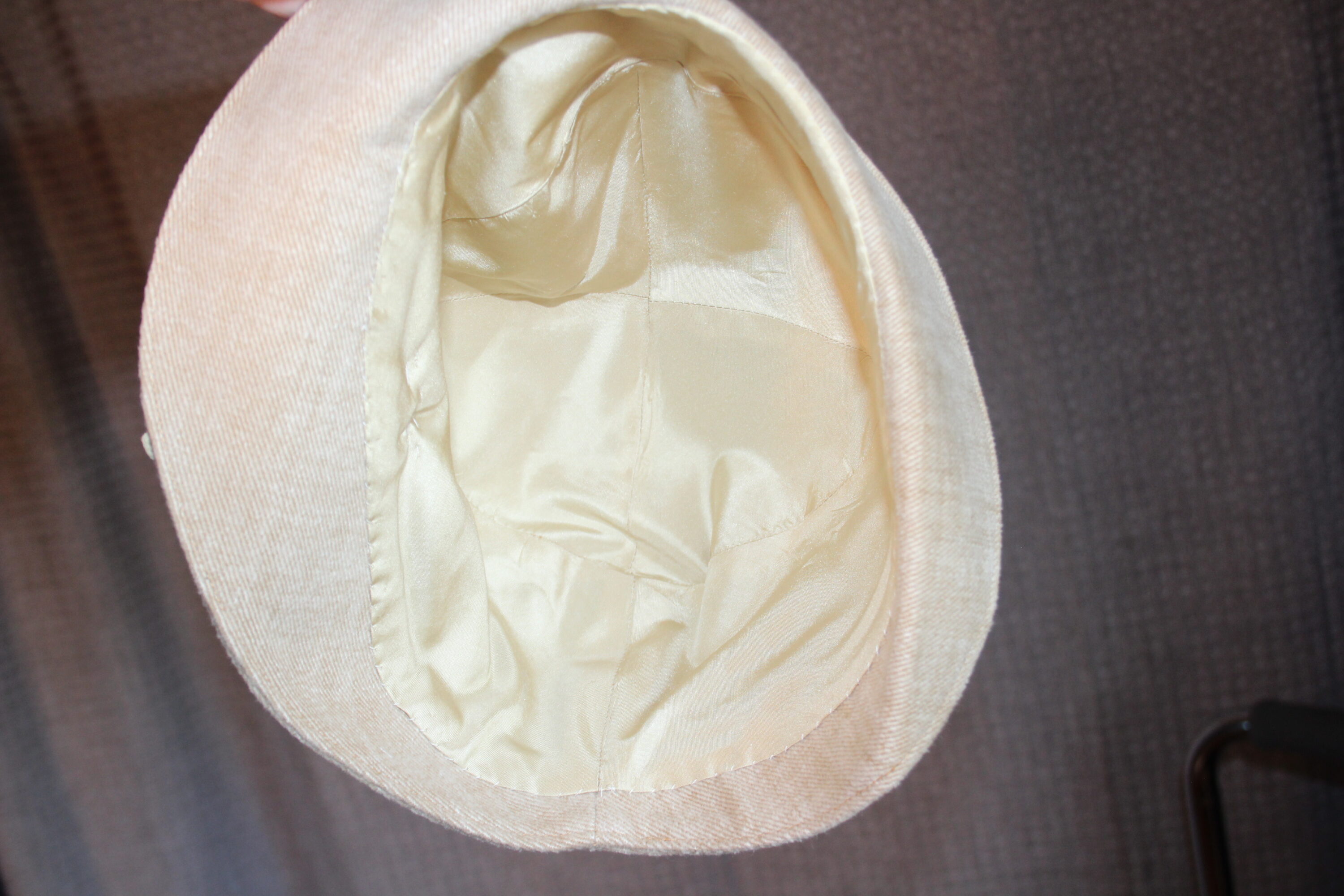
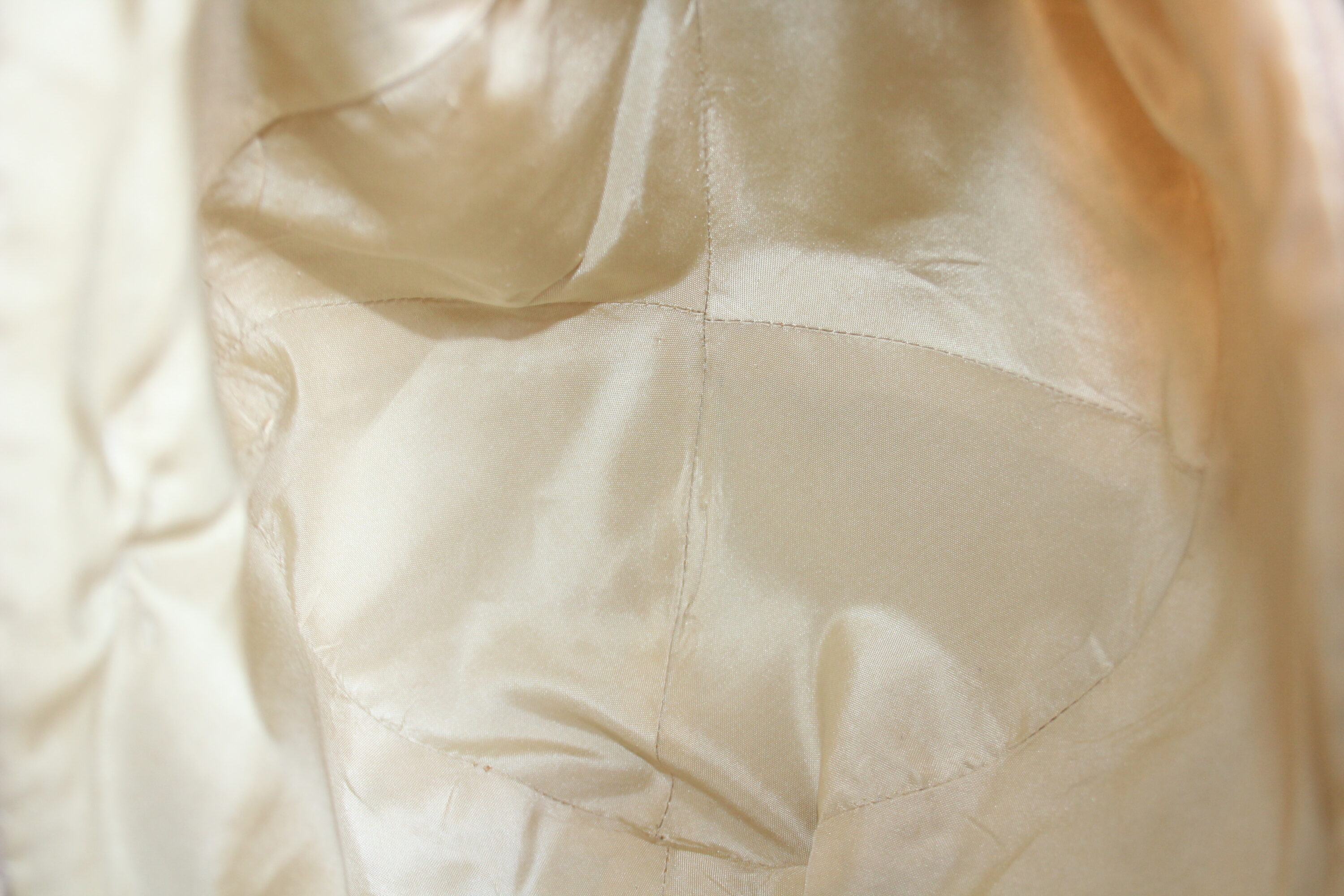
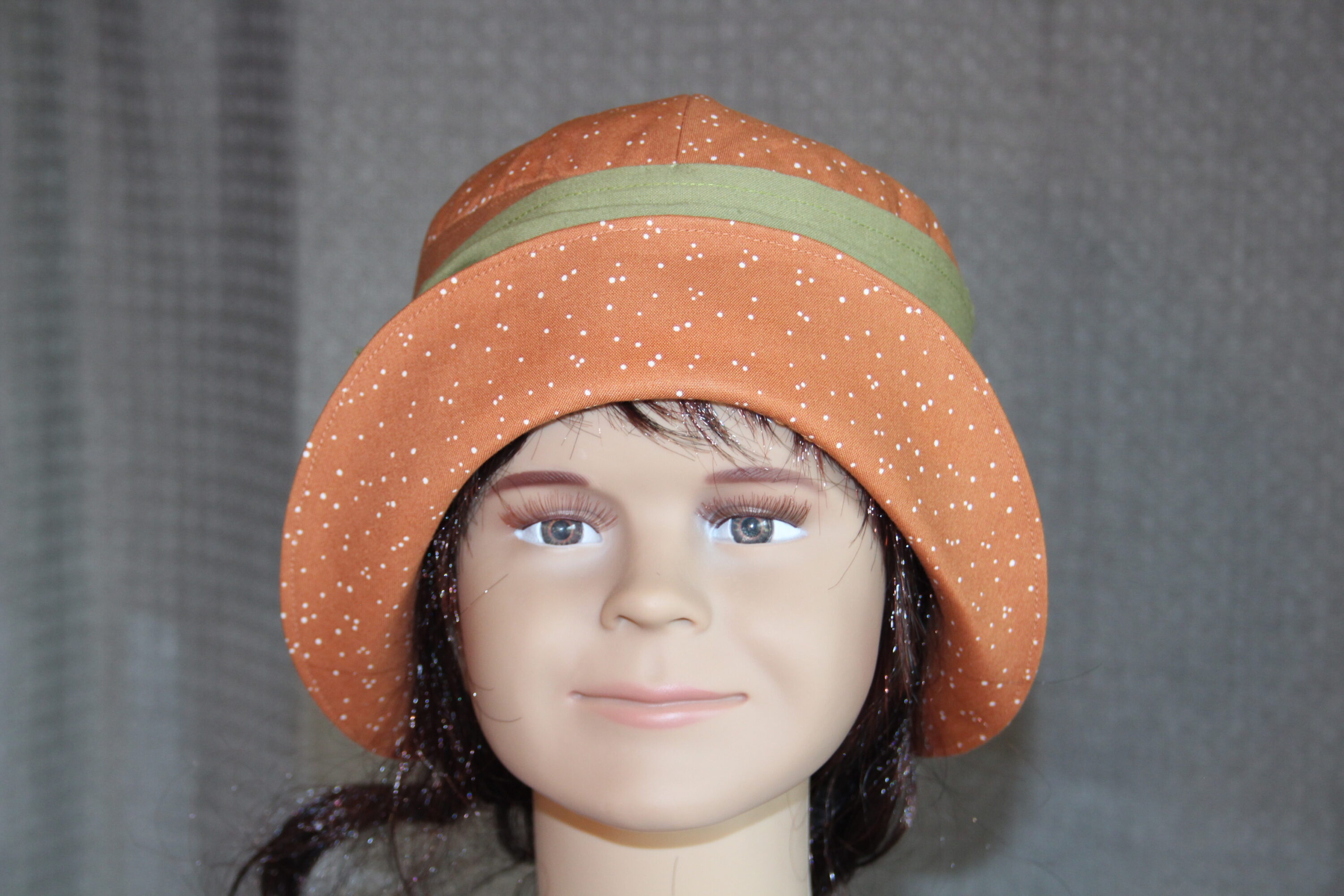
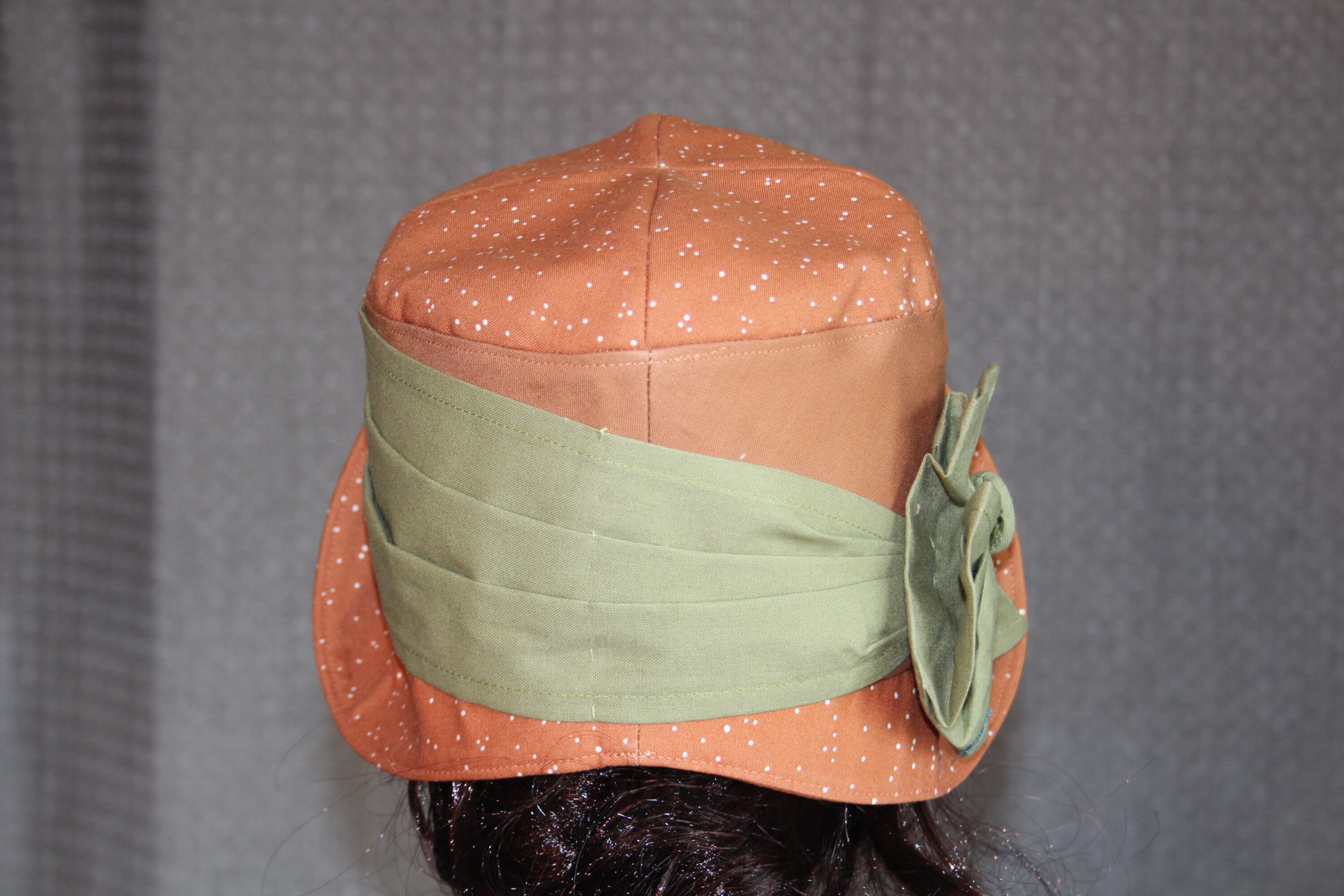
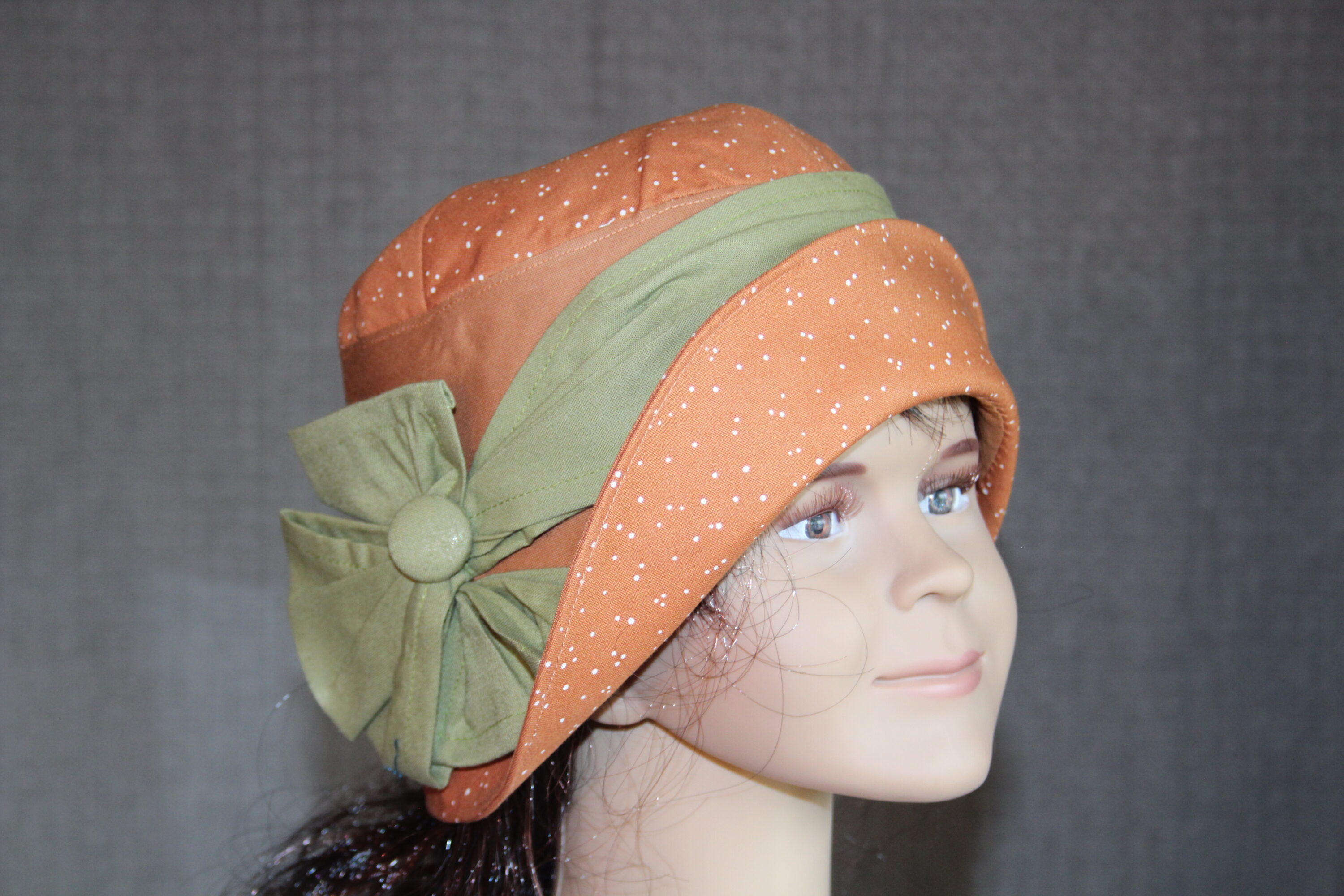
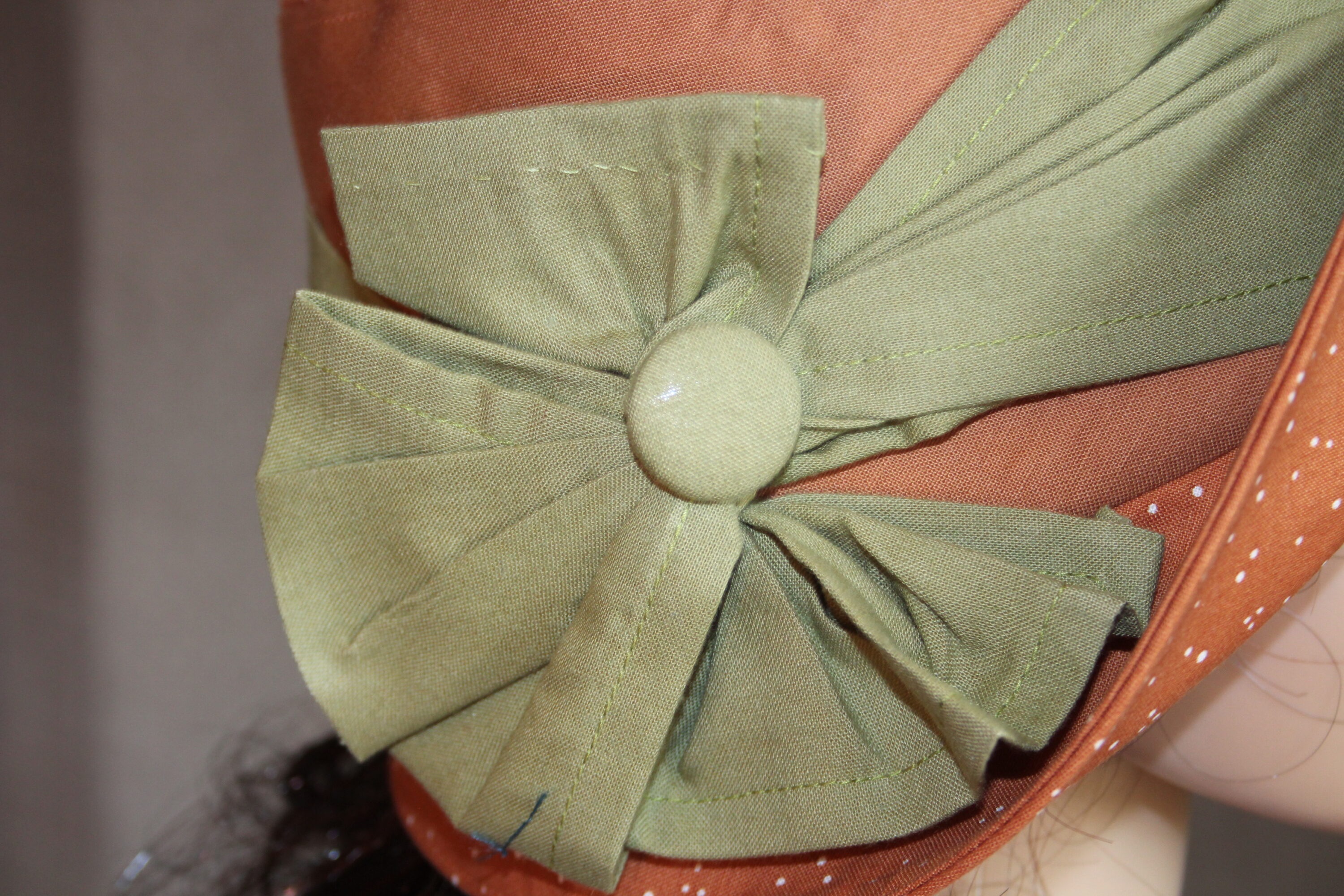

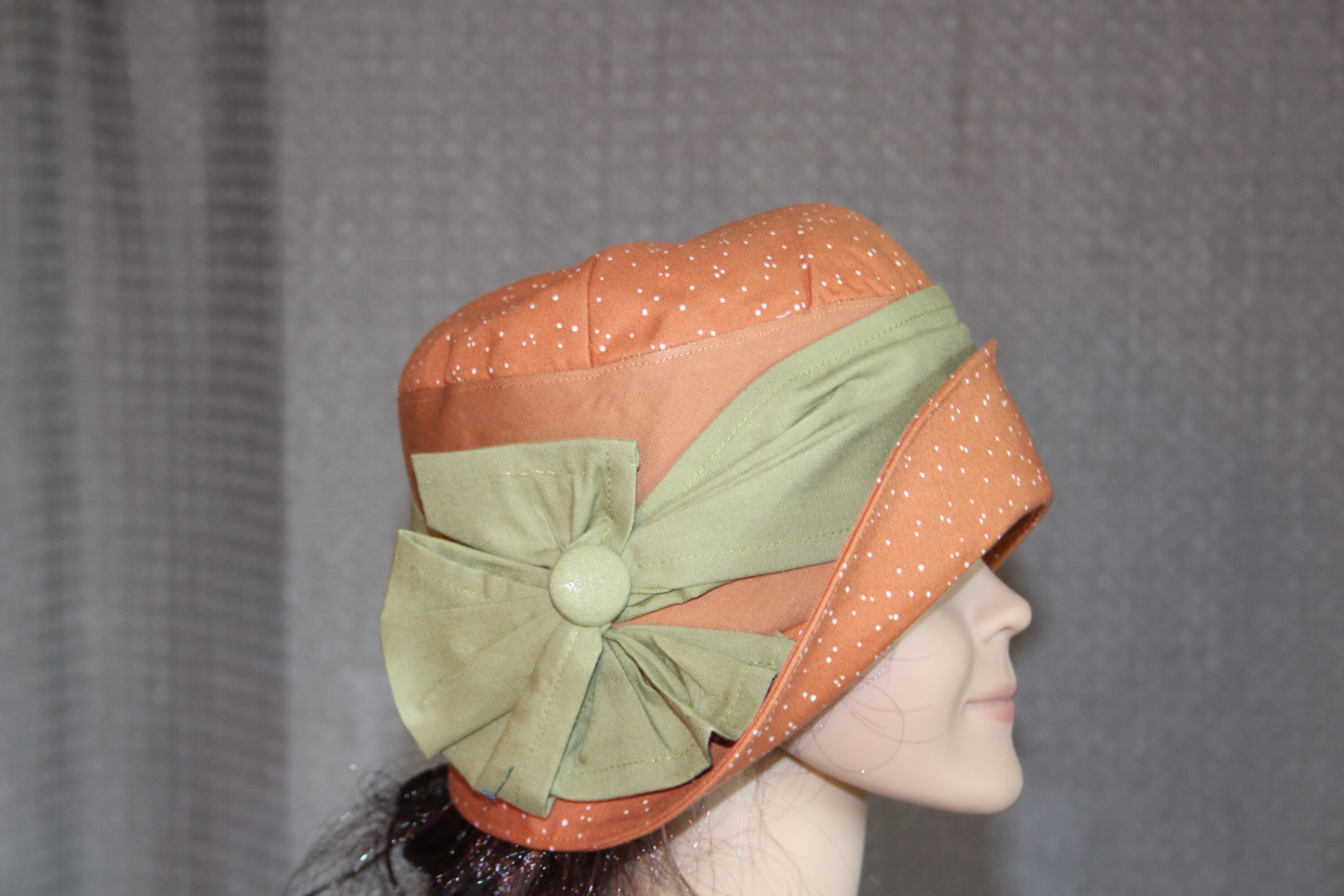
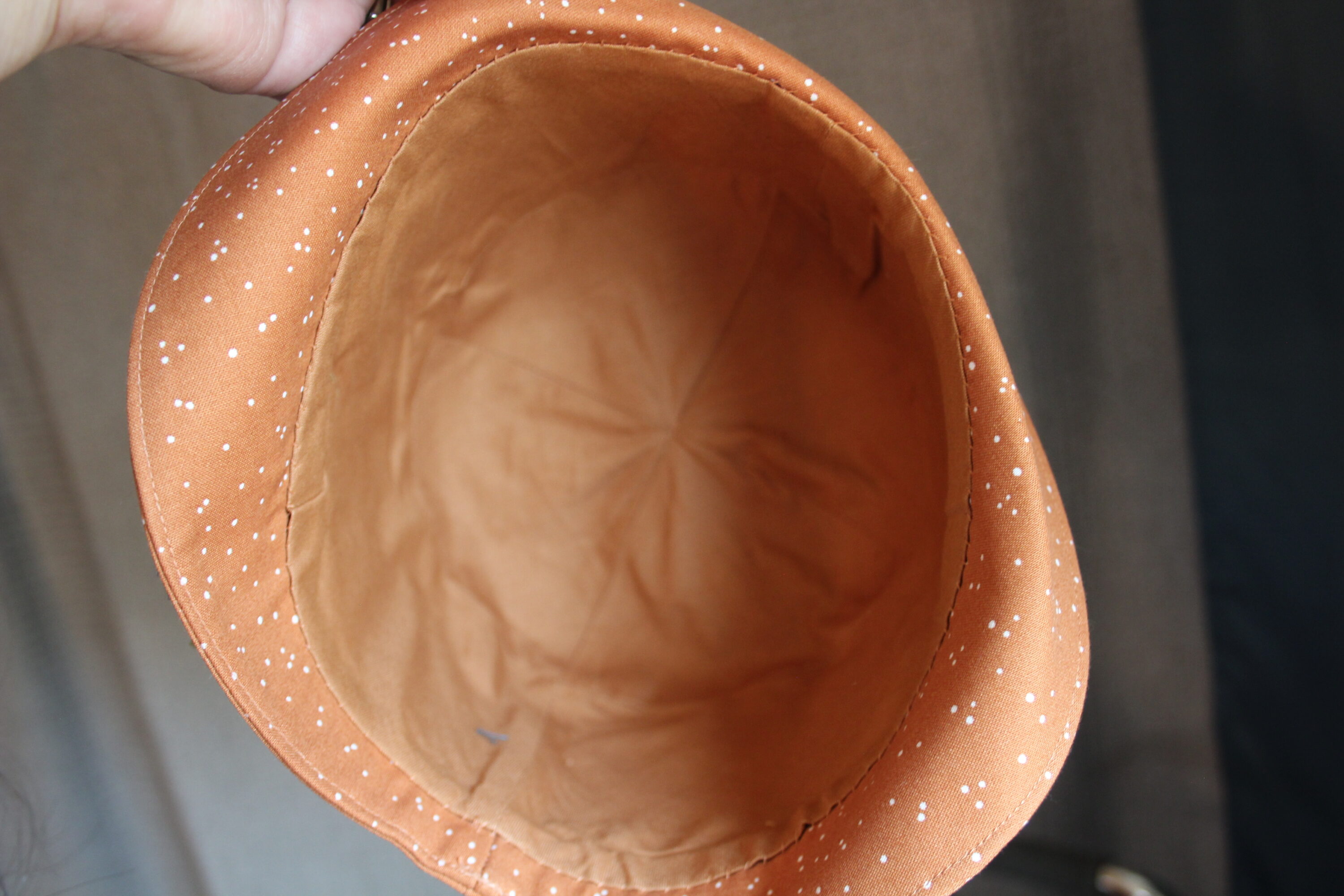
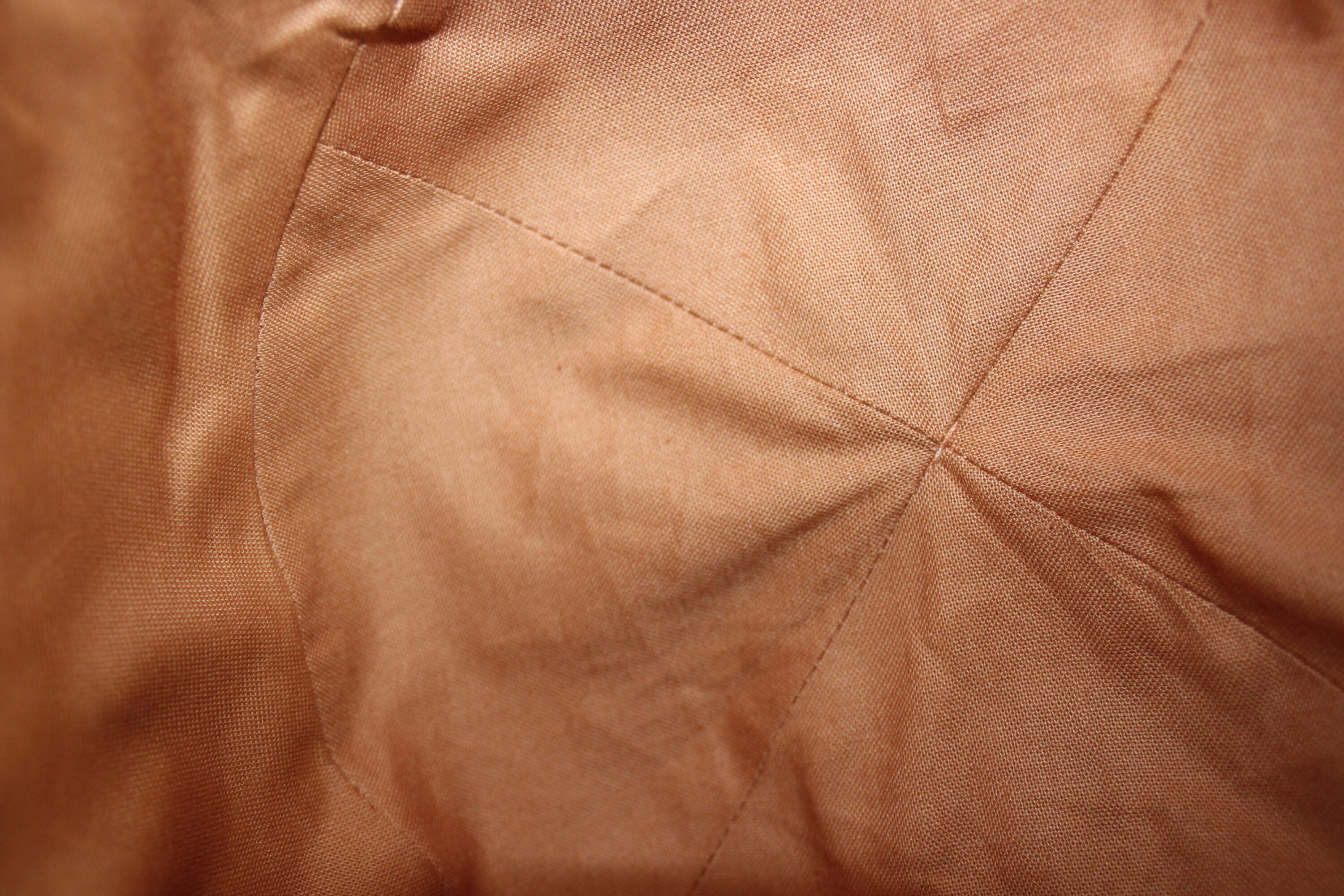
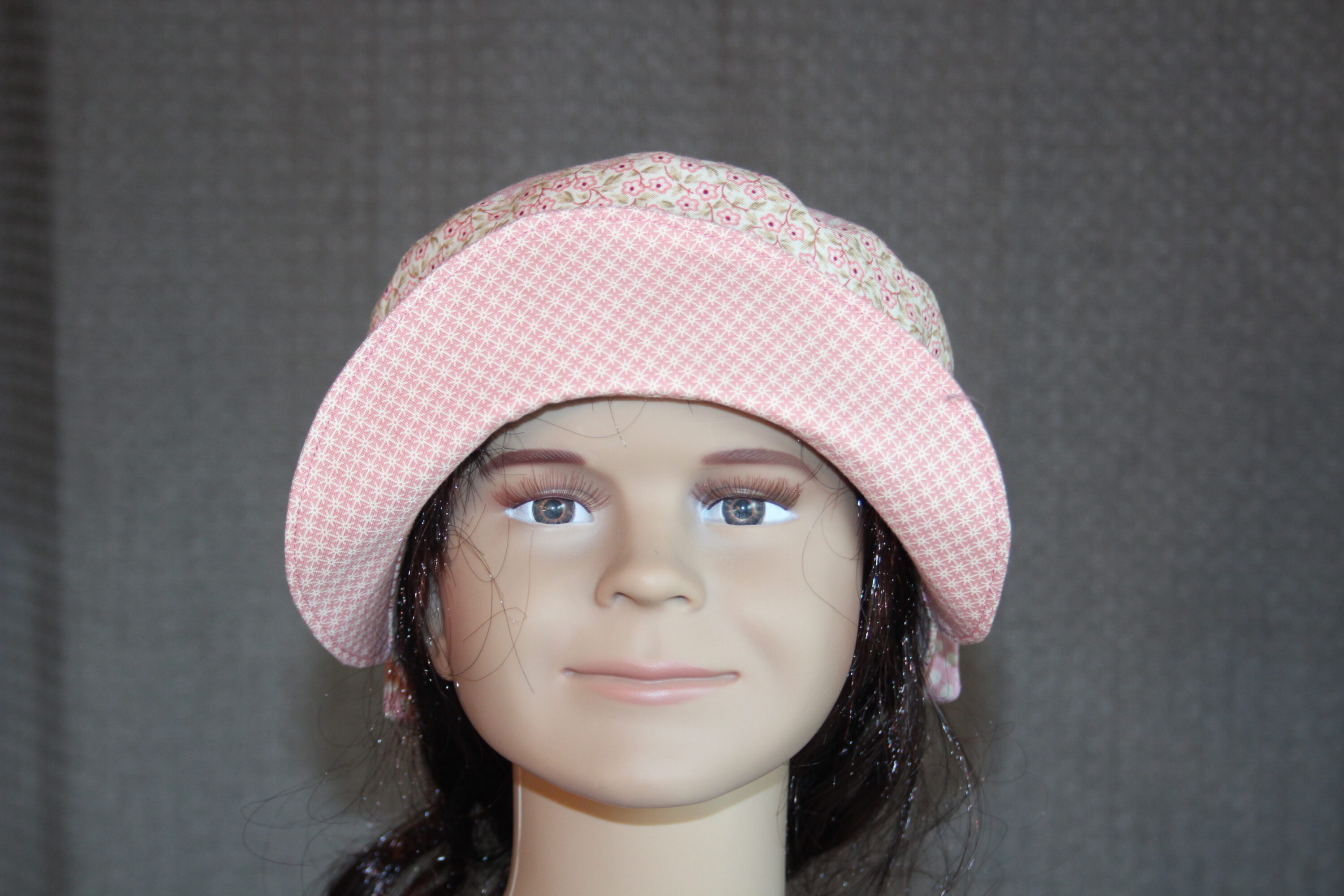
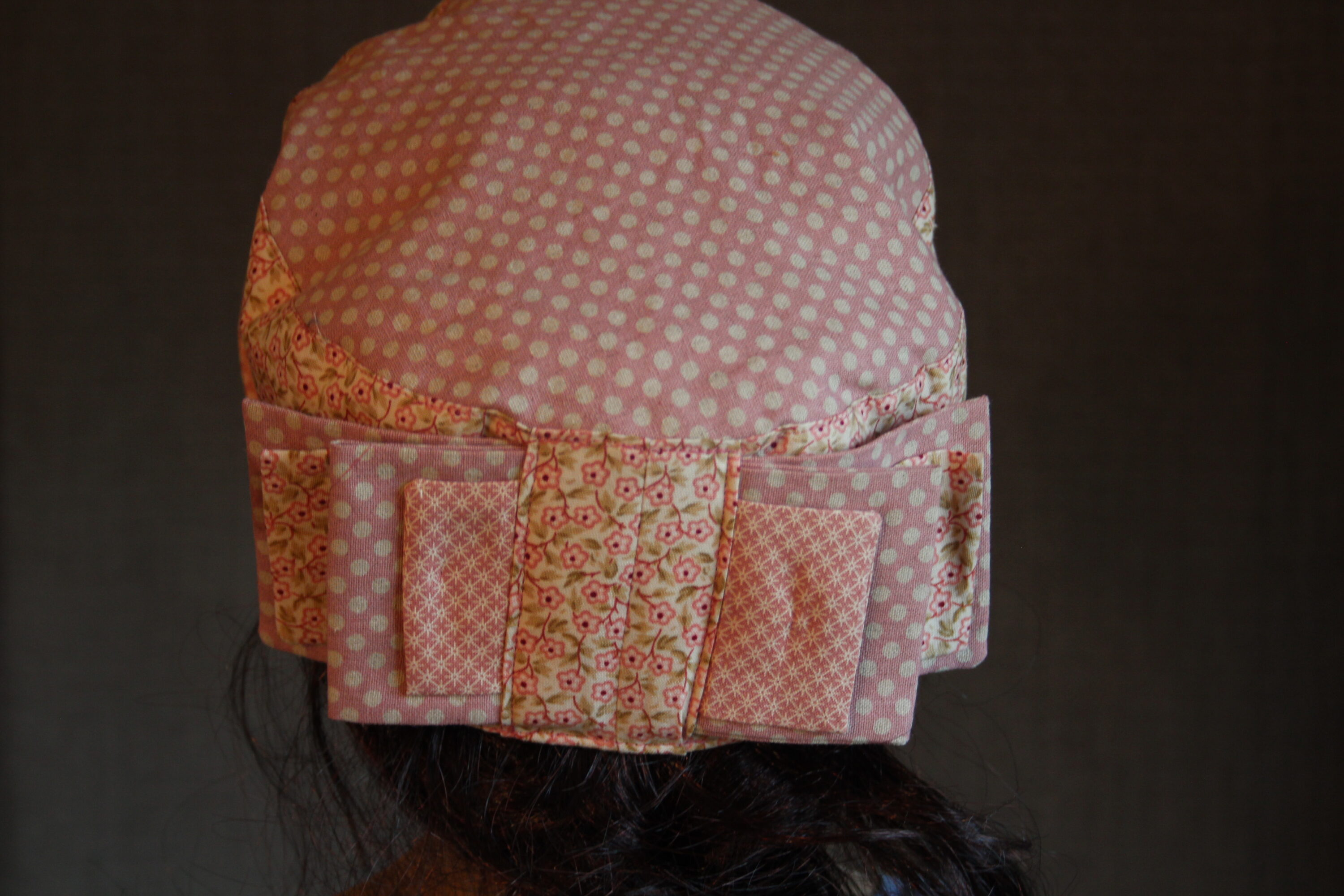
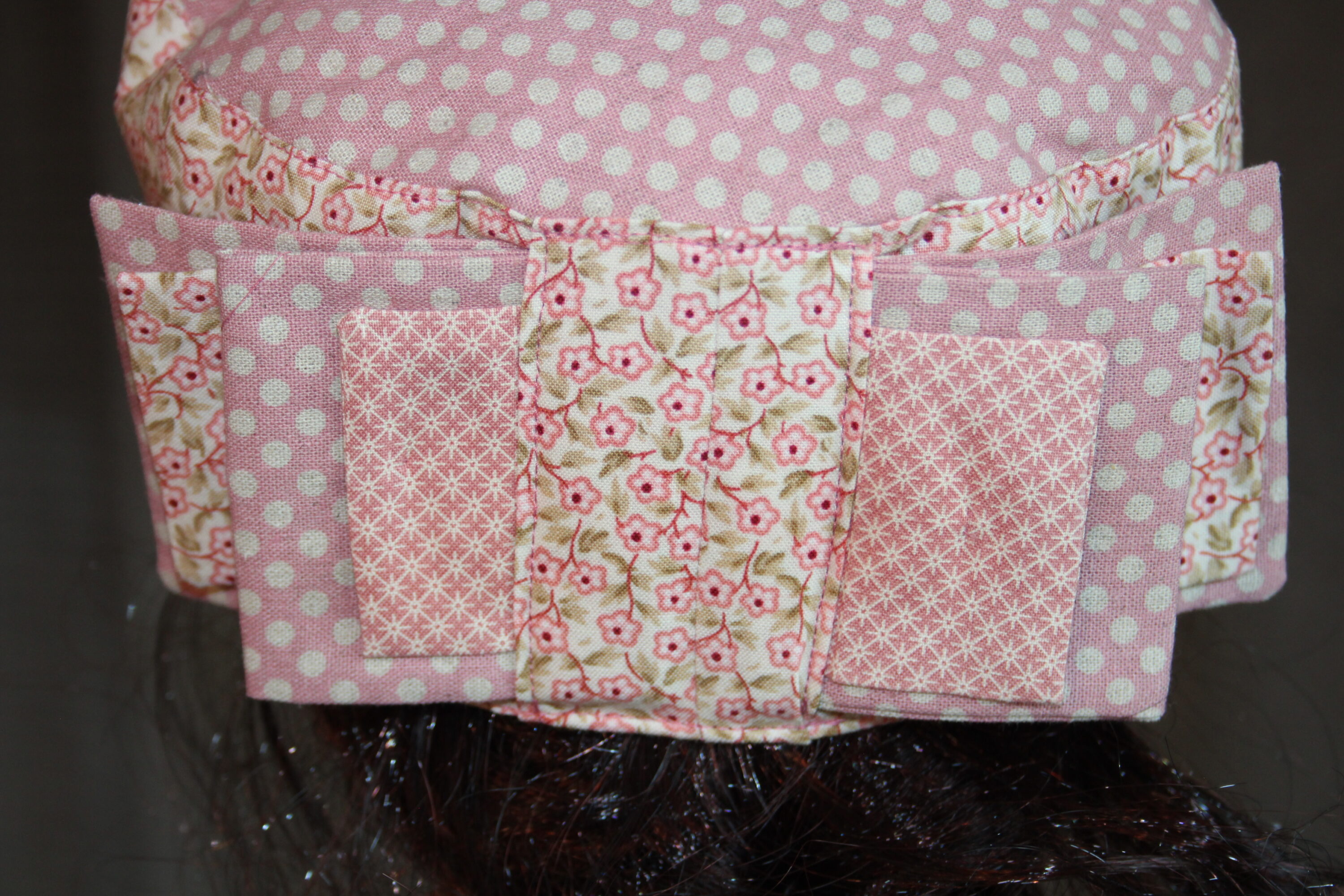

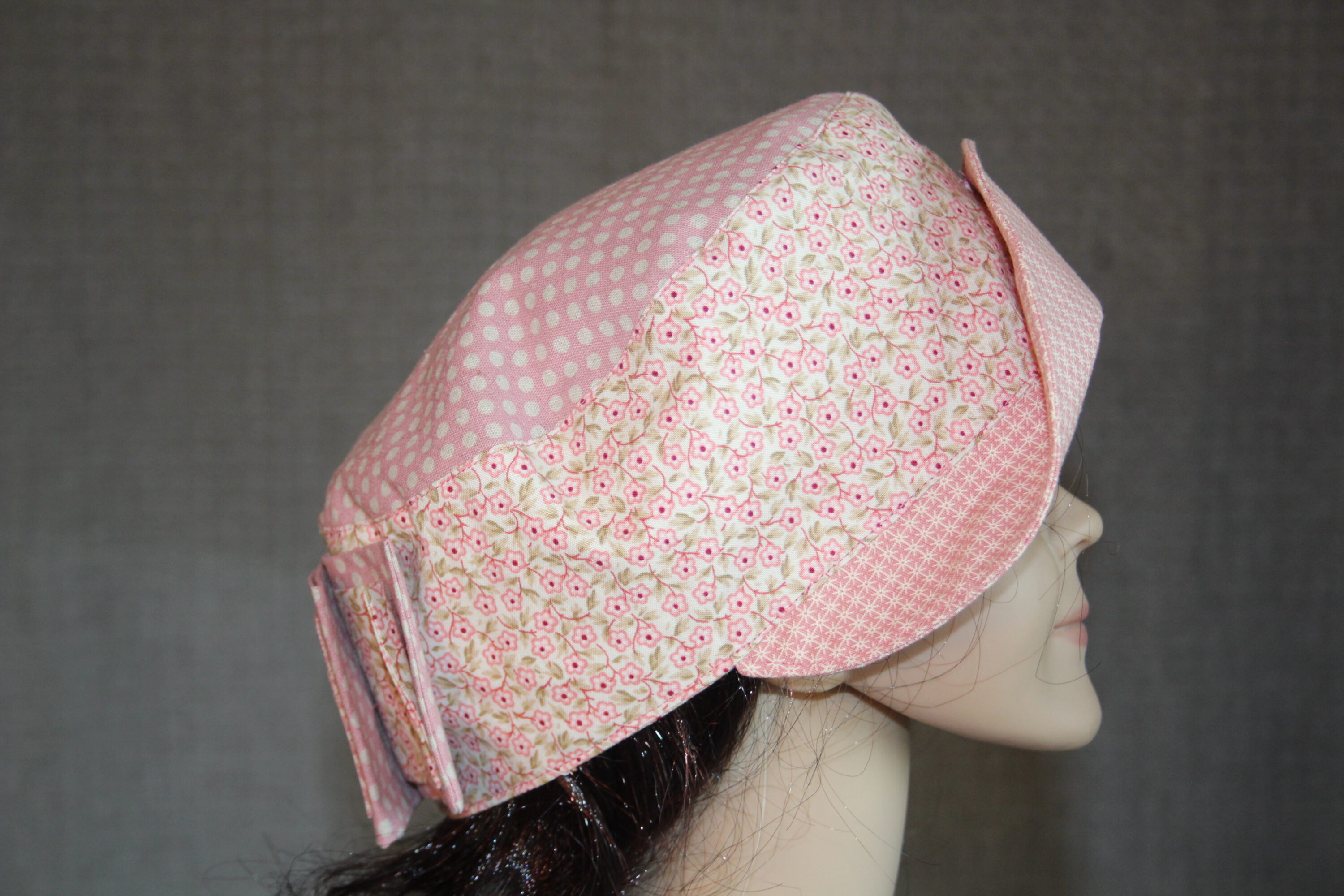
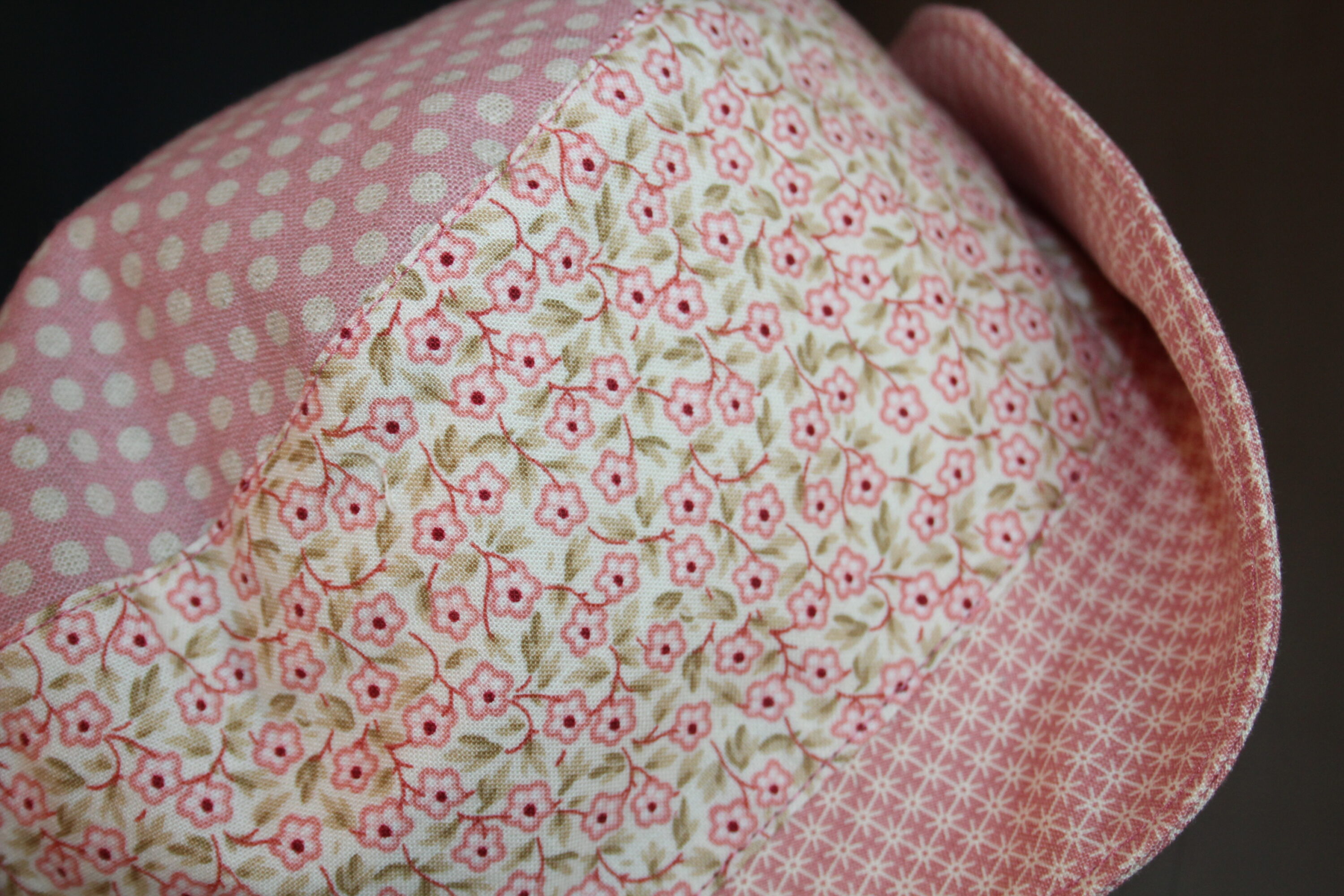
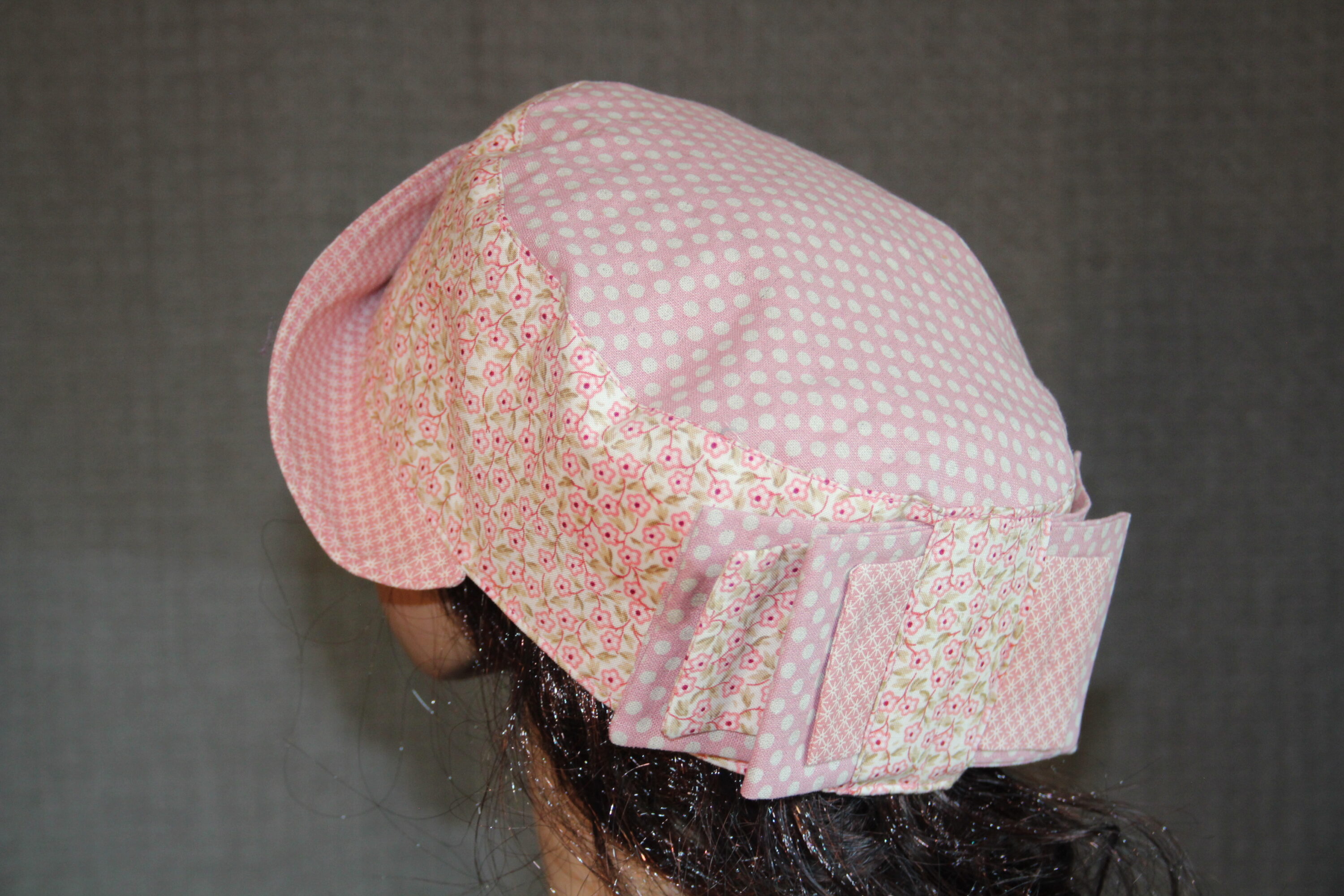
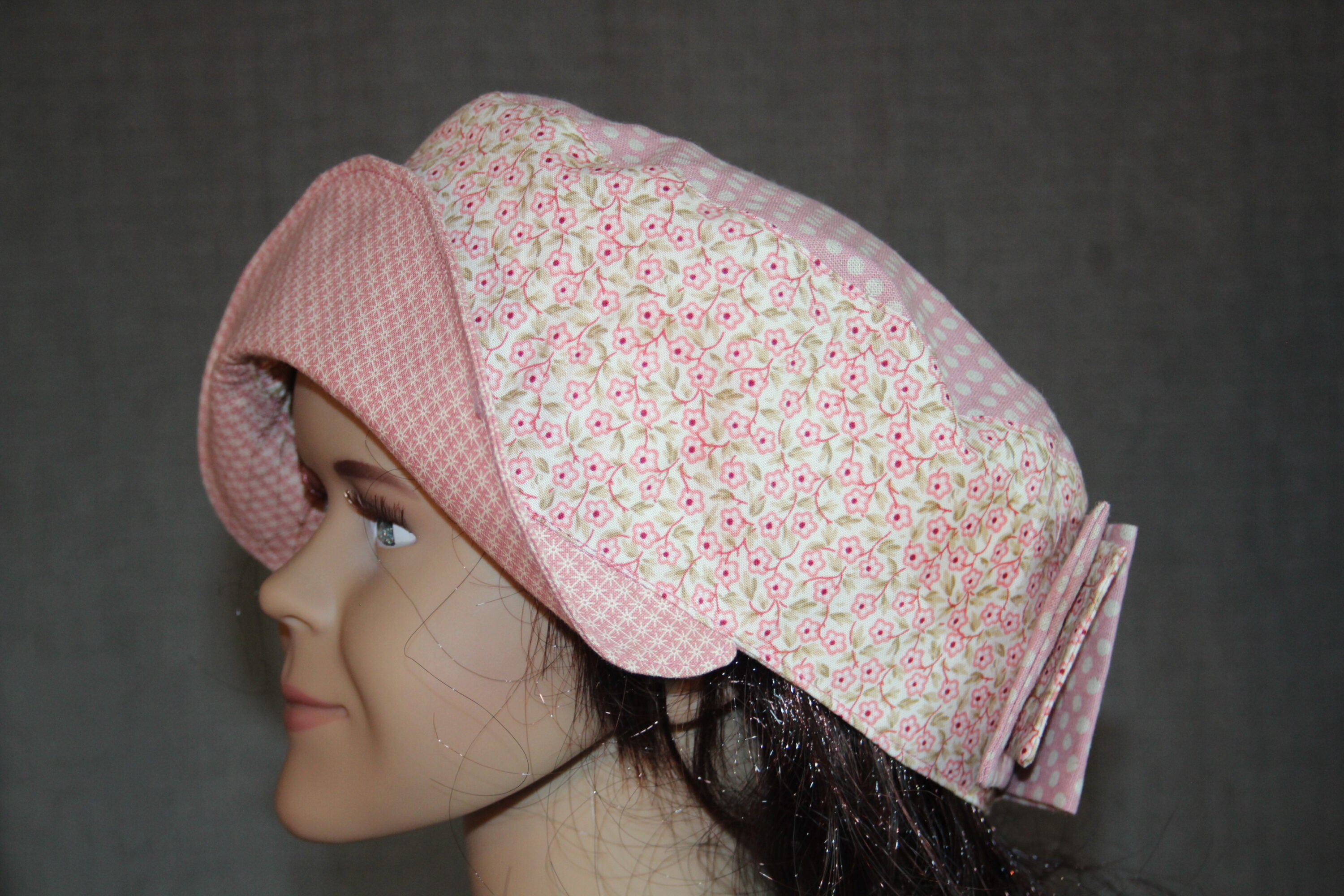
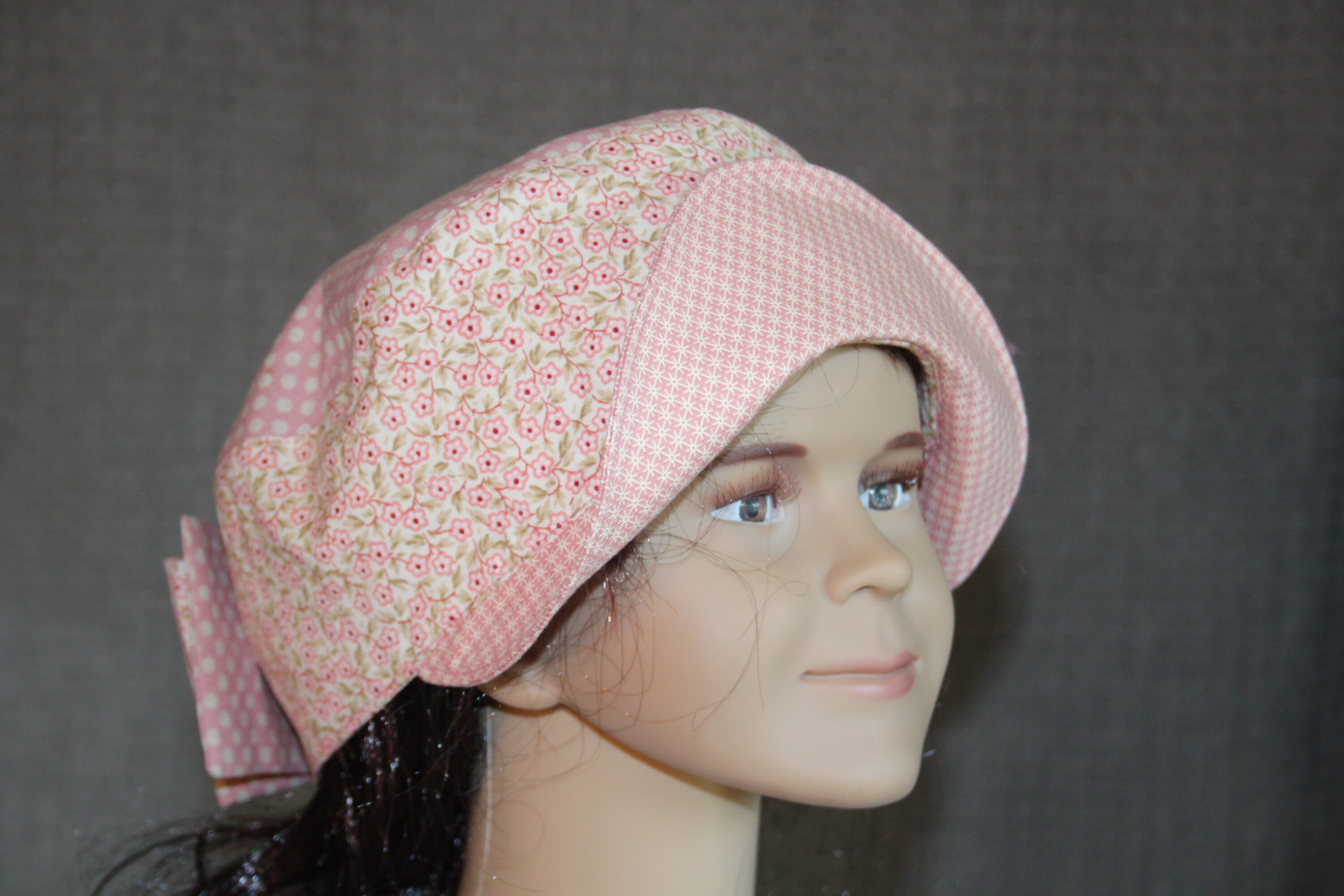
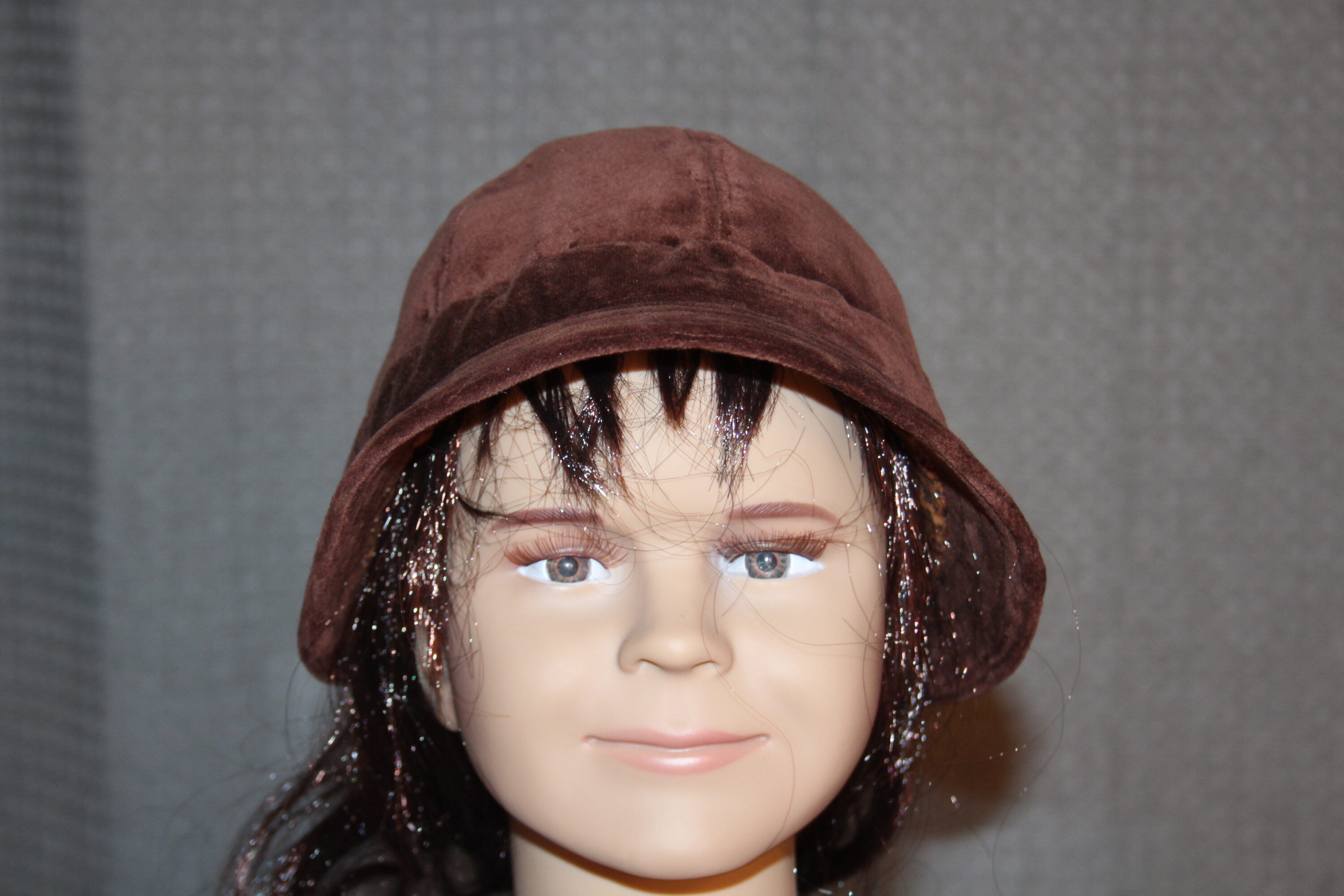
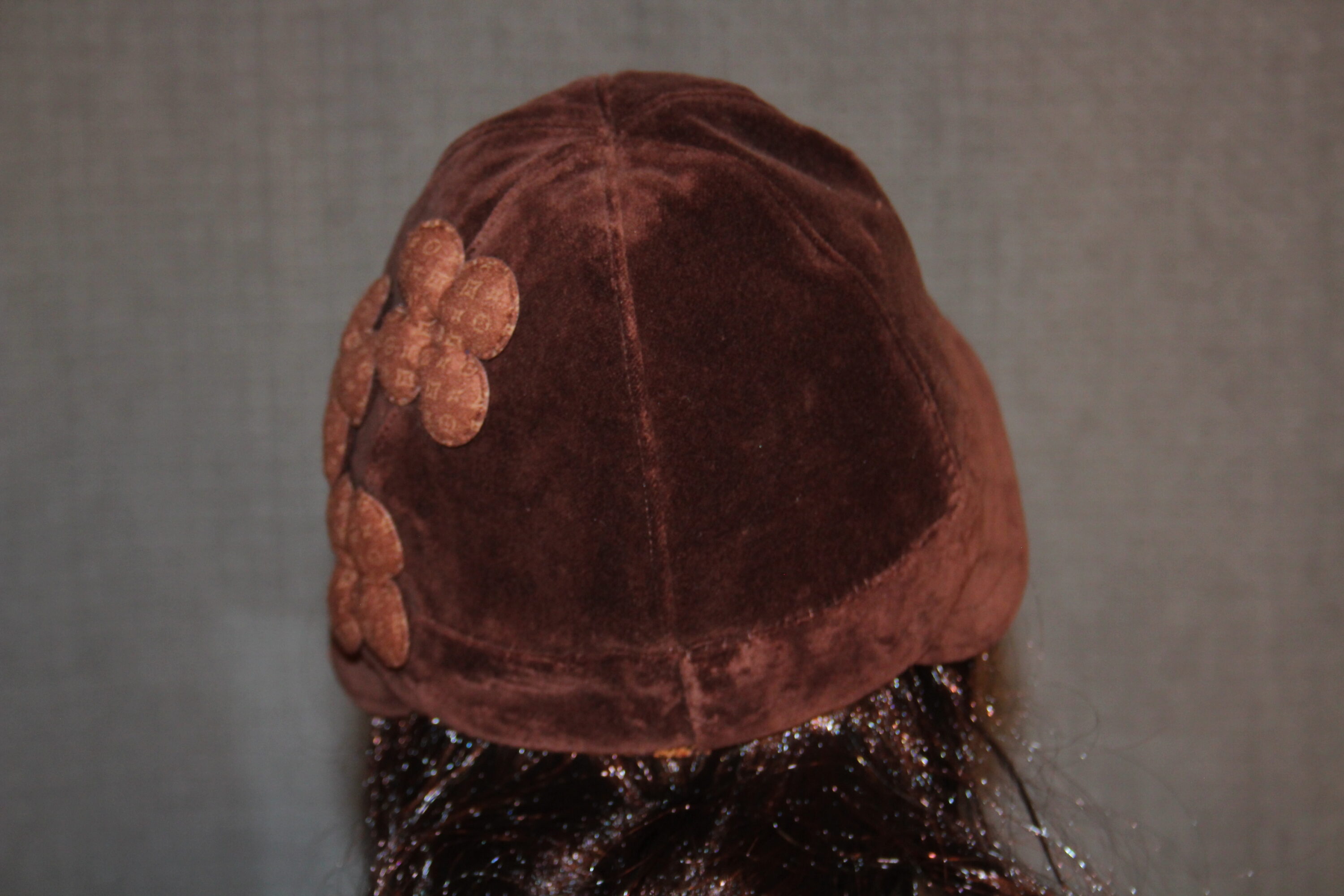
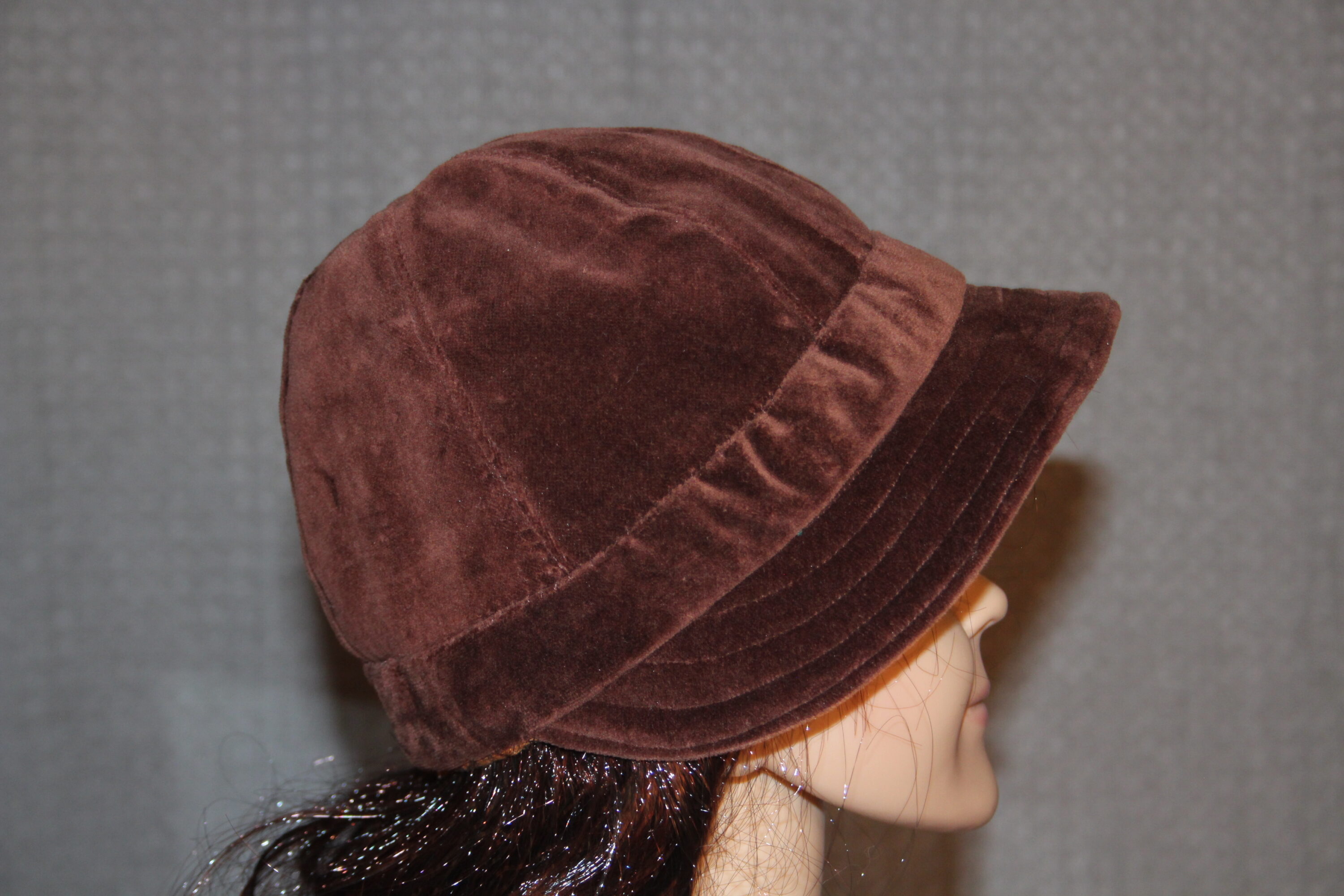
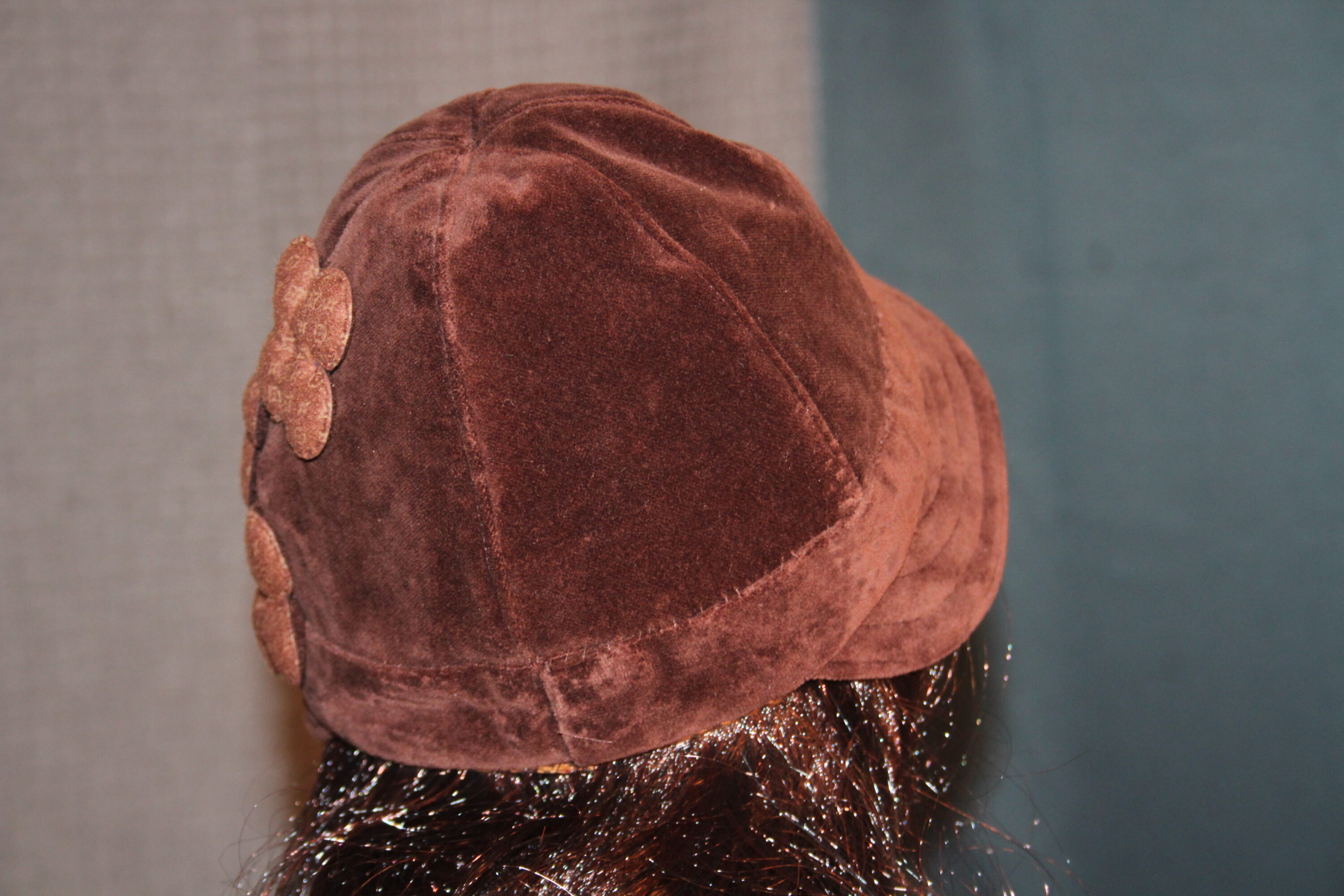
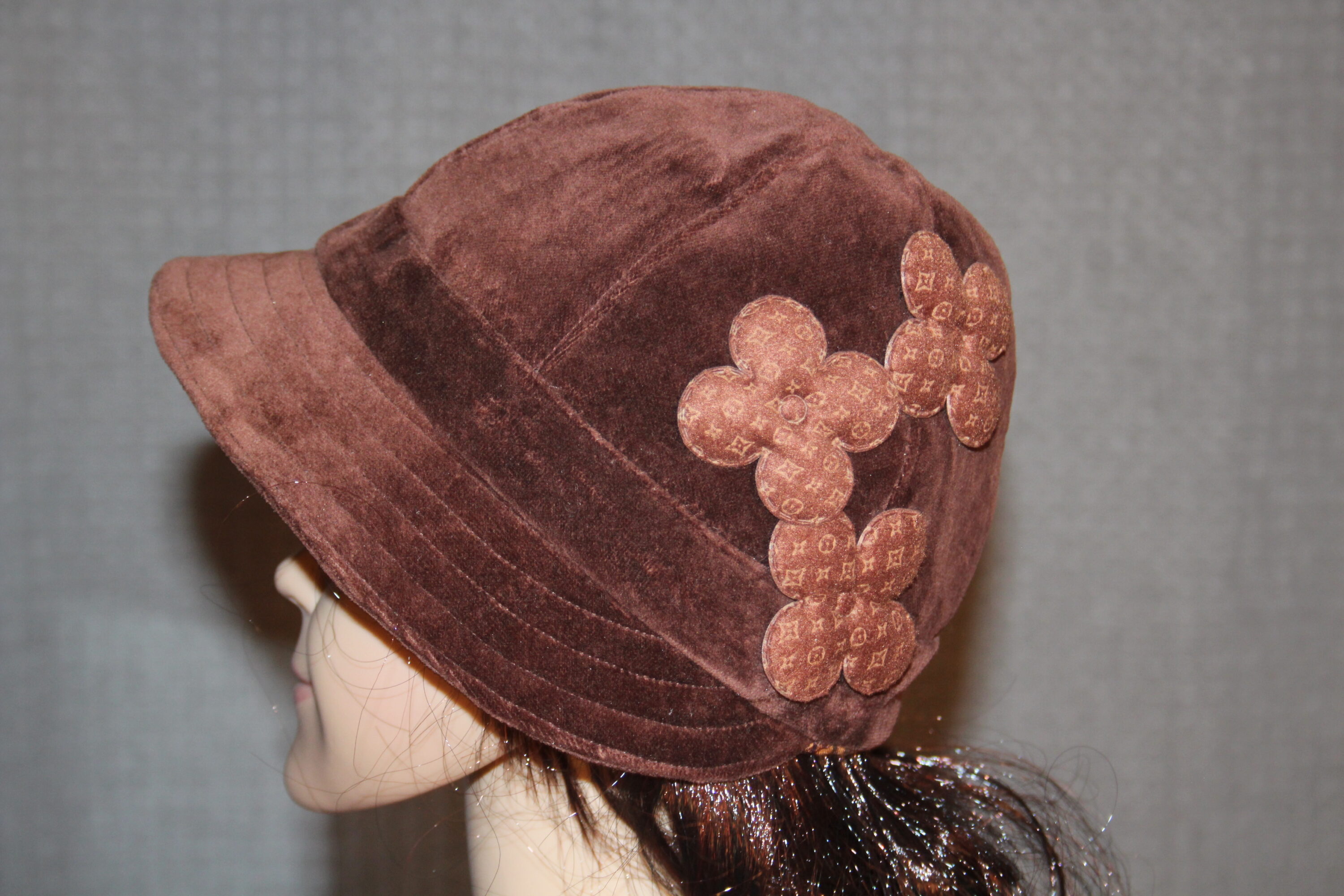


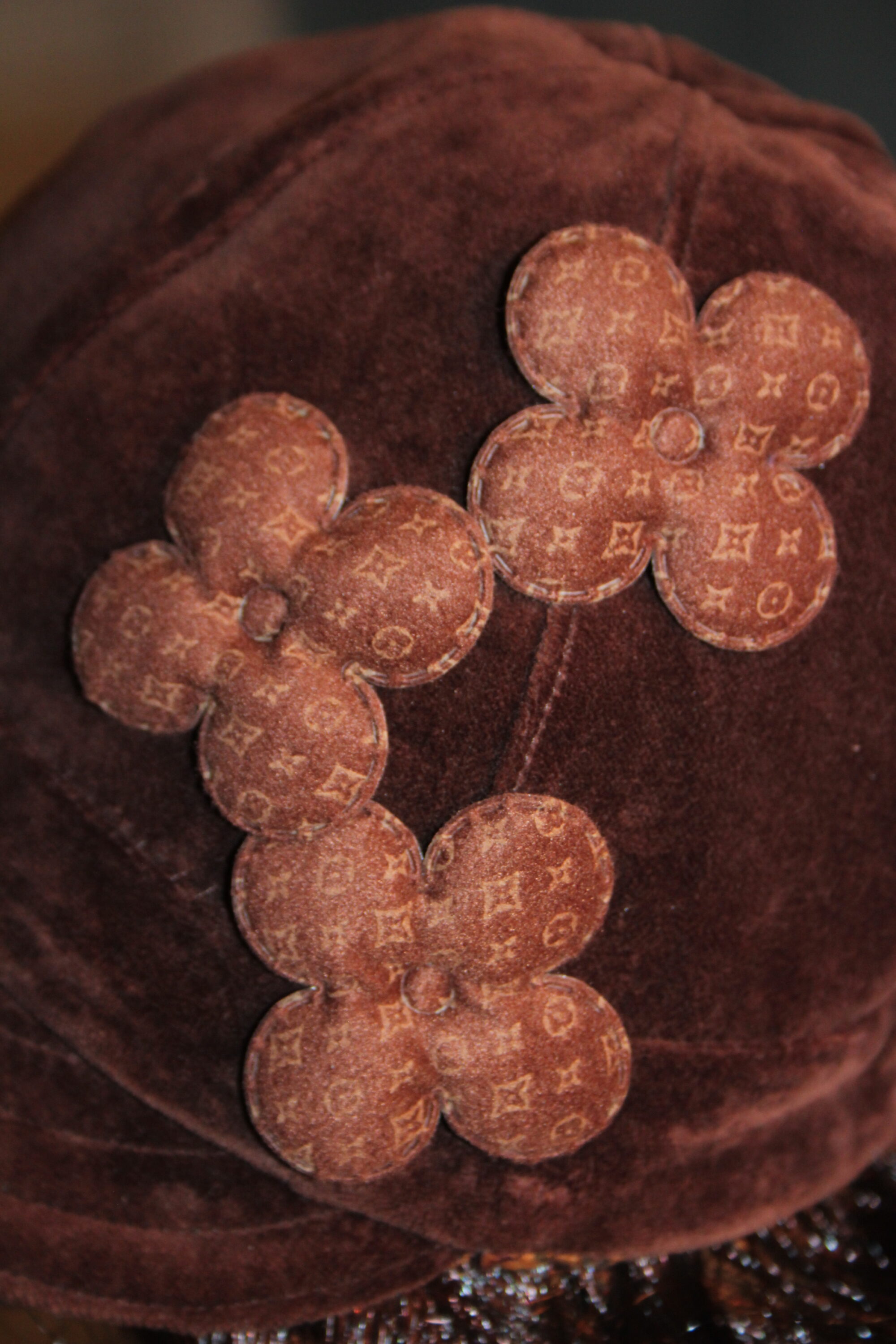

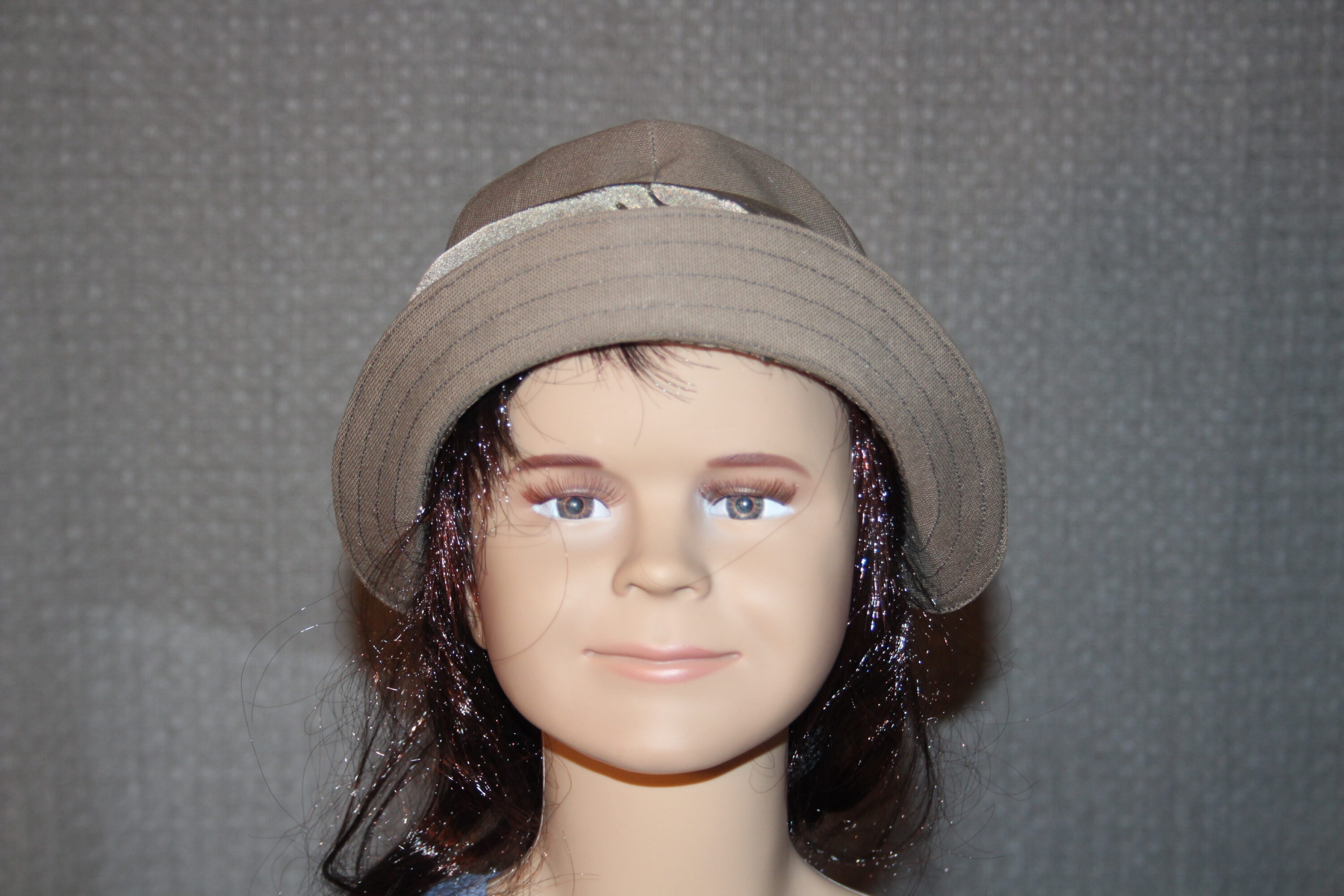
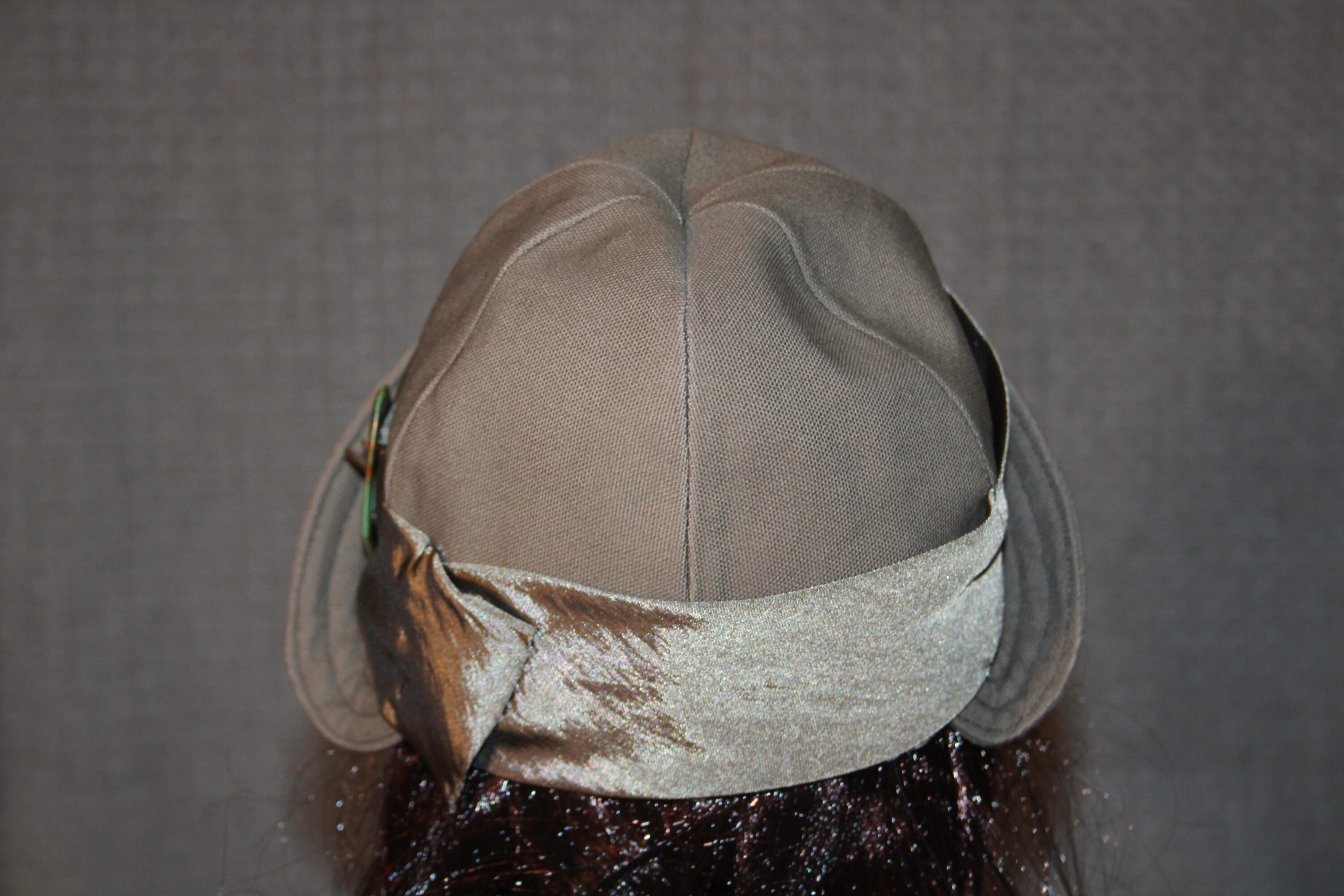
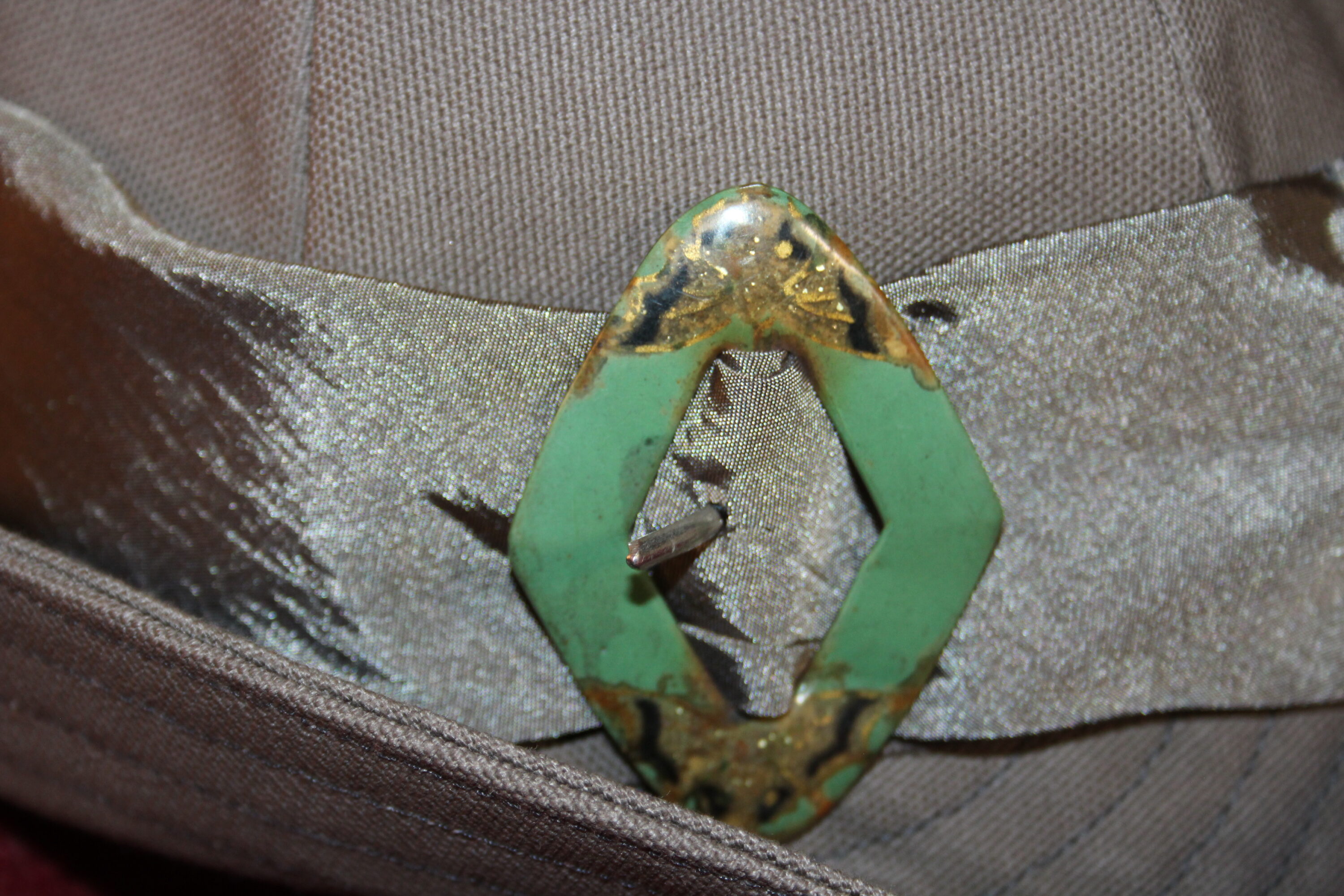
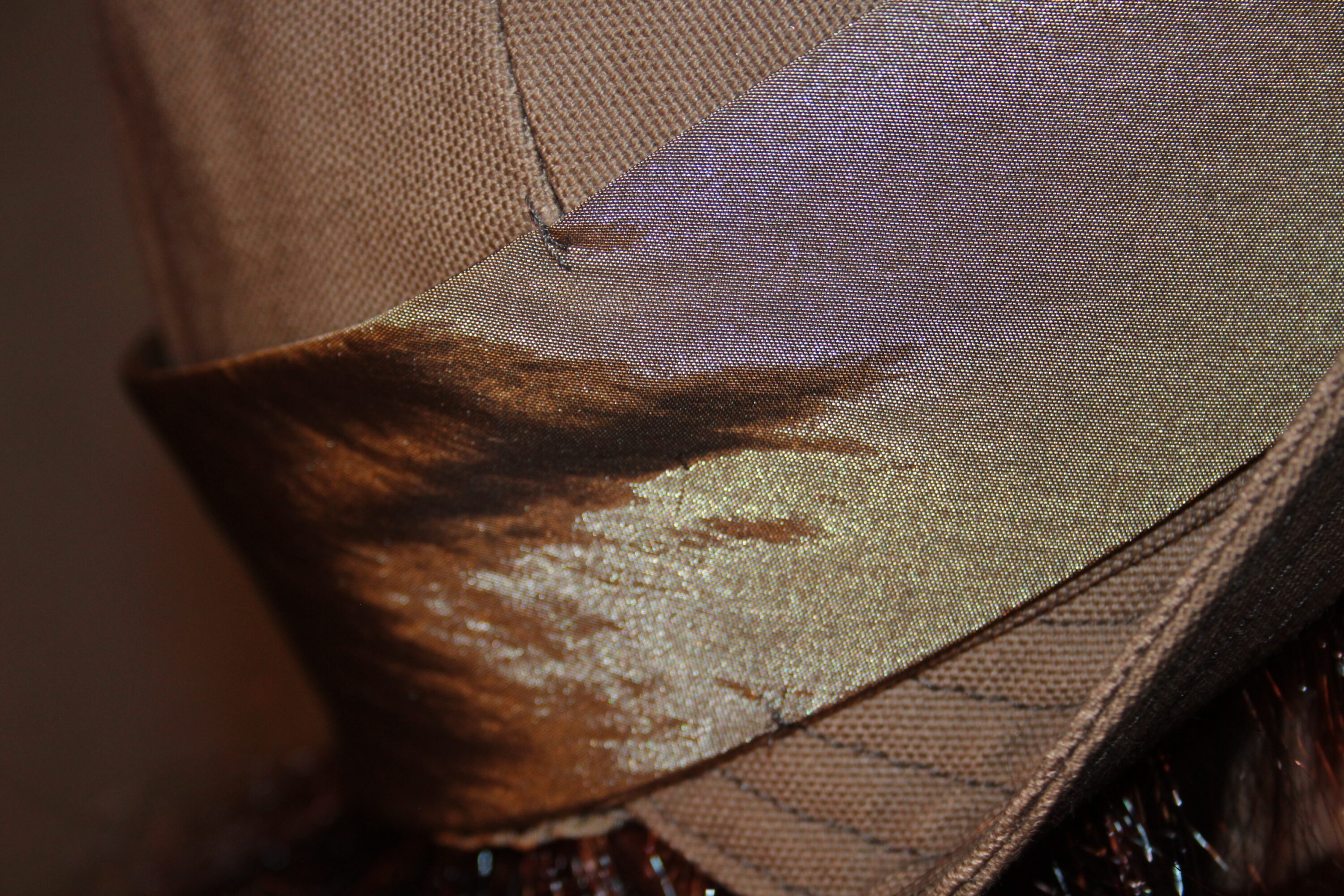
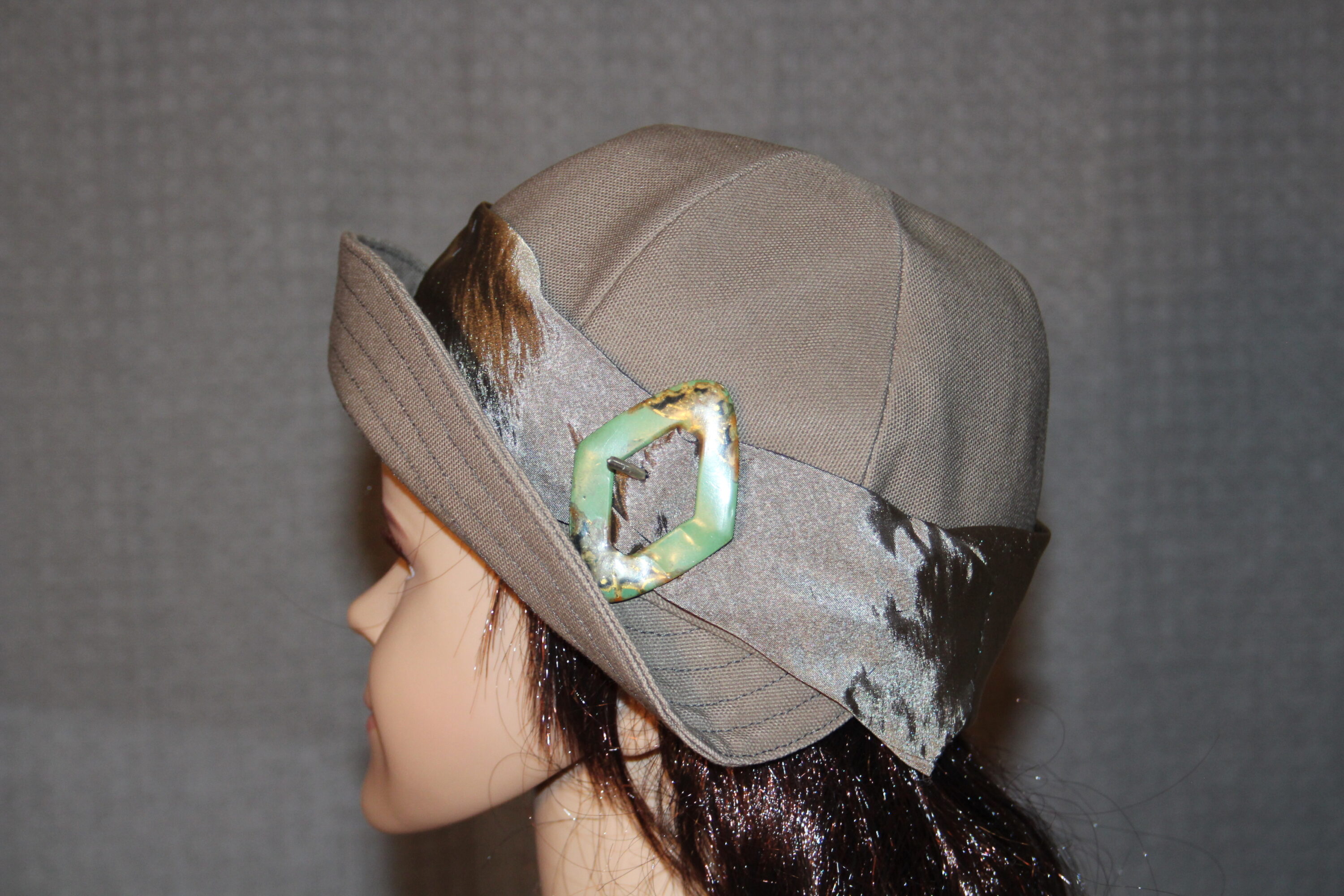
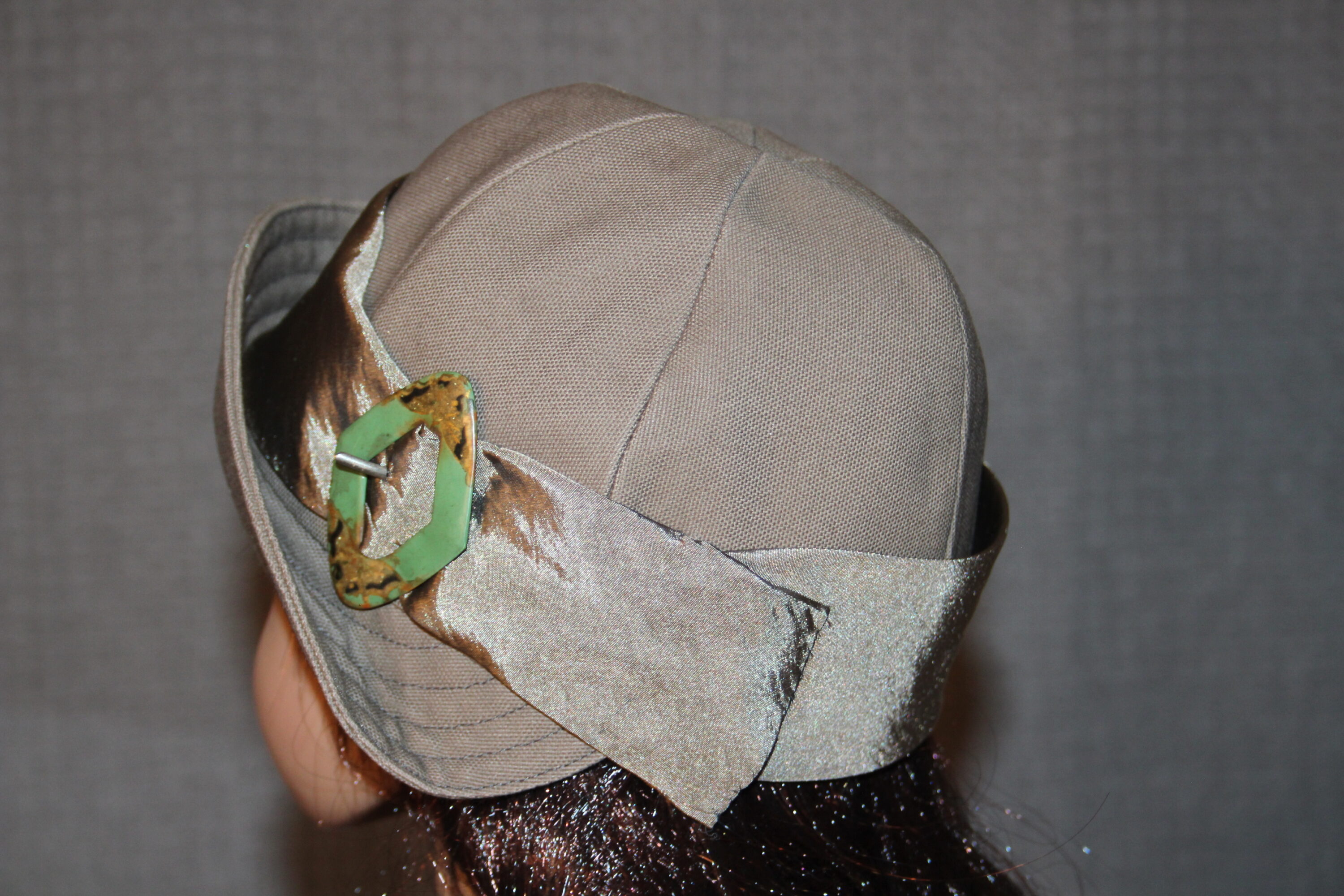
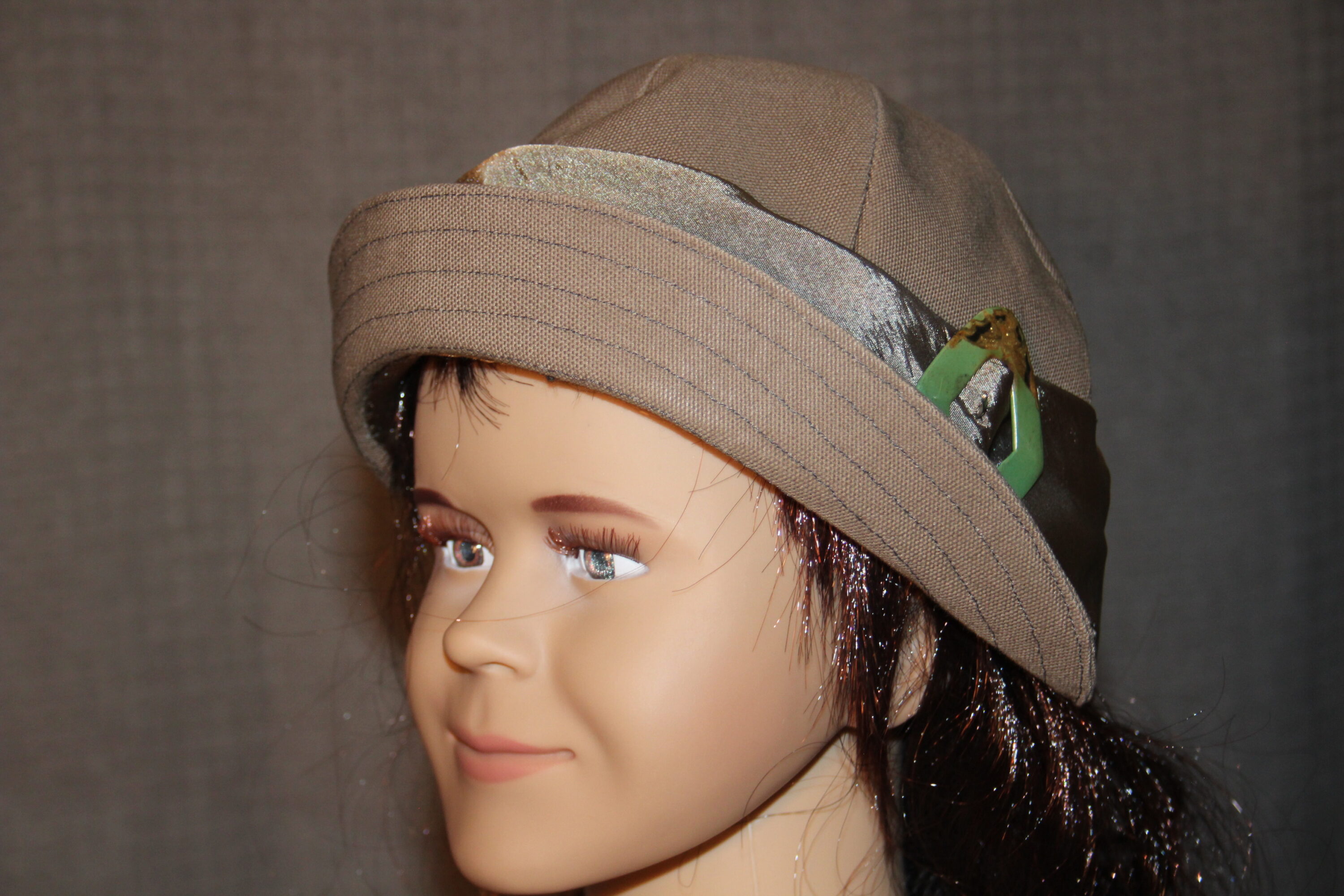
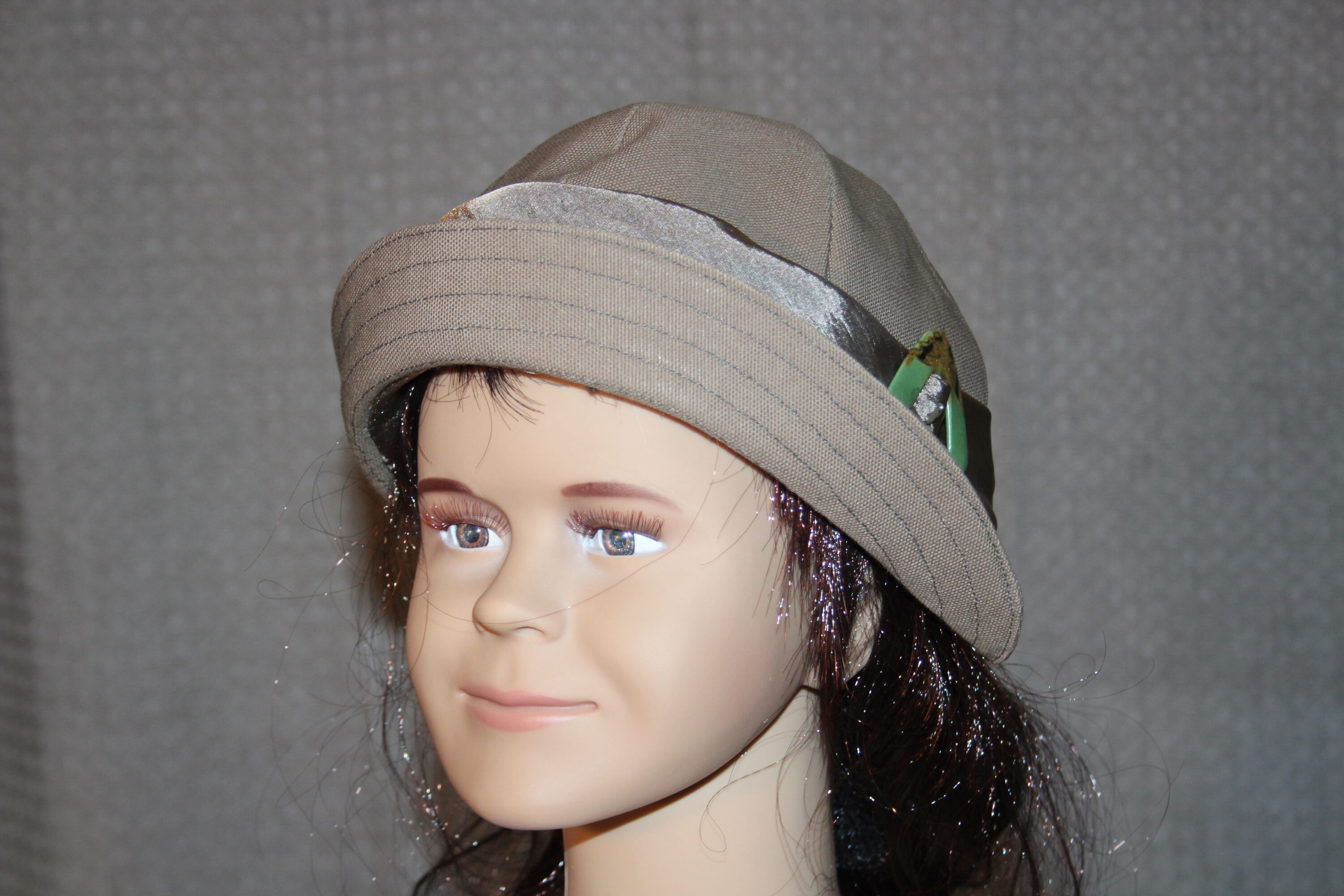
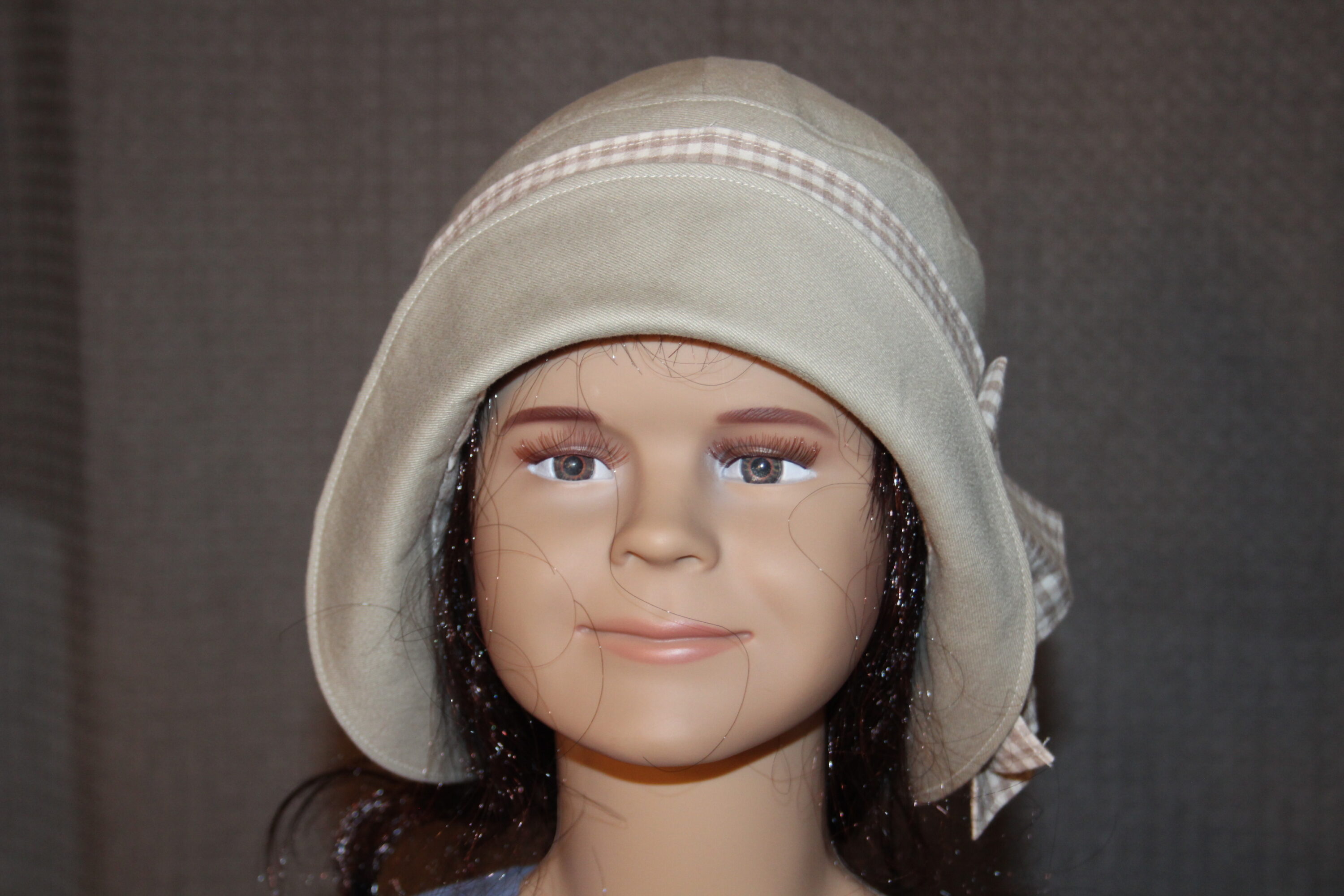
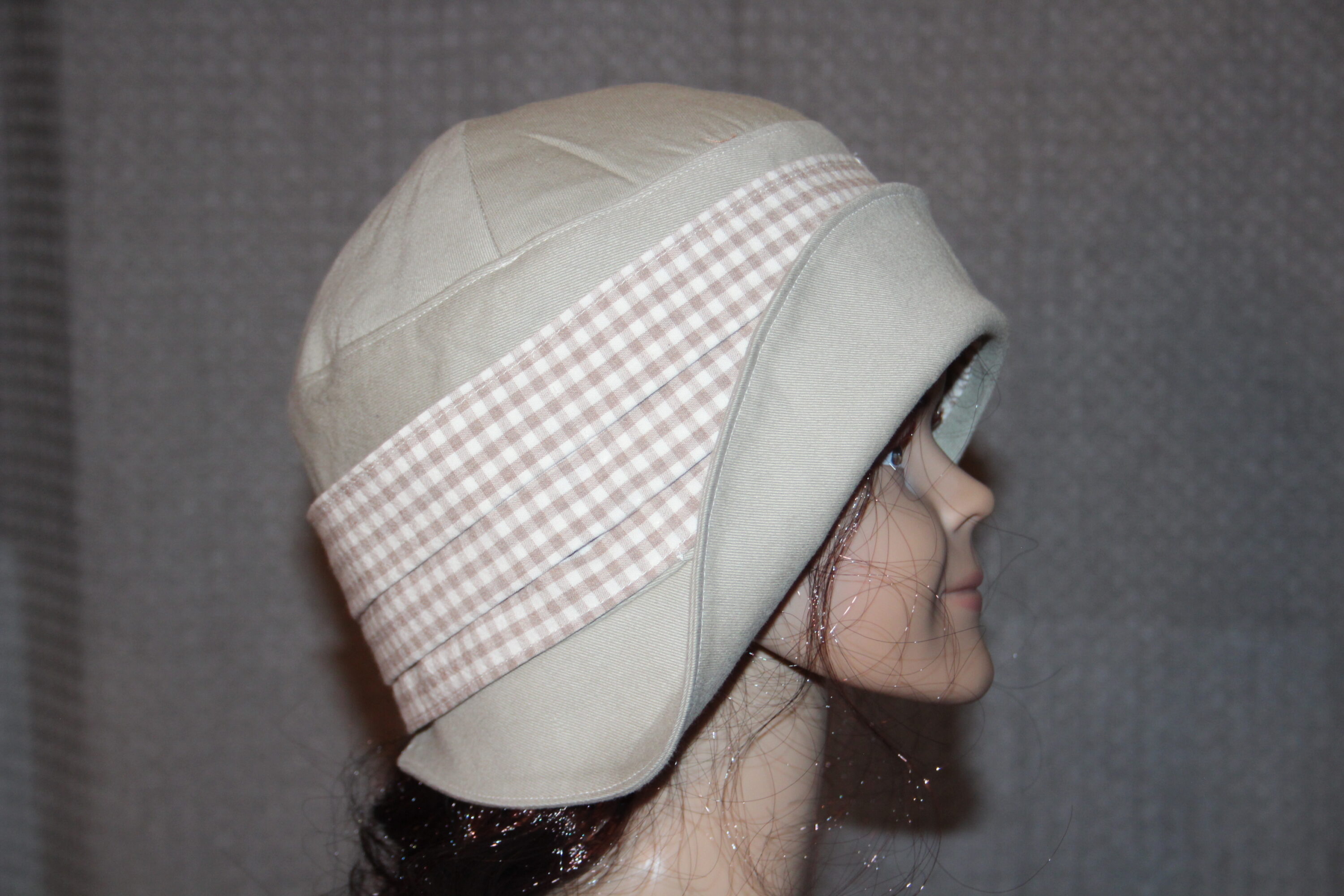
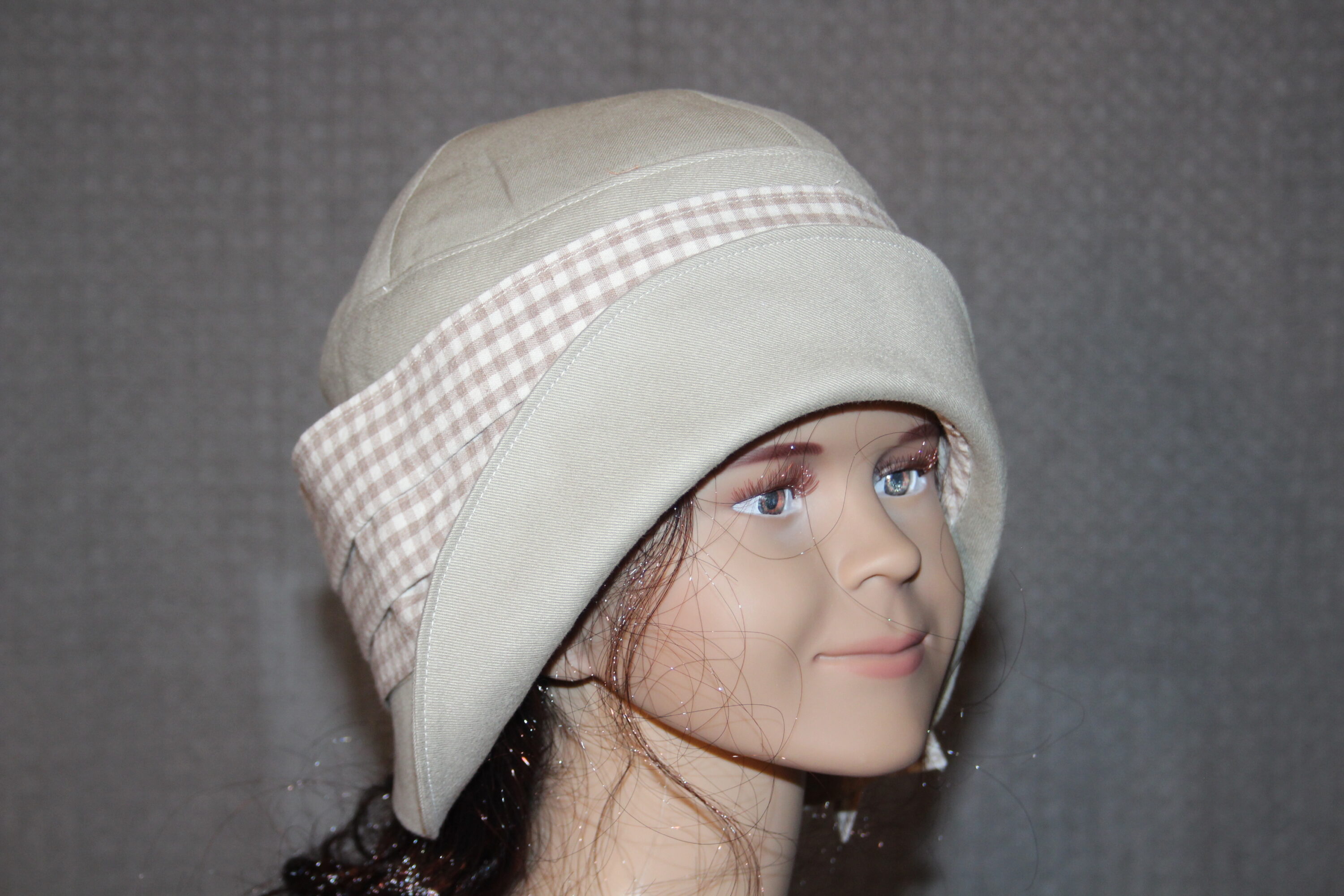

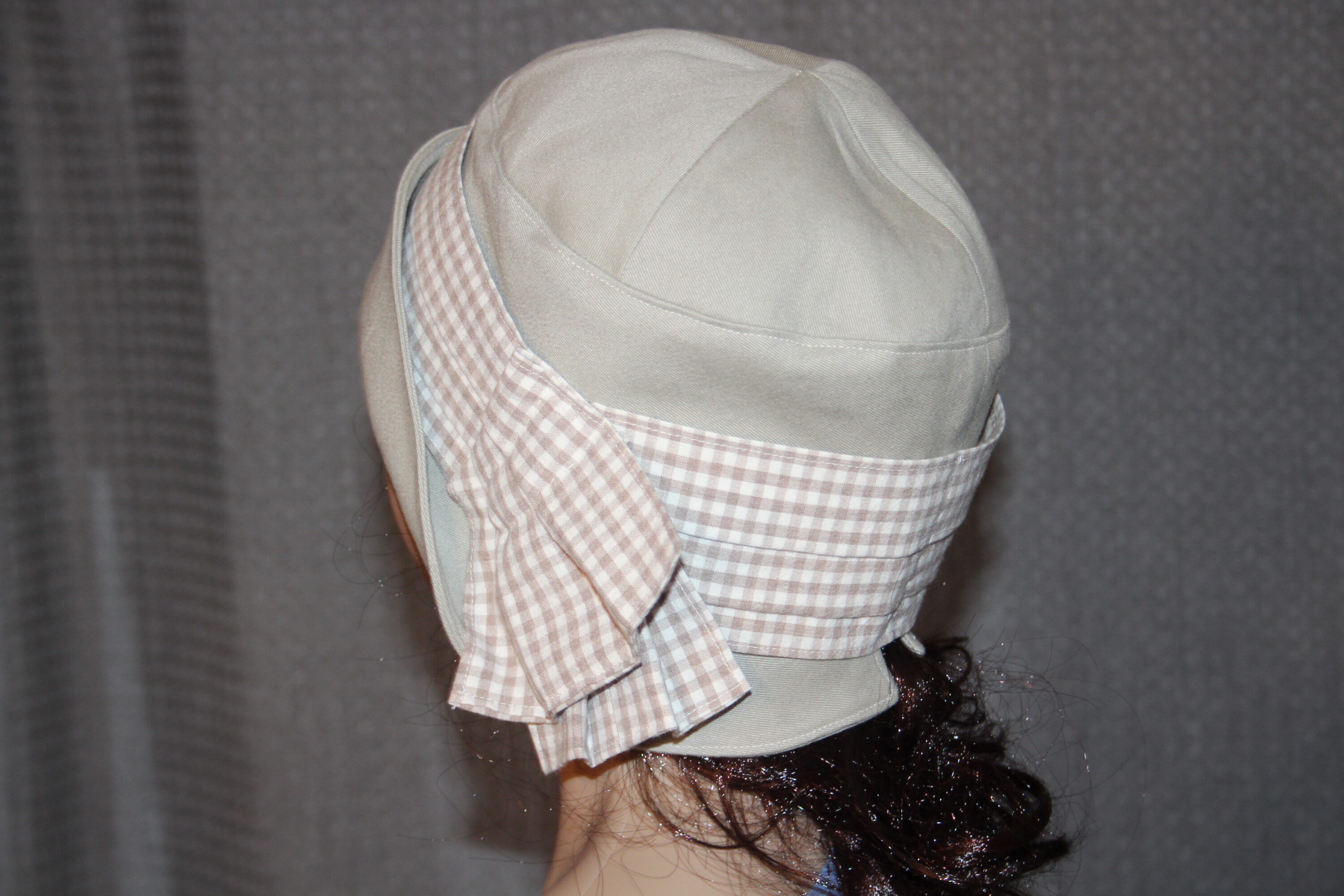
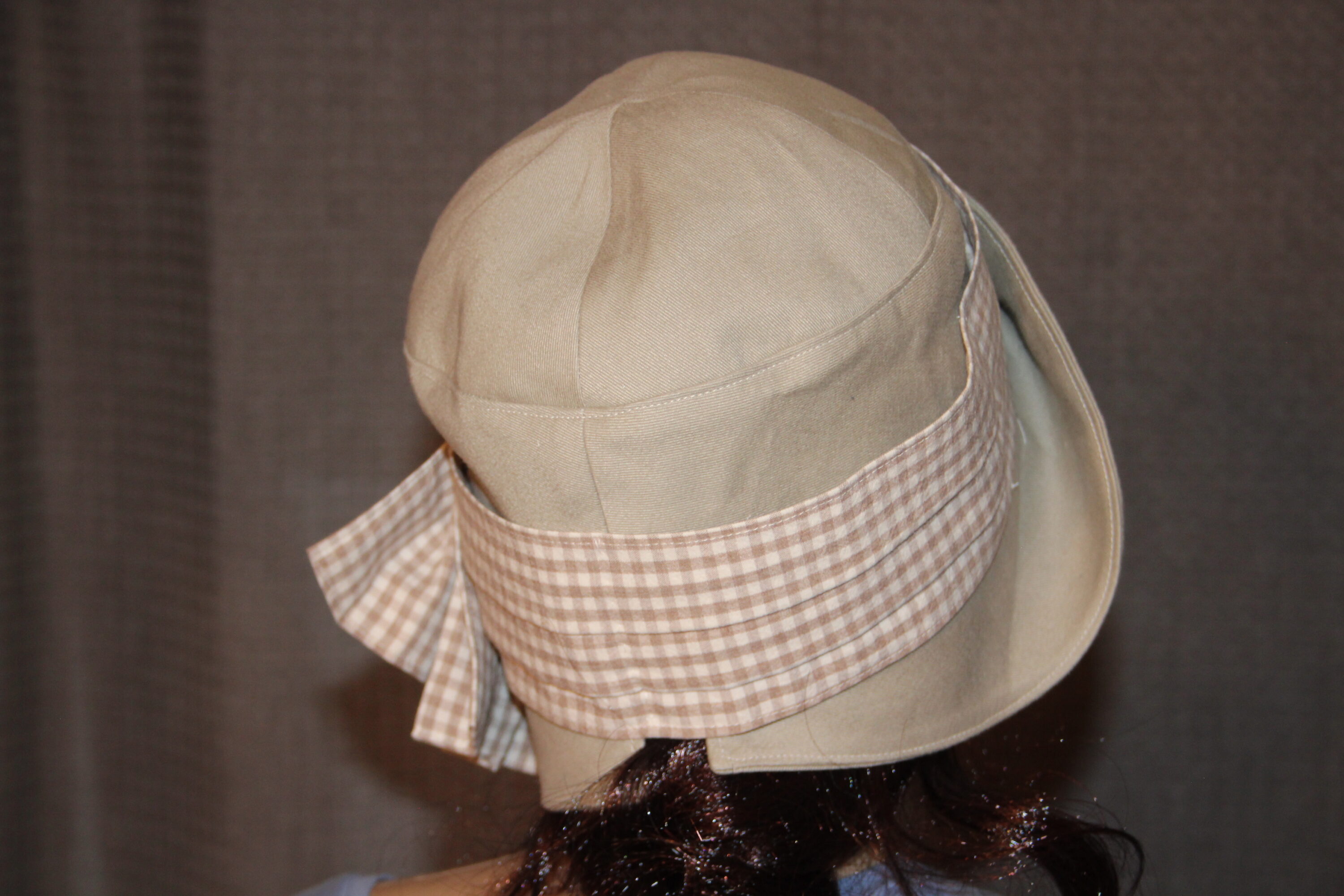
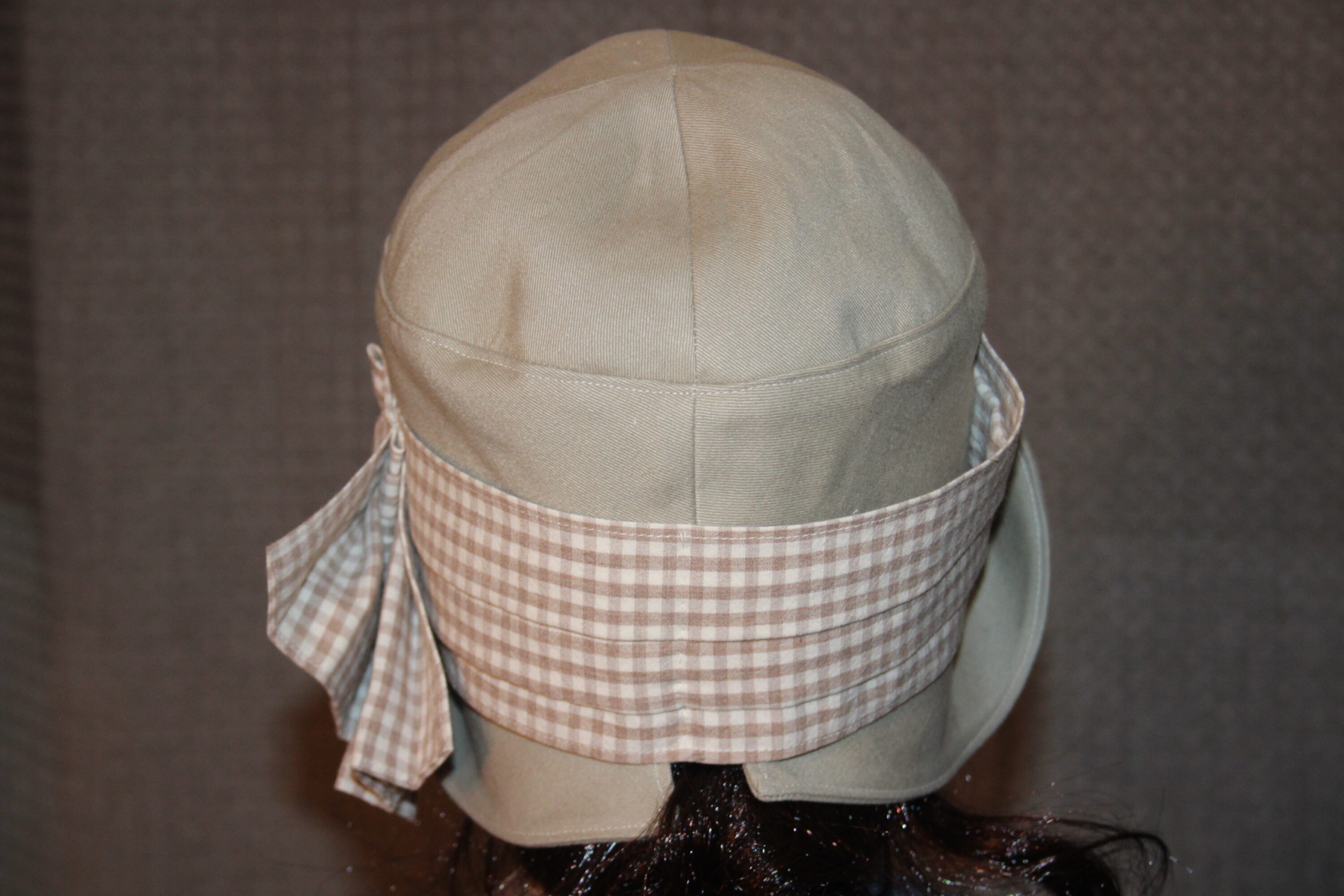
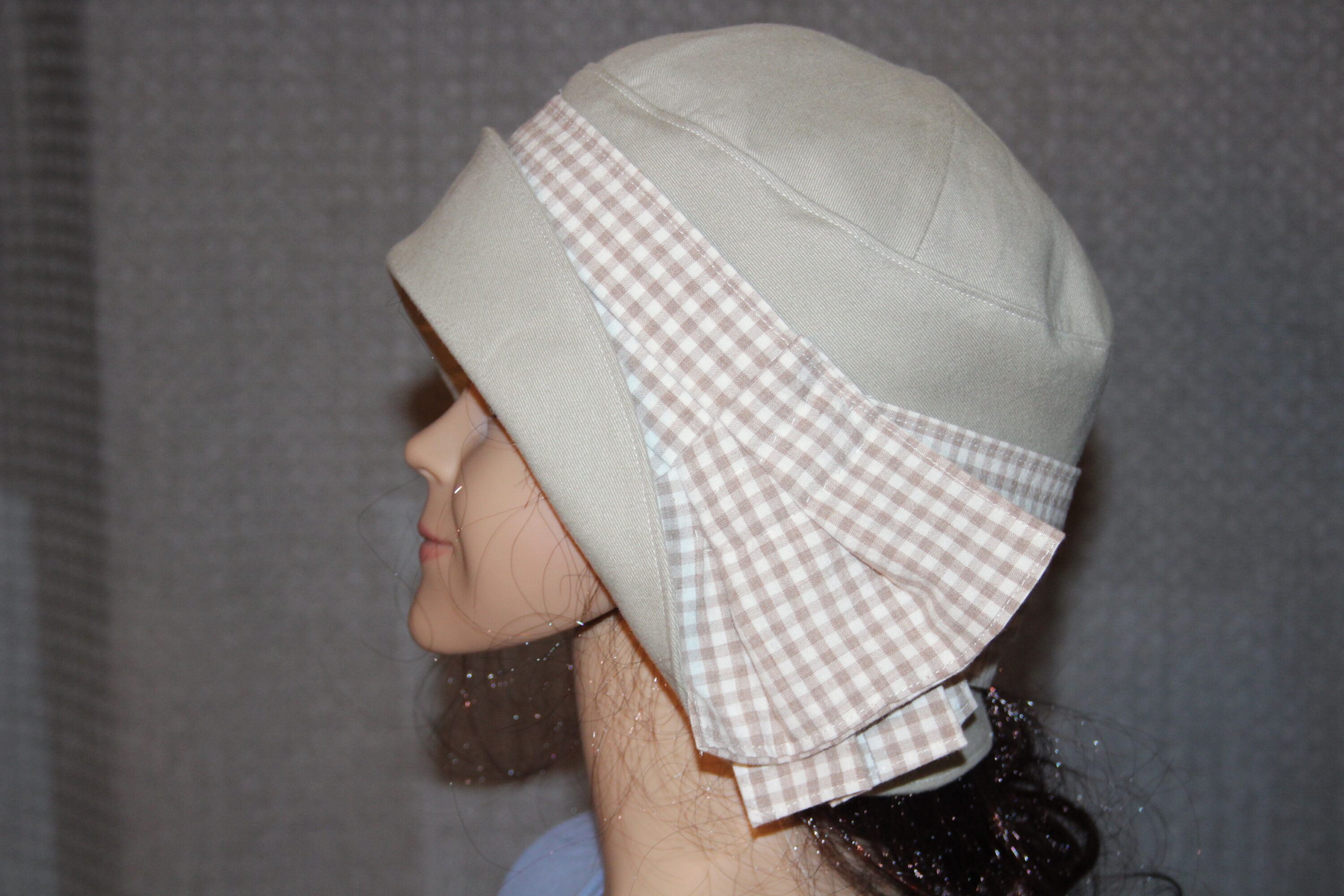
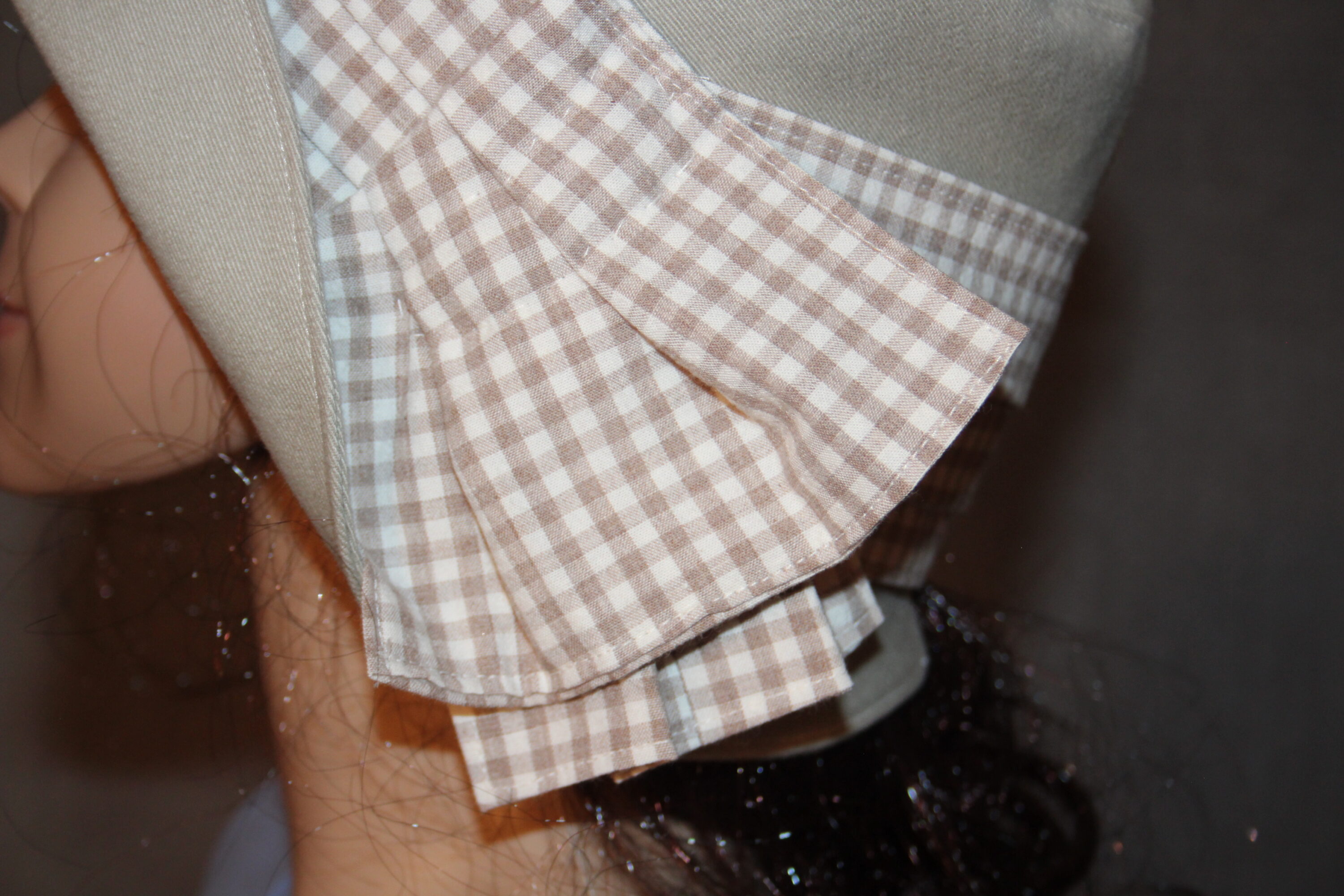
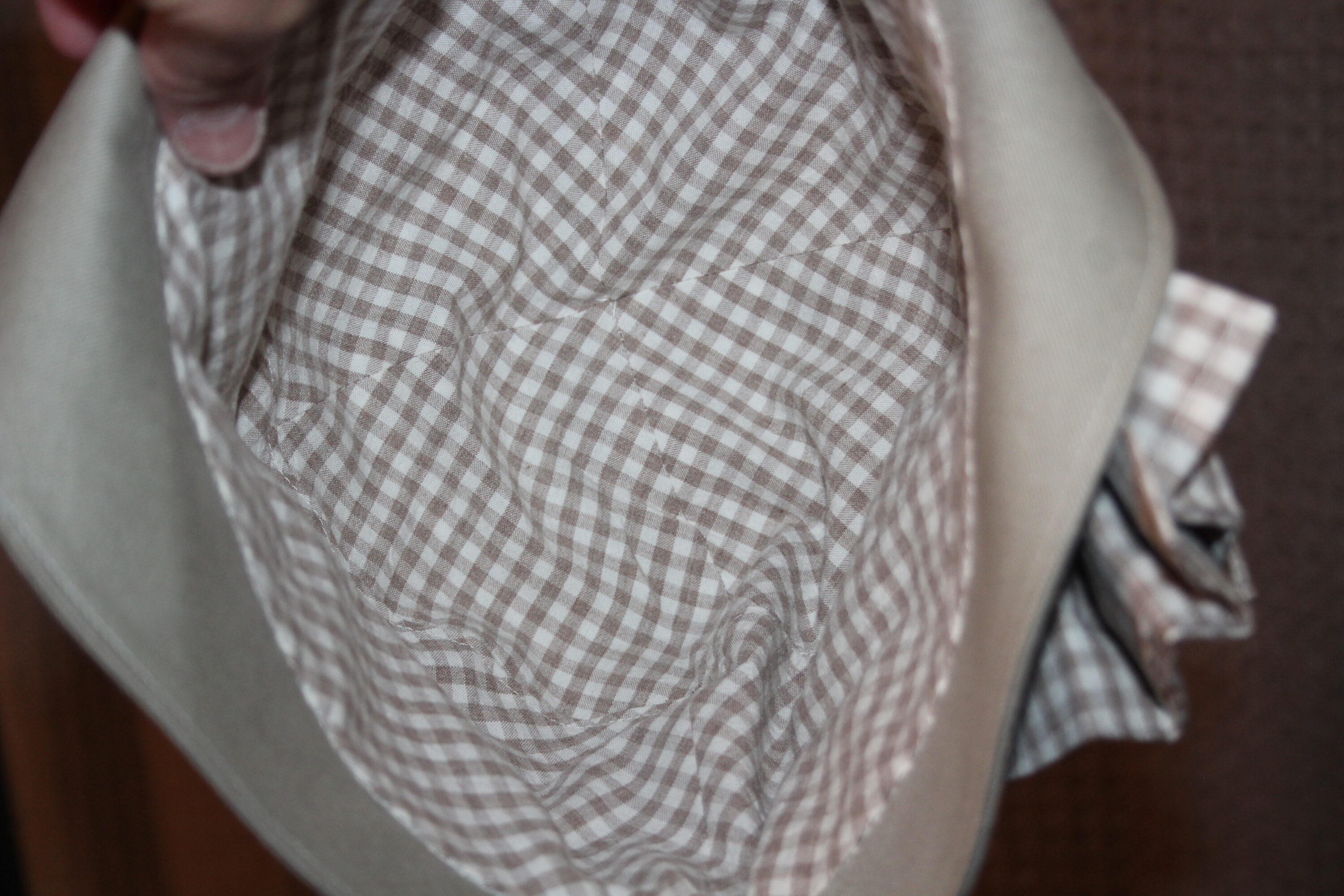
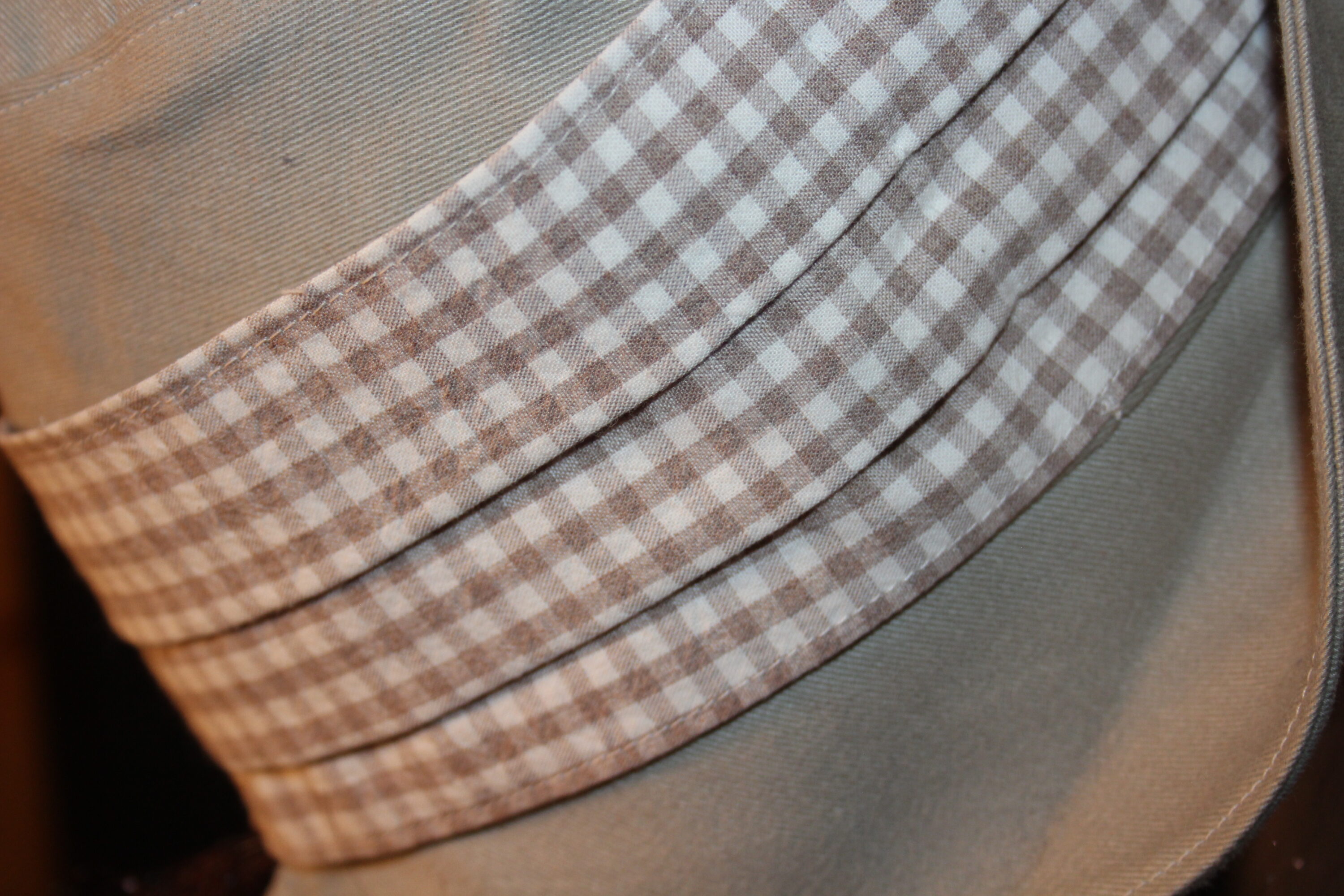
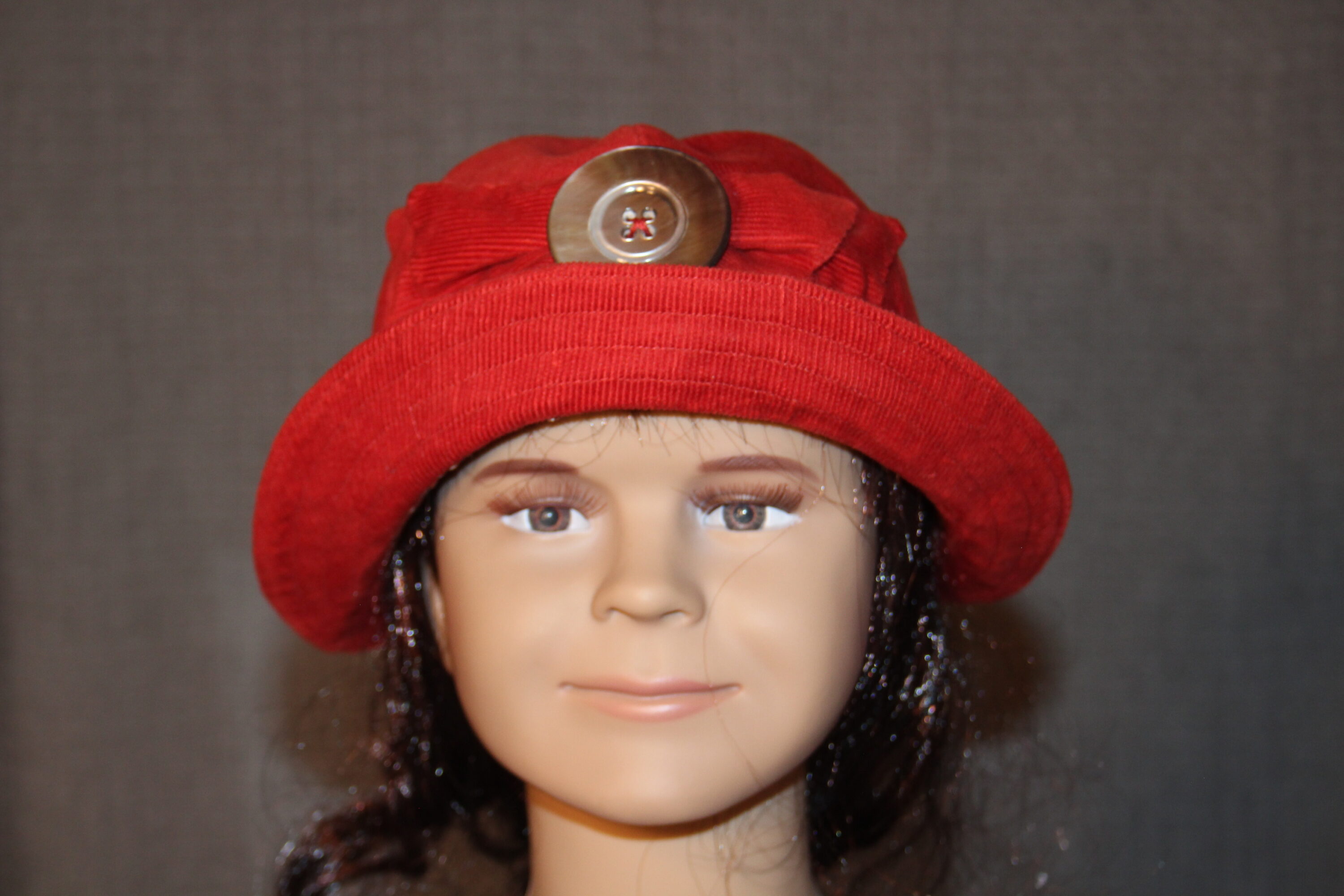
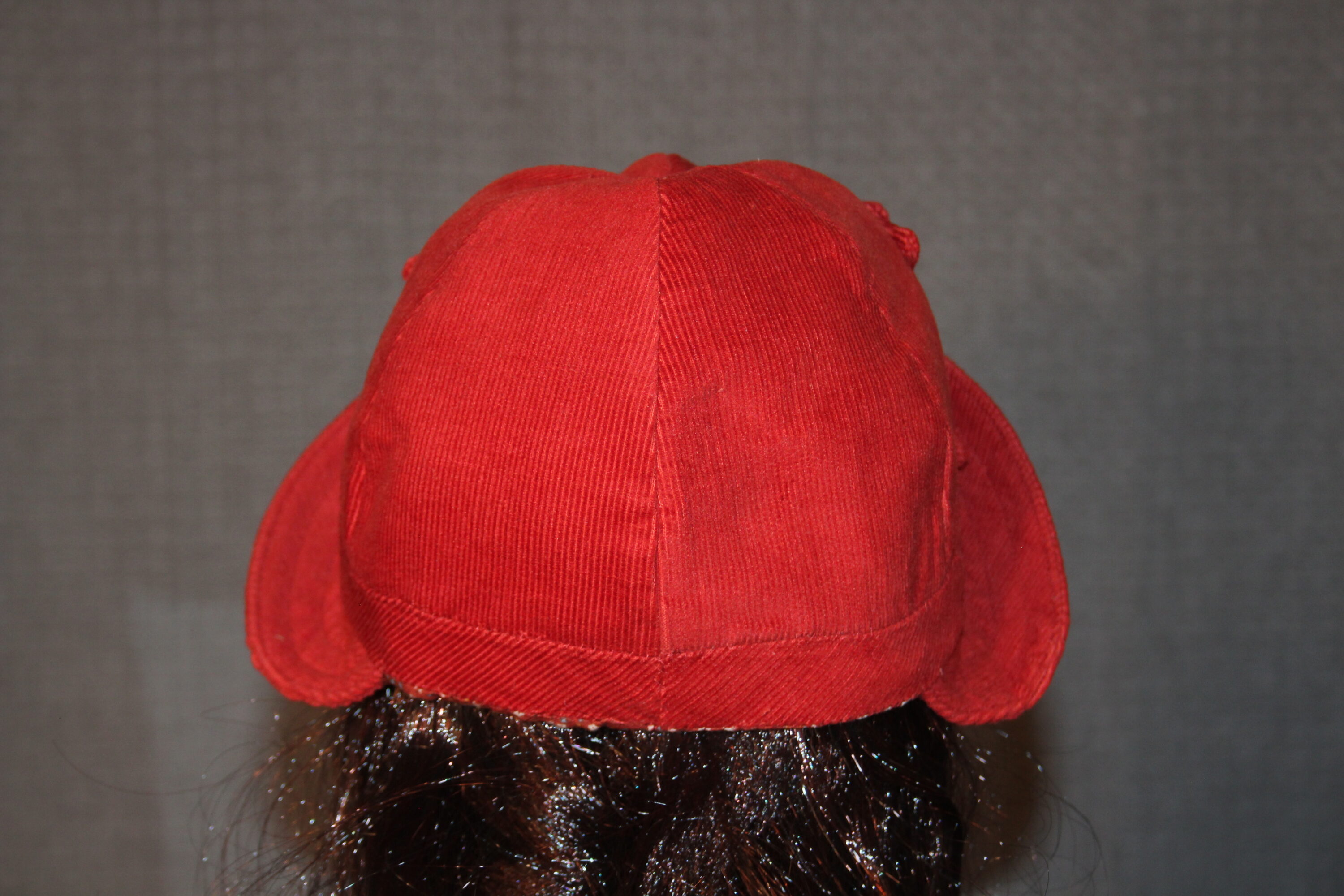

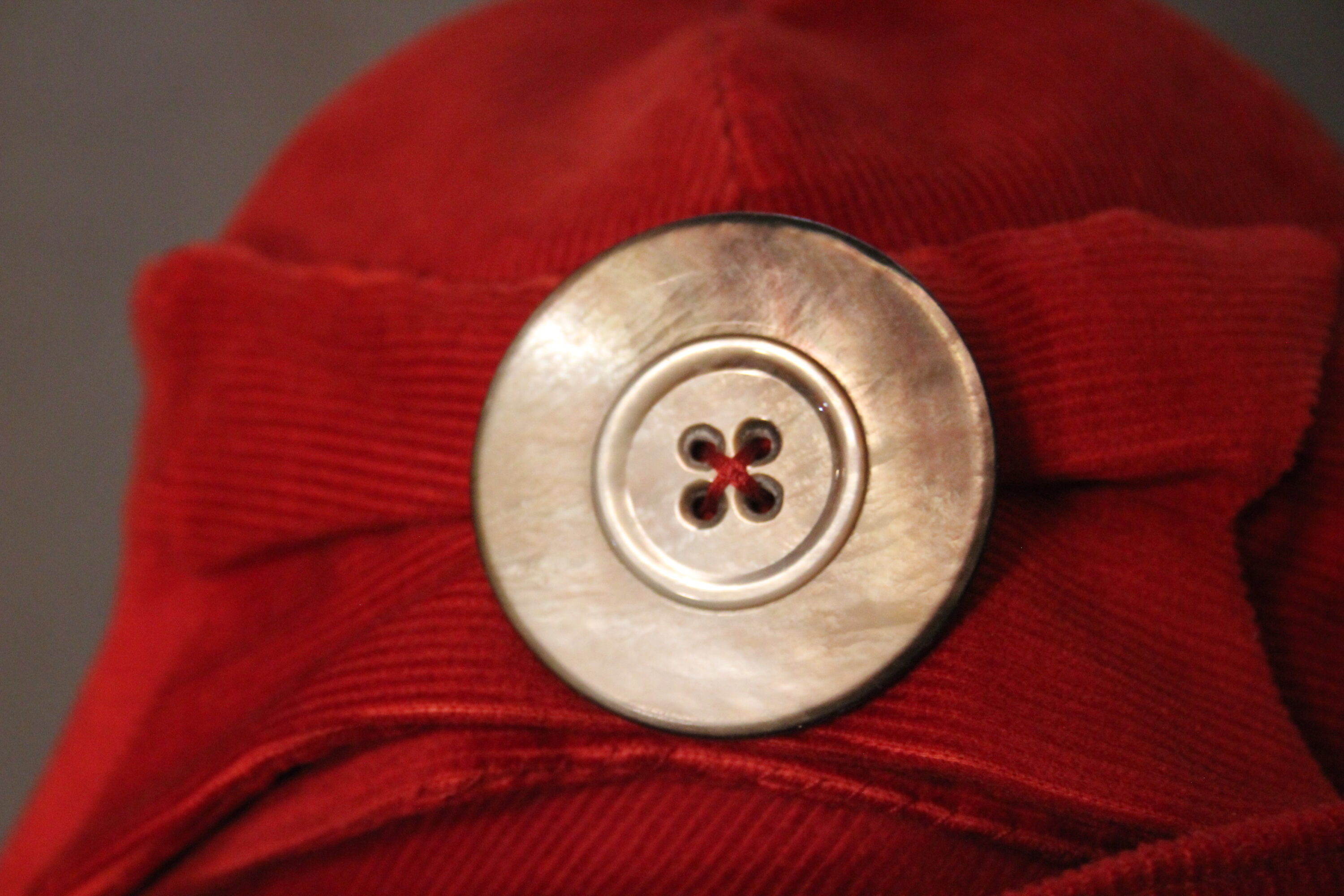
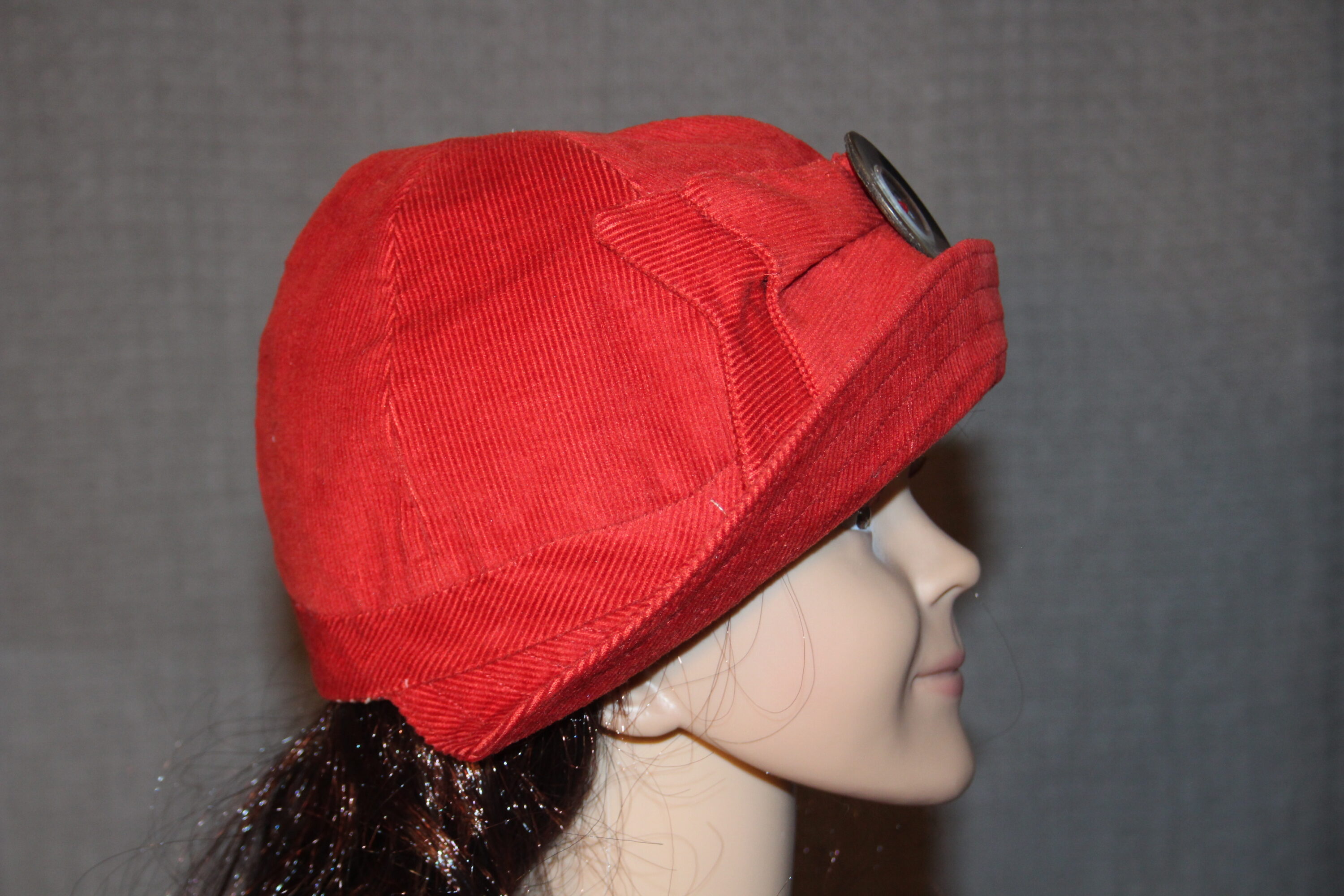
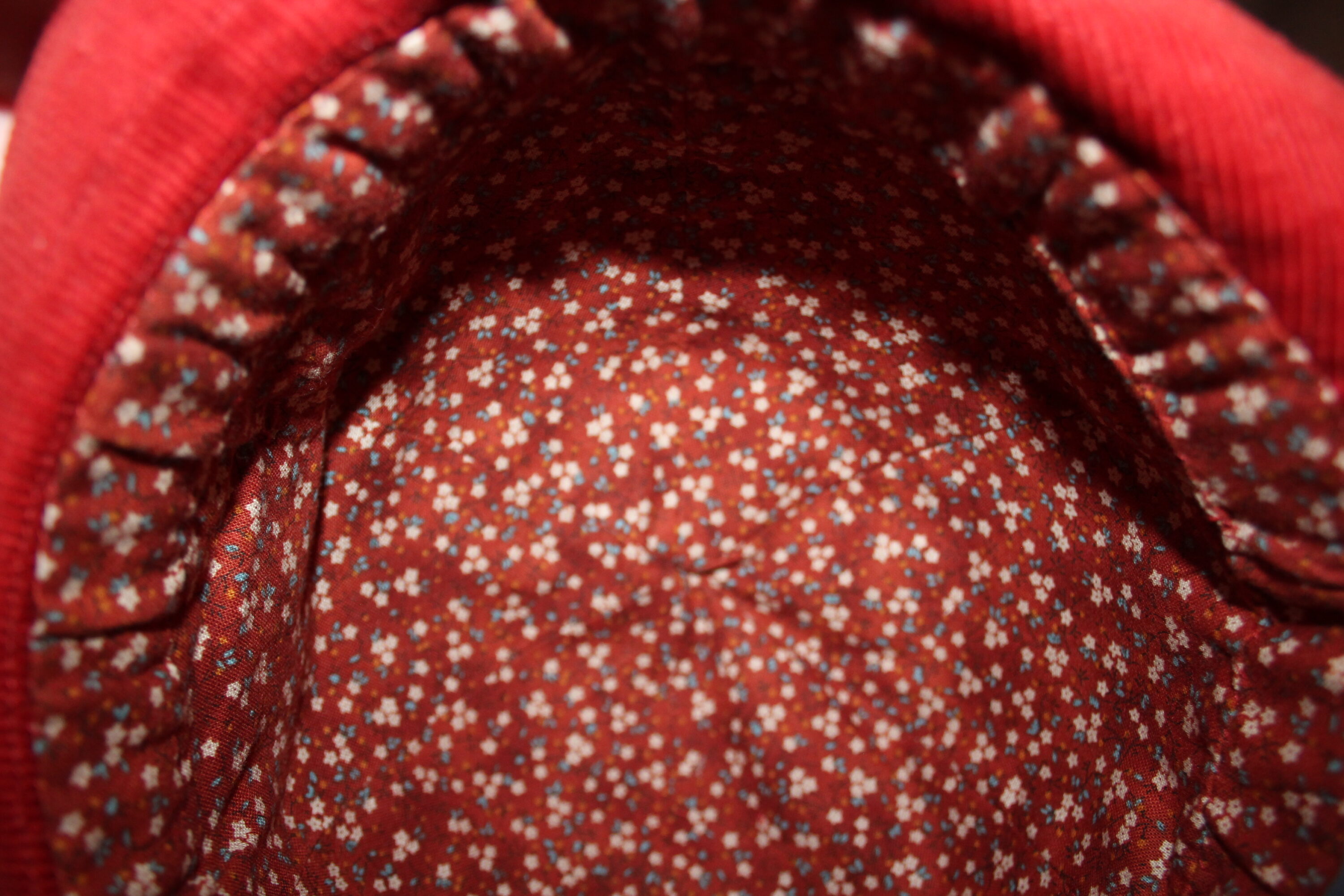
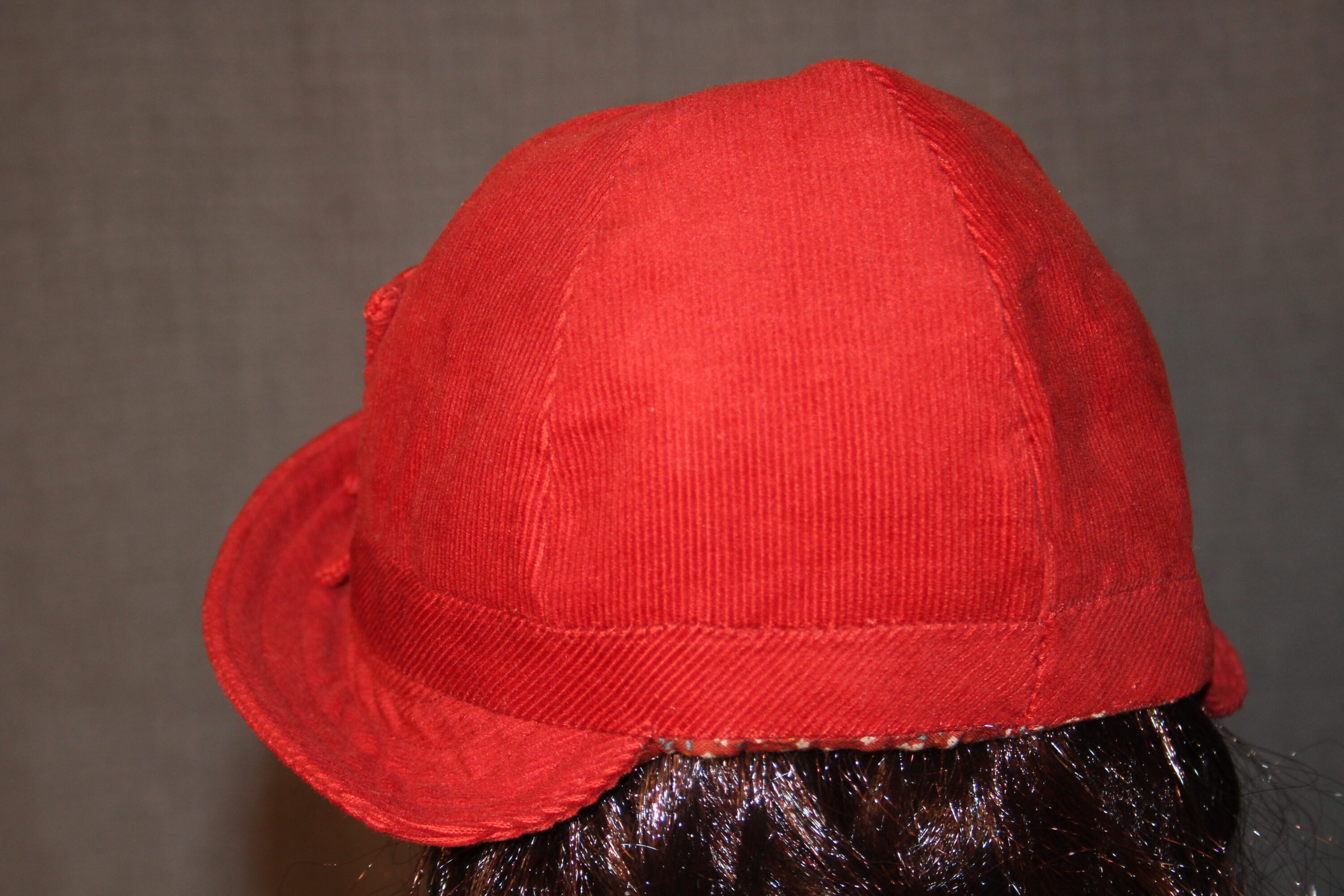
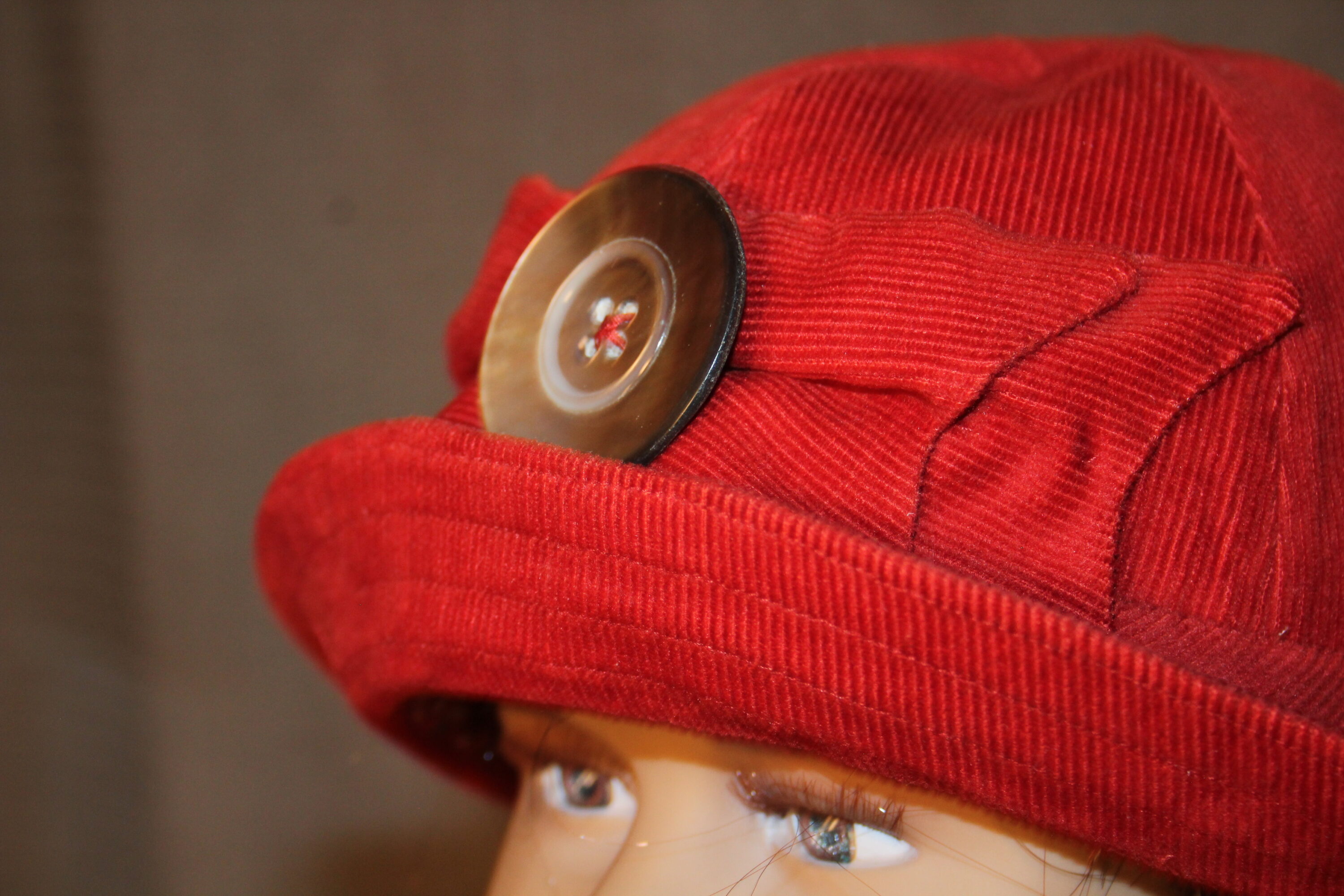
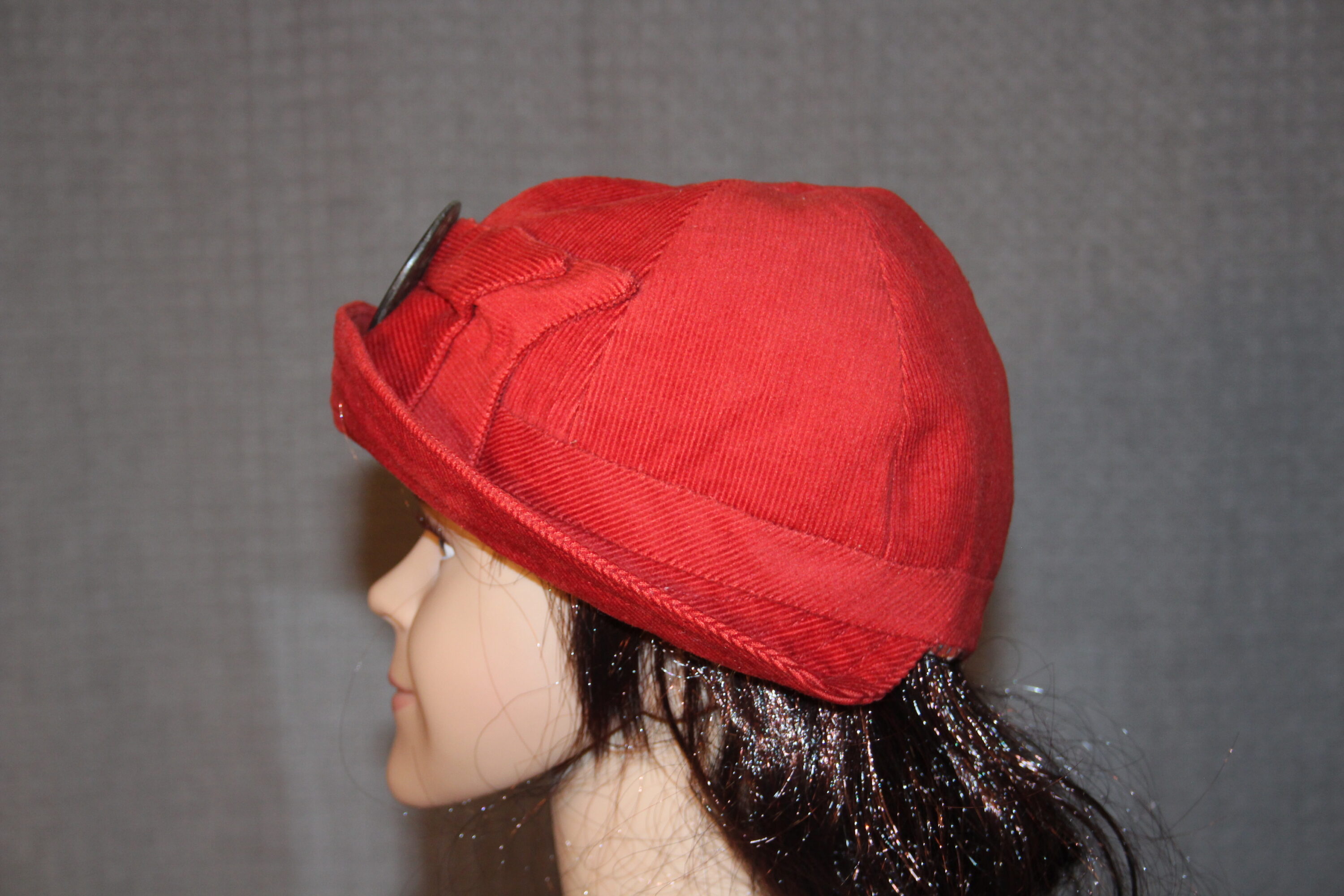
Color Schemes
While still somewhat muted using natural fabrics and colors from nature, the girls’ caps are still brighter and more colorful than the newsboy caps: (photos of knit and sewn cloche hats in a pile)
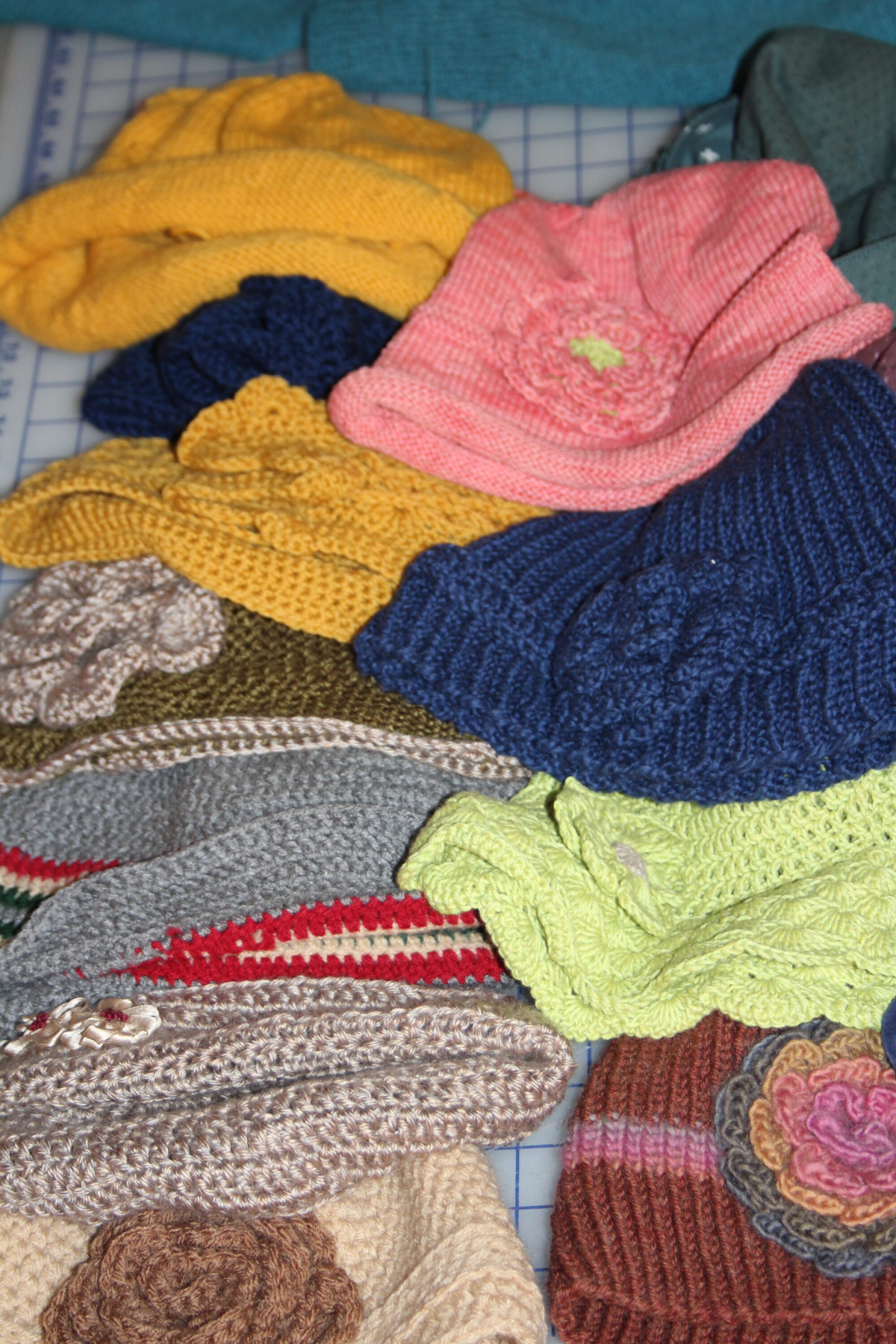
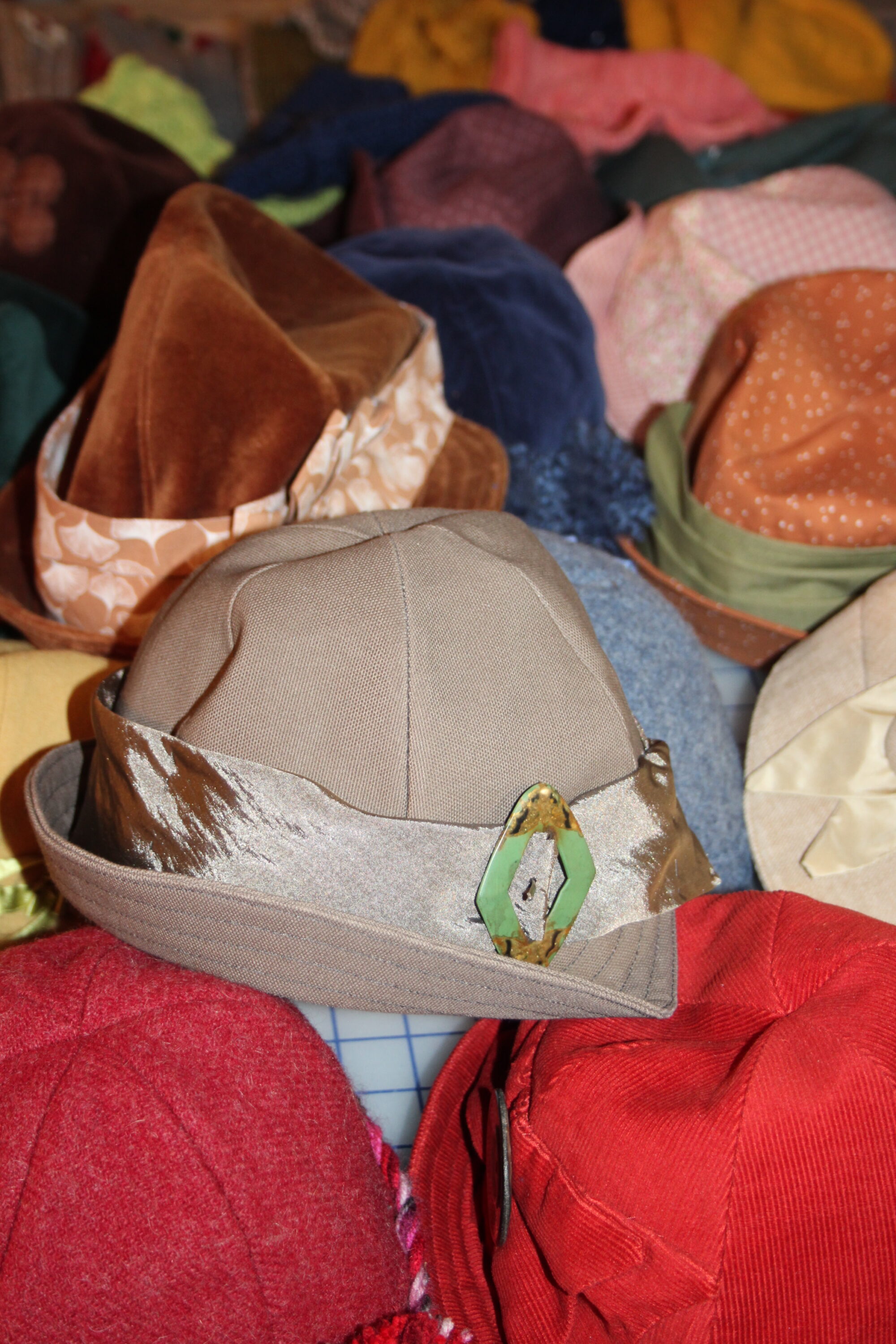
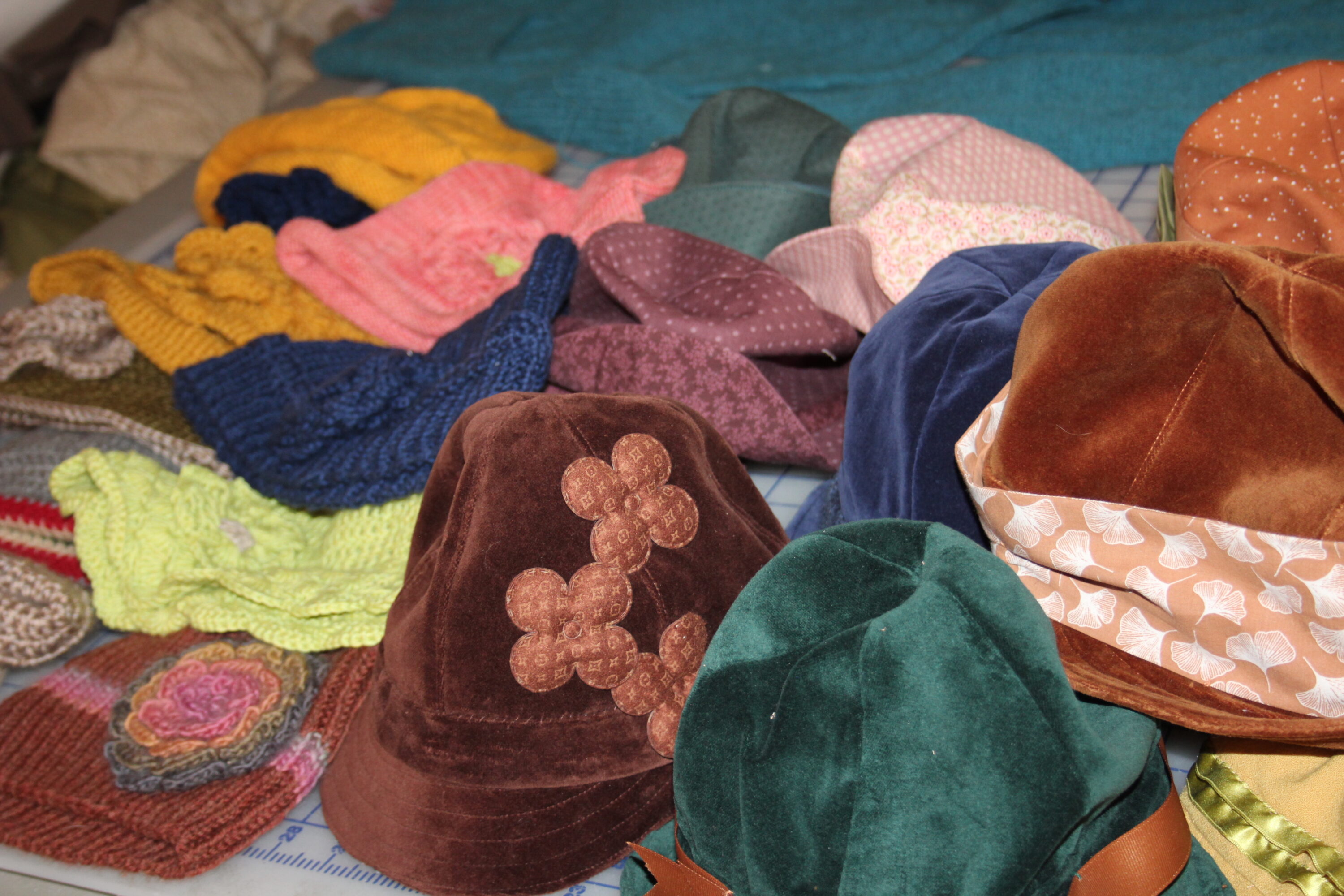
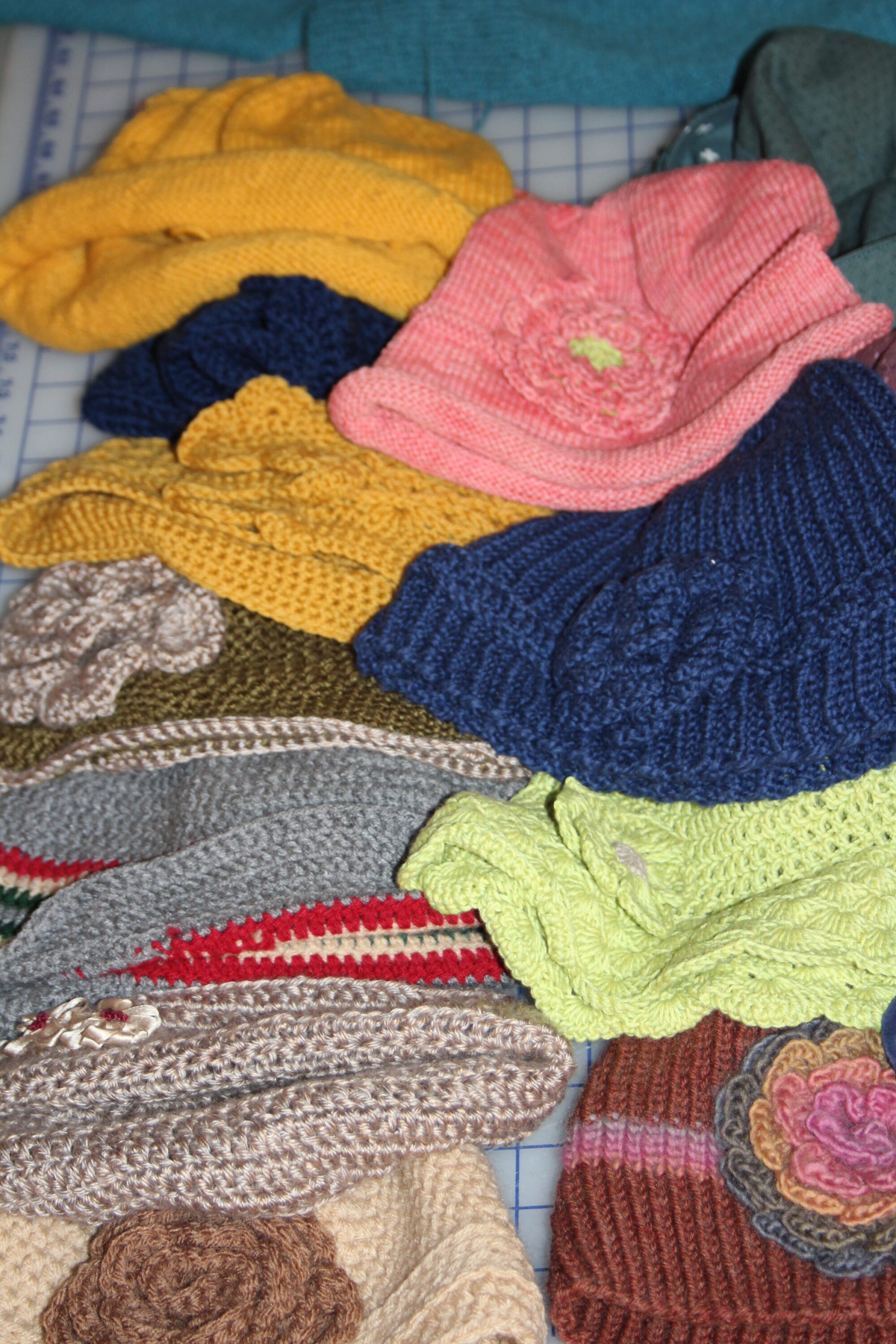
Coordinates
There are several dresses, aprons, and cloche hats that go together. They have the same size, and work with both the face side and the reverse side of the apron. Here are a few of the combinations now that all 3 groups of garments (dress, apron, hat) are completed:
A.
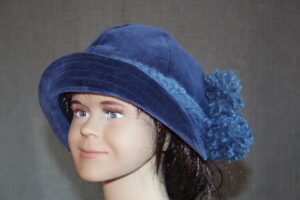
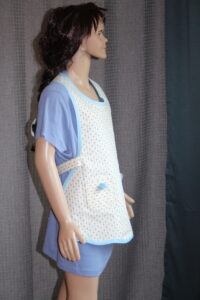
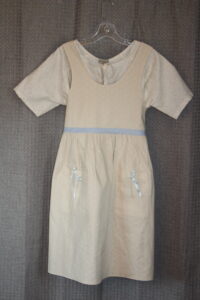
B.
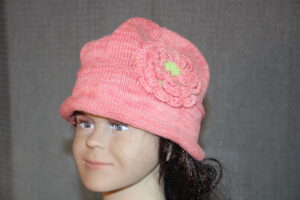
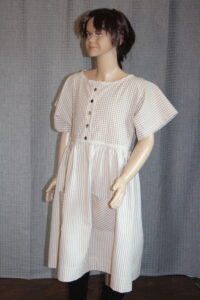
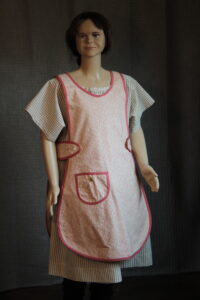
C.
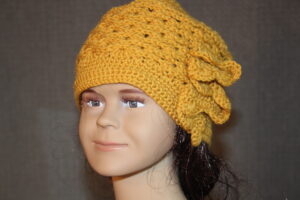
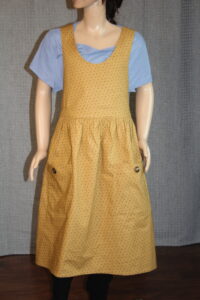
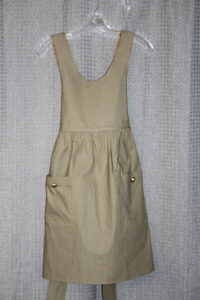
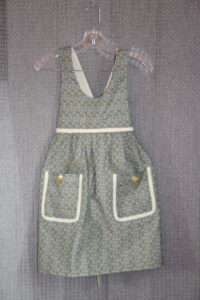
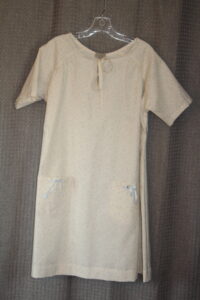
D.

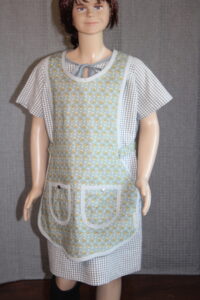
E.
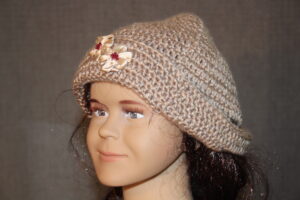

F.
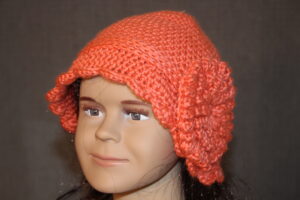
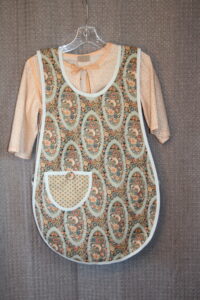
G.
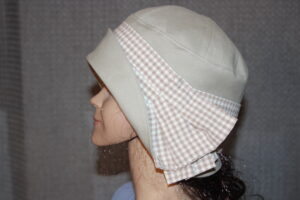
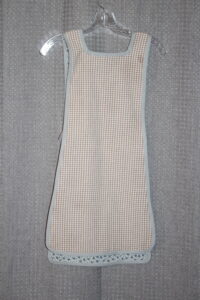
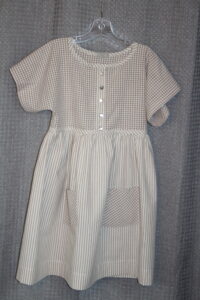
H.
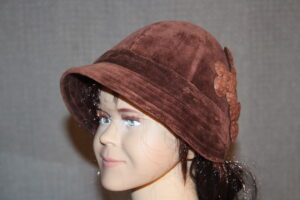
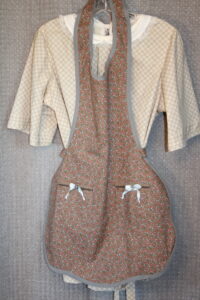
I.
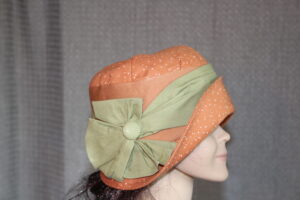
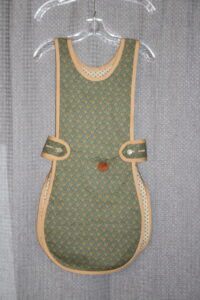
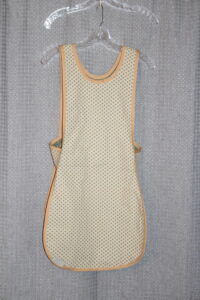
J.
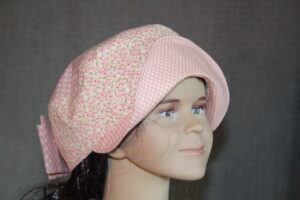

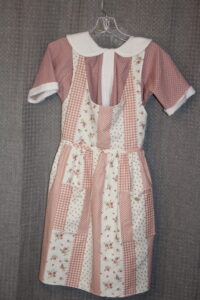 ..
..
K.
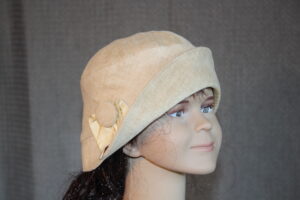
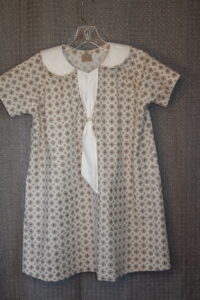
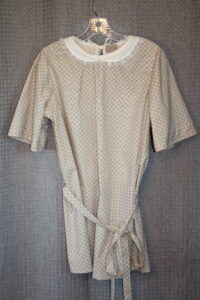
L.
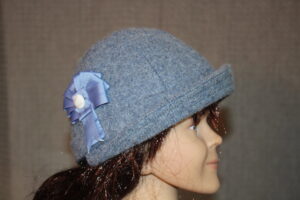
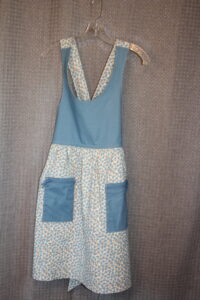

M.
 .
. 
N.
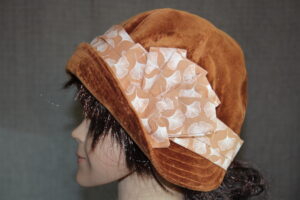
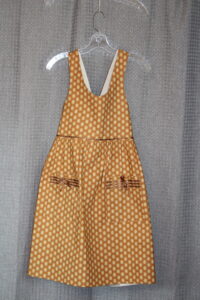
Frocks, Smocks and Aprons
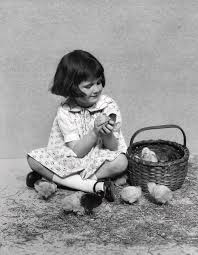

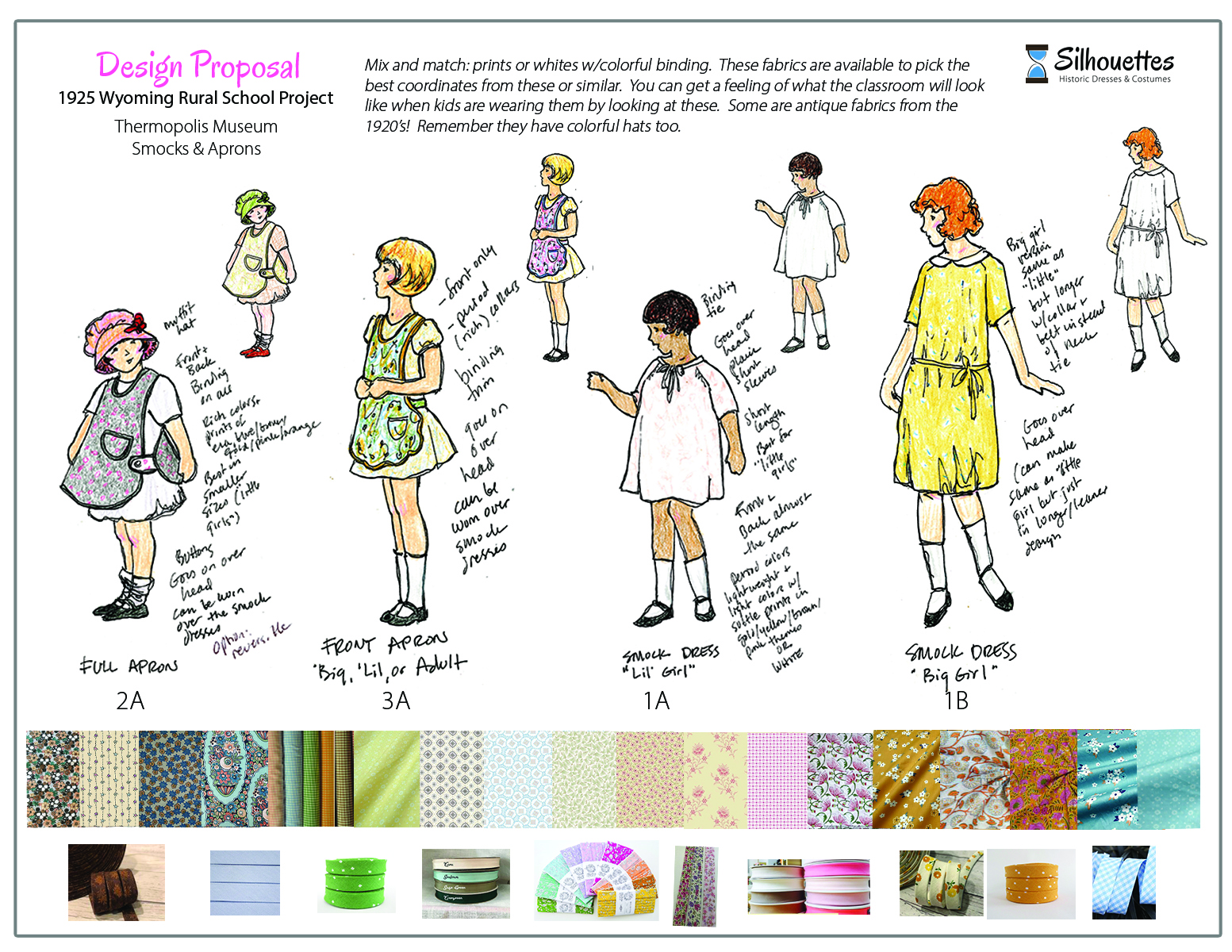
These were added late in the project since girls did not wear overalls to school say the organizers. There was much debate as to what would have been worn, but in the end, the organizers selected reversible aprons which would be easy to fit and would reduce conflict among visitors during the selection process when they arrived at the school to get dressed in costume for the day.
These were created in “batches” with color schemes and a variety of sizes since we weren’t sure when/if we could meet deadlines in addition to all the other things being built. Each “batch” contains a variety of sizes and colors and textures that are pleasing together.
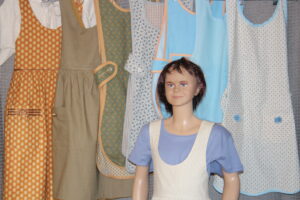
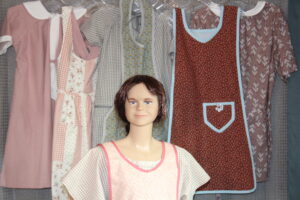
Note the consistent use of small prints and neutral colors. They were particularly fond of large and small checks as well as ginghams, polka dots, and squares. The challenge was understanding the “smock” which was worn OVER the main garment when kids got to school. It was hard to decide whether to make a plain white smock (refer to photos in the women’s fashion history section) or the actual garment that would be worn.
Aprons would have been worn at home only, so the decision to wear aprons is somewhat outside of historical context, as are wearing the cloche and newsboy hats indoors (which a mother in 192 would be aghast to know her child didn’t remove his hat). Therefore, the decision was made after the first 2 batches which included personalization and decoration, to make these as plain and simple as possible. Again, this was to reduce complications at fitting, but also to come closer to the appearance of the plain white smock which would be more historically accurate.

While fun to make, these took over 200 hours just in production; not counting pattern research, development, fabric and notions selection and procurement and preparation (all are pre-washed and ironed and starched), design, or documentation. They are all built to be very durable under child use, easy to wash and iron, and have multiple sizing and adjustments including numerous button hole options, tie adjustments, and wrap around functions to fit a variety of body types.
Many options with all aprons being reversible:
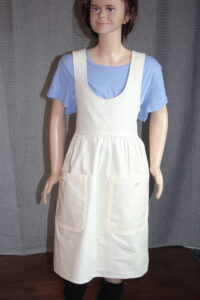

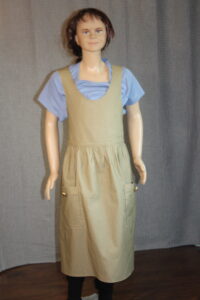
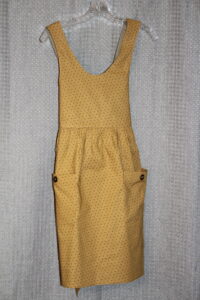
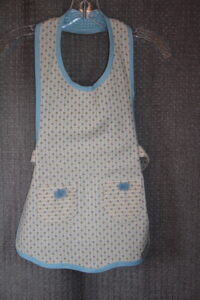
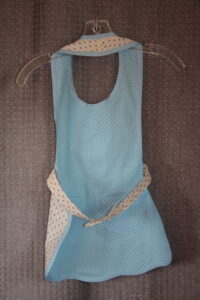
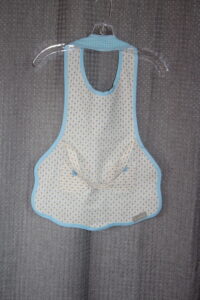
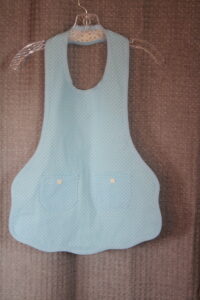
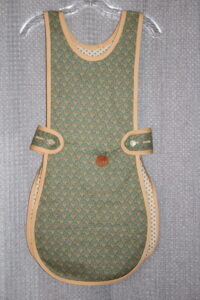

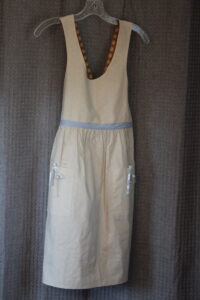



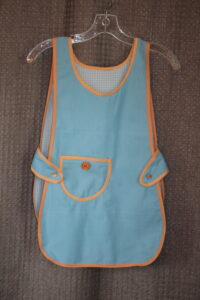
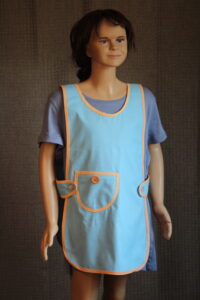
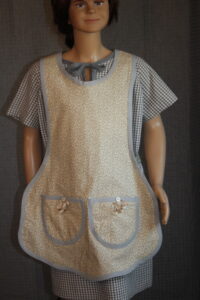
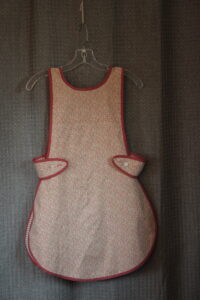


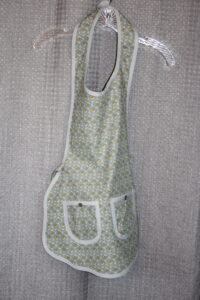
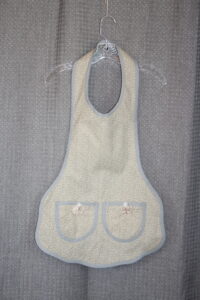
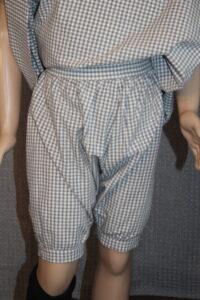
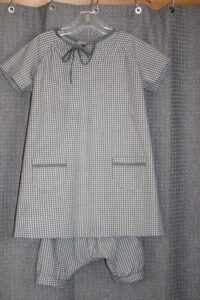
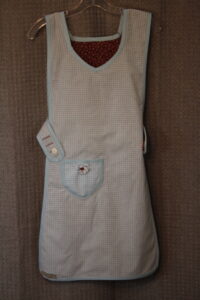
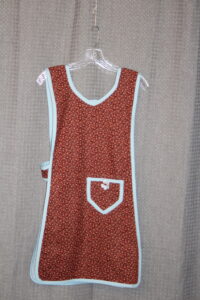
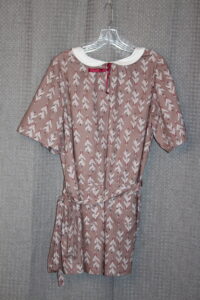

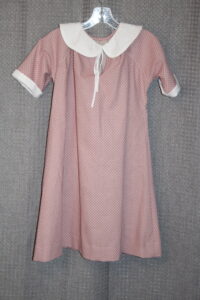
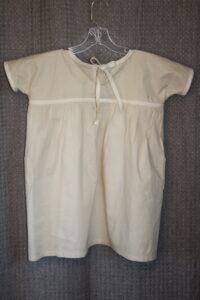

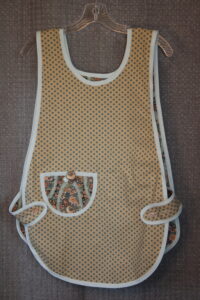
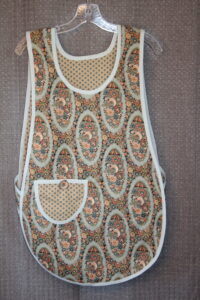
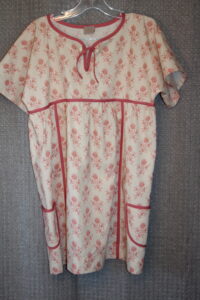
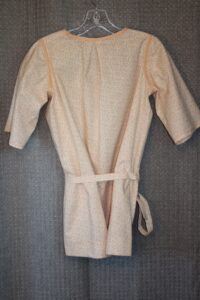
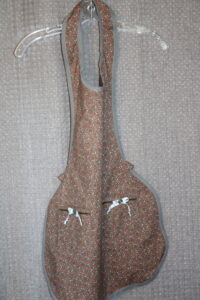


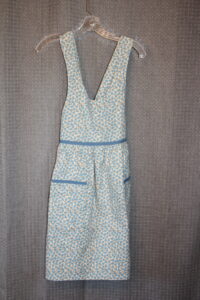
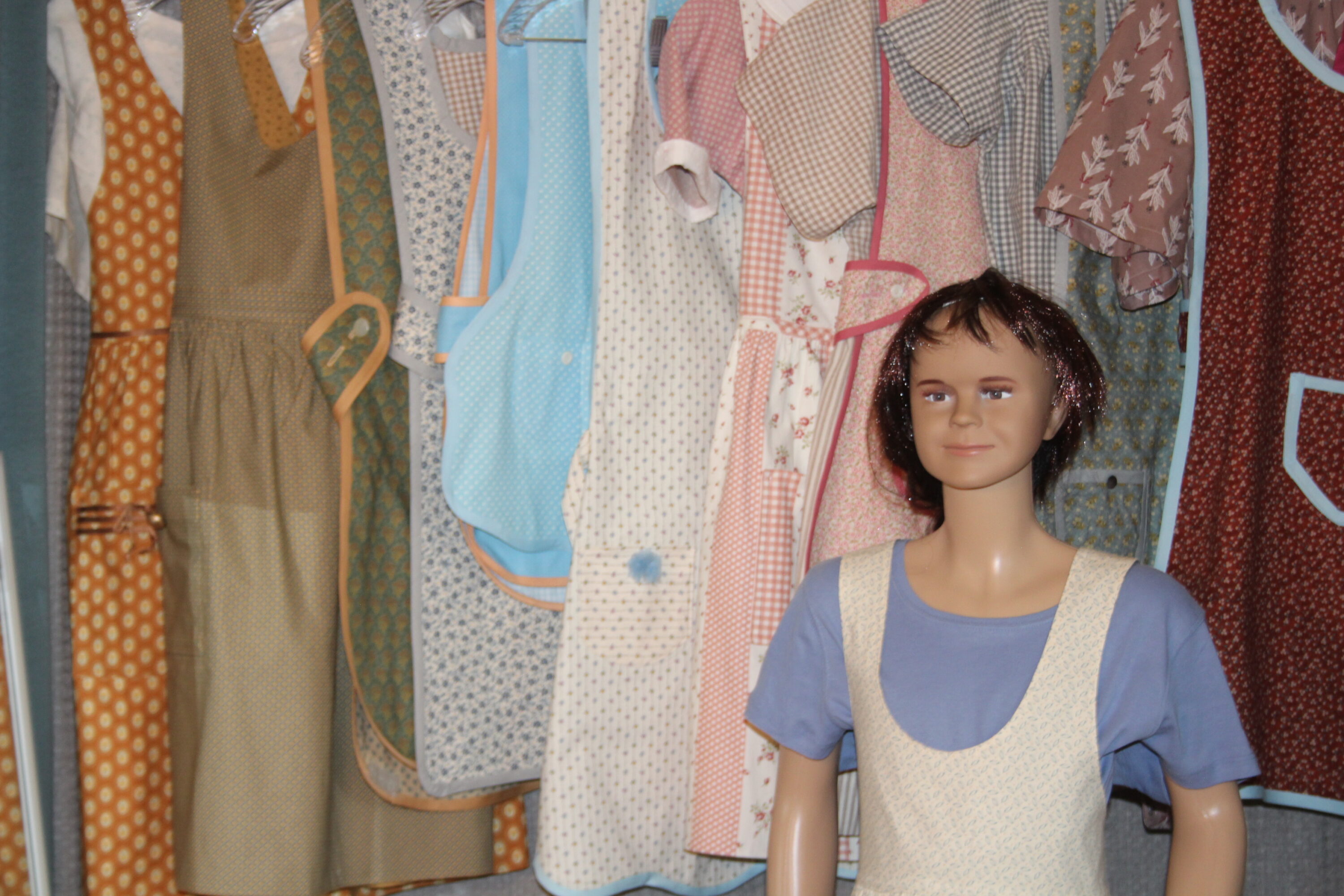
Batch 1 – Ivory, Coral, Pink
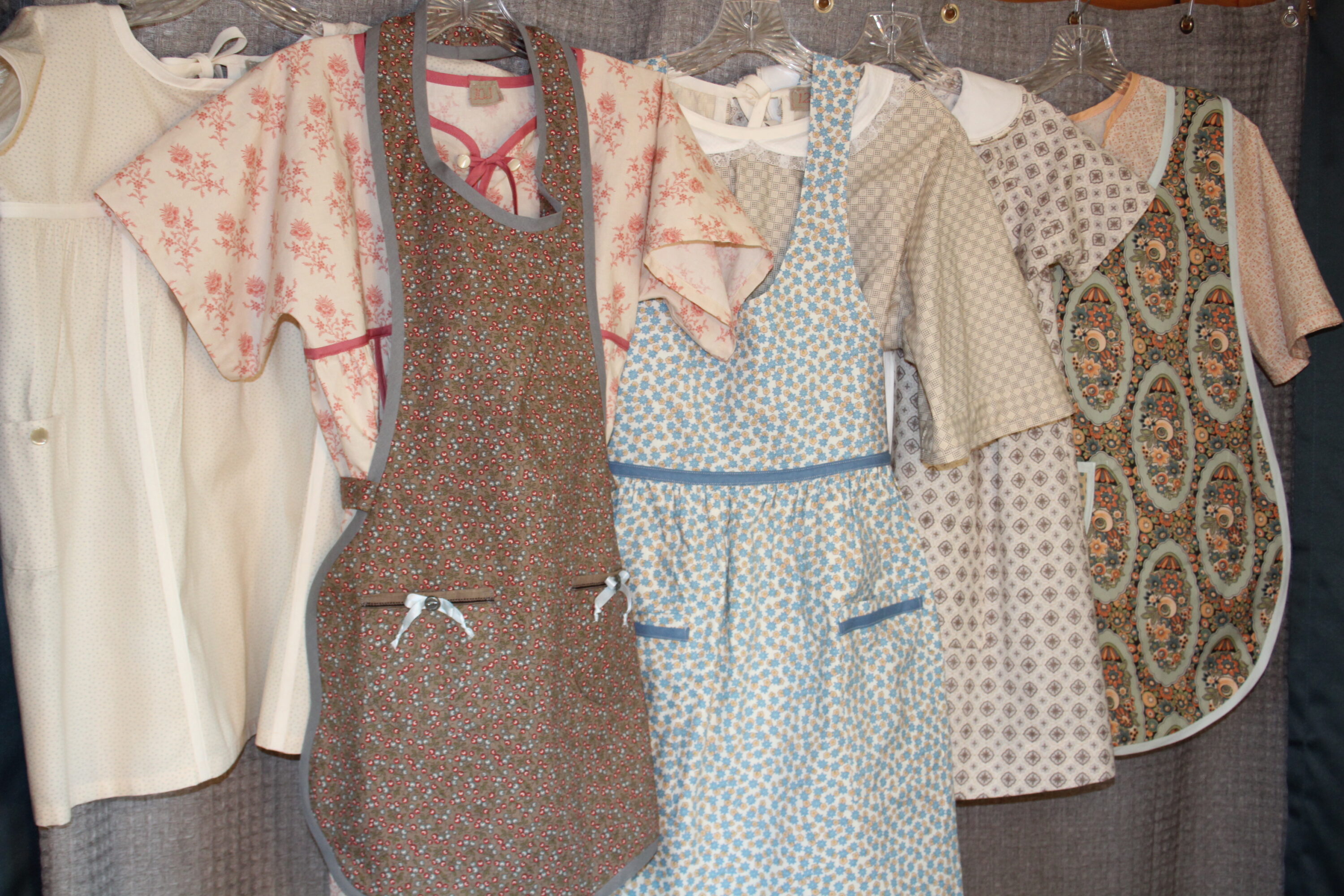
12.1 (Size 12, older girl version. Tiny dark gray dots, white collar with cotton lace, back neck tie, and contrast on sleeves and pockets. Belted, low waistline).
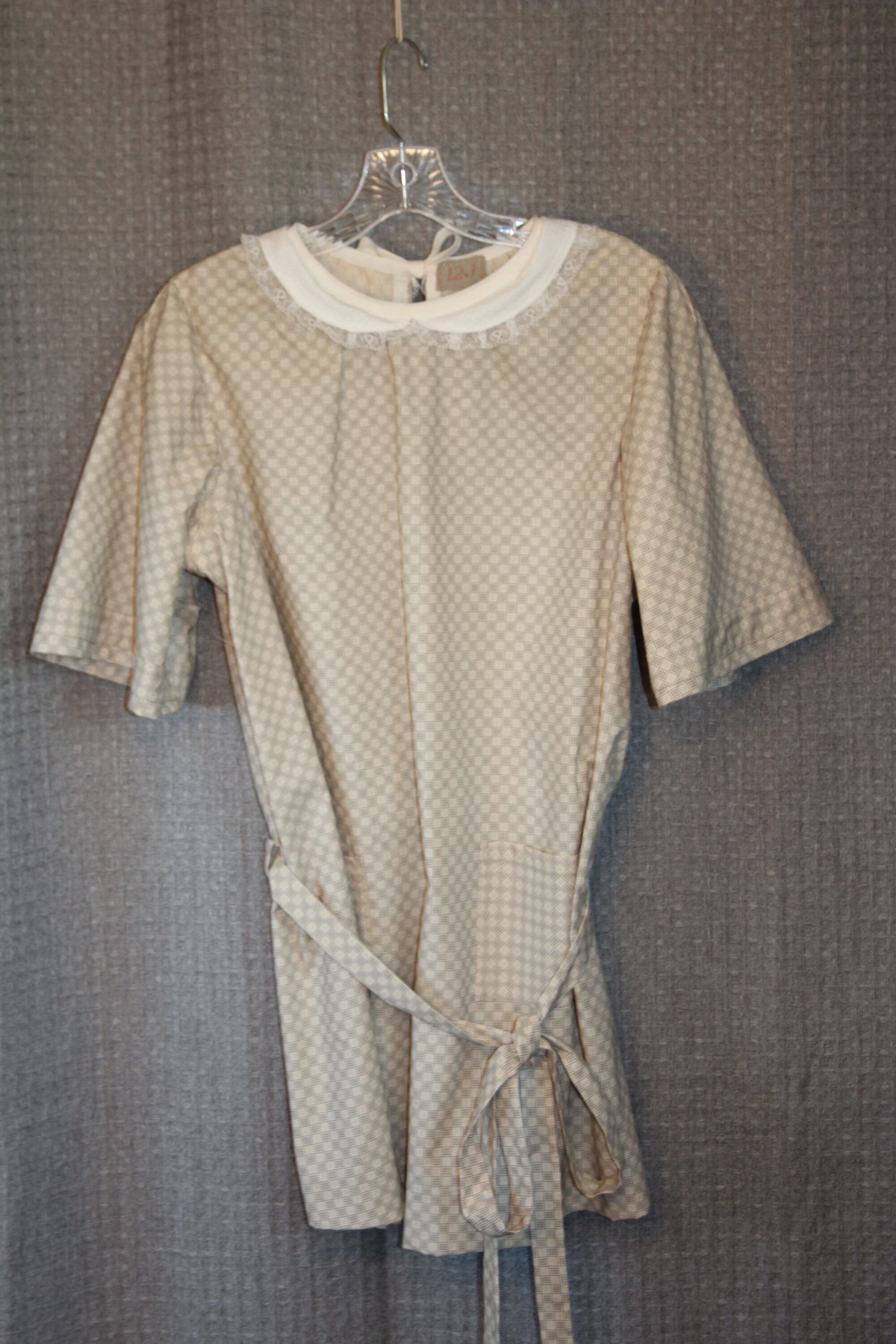
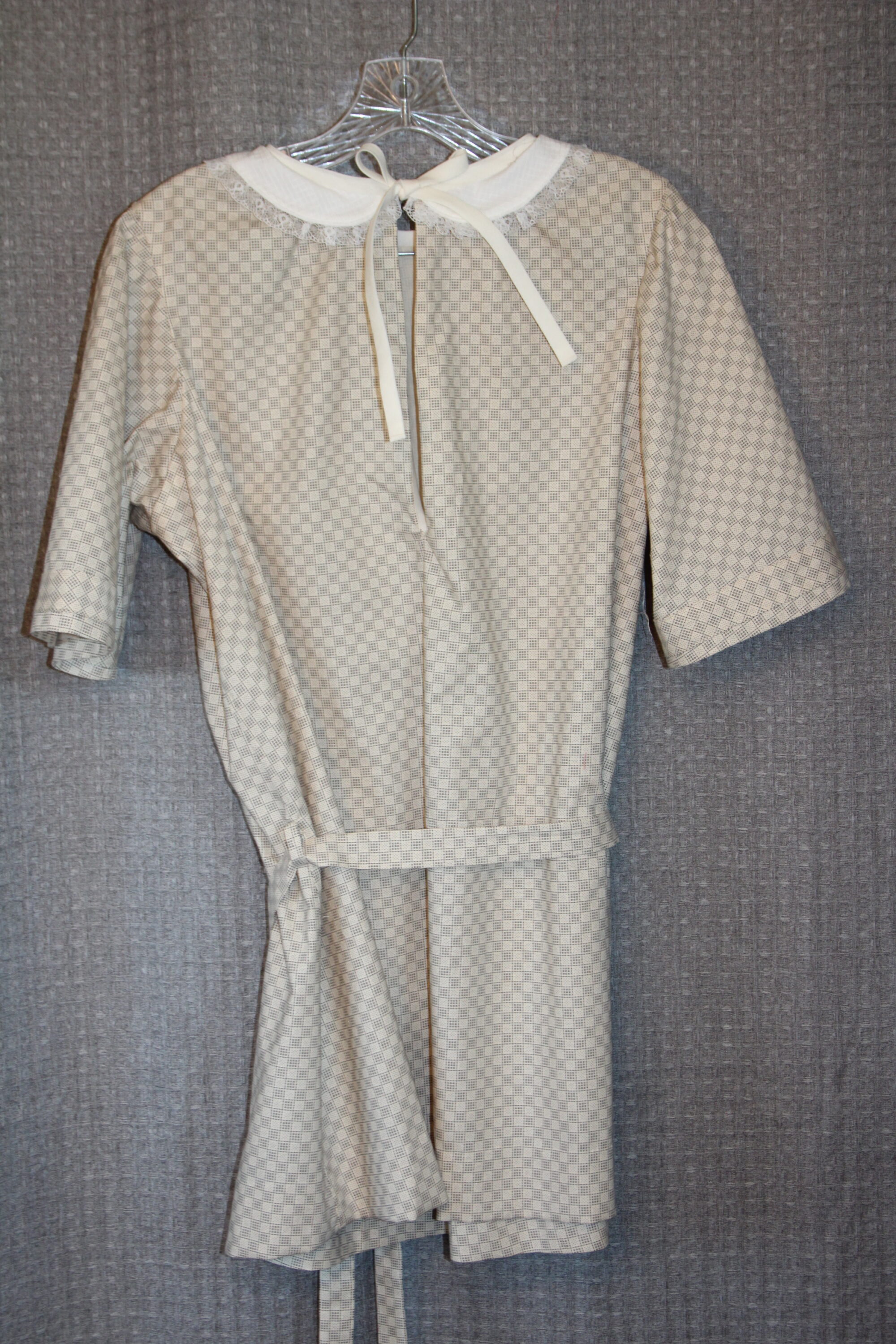
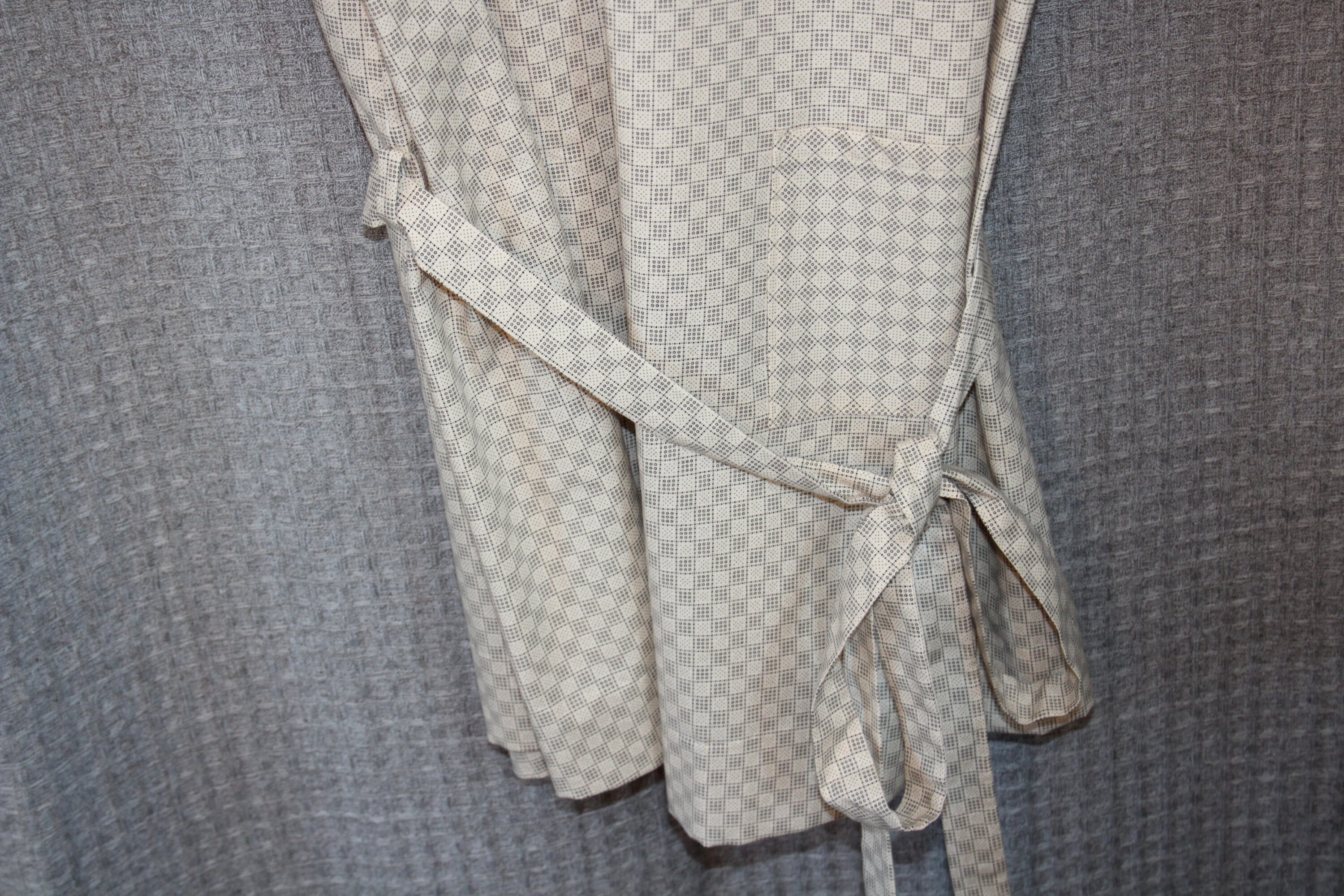
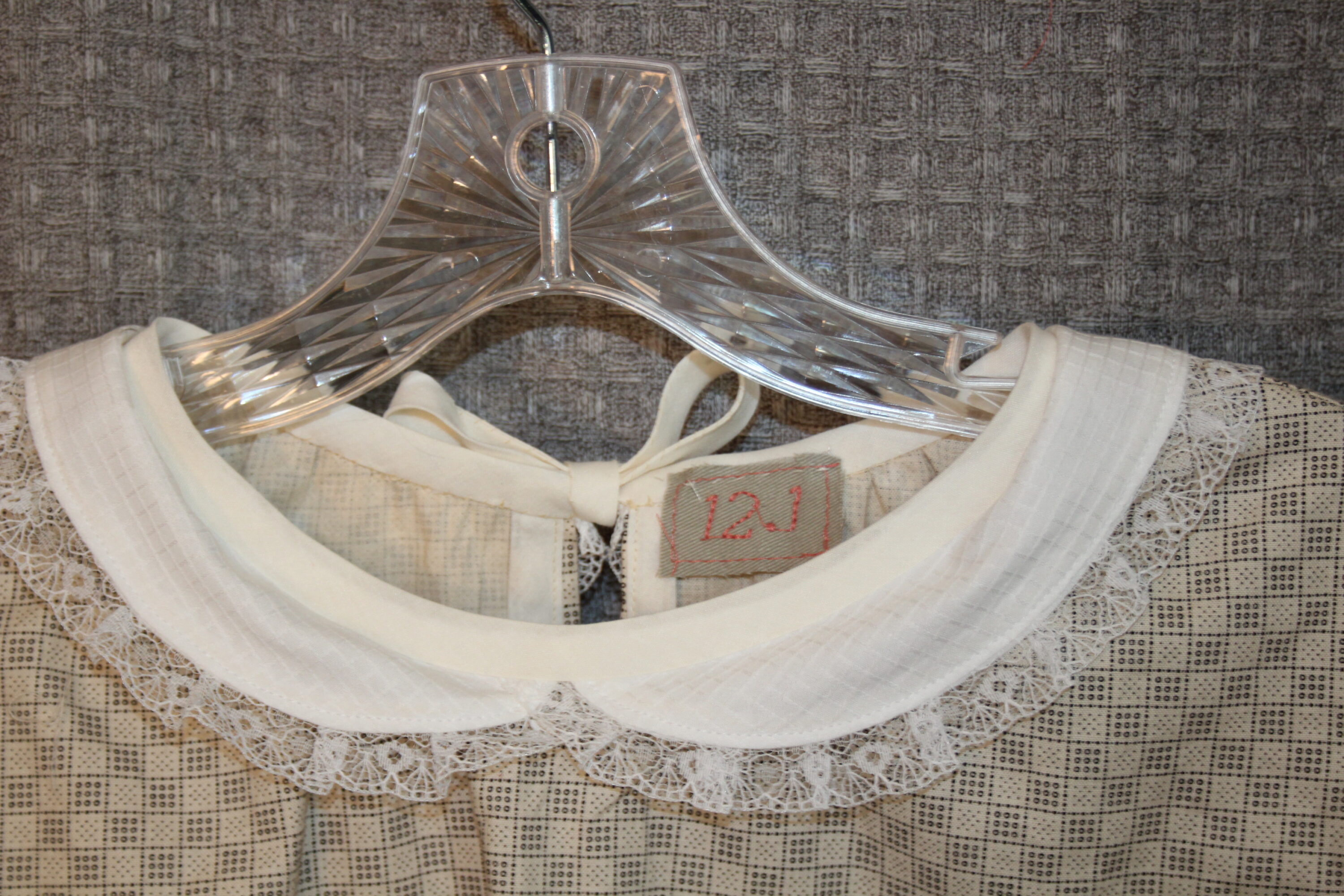
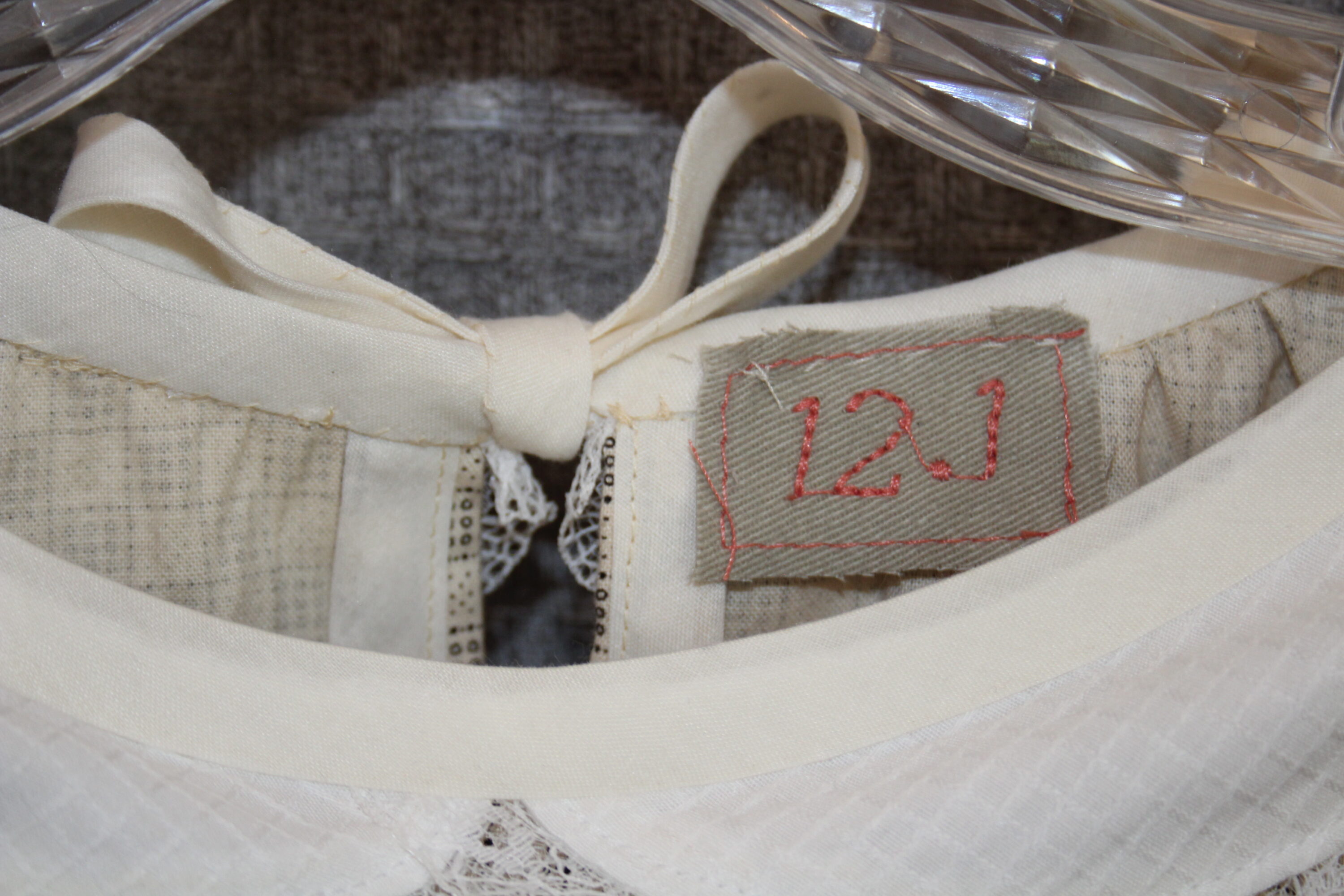
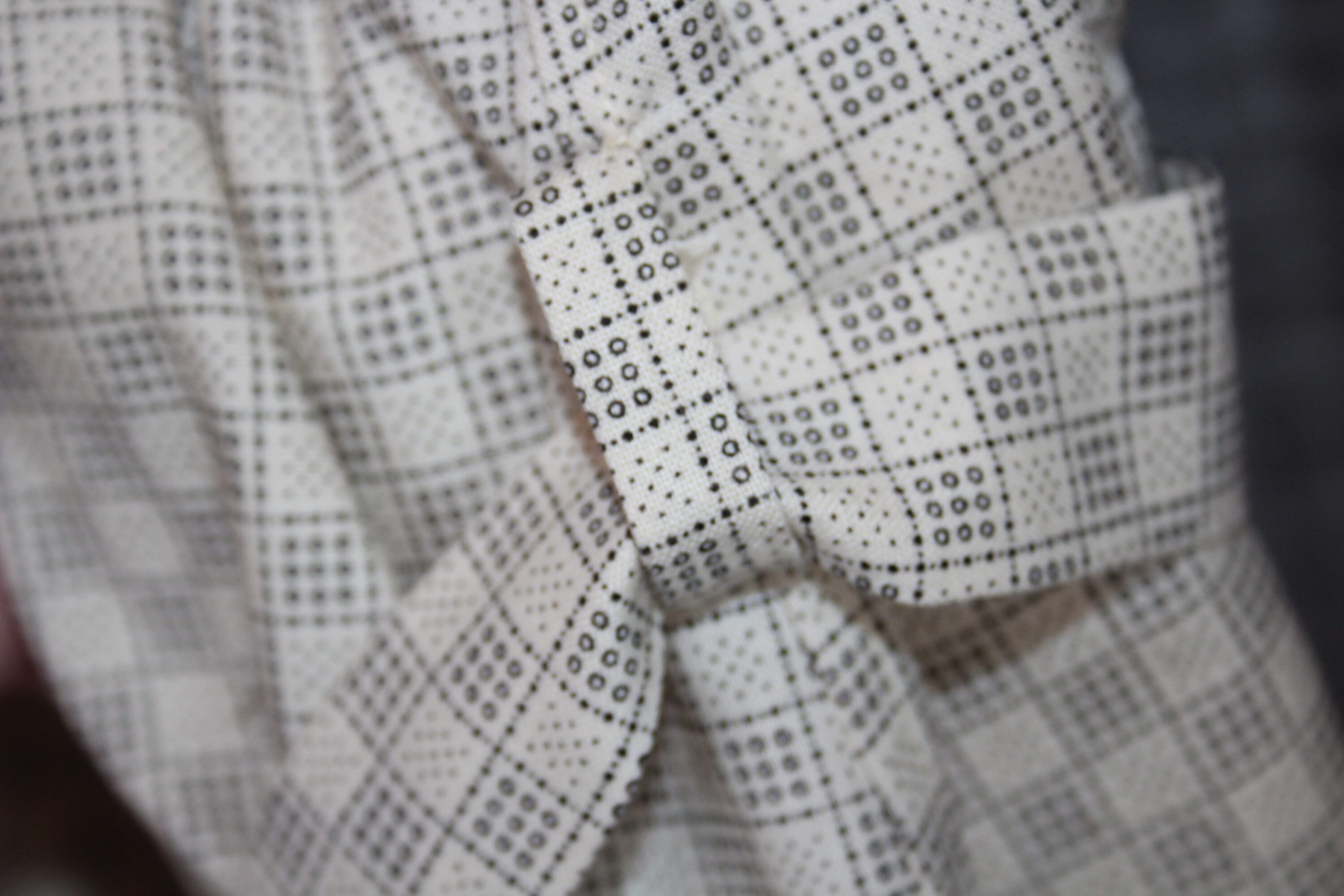
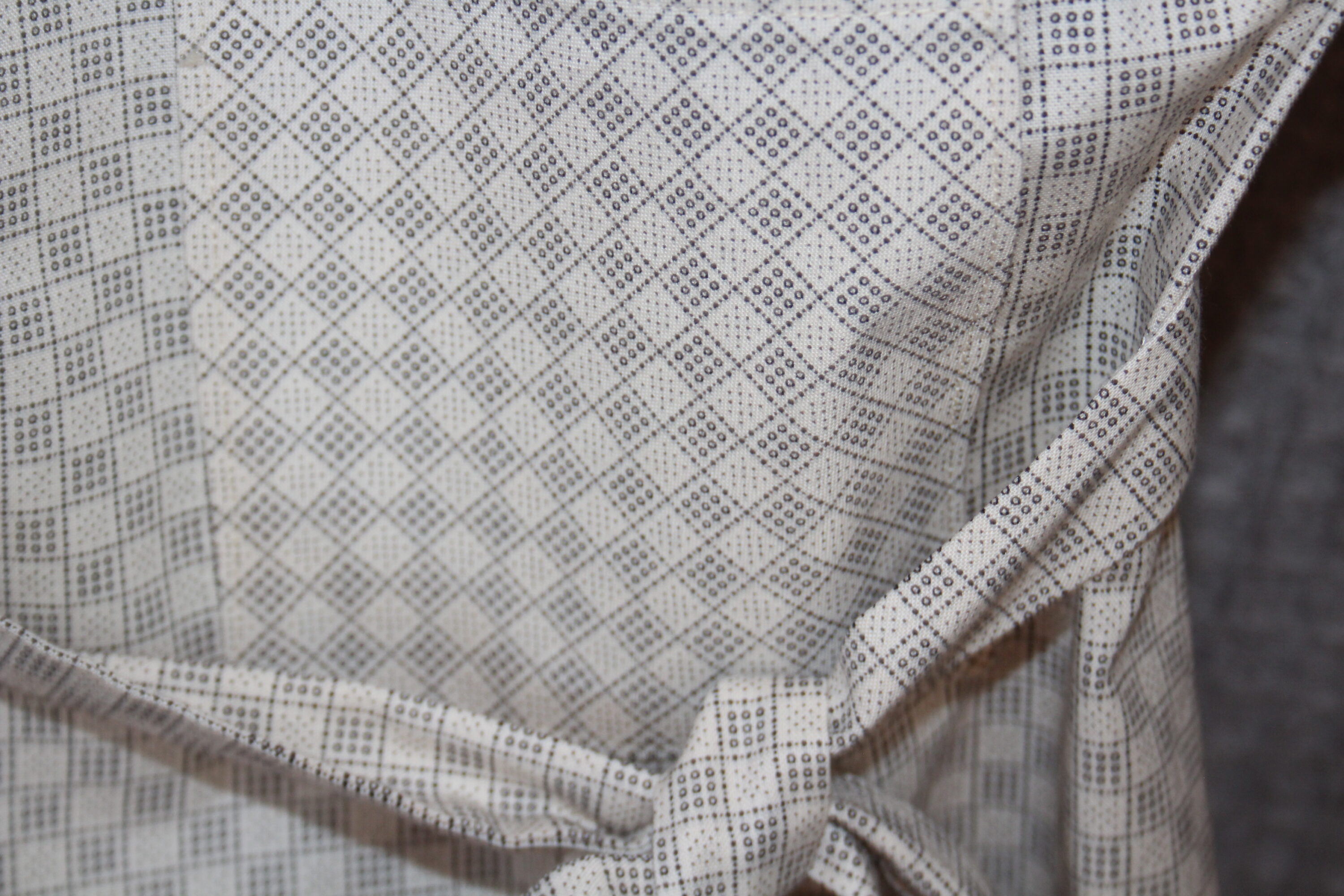
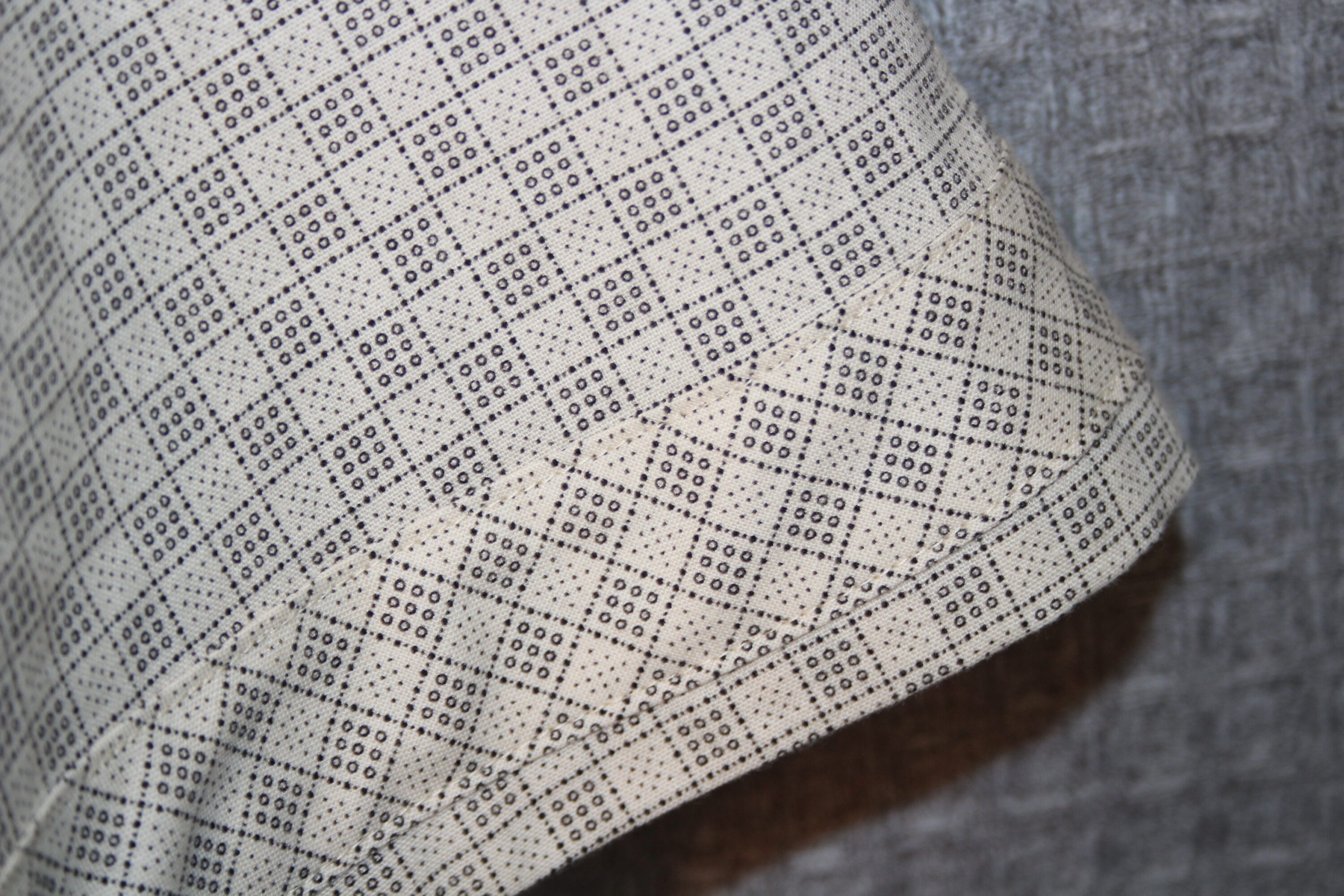
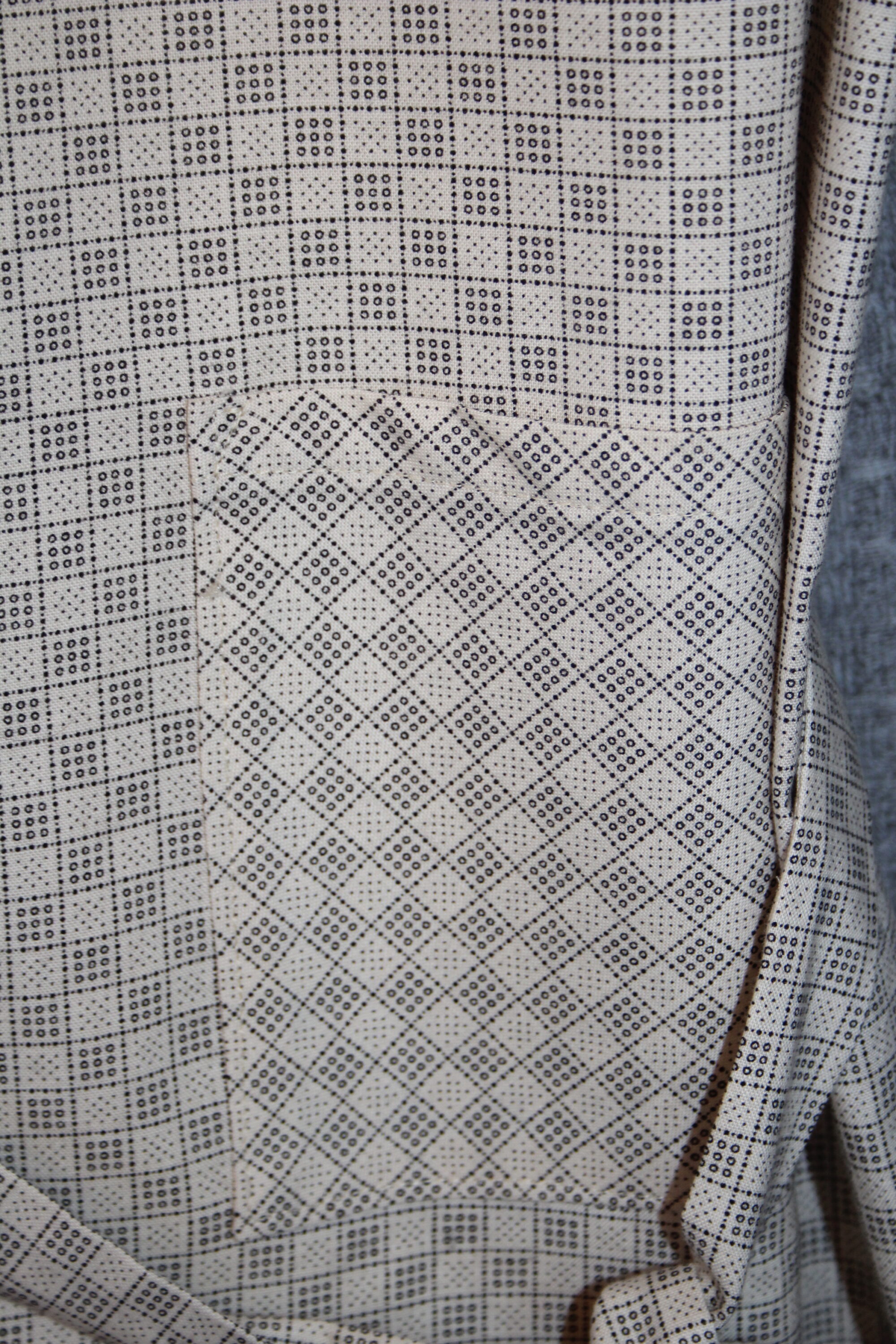
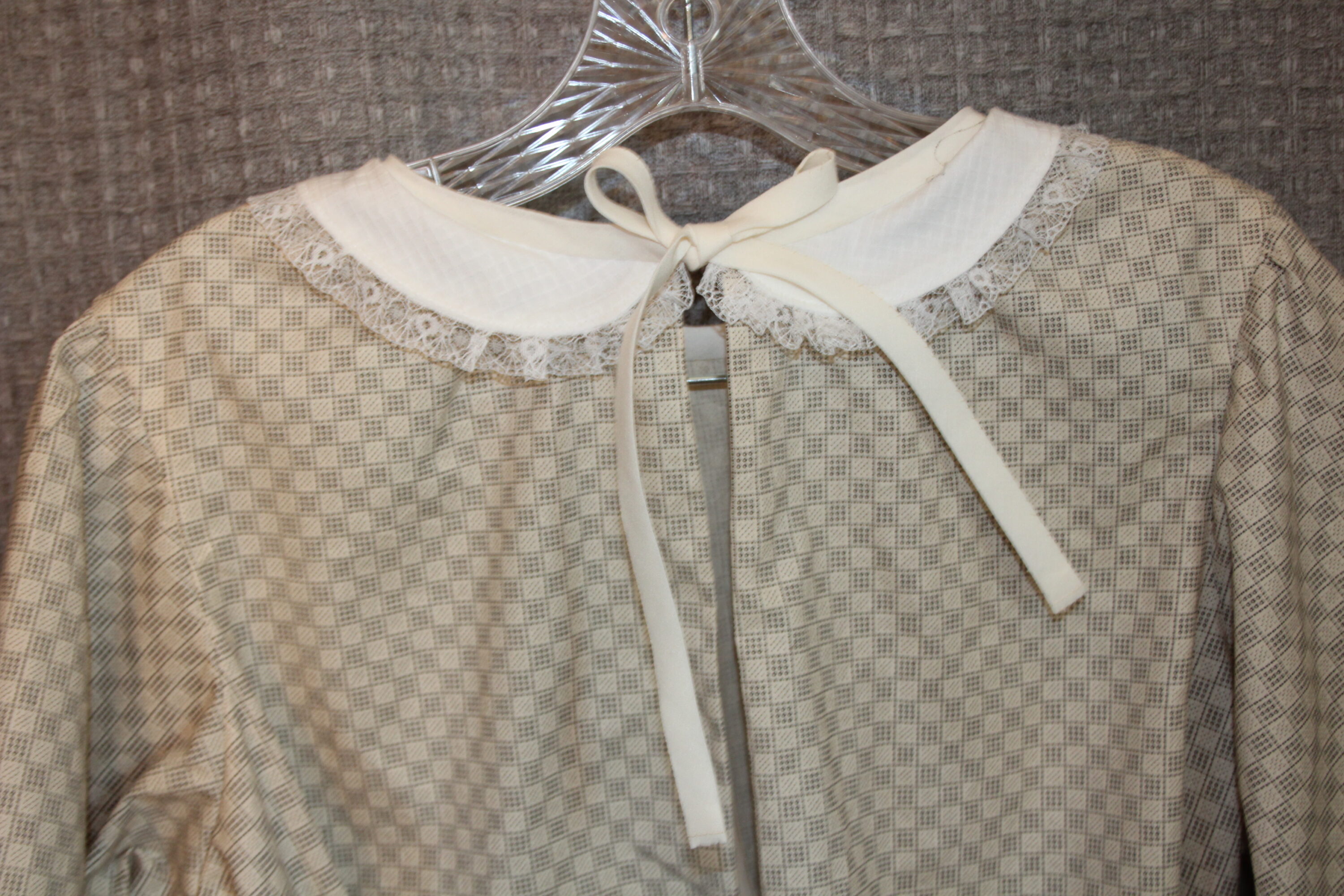
12A.1 (Size 12 Woman’s low waist, “Scoop Neck”, of vintage 1920’s gold and blue floral fabric. Reversible with dark blue and white polka dot, biase waist, mother of pearl buttons, self bows on pockets, cross ties with large bow in back).
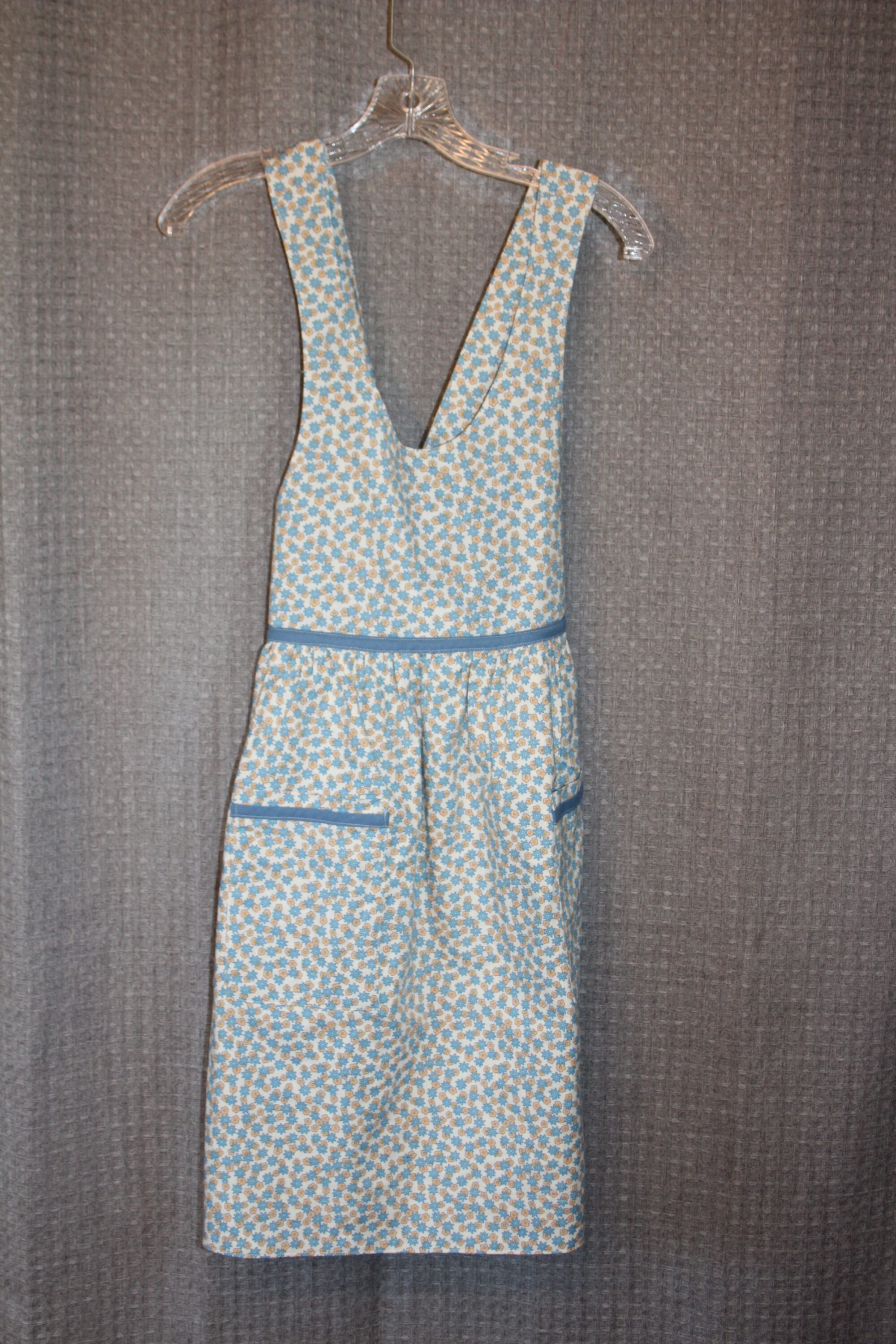

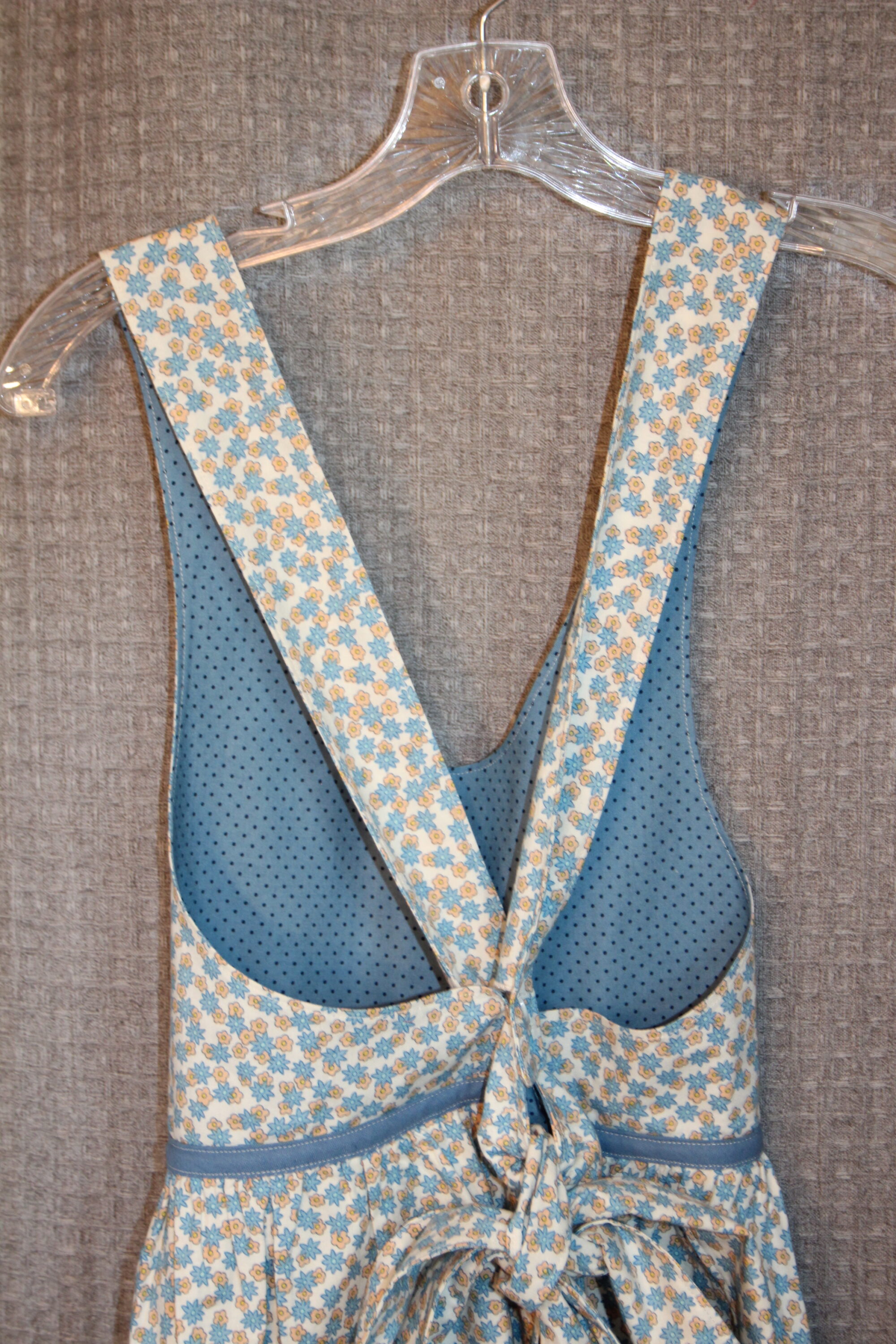
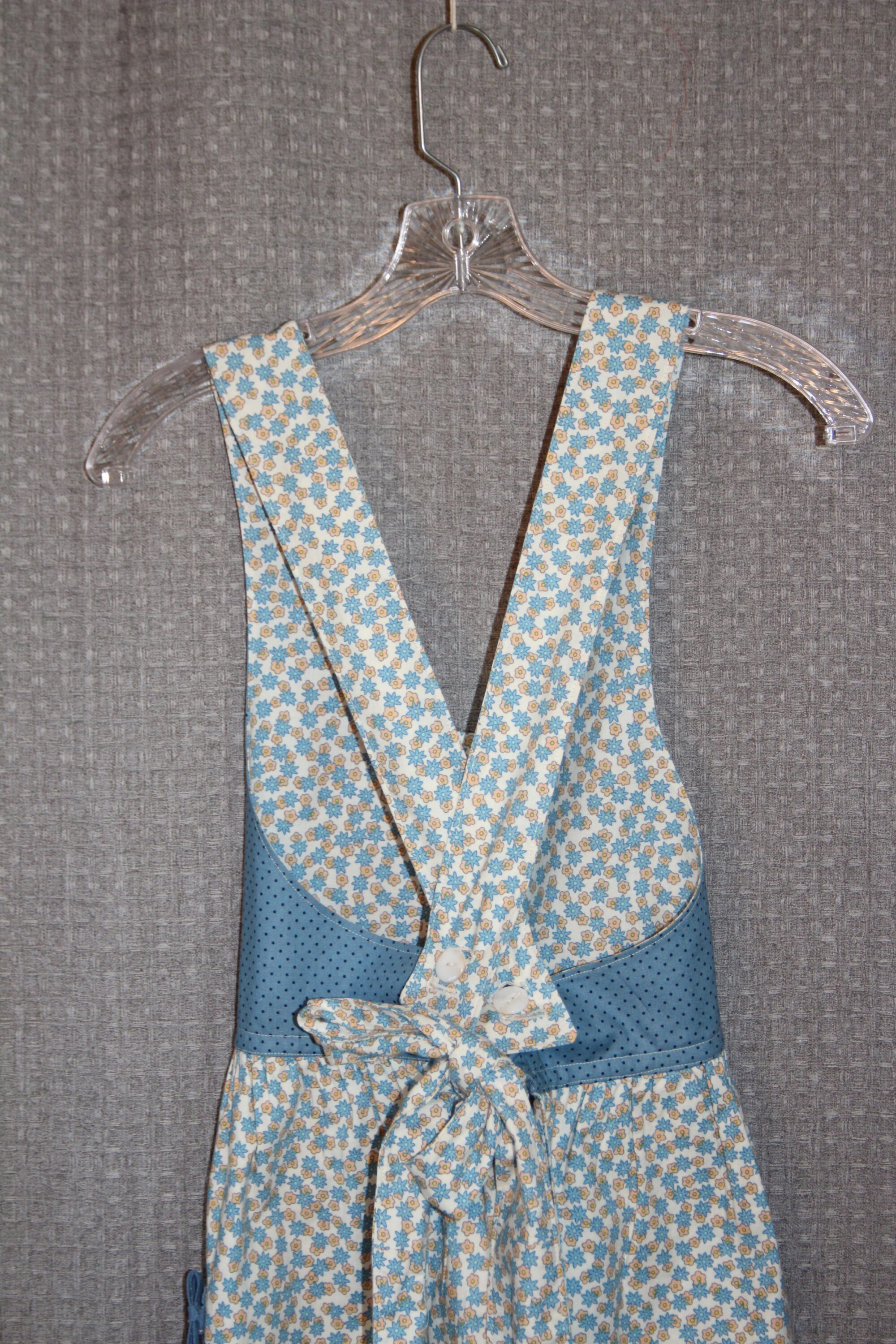
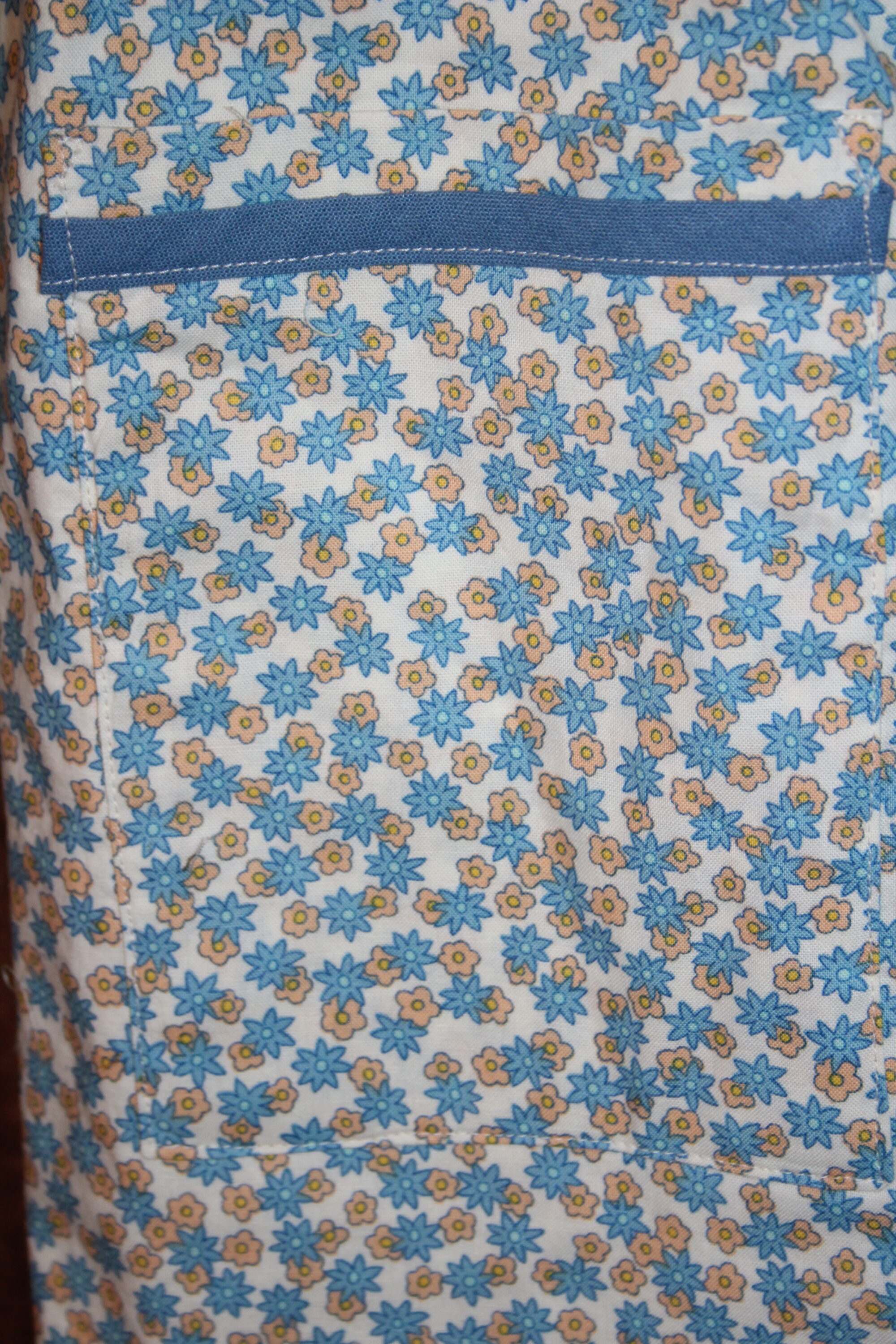
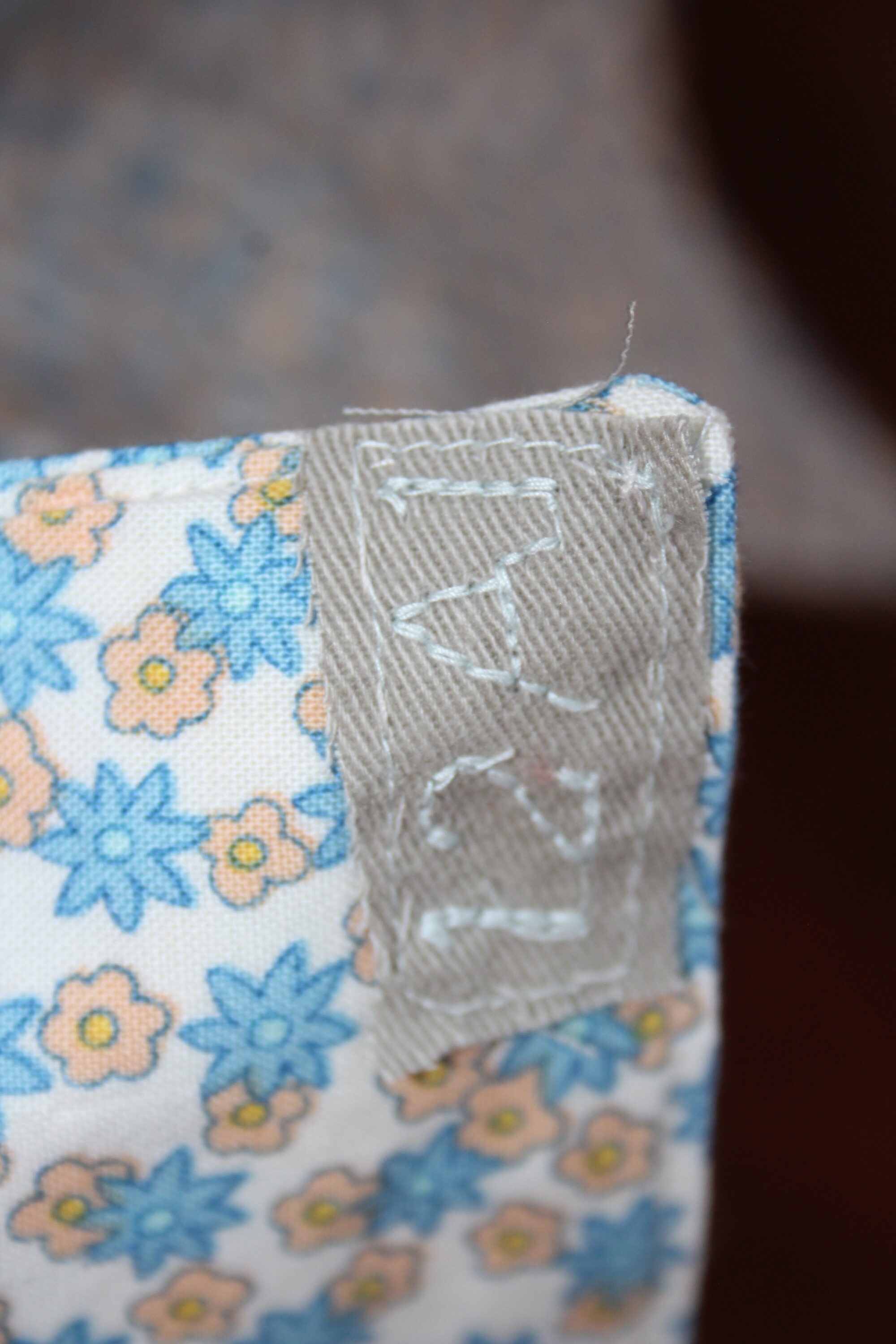
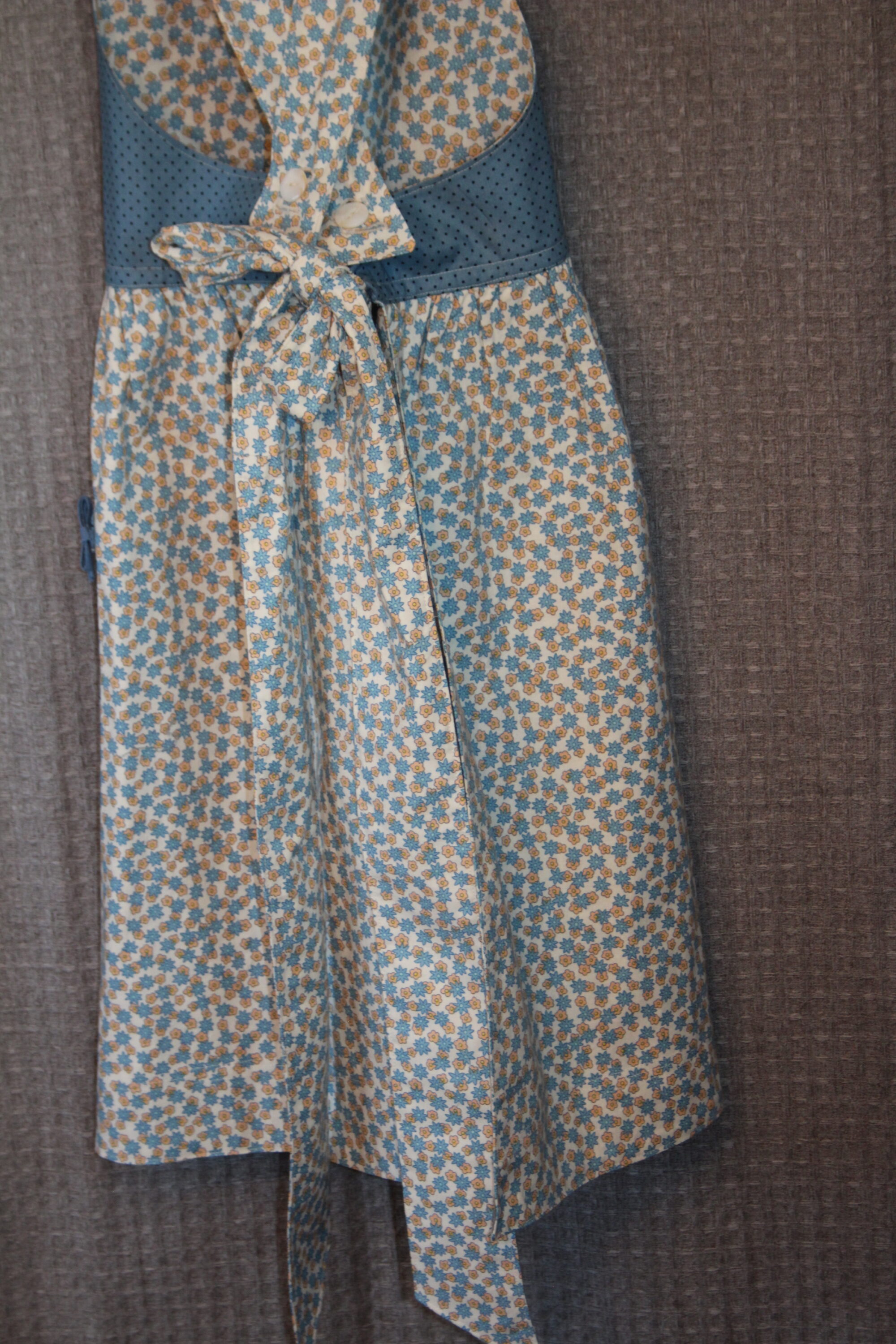
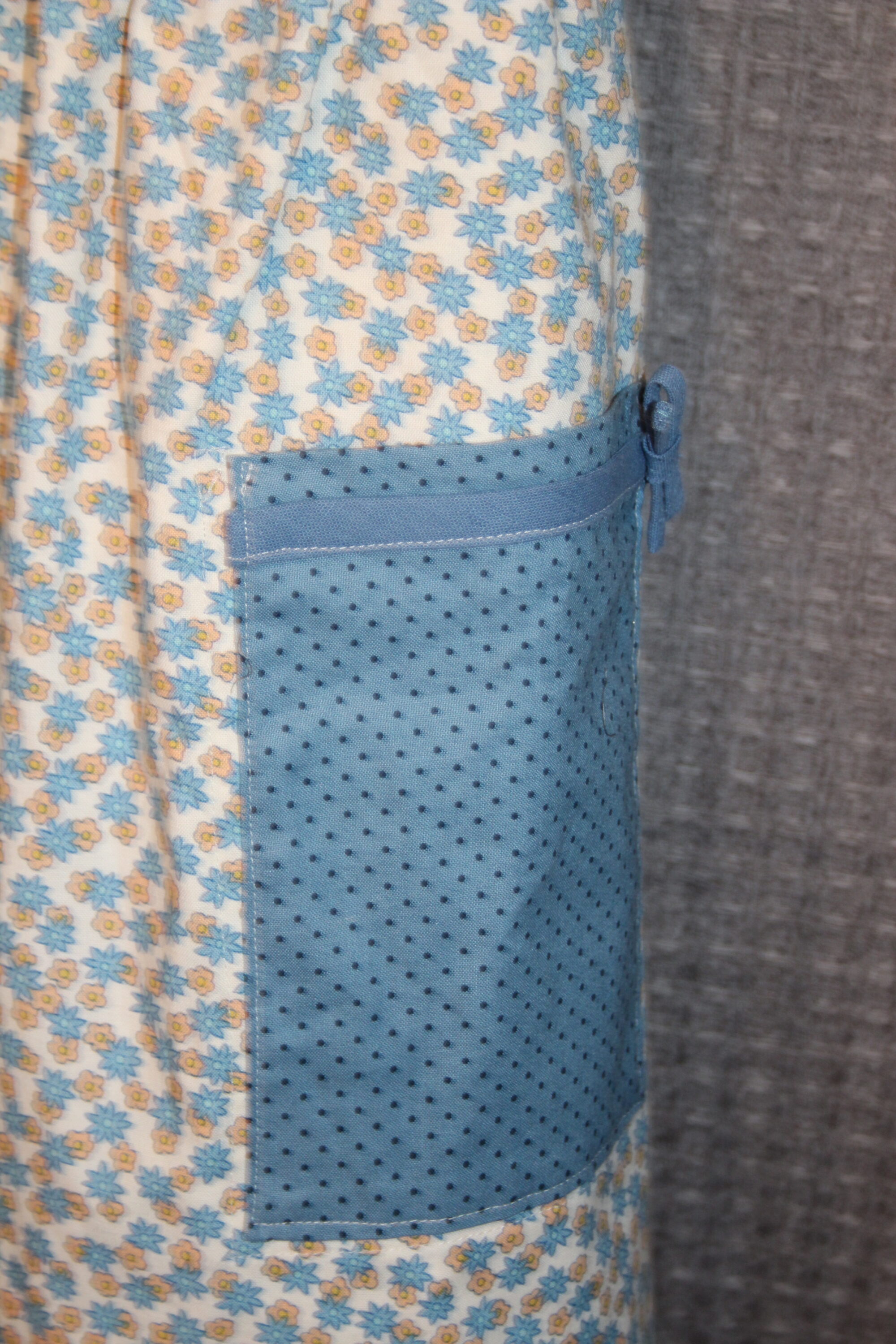
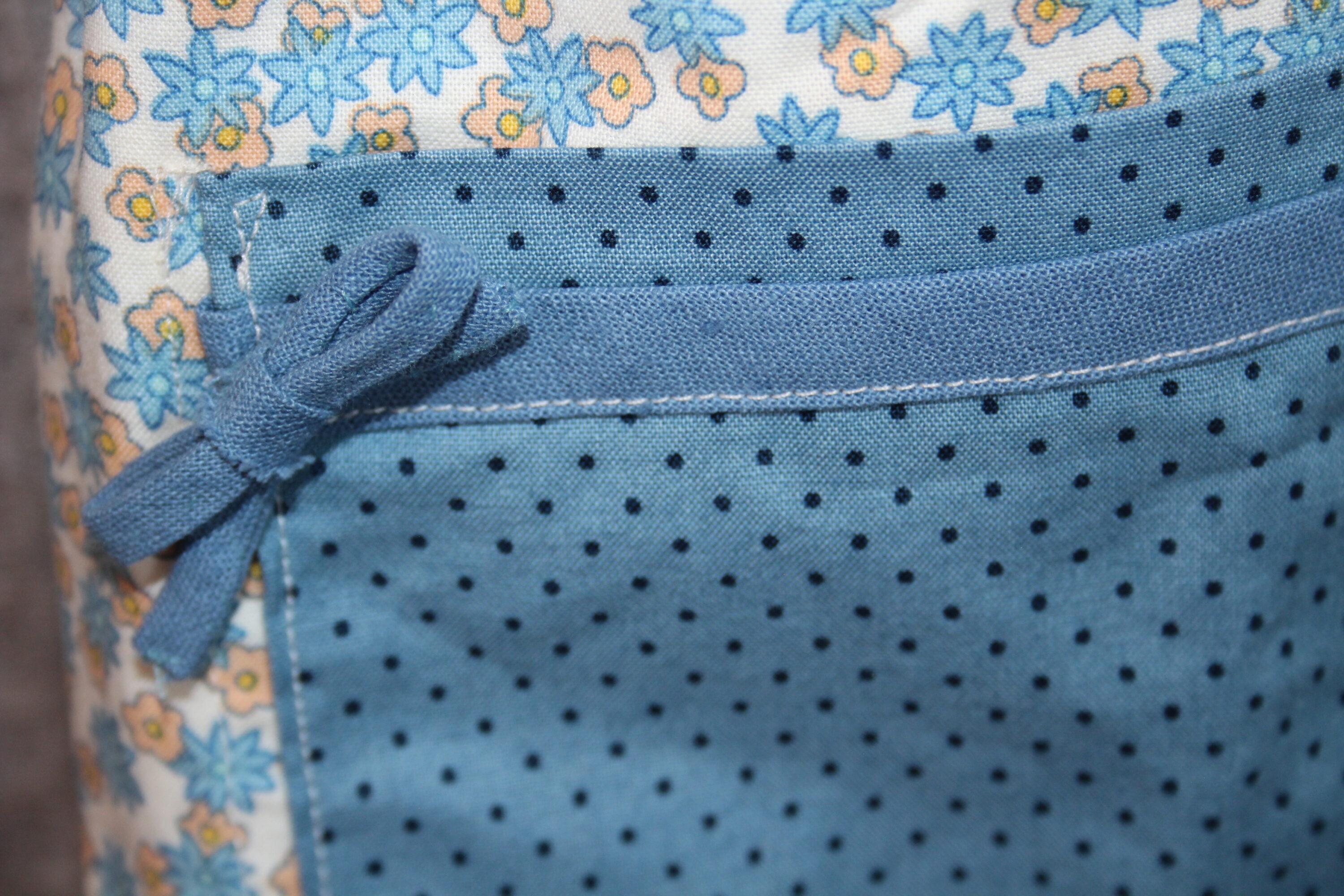
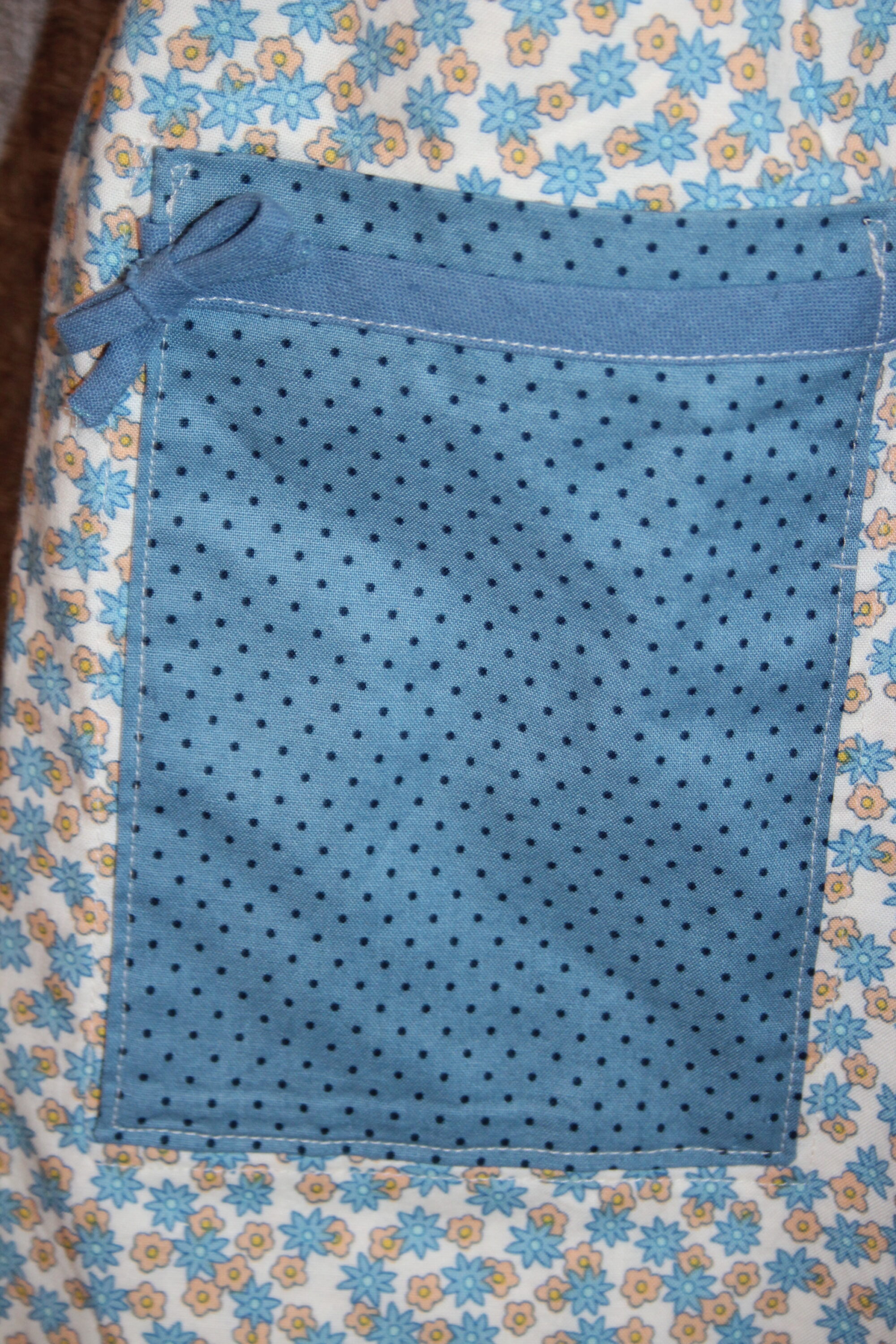
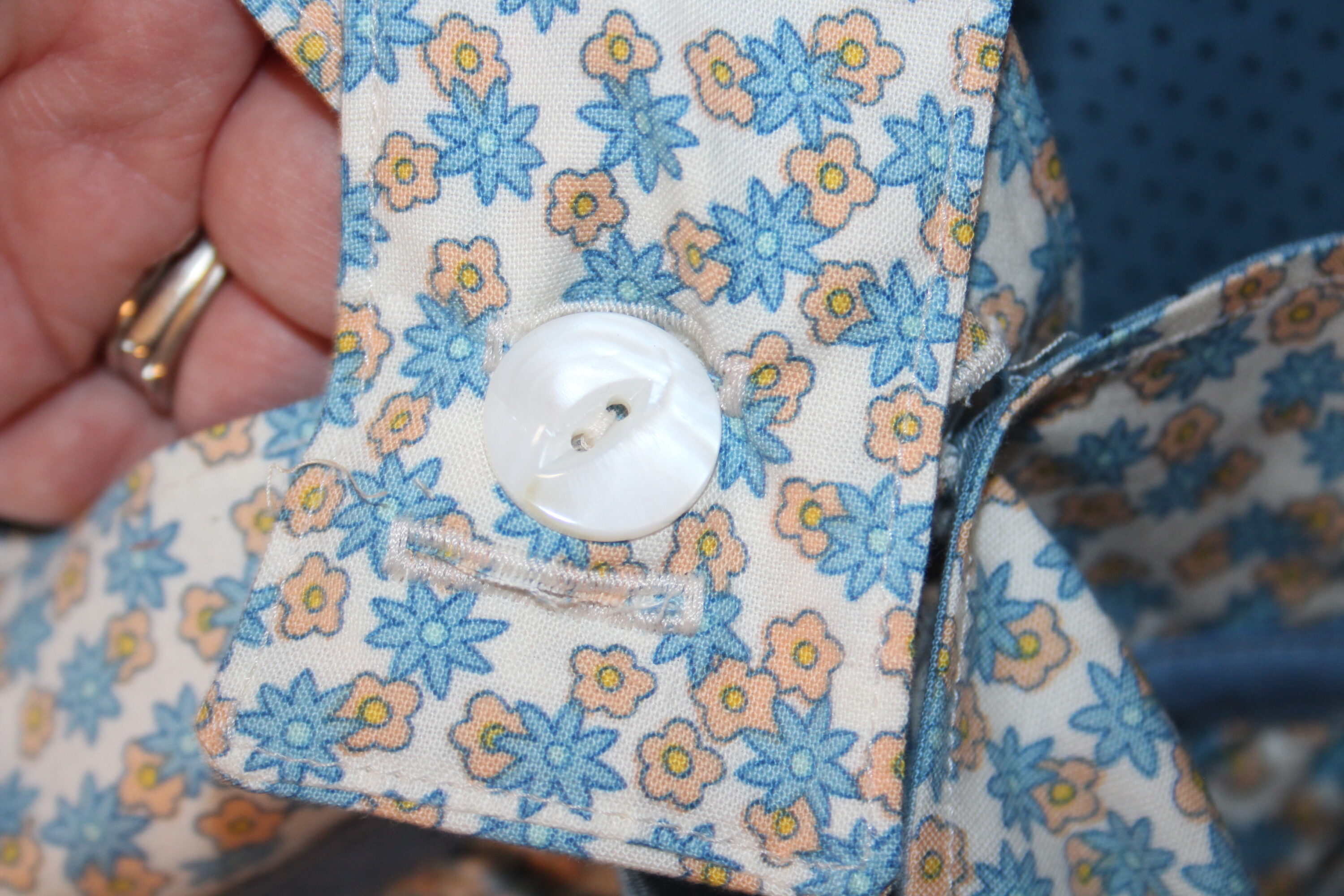
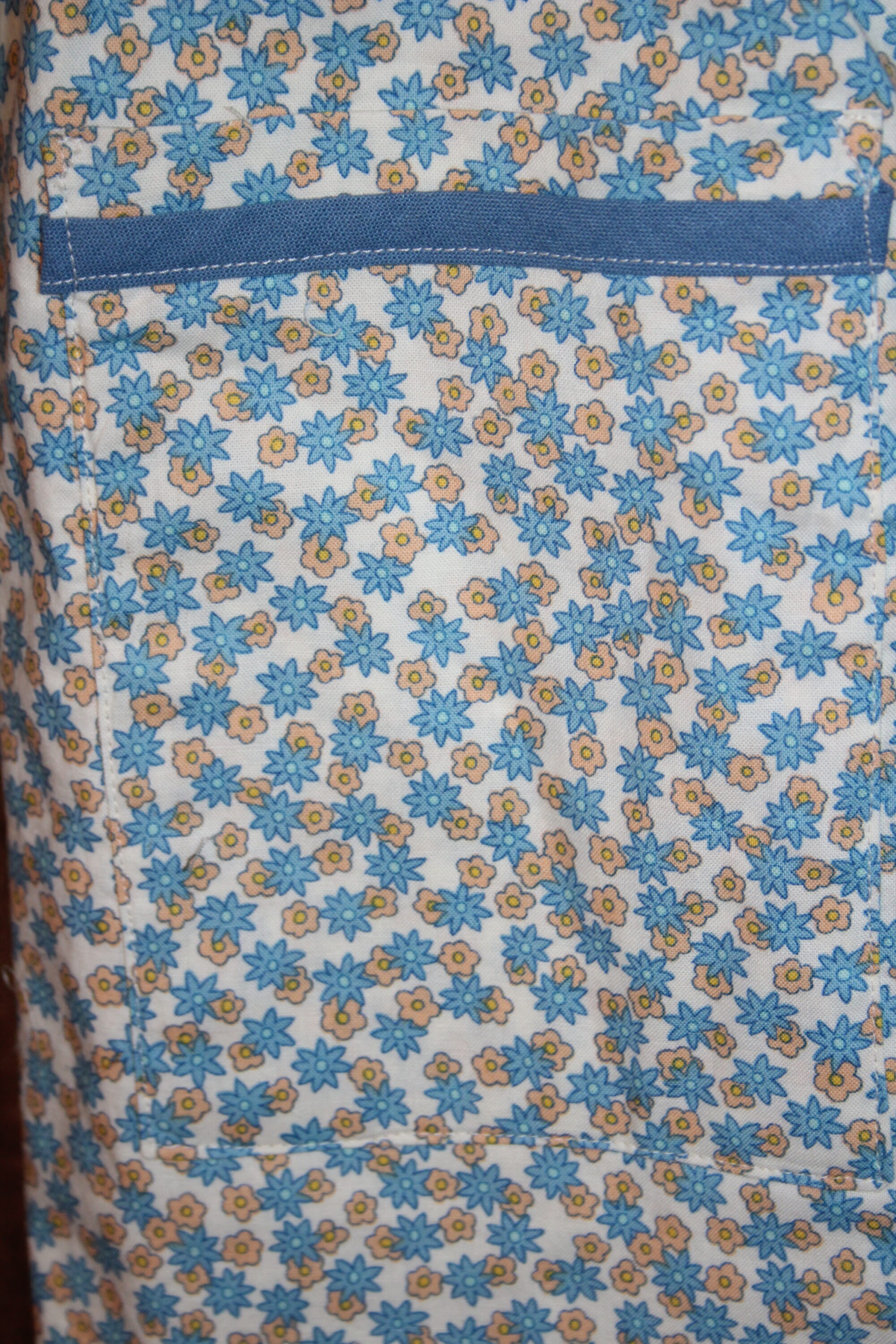
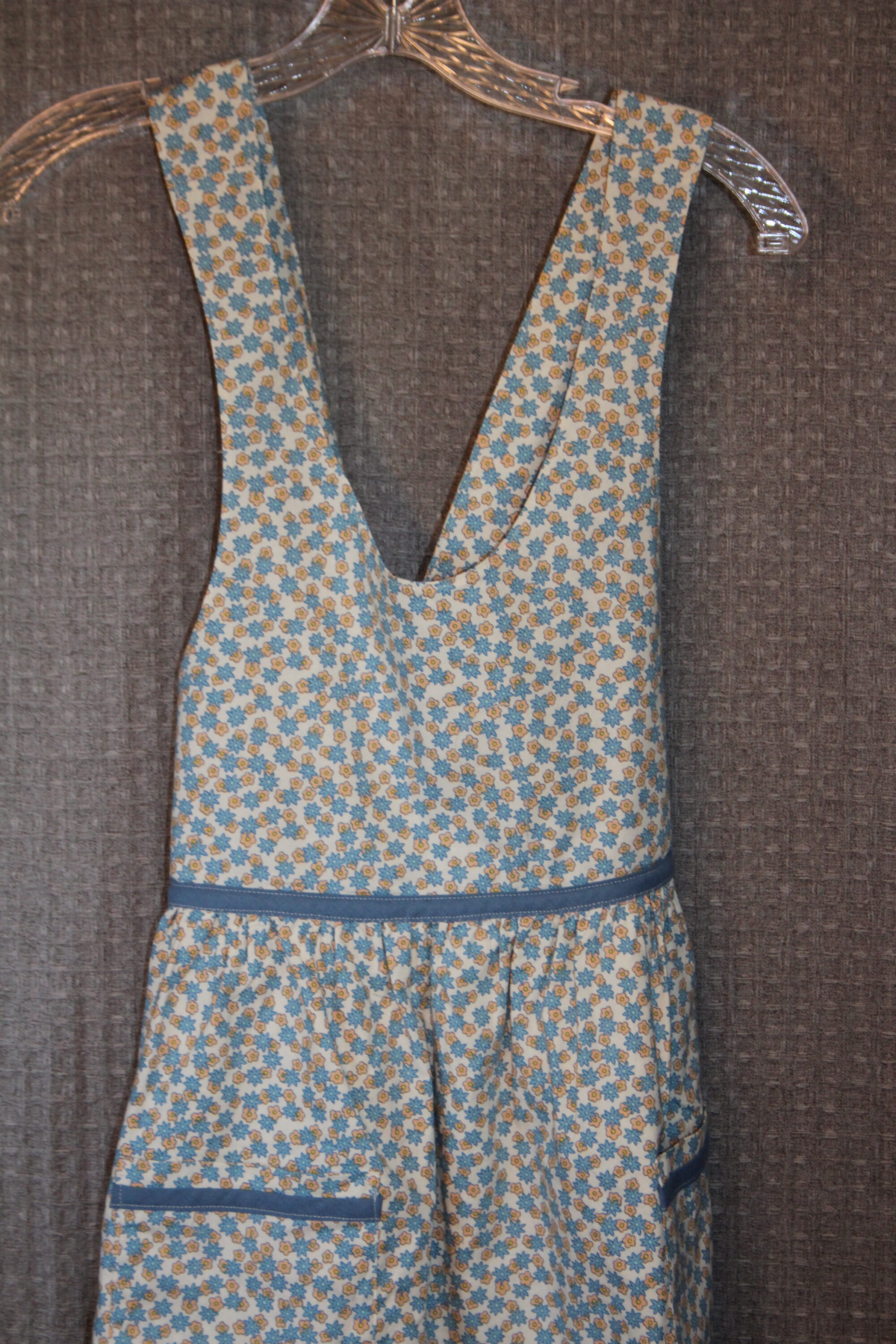
10A.1 (Size 10 reproduction tiny magenta and blue berries fabric, front self-lined apron with silk bows and mother of natural blue pearl buttons on pockets. Front only with button waistband and light gray bias tape).
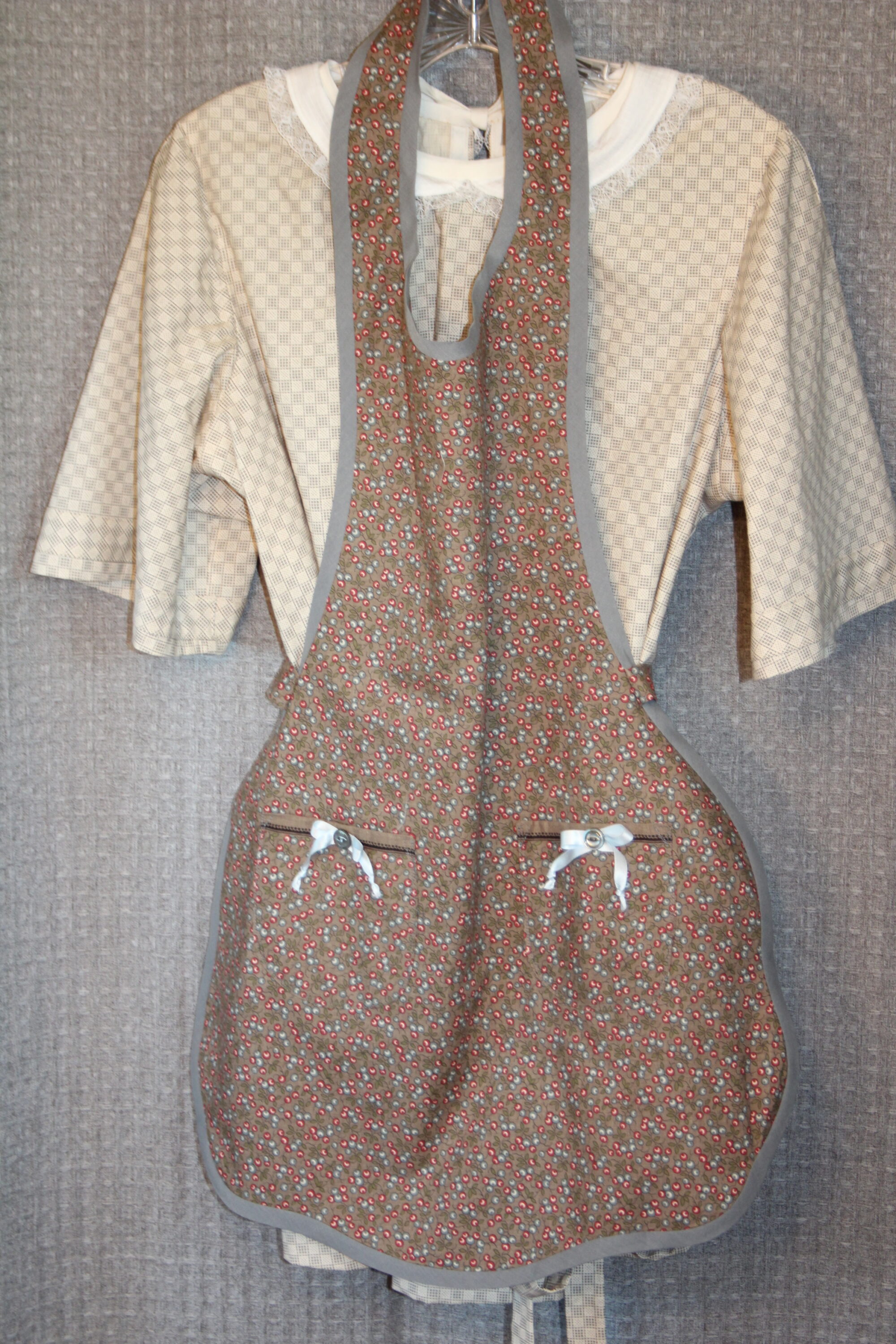
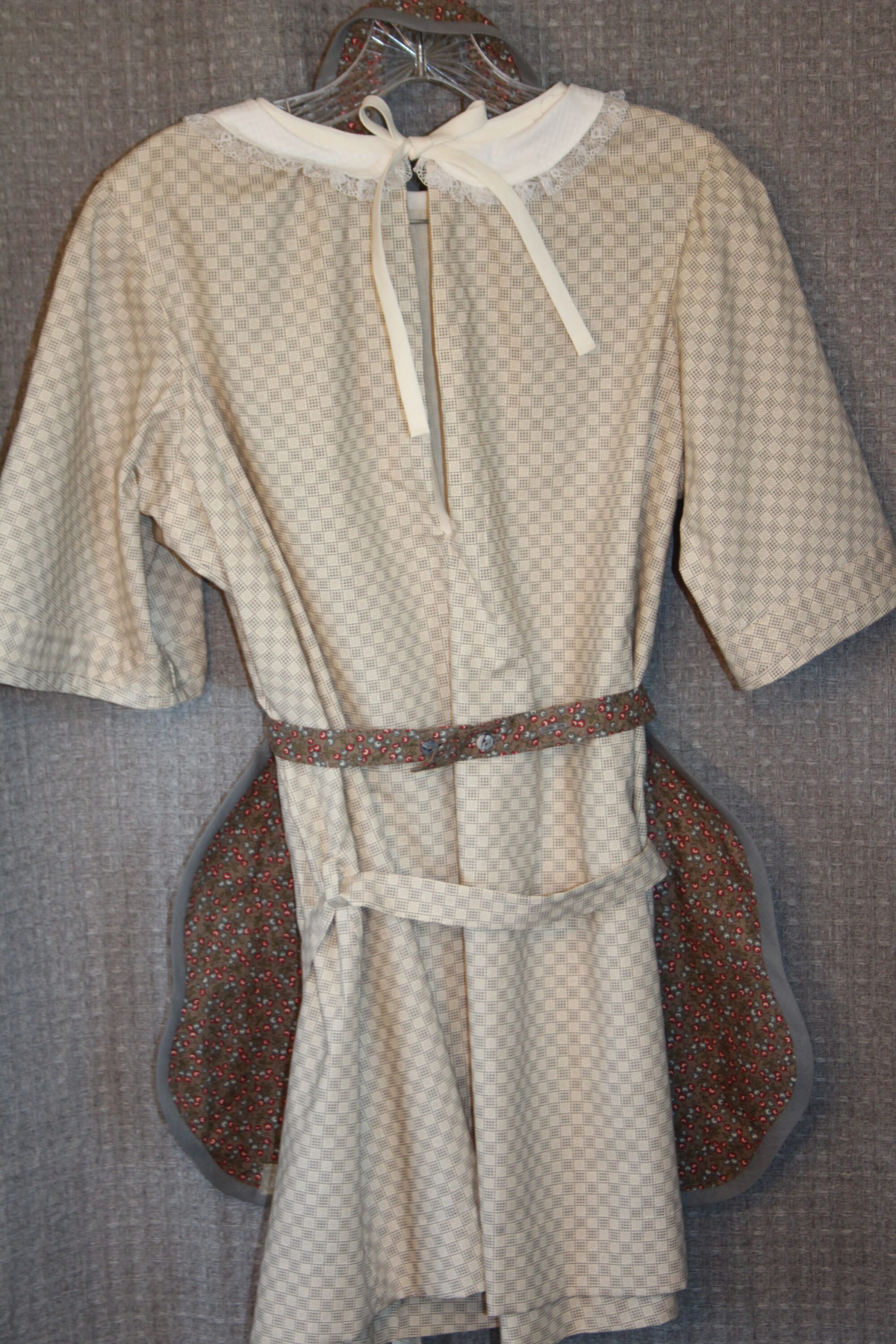

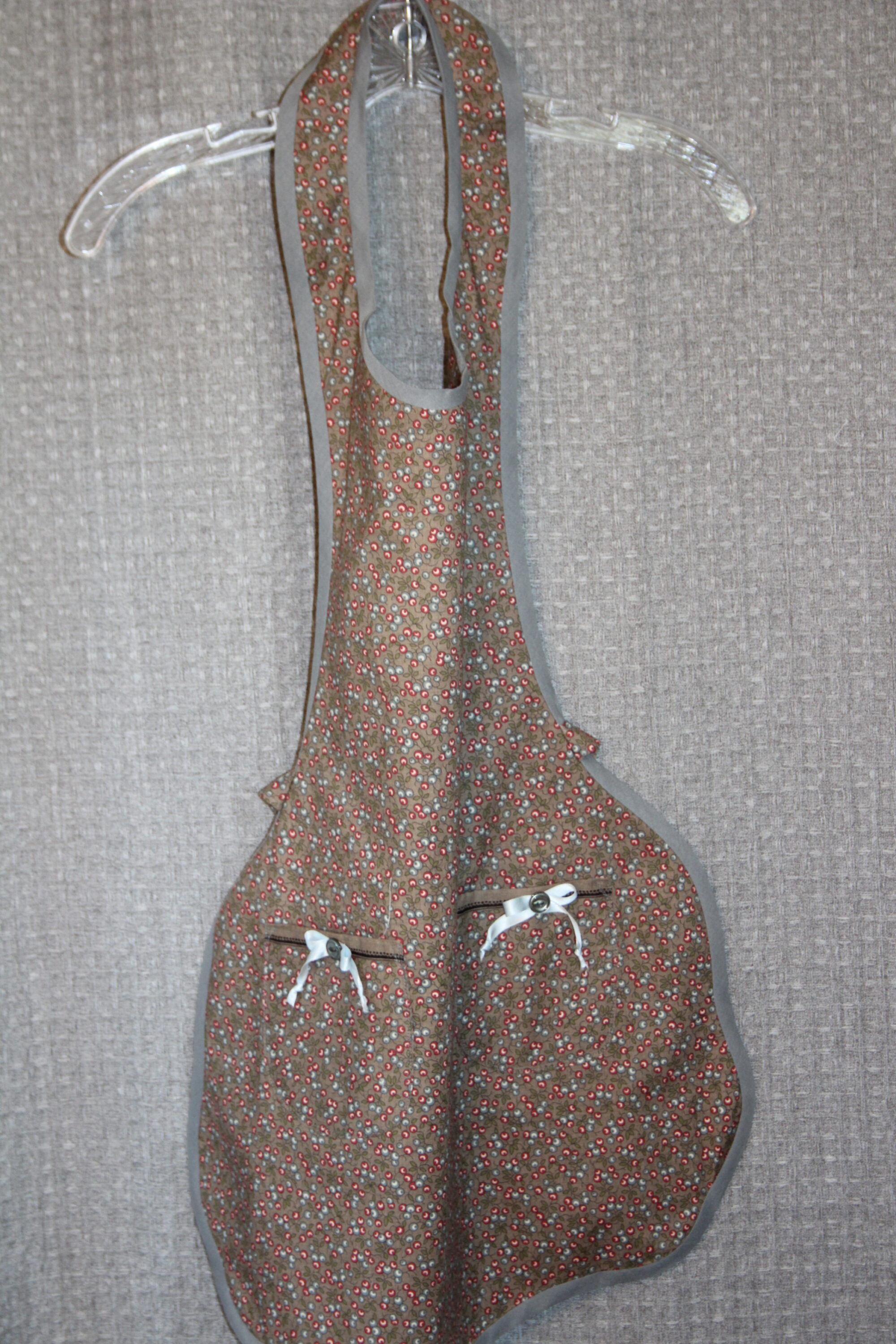
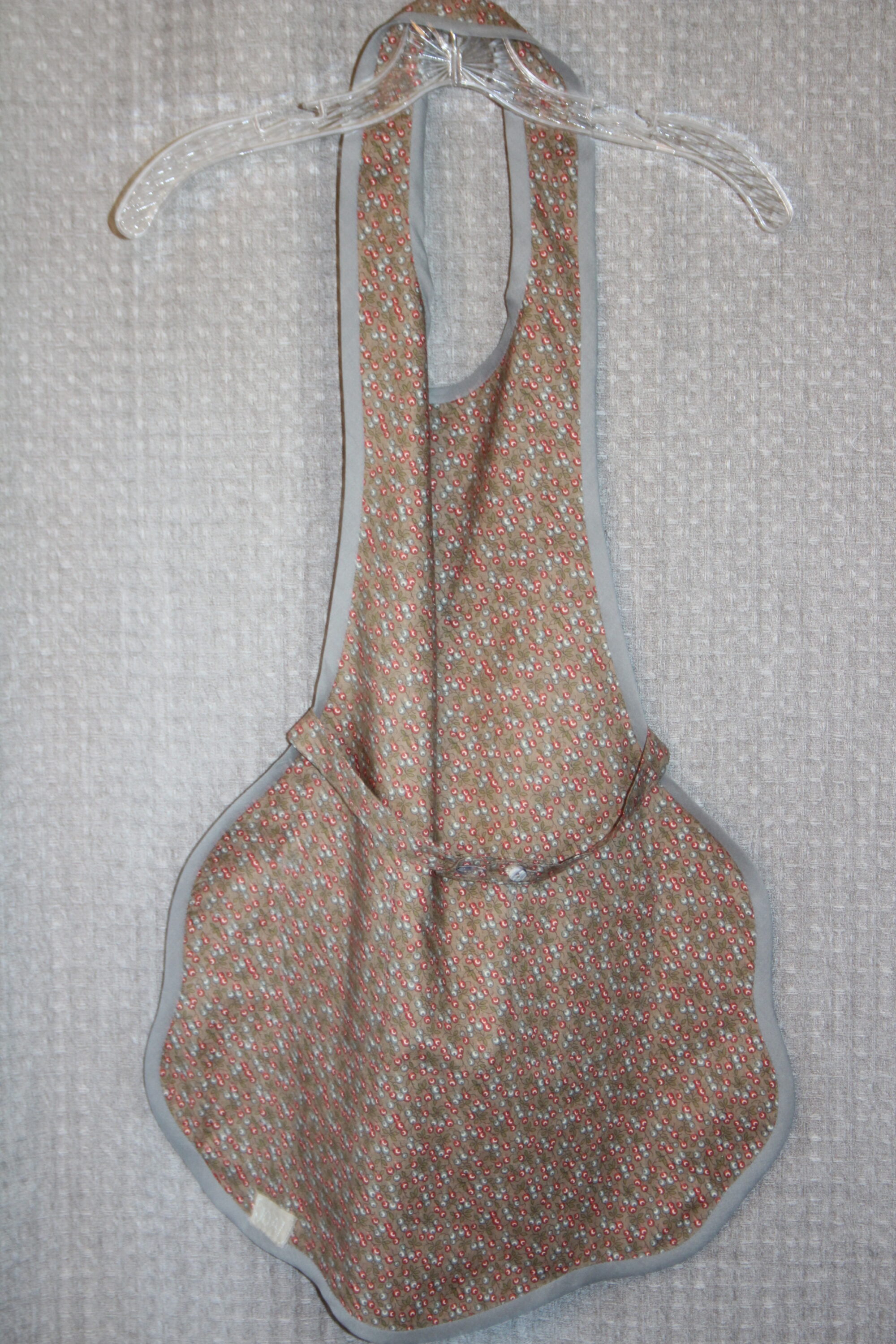
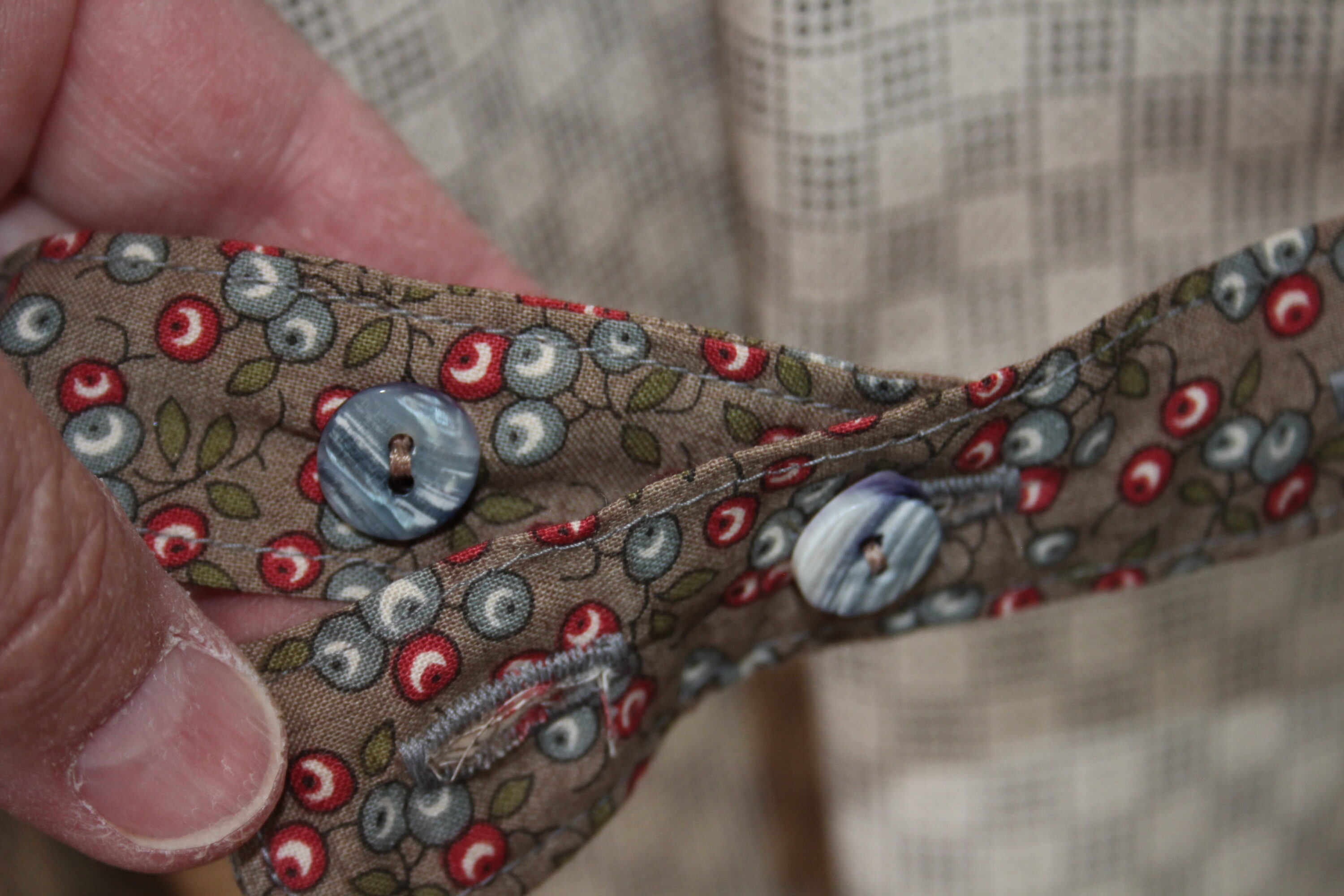
10.2 (Size 10 Egyptian print reproduction w/magenta and coral bias tape, front closure. Waist tie, low pockets in older girl style).
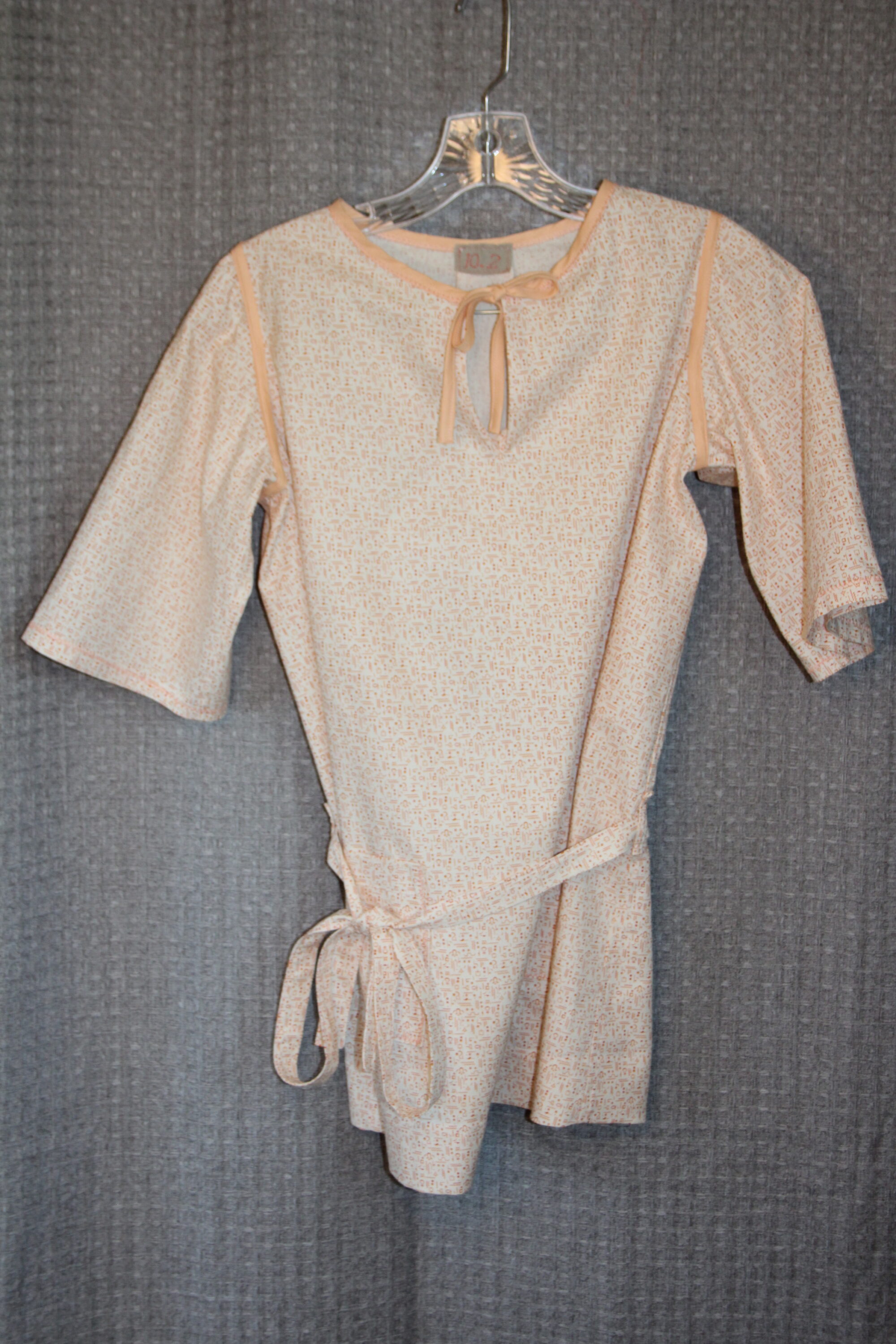
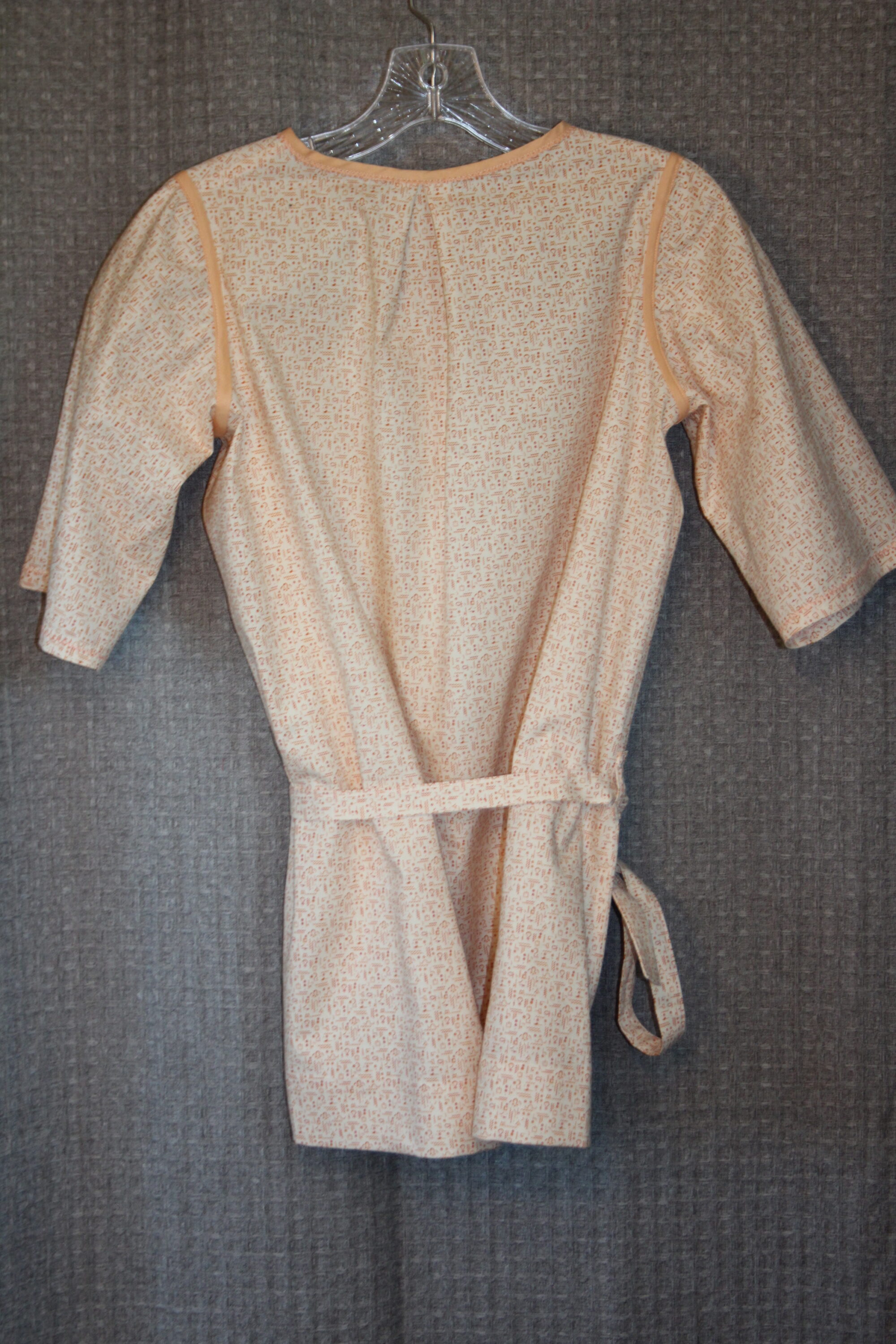
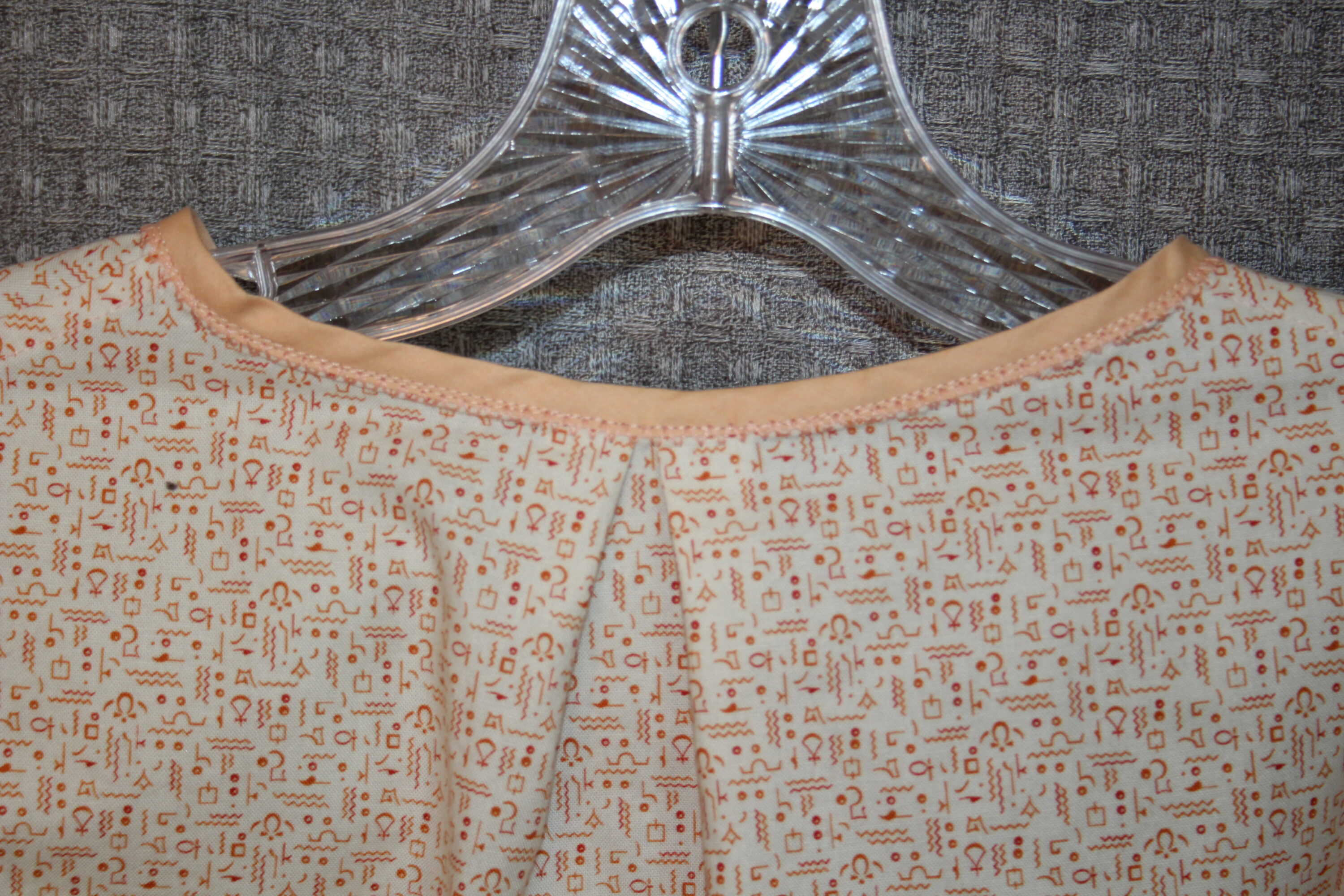
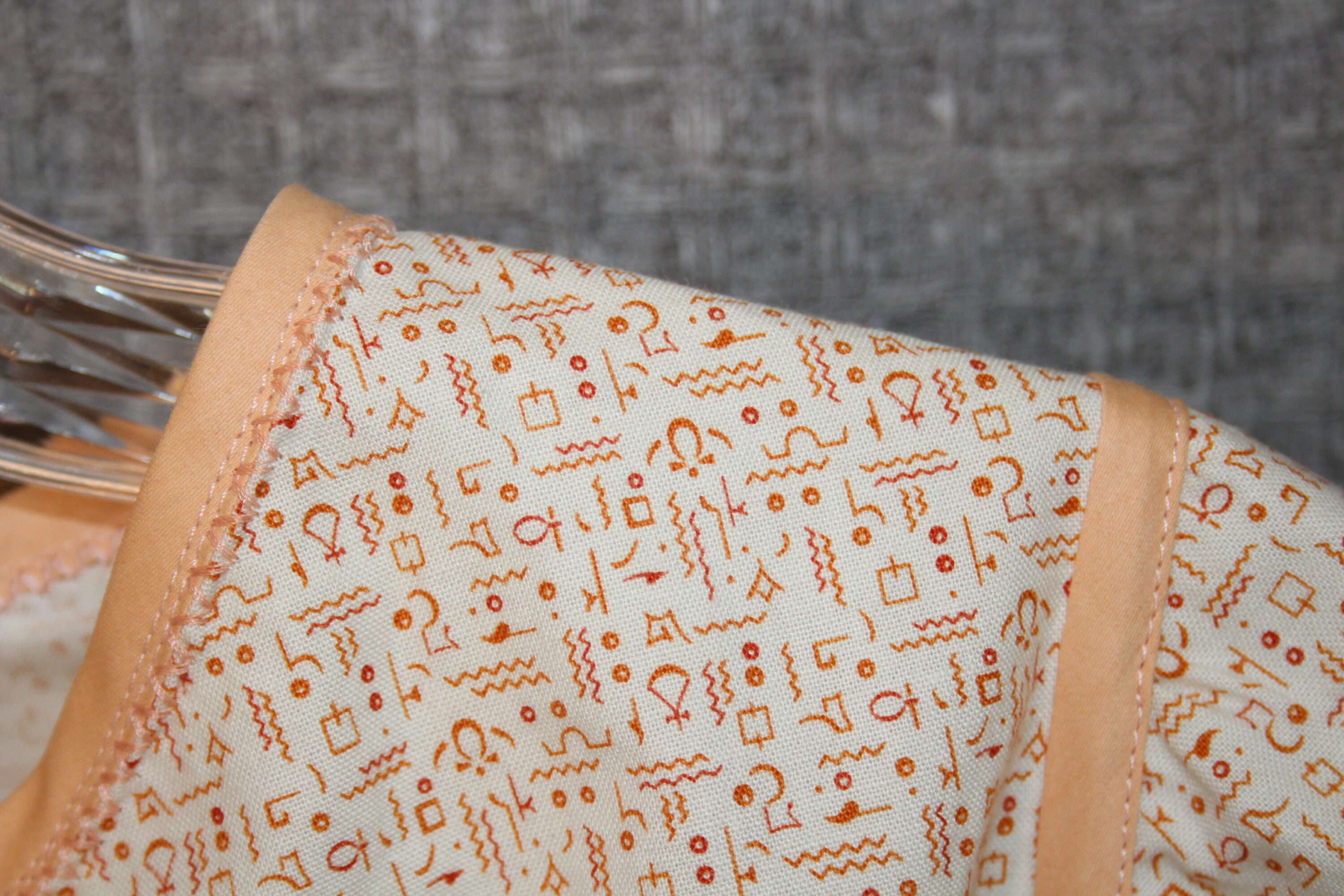
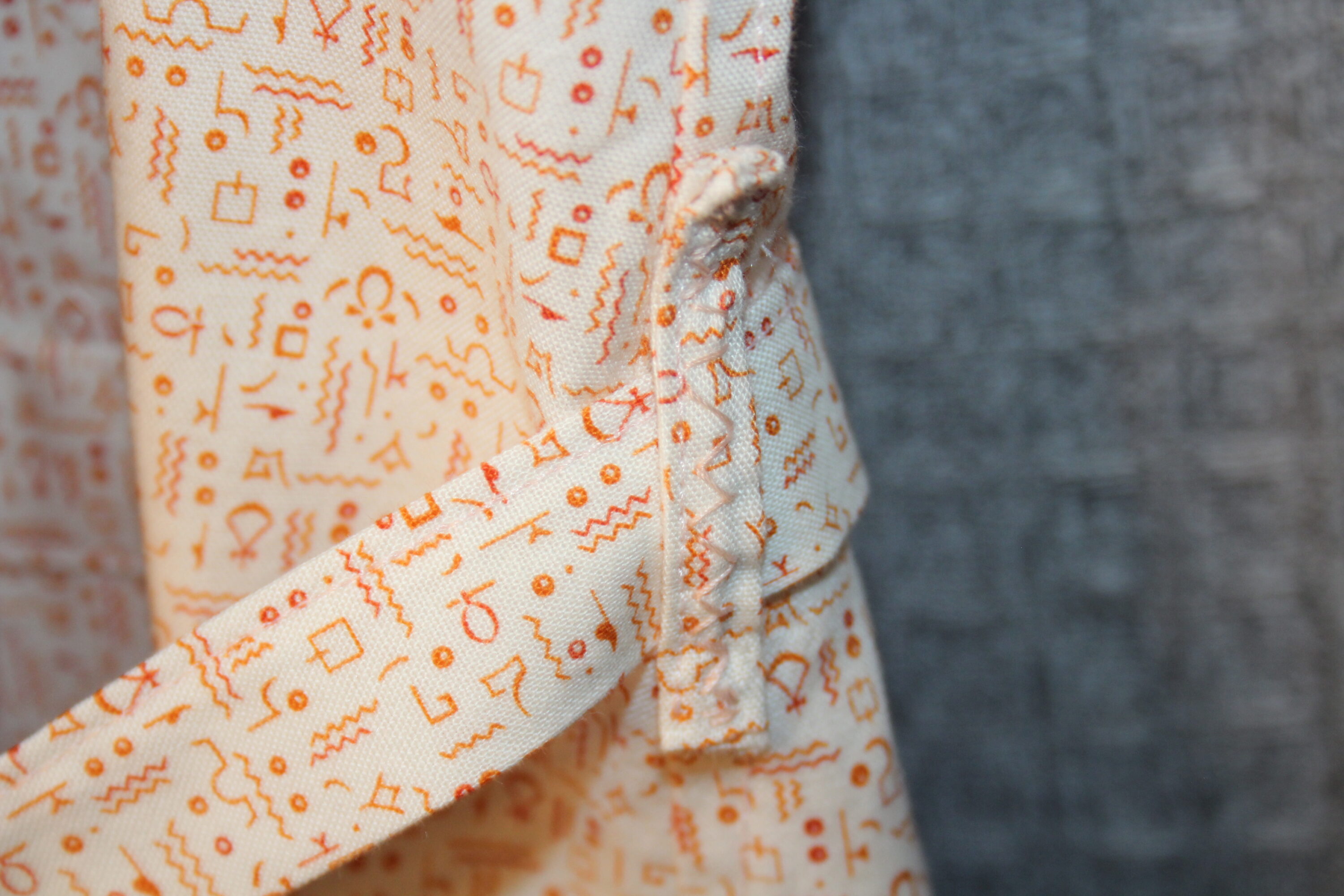
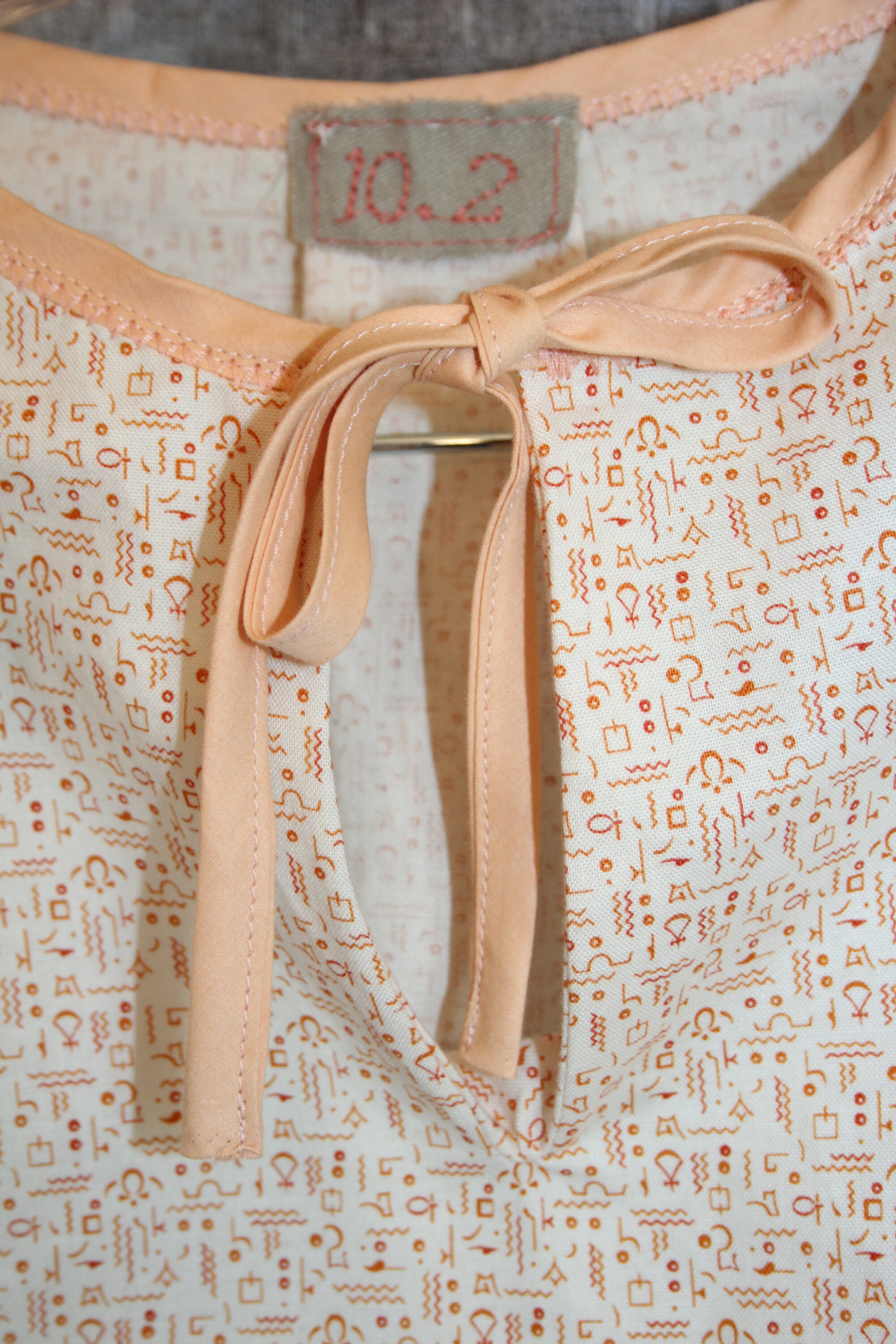
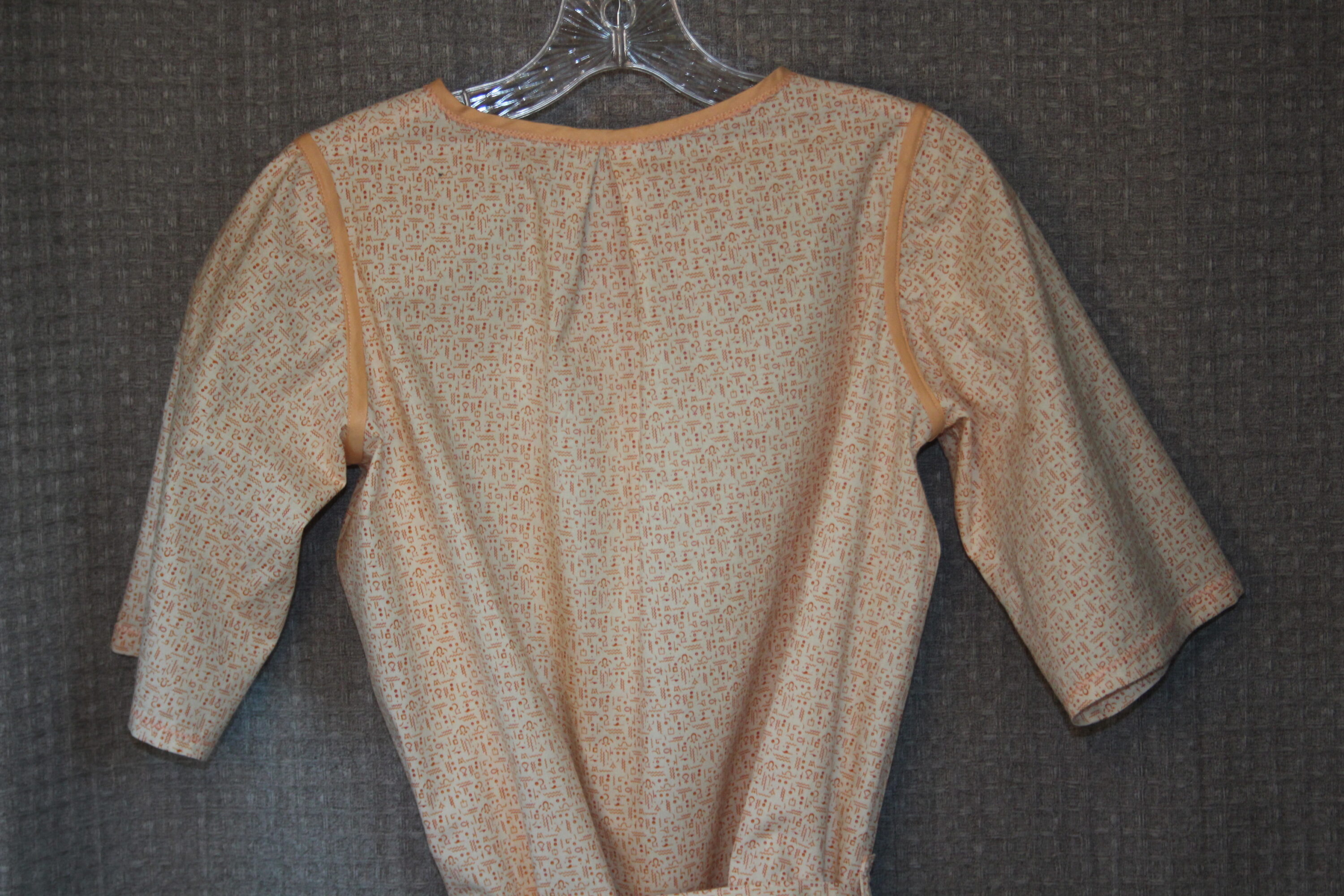
10.1 (Size 10 little girl “Dolly Dingle” style high waist light pink with dark pink flowers and dark pink bias tape, low pockets. Mother of pearl front closure buttons tied).
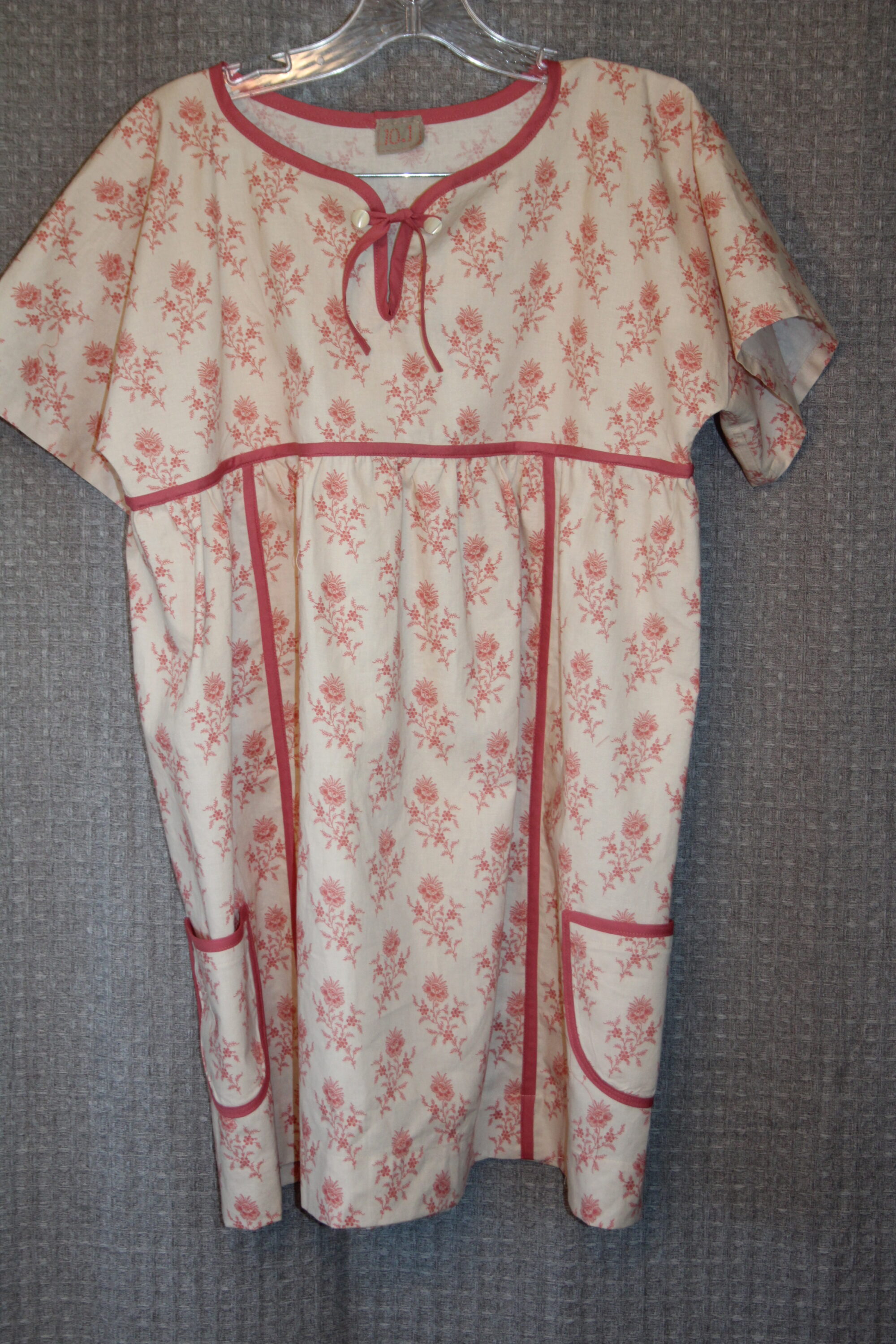
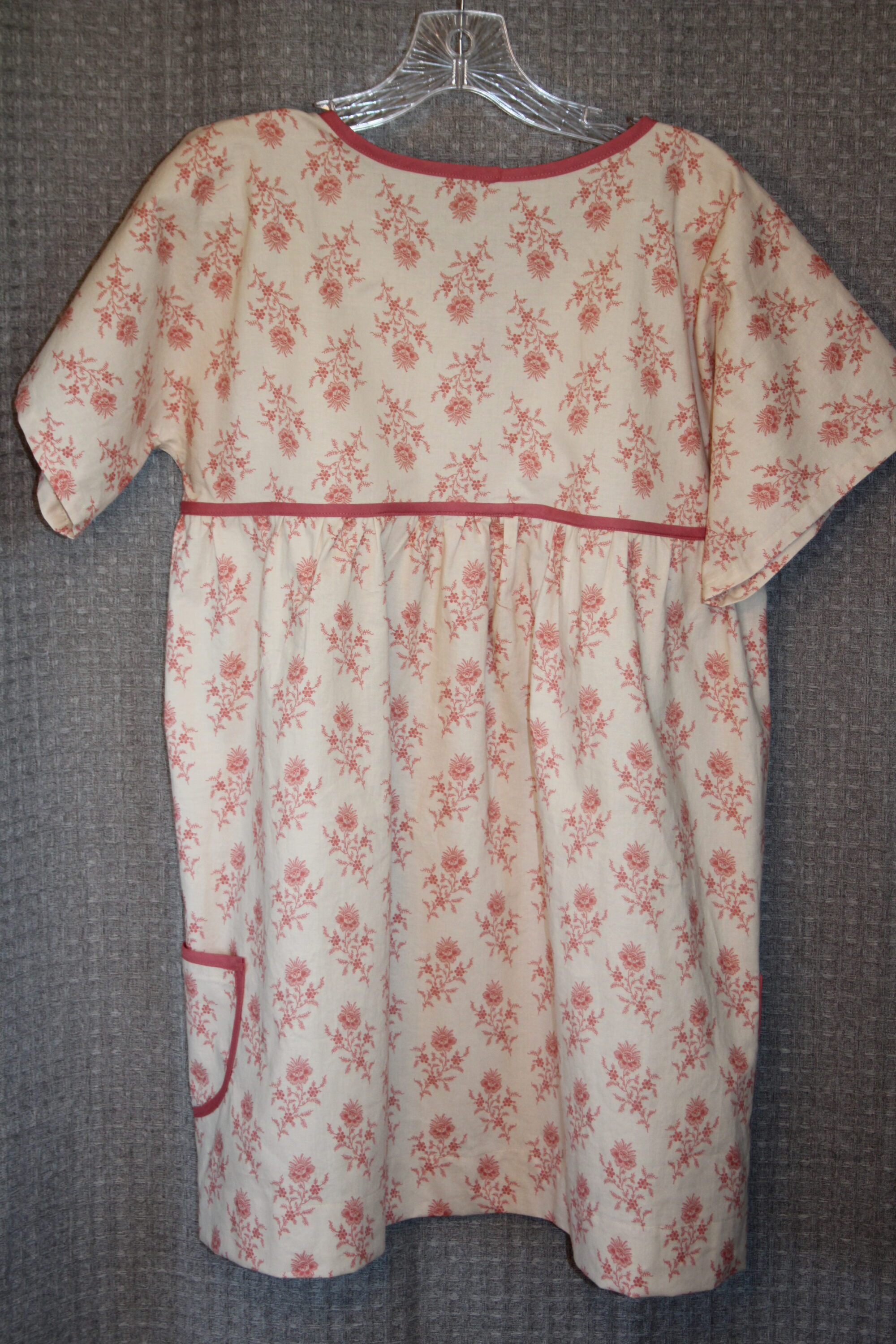
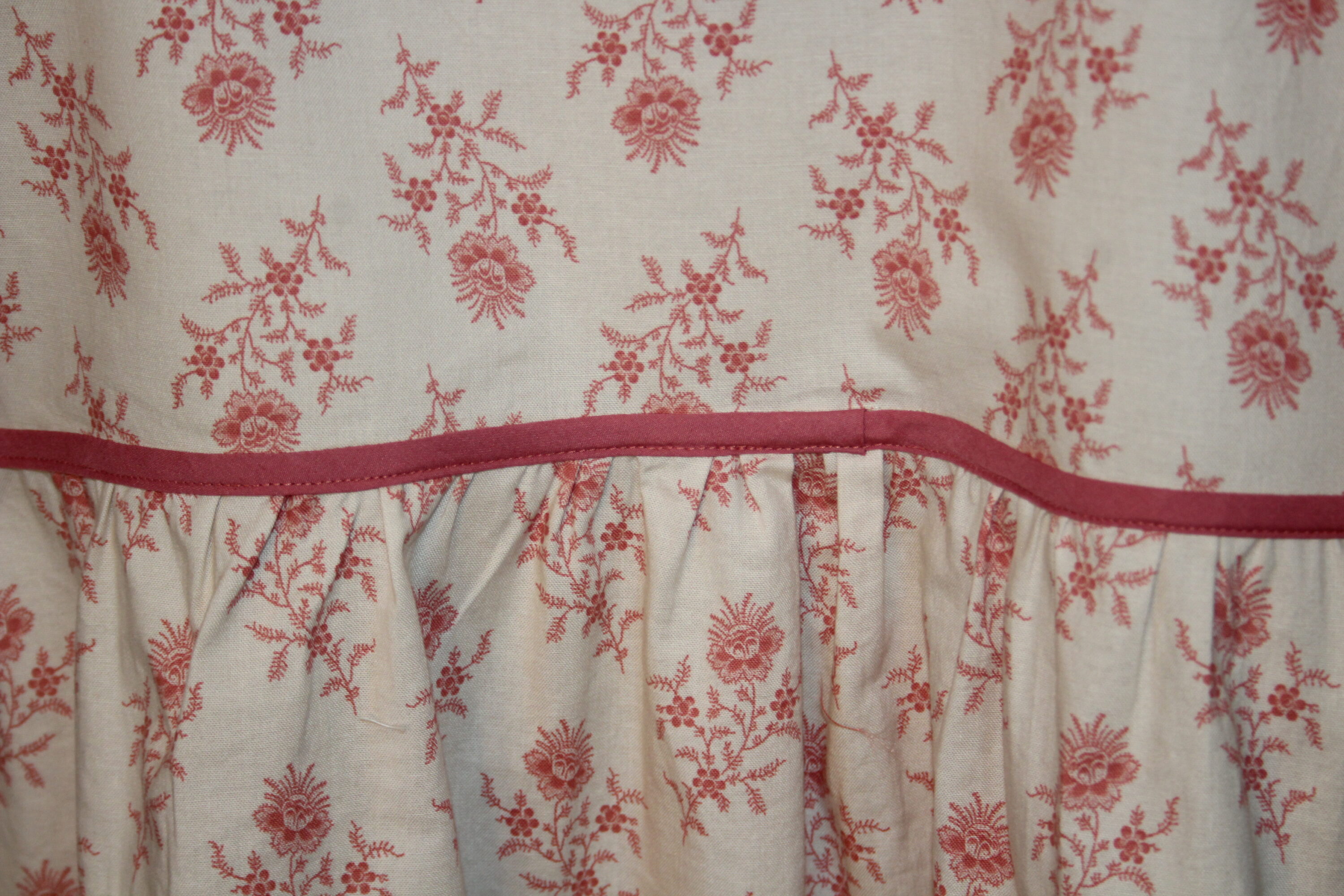
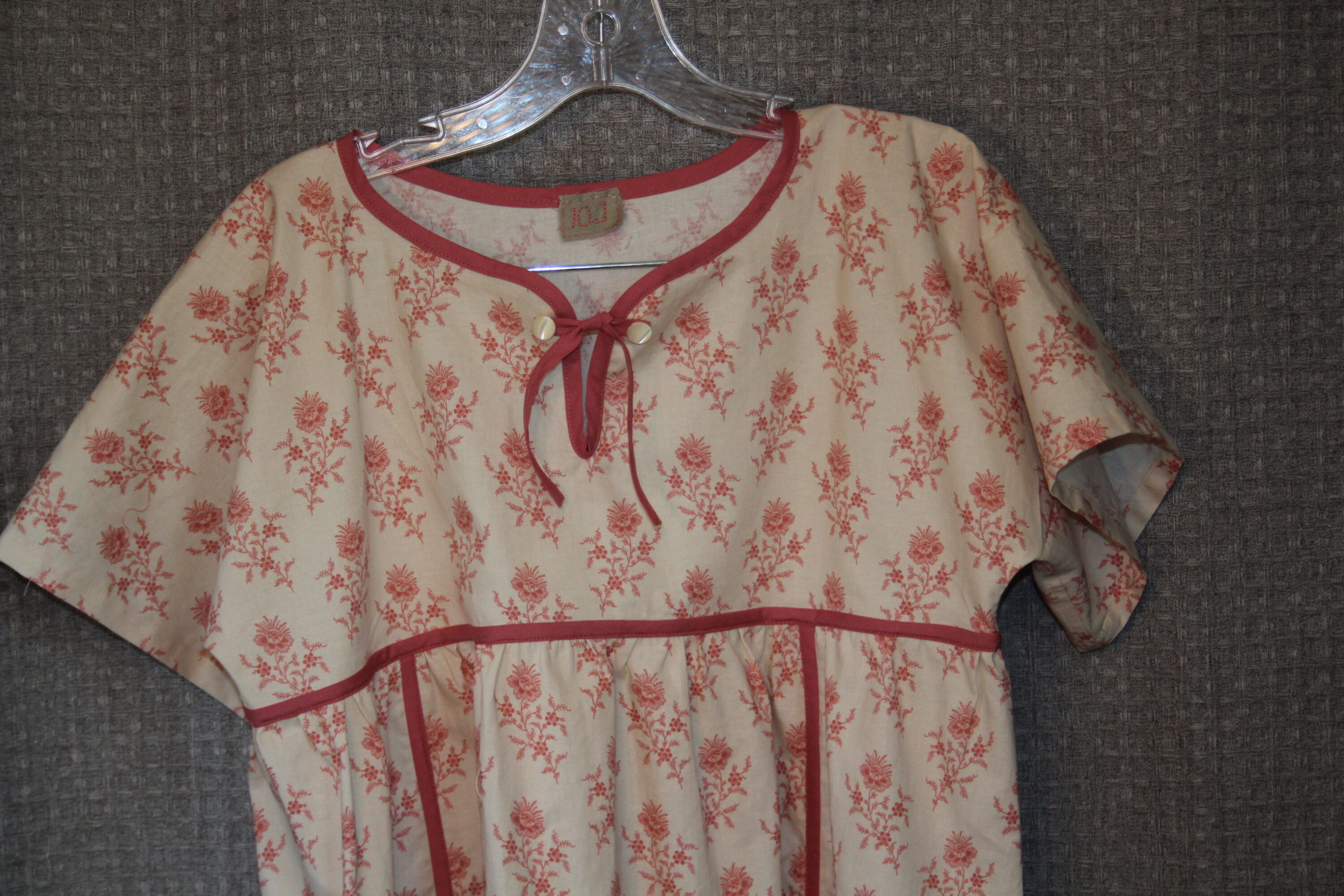
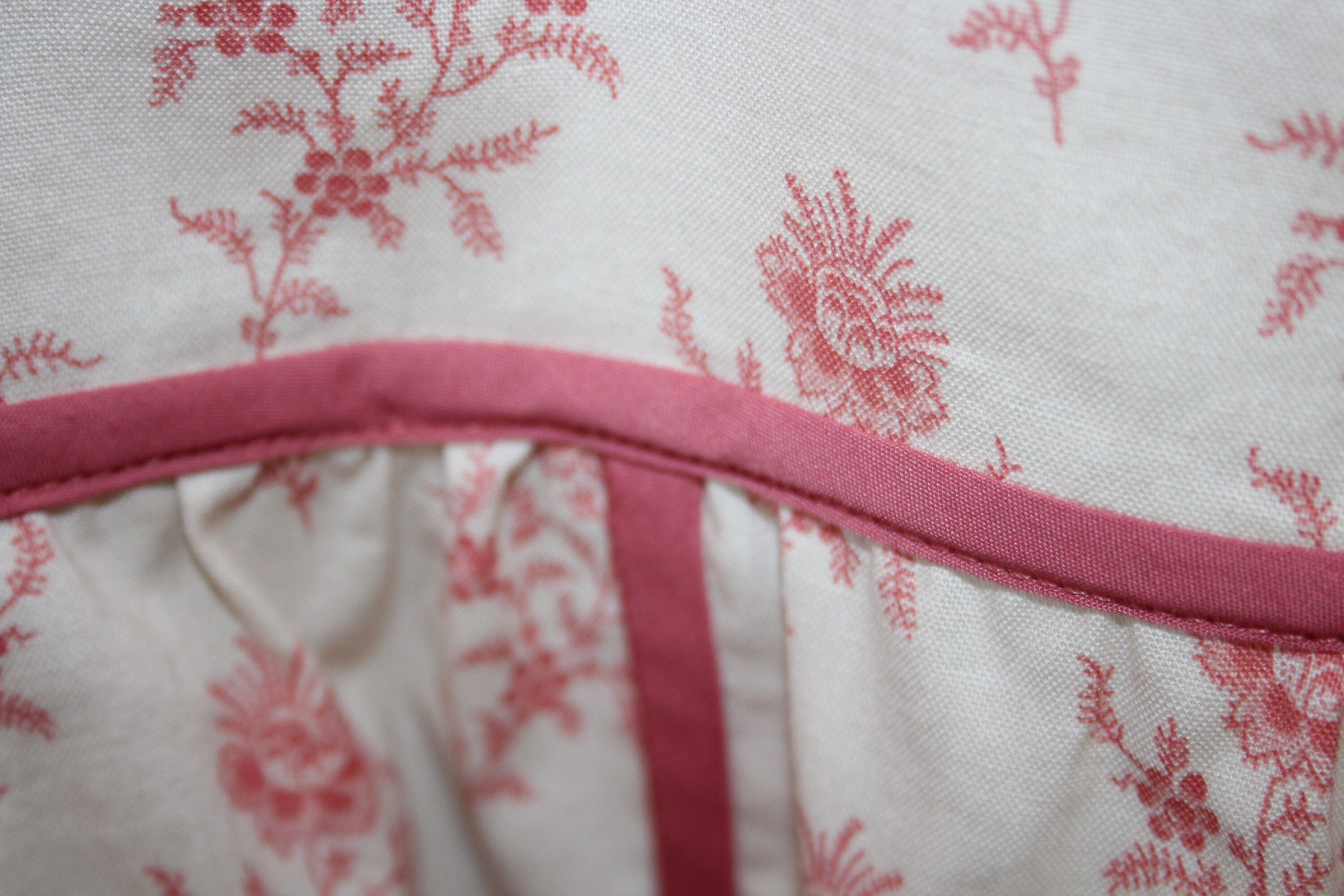
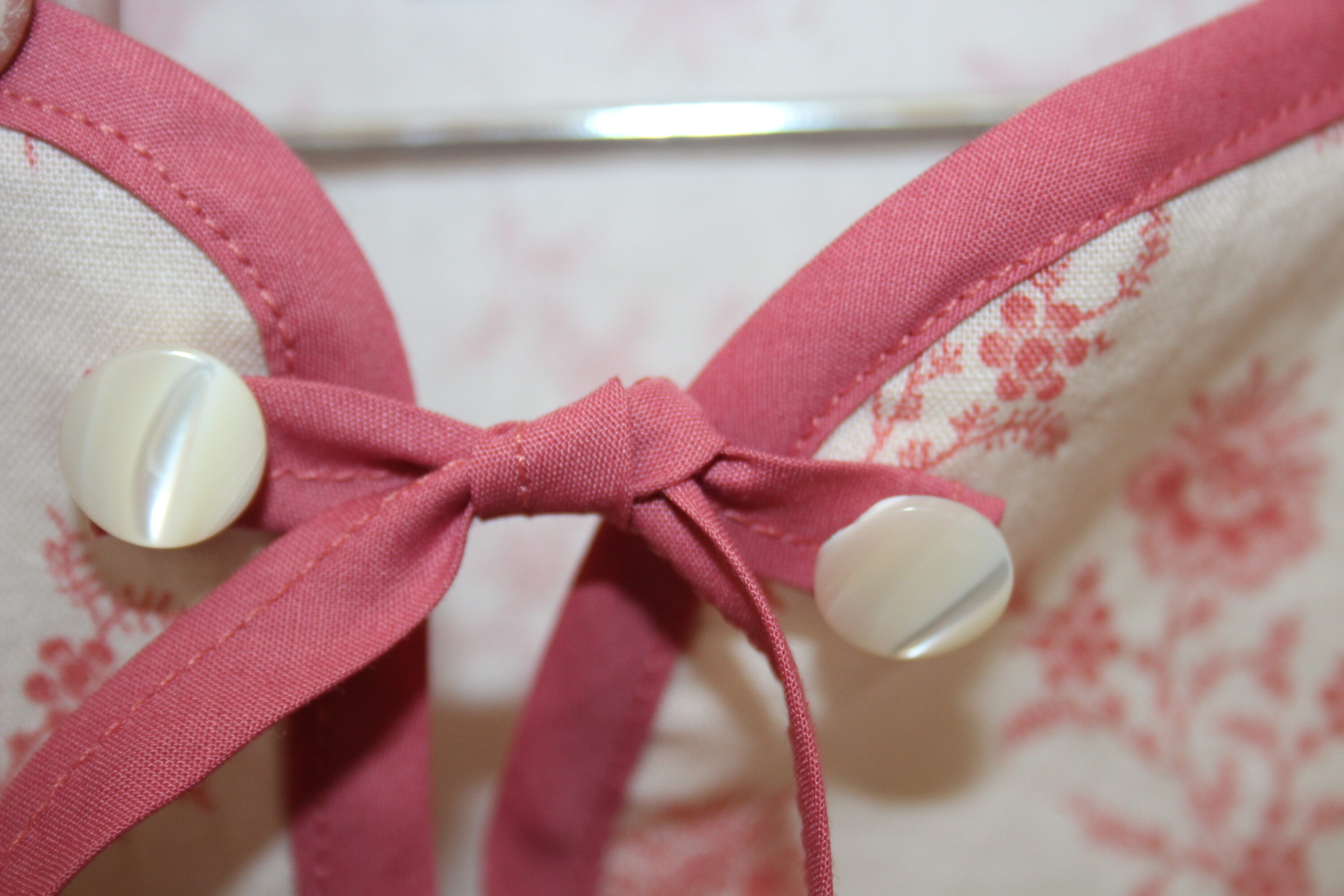
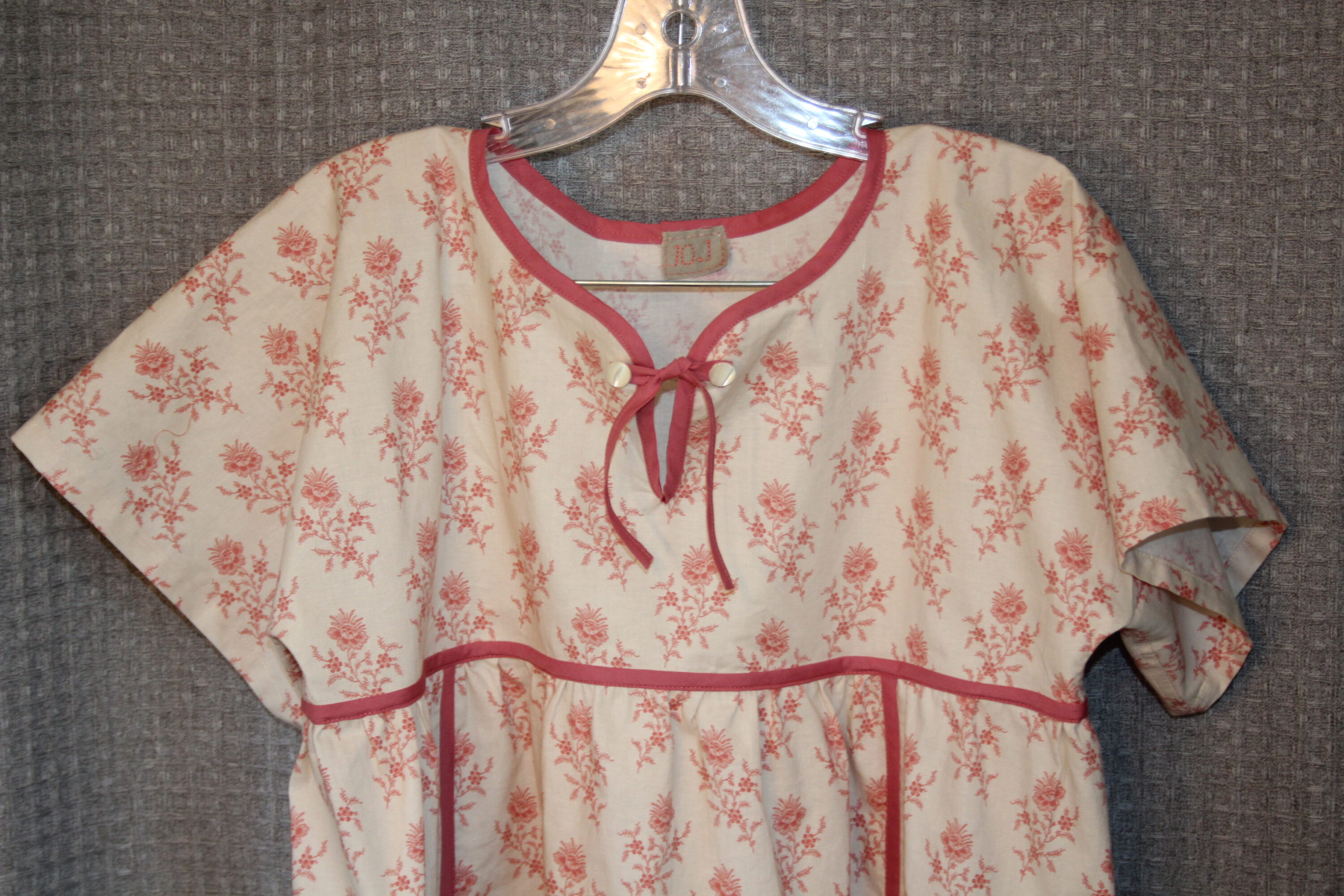

8A.1 (Size 8 teal polka dots on ecru reversible with reproduction “Downton Abby Sybie” large oval with coral flowers. “Puff” decorations on low pockets and light teal bias tape. Wider “Dolly Dingle” little girl style with side button flaps. Mother of pearl buttons).
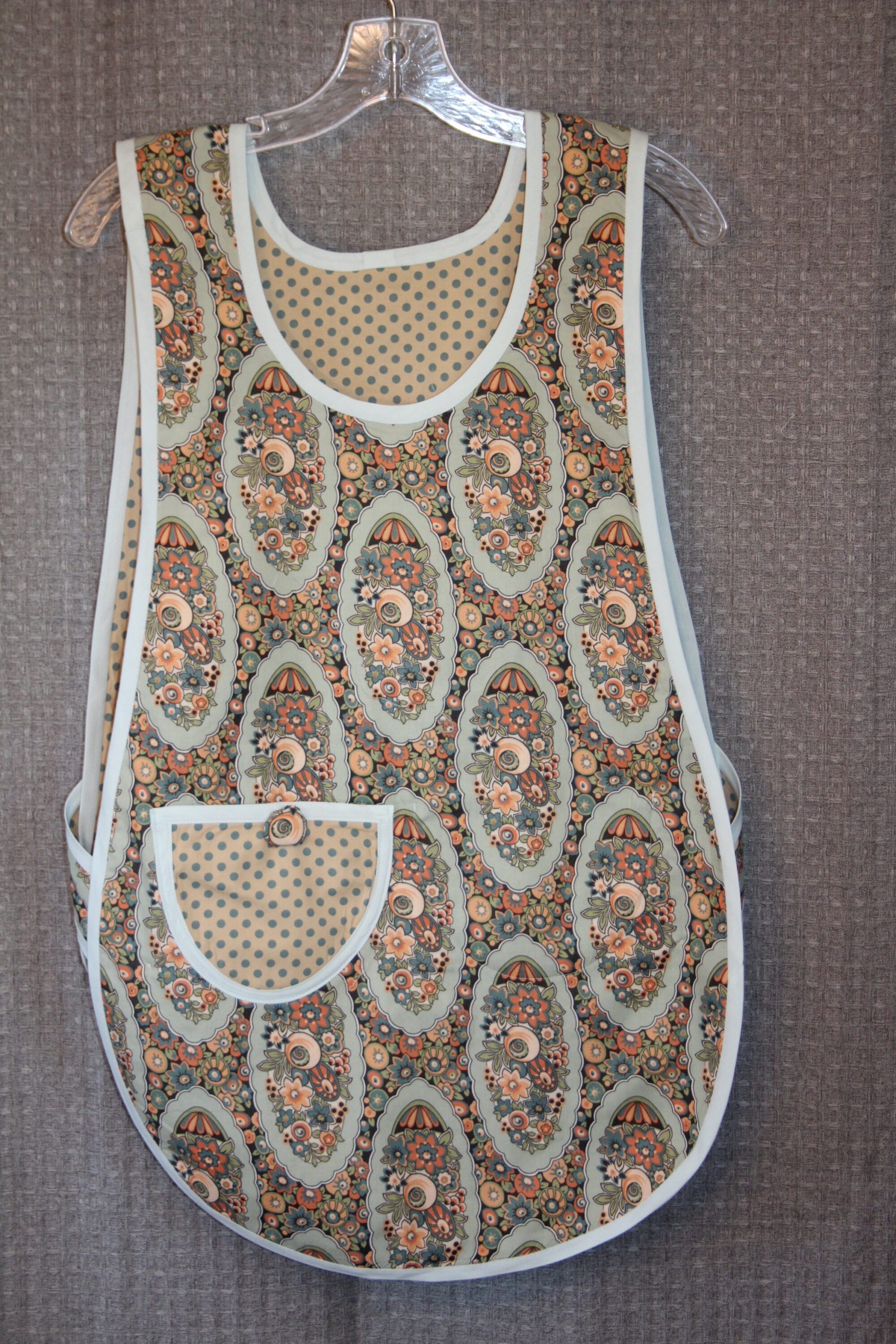
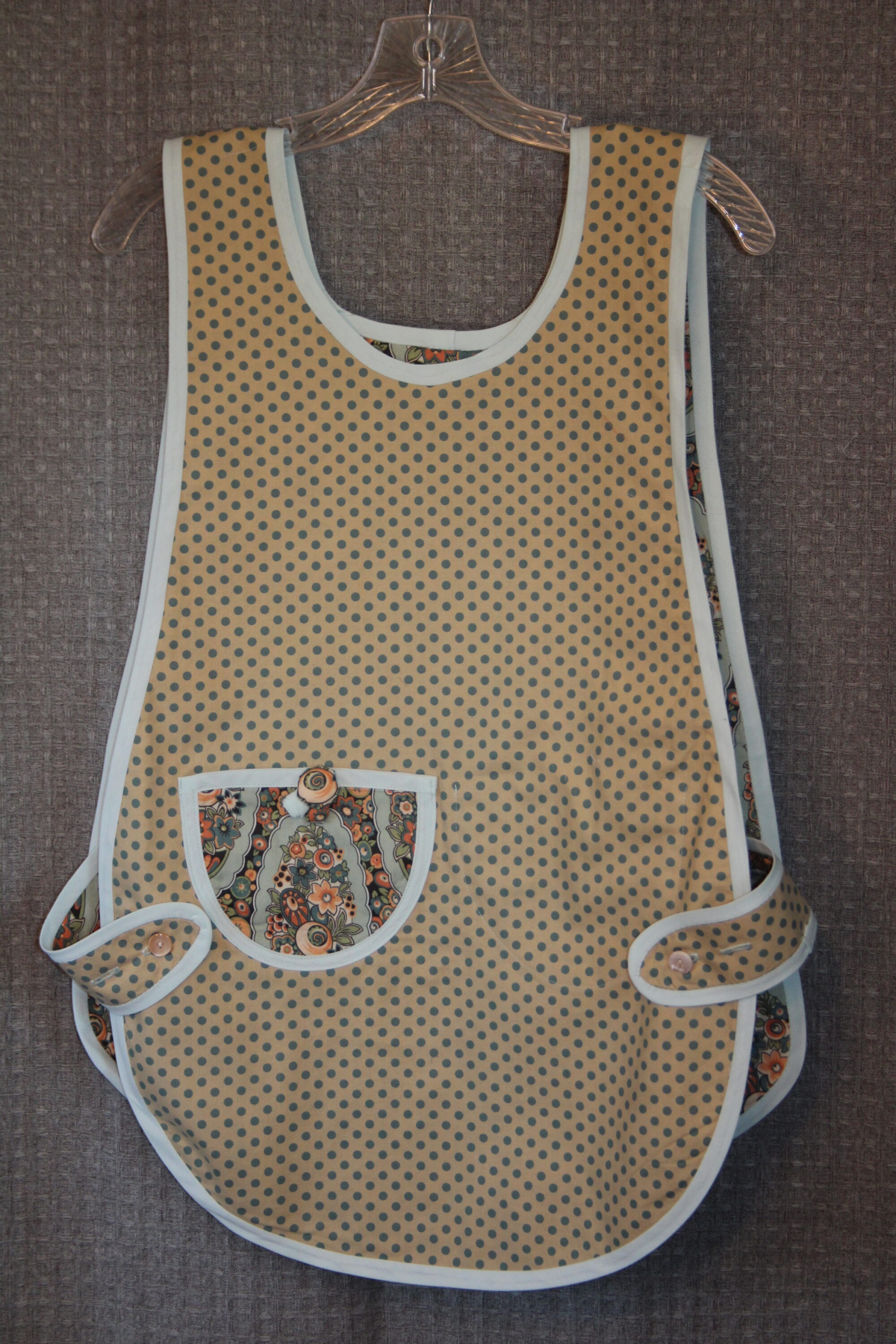
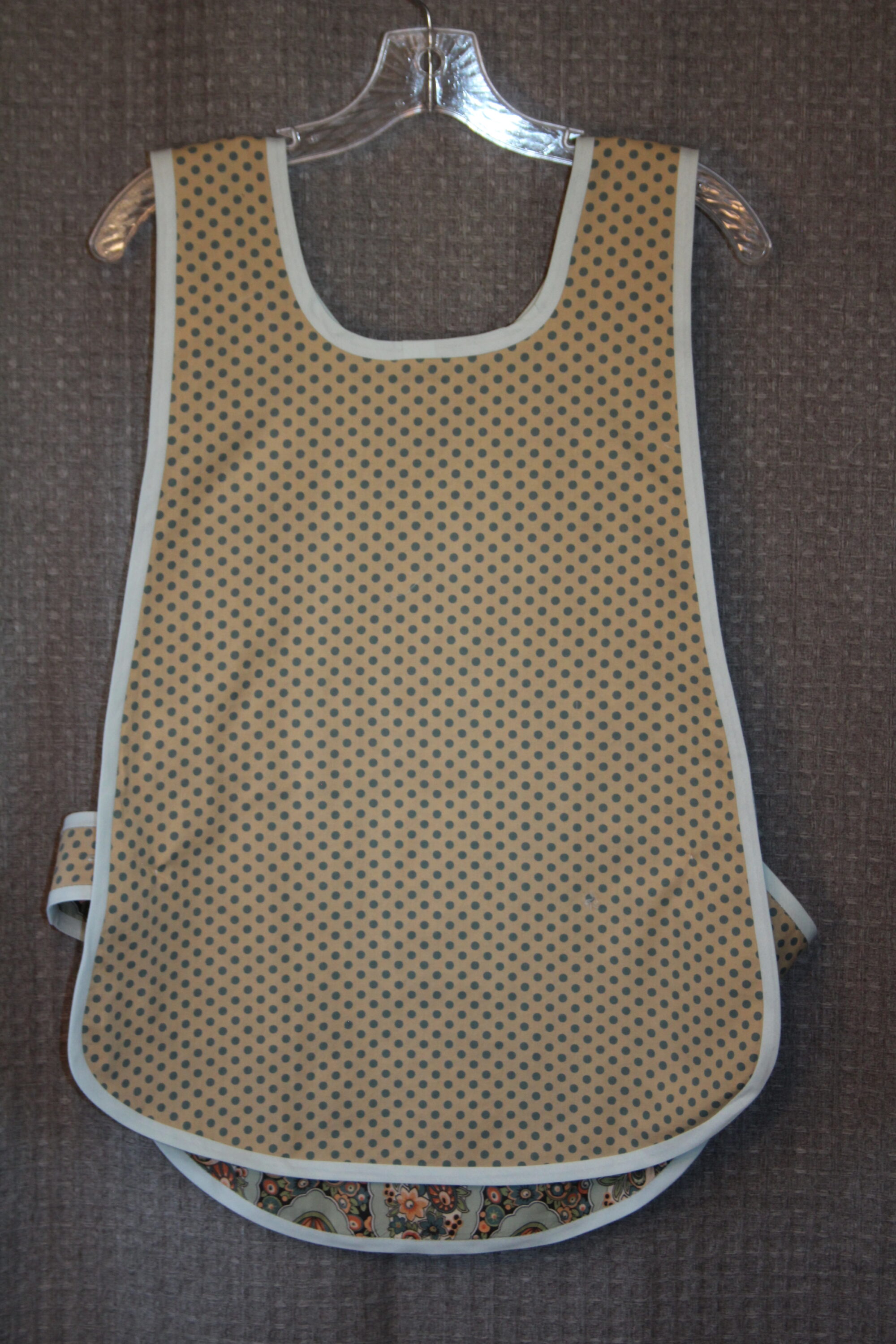
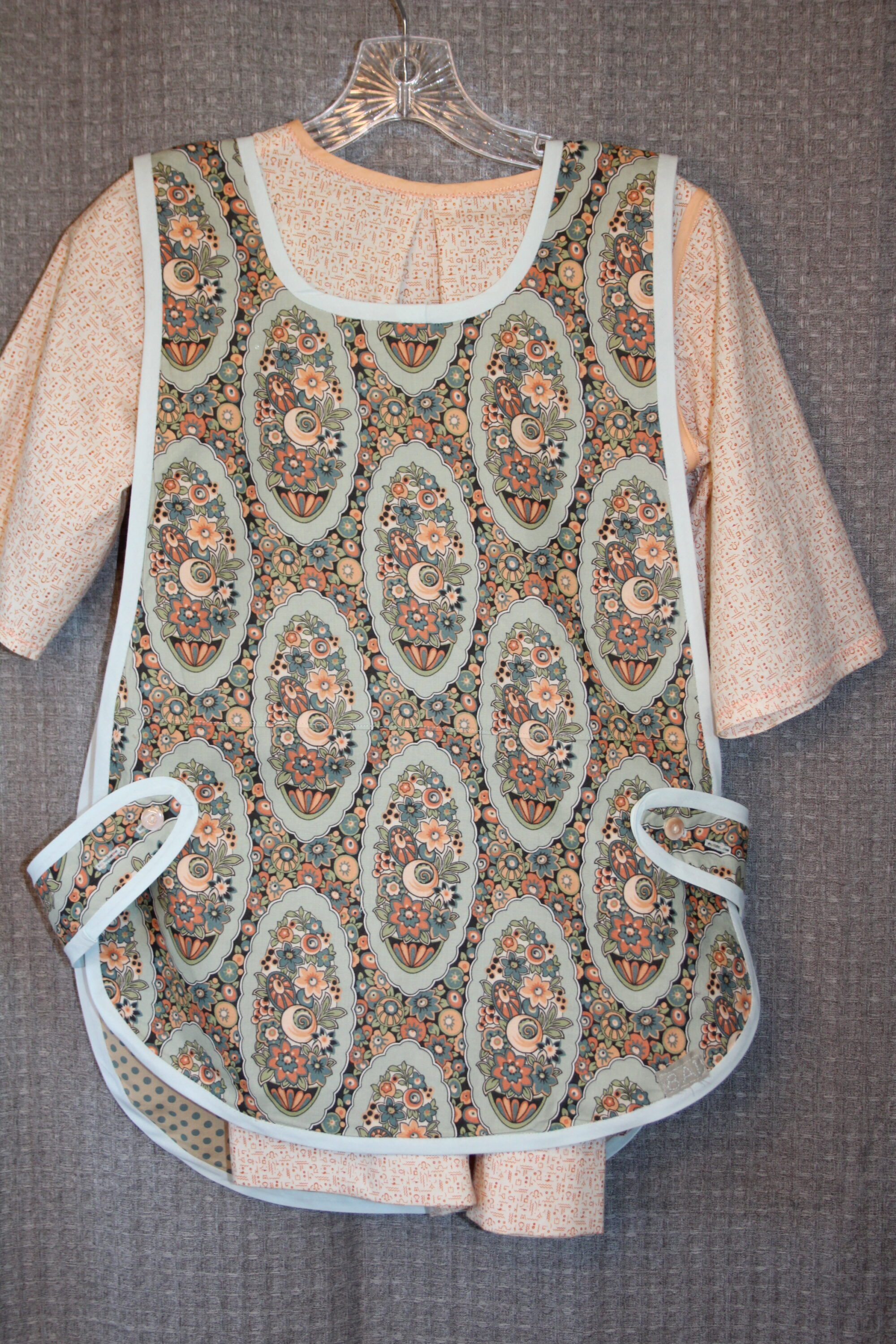
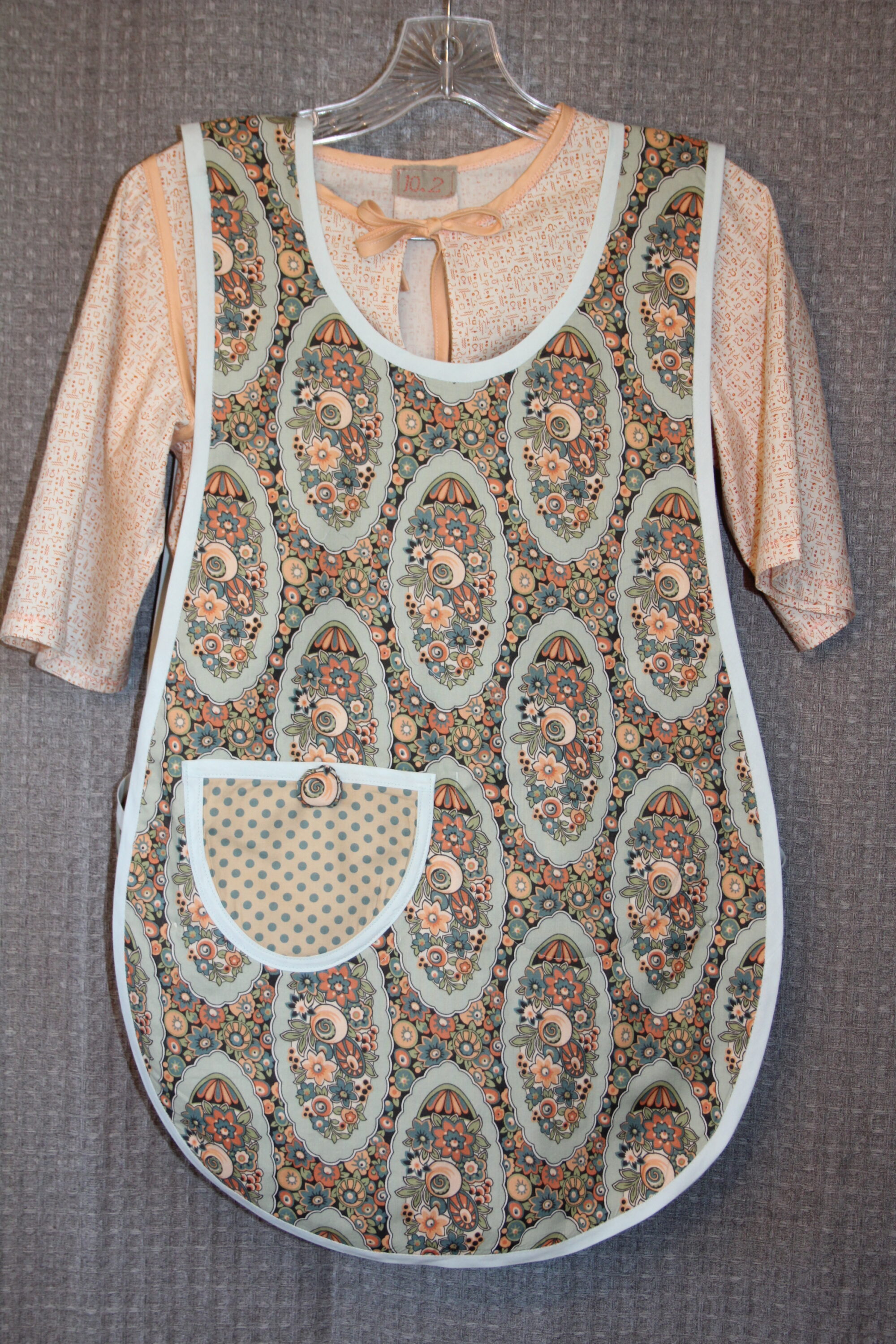
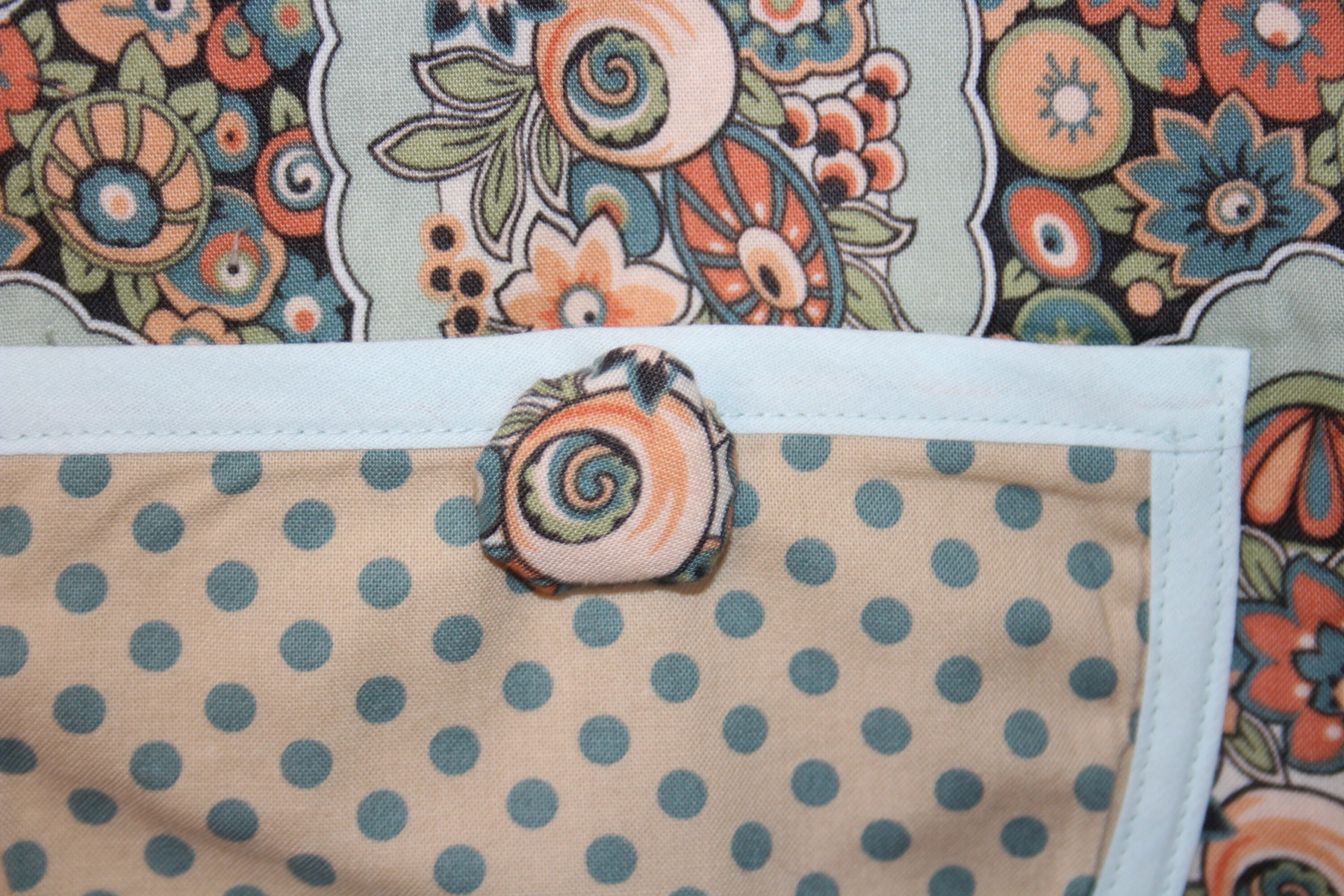
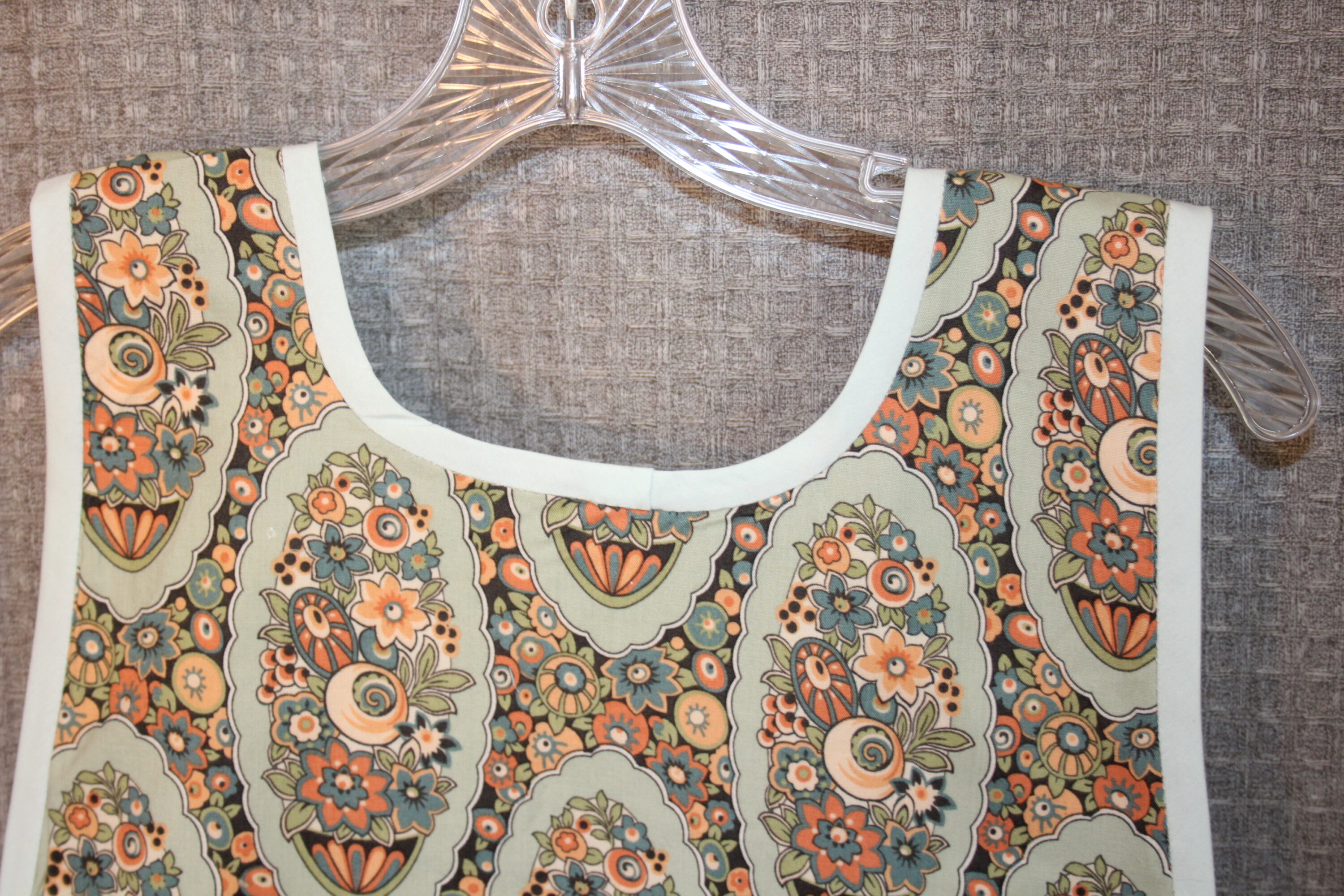
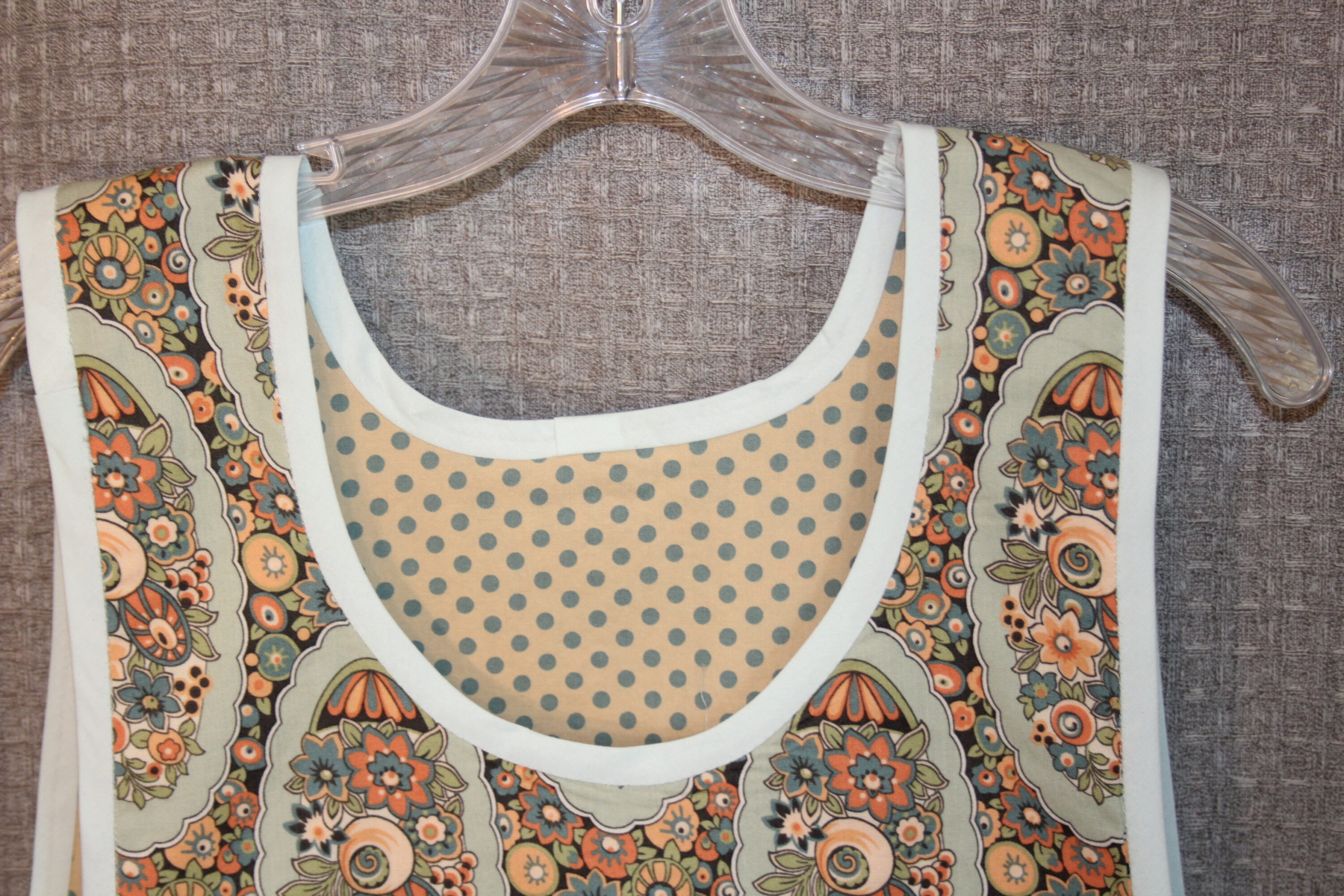
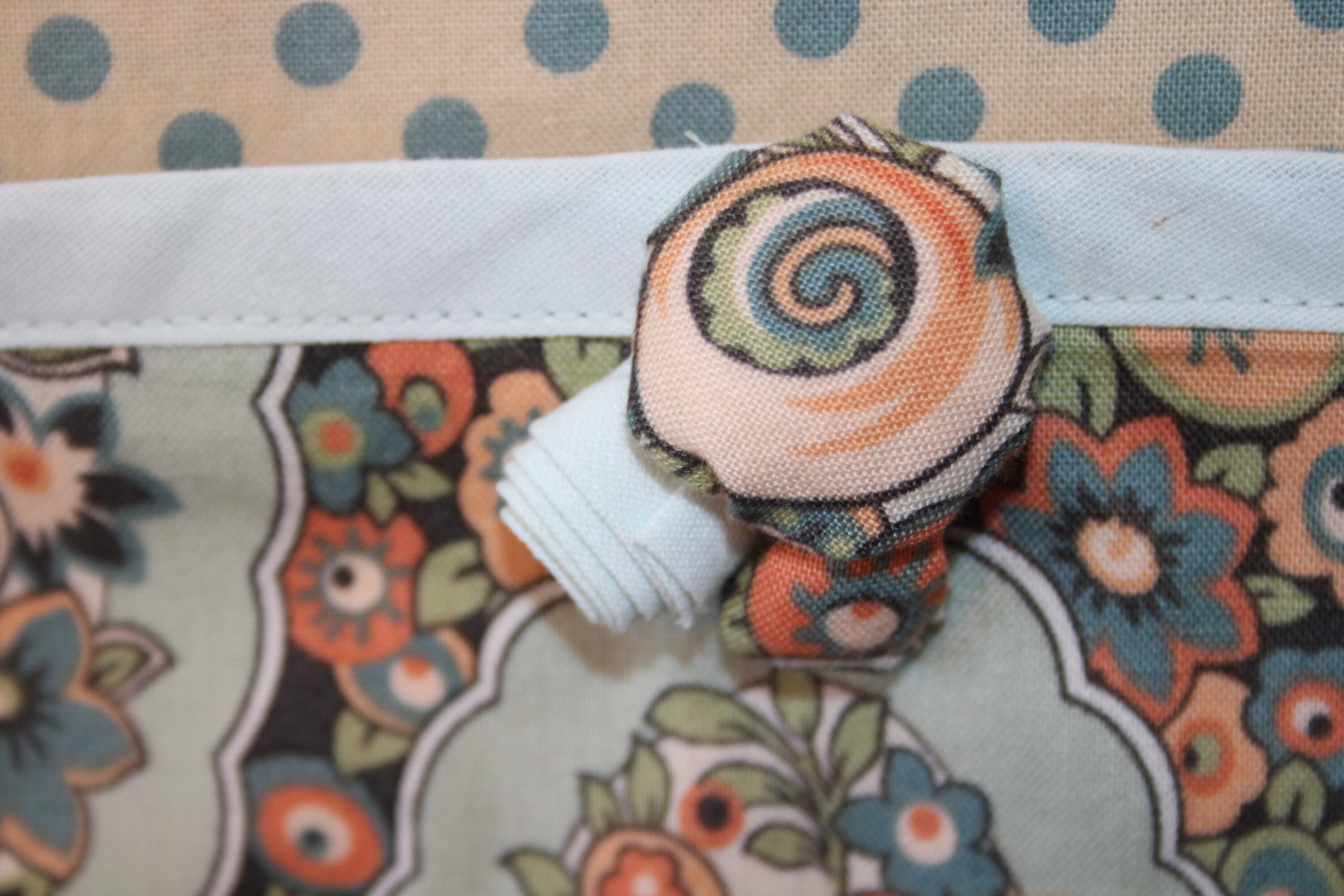
8.1 (Size 8 little girl style which is short and wide with high waist, “medallion” period correct fabric with bright white wide collar in dotted swiss fabric with self piping. Buttonhole period correct insert for neck tie and front hook and eye closure. Short length with smaller sleeves).
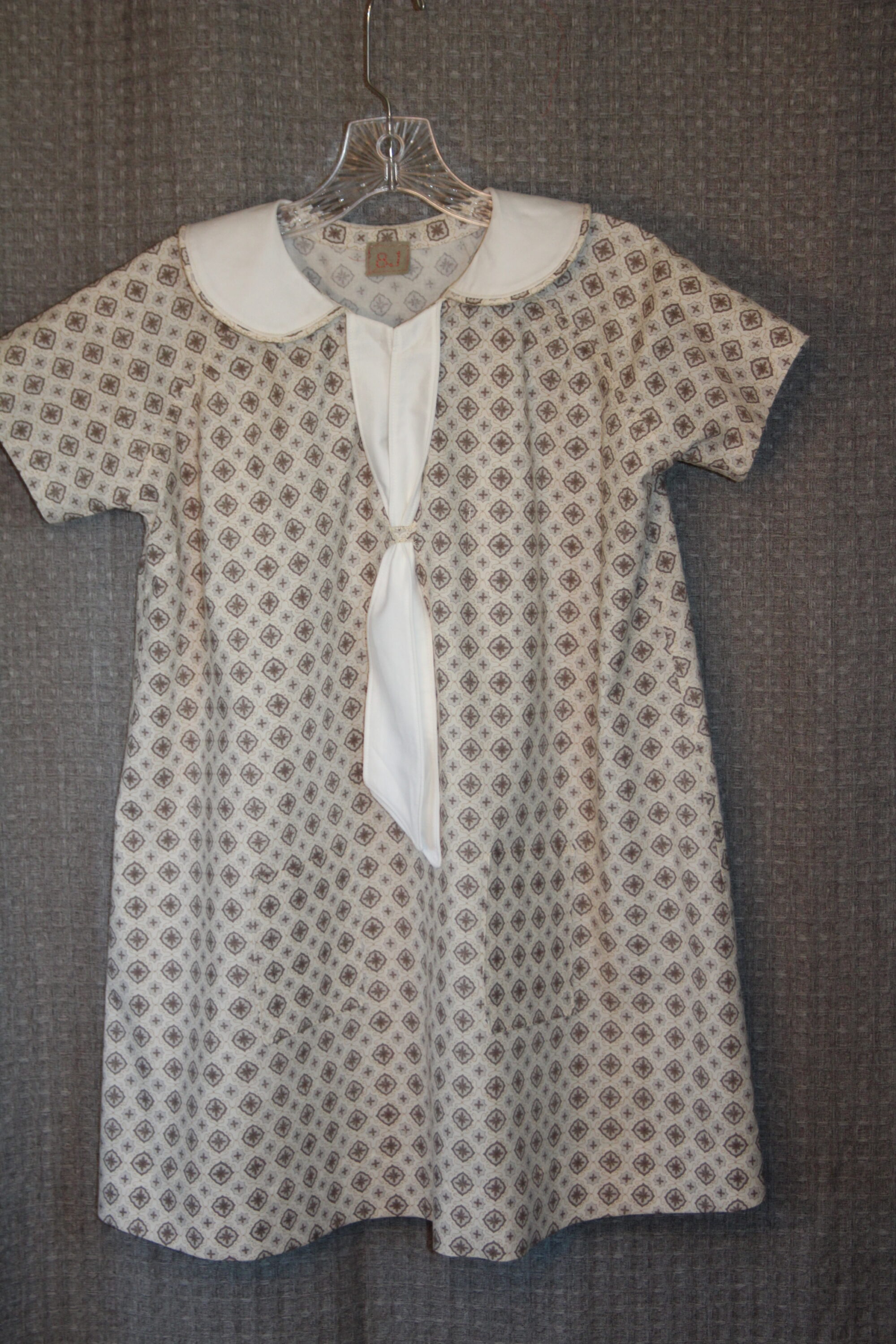
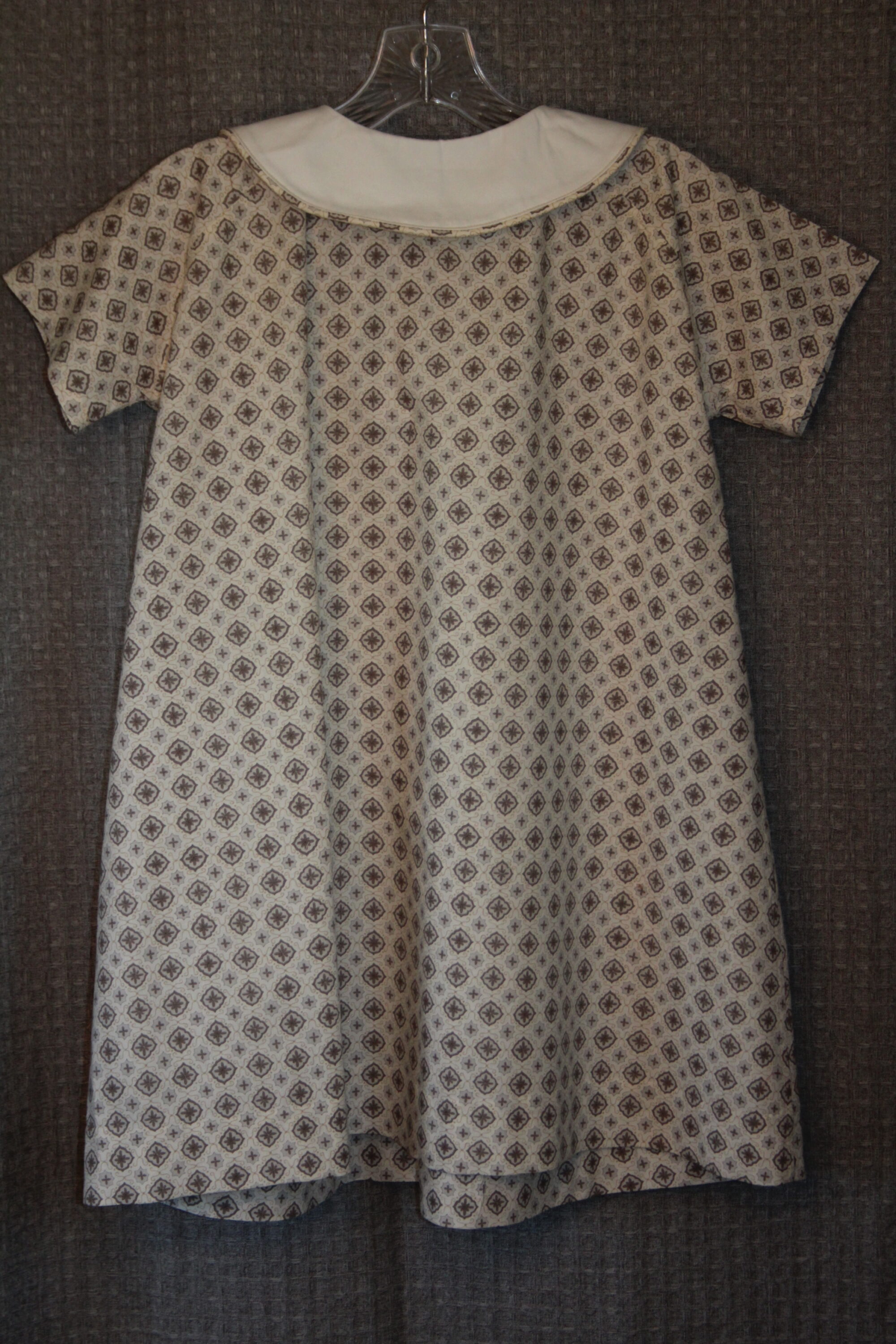
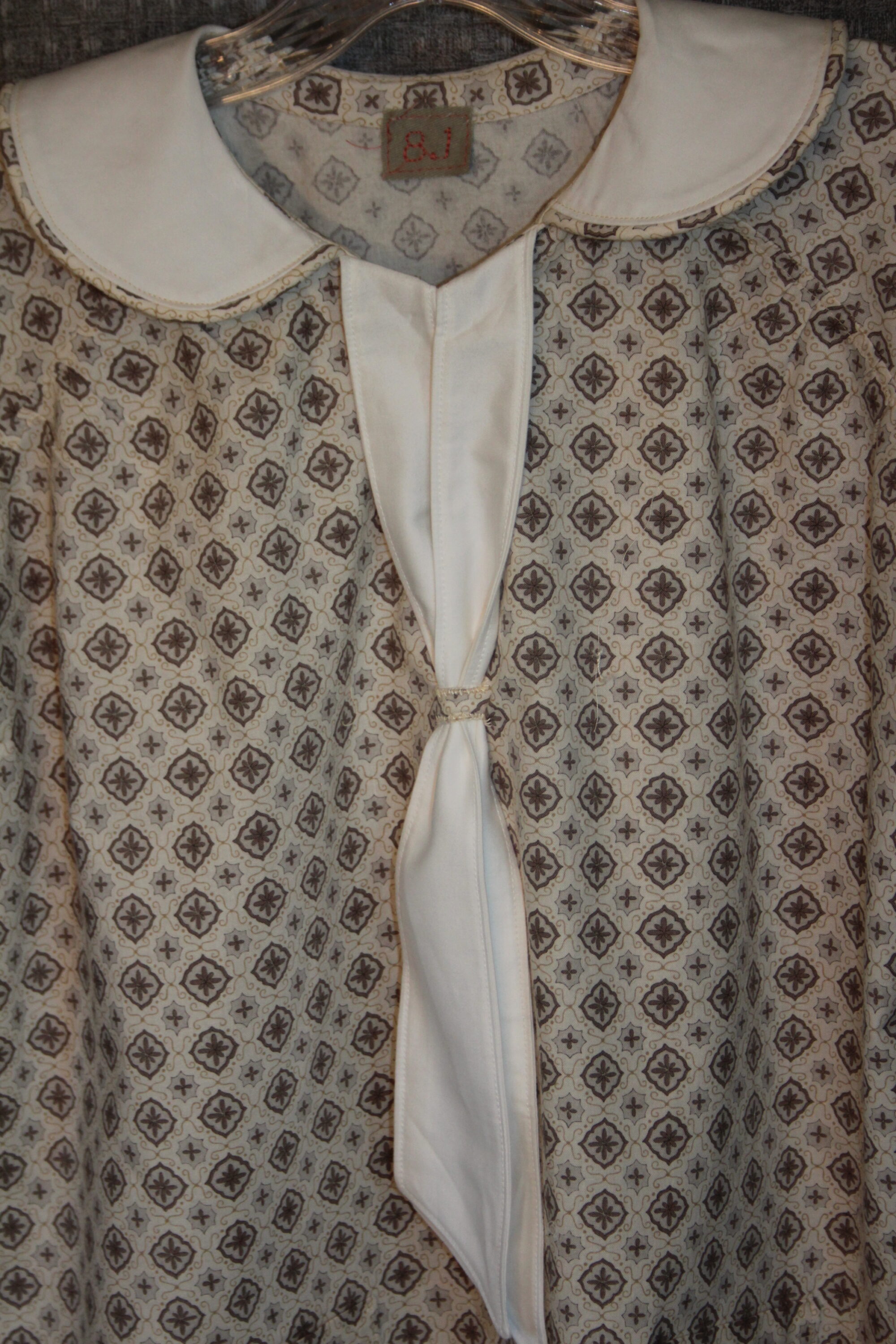
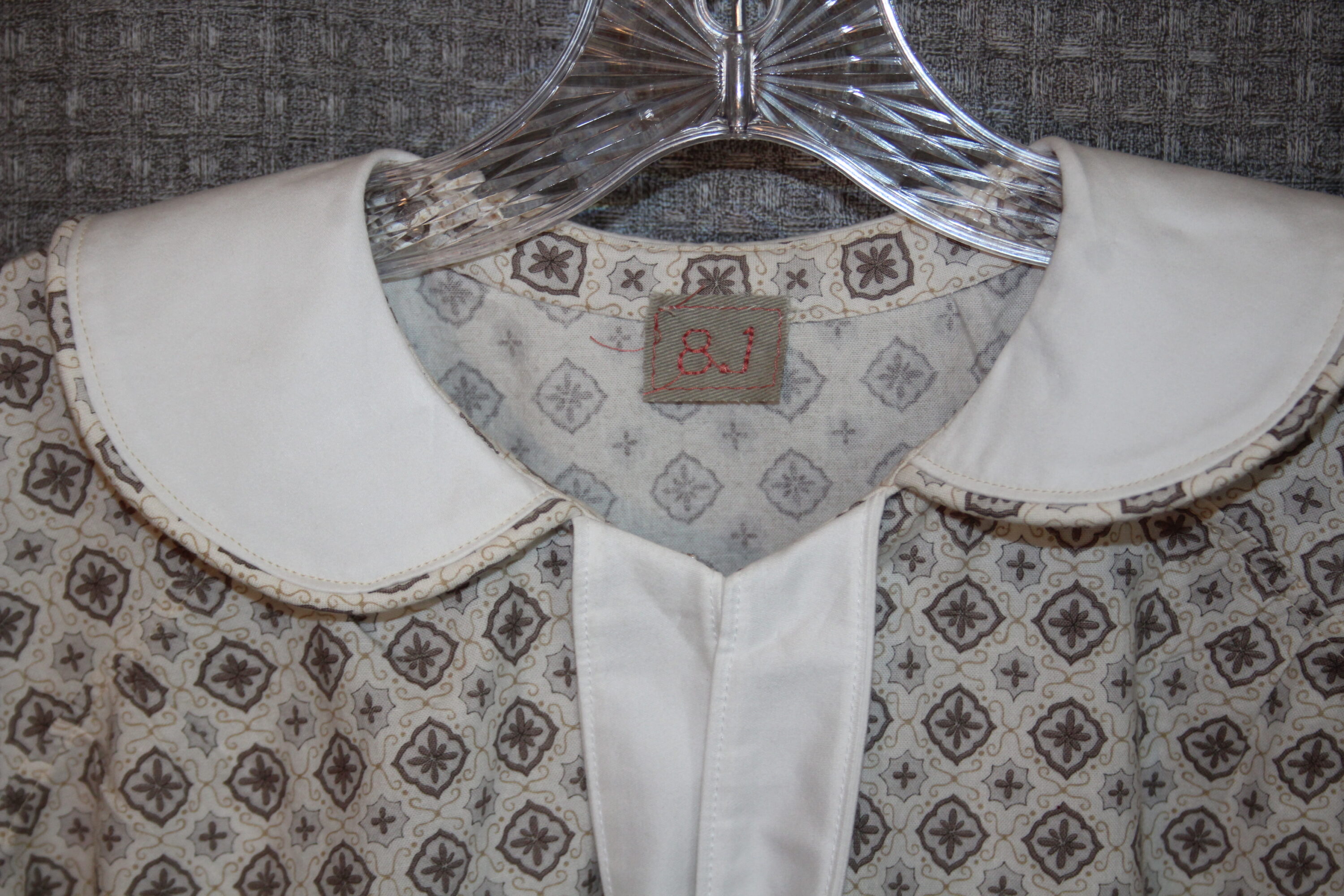

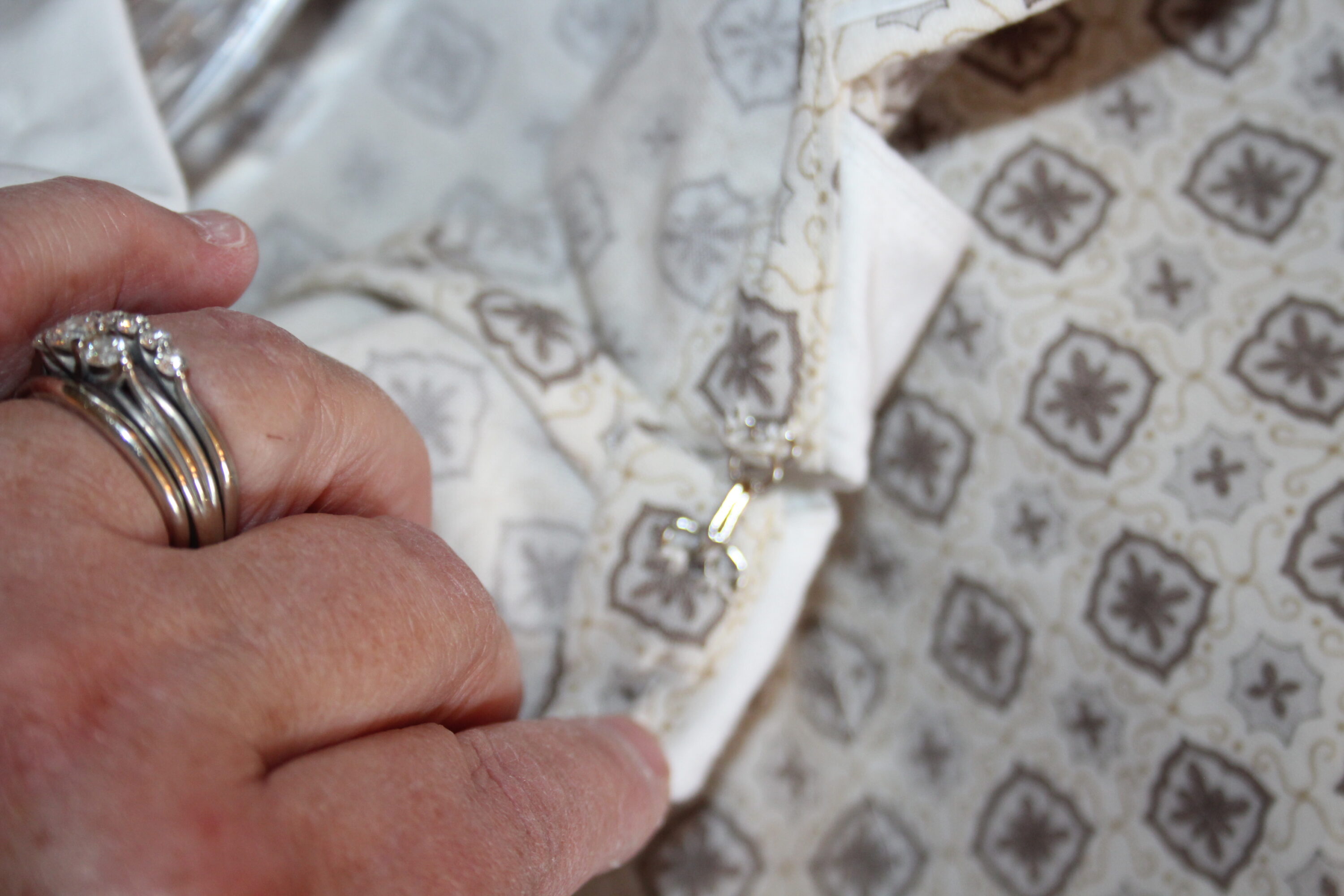
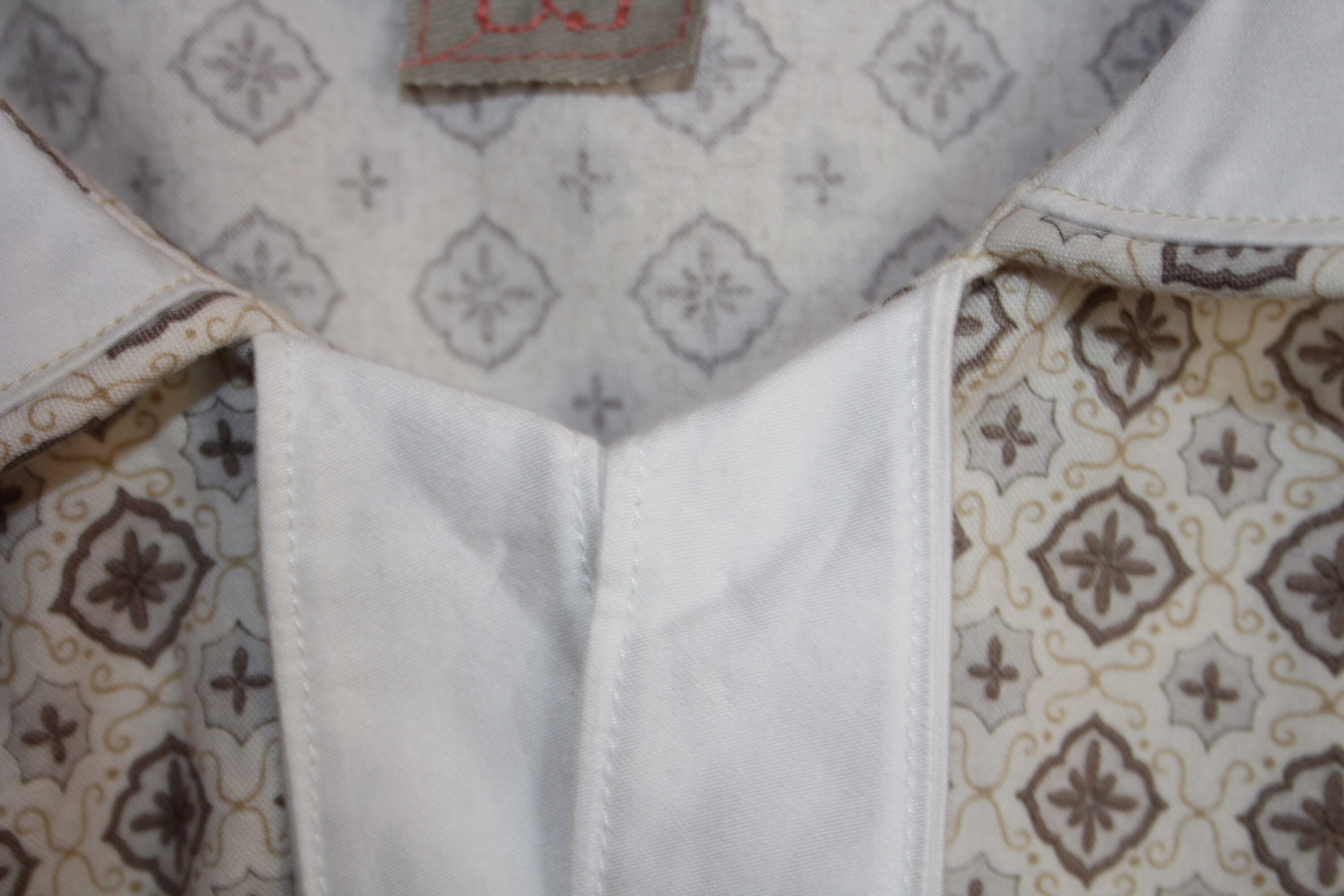
6.1 (Size 6 little girl style wide body, short length, high waist with back closure and false front mother of pearl shank buttons. Buttons on pockets and ivory bias tape neck tie. Reproduction tiny blue chevrons on ivory fabric. Tape on sleeves too).
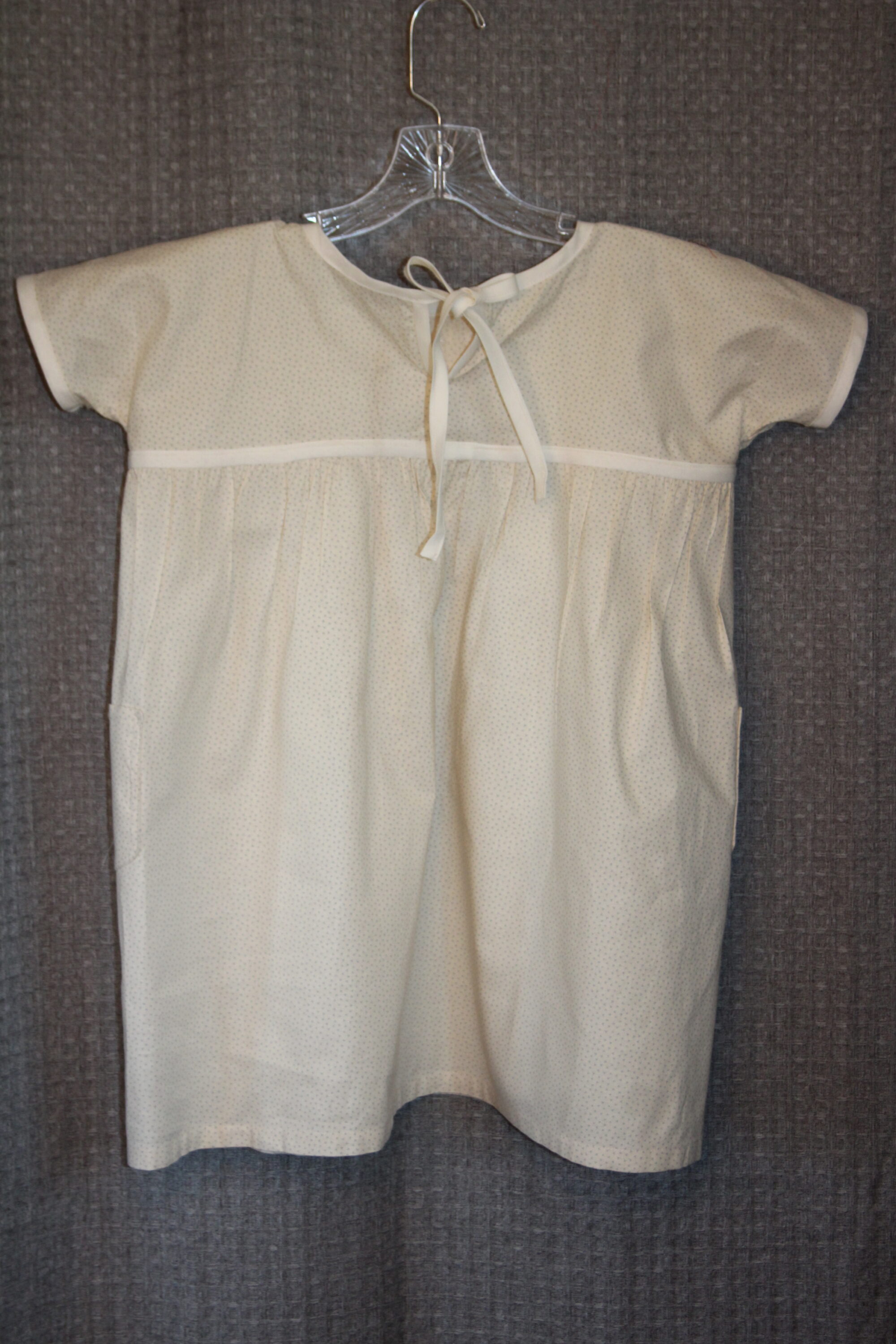
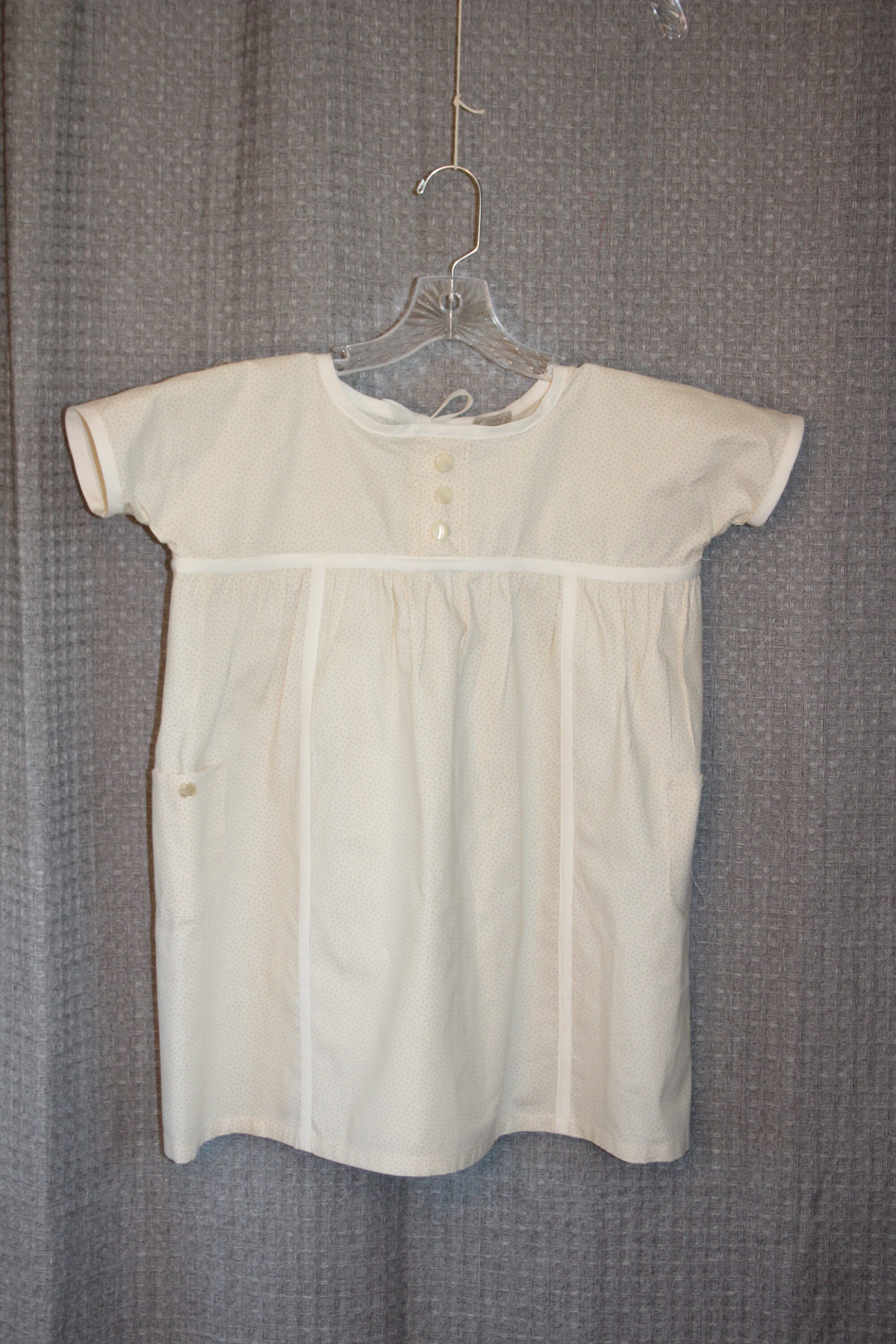
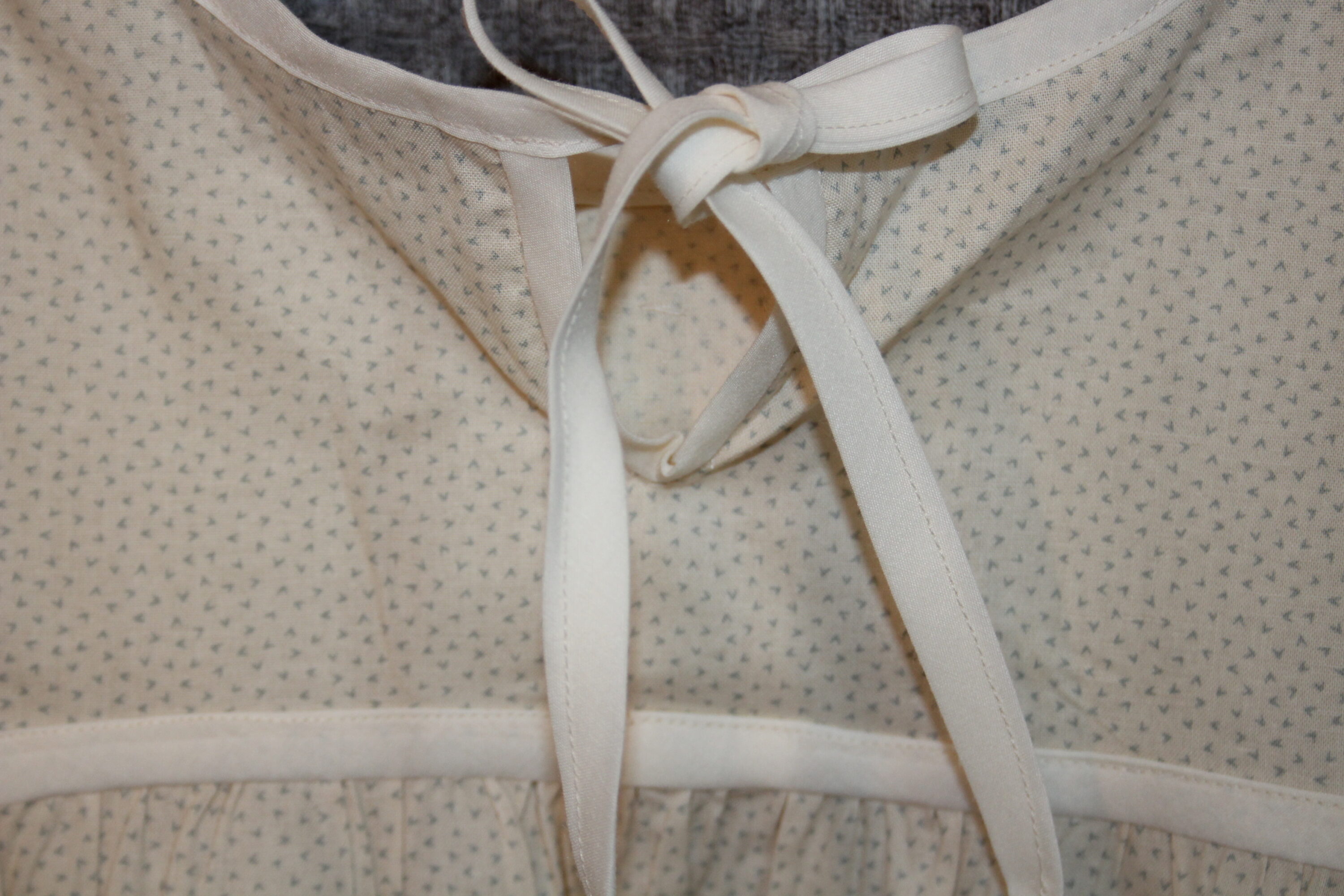
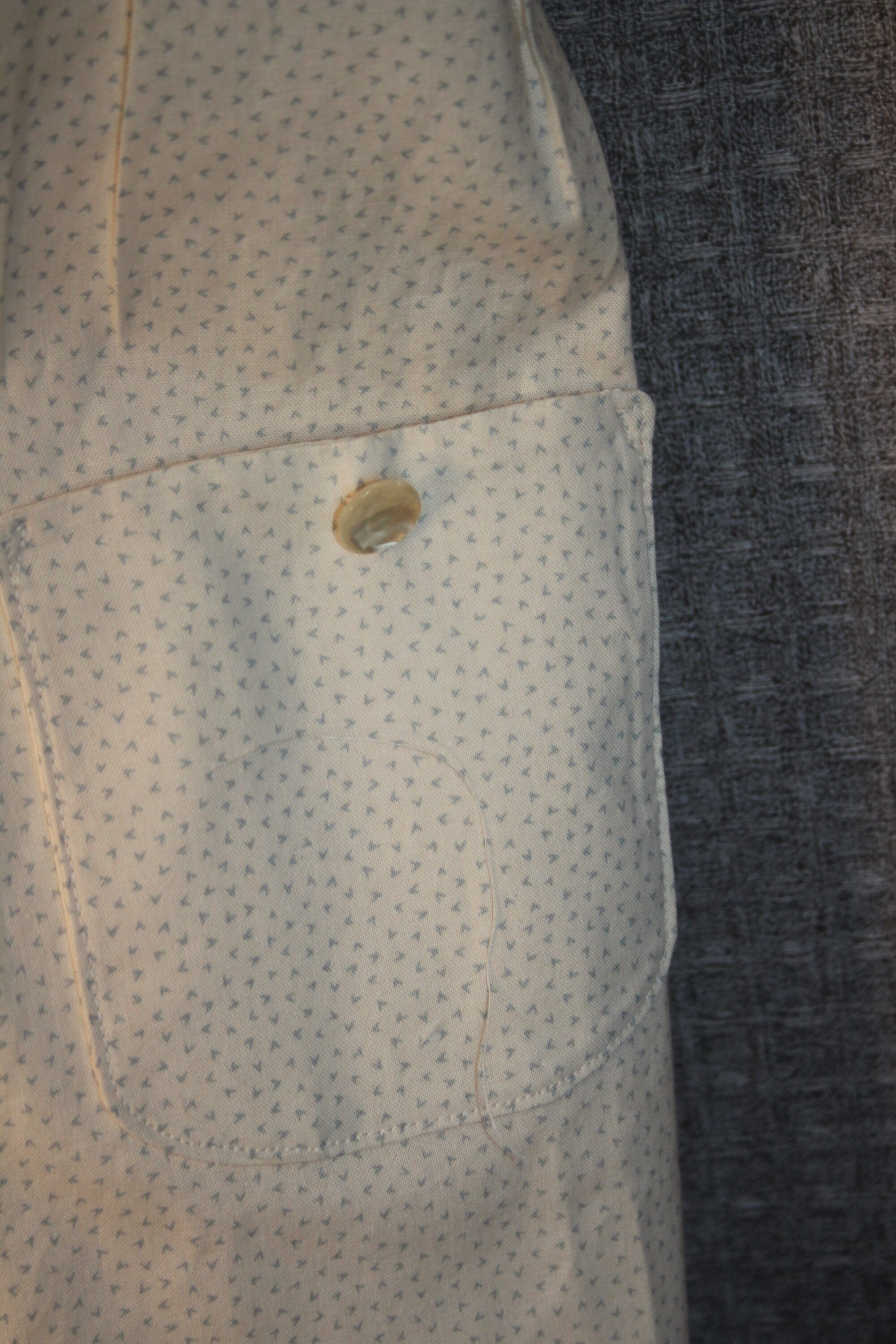
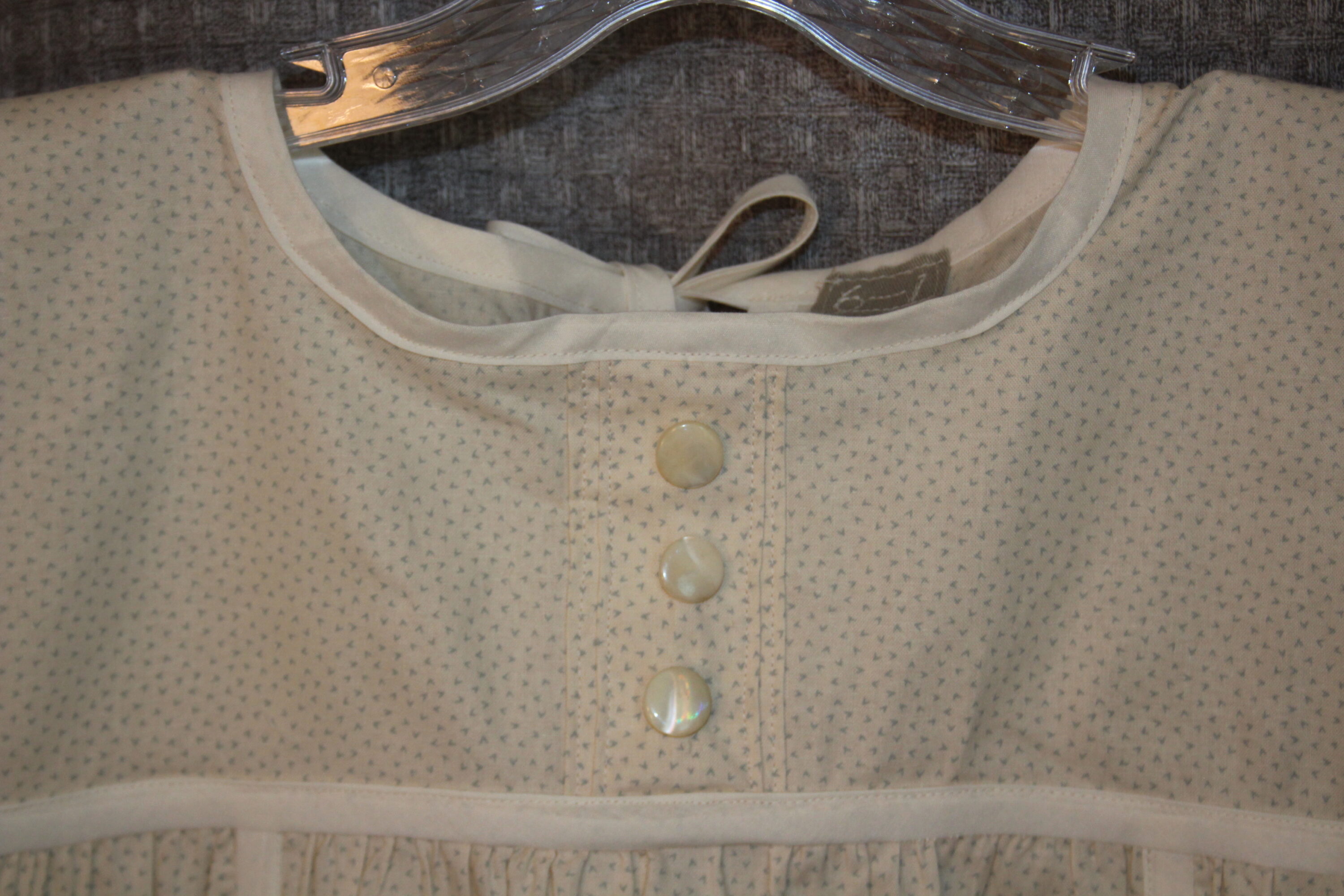
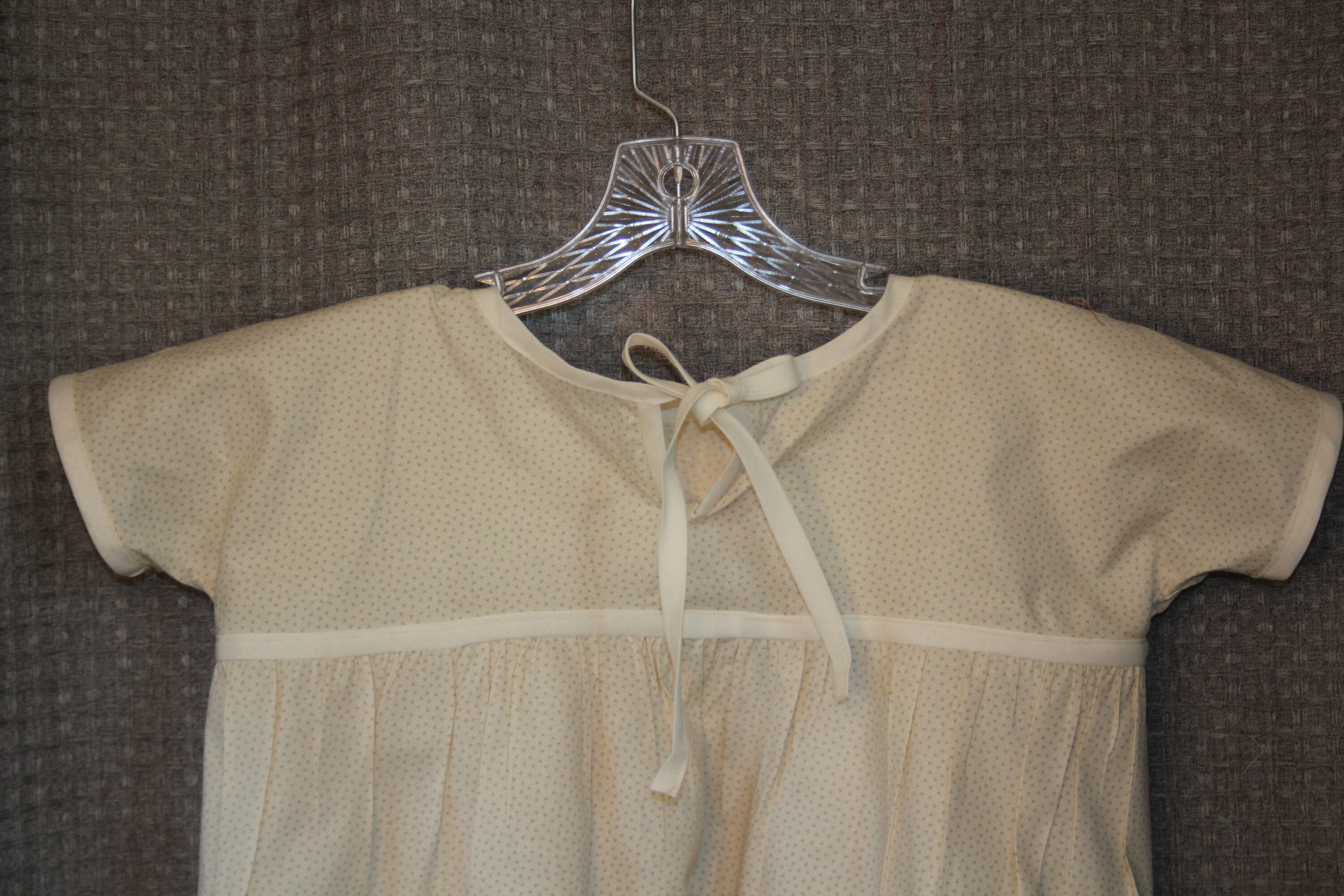
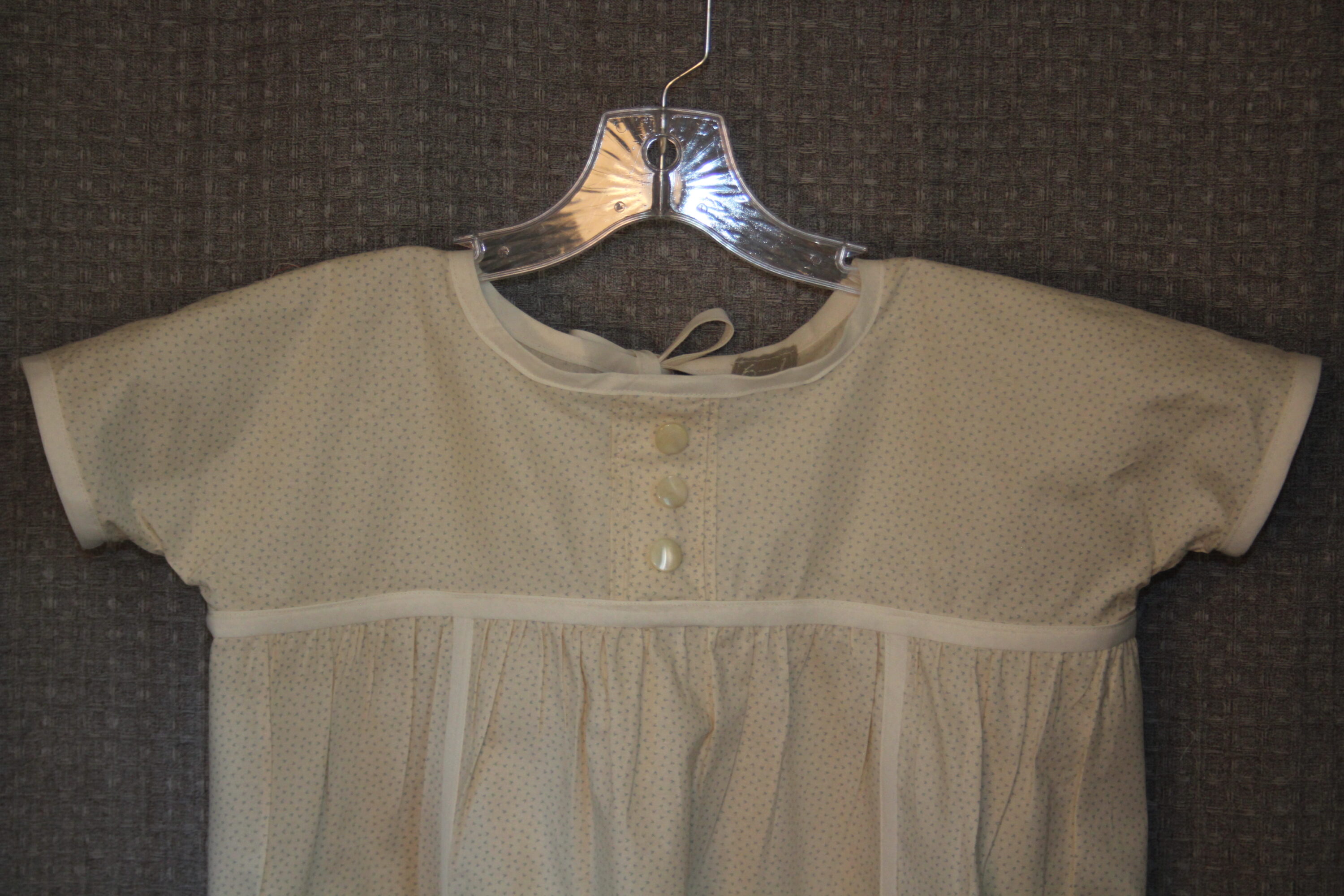
Batch 2 – Pink, Mauve, Gray
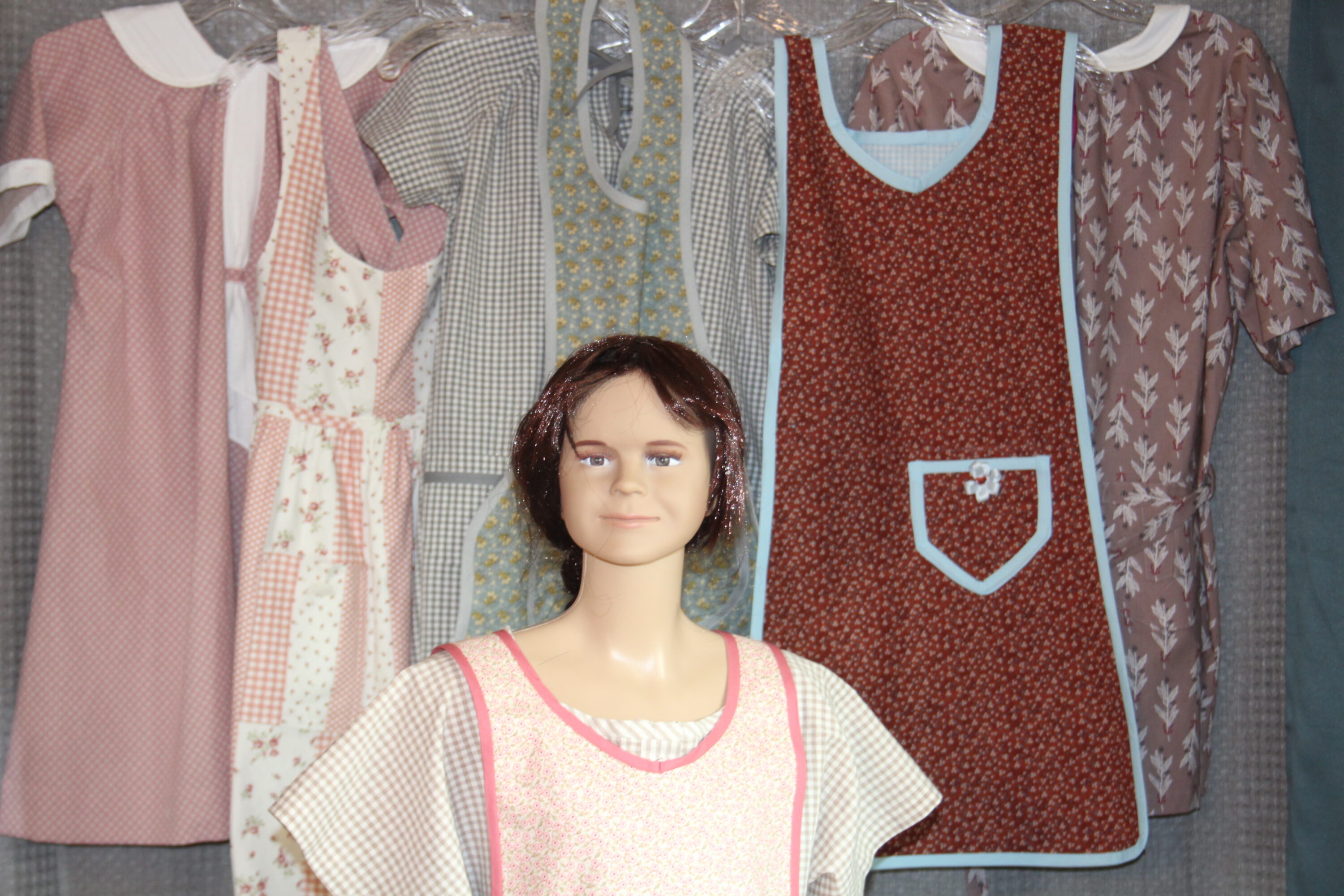
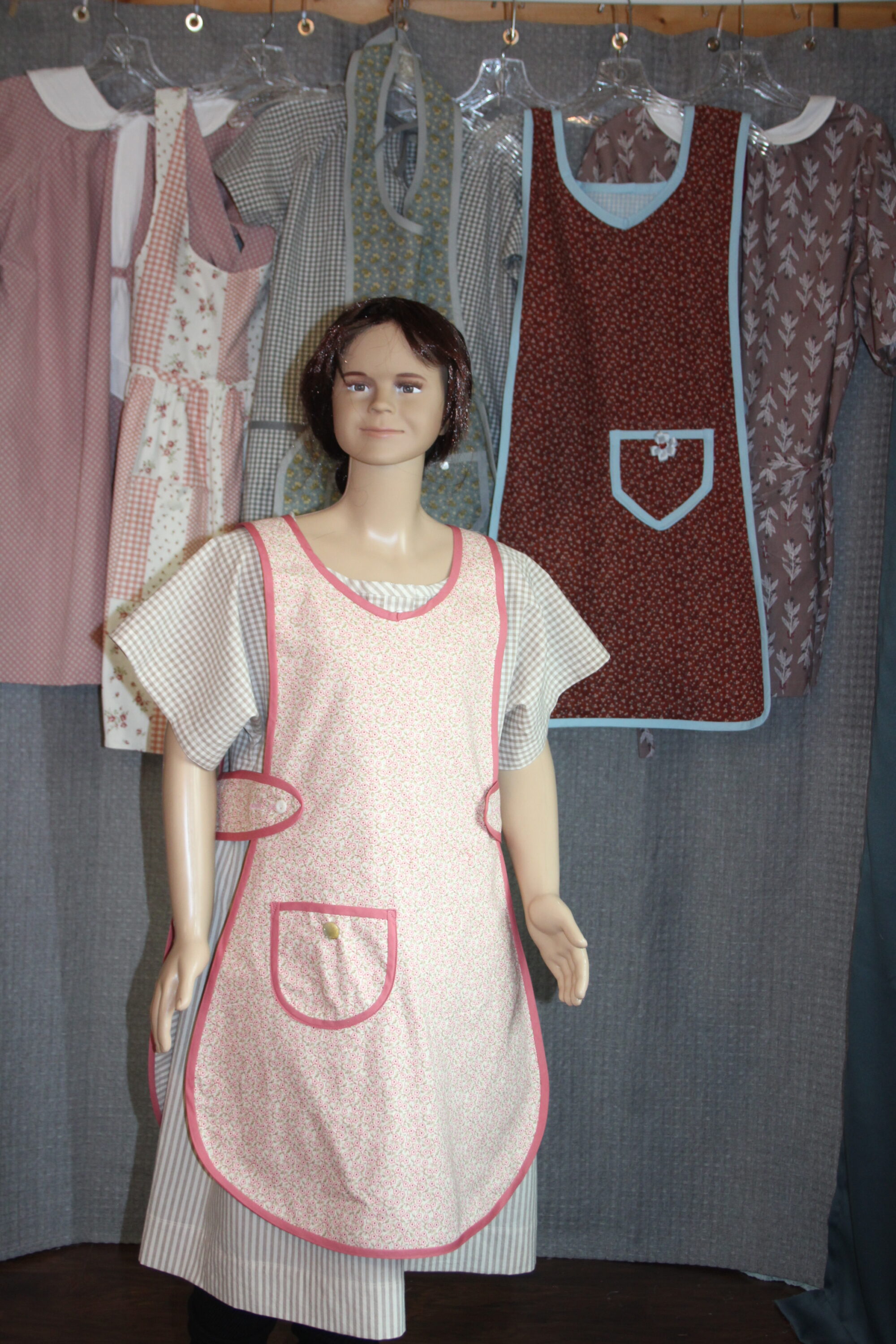

8.3 (Size 8 dark gray/green gingham lightweight checked fabric with dark dray bias tape. Minimal decoration for most historical look includes bloomers. Bloomers would have button flap down closure, but for commercial use modified to back tie for flexible sizing. They have a knee band and very full fit. Short little girl wide and short style which will fit a 10 also. Tape on low pockets).
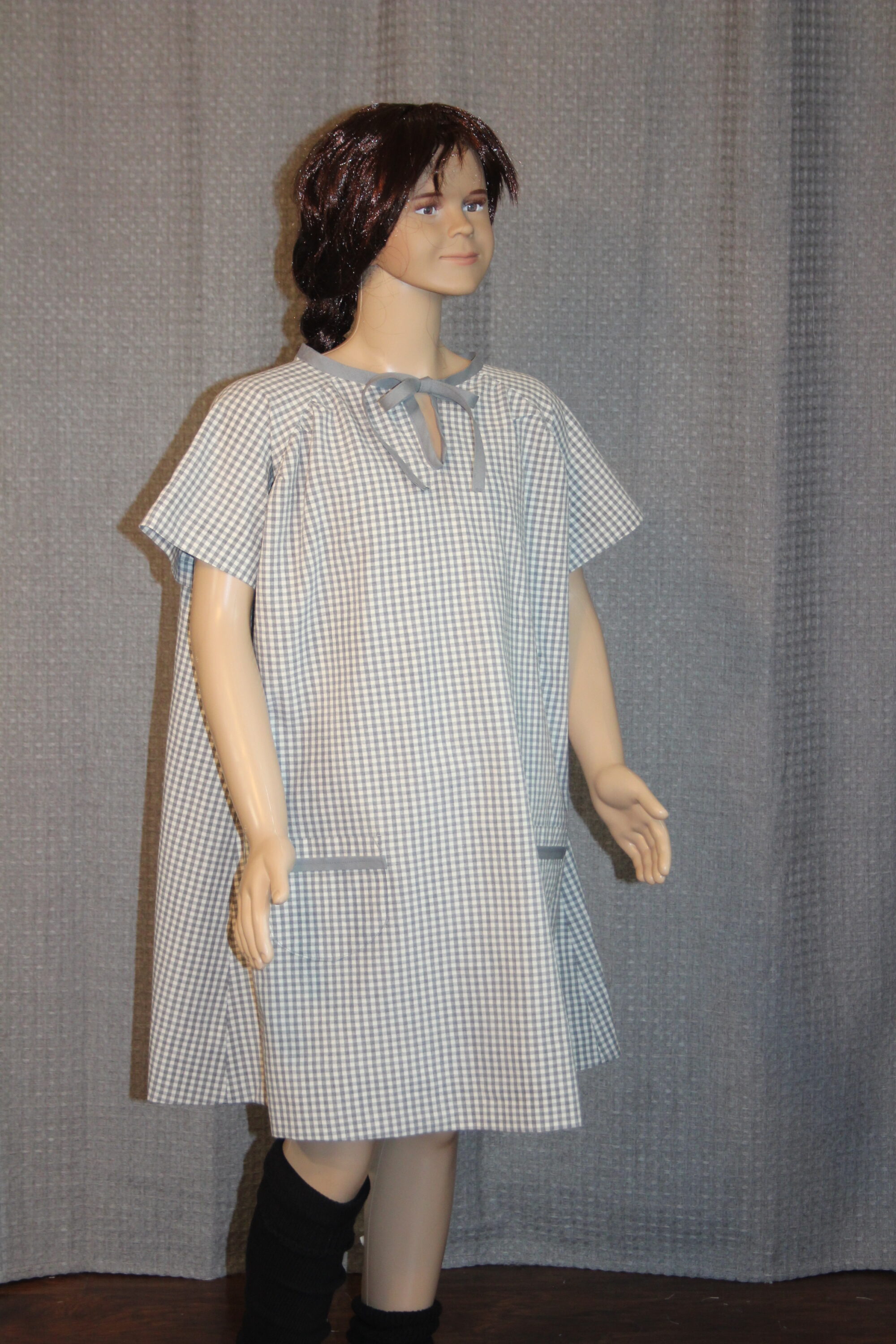
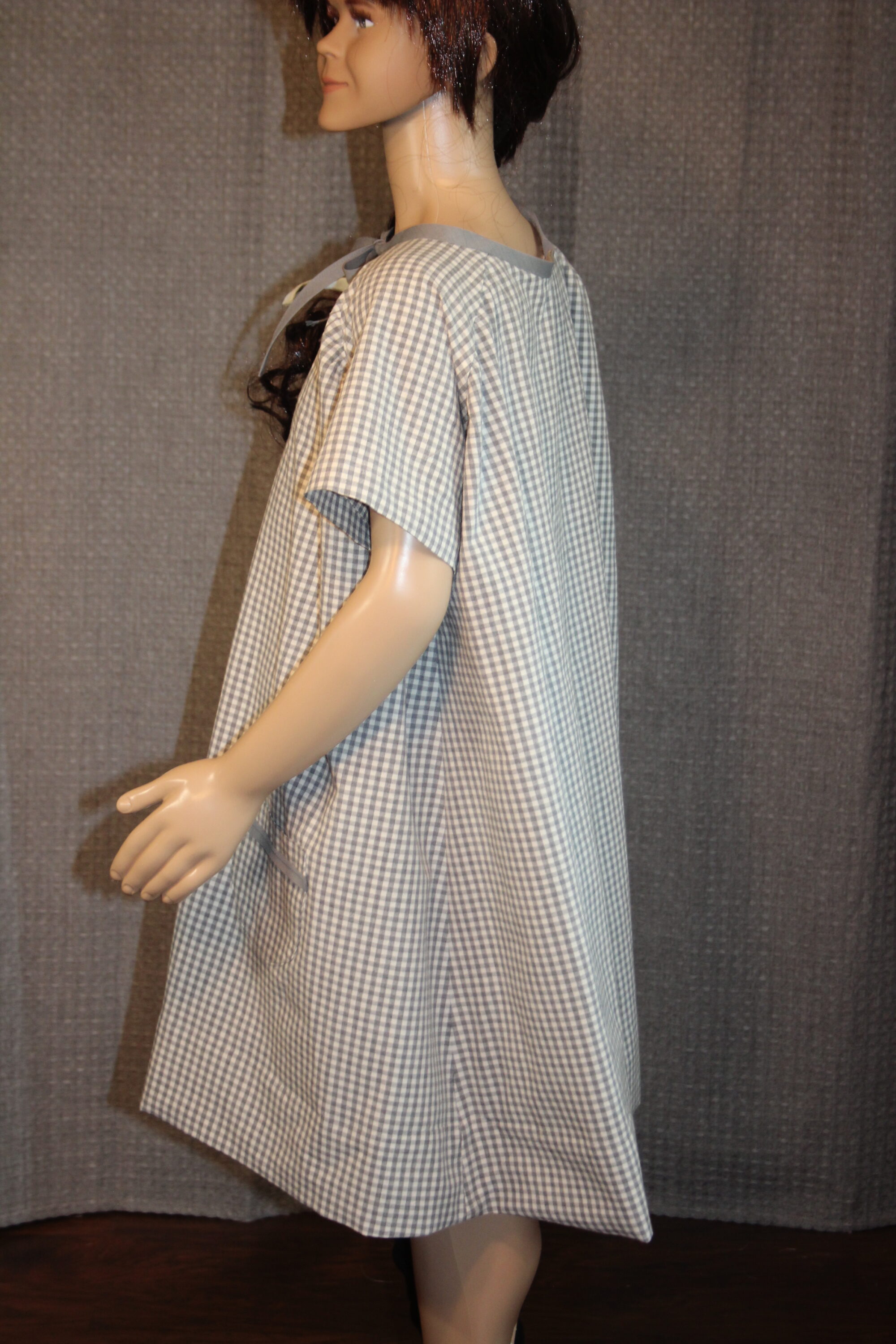
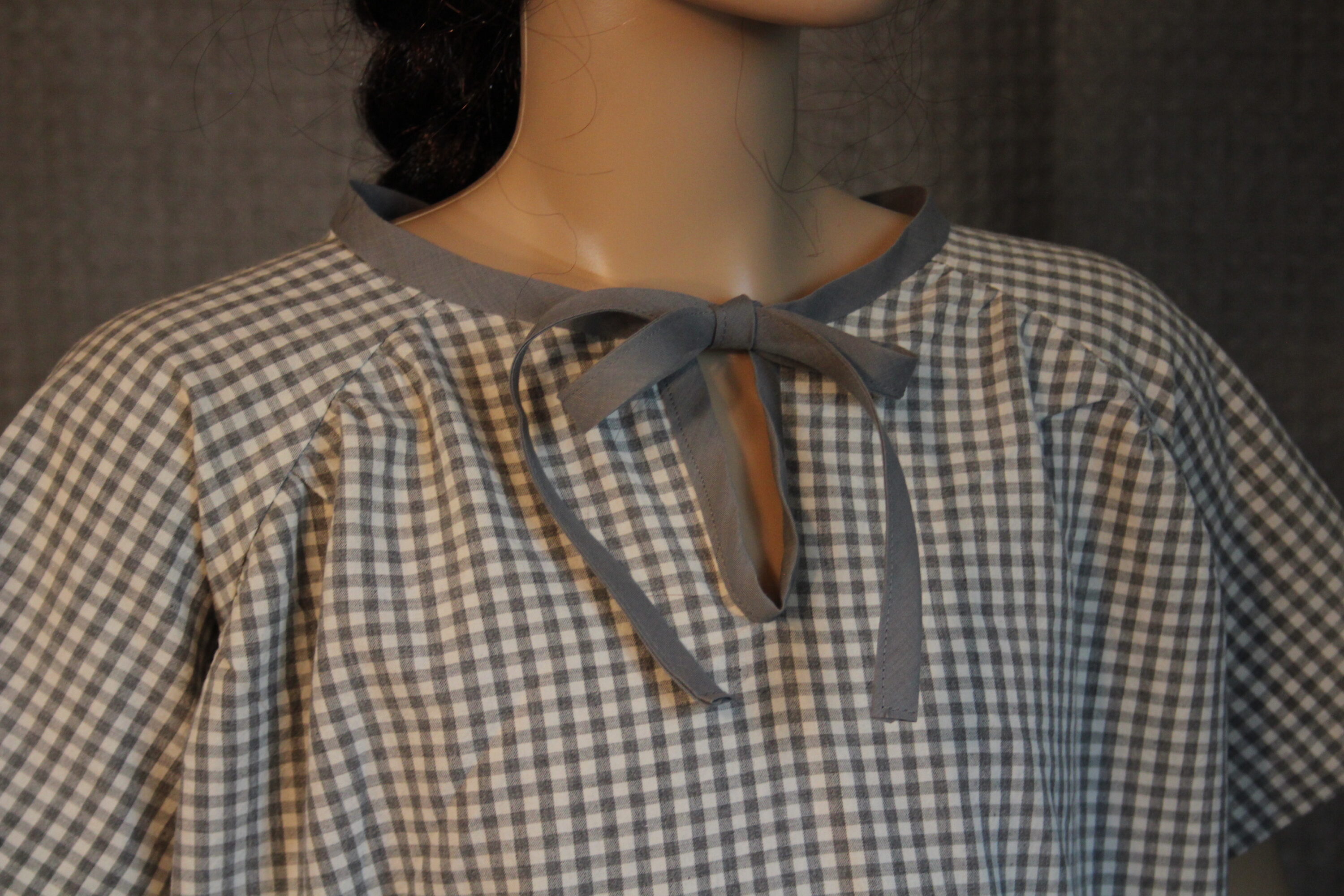
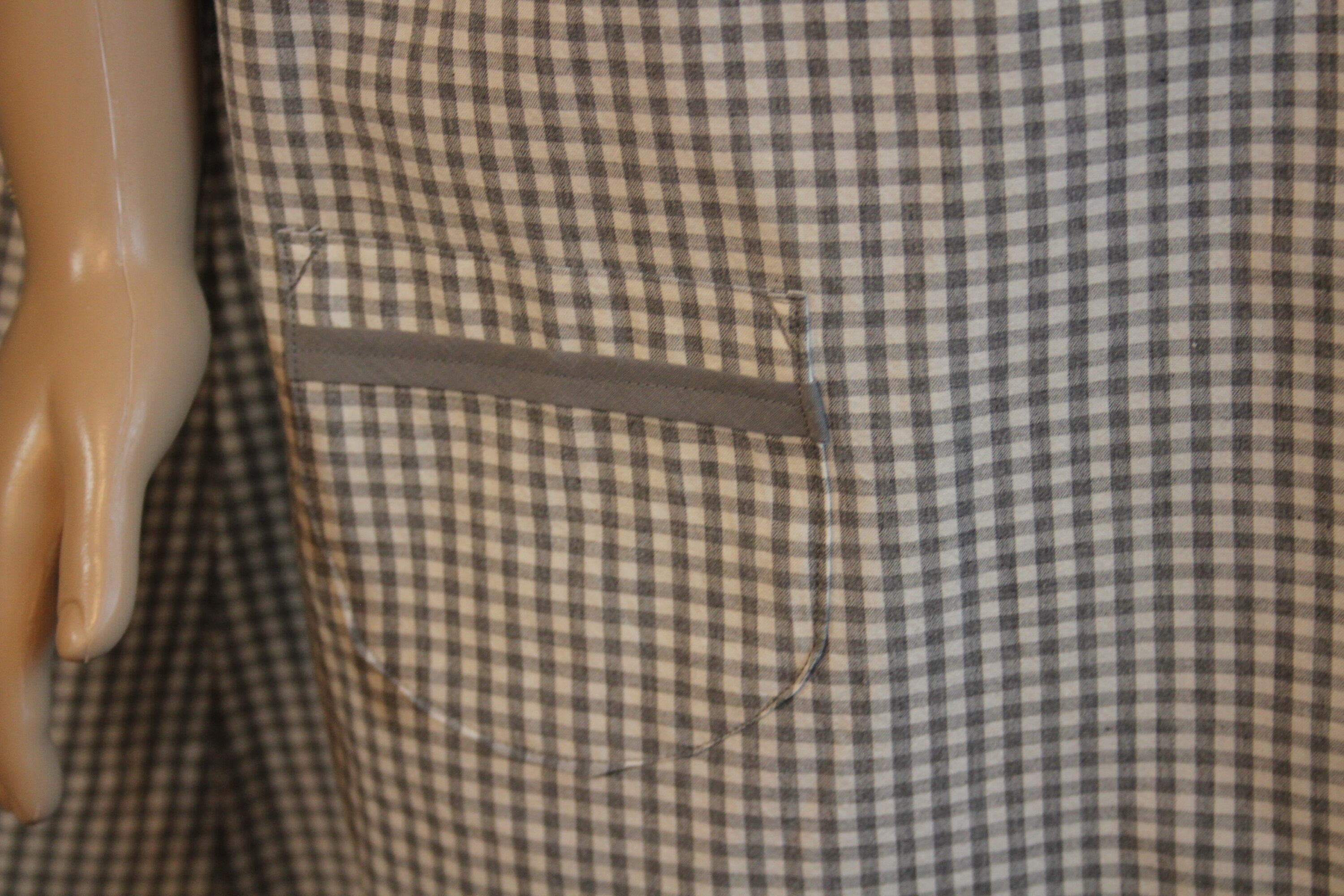
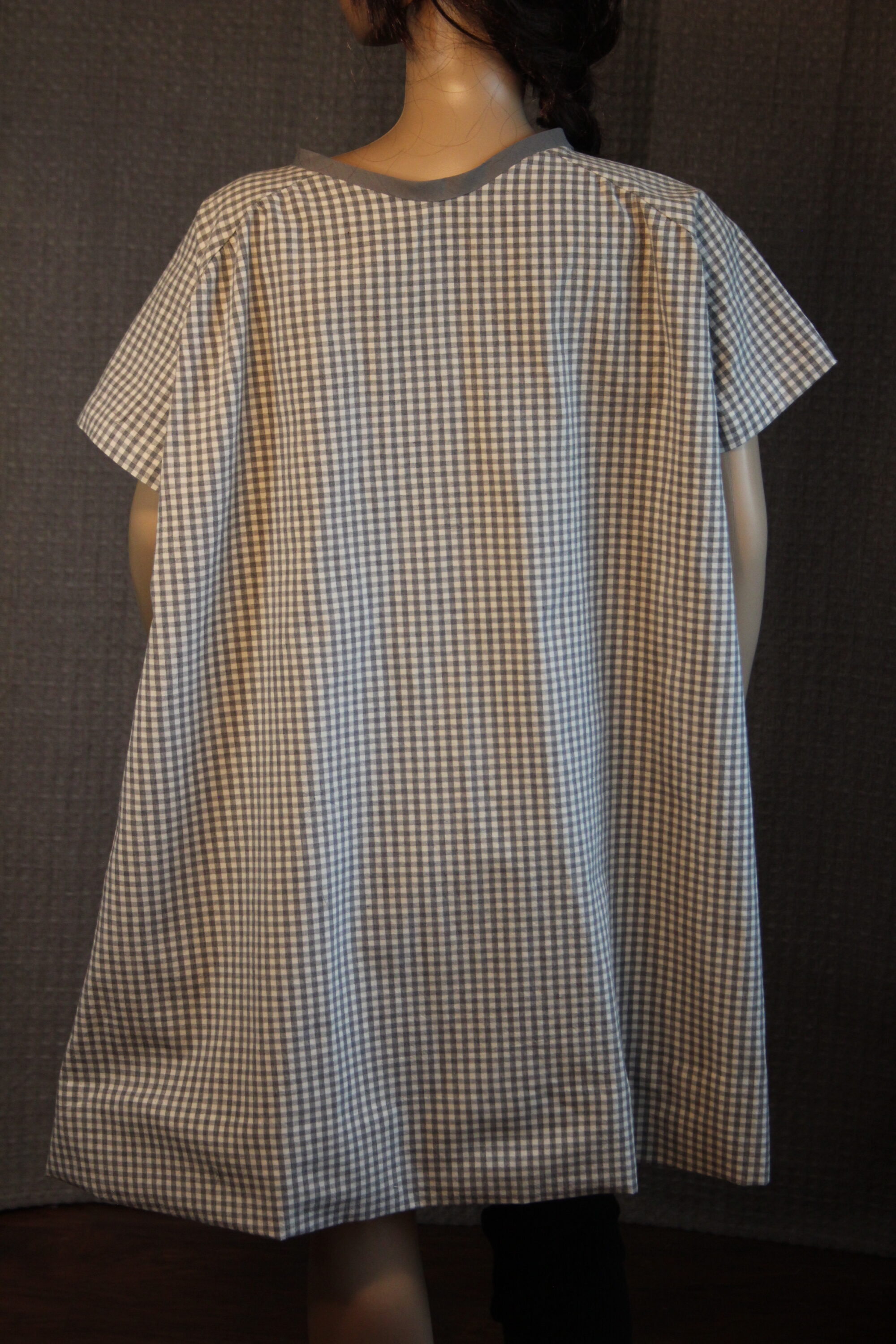
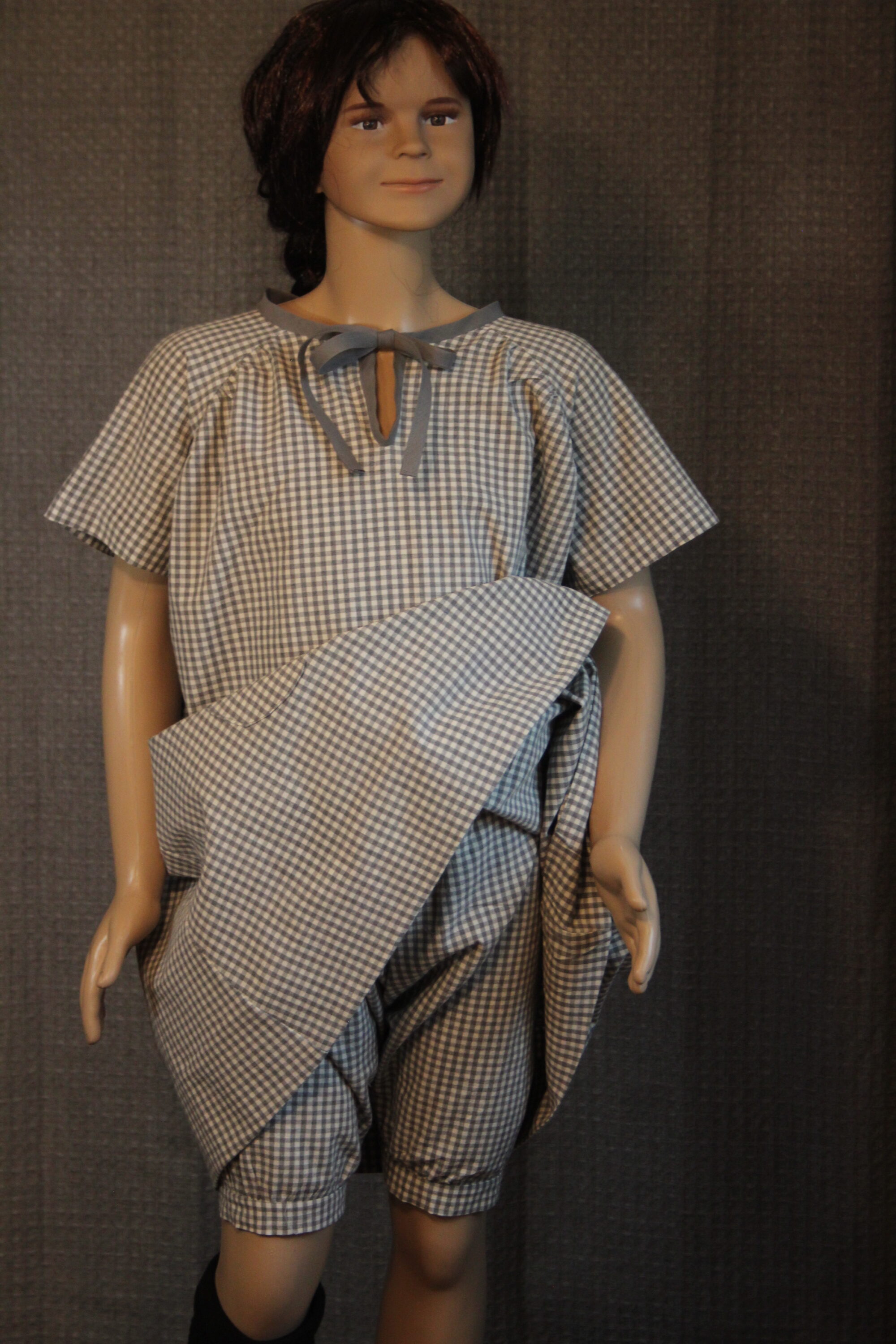
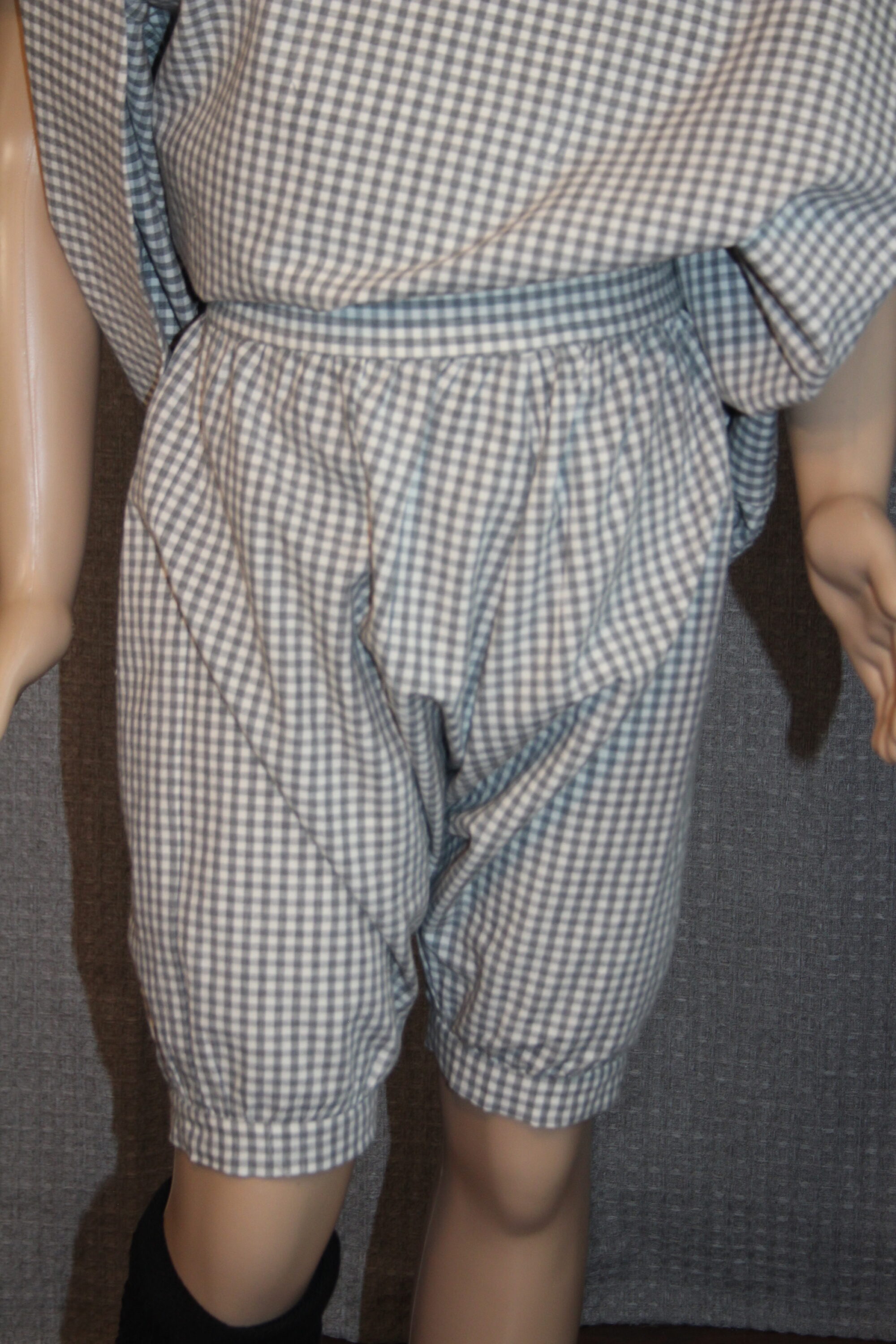
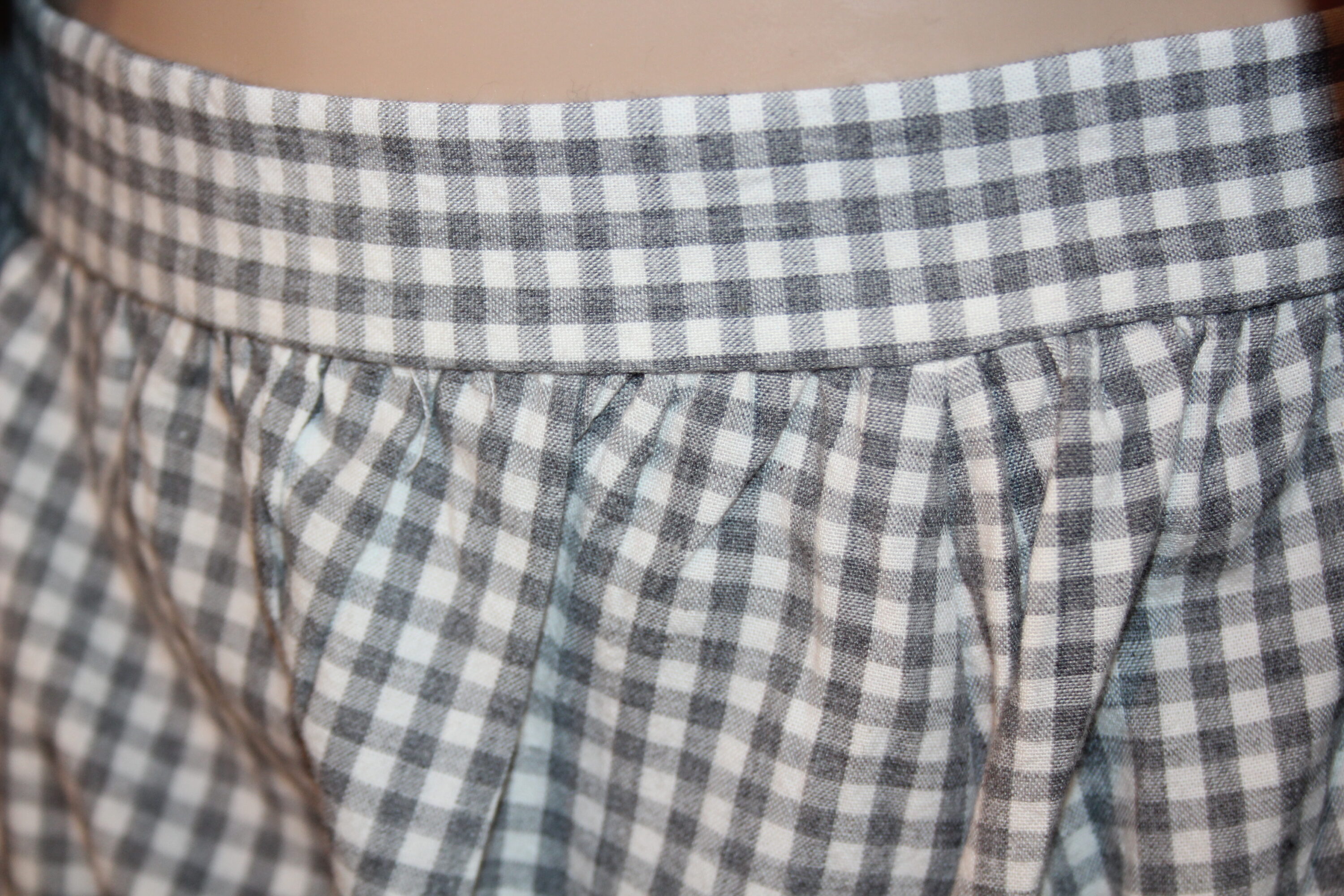
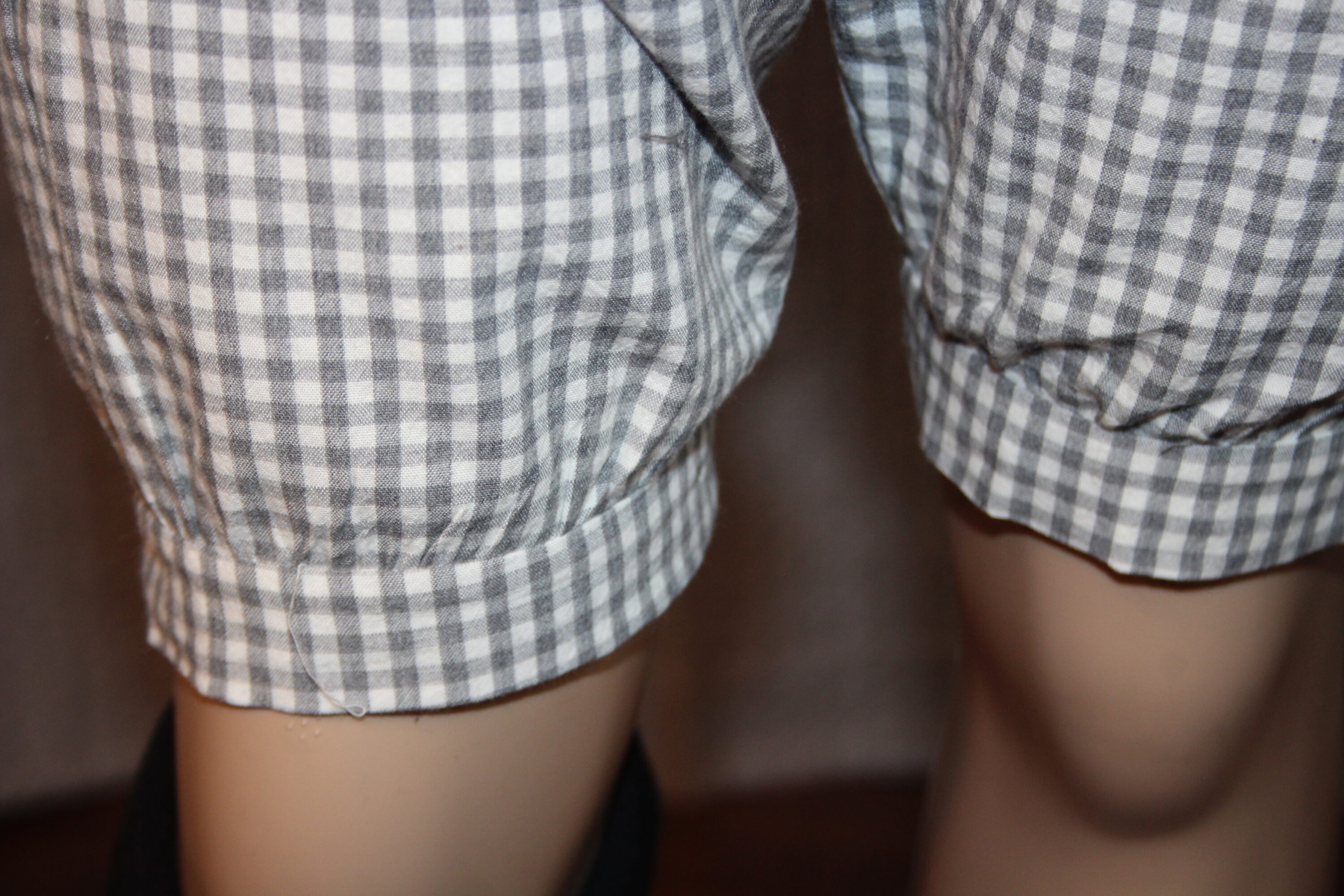
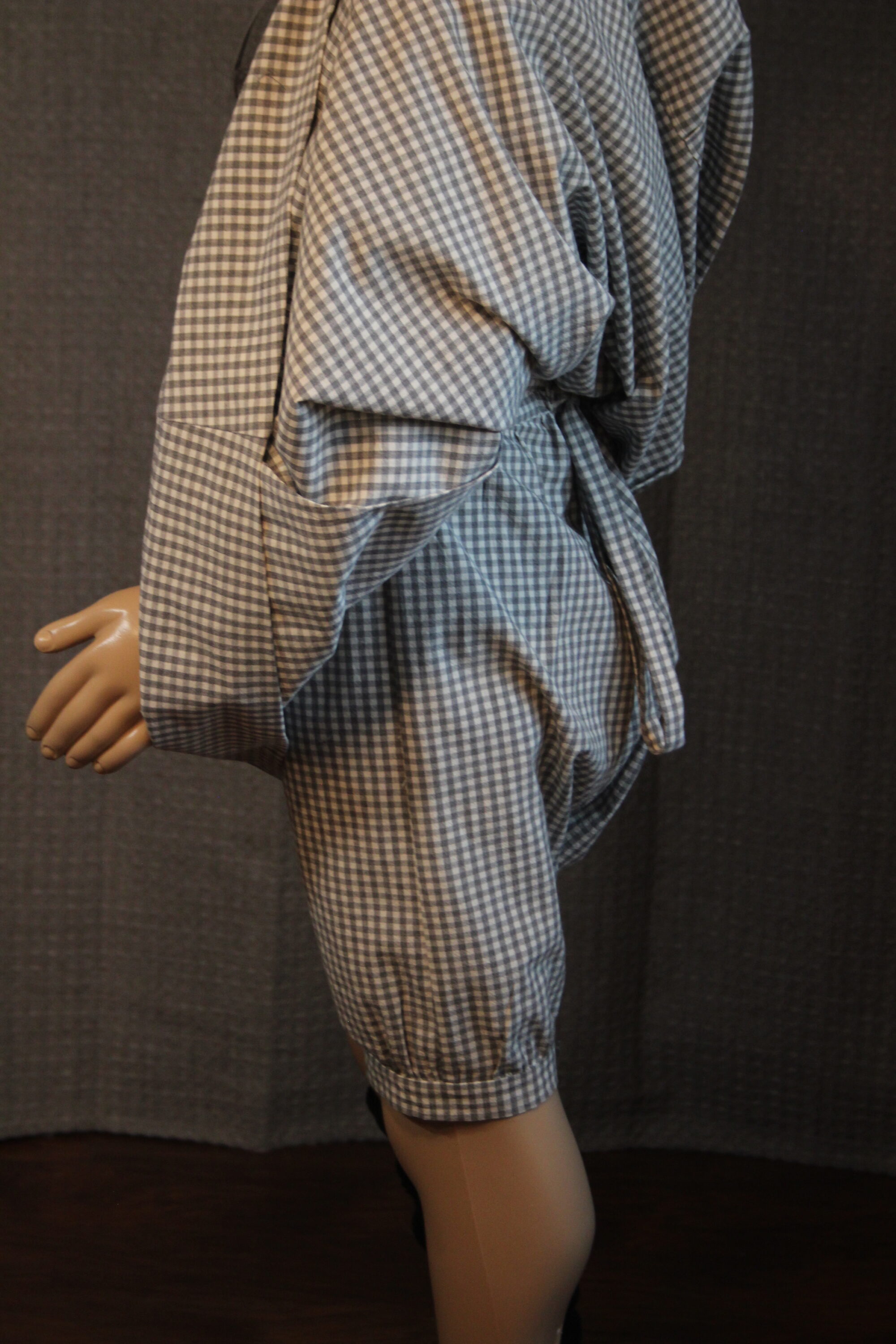
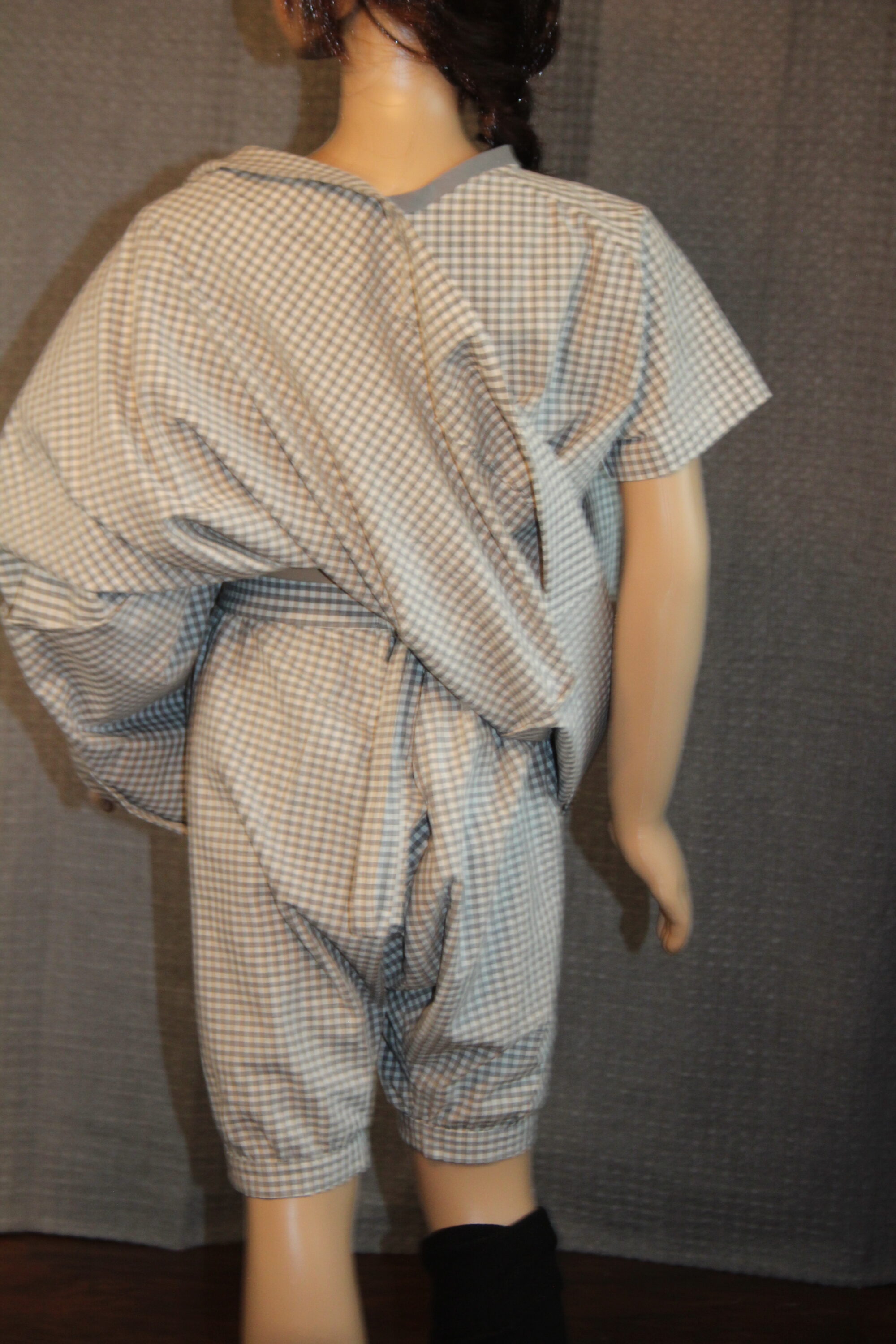
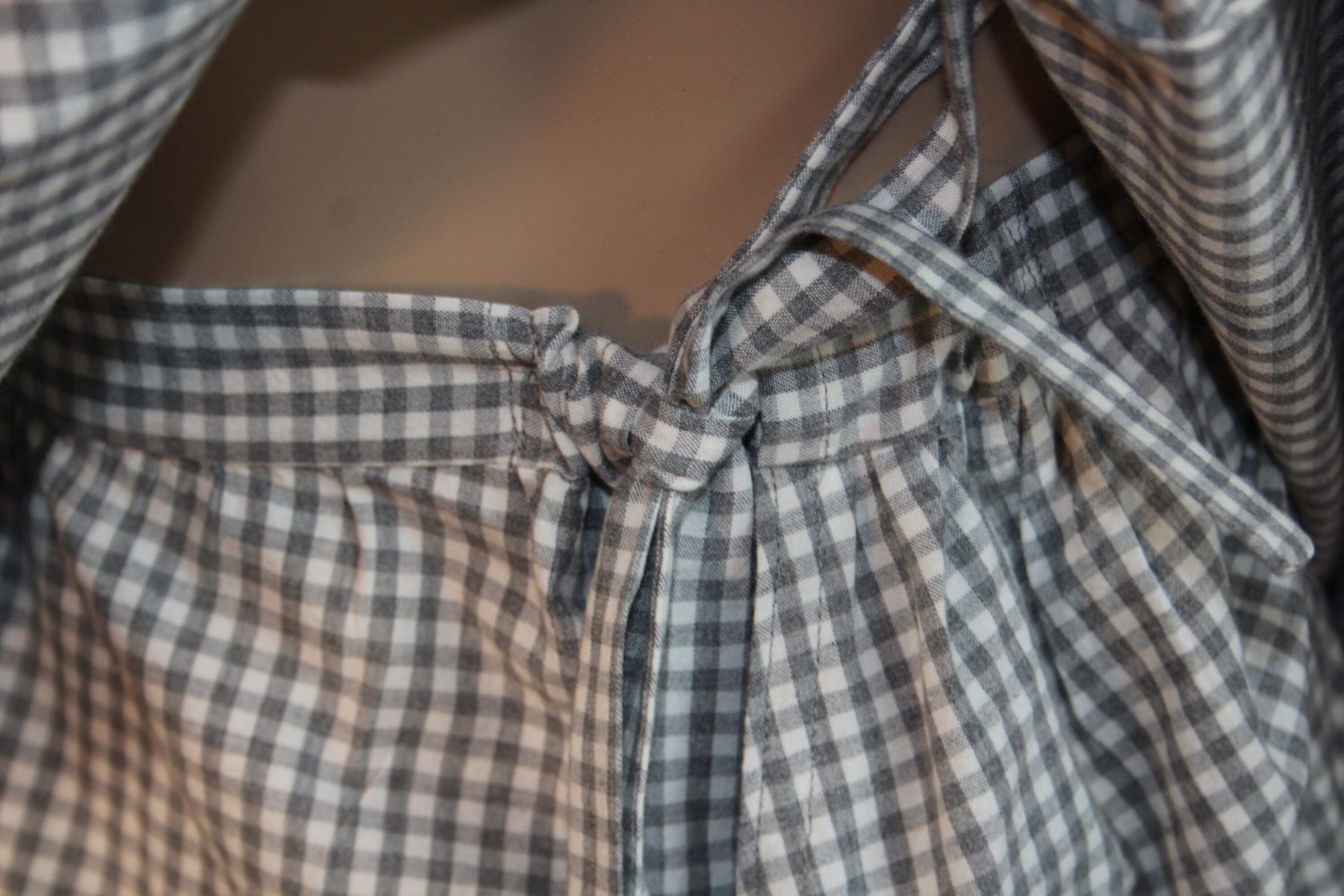
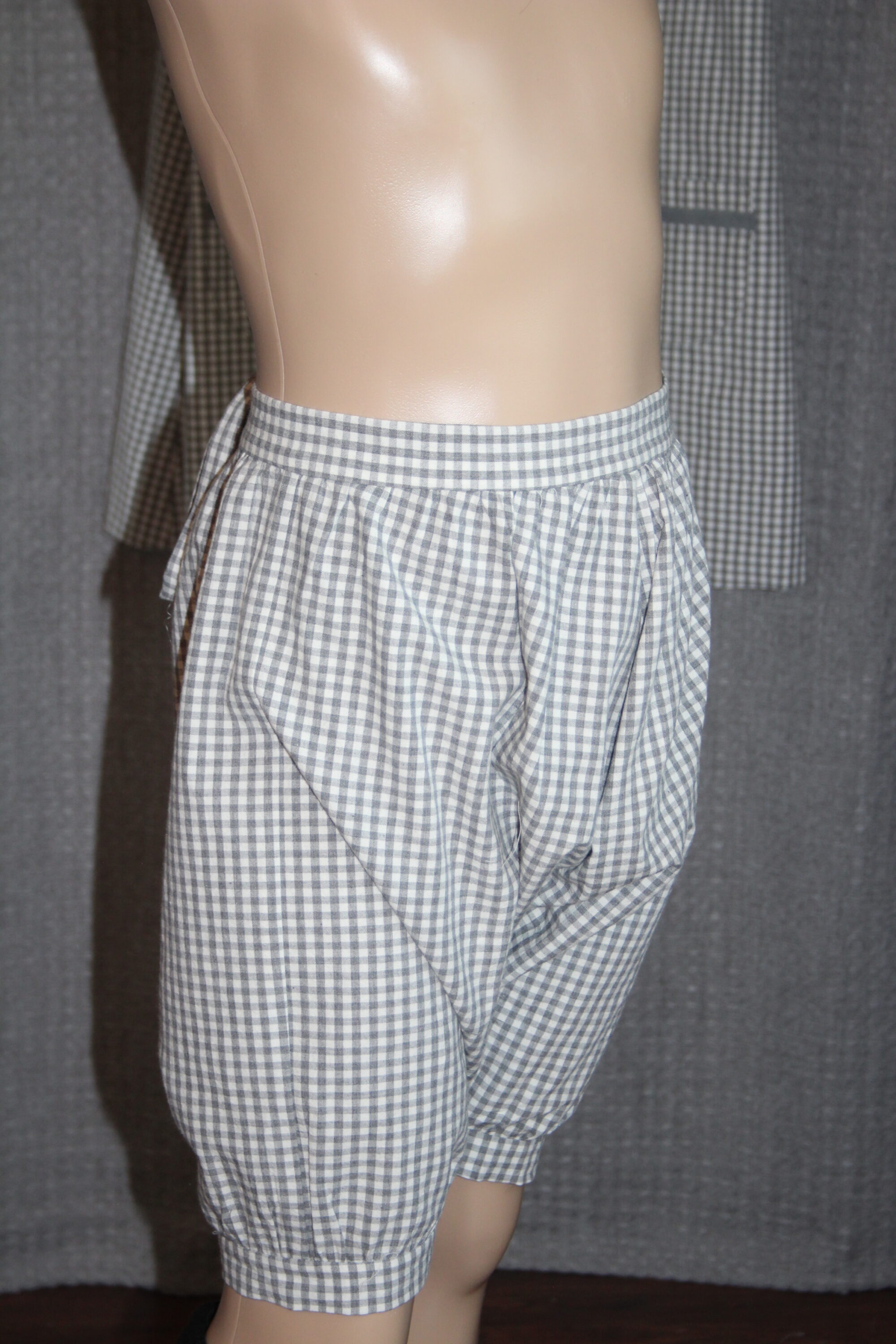
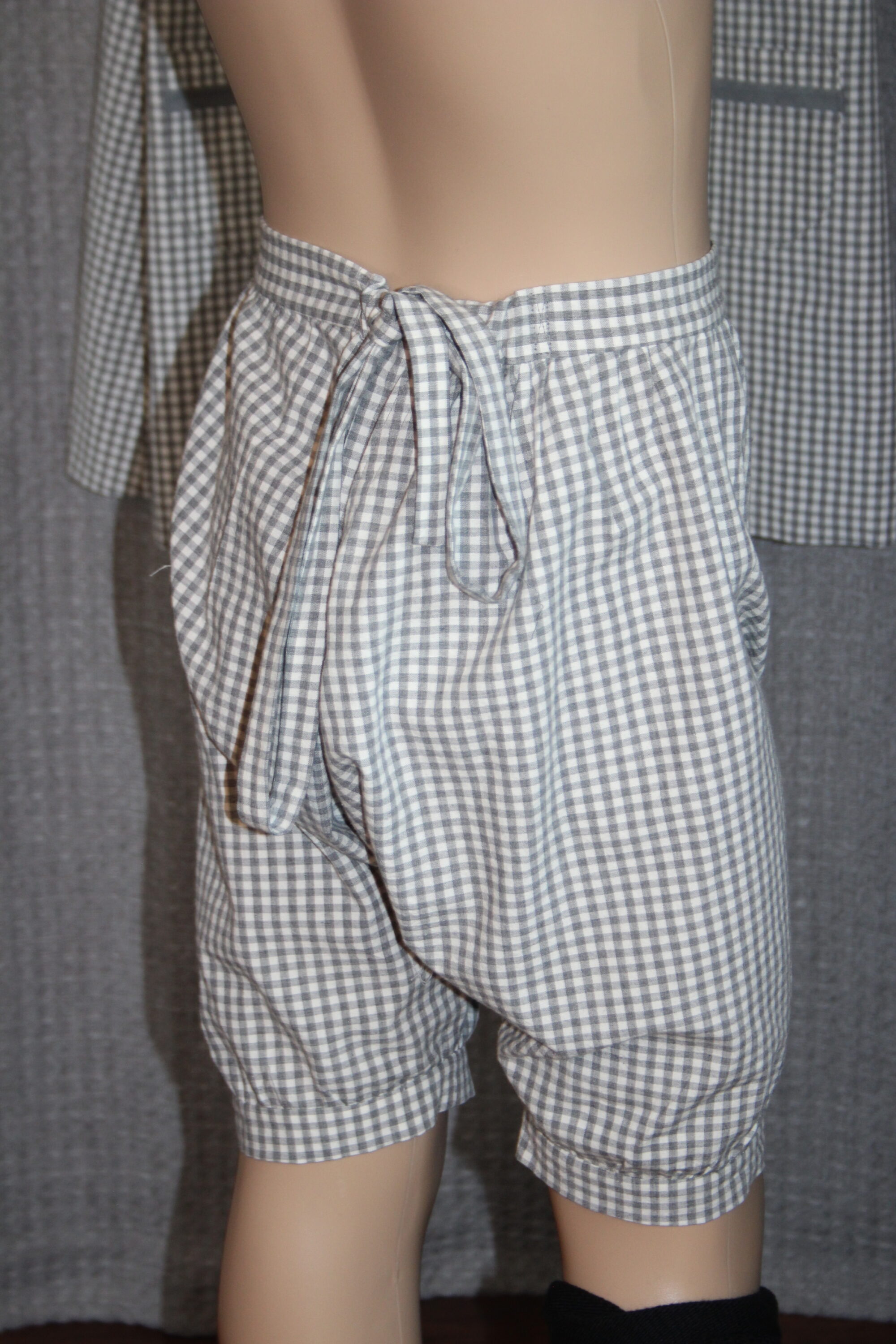
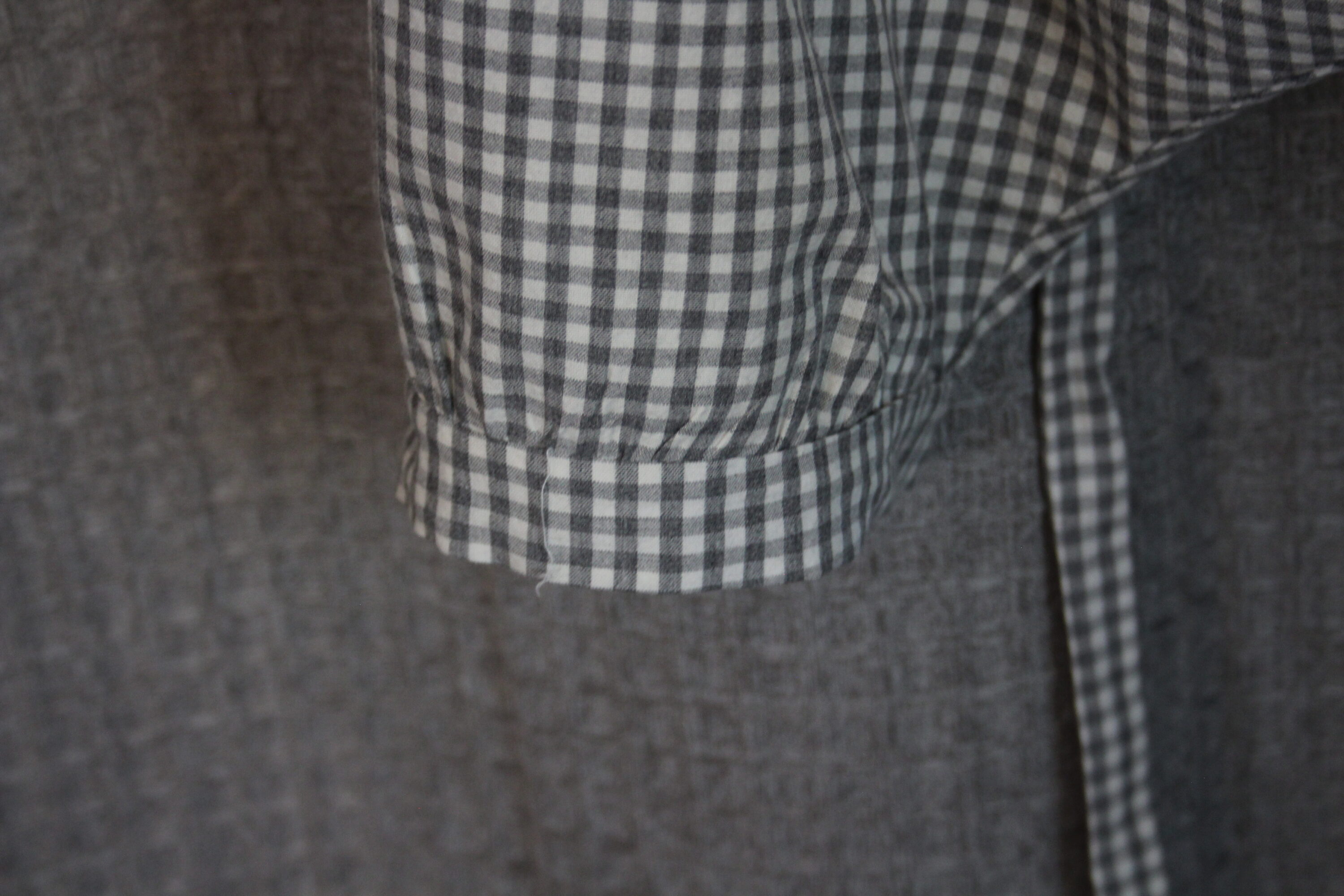
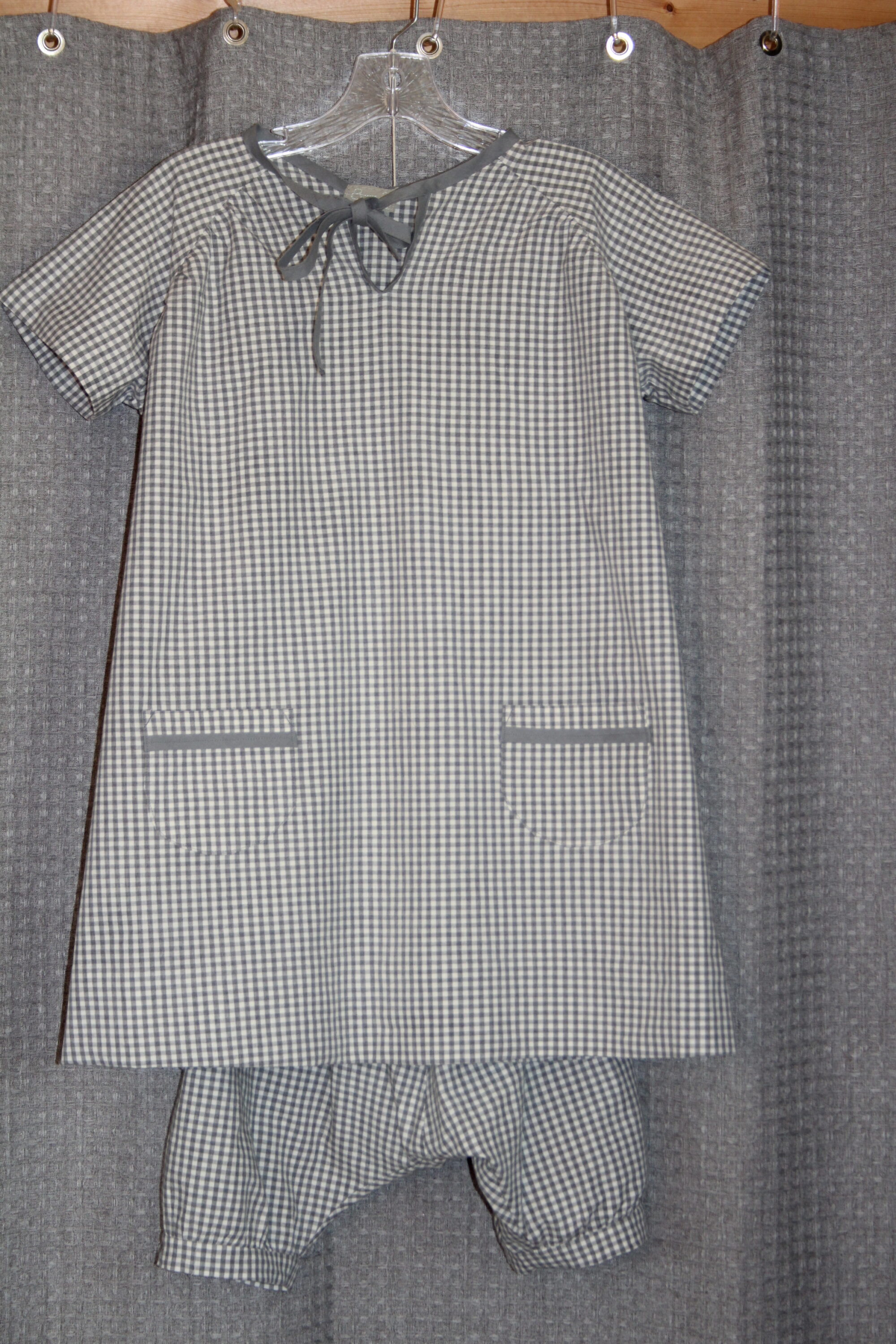
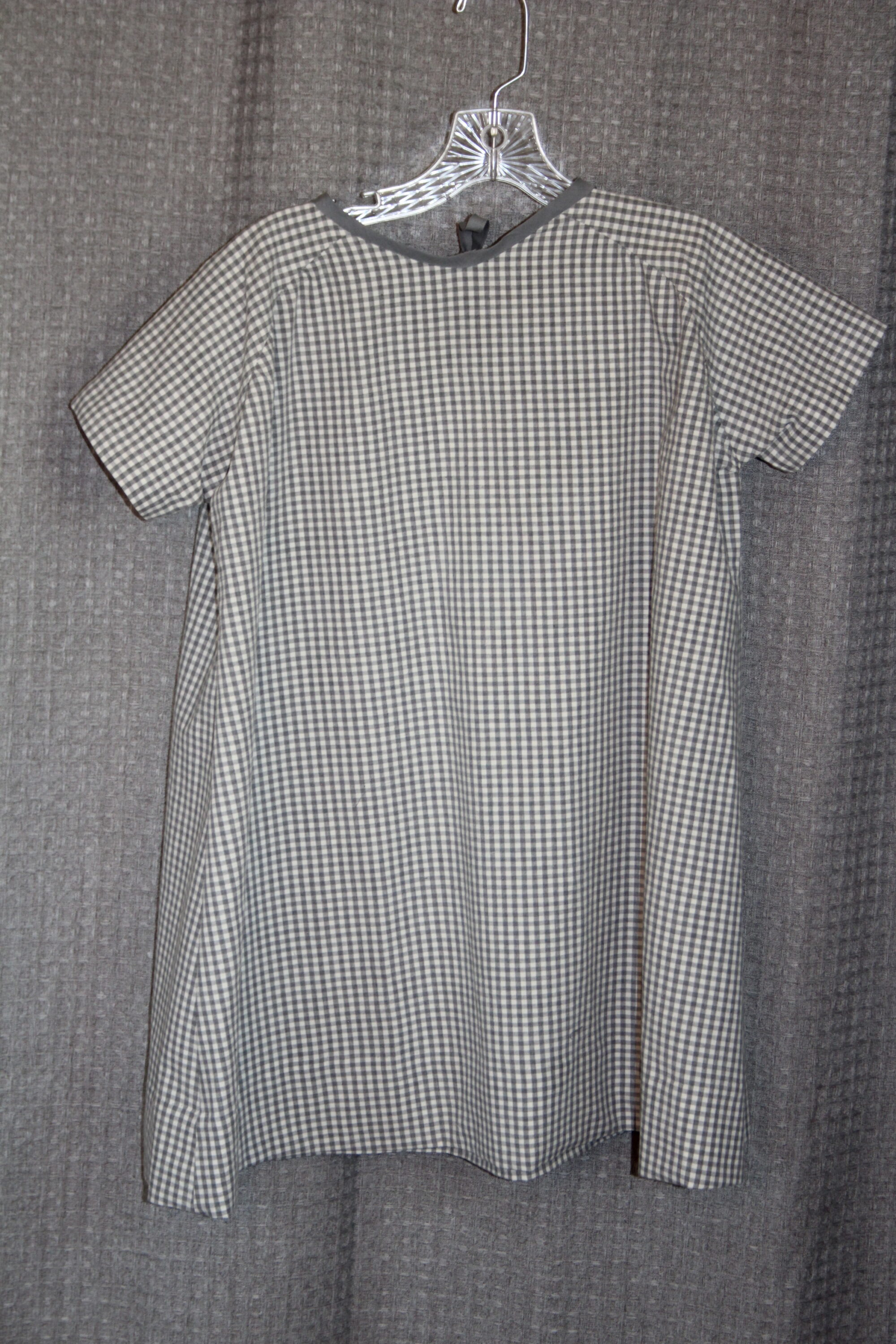
10.3 (Size 10 pink linen/cotton which is a stiffer fabric with wide white cotton dotted swiss collar and tie which are self-piped. Back neck tie closure with twill tape string and stationary front neck tie held in place by buttonhold authentic 1920’s detail. Matching trim on cuffs. Short little girl wide silhouette worn shorter with shirring at sleeves. Coordinates nicely with the pink rose striped apron).

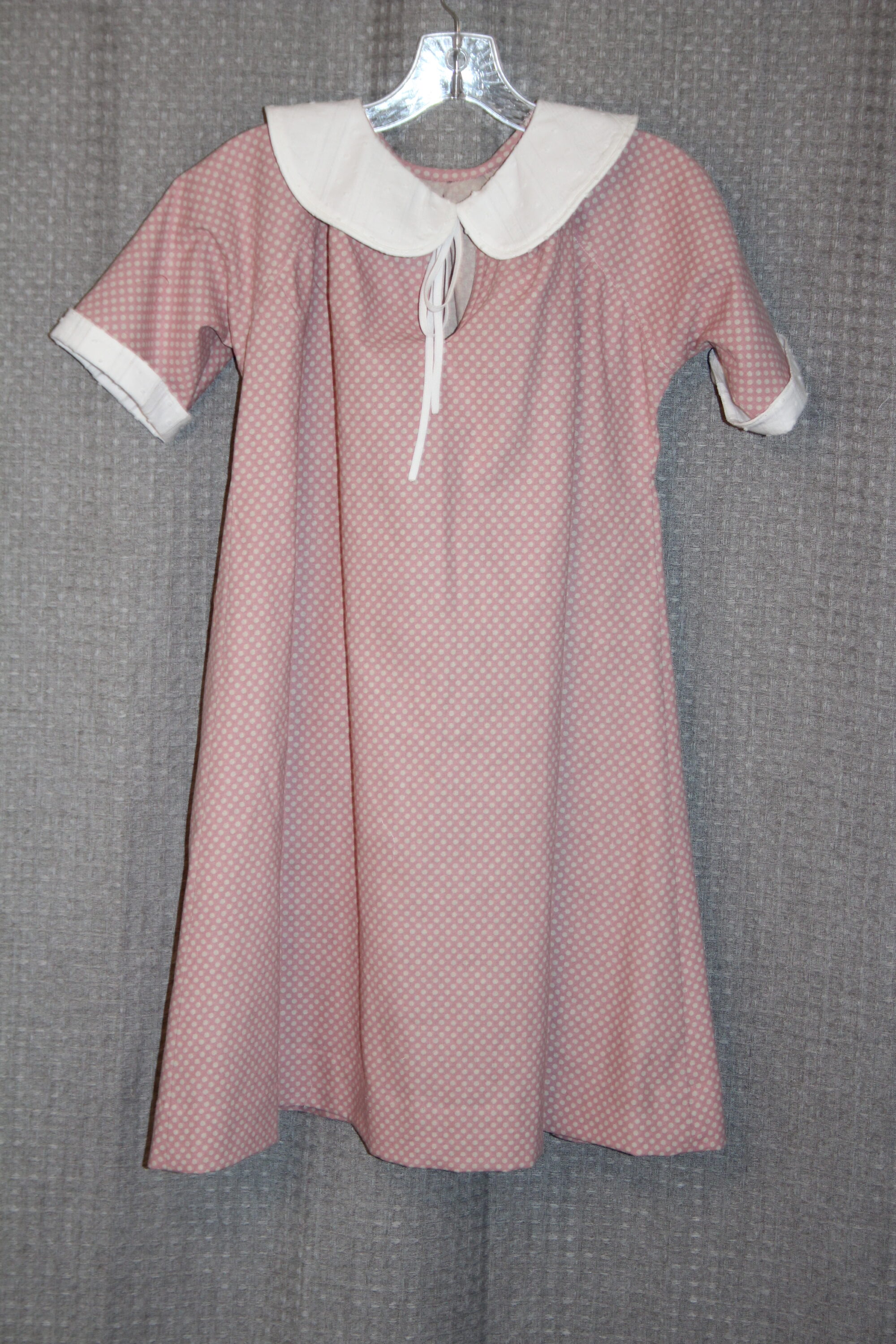
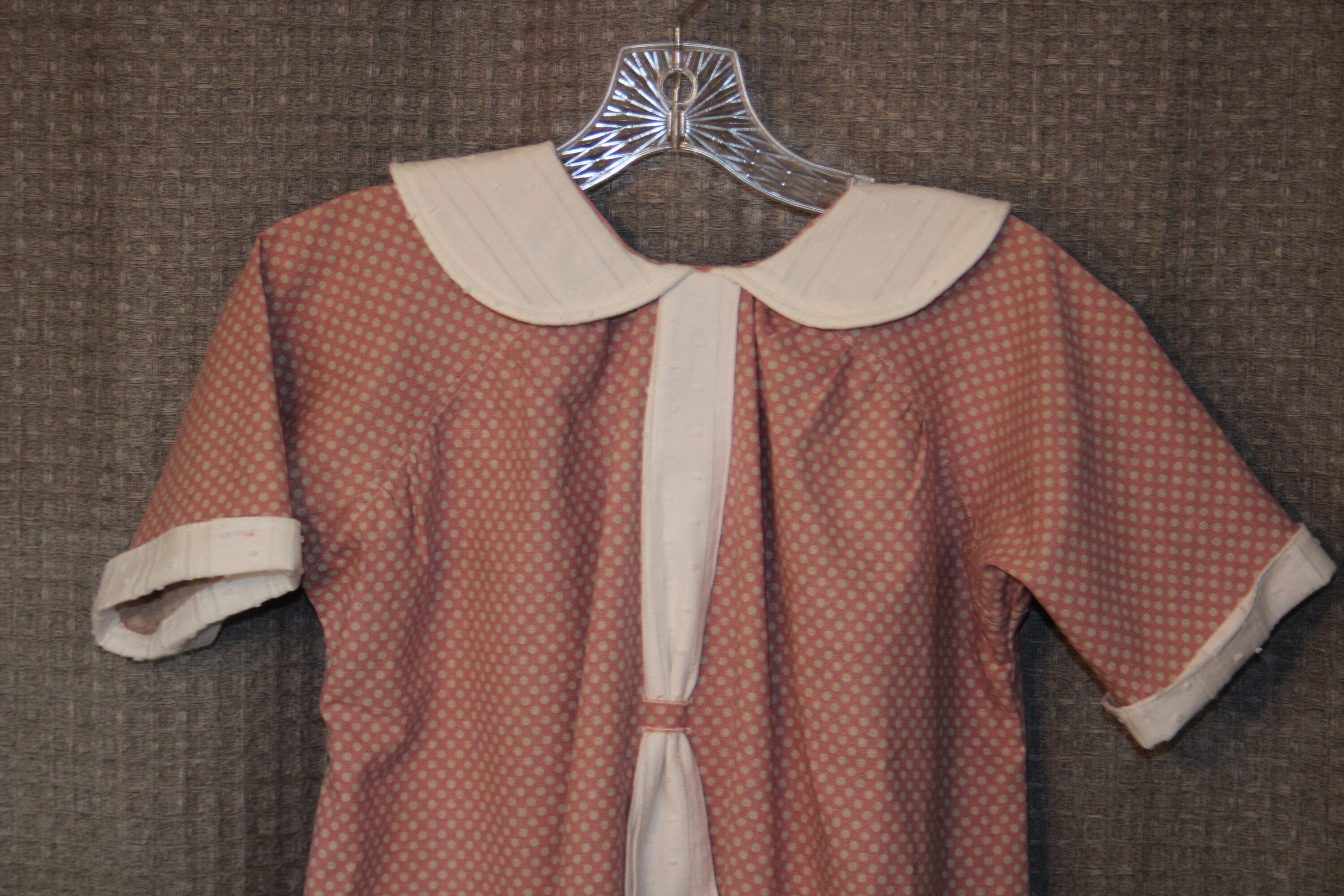
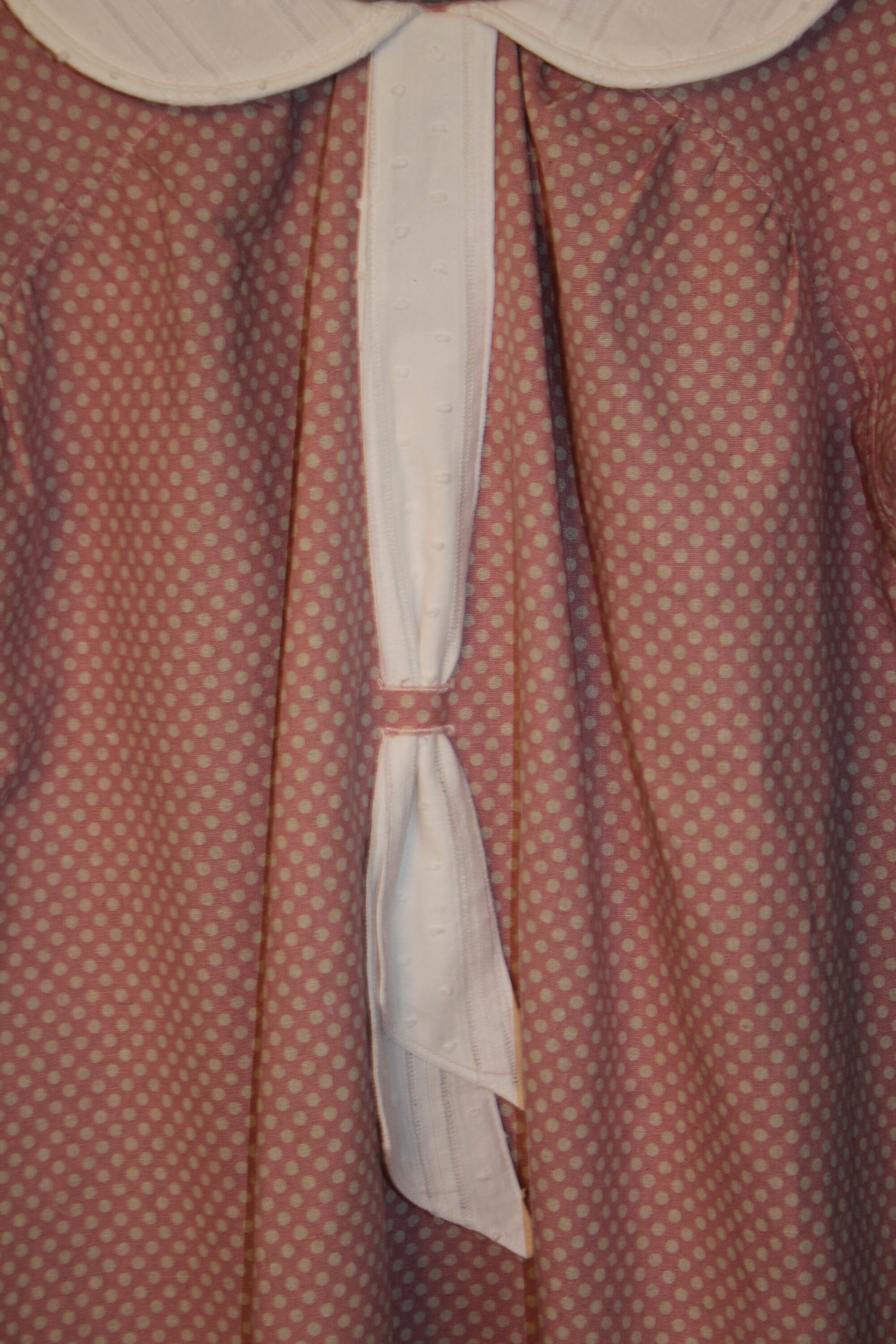
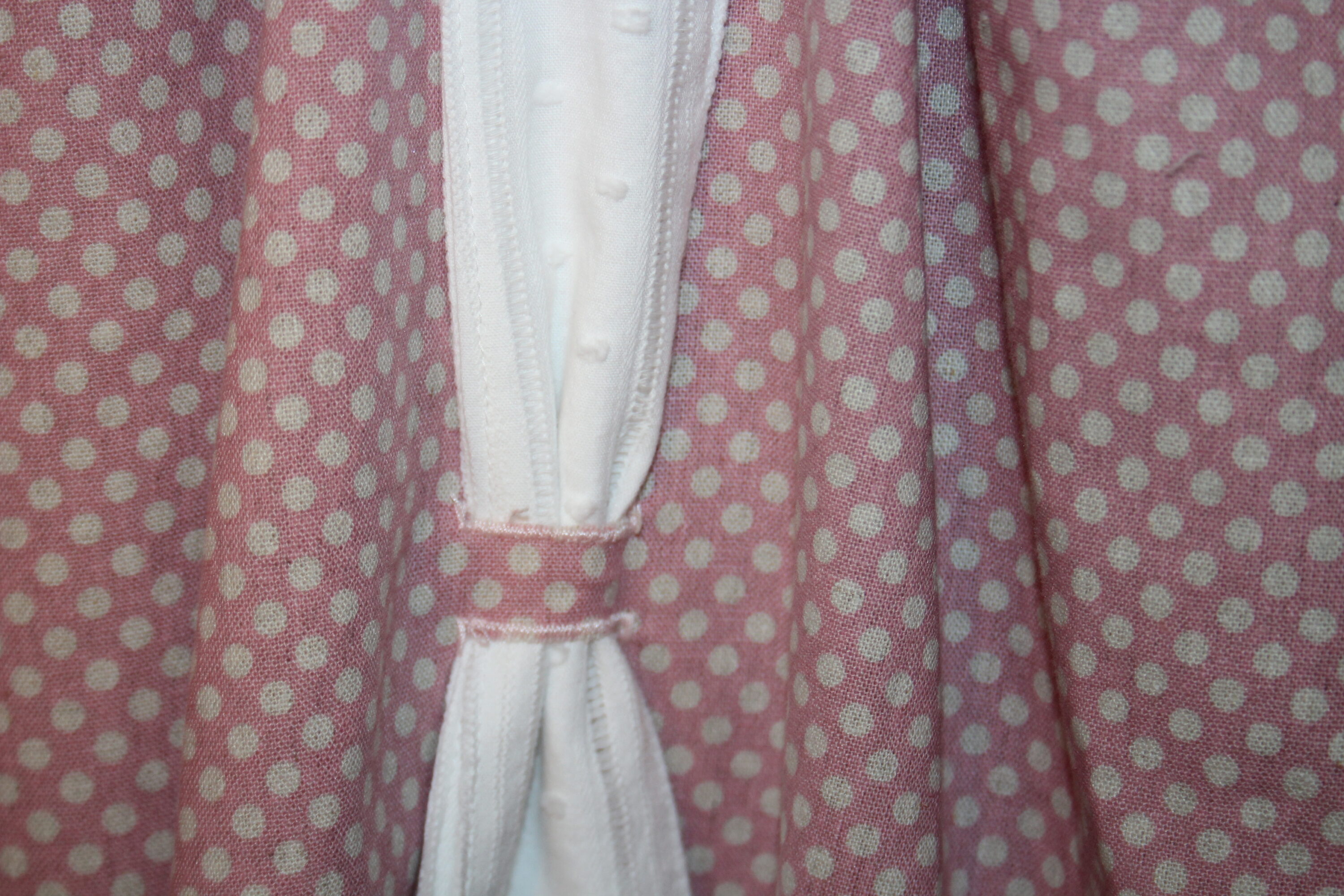
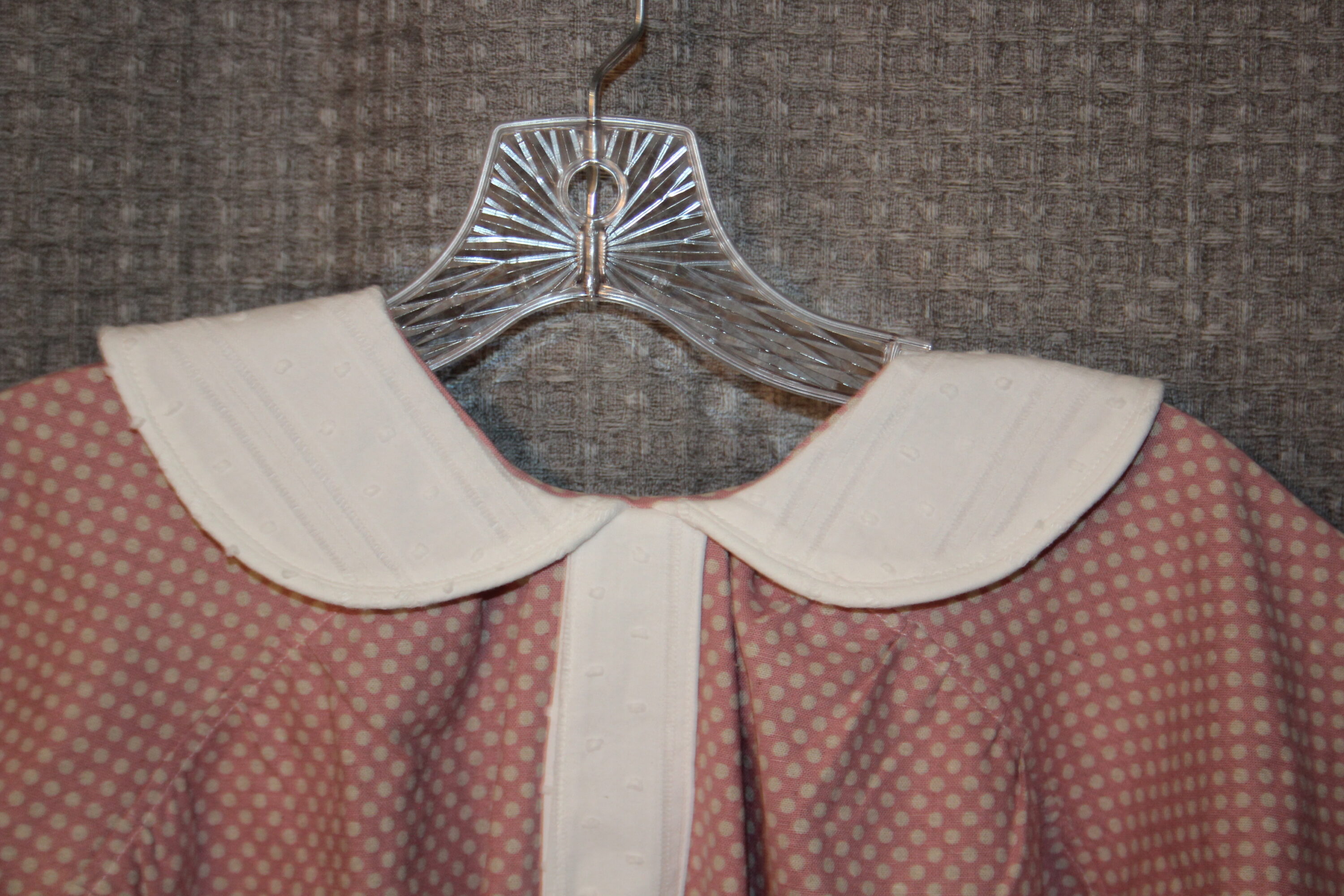
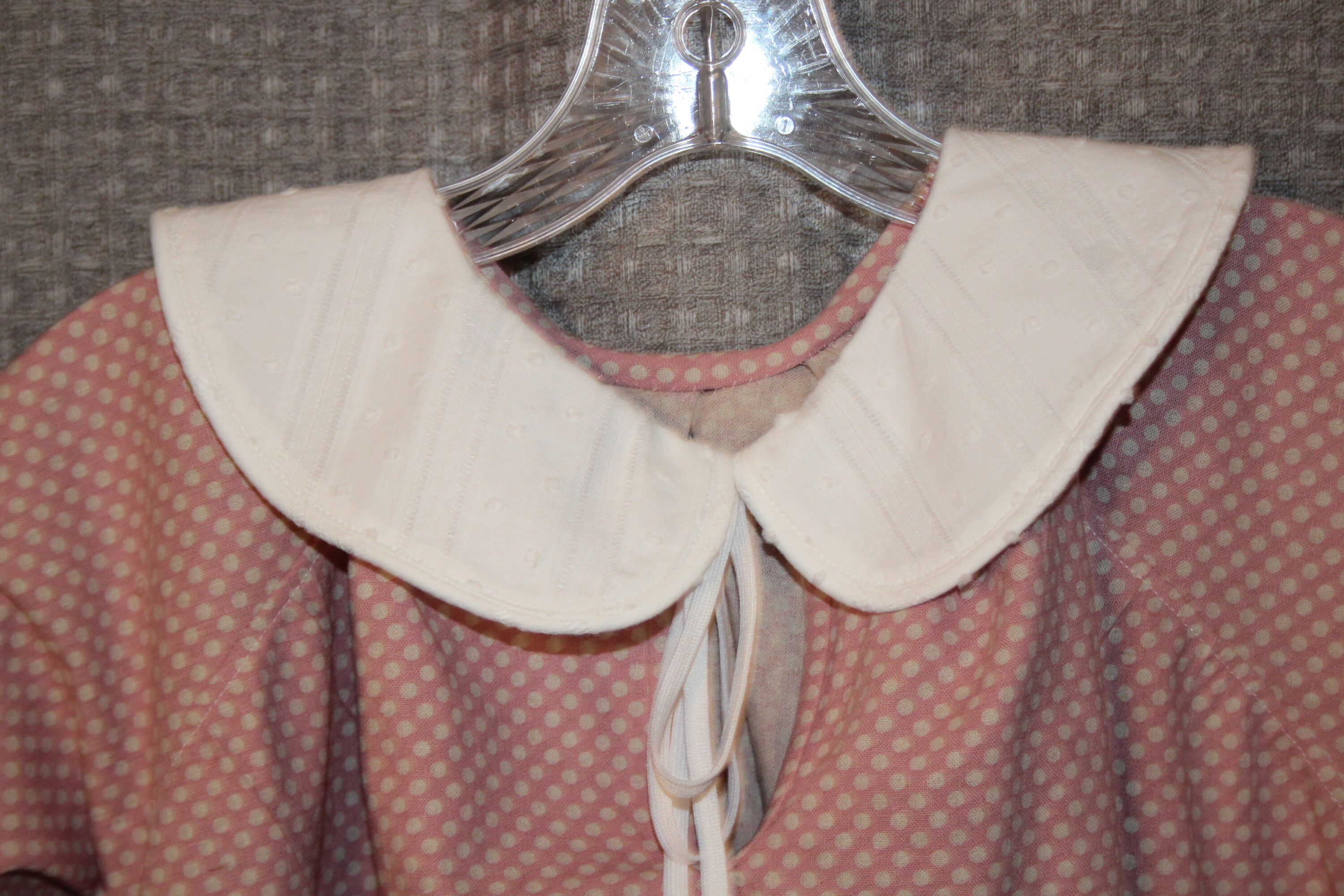
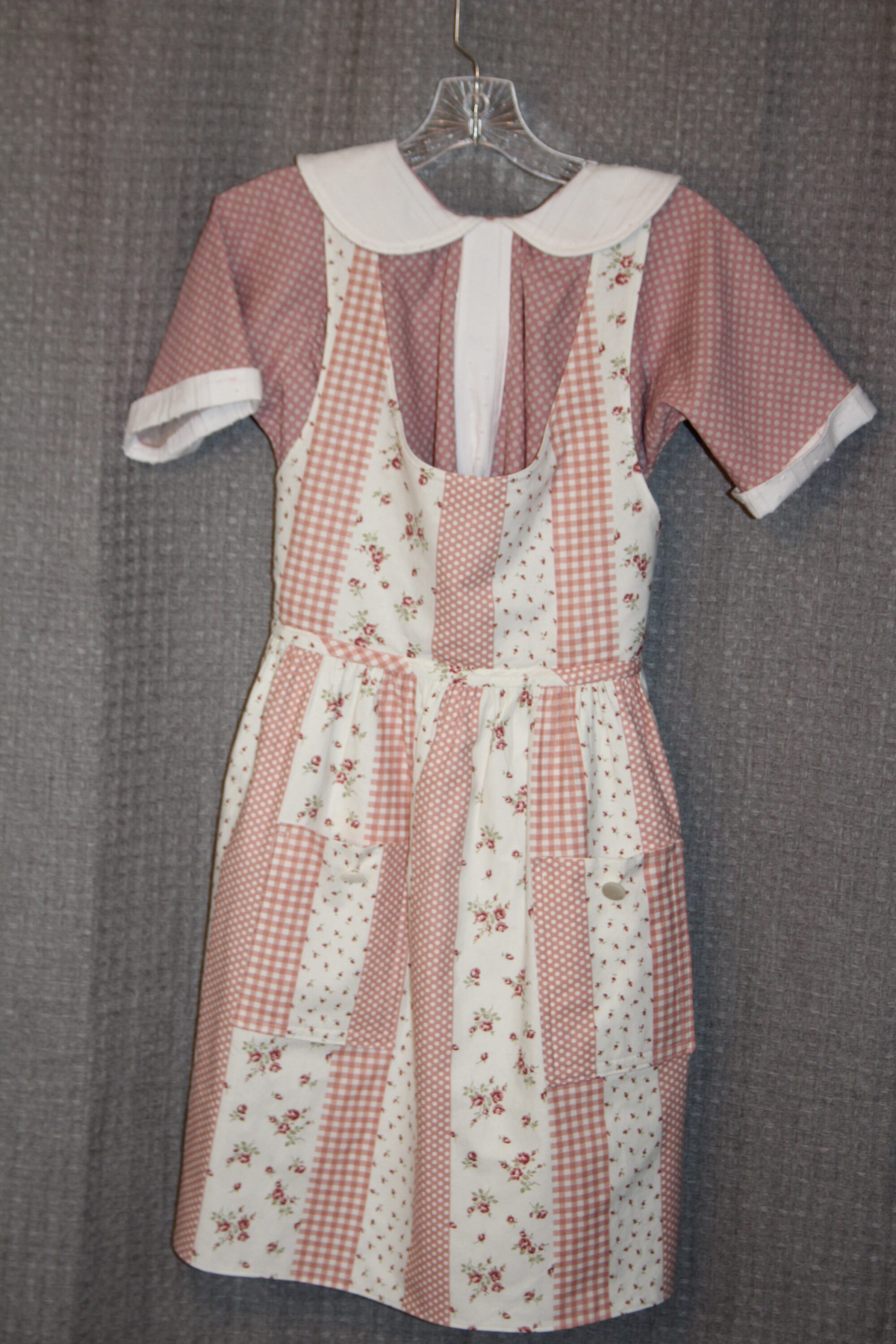
10A.2 (Pink gingham and rose with polka dot striped reproduction fabric reversible apron. Mother of pearl or bows on pockets. Back crossover ties with MOP buttons and adjustable straps for flexible sizing. This is the “scoop neck” woman’s silhouette made from vintage woman’s instructions you see in the blue and gold floral above).
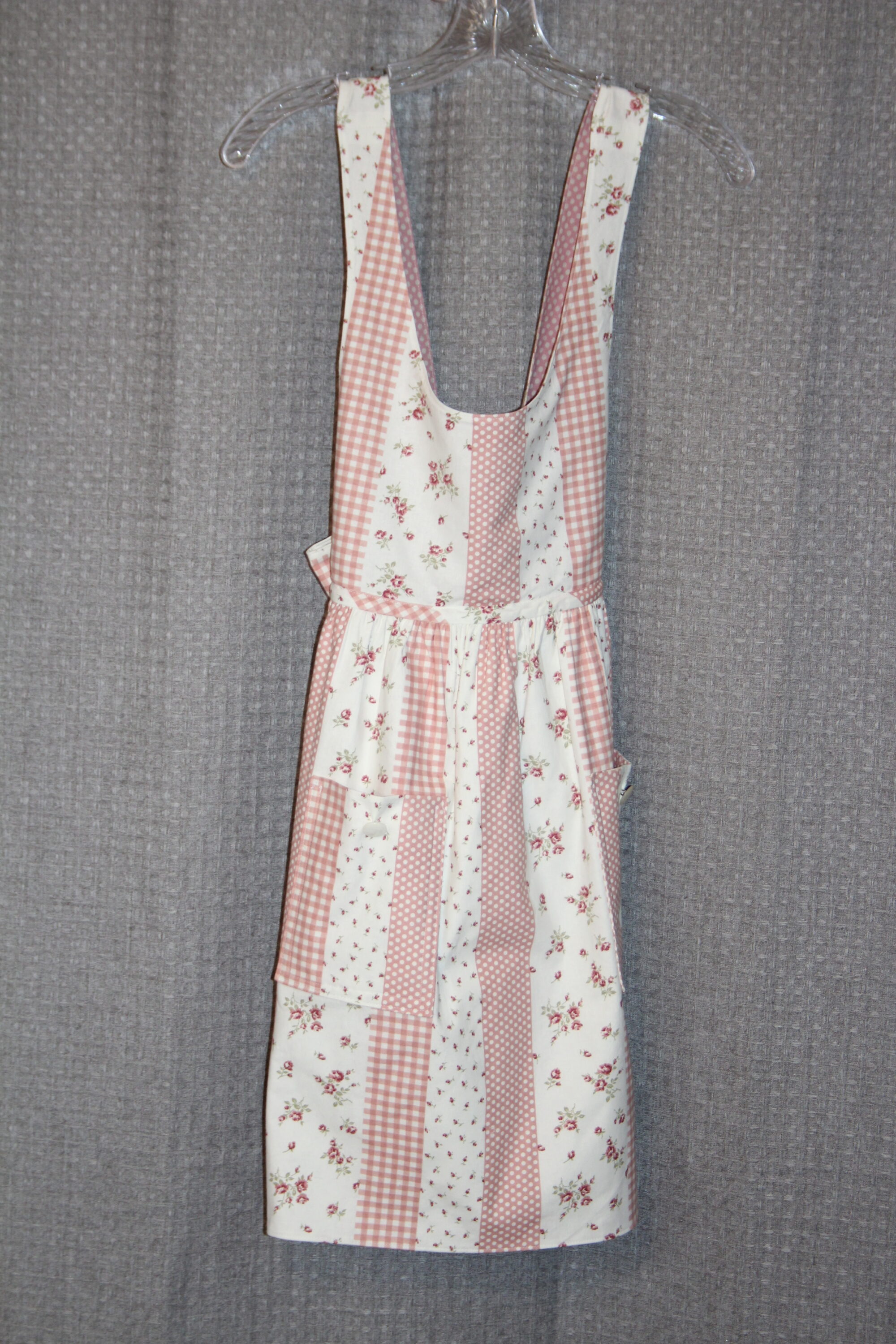
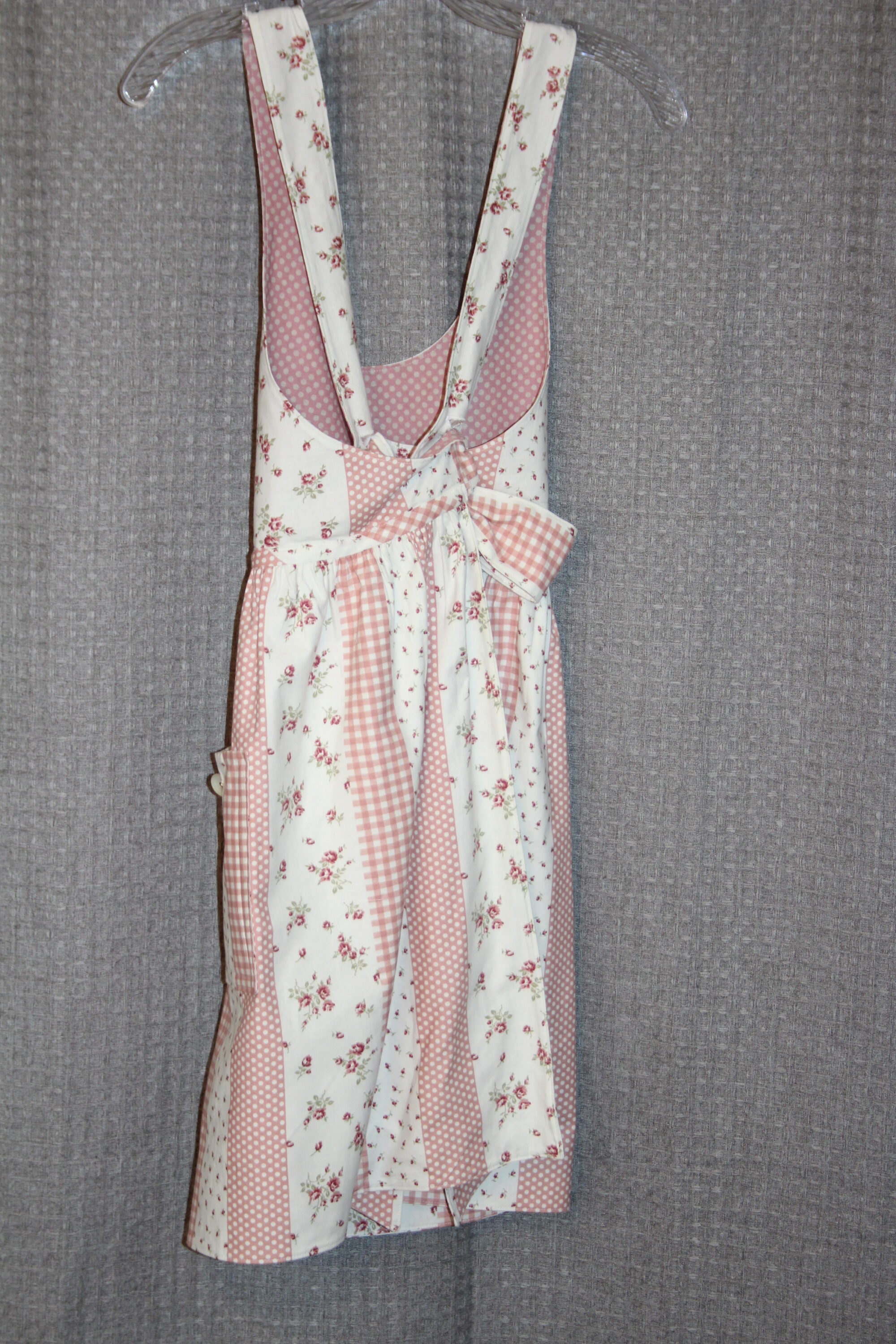
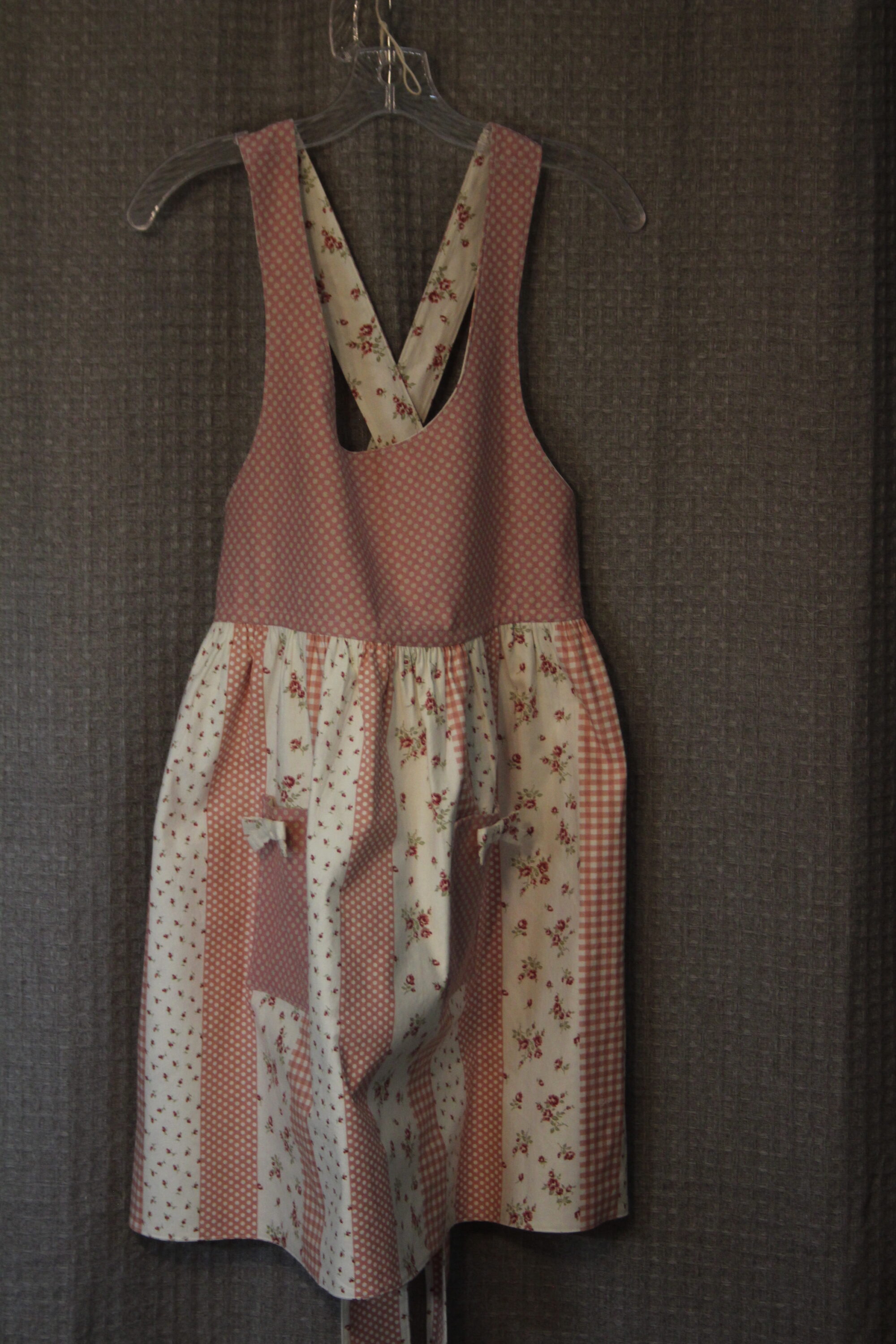
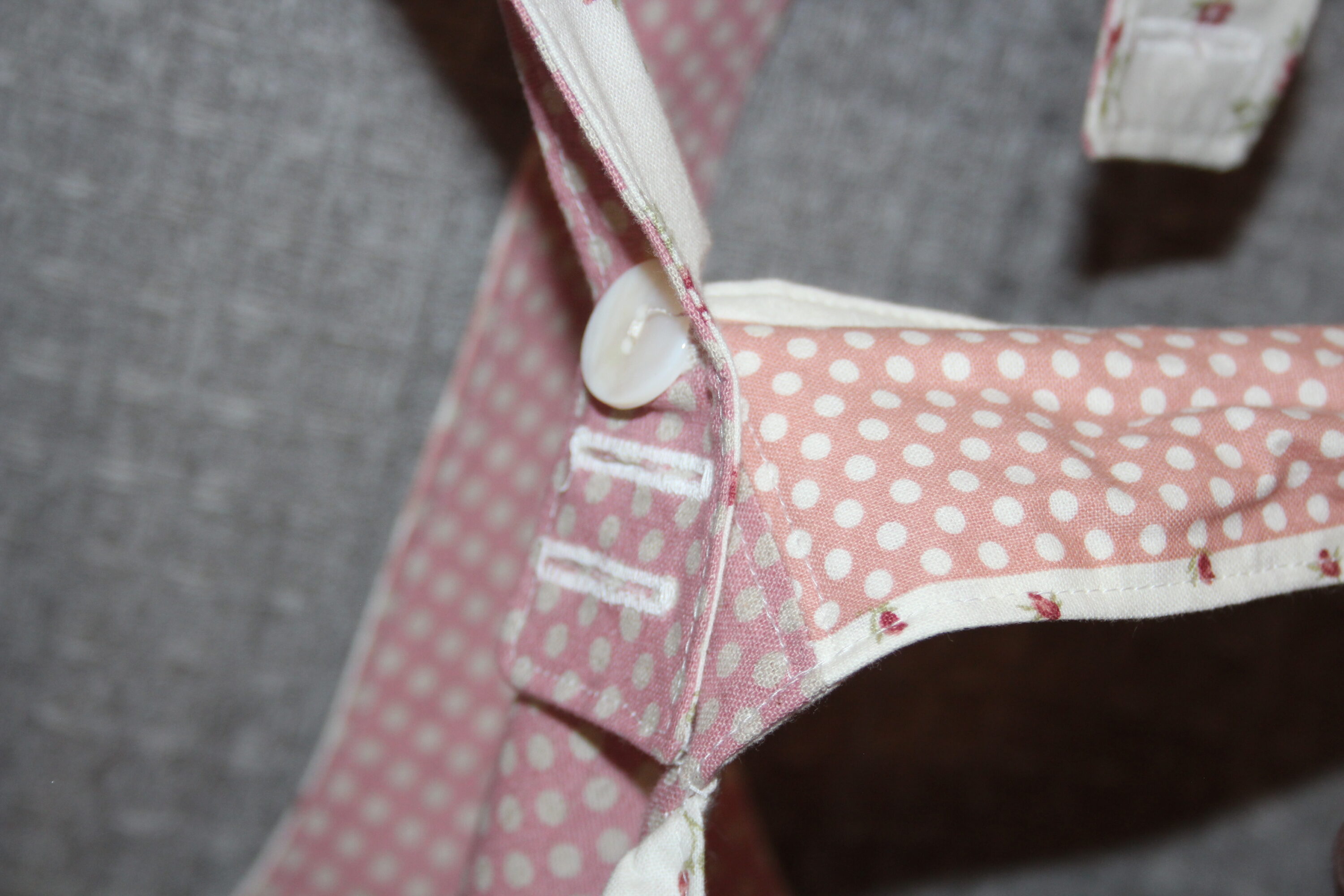
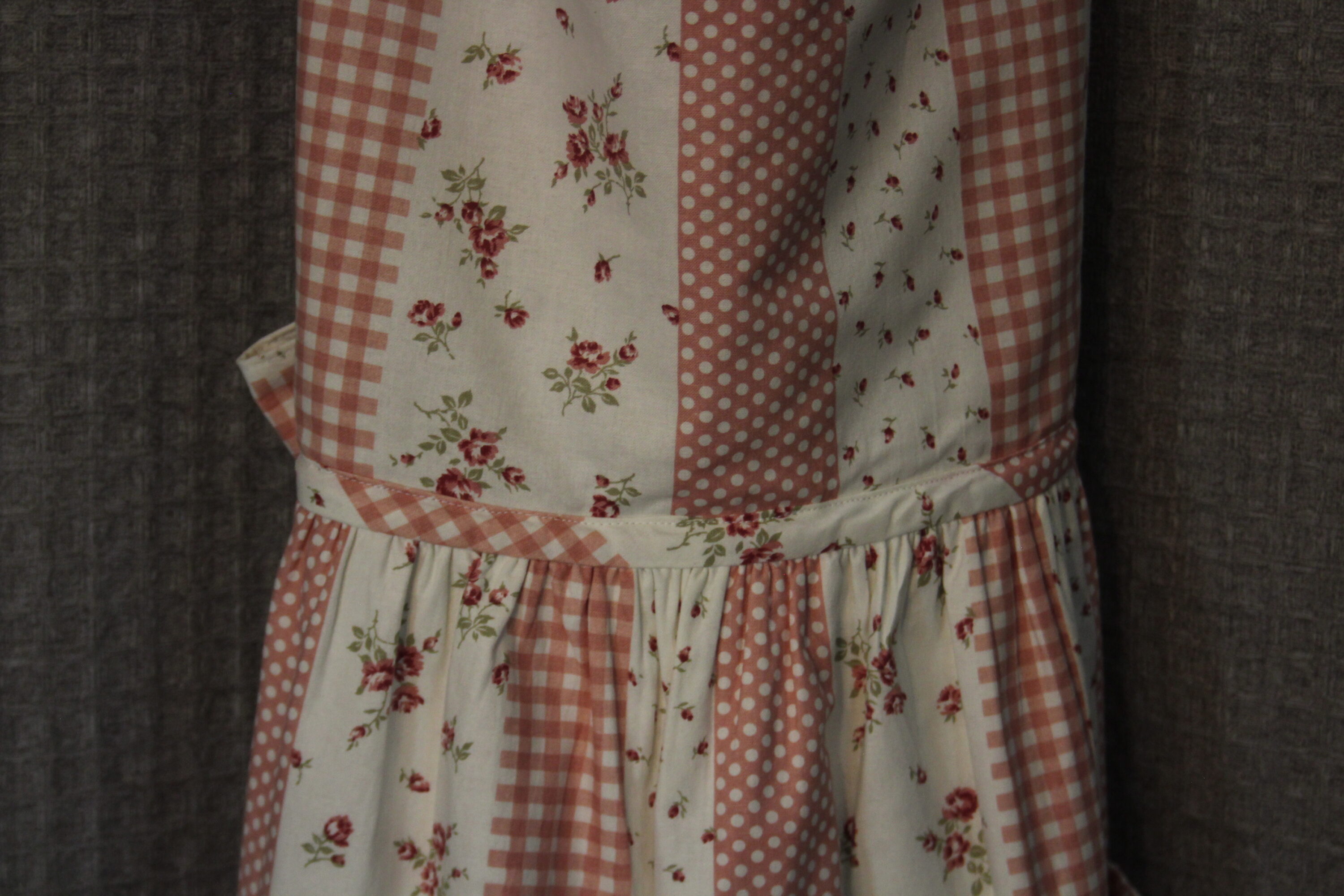
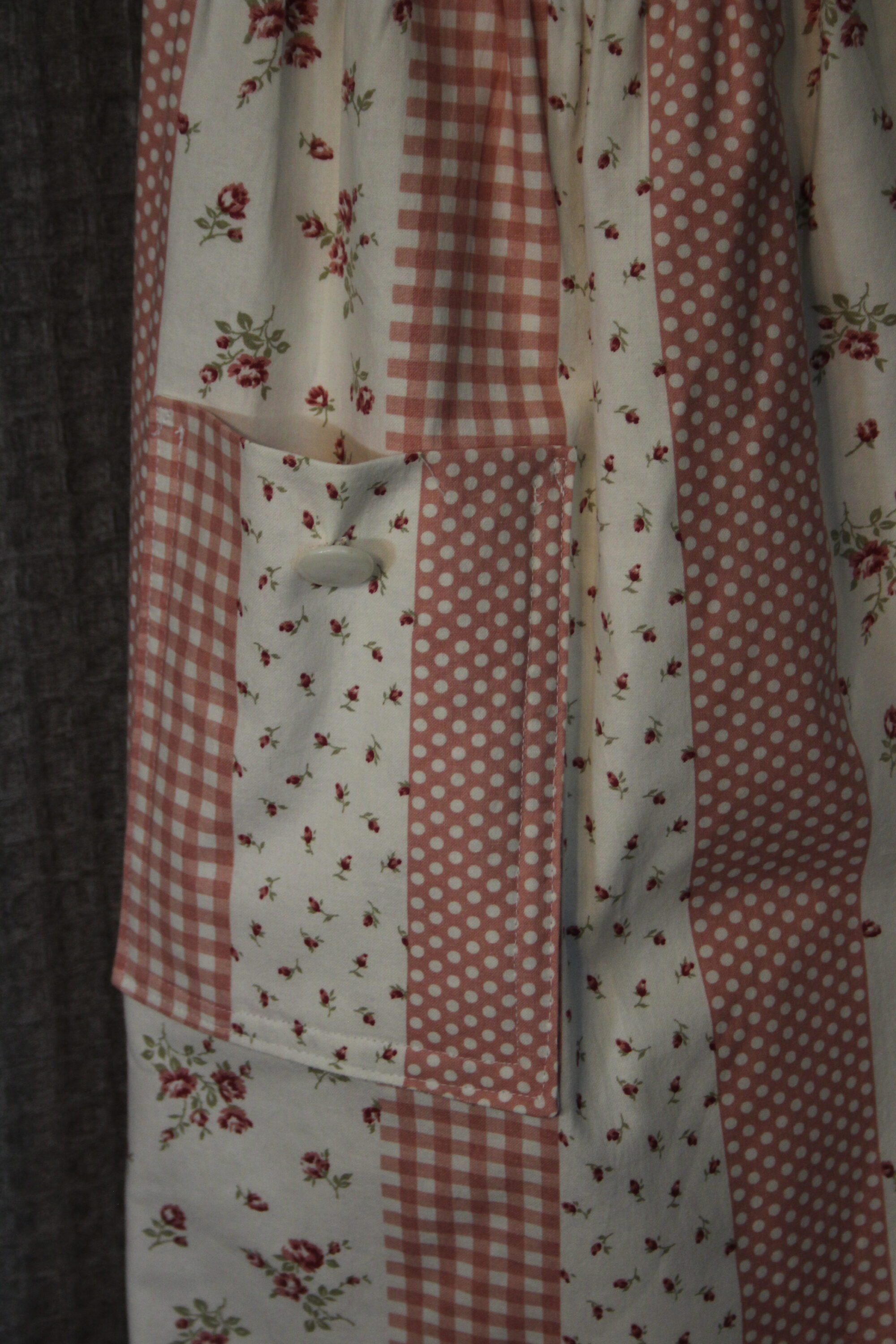
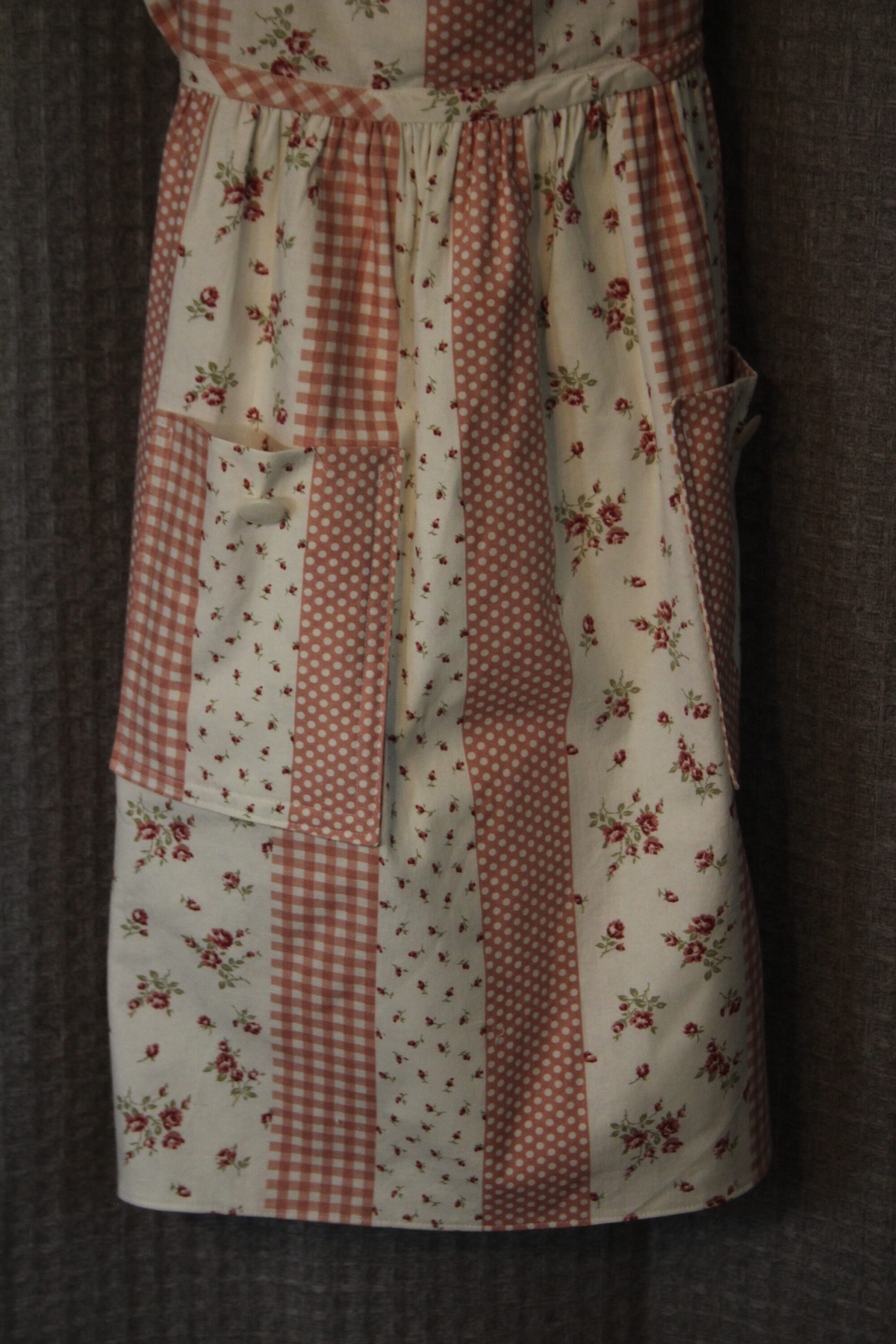
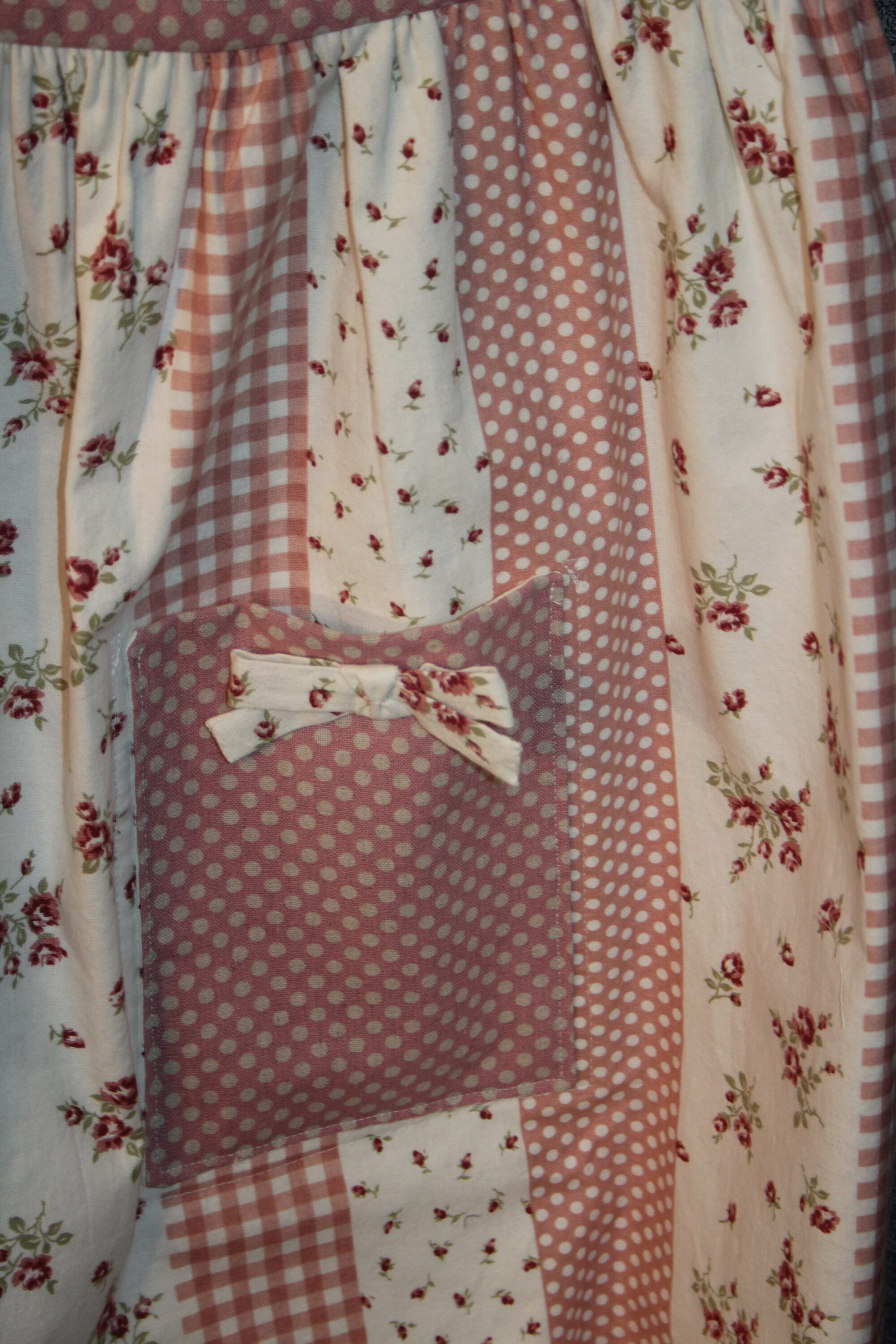
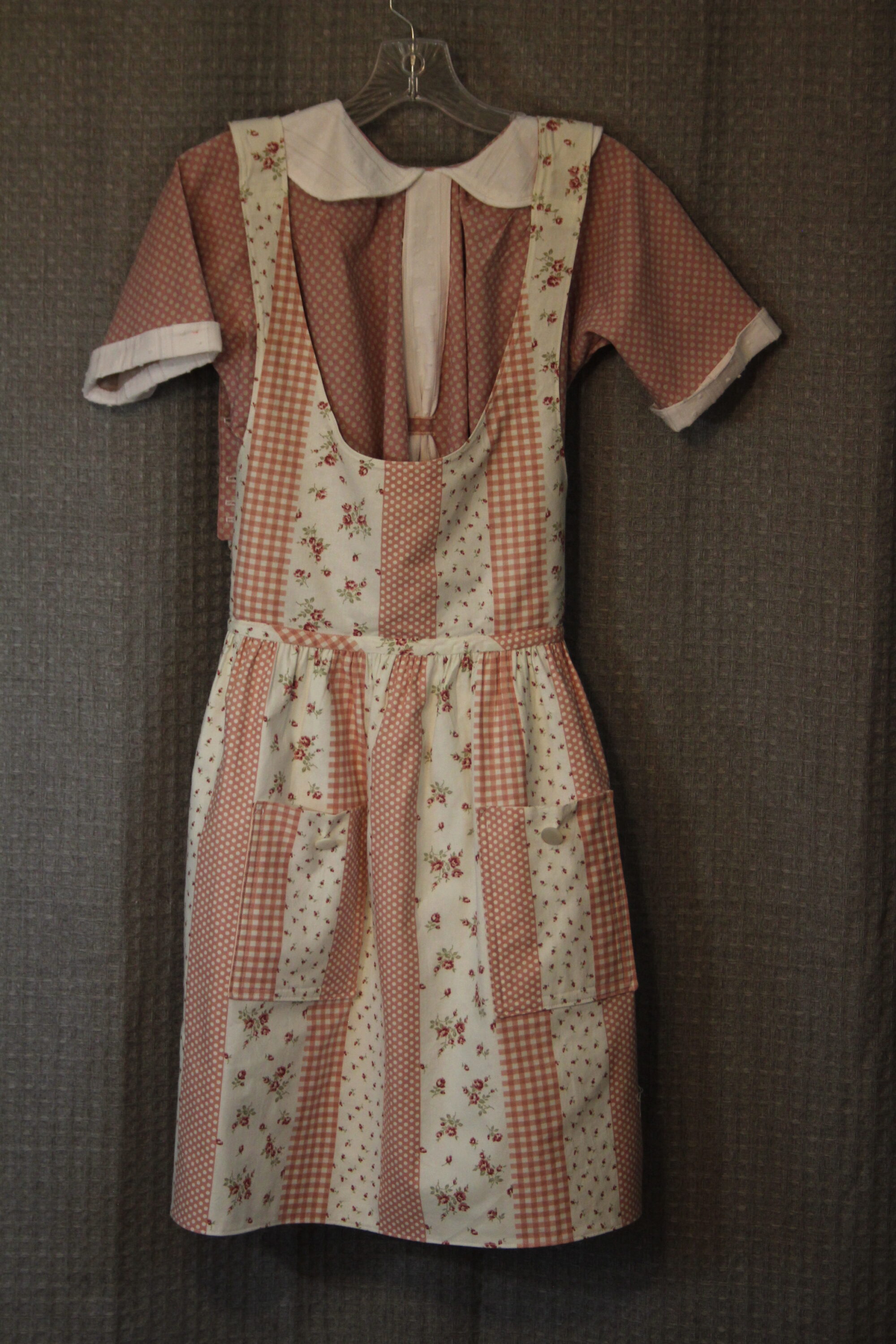
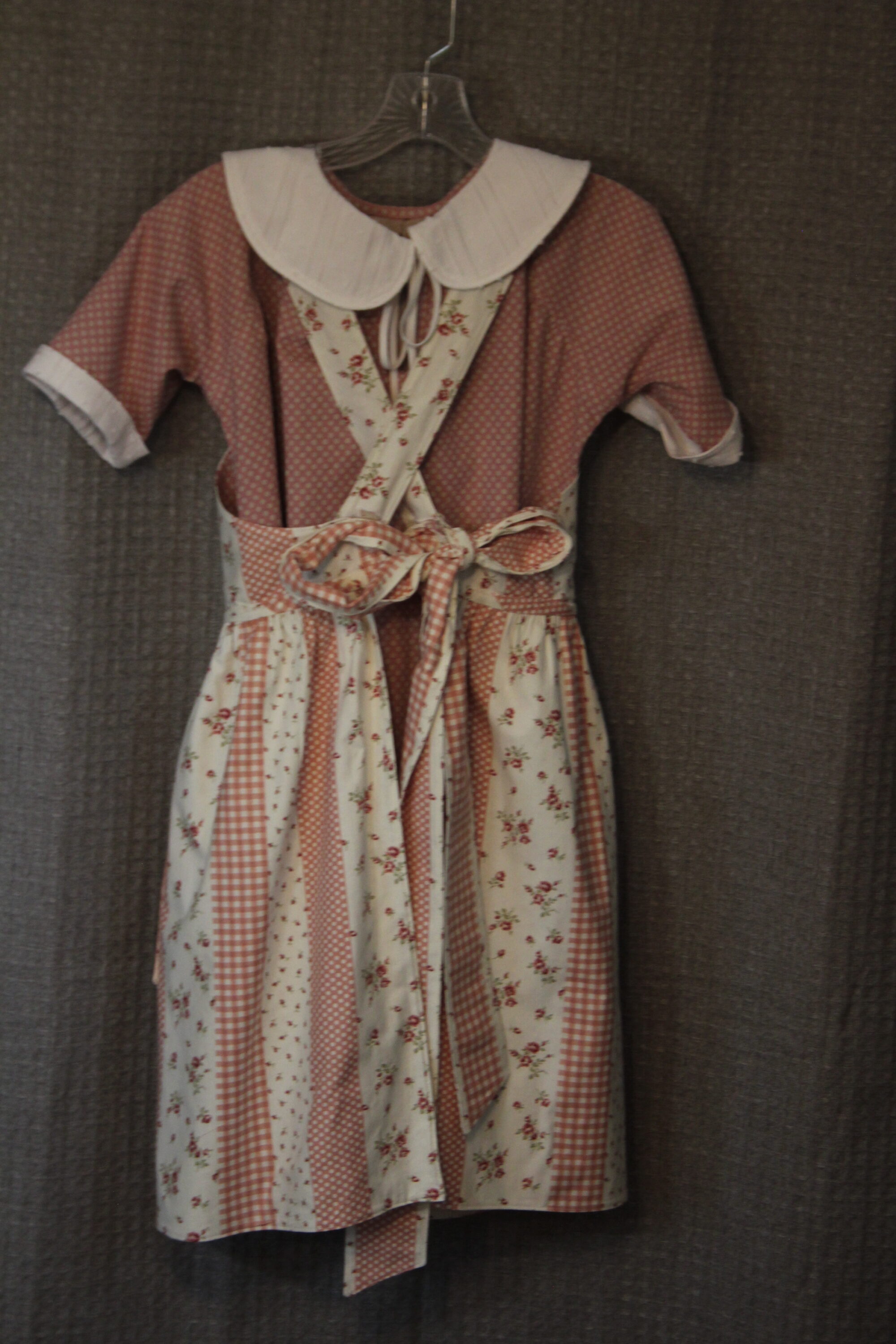
12+.2 (12 plus size which is wider with larger sleeves and sleeve openings in reproduction berry and leaf lightweight fabric in mauve. The narrow collar of the “big girl” closer to woman’s long silhouette (they liked either a wide white collar or a narrow white one like this – rarely colored nor self-fabric colars). Real silk tie in front with back string closure with wide shoulders to fit. Low belt and low pockets with horizontal contrast top edge for interest. Matches beautifully with magenta and dark red aprons).
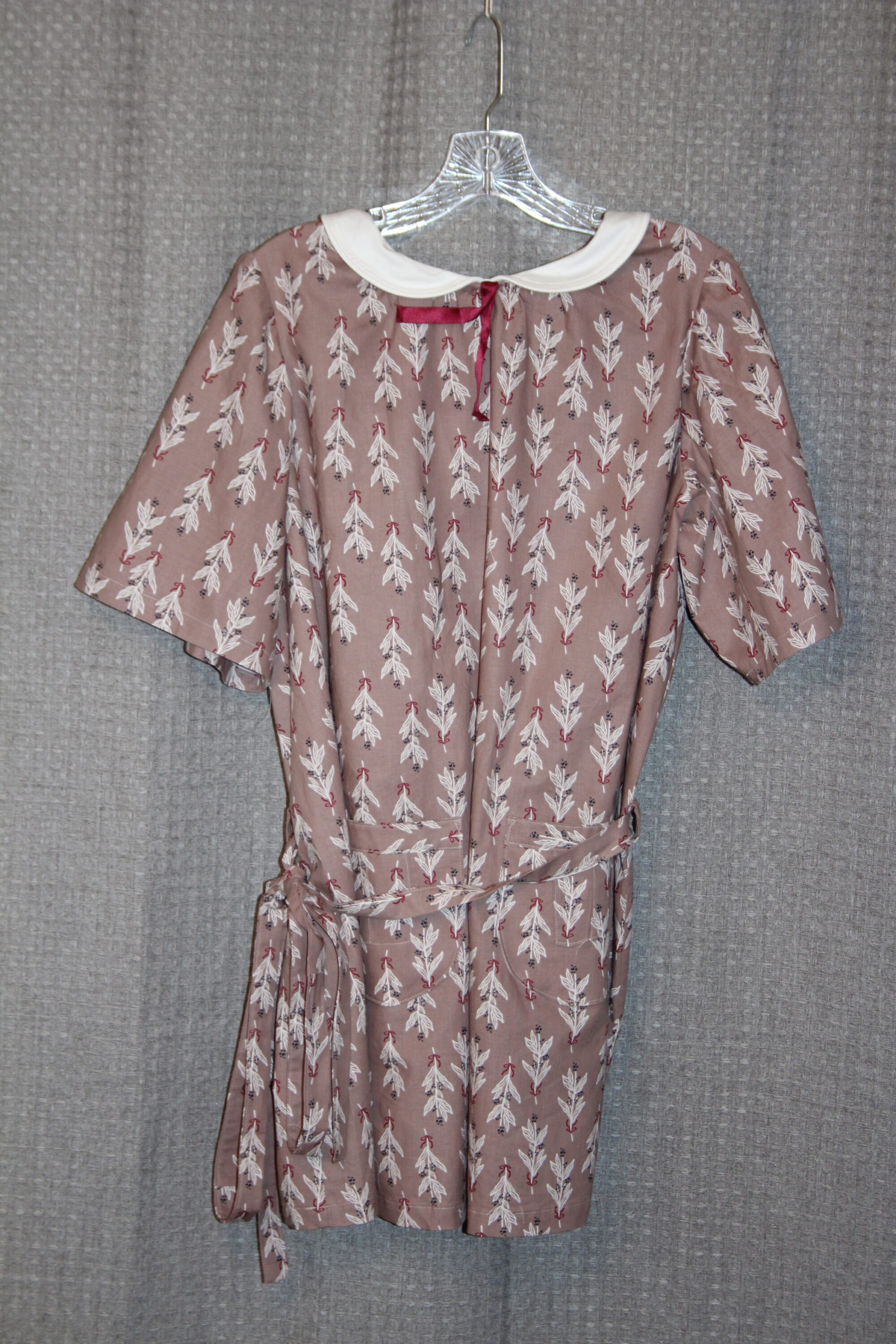

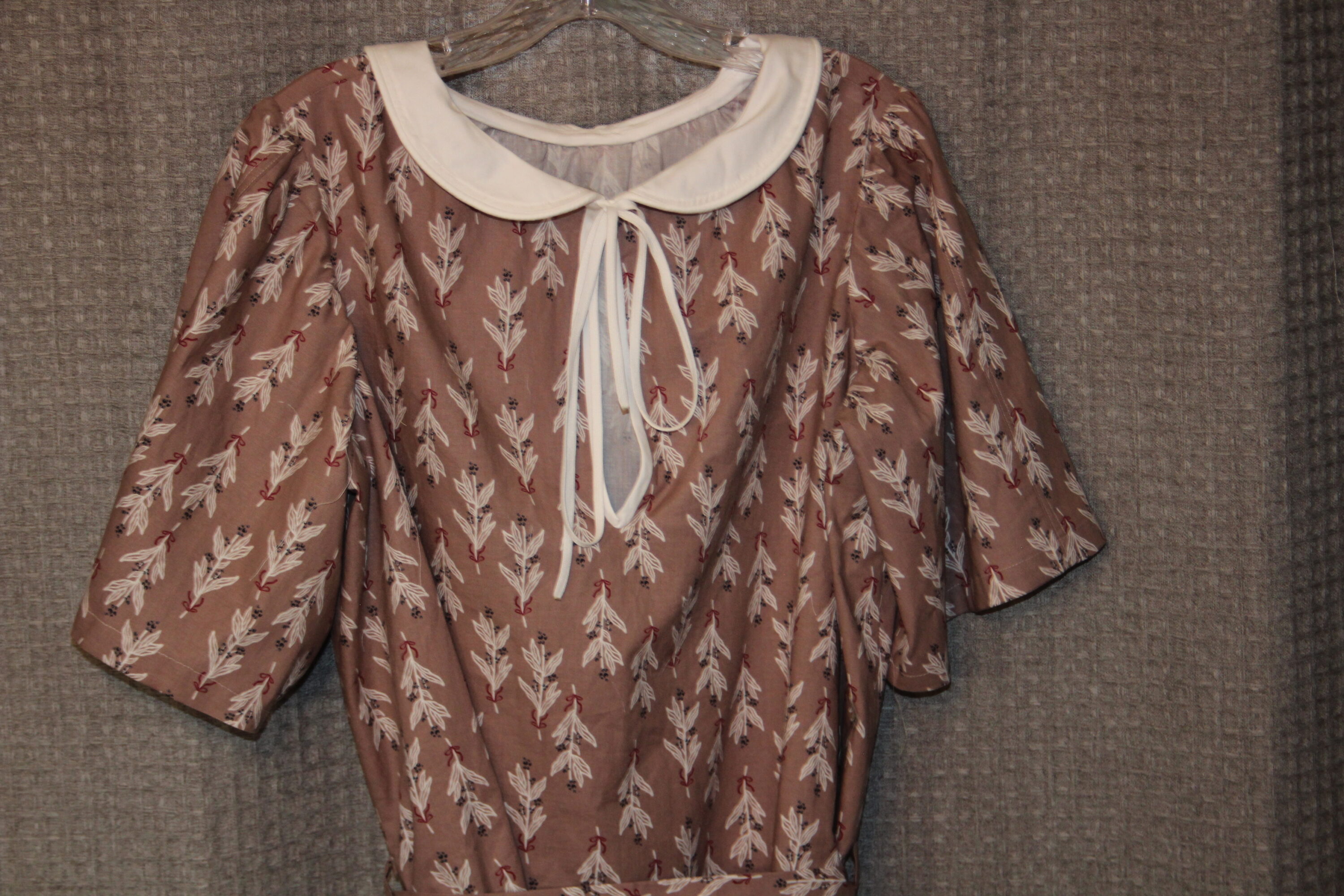
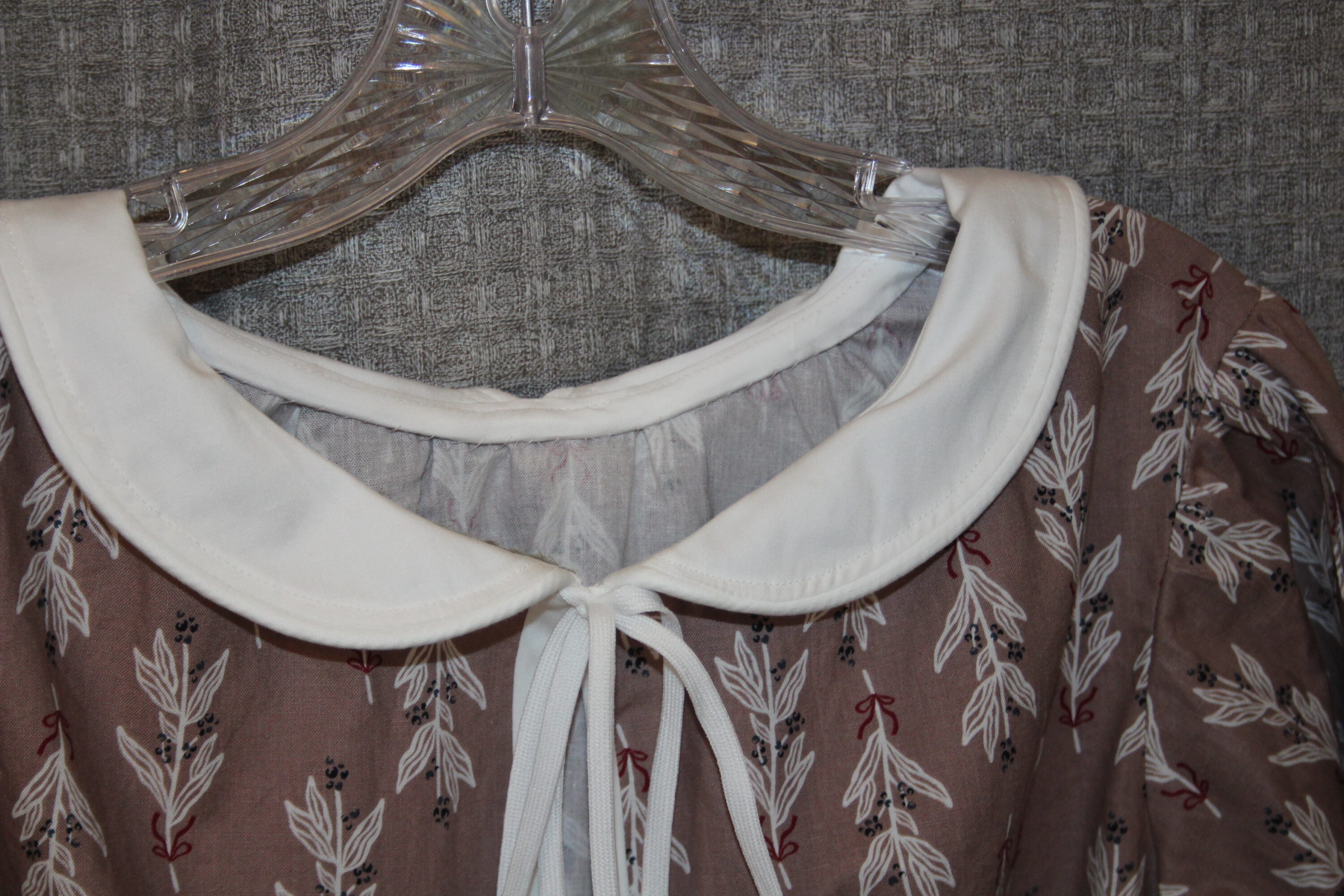
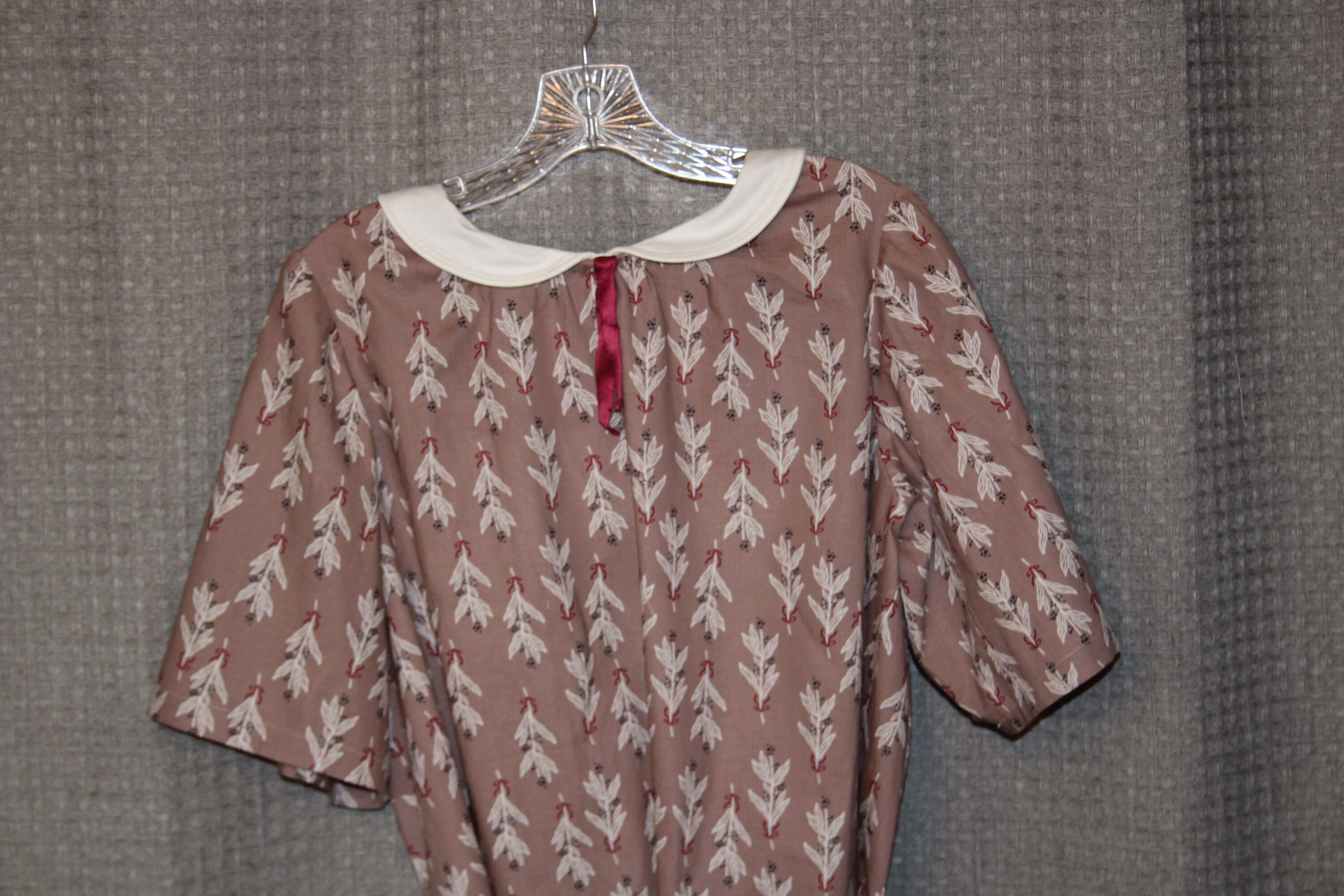
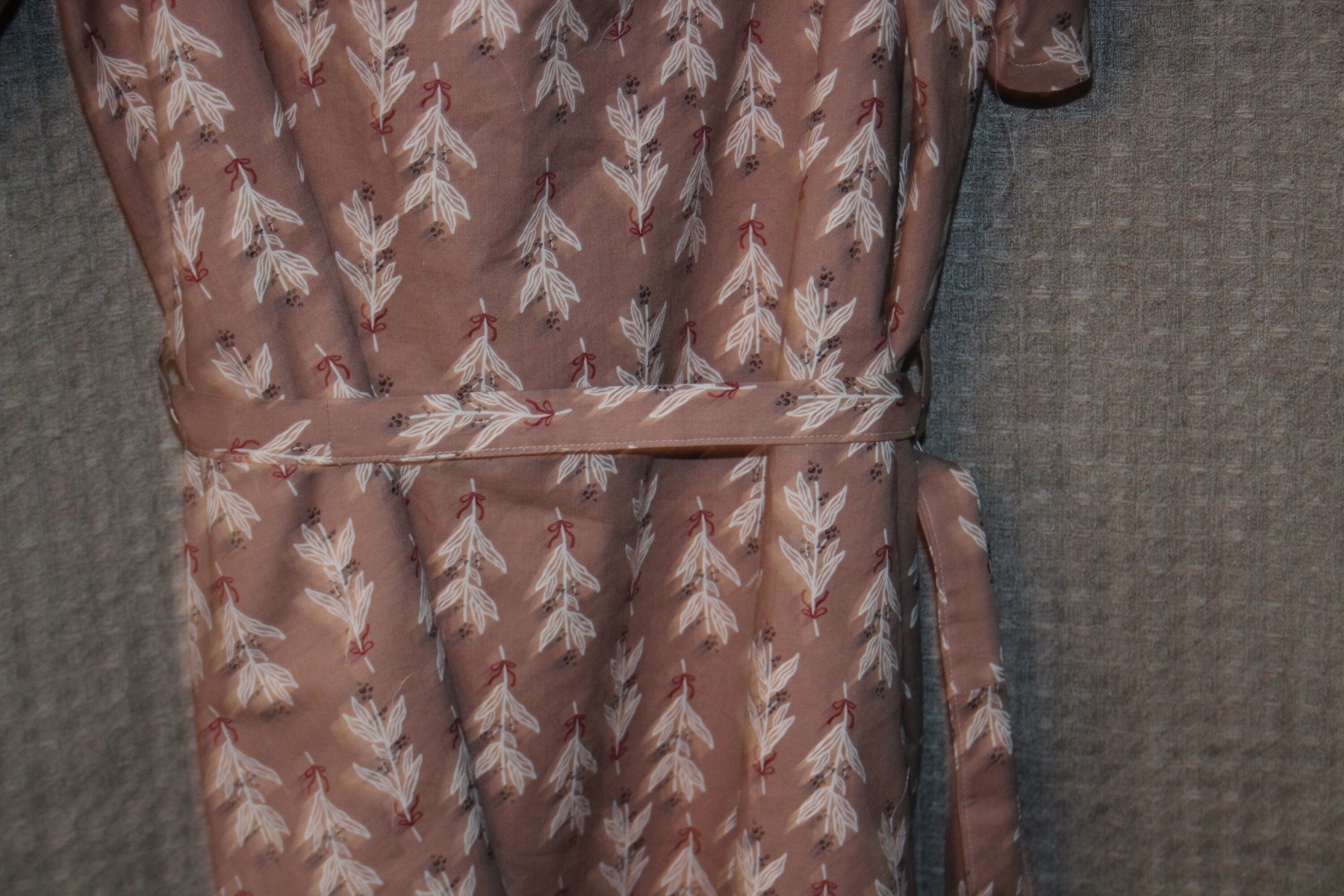
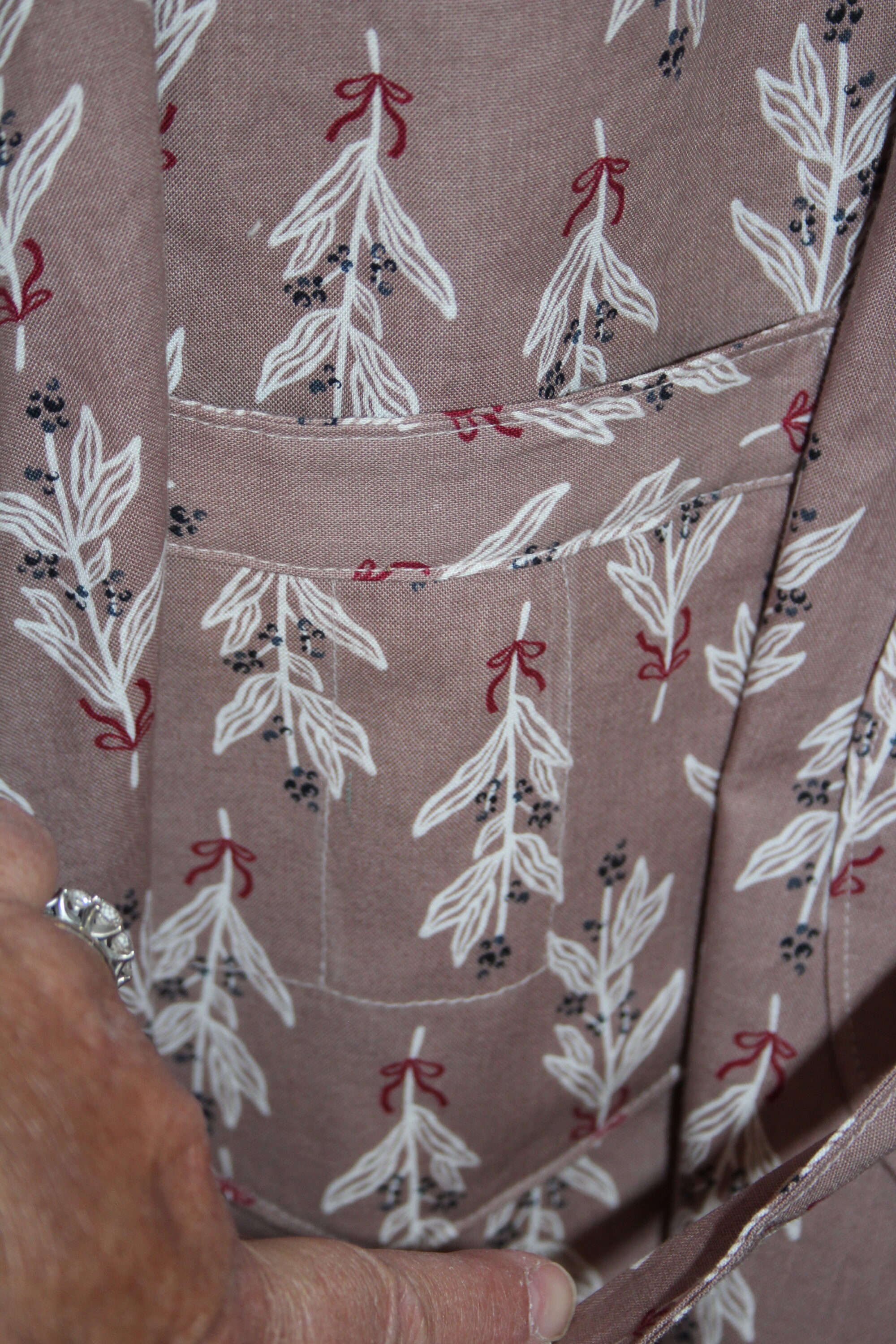
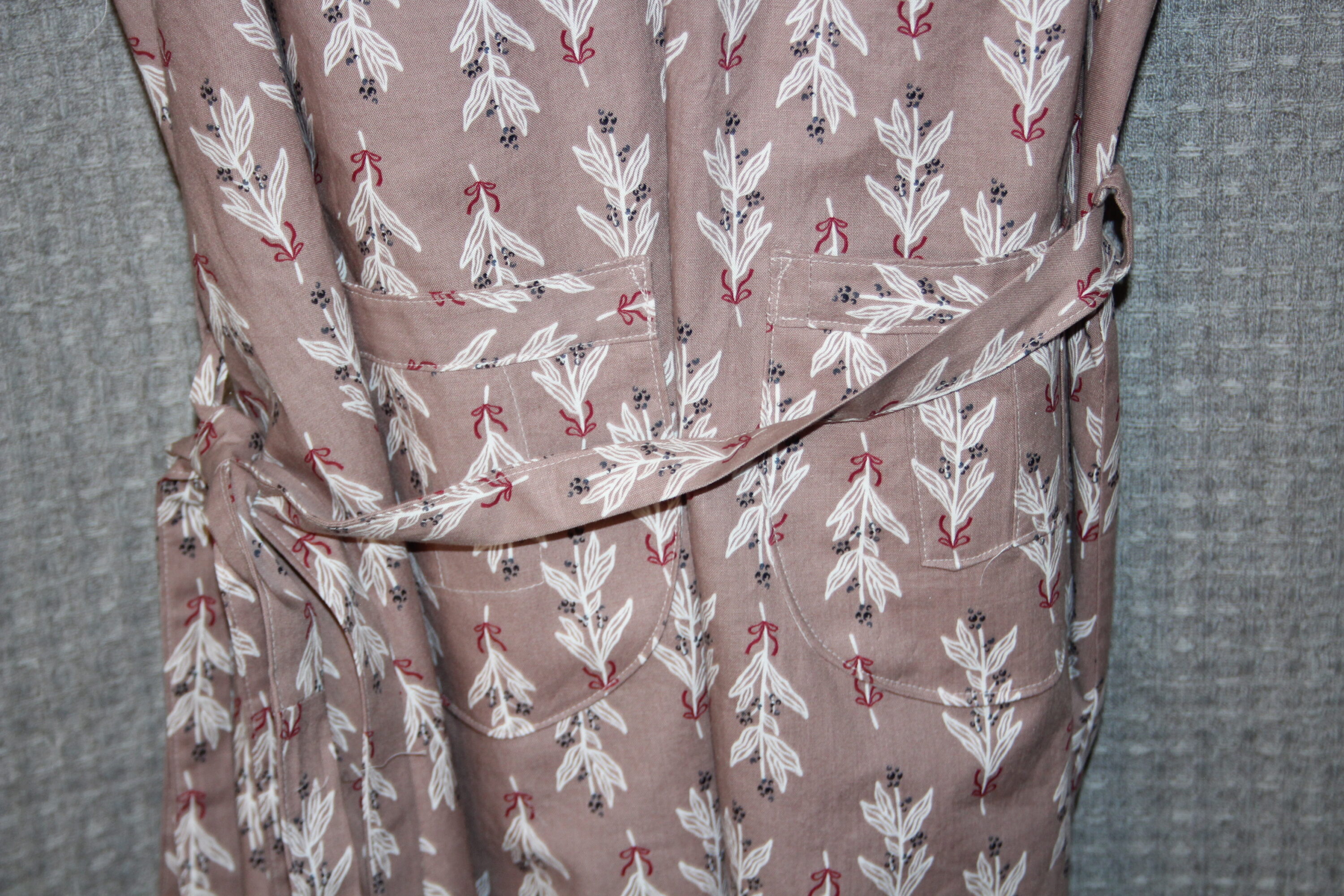
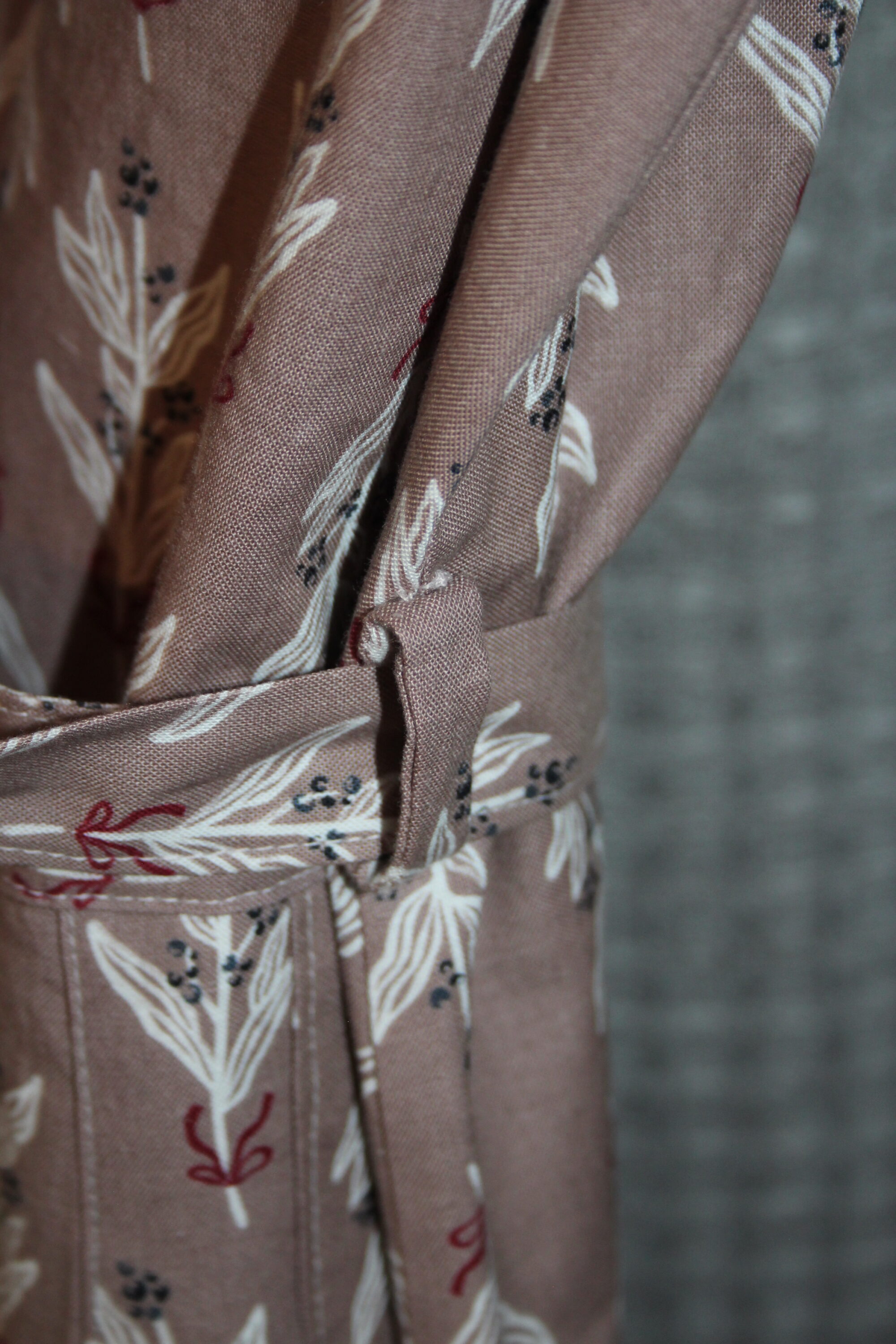
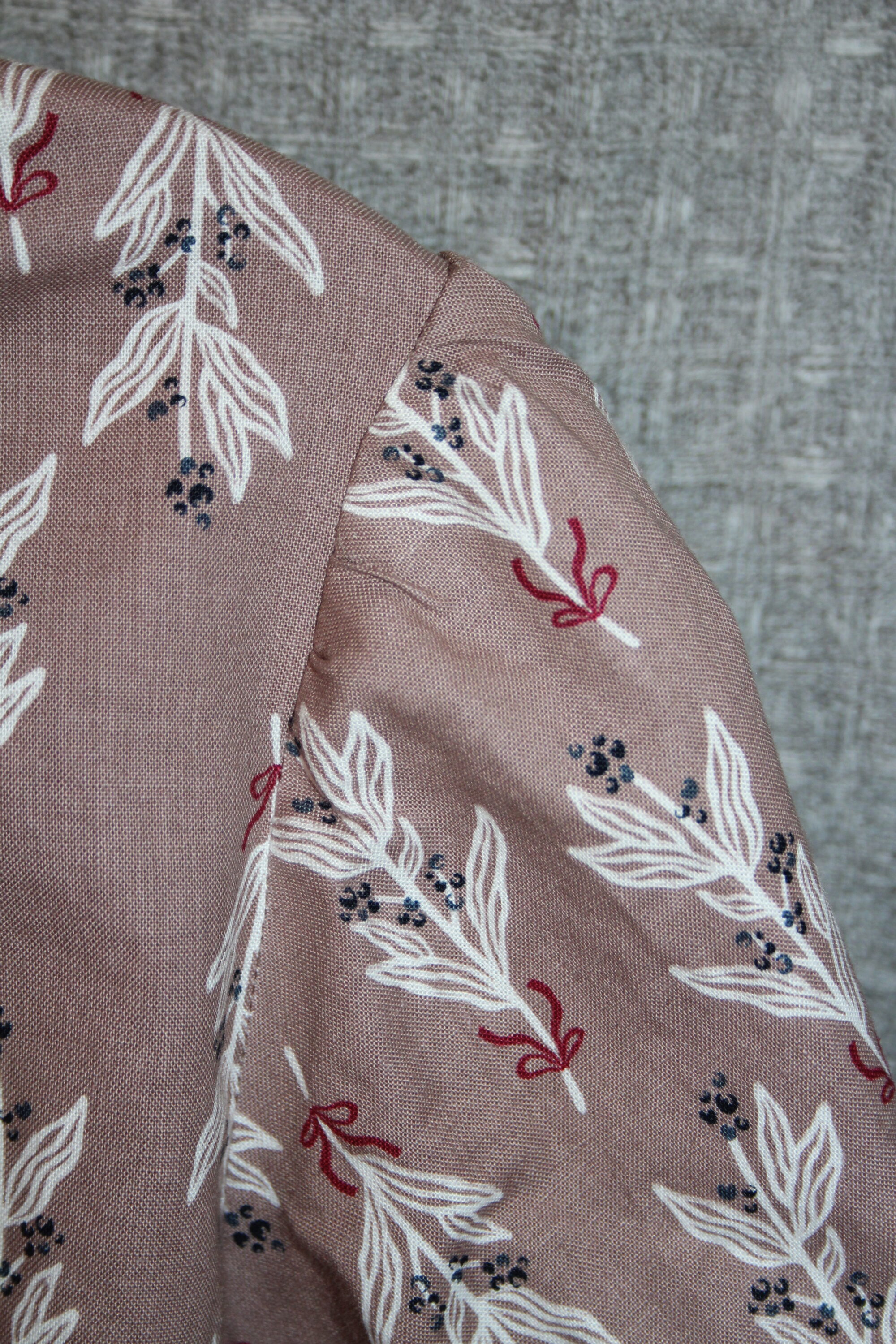
12+.2 (12 plus size reversible apron with handmade embroidered real silk flowers on both pockets. Light gingham blue or red small floral. Light blue matching bias tape. Tapered neck with square back neck, this is not considered a “scoop neck”, but is the woman’s “square neck” silhouette version which is longer and the body is more square than the little girl or scoop neck versions. Multiple buttonholes are provided for adjustable fit on the side tabs.
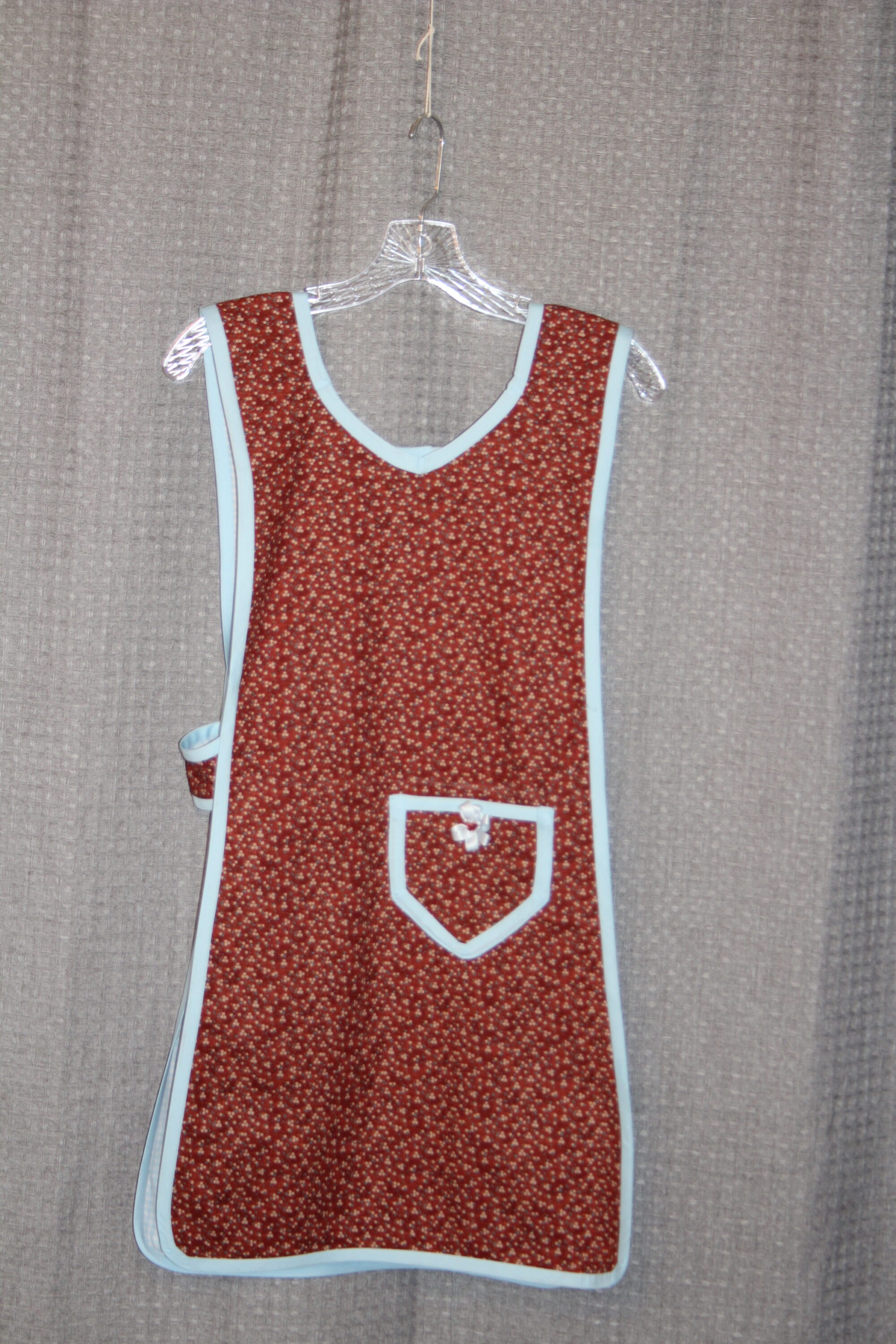
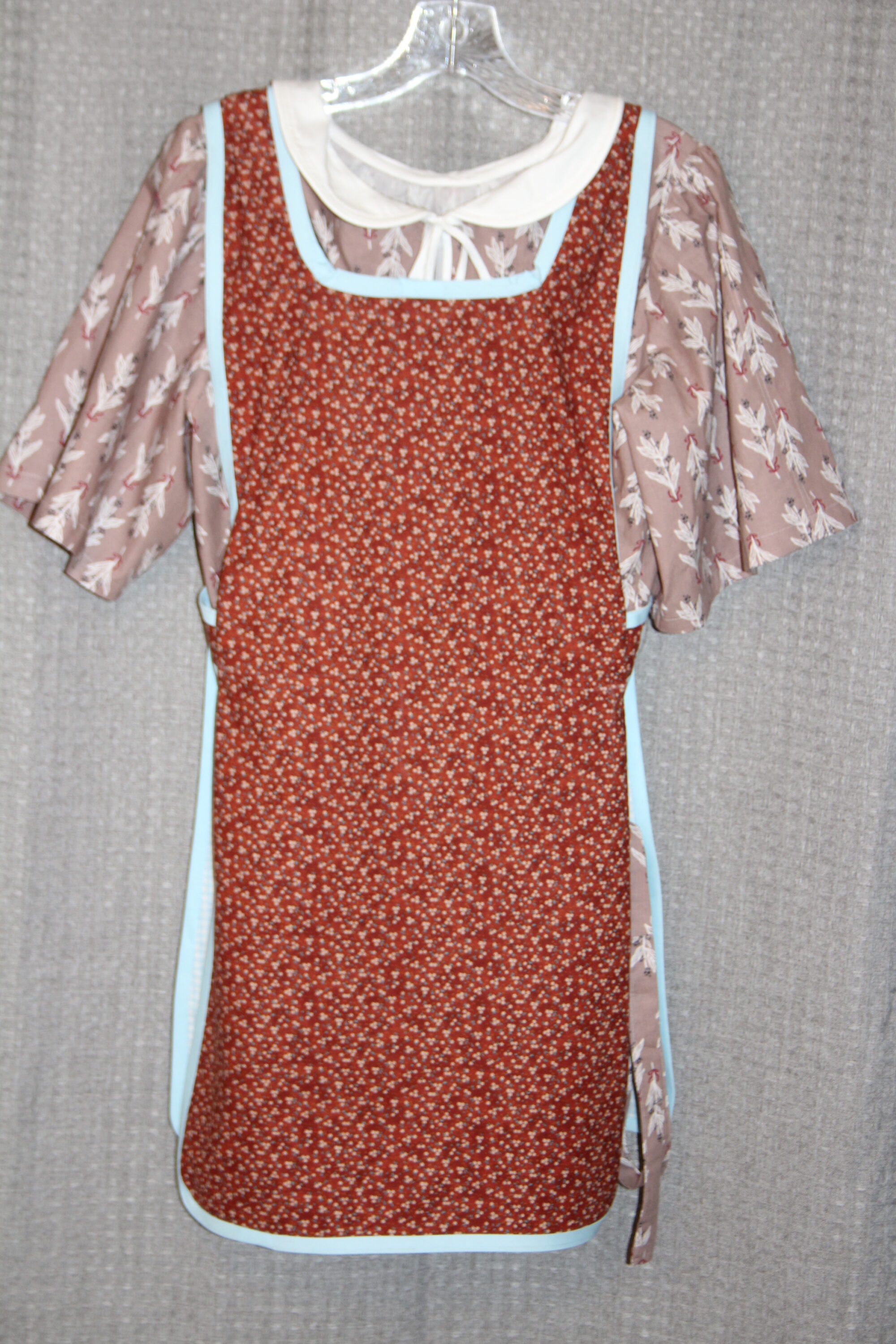
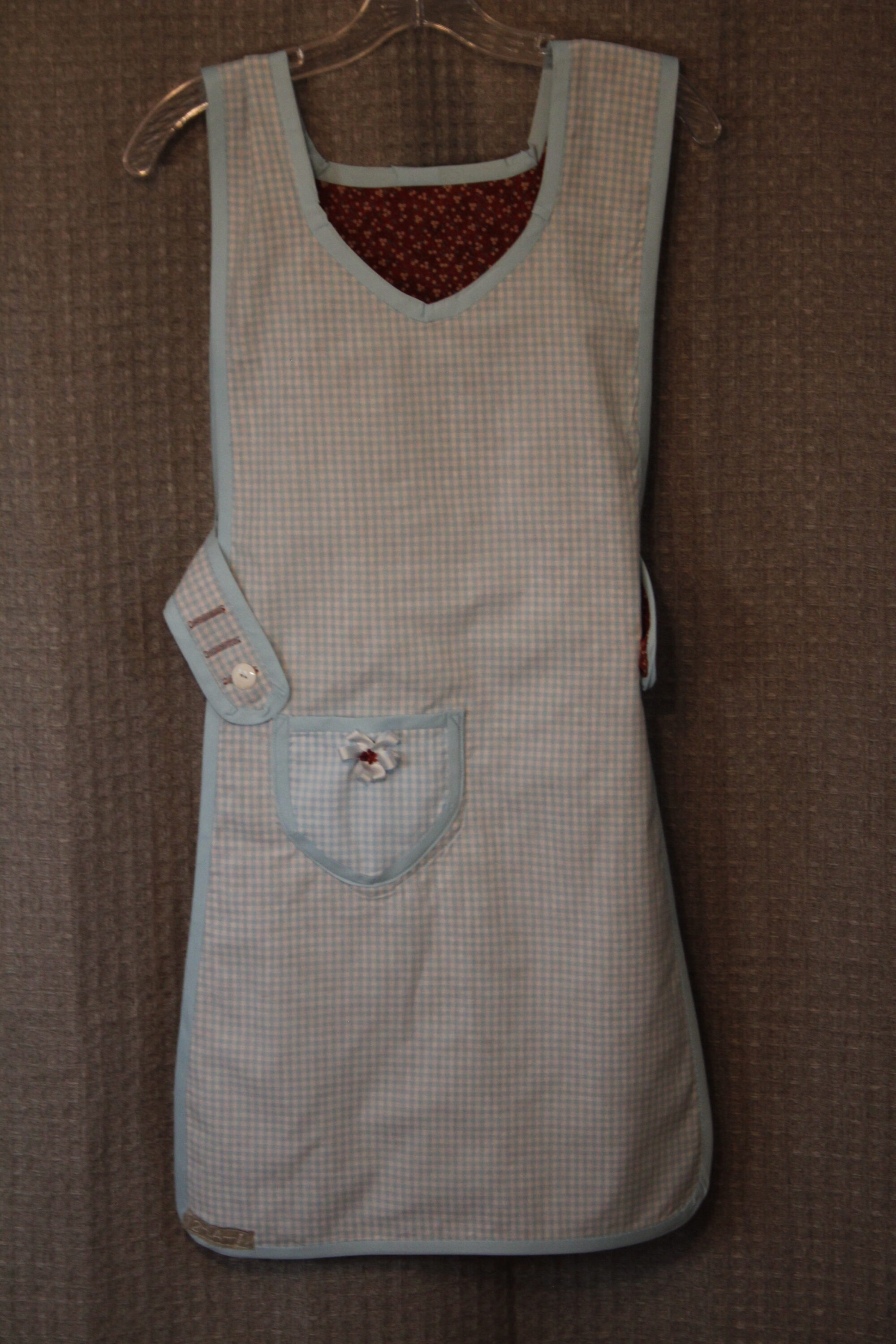
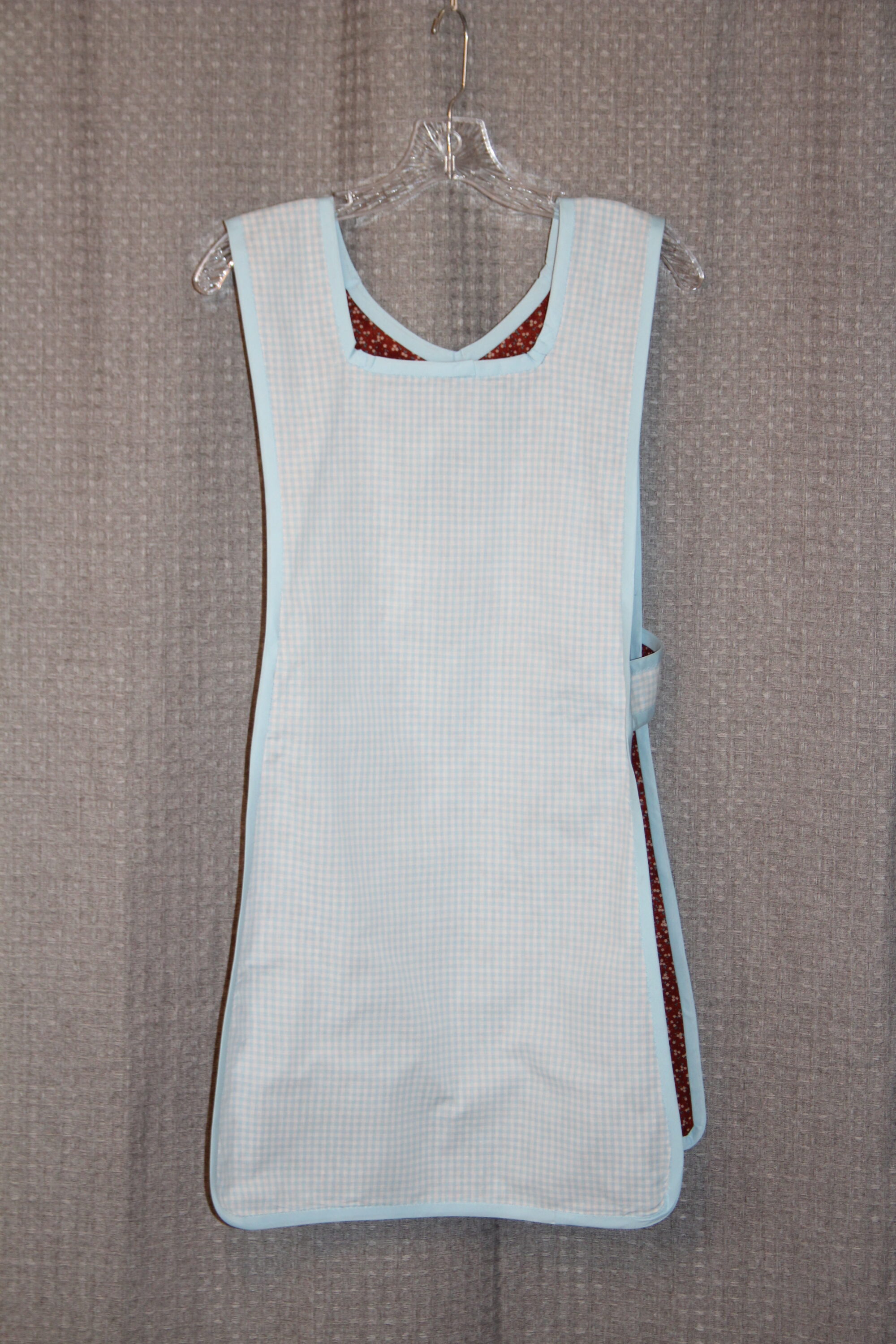
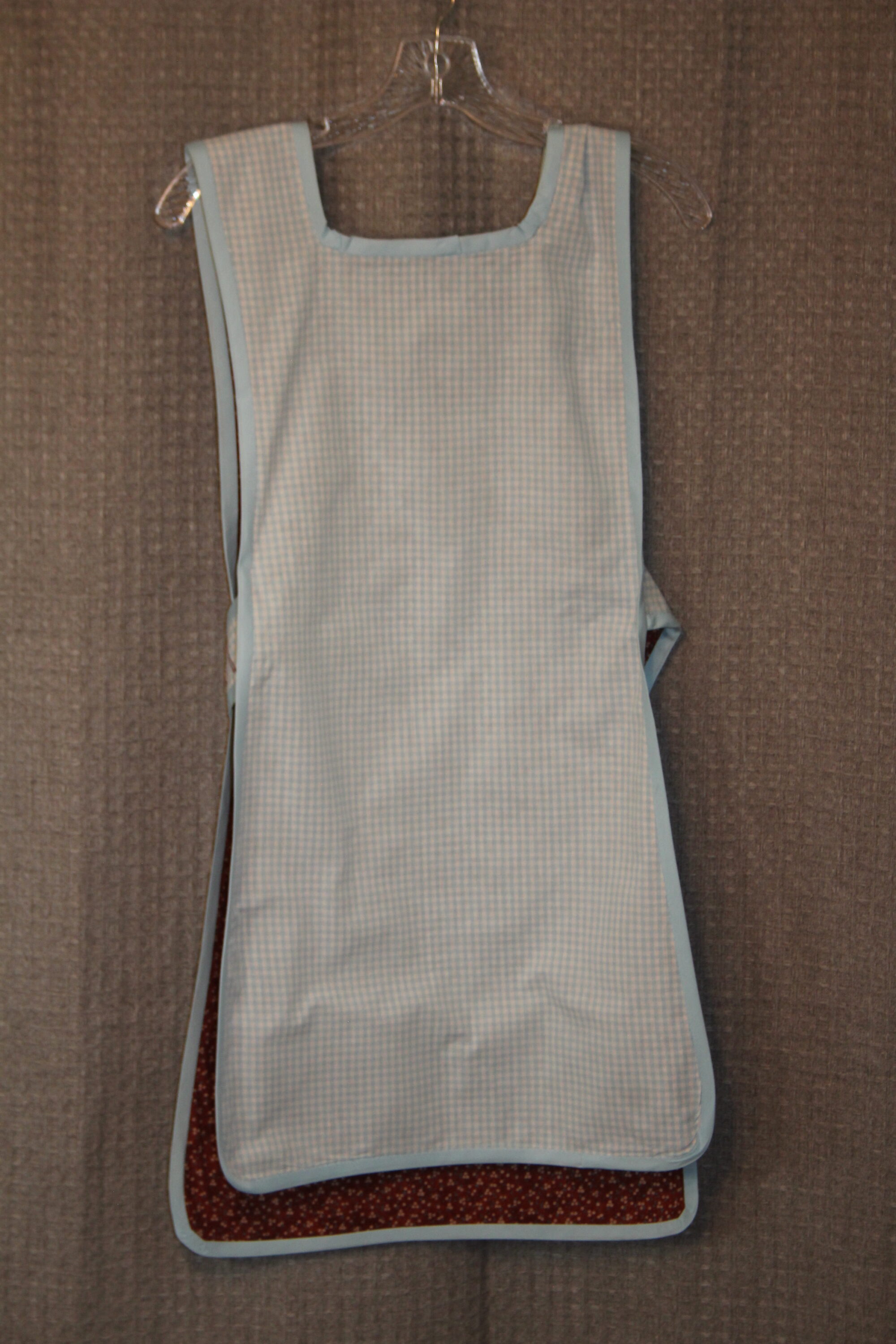
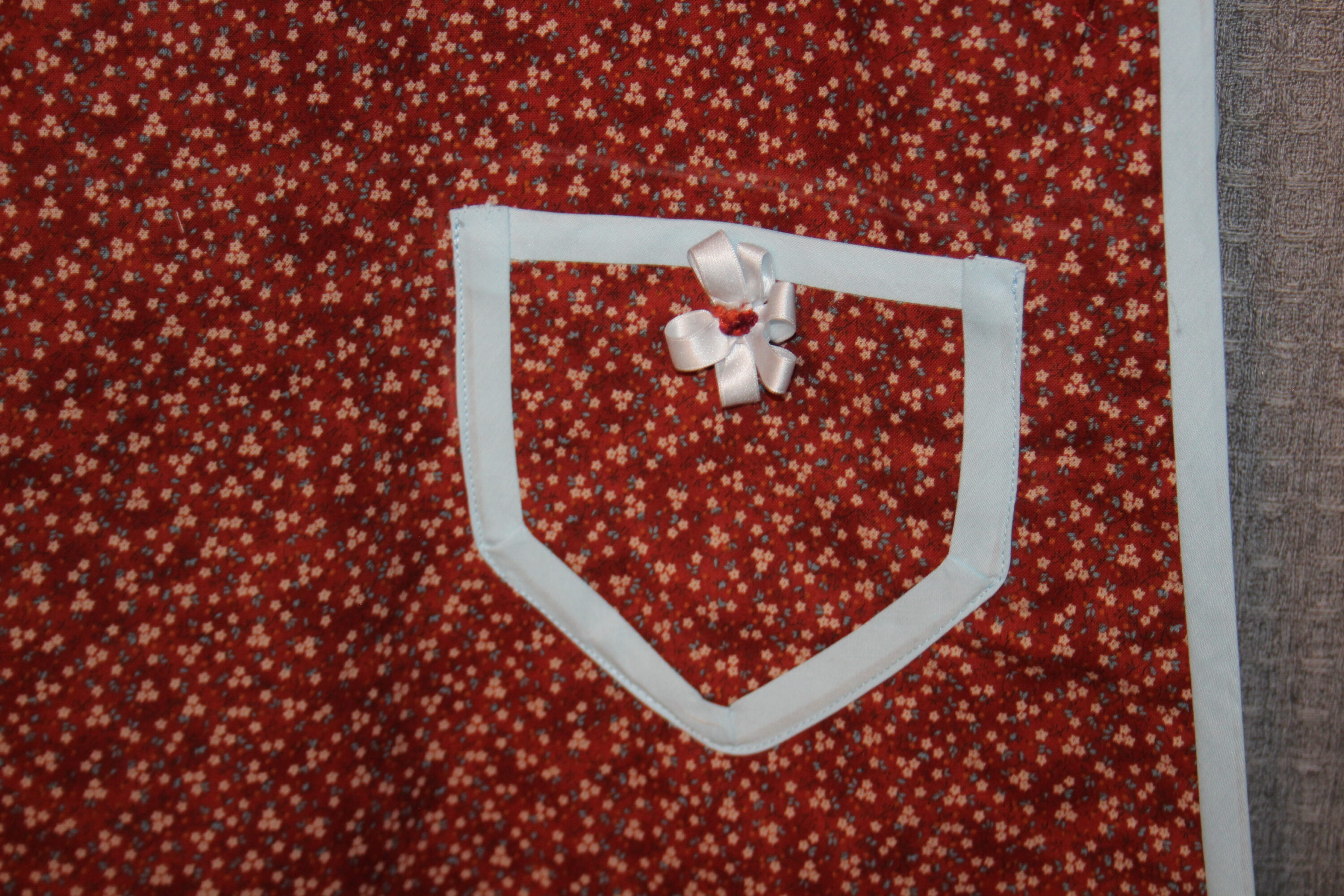
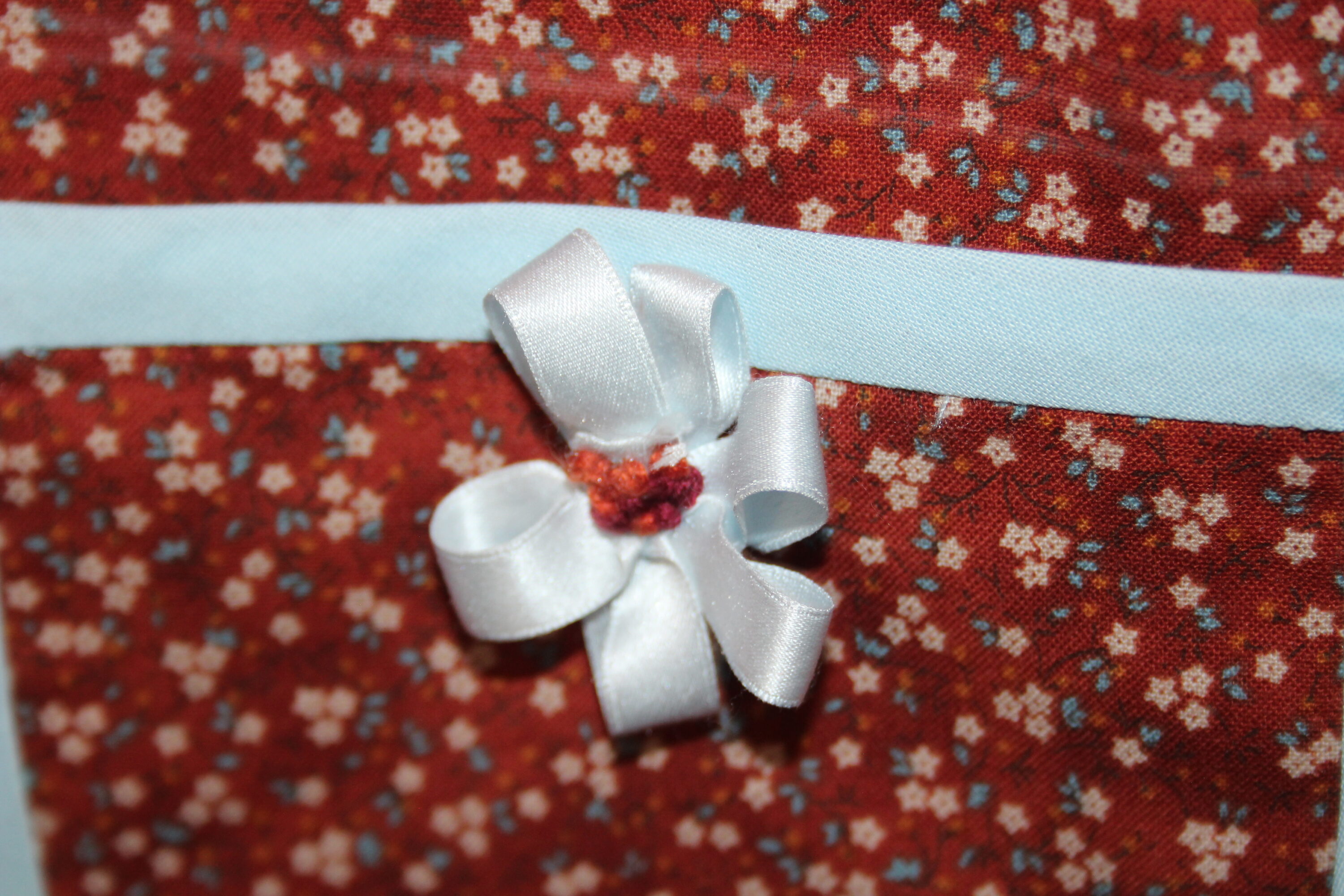
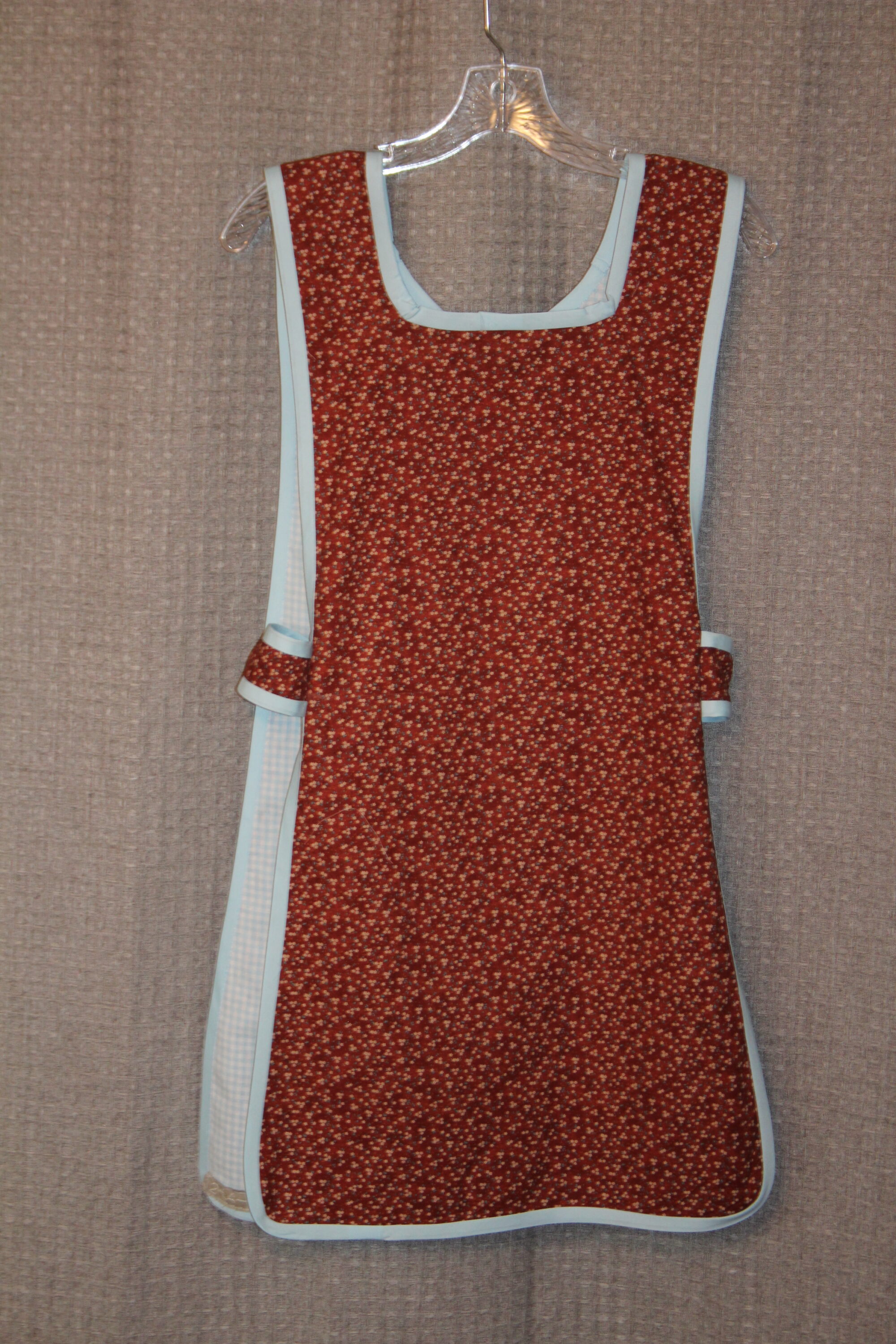

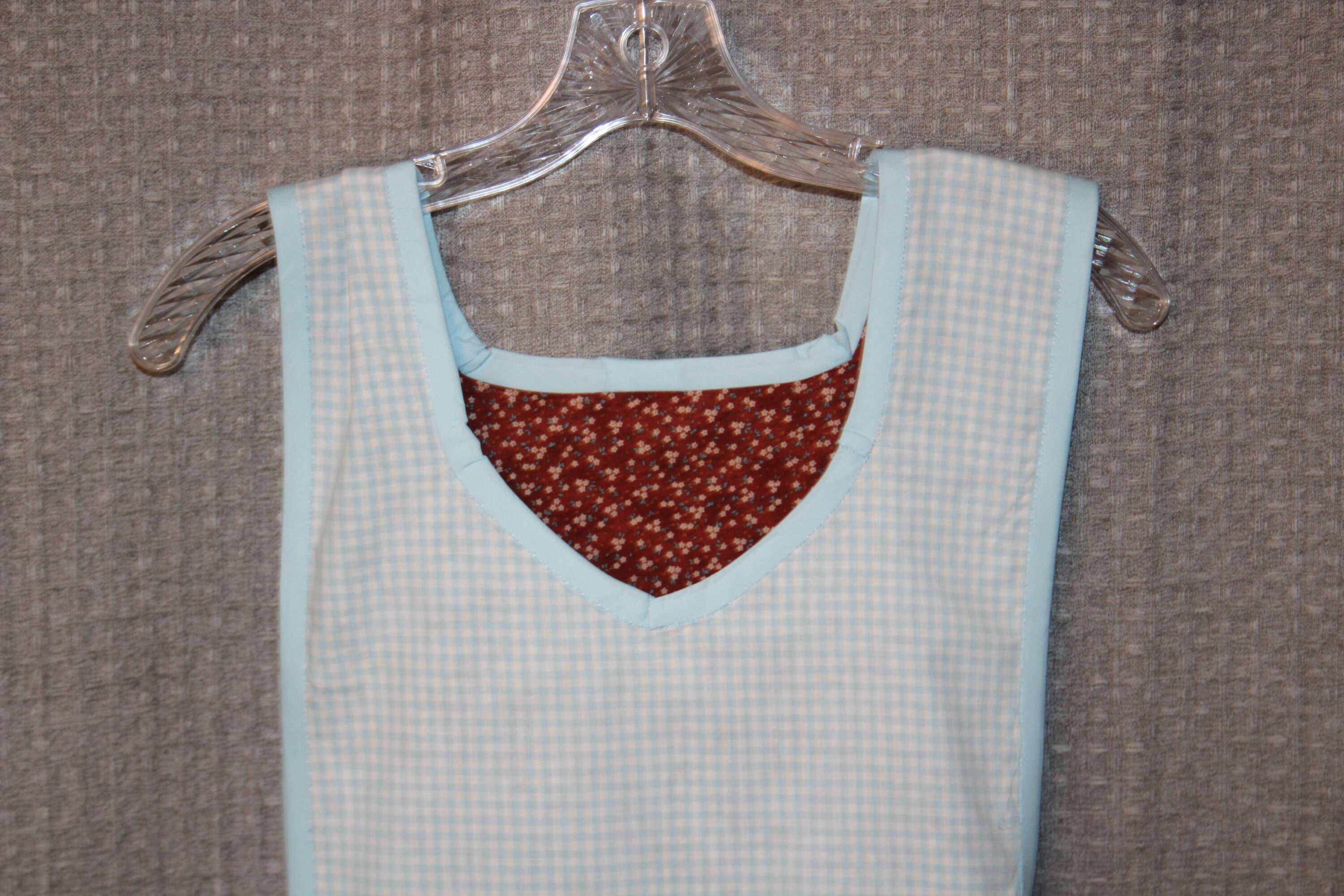
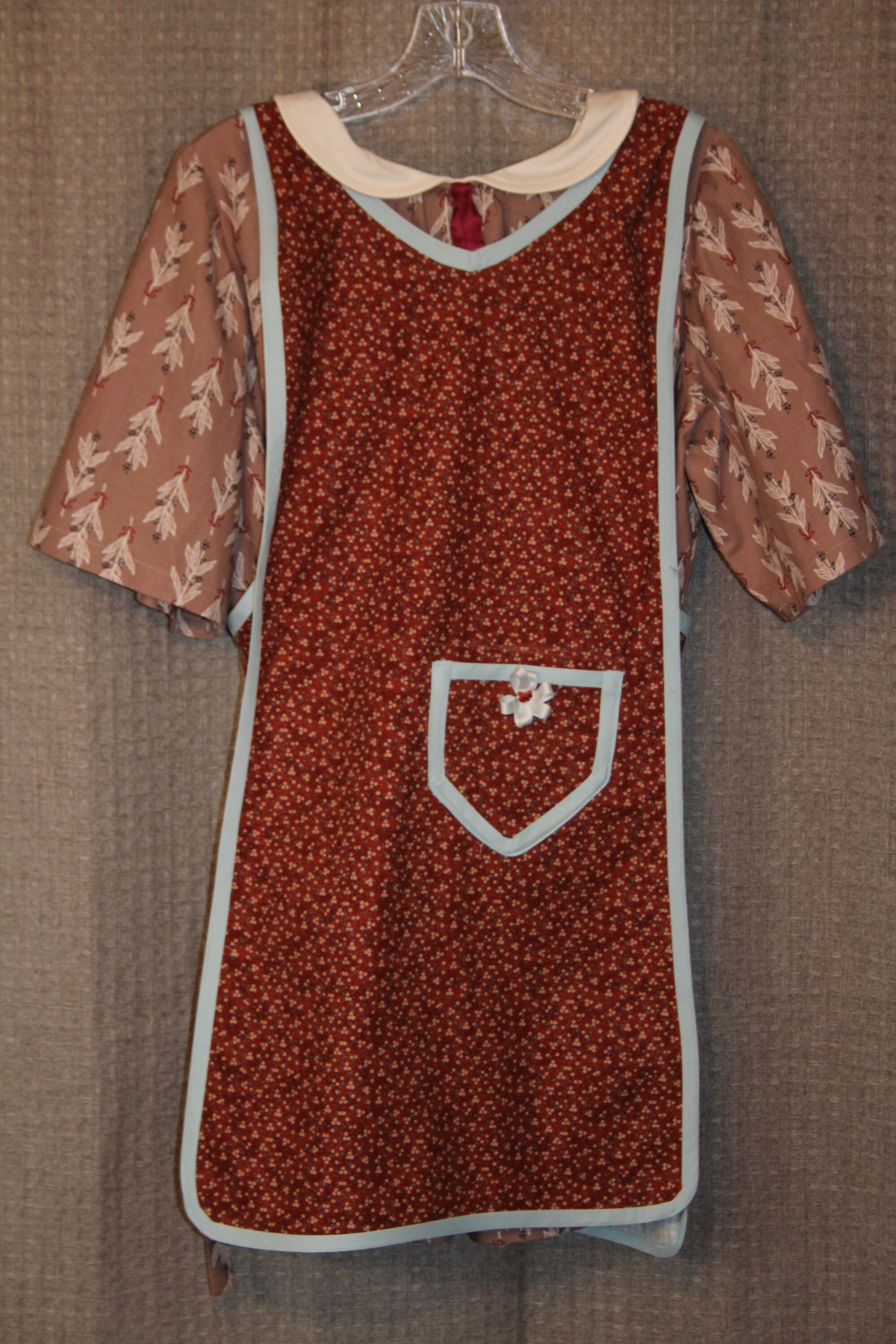
8A.2 (Size 8 apron dark gray and teal floral reproduction fabric, front only “mamma and me” curvy design with back belt and mother of pearl button tabs. Buttons at neckline for adjustability. This is designed to coordinate with the dark gray gingham dress that has bloomers for a complete displayable ensemble as an alternate to the girl’s main ensemble that will be displayed. One shows “little girl complete” and the other a “big girls’ fashionable ensemble”. Both will wear in addition to their outer garments, an undergarment called a “combination” which is panties and top in one).
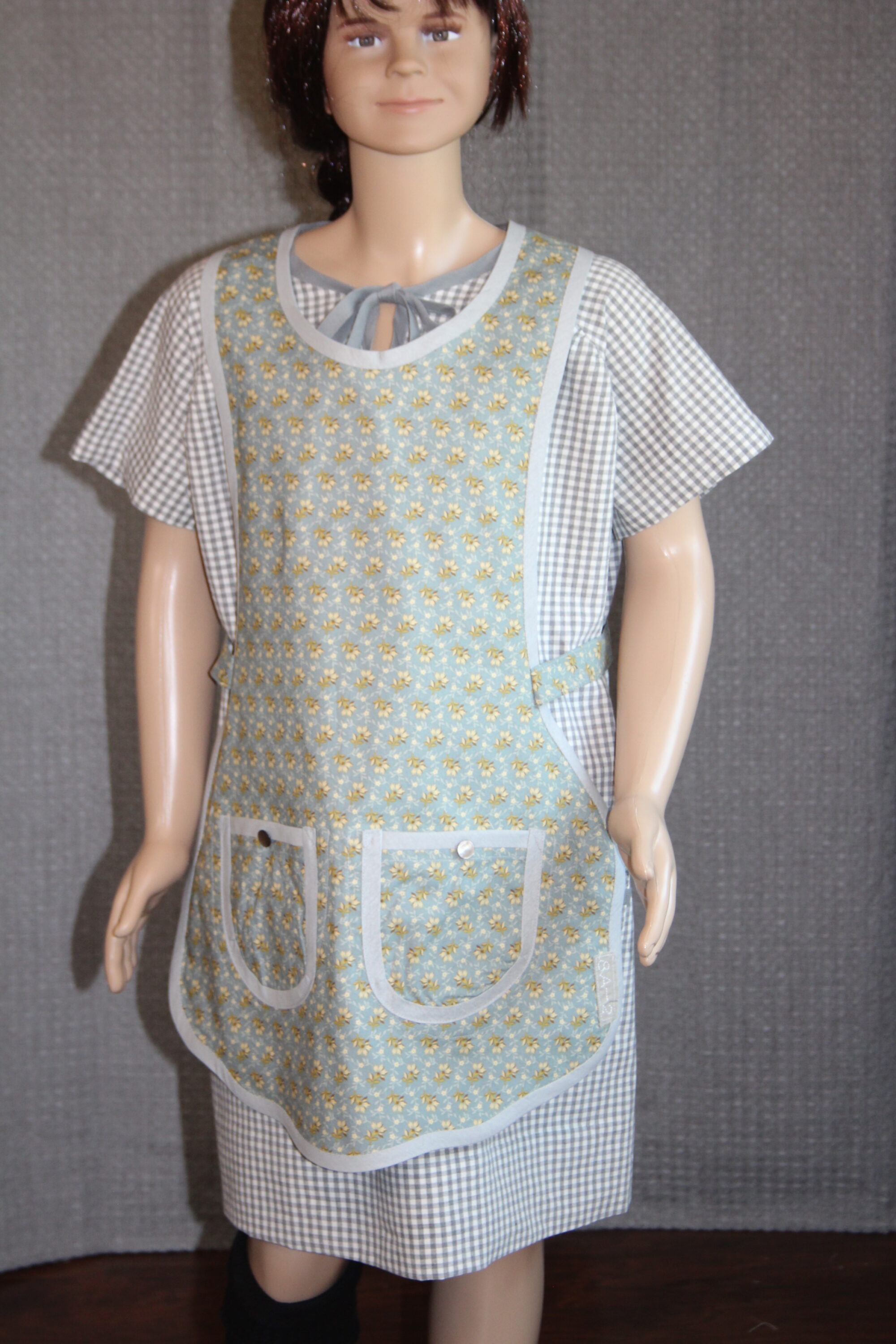
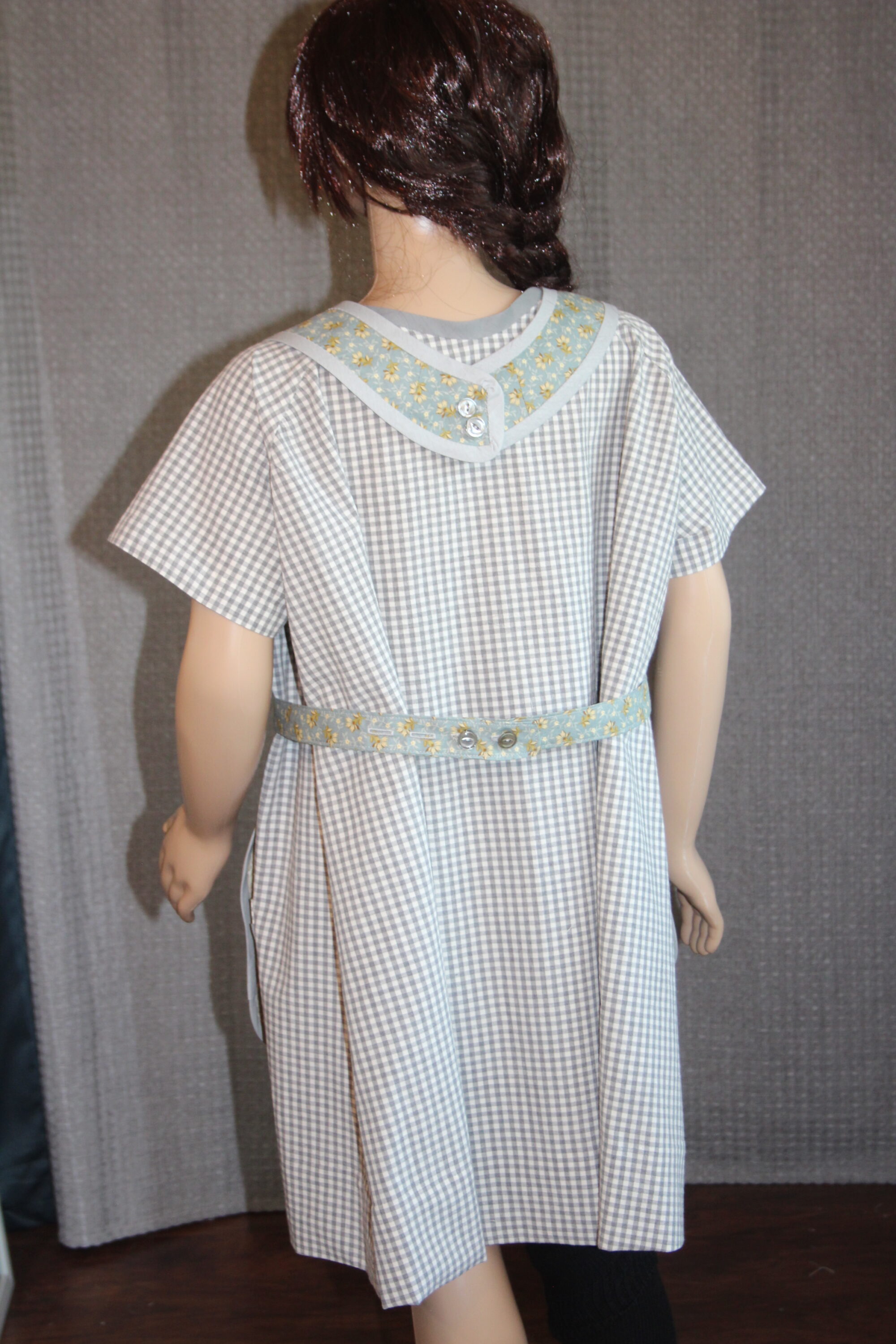
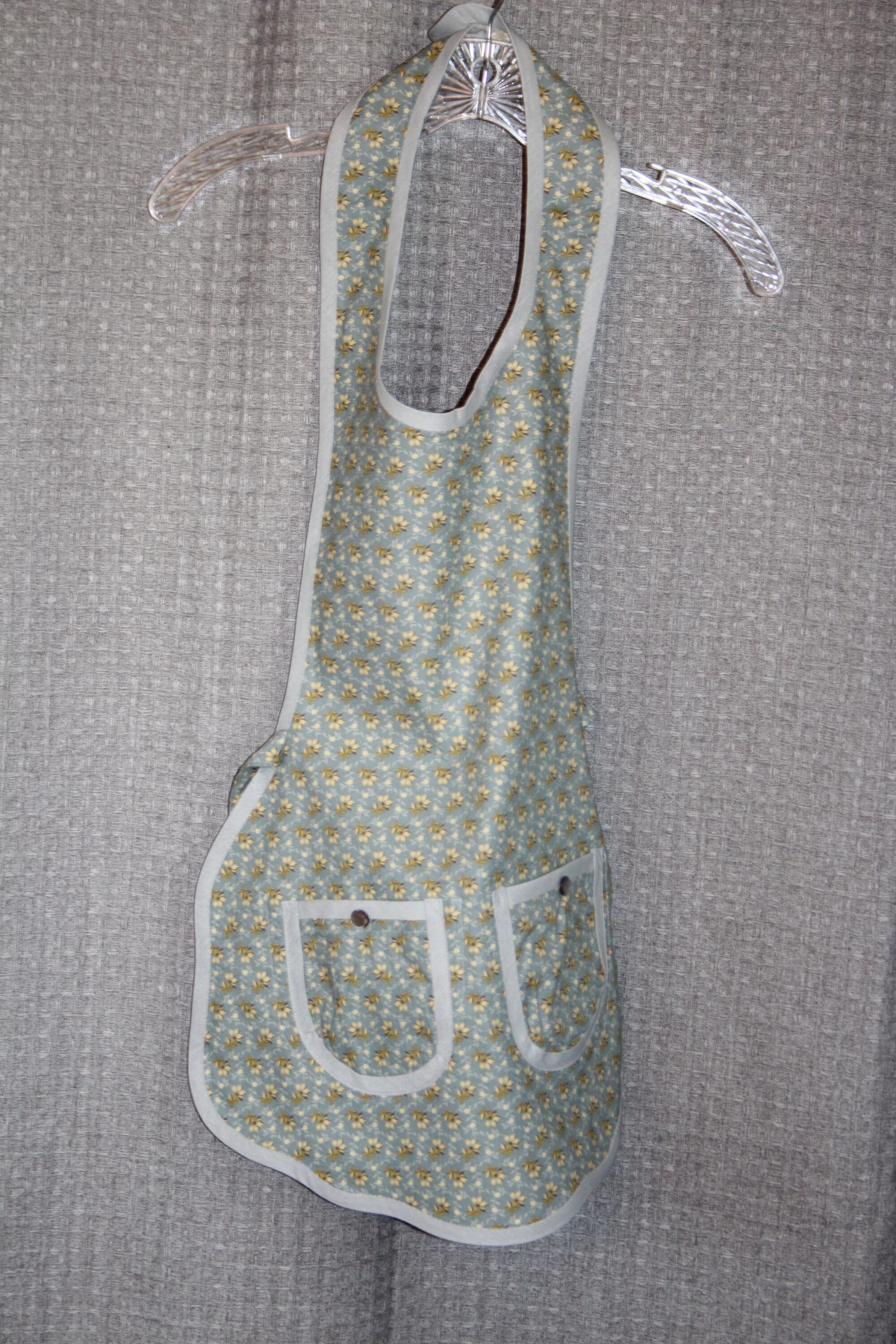
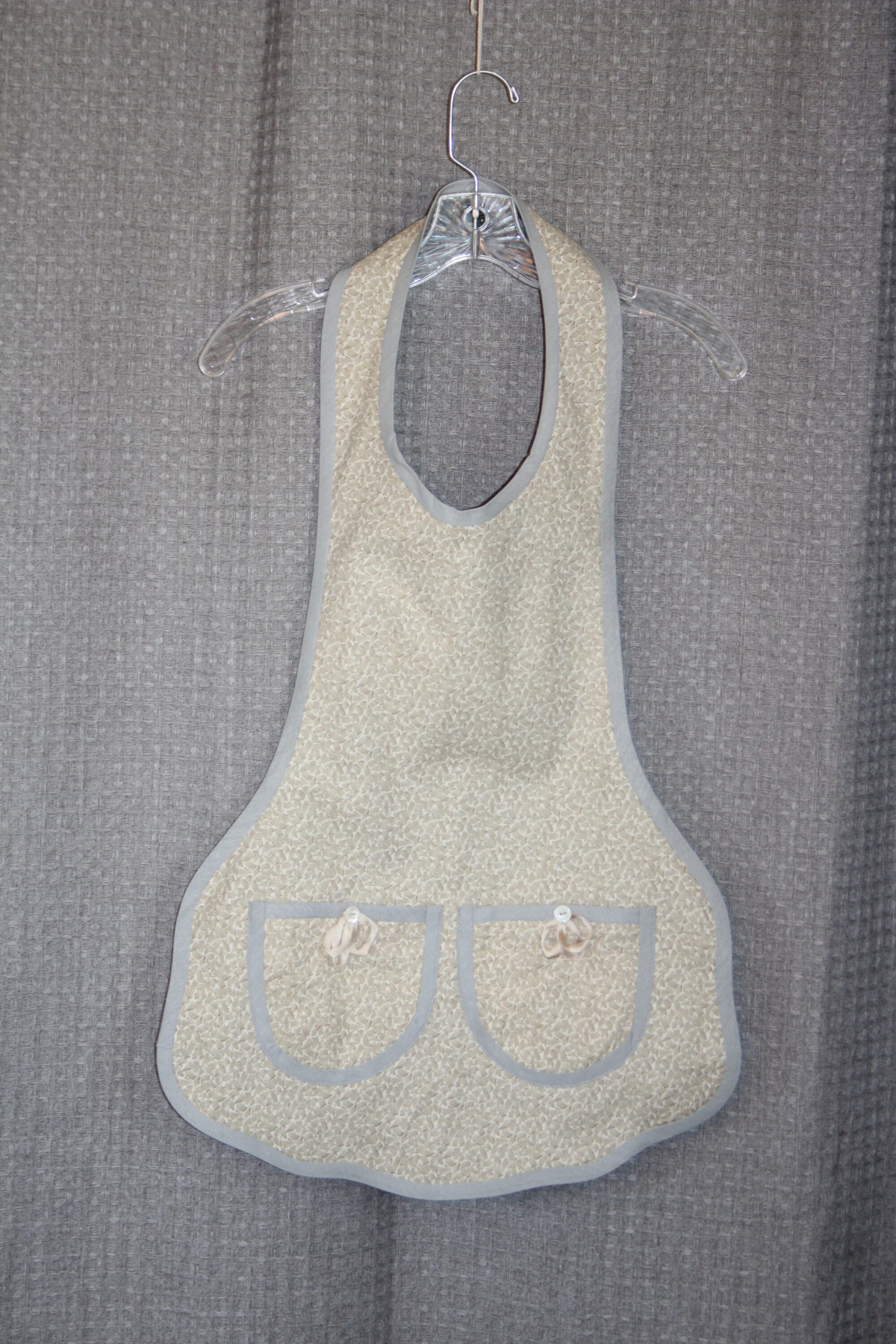
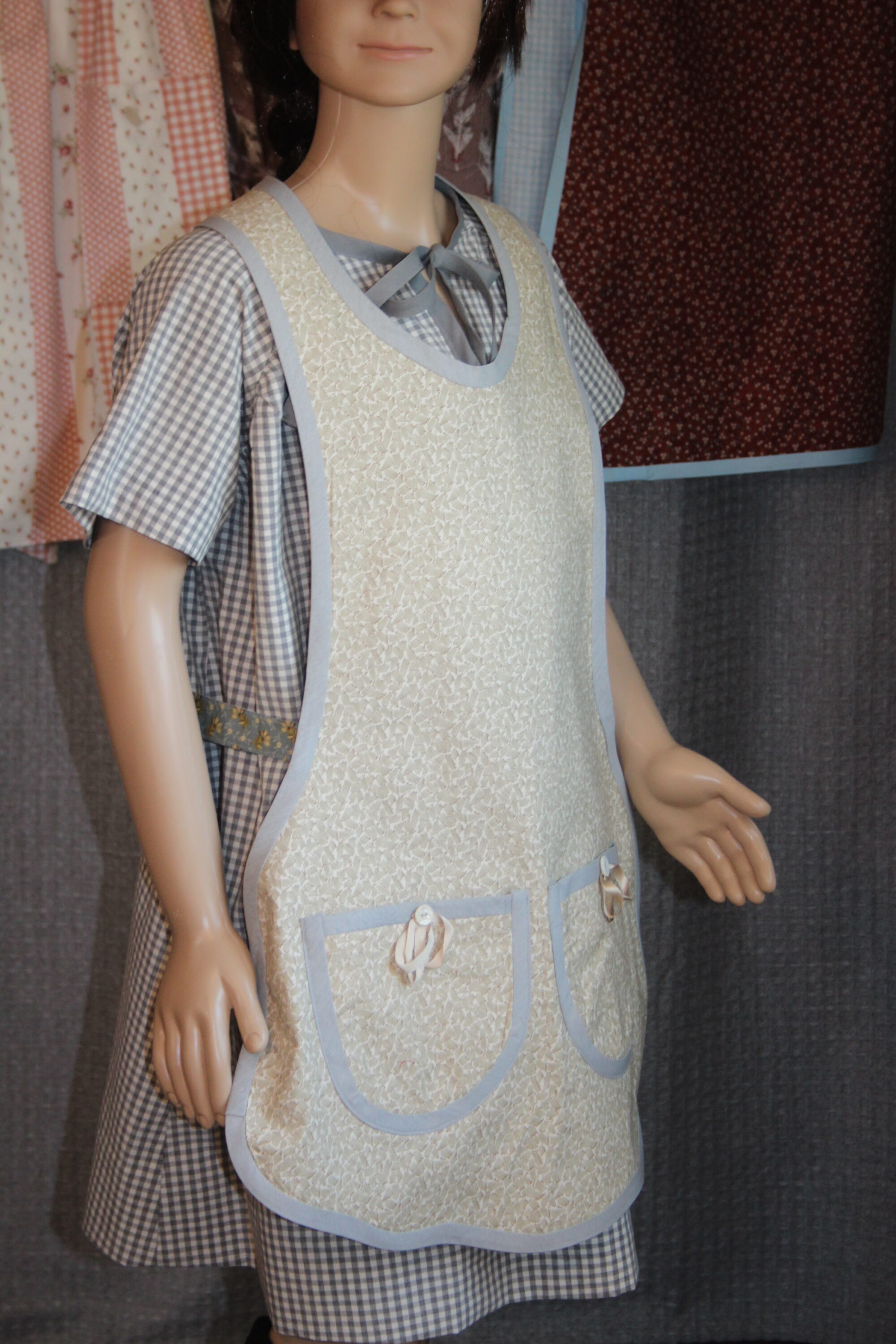
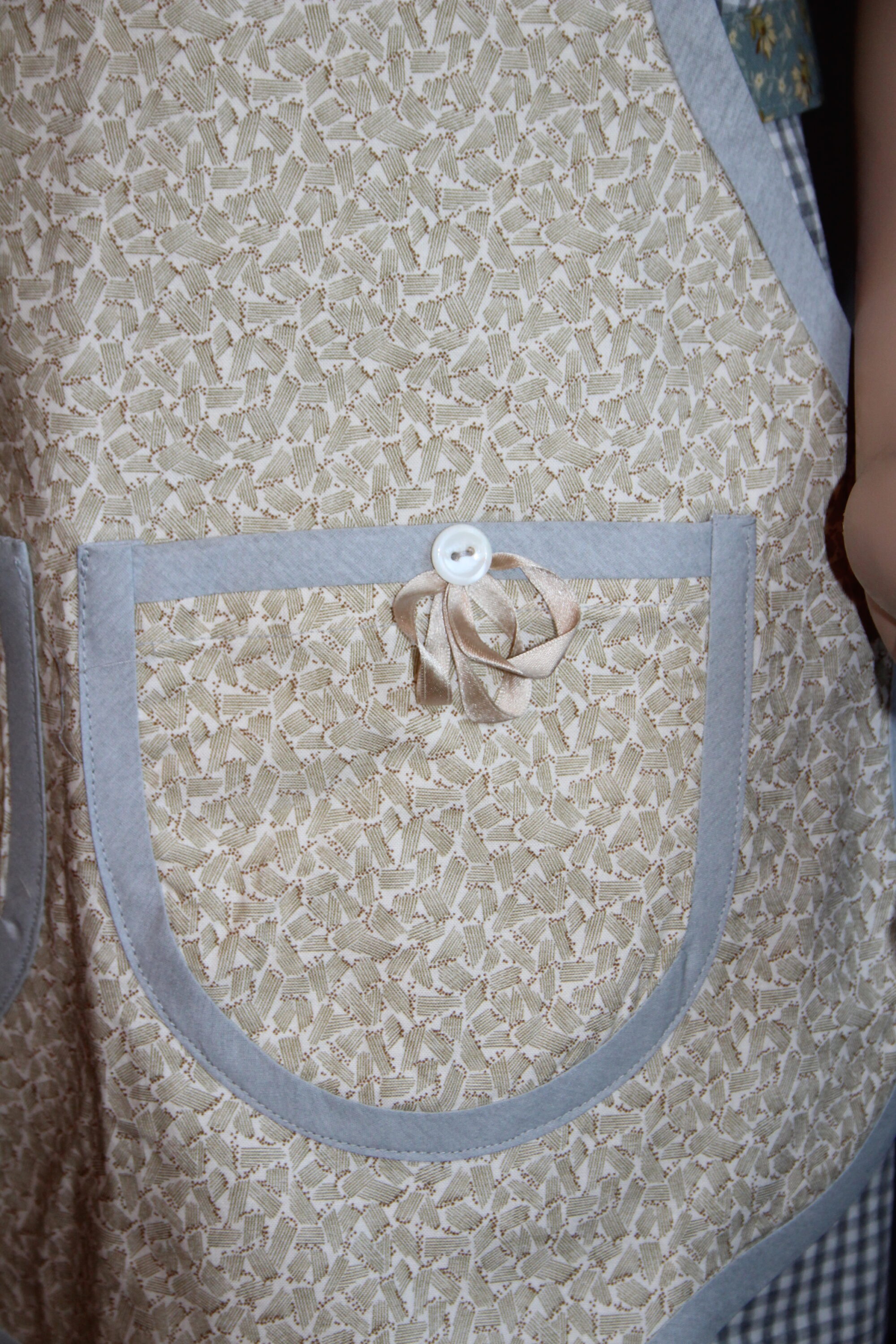
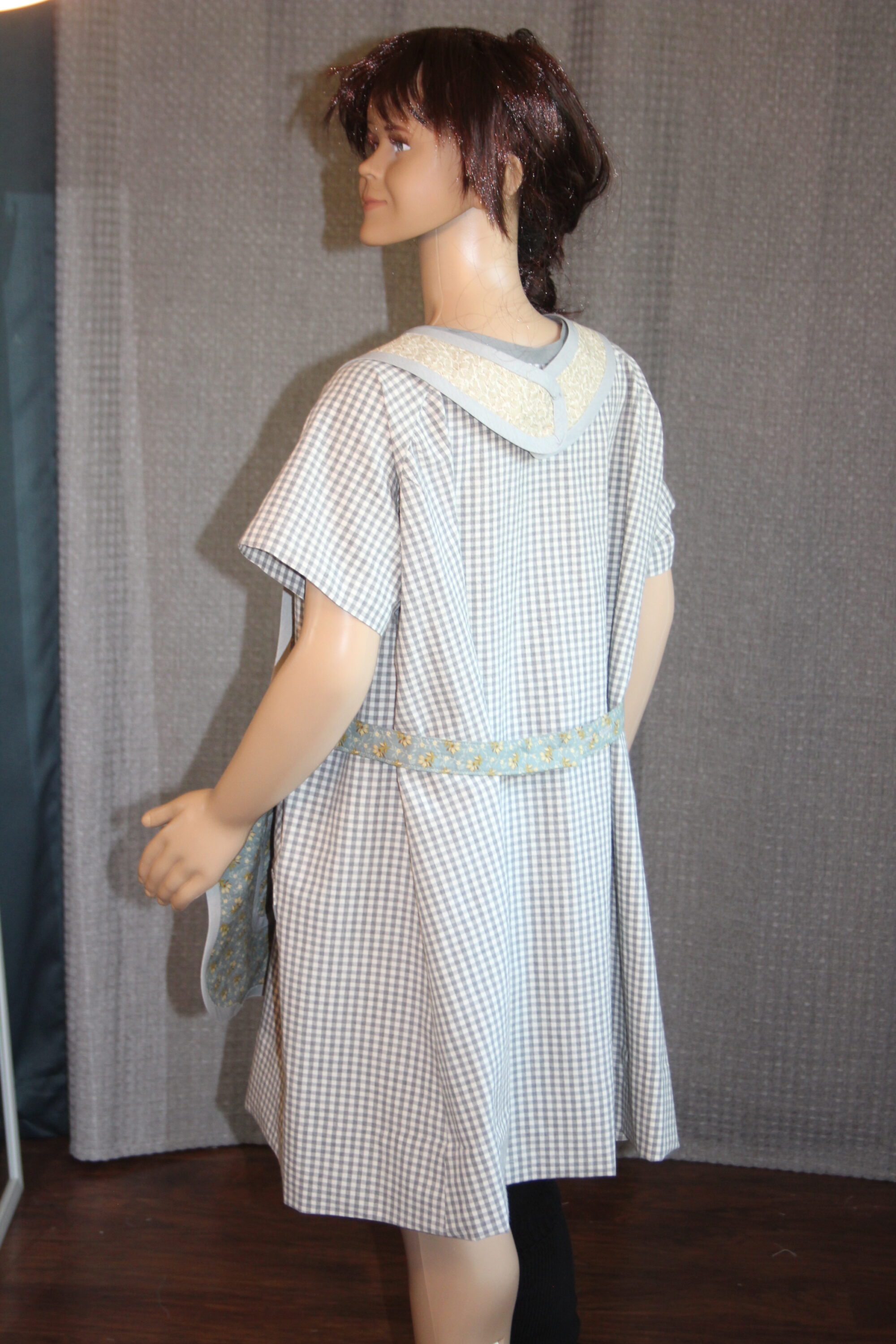
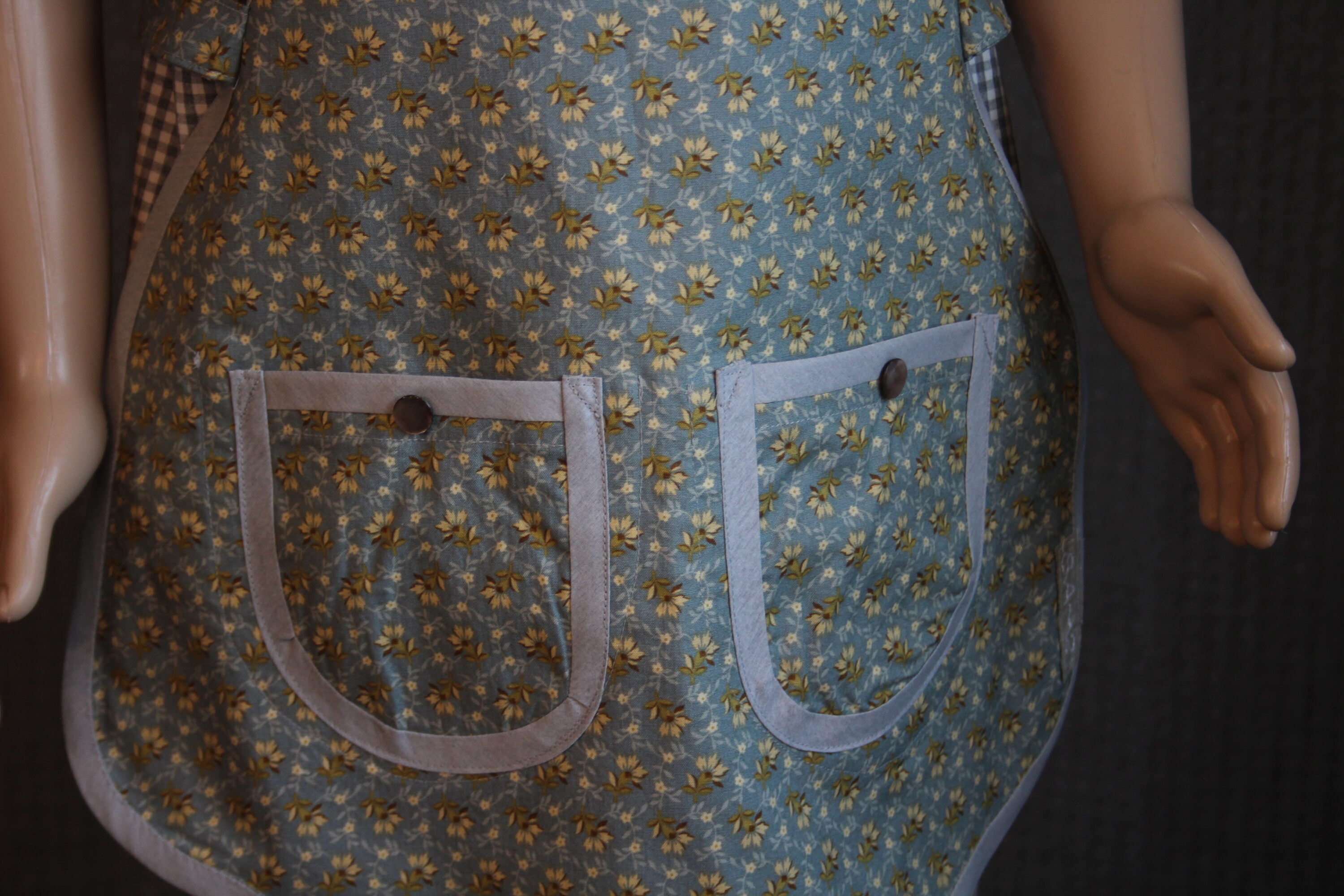
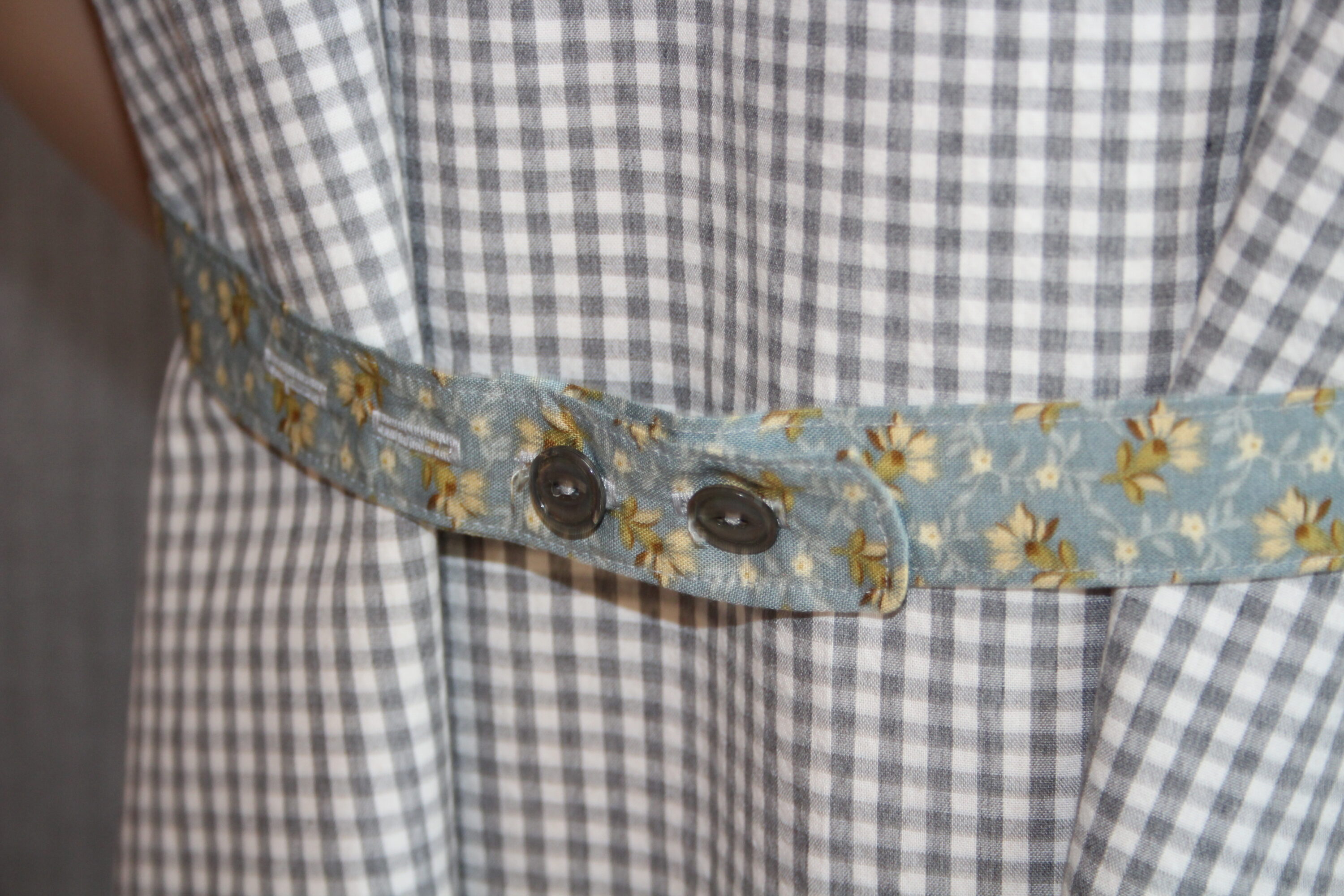
10+.4 (Size 10 plus or wide, beige checked and striped gingham with self bias tape and dark mother of pearl shank buttons. Has extra wide sleeve holes for larger child and length to cover even though based on the “Dolly Dingle” short smock design with the higher waistband. Buttons are the real closure with hook and eyes at top. Note mannequin is a size 8, so this is a bit large on her).
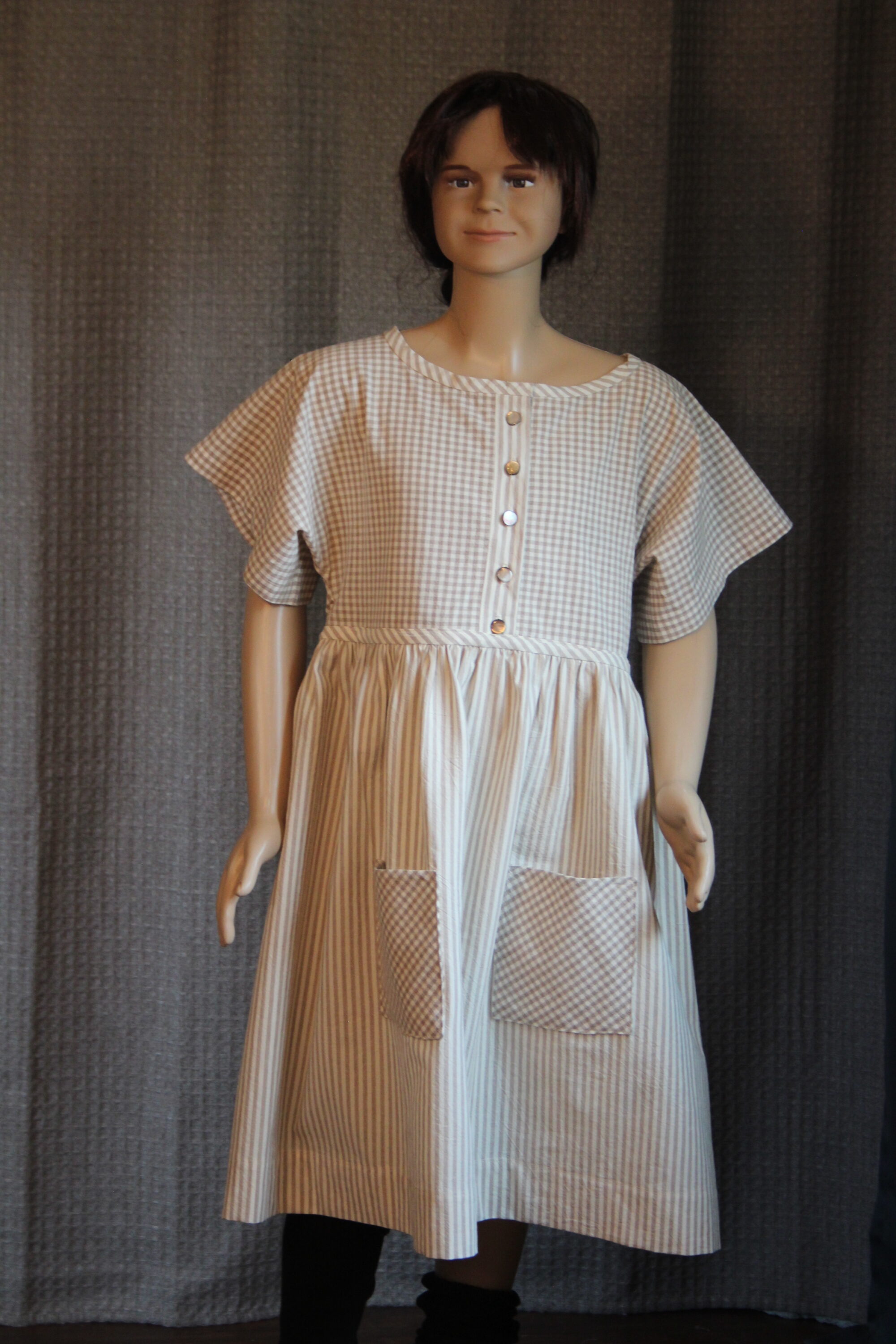
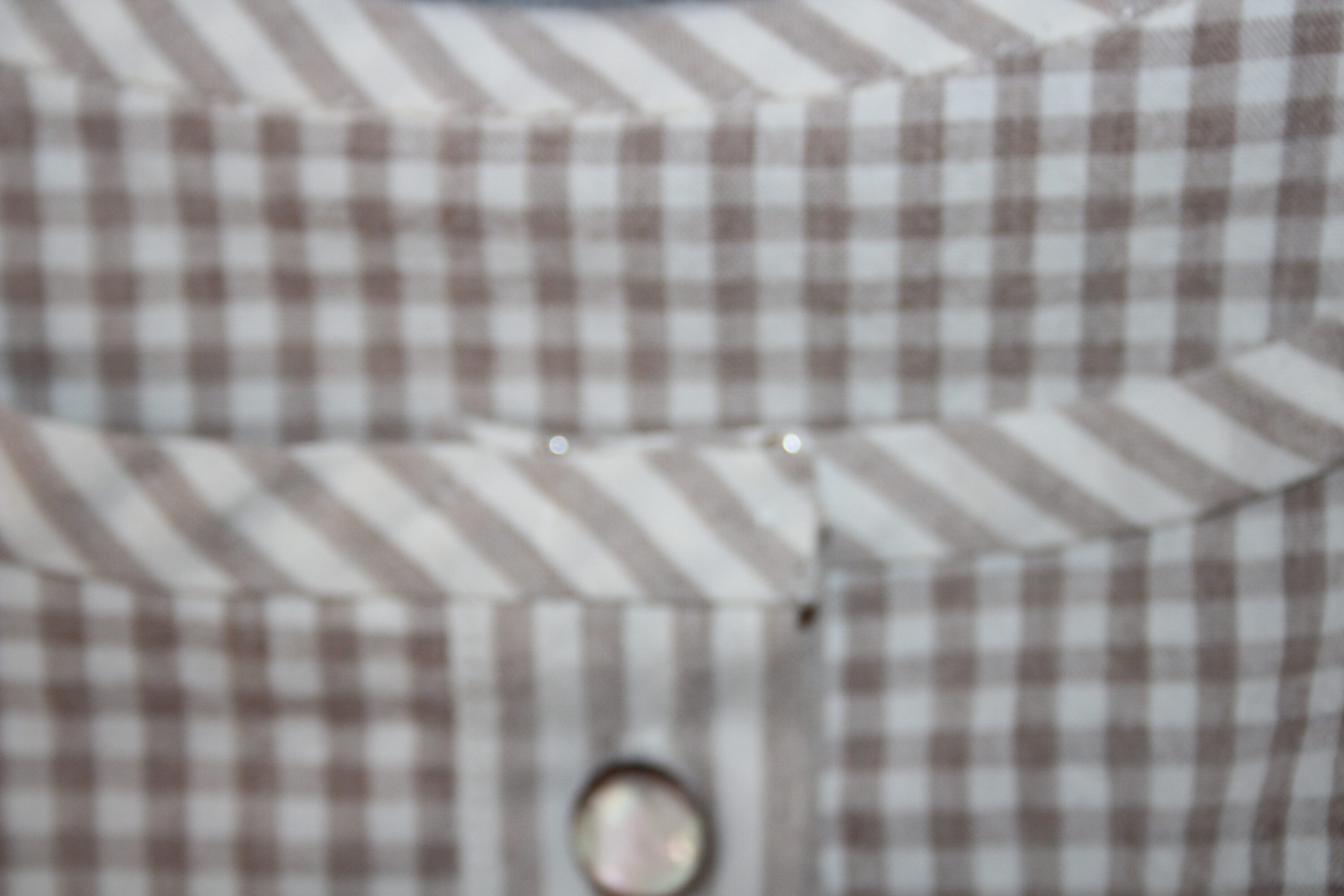
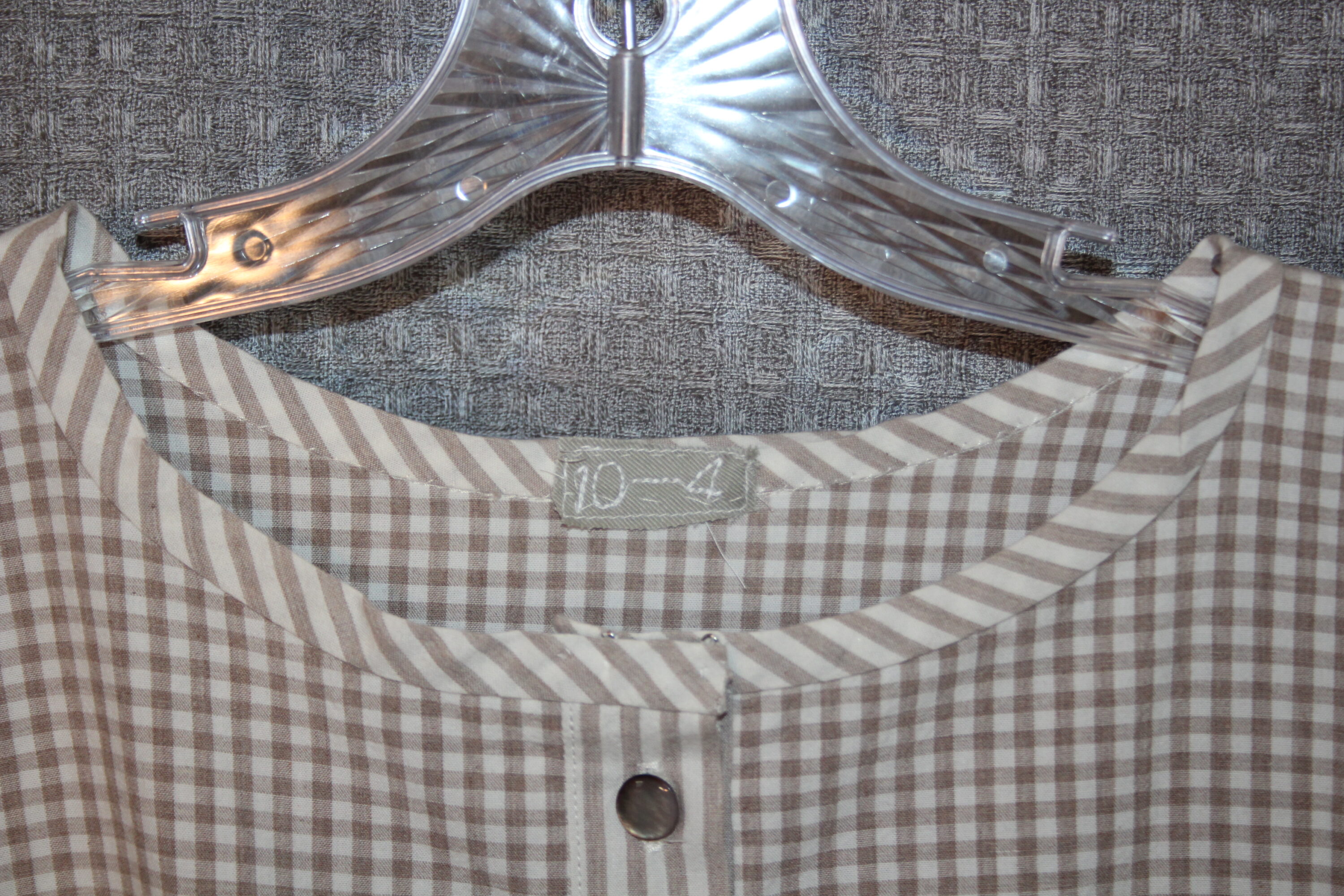
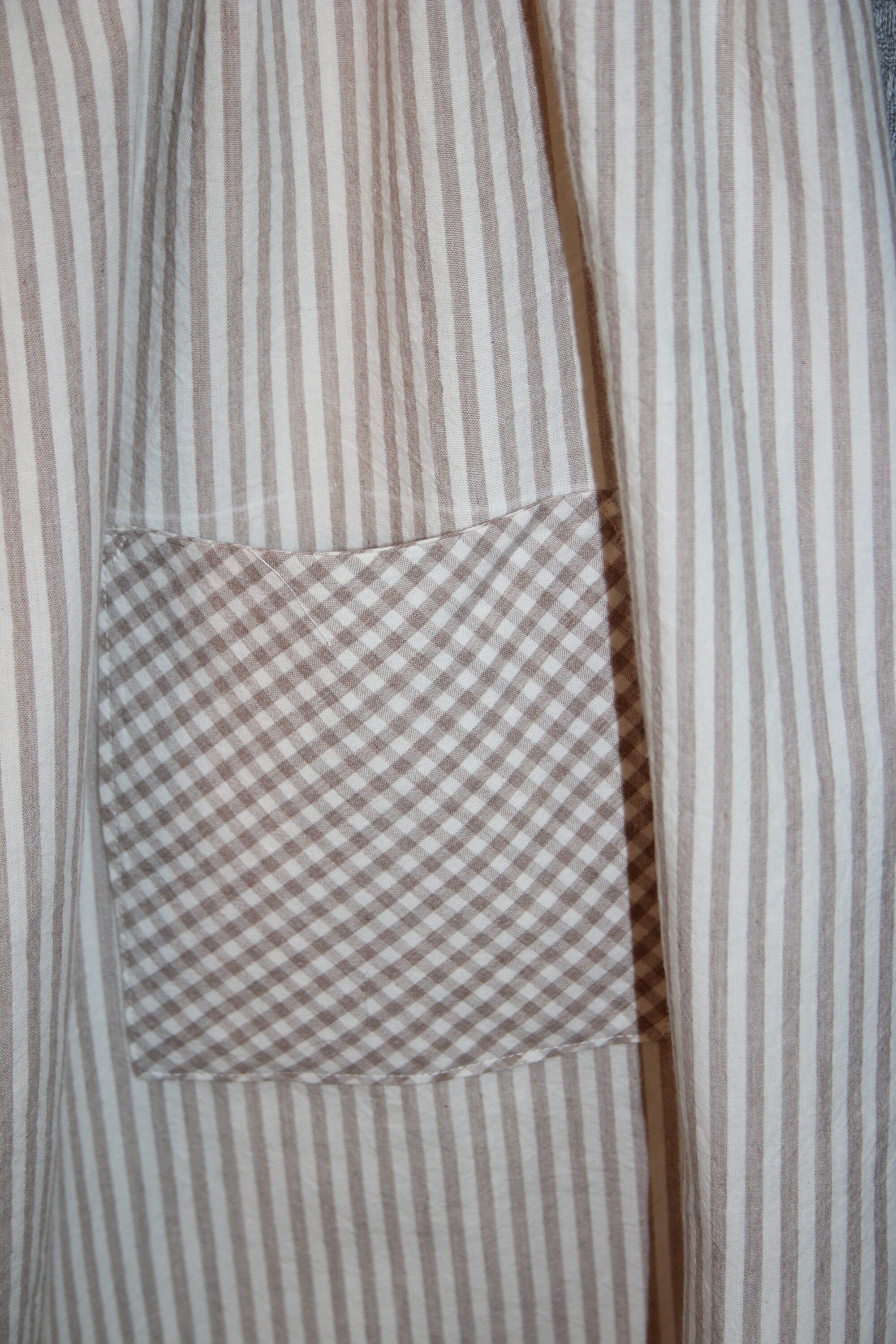
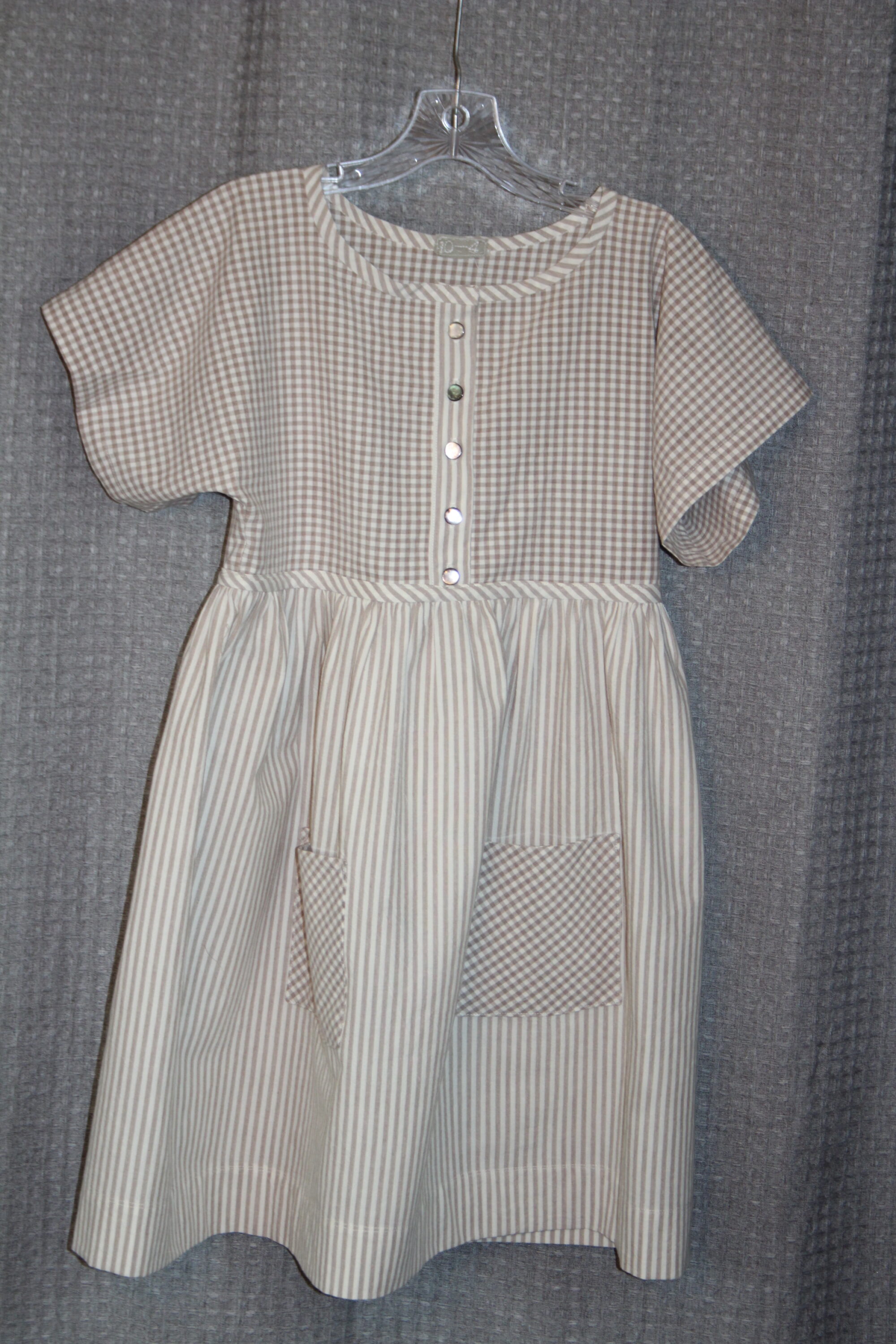
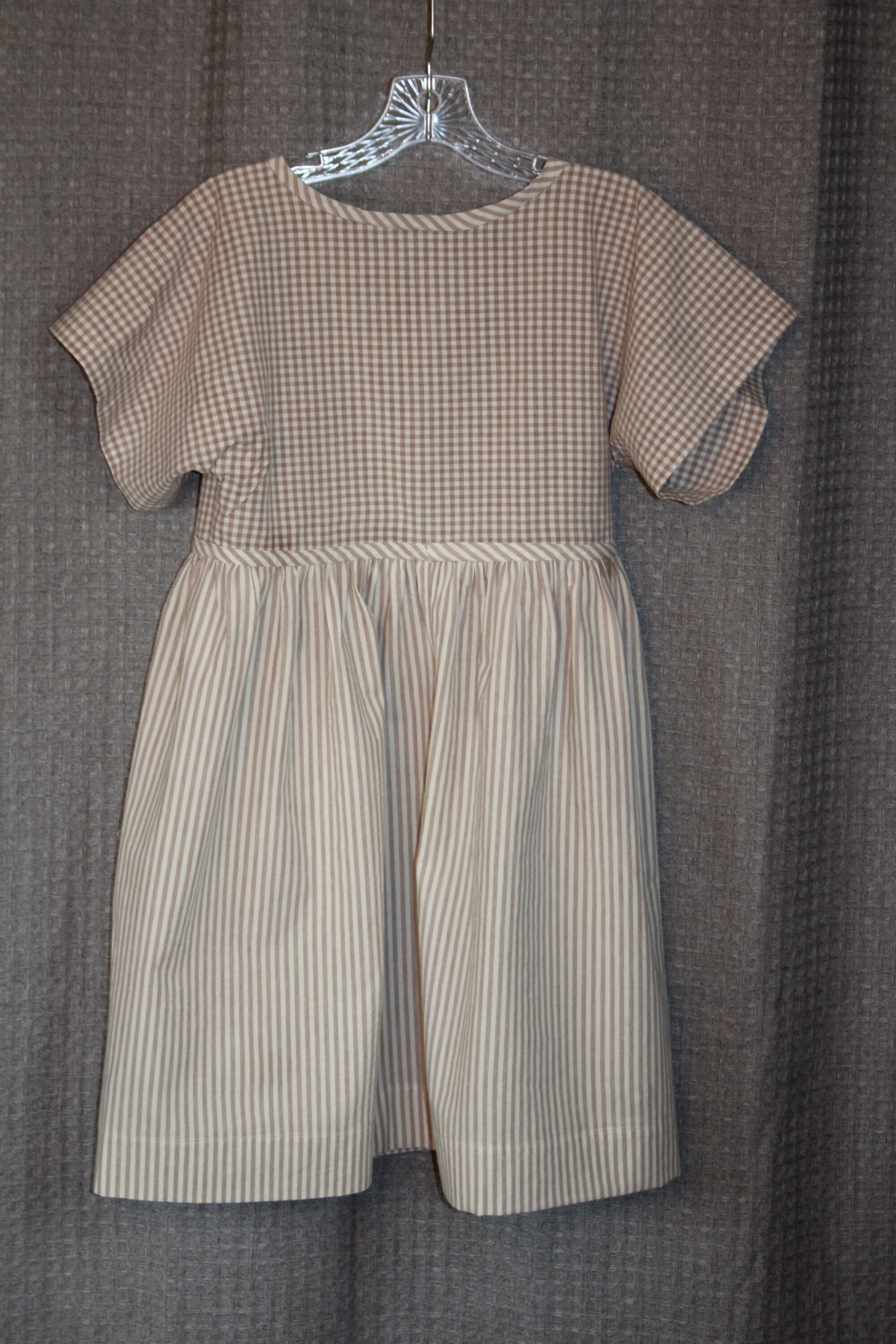
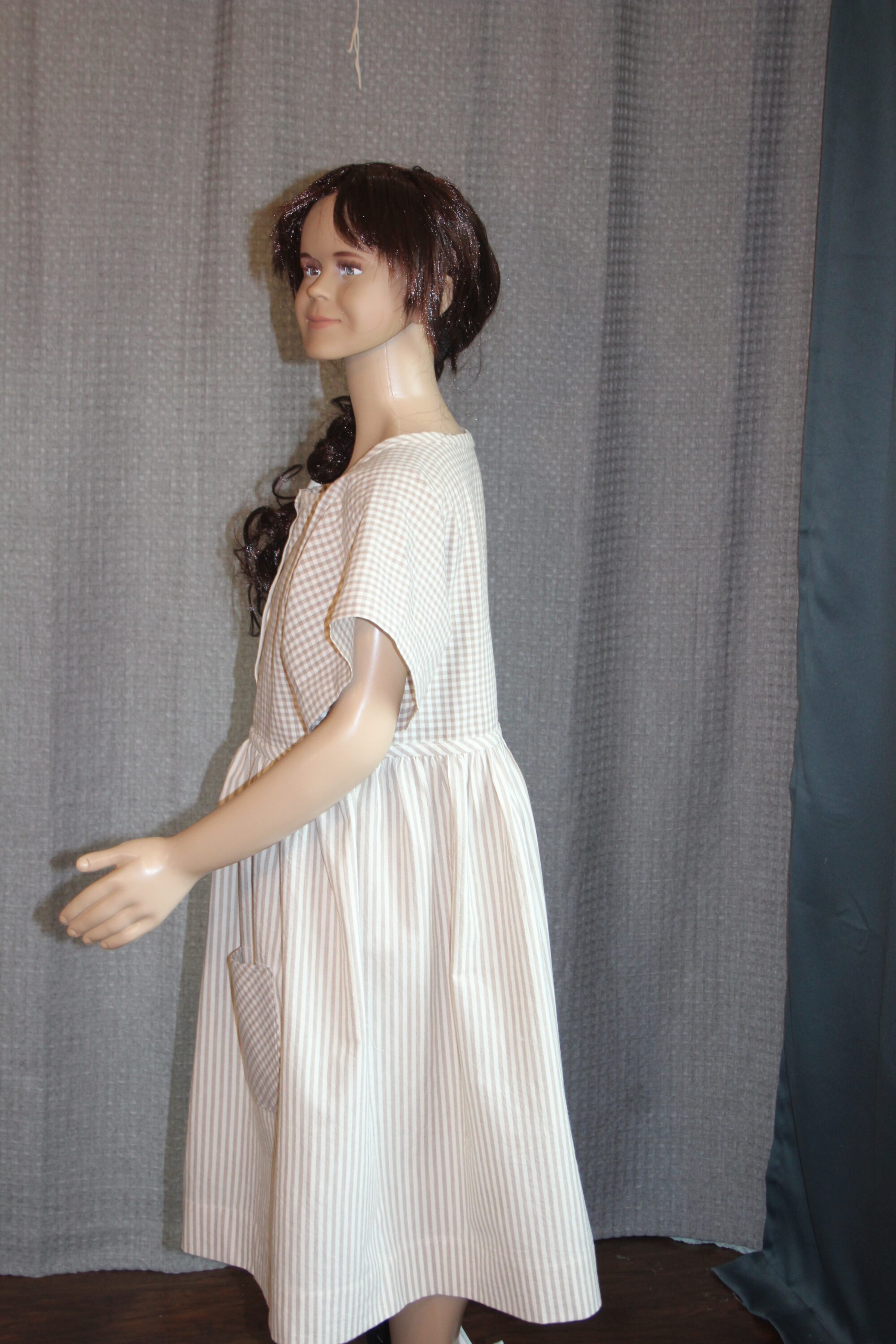
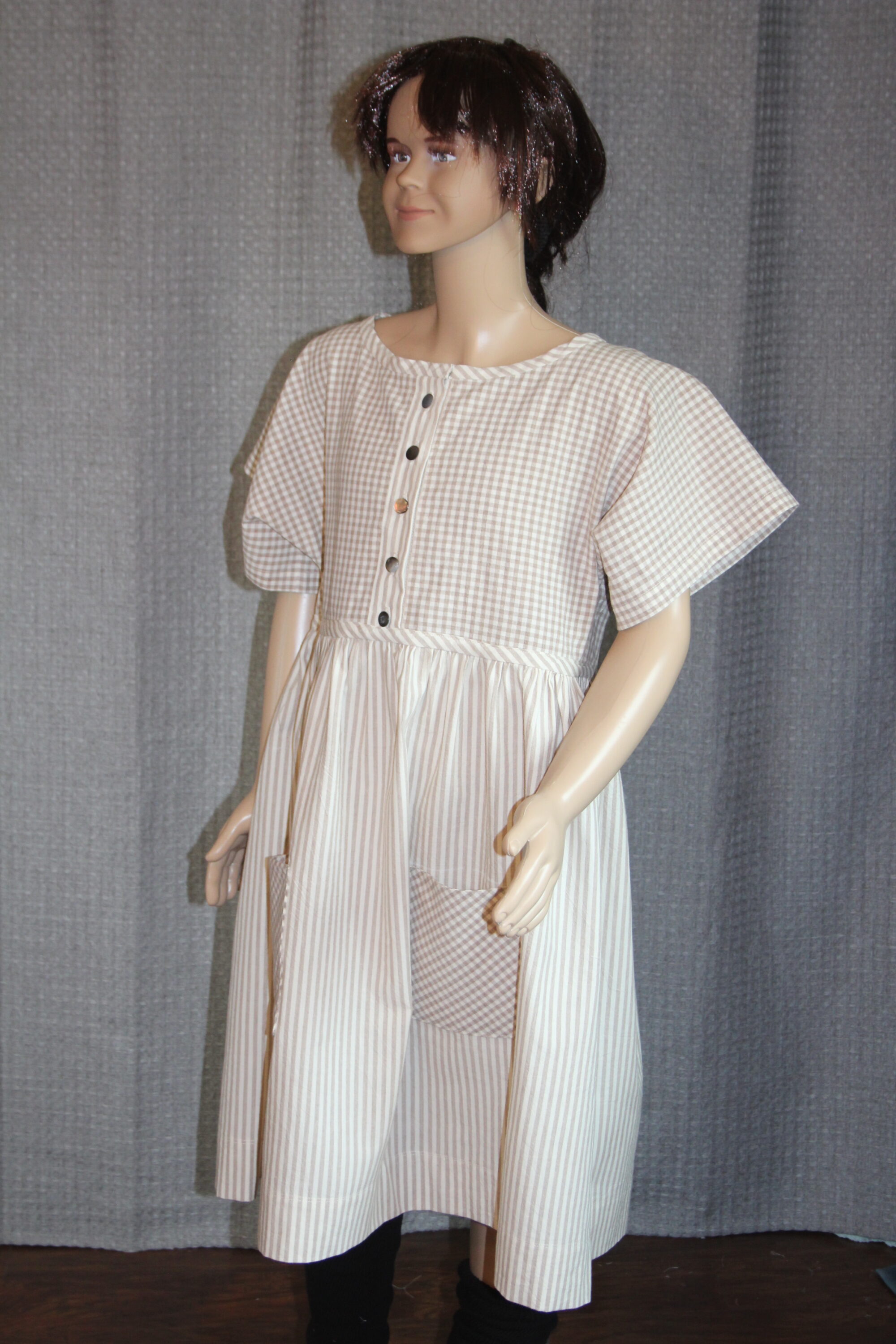

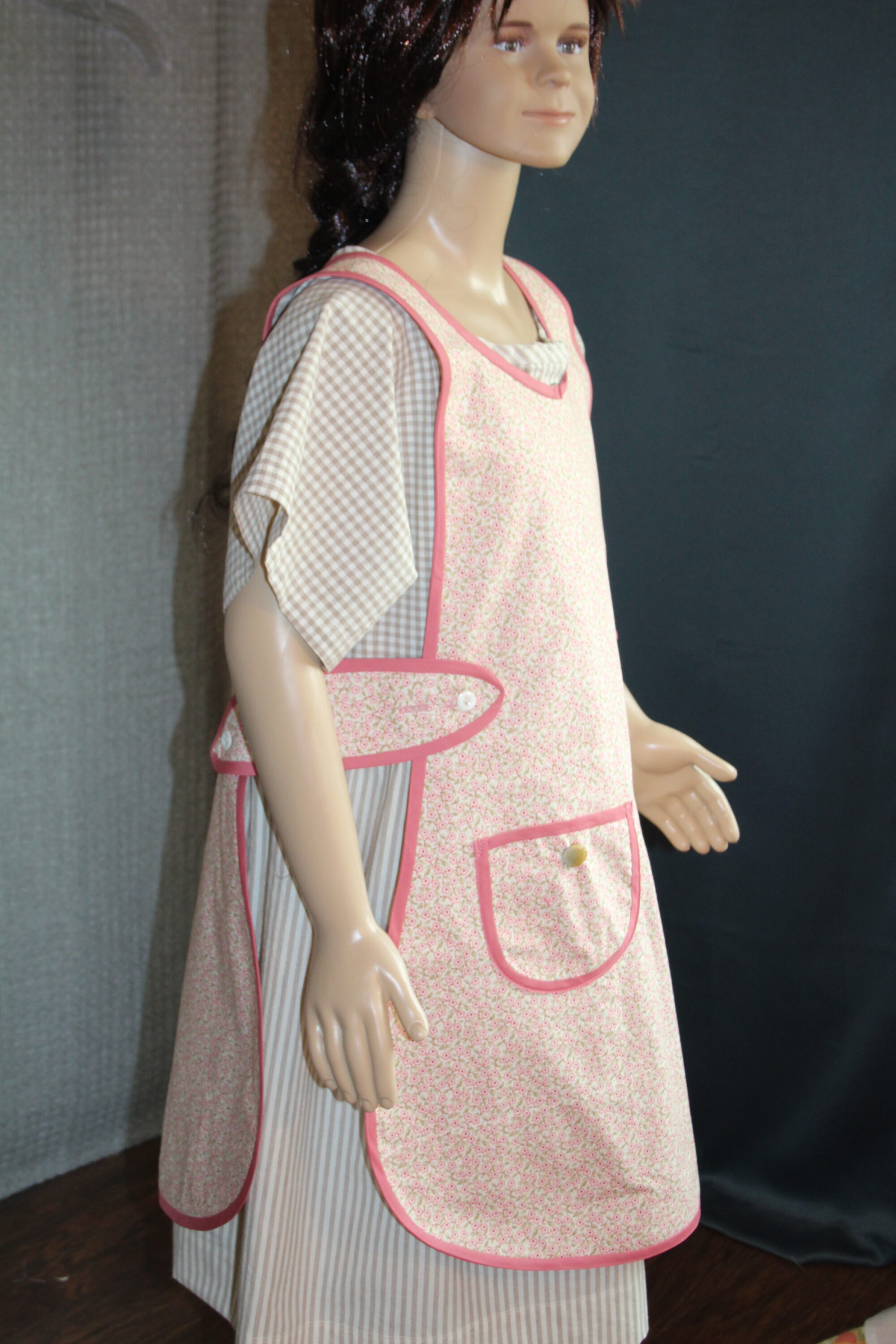
10+A.3 (size 10 plus or wide front and back reversible apron of beige stripe and pink period floral with dark pink bias tape full edging. Closure by removeable tabs with MOP buttons. Special Czech glass button on pink side and shank MOP ivory button on stripe side. This “Downton’s Sybbie” design is shorter and wider than the women’s designs and meant to be worn over the shorter, wider and higher waisted style of the young girl)
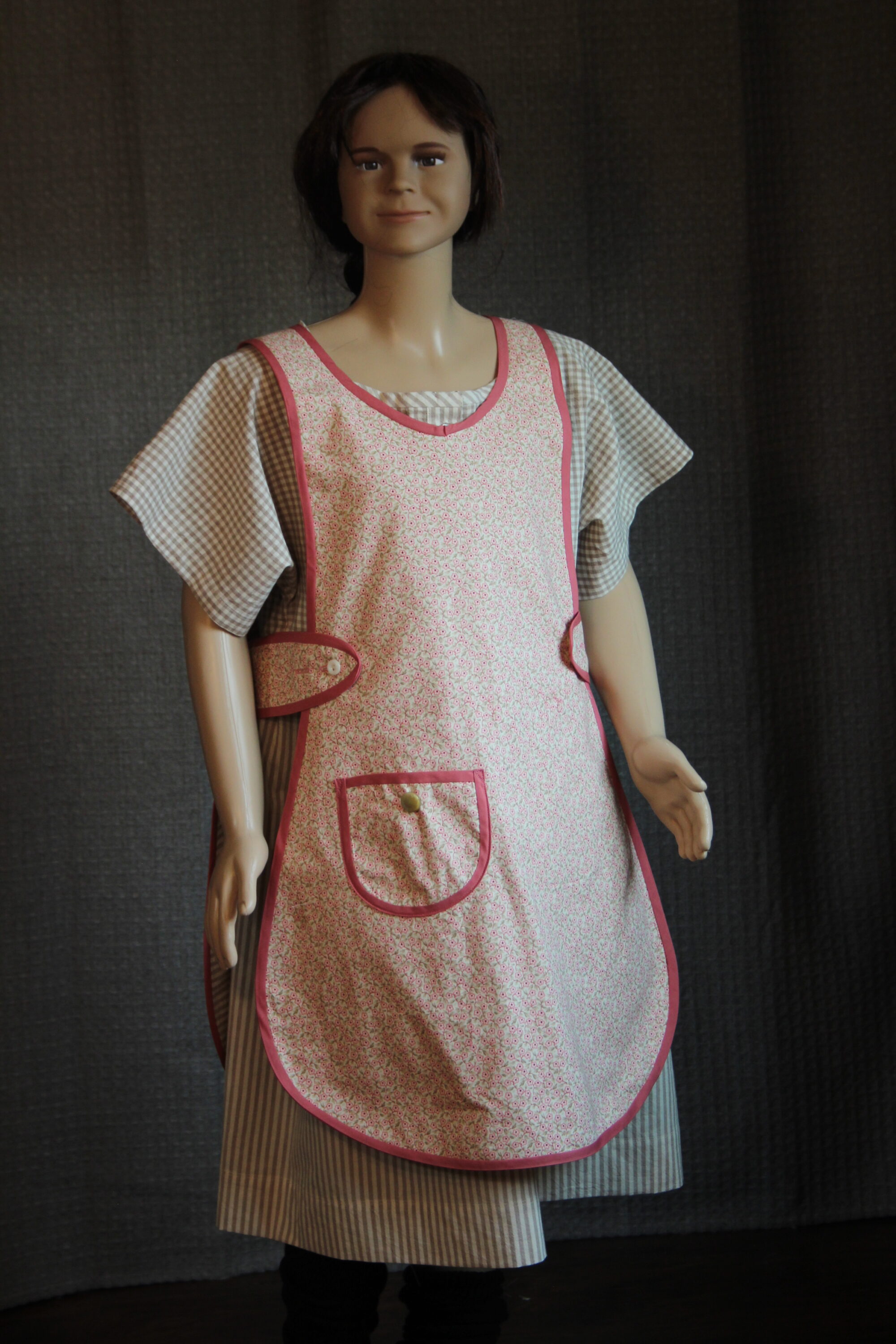
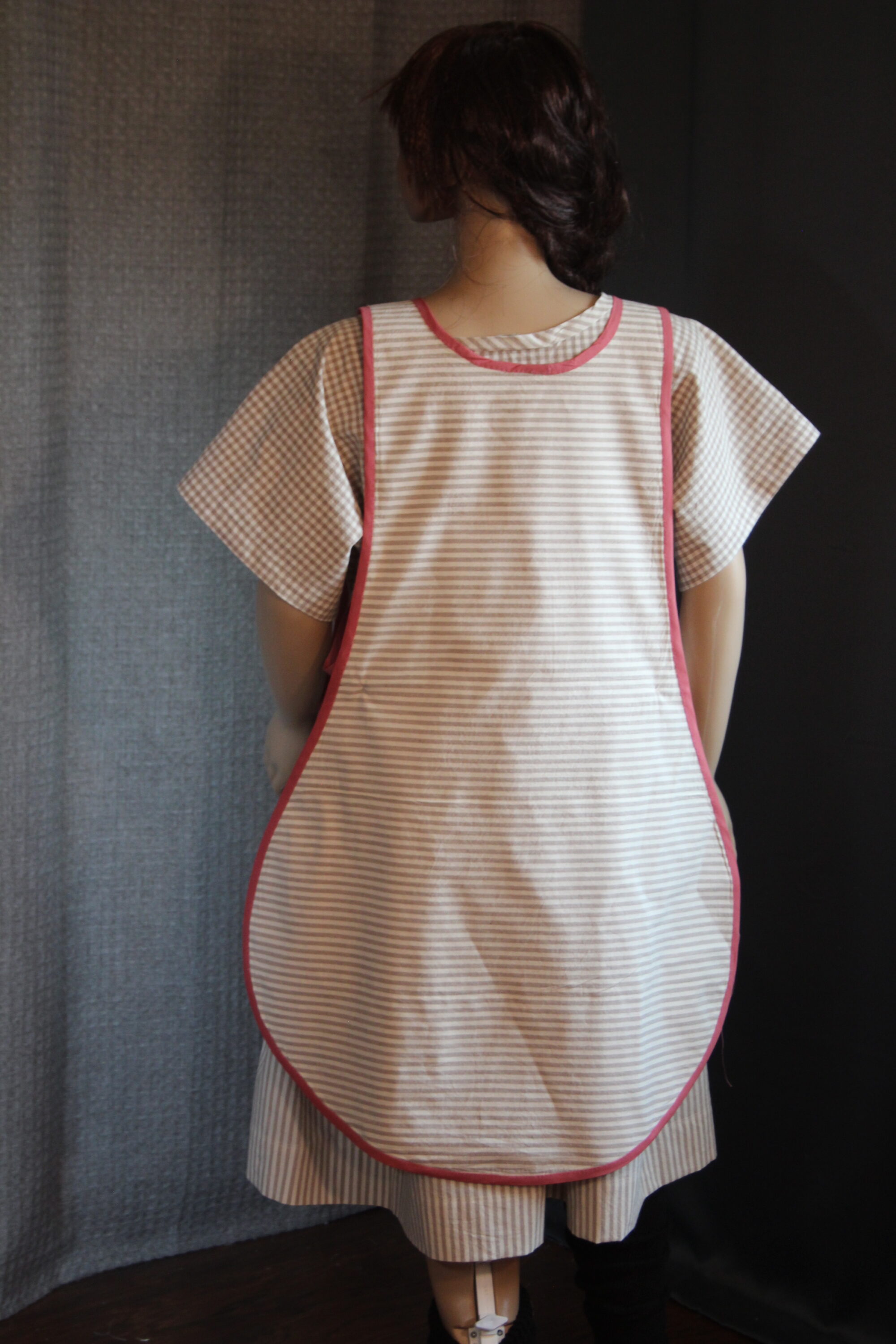
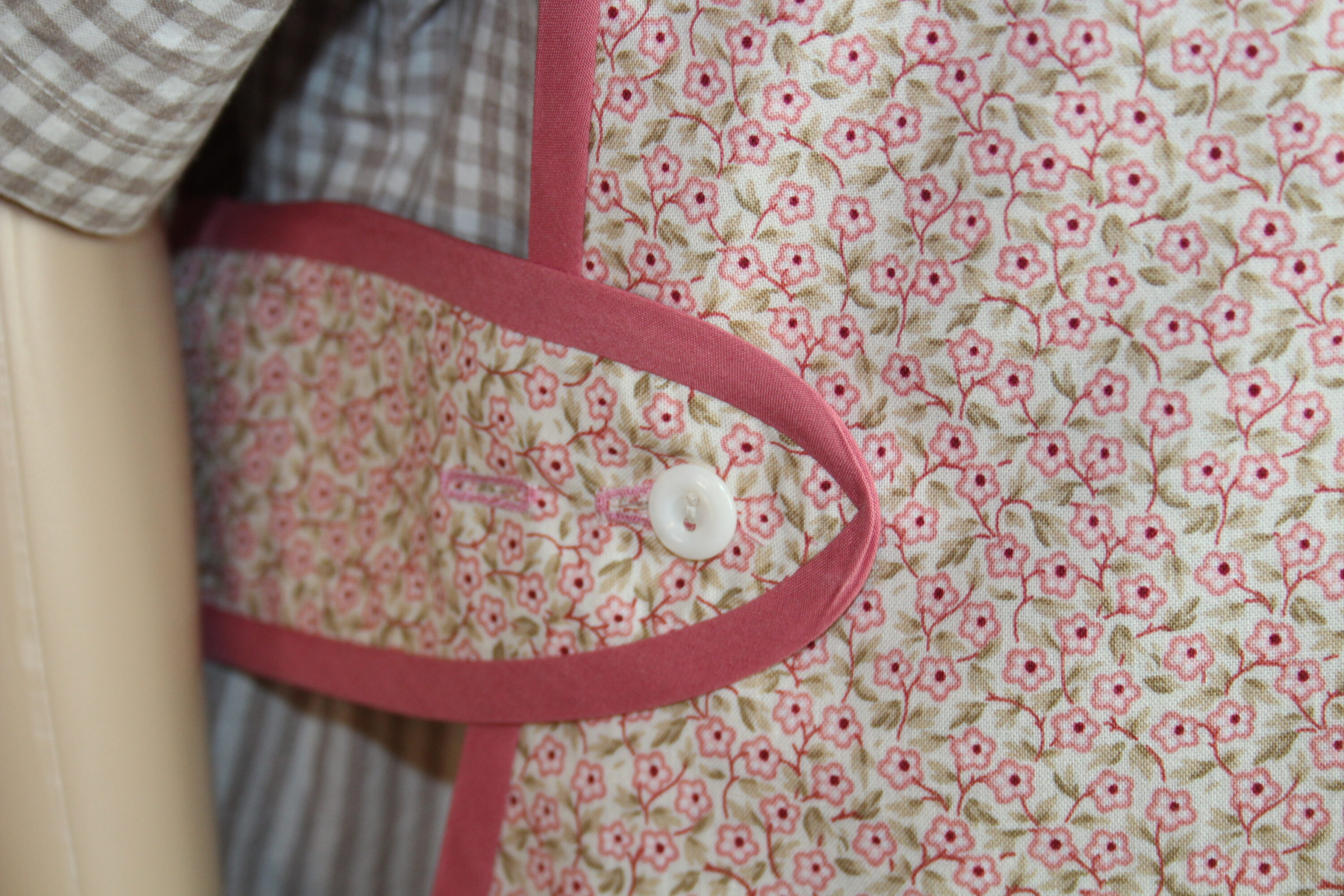

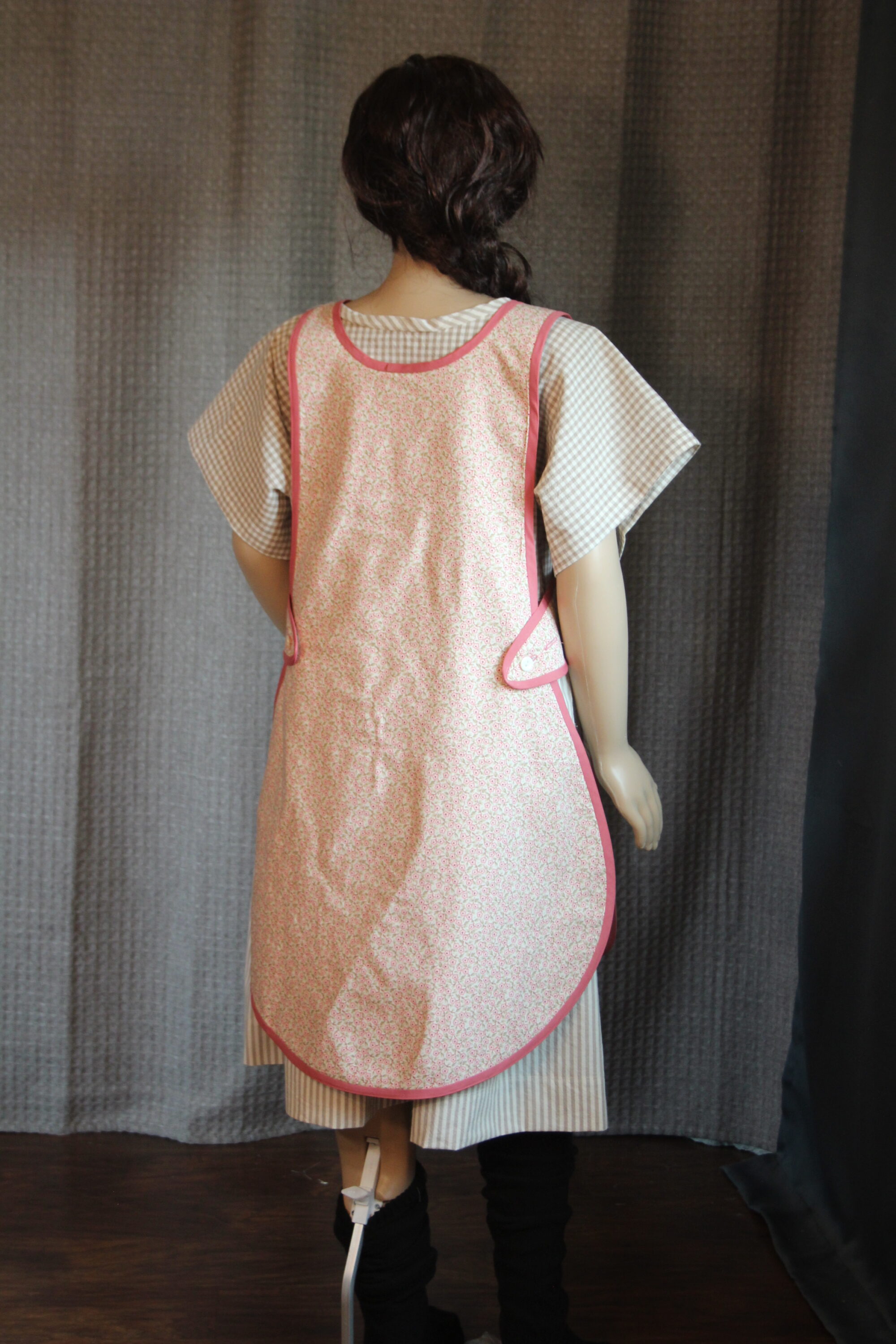
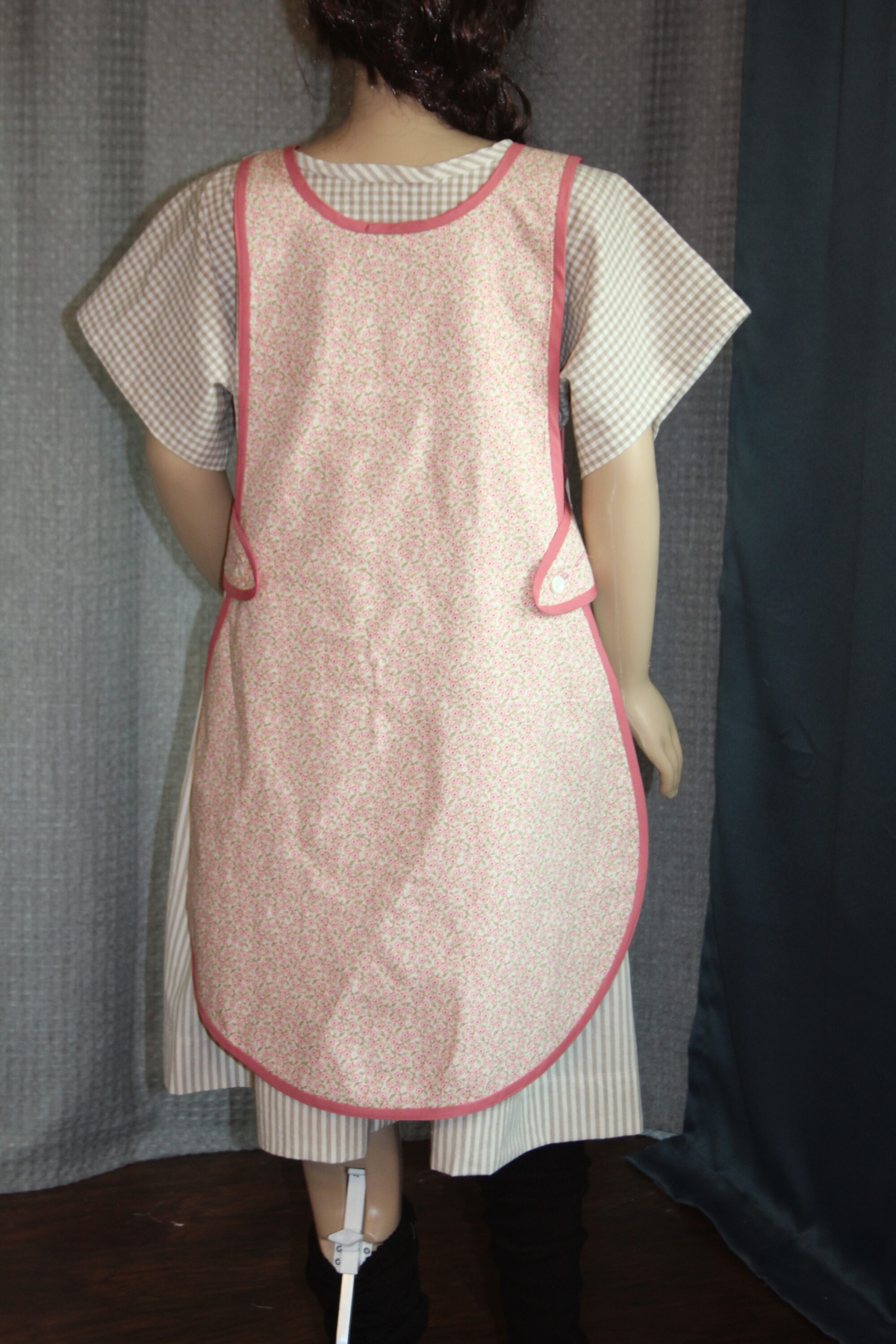
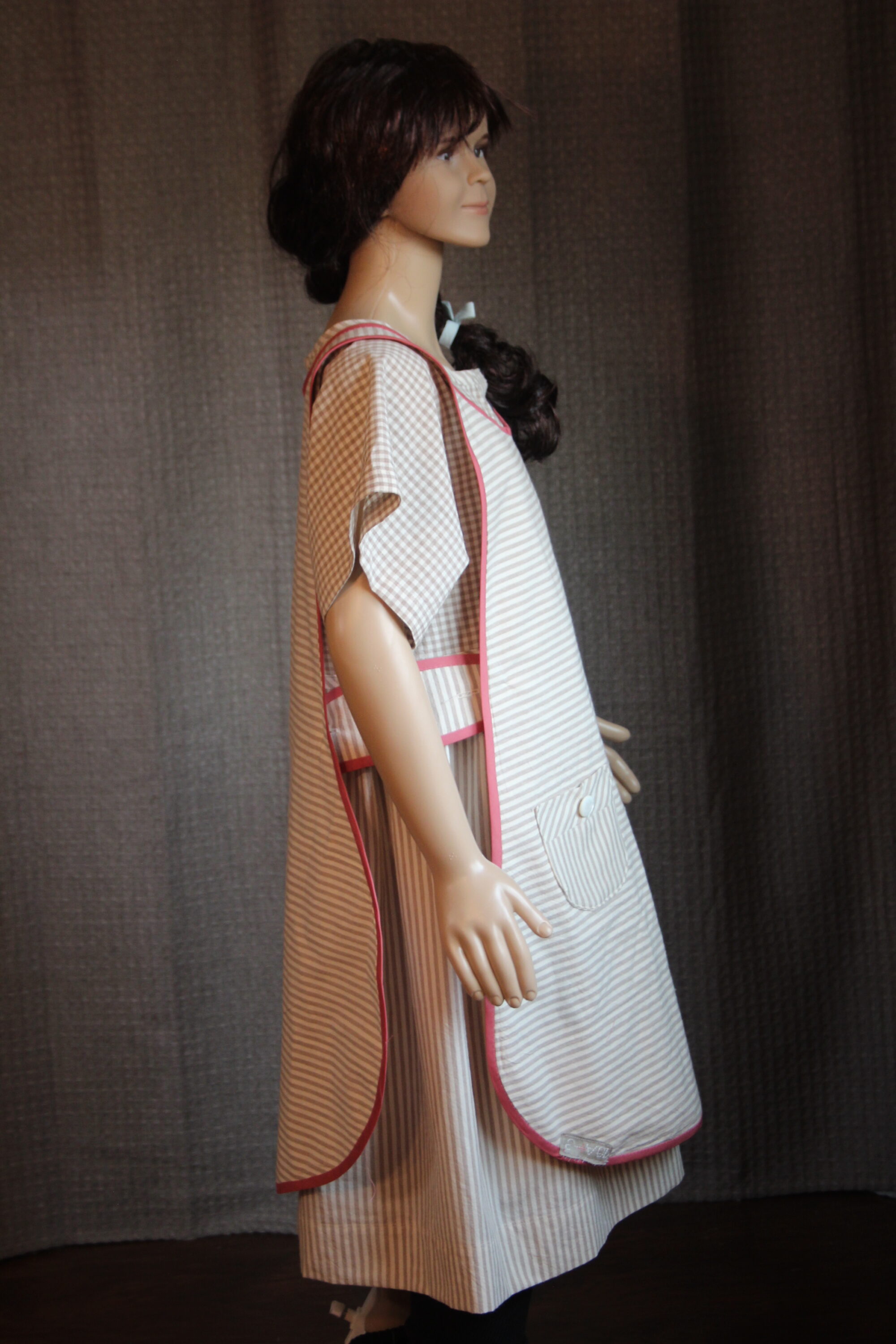
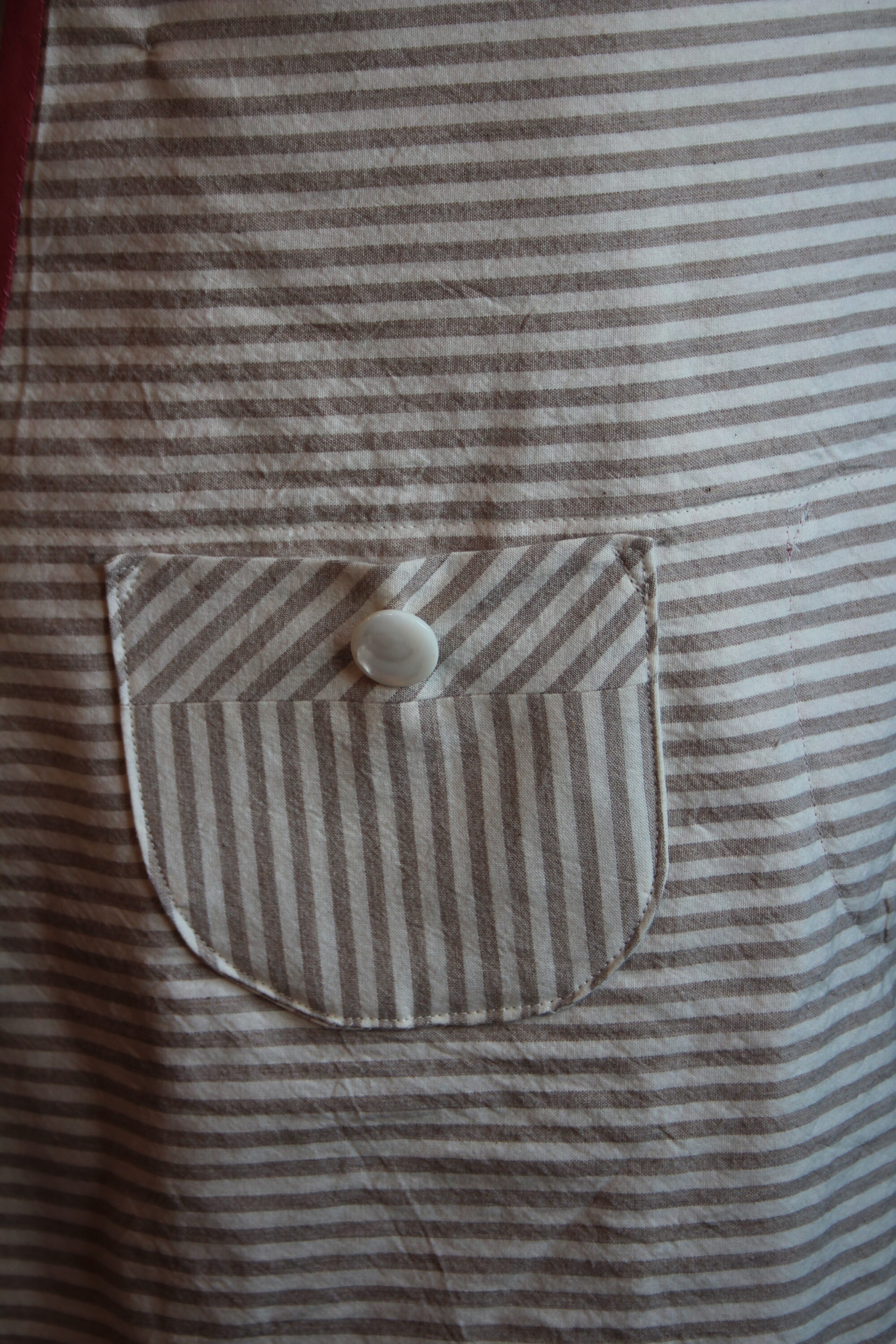

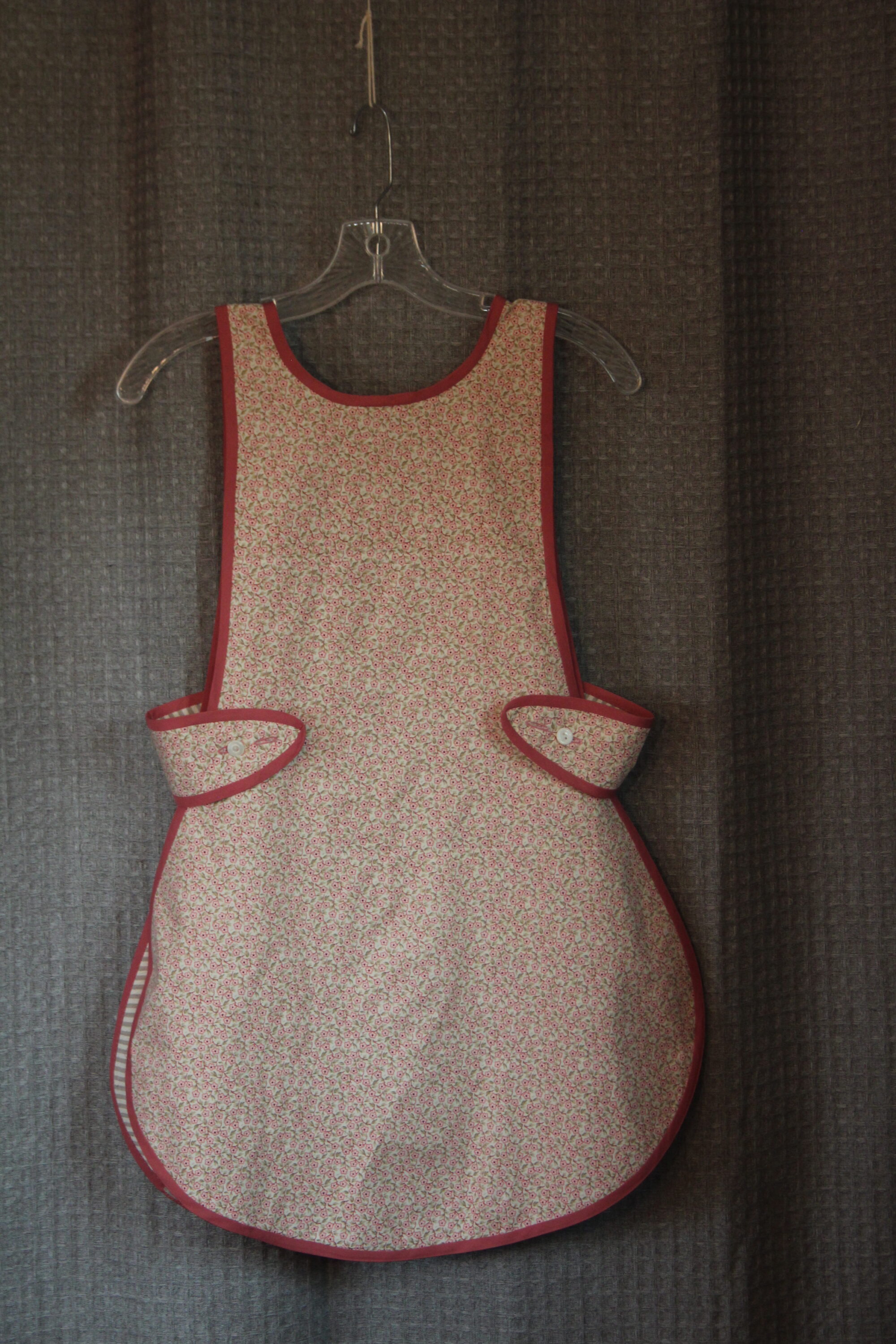
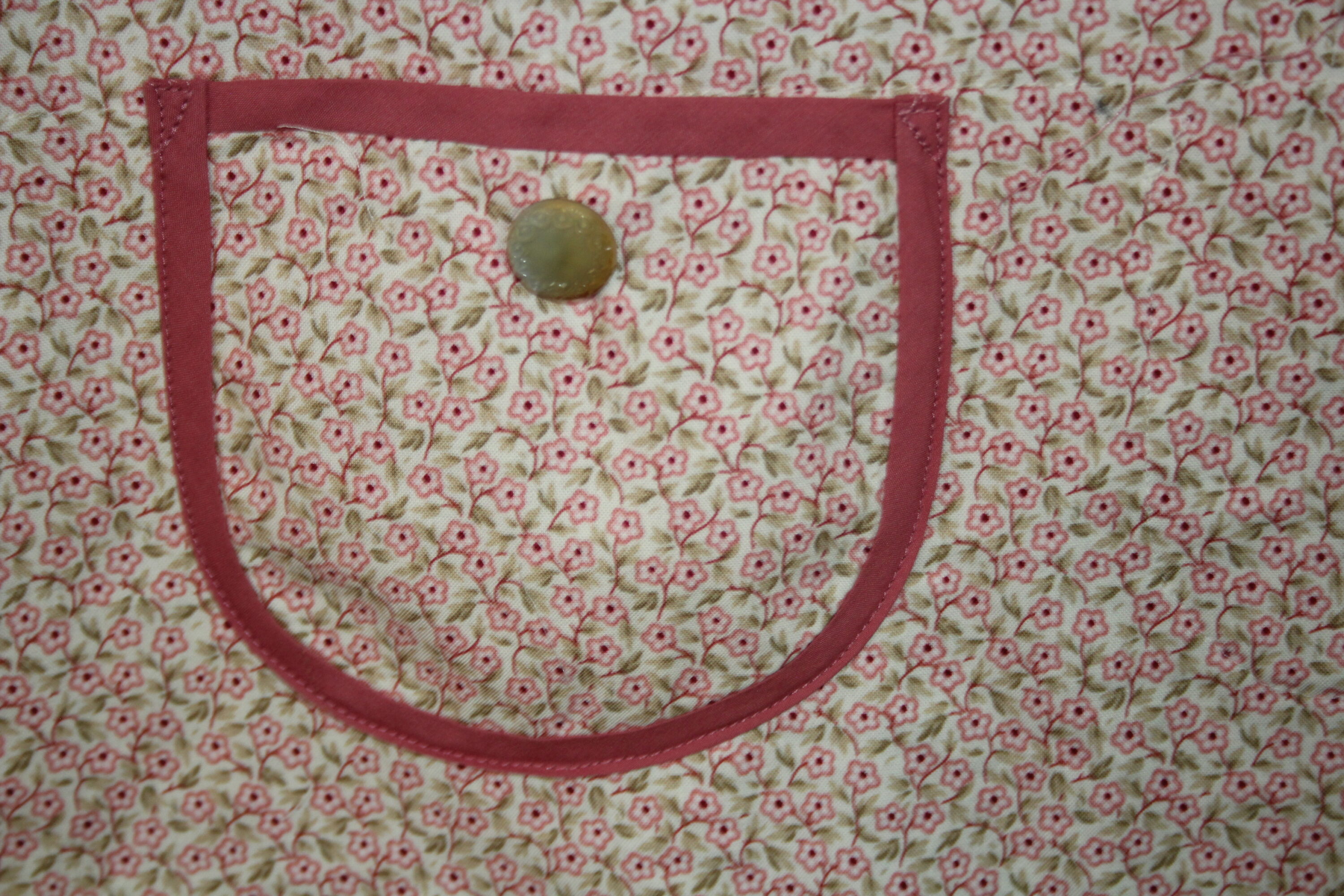

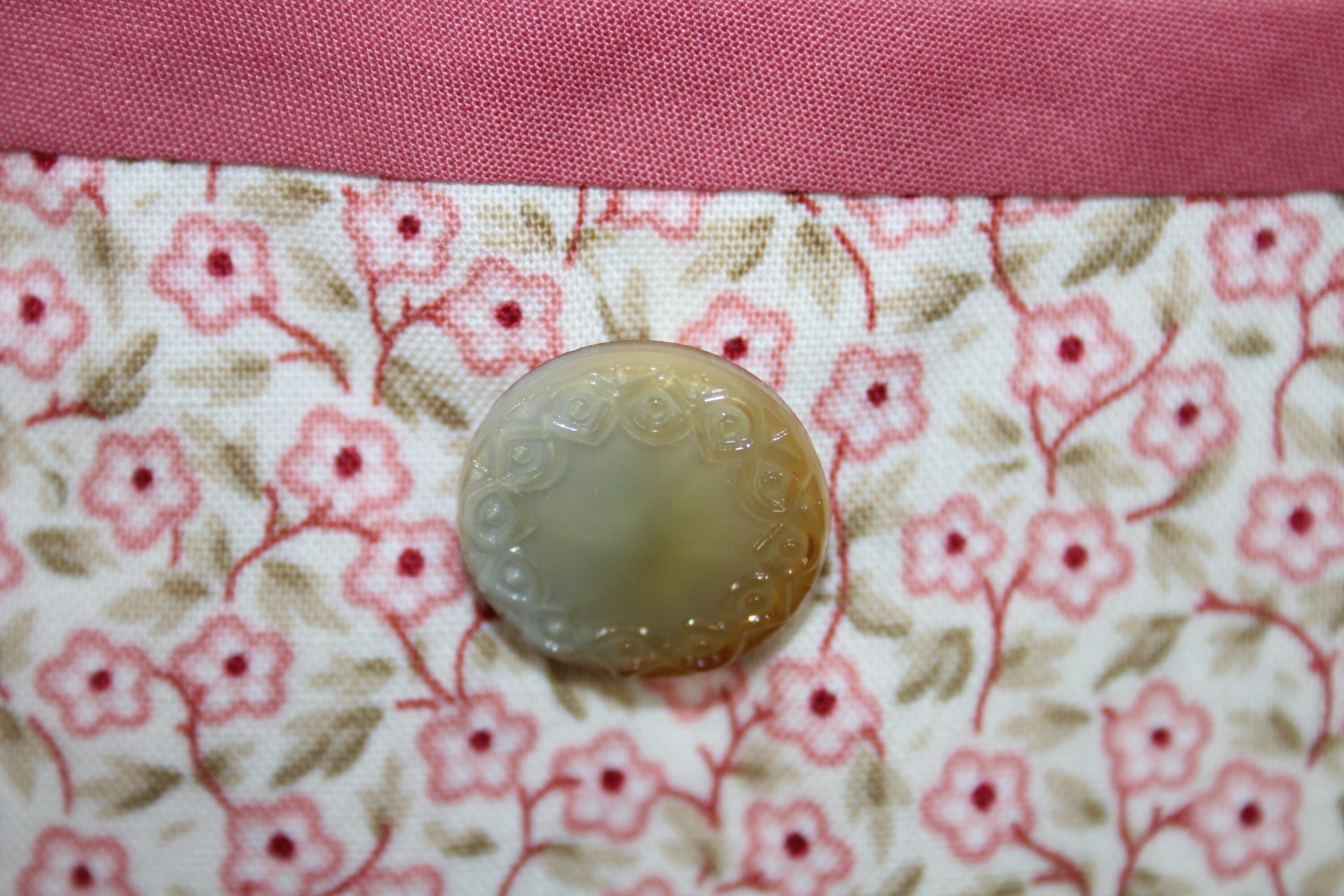

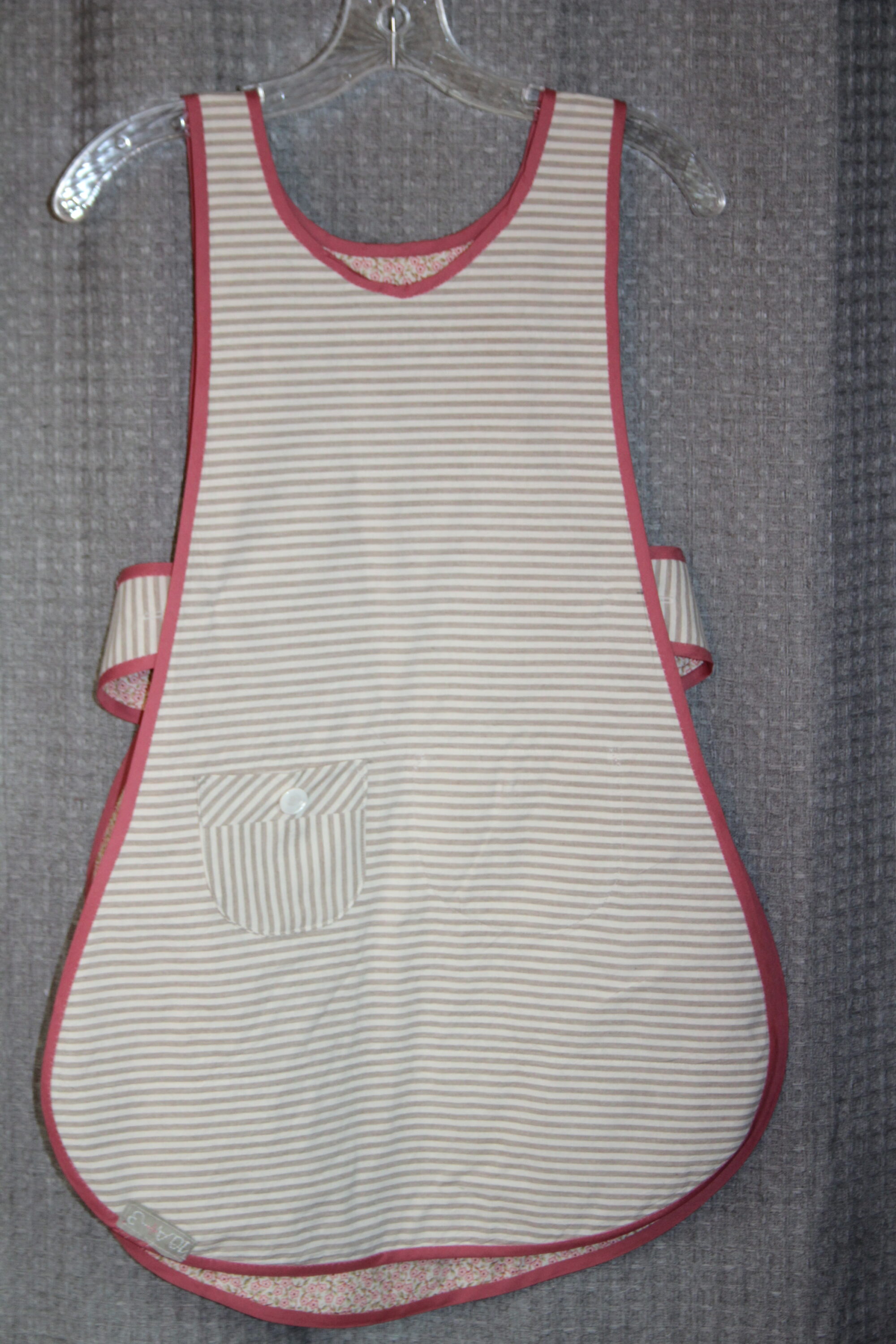
Batch 3 – Golds, Oranges, Blues, Greens
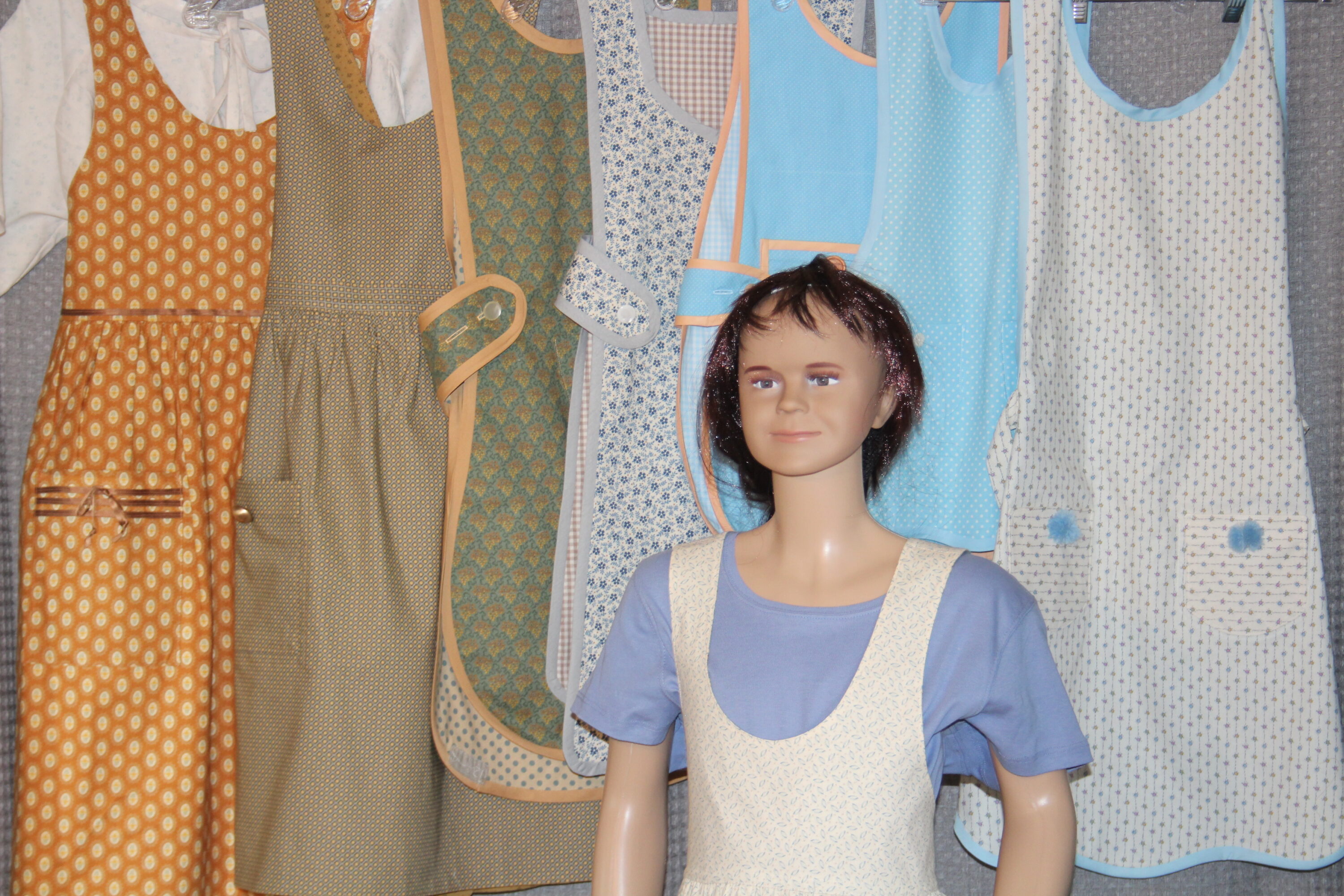
12.3 (size 12 basic ivory with reverse image forget me not subtle blue floral print, with neck self tie at front of neckline and self bias, handmade hems on sleeves and bottom. Longer silhouette but wide as a smock with wide neckline. 100% silk ribbon bows on pockets makes this look like an undergarment. It was built from the vintage girls’ short pattern with the shirred dolman type sleeve. Needed this for fitting final aprons. As with all garments, seams are either french or felled for durability and so they will not fray, and bias and hems are done by hand.)
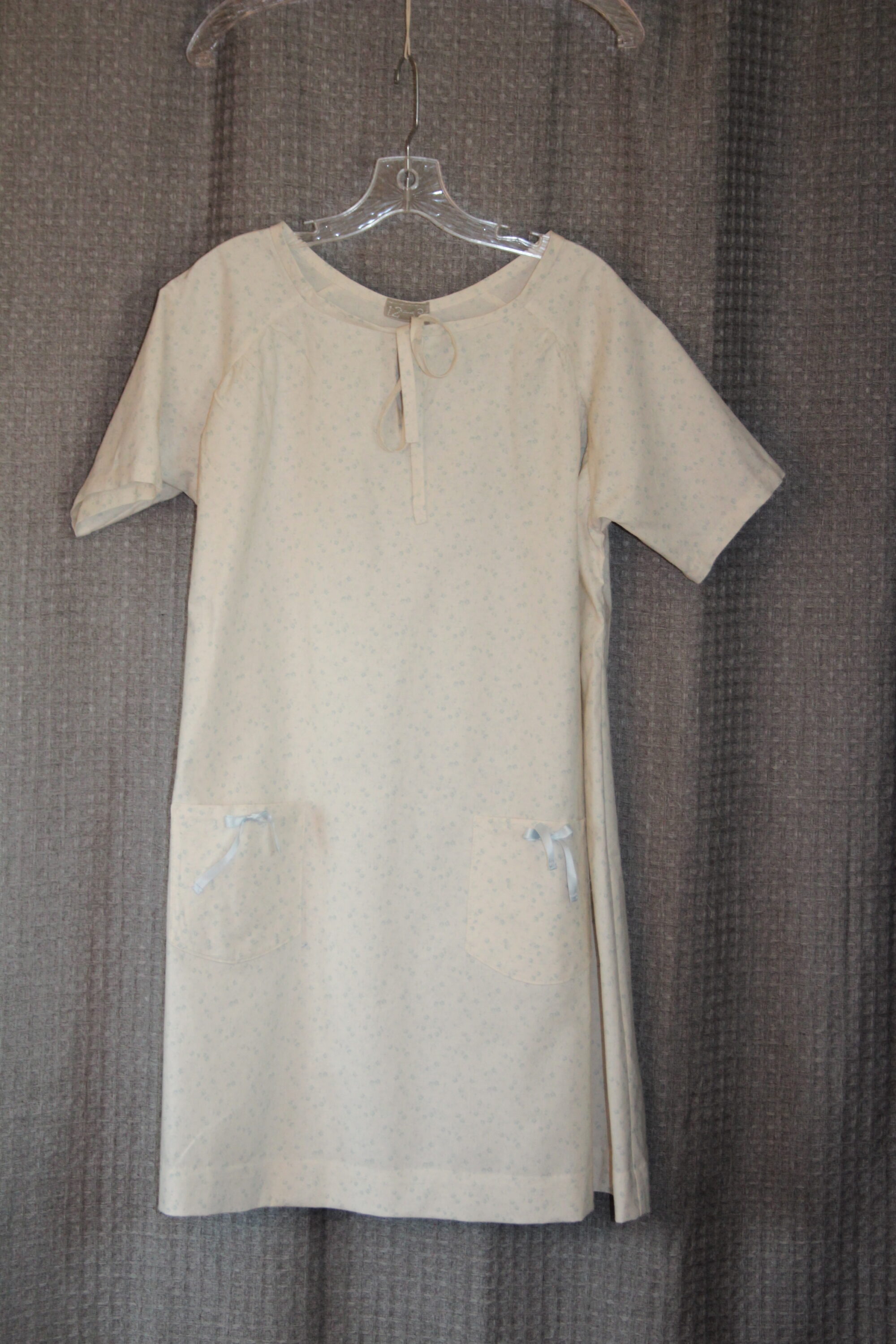
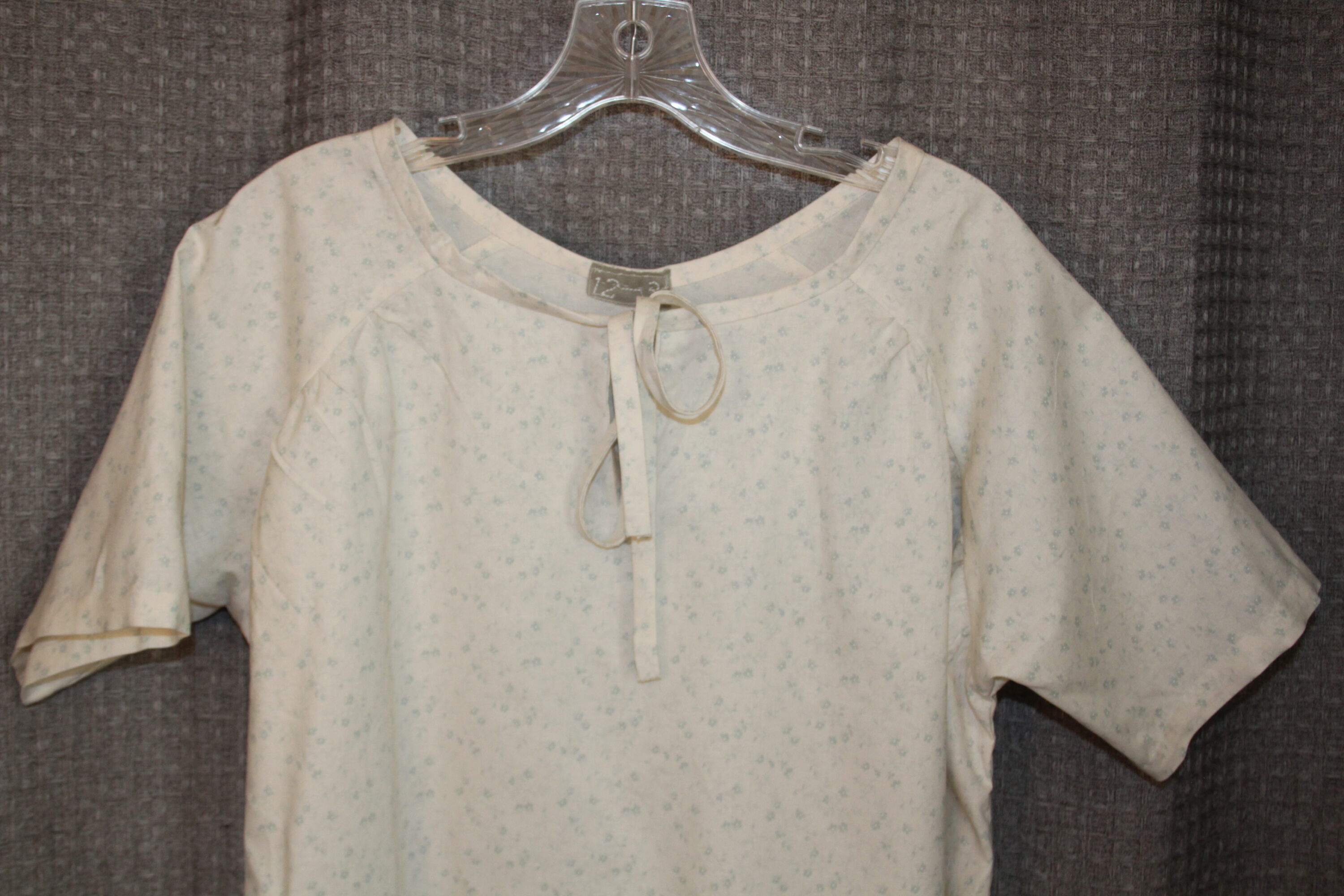
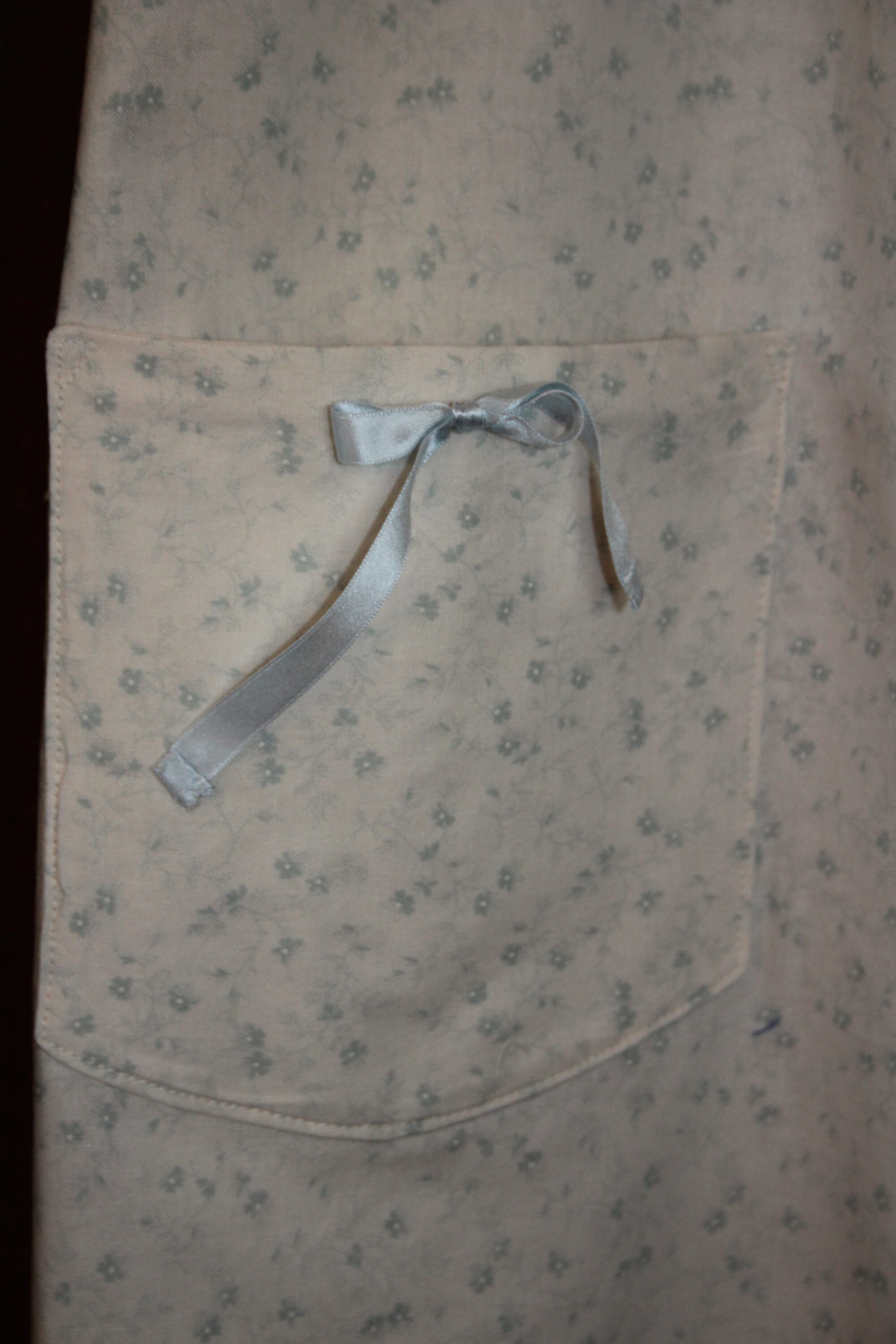
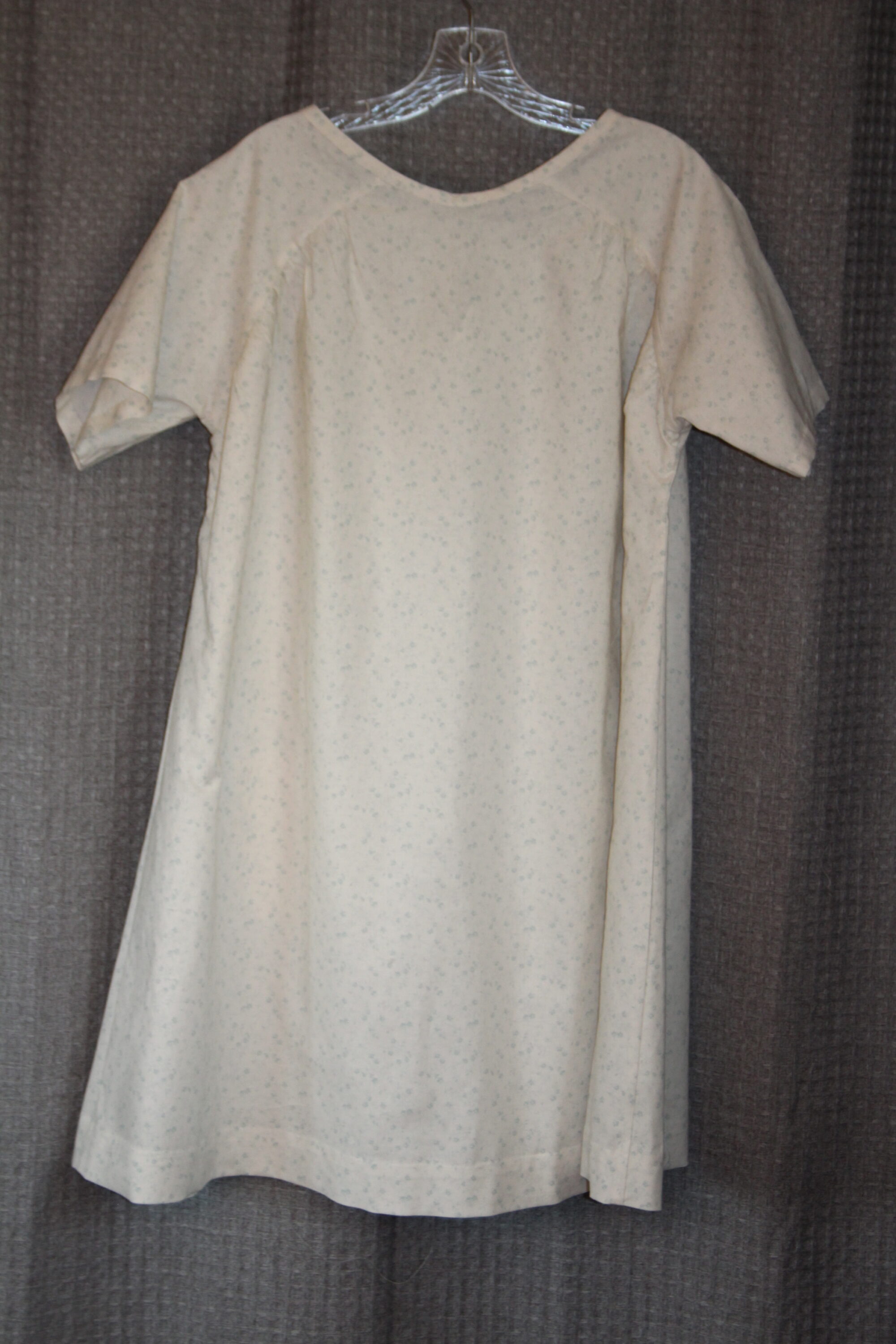
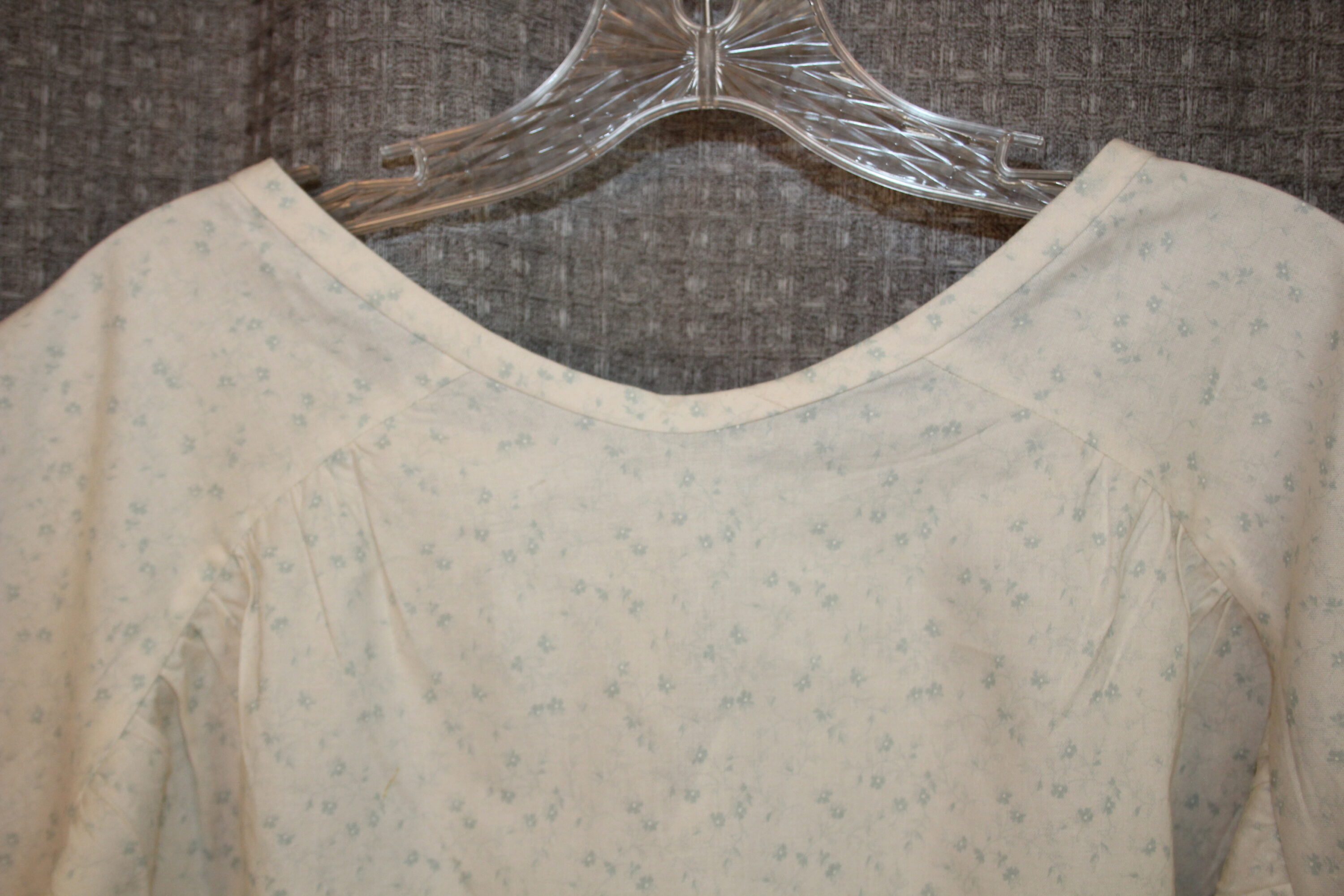

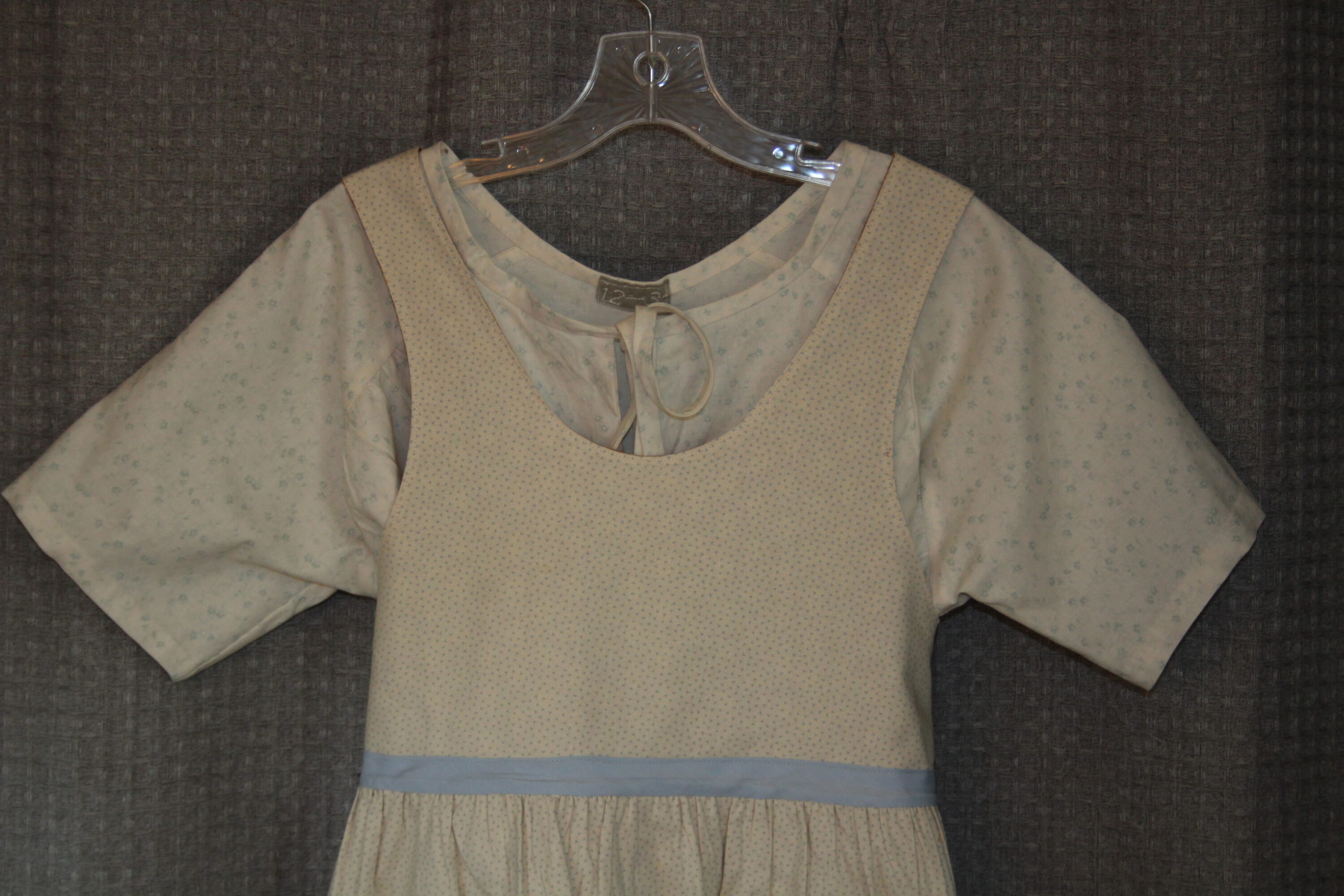
12A.1 (size 12 full woman’s size scoop neck apron, reversible between tiny medallions with flowers on a dark gold field, and light blue “flea chevrons” on ivory with blue silk ribbons and blue bias on the reverse side. Front has silk satin narrow ribbon art deco stripes and both have a reversible big bow tie in back with crossover straps which have multiple buttonholes for flexible sizing. As sown with the neutral size 12 smock dress, this is best over ivory or plain colors).
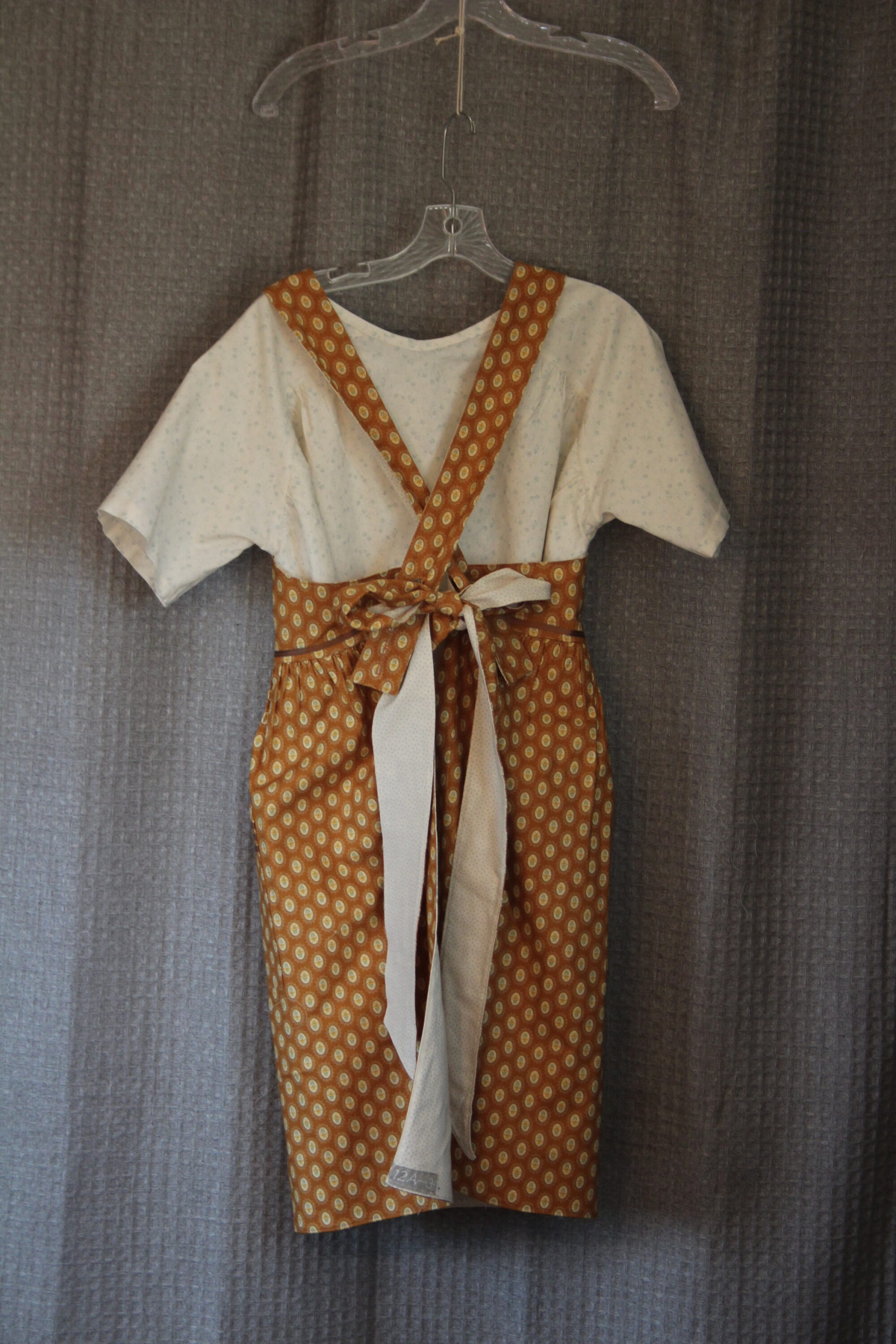
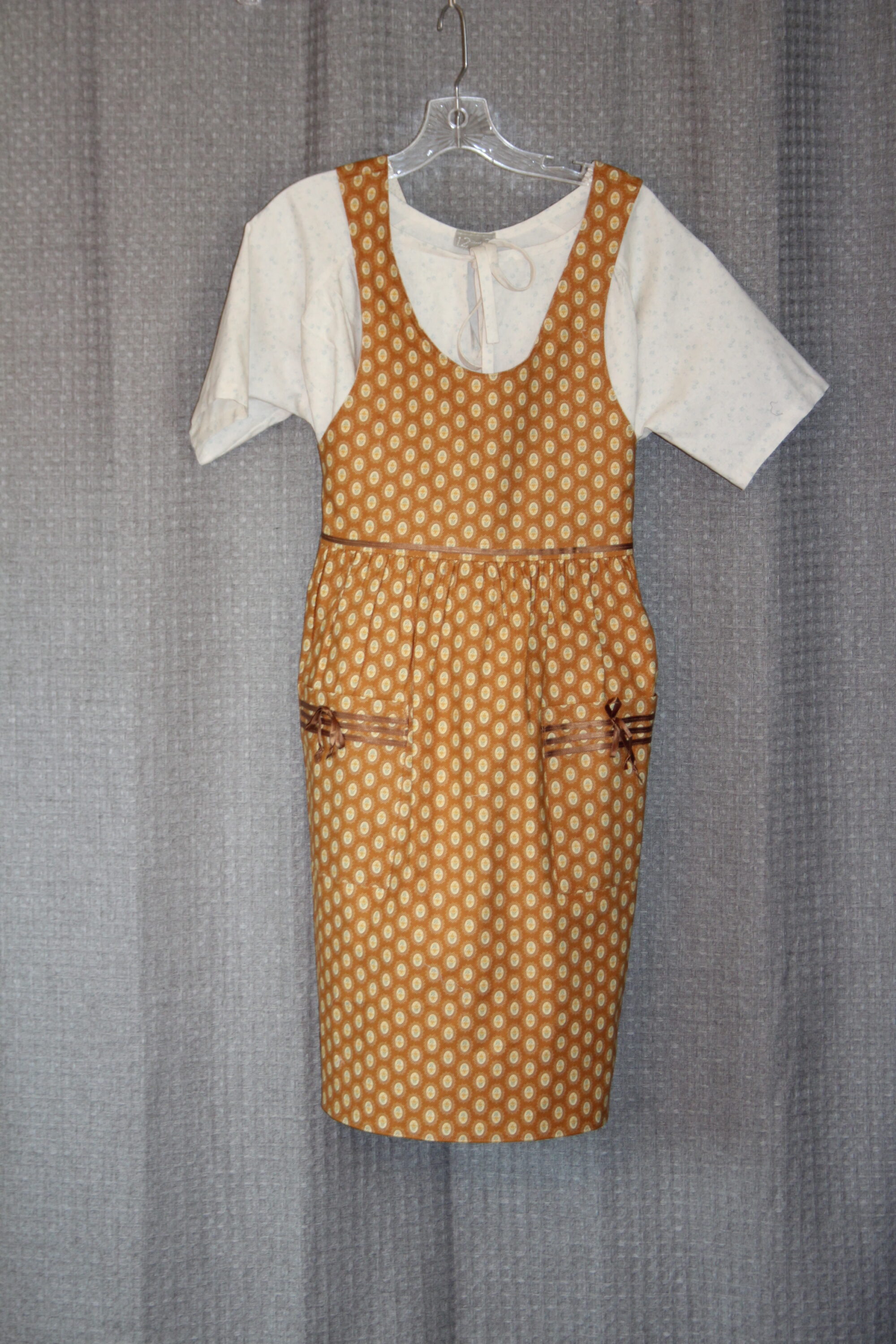

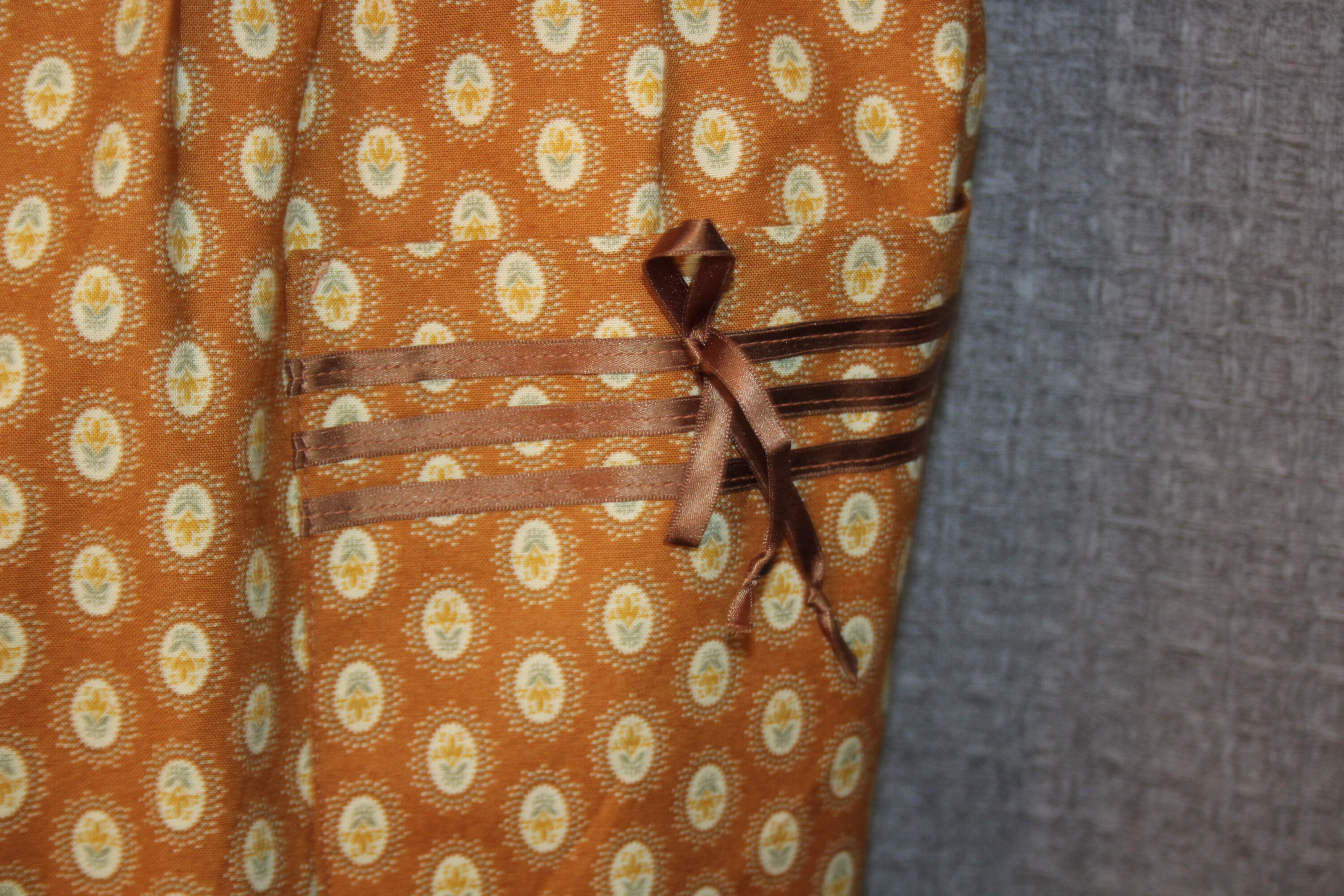
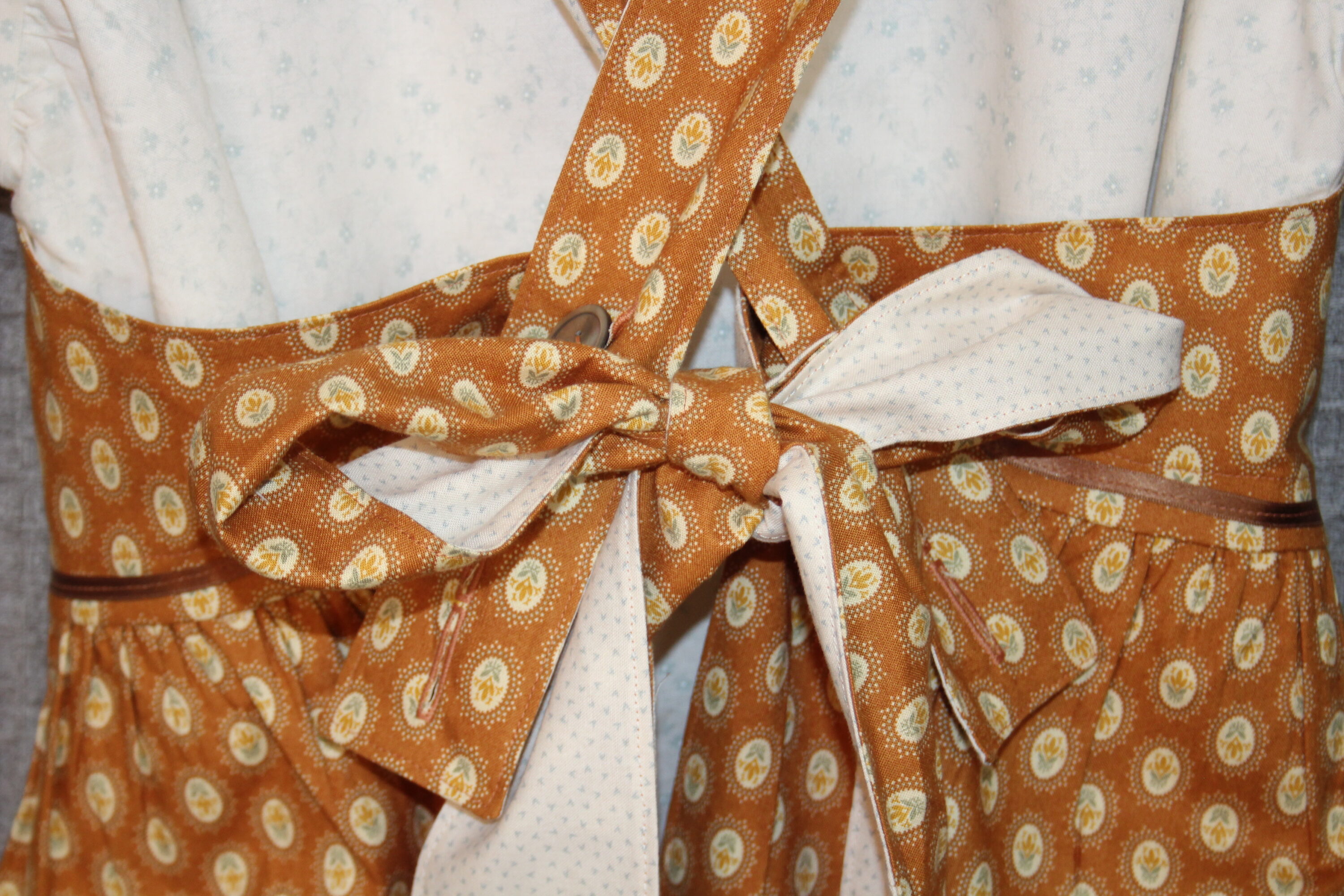
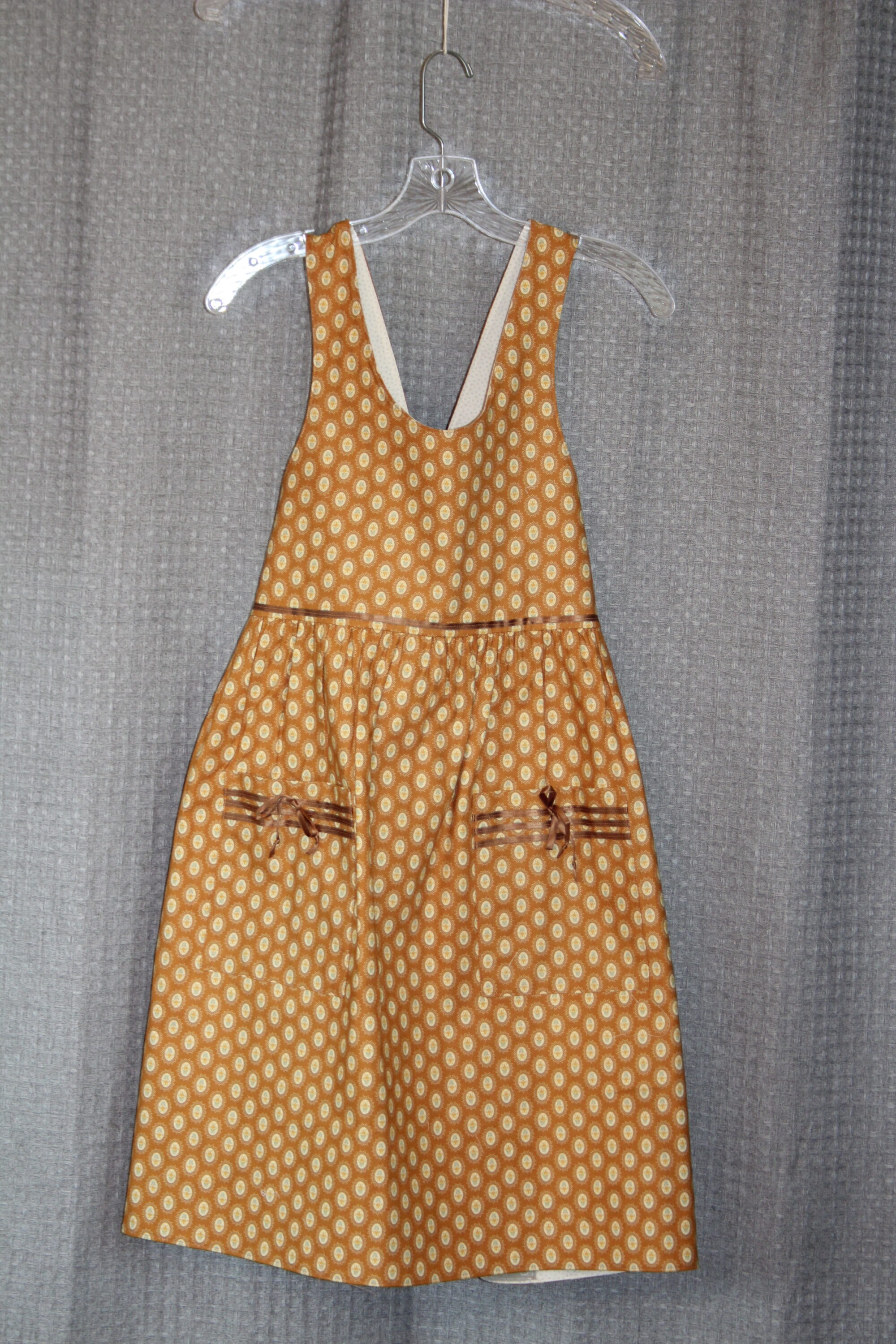
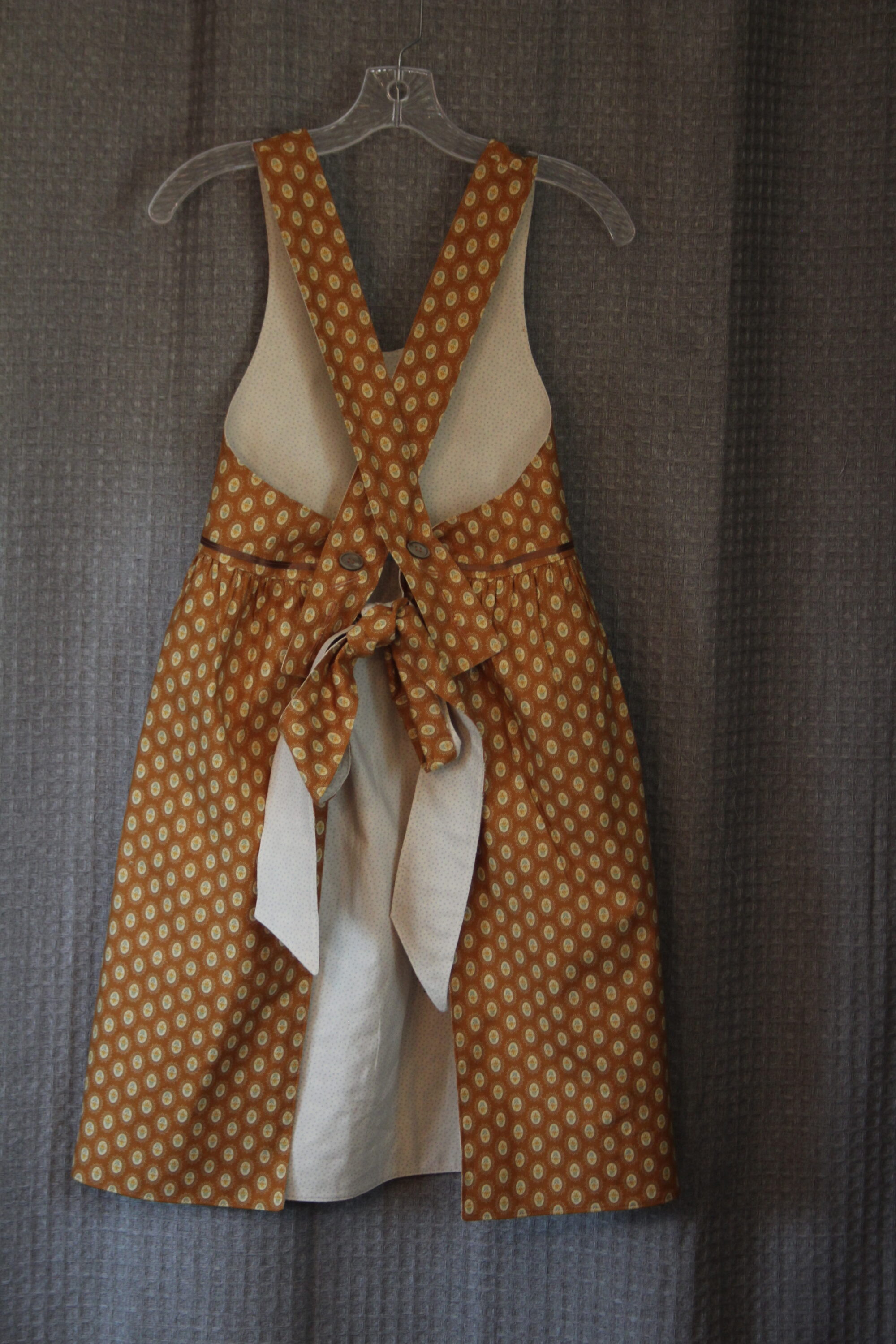
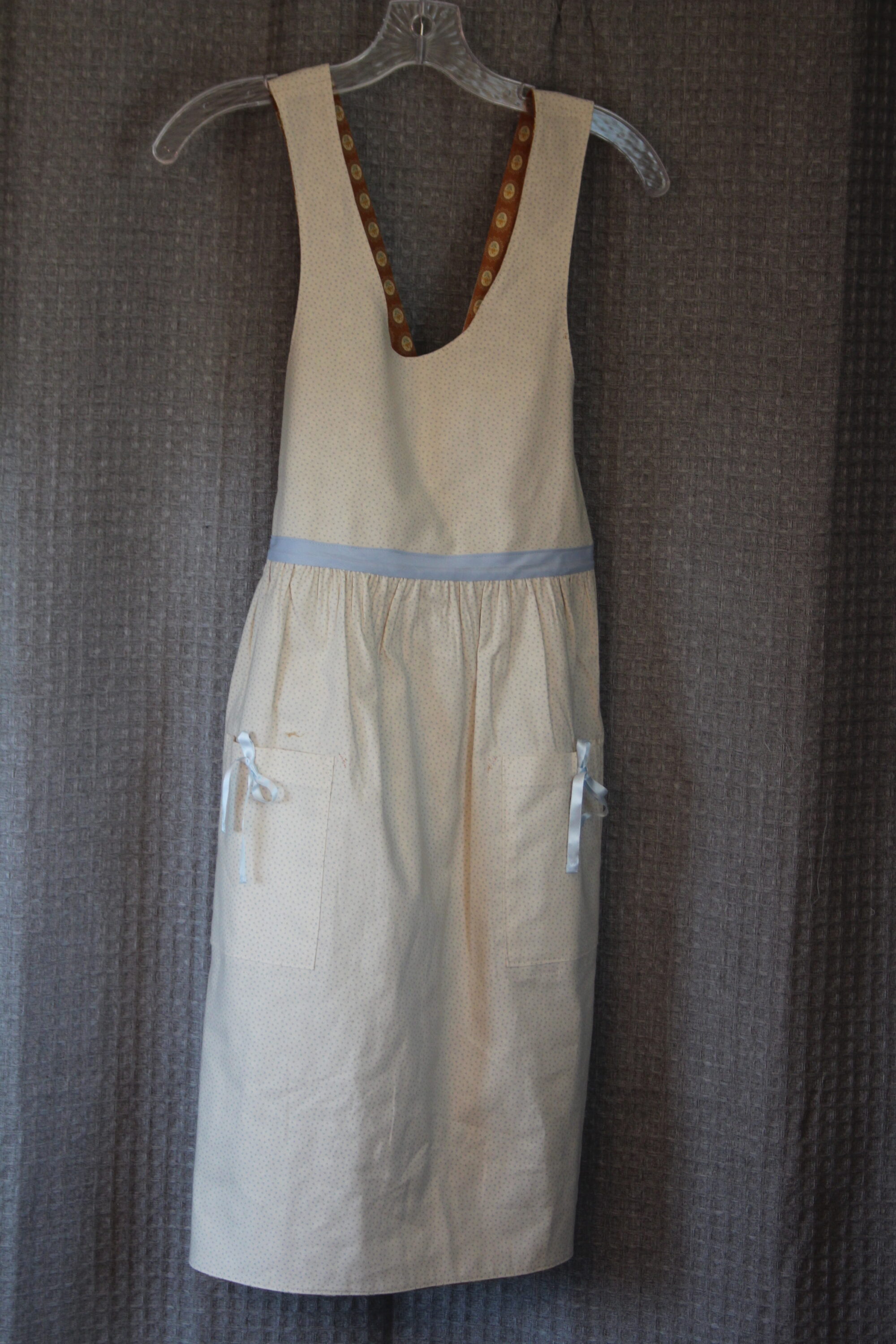
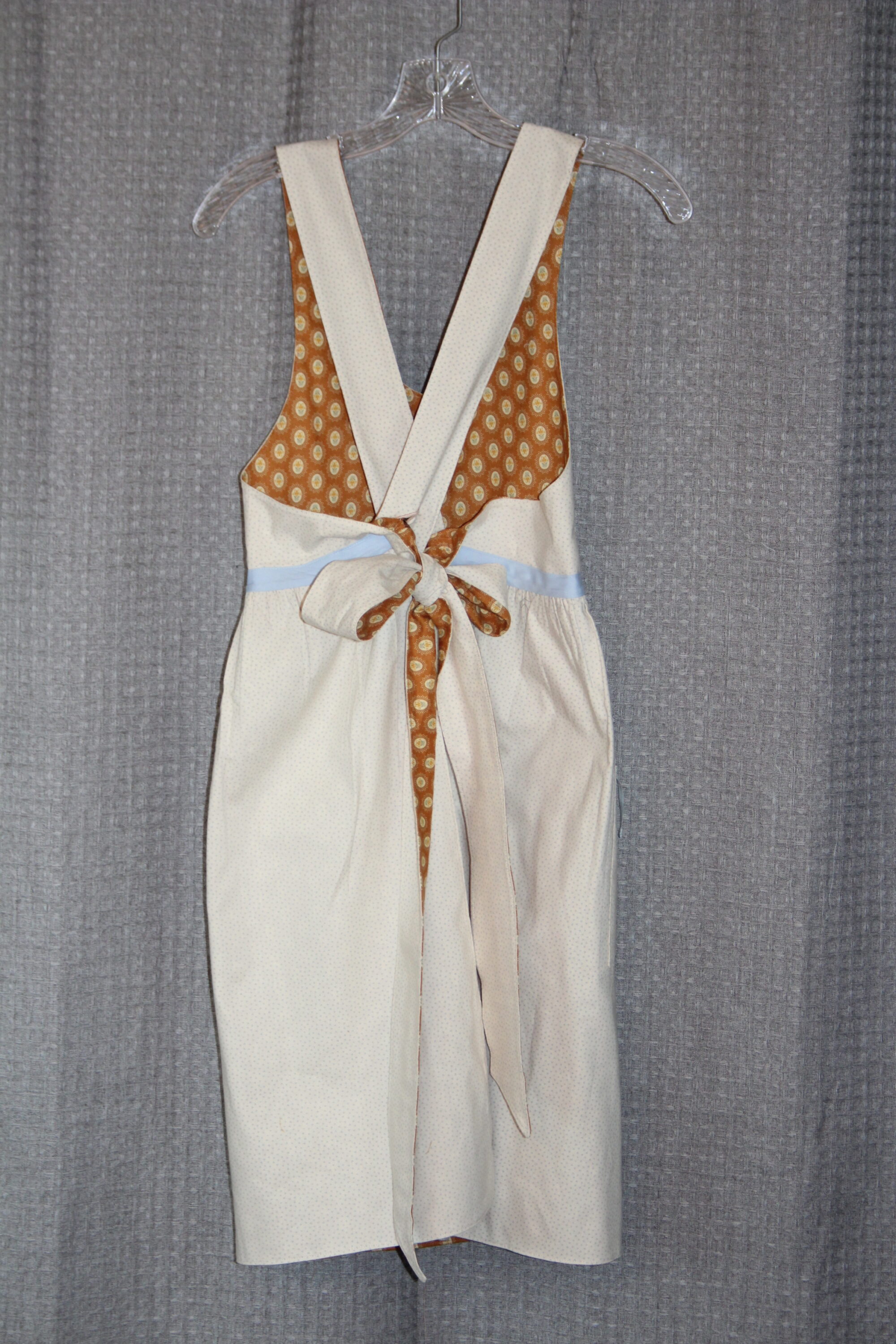
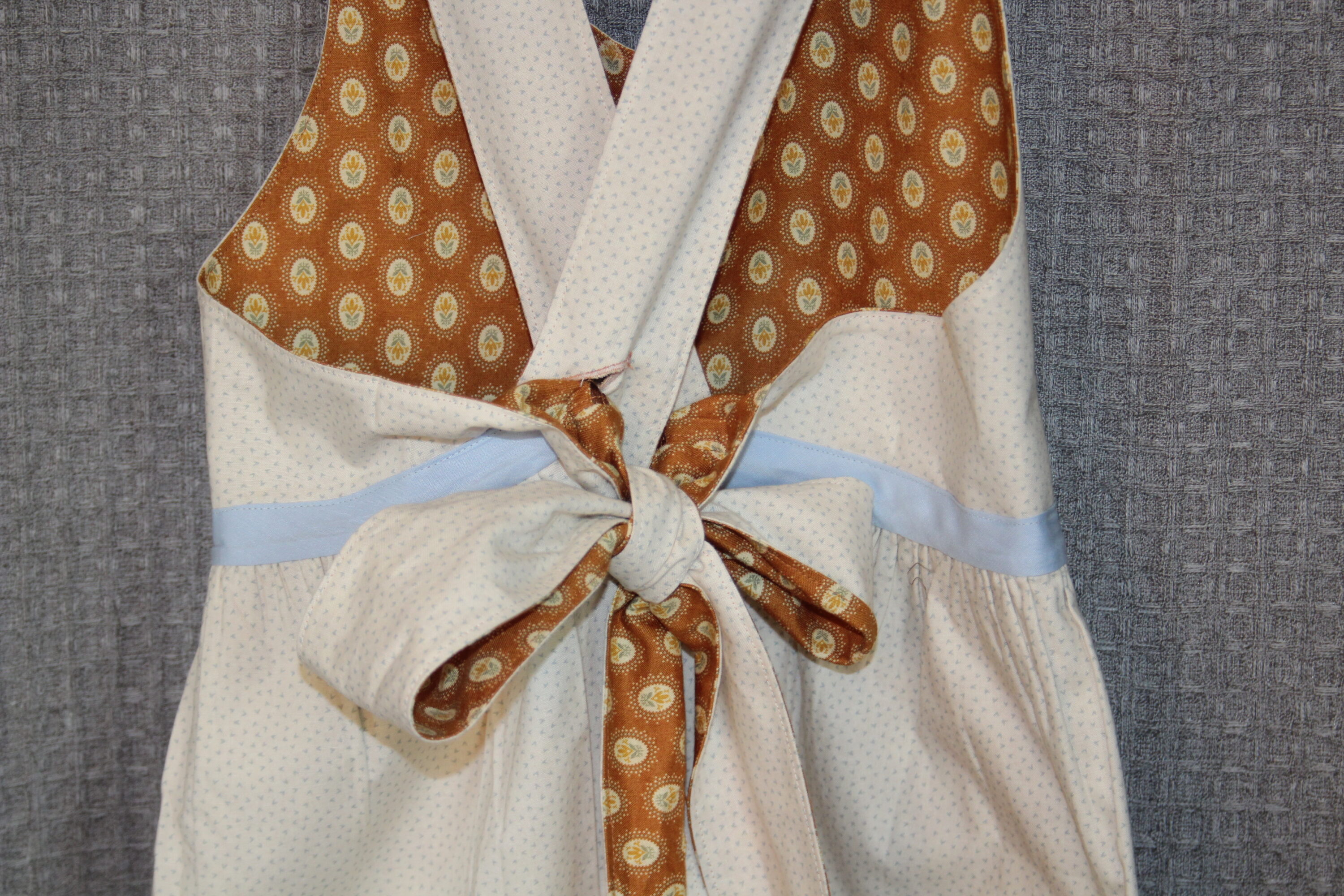

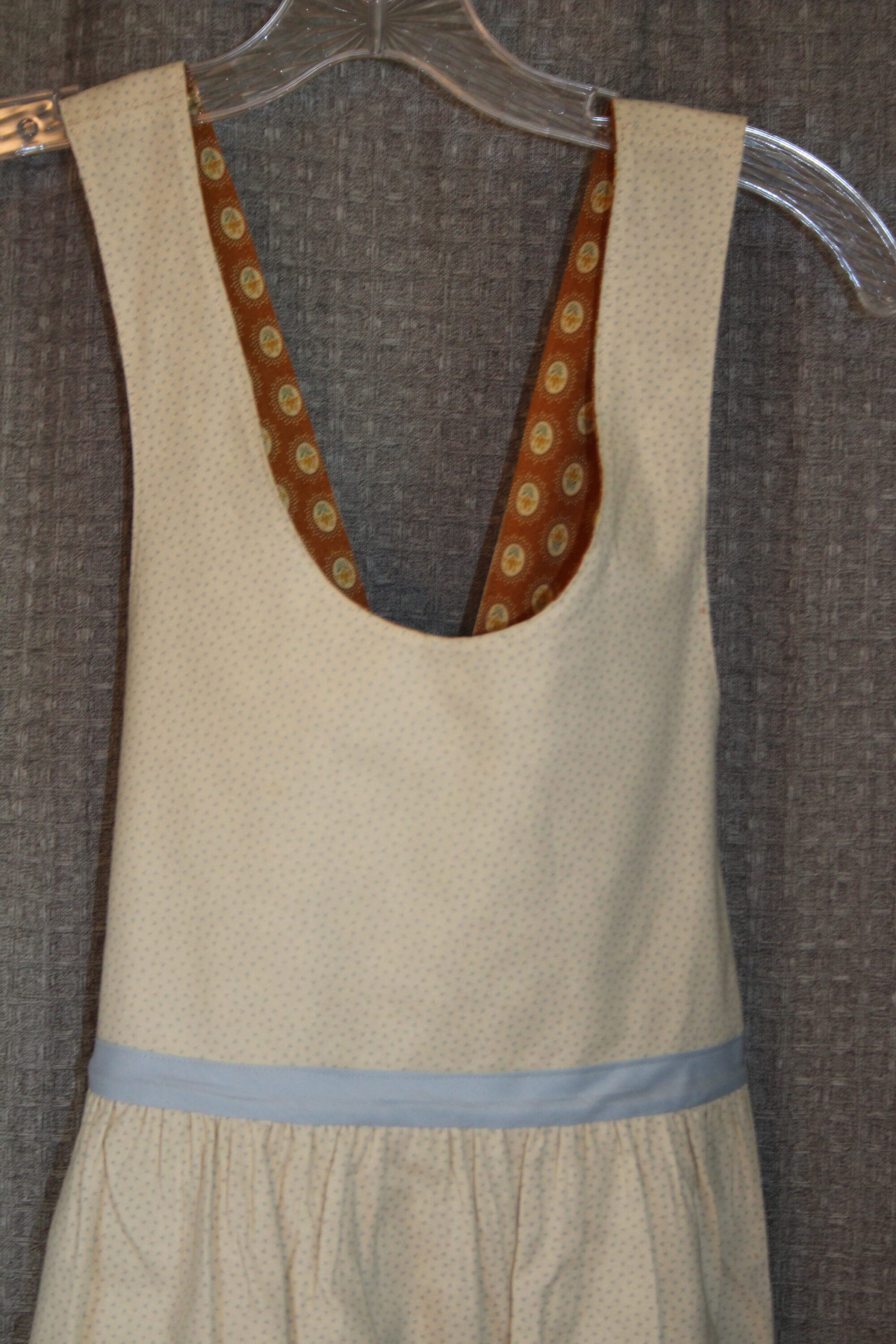
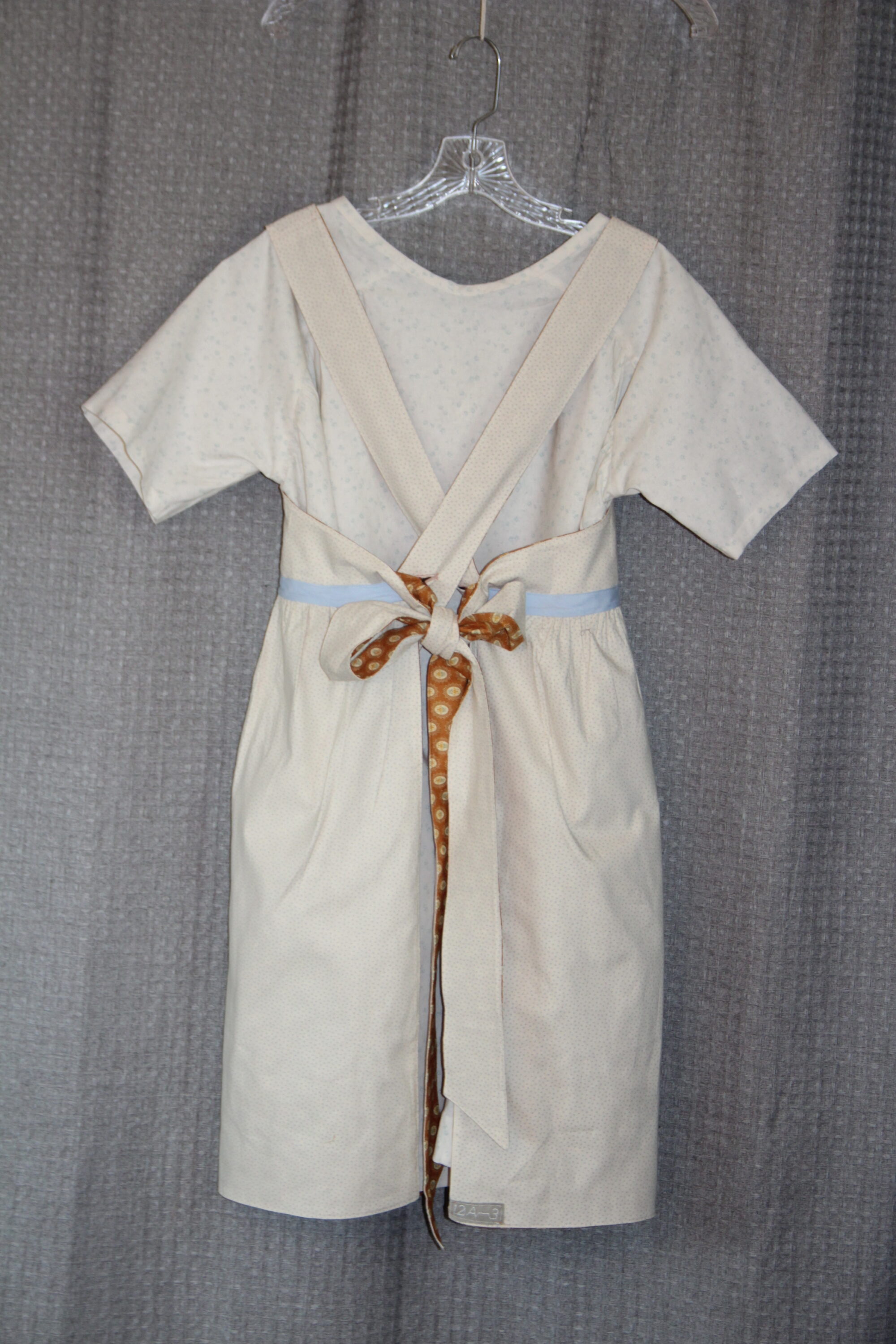
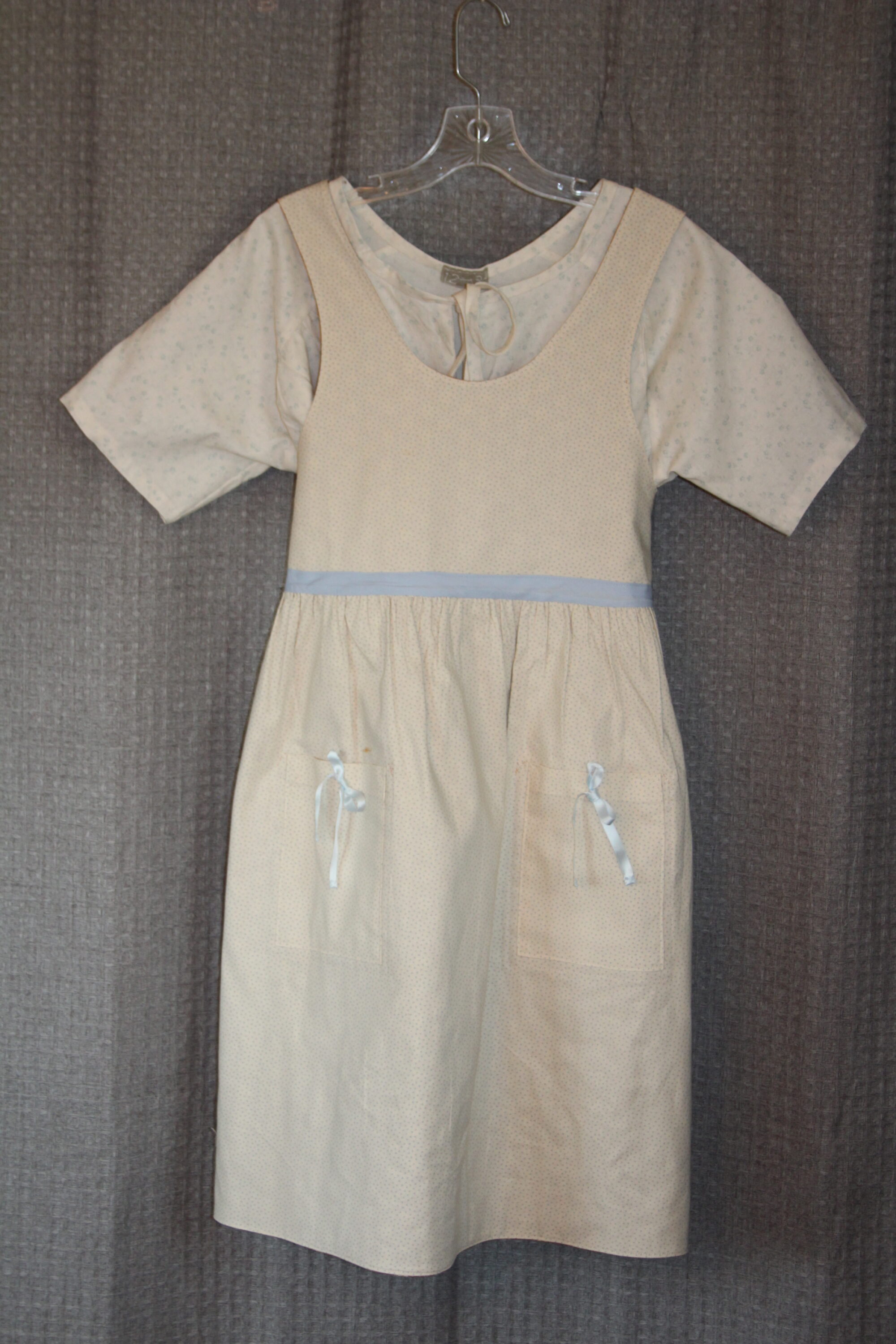
6A.1 (sz 6 “Dolly Dingle” little girl’s short and wide front and back reversible apron. Bright blue with tiny polka dots and butterscotch colored bias tape with huge wooden buttons and adjustable tabs for closing. Reverse side is light blue gingham. Mother of pearl highest quality brown buttons for closure. This is meant to go over 6.1 the ivory with blue dot short little girl’s dress, but customer has it so couldn’t be photographed. Model is wearing just an oversized modern t-shirt.)
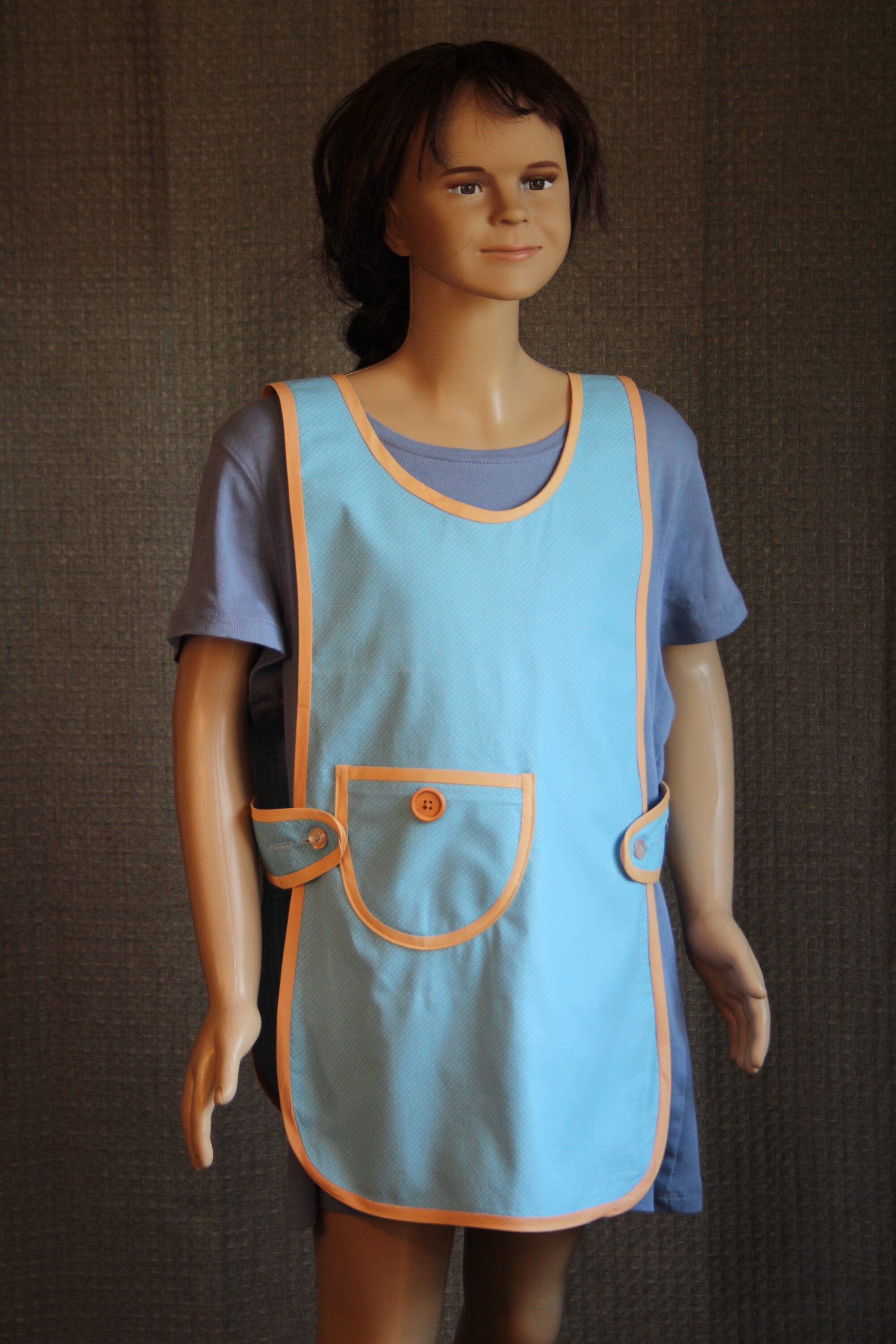
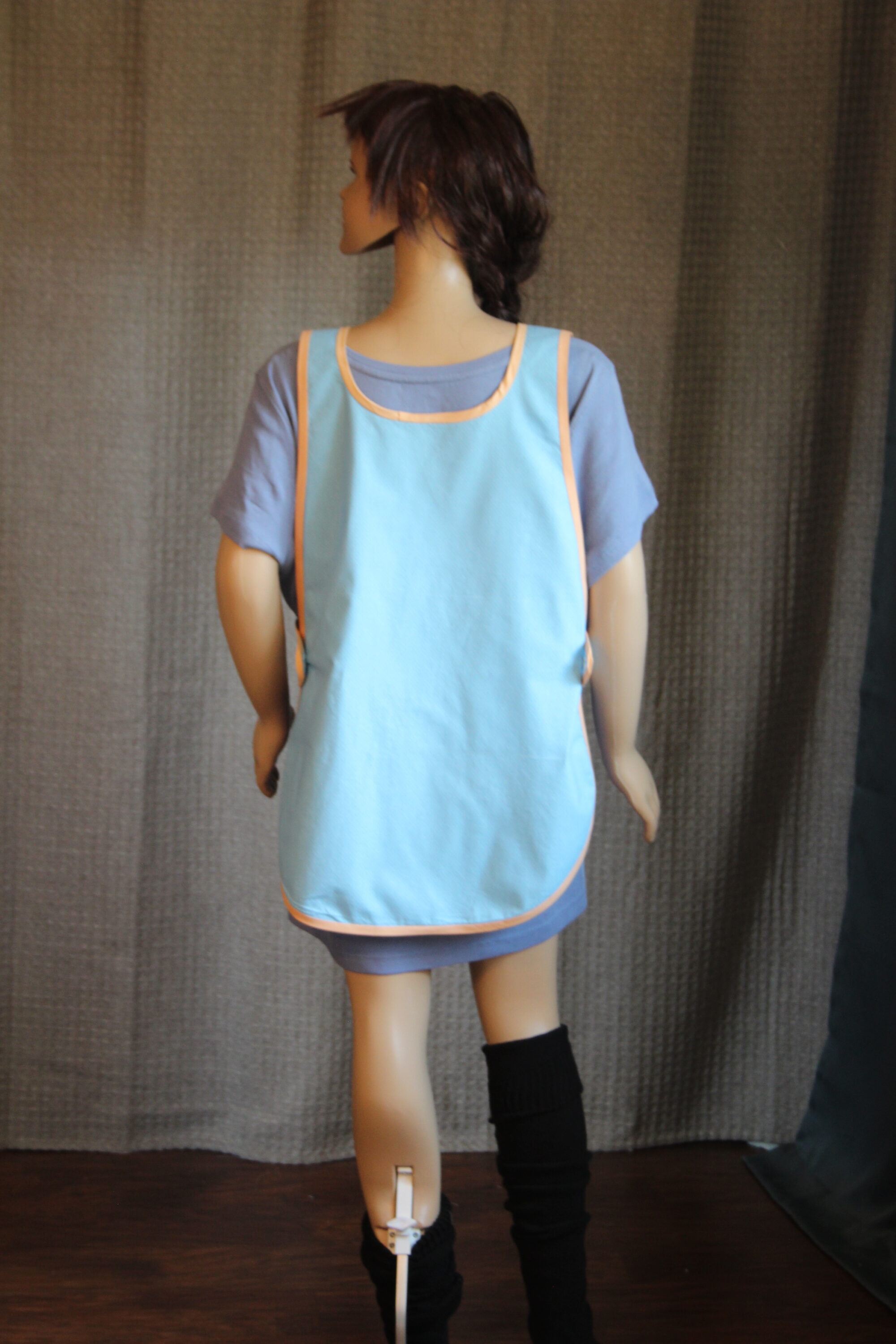
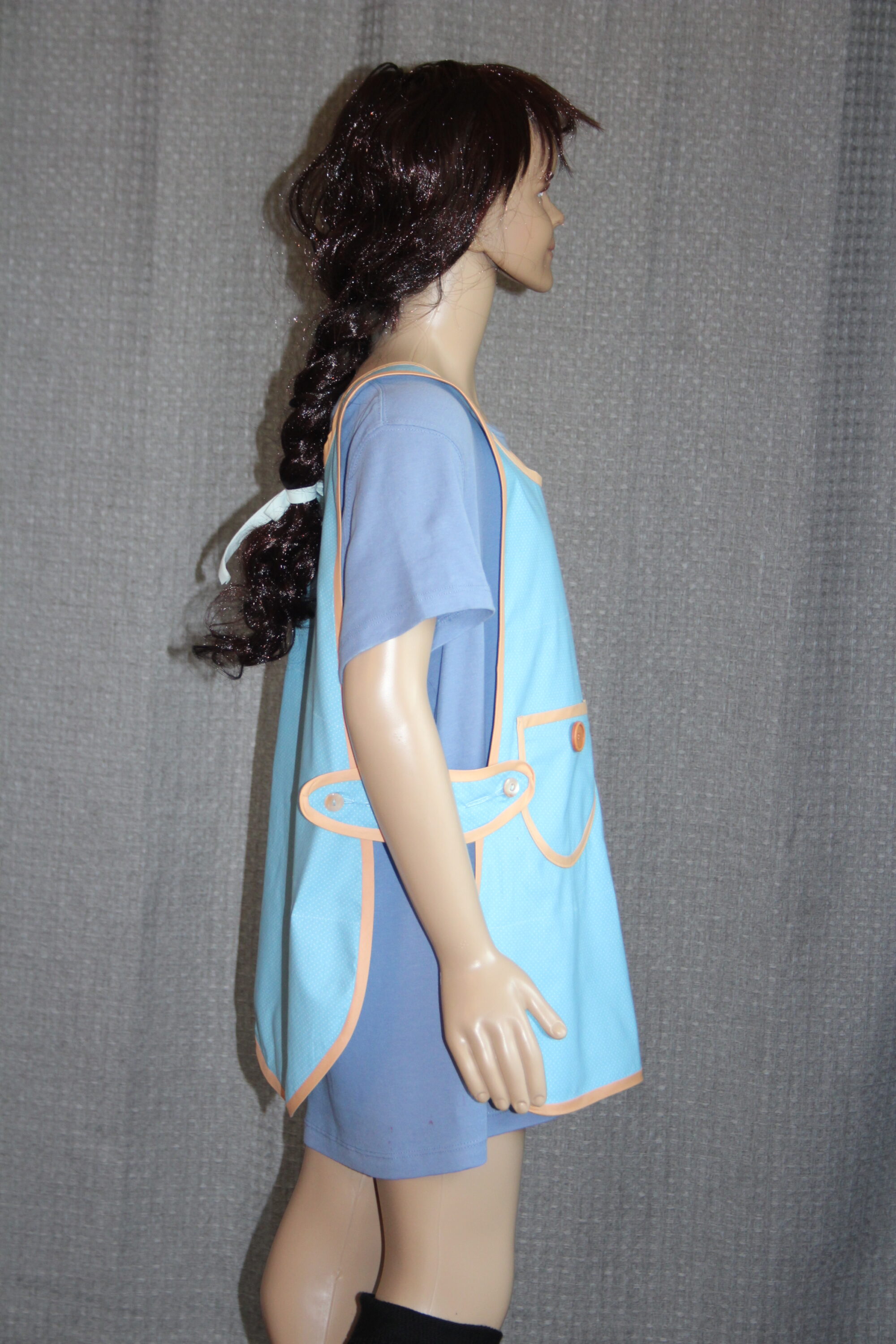
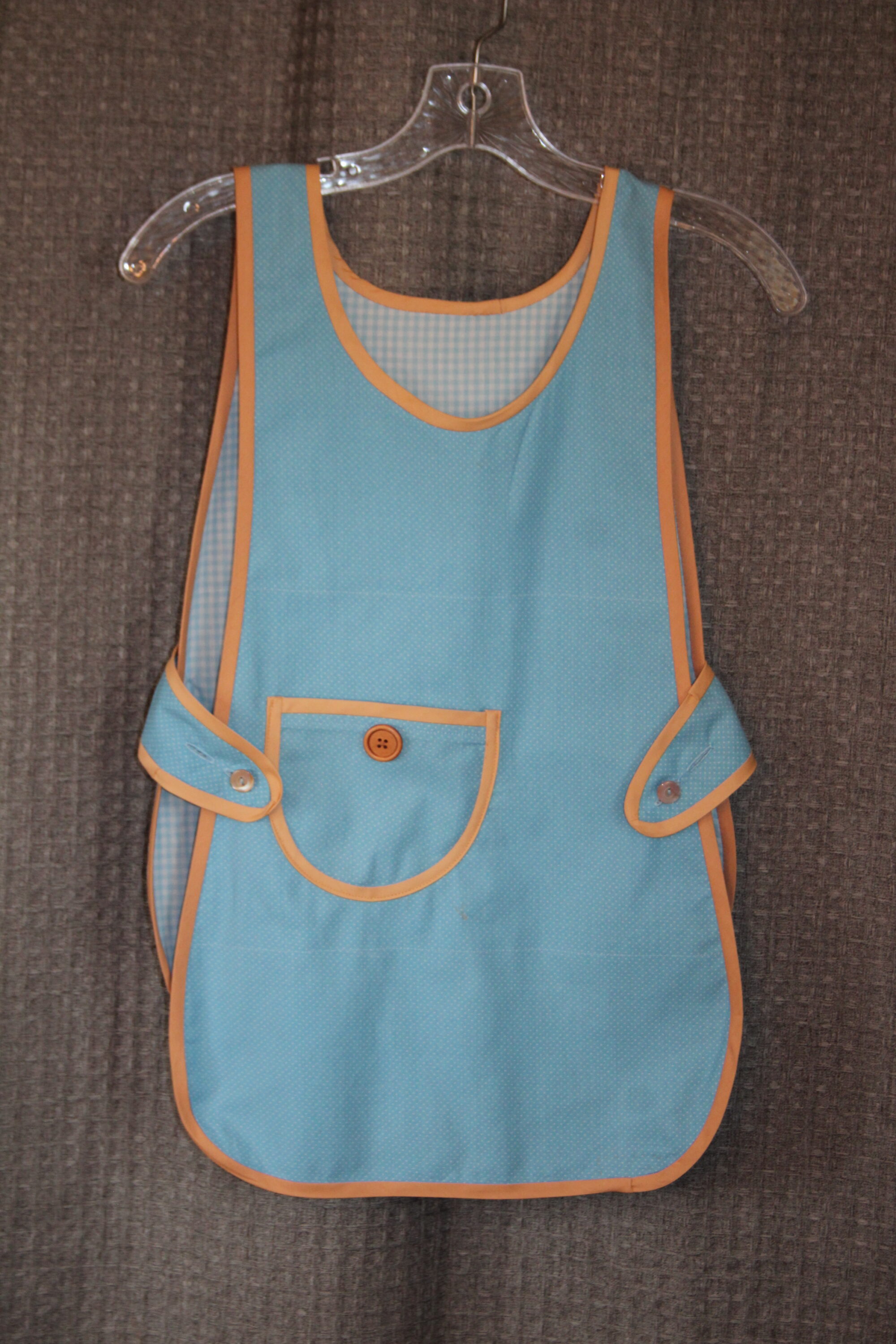
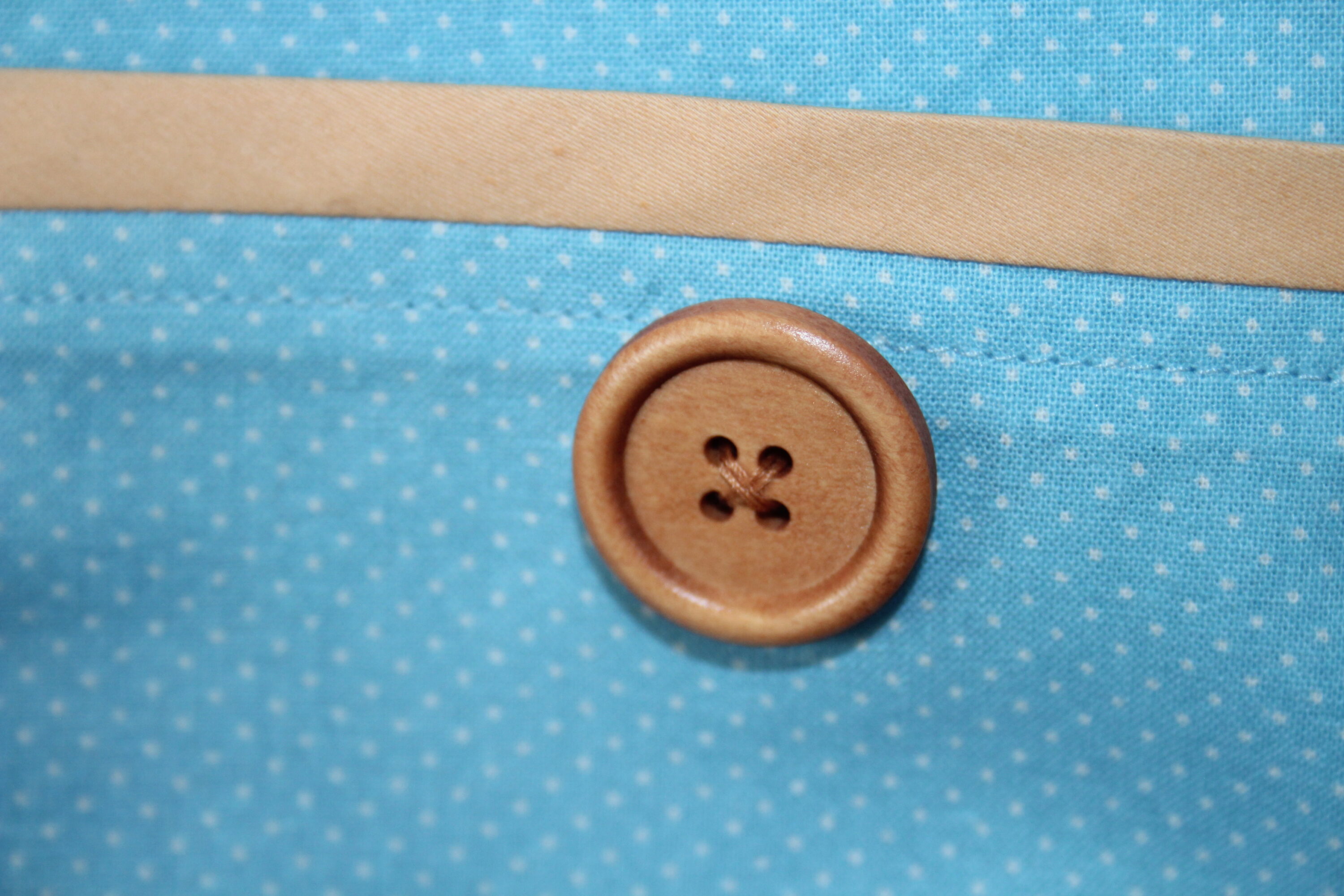

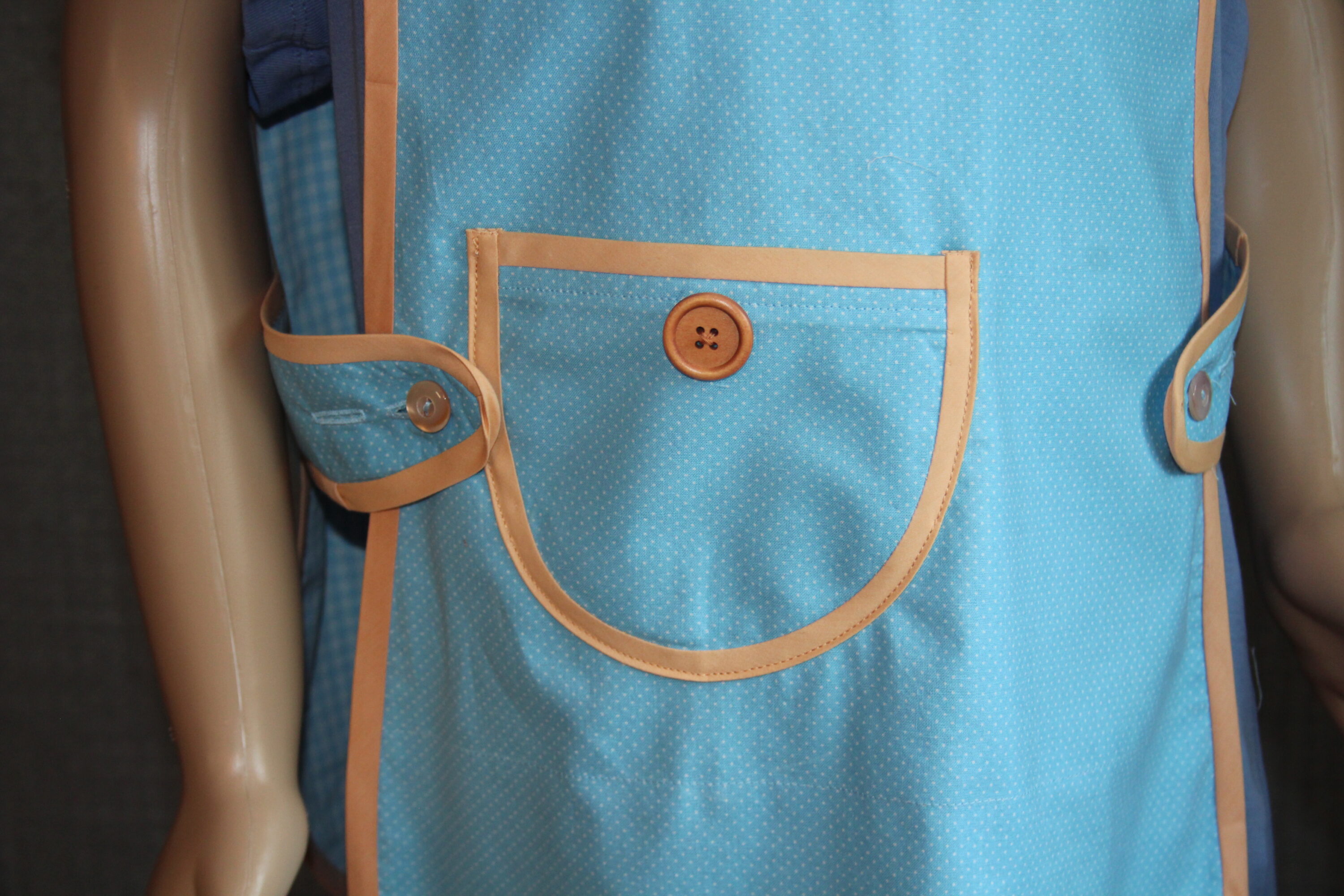
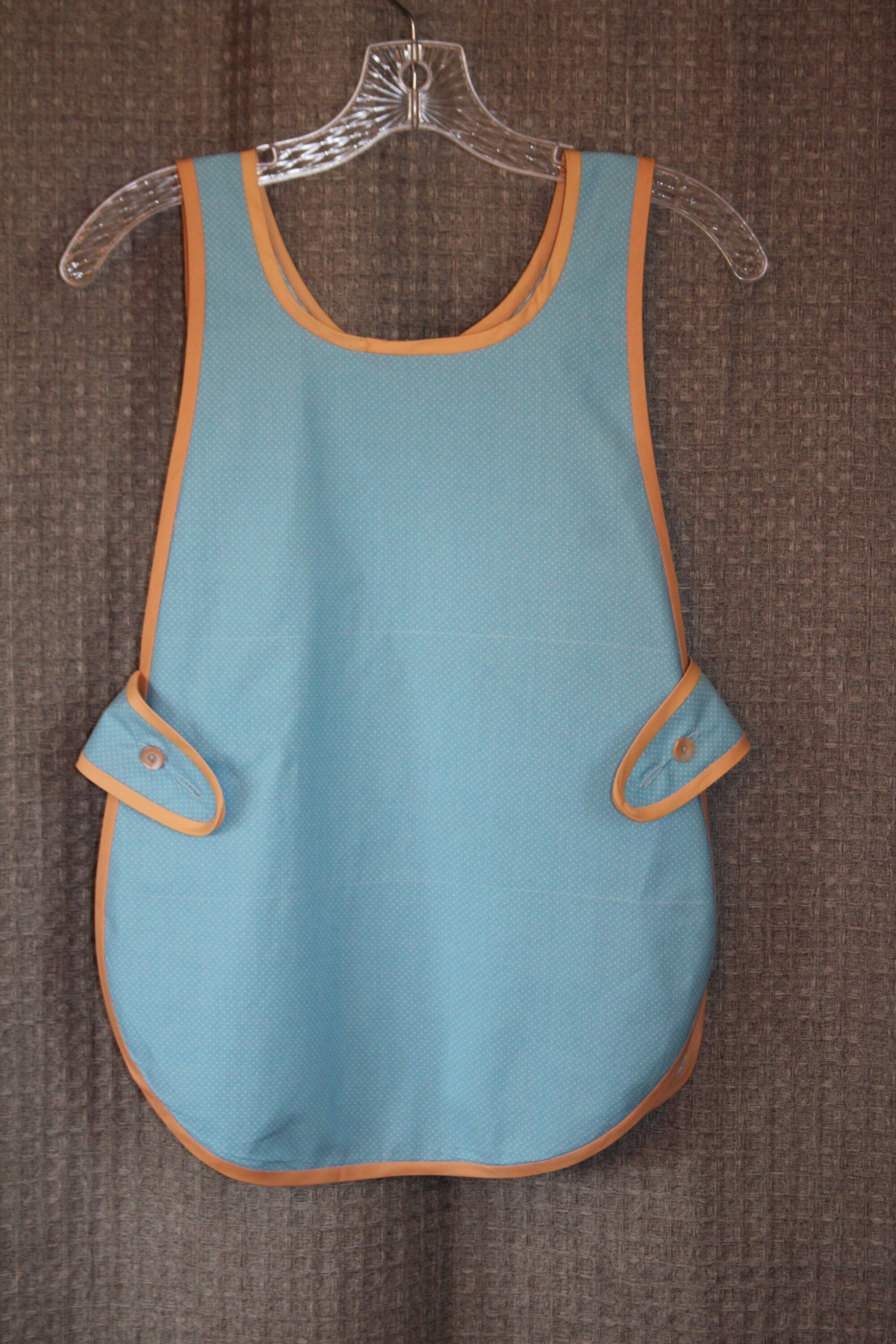
10A.4 (sz 10 woman’s long square neck silhouette, reversible dark blue flowers with brown dots to light beige gingham. Sized longer and narrower, with tabs set higher than the “Dingle” and little girl designs. This goes to the high calf to accommodate a woman’s dress design. Light gray linen bias tape is a bit stiffer than others and the pockets are stiffened to so they carry the weight of handmade grosgrain ribbon medallions with special mother of pearl shank buttons. They were big on medallions in women’s clothing of the ’20’s. There are multiple buttonholes, but it is narrower and not made to go over any specific dress. Again, the mannequin is just wearing a modern oversized t-shirt as we did not design a specific dress for this. There are 10 dresses and 14 aprons, so 4 aprons do not have coordinating dresses.)

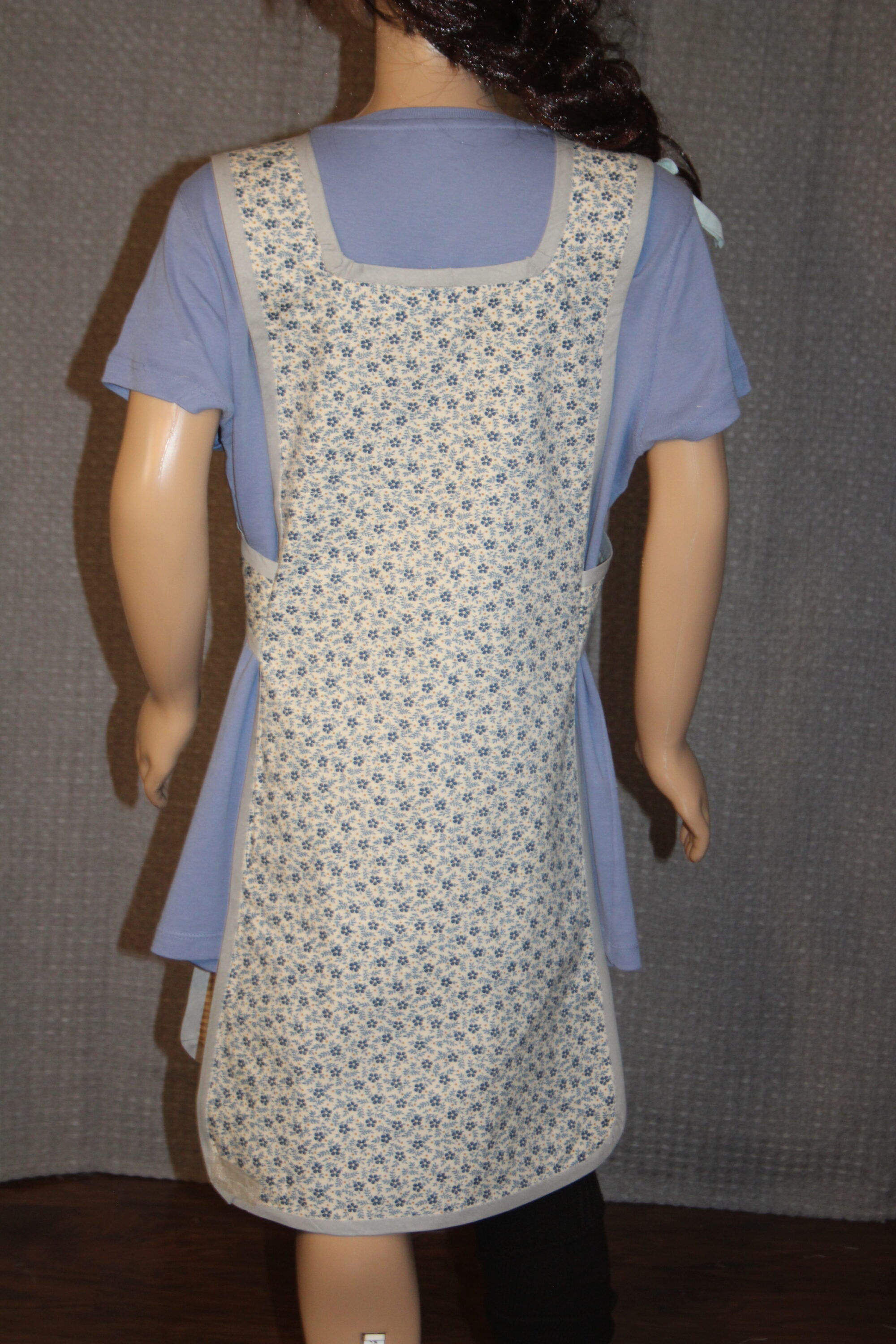
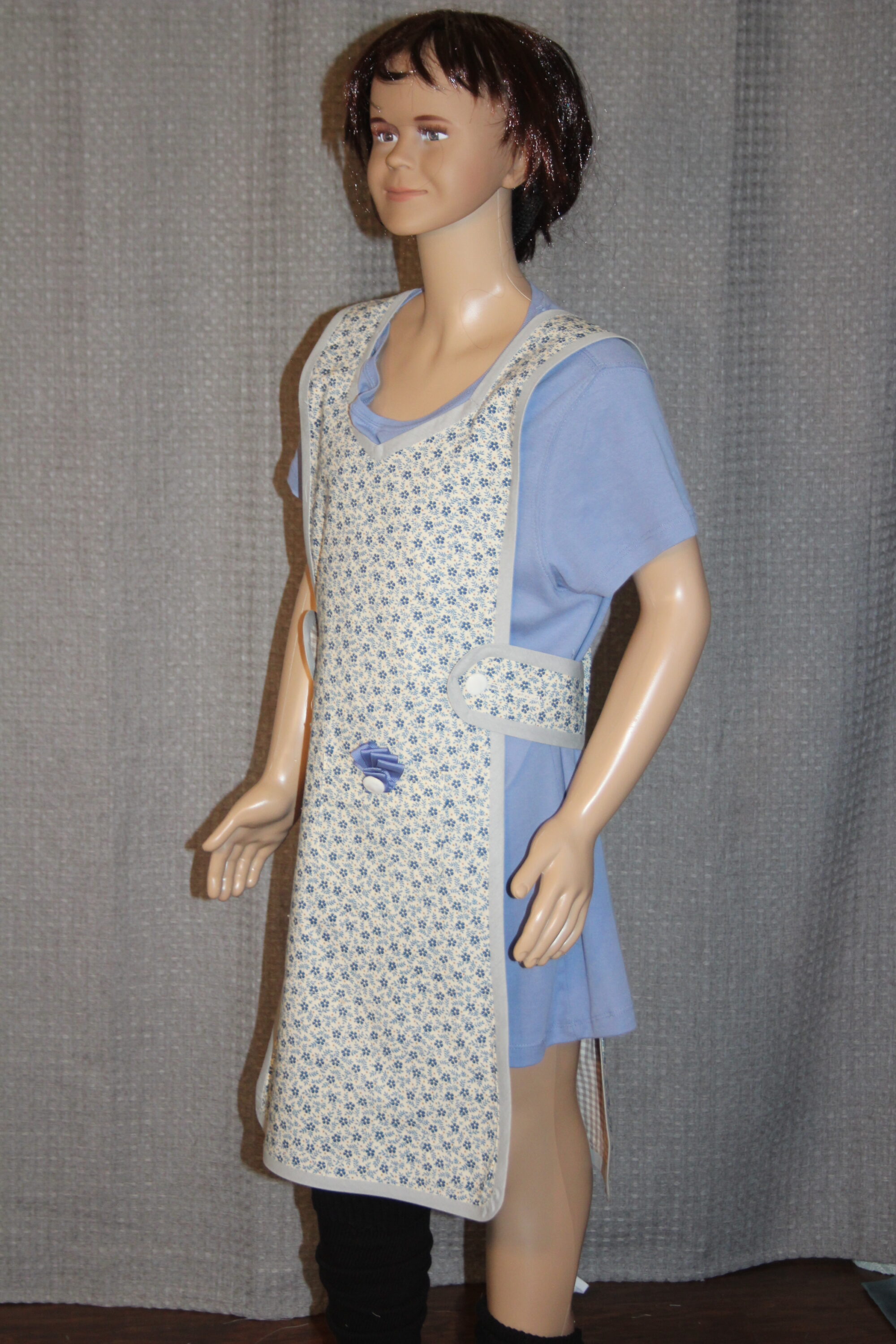
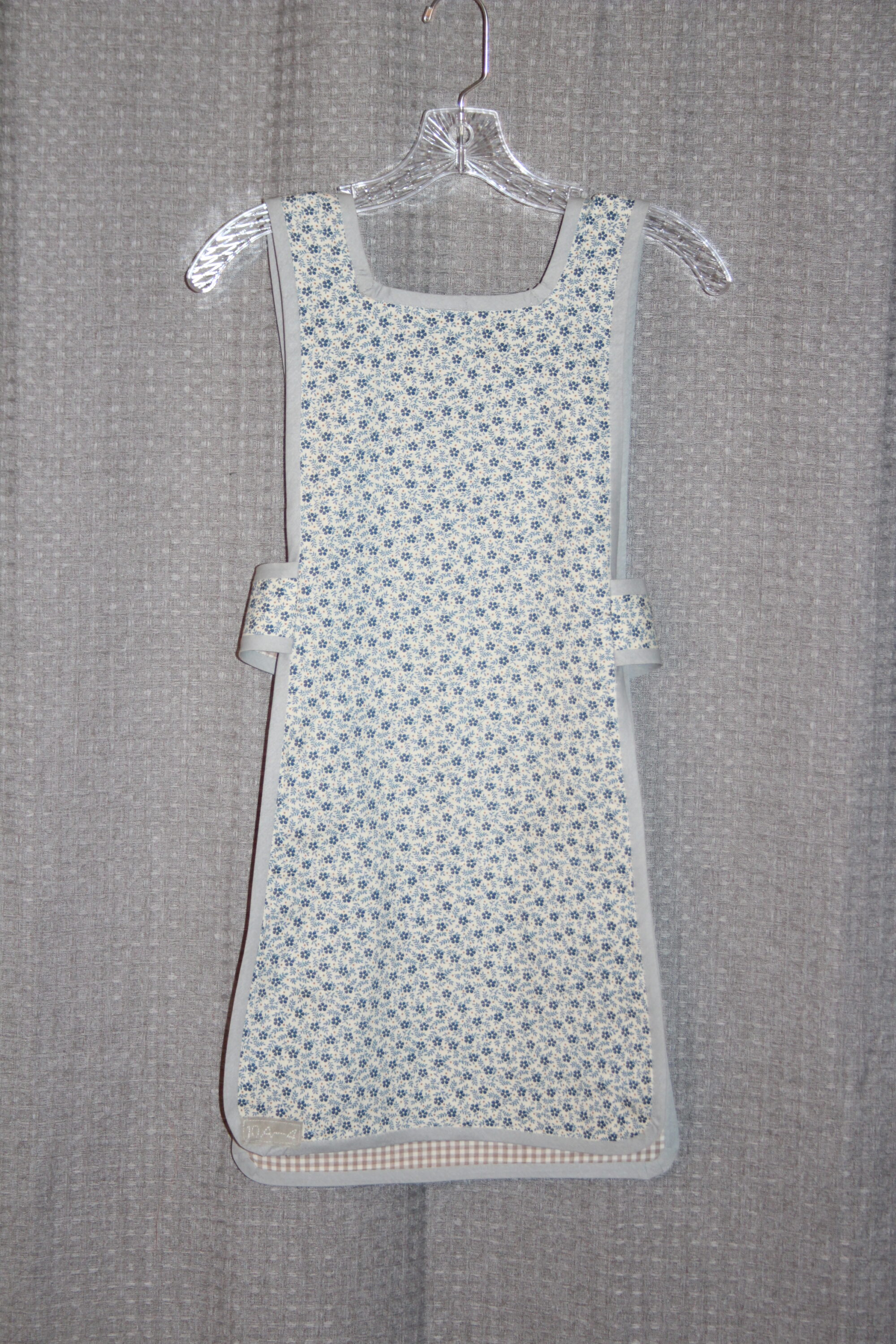
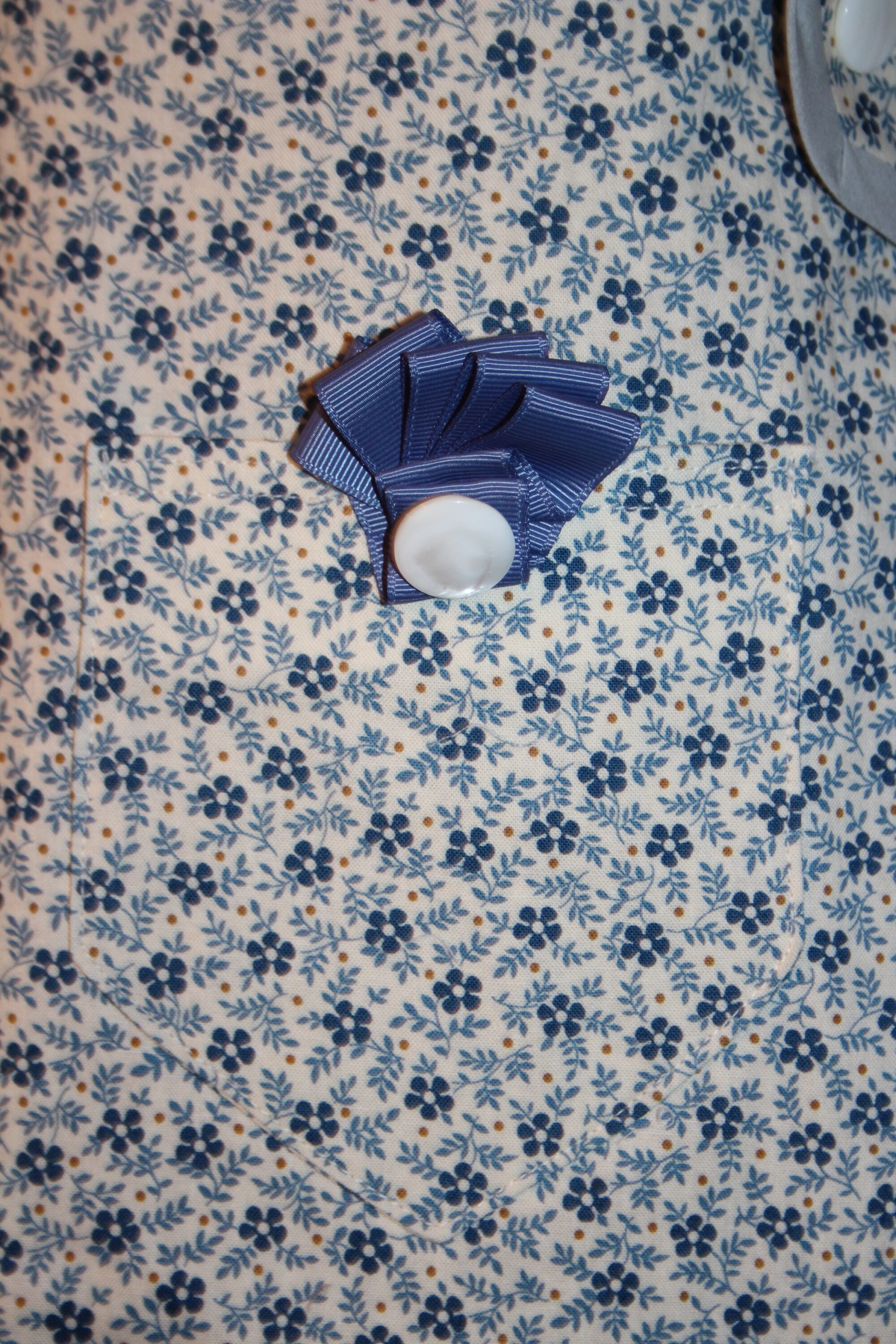
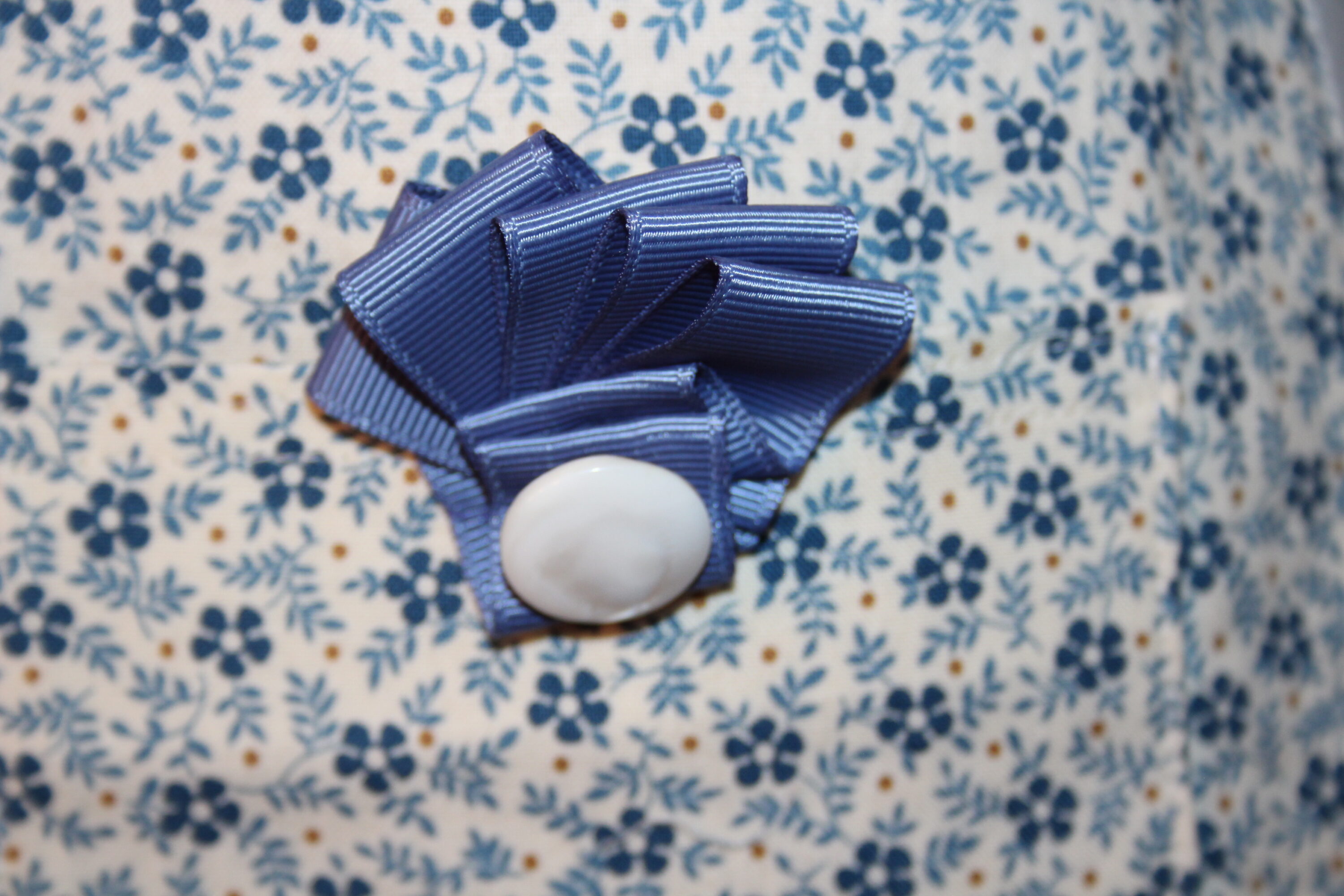
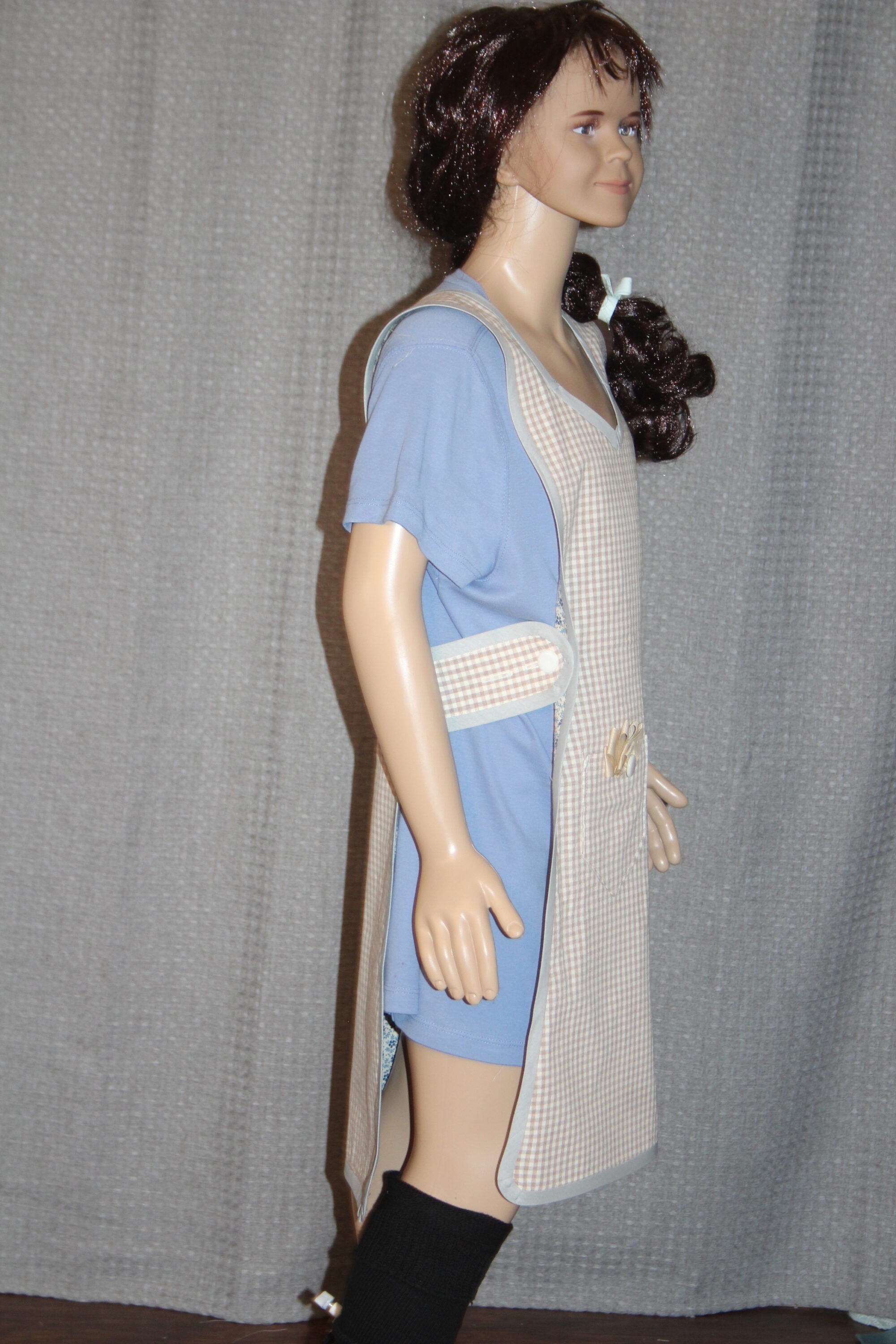
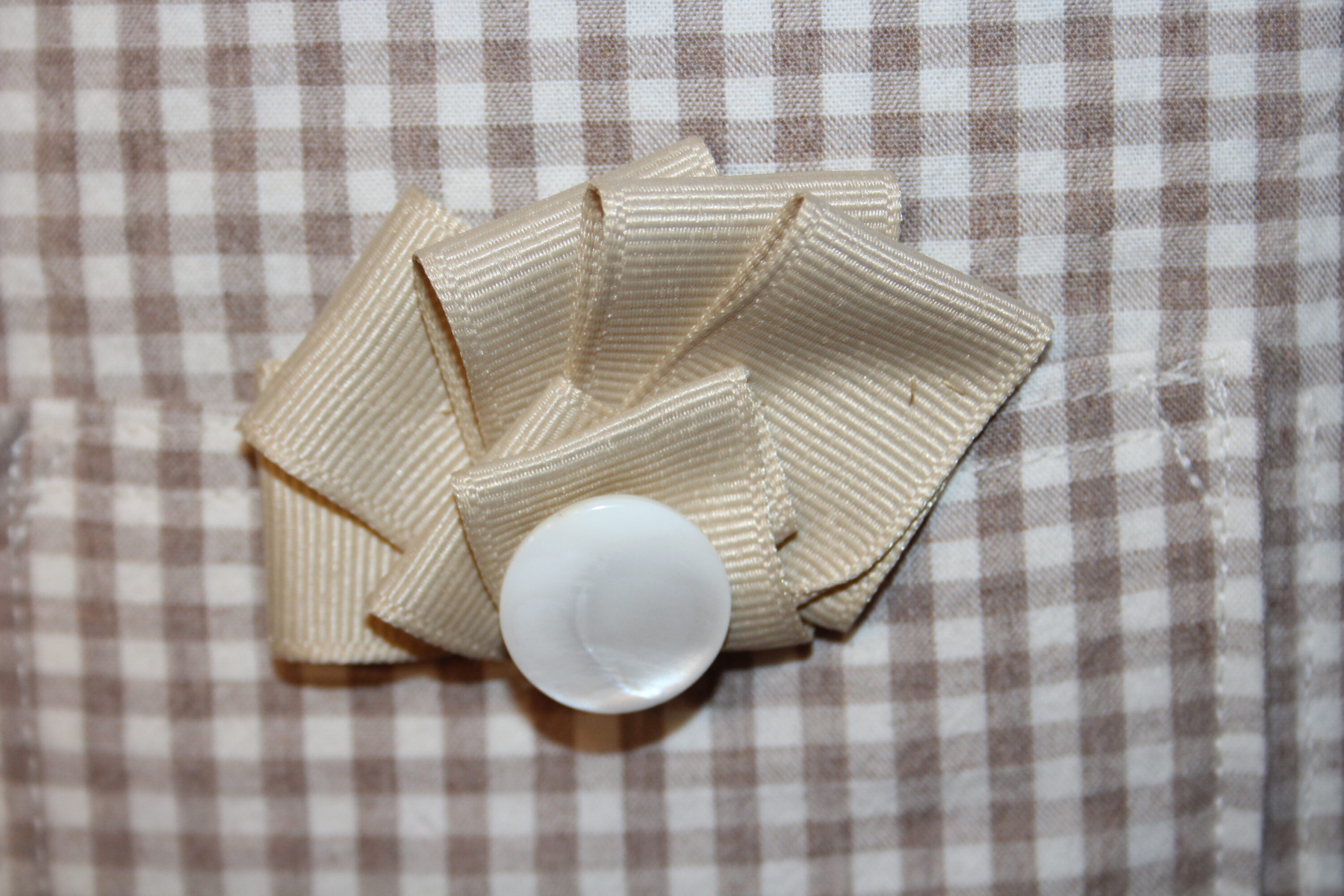
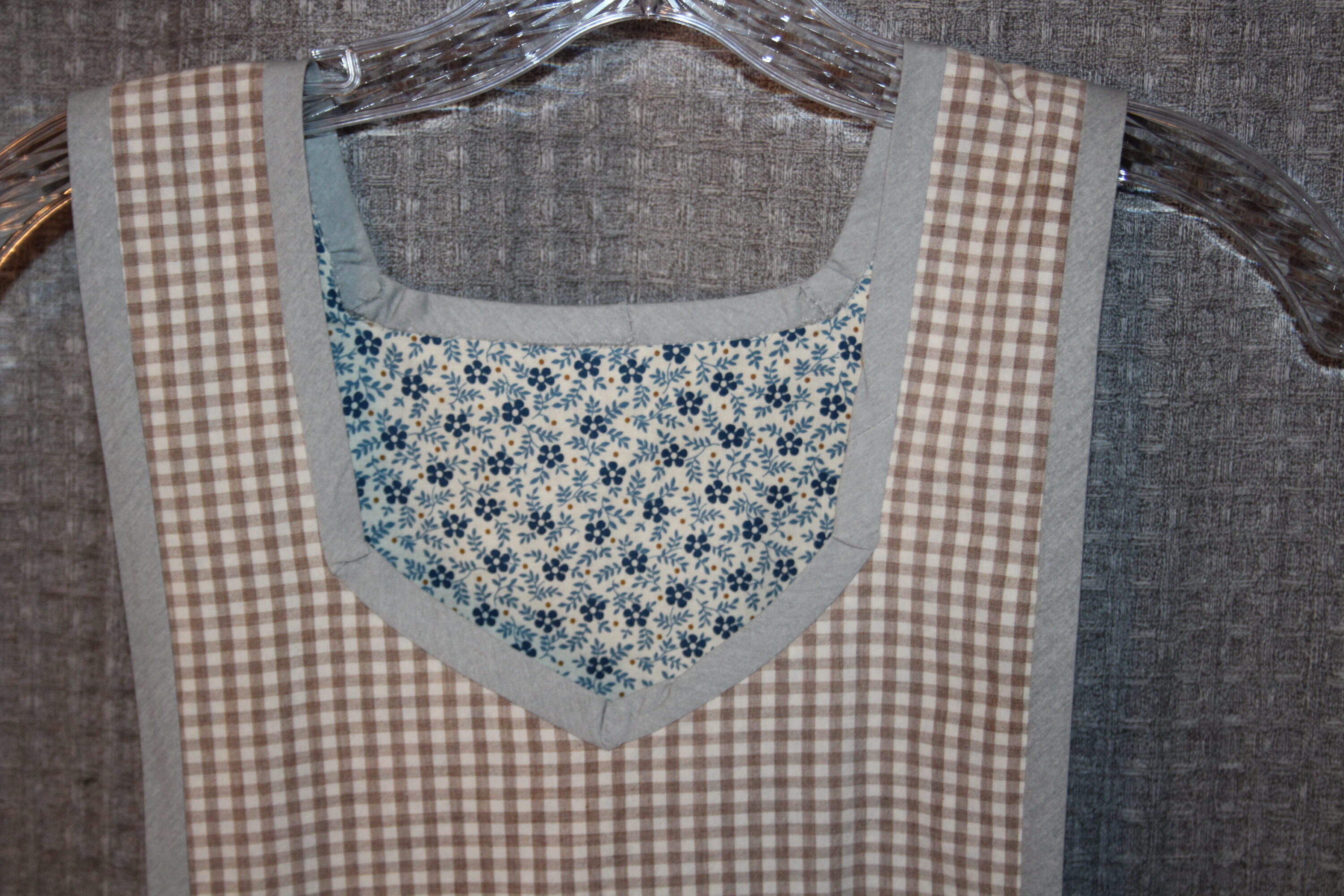
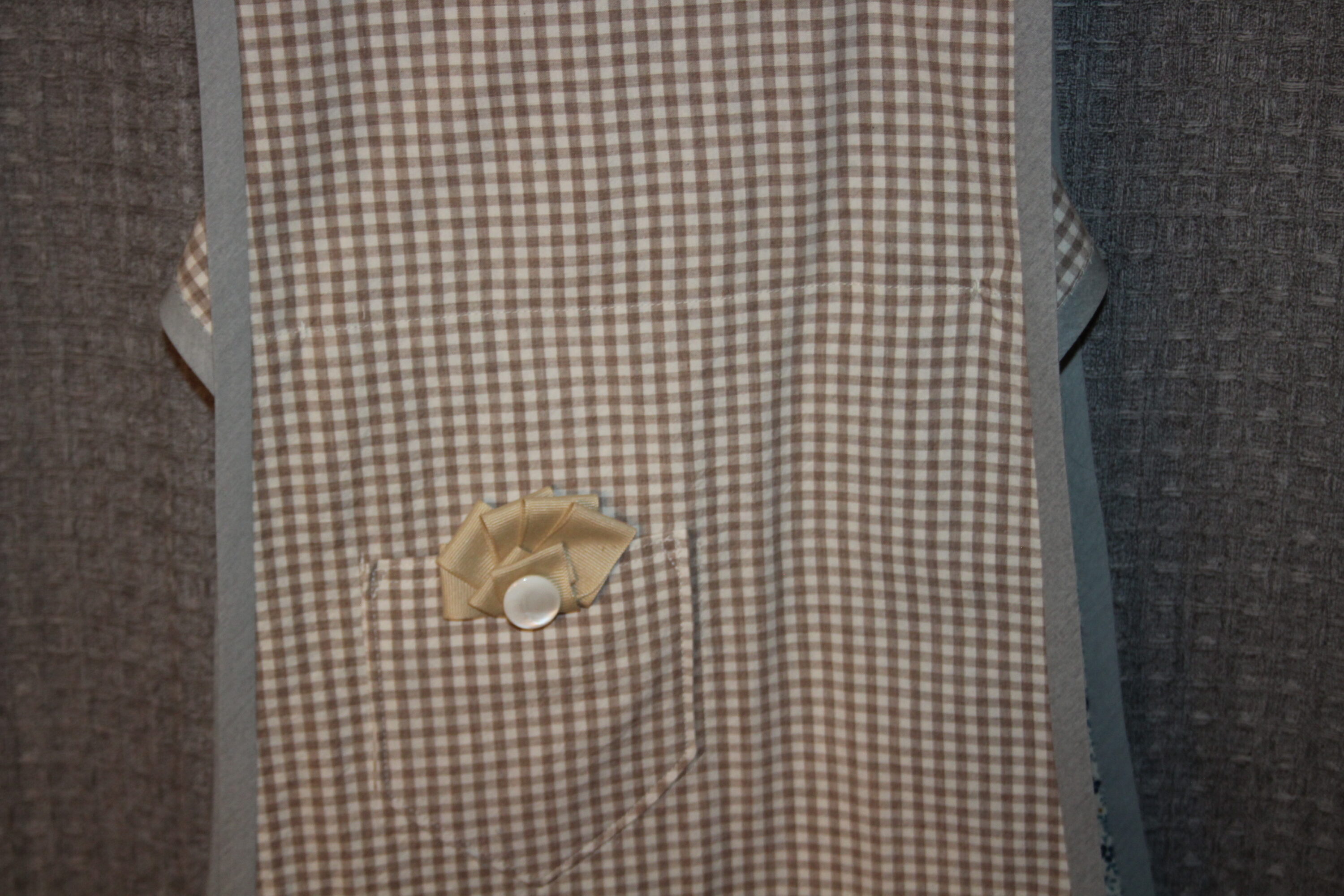
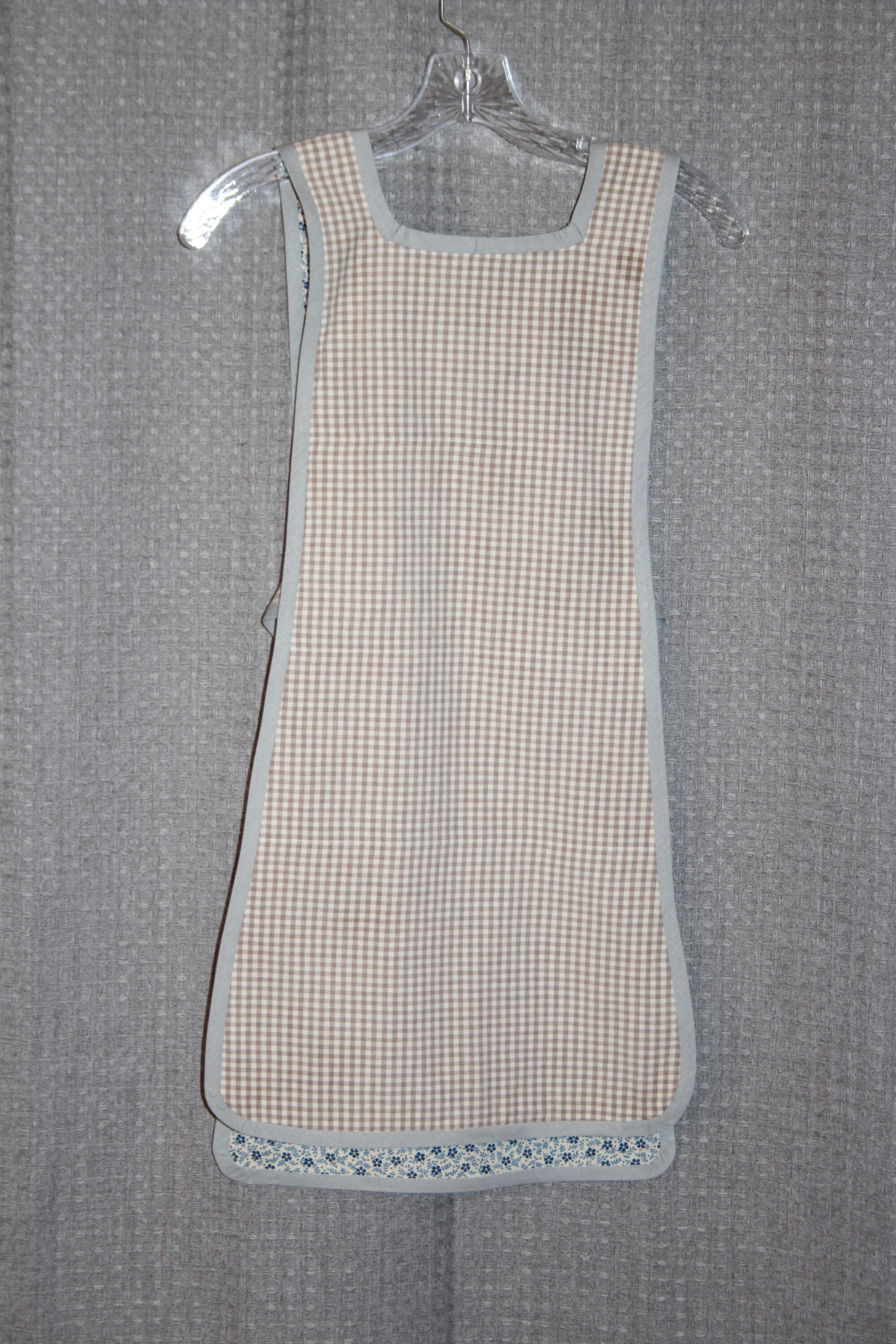
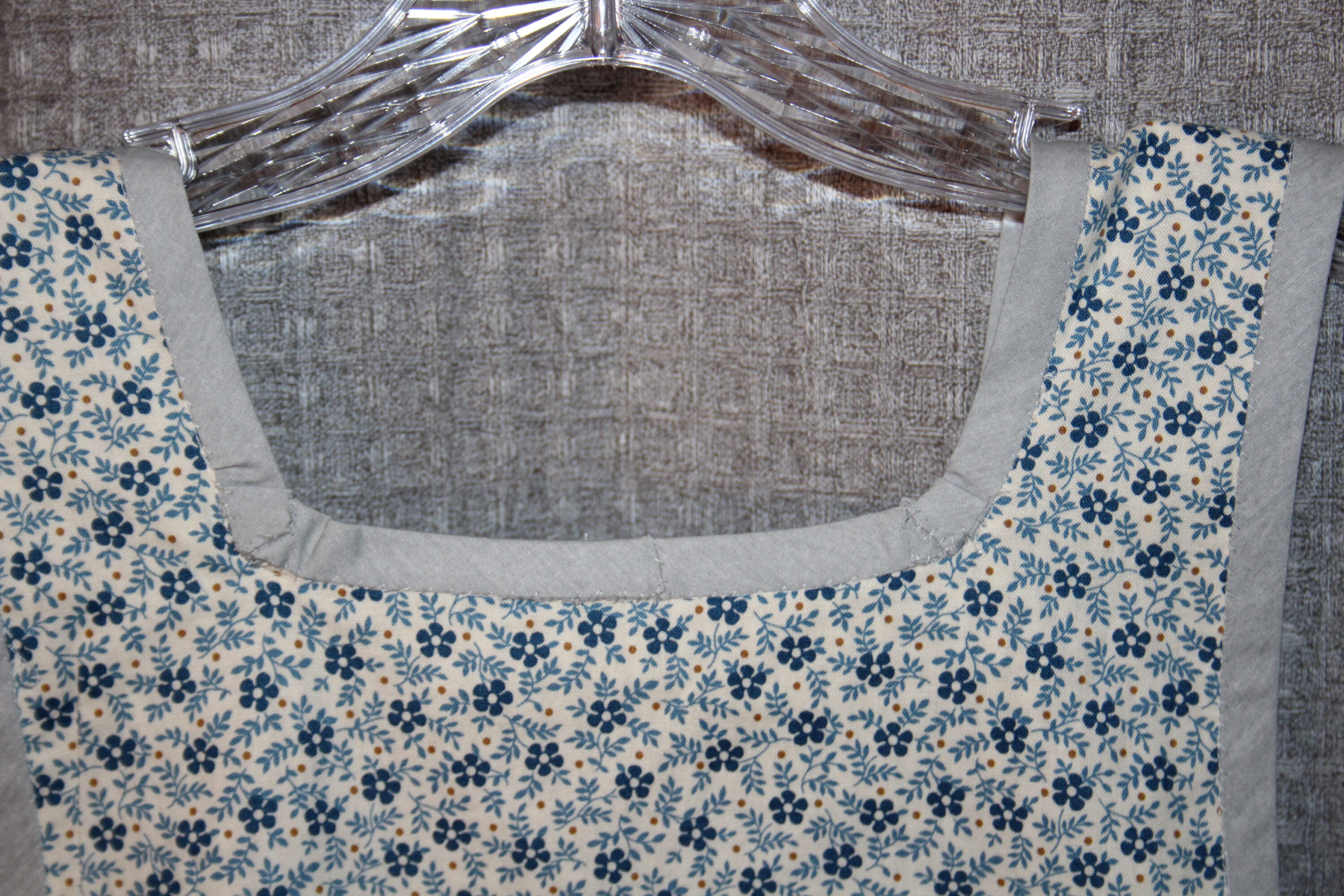
12A.1 (size 12 reversible tiny 1/8″ medallions on green and gold with gold on gold back side. This is the Downton “scoop neck” woman’s design with the big bow tie in the back. Gold metal military buttons are on the olive/gold side, while quality 7/8″ brown real mother of pearl buttons are on the gold side. This one features a wide bias waistband of self-fabric and a full skirt). Note the model is a size 8, so this size 12 is much too large for her, especially at the waist. The bow will be much prettier on the correct sized person.
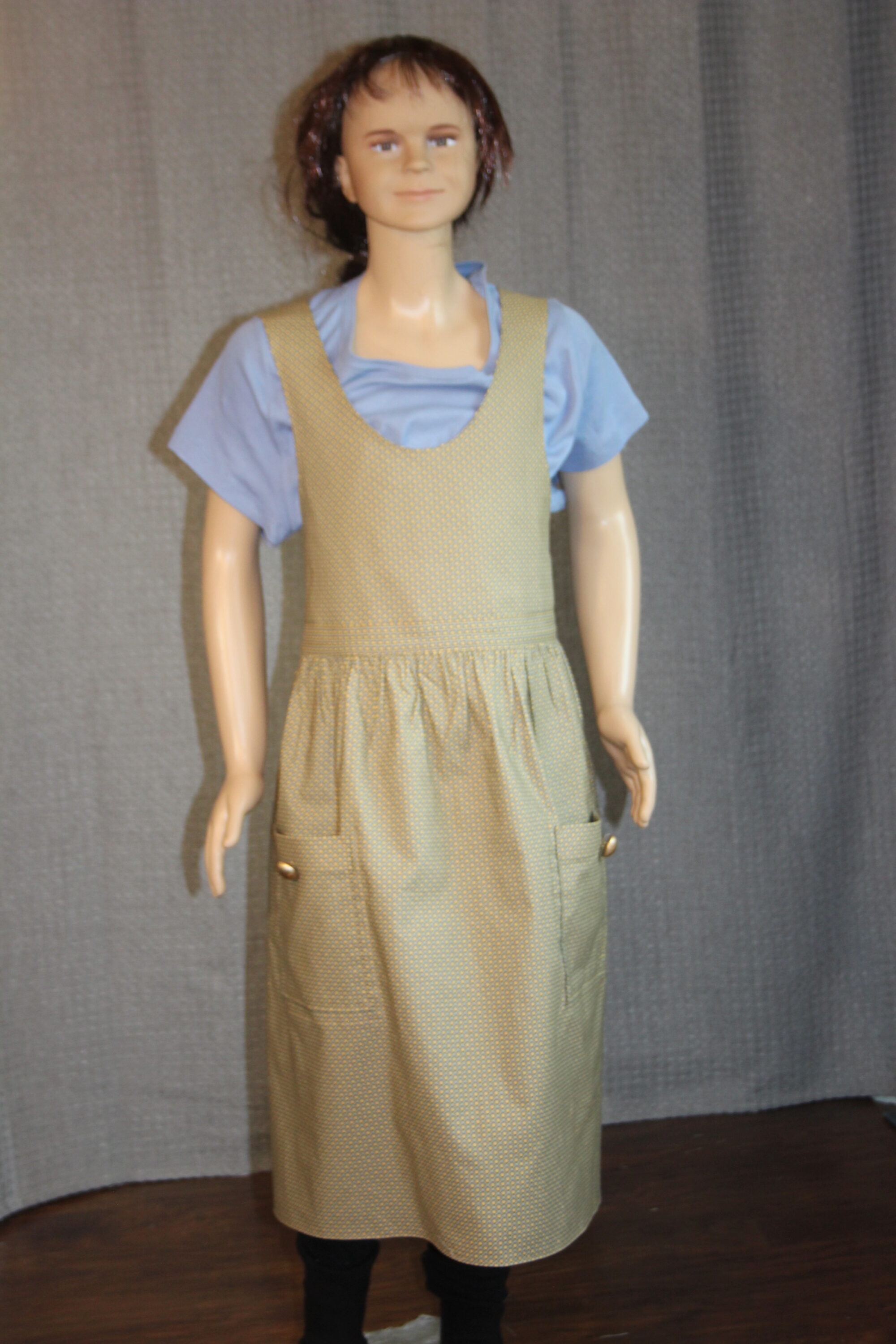
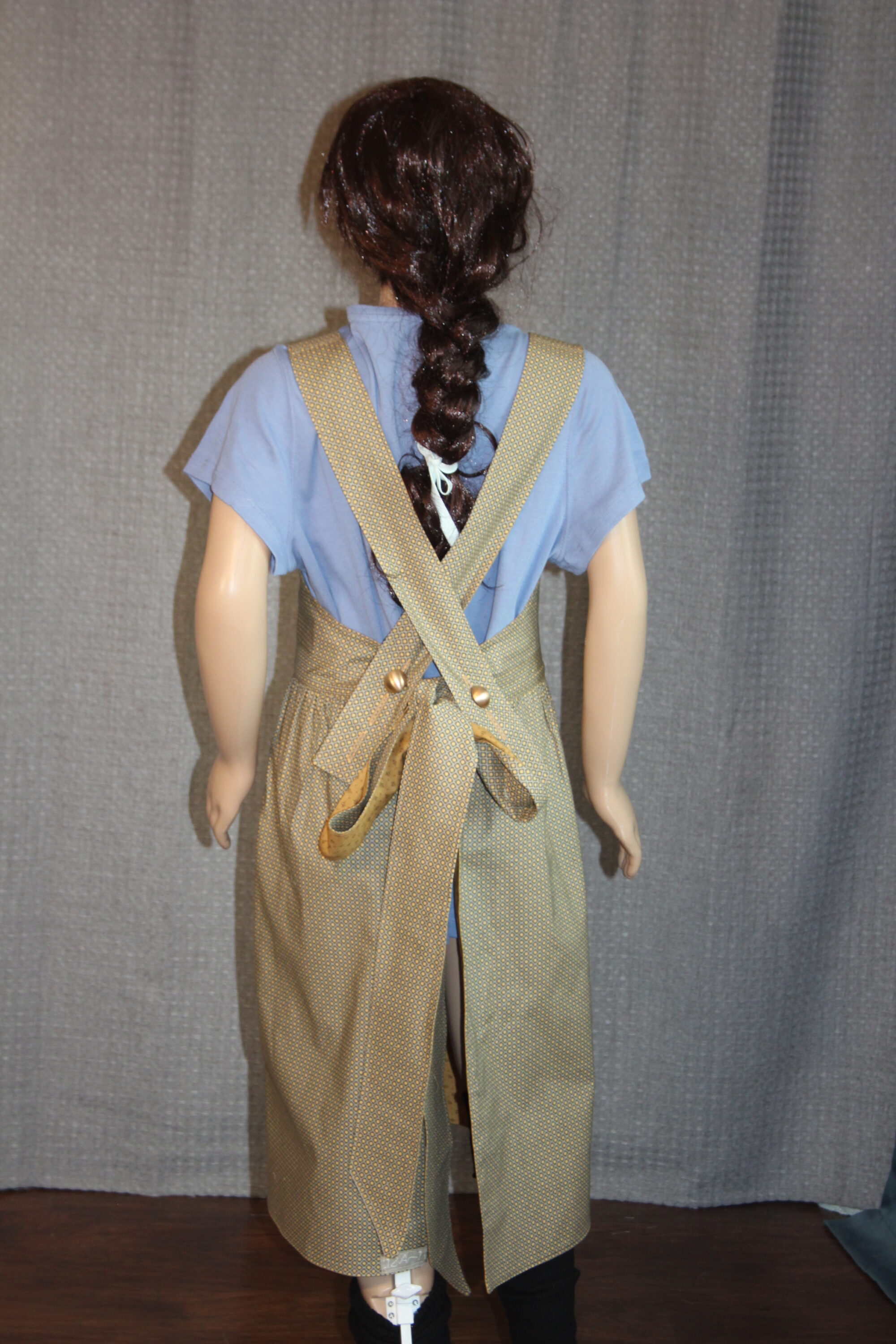
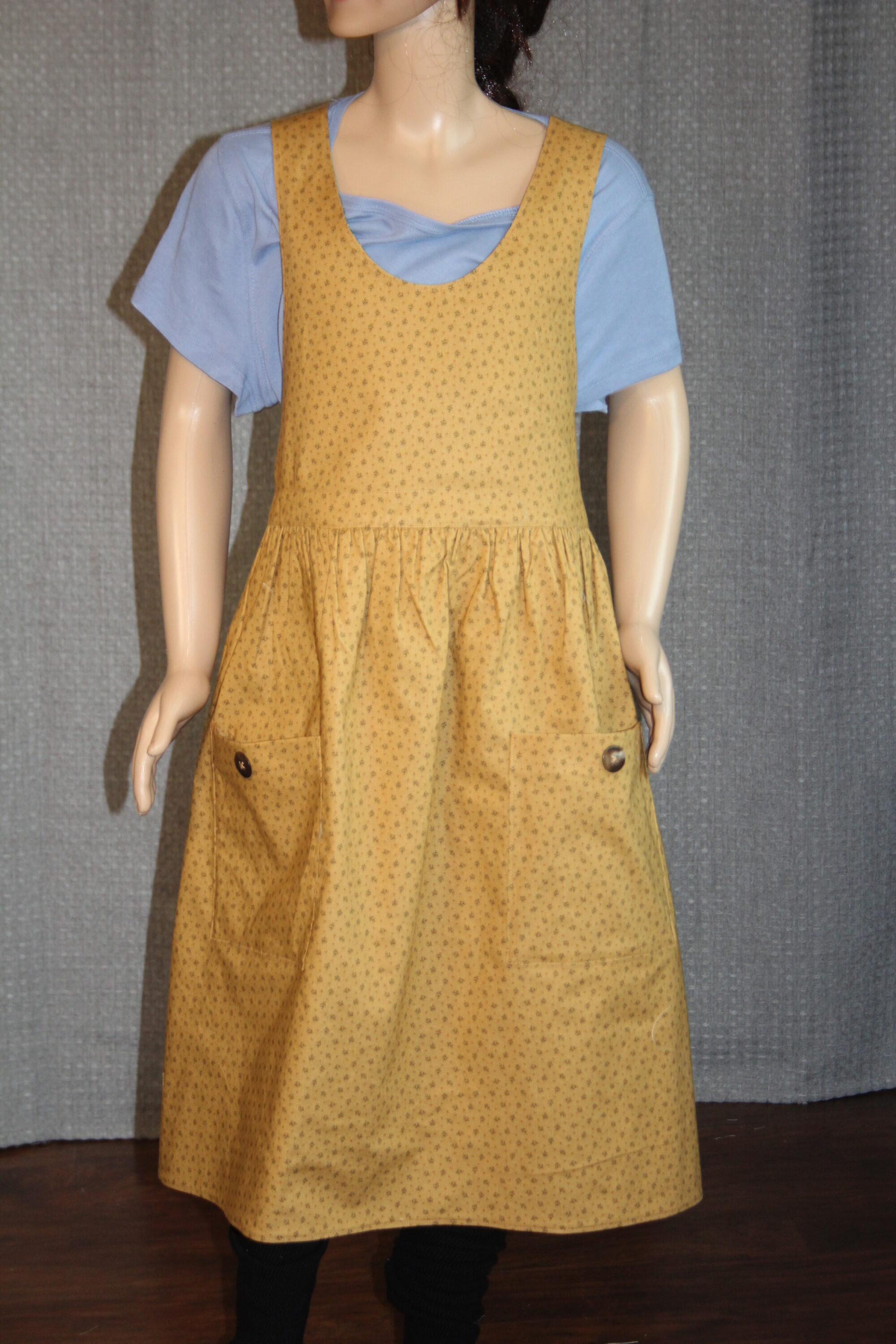
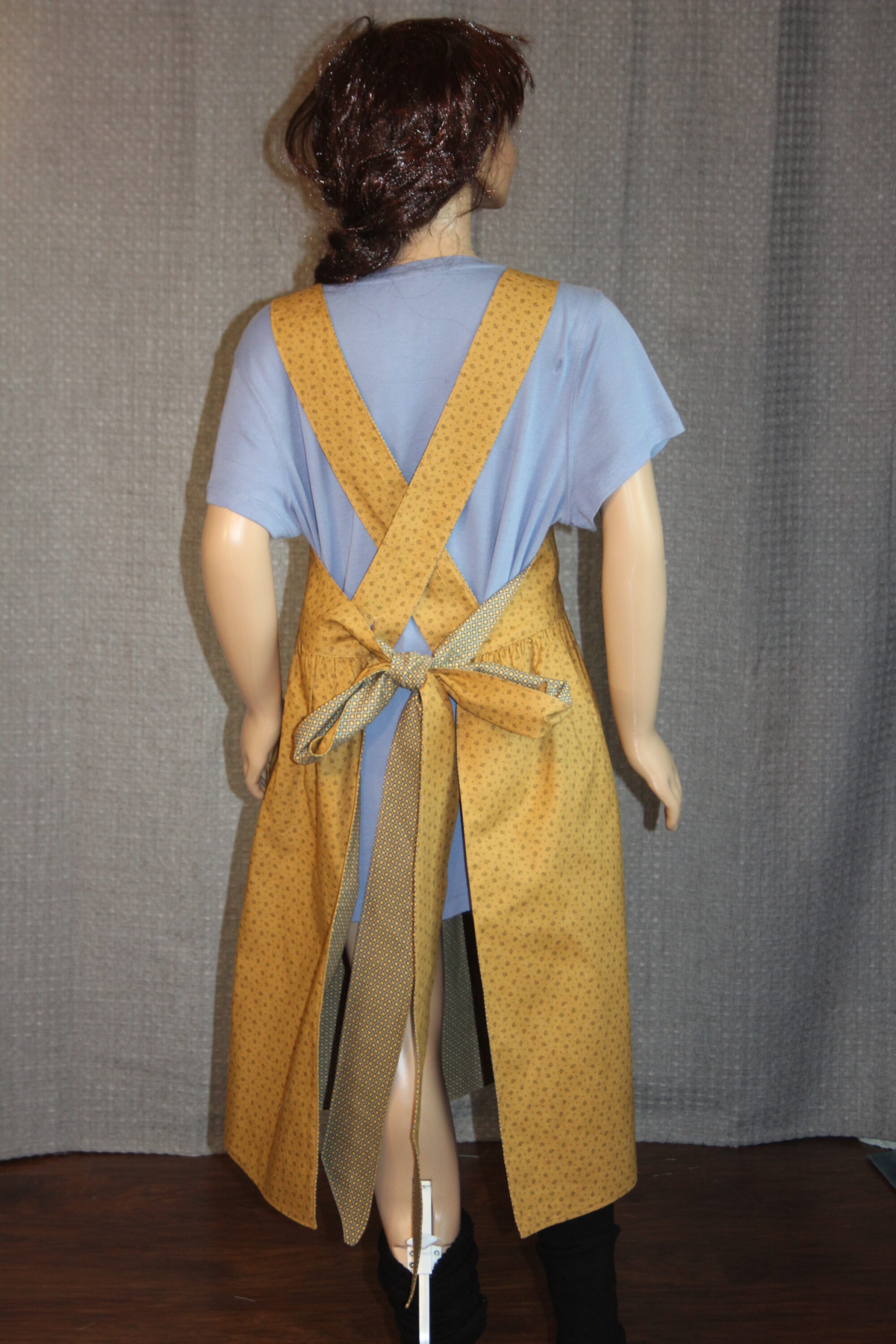
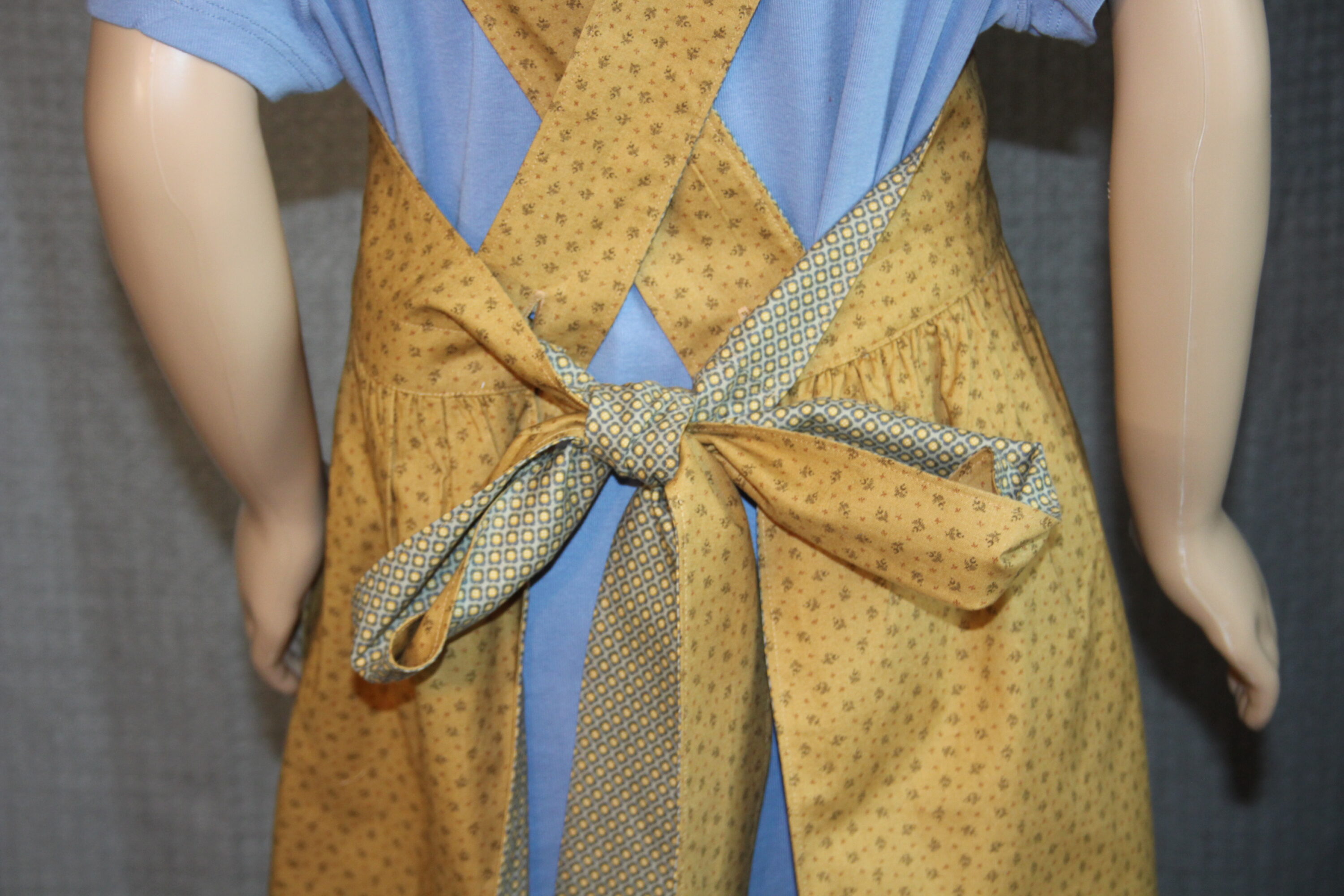
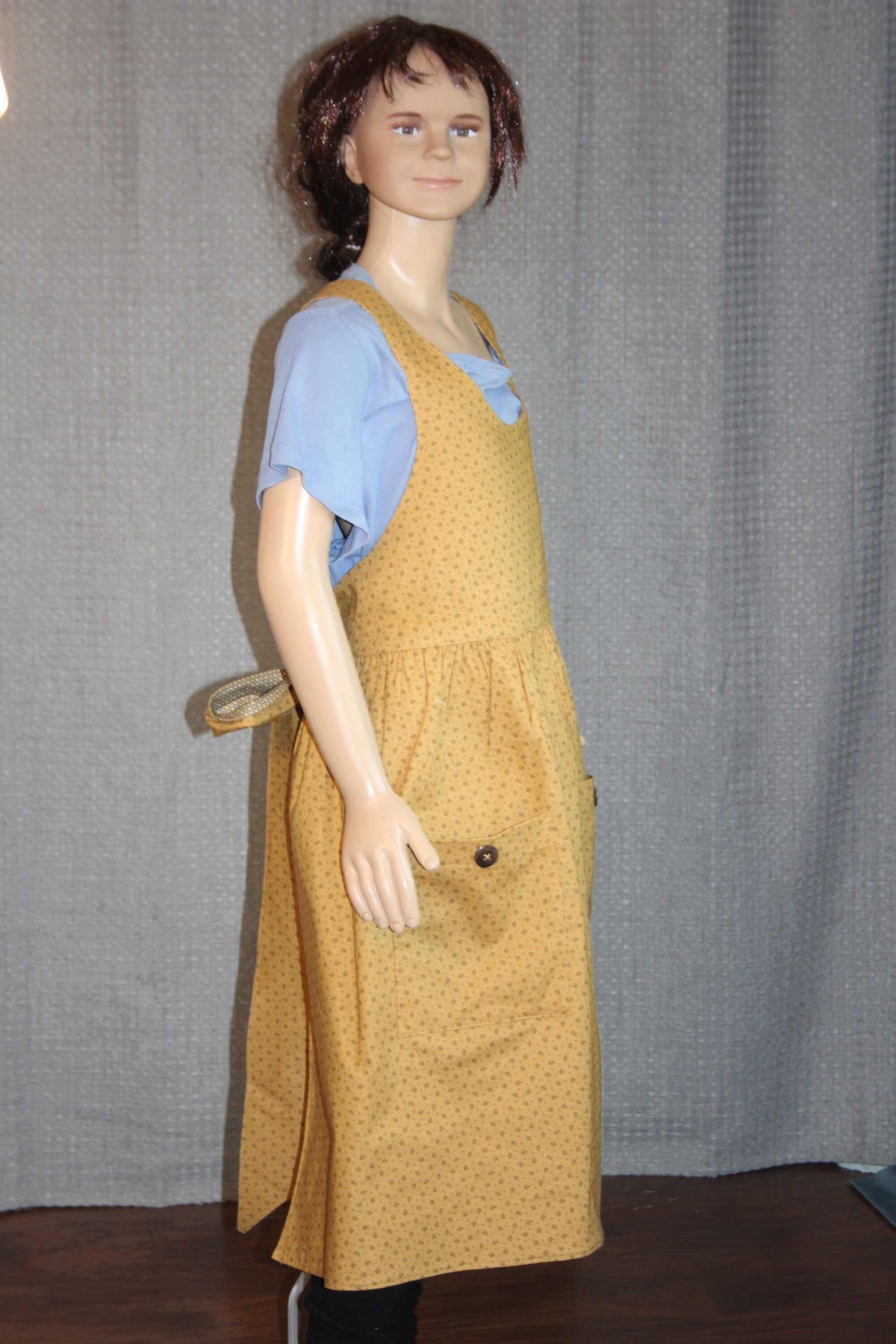
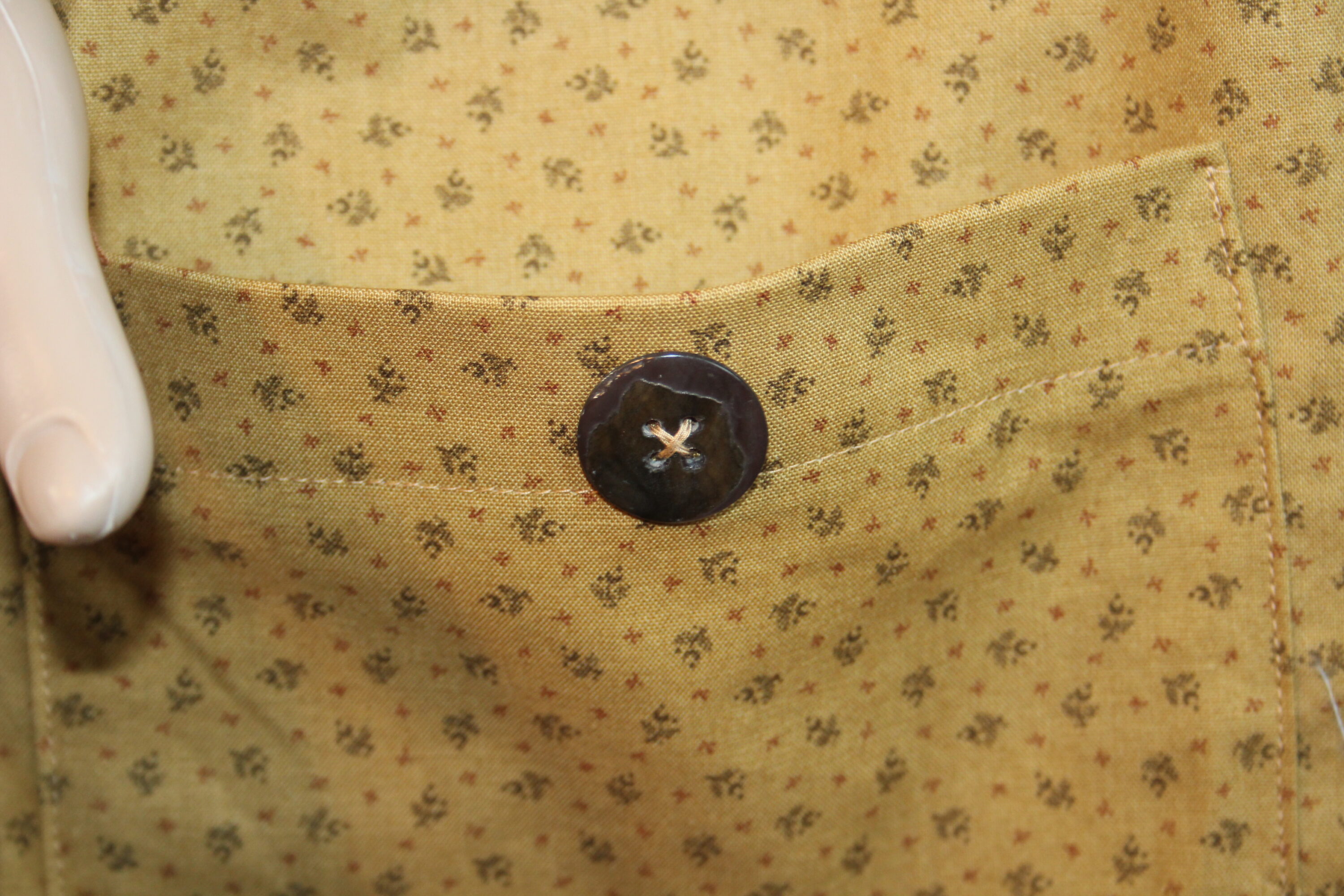
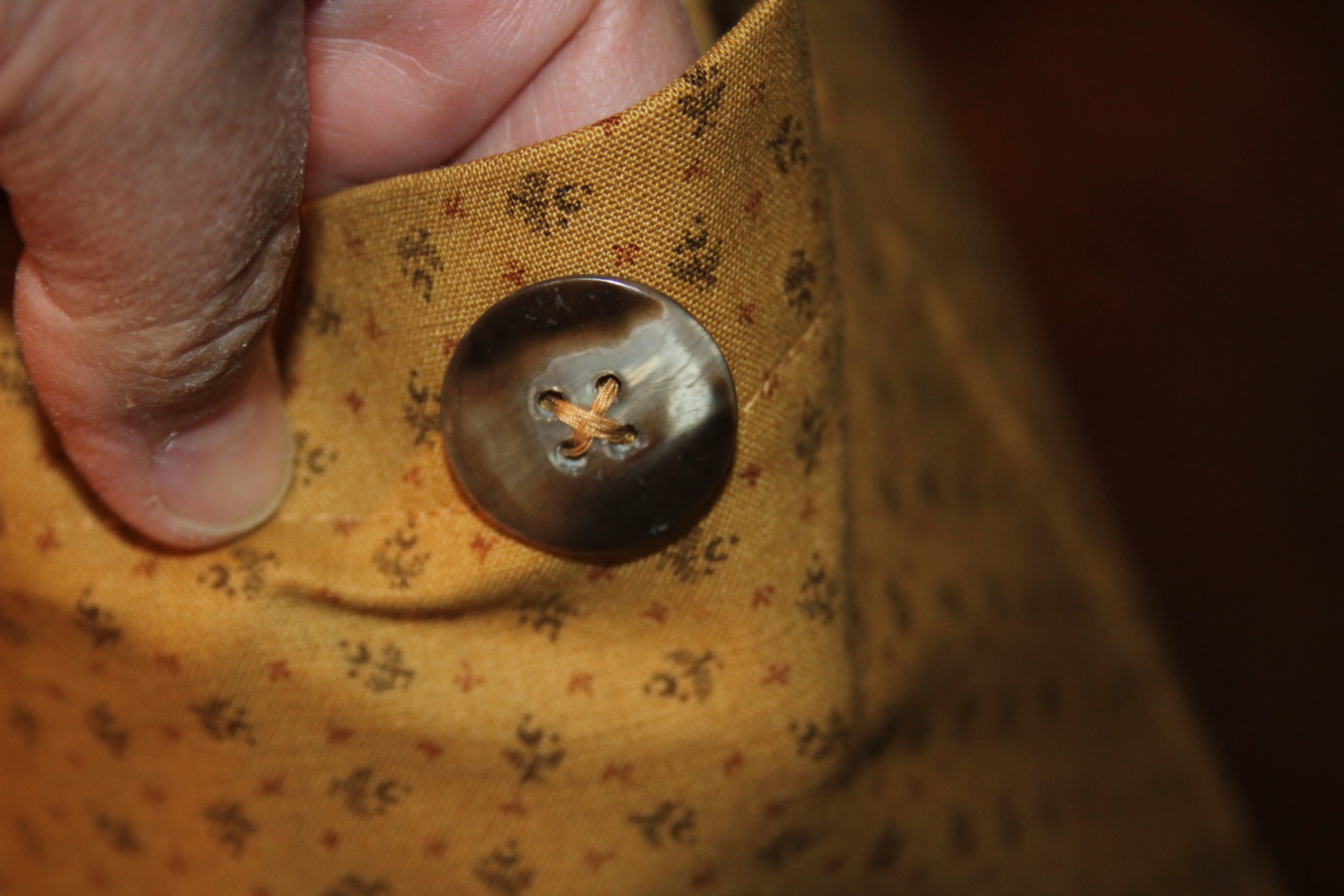
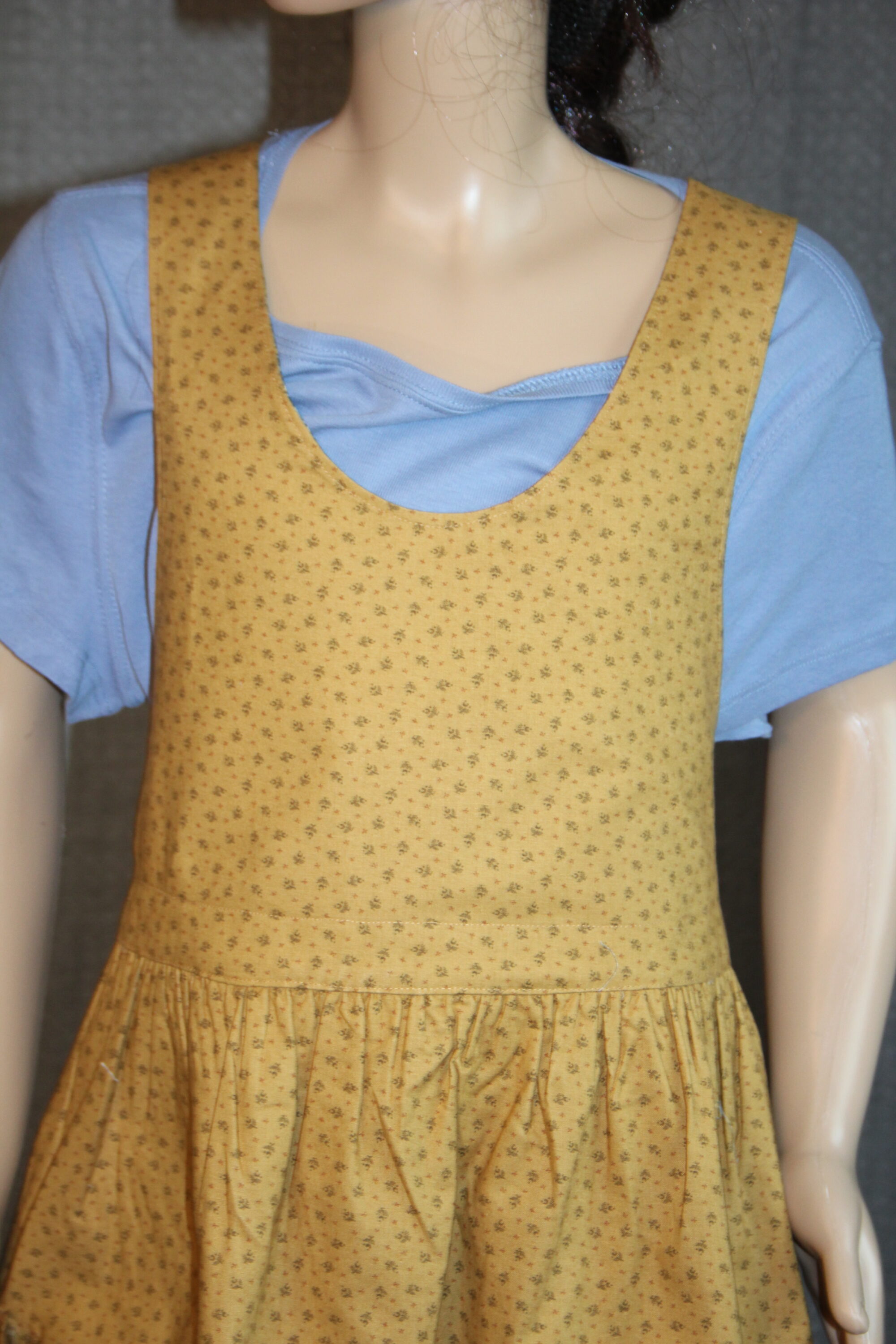
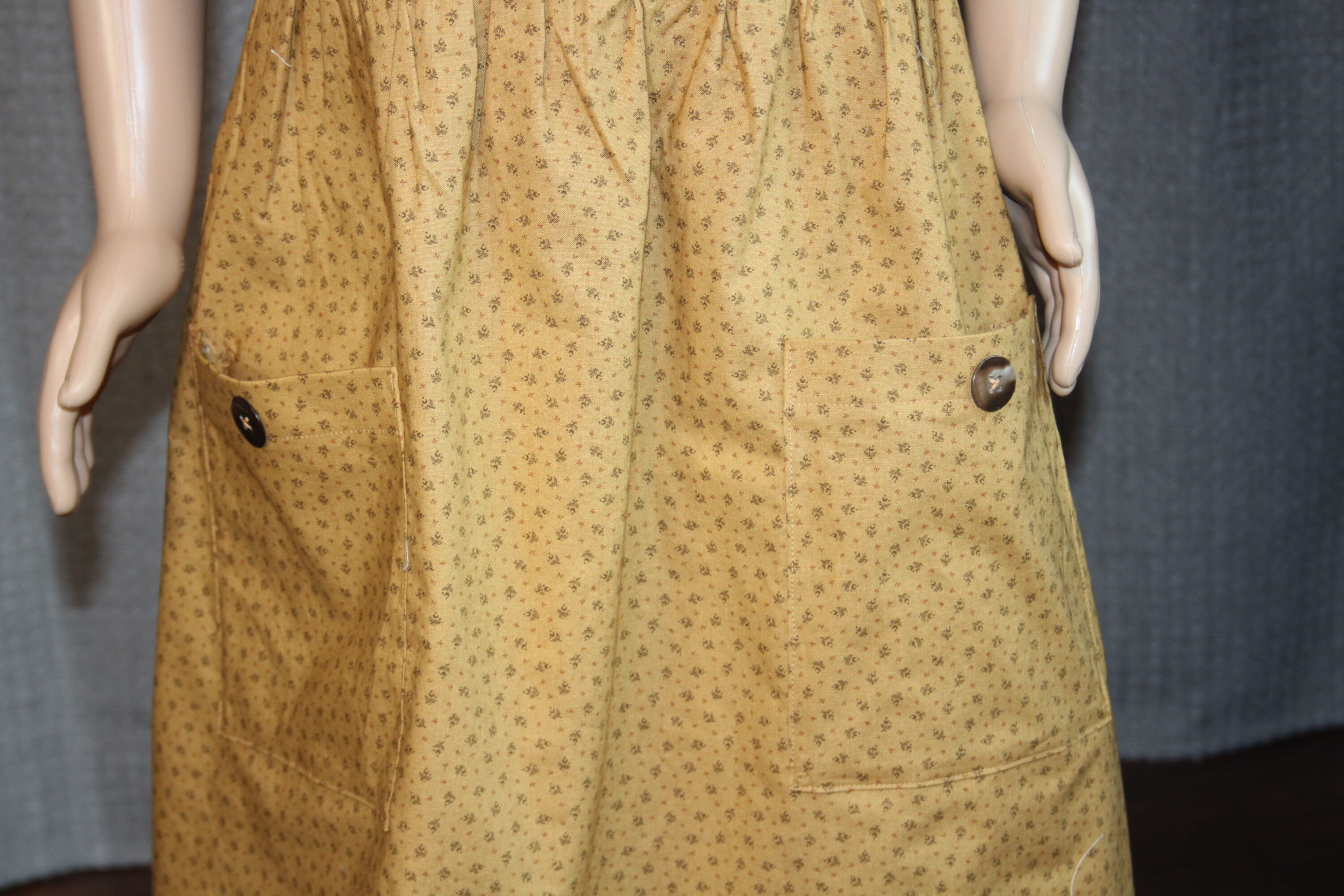
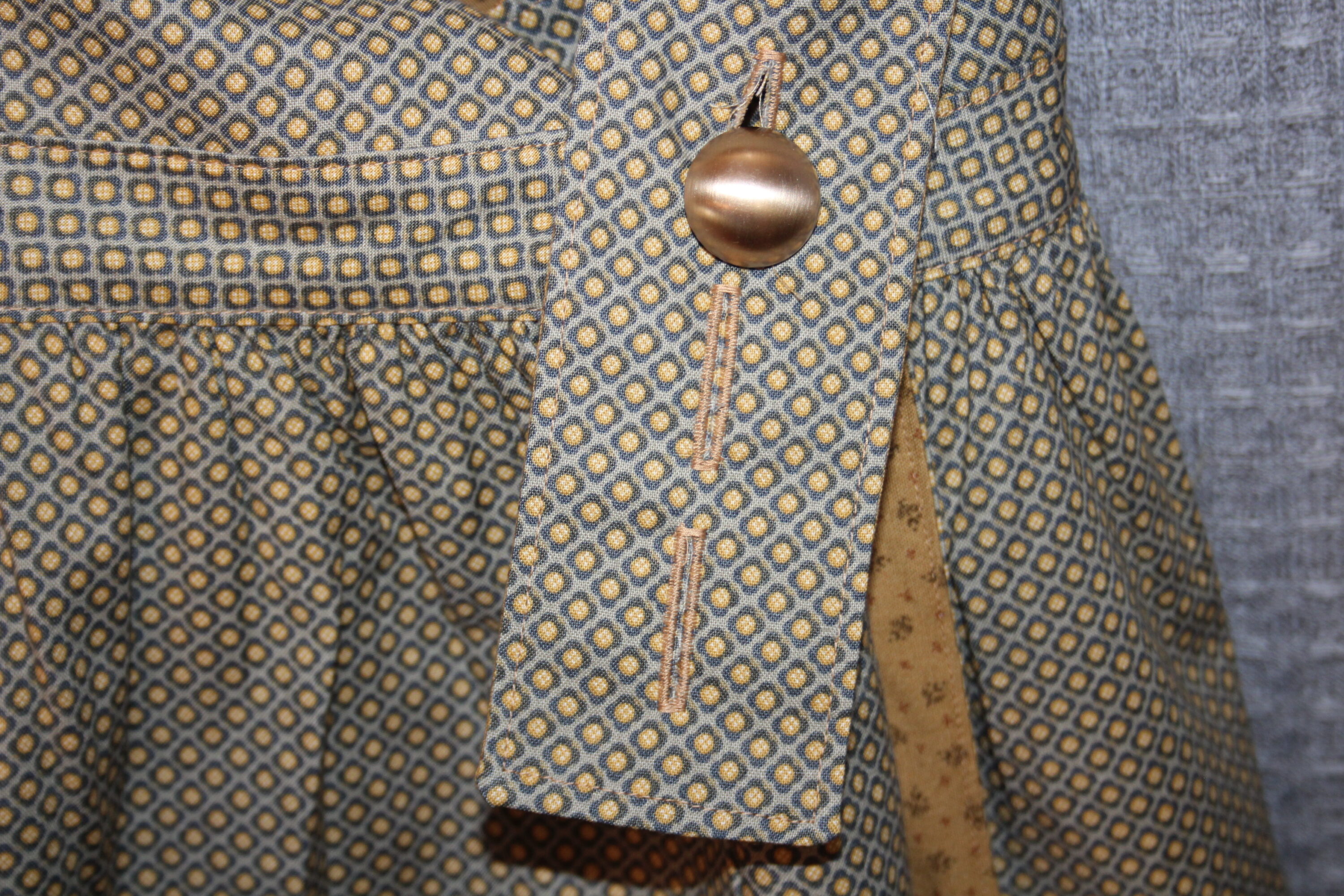
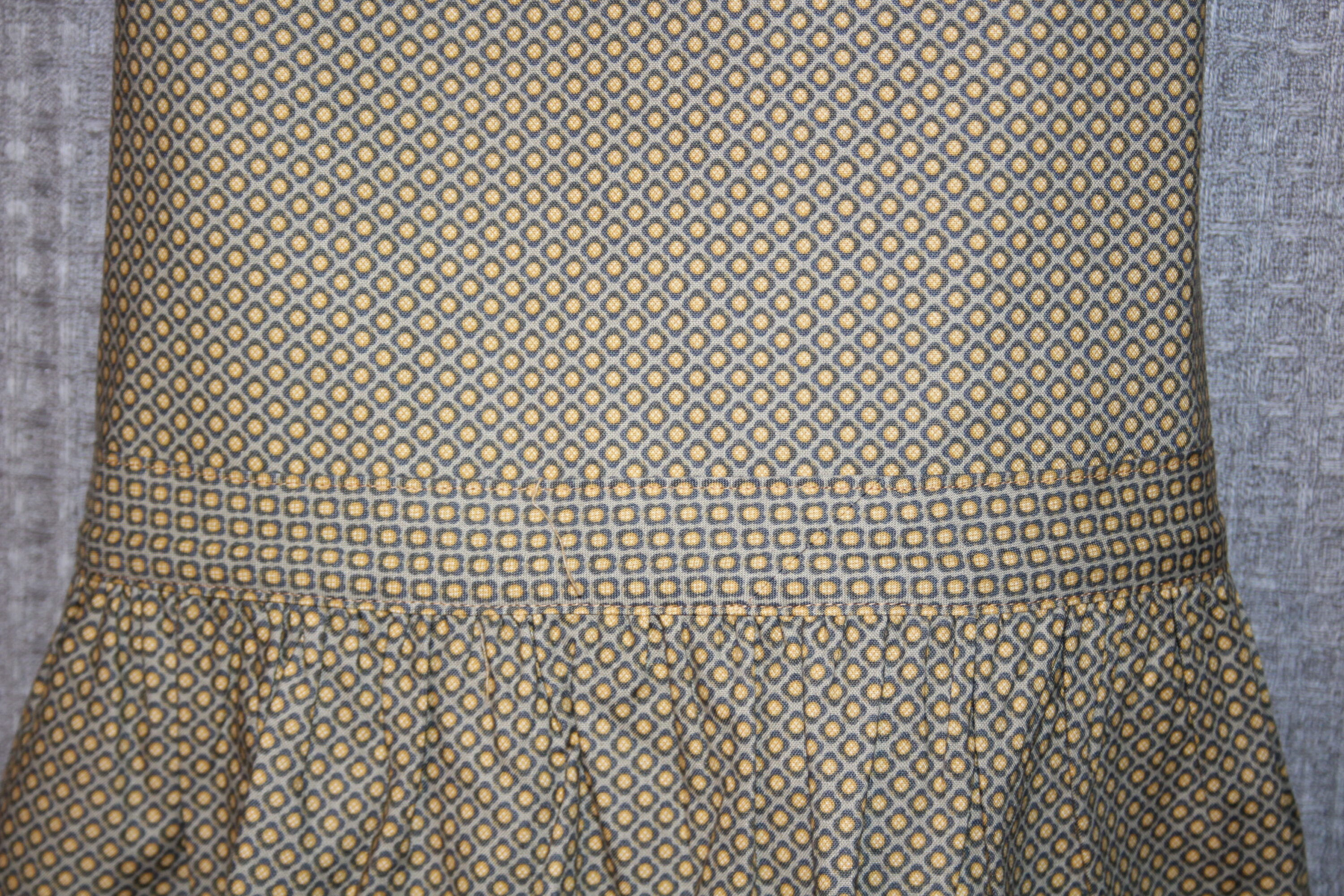
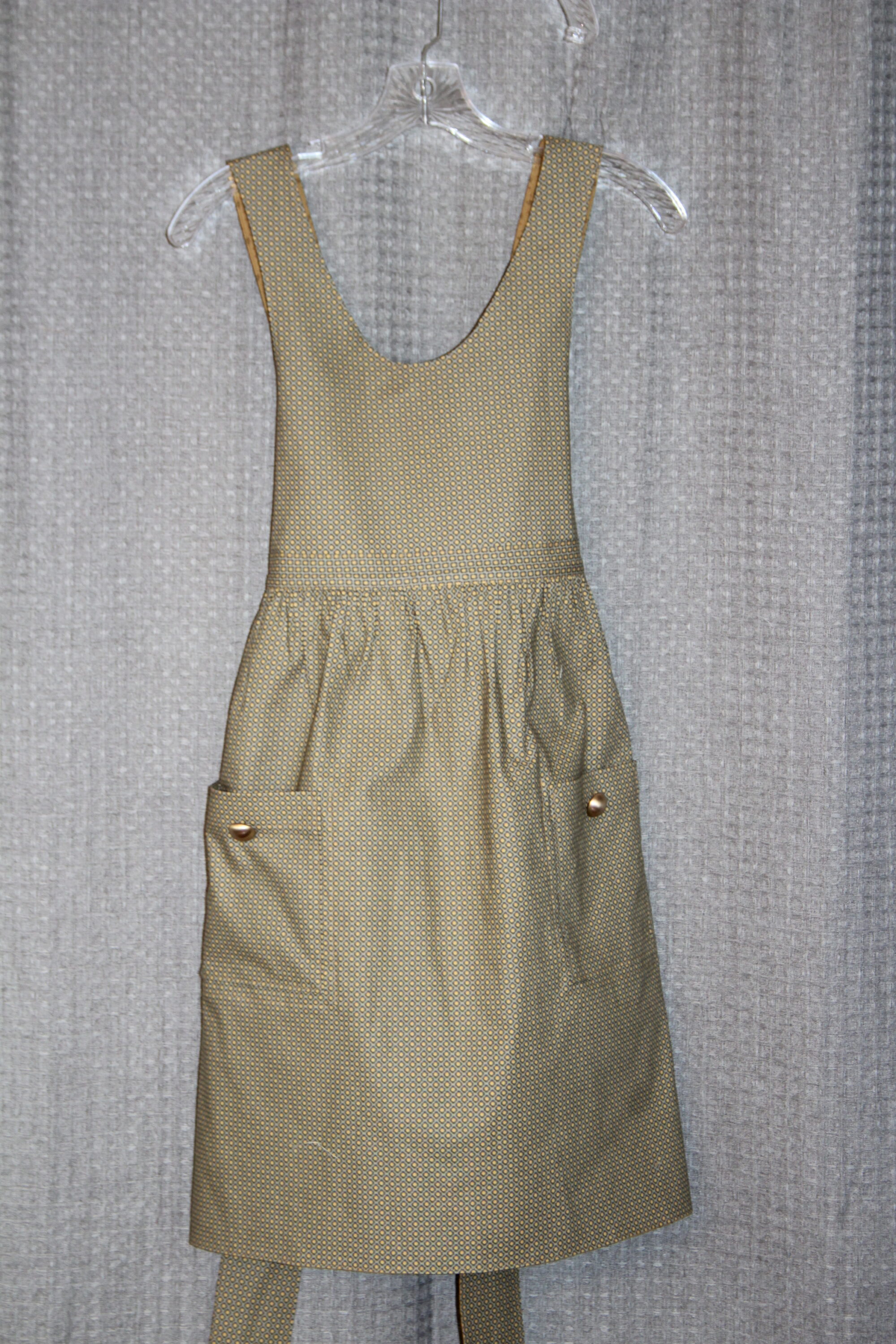
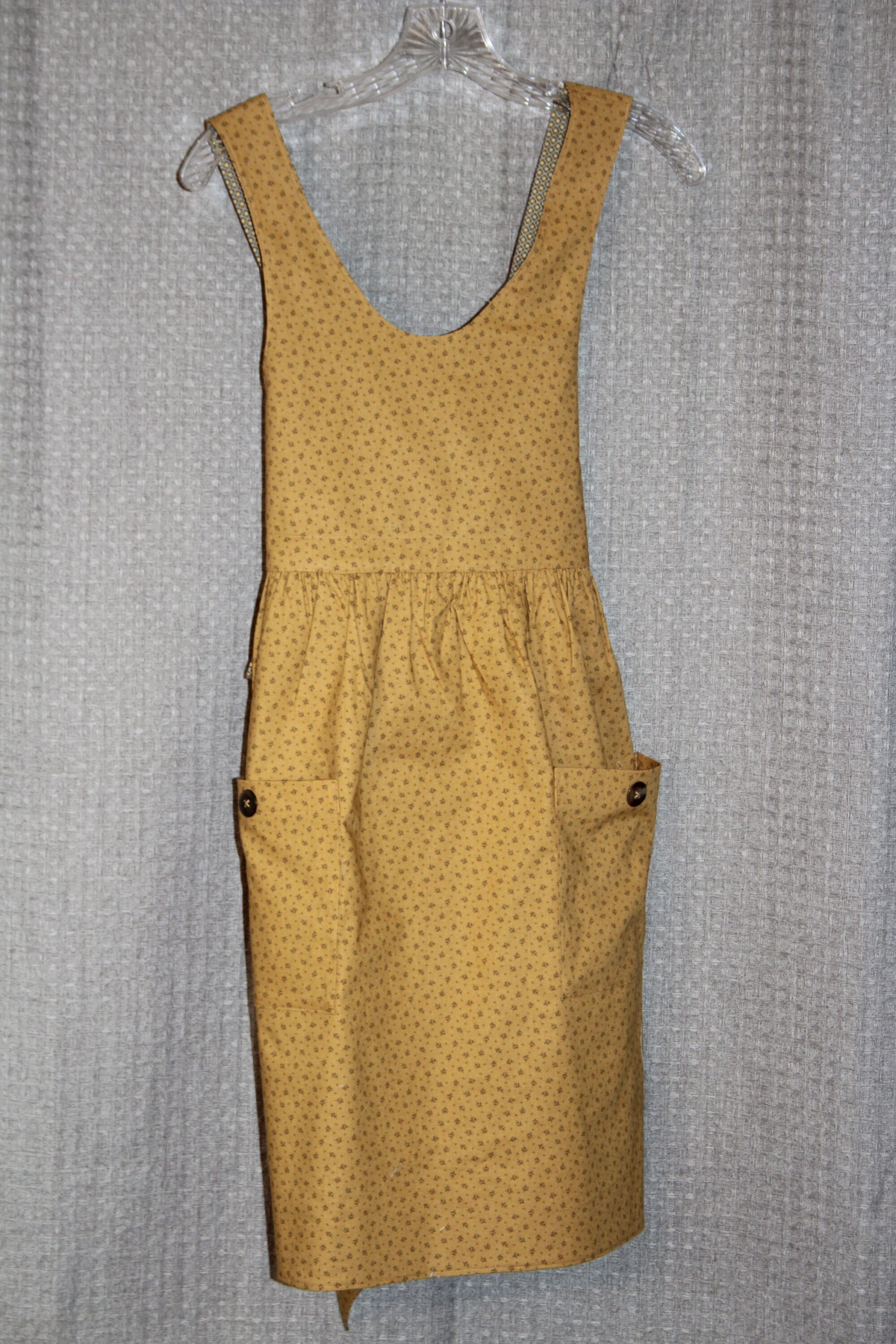
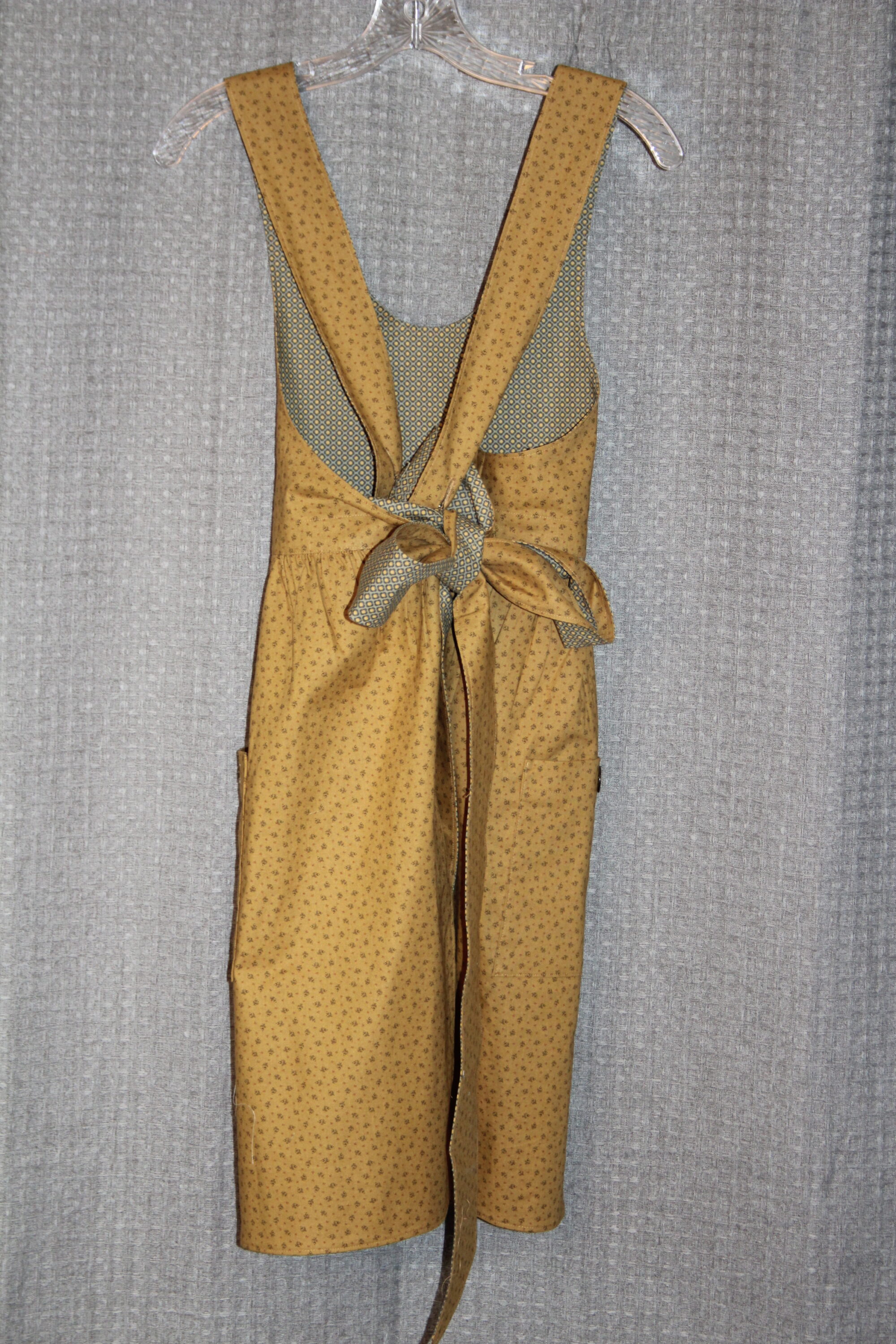
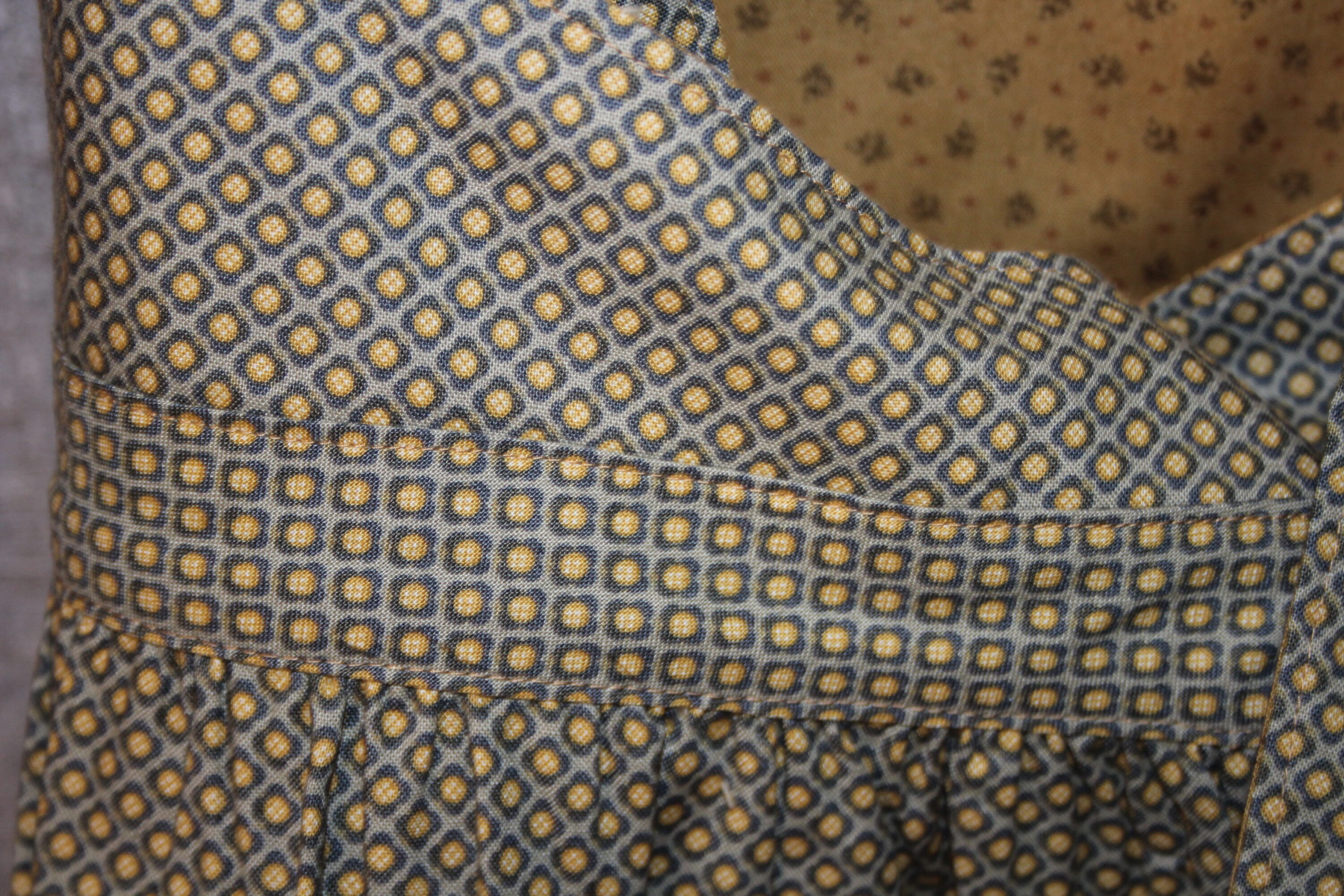
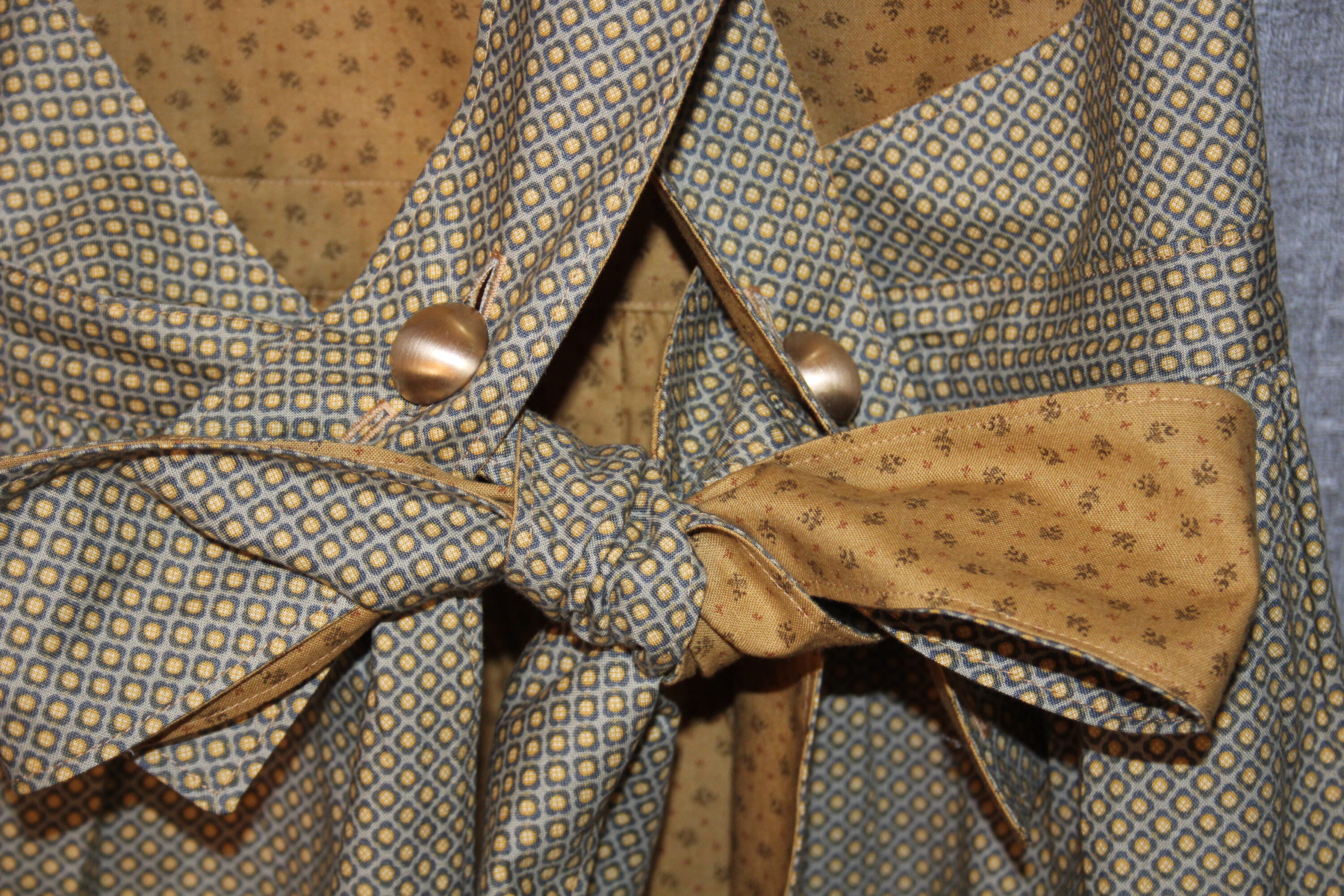
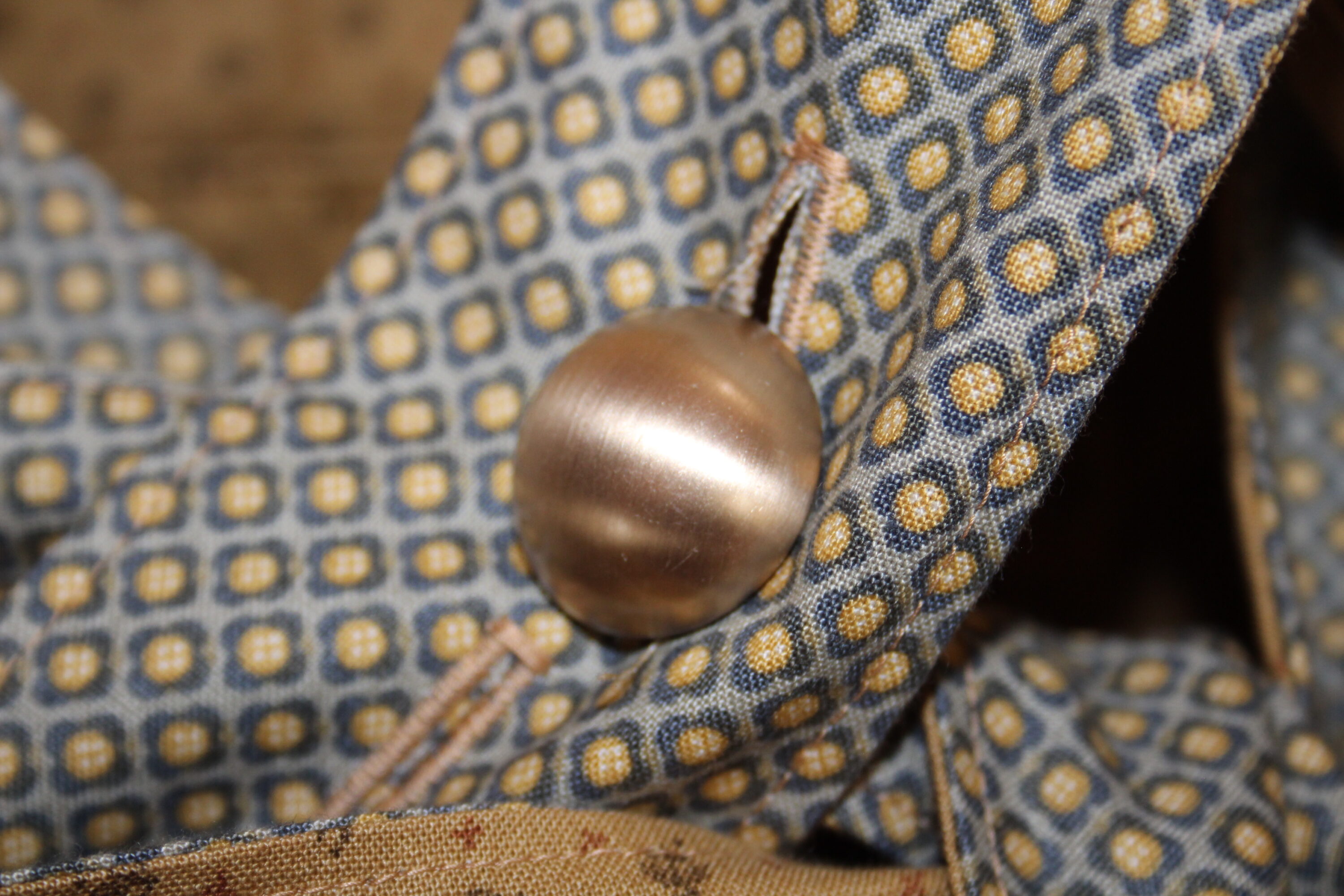
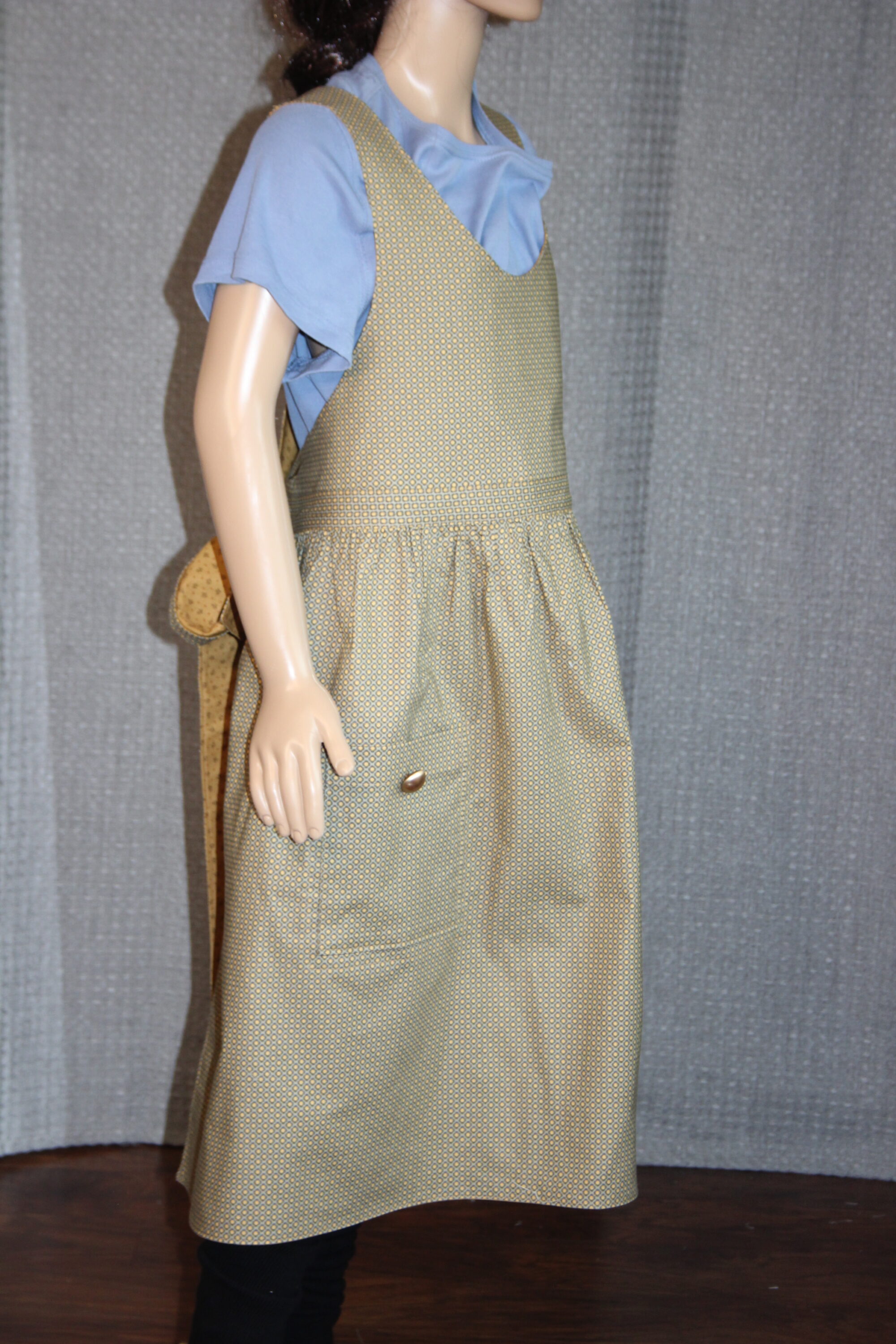
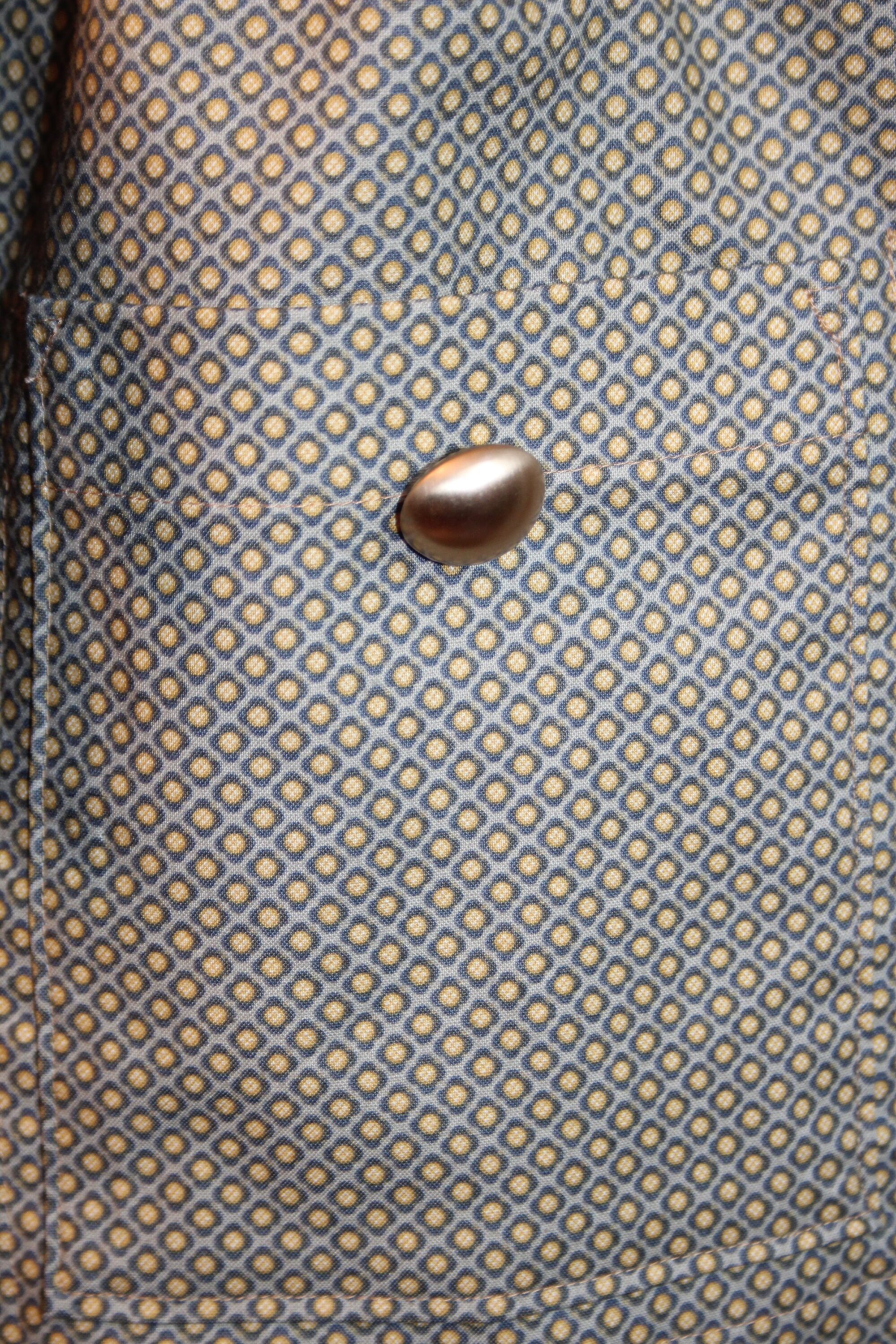
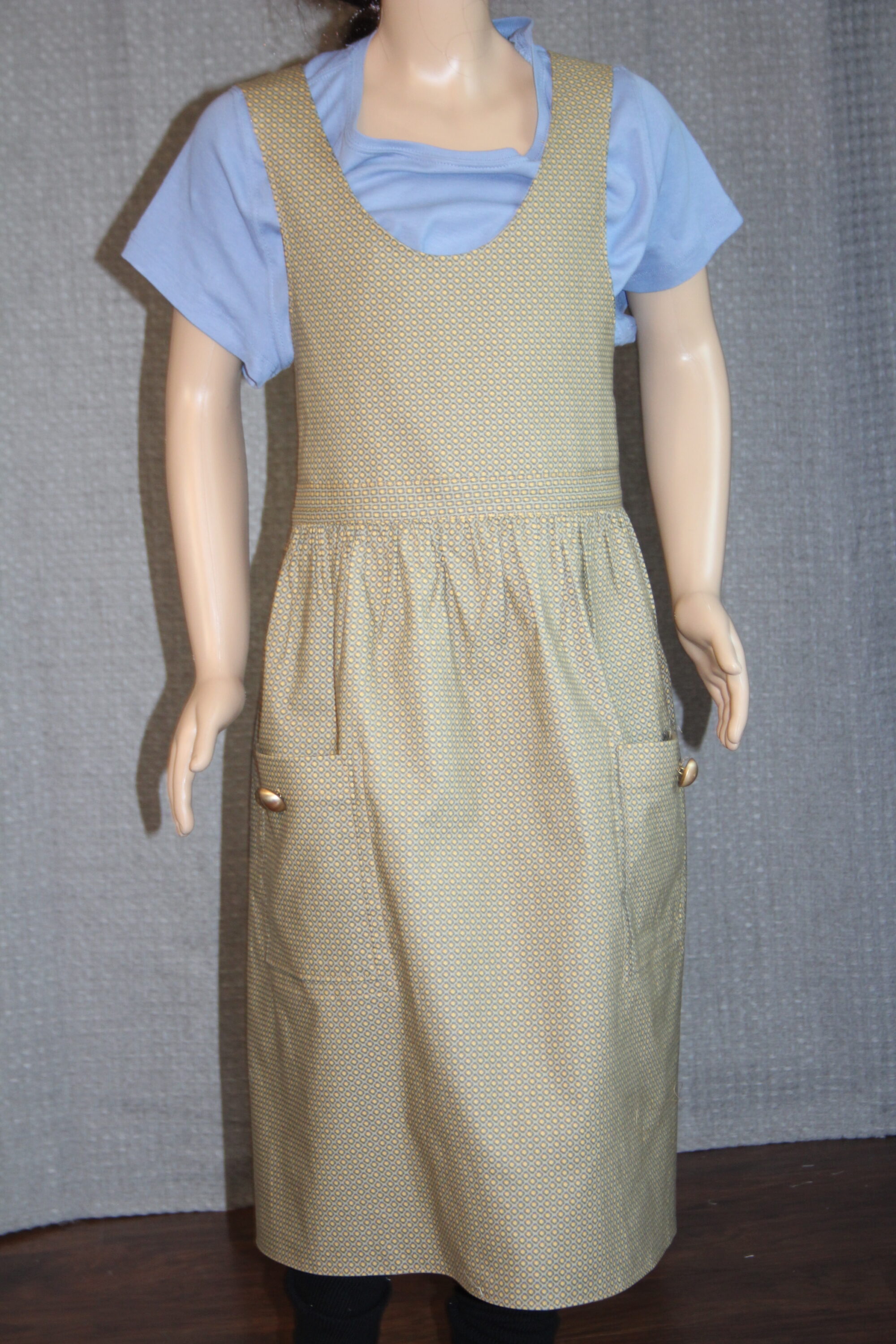
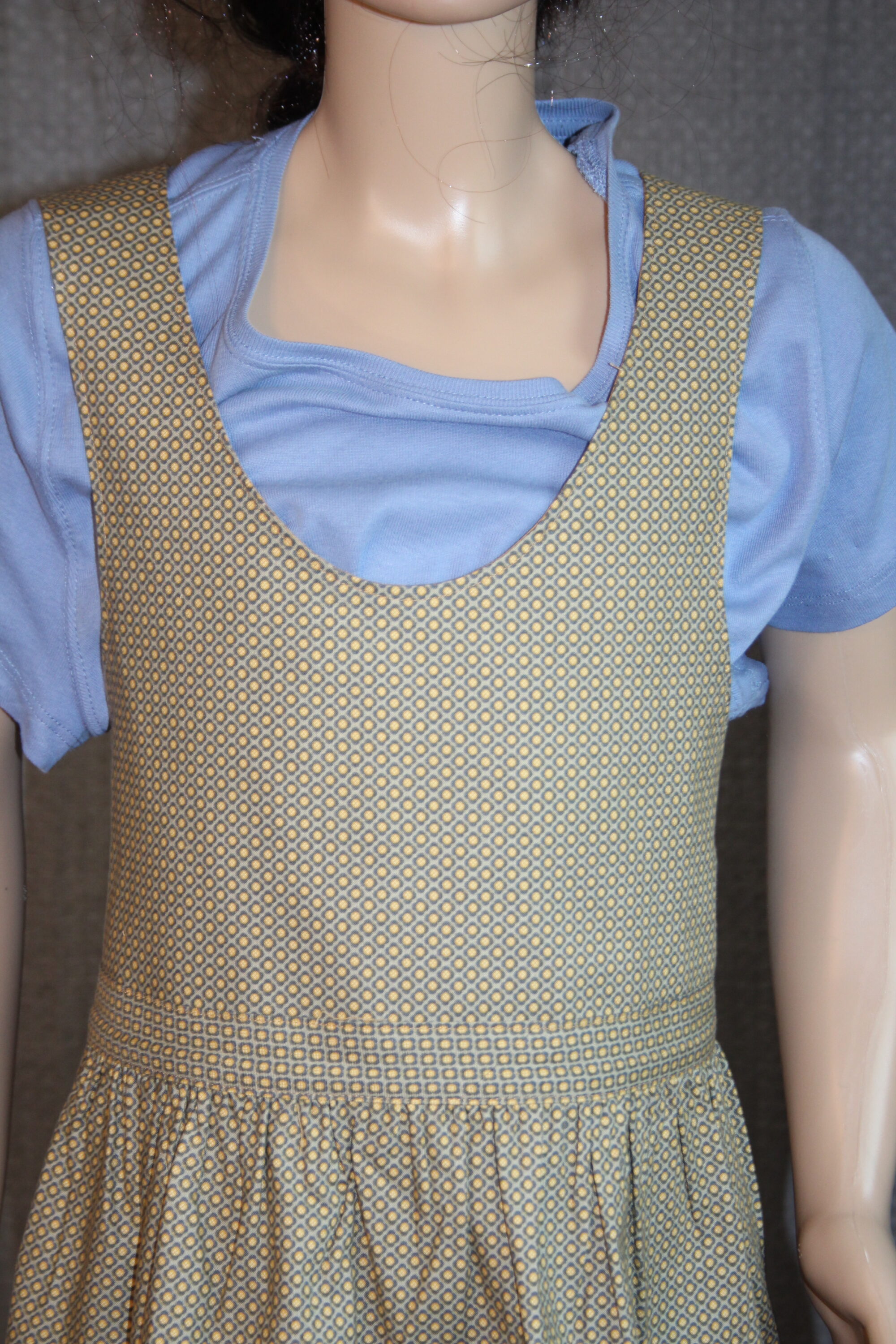
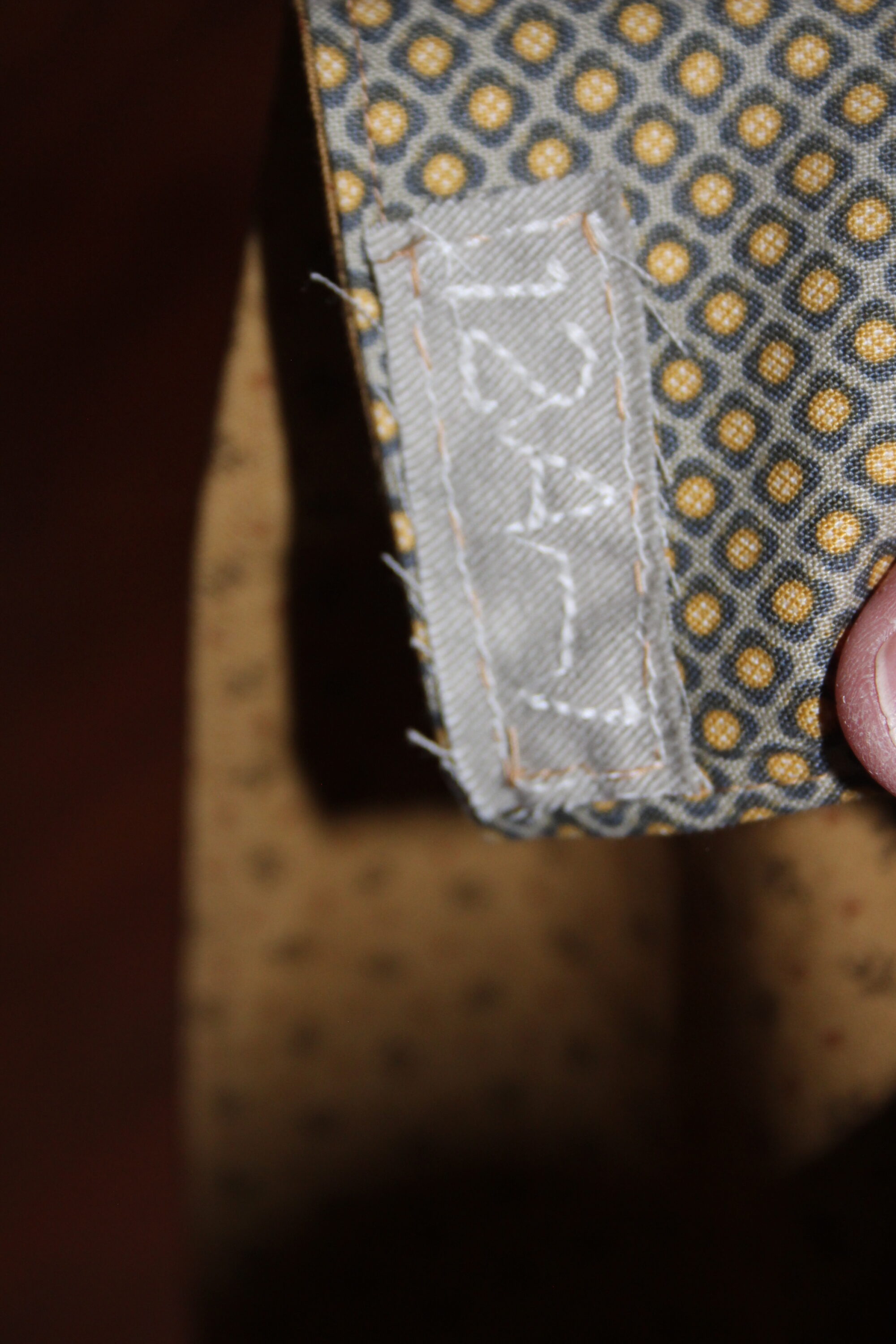

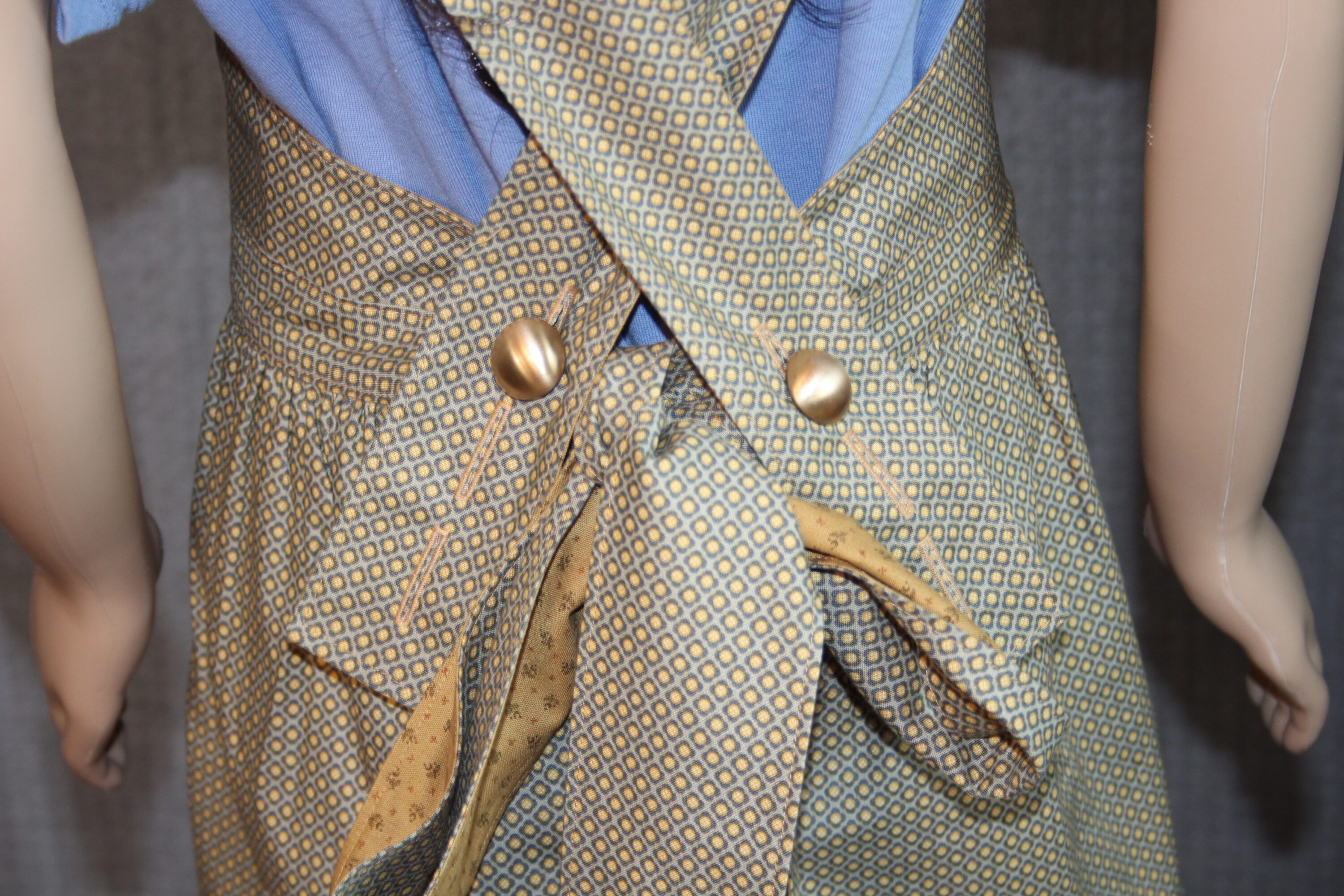
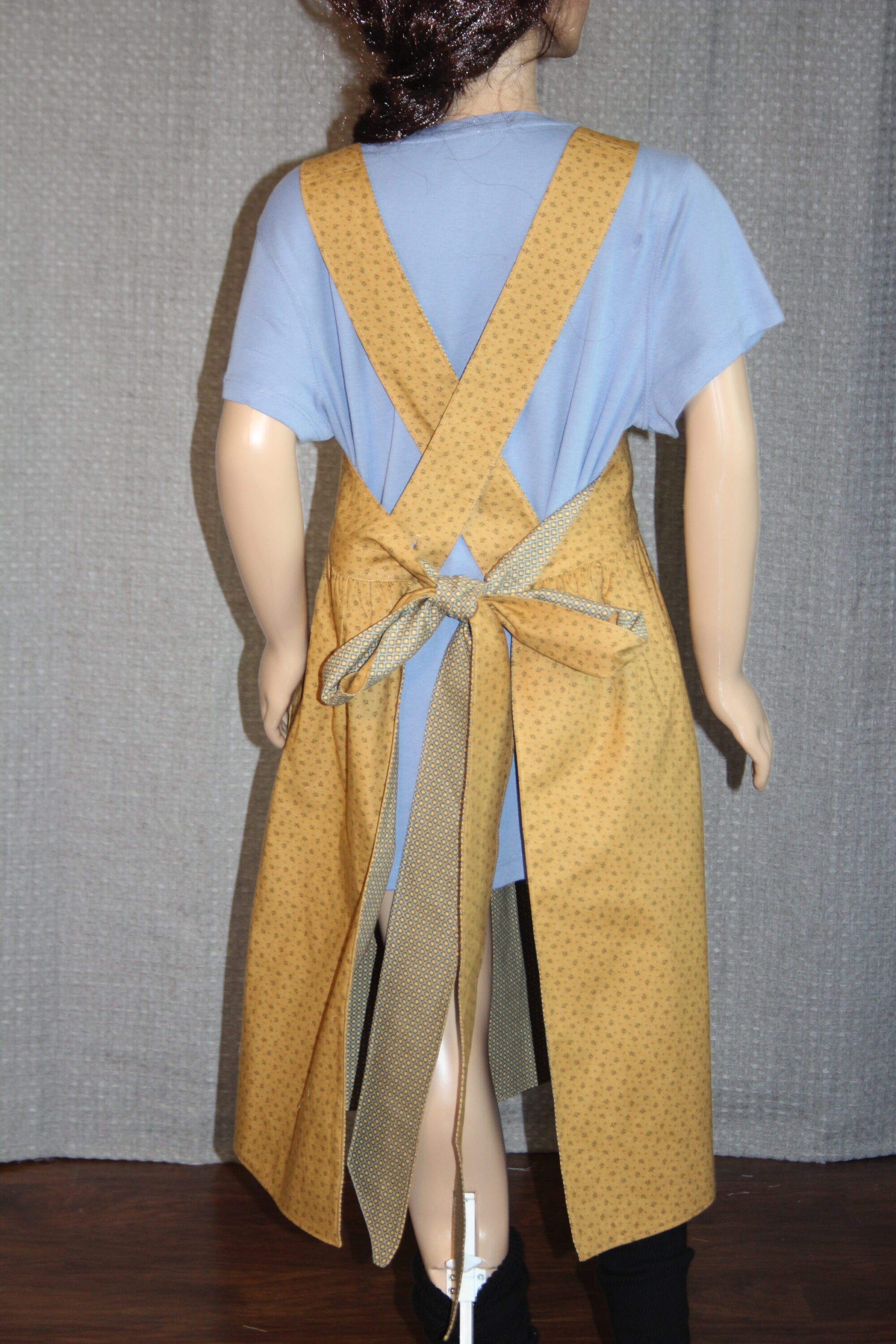
8A.3 (size 8 reversible dark “footballs” and dark teal fabric with “gold hydrangeas”. Light fabric is called “Baby’s Breath”. Dark side has wool felt “petals” with a vintage mother of pearl ivory button. Light side has a special shank mother of pearl button where the center comes all the way through as were shoe buttons at the time. Another 1″ 4 hole mother of pearl button holds the straps. It is the dark gray that was burnished from the back or inside of the mussel shell that made MOP buttons. There is ivory cotton bias tape on pockets and waist. These pockets are bigger than on most of the aprons. This is the woman’s scoop neck vintage design modified for a young girl. It has a long skirt for the modern long silhouette, drop waist, and crossover ties with adjustability. We downsized the ties and straps to keep everything in scale. This is a perfect fit as shown on the mannequin.)
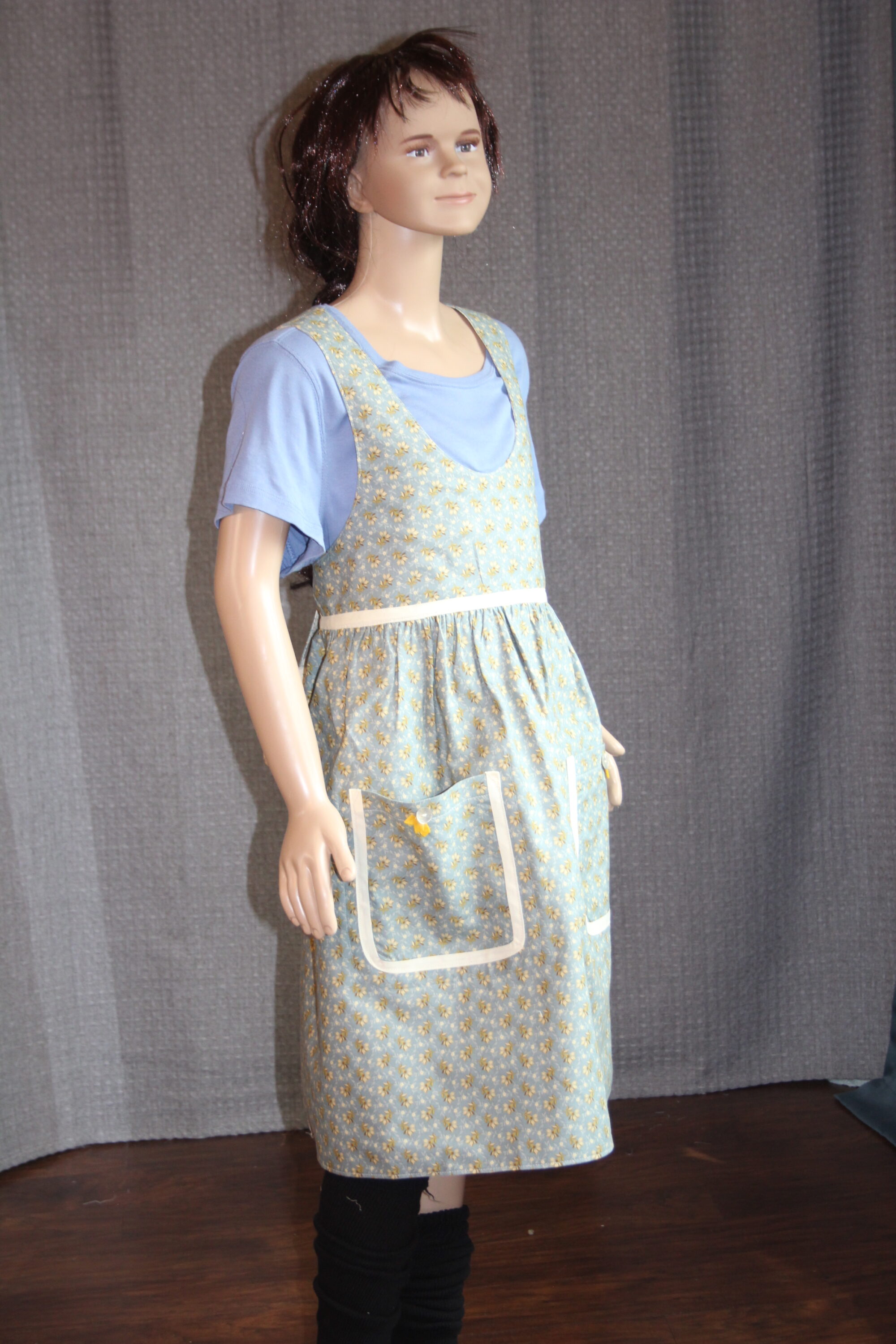
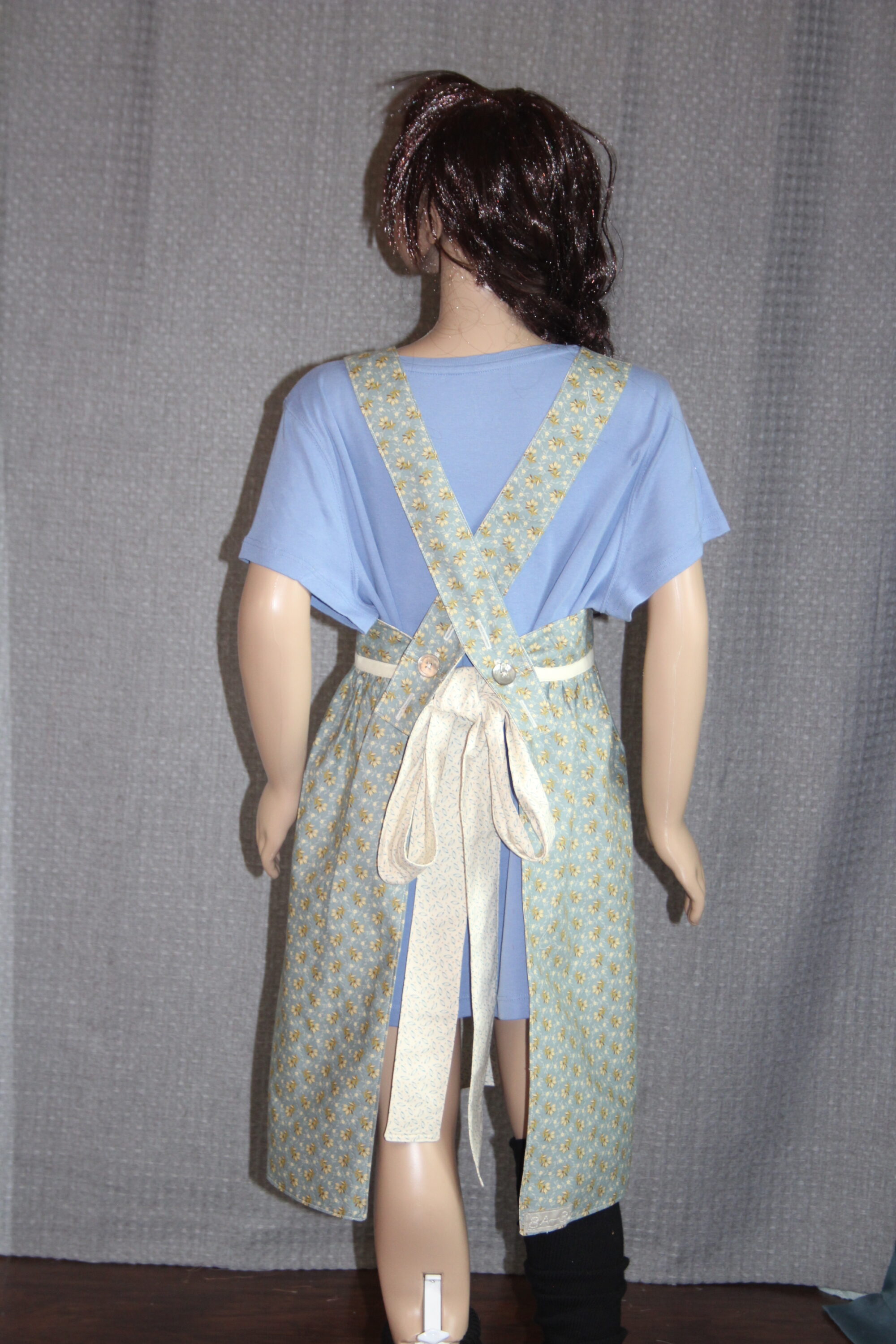
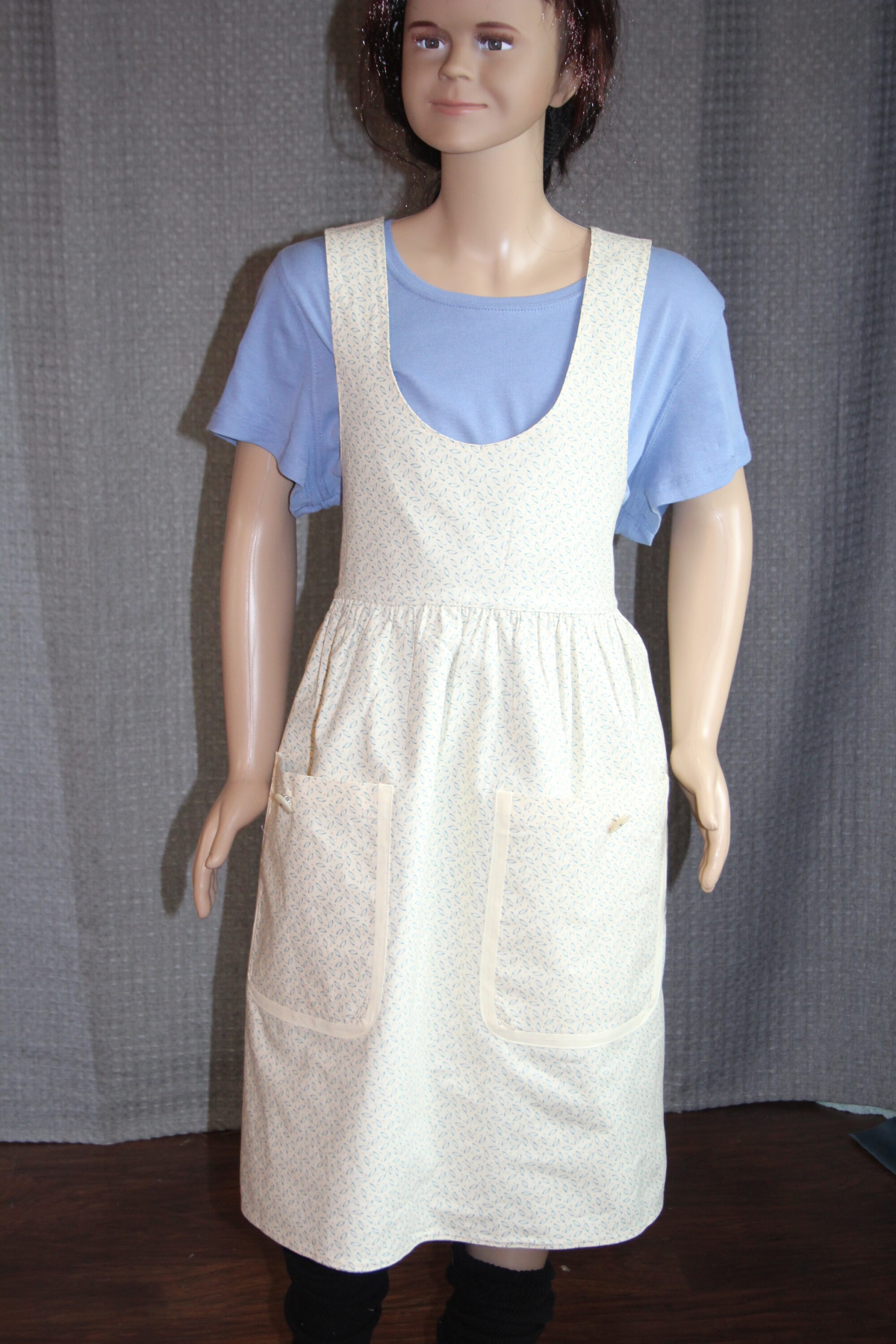
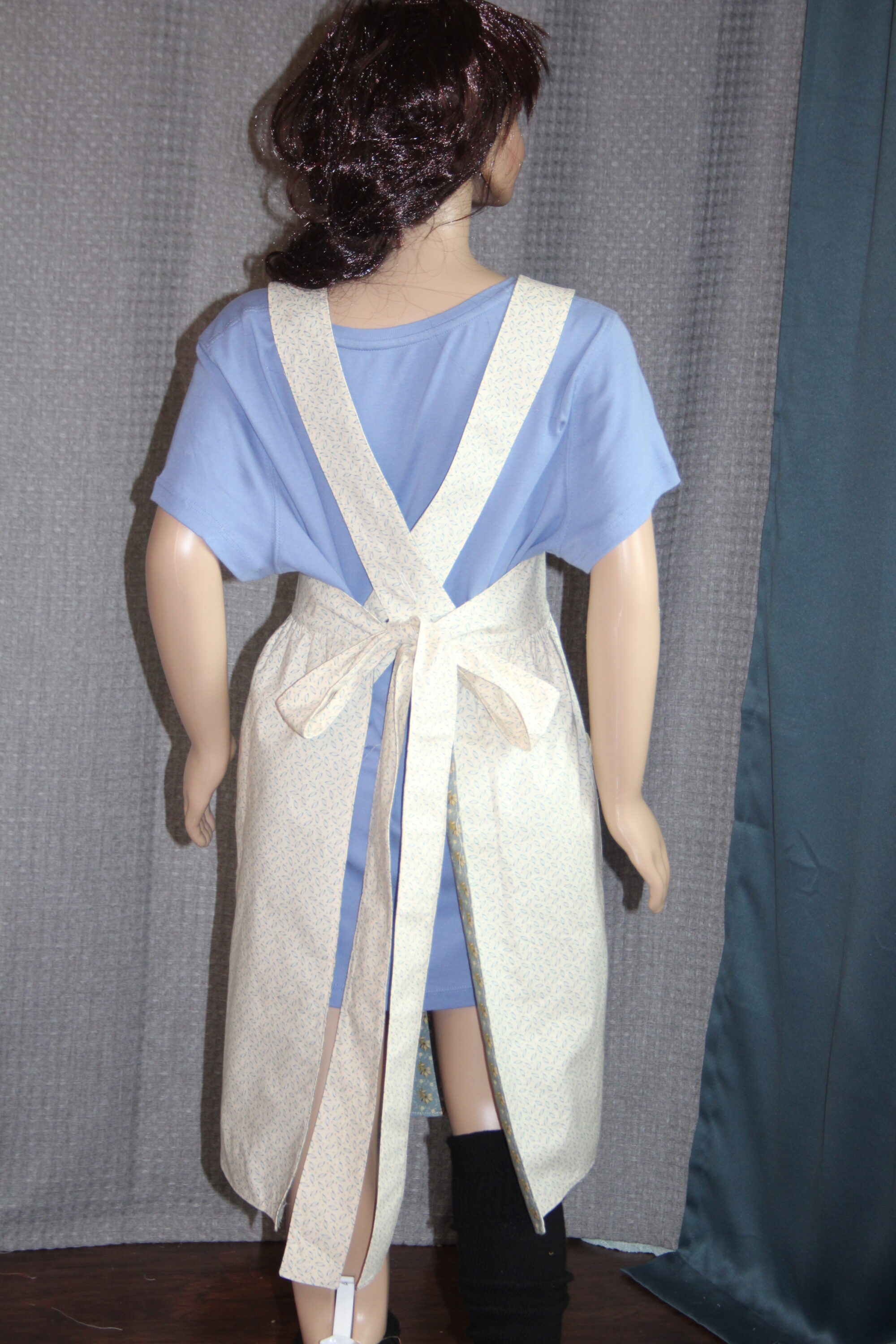

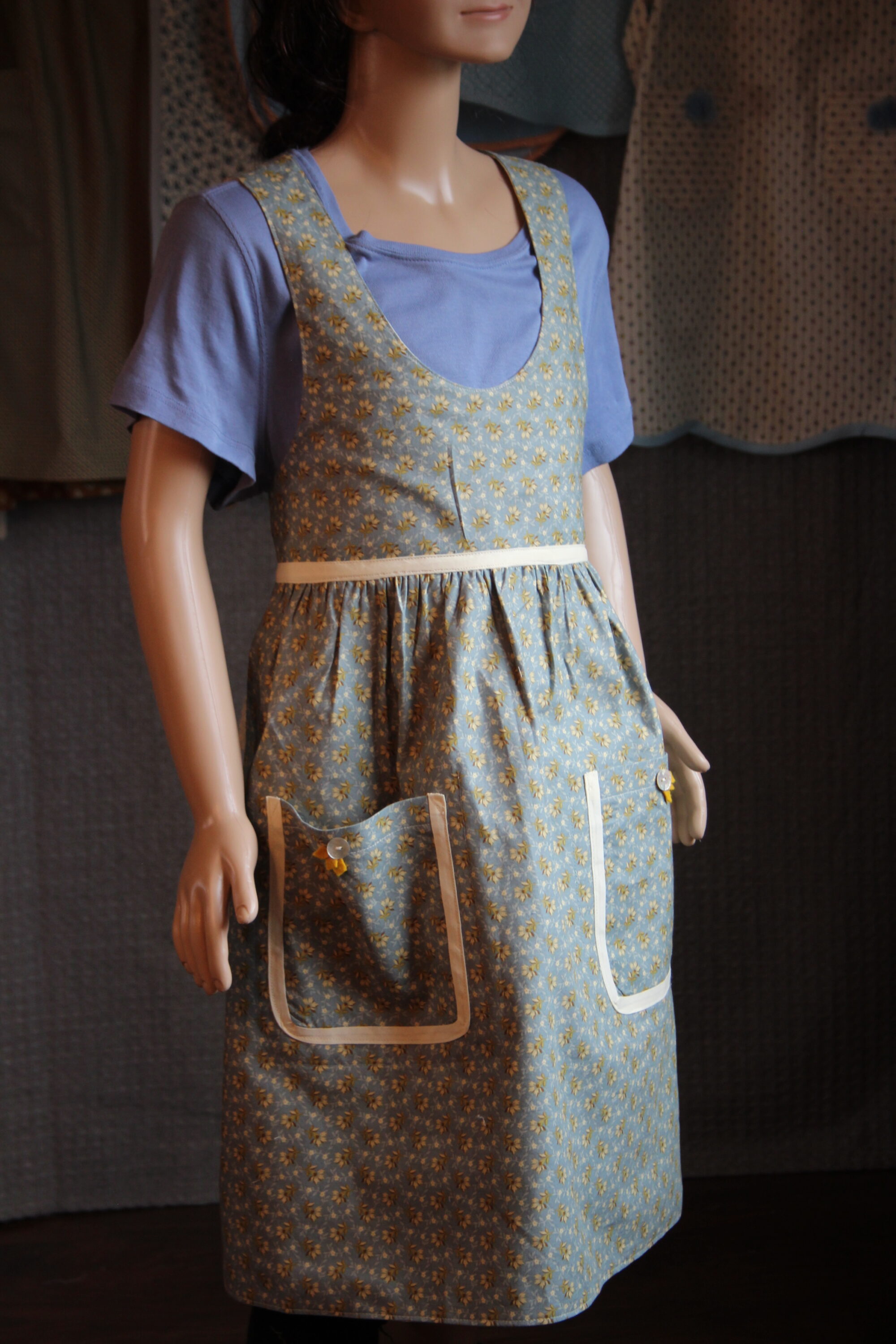
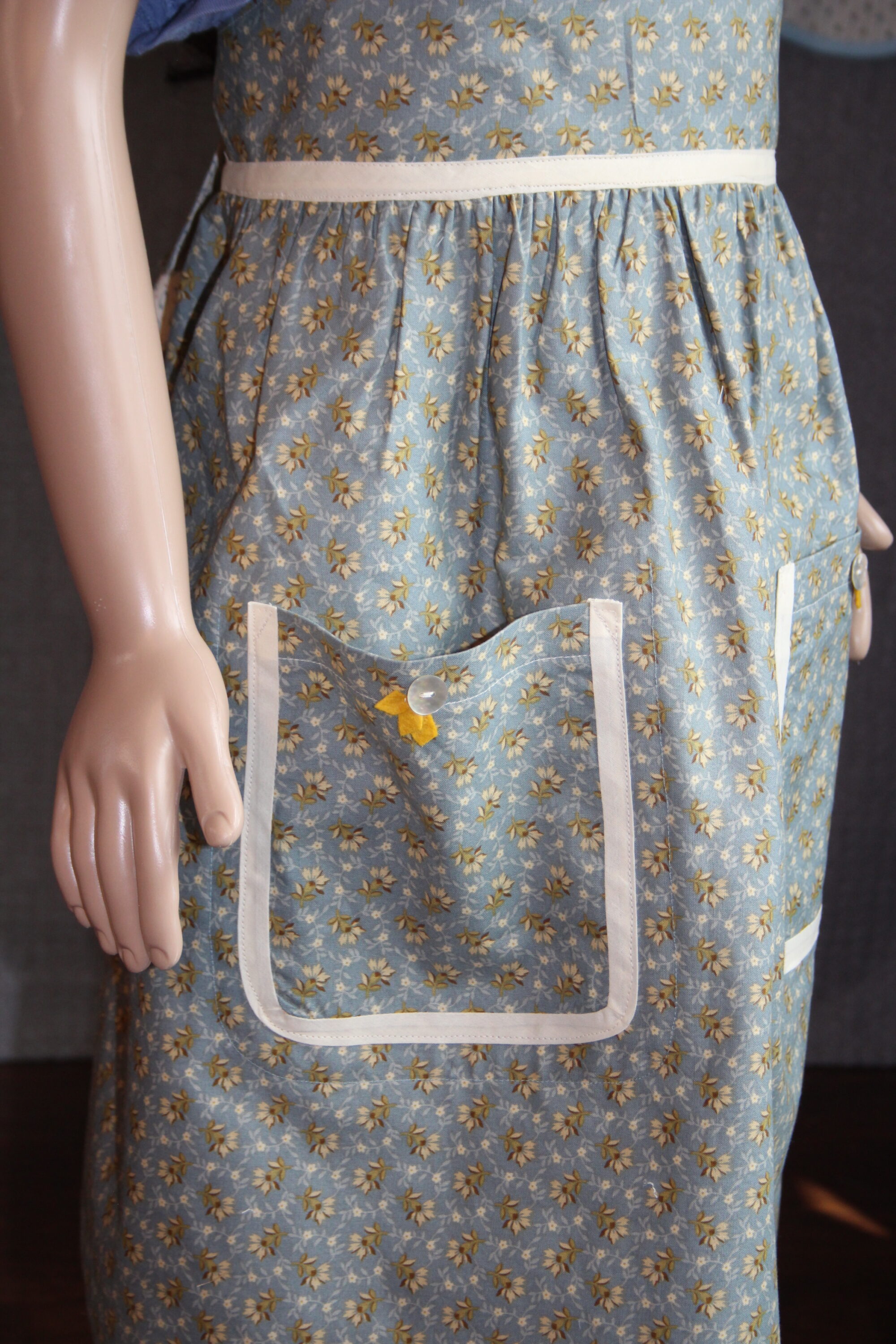
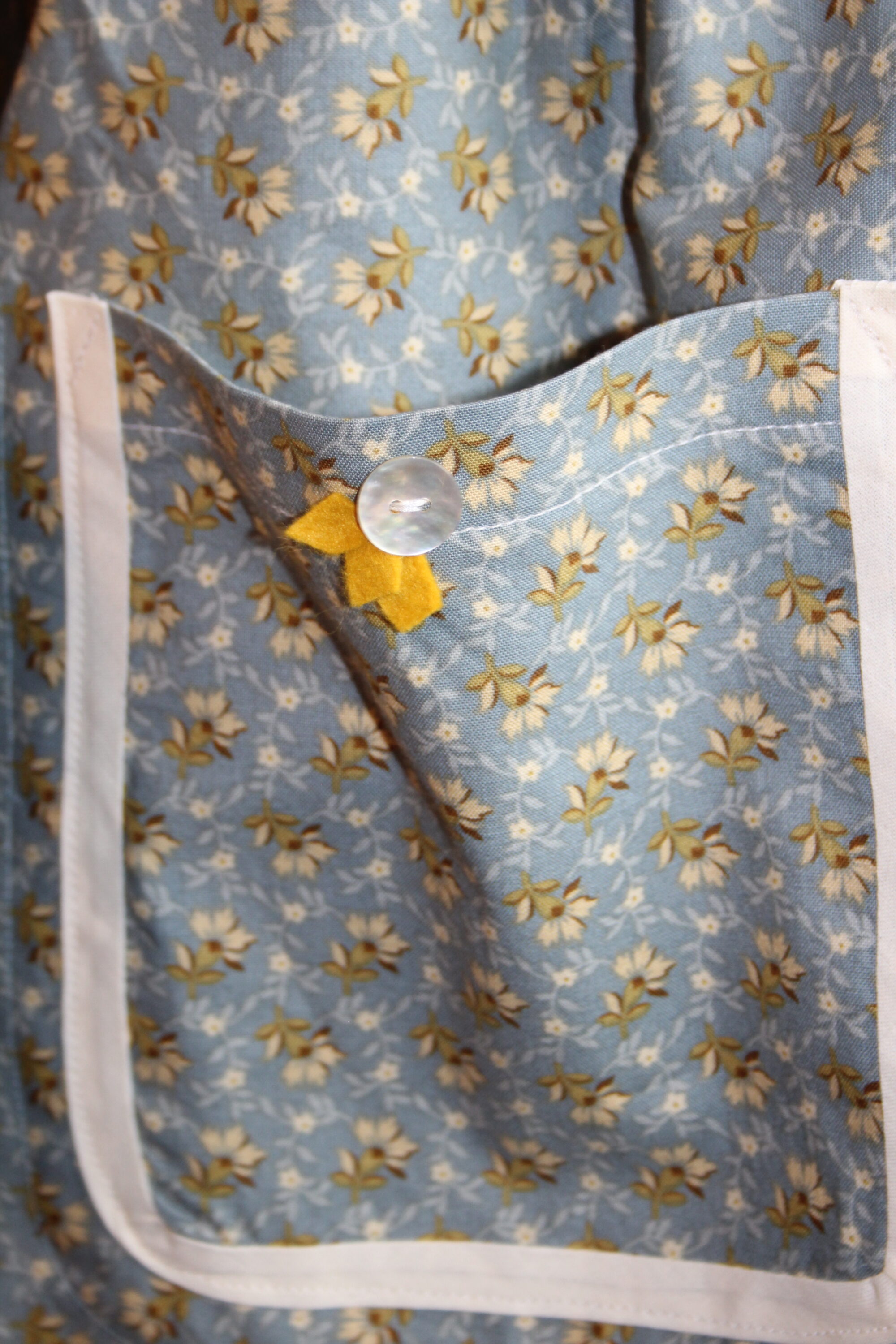
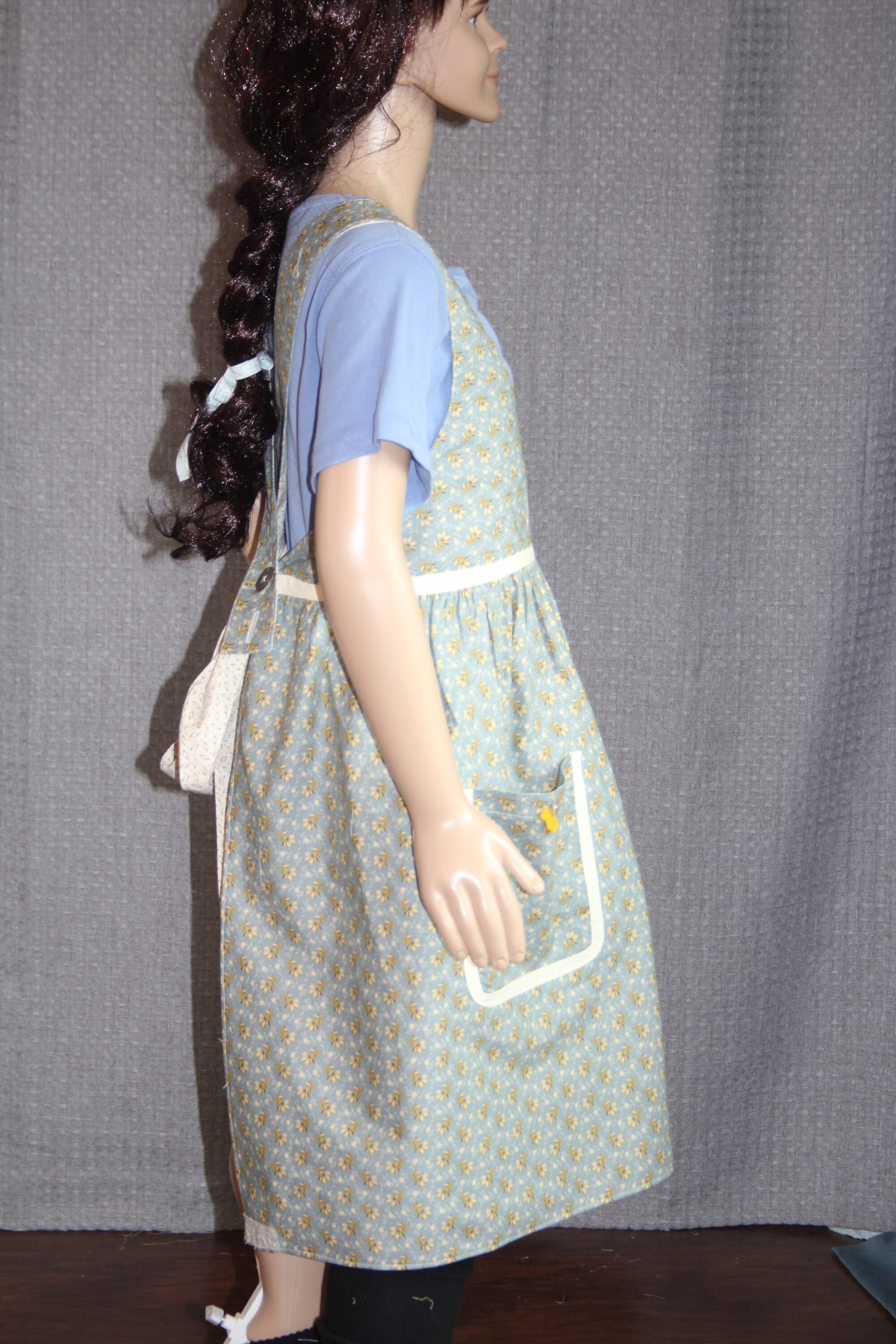
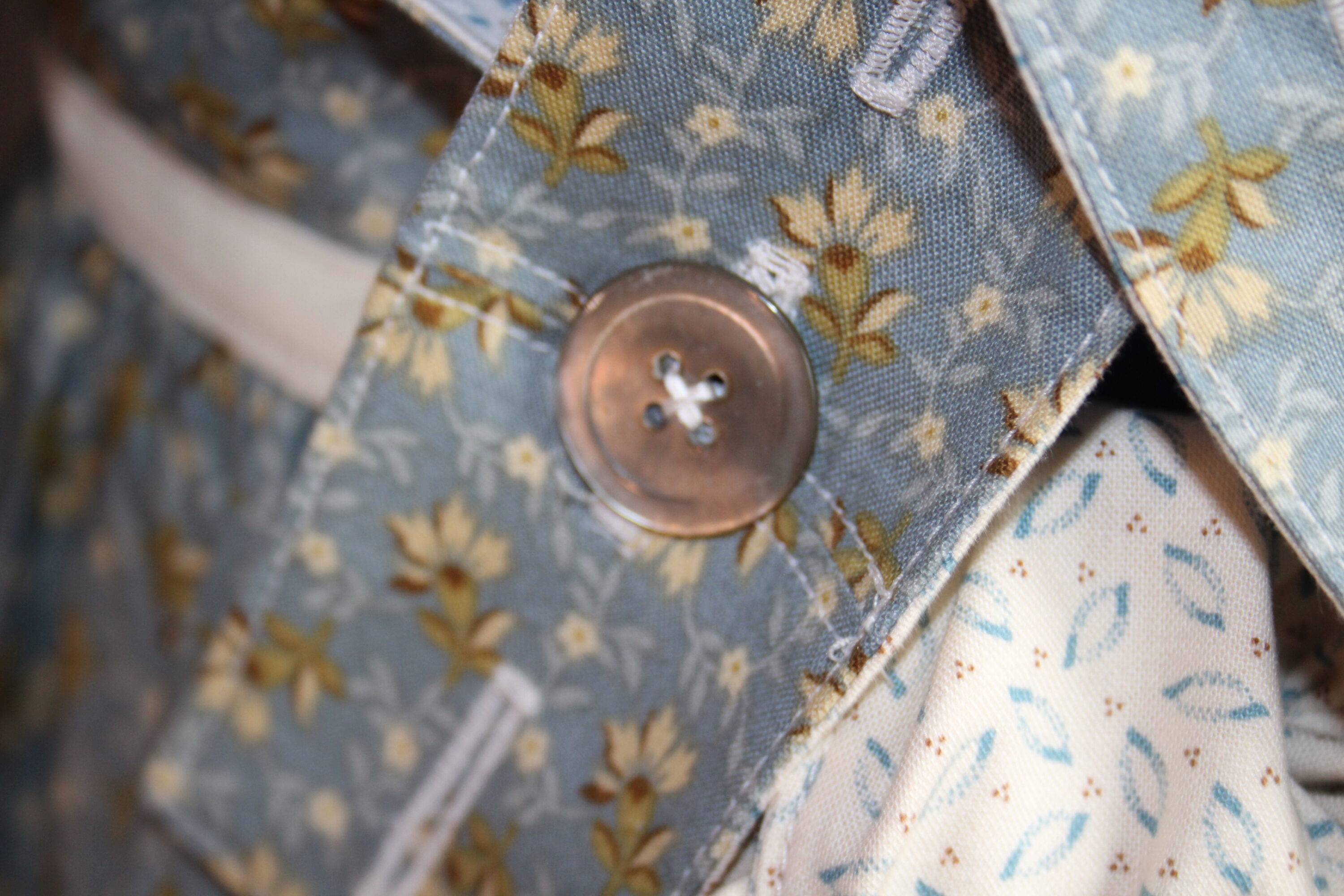


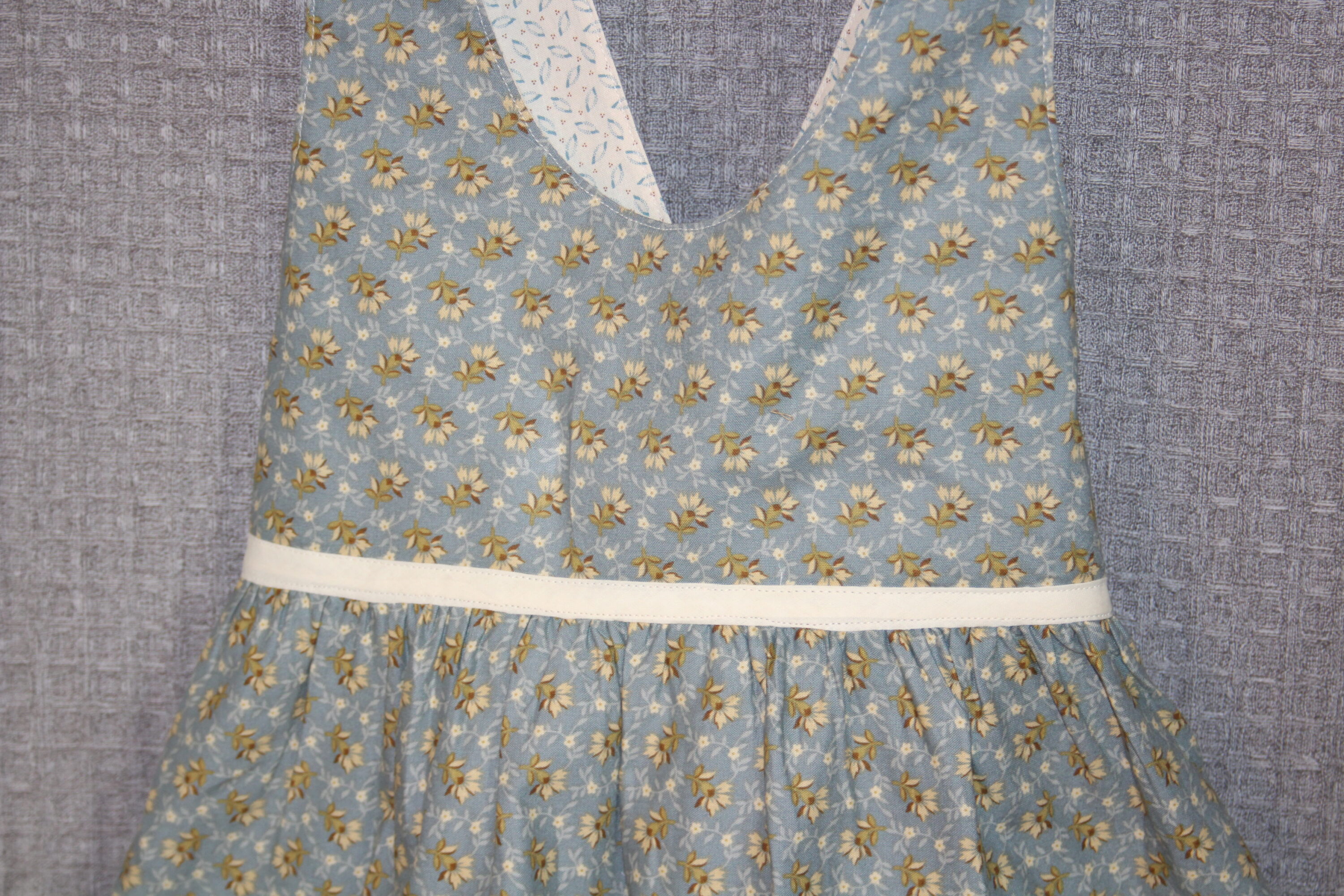
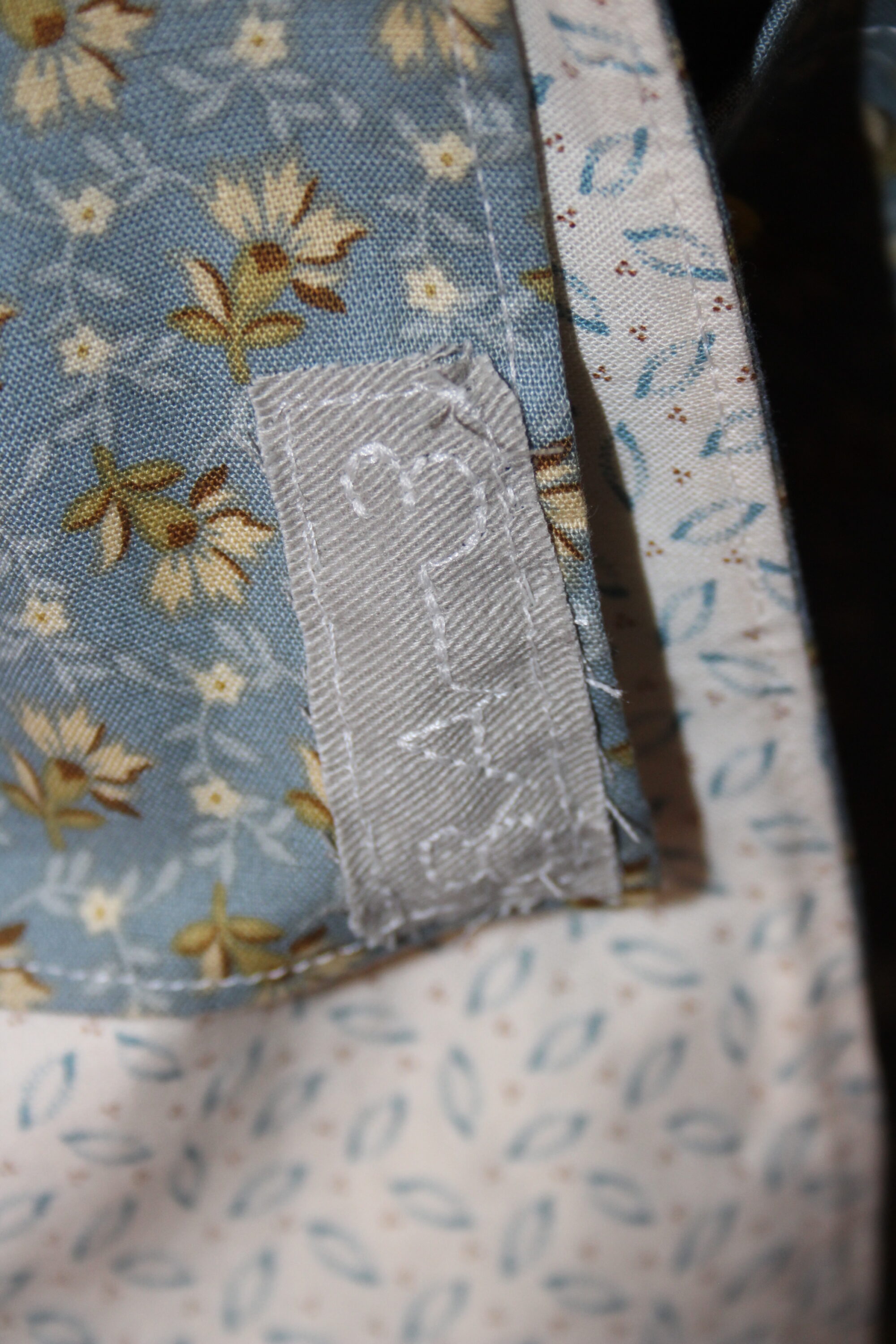
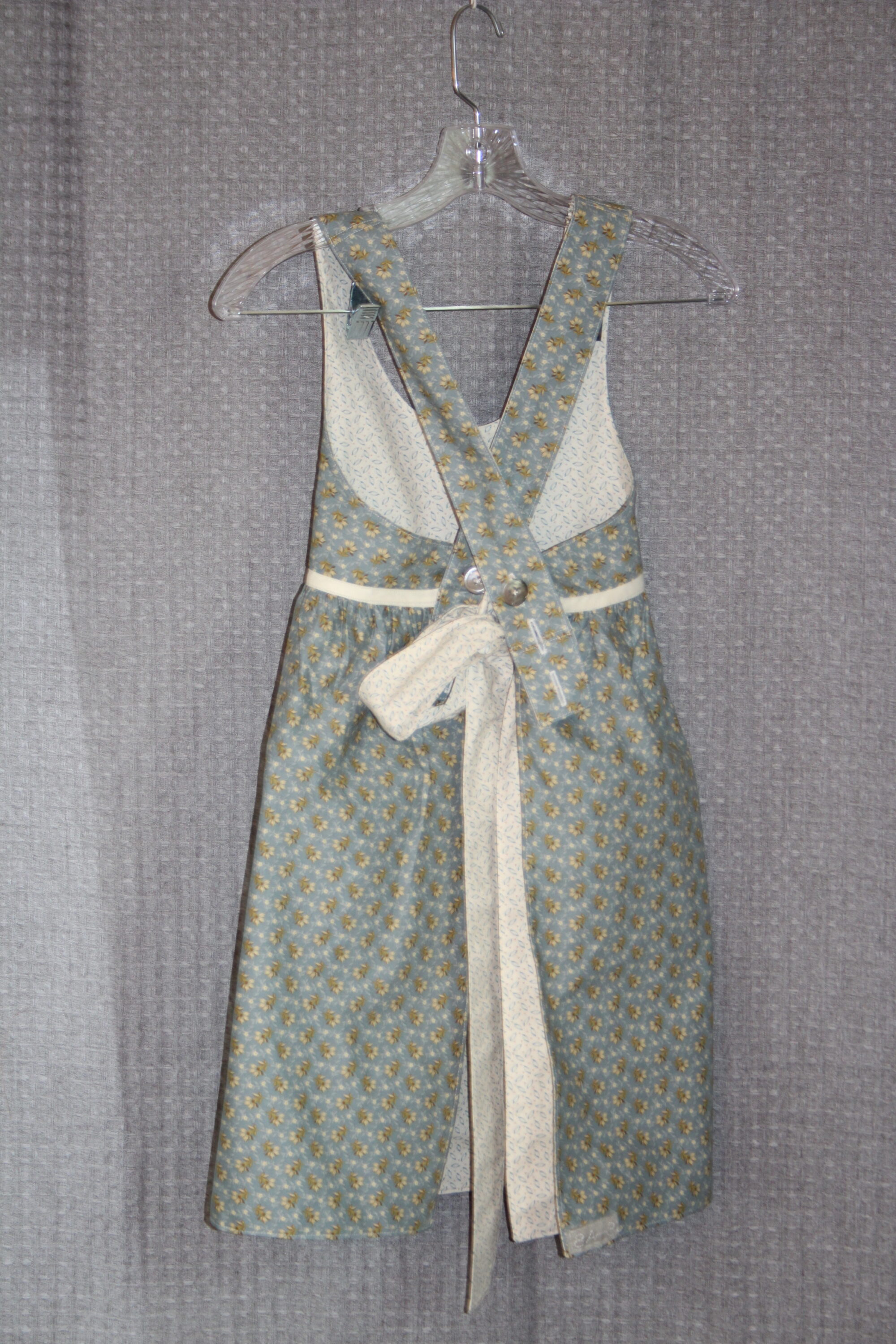
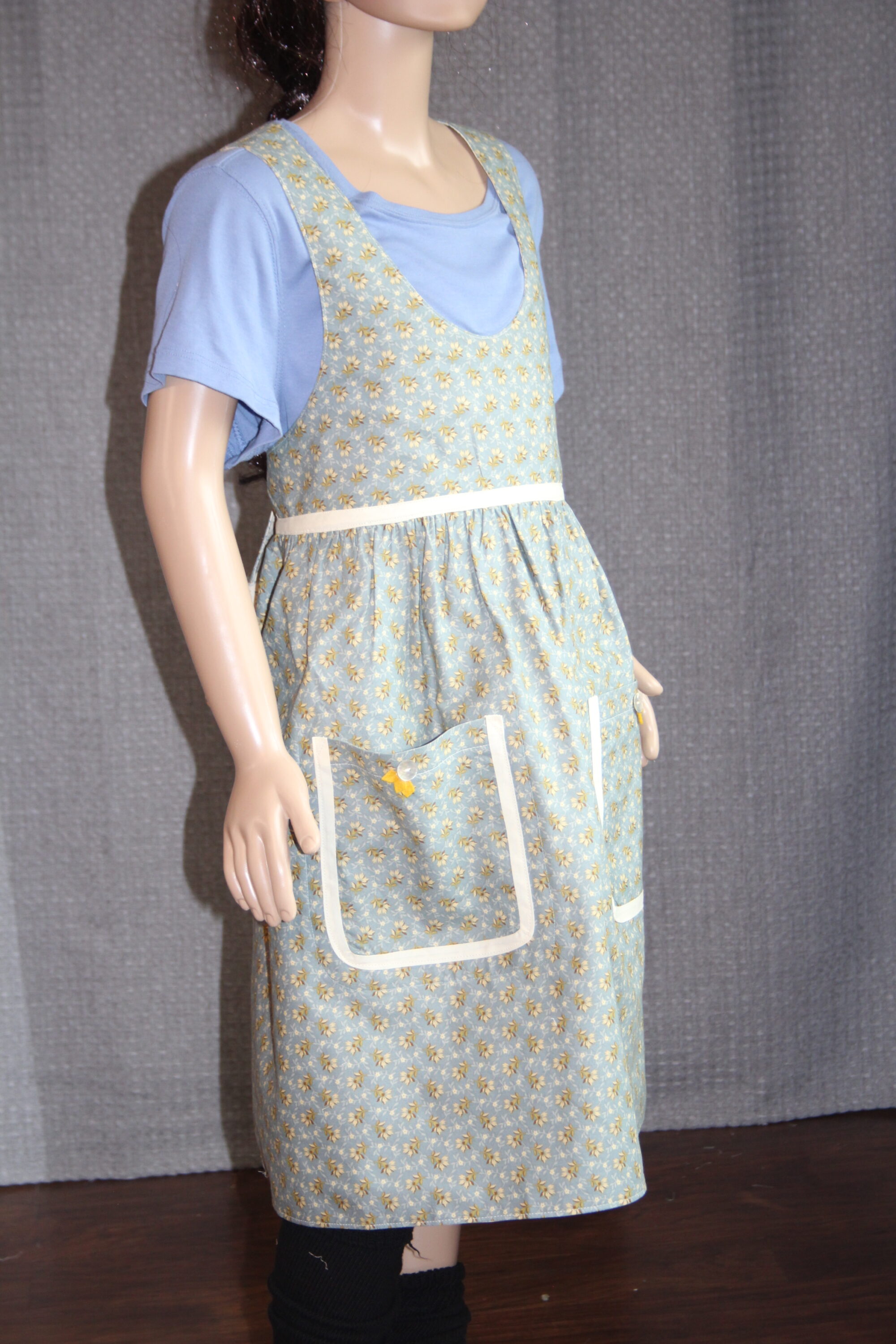
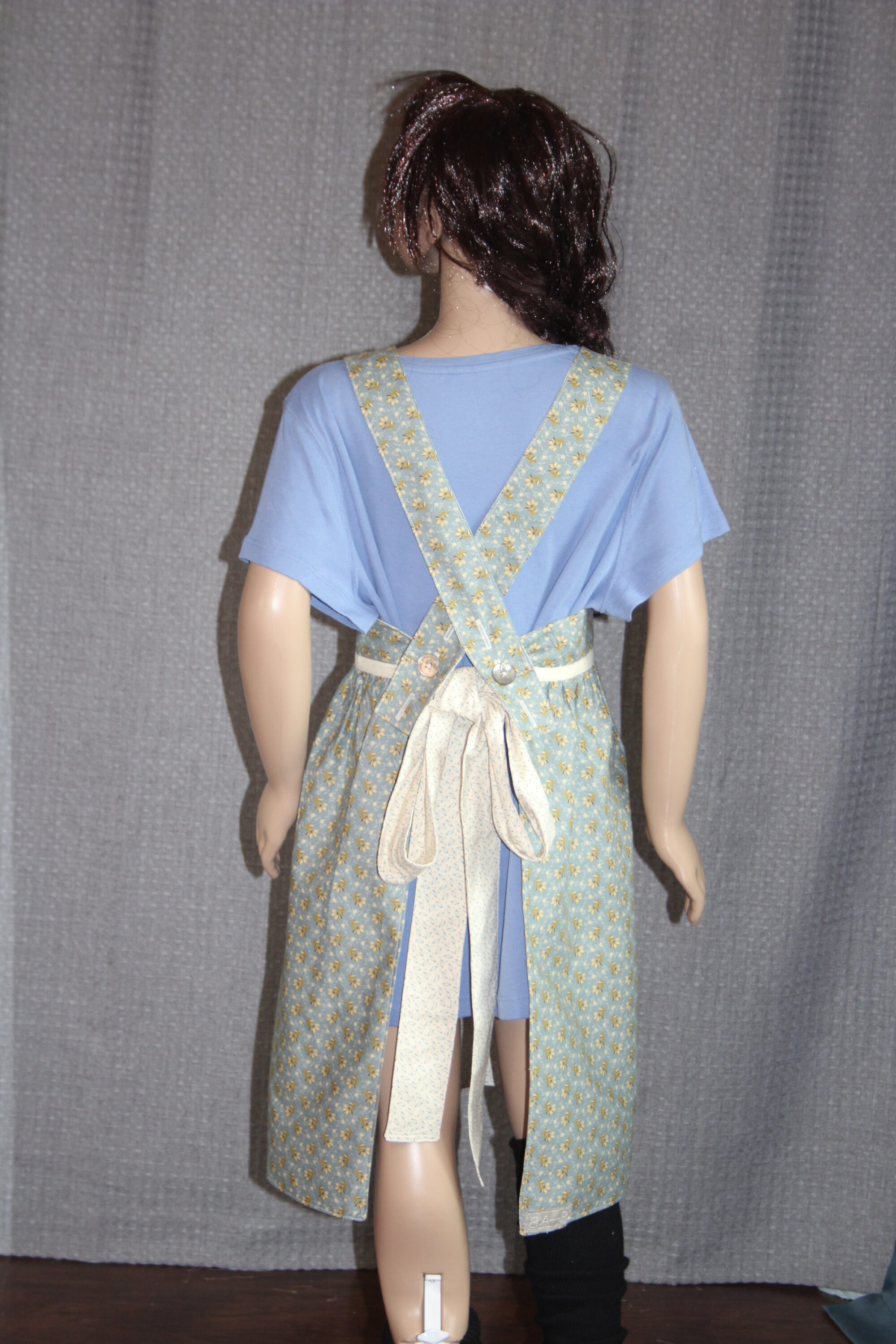
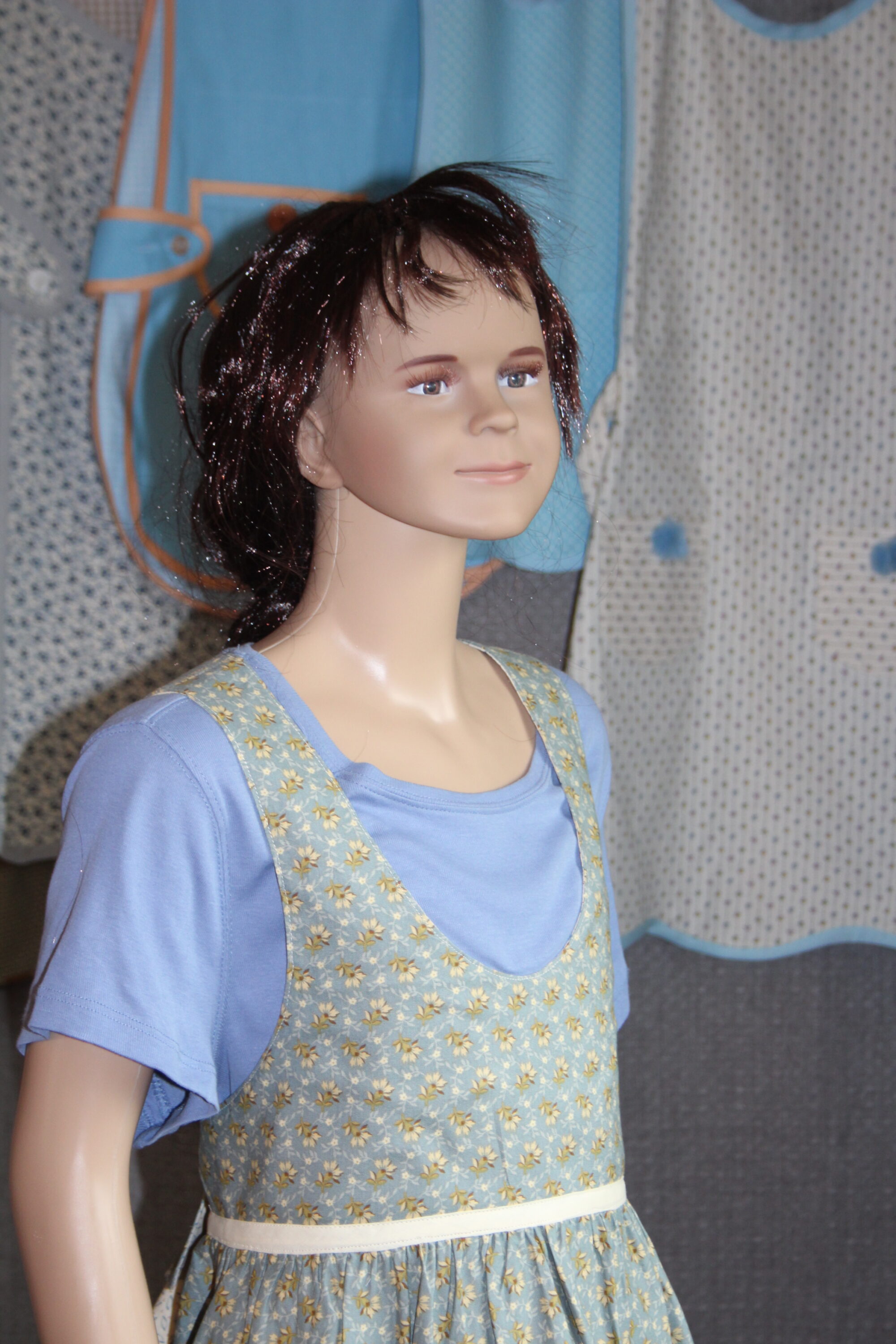
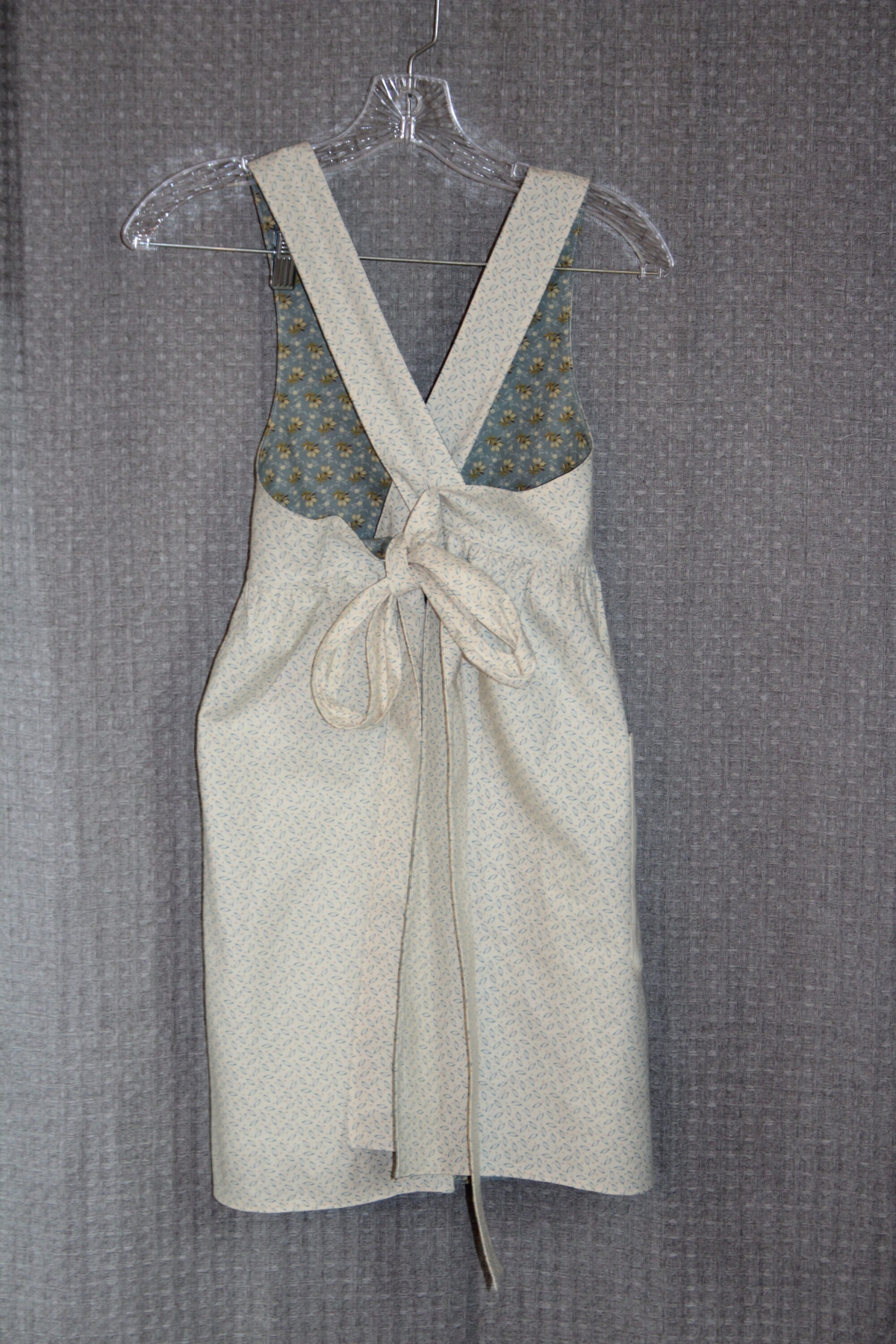

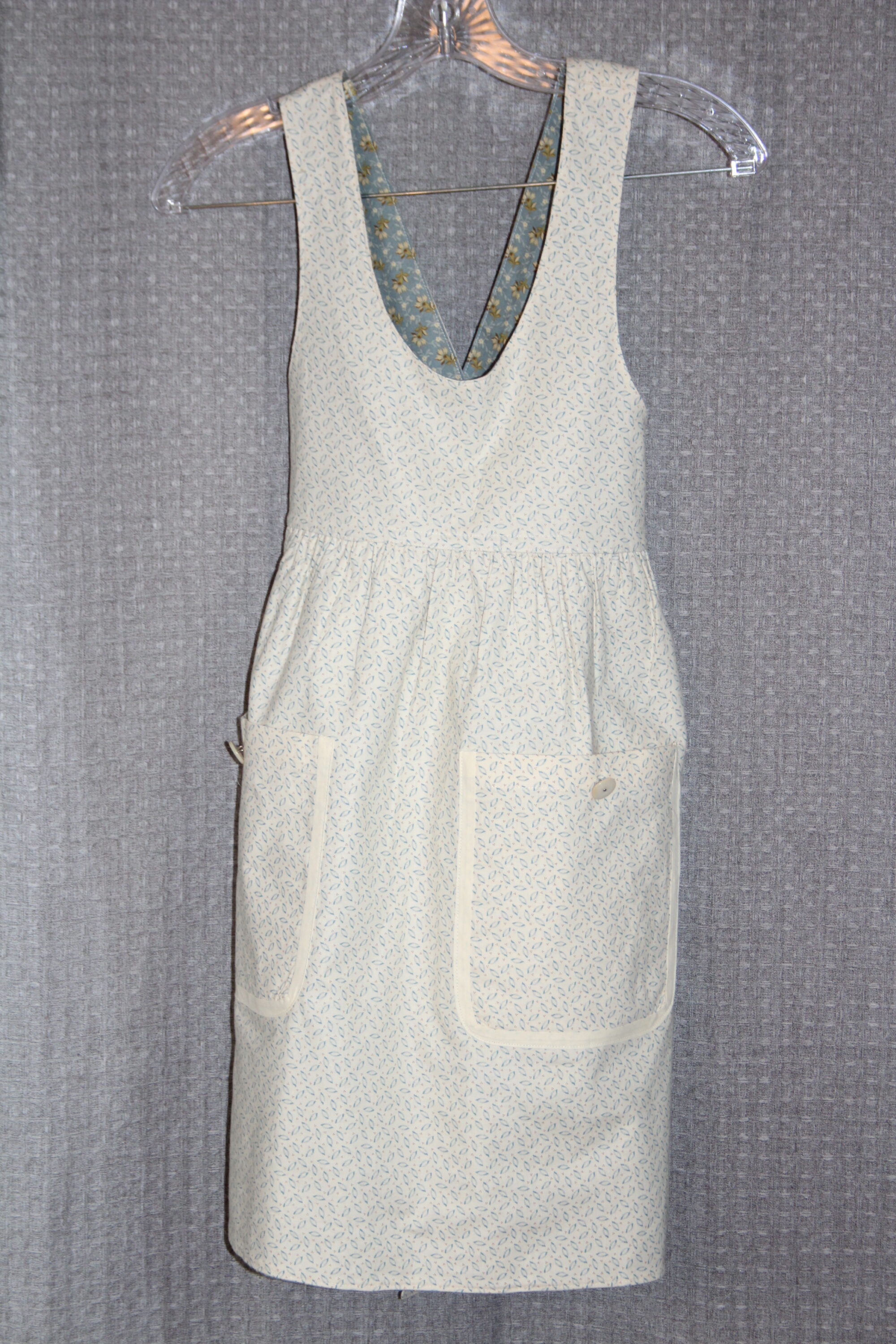
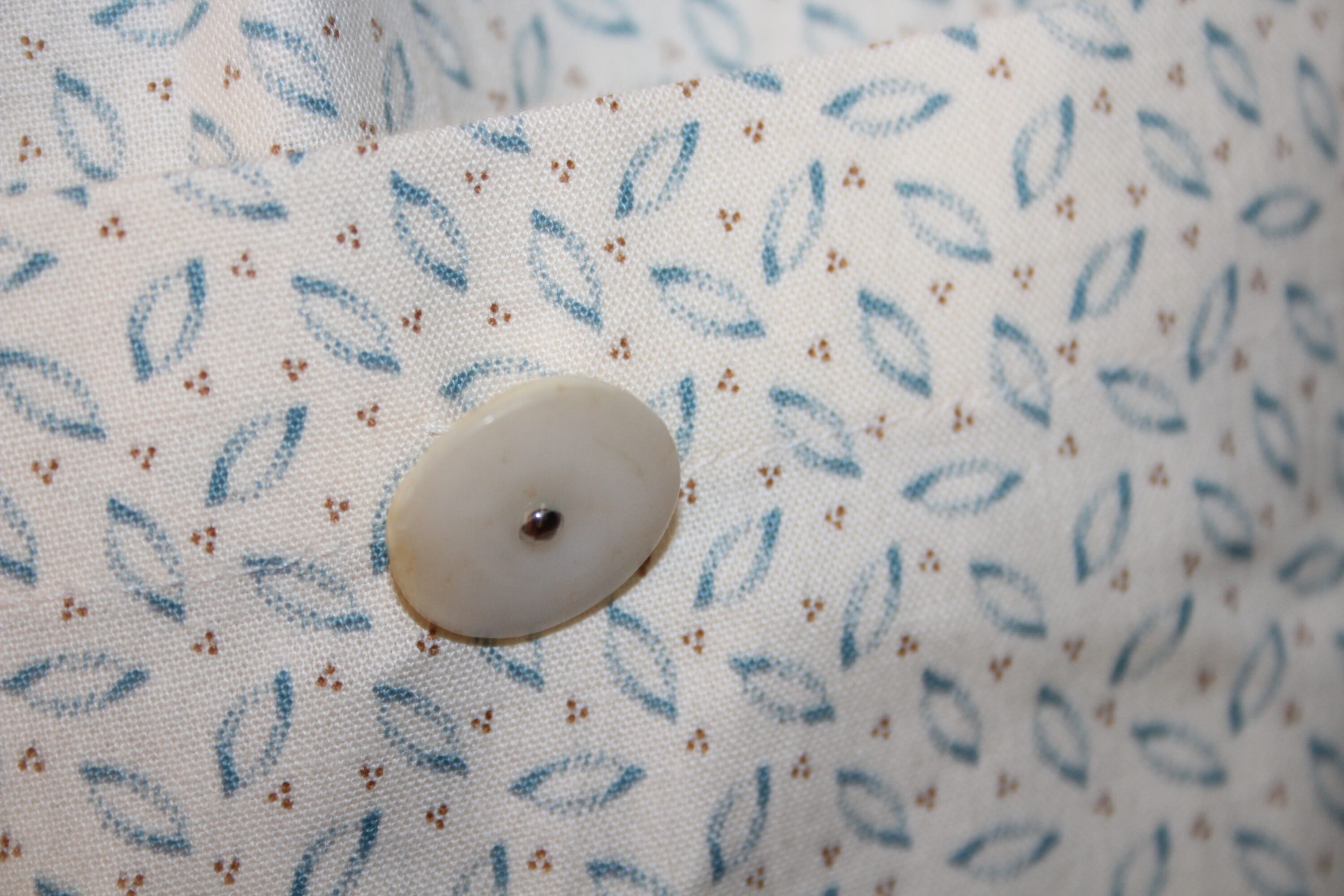

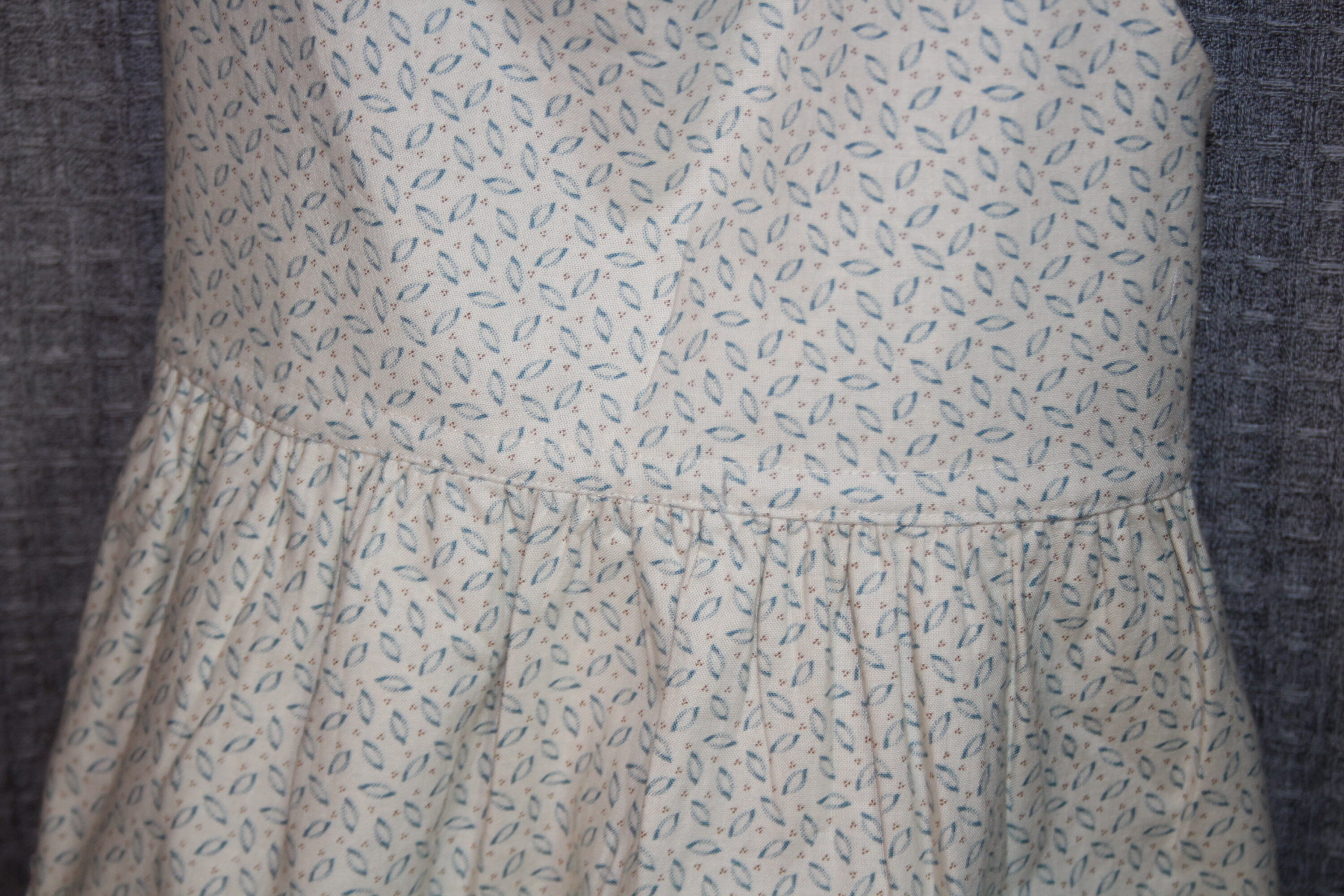
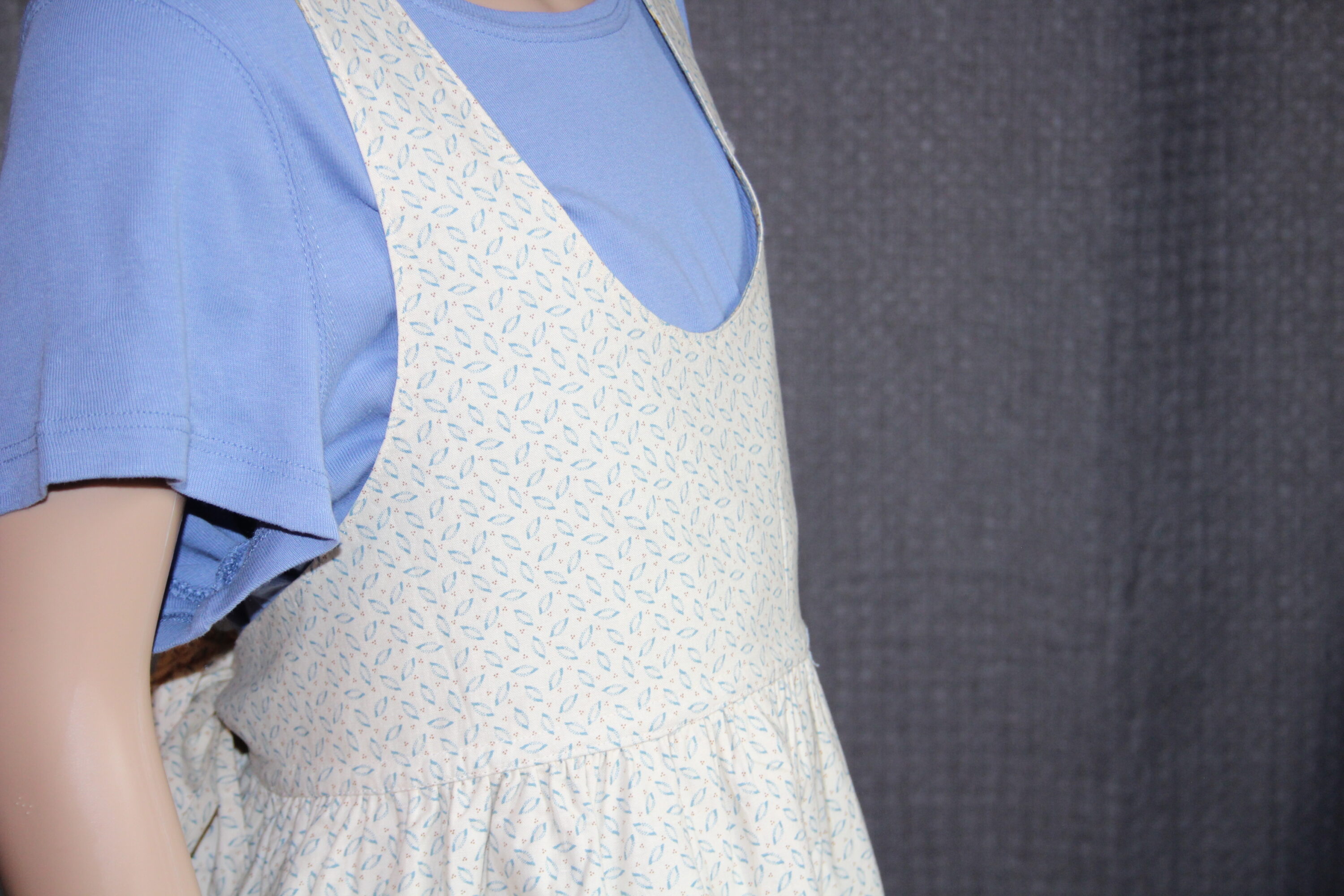
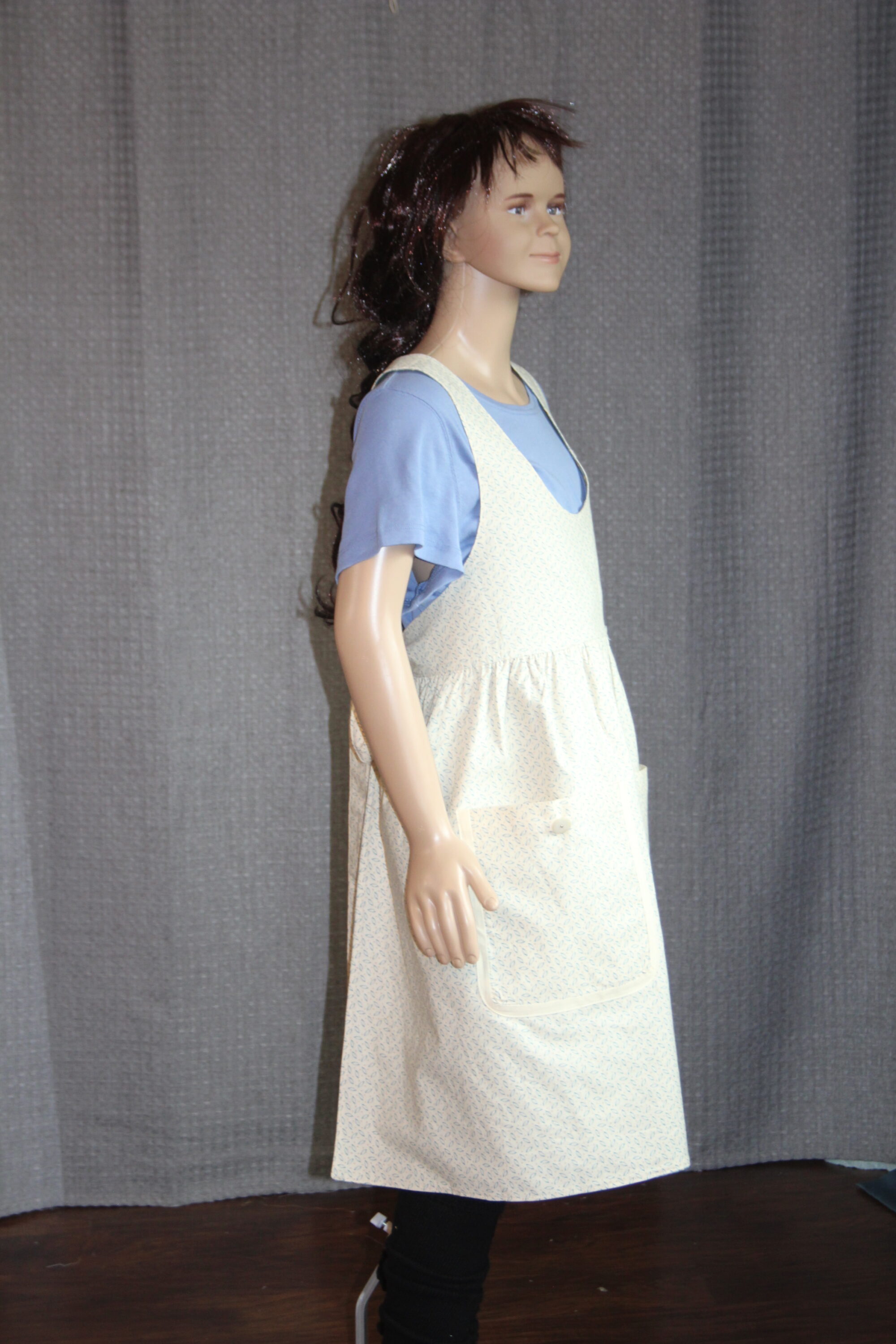
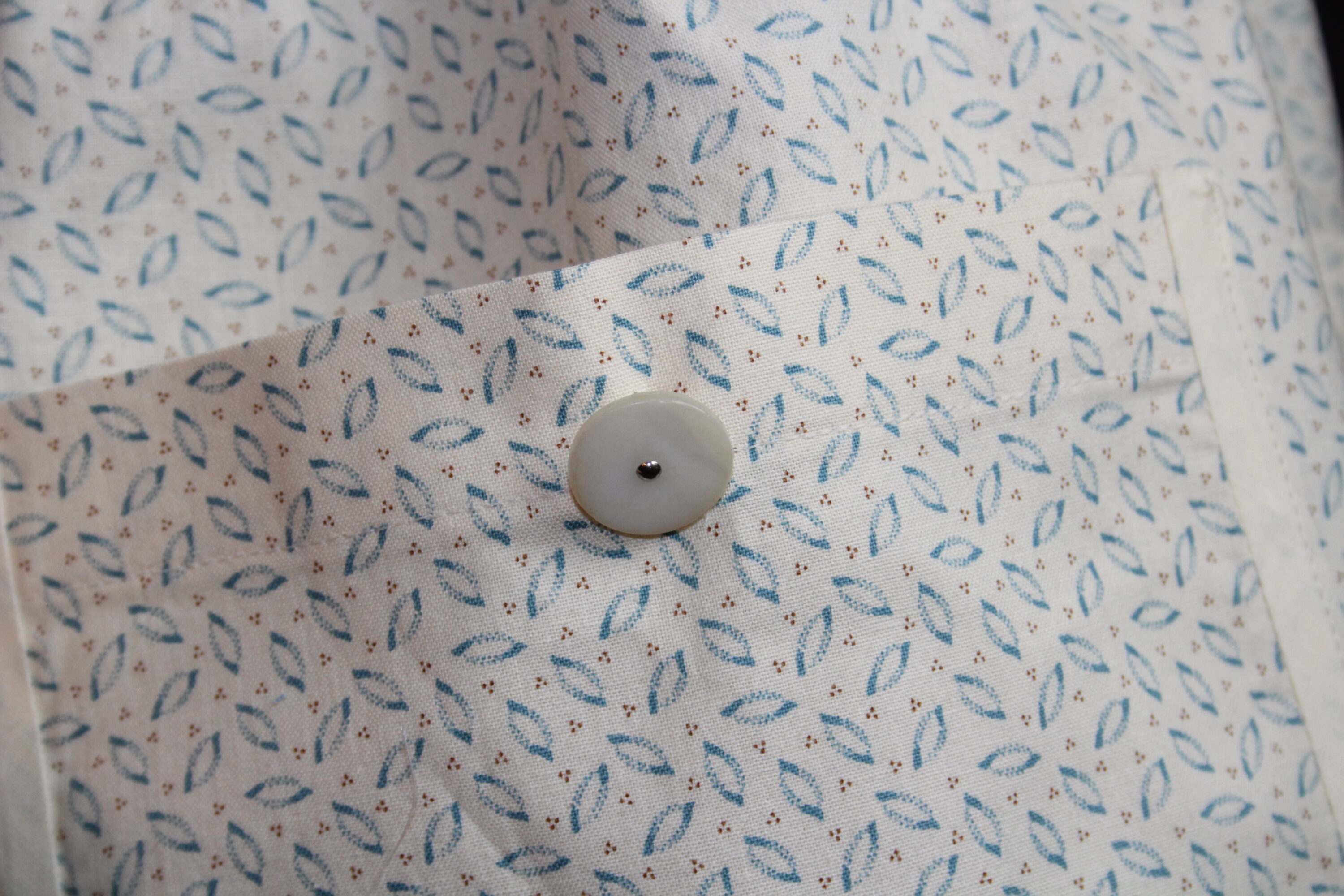
12A.4 (size 12 reversible deep green with gold fabric reverses to teal dots on ecru with tan bias in the vintage long and low waisted style of a woman’s garment as opposed to the little girl. This is the rounded shape and includes handmade custom 100% wool puff ball on the dark side with special mother of pearl integrated shank button on the light side. This is a narrow profile for a tall and lean girl).
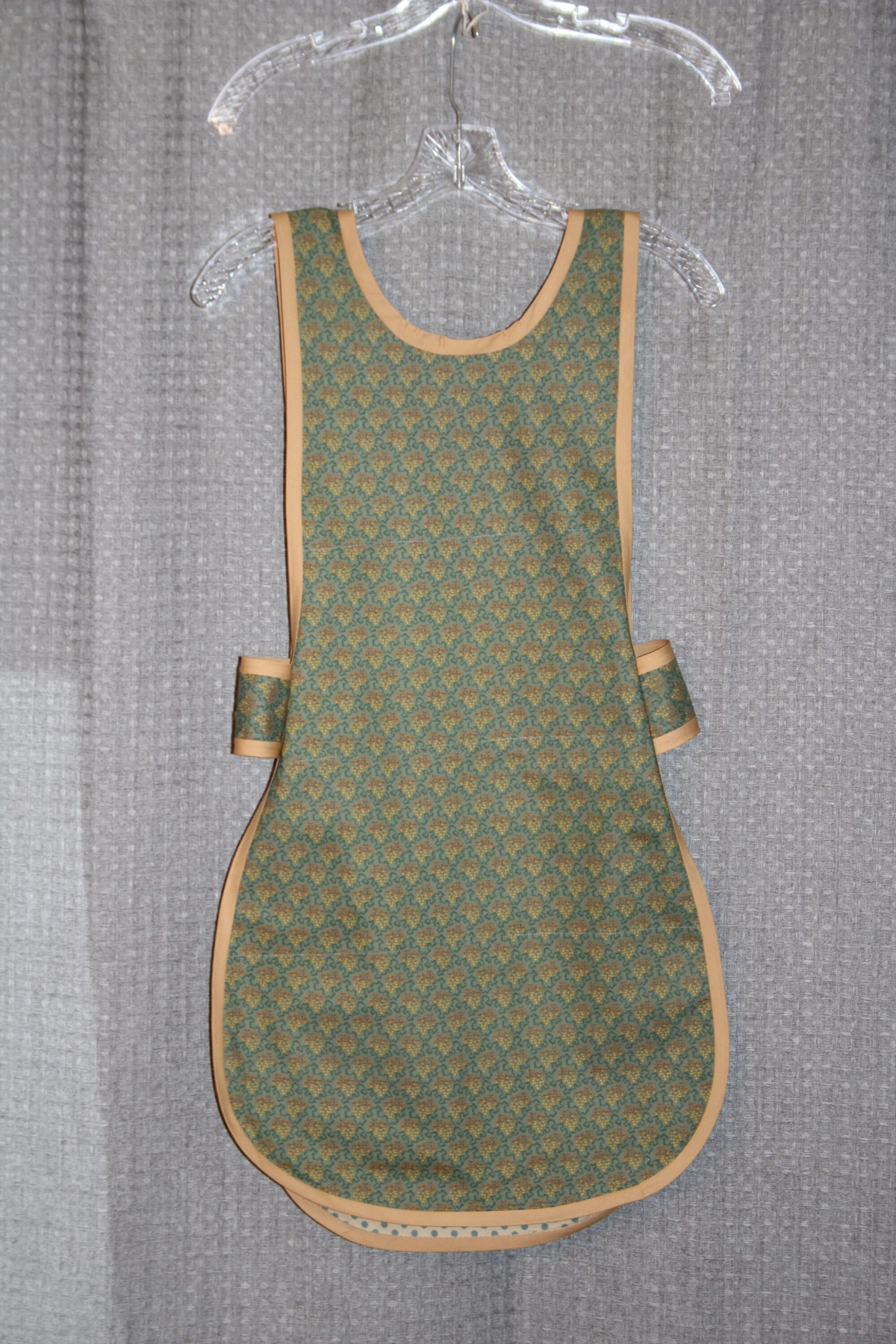
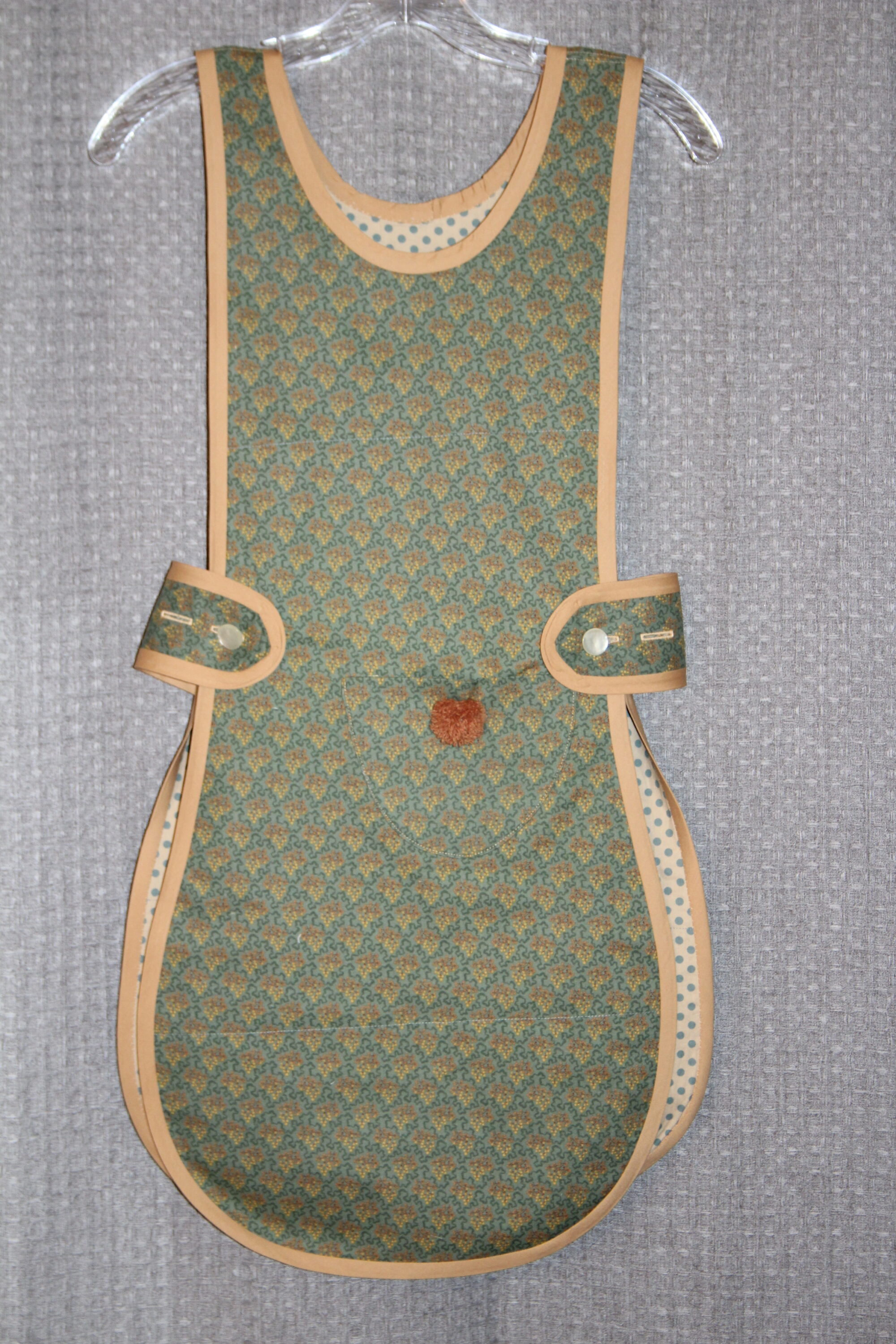
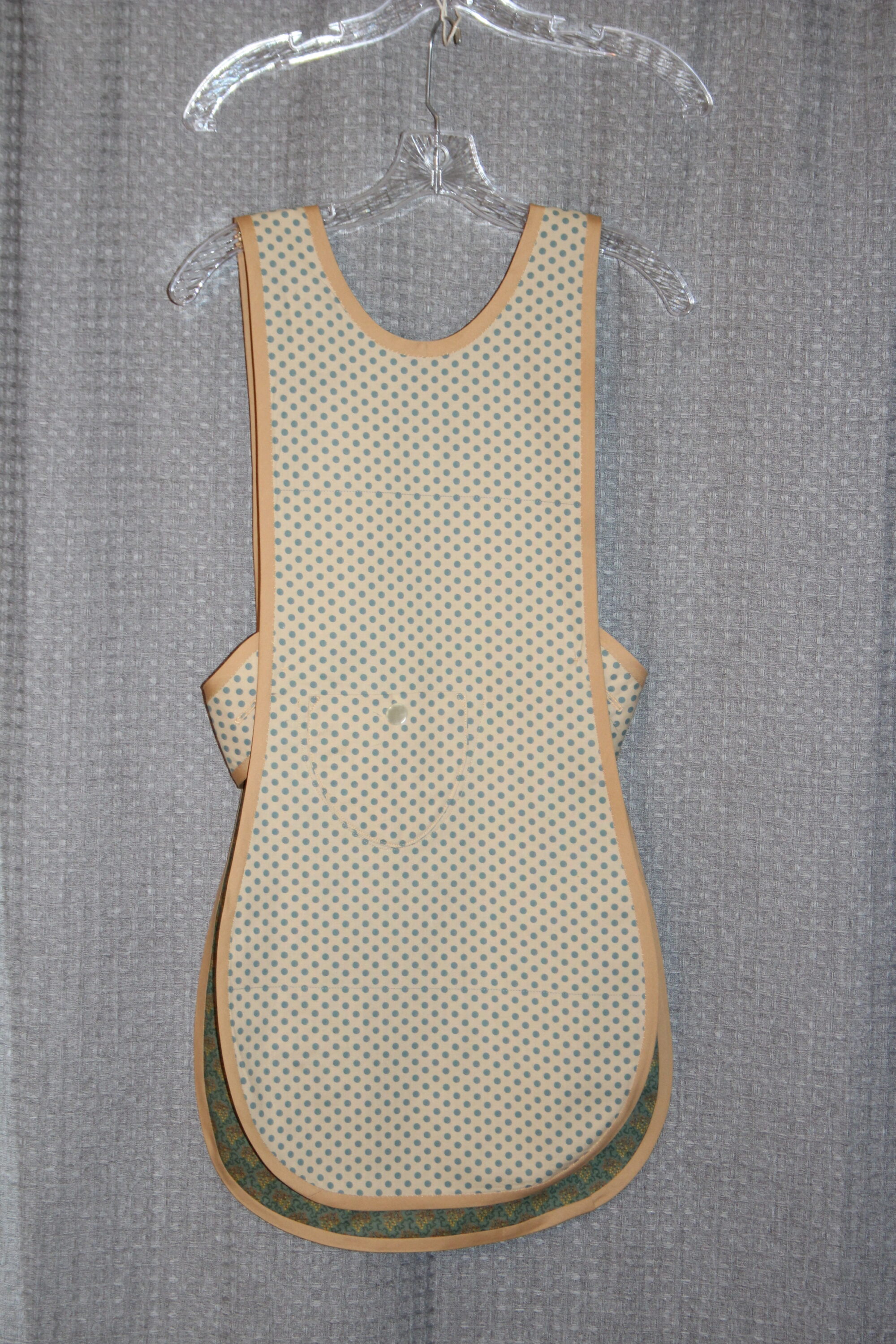
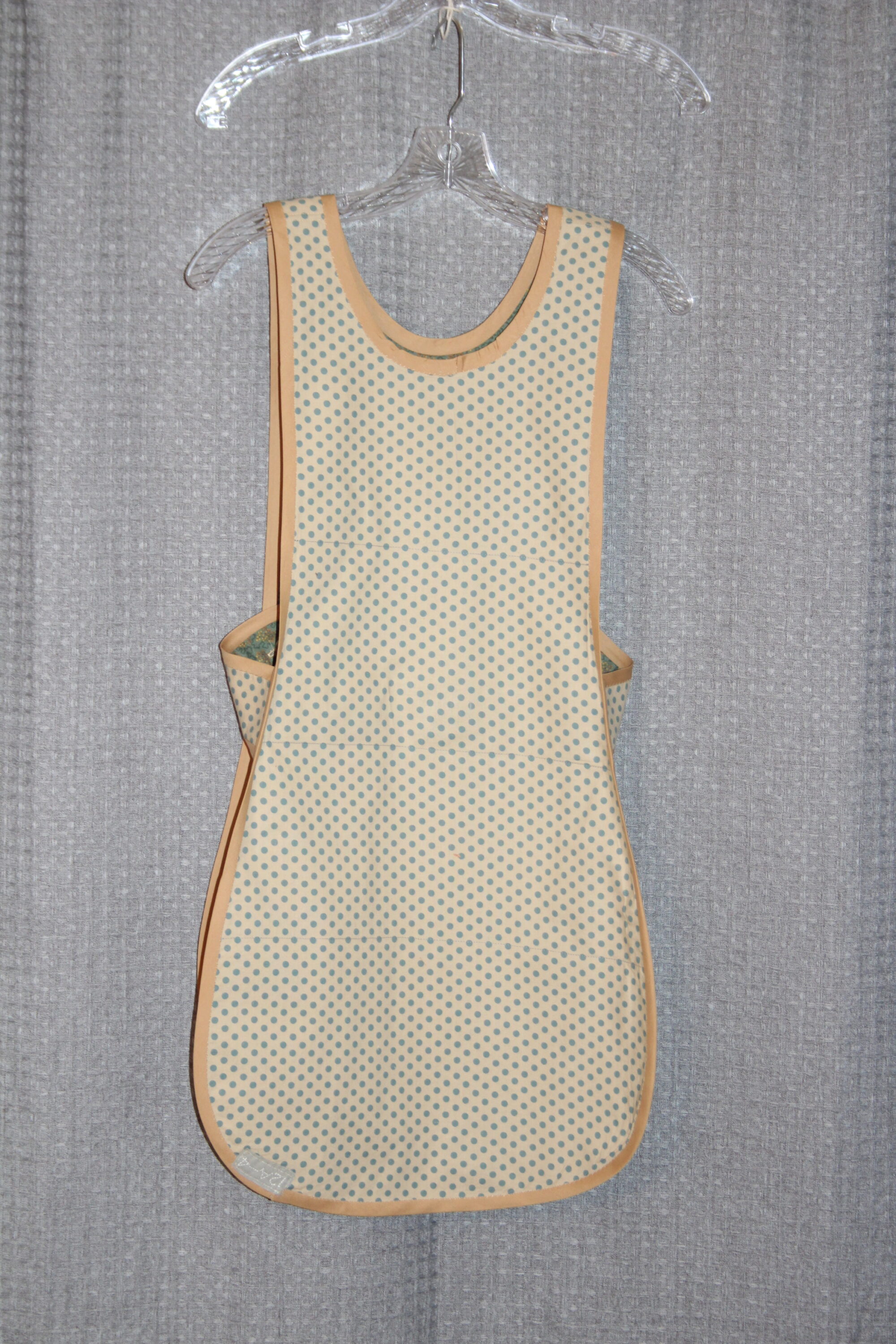
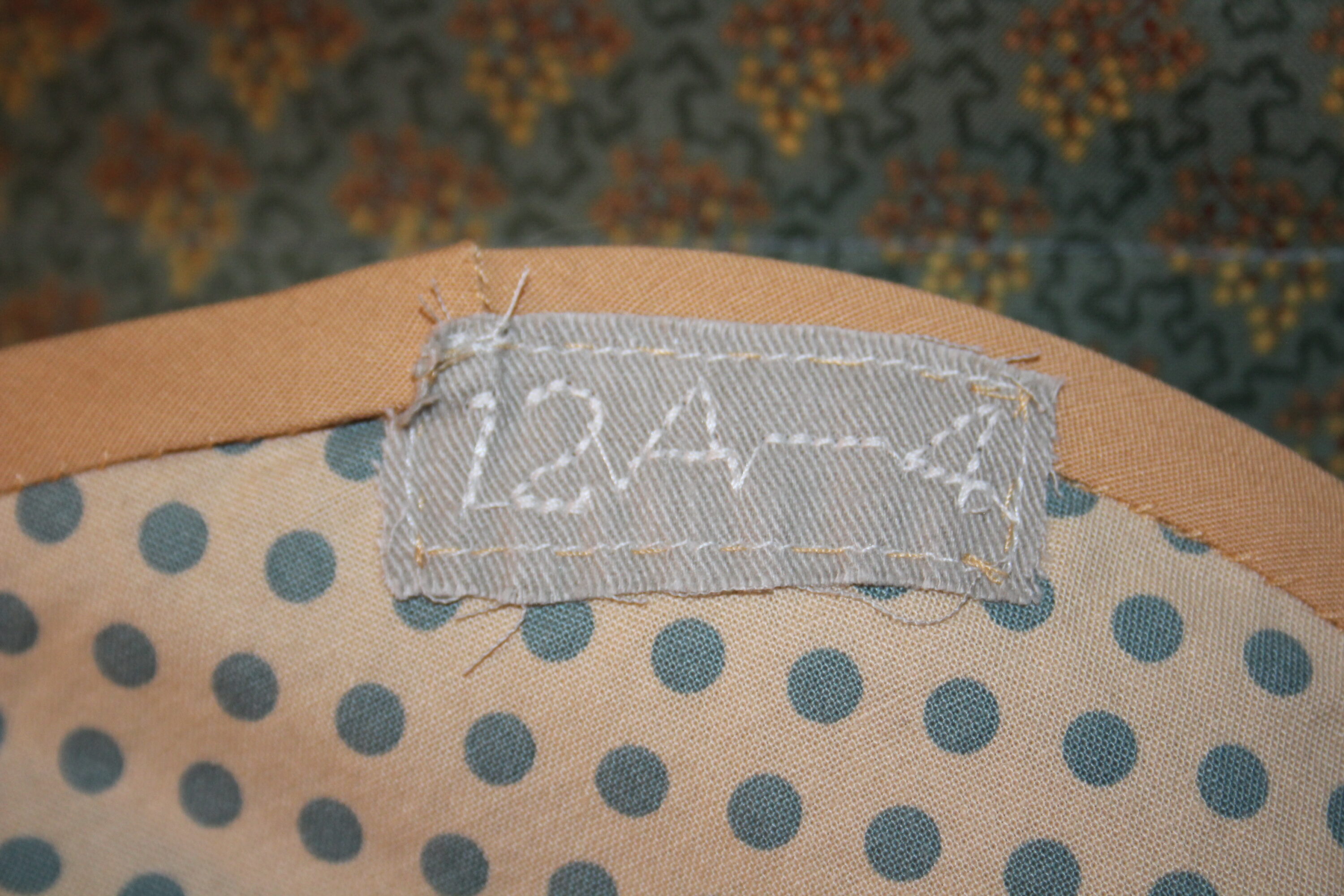
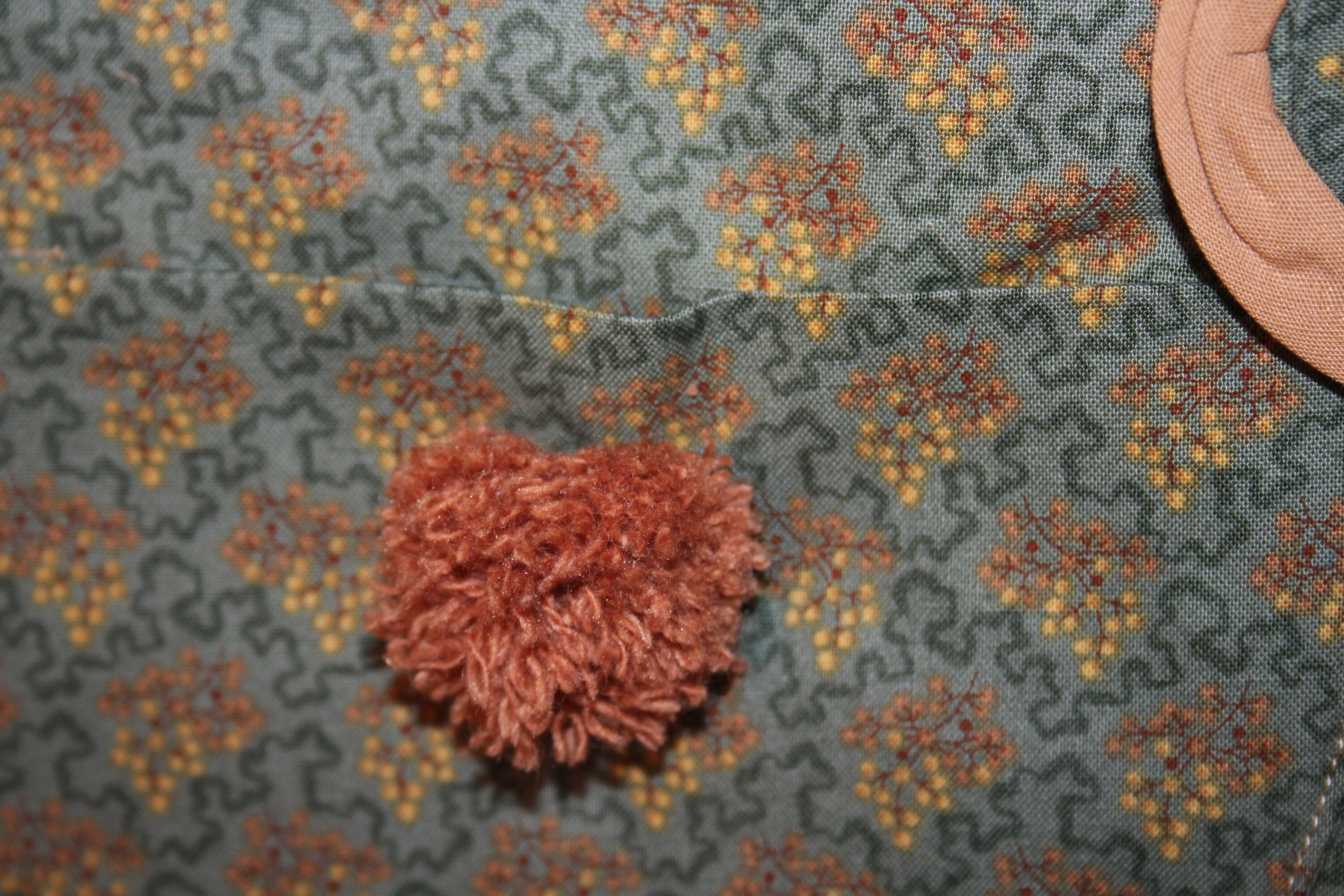
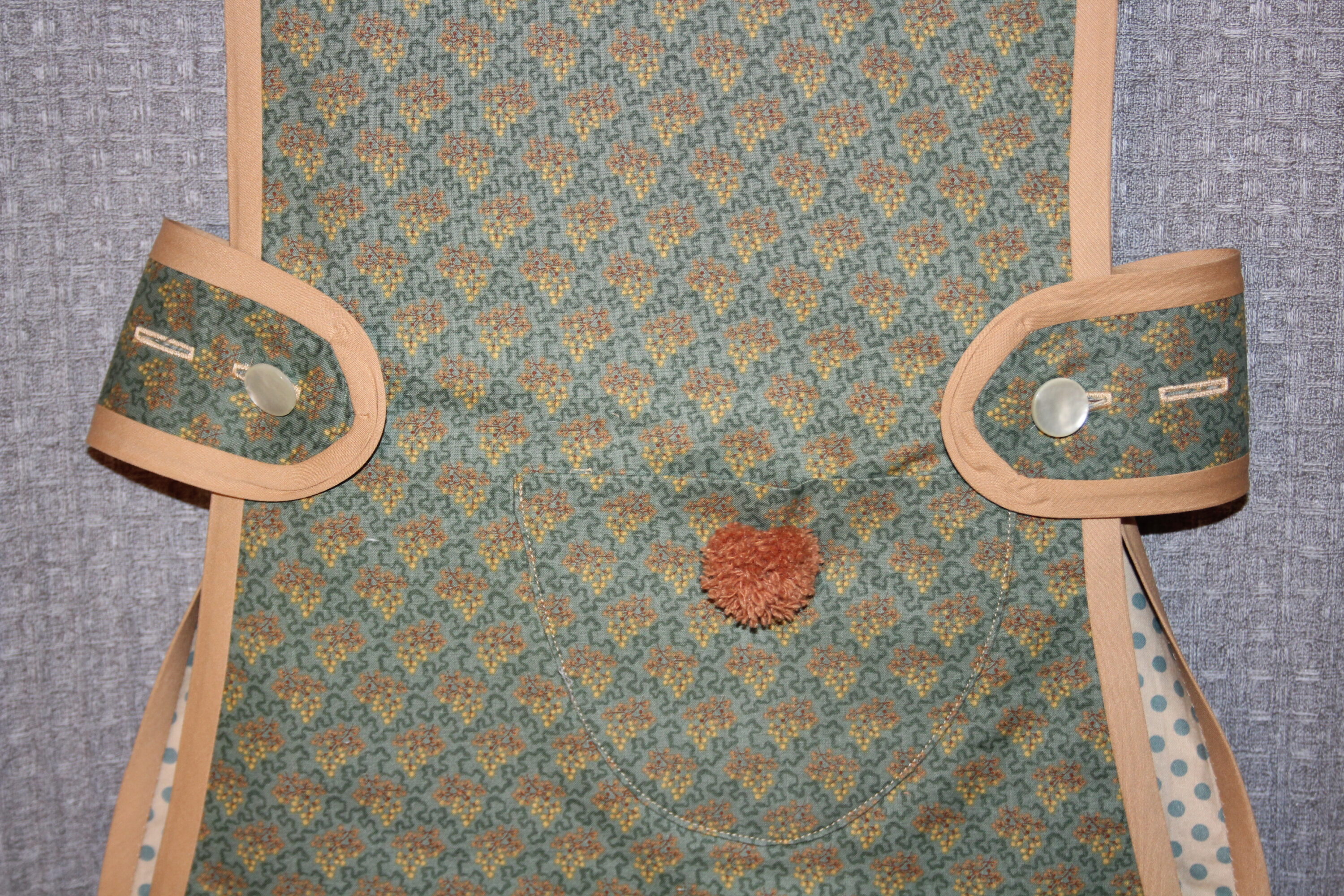
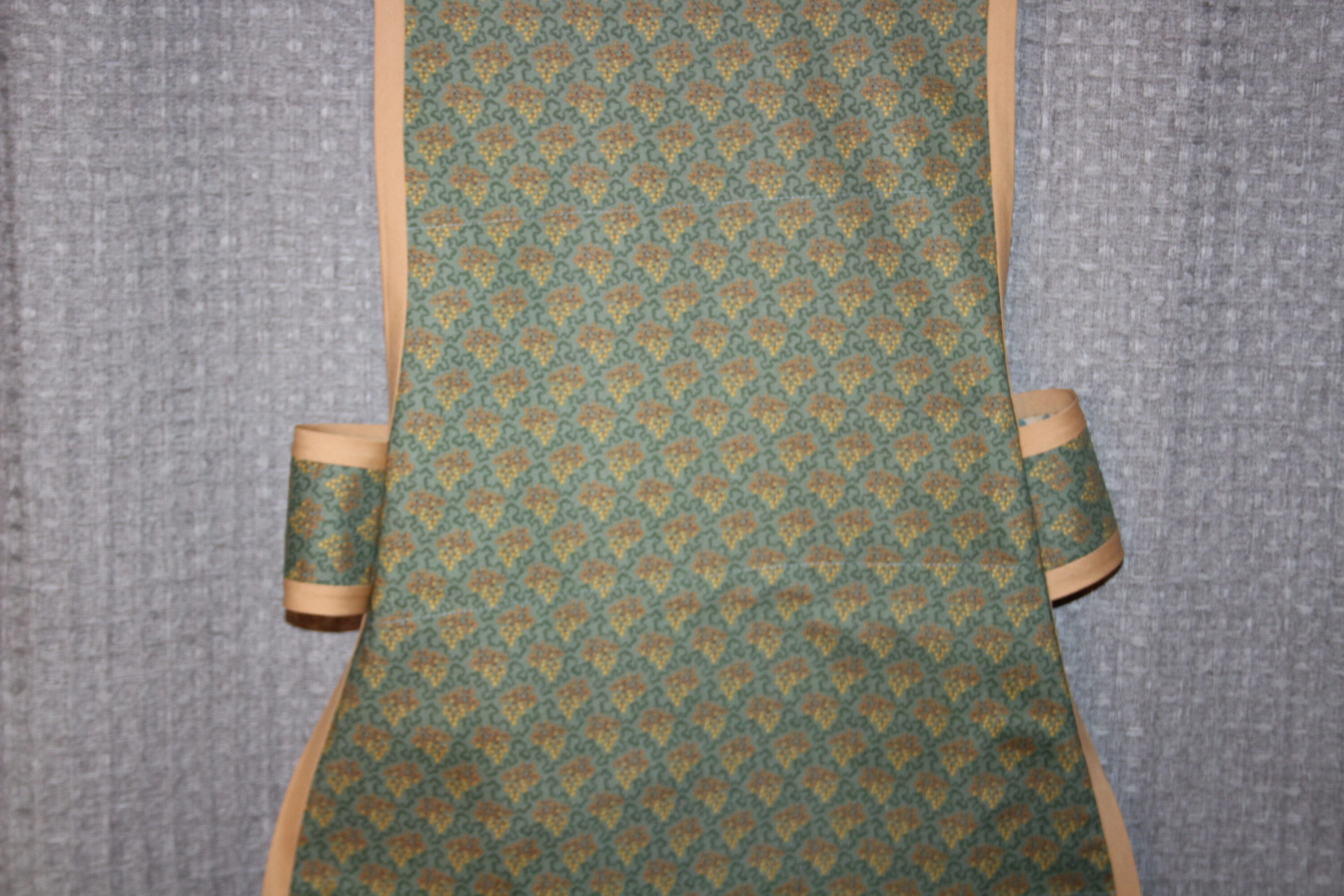
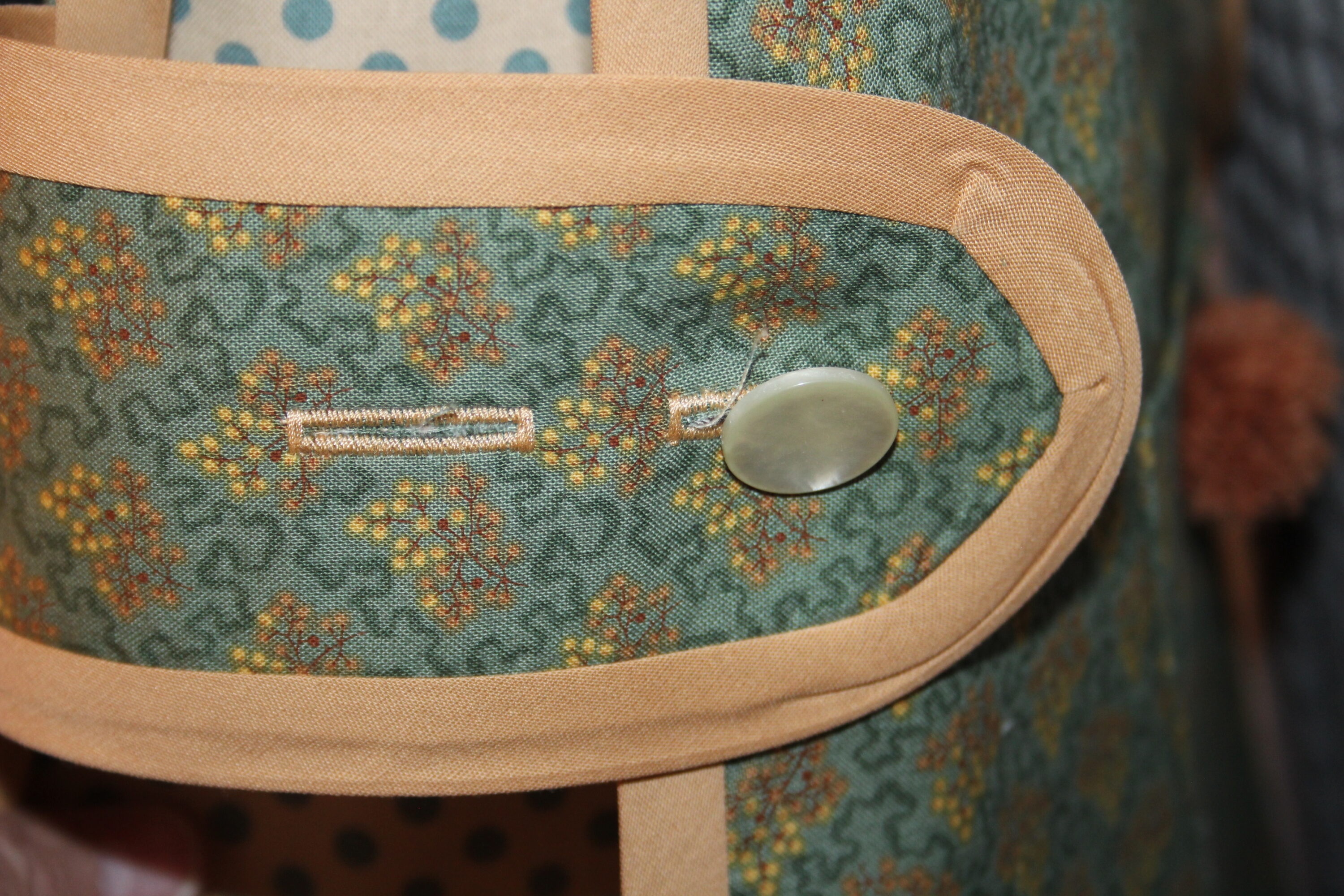

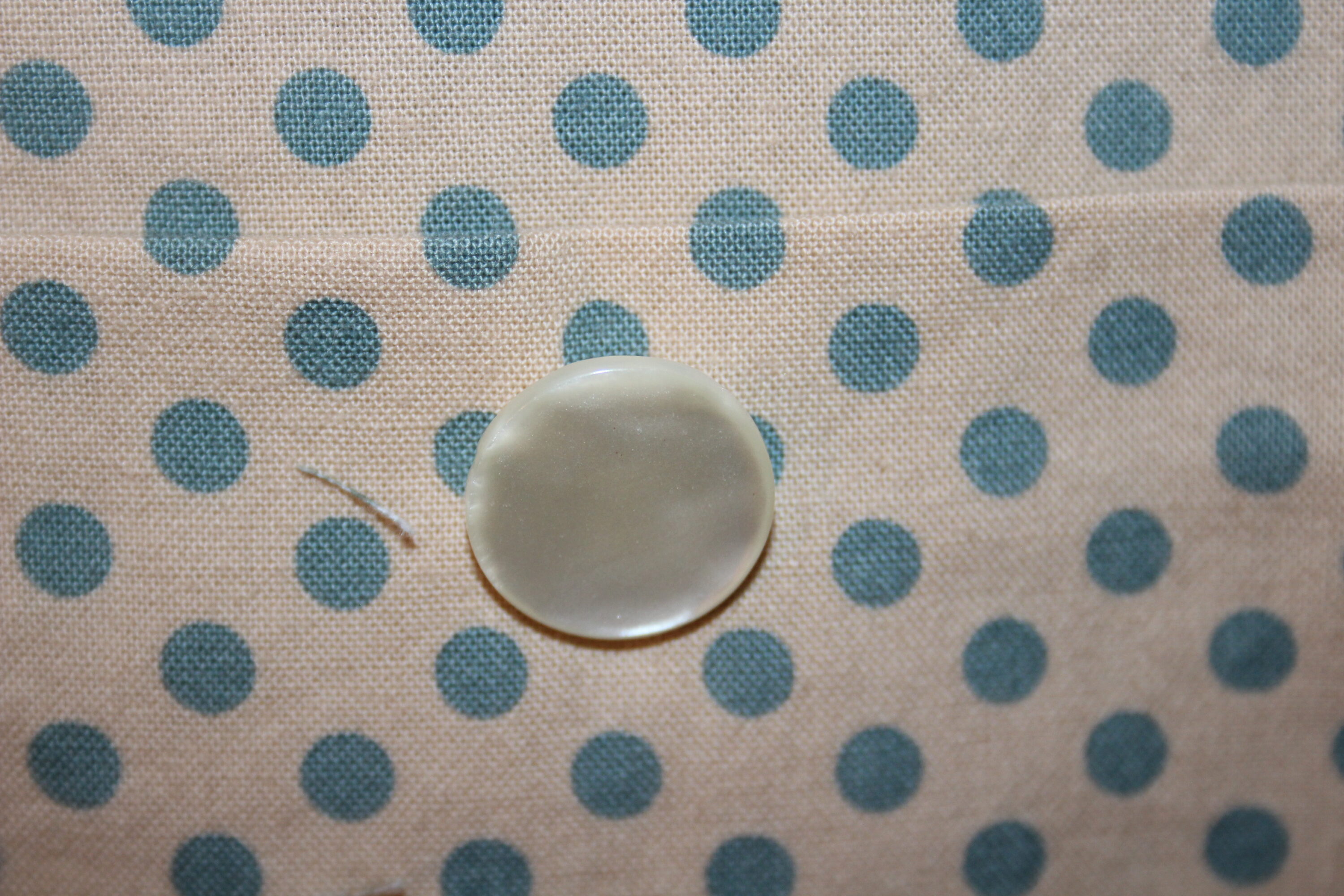
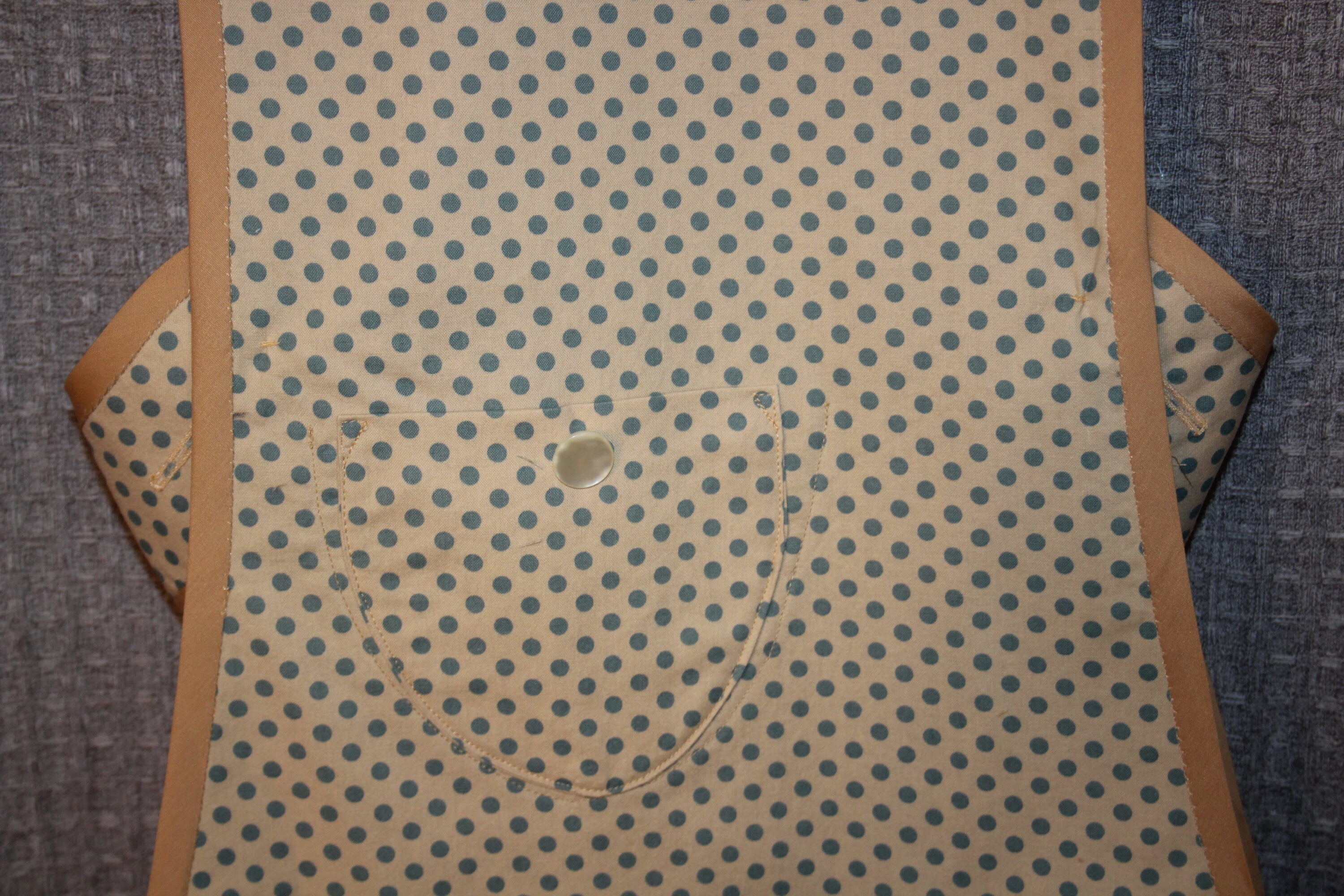
Adult.med.1 (sized for an average adult women with 34″ bust 31″ waist, taken directly from the vintage pattern, “Mamma and Me” that was produced in a woman’s journal in 1925, this is a front only design and is reversible. The front is a fabric designed for the Downton Abbey show; a many colored dot with dash design reproduction ’20’s. Reverse is bright blue with large ivory polka dots. Featured on on side are handmade 100% wool yarn puff balls – balls so popular at the time – and on the other a gorgeous and rare mother of pearl integrated shank button. Photos do not do the notions and trims in these garments justice).

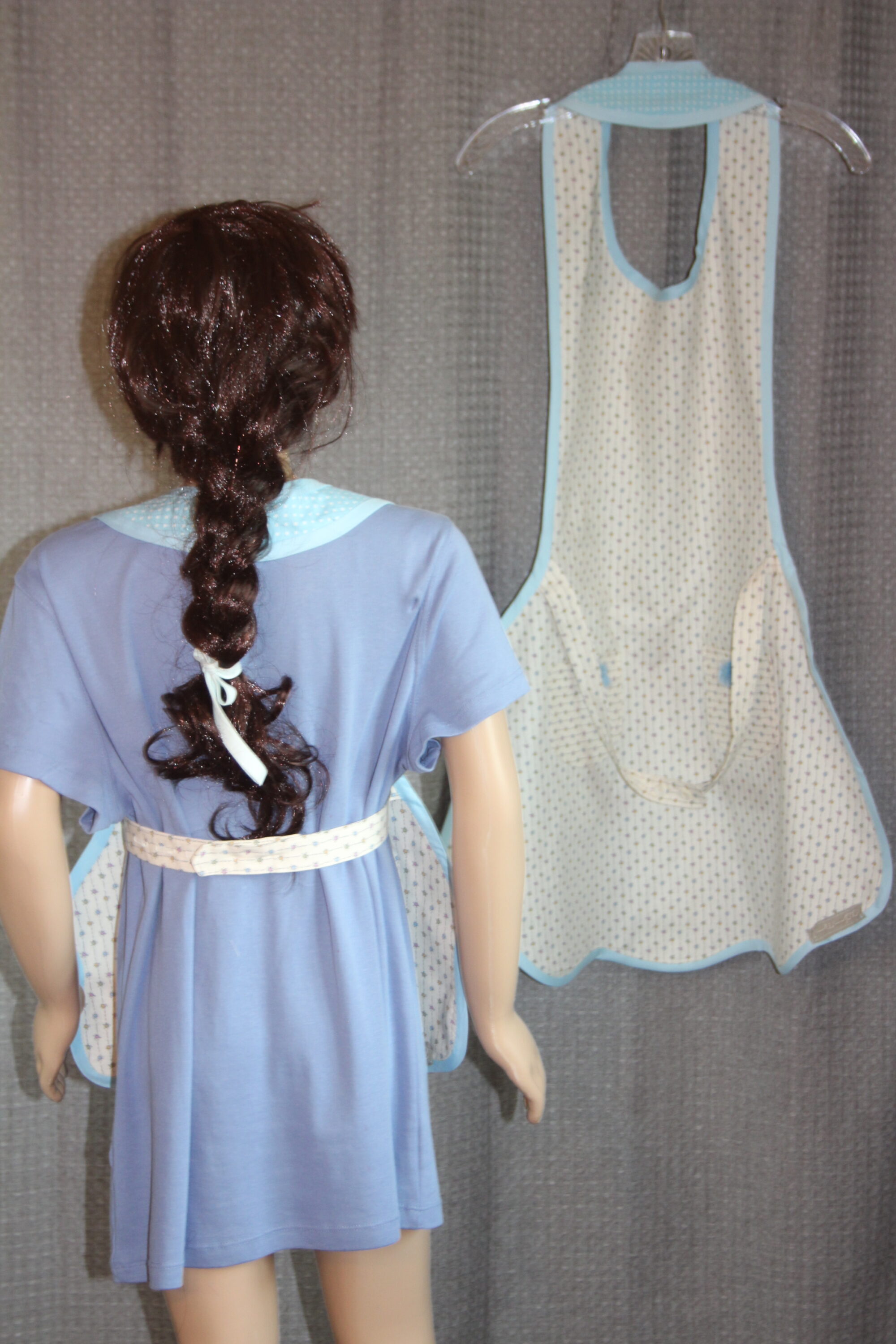
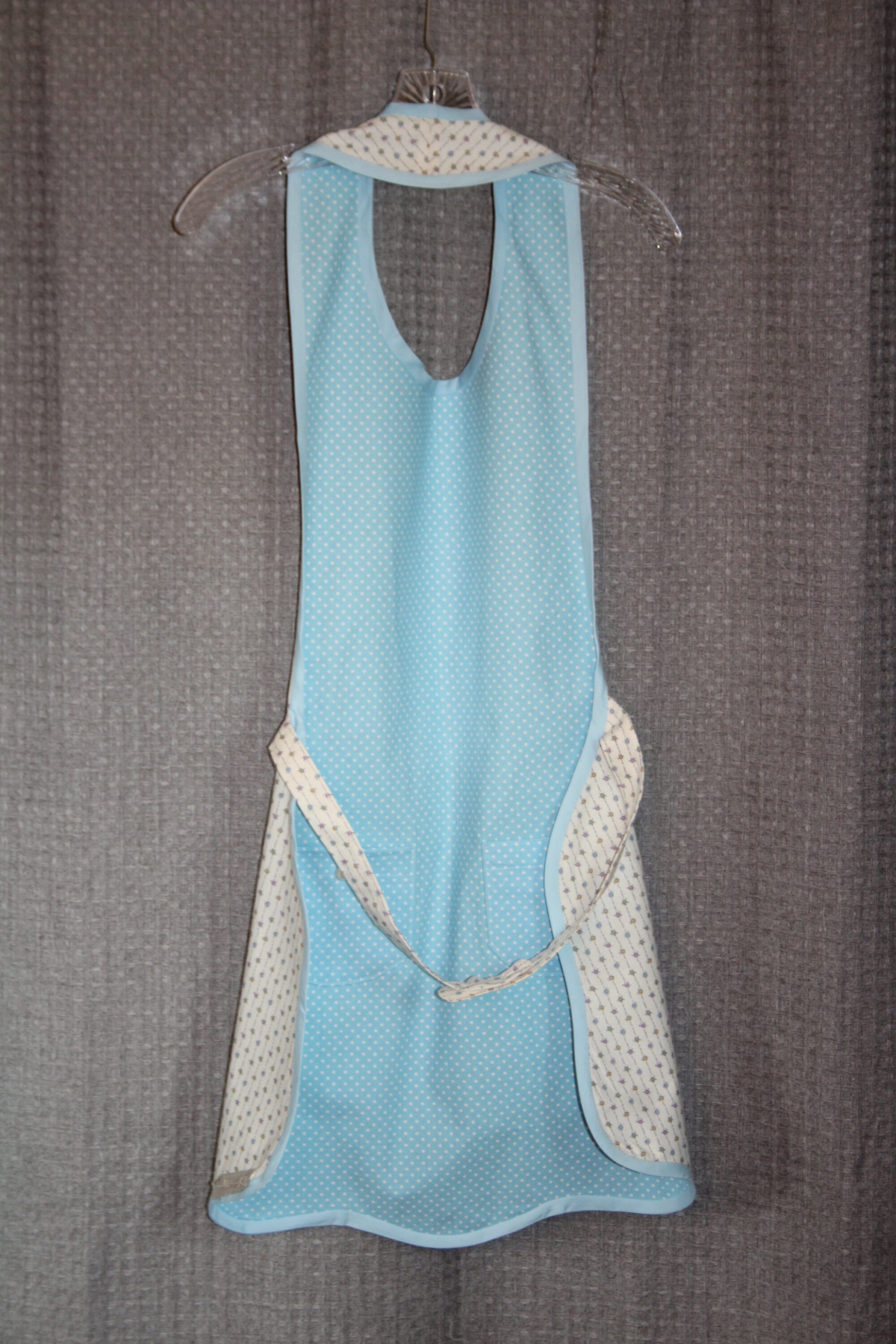
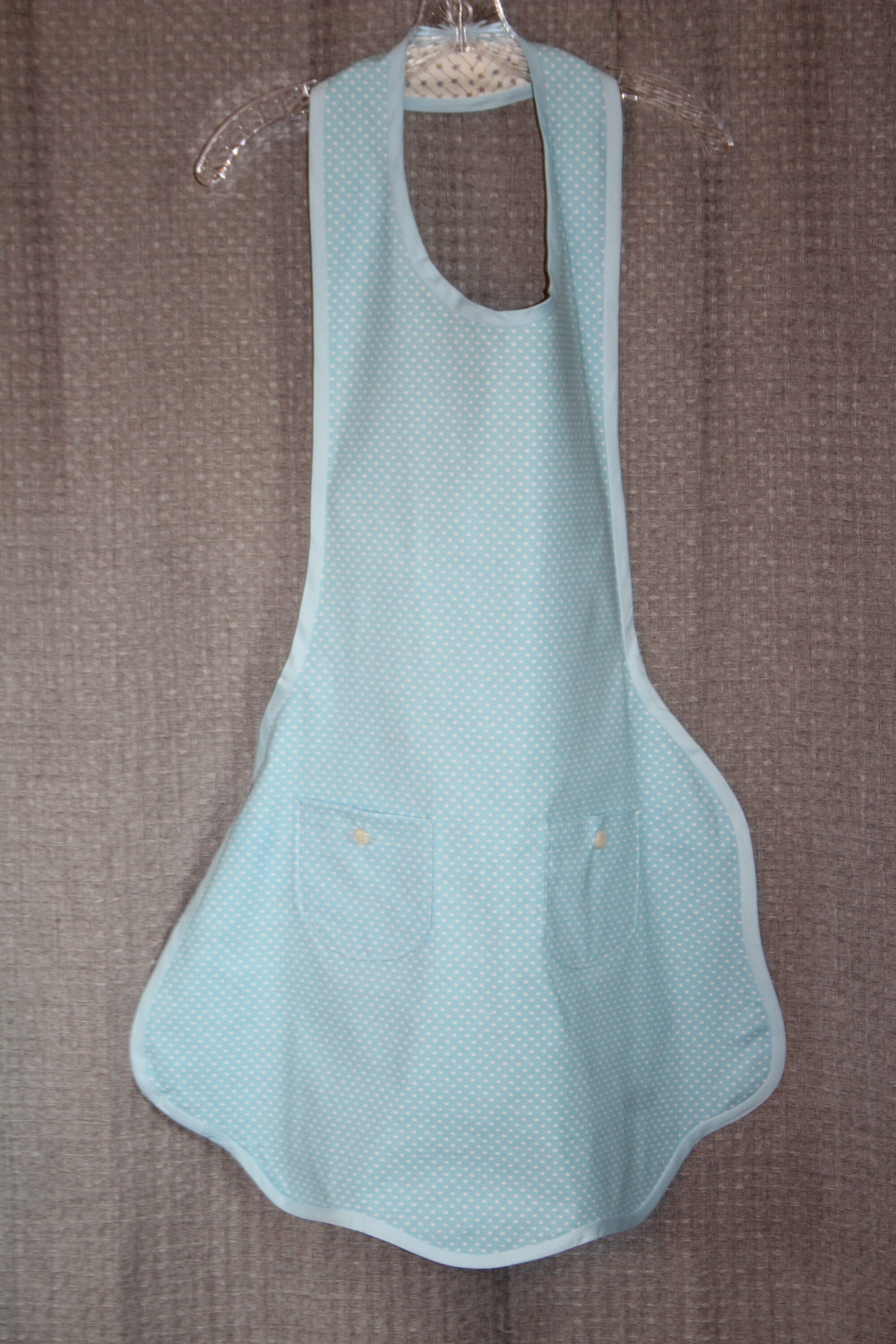
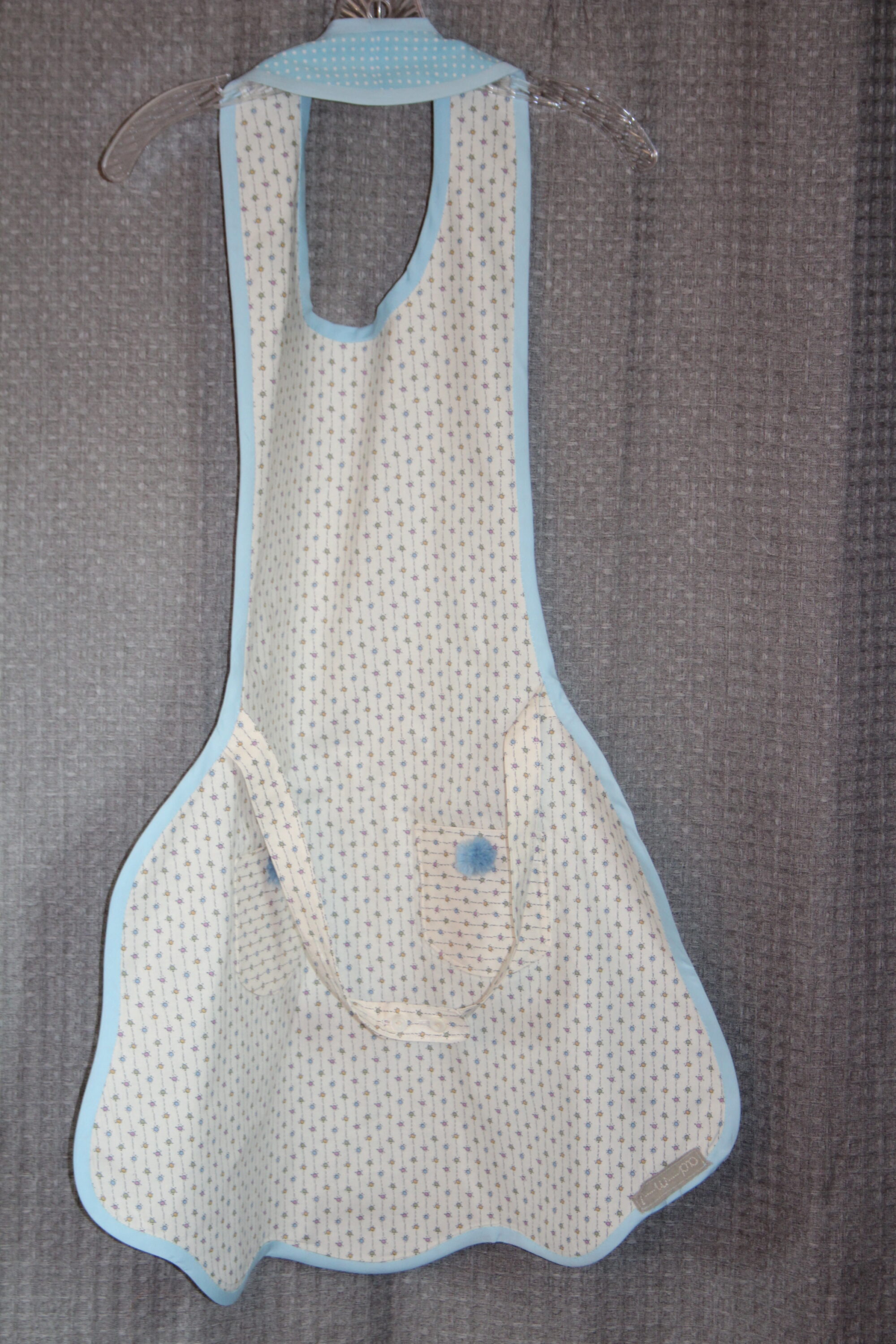
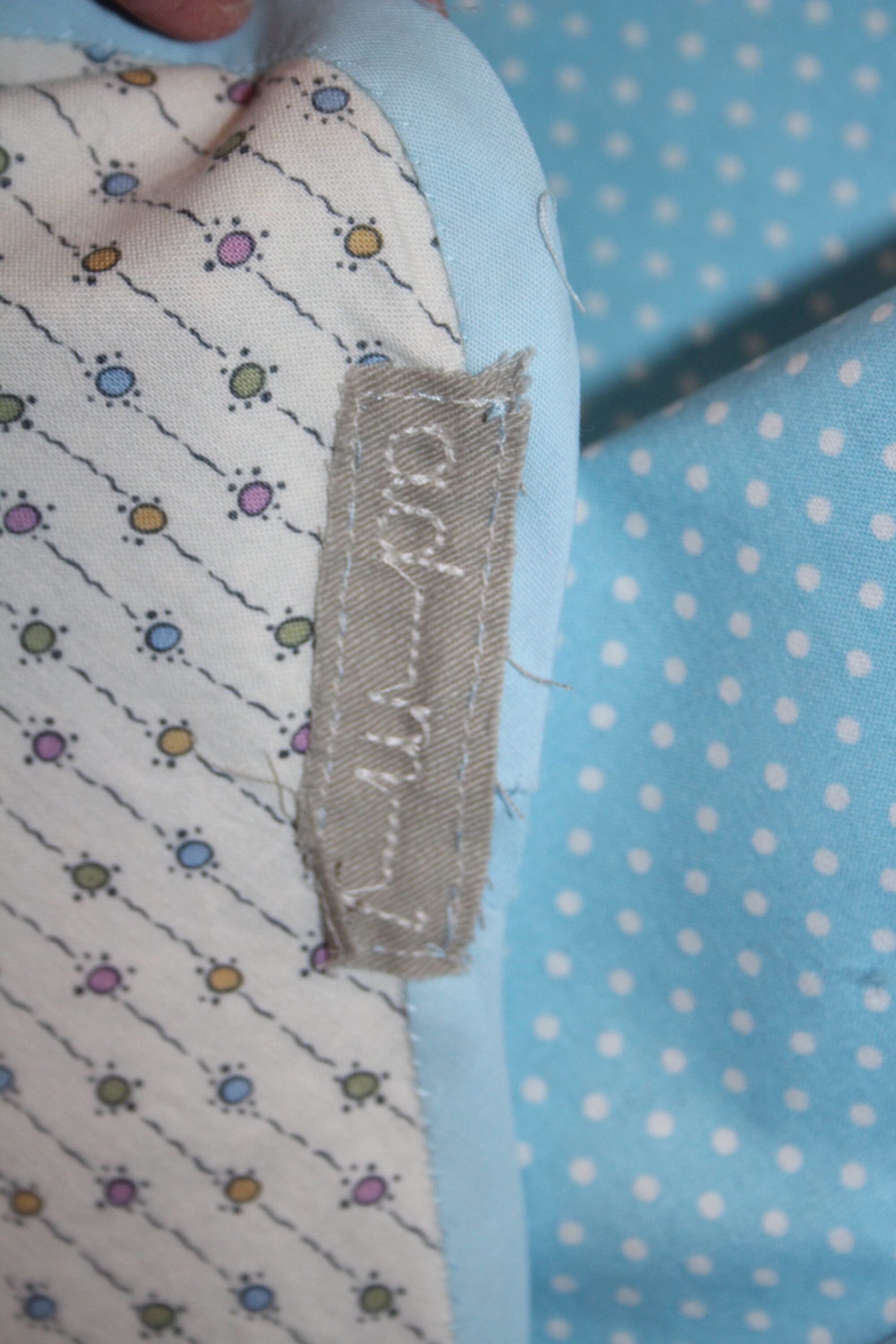
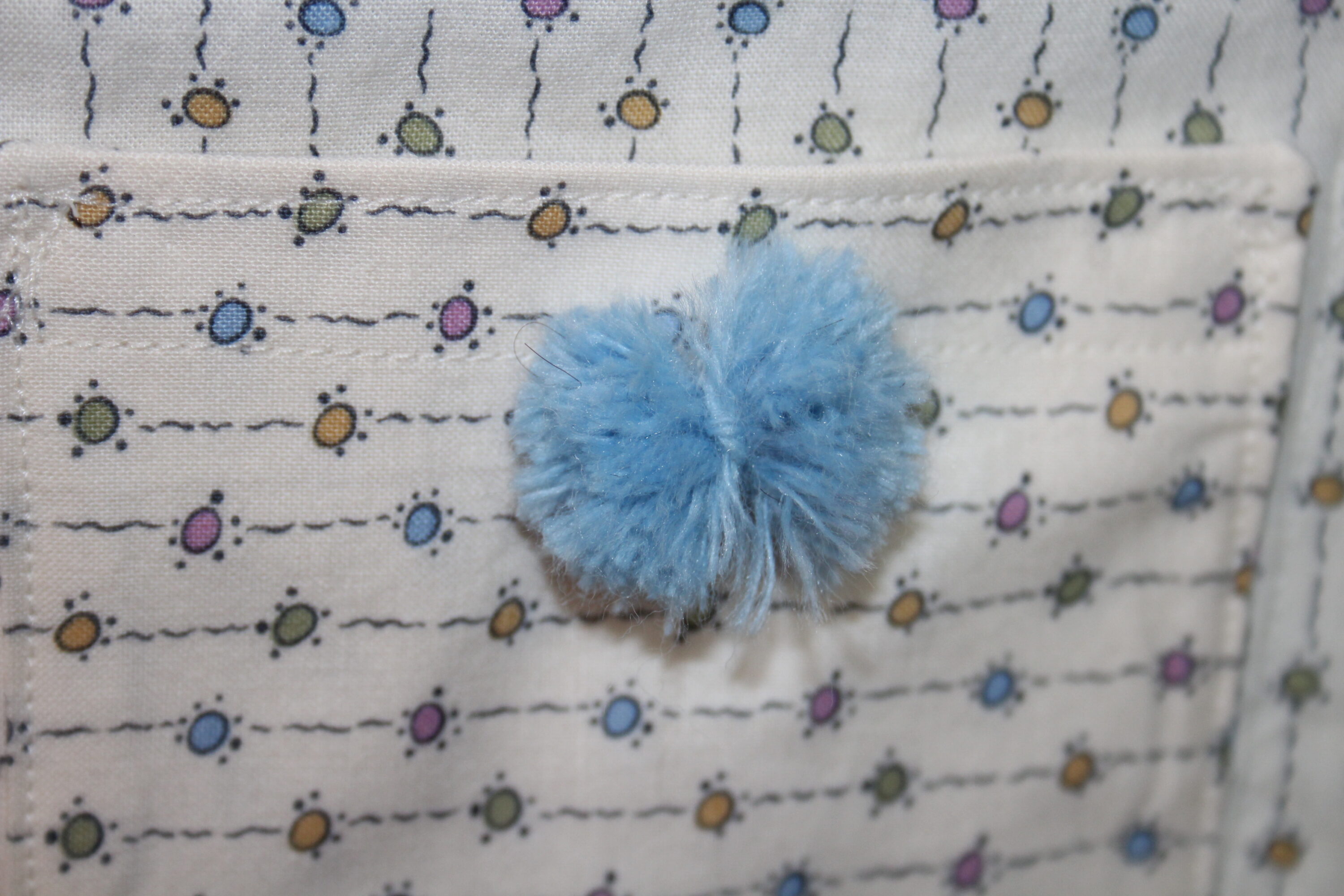
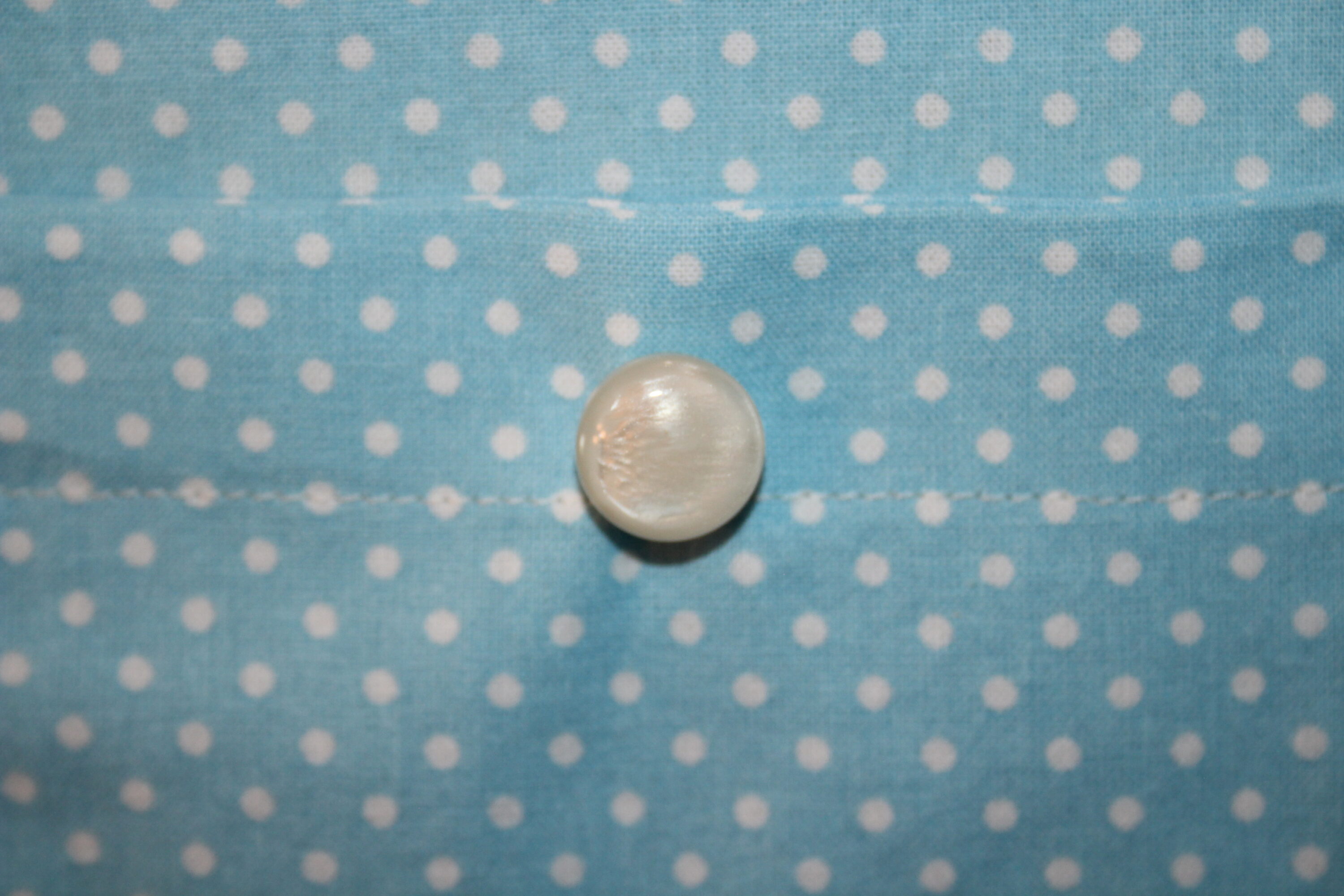
6A.2 sz 6 the “Me” of Mamma and me, the vintage pattern that had been featured in a woman’s magazine in 1925. It is a front only curved design that is so notable of the time. In Downton dot/dash design fabric made as a reproduction for the show, it has confetti colors and the reverse side is large ivory polka dots on bright blue. Like “Mamma’s” there are handmade wool yarn puff balls in blue on the pockets, and beautiful mother of pearl ivory buttons on the reverse side. This is a bit small on the mannequin who is a size 8).
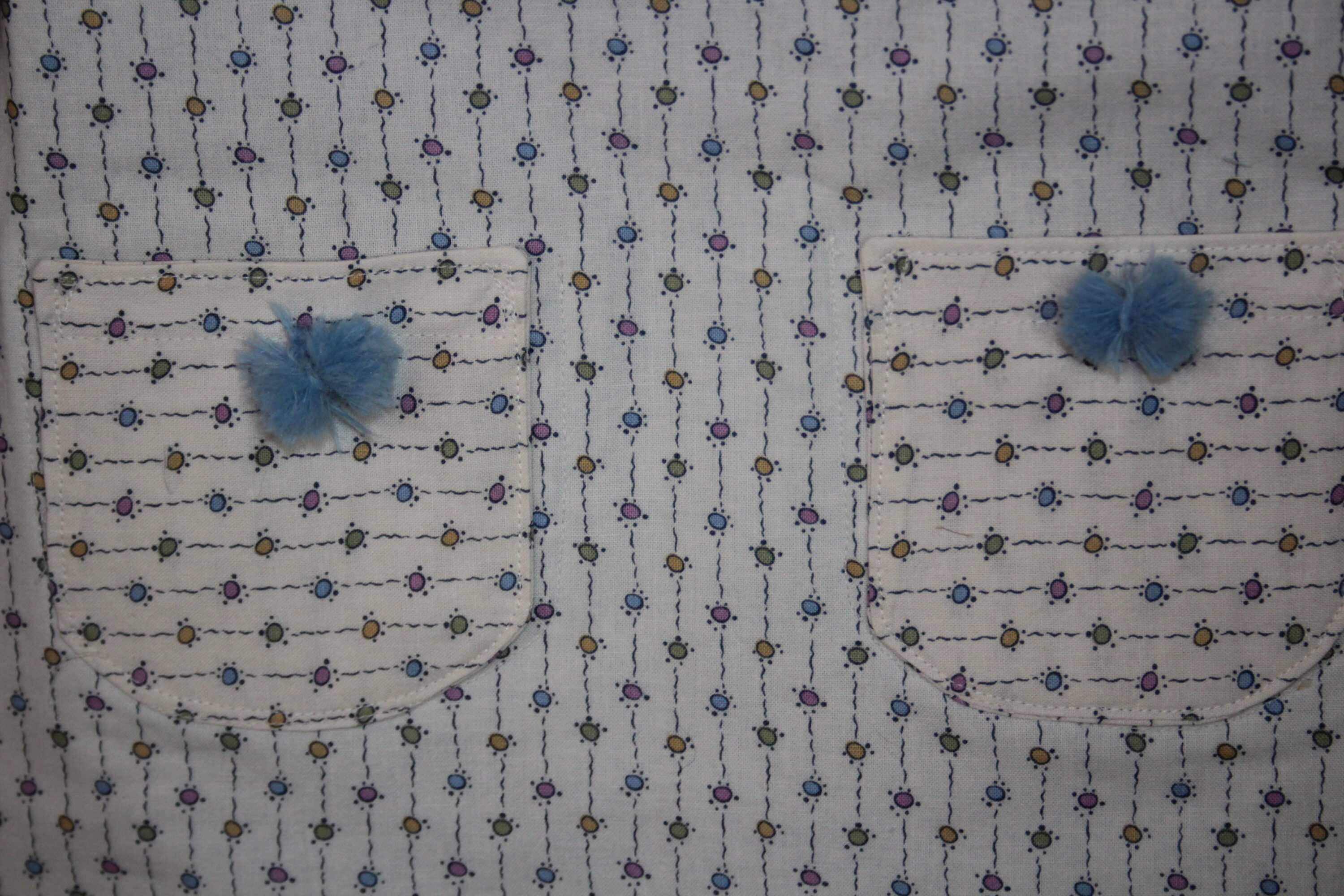
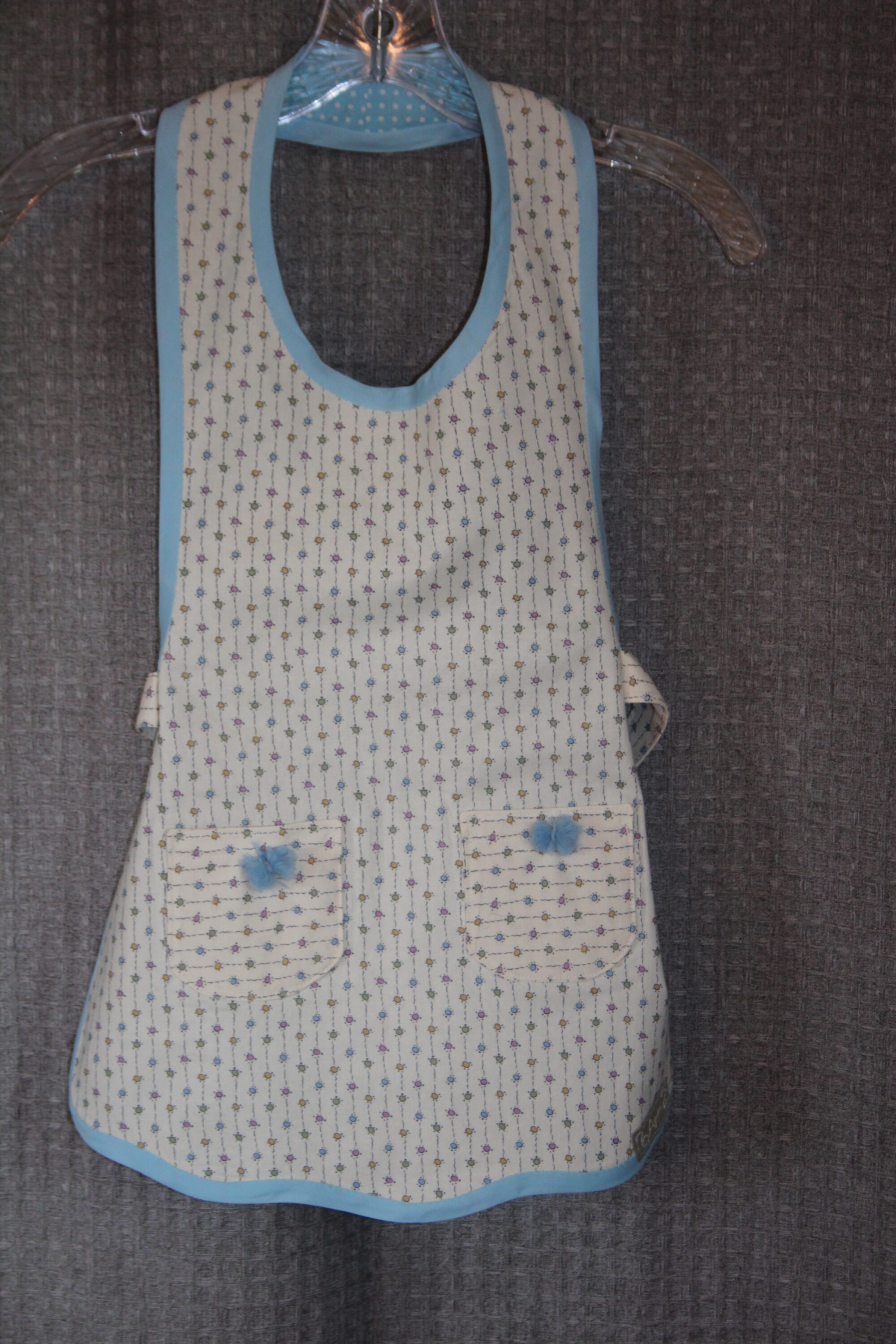
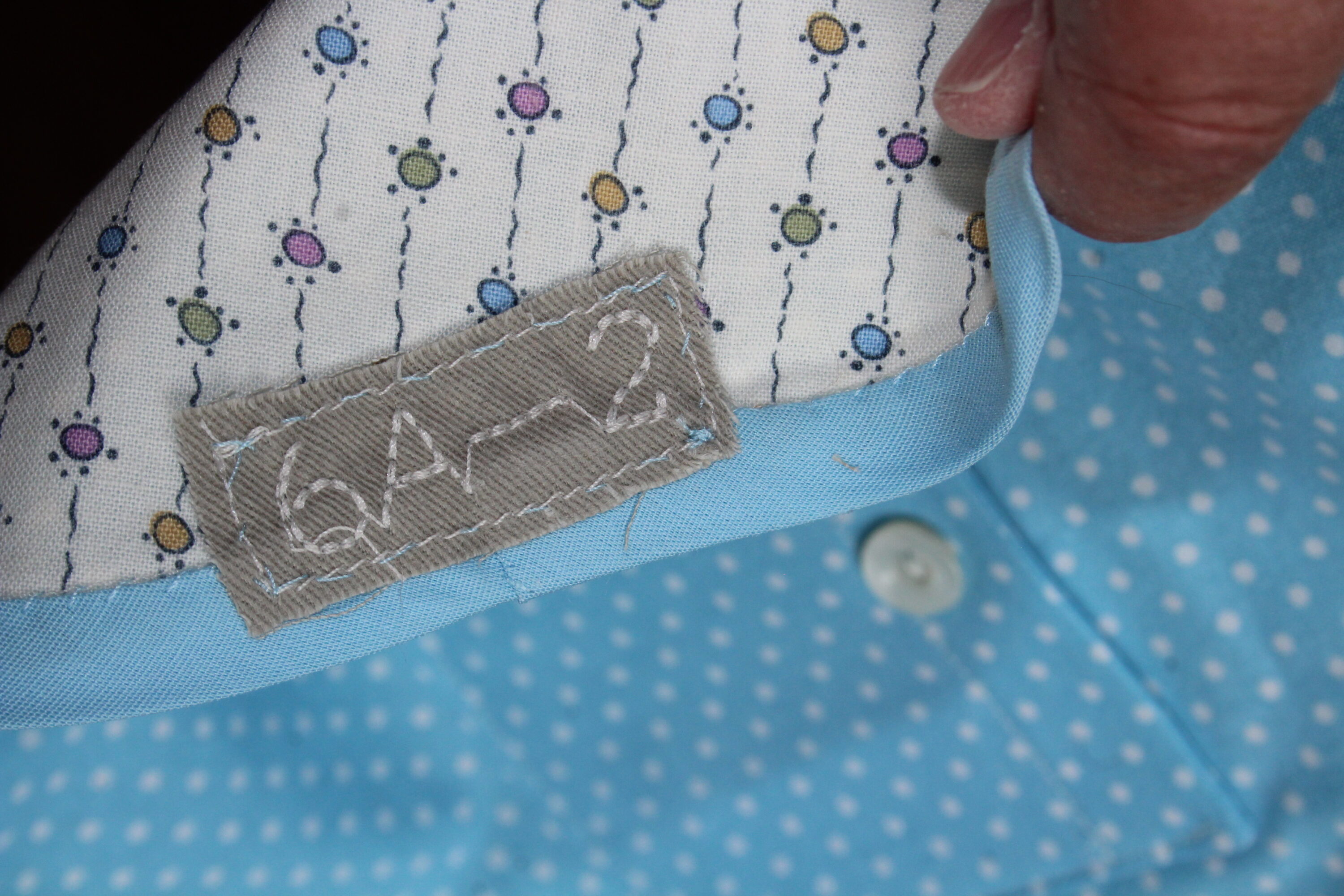
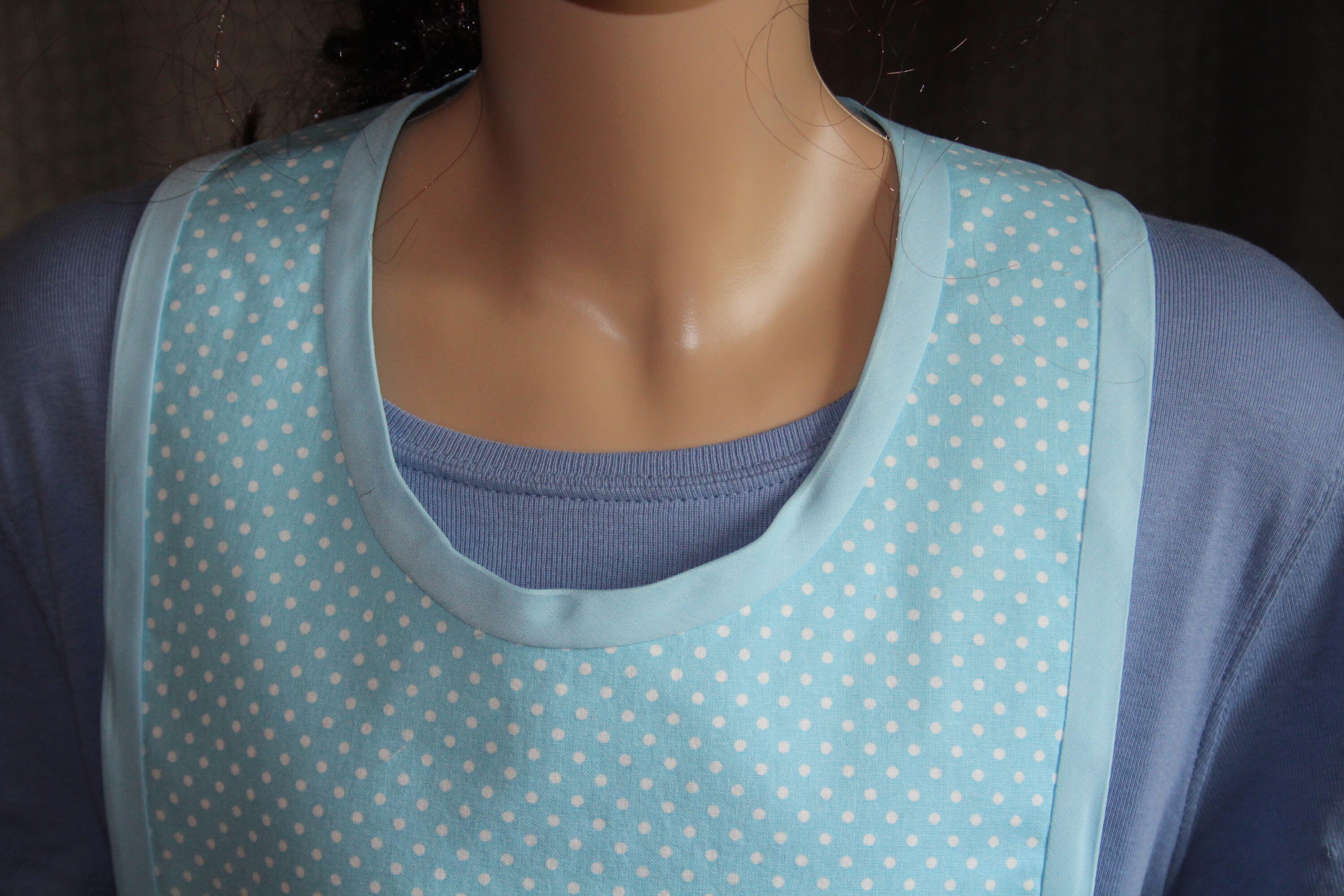
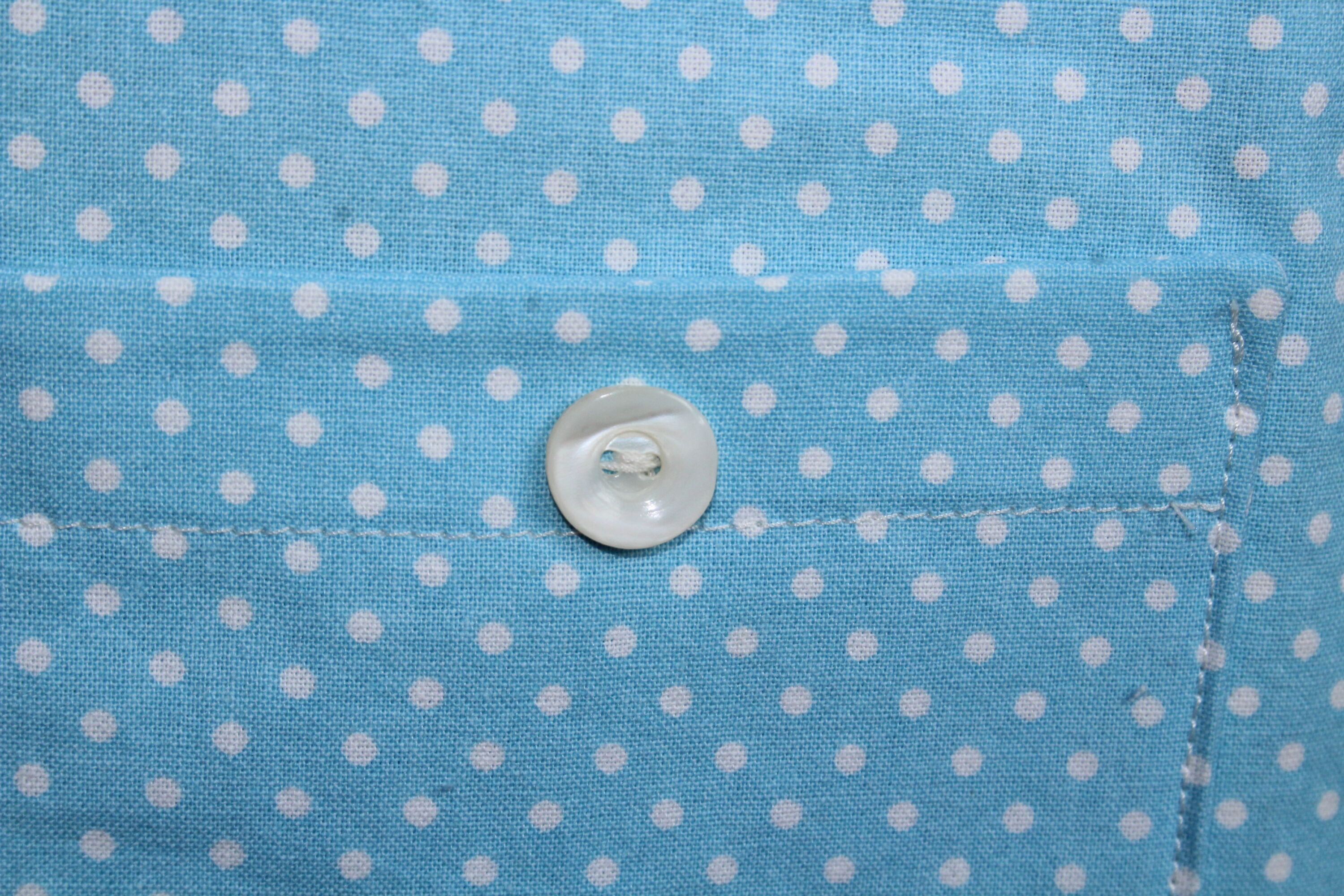
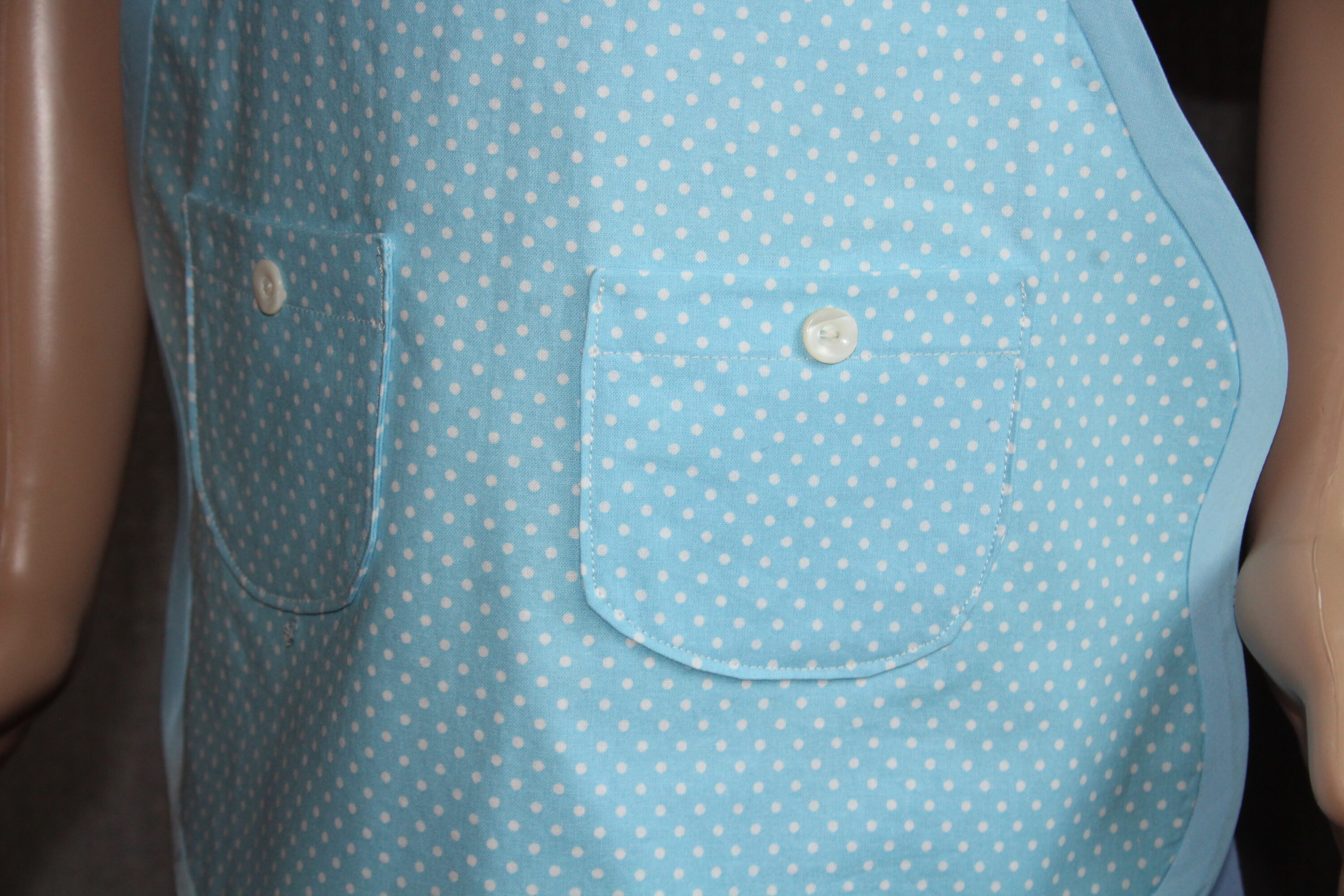
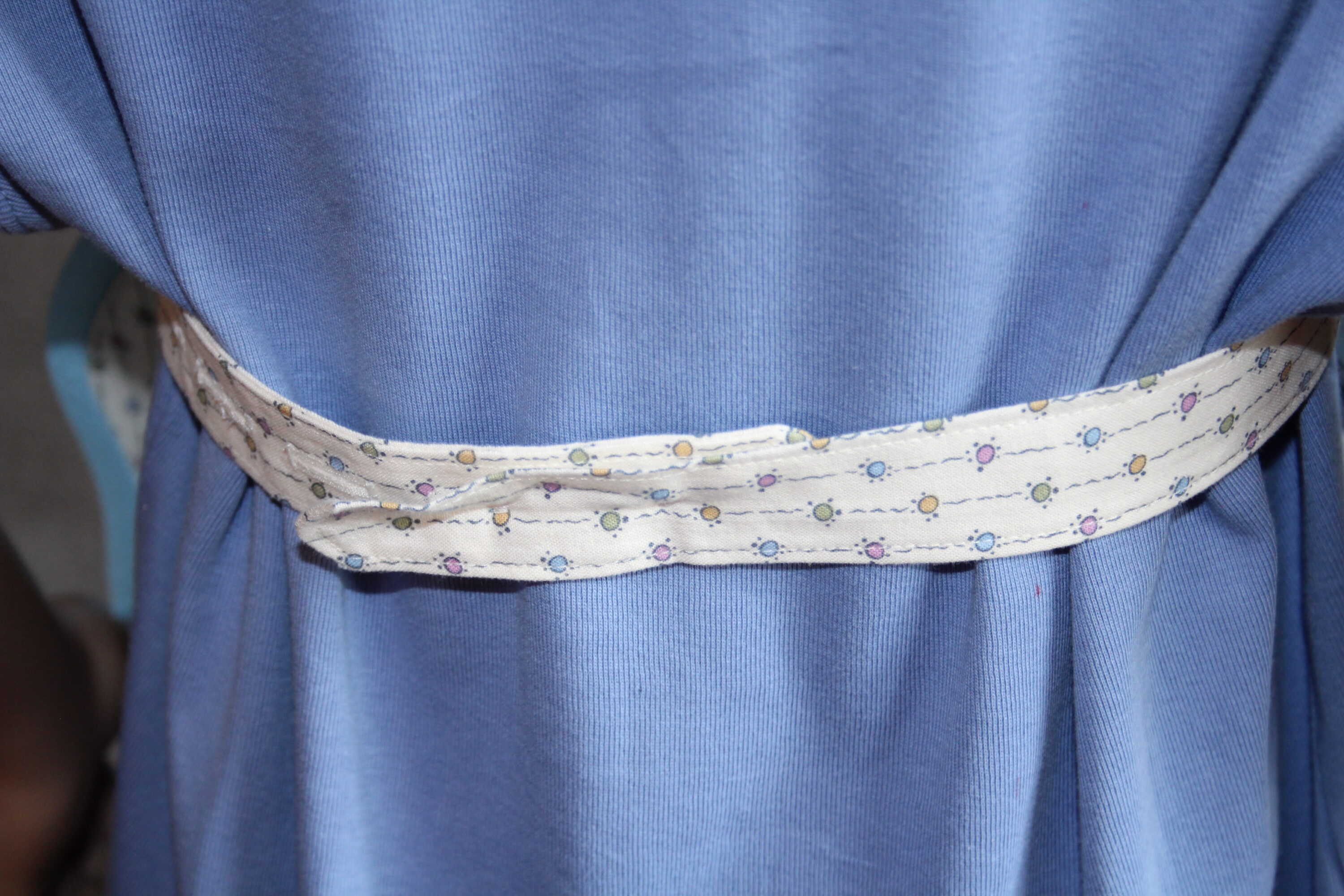
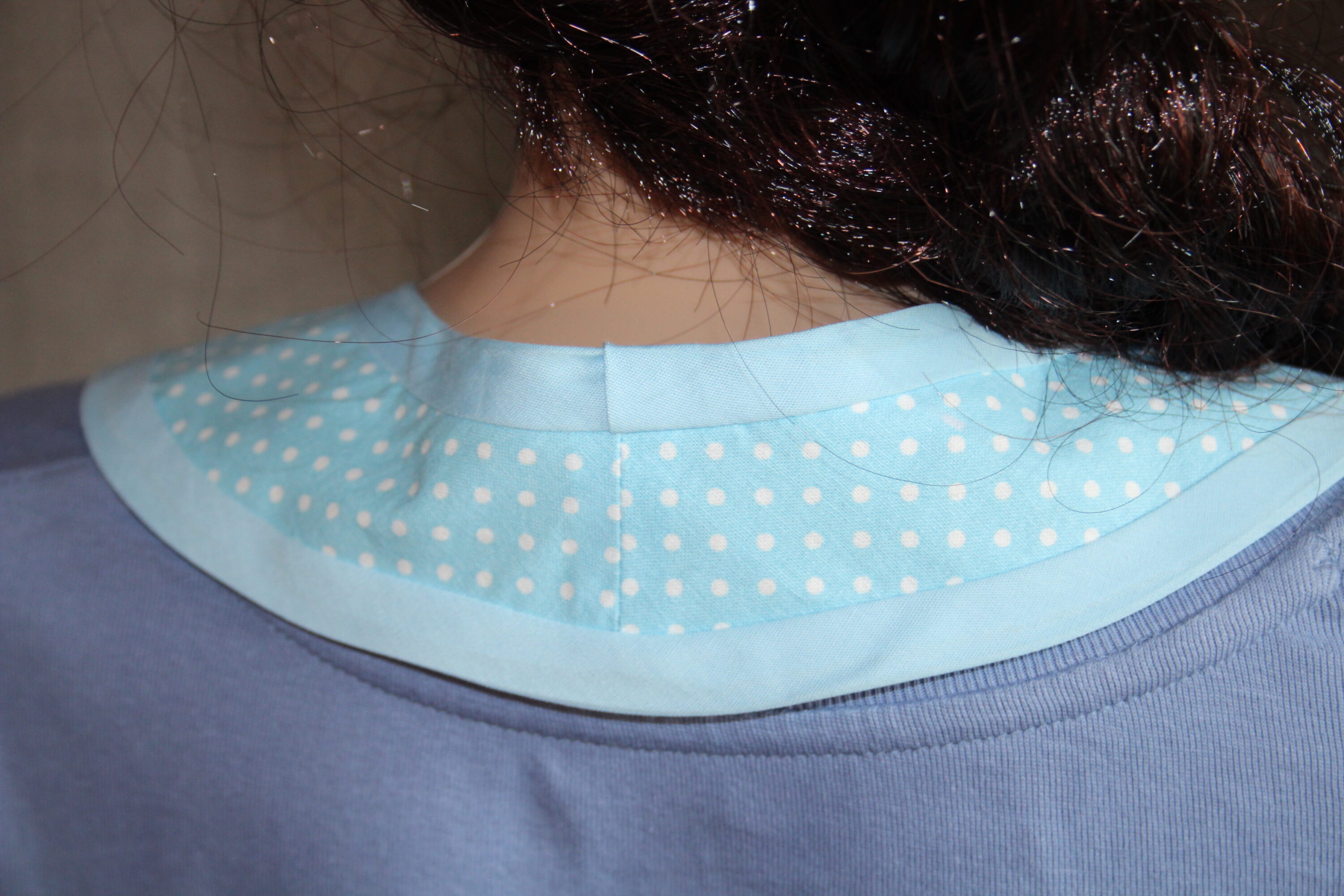

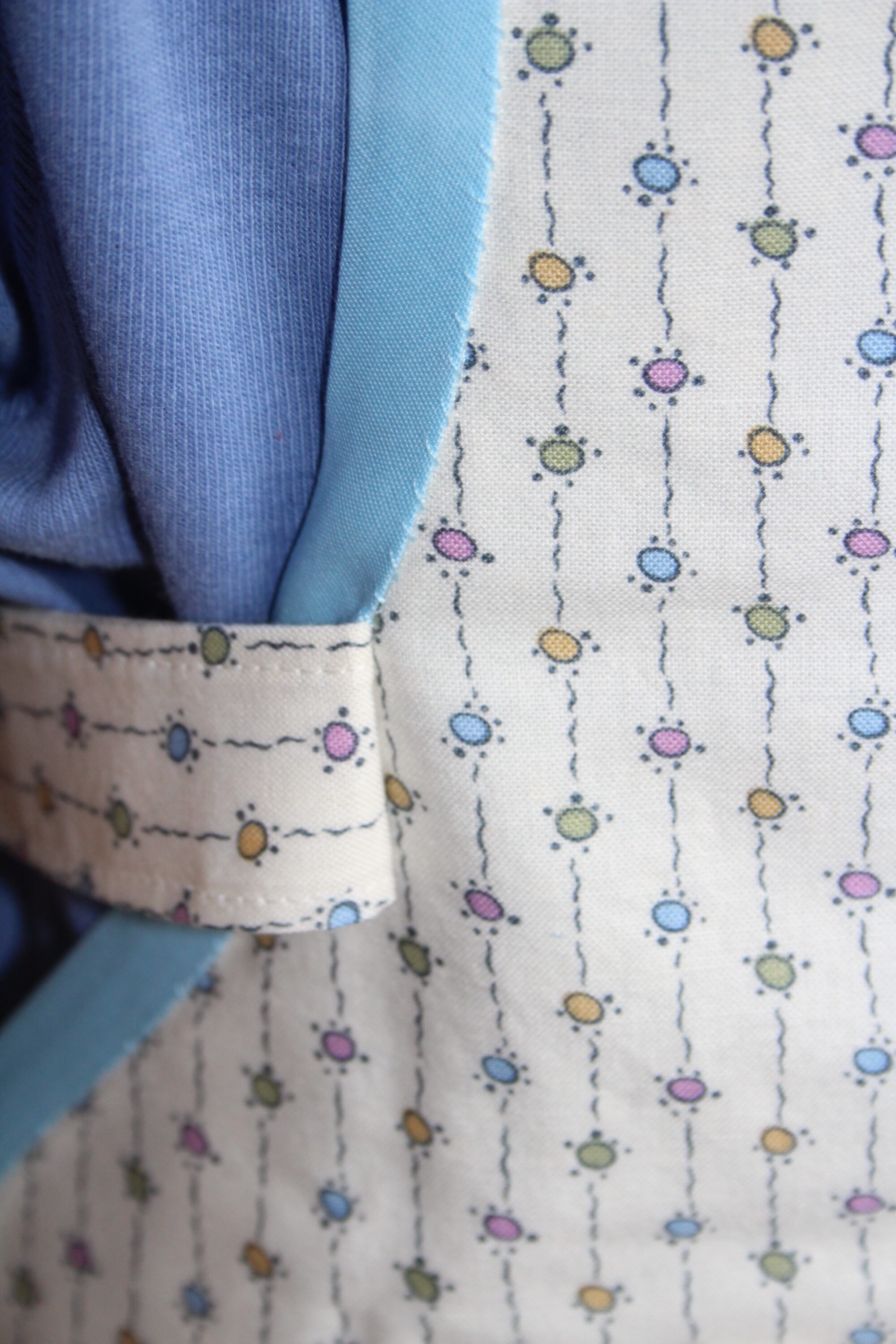
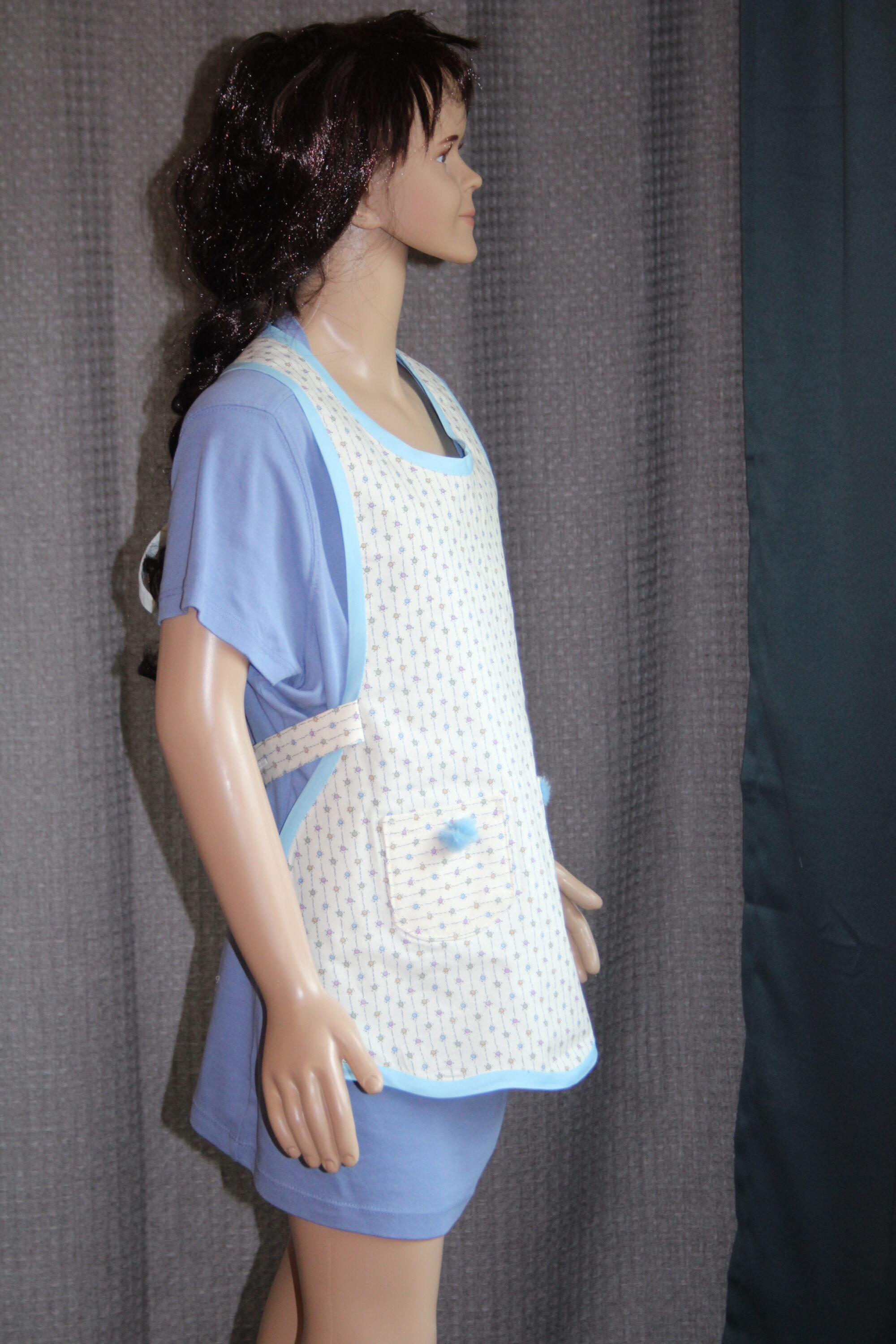
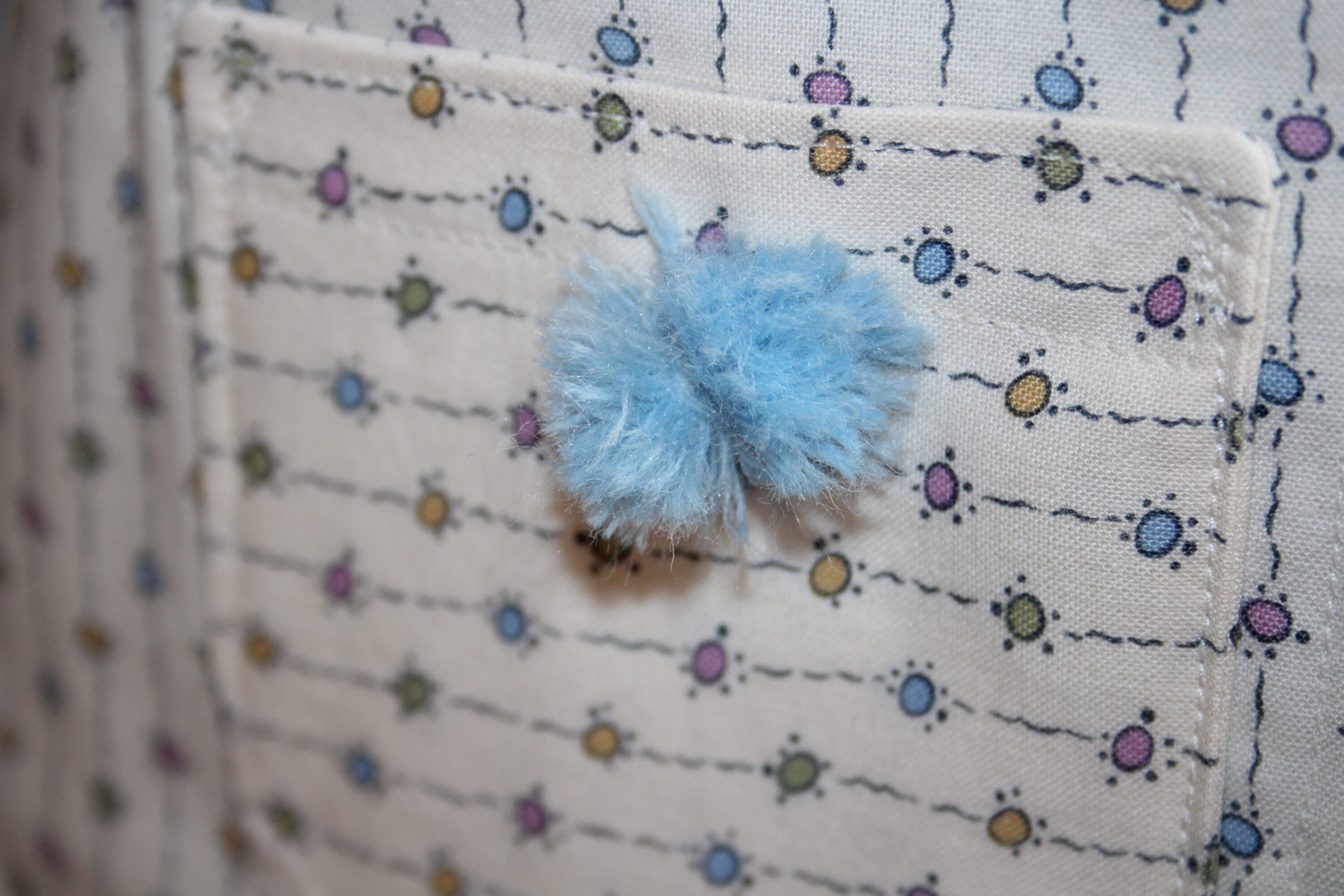
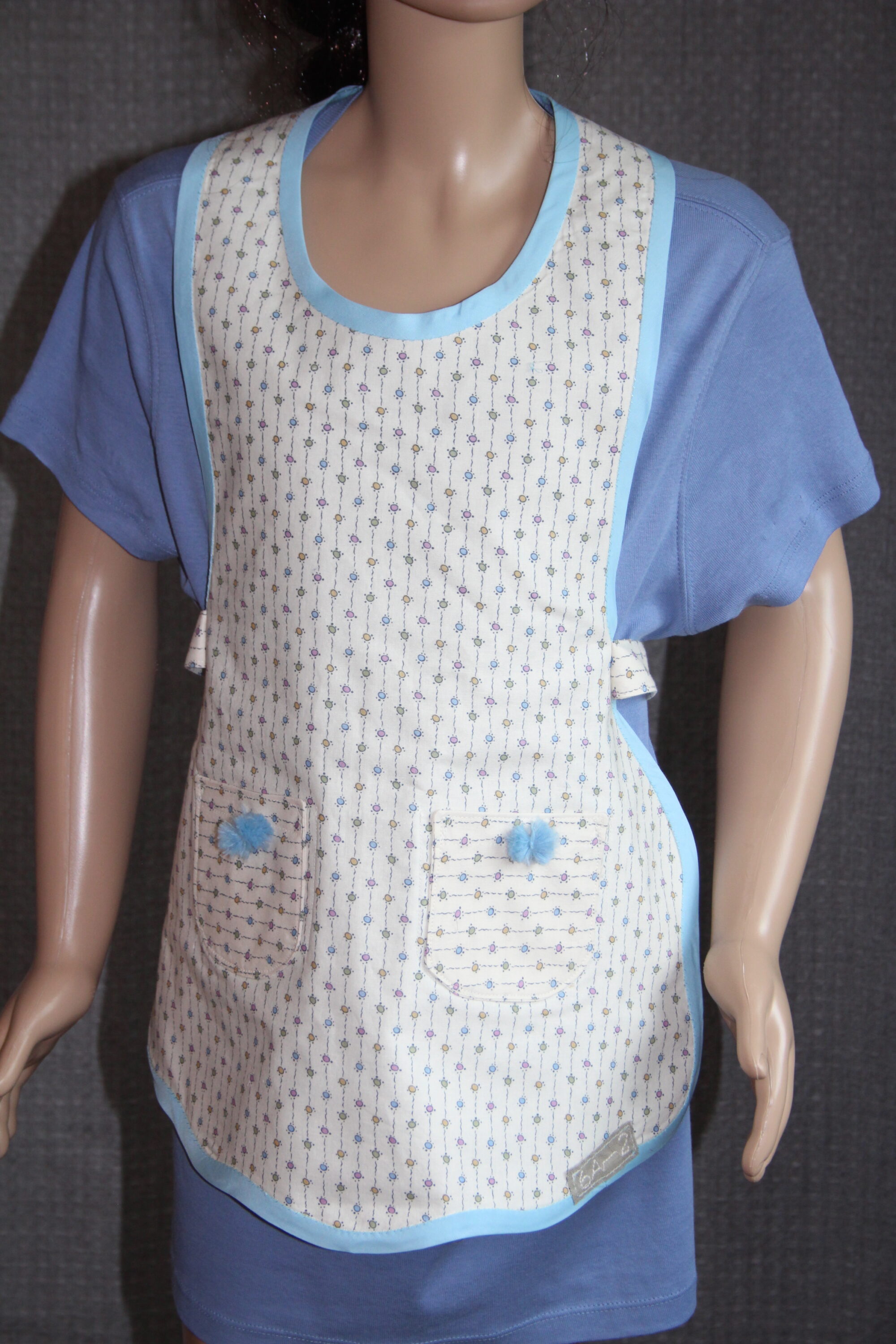
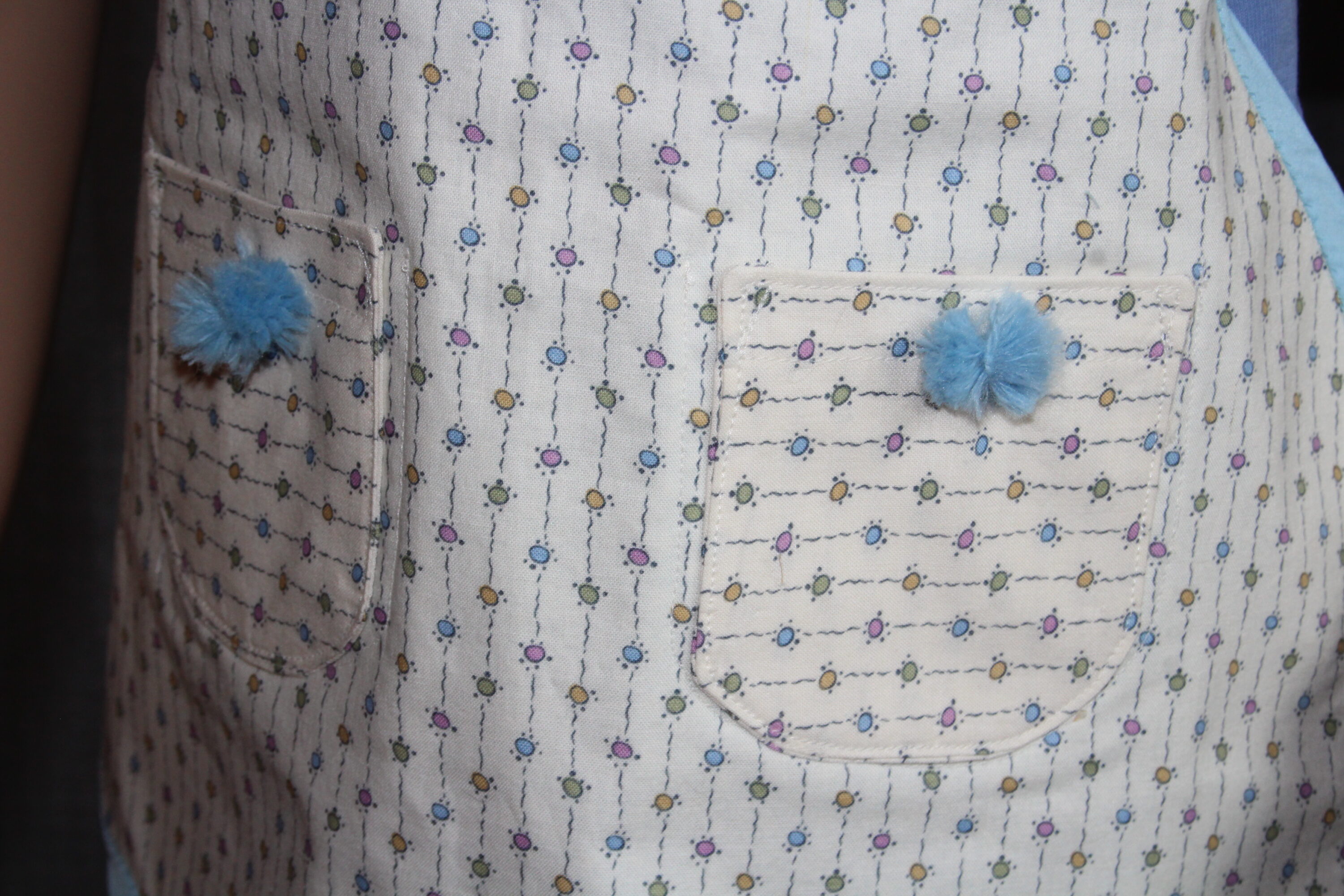
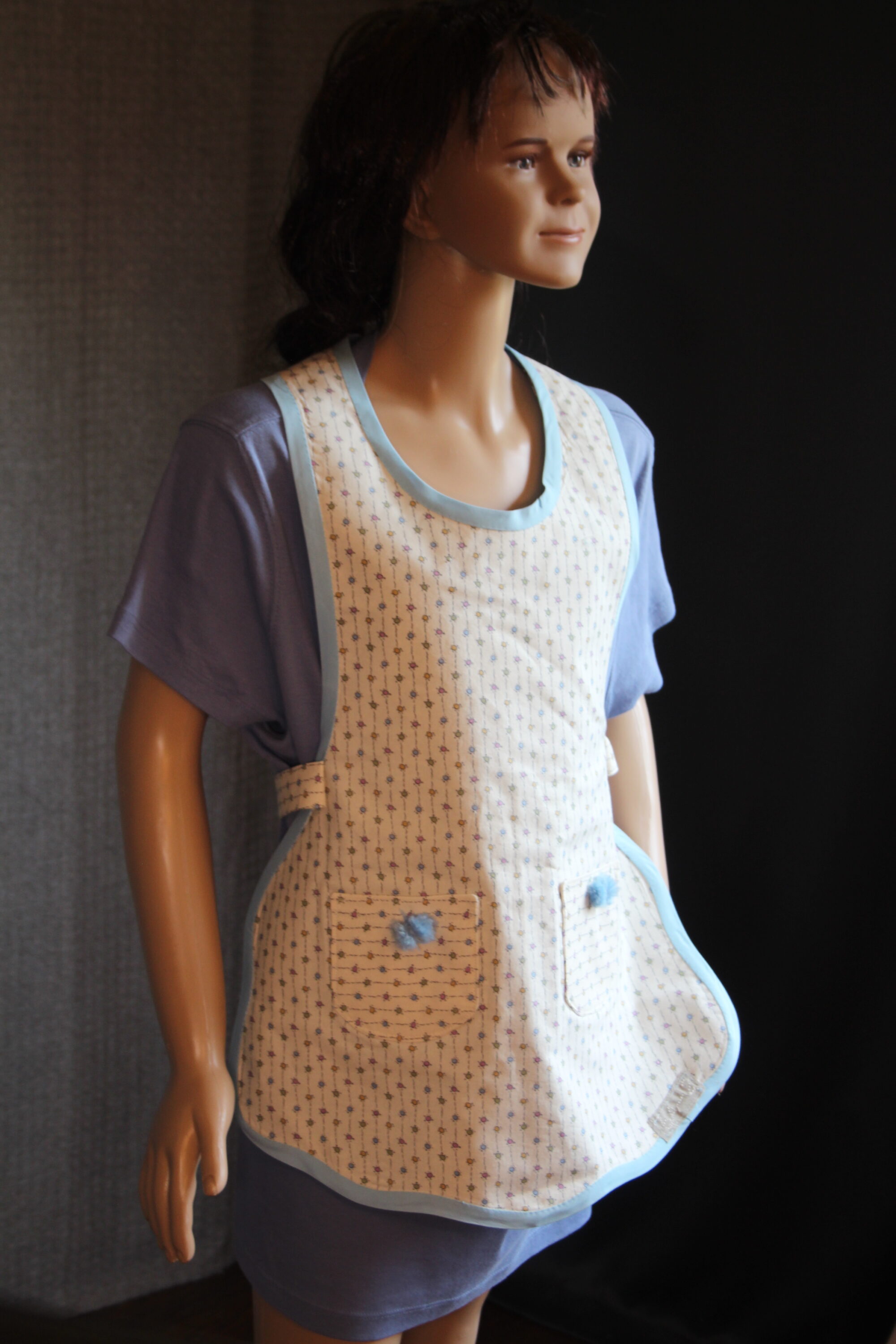
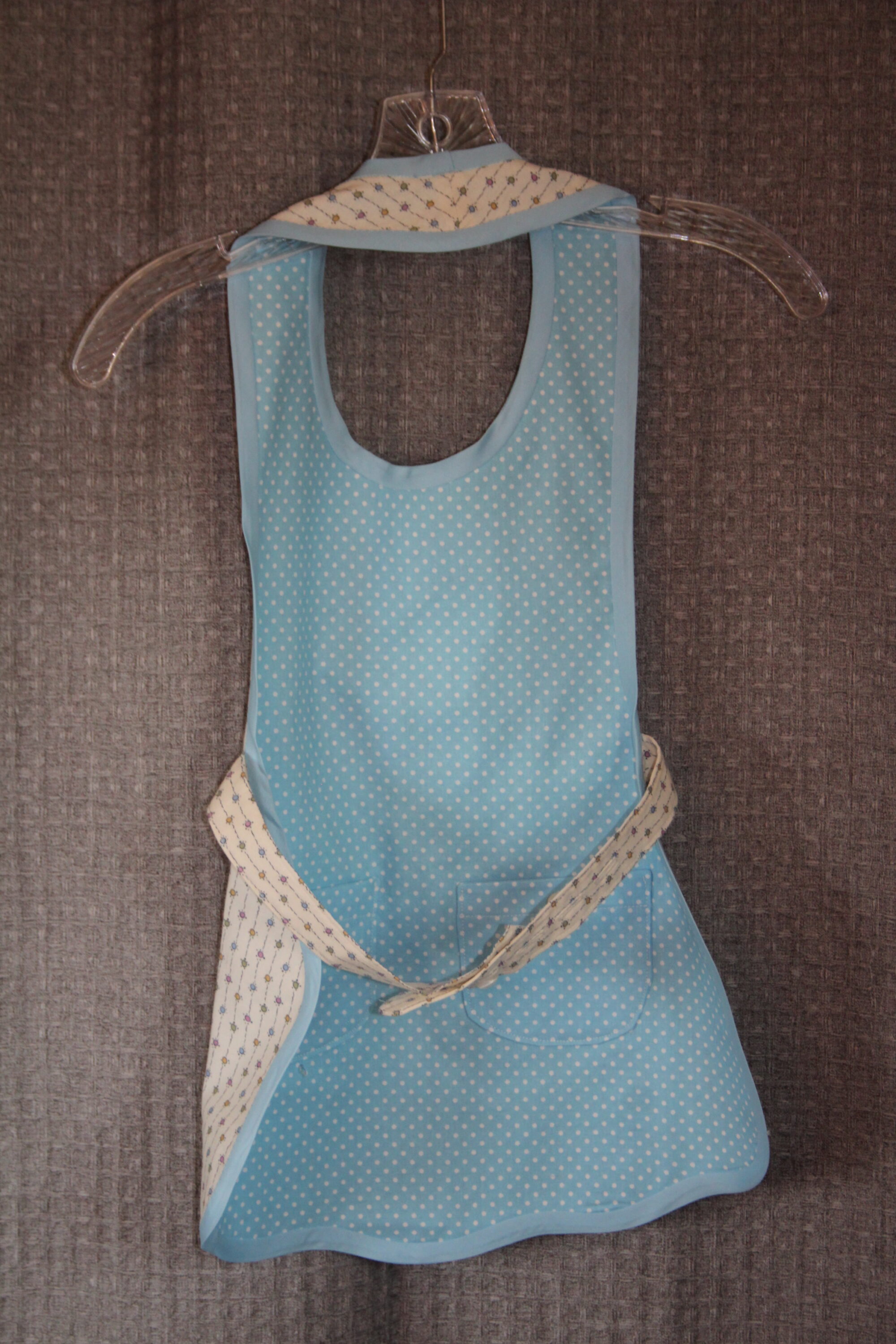
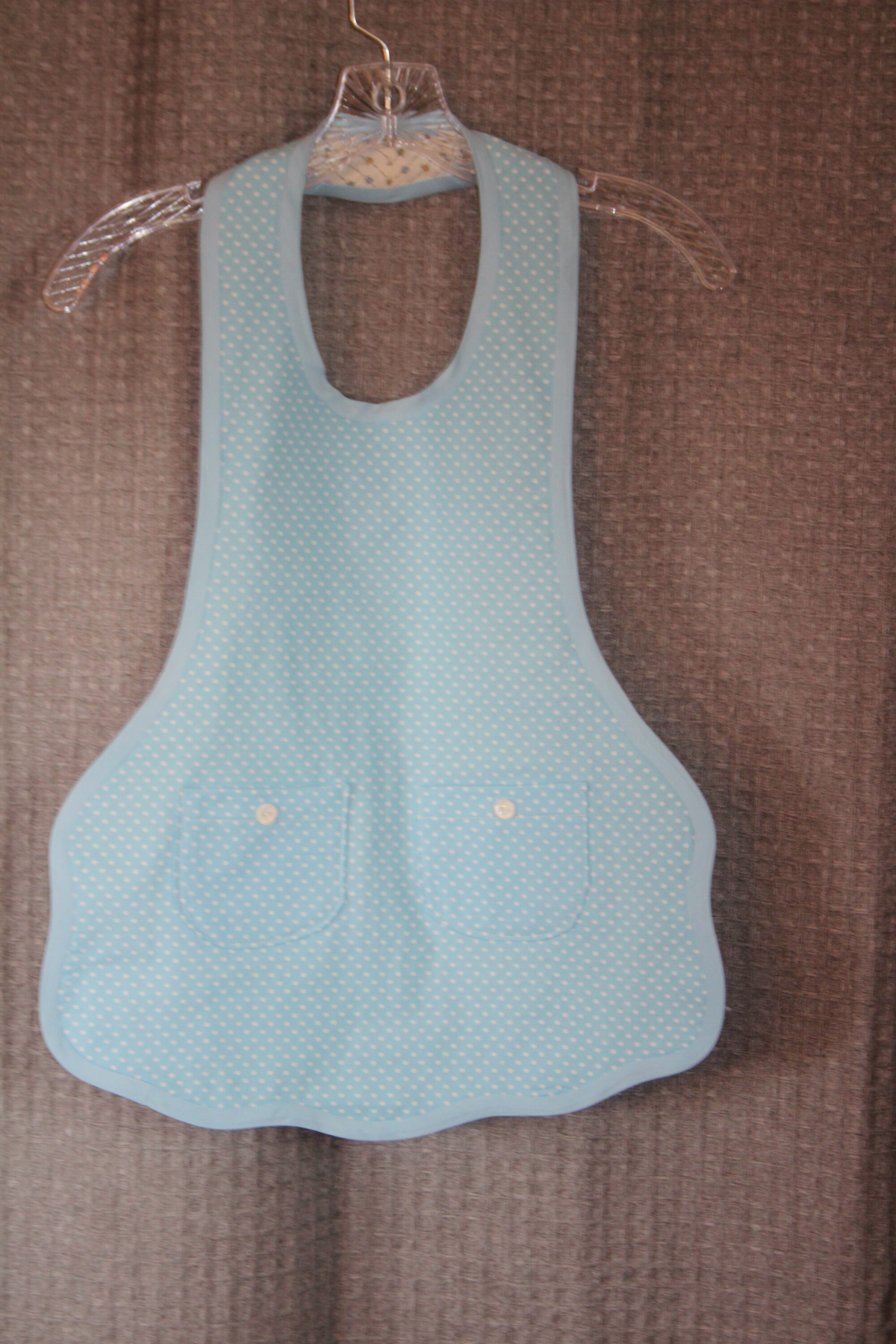
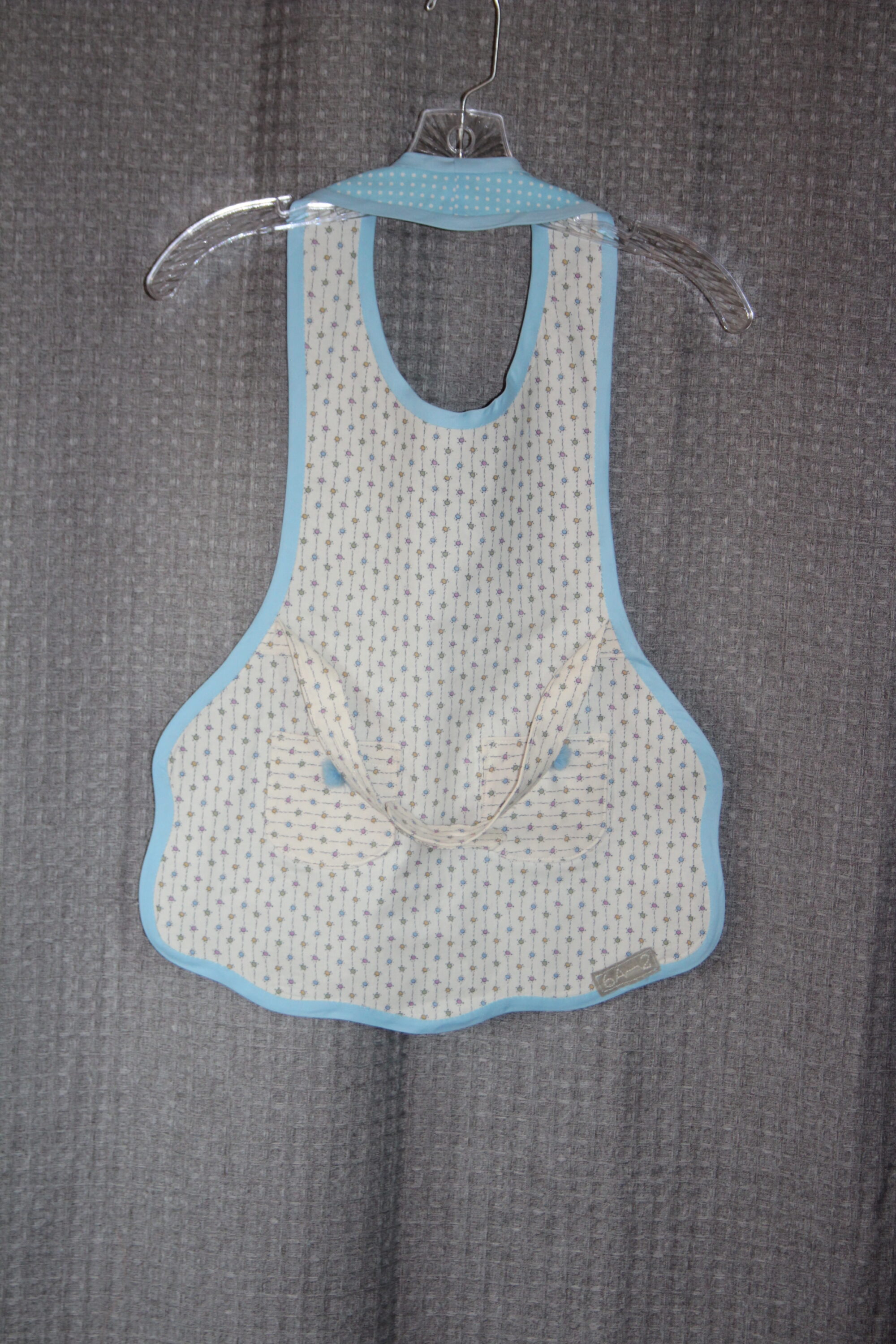
Bib Overalls for Visitors
The overalls were collected from the region in sizes from a small girl to a medium adult unisex. We do not have photos. They are all worn, used, medium blue denim with metal closures and a big (no pants). A couple are lined at the cuff, but most are plain and simple. Hopefully we will get photos of kids wearing them.

Shelly in Teacher’s Ensemble (fitting)
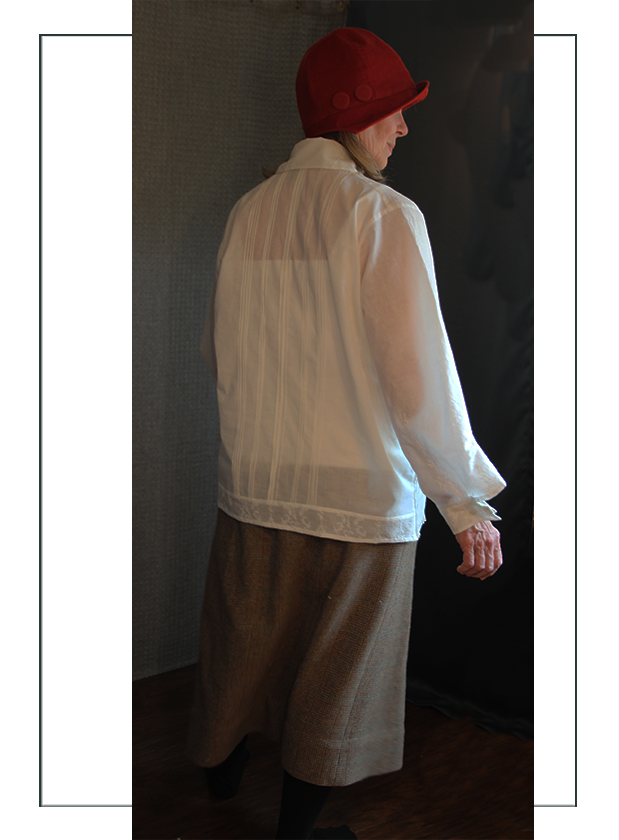
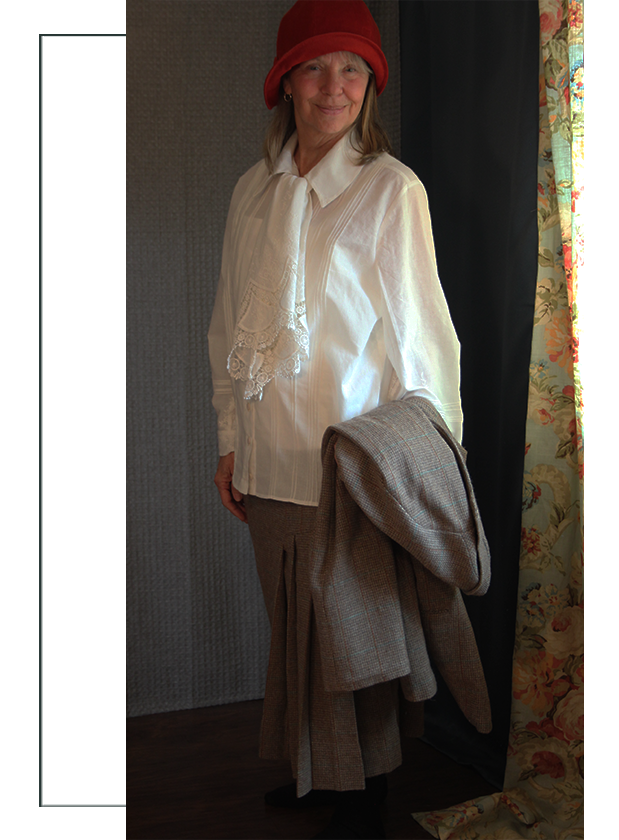
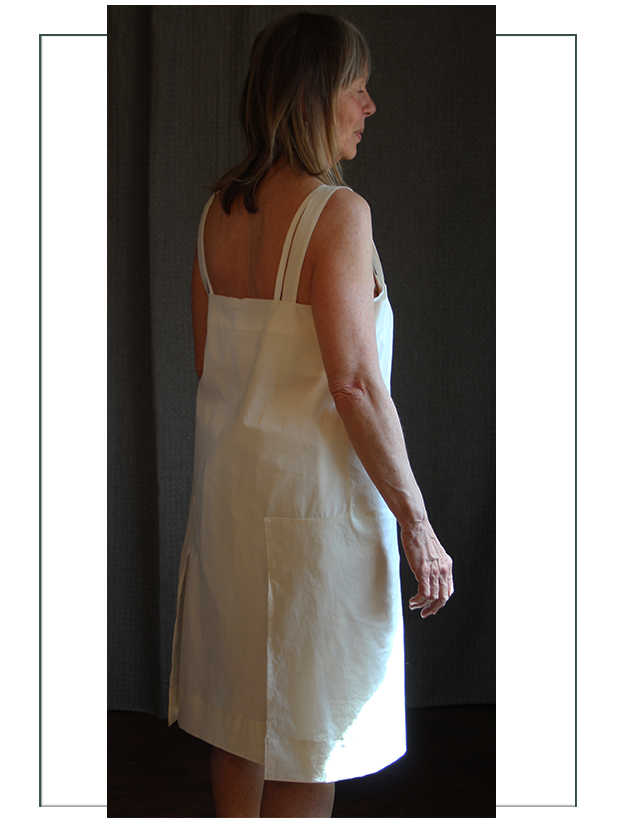
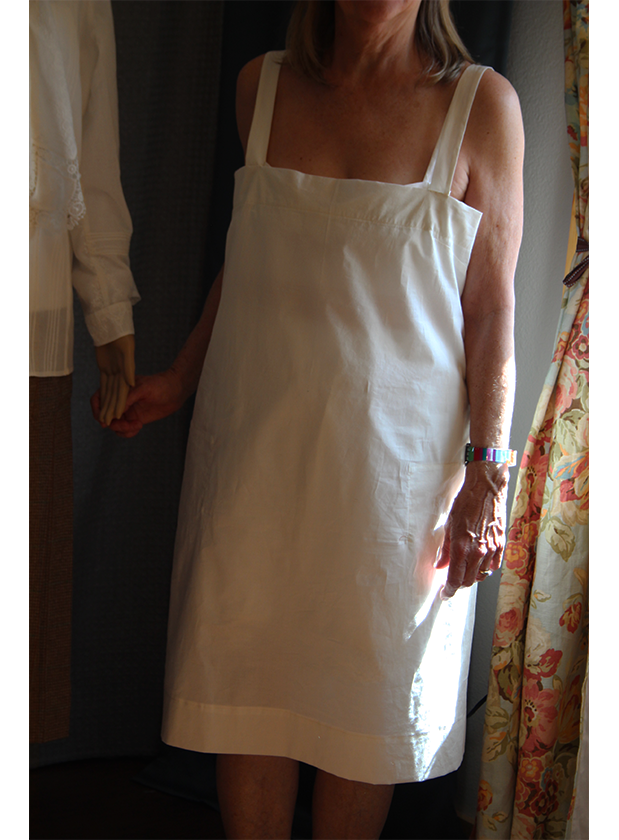
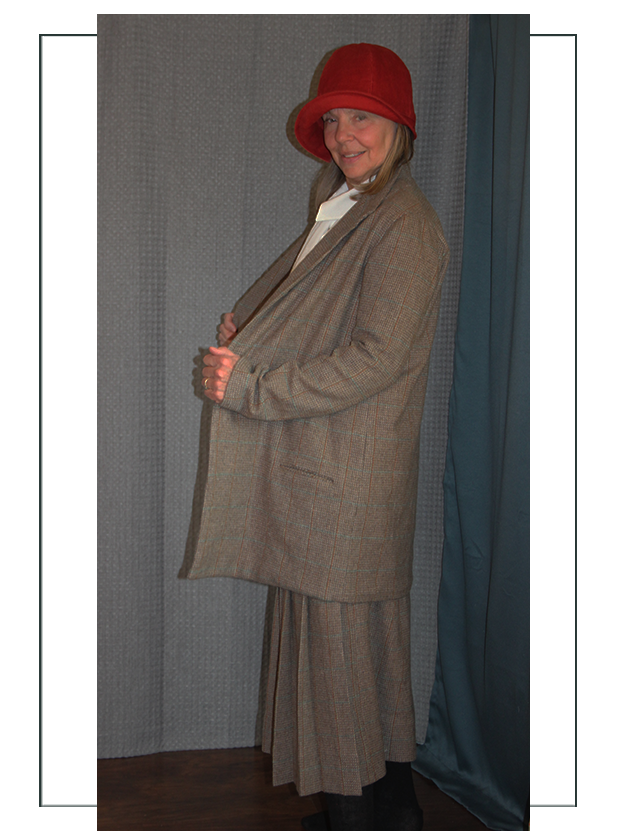
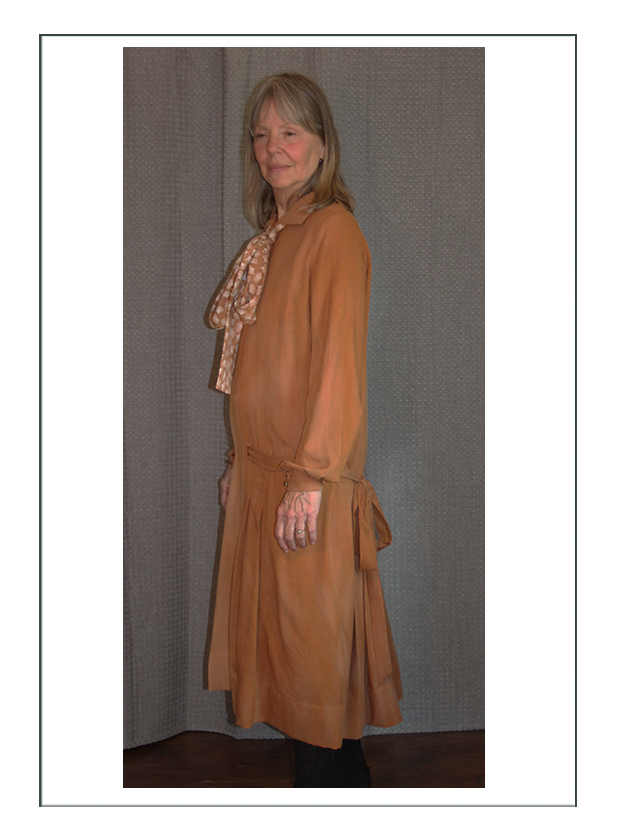

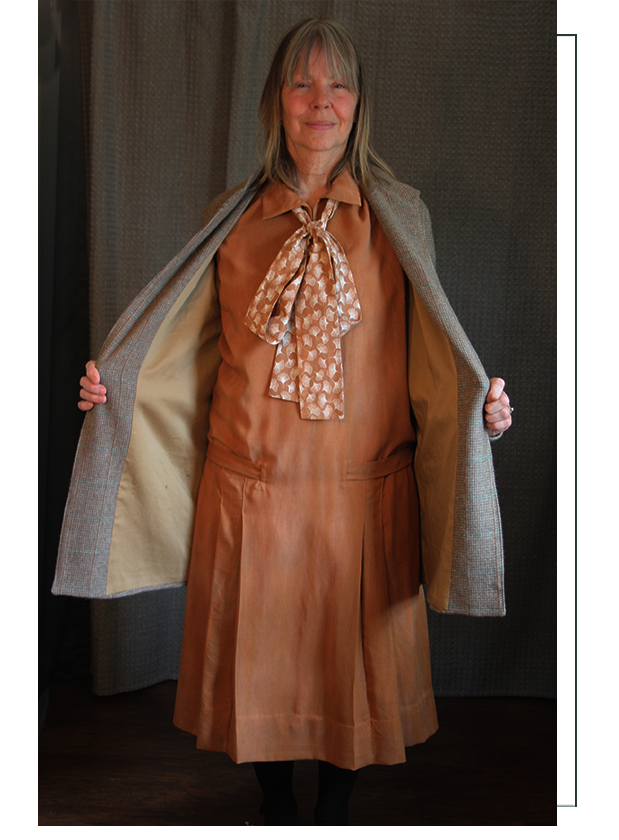
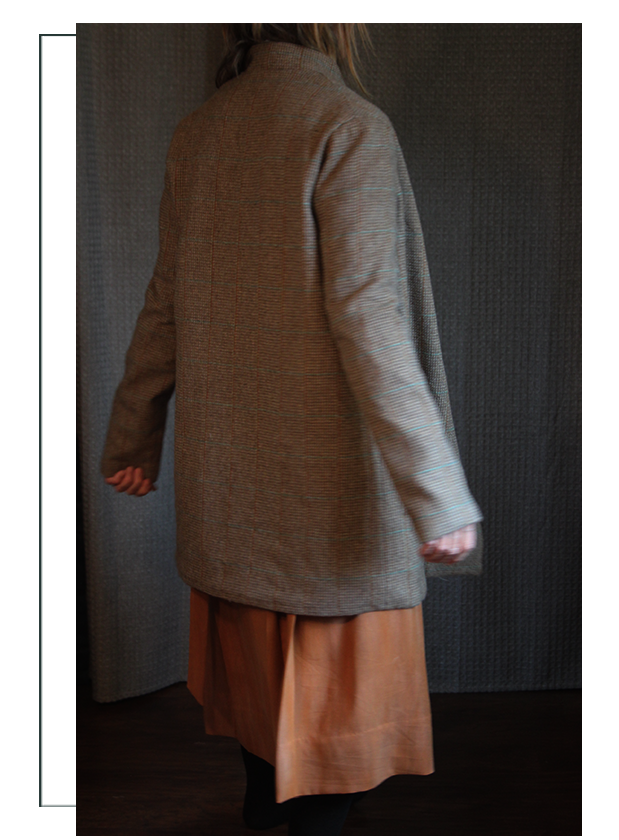
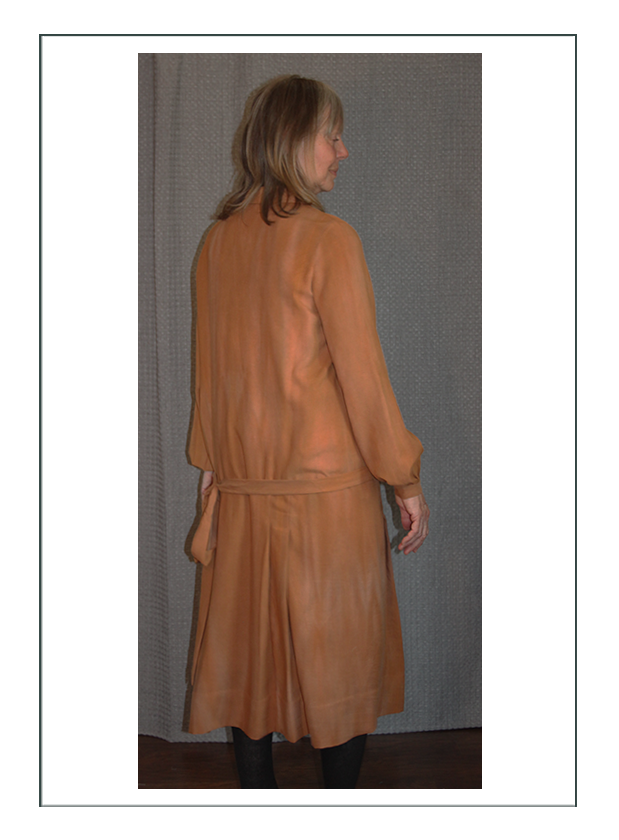
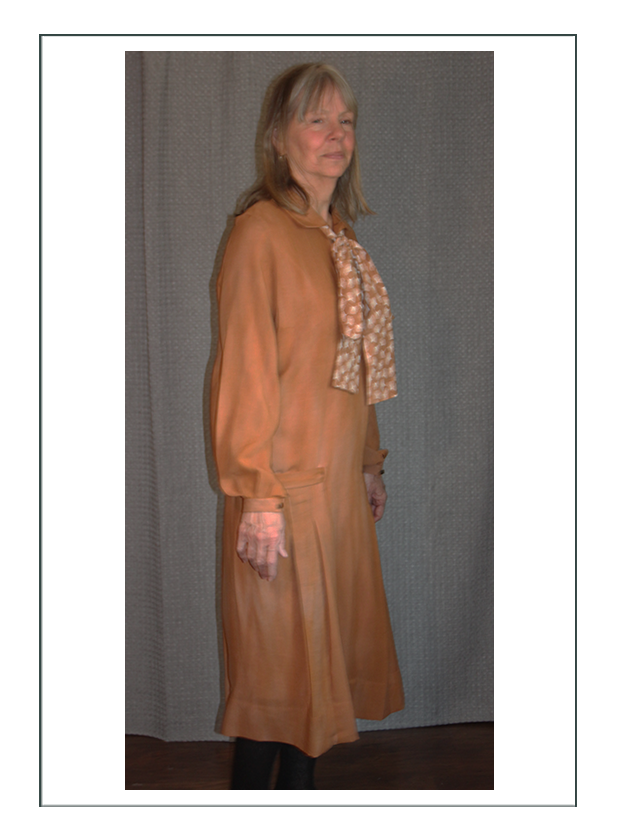
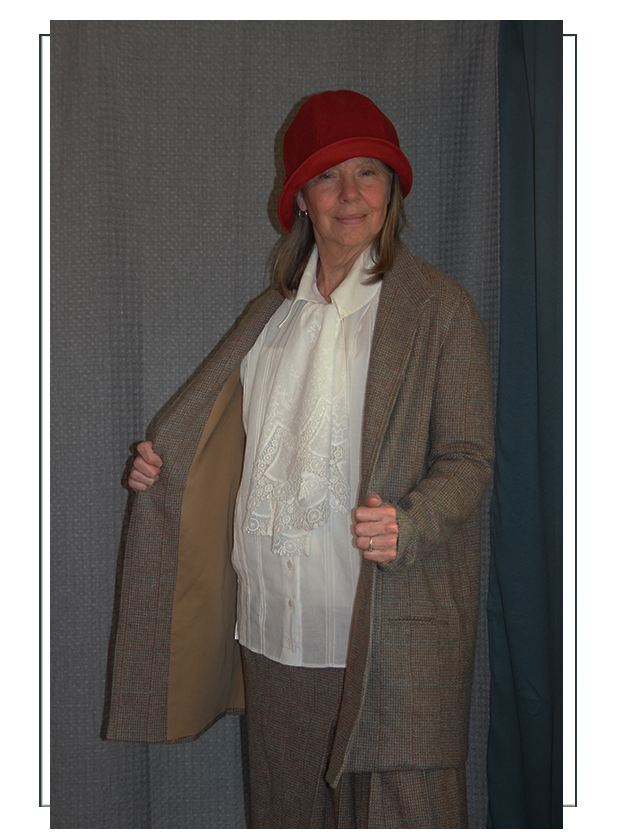
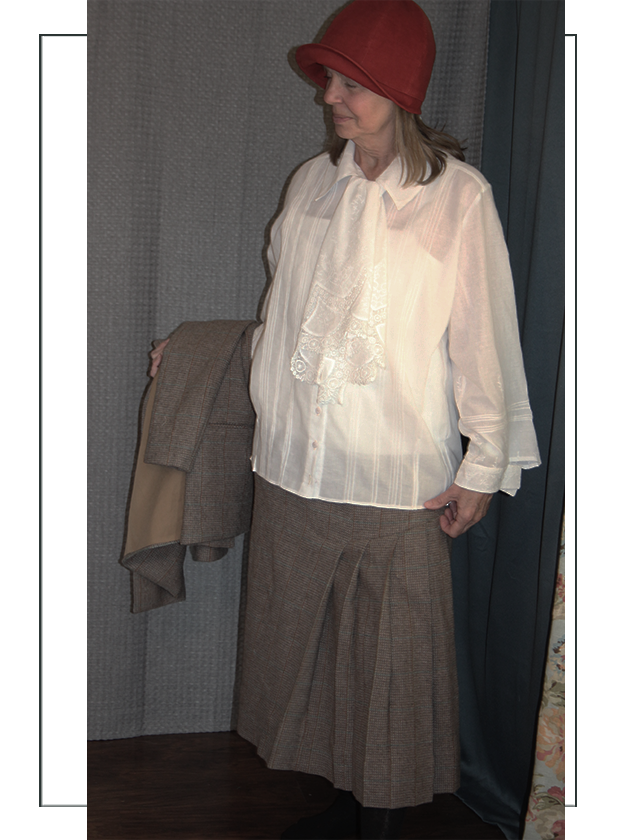
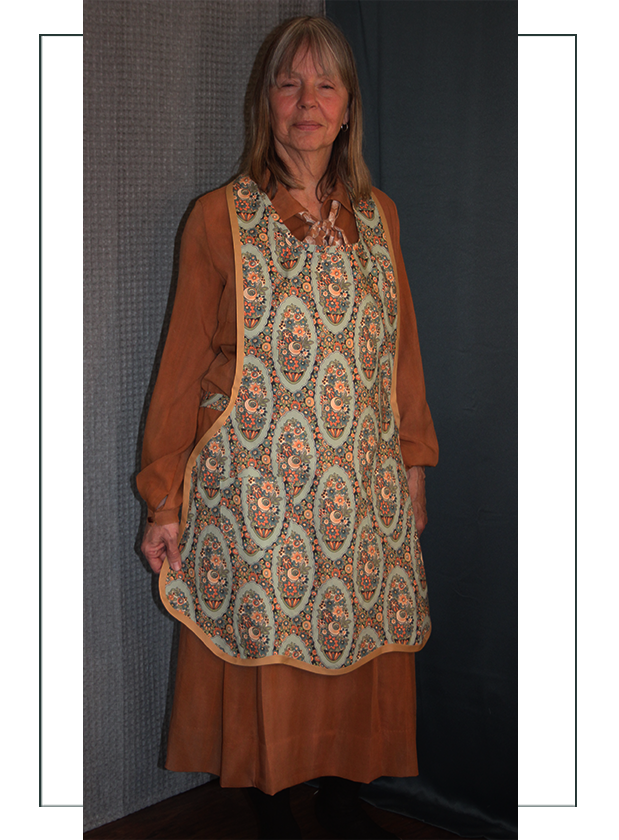
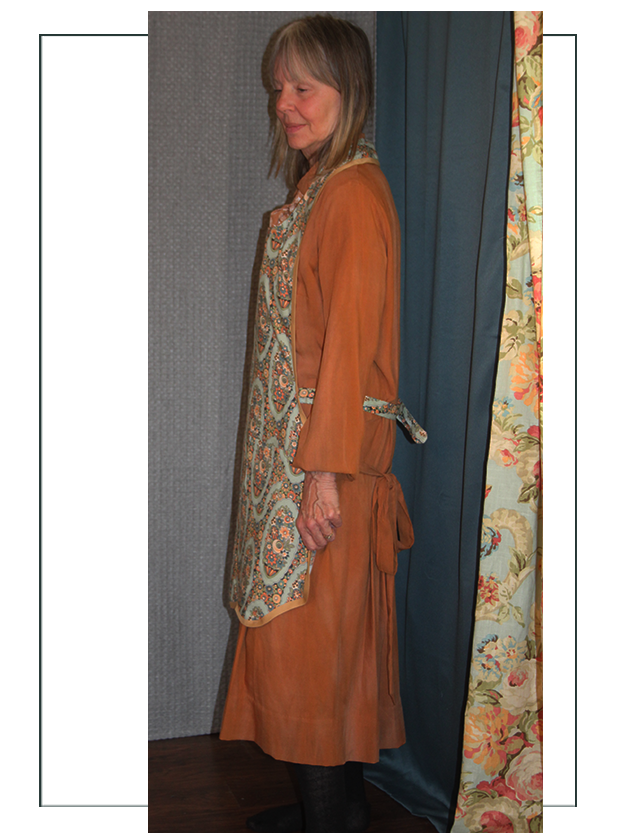
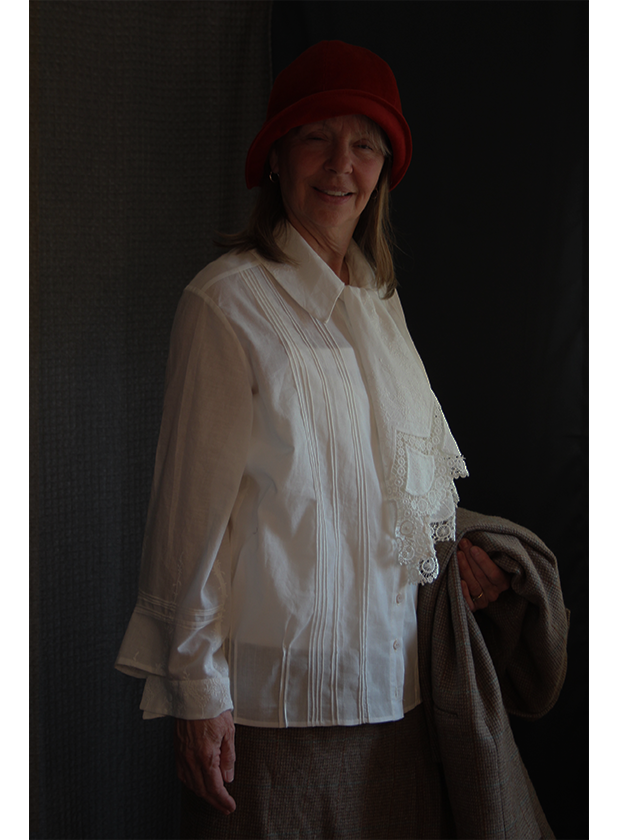
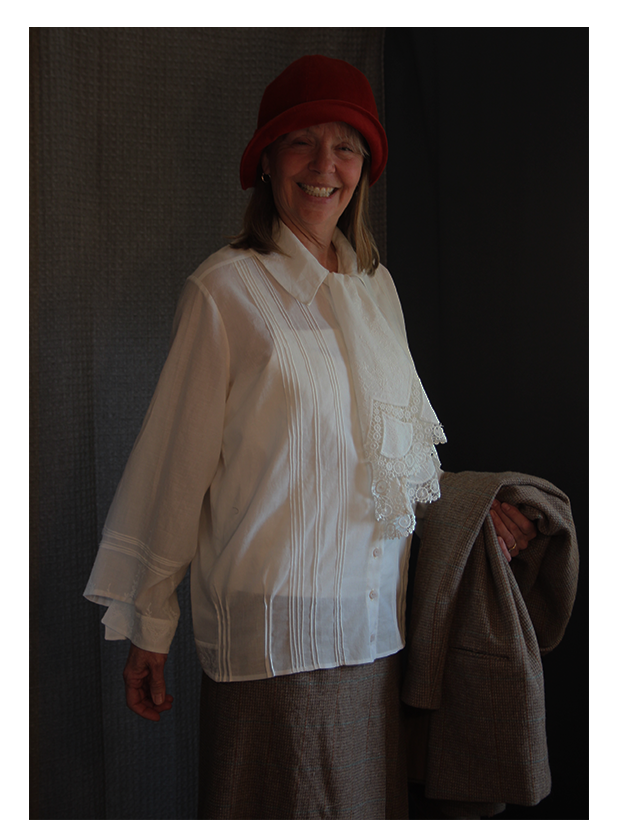
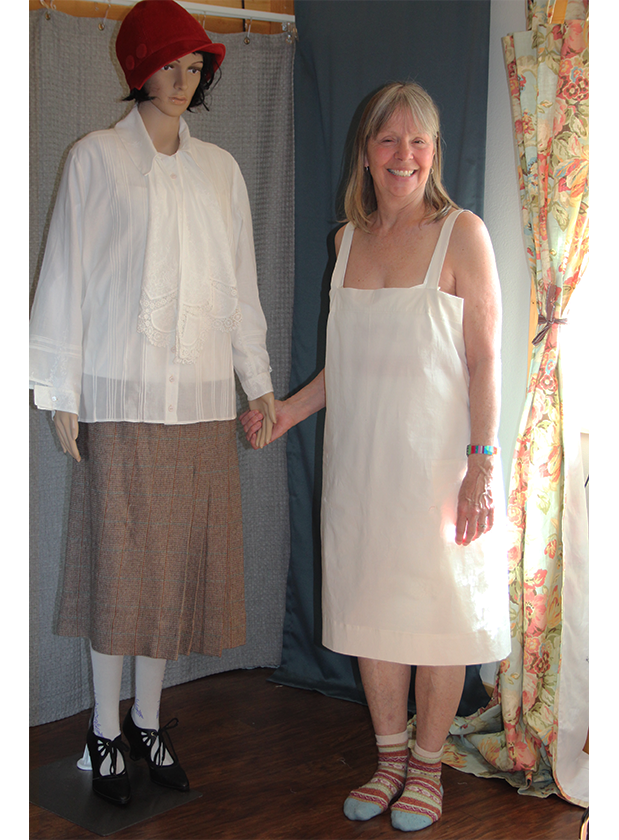
Click here for classroom project Historical Context; America and Wyoming (next)
Click here for classroom project Fashion History & Women’s Lifestyle
Click here for classroom project Men’s Fashion History
Click here for classroom project Design Development
